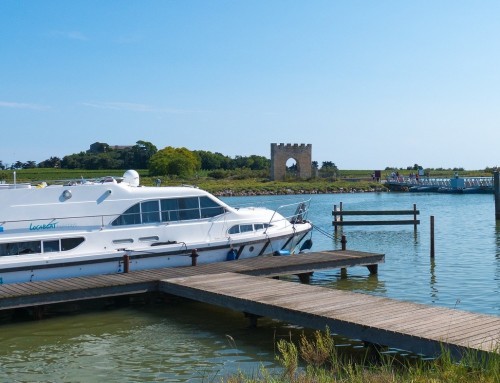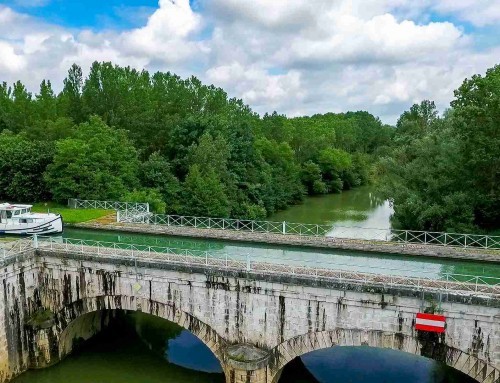
Selby Lock and River Ouse Selby Yorkshire
54103603224_43fb287ac5_k

Schachtschleuse Minden (I)
de.wikipedia.org/wiki/Schachtschleuse_Minden

Schachtschleuse Minden (II)
de.wikipedia.org/wiki/Schachtschleuse_Minden

Lock No.7 Ranelagh.
Grand Canal, Ranelagh, Dublin, Co.Dublin, ROI. All photographic images are the exclusive property of Paddy Ballard. The photographs are for web browser viewing only and may not be reproduced, copied, stored, downloaded or altered in any way without prior permission.

Schiffsschleuse & hydraulisches Kraftwerk
Hamm / Taben-Rodt / Serrig Die größte deutsche Schleuse an einem natürlichen Fluss mit einer Hubhöhe von 14,50 Metern

Schiffsschleuse & hydraulisches Kraftwerk
Hamm / Taben-Rodt / Serrig Die größte deutsche Schleuse an einem natürlichen Fluss mit einer Hubhöhe von 14,50 Metern
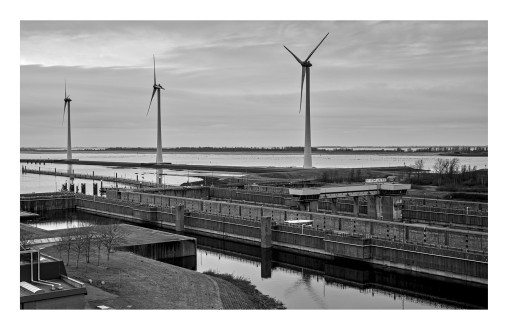
Krammersluizen (W)
nl.wikipedia.org/wiki/Krammerbrug
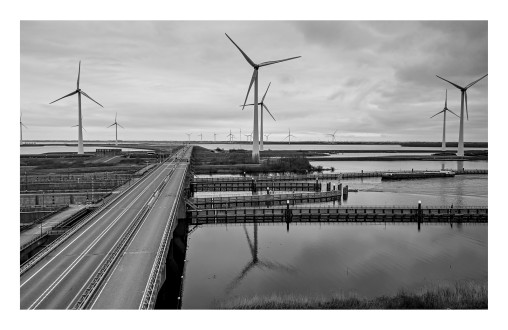
Krammersluizen (E)
nl.wikipedia.org/wiki/Krammerbrug
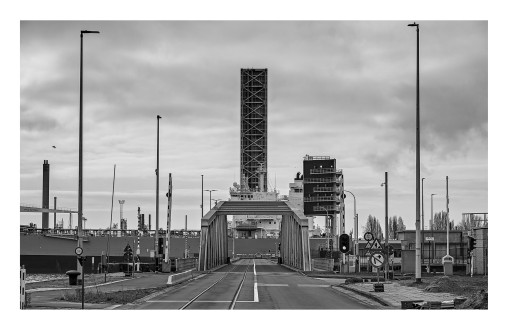
Crossing...
"Amazon Fortitude" entering Antwerpen Haven through the Berendrechtsluis
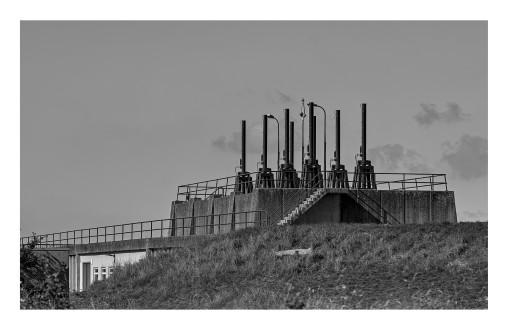
Bij de Manderssluis
www.bhic.nl/ontdekken/verhalen/sluizen-bij-dintelsas
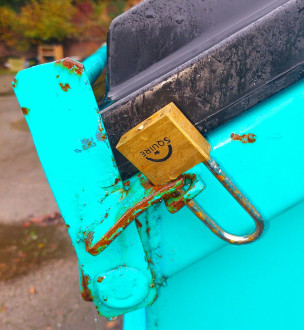
Locked
53294012222_a922df560c_k
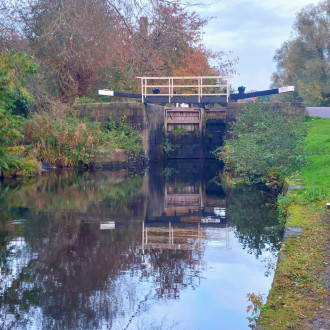
The Rochdale Canal
Newton Heath.
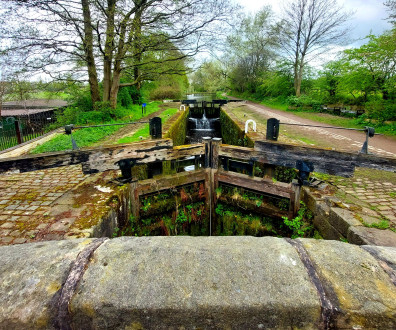
The Rochdale Canal
Walkmills Lock Middleton
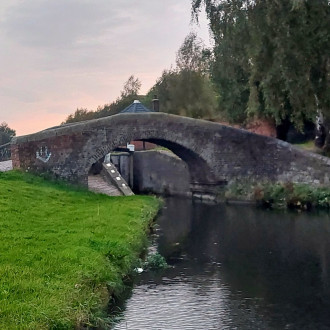
The BCN
Bridge and lock gates on the Smethwick Locks.
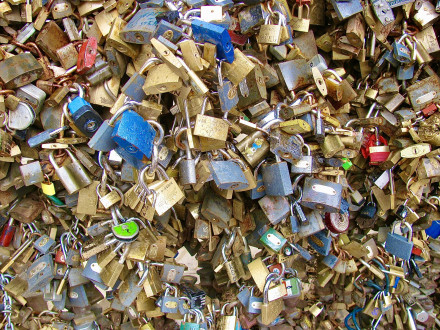
Pécs, Hungary
53240473714_371ce8b681_k
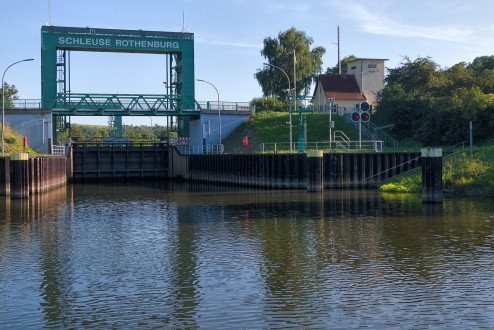
Schleuse Rothenburg, Saale
Die Schleuse Rothenburg ist eine Schleuse der Bundeswasserstraße Saale. de.wikipedia.org/wiki/Schleuse_Rothenburg
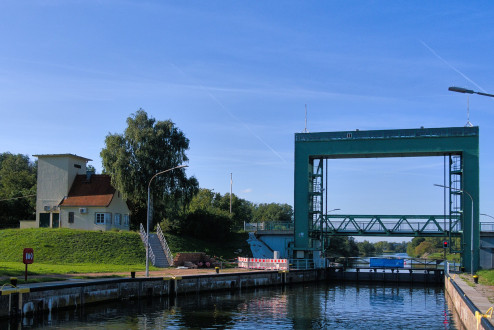
Schleuse Rothenburg, Saale
Die Schleuse Rothenburg ist eine Schleuse der Bundeswasserstraße Saale. de.wikipedia.org/wiki/Schleuse_Rothenburg
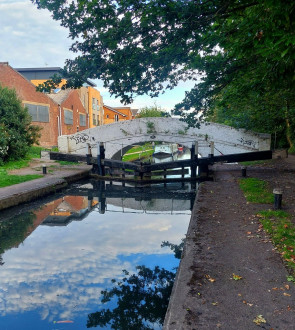
The Grand Union Canal
Lockgates & stone bridge. Apsley.
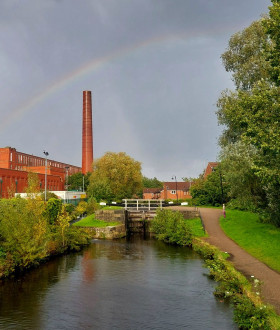
The Rochdale Canal
53207756899_d0a0c39928_k
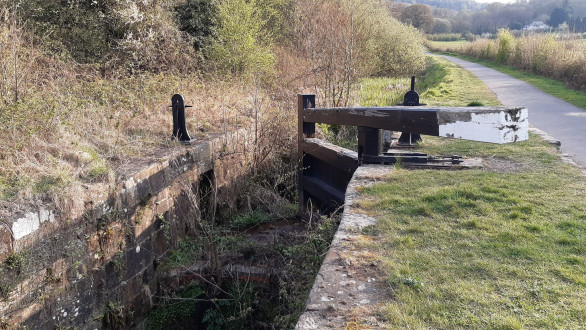
Monmouth & Brecon Canal 5
The bottom locks & towpath on the Crumlin Arm of the "Mon 'n' Brec"
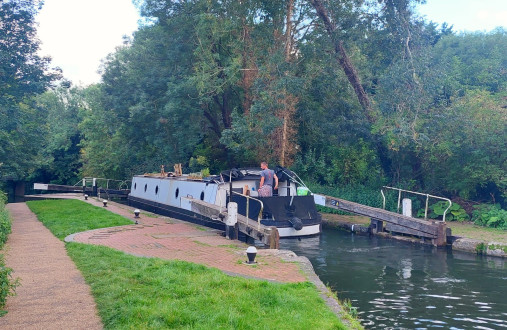
The Grand Union Canal
A broad beam canal boat at Kings Langley.
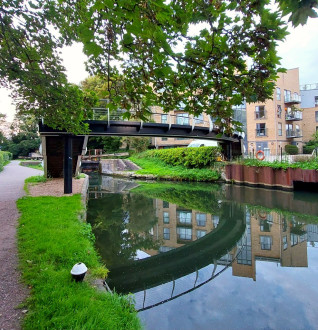
The Grand Union Canal
Footbridge at Kings Langley.
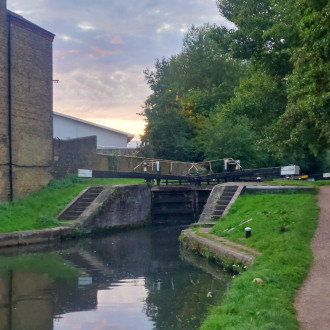
The Grand Union Canal
Kings Langley
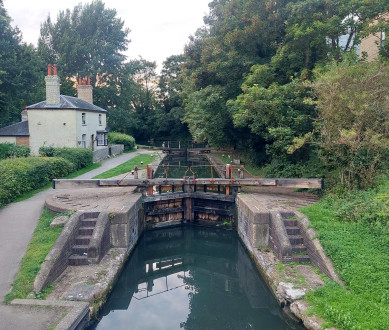
The Grand Union Canal
Lock 68 & lock keeper's cottage. King's Langley.
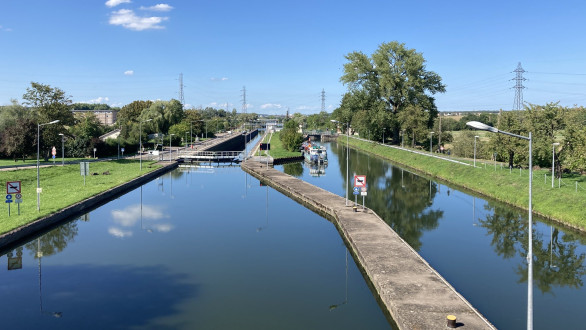
Richemont - Écluse de l'Orne
A gauche, l'écluse au grand gabarit européen ; à droite, l'ancienne écluse pour les bateaux de plaisance
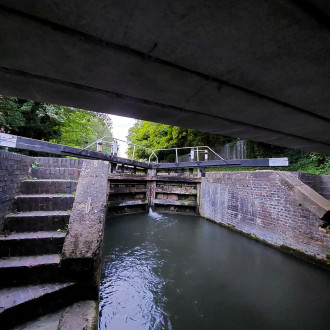
The Grand Union Canal
L9ck 69. Kings Langley.
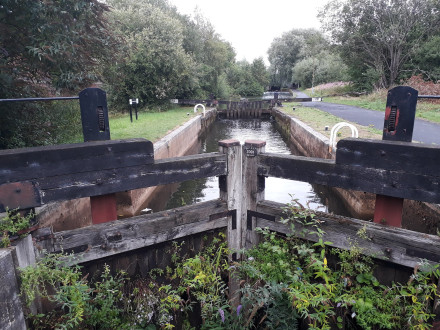
The Rochdale Canal
Miles Platting
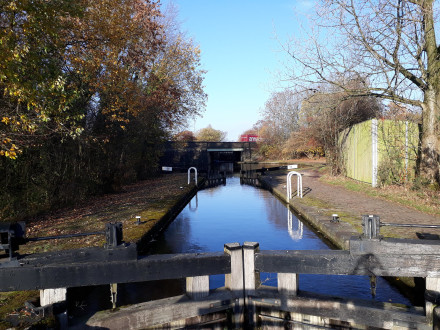
The Rochdale Canal
Slattocks Locks, Rochdale Canal.
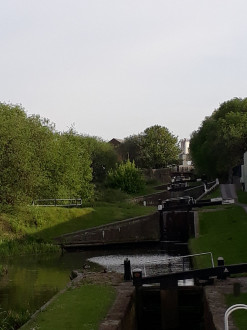
BCN
Looking up the Titford Locks.
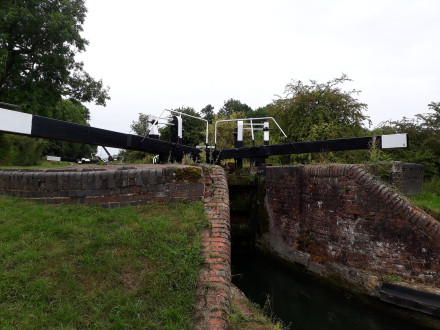
The Grand Union Canal
Northampton Arm.
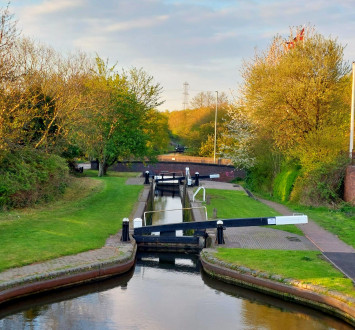
The BCN
Brades Lock #1, the top staircase lock on the Gower Branch Canal
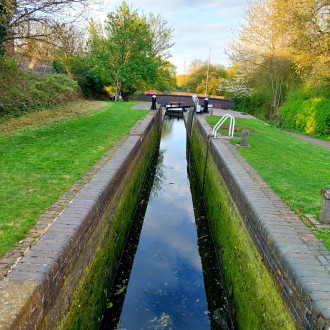
The BCN
Brades Lock #1, the Gower Branch Canal
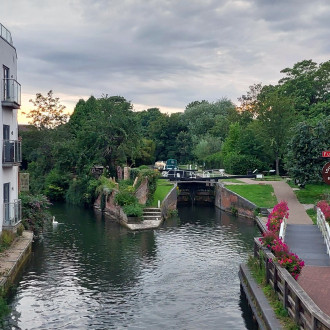
The Kennet & Avon Canal
Newbury
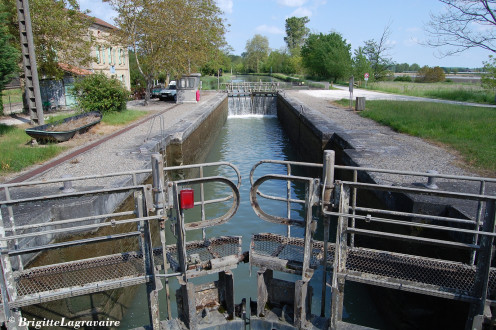
Le canal entre Tarn et Garonne
(009-05-02 -Boudou (7)
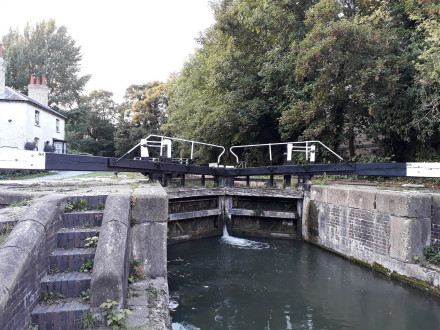
Grand Union Canal
King's Langley
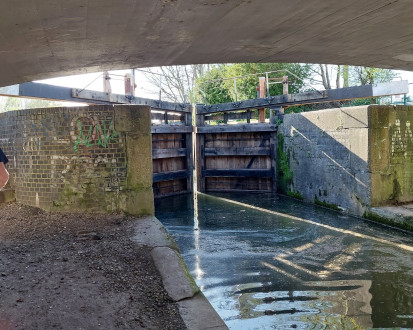
The Rochdale Canal
Slattocks Lock #3
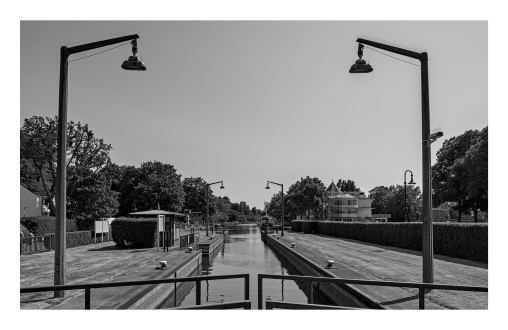
Ruhrschleuse Mülheim (I)
de.wikipedia.org/wiki/Ruhrschleuse_Mülheim
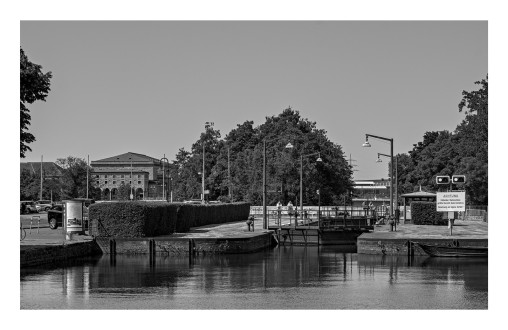
Ruhrschleuse Mülheim (II)
de.wikipedia.org/wiki/Ruhrschleuse_Mülheim
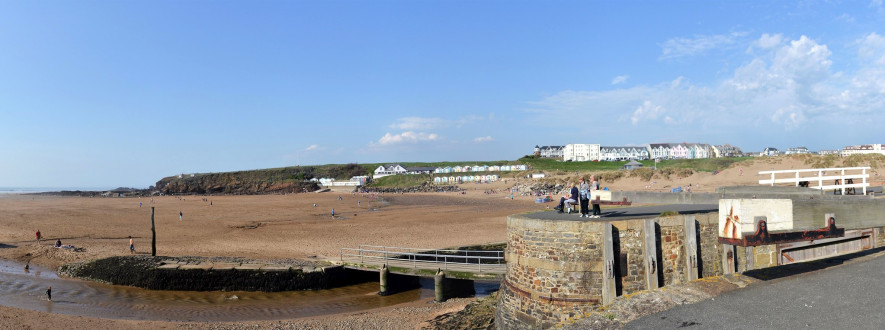
Bude Canal, the RiverNeet & the River Strat - Summerleaze Beach. Panorama 2. Nikon D3100 DSC_0921-0930
PANORAMA. Constructed from 10 Vertical images stitched together in Microsoft Composite Editor and cropped to suit ;- Looking towards the confluence of the River Neet and the Bude Canal, with Summerleaze Beach, and beach huts in the centre and onto Summerleaze Crescent. Taken on 21/04/2018 at 17:20:27Hrs using a Nikon D3100 camera with a Sigma 18-300mm F3.5-6.3 DC MACRO lens + a 72mm UV filter Bude is a Cornish Seaside town on the north coast of the county - and is famous for its Summerleaze and Crooklets beaches. The River Neet is a tributary of the River Strat which reaches the sea at Bude,The main river stems of the two rivers meet below the village of Marhamchurch, to the South of Bude, and enter the Bude Canal before rejoining the original channel over a wear. The two rivers rise from the farmlands of North Cornwall before meeting at Marhamchurch, then flowing northwards, over Summerleaze beach and into the sea. In 2005 the canal, whilst only the sea lock was still in working order, major plans to restore at least part of the canal were approved, with several million pounds worth of Heritage Lottery, Objective One and Development Agency funding promised. The project, which was supposed to start in 2007 and be completed in 2009, was moderately successful in opening up the first two miles of the canal, although storm damage in early 2008 caused major setbacks. It is now possible to traverse this part of the canal by boat, canoe or kayak and to walk beside it along the original towpath, now renovated and suitable for wheelchairs. The canal is a haven for wildlife both in the town and in the upper reaches, and an angler's paradise. Restoration is still a work in progress, but more and more of the route is being opened up to the public and returned to its former glory. (Bude Canal Trust:- www.bude-canal-trust.co.uk/).
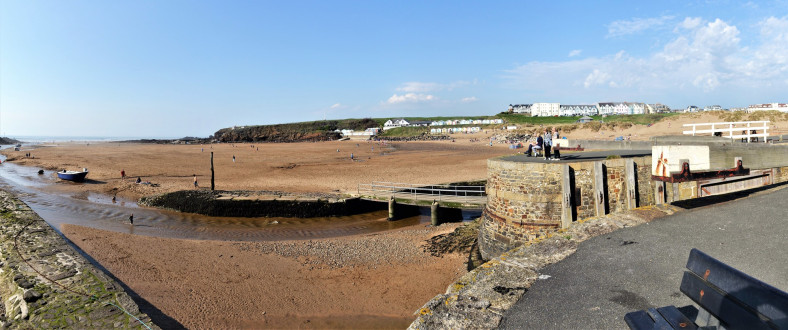
Bude Canal, the RiverNeet & the River Strat - Summerleaze Beach. Panorama. Nikon D3100 DSC_0921-0929.
.PANORAMA. Constructed from 10 Vertical images stitched together in Microsoft Composite Editor ;- Looking towards the confluence of the River Neet and the Bude Canal, with Summerleaze Beach, and beach huts in the centre and onto Summerleaze Crescent. Taken on 21/04/2018 at 17:20:27Hrs using a Nikon D3100 camera with a Sigma 18-300mm F3.5-6.3 DC MACRO lens + a 72mm UV filter Bude is a Cornish Seaside town on the north coast of the county - and is famous for its Summerleaze and Crooklets beaches. The River Neet is a tributary of the River Strat which reaches the sea at Bude,The main river stems of the two rivers meet below the village of Marhamchurch, to the South of Bude, and enter the Bude Canal before rejoining the original channel over a wear. The two rivers rise from the farmlands of North Cornwall before meeting at Marhamchurch, then flowing northwards, over Summerleaze beach and into the sea. In 2005 the canal, whilst only the sea lock was still in working order, major plans to restore at least part of the canal were approved, with several million pounds worth of Heritage Lottery, Objective One and Development Agency funding promised. The project, which was supposed to start in 2007 and be completed in 2009, was moderately successful in opening up the first two miles of the canal, although storm damage in early 2008 caused major setbacks. It is now possible to traverse this part of the canal by boat, canoe or kayak and to walk beside it along the original towpath, now renovated and suitable for wheelchairs. The canal is a haven for wildlife both in the town and in the upper reaches, and an angler's paradise. Restoration is still a work in progress, but more and more of the route is being opened up to the public and returned to its former glory.
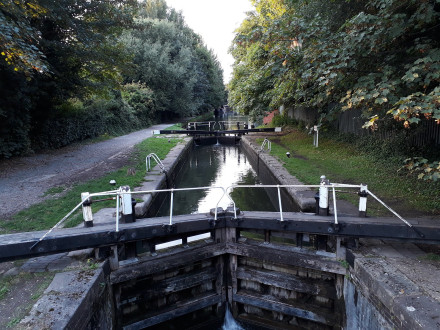
Grand Union Canal
Loak at King's Langley
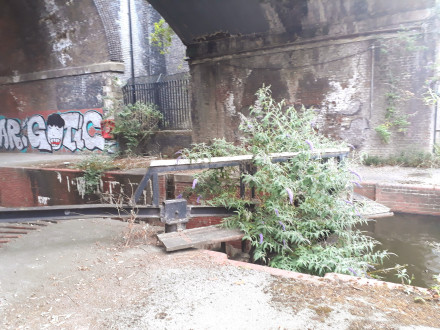
The Bridgewater Canal
The now abandoned Hulme Lock lowered the Bridgewater into the navigable section of the River Irwell in Manchester city centre. The massive viaducts carried the railways into the old Central Station.
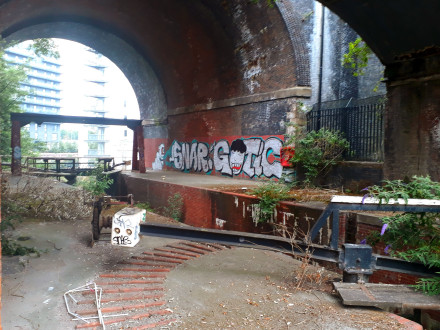
The Bridgewater Canal
The now abandoned Hulme Lock lowered the Bridgewater into the navigable section of the River Irwell in Manchester city centre. The massive viaduct carried the railways into the old Central Staion (Now GMEX!)
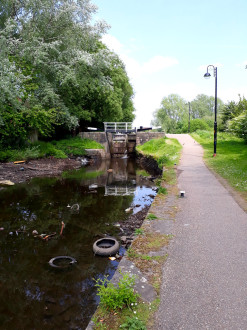
The Rochdale Canal
48991482022_3352e05404_k
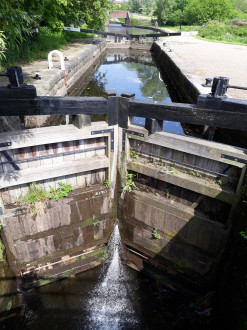
The Rochdale Canal
Failsworth.
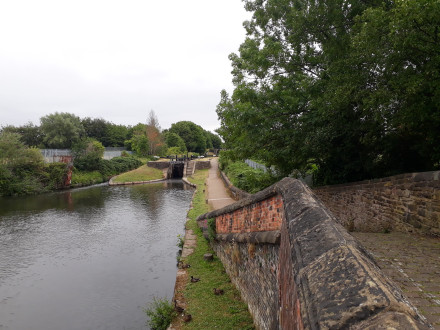
The Ashton Canal
Looking up the Ashton Flight.
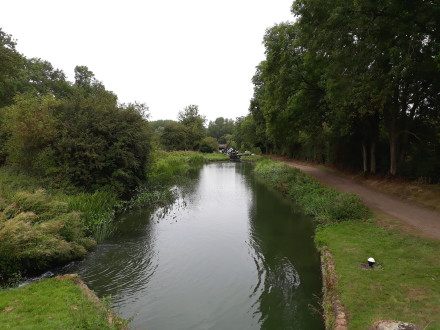
The Grand Union Canal
The Northampton Arm.
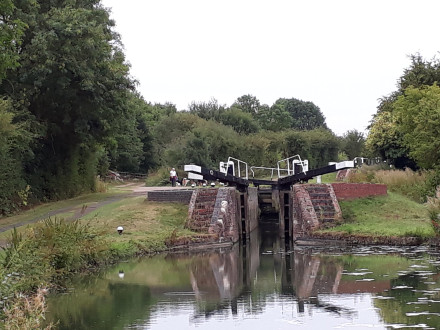
Grand Union Canal
Locks on the Northampton Arm.
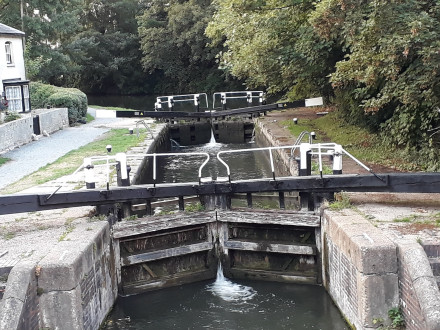
Grand Union Canal at King's Langley, Herts.
49305661696_3b4688d6ae_k
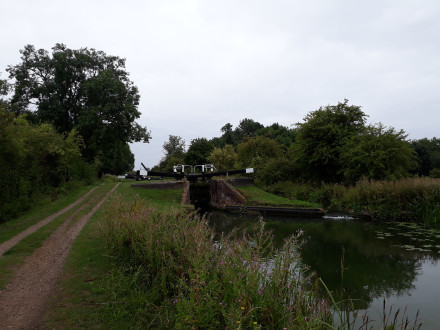
Grand Union Canal, Northampton Arm locks
49305838752_fdc70c92cf_k
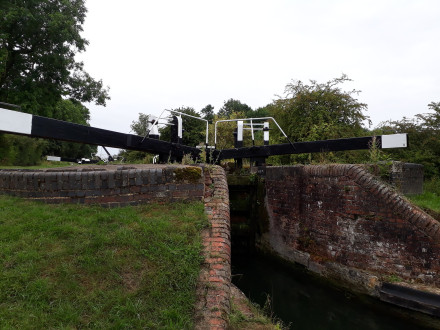
Grand Union Canal
Lock on the Northampton Arm.
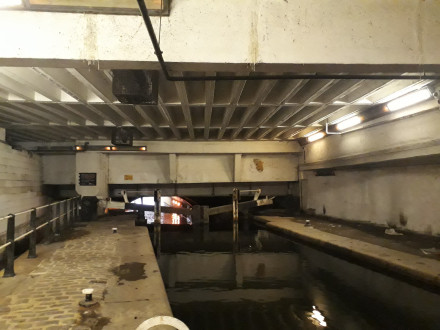
Rochdale Canal
Manchester city centre.
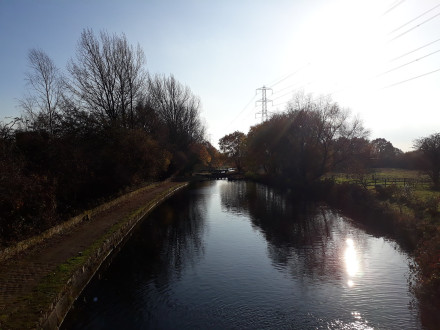
The Rochdale Canal
49321725673_3fd1a7acc7_k
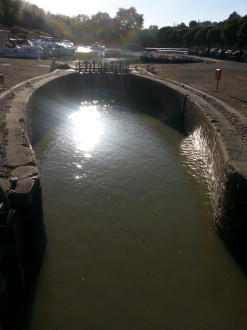
Horshoe lock on the Canal du Midi, Carcassonne.
49322259326_355581f02c_k
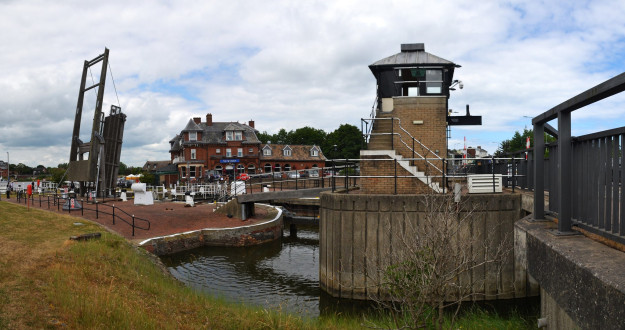
Mutford Lock, Oulton Broad. Panorama. (2). Nikon D3100. DSC_0095-010
Mutford Lock wit its bridge in the raised position. Panorama constructed from 7 vertical images, stitched together using Zoner Ceate software. Taken on the 24/06/2023 at 14:03:54Hrs using a Nikon D3100 camera with a Sigma 18-300mm F3.5-6.3 DC MACRO lens + a 72mm UV Forming the Southern Gateway to the Broads National Park, Oulton Broad is a busy tourist and sporting centre on the Suffolk/Norfolk Border Heading east from Oulton Broad, the Mutford Lock links the Broads to Lake Lothing and the North Sea via Lowestoft. The length of the lock was designed so that a trading wherry could fit within it. The Norfolk Wherries, with their iconic long, low shape and large sail, were used to transport all manner of goods around the Broads network. Due to different tides in Lake Lothing and Oulton Broad, the lock structure has an unusual bi-directional design. It has two pairs of opposing gates at each end to allow for high water levels on either side of the lock. The Lock was constructed in 1828 as part of a series of major works undertaken to create a navigation route for traders from the North Sea to Norwich.
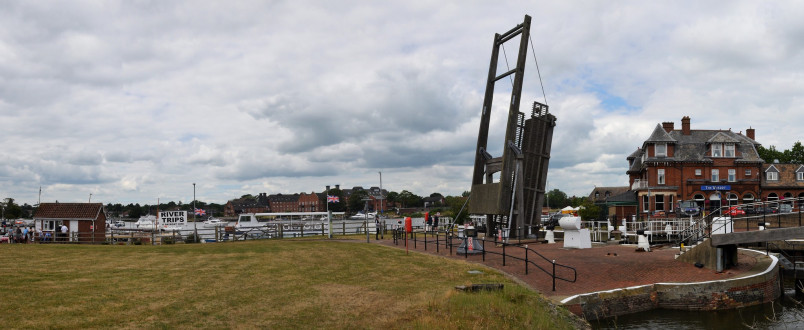
Mutford Lock, Oulton Broad.. Panorama. Nikon D3100. DSC_0084-0094
Mutford Lock with its bridge in the raised position. Panorama constructed from 10 vertical images, stitched together using Zoner Create software. Taken on the 24/06/2023 at 14:01:29Hrs using a Nikon D3100 camera with a Sigma 18-300mm F3.5-6.3 DC MACRO lens + a 72mm UV Heading east from Oulton Broad, the Mutford Lock links the Broads to Lake Lothing and the North Sea via Lowestoft. The length of the lock was designed so that a trading wherry could fit within it. The Norfolk Wherries, with their iconic long, low shape and large sail, were used to transport all manner of goods around the Broads network. Due to different tides in Lake Lothing and Oulton Broad, the lock structure has an unusual bi-directional design. It has two pairs of opposing gates at each end to allow for high water levels on either side of the lock. The Lock was constructed in 1828 as part of a series of major works undertaken to create a navigation route for traders from the North Sea to Norwich. Forming the Southern Gateway to the Broads National Park, Oulton Broad is a busy tourist and sporting centre on the Suffolk/Norfolk Border. Best viewed Large.
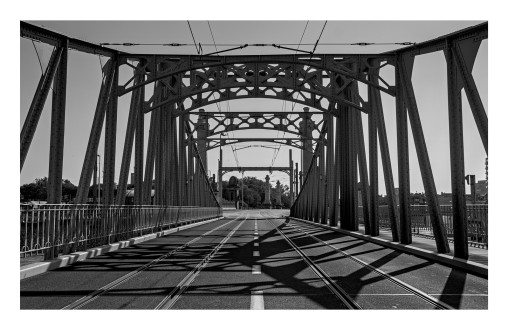
Demeysluis (I)
www.binnenvaartinbeeld.com/nl/oostende/demeysluis
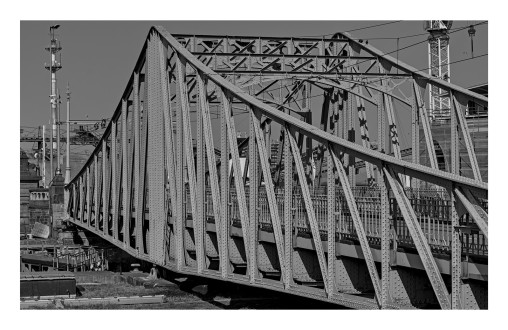
Demeysluis (II)
www.binnenvaartinbeeld.com/nl/oostende/demeysluis
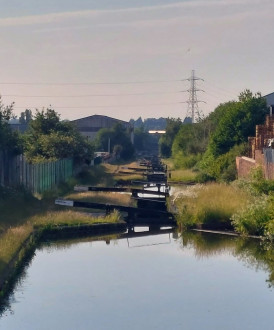
The Walsall Canal
The Ryders Green "Eight locks" flight.
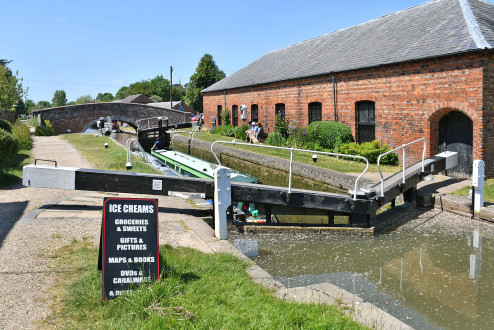
"Sandalwood", Bottom Lock 1, Grand Union Canal, Braunston - 4 Jun 2023
52952795738_100c5d0686_h
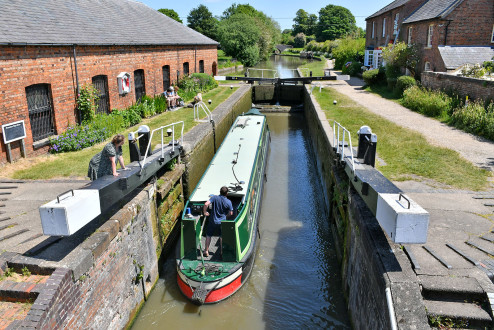
Bottom Lock 1, Grand Union Canal, Braunston - 4 Jun 2023
52952728630_63b34461b3_h
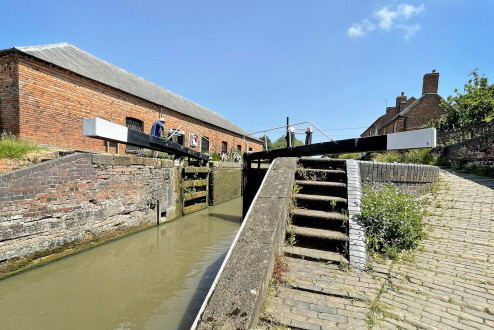
Bottom Lock 1, Grand Union Canal, Braunston - 4 Jun 2023
52952727150_d58bf8bad1_h
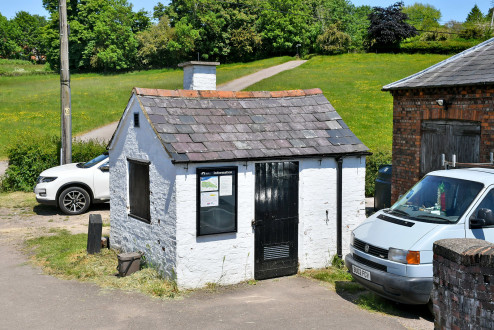
Bottom Lock 1, Grand Union Canal, Braunston - 4 Jun 2023
Former lock-keeper’s office.
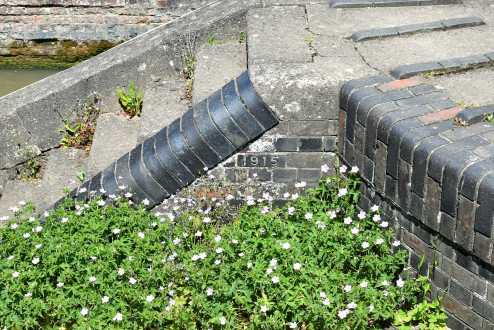
Bottom Lock 1, Grand Union Canal, Braunston - 4 Jun 2023
52952483549_f5ede51e31_h
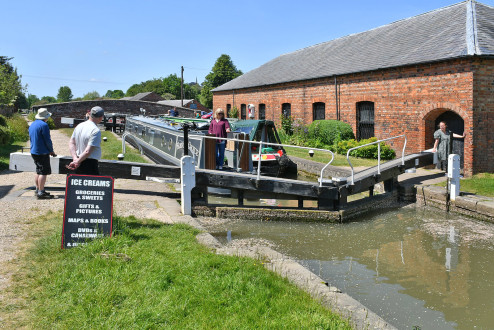
"Hobson's Choice" and "Sandalwood", Bottom Lock 1, Grand Union Canal, Braunston - 4 Jun 2023
52952481879_34554ceec1_h
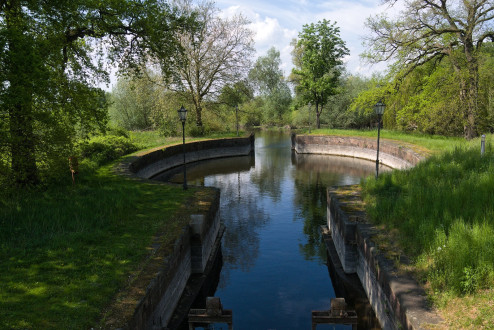
Palmschleuse
Die Palmschleuse ist eine Kammerschleuse in Lauenburg/Elbe in Schleswig-Holstein, sie ist die älteste Kammerschleuse (Kesselschleuse) Europas. de.wikipedia.org/wiki/Palmschleuse
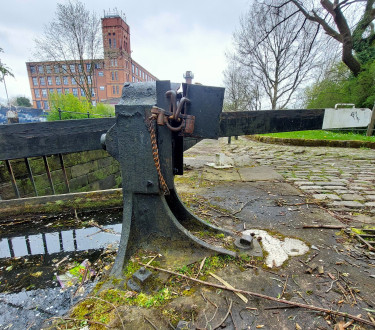
The Rochdale Canal
Lock, and Ivy Mill Failsworth.
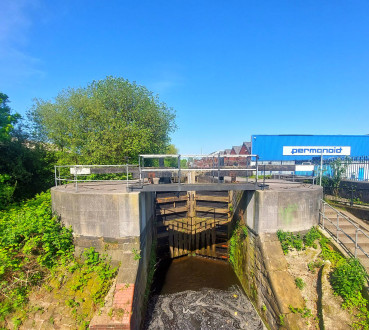
The Rochdale Canal
Miles Platting. The concrete walls of the lock show just how much the cut subsided before restoration.
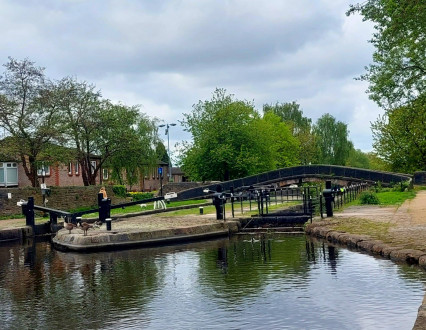
The Ashton Canal
The top lock (19) on the Ashton flight originally was double chambered, due to congestion at Fairfield Junction. The abandoned chamber is on the right, with the beautifully elegant stone towpath bridge behind both locks.
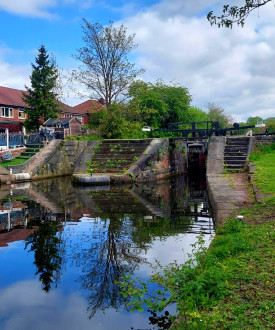
The Ashton Canal
Lock 18 used to have 2 Chambers to help with boat congestion. The old, abandoned lock is on the left. Droylsden.
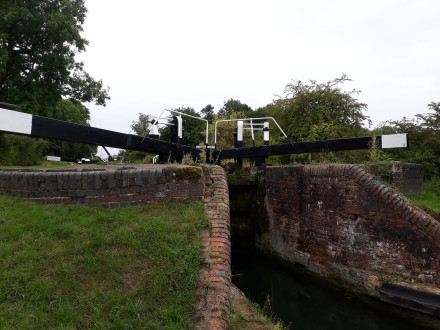
The Grand Union Canal
Lock gates on the Northampton arm.
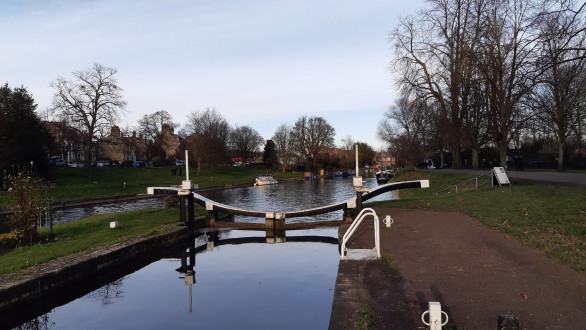
River lock on the cam. Cambridge
52630439266_e5ba425d83_k
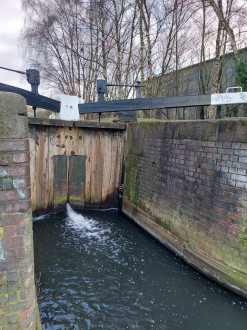
The BCN
Spon Lane locks.
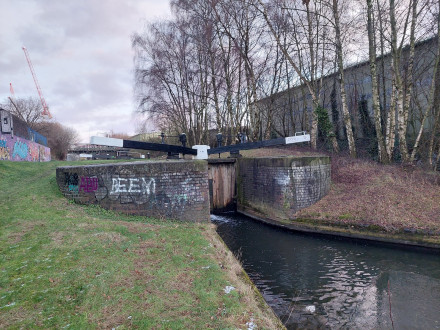
The BCN
Oldbury, Spon Lane locks
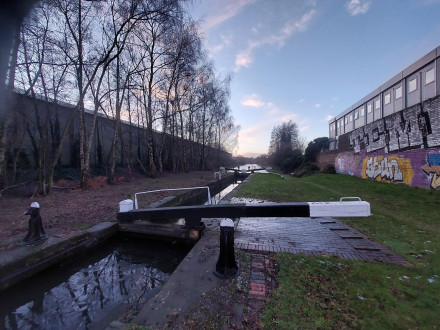
The BCN
Oldbury. Spon Lane locks.
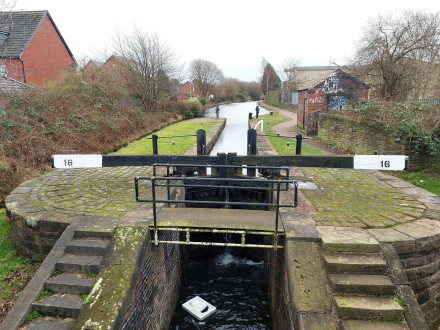
The Ashton Canal
Lock 16.
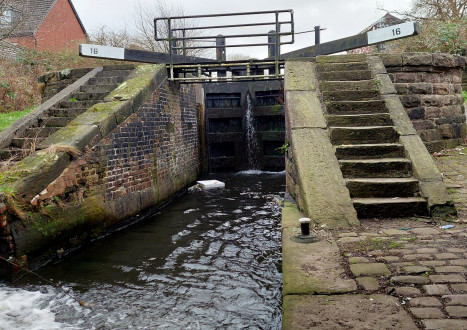
The Ashton Canal
Lock 16
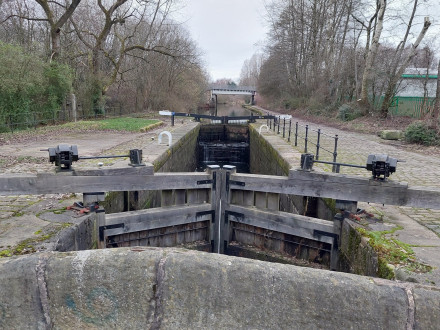
The Rochdale Canal
Lock 65
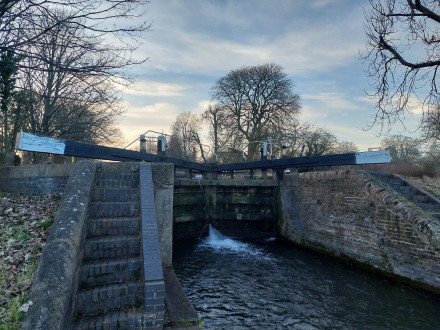
The Grand Union Canal
Hemel Hempstead
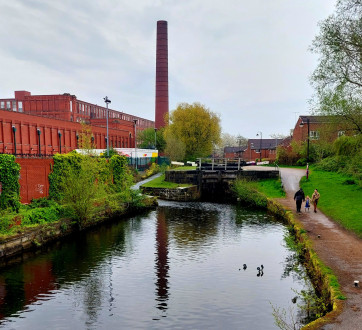
The Rochdale Canal
Mill chimney, Failsworth
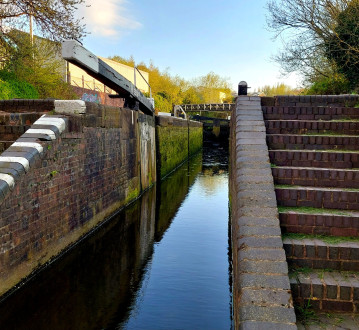
The BCN
Brades Lock #1. The Gower Branch Canal
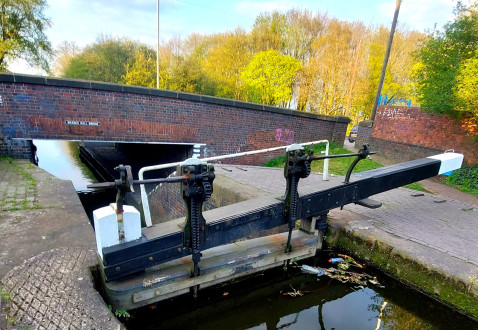
The BCN
Brades Hall Bridge, and the lock gate of lock #2 on the Gower Branch Canal
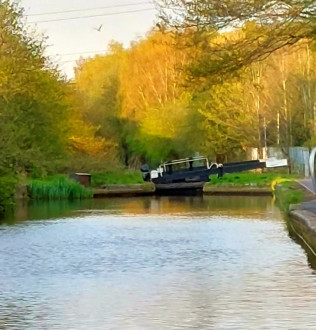
The BCN
Brades Lock #3 on the Gower Branch Canal. The towpath was closed for repair, so I couldn't get nearer!
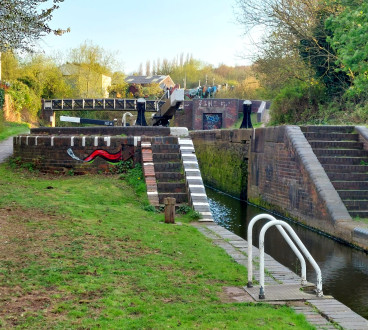
The BCN
Brades Lock #2. The bottom lock of the staircase on the Gower Branch Canal
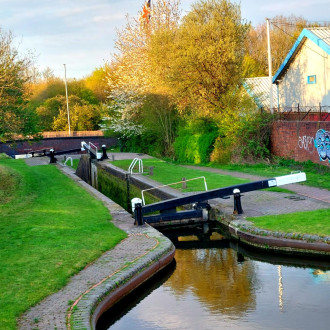
The BCN
Brades staircase double lock on the Gower Branch Canal
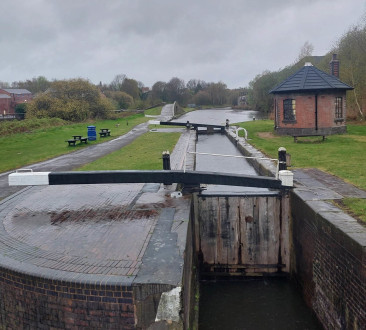
The BCN
Smethwick top lock, with toll house and further back, the bridgehole of the Engine Arm.
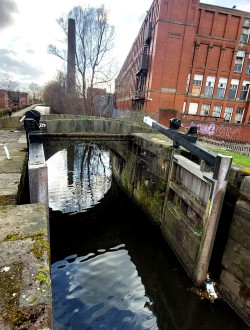
The Rochdale Canal
Lock gates, lock 66, Failsworth. T stone bridge is a pedestrian access bridge.
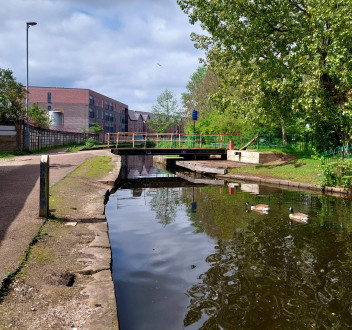
The Ashton Canal
52877693905_e5079ca0ad_k
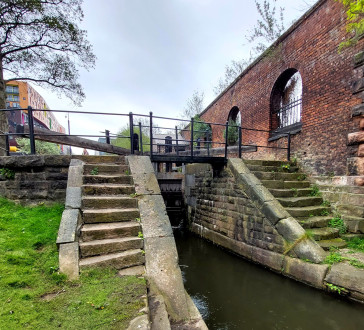
The Ashton Canal
Lock #2, Ancoats
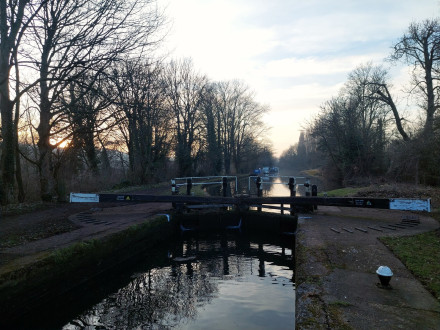
The Grand Union Canal
Hemel Hempstead
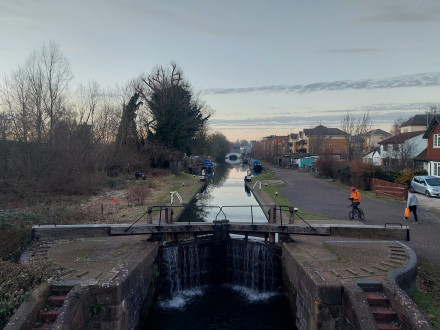
The Grand Union Canal
King's Langley
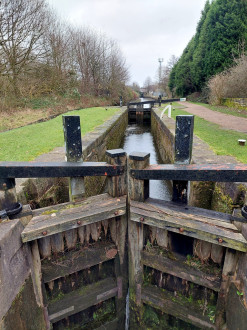
The Ashton Canal
Lock 12.
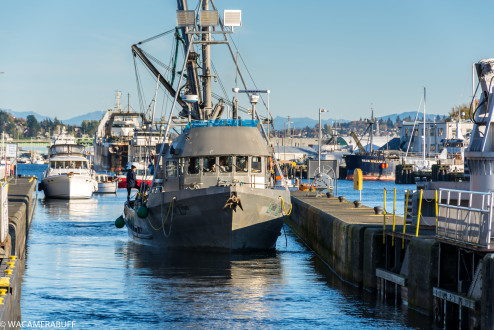
Ballard Locks
49011178207_df099ec293_k
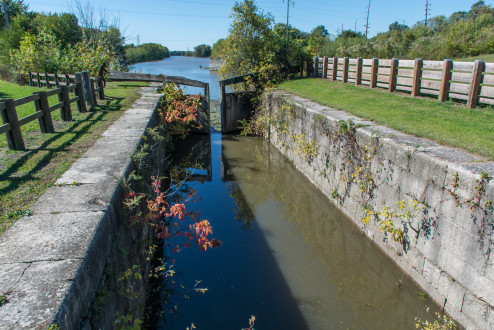
LaSalle, Illinois in the Fall
I&M Canal
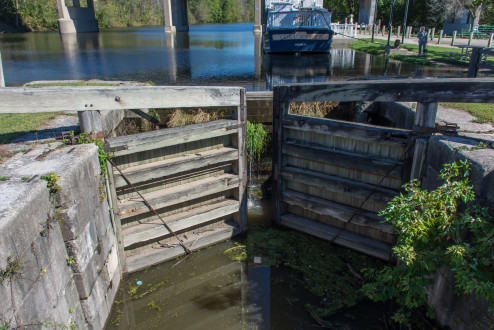
LaSalle, Illinois in the Fall
I&M Canal
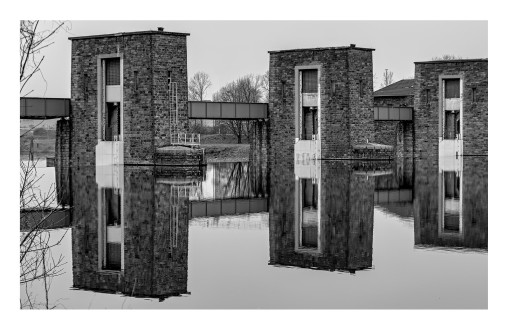
Ruhrwehr
de.wikipedia.org/wiki/Ruhrwehr_Duisburg
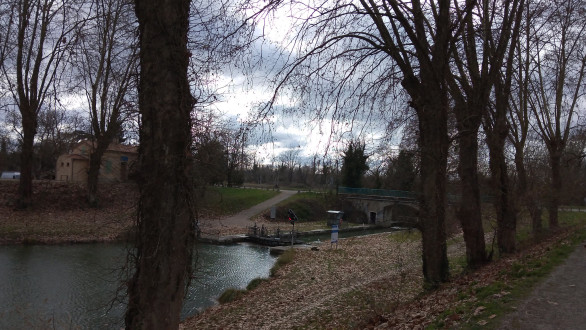
Au bout d'une bien grise balade, un clin d'oeil dans les nuages
smart 2023-02-07-écluse_145843 (2p)

Ballard Locks
20170627-DSC_6793
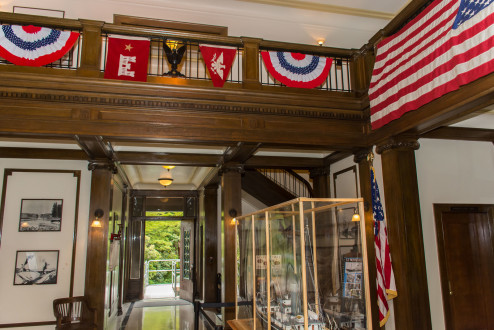
ballard locks admin building
20170627-DSC_6820,
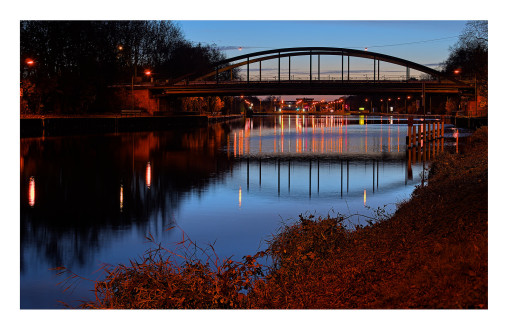
Oberhausen Schleuse
Am Rhein-Herne-Kanal
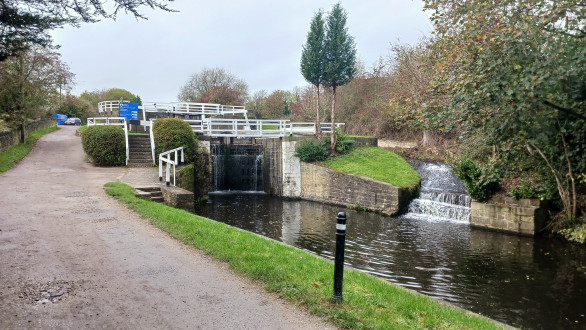
Dowley Gap Leeds Liverpool Canal Yorkshire
52478628957_5cc83a162b_k
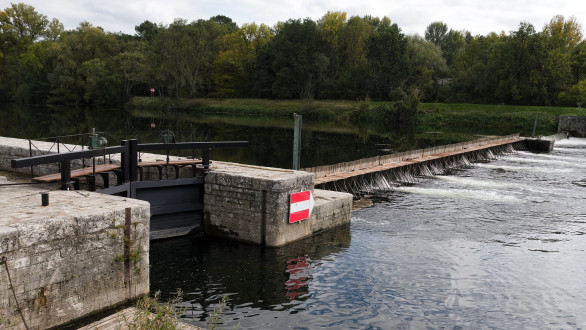
Nadelwehr und Schleuse
Nadelwehr und Schleuse am Cher Ein Nadelwehr ist eine Form eines Wehres und dient dazu, den Aufstau eines Fließgewässers zu schaffen, um entweder durch die entstehende Gefällestufe die potentielle Energie nutzbar zu machen (früher genutzt zum Antrieb von Mühlen) oder eine bestimmte Wassertiefe für die Schifffahrt oberhalb der Wehranlage zu erzeugen. de.wikipedia.org/wiki/Nadelwehr
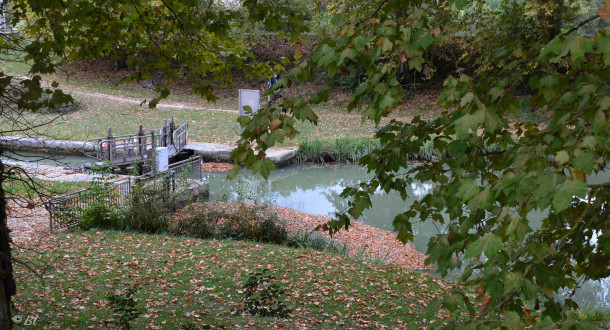
Semis de feuilles d'automne
2022-10-11-Rosette (13pn)
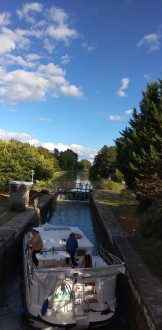
Dans l'écluse
brigittephotos-fr.over-blog.com/2022/10/sous-les-nuages.html 2022-09-30_172624
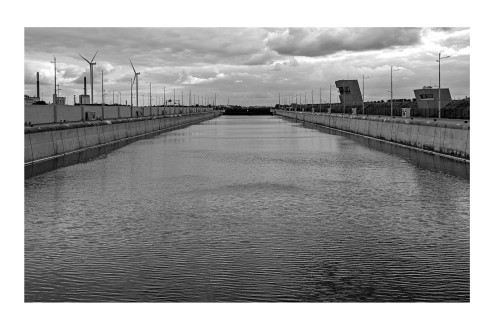
Zeesluis IJmuiden
De grootste sluis ter wereld. En zoiets als de Stuttgart 21 van Nederland -- duur en overbodig. Maar het is tenminste klaar, een beetje laat, maar klaar. De infrastructuur werkt gewoon beter in Nederland. Die größte Schleuse der Welt. Und sowas wie das Stuttgart 21 der Niederlande -- teuer und überflüssig. Aber immerhin fertig, etwas verspätet, aber fertig. Infrastruktur funktioniert einfach besser in NL. The world's biggest lock. And something like the Netherlands' Stuttgart 21 -- expensive and unnecessary. But at least it's finished, a bit late, but finished. Infrastructure just works better in the Netherlands. nl.wikipedia.org/wiki/Sluizen_van_IJmuiden
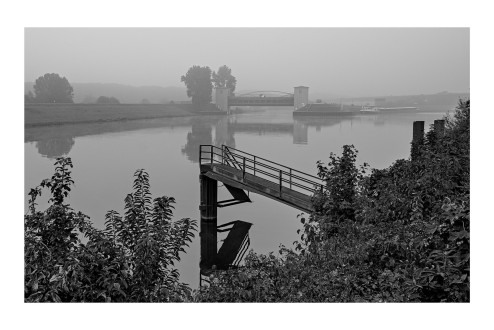
Kanal im Nebel
Von links ins Bild kommend der Rhein-Herne-Kanal, der sich hier verzweigt, nach links hinten, unter dem Hochwasserschutztor hindurch, geht's zur Ruhr, nach rechts hinten zur Schleuse Meiderich in den Duisburger Hafen. -- Coming into the picture from the left is the Rhine-Herne Canal, which branches off here, to the left at the back, passing under the flood protection gate, is the Ruhr; to the right at the back is the Meiderich lock into Duisburg harbour.
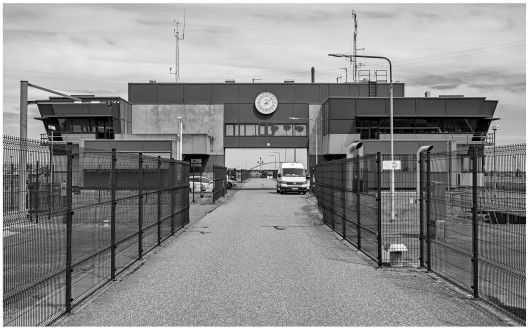
Sluis Hansweert
De sluis van Hansweert scheidt het Kanaal door Zuid-Beveland van de Westerschelde. Er zijn getijden aan beide zijden van de sluis, het kanaal heeft de waterstand van de Oosterschelde, ook een getijdengebied als de Westerschelde, maar natuurlijk niet synchroon. De "klok" op het gebouw geeft de waterstand ten opzichte van NAP aan -- welke precies (d.w.z. Oosterschelde of Westerschelde, of de huidige in de sluis) weet ik nu niet... Vertaald met www.DeepL.com/Translator (gratis versie) -- Mijn Nederlands bestaat, maar het is verschrikkelijk 😉 Die Schleuse Hansweert trennt den Kanaal door Zuid-Beveland von der Westerschelde. Auf beiden Seiten der Schleuse gibt es Gezeiten, der Kanal hat den Wasserstand der Oosterschelde, auch ein Gezeitenrevier wie die Westerschelde, aber natürlich nicht synchron. Die "Uhr" auf dem Gebäude zeigt den Wasserstand relativ zum NAP an -- welchen genau (also Ooster- oder Westerschelde, oder den aktuellen in der Schleuse) weiß ich jetzt auch nicht... The Hansweert lock separates the Kanaal door Zuid-Beveland from the Westerschelde. There are tides on both sides of the lock, the canal has the water level of the Oosterschelde, also a tidal area like the Westerschelde, but of course not synchronous. The "clock" on the building shows the water level relative to the NAP -- which one exactly (i.e. Oosterschelde or Westerschelde, or the current one in the lock) I don't know now...
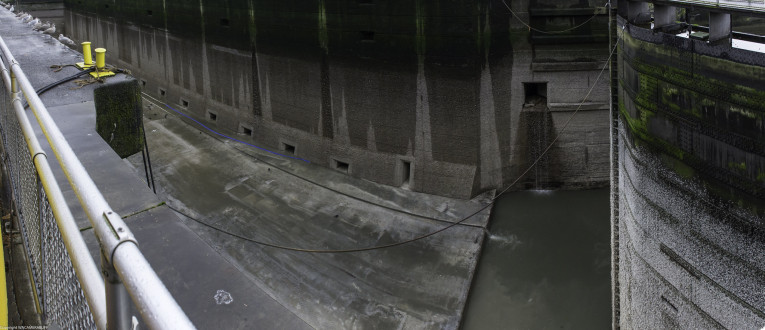
Hiram M Chittenden Locks
31033169351_e9c9f817e7_k
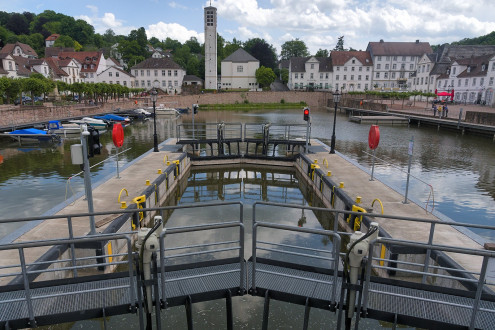
Bad Karlshafen, Schleuse zum Hafenbecken
Bad Karlshafen (bis 1977 Karlshafen, ist eine Kurstadt im Landkreis Kassel sowie die nördlichste Gemeinde Hessens. de.wikipedia.org/wiki/Bad_Karlshafen
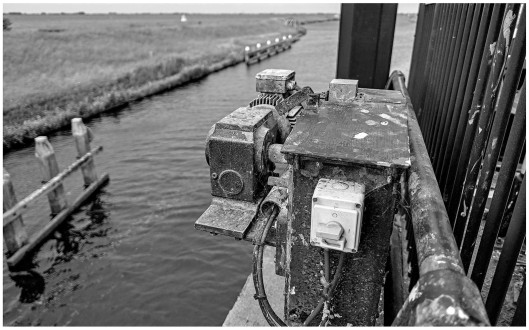
Sluis Middelharnis
52181716425_d92cc484d5_k
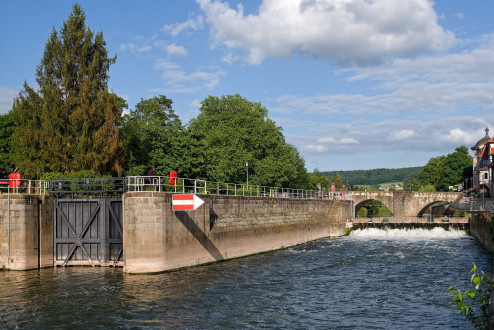
Werraschleuse und Nadelwehr, Hann.Münden
Ein Nadelwehr ist eine Form eines Wehres und dient dazu, den Aufstau eines Fließgewässers zu schaffen, um entweder durch die entstehende Gefällestufe die potentielle Energie nutzbar zu machen (früher genutzt zum Antrieb von Mühlen) oder eine bestimmte Wassertiefe für die Schifffahrt oberhalb der Wehranlage zu erzeugen. de.wikipedia.org/wiki/Nadelwehr
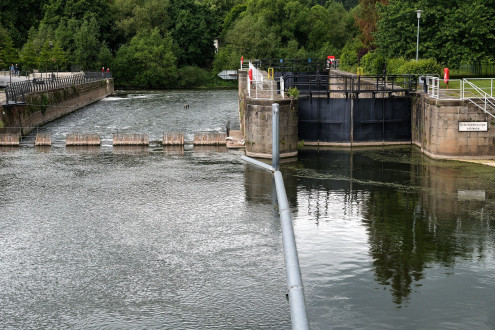
Werraschleuse und Nadelwehr, Hann.Münden
Ein Nadelwehr ist eine Form eines Wehres und dient dazu, den Aufstau eines Fließgewässers zu schaffen, um entweder durch die entstehende Gefällestufe die potentielle Energie nutzbar zu machen (früher genutzt zum Antrieb von Mühlen) oder eine bestimmte Wassertiefe für die Schifffahrt oberhalb der Wehranlage zu erzeugen. de.wikipedia.org/wiki/Nadelwehr
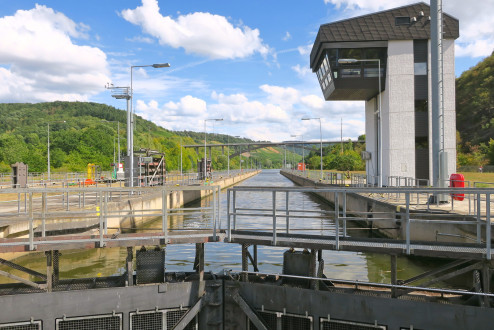
Entlang der Saar nach Saarburg
Schleuse Kanzem am Saarkanal
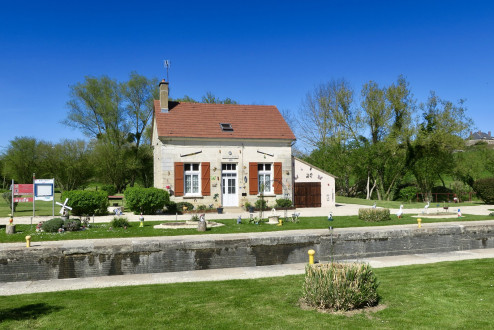
Ecluse de Douchy
Au bord du canal de Bourgogne

De l'écluse 20 à Feluy
sous le doux soleil d'Avril...en suivant le RAVEL, (chemin de hallage muté en lieu de promenade. Qui viendra faire une ballade avec moi ?
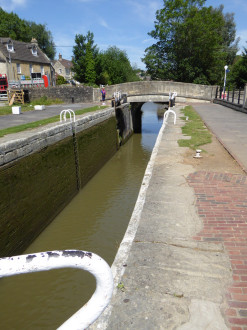
Kennet & Avon Canal.
Bradford Lock No.14, Bradford-on-Avon, Wiltshire. All photographic images are the exclusive property of Paddy Ballard. The photographs are for web browser viewing only and may not be reproduced, copied, stored, downloaded or altered in any way without prior permission.
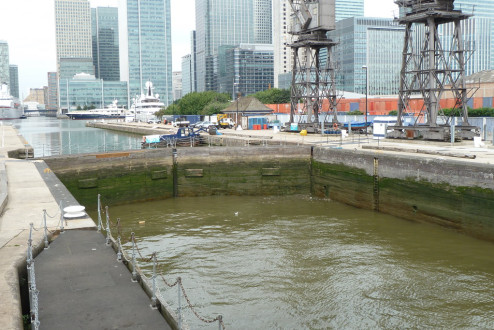
Cold Harbour Lock, London E14.
Lock entrance to South Quay, Isle of Dogs, London E14. All photographic images are the exclusive property of Paddy Ballard. The photographs are for web browser viewing only and may not be reproduced, copied, stored, downloaded or altered in any way without prior permission.
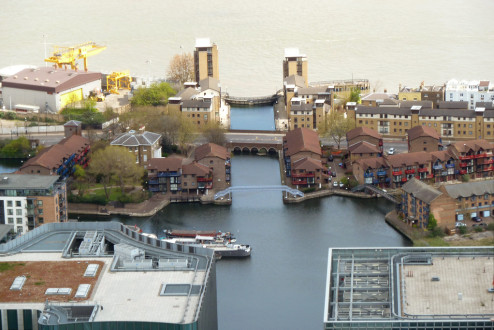
New Blackwell Lock Entrance.
Lock entrance and basin, Isle of Dogs London E14. All photographic images are the exclusive property of Paddy Ballard. The photographs are for web browser viewing only and may not be reproduced, copied, stored, downloaded or altered in any way without prior permission.
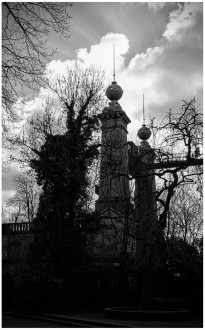
Sputniks
Schiffshebewerk Henrichenburg de.wikipedia.org/wiki/Schiffshebewerk_Henrichenburg Henrichenburg boat lift en.wikipedia.org/wiki/Henrichenburg_boat_lift
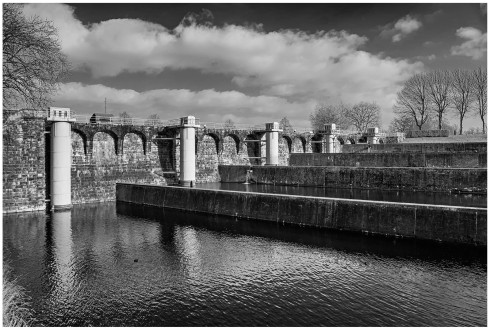
Sparbecken
Die alte Schachtschleuse im Schleusenpark Waltrop (de.wikipedia.org/wiki/Schleusenpark_Waltrop) Genau wie die neue als Sparschleuse ausgelegt, um den Wasserverlust der oberen Haltung zu beim Schleusenvorgang zu reduzieren. de.wikipedia.org/wiki/Sparschleuse --- The old lock in the Waltrop lock park (de.wikipedia.org/wiki/Schleusenpark_Waltrop) Just like the new one, it sports water saving basins to reduce the water loss of the "upstream" level during the locking process. en.wikipedia.org/wiki/Lock_(water_navigation)#Water_saving_basins
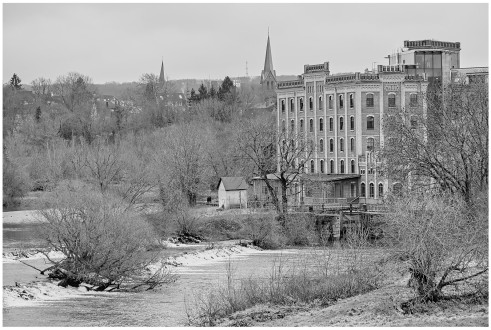
Birschel-Mühle
de.wikipedia.org/wiki/Birschel-Mühle
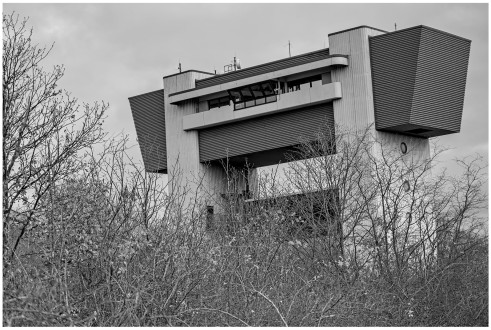
Meiderich Schleuse
Die erste Schleuse in den Rhein-Herne-Kanal, wenn man aus dem Duisburger Hafen (Rhein-Niveau) kommt. Meiderich Lock The first lock into the Rhine-Herne Canal when coming from Duisburg harbour (Rhine level).
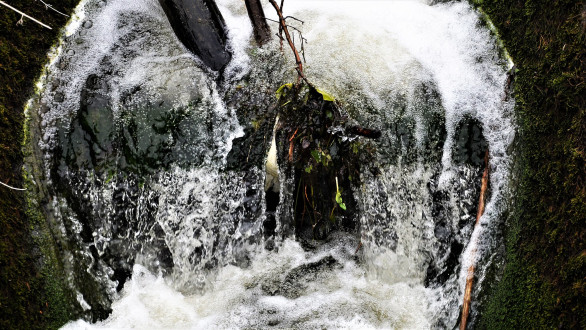
Cascades
Aux écluses de l'ancien canal Seneffe Ronquières, la joie d'entendre les rires des cascades...
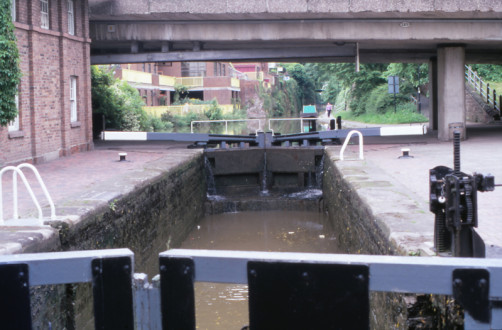
45099 Chester 27 mei 2005
Een sluis in het Shropshire Union Canal in Chester. A lock in the Shropshire Union Canal in Chester.
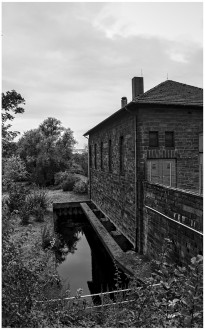
An der Ruhrschleuse
de.wikipedia.org/wiki/Ruhrschleuse_Duisburg Im Hintergrund/In the background: Karl-Lehr-Brücke
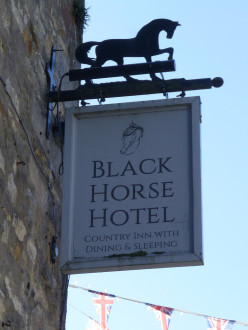
Black Horse Hotel, Grassington - 2021
Garr Lane, Grassington, North Yorkshire. All photographic images are the exclusive property of Paddy Ballard. The photographs are for web browser viewing only and may not be reproduced, copied, stored, downloaded or altered in any way without prior permission.
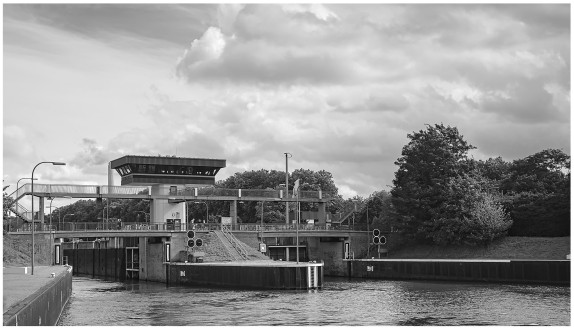
Oberhausen Schleuse
Am Rhein-Herne-Kanal

Big Chute Marine Railway
51397837971_49890565ab_k
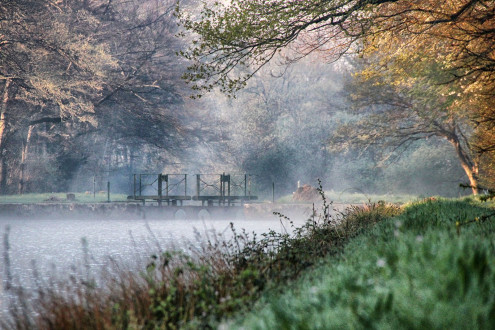
Mist on the sluice
Brume sur l'écluse, canal de Nantes à Brest
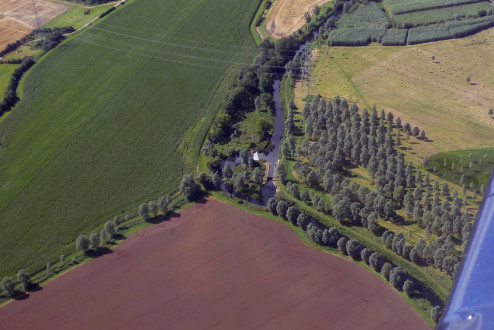
Stonham`s Lock & Weir, Chelmsford.
Chelmer & Blackwater Navigation, Chelmsford, Essex. Photographed from G-AVNO Piper PA.28-180 Cherokee flying at 1200ft. All photographic images are the exclusive property of Paddy Ballard. The photographs are for web browser viewing only and may not be reproduced, copied, stored, downloaded or altered in any way without prior permission.
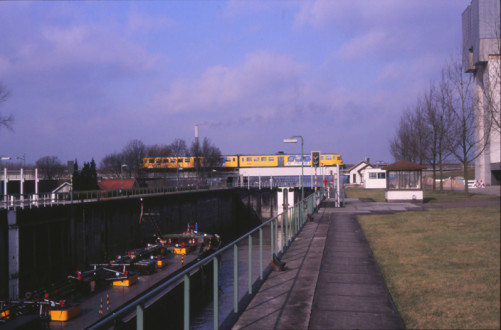
08434119-5210 Tiel 6 februari 1989
NS DE II 163 passeert de spoorbrug over de sluizen van Tiel onderweg naar zijn eindpunt van de rit in het station van Tiel. NS DMU 163 at the railwaybridge over the locks from Tiel on its way to the station from Tiel. These locks are the connection between the river Waal and the Amsterdam Rijnkanaal.
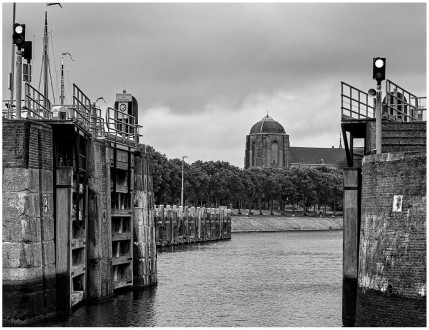
Grote Kerk
nl.wikipedia.org/wiki/Grote_Kerk_(Veere) gezien vanaf de kleine sluis van Veere (tussen het Veerse Meer en het Kanaal door Walcheren) gesehen aus der kleinen Schleuse Veere (zwischen Veerse Meer und Kanaal door Walcheren) seen from the small lock in Veere (between the Veerse Meer and the Kanaal door Walcheren)
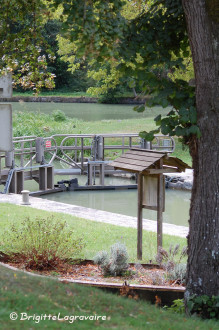
Buzet-sur Baîse, l'écluse près du port
Lot-et-Garonne, Aquitaine, Pays d'Albret, France - (2011-08-08-Buzet (8)
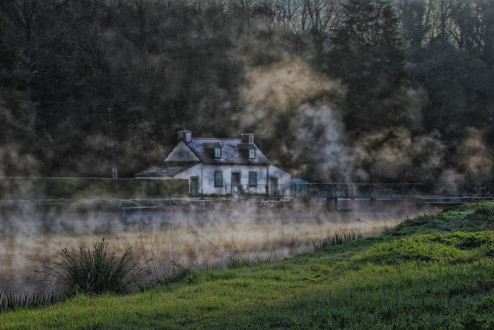
Strange atmosphere
Atmosphère étrange
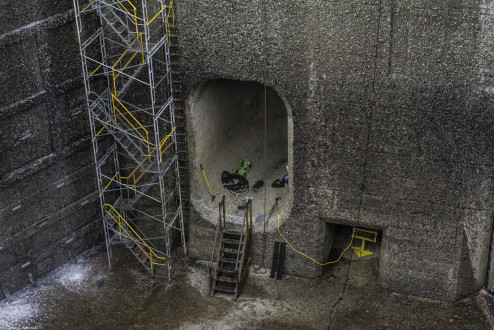
Hiram M Chittenden Locks
30779543970_ec377141cd_k
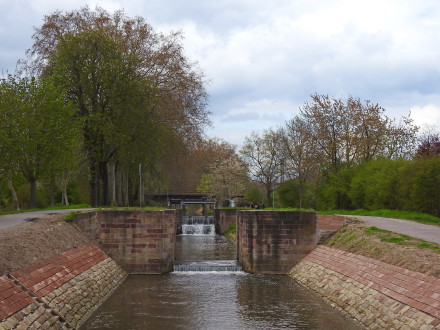
Zoom vers la premiere partie de l'écluse
Il s'agit donc de la 11ème écluse qui était une écluse double
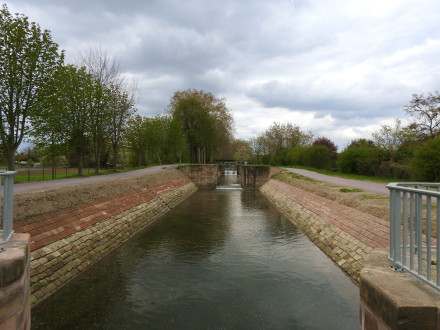
Vue sur le sas en direction de l'Ouest
Il s'agit donc de la 11ème écluse qui était une écluse double
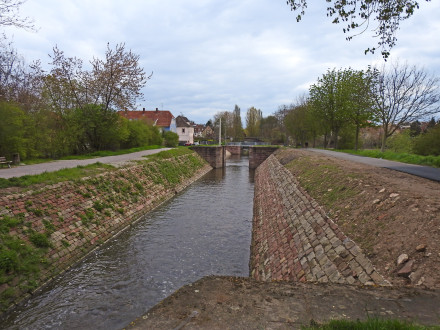
Le sas de l'ancienne écluse
Il s'agit donc de la 11ème écluse qui était une écluse double
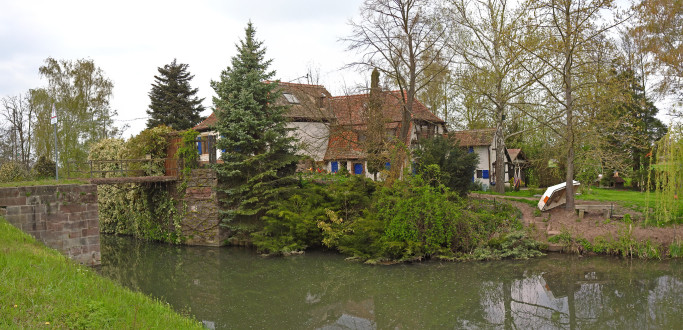
Vue depuis l'est
la maison éclusière et l'ancienne écluse n°9
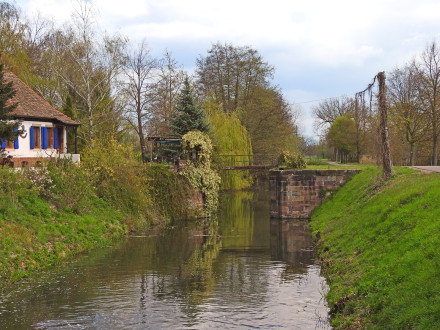
L'écluse n°9
et sa maison éclusière
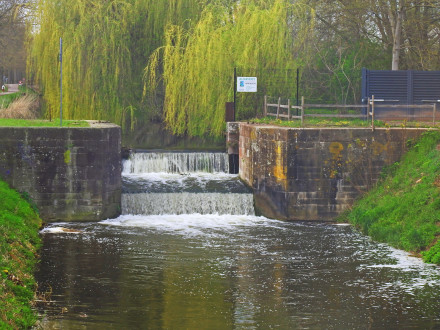
Les cascades remplaçant l'ancien portique
de l'écluse n°9. A noter que ces installations peuvent être contournées par le poisson soit via la Bruche soit par le fossé du Moulin.
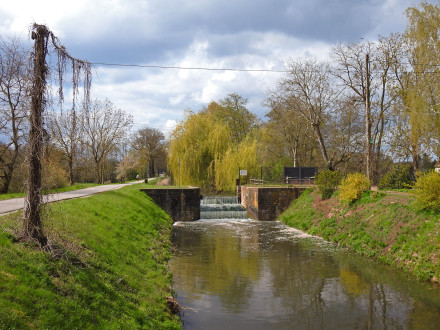
Le sas et au fond les cascades
de l'ancienne écluse n°9
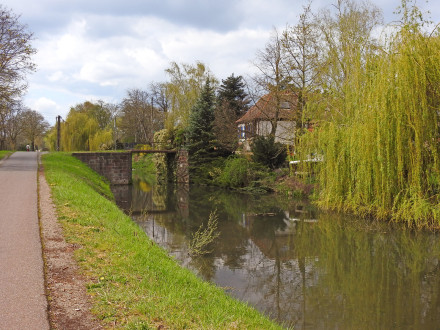
A droite , la maison éclusière
de l'anienne écluse n°9
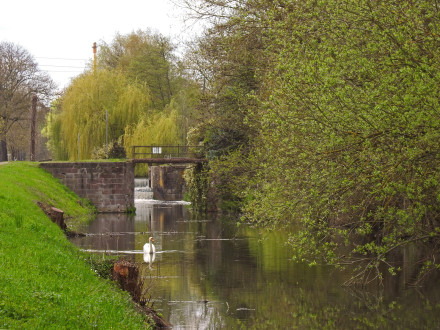
Vue sur l'ancienne écluse n°9
visité guidée avec le cygne
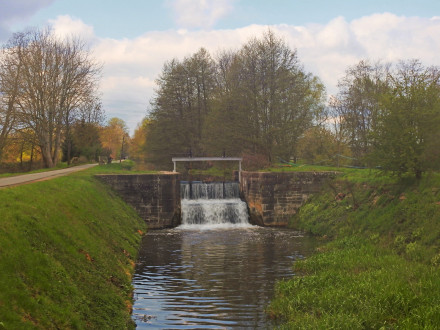
L'entrée de l'ancienne écluse n°10
transformée en chute. Pour rappel, à côté du canal, la Bruche et le Muhlwasser permettent aux poissons de remonter la rivière, en témoignent les hérons, bernaches, cygnes, cigognes ... présents sur le secteur.
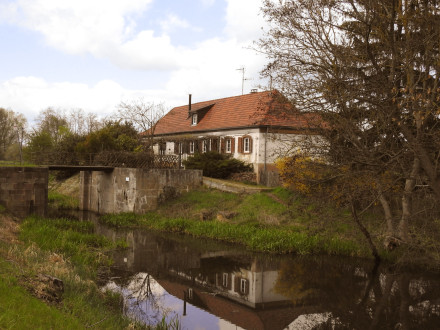
L'ancienne écluse n°10
et sa maison éculusière
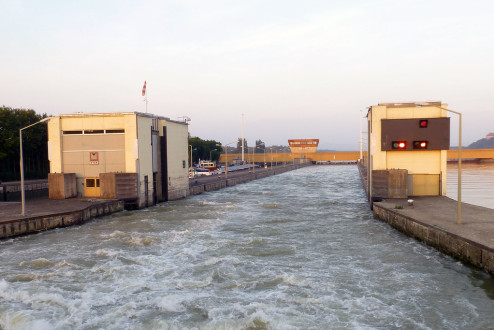
Schleuse Wallsee, Lower Austria.
River Danube, KM 2095.10, Wallsee, Lower Austria. All photographic images are the exclusive property of Paddy Ballard. The photographs are for web browser viewing only and may not be reproduced, copied, stored, downloaded or altered in any way without prior permission.
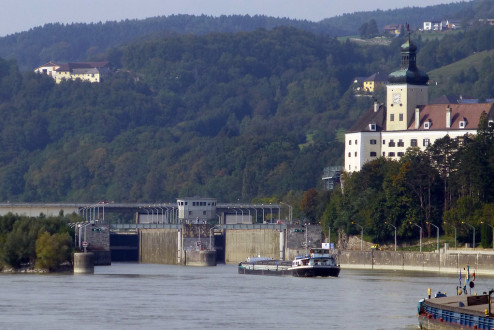
Schleuse Persenbeug, Lower Austria.
River Danube, Km 2060.42, Persenbeug, Lower Austria. All photographic images are the exclusive property of Paddy Ballard. The photographs are for web browser viewing only and may not be reproduced, copied, stored, downloaded or altered in any way without prior permission.
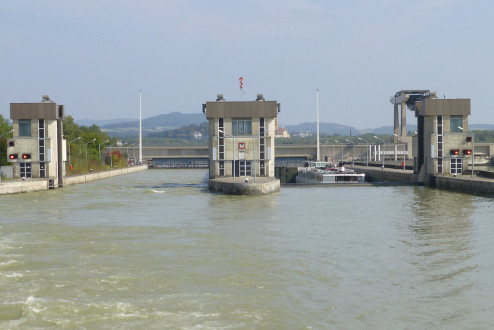
Schleuse Melk, Lower Austria.
River Danube, Km 2038. Melk, Lower Austria. All photographic images are the exclusive property of Paddy Ballard. The photographs are for web browser viewing only and may not be reproduced, copied, stored, downloaded or altered in any way without prior permission.
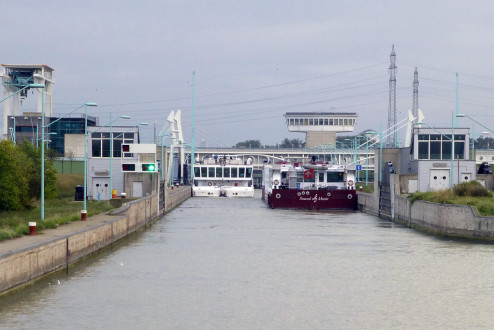
Schleuse Freudenau, Lower Austria.
River Danube, Km 1921.05, Freudenau, Lower Austria. All photographic images are the exclusive property of Paddy Ballard. The photographs are for web browser viewing only and may not be reproduced, copied, stored, downloaded or altered in any way without prior permission.
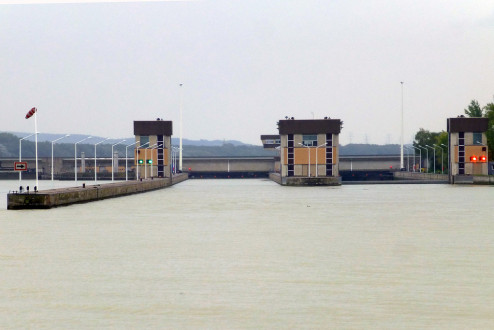
Schleuse Greifenstein, Lower Austria.
River Danube, Km.1949.18, Greifenstein, Lower Austria. All photographic images are the exclusive property of Paddy Ballard. The photographs are for web browser viewing only and may not be reproduced, copied, stored, downloaded or altered in any way without prior permission.
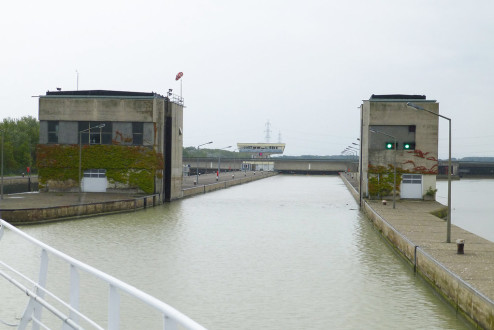
Schleuse Altenwoerth, Lower Austria.
River Danube, Km 1979.83, Altenwoerth, Lower Austria. All photographic images are the exclusive property of Paddy Ballard. The photographs are for web browser viewing only and may not be reproduced, copied, stored, downloaded or altered in any way without prior permission.
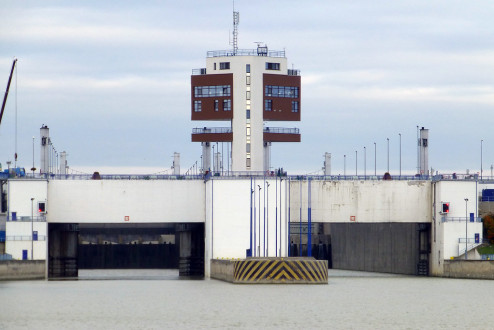
Priehrada Gabcikovo, Slovakia.
River Danube, Km 1836, Bratislava, Slovakia. All photographic images are the exclusive property of Paddy Ballard. The photographs are for web browser viewing only and may not be reproduced, copied, stored, downloaded or altered in any way without prior permission.
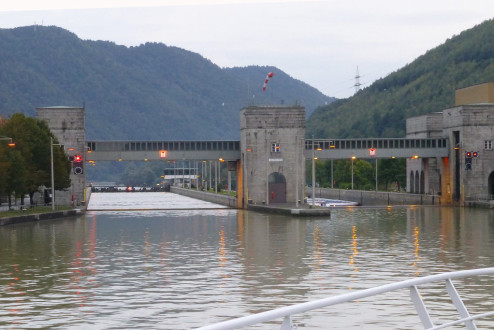
Schleuse Jochenstein, Germany.
River Danube, KM 2203.2, Bavaria, Germany. All photographic images are the exclusive property of Paddy Ballard. The photographs are for web browser viewing only and may not be reproduced, copied, stored, downloaded or altered in any way without prior permission.
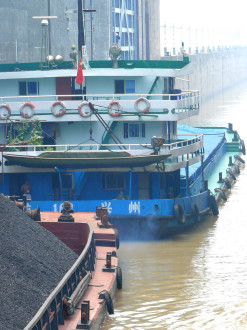
Exiting the locks of the Gezhouba Dam, Yangtze River, Yichang, Hubei, China
1569526537_245261cc85_k
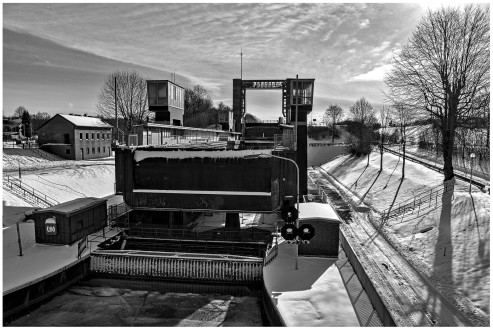
Neues Schiffshebwerk
Hier das "neue" Schiffshebewerk, in Betrieb von 1962 bis 2005. de.wikipedia.org/wiki/Schiffshebewerk_Henrichenburg
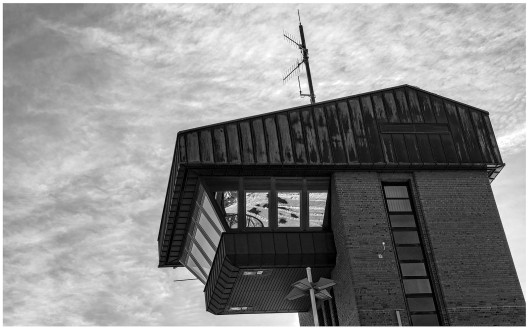
Reflektionen im Kontrollturm
Kontrollturm der neuen Schachtschleuse am Schiffshebenwerk Henrichenburg de.wikipedia.org/wiki/Schiffshebewerk_Henrichenburg
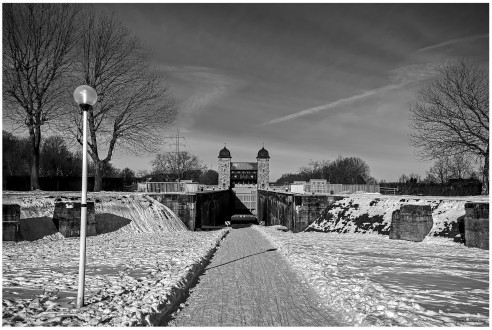
Alte Schachtschleuse (Oberwasser)
Die alte Schachtschleuse am Schiffshebewerk Henirchenburg, seit 1989 außer Betrieb. Dieses Jahr kurz nutzbar als Rodelbahn. de.wikipedia.org/wiki/Schiffshebewerk_Henrichenburg
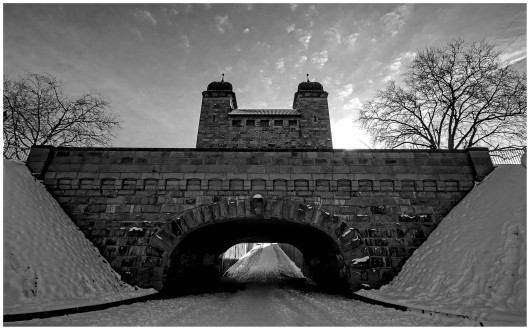
Alte Schachtschleuse (Unterwasser)
Die alte Schachtschleuse am Schiffshebewerk Henirchenburg, seit 1989 außer Betrieb. Dieses Jahr kurz nutzbar als Rodelbahn. de.wikipedia.org/wiki/Schiffshebewerk_Henrichenburg
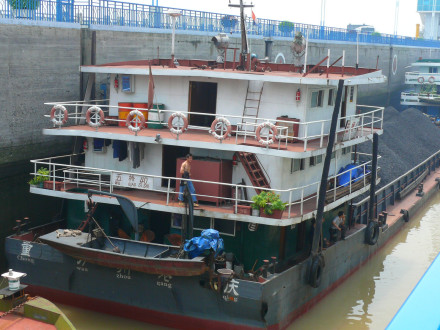
Barge in the locks of the Gezhouba Dam, Yangtze River, Yichang, Hubei, China
1569476681_b79705a3f6_k
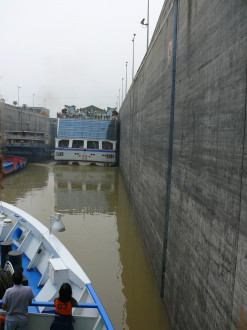
Going in to the giant locks of the Three Gorges Dam, Yangtze River, Hubei, China
1568511381_7c0567ed20_k
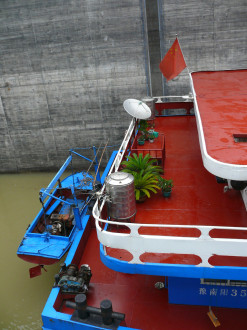
Homely boat, Three Gorges Dam, Yangtze River, Hubei, China
1568550675_86077a151d_k
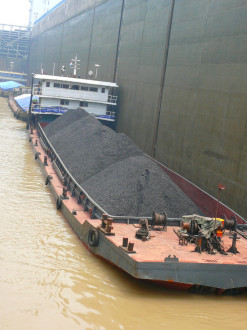
Coal barge in the locks of the Gezhouba Dam, Yangtze River, Yichang, Hubei, China
1570438028_bbc4ff1cc1_k
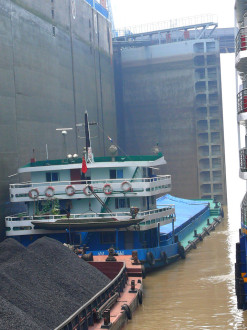
Exiting the locks of the Gezhouba Dam, Yangtze River, Yichang, Hubei, China
1570386132_8a540b1481_k
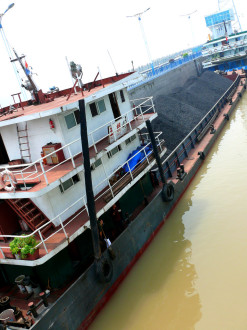
Barge in the locks of the Gezhouba Dam, Yangtze River, Yichang, Hubei, China
1569448503_eaa9242f82_k
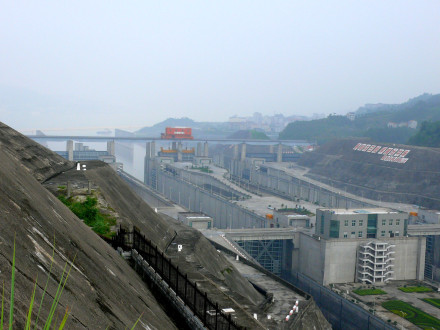
The giant locks of the Three Gorges Dam, Yangtze River, Hubei, China
1569049165_c2e2c2950a_k
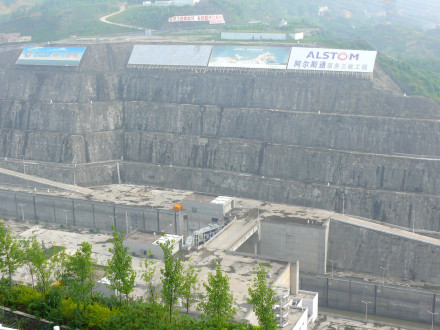
The giant locks of the Three Gorges Dam, Yangtze River, Hubei, China
1569005393_31d30a2948_k
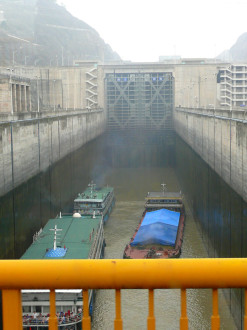
The giant locks of the Three Gorges Dam, Yangtze River, Hubei, China
1569812284_0dcc5d408b_k
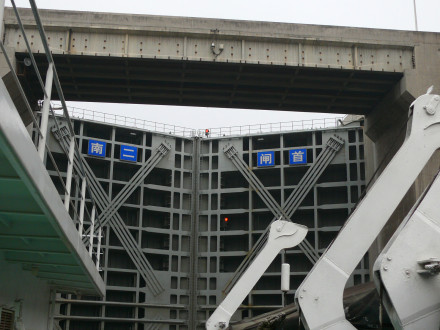
In the giant locks of the Three Gorges Dam, Yangtze River, Hubei, China
1568557607_b0068a6c1b_k
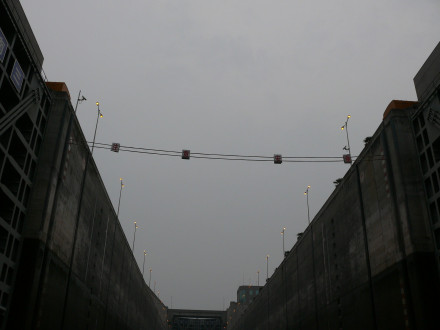
The giant locks of the Three Gorges Dam, Yangtze River, Hubei, China
1568655475_91213e3e87_k
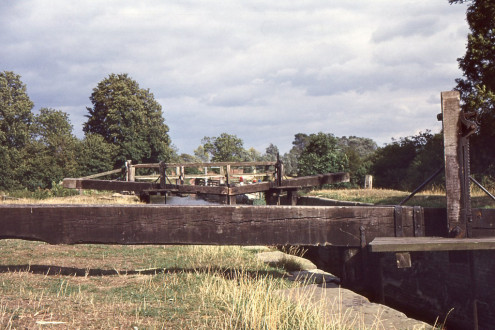
Beeleigh Lock, Maldon
Beeleigh Lock, Chelmer & Blackwater Navigation, Beeleigh, Maldon, Essex. All photographic images are the exclusive property of Paddy Ballard. The photographs are for web browser viewing only and may not be reproduced, copied, stored, downloaded or altered in any way without prior permission.
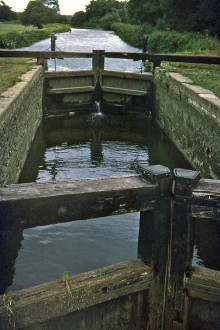
Beeleigh Lock, Maldon
Chelmer & Blackwater Navigation, Beeleigh, Maldon, Essex. One of a number of locks at Beeleigh. All photographic images are the exclusive property of Paddy Ballard. The photographs are for web browser viewing only and may not be reproduced, copied, stored, downloaded or altered in any way without prior permission.
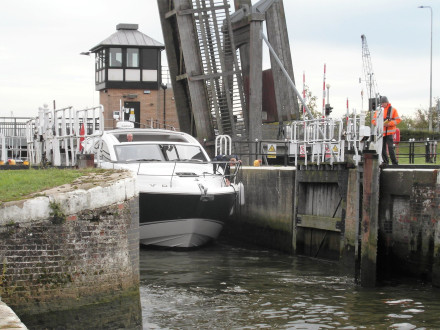
Mutford lock, Oulton Broad, Suffolk
A Beneteau Gran Turismo 41 sports cruiser, Broads registration 287Y, small ships register SSR 159860 leaves Mutford lock, the southern entry point to The Broads from the sea.
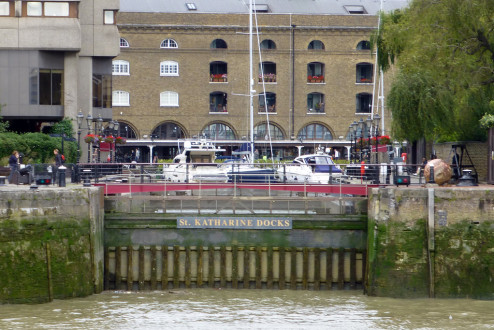
St. Katherine`s Dock, London E1.
Beside Tower Bridge, London E1. All photographic images are the exclusive property of Paddy Ballard. The photographs are for web browser viewing only and may not be reproduced, copied, stored, downloaded or altered in any way without prior permission.
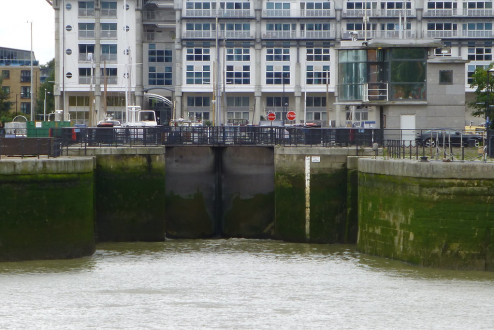
Greenland Dock Lock, London SE16.
Surrey Quays, London SE16. All photographic images are the exclusive property of Paddy Ballard. The photographs are for web browser viewing only and may not be reproduced, copied, stored, downloaded or altered in any way without prior permission.
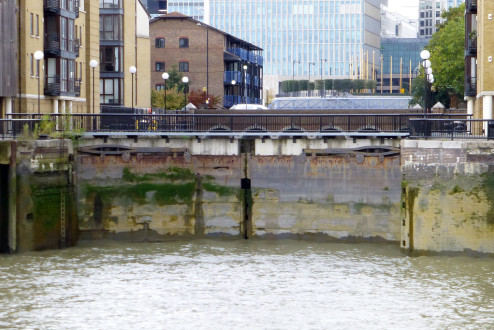
Blackwall Basin Lock, London E14.
Isle of Dogs, London E14. All photographic images are the exclusive property of Paddy Ballard. The photographs are for web browser viewing only and may not be reproduced, copied, stored, downloaded or altered in any way without prior permission.

East India Basin Lock, London E14.
London E14. River Thames. All photographic images are the exclusive property of Paddy Ballard. The photographs are for web browser viewing only and may not be reproduced, copied, stored, downloaded or altered in any way without prior permission.
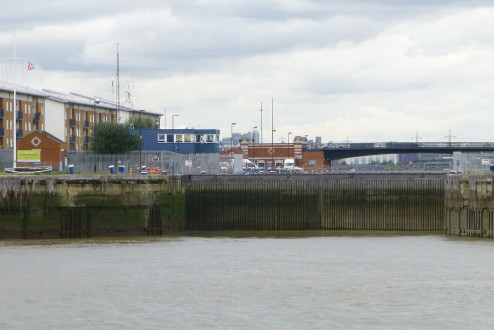
Gallions Point Lock, London E16
Royal Docks,, London E16 All photographic images are the exclusive property of Paddy Ballard. The photographs are for web browser viewing only and may not be reproduced, copied, stored, downloaded or altered in any way without prior permission.
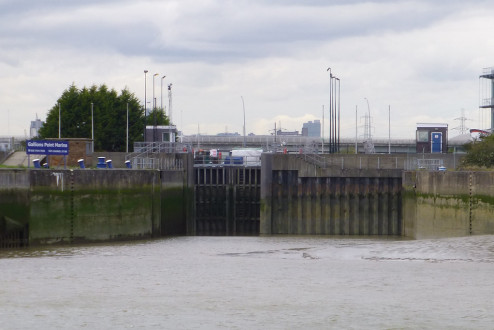
Gallions Point Marina Entrance, London E16
Gallions Point Marina, London E16 All photographic images are the exclusive property of Paddy Ballard. The photographs are for web browser viewing only and may not be reproduced, copied, stored, downloaded or altered in any way without prior permission.
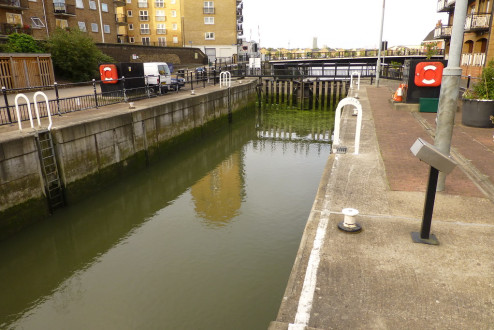
Limehouse Lock, London E14.
Limehouse E.14 All photographic images are the exclusive property of Paddy Ballard. The photographs are for web browser viewing only and may not be reproduced, copied, stored, downloaded or altered in any way without prior permission.
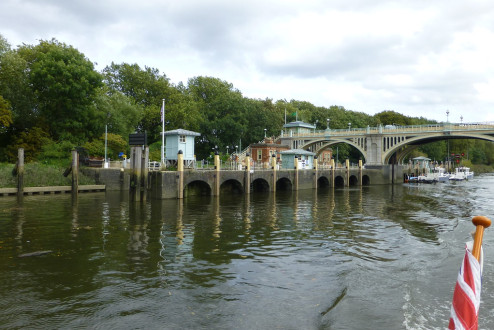
Richmond Lock,
Richmond, Surrey. All photographic images are the exclusive property of Paddy Ballard. The photographs are for web browser viewing only and may not be reproduced, copied, stored, downloaded or altered in any way without prior permission.
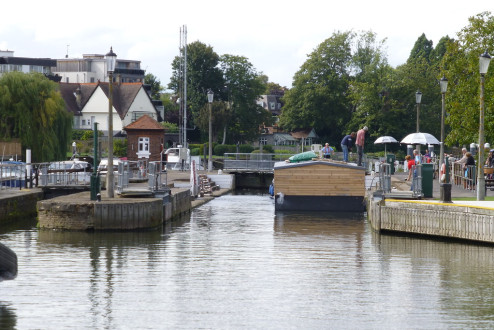
Teddington Lock, Ham.
Ham, Surrey. All photographic images are the exclusive property of Paddy Ballard. The photographs are for web browser viewing only and may not be reproduced, copied, stored, downloaded or altered in any way without prior permission.
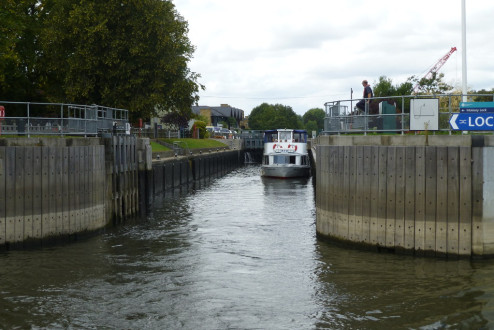
Molesey Lock, Hampton Court.
Hampton Court, Surrey. All photographic images are the exclusive property of Paddy Ballard. The photographs are for web browser viewing only and may not be reproduced, copied, stored, downloaded or altered in any way without prior permission.
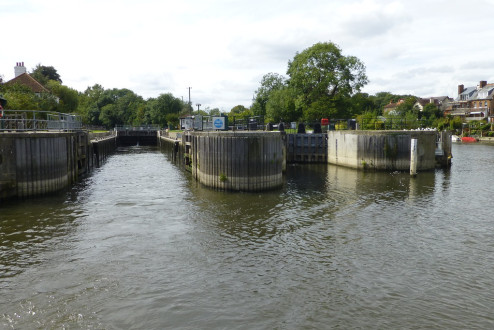
Sunbury Lock, Sunbury.
Waterside Drive, Sunbury, Surrey. All photographic images are the exclusive property of Paddy Ballard. The photographs are for web browser viewing only and may not be reproduced, copied, stored, downloaded or altered in any way without prior permission.
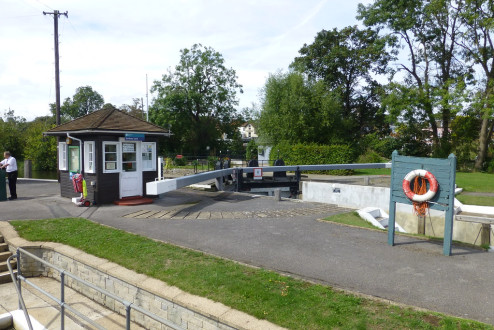
Sunbury Lock, Sunbury.
Waterside Drive, Sunbury, Surrey. All photographic images are the exclusive property of Paddy Ballard. The photographs are for web browser viewing only and may not be reproduced, copied, stored, downloaded or altered in any way without prior permission.
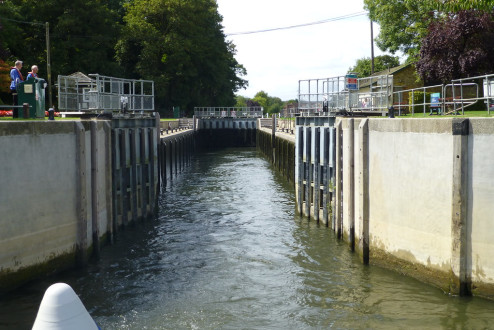
Shepperton Lock.
Towpath, Shepperton, Surrey. All photographic images are the exclusive property of Paddy Ballard. The photographs are for web browser viewing only and may not be reproduced, copied, stored, downloaded or altered in any way without prior permission.
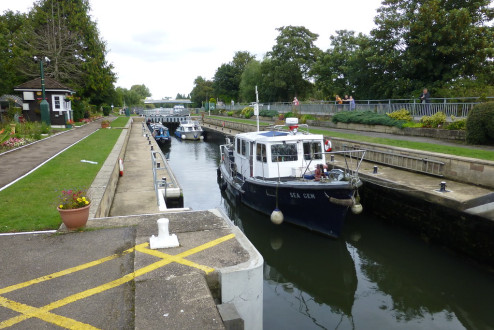
Chertsey Lock, Chertsey.
Chertsey Bridge, Chertsey, Surrey. All photographic images are the exclusive property of Paddy Ballard. The photographs are for web browser viewing only and may not be reproduced, copied, stored, downloaded or altered in any way without prior permission.
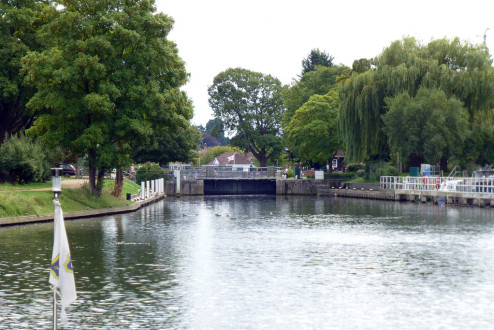
Penton Hook Lock, Laleham.
Thames Side Laleham, Surrey. All photographic images are the exclusive property of Paddy Ballard. The photographs are for web browser viewing only and may not be reproduced, copied, stored, downloaded or altered in any way without prior permission.
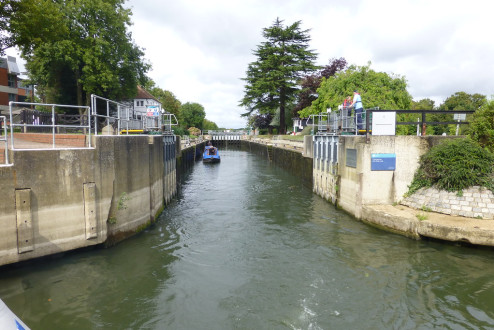
Bell Weir Lock, Surrey.
Egham, Surrey. All photographic images are the exclusive property of Paddy Ballard. The photographs are for web browser viewing only and may not be reproduced, copied, stored, downloaded or altered in any way without prior permission.
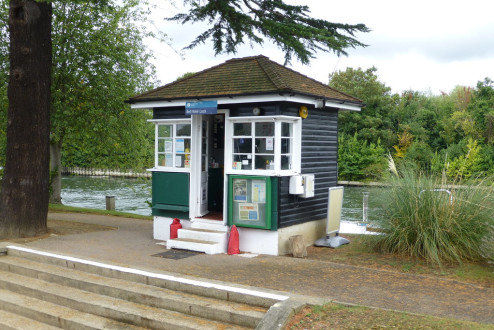
Bell Weir Lock, Surrey.
Egham, Surrey. All photographic images are the exclusive property of Paddy Ballard. The photographs are for web browser viewing only and may not be reproduced, copied, stored, downloaded or altered in any way without prior permission.
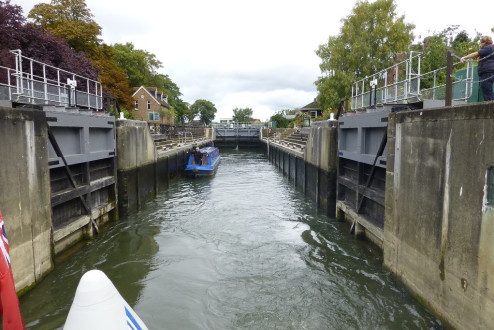
Old Windsor Lock, Berkshire.
Old Windsor, Berkshire. All photographic images are the exclusive property of Paddy Ballard. The photographs are for web browser viewing only and may not be reproduced, copied, stored, downloaded or altered in any way without prior permission.
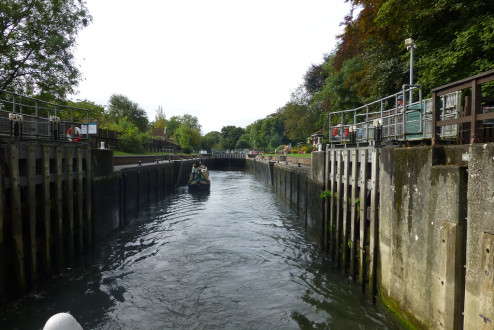
Romney Lock, Berkshire.
Riverside walk, Eton, Berkshire. All photographic images are the exclusive property of Paddy Ballard. The photographs are for web browser viewing only and may not be reproduced, copied, stored, downloaded or altered in any way without prior permission.
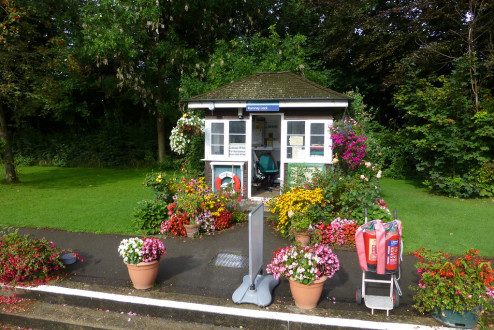
Romney Lock, Berkshire.
Riverside walk, Eton, Berkshire. All photographic images are the exclusive property of Paddy Ballard. The photographs are for web browser viewing only and may not be reproduced, copied, stored, downloaded or altered in any way without prior permission.
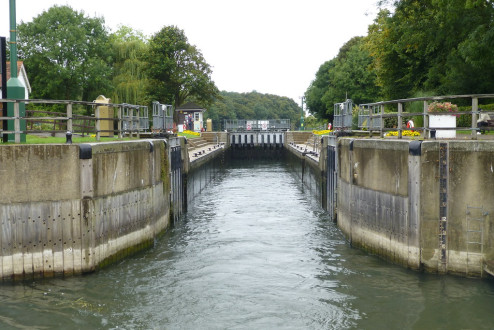
Boveney Lock, Buckinghamshire.
Lock Path, Boveney, Buckinghamshire. All photographic images are the exclusive property of Paddy Ballard. The photographs are for web browser viewing only and may not be reproduced, copied, stored, downloaded or altered in any way without prior permission.
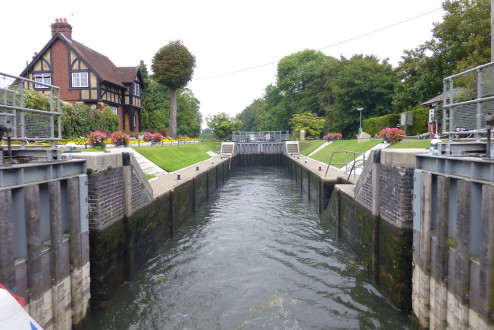
Bray Lock, Bray.
Bay, Berkshire. All photographic images are the exclusive property of Paddy Ballard. The photographs are for web browser viewing only and may not be reproduced, copied, stored, downloaded or altered in any way without prior permission.
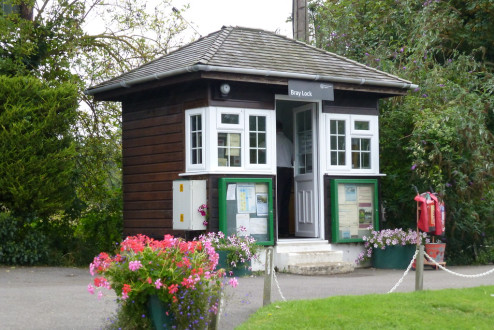
Bray Lock, Bray.
Bay, Berkshire. All photographic images are the exclusive property of Paddy Ballard. The photographs are for web browser viewing only and may not be reproduced, copied, stored, downloaded or altered in any way without prior permission.
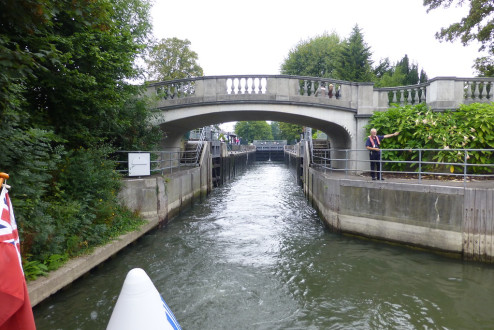
Boulters Lock, Maidenhead.
Maidenhead, Berkshire. All photographic images are the exclusive property of Paddy Ballard. The photographs are for web browser viewing only and may not be reproduced, copied, stored, downloaded or altered in any way without prior permission.
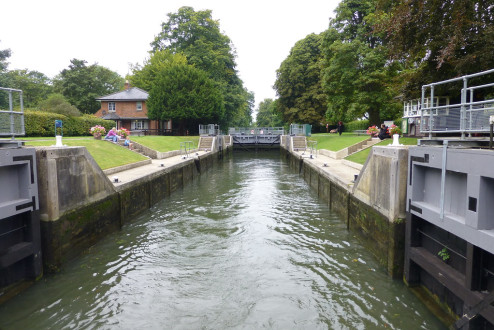
Cookham Lock, Marlow
Cookham, Berkshire. All photographic images are the exclusive property of Paddy Ballard. The photographs are for web browser viewing only and may not be reproduced, copied, stored, downloaded or altered in any way without prior permission.
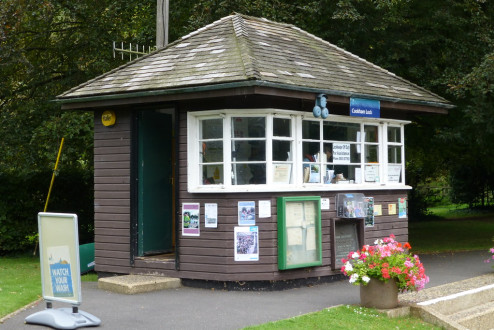
Cookham Lock, Marlow.
Cookham, Berkshire All photographic images are the exclusive property of Paddy Ballard. The photographs are for web browser viewing only and may not be reproduced, copied, stored, downloaded or altered in any way without prior permission.
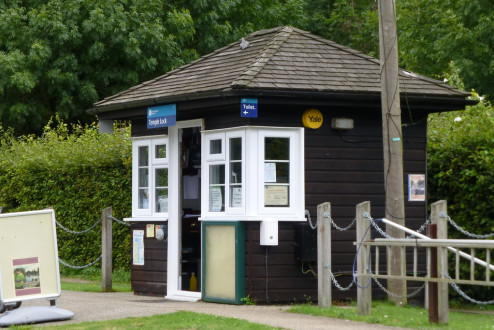
Temple Lock, Hurley
Nr. Hurley, Buckinghamshire. All photographic images are the exclusive property of Paddy Ballard. The photographs are for web browser viewing only and may not be reproduced, copied, stored, downloaded or altered in any way without prior permission.
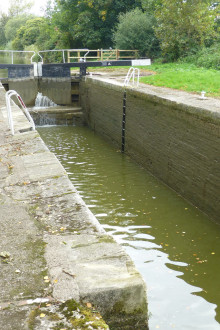
Hungerford Lock.
Hungerford, Berkshire. All photographic images are the exclusive property of Paddy Ballard. The photographs are for web browser viewing only and may not be reproduced, copied, stored, downloaded or altered in any way without prior permission.
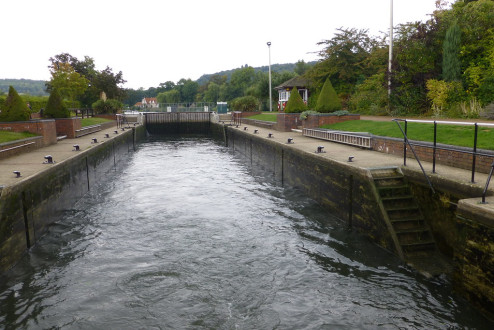
Hambleden Lock, Buckinghamshire.
Hambleden, Buckinghamshire. All photographic images are the exclusive property of Paddy Ballard. The photographs are for web browser viewing only and may not be reproduced, copied, stored, downloaded or altered in any way without prior permission.
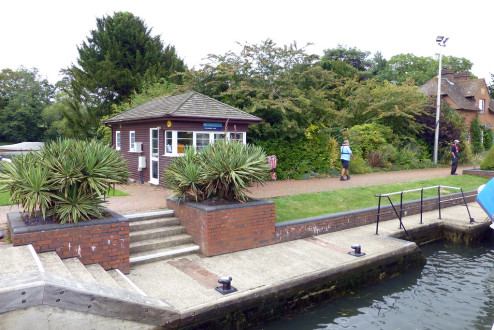
Hambleden Lock, Buckinghamshire.
Hambleden, Buckinghamshire. All photographic images are the exclusive property of Paddy Ballard. The photographs are for web browser viewing only and may not be reproduced, copied, stored, downloaded or altered in any way without prior permission.
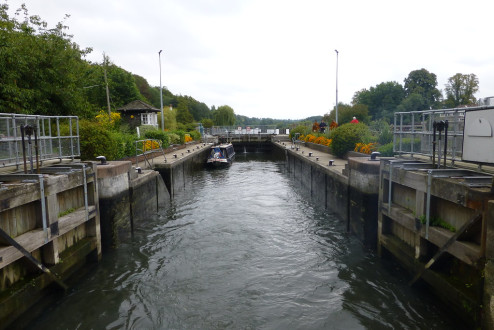
Marsh Lock, Henley.
Mill Lane, Henley on Thames, Oxfordshire. All photographic images are the exclusive property of Paddy Ballard. The photographs are for web browser viewing only and may not be reproduced, copied, stored, downloaded or altered in any way without prior permission.
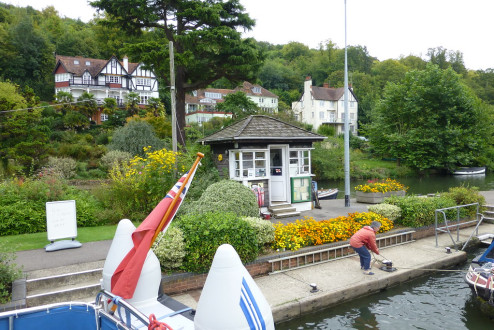
Marsh Lock, Henley.
Mill Lane, Henley on Thames, Oxfordshire. All photographic images are the exclusive property of Paddy Ballard. The photographs are for web browser viewing only and may not be reproduced, copied, stored, downloaded or altered in any way without prior permission.
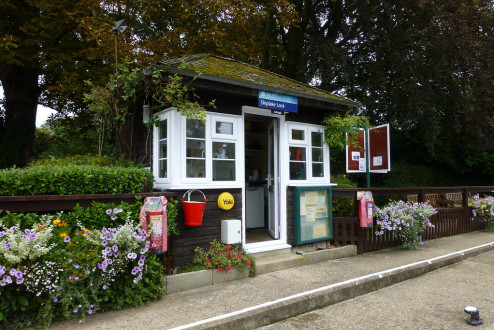
Shiplake Lock, Shiplake.
Shiplake, Oxfordshire. All photographic images are the exclusive property of Paddy Ballard. The photographs are for web browser viewing only and may not be reproduced, copied, stored, downloaded or altered in any way without prior permission.
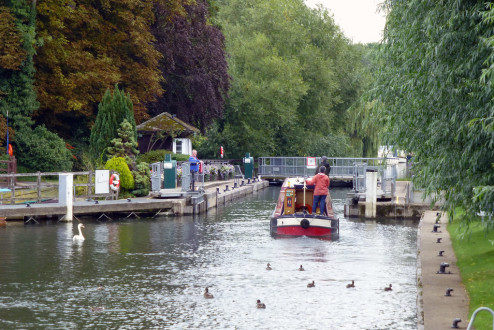
Shiplake Lock, Shiplake.
Shiplake, Oxfordshire. All photographic images are the exclusive property of Paddy Ballard. The photographs are for web browser viewing only and may not be reproduced, copied, stored, downloaded or altered in any way without prior permission.
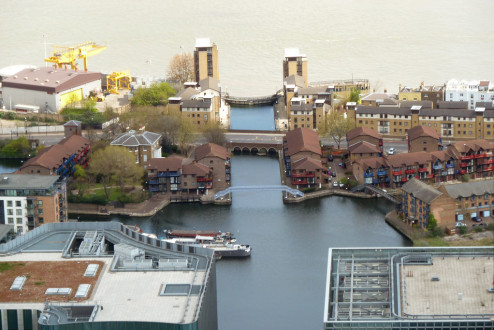
New Blackwall Lock, London E14.
New Blackwall Entrance and Basin, London E14. Photographed from the 48th floor of 1, Canada Square. All photographic images are the exclusive property of Paddy Ballard. The photographs are for web browser viewing only and may not be reproduced, copied, stored, downloaded or altered in any way without prior permission.
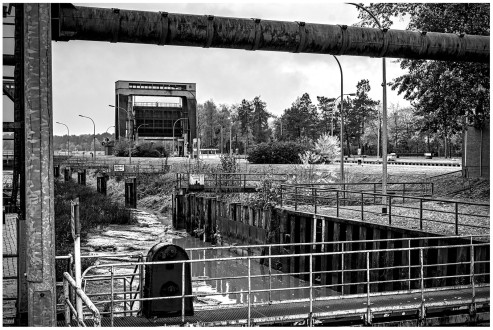
Schleuse Herbrum
de.wikipedia.org/wiki/Schleuse_Herbrum de.wikipedia.org/wiki/Dortmund-Ems-Kanal
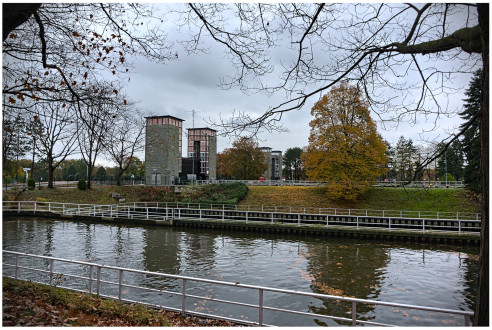
Schleuse Meppen (I)
de.wikipedia.org/wiki/Schleuse_Meppen de.wikipedia.org/wiki/Dortmund-Ems-Kanal
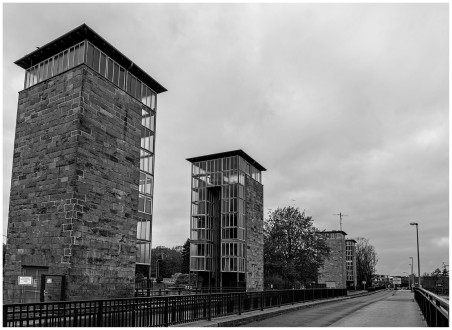
Schleuse Meppen (II)
de.wikipedia.org/wiki/Schleuse_Meppen de.wikipedia.org/wiki/Dortmund-Ems-Kanal
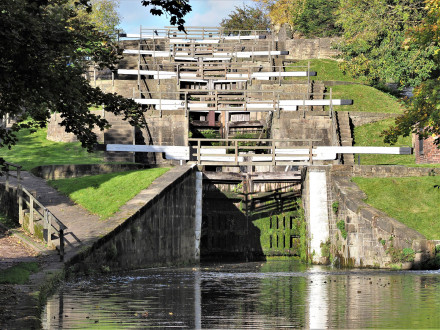
Five Rise Locks, Bingley, West Yorkshire, England.
The steepest staircase lock on the Leeds & Liverpool Canal. Opened in 1774, it has a rise of 60 feet.
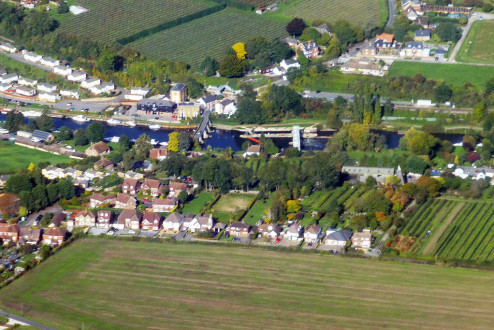
Lock, Kettle Corner.
Kettle Corner, River Medway, East Farleigh, Maidestone, Kent. Photographed from Cessna 152, G-HUXY at 2000ft. All photographic images are the exclusive property of Paddy Ballard. The photographs are for web browser viewing only and may not be reproduced, copied, stored, downloaded or altered in any way without prior permission.
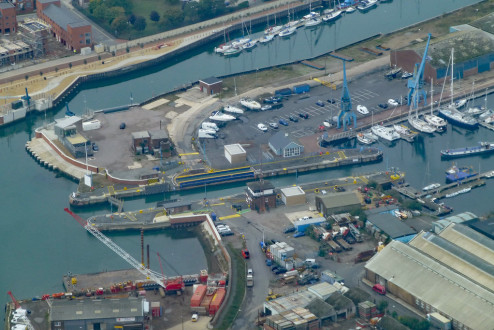
Ipswich Lock.
At the end of the River Orwell, where the River Gipping begins in the New Cut at the top of the picture and the lock gates into the Wet Dock.and Marina area. Photographed from G-HUXY Cessna 152 at 1200ft. All photographic images are the exclusive property of Paddy Ballard. The photographs are for web browser viewing only and may not be reproduced, copied, stored, downloaded or altered in any way without prior permission.
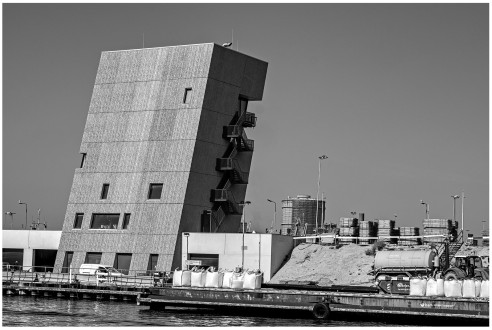
The biggest lock...
... in the world is being built in Ijmuiden, between the North Sea and the "Noordzeekanaal". The new lock is 500 m long, 70 m wide, and 18 m deep. Bigger than the locks of the Panama Canal, or the port of Antwerpen. With our small to moderate sailing yacht (9.4 m length), we could sink in this lock and not even the tip of the mast (~ 15 m) would show, and we could tack up against the wind in it 😉 This picture is showing the new control tower. nl.wikipedia.org/wiki/Sluizen_van_IJmuiden
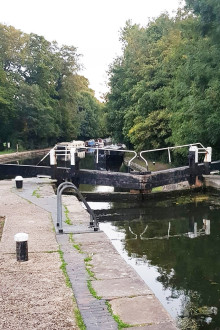
Cowley Lock No.89, Uxbridge.
Grand Union Canal, Uxbridge, Middlesex. This photograph is part of the P. Ballard collection supplied by Friends and Family for Flickr and as such is for web browser viewing only and may not be reproduced, copied, stored, downloaded or altered in any way without permission.
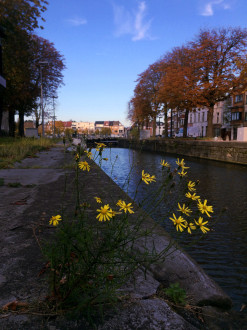
Flowers by an abandoned lock
Ghent, Belgium.
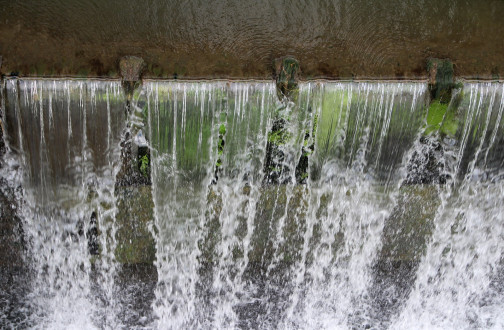
Poses - La chute d'eau au barrage
50229079211_3b028da573_k
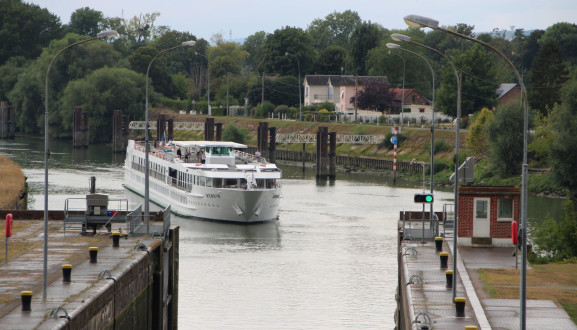
Amfreville-sous-les-Monts - Renoir avant l'écluse
50228834086_6b15f3369e_k
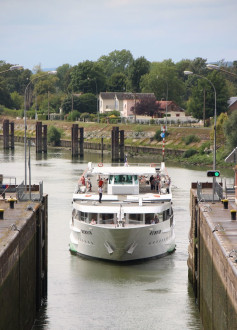
Amfreville-sous-les-Monts - Renoir se présente à l'écluse
50228968452_36a5349cc9_k
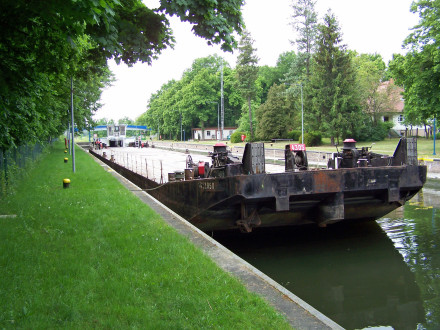
2434 in Bahnitz
Schubverband 2434 in der Schleuse Bahnitz
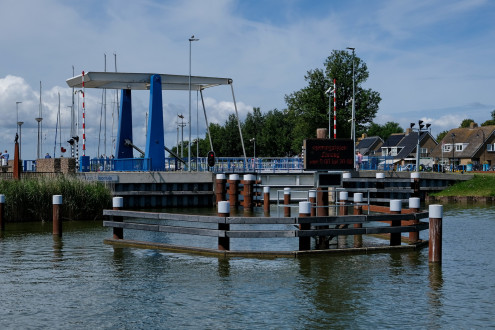
Ijsselmeer_2020
Stavoren (IJsselmeer), Johan Frisosluis
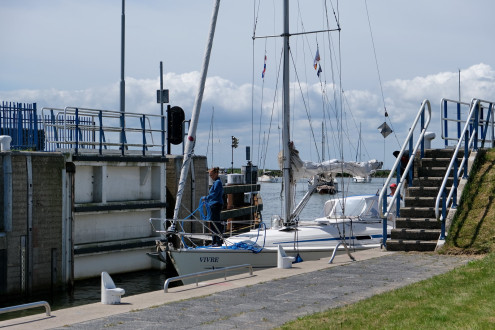
Ijsselmeer_2020
Stavoren (IJsselmeer), Johan Frisosluis
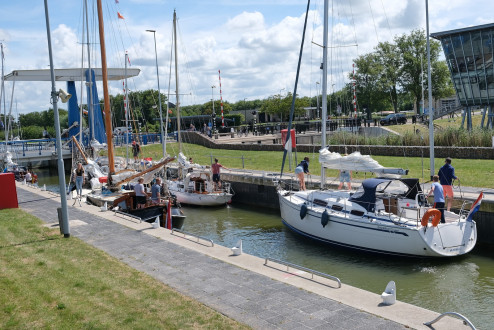
Ijsselmeer_2020
Stavoren (IJsselmeer), Johan Frisosluis
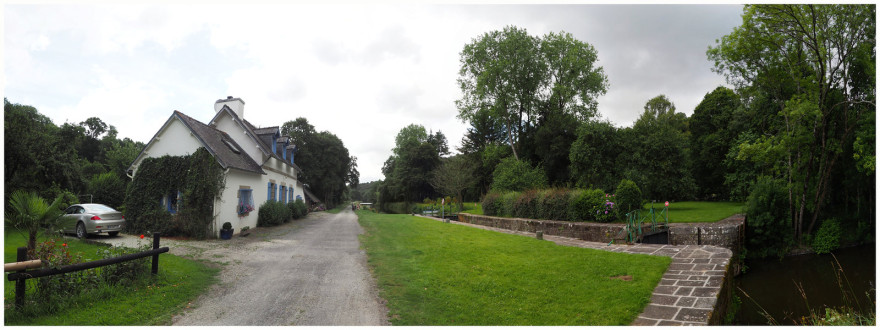
Chahumasy-2016-08-04-(59)---canal-Nantes-Brest-pano
50097759212_4f46e7d538_h
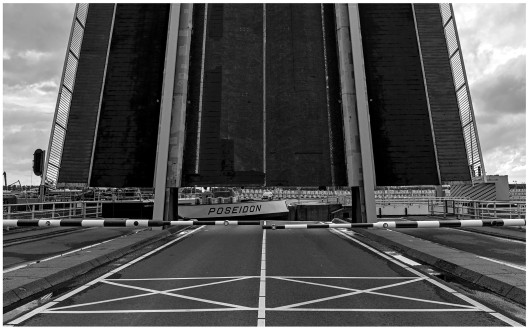
Poseidon
Poseidon entering the Oostsluis in Terneuzen, destination Westerschelde.
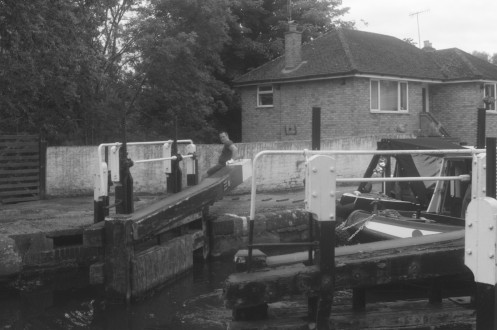
Putting his back into it
Batchworth Lock on the Grand Union Canal
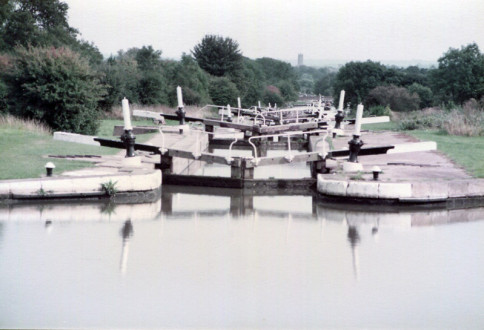
Hatton Flight.
Grand Union Canal, Hatton, Warwickshire, UK. All photographic images are the exclusive property of Paddy Ballard. The photographs are for web browser viewing only and may not be reproduced, copied, stored, downloaded or altered in any way without prior permission.
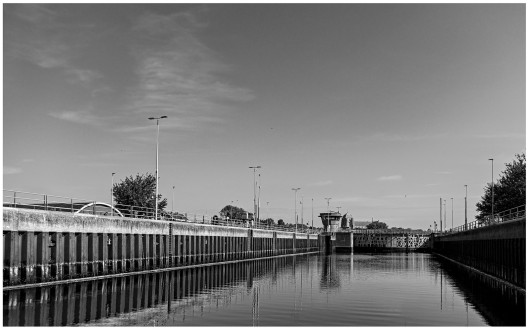
Sluis Veere
nl.wikipedia.org/wiki/Sluis_Veere
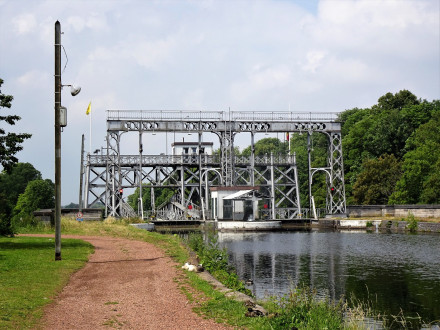
Canal Historique du Centre
50001777528_df9f30a2d5_k
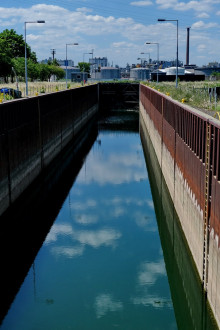
Mannheim_Hafen
Altrhein/Bonadieshafen - an der Kammerschleuse
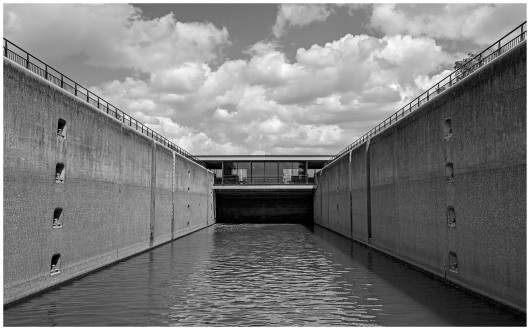
Sluis Reindersmeer (I)
nl.wikipedia.org/wiki/Reindersmeer
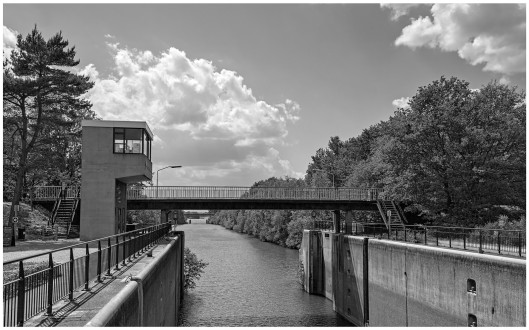
Sluis Reindersmeer (II)
nl.wikipedia.org/wiki/Reindersmeer
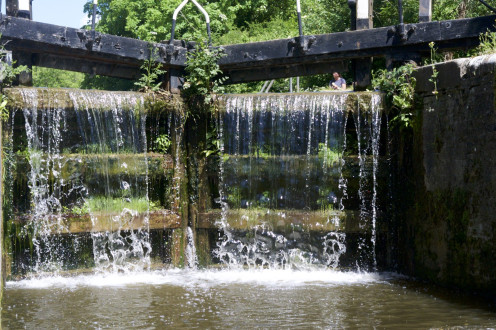
Springwell Lock Grand Union Canal
49926660568_b7286d3cae_k
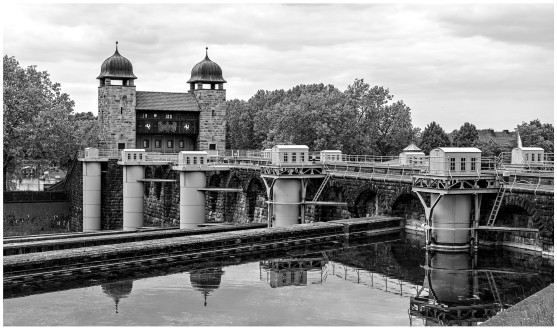
Alte Schachtschleuse
Old lock in Waltrop, where the Dortmund-Ems-Kanal meets the Rhein-Herne-Kanal.
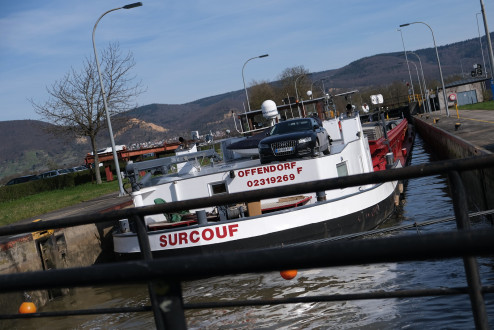
Dossenheimer Schleuse_2020
Neckar river, Dossenheim lock
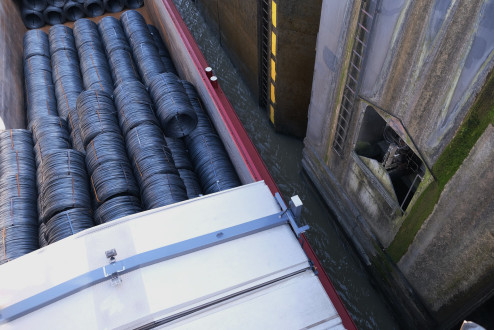
Dossenheimer Schleuse_2020
Neckar river, Dossenheim lock
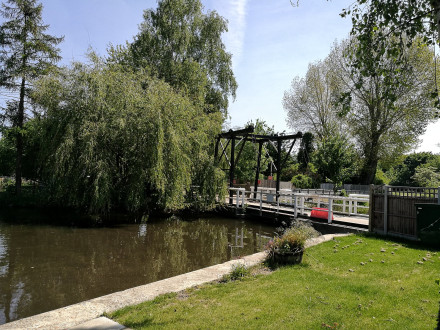
PBWA Rickmansworth
Batchworth Basin Lock Bridge
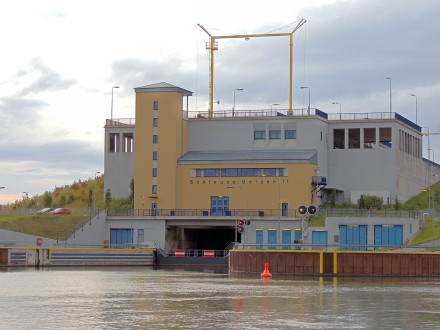
Schleuse Uelzen II Unterwasser
49859059342_16ef59fe0b_k
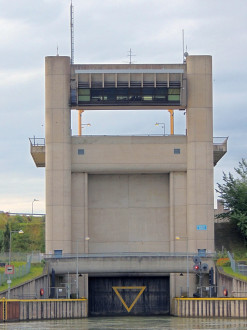
Schleuse Uelzen 1 Unterwasser
49858212138_1e6edd6ae4_k
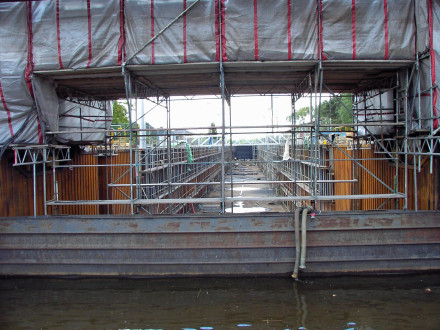
Schleuse Bollingerfähr
49858212193_0f8d2b3b7f_k
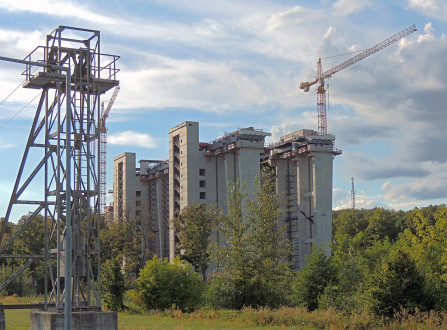
Neubau Schiffshebewerk Niederfinow 2014
49859059777_b86723bd67_k
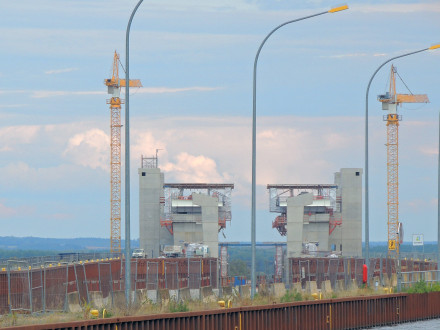
Neubau Schiffshebewerk Niederfinow 2014
49858212463_ad3c8d1a99_k
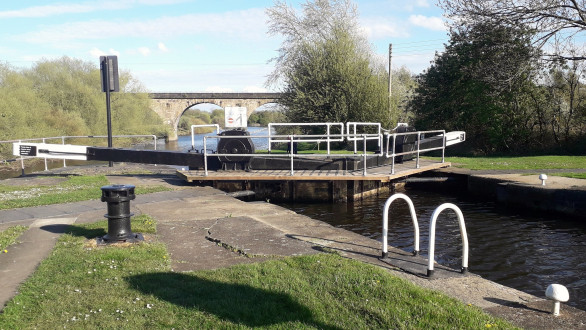
Woodnook Lock Aire and Calder Navigation Altofts Wakefield Yorkshire
49761491171_38764d373b_k
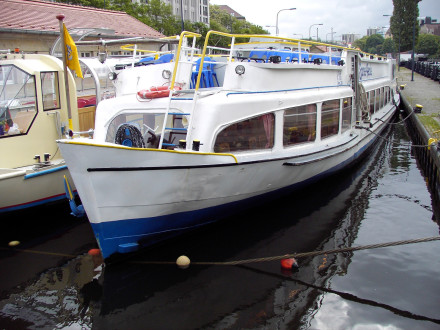
Spree Perle
9412373353_f60166b572_k
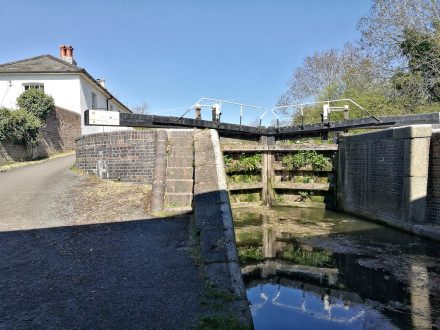
PBWA
sdr
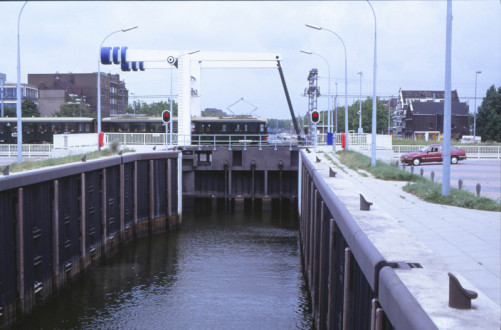
38435016-8660 Vlaardingen 17-08-1991
Het blokkendoostreinstel van het Nederlands Spoorweg Museum passeert op 17 augustus 1991 de ophaalbrug welke achter de sluis van Vlaardingen ligt. In het kader van het honderdjarig bestaan van de zogenaamde "Hoekse lijn" vonden er dit weekeinde diverse ritten met historische materieel plaats. Let op de pantograaf van de motorwagen die hier op de bovenleidinglozebrug in het "luchtledige" zweeft.
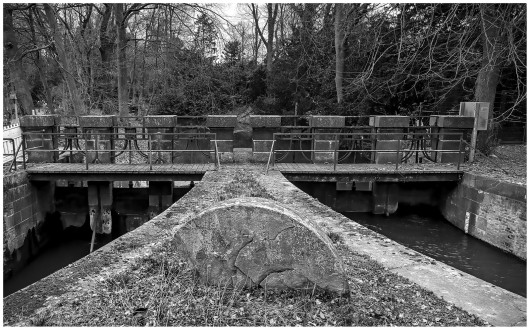
Old Weir
49687948757_dbc9fa772d_k
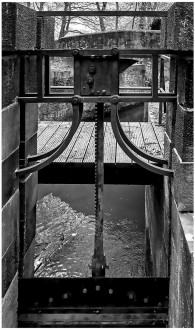
Old Weir (detail)
49687950777_f65e60fe43_k
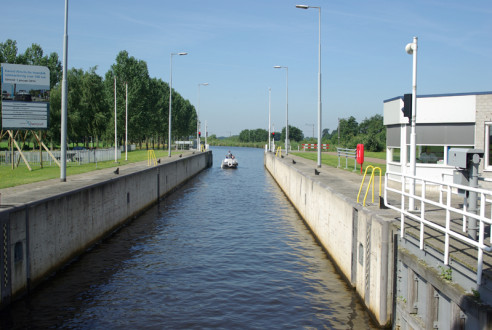
IMGP4705 De Haandrik 1 augustus 2012
Eenzaam en alleen vaart het laatste pleziervaartuig de sluis uit. Bij deze sluis staan overigens de deuren aan beide zijde open en worden alleen gesloten bij hoge waterafvoer in de rivier de Vecht die achter mij ligt. A lonely ship is leaving the lock on its way to Almelo.
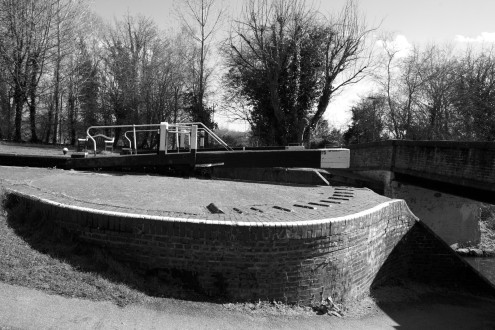
Croxley lock Grand Union Canal
Croxley Common Moor
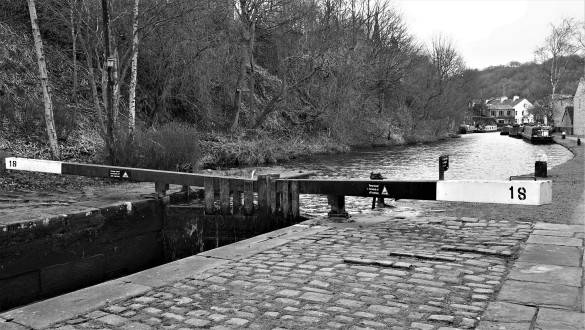
Lock gates, Todmorden, Calderdale, West Yorkshire, England.
The 32 mile long Rochdale canal links Manchester and Leeds
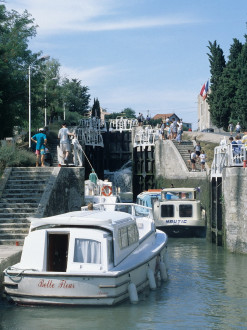
Béziers
Canal de Midi, Ecluses de Fonceranes. whc.unesco.org/en/list/770 Small picture slide from 1998, scanned and slightly processed.
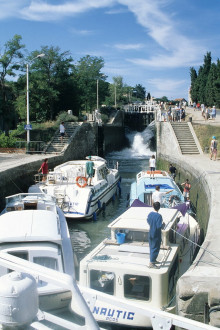
Béziers
Canal de Midi, Ecluses de Fonceranes. whc.unesco.org/en/list/770 Small picture slide from 1998, scanned and slightly processed.
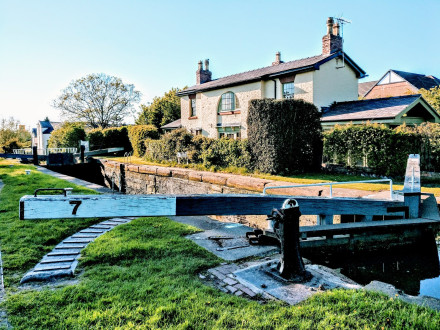
Lock keeper's house on the Shropshire Union canal in England.
49300898208_a899b24425_k
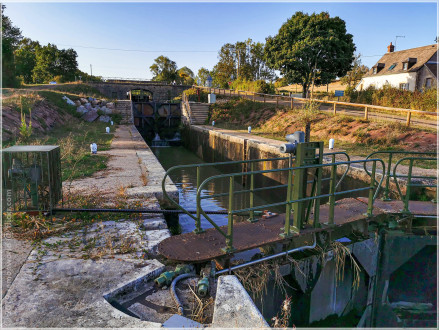
Hausbooturlaub 2019 Corbigny, Écluse Le Brioux
Écluse Le Brioux, /
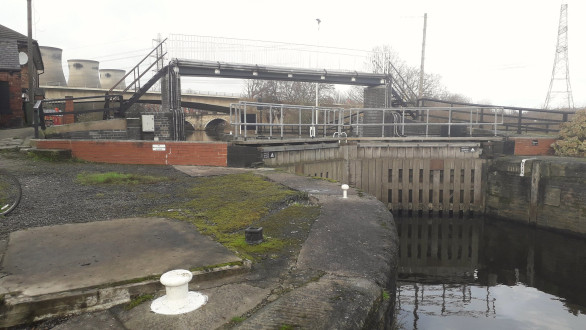
Ferrybridge Flood Lock Aire and Calder Navigation Yorkshire
49182141998_3407694f4d_k
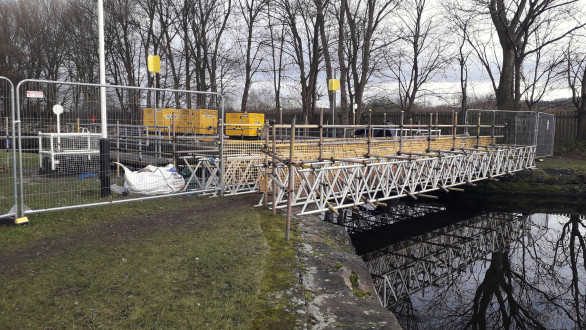
Bulholme Lock under repair Castleford Aire and Calder Navigation Yorkshire
49182860033_b399ef03ef_k
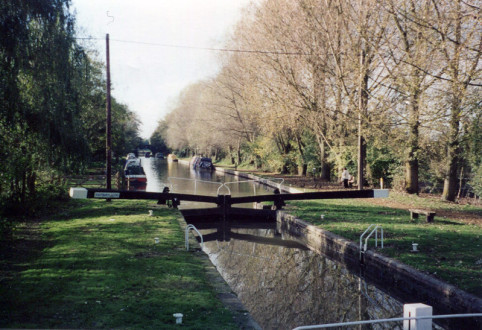
Kintbury Lock, Berkshire.
Kennet & Avon Canal, Kintbury, Berkshire. All photographic images are the exclusive property of Paddy Ballard. The photographs are for web browser viewing only and may not be reproduced, copied, stored, downloaded or altered in any way without prior permission.
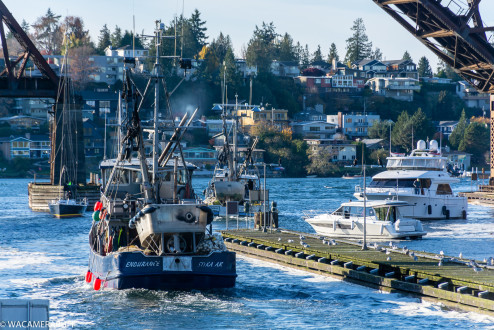
Balard Locks
With a beautiful fall day and the big lock being down for maintenance it was a very big day for traffic through the locks.
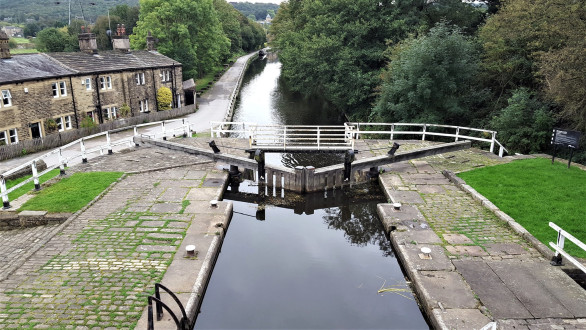
Dobson Locks, Apperley Bridge, West Yorkshire, England.
Leeds and Liverpool Canal
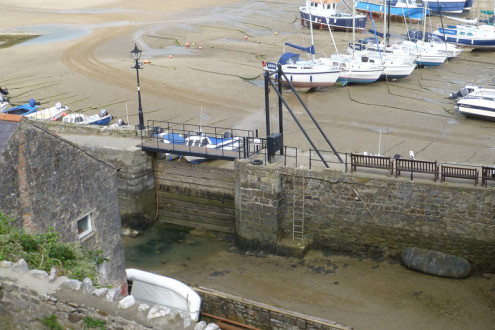
Tide Gate, Tenby
Tenby Harbour, Tenby, Pembrokeshire, Wales. Its purpose appears to be to stop waves coming in from the open harbour, not to keep water in. All photographic images are the exclusive property of Paddy Ballard. The photographs are for web browser viewing only and may not be reproduced, copied, stored, downloaded or altered in any way without prior permission.
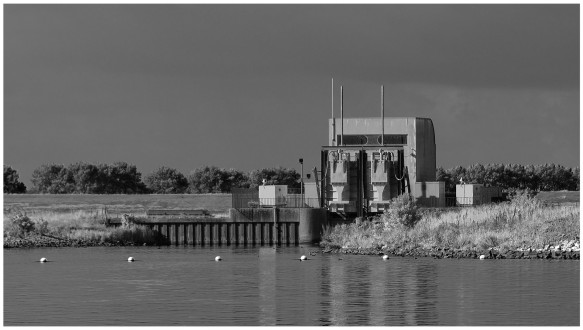
Kering Dirkslandsche Haven
A lock between "Dirkslandsche Haven" and the Haringvliet (which is actually part of the Rhine and Maas Delta).
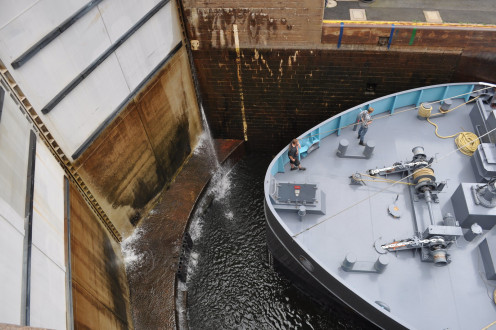
DSC_1571
Trollhättan, locks
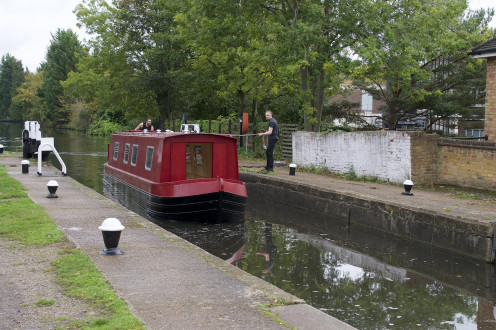
Pulling into Batchworth Lock
PBWA Rickmansworth
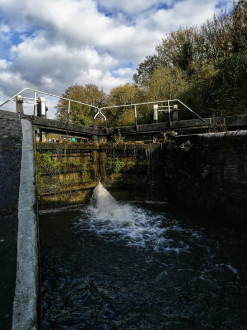
PBWA Rickmansworth
Water coming over the top and through the lock gates at Springwell
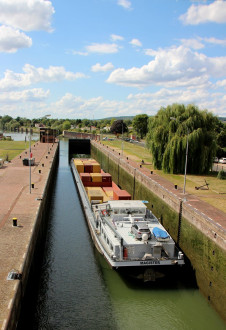
Amfreville-sous-les-Monts - Magister à l'écluse
48678770477_48477a9f81_k
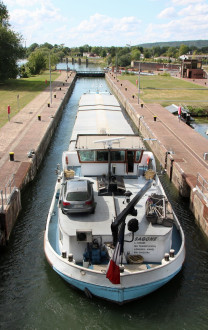
Amfreville-sous-les-Monts - Sagone dans l'écluse
48673076346_74da84821c_k
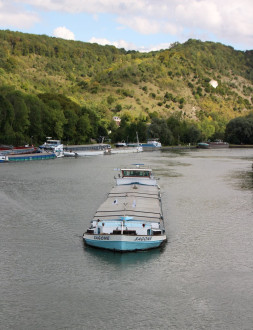
Amfreville-sous-les-Monts - Sagone arrive à l'écluse
48672630488_ae29cc4342_k
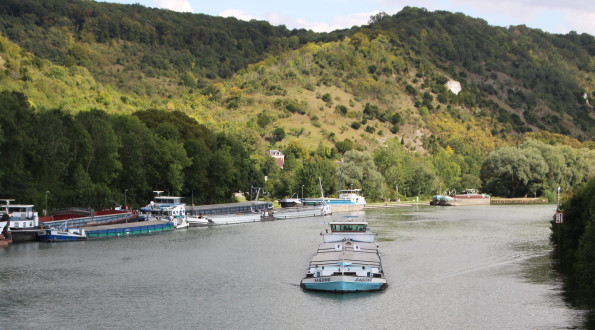
Amfreville-sous-les-Monts - Sagone arrive à l'écluse
48672630448_307c147fef_k
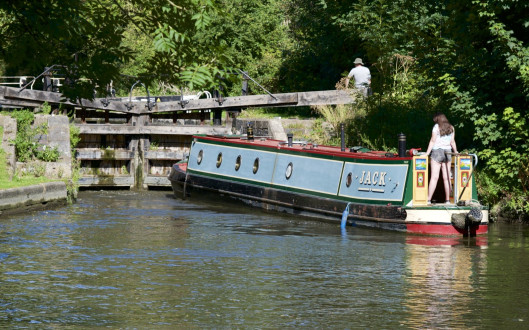
Come on open the gate
Grand Union Canal, Watford, Hertfordshire
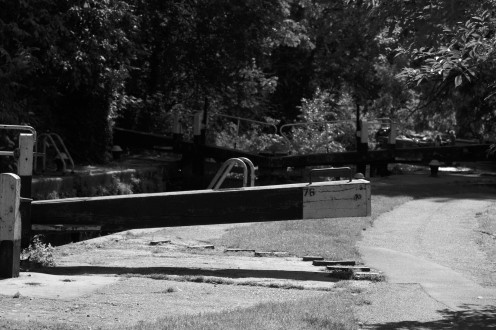
Lock 76
Grand Union Canal, Watford, Hertfordshire
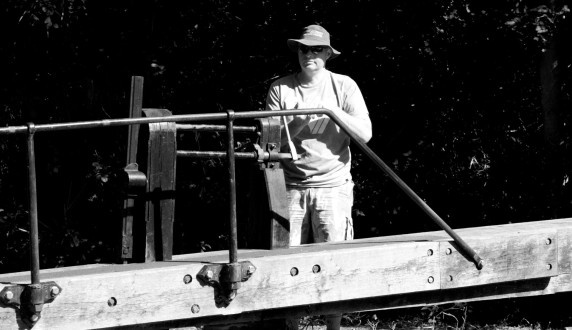
Working the Lock Gates
Grand Union Canal, Watford, Hertfordshire
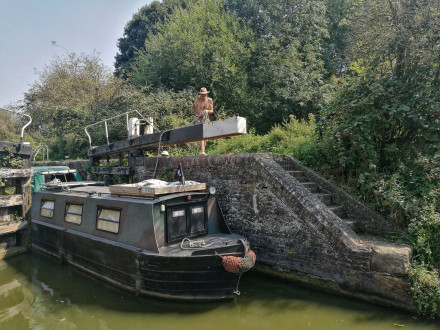
PBWA Rickmansworth
One Man boating at Lot Mead Lock
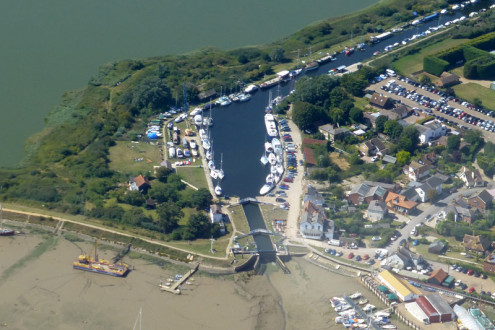
Heybridge Basin, Maldon.
Heybridge, Maldon Essex. Tide-lock on the Chelmer & Blackwater Navigation where it enters the tidal River Blackwater. Photographed from Cessna 152 G-MASS at about 1500ft. All photographic images are the exclusive property of Paddy Ballard. The photographs are for web browser viewing only and may not be reproduced, copied, stored, downloaded or altered in any way without prior permission.
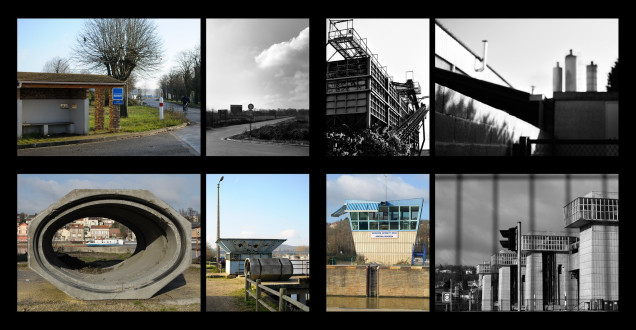
Autour de Fin d'Oise
Nikon D90, 50mm f/1.4D & 35mm f/1.8G
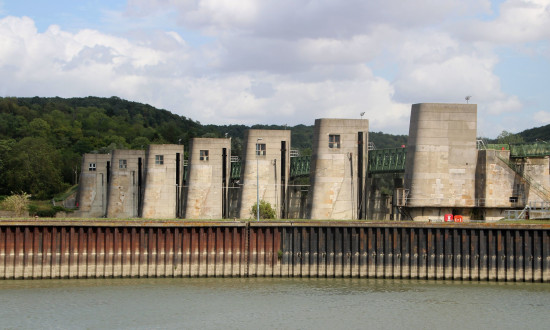
Saint-Pierre-la-Garenne - Le barrage de Port-Mort
48546376777_98b6ed4352_k
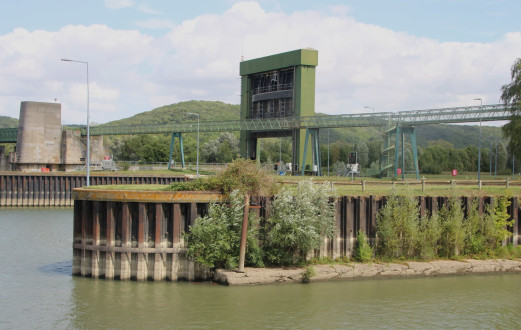
Saint-Pierre-la-Garenne - Les Ecluses de Notre-Dame-la-Garenne
48546222716_baf5303d1d_k
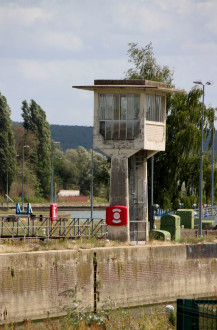
Saint-Pierre-la-Garenne - Les Ecluses de Notre-Dame-la-Garenne
48546222781_4df461a383_k
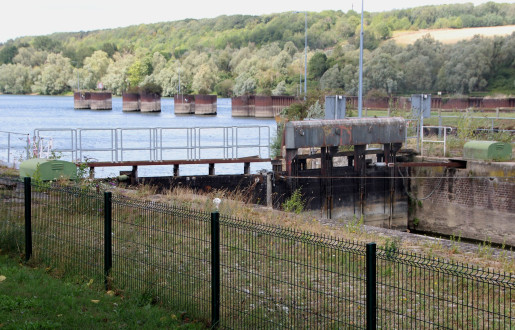
Saint-Pierre-la-Garenne - Les Ecluses de Notre-Dame-la-Garenne
48546376972_9f37563376_k
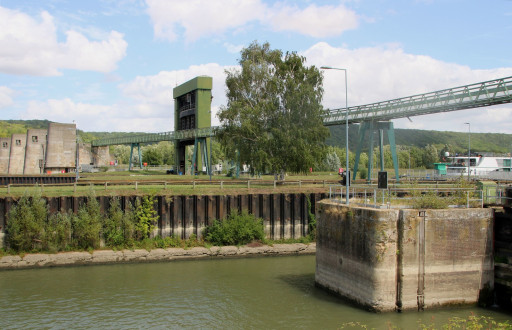
Saint-Pierre-la-Garenne - Les Ecluses de Notre-Dame-la-Garenne
48546377047_d69595d0ac_k
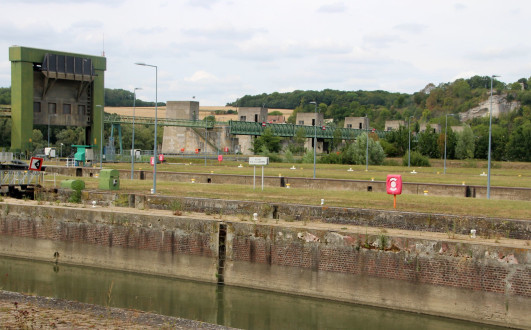
Saint-Pierre-la Garenne - Les écluses et le barrage de Port-Mort
48452767762_5efd16fb77_k
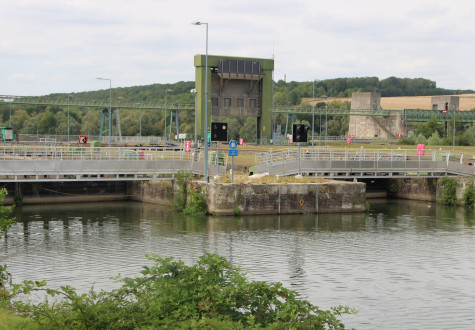
Saint-Pierre-la Garenne - Ecluse Notre-Dame-la-Garenne
48452767697_10367c0f80_k
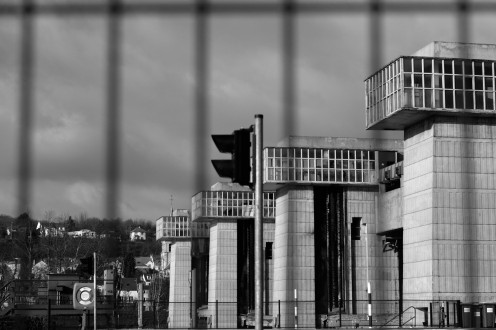
Ecluse
Andrésy Nikon D90, 50mm f/1.4D
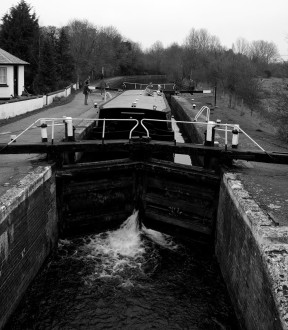
Sluice gates opened time to drop the level
Grand Union Canal, Rickmansworth, Hertfordshire
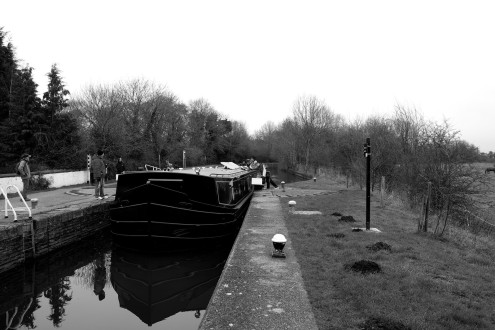
No so much a narrow boat it's going to be tight
Grand Union Canal, Rickmansworth, Hertfordshire
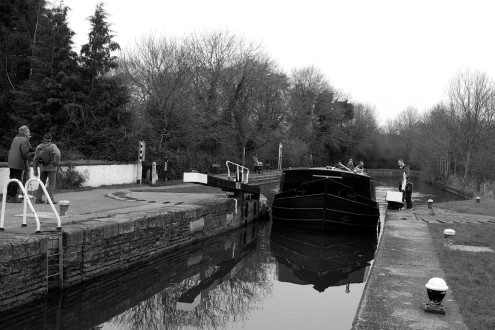
Not much room to spare
Grand Union Canal, Rickmansworth, Hertfordshire
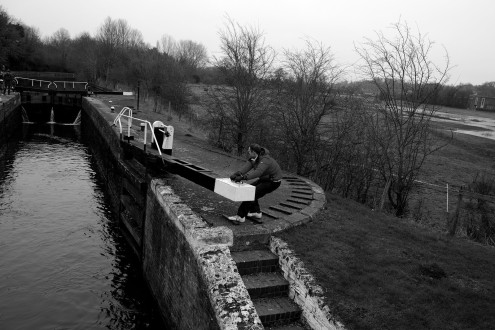
Time to close the gates
Grand Union Canal, Rickmansworth, Hertfordshire
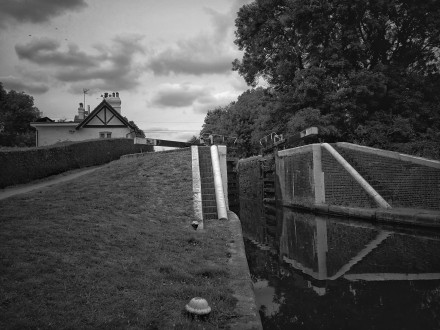
PBWA The Grand Union Canal
Denham Deep Water Lock
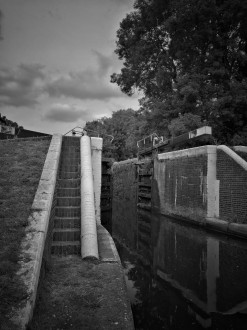
PBWA The Grand Union Canal
Denham Deep Lock is particularly impressive especially when you stand beside the huge lock gates - this is the deepest lock on the Grand Union Canal - bringing the canal down by changing the water level by 11 feet 1 inch.
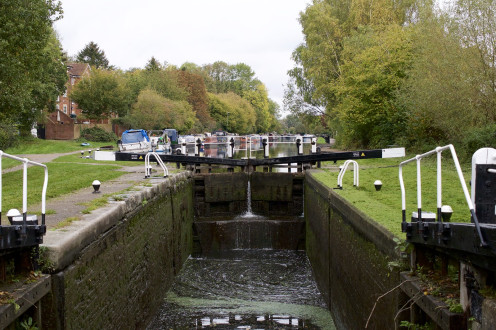
Croxley Green Lock, Grand Union Canal
PBWA Rickmansworth
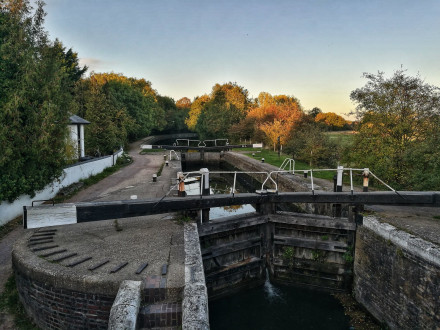
Sunset hour
Stockers Lock
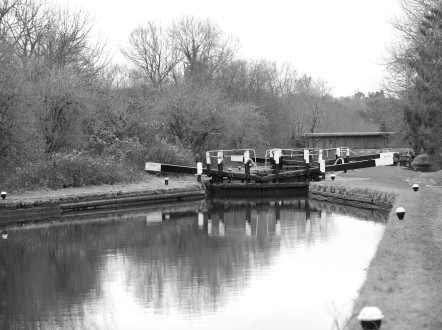
Lock
Views from the towpath of the Grand Union Canal between The Aquadrome Rickmansworth and Croxley Green Common
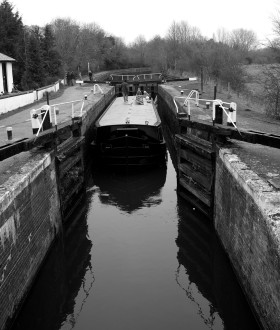
All set to continue on
Grand Union Canal, Rickmansworth, Hertfordshire
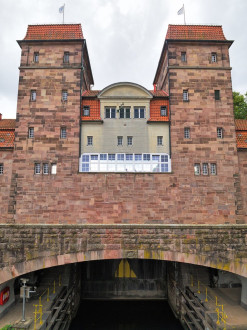
Schachtschleuse, Minden
Die Schachtschleuse Minden wurde von 1911 bis 1914 im Rahmen des Baus des Mittellandkanals am Wasserstraßenkreuz Minden als Nordabstieg zur Weser gebaut und stellt damit die kürzeste Verbindung zwischen Mittellandkanal und Weser her. de.wikipedia.org/wiki/Schachtschleuse_Minden
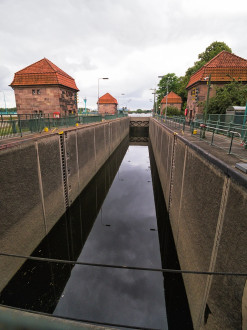
Schachtschleuse, Minden
Die Schachtschleuse Minden wurde von 1911 bis 1914 im Rahmen des Baus des Mittellandkanals am Wasserstraßenkreuz Minden als Nordabstieg zur Weser gebaut und stellt damit die kürzeste Verbindung zwischen Mittellandkanal und Weser her. de.wikipedia.org/wiki/Schachtschleuse_Minden
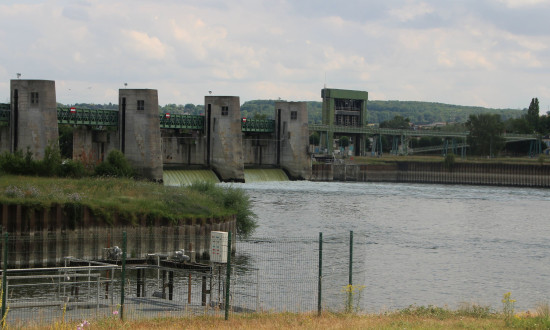
Port-Mort - Le barrage sur la Seine
48274474066_9e983bd760_k
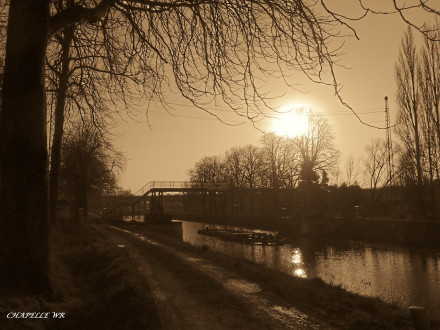
Bracquegnies , tombée du soir sur le canal du centre!
6781277165_d9bcf47fb8_k
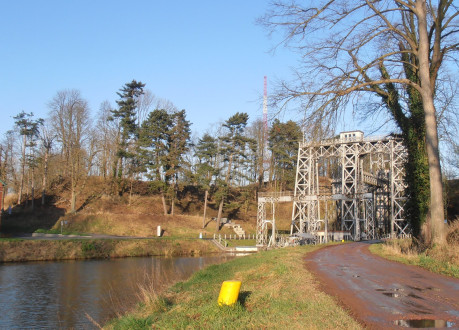
Ascenseur à bateau n° 3 sur le canal du centre, Bracquegnies.
6781273659_b9aeb321ca_k
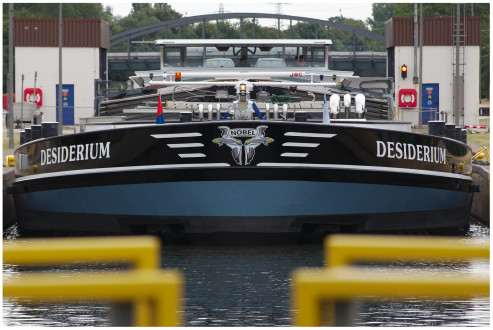
Desiderium
Entering the lock in Oberhausen.
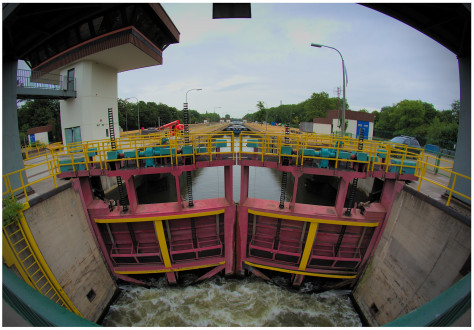
Schleuse Oberhausen
"Desiderium" in the background.
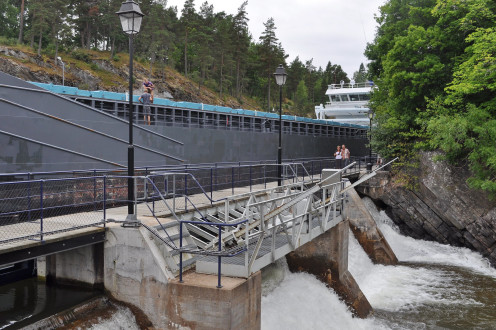
DSC_1579
Trollhättan, locks
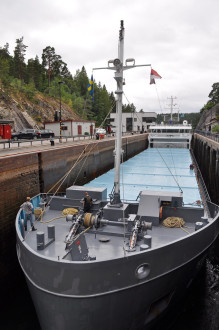
DSC_1572
Trollhättan, locks
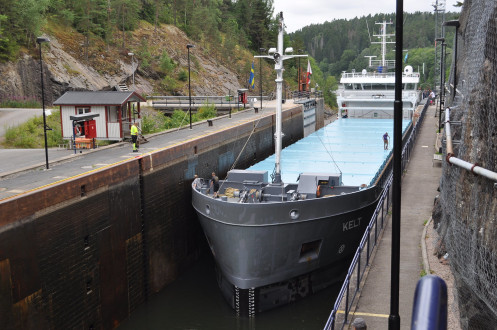
DSC_1568
Trollhättan, locks
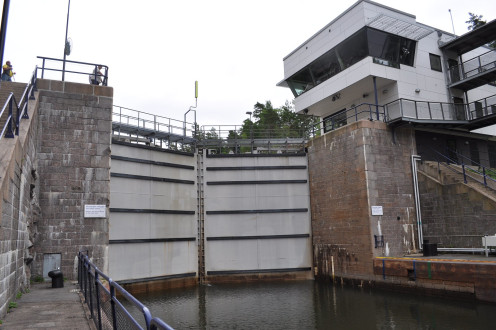
DSC_1554
Trollhättan, locks
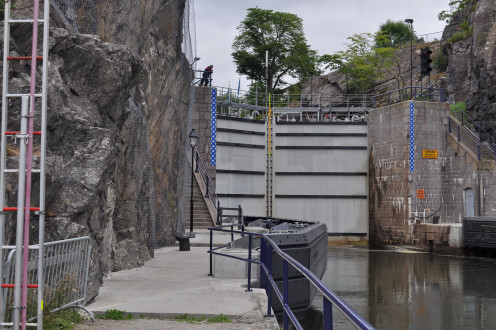
DSC_1547
Trollhättan, locks
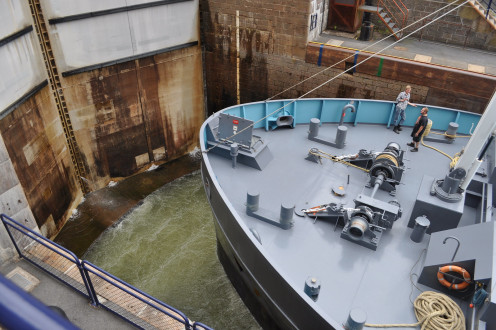
DSC_1562
Trollhättan, locks
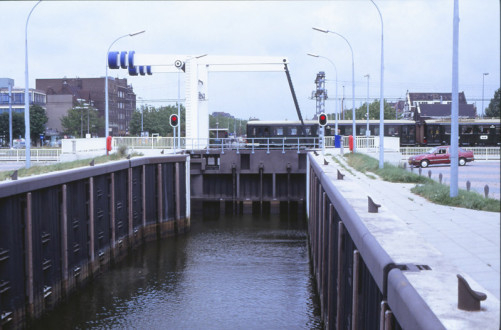
38435015-8659 Vlaardingen 17 augustus 1991
Het museumblokkendoostreinstel onderweg op de zogenaamde "Hoekselijn" vanwege het 100 jarig bestaan ervan. The oldest electric museumtrain on its way on the so called "Hoekselijn" because of its 100st aniversery.
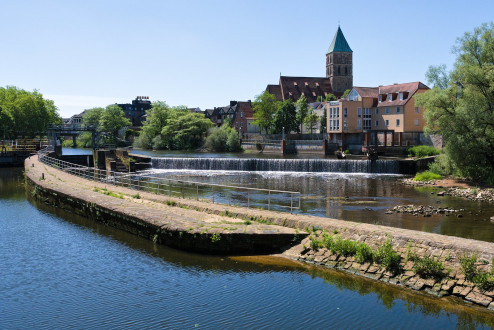
Emswehr mit Schleuse und Seitenkanal, Rheine
Das Rheiner Emswehr ist ein Bauwerk zur Regulierung des Wasserhaushaltes der Ems im Bereich der Stadt Rheine. Es dient darüber hinaus der Schiffbarmachung der Ems sowie der Wasserkraftgewinnung. Es ist eines der Wahrzeichen der Stadt. de.wikipedia.org/wiki/Emswehr_Rheine
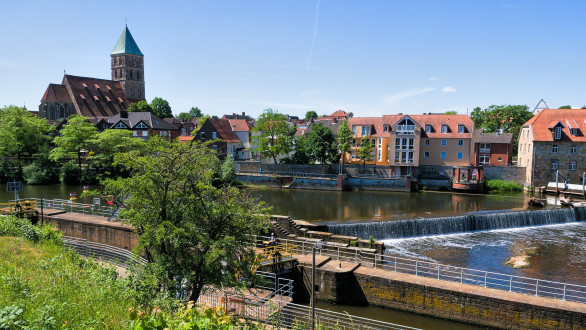
Emswehr mit Schleuse, Rheine
Das Rheiner Emswehr ist ein Bauwerk zur Regulierung des Wasserhaushaltes der Ems im Bereich der Stadt Rheine. Es dient darüber hinaus der Schiffbarmachung der Ems sowie der Wasserkraftgewinnung. Es ist eines der Wahrzeichen der Stadt. de.wikipedia.org/wiki/Emswehr_Rheine
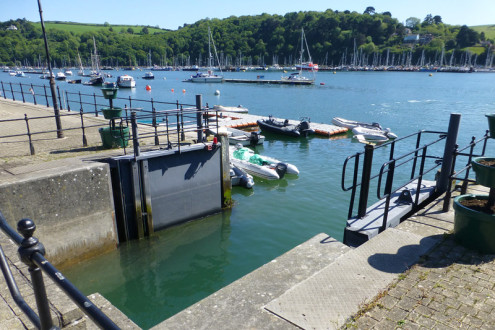
Lock, Dartmouth.
South Embankment, Dartmouth, Devon. Lock btween the River Dart and the Boatfoat. All photographic images are the exclusive property of Paddy Ballard. The photographs are for web browser viewing only and may not be reproduced, copied, stored, downloaded or altered in any way without prior permission.
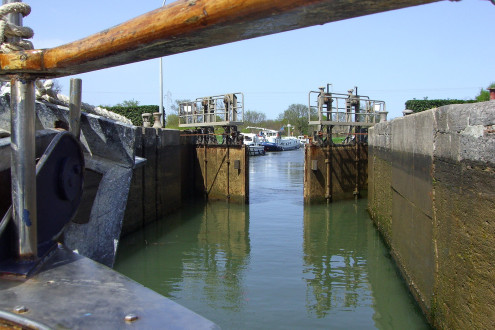
Canal de Midi
Agde - Etang de Thau Canal de Midi whc.unesco.org/en/list/770
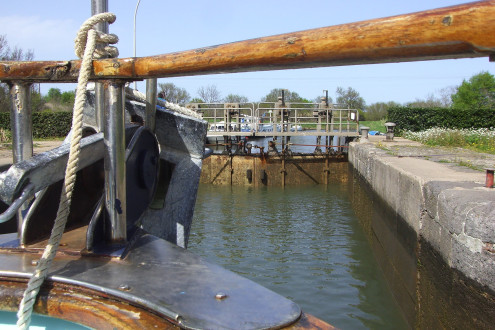
Canal de Midi
Agde - Etang de Thau Canal de Midi whc.unesco.org/en/list/770
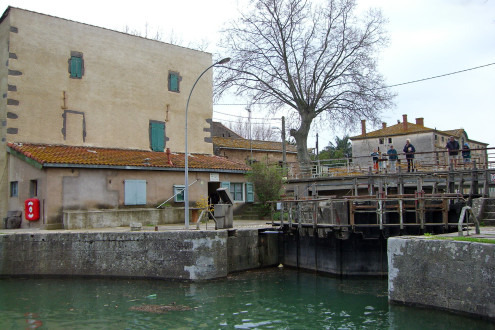
Agde
Canal de Midi, écluse ronde whc.unesco.org/en/list/770
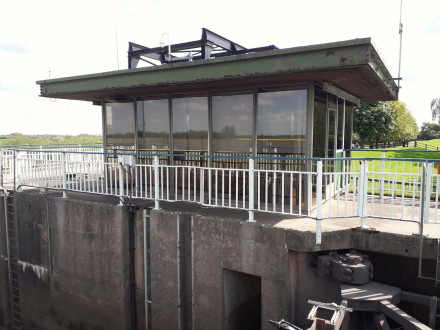
Barnby Barrage and Lock River Derwent Yorkshire
32887041437_80cd84450b_k
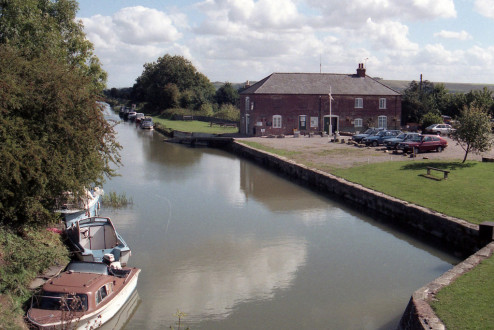
Kennet & Avon Canal, Pewsey.
Pewsey, Wiltshire. All photographic images are the exclusive property of Paddy Ballard. The photographs are for web browser viewing only and may not be reproduced, copied, stored, downloaded or altered in any way without prior permission.
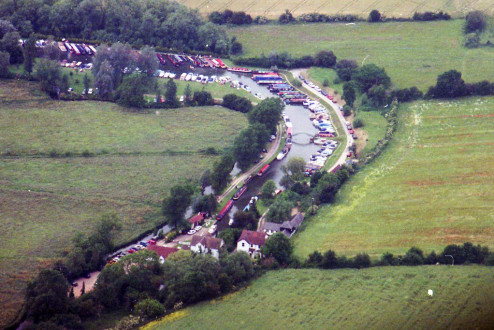
Gaston Green Lock.
River Stort Navigation, Gaston Green, Essex, as seen from G-AIYR DH.89A Dragon Rapide of Classic Wings. All photographic images are the exclusive property of Paddy Ballard. The photographs are for web browser viewing only and may not be reproduced, copied, stored, downloaded or altered in any way without prior permission.
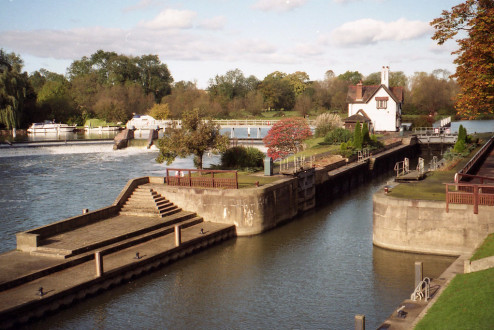
Goring Lock
River Thames, Goring, Oxfordshire. All photographic images are the exclusive property of Paddy Ballard. The photographs are for web browser viewing only and may not be reproduced, copied, stored, downloaded or altered in any way without prior permission.
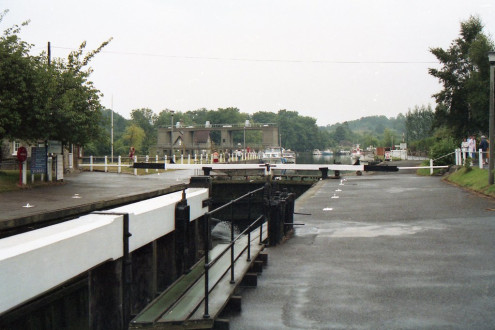
Allington Lock.
River Medway, Allington, Kent. All photographic images are the exclusive property of Paddy Ballard. The photographs are for web browser viewing only and may not be reproduced, copied, stored, downloaded or altered in any way without prior permission.
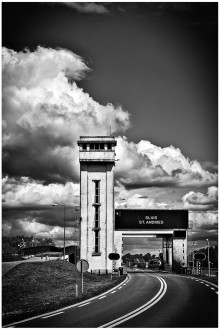
Sluis St. Andries
nl.wikipedia.org/wiki/St._Andries_(sluis)
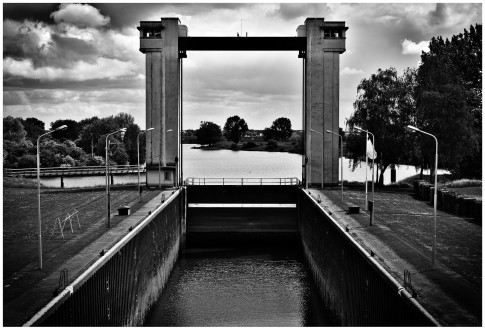
Framed
nl.wikipedia.org/wiki/St._Andries_(sluis)
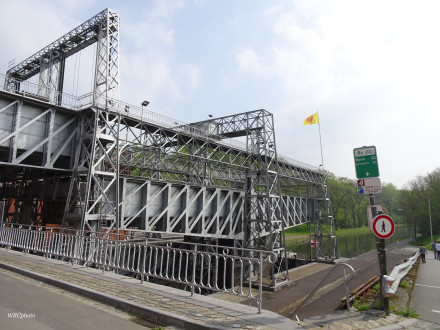
L'écluse de Houdeng. Belgique.
Ascenseur hydraulique pour bateaux sur le canal historique du Centre.
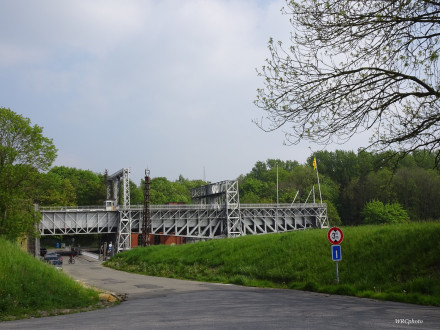
L'écluse de Houdeng. Belgique.
Ascenseur hydraulique pour bateaux sur le canal historique du Centre.
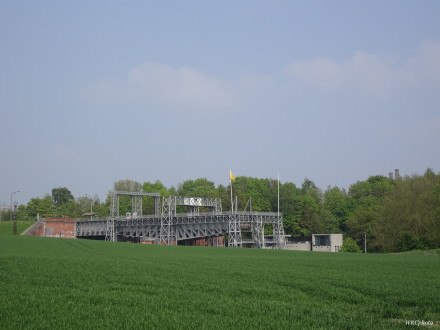
L'écluse de Houdeng. Belgique.
Ascenseur hydraulique pour bateaux sur le canal historique du Centre.
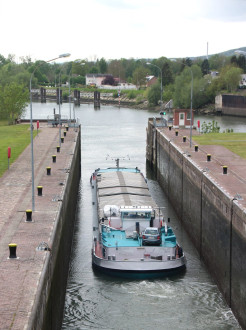
Amfreville-sous-les-Monts - Passage de l'écluse sur la Seine
47747926441_5cca60b081_k
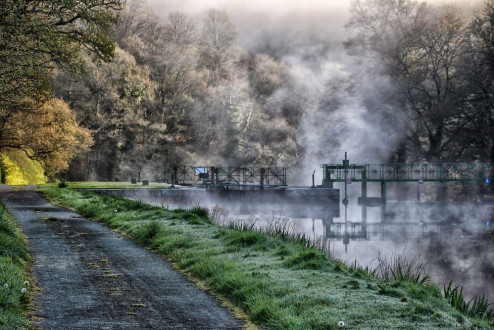
Mystic sluiceway
Le chemin de halage, canal de Nantes à Brest
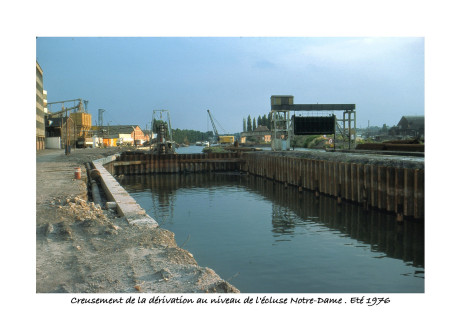
D'« antiques » photographies de l'Escaut
L'escaut canalisé à Valenciennes dans les années 70 . Diapositive numérisée . Valenciennes, Hainaut, Nord, France . Photographie J-P Leroy, tous droits réservés .
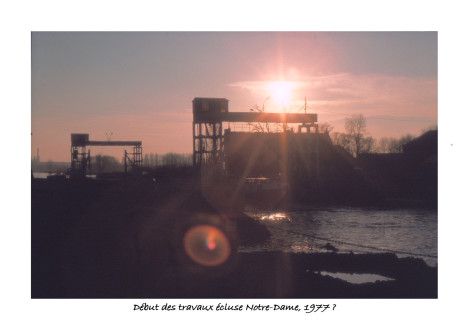
D'« antiques » photographies de l'Escaut
L'escaut canalisé à Valenciennes dans les années 70 . Diapositive numérisée . Valenciennes, Hainaut, Nord, France . Photographie J-P Leroy, tous droits réservés .
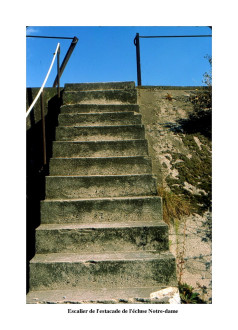
D'« antiques » photographies de l'Escaut
L'escaut canalisé à Valenciennes dans les années 70 . Escalier de l'estacade de l'écluse Notre-Dame . Diapositive numérisée . Valenciennes, Hainaut, Nord, France . Photographie J-P Leroy, tous droits réservés .
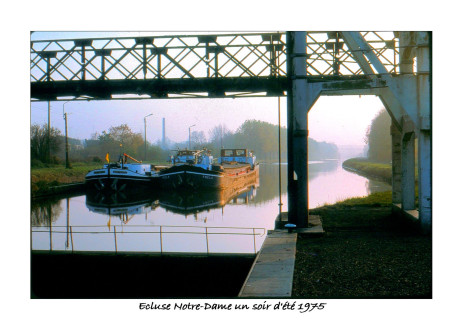
D'« antiques » photographies de l'Escaut
L'escaut canalisé à Valenciennes dans les années 70 . Diapositive numérisée . Valenciennes, Hainaut, Nord, France . Photographie J-P Leroy, tous droits réservés .
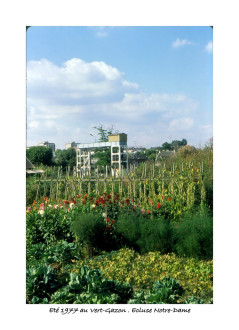
D'« antiques » photographies de l'Escaut
L'escaut canalisé à Valenciennes dans les années 70 . Eté au Vert-Gazon sur fond d'écluse Notre-Dame . Diapositive numérisée . Valenciennes, Hainaut, Nord, France . Photographie J-P Leroy, tous droits réservés .
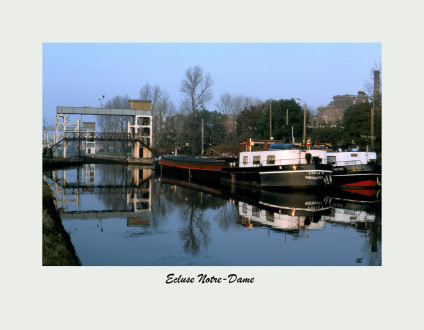
D'« antiques » photographies de l'Escaut
L'escaut canalisé à Valenciennes dans les années 70 . Novembre 1975 au Vert Gazon . Diapositive numérisée . Valenciennes, Hainaut, Nord, France . Photographie J-P Leroy, tous droits réservés .
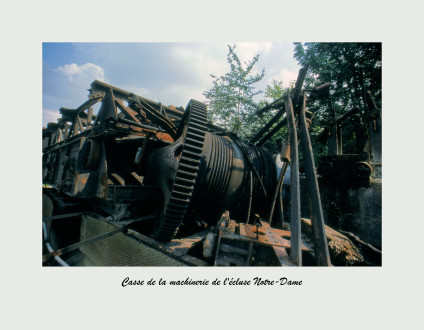
D'« antiques » photographies de l'Escaut
L'escaut canalisé à Valenciennes dans les années 70 . Une vision douloureuse … Je l'aimais bien moi cette écluse si malcomode . Diapositive numérisée . Valenciennes, Hainaut, Nord, France . Photographie J-P Leroy, tous droits réservés .
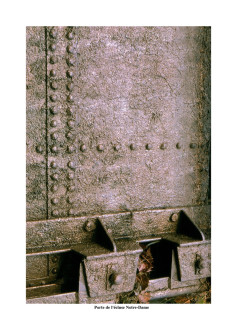
D'« antiques » photographies de l'Escaut
L'escaut canalisé à Valenciennes dans les années 70 . Porte de l'écluse Notre-Dame . Les portes étaient levantes et non batantes . Les péniches circulant à vide étaient très hautes . le marinier devait rabattre les parois de la timonerie pour passer sous les portes . Il ne pouvait alors éviter une douche d'eau sale ( très ++ ) et grasse . Diapositive numérisée . Valenciennes, Hainaut, Nord, France . Photographie J-P Leroy, tous droits réservés .
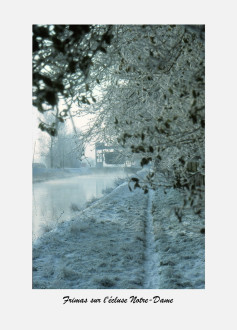
D'« antiques » photographies de l'Escaut
L'escaut canalisé à Valenciennes dans les années 70 . Vue prise de dessous la brasserie Malplaquet . Diapositive numérisée . Valenciennes, Hainaut, Nord, France . Photographie J-P Leroy, tous droits réservés .
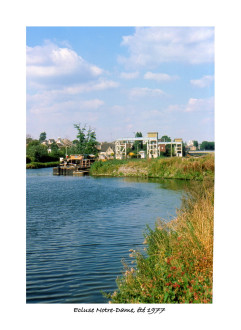
D'« antiques » photographies de l'Escaut
L'escaut canalisé à Valenciennes dans les années 70 . Diapositive numérisée . Valenciennes, Hainaut, Nord, France . Photographie J-P Leroy, tous droits réservés .
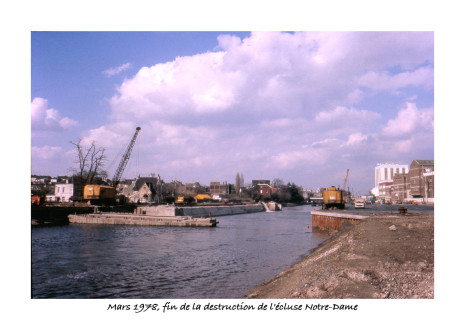
D'« antiques » photographies de l'Escaut
L'escaut canalisé à Valenciennes dans les années 70 . Diapositive numérisée . Valenciennes, Hainaut, Nord, France . Photographie J-P Leroy, tous droits réservés .
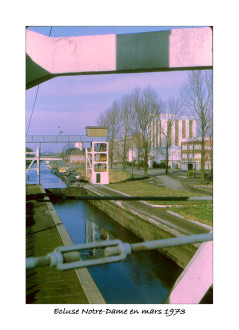
D'« antiques » photographies de l'Escaut
L'escaut canalisé à Valenciennes dans les années 70 . Diapositive numérisée . Valenciennes, Hainaut, Nord, France . Photographie J-P Leroy, tous droits réservés .
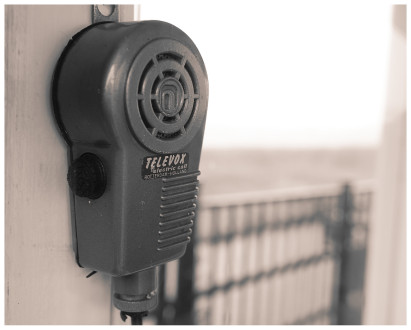
Televox
Old microfone in the lock between Haringvliet and Middelharnis
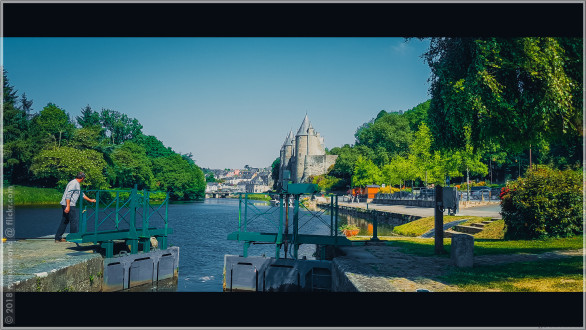
Hausbooturlaub 2018-Glénac/Bretagne, Josselin
Josselin, Josselin/Bretagne Frankreich
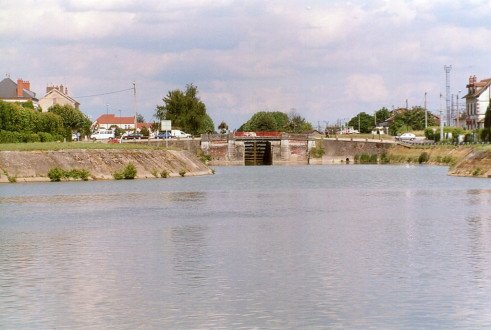
Ecluse Migennes, Migennes.
Entrance lock to the Canal de Bourgogne, Bourgogne Franche Comte, France. All photographic images are the exclusive property of Paddy Ballard. The photographs are for web browser viewing only and may not be reproduced, copied, stored, downloaded or altered in any way without prior permission.
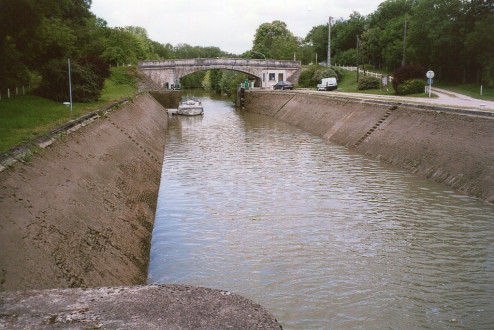
Ecluse St. Aubin 3, R. Yonne.
Sloping side ecluse at St. Aubin -s-Yonne, Yonne, France. All photographic images are the exclusive property of Paddy Ballard. The photographs are for web browser viewing only and may not be reproduced, copied, stored, downloaded or altered in any way without prior permission.
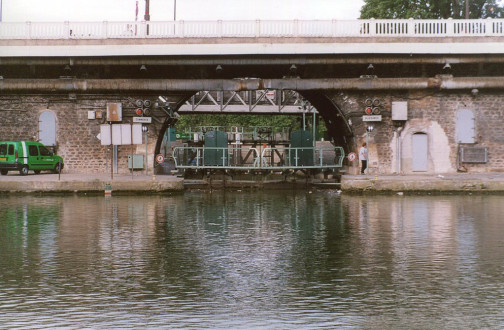
Arsenal Marina, Paris.
Entrance lock from the R. Seine into the Arsenal Marina, Quai Henri IV, Paris. All photographic images are the exclusive property of Paddy Ballard. The photographs are for web browser viewing only and may not be reproduced, copied, stored, downloaded or altered in any way without prior permission.
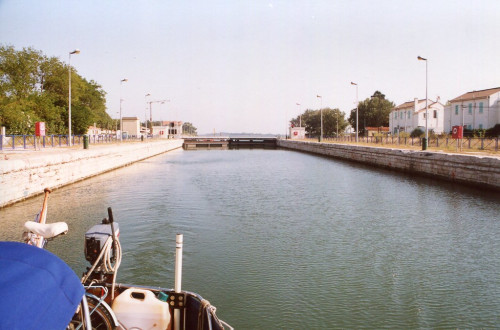
Ecluse Port St. Louis du Rhone.
Wide lock at Port St. Louis, Bouches du Rhone, Provence-Alpes-Cotes d` Azur". France. The last lock on our journey from Benfleet, Essex, UK to Mahon, Minorca, Spain. All photographic images are the exclusive property of Paddy Ballard. The photographs are for web browser viewing only and may not be reproduced, copied, stored, downloaded or altered in any way without prior permission.
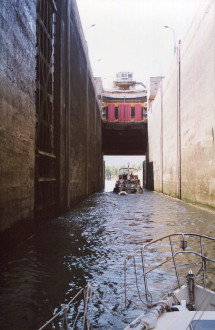
Ecluse Chateauneuf, R. Rhone.
On the River Rhone, Auvergne-Rhone-Alpes, France. All photographic images are the exclusive property of Paddy Ballard. The photographs are for web browser viewing only and may not be reproduced, copied, stored, downloaded or altered in any way without prior permission.
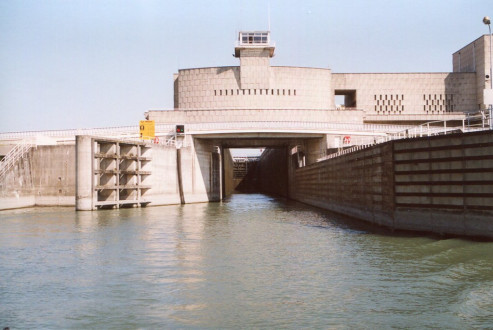
Ecluse Beauchastel, R. Rhone.
On the River Rhone near Ardeche, Auvergne-Rhone-Alpes, France. All photographic images are the exclusive property of Paddy Ballard. The photographs are for web browser viewing only and may not be reproduced, copied, stored, downloaded or altered in any way without prior permission.
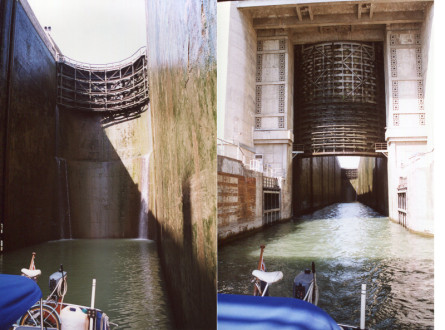
Ecluse Bollene, R. Rhone.
23 mtr (75 ft) deep lock on the River Rhone near Avignon in Provenec-Alpes-Cote d`Azur, France. All photographic images are the exclusive property of Paddy Ballard. The photographs are for web browser viewing only and may not be reproduced, copied, stored, downloaded or altered in any way without prior permission.
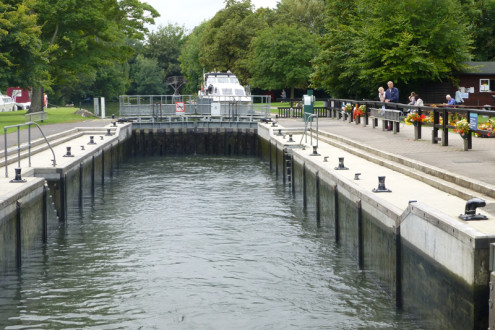
Hurley Lock.
Hurley, Berkshire. All photographic images are the exclusive property of Paddy Ballard. The photographs are for web browser viewing only and may not be reproduced, copied, stored, downloaded or altered in any way without prior permission.
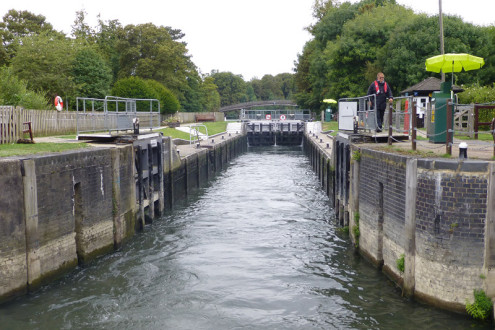
Temple Lock
Near Aston, Buckinghamshire. All photographic images are the exclusive property of Paddy Ballard. The photographs are for web browser viewing only and may not be reproduced, copied, stored, downloaded or altered in any way without prior permission.
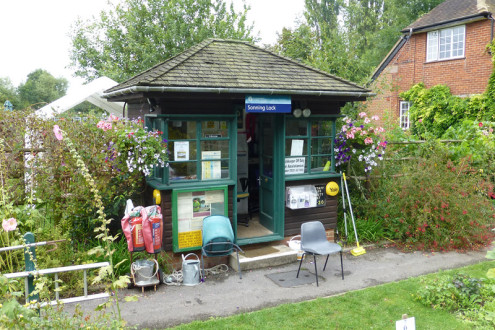
Sonning Lock.
Sonning, Berkshire. All photographic images are the exclusive property of Paddy Ballard. The photographs are for web browser viewing only and may not be reproduced, copied, stored, downloaded or altered in any way without prior permission.
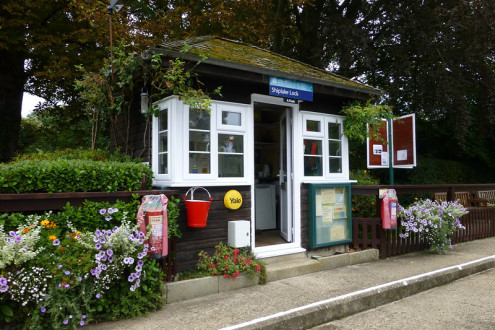
Shiplake Lock.
Little Shiplake, Oxfordshire. All photographic images are the exclusive property of Paddy Ballard. The photographs are for web browser viewing only and may not be reproduced, copied, stored, downloaded or altered in any way without prior permission.
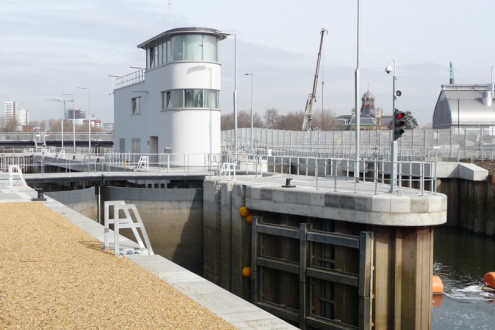
Three Mills Lock, Bow, London E3.
Prescott Channel, Mead Mills, River Lea, Bow, London E3. All photographic images are the exclusive property of Paddy Ballard. The photographs are for web browser viewing only and may not be reproduced, copied, stored, downloaded or altered in any way without prior permission.
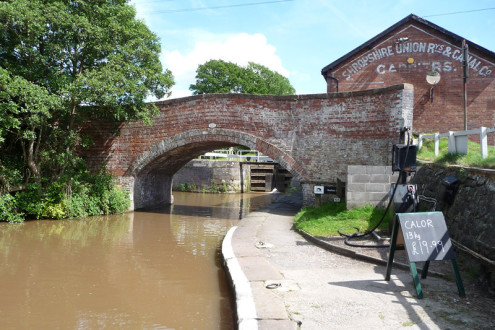
Bunbury Lock, Cheshire.
Shropshire Union Canal, Bunbury, Cheshire. All photographic images are the exclusive property of Paddy Ballard. The photographs are for web browser viewing only and may not be reproduced, copied, stored, downloaded or altered in any way without prior permission.
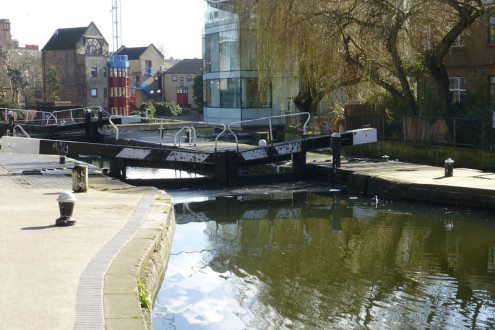
City Road Lock, London
Regent`s Canal, Danbury Street, London N1. All photographic images are the exclusive property of Paddy Ballard. The photographs are for web browser viewing only and may not be reproduced, copied, stored, downloaded or altered in any way without prior permission.
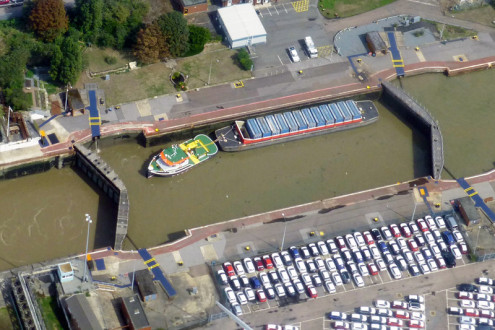
Tilbury Dock Gates, Tilbury.
Tilbury, Essex. Photographed from G-BMXC, Cessna 152 at 1200ft. All photographic images are the exclusive property of Paddy Ballard. The photographs are for web browser viewing only and may not be reproduced, copied, stored, downloaded or altered in any way without prior permission.
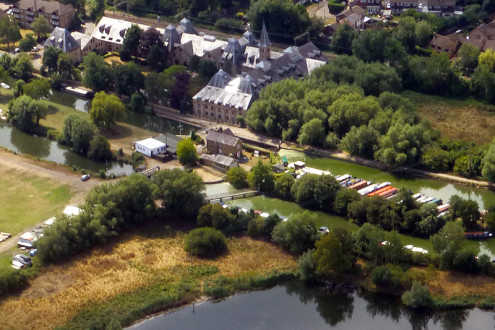
Stanstead Lock & Swing Bridge, Stanstead Abbots.
River Lea , Stanstead Abbots, Hertfordshire. Photographed from G-BMXC, Cessna 152 at 1200ft. All photographic images are the exclusive property of Paddy Ballard. The photographs are for web browser viewing only and may not be reproduced, copied, stored, downloaded or altered in any way without prior permission.
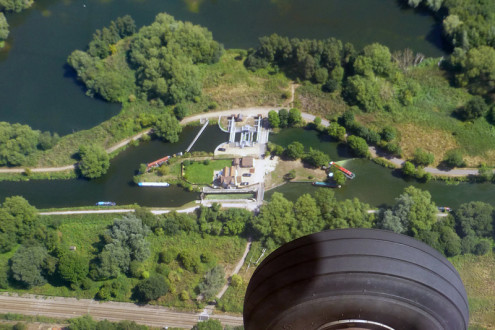
Hardmead Lock, Ware
River Lea, Ware, Hertfordshire. Photographed from G-BMXC, Cessna 152 at 1200ft. All photographic images are the exclusive property of Paddy Ballard. The photographs are for web browser viewing only and may not be reproduced, copied, stored, downloaded or altered in any way without prior permission.
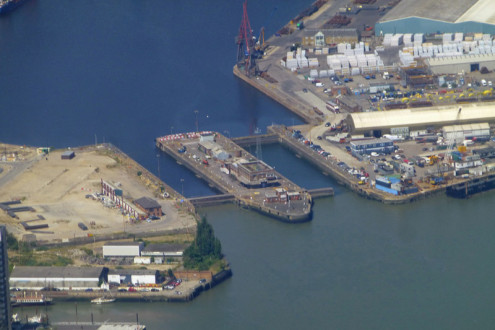
Gillingham Harbour Entrance, Kent.
Gillingham Harbour, Bull Point, River Medway, Kent. All photographic images are the exclusive property of Paddy Ballard. The photographs are for web browser viewing only and may not be reproduced, copied, stored, downloaded or altered in any way without prior permission.
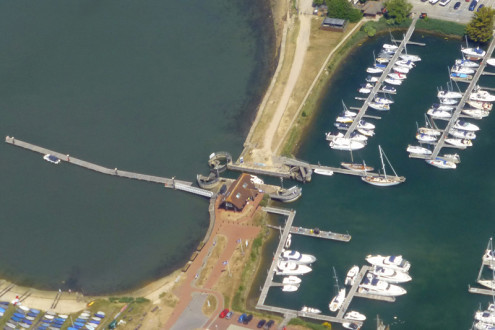
Chichester Marina, Chichester Harbour.
Chichester Harbour, W, Sussex. All photographic images are the exclusive property of Paddy Ballard. The photographs are for web browser viewing only and may not be reproduced, copied, stored, downloaded or altered in any way without prior permission.
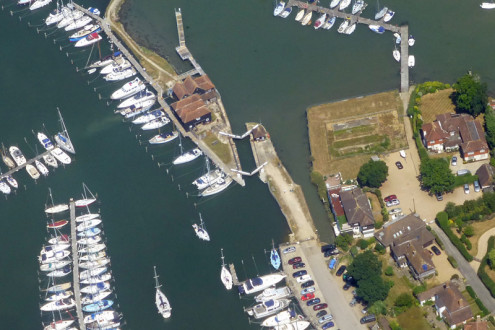
Birdham Pool, Chichester Harbour.
Chichester Harbour, W, Sussex. All photographic images are the exclusive property of Paddy Ballard. The photographs are for web browser viewing only and may not be reproduced, copied, stored, downloaded or altered in any way without prior permission.
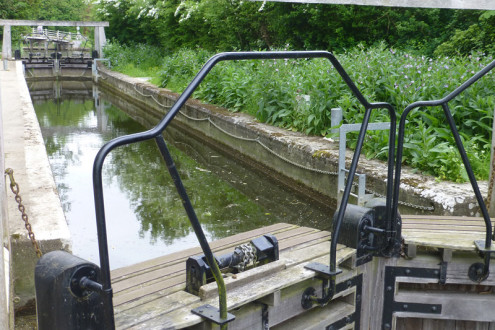
Flatford Lock, Flatford.
Flatford Mill, Flatford, E. Bergholt, Suffolk. Gates were replaced in 2014 by Martin Child Ltd for the River Stour Trust, Veolia Environmental Trust, Environmental Agency and Essex Environmental Trust. All photographic images are the exclusive property of Paddy Ballard. The photographs are for web browser viewing only and may not be reproduced, copied, stored, downloaded or altered in any way without prior permission.
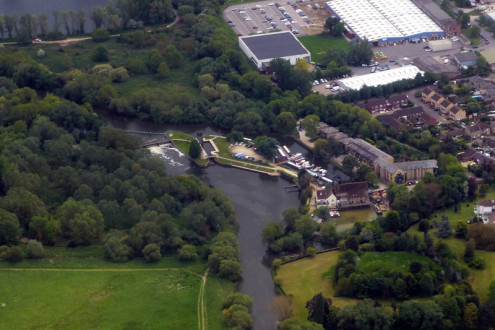
Eaton Socon Lock
Great Ouse at St. Neots. Cambridgeshire. Photographed from Cessna 152, G-BMXC. All photographic images are the exclusive property of Paddy Ballard. The photographs are for web browser viewing only and may not be reproduced, copied, stored, downloaded or altered in any way without prior permission.
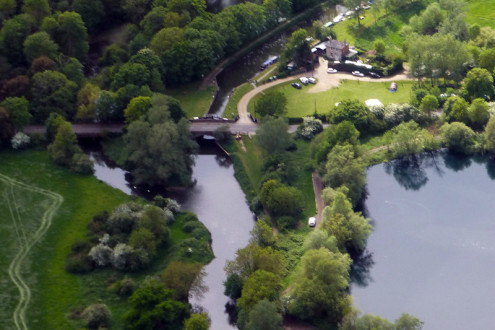
Ulting Lock.
Chelmer & Blackwater Navigation, Hoemill Bridge, Ulting, Essex. Photographed from Cessna 152, G-BMXC. All photographic images are the exclusive property of Paddy Ballard. The photographs are for web browser viewing only and may not be reproduced, copied, stored, downloaded or altered in any way without prior permission.
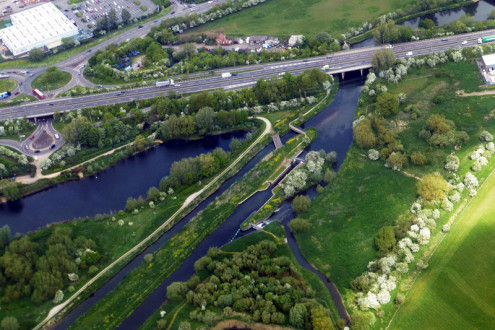
Wellingborough Upper Lock.
River Nene Navigation, Little Irchester, Wellingborough, Northamptonshire. Photographed from Cessna 152, G-BMXC. All photographic images are the exclusive property of Paddy Ballard. The photographs are for web browser viewing only and may not be reproduced, copied, stored, downloaded or altered in any way without prior permission.
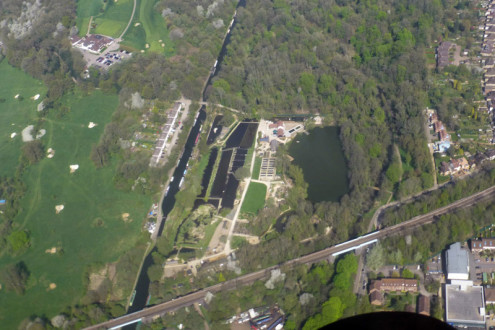
Cassiobury Lock, Watford
Cassiobury Park, Grand Union Canal, Watford, Hertfordshire. Photo taken from Cessna 152, G-BMXC of Seawing Flying Club. All photographic images are the exclusive property of Paddy Ballard. The photographs are for web browser viewing only and may not be reproduced, copied, stored, downloaded or altered in any way without prior permission.
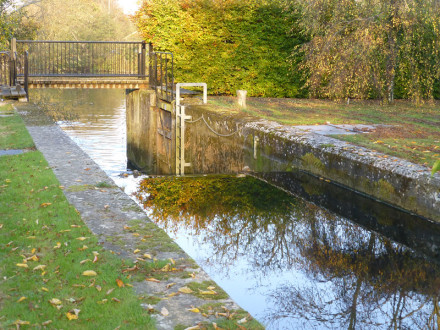
Dedham disused lock.
Disused lock on the River Stour on the border between Essex and Suffolk. The lock now has a weir built in the middle between the two sets of gates. All photographic images are the exclusive property of Paddy Ballard. The photographs are for web browser viewing only and may not be reproduced, copied, stored, downloaded or altered in any way without prior permission.
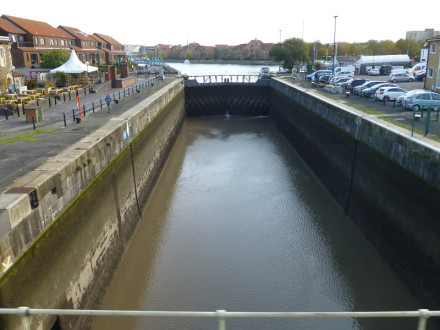
Bristol Lock.
The lock between Bristol Cumberland Basin and Bristol Floating Harbour. All photographic images are the exclusive property of Paddy Ballard. The photographs are for web browser viewing only and may not be reproduced, copied, stored, downloaded or altered in any way without prior permission.
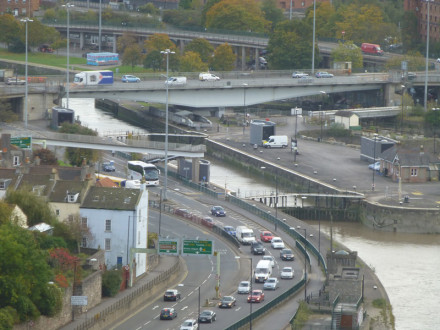
Bristol Lock.
Lock between River Severn and the Cumberland Basin. Brunel`s original swing bridge can be seen below the new swing bridge. All photographic images are the exclusive property of Paddy Ballard. The photographs are for web browser viewing only and may not be reproduced, copied, stored, downloaded or altered in any way without prior permission.
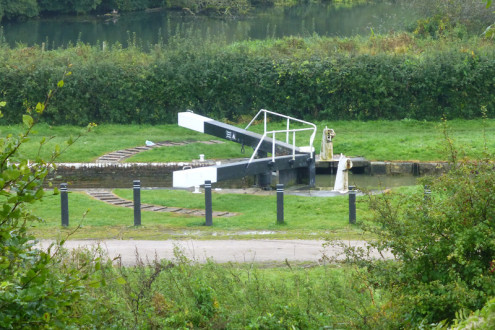
Lock No.60, Kennet & Avon, Wiltshire.
At Crofton on the Kennet & Avon Canal, Wiltshire. All photographic images are the exclusive property of Paddy Ballard. The photographs are for web browser viewing only and may not be reproduced, copied, stored, downloaded or altered in any way without prior permission.
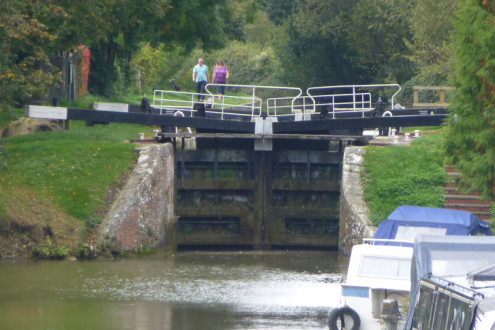
Hungerford Lock.
Hungerford, Berkshire. All photographic images are the exclusive property of Paddy Ballard. The photographs are for web browser viewing only and may not be reproduced, copied, stored, downloaded or altered in any way without prior permission.
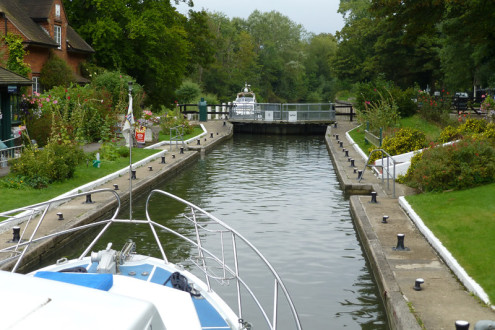
Sonning Lock, Sonning
Sonning, Berkshire All photographic images are the exclusive property of Paddy Ballard. The photographs are for web browser viewing only and may not be reproduced, copied, stored, downloaded or altered in any way without prior permission.
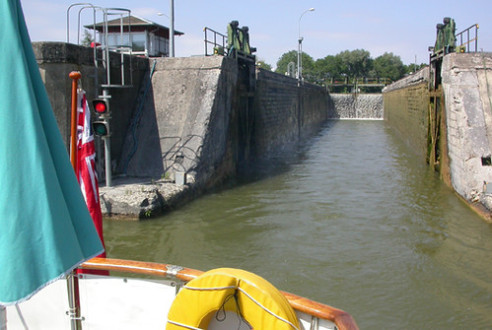
Ecluse de Voyaux, Tergnier.
Canal de St. Quentin, Tergnier, Aisne, N. France. All photographic images are the exclusive property of Paddy Ballard. The photographs are for web browser viewing only and may not be reproduced, copied, stored, downloaded or altered in any way without prior permission.
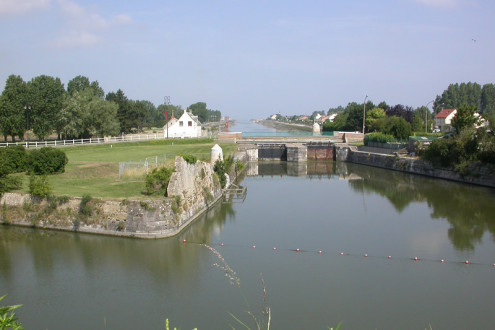
Tidal Gates at Gravelines.
Channel le L`Aa, Gravelines, Nord Pas de Calais, France All photographic images are the exclusive property of Paddy Ballard. The photographs are for web browser viewing only and may not be reproduced, copied, stored, downloaded or altered in any way without prior permission.
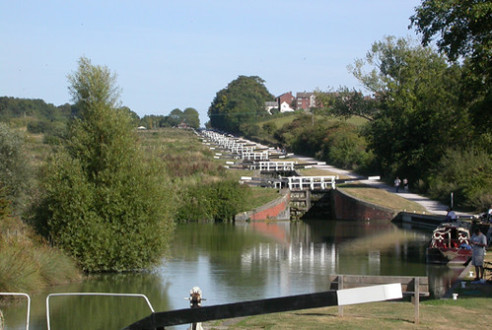
Caen Hill Locks, Devizes.
Kennet & Avon Canal, Devizes, Wiltshire. All photographic images are the exclusive property of Paddy Ballard. The photographs are for web browser viewing only and may not be reproduced, copied, stored, downloaded or altered in any way without prior permission.
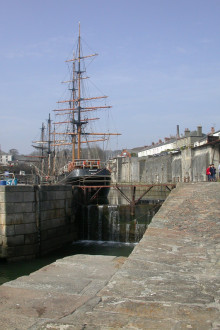
Charlestown Harbour, Charleston.
Charlestown, Cornwall. Three masted barque Kaskelot. All photographic images are the exclusive property of Paddy Ballard. The photographs are for web browser viewing only and may not be reproduced, copied, stored, downloaded or altered in any way without prior permission.
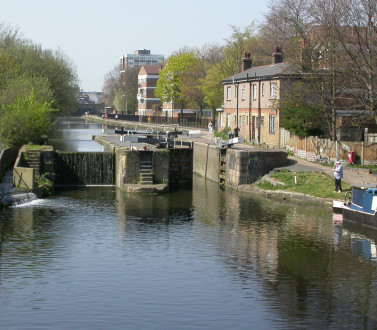
Regents Canal, London E8.
Regents Row, London E8. All photographic images are the exclusive property of Paddy Ballard. The photographs are for web browser viewing only and may not be reproduced, copied, stored, downloaded or altered in any way without prior permission.
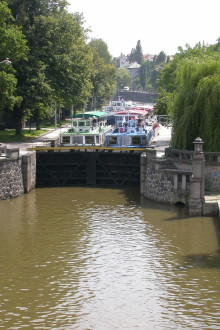
Busy Lock at Prague.
Lock at Janackovo nabrezi, Prague, Czech Republic. All photographic images are the exclusive property of Paddy Ballard. The photographs are for web browser viewing only and may not be reproduced, copied, stored, downloaded or altered in any way without prior permission.
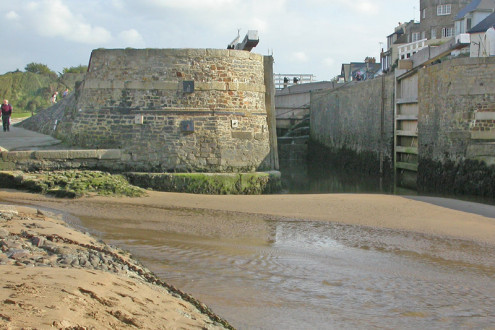
Lock Gates, Bude.
Bude, Cornwall. Entrance to the now disused Bude Canal. All photographic images are the exclusive property of Paddy Ballard. The photographs are for web browser viewing only and may not be reproduced, copied, stored, downloaded or altered in any way without prior permission.
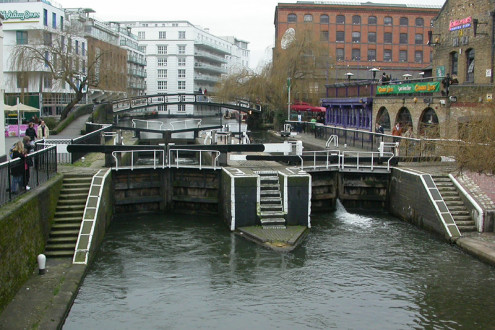
Camden Lock, London NW1.
Camden, London NW1. All photographic images are the exclusive property of Paddy Ballard. The photographs are for web browser viewing only and may not be reproduced, copied, stored, downloaded or altered in any way without prior permission.
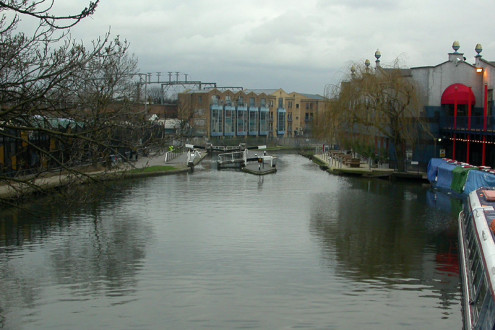
Lock No.4, London N1.
King`s Cross, London N1. All photographic images are the exclusive property of Paddy Ballard. The photographs are for web browser viewing only and may not be reproduced, copied, stored, downloaded or altered in any way without prior permission.
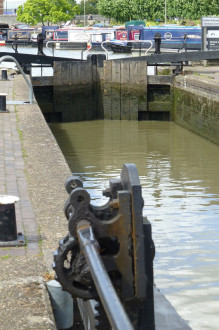
Stratford Canal Basin Lock, Stratford upon Avon
River Avon, Stratford-upon-Avon, Warwickshire. All photographic images are the exclusive property of Paddy Ballard. The photographs are for web browser viewing only and may not be reproduced, copied, stored, downloaded or altered in any way without prior permission.
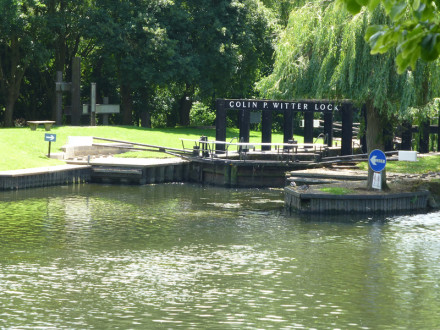
Colin P Witter lock, Stratford-upon-Avon.
River Avon, Stratford-upon-Avon, Warwickshire. All photographic images are the exclusive property of Paddy Ballard. The photographs are for web browser viewing only and may not be reproduced, copied, stored, downloaded or altered in any way without prior permission.
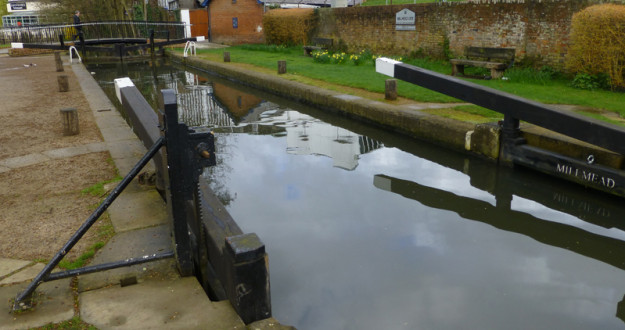
Millhead Lock, Guildford.
Millhead, Guildford, Surrey. The first lock on the Godalming Navigation, opened 1764 and managed by the National Trust" All images are the exclusive property of Paddy Ballard. The photographs are for web browser viewing only and may not be reproduced, copied, stored, downloaded or altered in any way without prior permission.
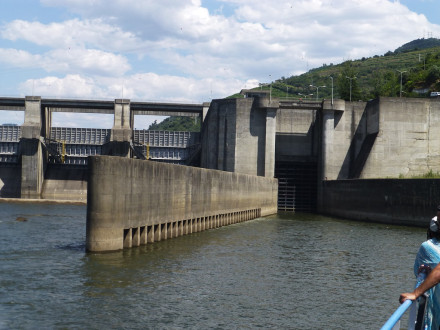
Lock at Regua, Portugal
On the River Douro at Regua, Portugal. 28 mtrs deep. All images are the exclusive property of Paddy Ballard. The photographs are for web browser viewing only and may not be reproduced, copied, stored, downloaded or altered in any way without prior permission.
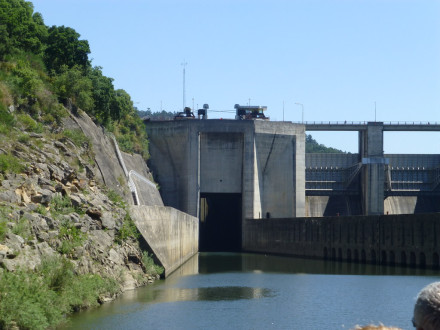
Lock at Carrapatelo, Portugal.
On the River Douro at Carrapatelo, Portugal. 35 mtrs deep. All images are the exclusive property of Paddy Ballard. The photographs are for web browser viewing only and may not be reproduced, copied, stored, downloaded or altered in any way without prior permission.
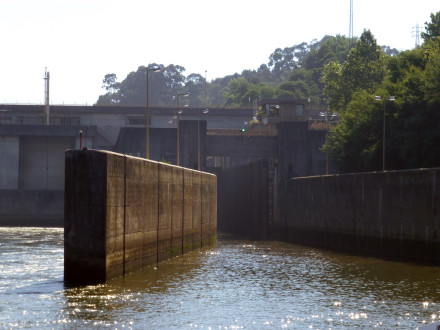
Lock at Crestuma-Lever, Portugal.
On the River Douro at Crestuma-Lever, Portugal. 14 mtrs deep. All images are the exclusive property of Paddy Ballard. The photographs are for web browser viewing only and may not be reproduced, copied, stored, downloaded or altered in any way without prior permission.

Grand Canal Docks, Dublin.
Three entrance locks at Ringsend, Dublin 2. All images are the exclusive property of Paddy Ballard. The photographs are for web browser viewing only and may not be reproduced, copied, stored, downloaded or altered in any way without prior permission.
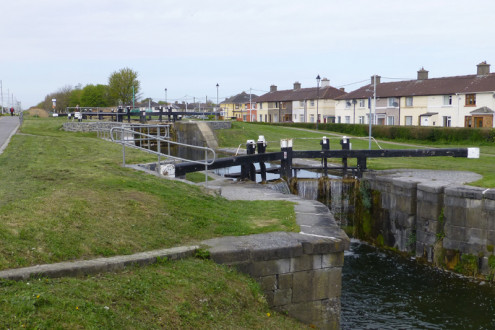
Suir Road Lock, Dublin
Lock No.1, Suir Road, Kilmainham, Dublin 8. This lock has two chambers. Beside the LUAS tramstop at Suir Road. All images are the exclusive property of Paddy Ballard. The photographs are for web browser viewing only and may not be reproduced, copied, stored, downloaded or altered in any way without prior permission.
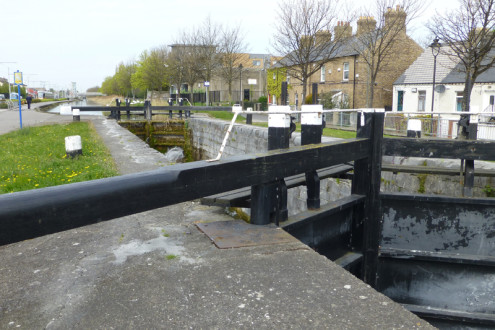
Goldenbridge Lock, Dublin.
Lock No.2, Davitt Road, Goldenbridge, Inchicore, Dublin 8. Beside the LUAS tramstop at Goldenbridge. All images are the exclusive property of Paddy Ballard. The photographs are for web browser viewing only and may not be reproduced, copied, stored, downloaded or altered in any way without prior permission.
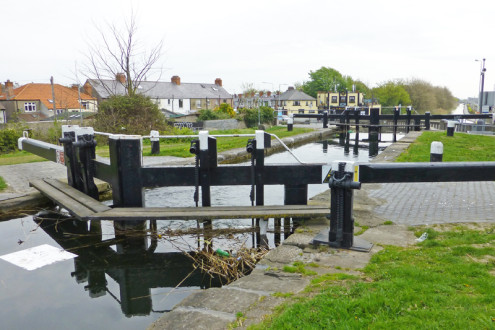
Blackhorse Lock, Dublin.
Lock No.3, Tyrconnell Road, Inchicore, Dublin 8. This lock has two chambers. Beside the LUAS tramstop at Blackhorse. All images are the exclusive property of Paddy Ballard. The photographs are for web browser viewing only and may not be reproduced, copied, stored, downloaded or altered in any way without prior permission.
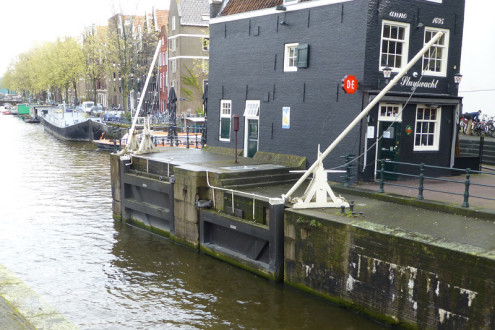
Amsterdam lock.
One of the sets of locks that protect the City of Amsterdam at Oude Schans. All images are the exclusive property of Paddy Ballard. The photographs are for web browser viewing only and may not be reproduced, copied, stored, downloaded or altered in any way without prior permission.
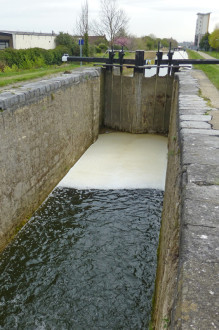
Lock No.4, Grand Canal, Dublin.
Lock No.4 at Inchicore, Dublin 8. All images are the exclusive property of Paddy Ballard. The photographs are for web browser viewing only and may not be reproduced, copied, stored, downloaded or altered in any way without prior permission.
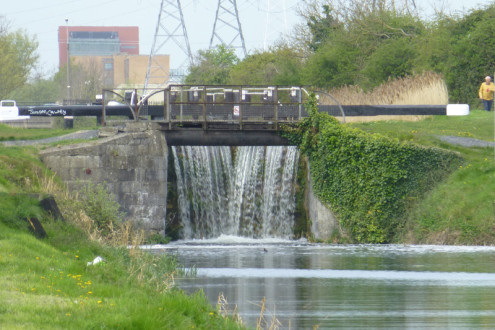
Lock No.5, Grand Canal, Dublin.
Lock No.5, Inchicore, Dublin 8. All images are the exclusive property of Paddy Ballard. The photographs are for web browser viewing only and may not be reproduced, copied, stored, downloaded or altered in any way without prior permission.
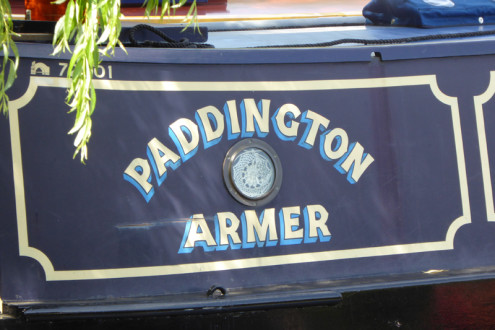
Narrow Boat, Bradford-on-Avon.
Paddington Armer, on the Kennet & Avon at Bradford-on-Avon. All images are the exclusive property of Paddy Ballard. The photographs are for web browser viewing only and may not be reproduced, copied, stored, downloaded or altered in any way without prior permission.
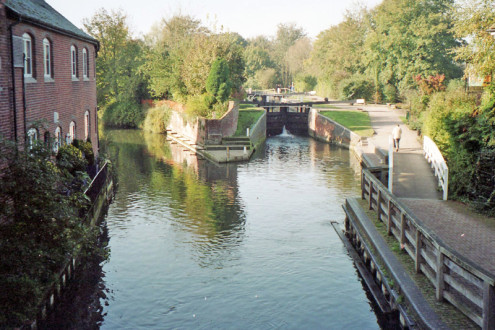
Kennet & Avon Canal, Newbury.
Newbury Lock, Kennet & Avon Canal, Newbury, Berkshire. 03.11.2001. All images are the exclusive property of Paddy Ballard. The photographs are for web browser viewing only and may not be reproduced, copied, stored, downloaded or altered in any way without permission.
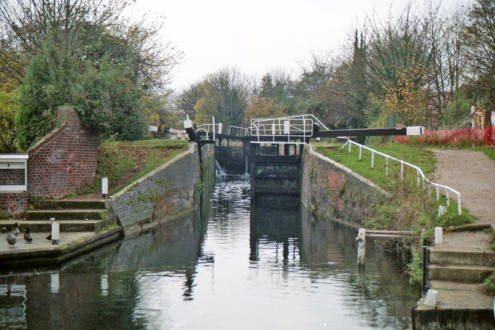
Newbury Lock, Newbury
Newbury Lock, Kennet & Avon Canal, Newbury, Berkshire. Nov. 1991. All images are the exclusive property of Paddy Ballard. The photographs are for web browser viewing only and may not be reproduced, copied, stored, downloaded or altered in any way without permission.
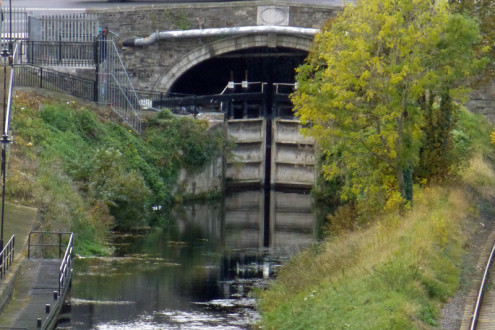
Lock, Royal Canal, Dublin.
Viewed from the roof of Croke Park, the lock at Drumcondra Street on the Royal Canal, Dublin, Eire. All images are the exclusive property of Paddy Ballard. The photographs are for web browser viewing only and may not be reproduced, copied, stored, downloaded or altered in any way without permission.
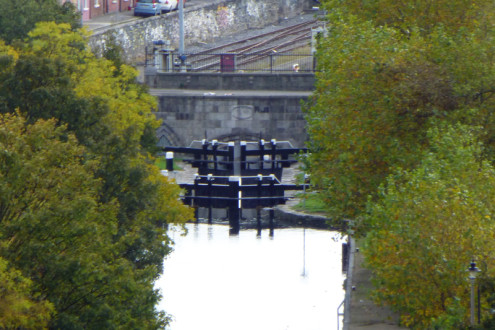
Lock, Royal Canal, Dublin.
Viewed from the roof of Croke Park, the lock on the Royal Canal at North Strand Road, Dublin, Eire. All images are the exclusive property of Paddy Ballard. The photographs are for web browser viewing only and may not be reproduced, copied, stored, downloaded or altered in any way without permission.
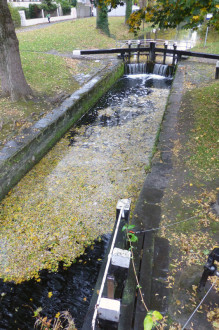
Grand Canal, Dublin
Lock No.1 on the Grand Canal at Great Canal Street Upper, Dublin, Eire. All images are the exclusive property of Paddy Ballard. The photographs are for web browser viewing only and may not be reproduced, copied, stored, downloaded or altered in any way without permission.
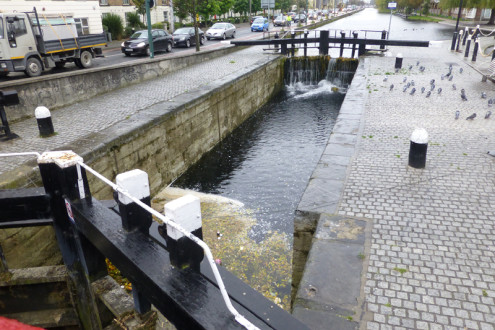
Grand Canal, Dublin
Lock No.7 on the Grand Canal at Richmond Road, Dublin, Eire. All images are the exclusive property of Paddy Ballard. The photographs are for web browser viewing only and may not be reproduced, copied, stored, downloaded or altered in any way without permission.
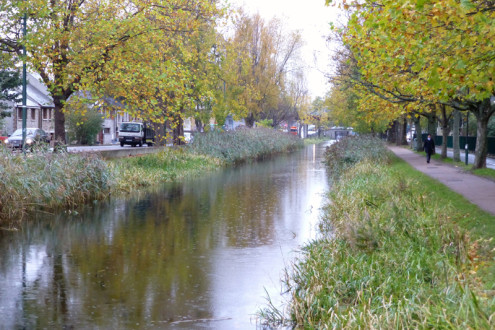
Grand Canal, Dublin
Grand Canal between locks 5 & 6, Dublin, Eire. All images are the exclusive property of Paddy Ballard. The photographs are for web browser viewing only and may not be reproduced, copied, stored, downloaded or altered in any way without permission.
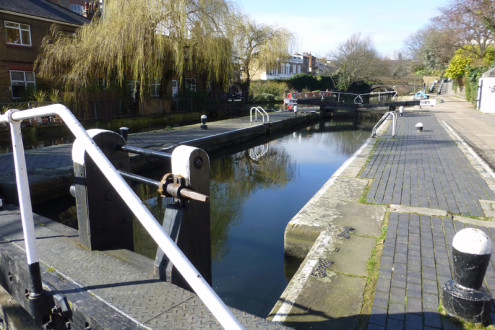
Regents Canal lock, London N.1
City Road Lock, Islington, London N.1 All images are the exclusive property of Paddy Ballard. The photographs are for web browser viewing only and may not be reproduced, copied, stored, downloaded or altered in any way without permission.
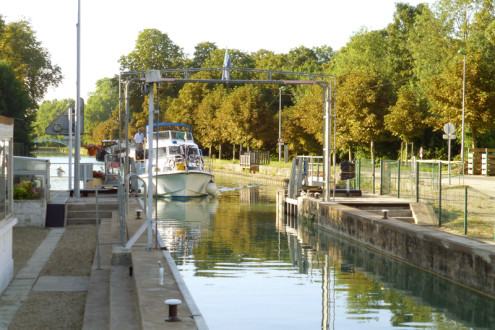
Chalons-s-Marne, Marne, France
Motor cruiser entering Ecluse No.9, Chalons-s-Marne on the Canal Lateral a la Marne, Marne, France. All images are the exclusive property of Paddy Ballard. The photographs are for web browser viewing only and may not be reproduced, copied, stored, downloaded or altered in any way without permission.
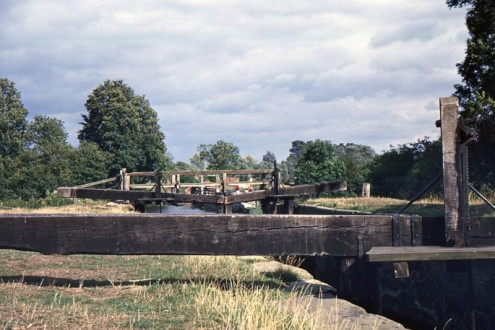
Beeleigh Locks, Maldon, Essex.
Beeleigh Lock on the Chelmer & Blackwater Navigation at Maldon, Essex. c.1960. All images are the exclusive property of Paddy Ballard. The photographs are for web browser viewing only and may not be reproduced, copied, stored, downloaded or altered in any way without permission.
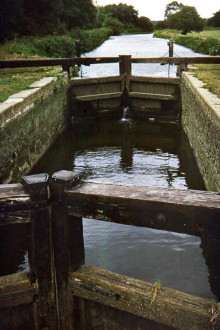
Beeleigh Locks, Maldon, Essex.
Beeleigh Lock on the Chelmer & Blackwater Navigation at Maldon, Essex. c.1960. All images are the exclusive property of Paddy Ballard. The photographs are for web browser viewing only and may not be reproduced, copied, stored, downloaded or altered in any way without permission.
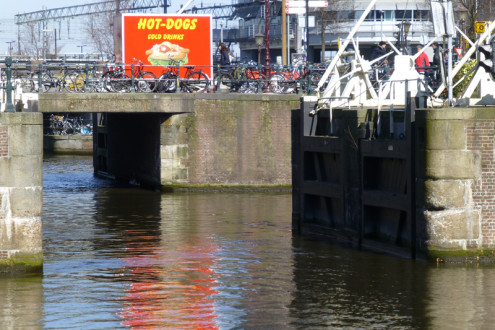
Old lock in Amsterdam
Lock at Singel, Amsterdam. One of the old locks that protect Amsterdam from flooding. All images are the exclusive property of Paddy Ballard. The photographs are for web browser viewing only and may not be reproduced, copied, stored, downloaded or altered in any way without permission.
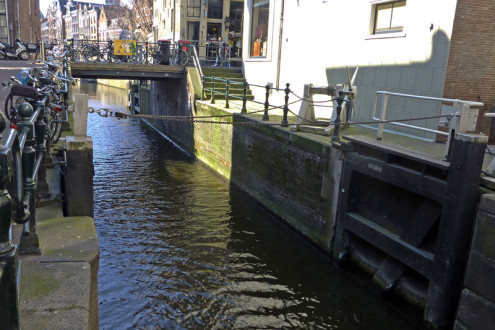
Old lock in Amsterdam
Lock at Oudezijds Voorburgwal, Amsterdam. One of the old locks that protect Amsterdam from flooding. All images are the exclusive property of Paddy Ballard. The photographs are for web browser viewing only and may not be reproduced, copied, stored, downloaded or altered in any way without permission.
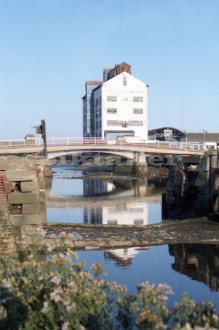
Battlesbridge, Essex
James & Geo. Matthews` grain store at Battlesbridge, Wickford, Essex. The building was demolished shortly after this photo was taken in Sept 1980. All images are the exclusive property of Paddy Ballard. The photographs are for web browser viewing only and may not be reproduced, copied, stored, downloaded or altered in any way without permission.
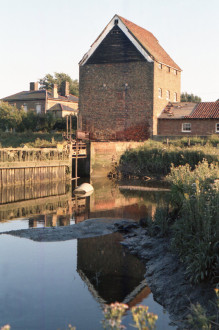
Battlesbridge Mill, Essex
Battlesbridge Mill, Wickford, Essex. Sept 1980 All images are the exclusive property of Paddy Ballard. The photographs are for web browser viewing only and may not be reproduced, copied, stored, downloaded or altered in any way without permission.
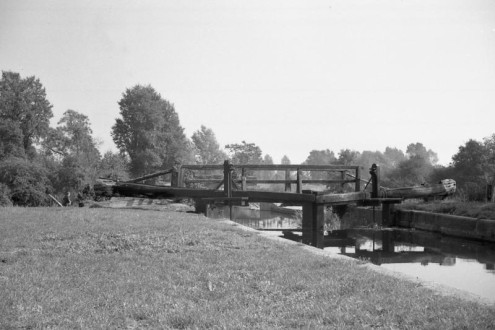
Chelmer, Blackwater Navigation, Maldon
Beeleigh Lock on the Chelmer Blackwater Navigation between Chelmsford and Maldon, Essex. 1962. All images are the exclusive property of Paddy Ballard. The photographs are for web browser viewing only and may not be reproduced, copied, stored, downloaded or altered in any way without permission.
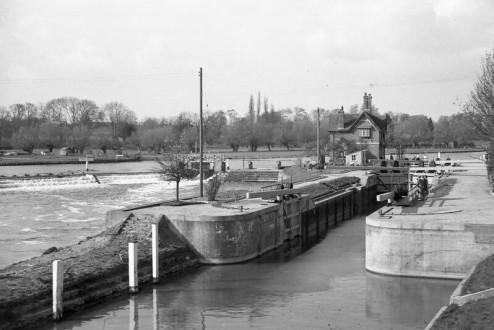
Goring Lock, Oxfordshire
Goring, Oxfordshire, in 1957. All images are the exclusive property of Paddy Ballard. The photographs are for web browser viewing only and may not be reproduced, copied, stored, downloaded or altered in any way without permission.
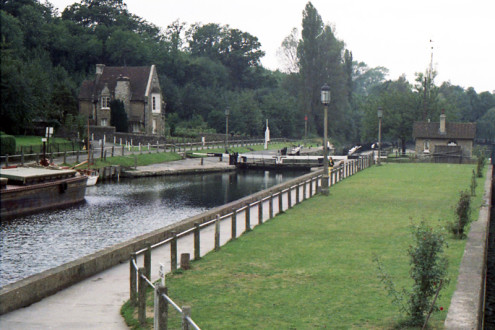
Allington Lock, Maidstone
Allington, Sandling, Maidstone, Kent, 1972. All images are the exclusive property of Paddy Ballard. The photographs are for web browser viewing only and may not be reproduced, copied, stored, downloaded or altered in any way without permission.
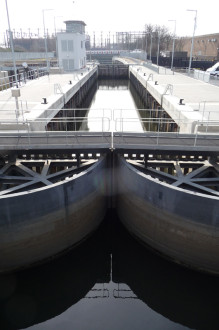
Three Mills Lock, Bromley-by-Bow, London E3.
Three Mills Lock, No.2012, in the Prescott Channel on the River Lea. All images are the exclusive property of Paddy Ballard. The photographs are for web browser viewing only and may not be reproduced, copied, stored, downloaded or altered in any way without permission.
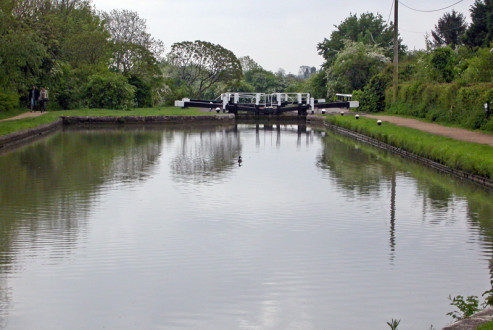
Stoke Bruerne, Lock 15., Northants.
Lock 15 at Stoke Bruerne, Towcester, Northants. All images are the exclusive property of Paddy Ballard. The photographs are for web browser viewing only and may not be reproduced, copied, stored, downloaded or altered in any way without permission.
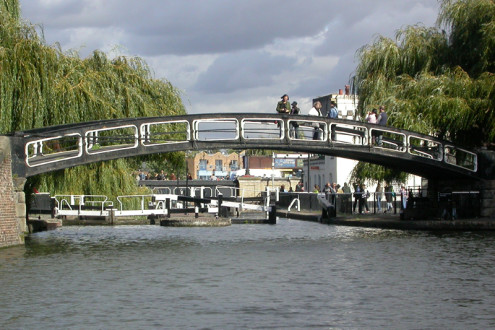
Camden Lock, London NW1
Camden Lock, Grand Union Canal, London NW1. All images are the exclusive property of Paddy Ballard. The photographs are for web browser viewing only and may not be reproduced, copied, stored, downloaded or altered in any way without permission.
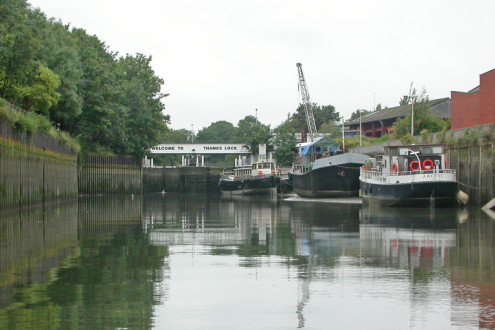
Thames Lock, Middlesex.
Thames Lock, Brentford, the entrance from the River Thames to the non-tidal River Brent. All images are the exclusive property of Paddy Ballard. The photographs are for web browser viewing only and may not be reproduced, copied, stored, downloaded or altered in any way without permission.
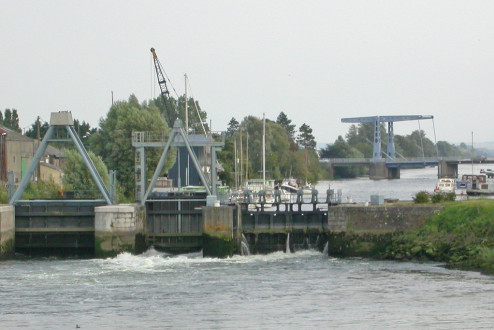
Sea Lock, St. Valery-s-Somme, Picardie, N. France
Lock gates at the entrance to the Canal du Somme from the Baie du Somme at St. Valery-s-Somme. All images are the exclusive property of Paddy Ballard. The photographs are for web browser viewing only and may not be reproduced, copied, stored, downloaded or altered in any way without permission.
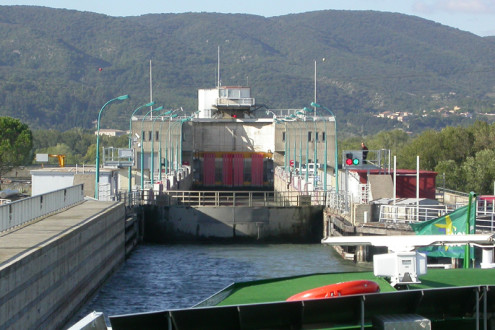
Lock at Chateauneuf du Rhone, Drome, France
Approaching the lock at Chateauneuf du Rhone, Drome, France. All images are the exclusive property of Paddy Ballard. The photographs are for web browser viewing only and may not be reproduced, copied, stored, downloaded or altered in any way without permission.
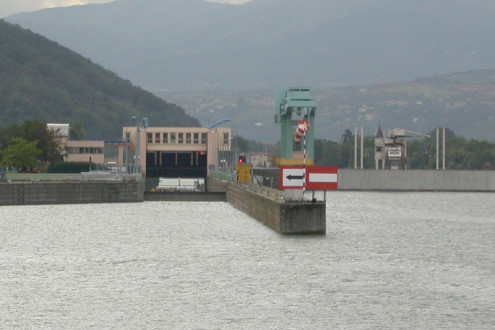
Lock Sablons, Rhone-Alpes, France
Approaching Lock Sablons, Isere, Rhone-Alpes, France All images are the exclusive property of Paddy Ballard. The photographs are for web browser viewing only and may not be reproduced, copied, stored, downloaded or altered in any way without permission..
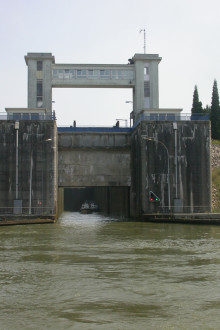
Lock Les Fontinettes, Arques, N. France
Leaving Les Fontinettes, Arques, Nord-Pas de Calais, France. All images are the exclusive property of Paddy Ballard. The photographs are for web browser viewing only and may not be reproduced, copied, stored, downloaded or altered in any way without permission.
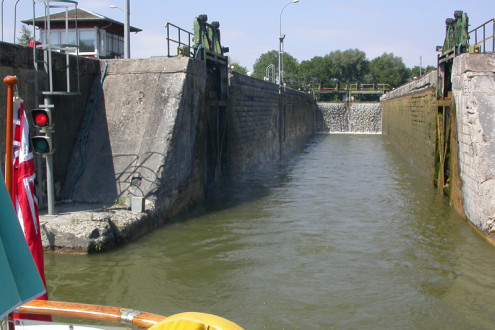
Lock at Voyaux, Aisne, France
Leaving Lock No.28 at Voyaux, Aisne, France. All images are the exclusive property of Paddy Ballard. The photographs are for web browser viewing only and may not be reproduced, copied, stored, downloaded or altered in any way without permission.
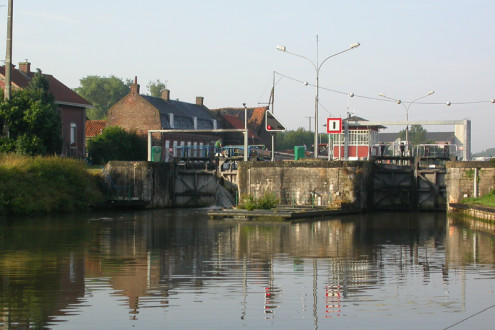
Ecluse D`Iwuy, Iwuy, Nord, France.
Lock at Iwuy, on the Canal de la Sensee, Nord, France. All images are the exclusive property of Paddy Ballard. The photographs are for web browser viewing only and may not be reproduced, copied, stored, downloaded or altered in any way without permission.
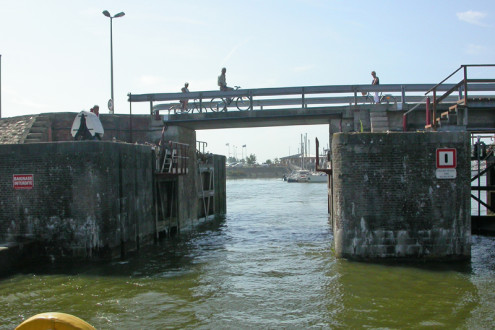
Tide lock at Gravelines, N. France.
Inner tidal lock at Gravelines, Nord-Pas de Calais. It leads from the basin Vauban into the L` Aa. Access only when the levels are the same. All images are the exclusive property of Paddy Ballard. The photographs are for web browser viewing only and may not be reproduced, copied, stored, downloaded or altered in any way without permission.
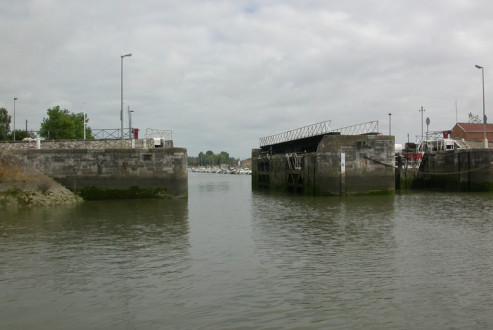
Bridge and Lock Vauban, Gravelines, Nord-Pas de Calais.
Tide lock gate between Channel de L`Aa and basin Vauban at Gravelines, Nord-Pas de Calais. All images are the exclusive property of Paddy Ballard. The photographs are for web browser viewing only and may not be reproduced, copied, stored, downloaded or altered in any way without permission.
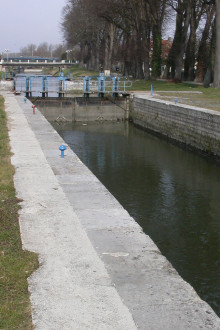
Abbeville, Picardie, France.
Lock at Abbeville, Picardie, France. All images are the exclusive property of Paddy Ballard. The photographs are for web browser viewing only and may not be reproduced, copied, stored, downloaded or altered in any way without permission.
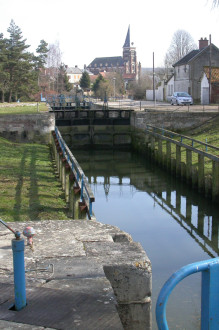
Pont-Remy, Picardie, France
Lock at Pont-Remy, Picardie, France. All images are the exclusive property of Paddy Ballard. The photographs are for web browser viewing only and may not be reproduced, copied, stored, downloaded or altered in any way without permission.
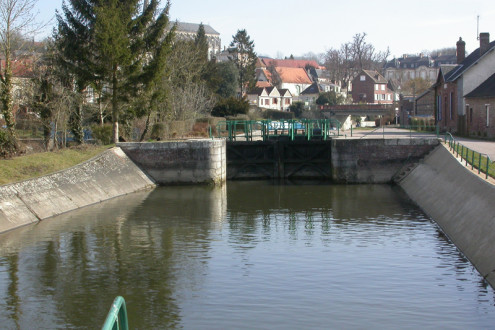
Lock at Long, Picardie, France.
Long, Picardie. Note the sloping slides. All images are the exclusive property of Paddy Ballard. The photographs are for web browser viewing only and may not be reproduced, copied, stored, downloaded or altered in any way without permission.
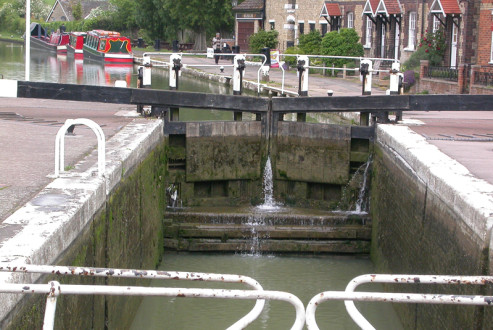
Stoke Bruerne Lock, Northants
Stoke Bruerne, Towcester, Northants. Canal Museum. All images are the exclusive property of Paddy Ballard. The photographs are for web browser viewing only and may not be reproduced, copied, stored, downloaded or altered in any way without permission.
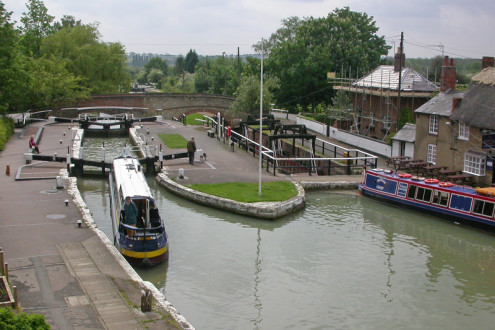
Stoke Bruerne, Northants
Stoke Bruerne, Towcester, Northants. Canal Museum. All images are the exclusive property of Paddy Ballard. The photographs are for web browser viewing only and may not be reproduced, copied, stored, downloaded or altered in any way without permission.
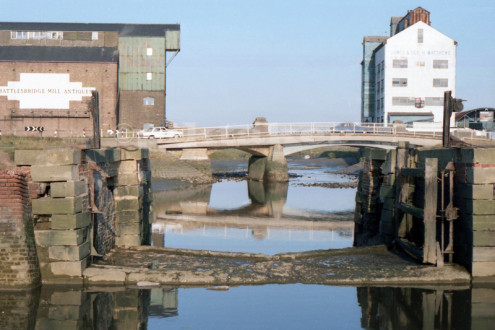
Battlesbridge Tidal Lock, Nr. Wickford, Essex. 1980.
The disused tidal lock on the River Crouch at Battlesbridge Mill, nr. Wickford Essex. All images are the exclusive property of Paddy Ballard. The photographs are for web browser viewing only and may not be reproduced, copied, stored, downloaded or altered in any way without permission.
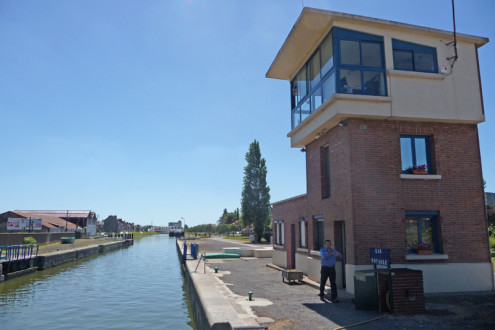
Ecluse - Jeu de Mail, Dunkerque
The last canal lock before entering Dunkerque harbour. All images are the exclusive property of Paddy Ballard. The photographs are for web browser viewing only and may not be reproduced, copied, stored, downloaded or altered in any way without permission.
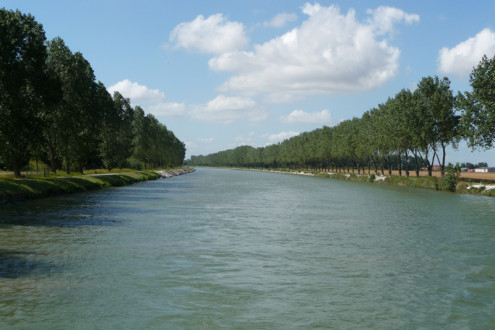
Canal de la Haute Colne, near Bourbourg
Tree lined Canal du Nord. All images are the exclusive property of Paddy Ballard. The photographs are for web browser viewing only and may not be reproduced, copied, stored, downloaded or altered in any way without permission.
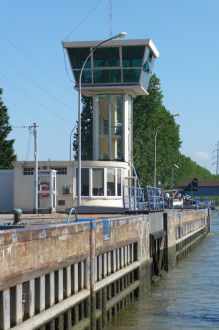
Ecluse - Watten
Canal de la Haute Colne. All images are the exclusive property of Paddy Ballard. The photographs are for web browser viewing only and may not be reproduced, copied, stored, downloaded or altered in any way without permission.
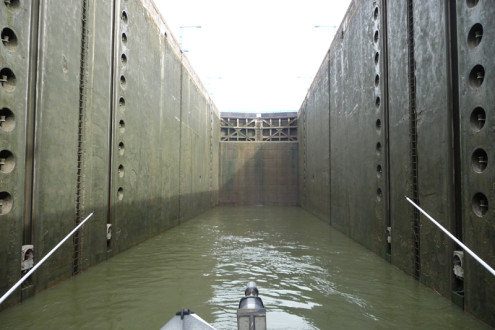
Ecluse - Les Fontinettes, St. Omer
13.3 mtrs deep. All images are the exclusive property of Paddy Ballard. The photographs are for web browser viewing only and may not be reproduced, copied, stored, downloaded or altered in any way without permission.
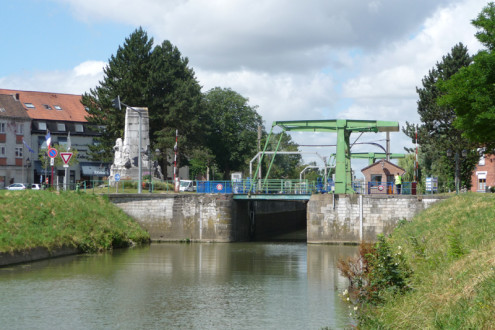
Ecluse et Pont - Merville
No lock-keeper here, must wait for VNF to come and open the bridge and operate the lock. All images are the exclusive property of Paddy Ballard. The photographs are for web browser viewing only and may not be reproduced, copied, stored, downloaded or altered in any way without permission.
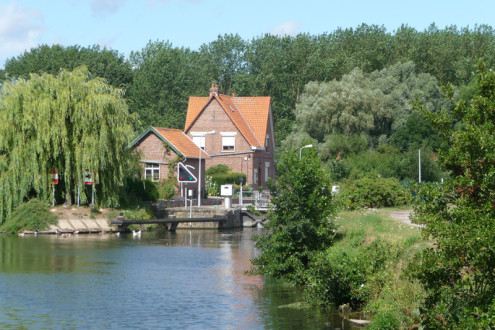
Ecluse - Bac Saint Maur
Automatic lock on La Lys. All images are the exclusive property of Paddy Ballard. The photographs are for web browser viewing only and may not be reproduced, copied, stored, downloaded or altered in any way without permission.
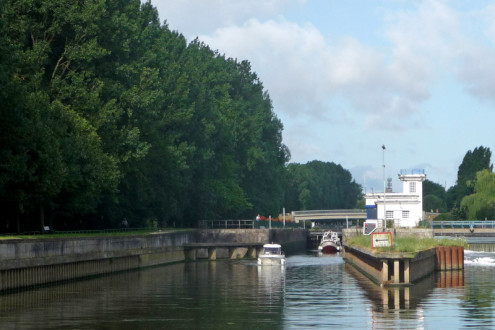
Ecluse - Armentieres
First lock in France after leaving Belgium. All images are the exclusive property of Paddy Ballard. The photographs are for web browser viewing only and may not be reproduced, copied, stored, downloaded or altered in any way without permission.
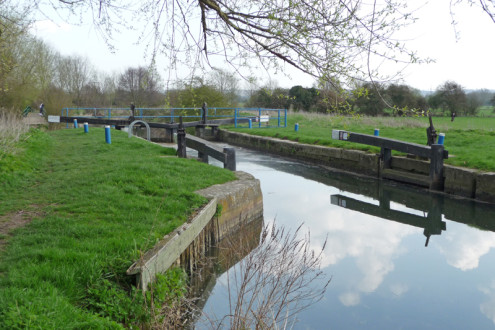
Barnes Mill Lock, Chelmsford
Chelmer & Blackwater Navigation at Chelmer Village, Chelmsford, Essex. All images are the exclusive property of Paddy Ballard. The photographs are for web browser viewing only and may not be reproduced, copied, stored, downloaded or altered in any way without permission.
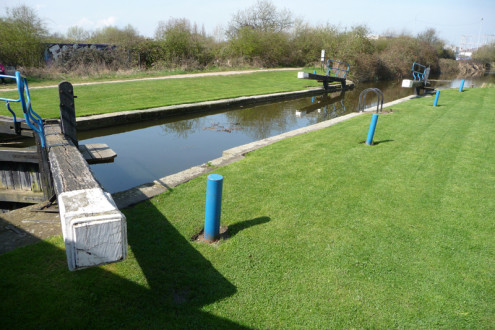
Springfield Lock, Chelmsford
Chelmer & Blackwater Navigation in Chelmsford, Essex. All images are the exclusive property of Paddy Ballard. The photographs are for web browser viewing only and may not be reproduced, copied, stored, downloaded or altered in any way without permission.
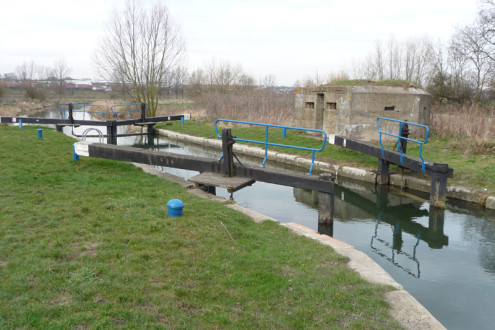
Cuton Lock
Well defended lock near Chelmsford on the Chelmer & Blackwater Navigation. All images are the exclusive property of Paddy Ballard. The photographs are for web browser viewing only and may not be reproduced, copied, stored, downloaded or altered in any way without permission.
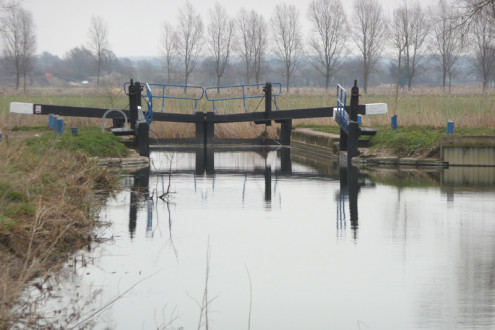
Stonham`s Lock
Chelmer & Blackwater Navigation near Chelmsford. All images are the exclusive property of Paddy Ballard. The photographs are for web browser viewing only and may not be reproduced, copied, stored, downloaded or altered in any way without permission.
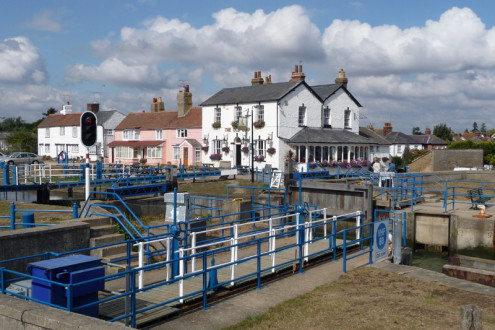
Heybridge Lock, Maldon, Essex.
Chelmer & Blackwater Navigation at Heybridge Basin sea lock, Maldon, Essex. All images are the exclusive property of Paddy Ballard. The photographs are for web browser viewing only and may not be reproduced, copied, stored, downloaded or altered in any way without permission.
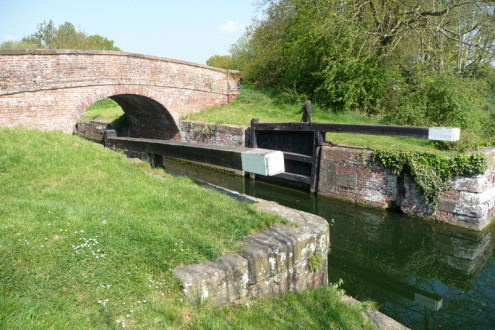
Beeleigh Lock
Chelmer & Blackwater Navigation at Langford, Maldon, Essex. All images are the exclusive property of Paddy Ballard. The photographs are for web browser viewing only and may not be reproduced, copied, stored, downloaded or altered in any way without permission.
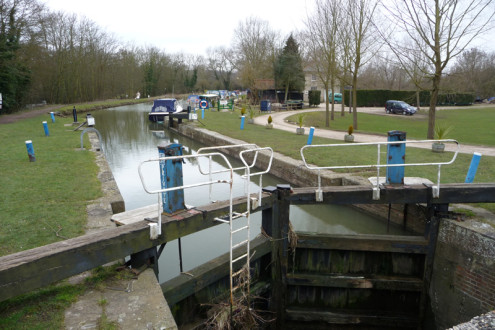
Hoe Mill Lock
Chelmer Blackwater Navigation, Ulting, Essex. All images are the exclusive property of Paddy Ballard. The photographs are for web browser viewing only and may not be reproduced, copied, stored, downloaded or altered in any way without permission.
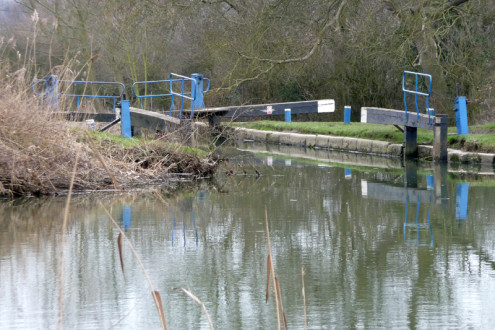
Rushes Lock
Chelmer & Blackwater Navigation, near Ulting, Essex. All images are the exclusive property of Paddy Ballard. The photographs are for web browser viewing only and may not be reproduced, copied, stored, downloaded or altered in any way without permission.
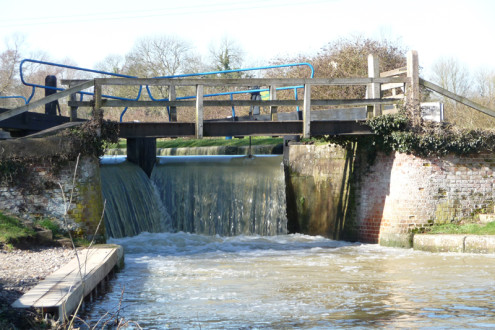
Beeleigh Lock
Chelmer & Blackwater Navigation after heavy rain at Langford, Maldon, Essex. All images are the exclusive property of Paddy Ballard. The photographs are for web browser viewing only and may not be reproduced, copied, stored, downloaded or altered in any way without permission.
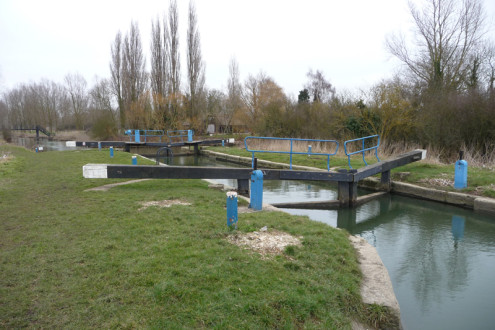
Lt. Baddow Mill Lock
Little Baddow, near Danbury, Essex. All images are the exclusive property of Paddy Ballard. The photographs are for web browser viewing only and may not be reproduced, copied, stored, downloaded or altered in any way without permission.
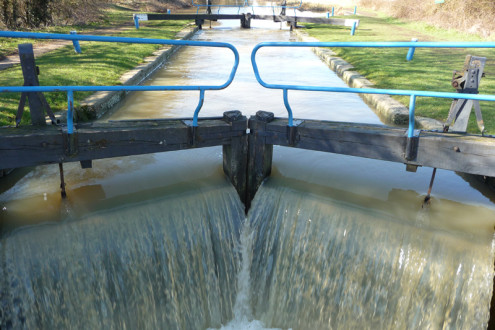
Beeleigh Lock
Part of the Beeleigh Lock complex, Maldon, Essex. Chelmer & Blackwater Navigation. All images are the exclusive property of Paddy Ballard. The photographs are for web browser viewing only and may not be reproduced, copied, stored, downloaded or altered in any way without permission.
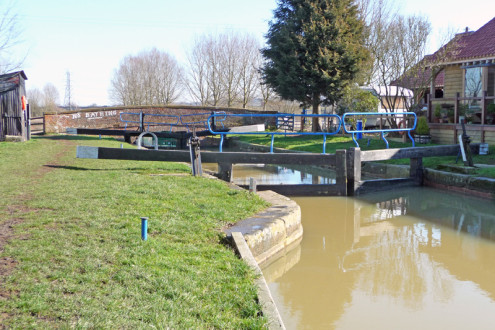
Sandon Mill Lock
Chelmer & Blackwater Navigation near Chelmsford, Essex. All images are the exclusive property of Paddy Ballard. The photographs are for web browser viewing only and may not be reproduced, copied, stored, downloaded or altered in any way without permission.
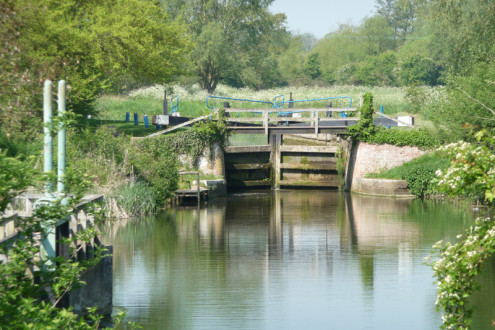
Beeleigh Locks
Chelmer & Blackwater Navigation. All images are the exclusive property of Paddy Ballard. The photographs are for web browser viewing only and may not be reproduced, copied, stored, downloaded or altered in any way without permission.
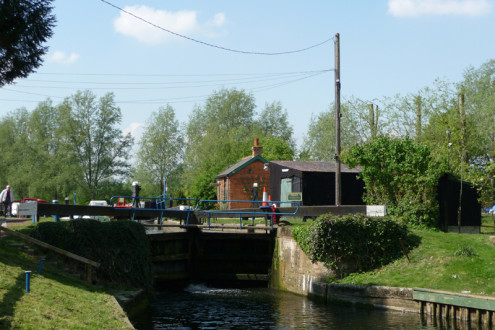
Papermills Lock
Chelmer & Blackwater Navigation. All images are the exclusive property of Paddy Ballard. The photographs are for web browser viewing only and may not be reproduced, copied, stored, downloaded or altered in any way without permission.
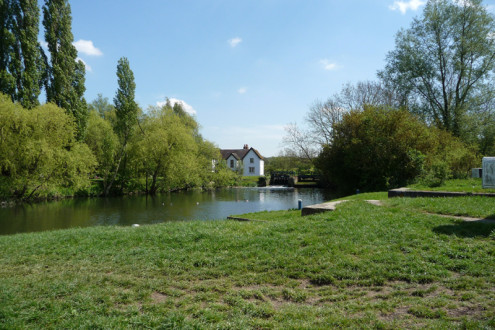
Little Baddow Mill, Nr Chelmsford, Essex.
Chelmer & Blackwater Navigation. All images are the exclusive property of Paddy Ballard. The photographs are for web browser viewing only and may not be reproduced, copied, stored, downloaded or altered in any way without permission.
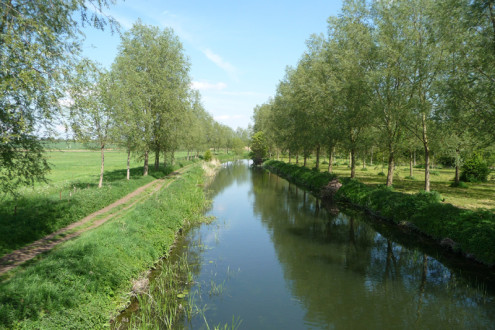
Chelmer Navigation, Baddow, Essex
Chelmer & Blackwater Navigation near Little Baddow Mill, Chelmsford, Essex. All images are the exclusive property of Paddy Ballard. The photographs are for web browser viewing only and may not be reproduced, copied, stored, downloaded or altered in any way without permission.
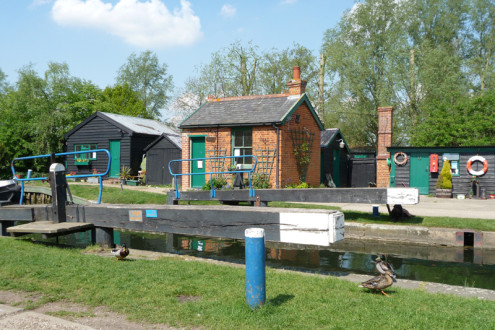
Papermills Lock
Chelmer & Blackwater Navigation. All images are the exclusive property of Paddy Ballard. The photographs are for web browser viewing only and may not be reproduced, copied, stored, downloaded or altered in any way without permission.
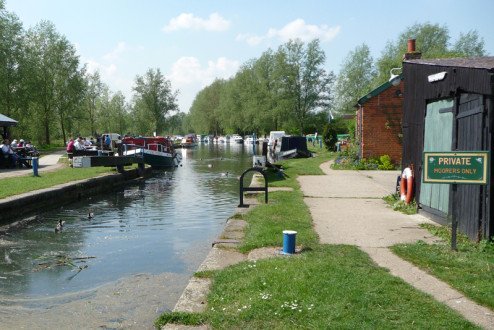
Papermills Lock
Chelmer & Blackwater Navigation. All images are the exclusive property of Paddy Ballard. The photographs are for web browser viewing only and may not be reproduced, copied, stored, downloaded or altered in any way without permission.
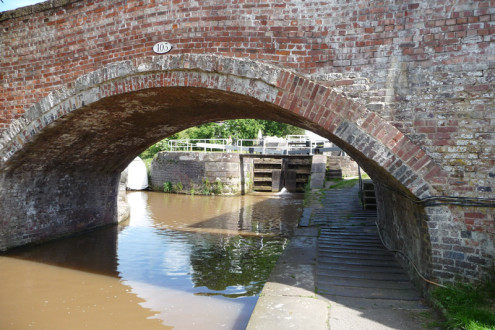
Bunbury Locks, Cheshire
Shropshire Union Canal. All images are the exclusive property of Paddy Ballard. The photographs are for web browser viewing only and may not be reproduced, copied, stored, downloaded or altered in any way without permission.
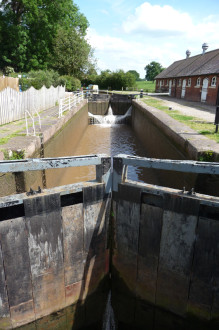
Bunbury Locks
Shropshire Union Canal. All images are the exclusive property of Paddy Ballard. The photographs are for web browser viewing only and may not be reproduced, copied, stored, downloaded or altered in any way without permission.
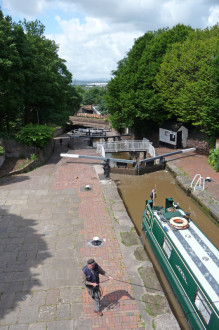
Chester Locks
All images are the exclusive property of Paddy Ballard. The photographs are for web browser viewing only and may not be reproduced, copied, stored, downloaded or altered in any way without permission.
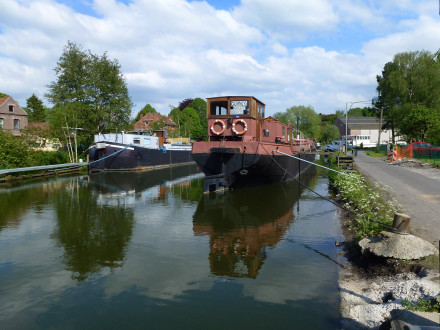
Bateaux au repos.
Dans le bief 27 à Ronquières.
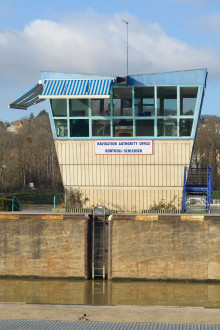
Ecluse
Andrésy Nikon D90, 50mm f/1.4D
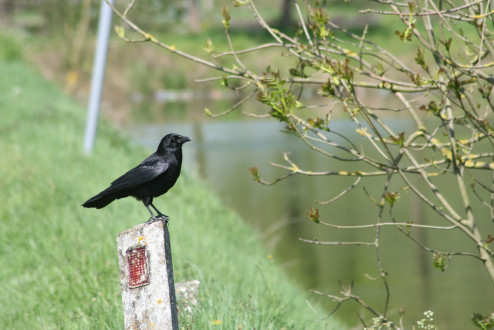
Corneille.
6272689440_cf61fa4b48_k
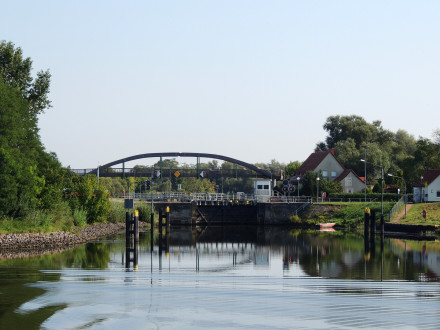
Schleuse Schwedter Querfahrt
45947042412_e919d70f91_k
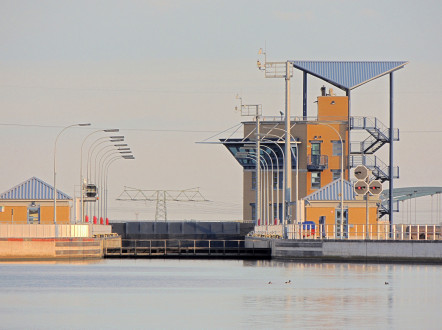
Schleuse Rothensee Oberwasser
45084940385_a08f67ff81_k
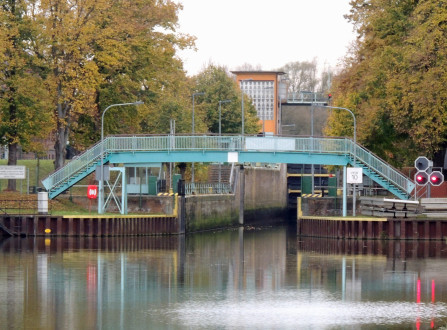
Schleuse Parey Kanalseite
45947051912_7f7631dcb0_k
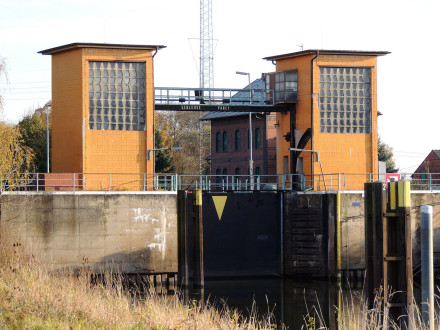
Schleuse Parey Elbseite
45947055722_12b88d33f6_k
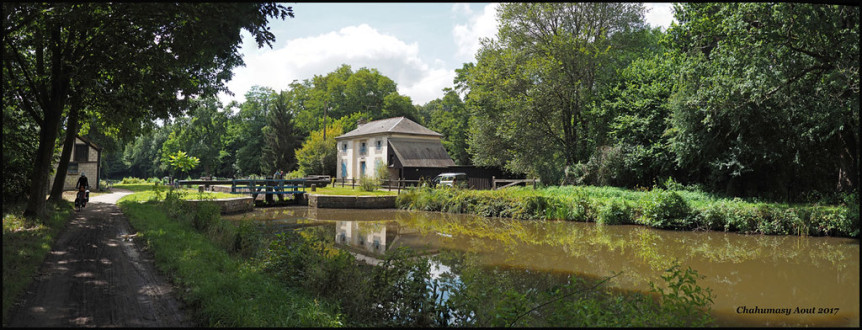
Chahumasy-2017-08-11-(5)-pano-St-Medar-sur-Ille-écluse
Ecluse de St-Medar sur Ille
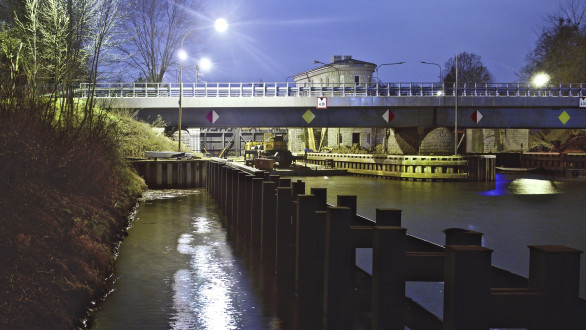
The lock in Gliwice Labedy, Poland
See where this picture was taken. P3183805
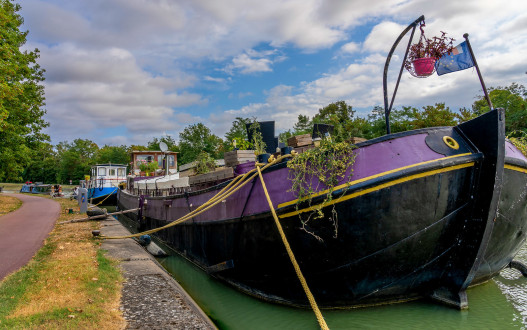
Péniche Chatillon sur Loire
Le port de Chatillon sur Loire est situé sur le canal latéral à la Loire. Il est le premier port après le passage du pont canal de Briare en venant du Nord.
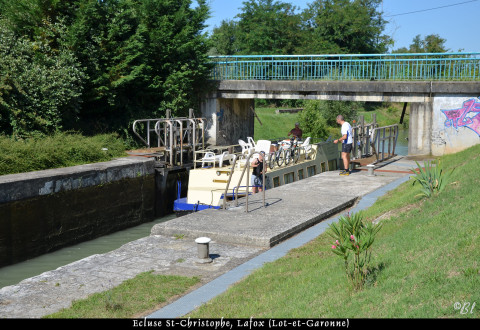
L'entrée dans l'écluse
2014-07-15-bateau (22)
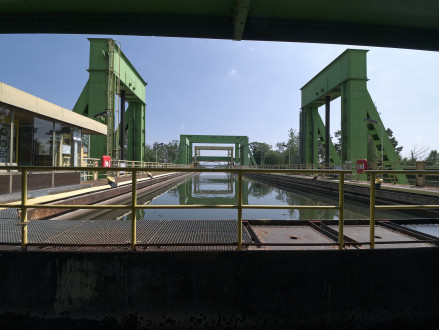
Schiffshebewerk Rothensee, Trog
Das Schiffshebewerk Rothensee befindet sich nördlich von Magdeburg und überbrückt den Höhenunterschied zwischen dem Mittellandkanal und dem Rothenseer Verbindungskanal, der die Verbindung mit der Elbe und dem Magdeburger Hafen herstellt. Das Schiffshebewerk ist ein technisches Denkmal. de.wikipedia.org/wiki/Schiffshebewerk_Rothensee
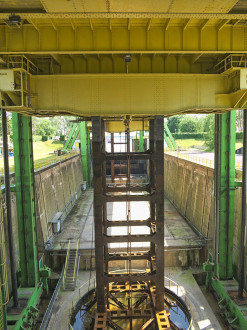
Schiffshebewerk Rothensee, Schwimmerschächte
Das Schiffshebewerk Rothensee befindet sich nördlich von Magdeburg und überbrückt den Höhenunterschied zwischen dem Mittellandkanal und dem Rothenseer Verbindungskanal, der die Verbindung mit der Elbe und dem Magdeburger Hafen herstellt. Das Schiffshebewerk ist ein technisches Denkmal. de.wikipedia.org/wiki/Schiffshebewerk_Rothensee
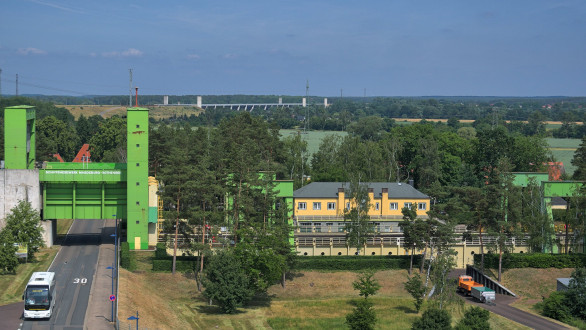
Schiffshebewerk Rothensee
Das Schiffshebewerk Rothensee befindet sich nördlich von Magdeburg und überbrückt den Höhenunterschied zwischen dem Mittellandkanal und dem Rothenseer Verbindungskanal, der die Verbindung mit der Elbe und dem Magdeburger Hafen herstellt. Das Schiffshebewerk ist ein technisches Denkmal. de.wikipedia.org/wiki/Schiffshebewerk_Rothensee

Schiffshebewerk Rothensee, Oberwasser
Das Schiffshebewerk Rothensee befindet sich nördlich von Magdeburg und überbrückt den Höhenunterschied zwischen dem Mittellandkanal und dem Rothenseer Verbindungskanal, der die Verbindung mit der Elbe und dem Magdeburger Hafen herstellt. Das Schiffshebewerk ist ein technisches Denkmal. de.wikipedia.org/wiki/Schiffshebewerk_Rothensee
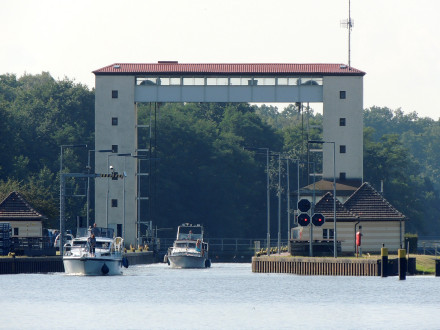
Lehnitz Oberwasser
30492673588_ea14f9254c_k
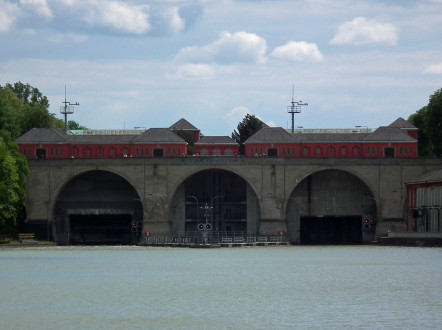
Hannover Anderten Hindenburgschleuse Unterwasser
44359448641_af1c99a4d6_k
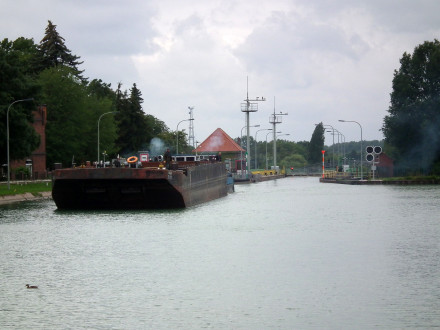
Hannover Linden Oberwasser
30492682638_15388ff254_k
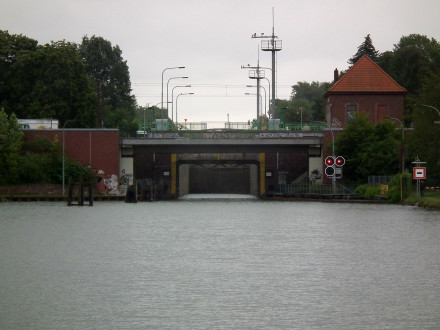
Hannover Linden Unterwasser
44359463251_d0bfe3e301_k
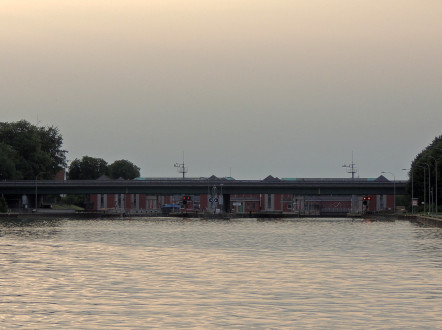
Hannover Anderten Hindenburgschleuse Oberwasser
30492699128_421c408077_k
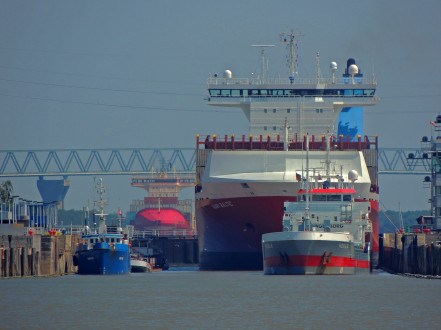
Brunsbüttel Elbe
44359479631_06c48e1597_k
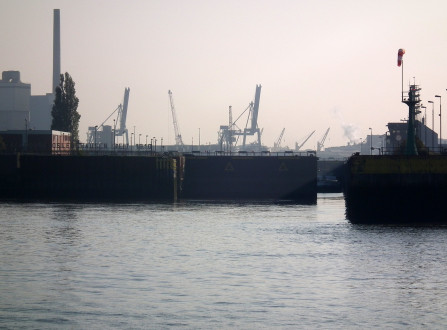
Bremen Oslebshausen Weser
29423901567_b9073cb444_k
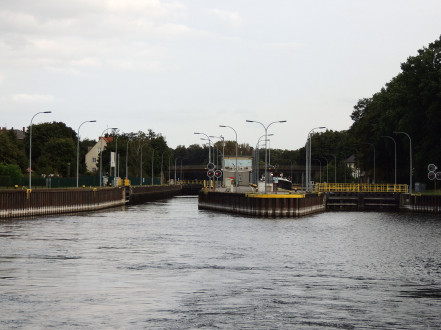
Brandenburg Vorstadtschleuse Unterwasser
44359498241_e2b1f41938_k
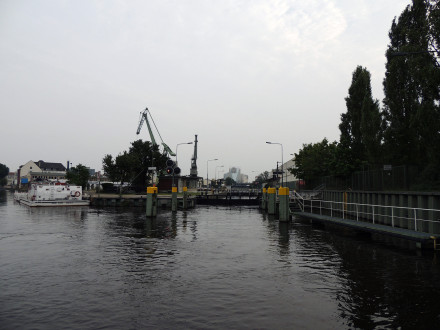
Berlin Neukölln Oberwasser
29423913957_ef8a793847_k
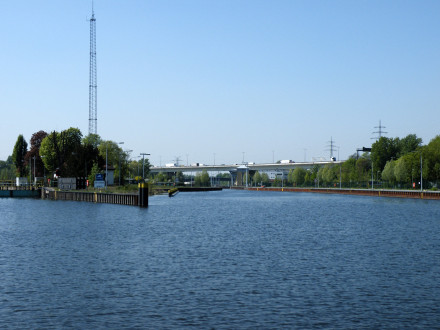
Berlin Charlottenburg Oberwasser
29423922277_c257c19bf1_k
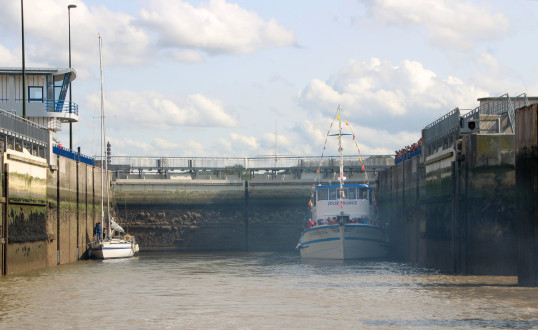
Honfleur - L'Ecluse
43399915865_4641238643_k
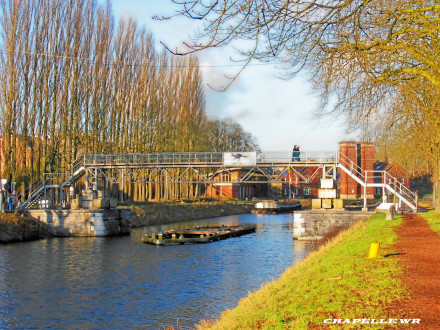
Canal du Centre.
Assises de l'ancien pont tournant, Bracqegnies, Belgique.
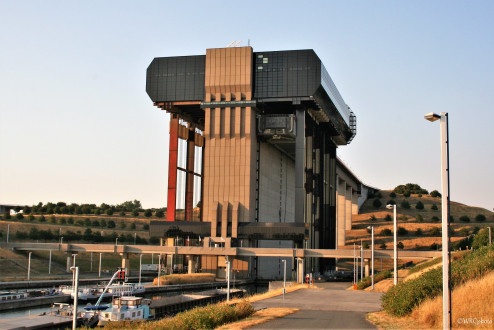
Ascenseur à bateau de Strépy-Thieu, Belgique.
42057289020_e48ba91b2b_k
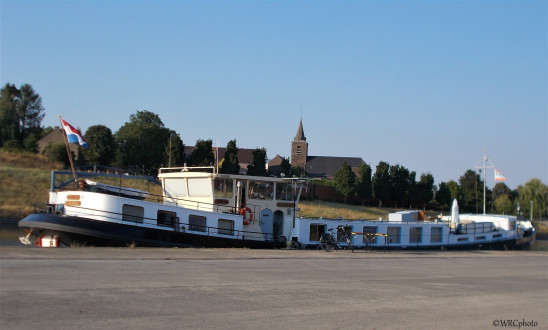
Péniche hollandaise Non loin de l'écluse de Thieu. Belgique.
43231586614_34ee1db76c_k
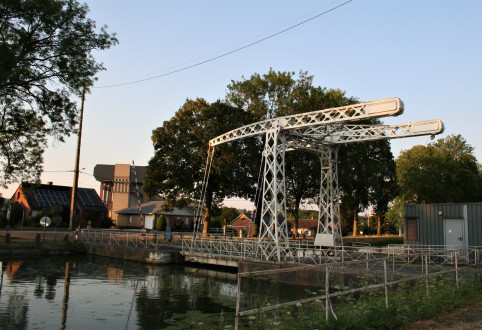
L'ascenseur n°4 à Thieu, à l'horizon, à gauche, l'ascenseur de Strépy-Thieu. Belgique.
42961651935_150a86f1e9_k
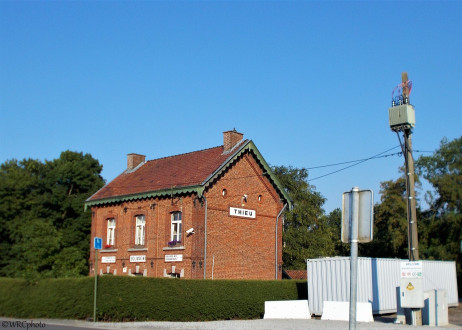
Ecluse n°1 au Canal du Centre, Thieu, Belgique.
42154266050_b85385c859_k
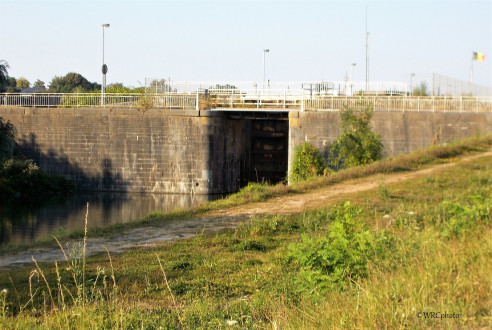
Un bief est fermé. Canal.
29024950527_591f83f163_k
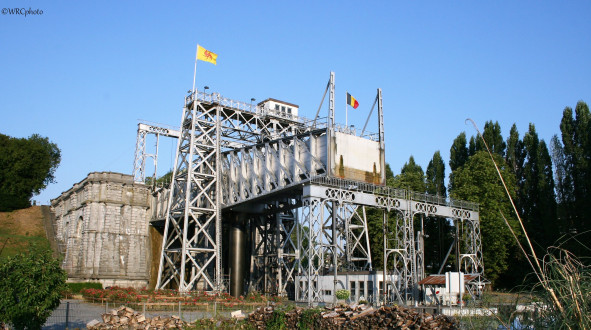
IMG_4006
28929335707_923485c14b_k
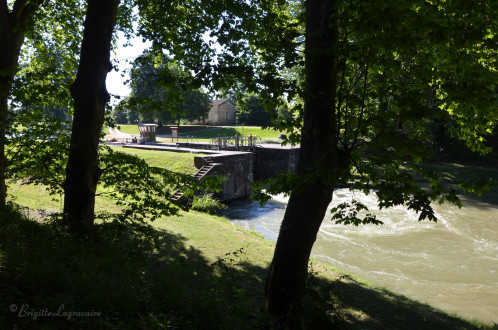
L'écluse
2018-06-26-ecluse (9)
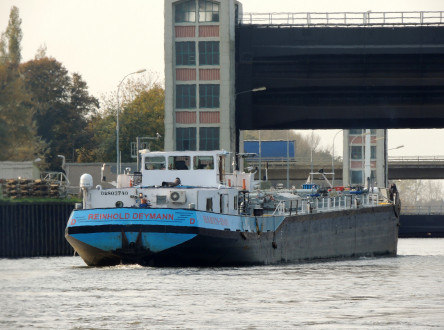
Reinhold Deymann (ENI 04803740)
42318680194_4599b9a698_k
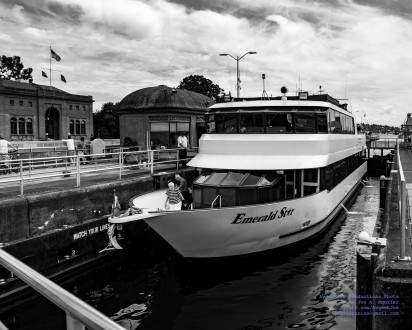
Emerald Star and the Locks in B&W
Finishing up photos for a star client so I thought I'd let my followers see this black & white beauty. Really appreciate the change to photograph from the locks twice this Spring for these folks... PHOTO CREDIT: Joe A. Kunzler Photo, AvgeekJoe Productions, growlernoise-AT-gmail-DOT-com
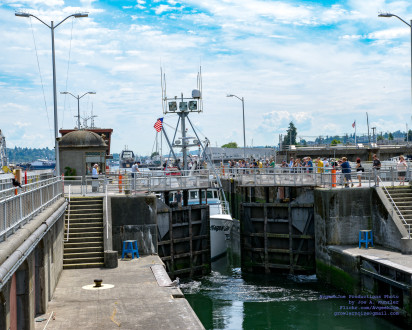
Harbor Gem About to Go Thru the Hiram M. Chittenden Locks
Really nice to capture a boat going thru the Ballard Locks. Always wanted to watch locks in operation, appreciate the photo opportunity. PHOTO CREDIT: Joe A. Kunzler Photo, AvgeekJoe Productions, growlernoise-AT-gmail-DOT-com
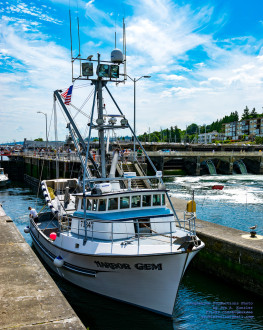
Harbor Gem Leaving the Hiram M. Chittenden Locks
Happy to catch this fishing boat going thru the locks... PHOTO CREDIT: Joe A. Kunzler Photo, AvgeekJoe Productions, growlernoise-AT-gmail-DOT-com
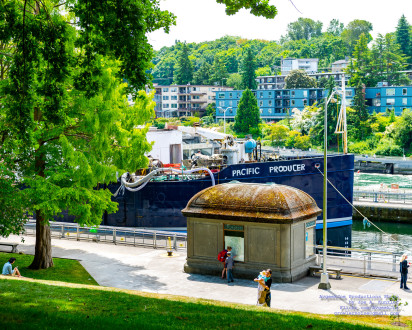
Pacific Producer Looming Large in the Locks
Yes, the Pacific Producer is one big fish processing vessel going thru the Ballard Locks! PHOTO CREDIT: Joe A. Kunzler Photo, AvgeekJoe Productions, growlernoise-AT-gmail-DOT-com
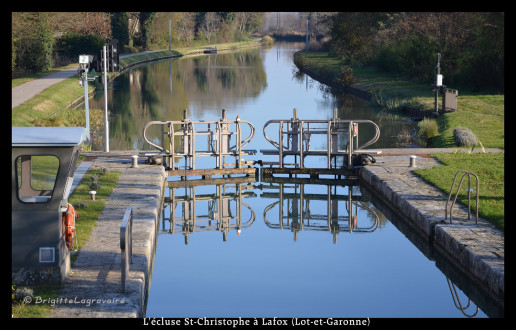
L'écluse St-Christophe sur le canal latéral à la Garonne 2/4
(2013-12-07-Lafox (7h)
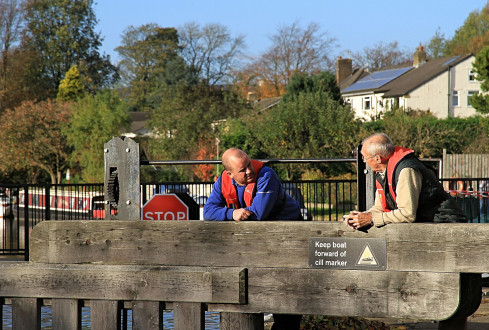
Conversation, 5 Rise Locks, Bingley, West Yorkshire, England.
Staircase lock requires discussion.
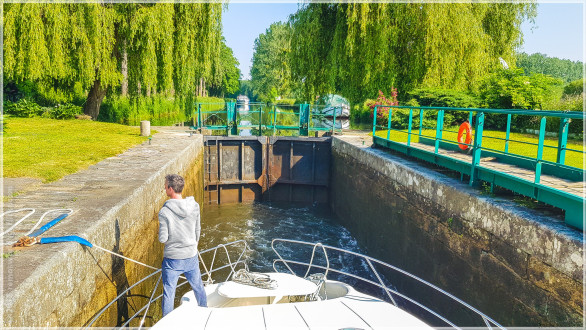
Hausbooturlaub 2018-Glénac/Bretagne, Schleuse 23 - Beaumont
Schleuse 23 - Beaumont, Saint-Congard/Bretagne Frankreich
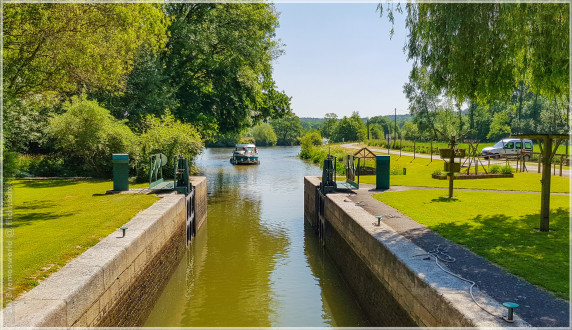
Hausbooturlaub 2018-Glénac/Bretagne, Schleuse 19 - la Maclais
Schleuse 19 - la Maclais, Saint-Vincent-sur-Oust/Bretagne Frankreich
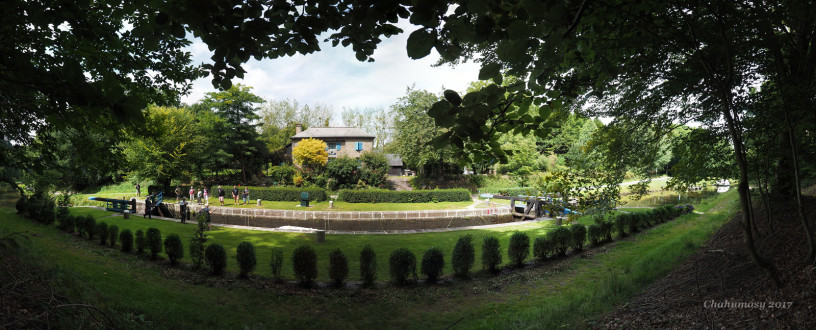
Chahumasy-2017-08-11 (31) pano écluse
36732092230_28a69ba66d_h
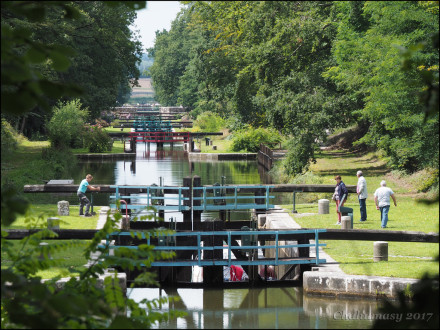
Chahumasy-2017-08-11 (39)-écluse
OLYMPUS DIGITAL CAMERA
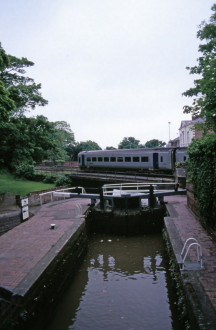
45106 Chester 27 mei 2005
Een onbekend dieseltreinstel passeert de brug over het Shropshire Union Canal. A unknown diesel unit is passing the Shropshire Union Canal.
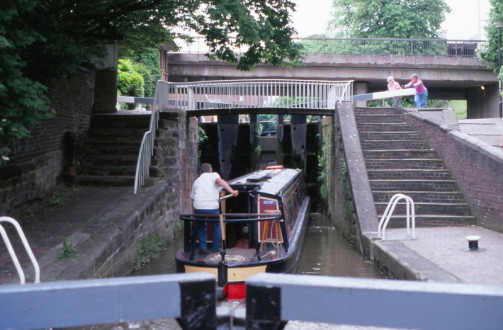
45100 Chester 27 mei 2005
Een sluis in het Shropshire Union Canal in Chester. A lock in the Shropshire Union Canal in Chester.
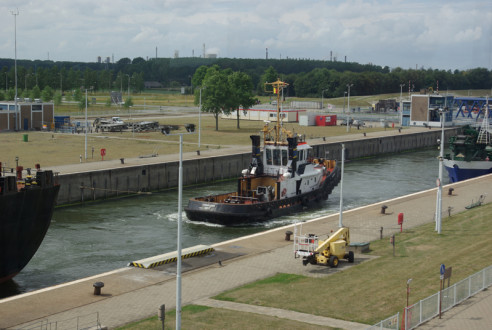
IMGP2755 vakantie Zeeuws Vlaanderen
Een sleepboot assisteert een groot zeeschip bij het verlaten van de zeesluis van Terneuzen op 4 augustus 2010.
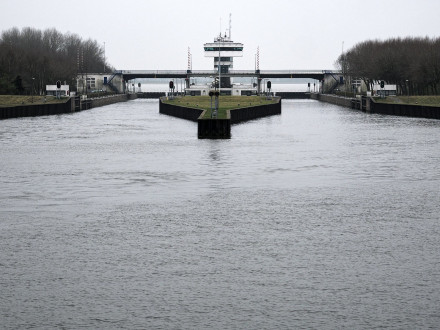
Schleusengruppe Lelystad, NL
zwischen Ijsselmeer und Markermeer
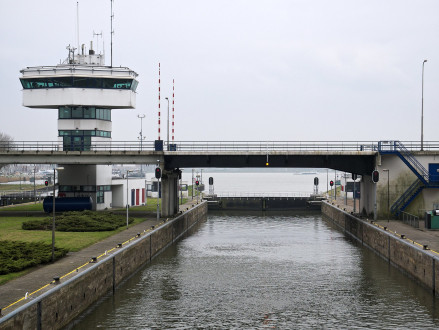
Schleuse Lelystad, NL
zwischen Ijsselmeer und Markermeer
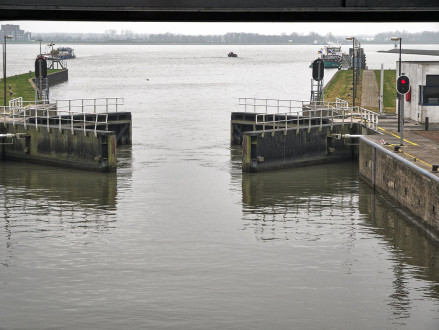
Doppelte Stemmtore, Schleuse Lelystad, NL
die Stemmtore sind doppelt ausgeführt, da sowohl das Ijsselmeer als auch das Markermehr einen relativ höheren Pegelstand zueinander haben können
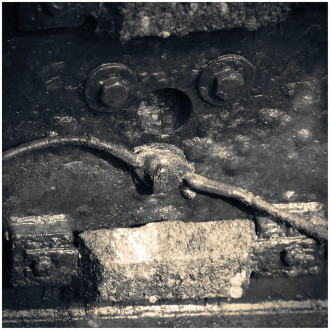
Mr. Anode
This robot (with mustache) is protecting the Krammer lock from corrosion.
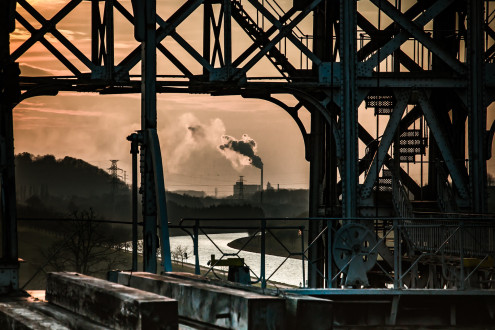
Canal du Centre - Ascenseur nr 4 - Wallonie - Belgique
40219682354_0eedb0041d_k

Krammer I
The "Krammersluis" seperates the Oosterschelde from the Volkerak. On each locking the water is completely exchanged to seperate fresh water (Volkerak) from sea water (Oosterschelde, on the left side). That's why it takes quite some time to get through, although the vertical difference is not that much (depending on the tide in the Oosterschelde, of course). Today I took the time to stop at the look-out and climbed it. It was sunny, but quite windy, and very cold.
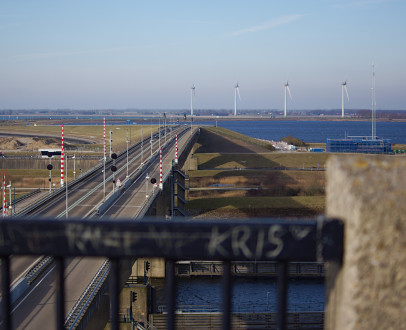
Krammer II
The "Krammersluis" seperates the Oosterschelde from the Volkerak. On each locking the water is completely exchanged to seperate fresh water (Volkerak) from sea water (Oosterschelde, on the left side). That's why it takes quite some time to get through, although the vertical difference is not that much (depending on the tide in the Oosterschelde, of course). Today I took the time to stop at the look-out and climbed it. It was sunny, but quite windy, and very cold.
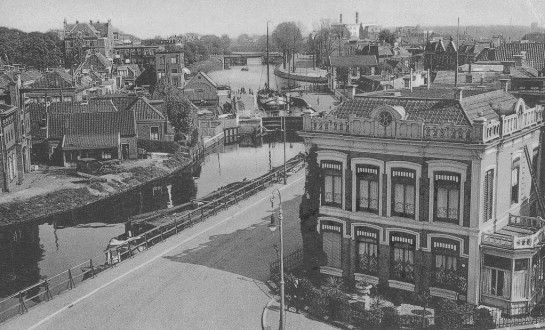
Het Verbindingskanaal met de Eeldersluis en het Sluiskantoor annex Sluismeesterswoning anno 1864 (Rijksmonument 485339). Links op de achtergrond het Diaconessenhuis aan de Praediniussingel, in 1890/95 ontworpen door architect K. Hoekzema (1844-1911),
Groningen, Paterswoldseweg 2-4. Technisch bureau der firma A. Lanfers, met Eeldersingel 46 (1910-1913): hdl.handle.net/21.12105/e590706e-0c0d-69f9-1aee-905dd7fa3706 "Voorts kan men niets anders dan hopen dat de Paterswoldscheweg even mooi wordt. Daar is men bezig met het dure grapje dat Omsnijdingskanaal heet (de nakomelingen zullen zeker in dit kanaal, als zij er hengelen, niets dan goudvischjes vangen, zoo veel tientjes heeft het alreeds verslonden)". Rubriek "Los en Vast" in het Nieuwsblad van het Noorden van 9-6-1907: resolver.kb.nl/resolve?urn=ddd:010890405:mpeg21:a0167 Kaart 1862: hdl.handle.net/21.12105/662ac031-01e4-b81f-a8f0-e672136480dd Kaart 1864: hdl.handle.net/21.12105/b2b15213-4df6-7b23-ff1a-f716265814ad Kaart 1864 met de Westerhavensluis en de Stijfselfabriek van Klaas Mesdag: hdl.handle.net/21.12105/5c3bf4c9-da43-5d00-c879-ae346e32a000 In 1832 stond het huis, erf en stijfselmakerij van Klaas Mesdag aan de Horensche Dijk kadastraal bekend als Groningen C 312, art. 1593: www.hisgis.nl/hisgis/gewesten/groningen/groningen Klaas Mesdag, stijfselfabrijkant, geb. Bolsward 4-4-1795, ovl. Groningen 4-2-1881, oud 85 jaar, gehuwd met Johanna Willemina van Giffen, is een zoon van advocaat Tako Gilles Mesdag en Engeltje Reints Monsma. Kunstschilder Hendrik Willem Mesdag (1831-1915) is een zoon van Klaas Mesdag (1795-1881): rkd.nl/explore/artists/55468 resources.huygens.knaw.nl/bwn1880-2000/lemmata/bwn3/mesdag Het Verbindingskanaal met de Eeldersluis en het Sluiskantoor annex Sluismeesterswoning anno 1864 (Rijksmonument 485339): hdl.handle.net/21.12105/875ed7e3-96f6-4ced-f98f-ae9eefe0e149 De Westerhavensluis te Groningen, olieverf op doek door J.L. van der Baan, 1935. Noordelijk Scheepvaartmuseum, Groningen: www.maritiemdigitaal.nl/index.cfm?event=search.getdetail&... hdl.handle.net/21.12105/3b77387f-eacc-5948-b415-9c97e21e3edc Aanbesteding der Werken ter vereeniging van het Hoendiep met het Noord-Willemskanaal buiten de Apoort, o.l.v. de Hoofdingenieur van den Waterstaat in het 1ste district en Ingenieur K. van Rijn. Hij is Kornelis van Rijn, geb. Uithoorn 26-9-1830, ovl. Apeldoorn 10-11-1906. Nederlandsche Staatscourant van 6-12-1862: resolver.kb.nl/resolve?urn=ddd:010790381:mpeg21:a0015 In 1863 was C. Brunings de hoofdingenieur en P. Loke de Ingenieur van den Waterstaat. Hij is Pieter Loke, geb. Breda 19-4-1831, ovl. Zwolle 17-2-1895. Nederlandsche Staatscourant van 29-3-1863, 7-6-1863 en 19-1-1864: resolver.kb.nl/resolve?urn=ddd:010790634:mpeg21:a0012 resolver.kb.nl/resolve?urn=ddd:010790691:mpeg21:a0018 resolver.kb.nl/resolve?urn=ddd:010791035:mpeg21:a0016 Op 5-1-1863 is W.W. Delken en A.J. Blink & Co begonnen met het uitbaggeren van de gracht. Provinciale Drentsche en Asser Courant 6-1-1863: resolver.kb.nl/resolve?urn=ddd:010967406:mpeg21:a0009 Nieuw Amsterdamsch handels- en effectenblad van 23-12-1862: resolver.kb.nl/resolve?urn=ddd:010132460:mpeg21:a0042 web.archive.org/web/20161101034428/http://www.panoramio.c... Links op de achtergrond het Diaconessenhuis aan de Praediniussingel, in 1890/95 ontworpen door architect K. Hoekzema (1844-1911), en in 1929 uitgebreid onder architectuur van zijn zoon G. Hoekzema (1875-1935). Rechts de villa aan de Eeldersingel 48, hoek Hoornsedijk/Paterswoldseweg in Groningen, in 1879/1880 gebouwd door sigarenfabrikant Ernst Fredrik Rost (1832-1880), mogelijk ontworpen door architect K. Hoekzema (1844-1911). Van 1881-1905 was de villa eigendom van houtkoper Juriaan Huizinga en meubelfabrikant Jacobus Abraham Huizinga. In 1905 komt de villa in het bezit van de wed. M.A.S. Schulze-Fricke en later van haar schoonzoon A.A. Lanfers. Lanfers was in 1913 de hoofdvertegenwoordiger van de "Lanz'sche stoomdorschmachine met dubbele strooschudders, naschudder en viervoudige reiniging". Het Verbindingskanaal met de Eeldersluis en het Sluiskantoor annex Sluismeesterswoning anno 1864 (Rijksmonument 485339). Links op de achtergrond het Diaconessenhuis aan de Praediniussingel, in 1890/95 ontworpen door architect K. Hoekzema (1844-1911), en in 1929 uitgebreid onder architectuur van zijn zoon G. Hoekzema (1875-1935). Het oorspronkelijke hoofdgebouw is in 1890/95 ontworpen door architect K. Hoekzema (1844-1911) i.s.m. architect ir. J.A. Mulock Houwer (1857-1933): www.panoramio.com/photo/122700414 Of bij het Internet Archive Wayback Machine: web.archive.org/web/20161031205225/http://www.panoramio.c... Op 14-4-1965 werden de patiënten verhuisd naar een nieuw gebouw aan de Van Ketwich Verschuurlaan in Helpman in Groningen, ontworpen door de Haarlemse architect J.P. Kloos (1905-2001). Op 27-12-2007 werden alle patienten verhuisd naar het nieuwe Martini Ziekenhuis aan het Van Swietenplein. Het oude Diaconessenhuis is in 1990 gesloopt. In 1997/98 is op deze locatie het appartementencomplex "Praedinius" gebouwd, ontworpen door de Berlijnse architect Josef Paul Kleihues i.s.m. het Groninger Architectenbureau Karelse van der Meer/De Zwarte Hond. Rechts de villa aan de Eeldersingel 48, hoek Hoornsedijk/Paterswoldseweg in Groningen, in 1880 gebouwd (C 3417 huis) door sigarenfabrikant Ernst Fredrik Rost, wijnhandelaar, sigarenfabrikant, geb. Groningen 22-1-1832, ovl. Groningen 22-6-1880, zoon van wijnhandelaar Nicolaas Ernst Rost. Rost had de bouwgrond (C 3331 weiland) gekocht van Taco Mesdag, effecten- en graanhandelaar, en kunstschilder, geb. Groningen 21-9-1829, ovl. Scheveningen 4-8-1902: mesdag.net/bekende-mesdagen-sp-27558/taco-mesdag rkd.nl/explore/artists/55470 Op 1-3-1879 diende E.F. Rost een aanvraag in voor het bouwen van een behuizing op adres buiten de voormalige A-poort (Kad. C 2007). De villa is mogelijk ontworpen door architect K. Hoekzema (1844-1911) die veel vergelijkbare villa's in Groningen heeft ontworpen, eerst samen met zijn broer H. Hoekzema (1853-1923) en later ook met zijn zoon G. Hoekzema (1875-1935). Veel van zijn villa's hebben de status van Rijksmonument gekregen. In 1881 werd de villa eigendom van Juriaan Huizinga, later van zijn zoon Jacobus Abraham Huizinga (1861-1937), meubelfabrikant, vanaf 1891 aan de Westersingel 2-4, waar hij ook ging wonen; in 1938 werd het magazijn aan de Westersingel 2 verplaatst naar de Vismarkt ZZ 18, hoek Pelsterstraat ("De Waalsche Kerk wordt verbouwd. En tot meubelmagazijn ingericht", Nieuwsblad van het Noorden van 26-2-1938. "Meubelfabriek Nederland J.A. Huizinga NV" in het Nieuwsblad van het Noorden van 24-12-1938. Leeuwarder Courant van 23-12-1938, met tekening van het pand en met luchtfoto). De fabriek aan de Westersingel maakte in 1939/1940 plaats voor 4 nieuwe winkelhuizen, ontworpen door architect H.J. van Wissen (1910-2000), zoon van architect A.L. van Wissen (1878-1955), vader van Dichter des Vaderlands Driek van Wissen (1943-2010). Architect A.R. Wittop Koning (1878-1961) heeft ongeveer 20 meubels ontworpen voor Huizinga: zoeken.nai.nl/CIS/persoon/2560 www.staatingroningen.nl/bedrijf/105/wittop-koning-ar meubelfabriekhuizinganederland.nl/index.html www.staatingroningen.nl/203/winkel-en-ateliers-blekerstraat www.deverhalenvangroningen.nl/activiteiten/jacobus-abraha... Het perceel Eeldersingel 48 is dan C 3455 (huis en erf). In 1890 wordt een bijbouw aangebracht. In 1892 volgt een gedeeltelijke afbraak. Juriaan Huizinga, houtkoper (1852), geb. Westzaan 6-3-1815, ovl. Groningen 15-10-1891, zoon van Dirk Huizinga, leraar, en Trijntje Koolman, trouwt Groningen 20-12-1852 Willemina Lucea van Giffen, geb. Groningen 16-1-1829, dochter van koopman Heiko van Giffen en Cathalina Arkema. In 1905 werd de villa verkocht aan Martha Anna Sophia Fricke, geb. Braunschweig (Dld), ovl. Groningen 23-5-1917, oud 54 jaar, weduwe van Gustav Heinrich Andreas Schulze. In 1909 werd een bijbouw geplaatst. Na haar overlijden komt de villa bij haar schoonzoon Augustinus Arend Lanfers, ovl. Groningen 18-1-1949, oud 69 jaar, gehuwd met Martha Sophie Auguste Schulze, geb. Hoiersdorf (Dld), ovl. Groningen 8-2-1950, oud 69 jaar. Vanaf 1905 is in de villa het Technisch Bureau A. Lanfers gevestigd. De Heerenbehuizing "met afzonderlijk verhuurd wordende Bovenwoning" aan de Eeldersingel 46 werd in het Nieuwsblad van 1-1-1901 door notaris W. van Bommel van Vloten te koop aangeboden. De bovenverdieping werd verhuurd aan de heer Schor en de benedenverdieping aan de heer Rasker. In 1901 was de Firma J.A. Borger (1856-1925), Specialisten in Krachtveevoeder, gevestigd aan de Eeldersingel, hoek Hoornschedijk. In 1904 waren de Gebr. Schoonbeek eigenaren van het Benedenhuis (Nieuwsblad van het Noorden 23-4-1904), vermoedelijk de timmerman Hindrik Schoonbeek (1855-1928) en de stucadoor Theodorus Josephus Schoonbeek (1858-1918). In 1899 zat vleeschhouwer Geugjen Bernardus Schaap (1873-1946) op de locate Eeldersingel, A-poort (Nieuwsblad van het Noorden van 31-12-1899). Hij verhuisde in 1900 naar het Damsterdiep (Nieuwsblad van het Noorden van 3-5-1900). Hij is een zoon van scheepskapitein Bernardus Schaap (1835-1908) en Mijna Rasker (1838-1903). Zijn grootvaders Jan Luurts Schaap en Albert Frederiks Rasker waren ook scheepskapitein. In 1906 vraagt A. Lanfers vergunning voor kleine bouwkundige aanpassingen aan de villa op nr. 48 (Kad C 3455). In 1908 en in 1911 vraagt hij vergunning aan voor het verbouwen van het pand op nr. 46 (Kad C 3456). In 1912 vraagt hij vergunning aan voor het verbouwen van het pand aan de Hoornsedijk 2 (Kad C 3556). De drie panden op de hoek van de Eeldersingel en Hoornsedijk vormen daarmee een eenheid. Lanfers is de hoofdvertegenwoordiger van de "Lanz'sche stoomdorschmachine met dubbele strooschudders, naschudder en viervoudige reiniging". De machine "waarborgt marktschoone producten en geeft volkomen zekerheid, dat zelfs bij zeer vochtig graan geen korrel verloren gaat" (Nieuwsblad van het Noorden van 15-2-1913).
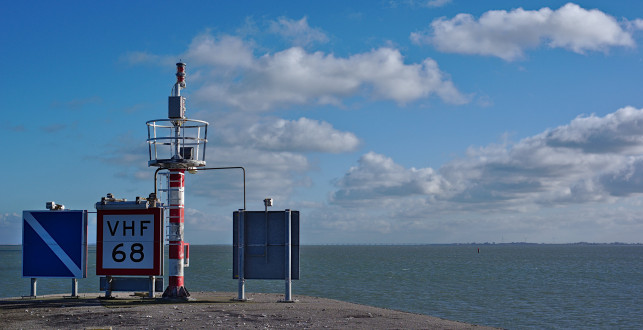
VHF 68
When you enter the Oosterschelde, you have to switch your VHF radio to channel 68, "Post Wemeldinge". This sign here is at the exit of the "Roompotsluis". In the background, ~8 nautical miles (~15 km) away, the Zeelandbrug
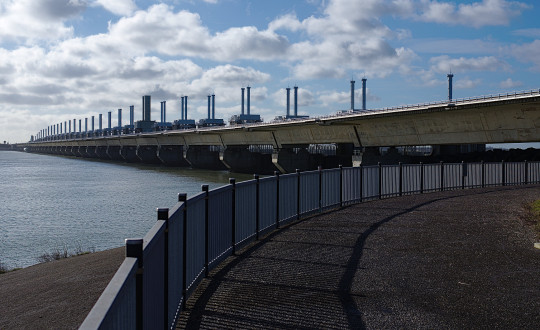
Oosterscheldekering
There's not much to say about it. One of the most famous bulidings in the world, en.wikipedia.org/wiki/Oosterscheldekering
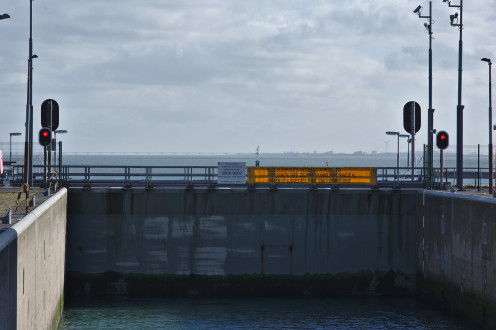
Roompotsluis
View from the Roompotsluis to the Oosterschelde. In the background you can see the Zeelandbrug, which is ~8 nautical miles (~15 km) away.
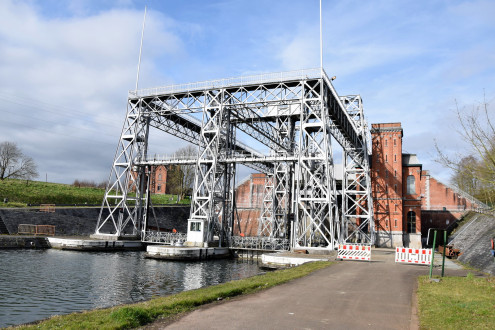
Ascenseur hydraulique N°1.
25983996171_a7cac71e8f_k
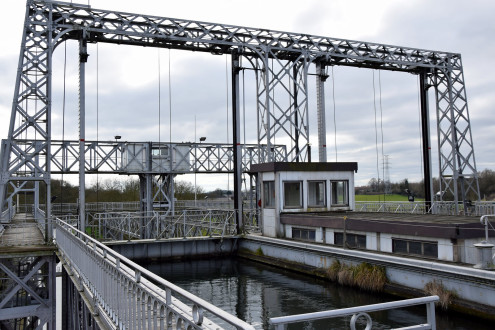
Ascenseur hydraulique N°1.
25447758373_b369049d65_k
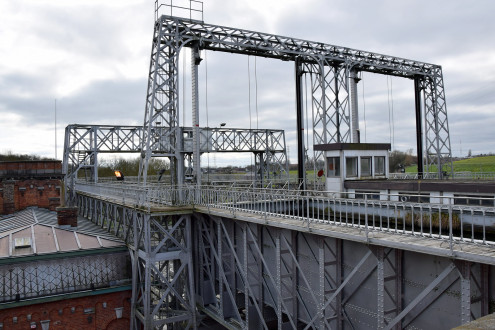
Ascenseur hydraulique N°1.
25447674573_b76acfeb05_k
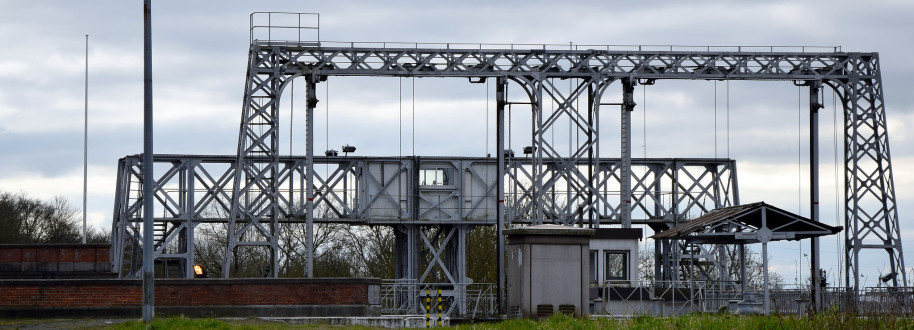
Ascenseur n°1
26024267016_2105c87d4c_k
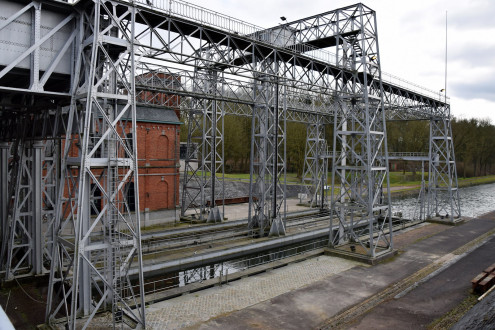
Ascenseur hydraulique N°1.
25447591703_b526021b9b_k
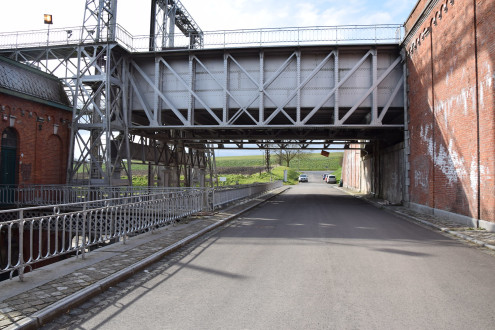
Ascenseur hydraulique N°1.
25983738611_150bceaf85_k
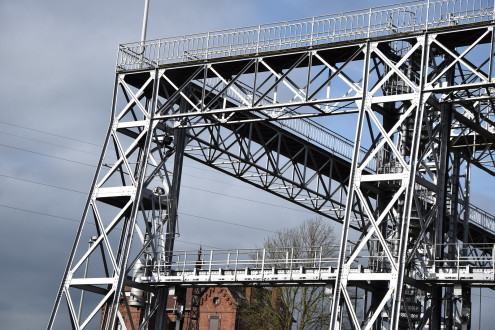
Ascenseur hydraulique N°1.
26024125476_a17575e99d_k
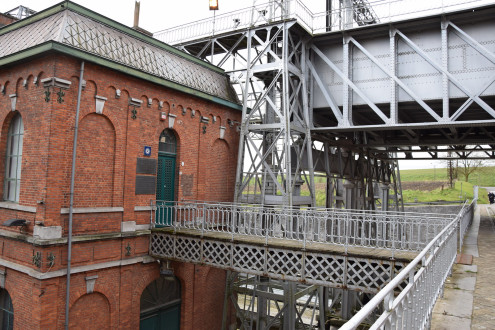
Ascenseur hydraulique N°1.
25957464492_5d1ecff936_k
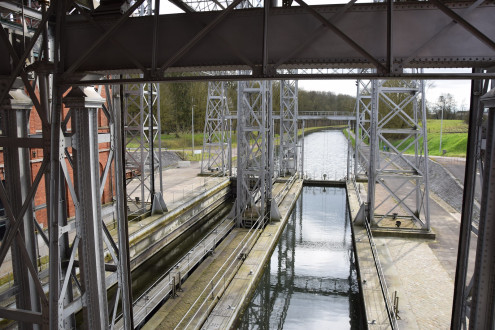
Ascenseur hydraulique N°1.
25957410662_c837c119a1_k
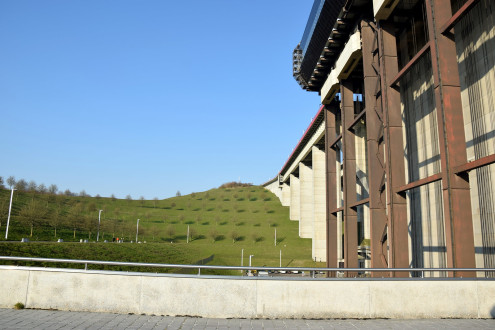
Ascenseur de Strépy-Thieu.
25235469924_94e1ccd62b_k
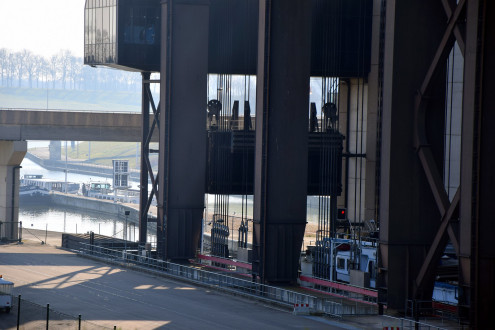
Porte ouverte.
25744962202_57863a699a_k
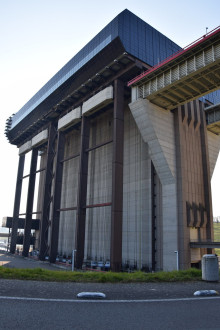
Ascenseur de Strépy-Thieu.
25770761611_d54372800f_k
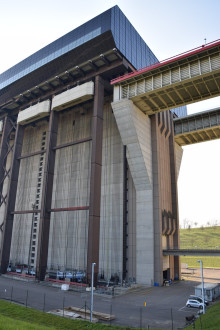
Ascenseur de Strépy-Thieu.
25744883602_b3fc65226a_k
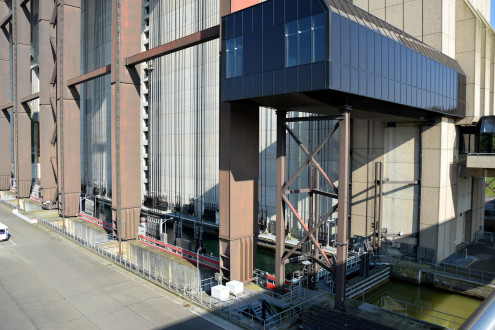
Ascenseur de Strépy-Thieu.
25839641166_fb1413e1d8_k
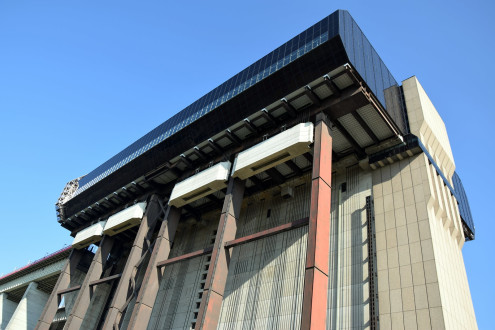
Ascenseur de Strépy-Thieu.
25564956110_23b88b902b_k
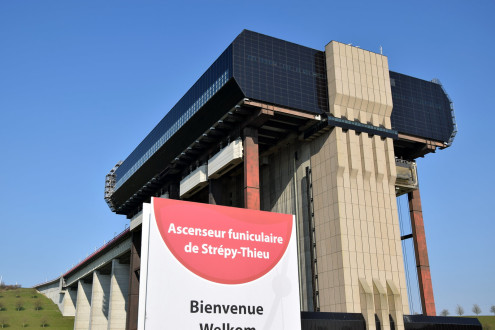
Ascenseur de Strépy-Thieu.
25770513961_e1038b97ca_k
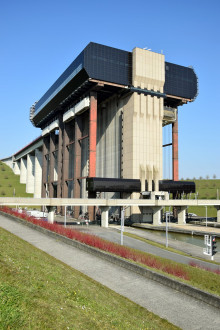
Ascenseur de Strépy-Thieu.
25744631482_c3b064075f_k
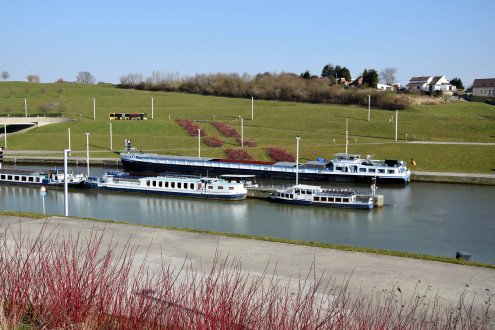
Ascenseur de Strépy-Thieu.
25564818890_8b7ffe782f_k
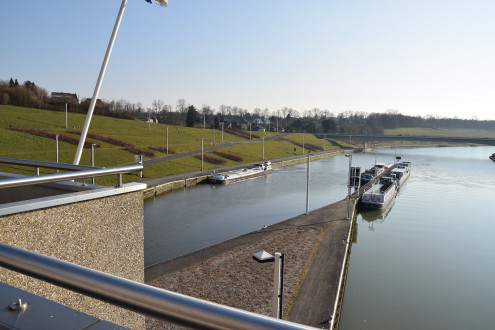
Ascenseur de Strépy-Thieu.
25238819663_cf5cb3b020_k
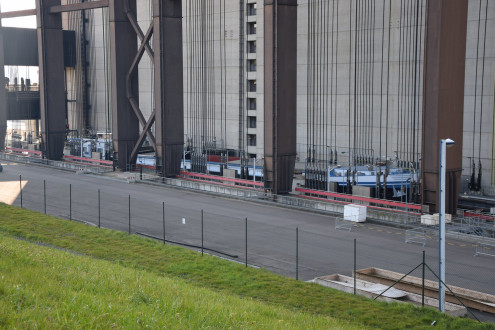
Ascenseur de Strépy-Thieu.
25744409842_6af7944817_k
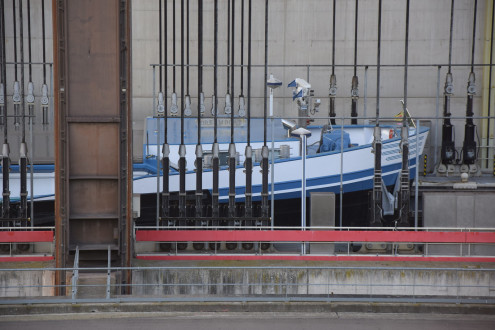
Ascenseur de Strépy-Thieu.
25234755574_97ae956a20_k
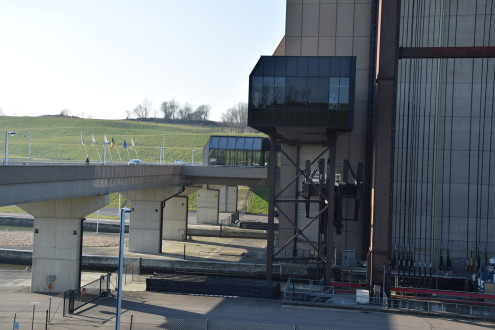
Ascenseur de Strépy-Thieu.
25238655183_a657ef7289_k
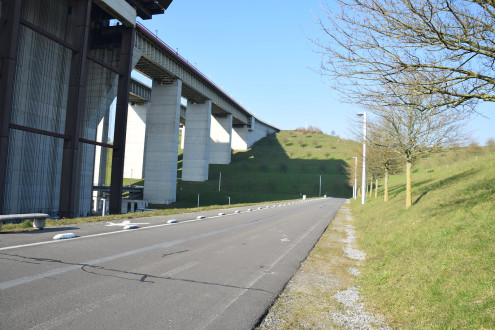
Ascenseur de Strépy-Thieu.
25564497230_54f0814879_k
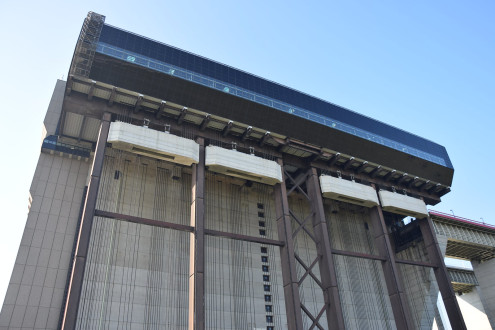
Ascenseur de Strépy-Thieu.
25839073276_7e0a3872cd_k
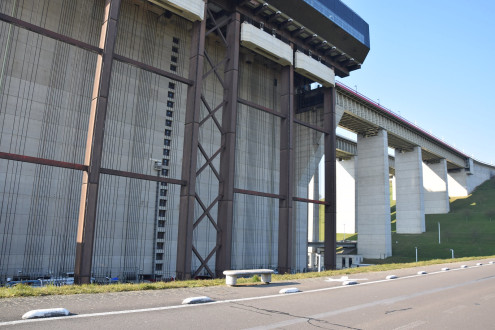
Ascenseur de Strépy-Thieu.
25238491843_548eb337da_k
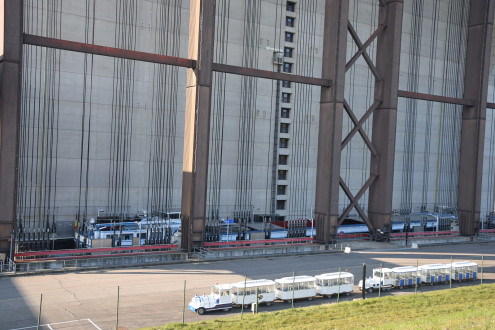
Ascenseur de Strépy-Thieu.
25744084412_05a0307516_k
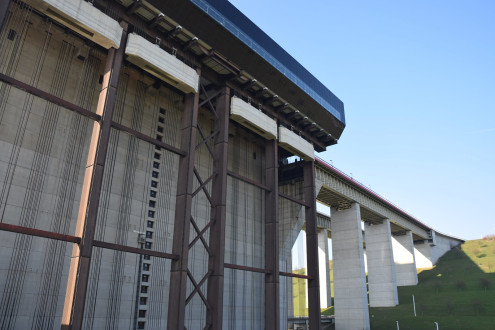
Ascenseur de Strépy-Thieu.
25564272160_da4871ed2b_k
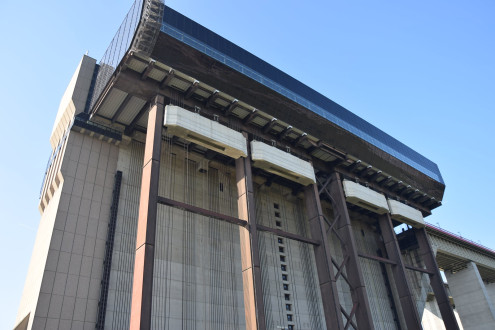
Ascenseur de Strépy-Thieu.
25838867326_0c607b0f18_k
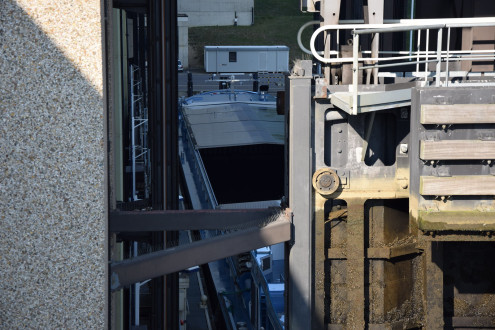
Ascenseur de Strépy-Thieu.
25838821626_215da0821f_k
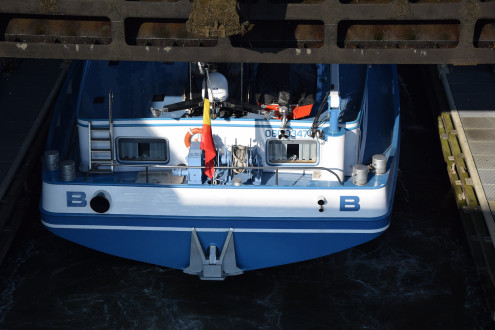
Ascenseur de Strépy-Thieu.
25234284454_1a433efbd7_k
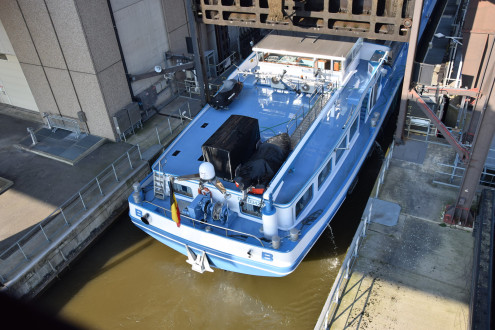
Ascenseur de Strépy-Thieu.
25234240564_698803dab6_k
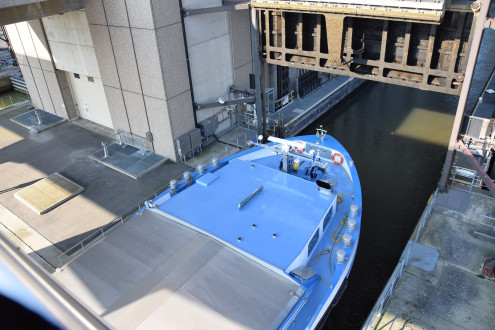
Ascenseur de Strépy-Thieu.
25234183384_ee9e45be8b_k
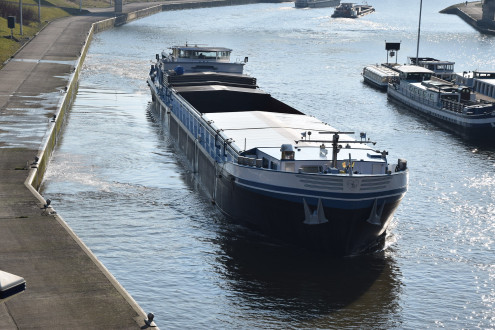
Ascenseur de Strépy-Thieu.
25234132124_28a53ab434_k
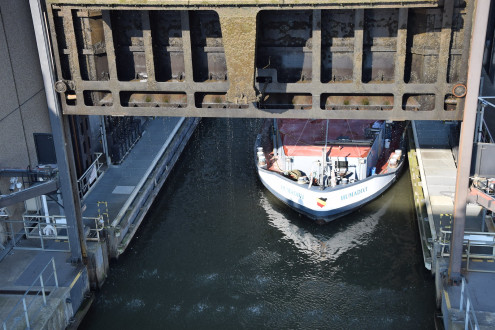
Ascenseur de Strépy-Thieu.
25838213026_2f4f36d927_k
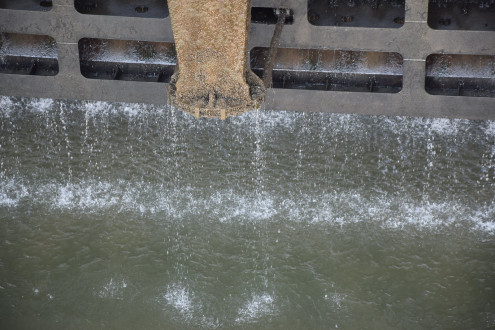
Ascenseur de Strépy-Thieu.
25237610793_b5d8ba7acd_k
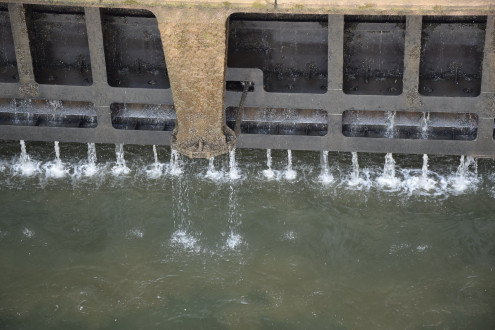
Ascenseur de Strépy-Thieu.
25743195562_ab517930ff_k
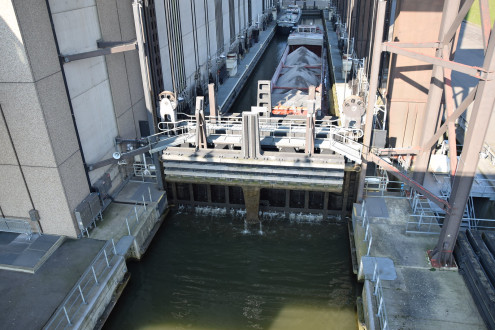
Ascenseur de Strépy-Thieu.
25233528394_34f9badcfb_k
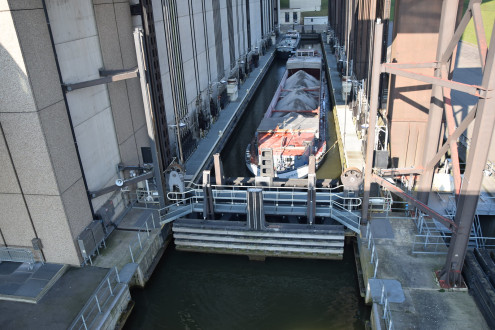
Ascenseur de Strépy-Thieu.
25743068872_3a2a5fc544_k
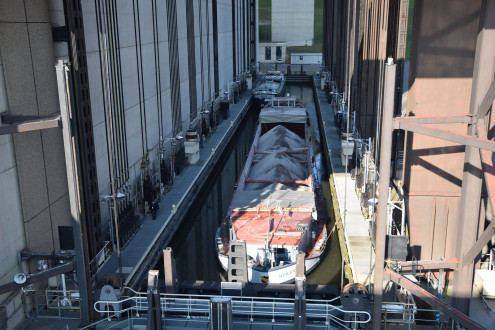
Ascenseur de Strépy-Thieu.
25837898796_f288036189_k
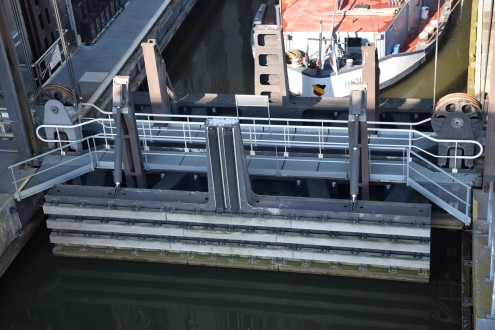
Ascenseur de Strépy-Thieu.
25837844326_1bb37f64a8_k
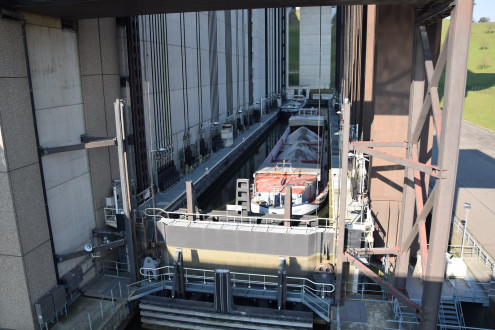
Ascenseur de Strépy-Thieu.
25837792426_a46d5bd876_k
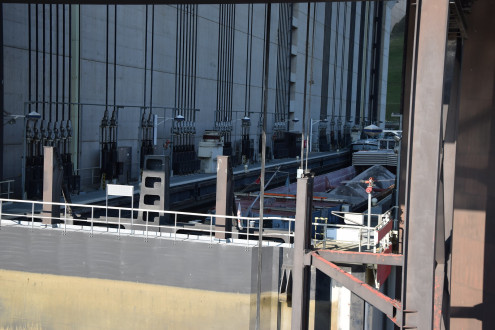
Ascenseur de Strépy-Thieu.
25237198413_96de8405f0_k
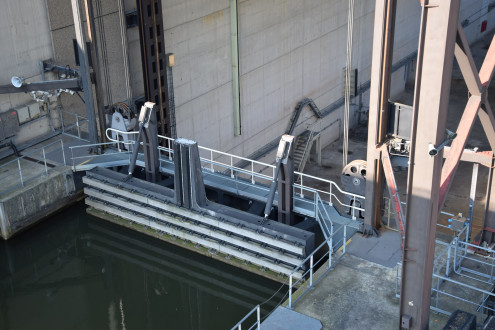
Ascenseur de Strépy-Thieu.
25742795772_07fdada74f_k
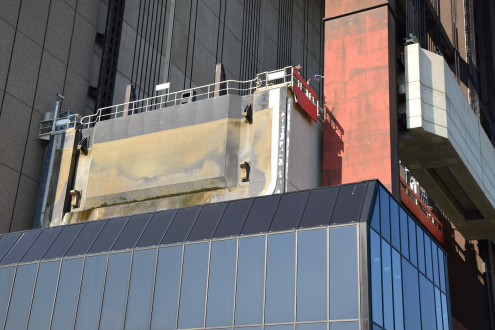
Ascenseur de Strépy-Thieu.
25237096423_3a3de39e79_k
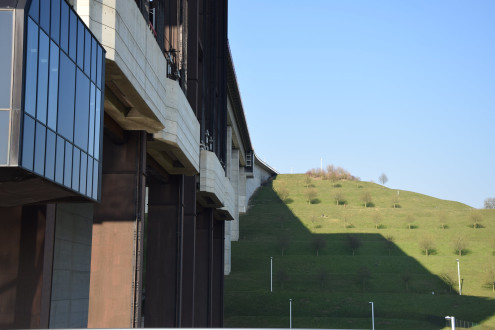
Ascenseur de Strépy-Thieu.
25768535941_a27032120b_k
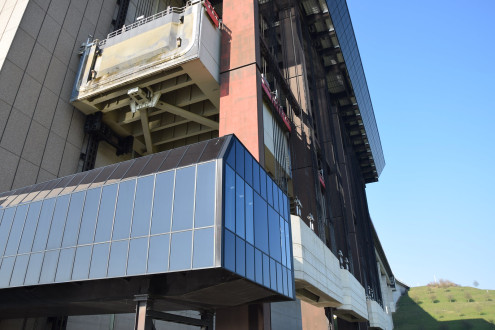
Ascenseur de Strépy-Thieu.
25768481411_1ba1866408_k
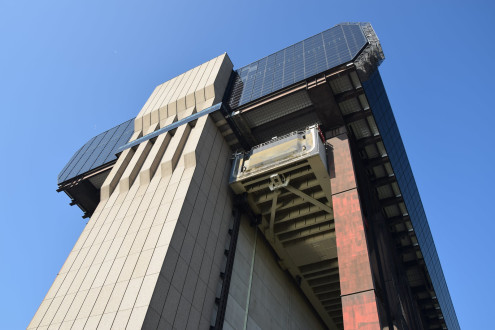
Ascenseur de Strépy-Thieu.
25863229815_e0e8b68465_k
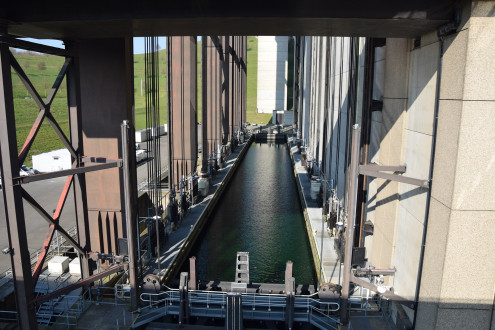
Ascenseur de Strépy-Thieu.
25768104591_bb68497c03_k
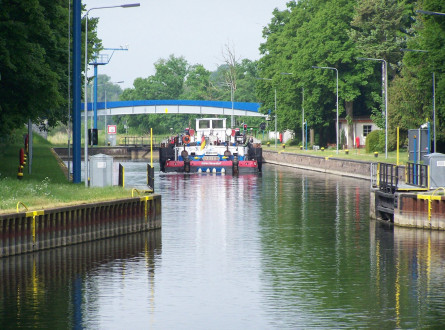
Schleuse Bahnitz
39905205881_cd90e3ea9e_k
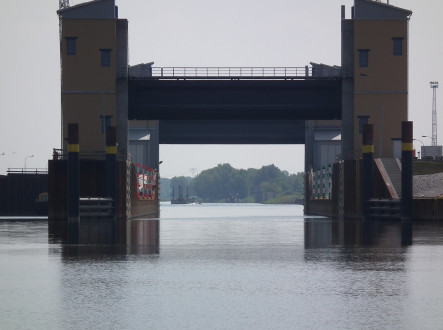
Niedrigwasserschleuse Magdeburg
39194616714_ed1a81b259_k
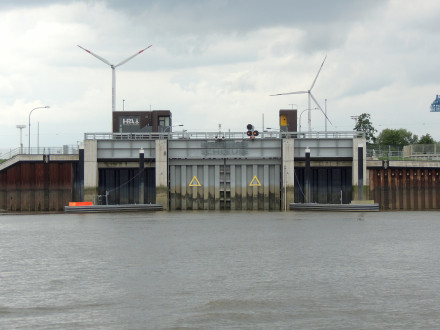
Hamburg Rugenberger Schleuse neu
39872460672_3256648a06_k
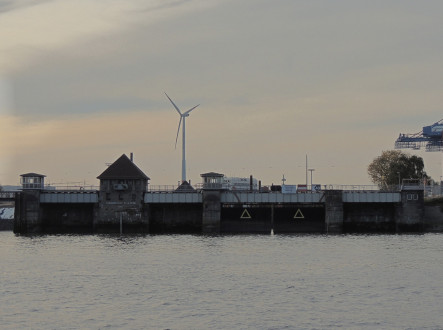
Hamburg Rugenberger Schleuse alt
39006393015_2d64fa2cc8_k
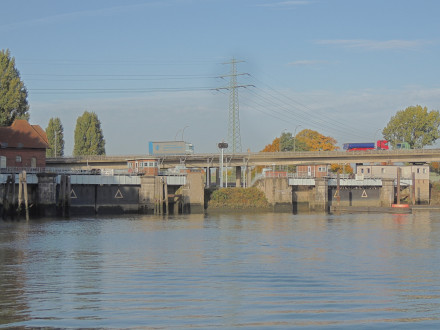
Hamburg Ellerholzschleuse
39006396985_eae58796d8_k
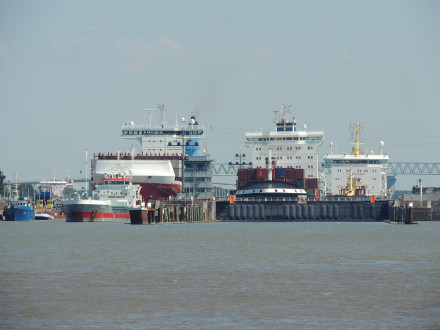
Brunsbüttel große Schleuse
39872482762_0f9af7679f_k
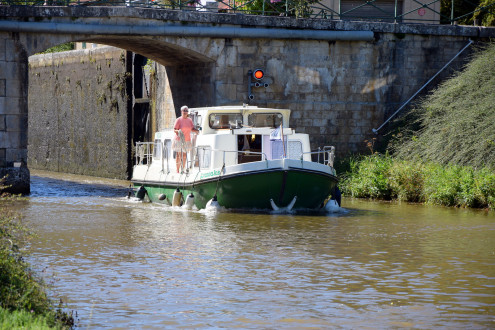
Rogny-les-sept-écluses.
29685553742_6447bb1bb2_k
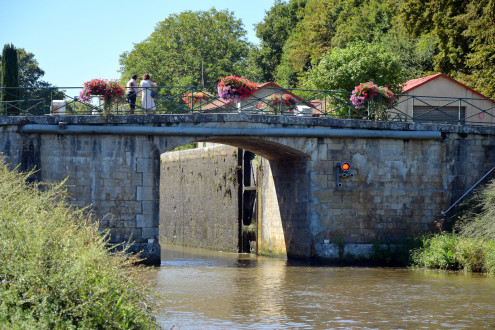
L'écluse de Rogny
29685536532_c3358a3085_k
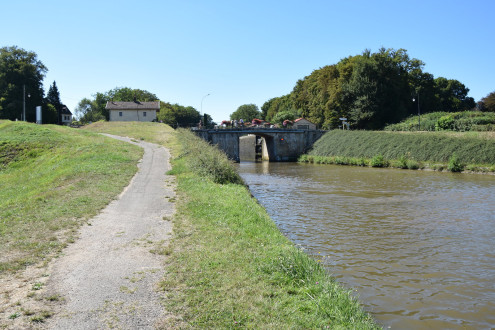
Rogny les 7 écluses.
29505830720_3d70f530a0_k
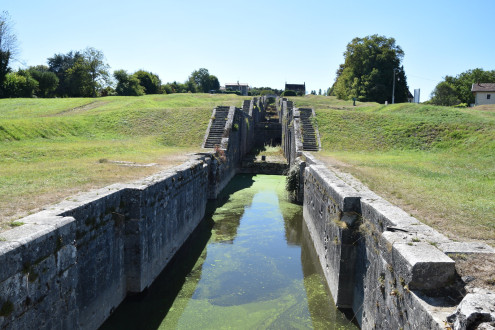
Rogny-les-sept-écluses.
29172544633_1020027987_k
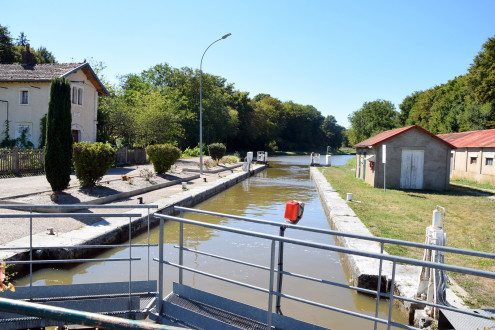
Rogny-les-sept-écluses.
29172529043_c98f282dd6_k
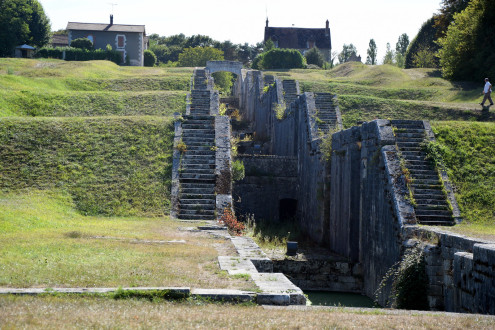
Les 7 écluses...
29170375744_bc05e73573_k
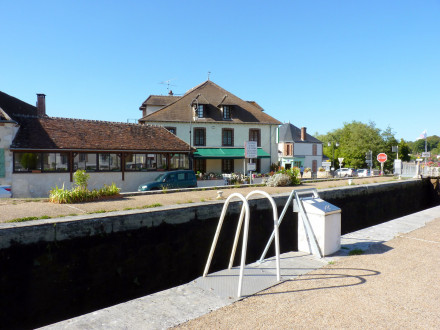
Auberge des 7 écluses.
29172317633_08c5a53694_k
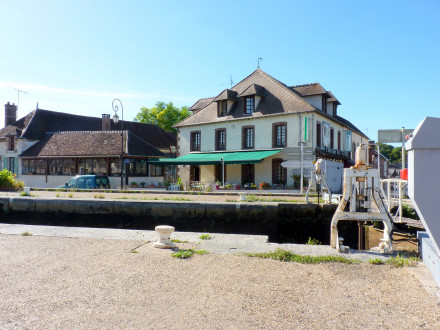
Auberge des 7 écluses.
29685267142_451f0fa75f_k
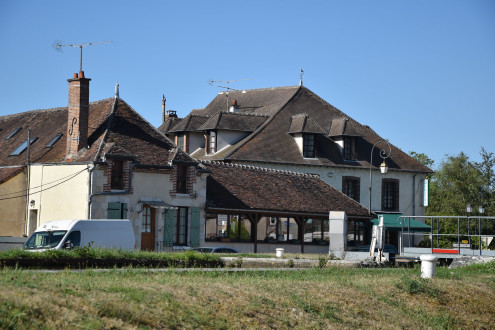
Ecluse.
29505551740_c98c4c0874_k
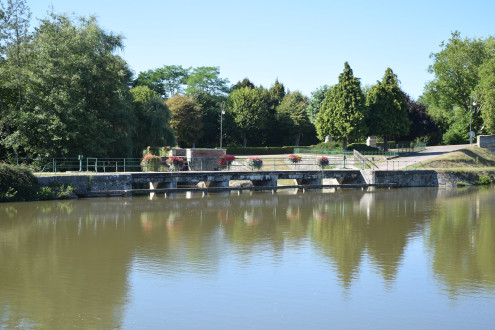
Ecluse
29797927275_c105d07584_k
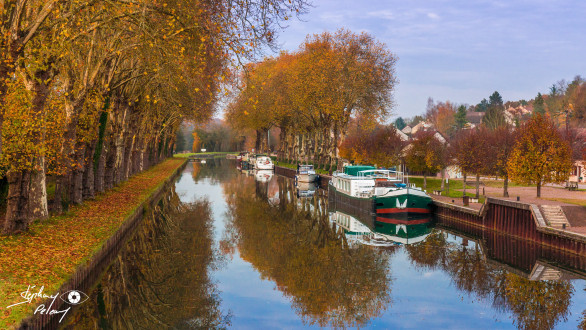
Rogny les 7 écluses en automne
Loiret France
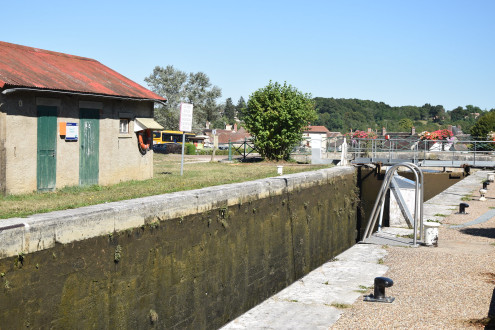
Rogny-les-sept-écluses.
29761797946_a3a47a2155_k
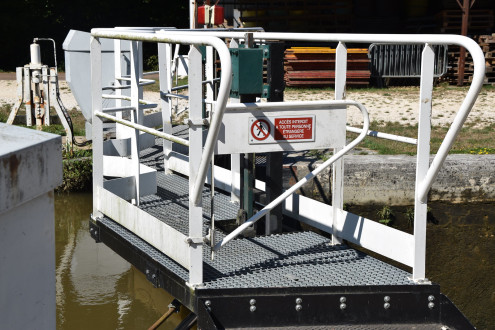
Rogny-les-sept-écluses.
29797558915_32a06738ff_k
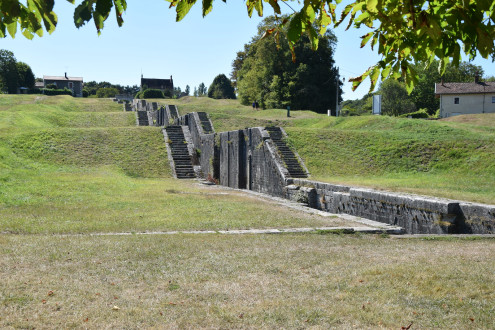
Rogny-les-sept-écluses.
29761759946_fb7117ad85_k
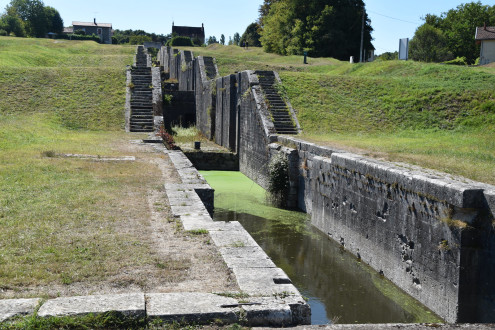
Rogny-les-sept-écluses.
29171904183_e6343278ff_k
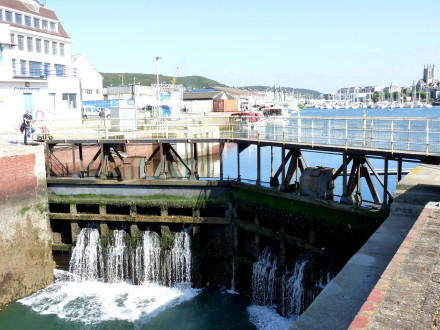
Fécamp - L'écluse
10295734225_cd8ea38162_k
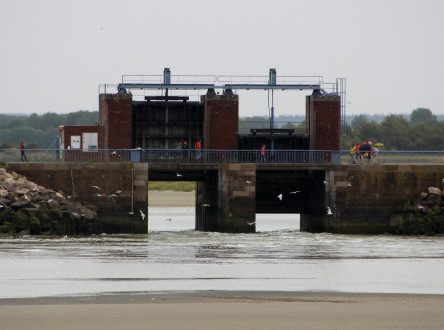
Le Crotoy - L'Ecluse de la Somme
39608009262_97dedb8ca9_k
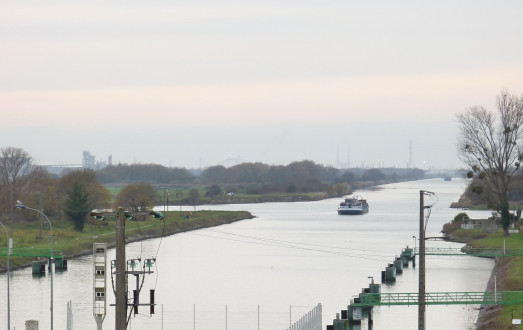
Tancarville - Perspective sur le canal
23544137595_561dd972ba_k
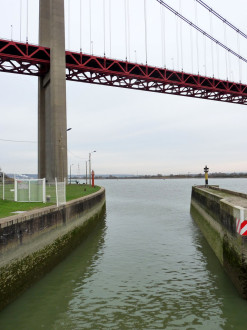
Tancarville - L'écluse sous le pont
23435589272_4bdd2b4f3d_k
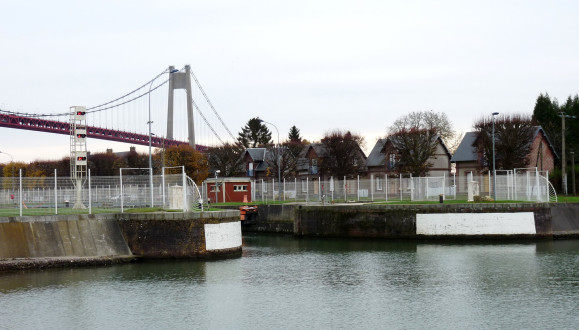
Tancarville - Ecluse et pont
22915880994_a92cb5a069_k
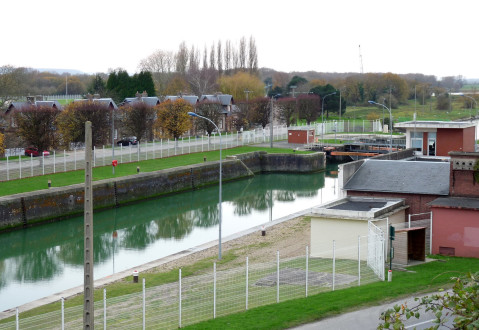
Tancarville - Ecluse
23518013356_89542cfce6_k
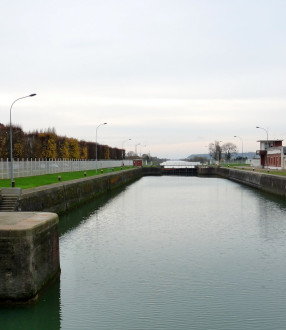
Tancarville - Canal
23462629081_87d96205c8_k
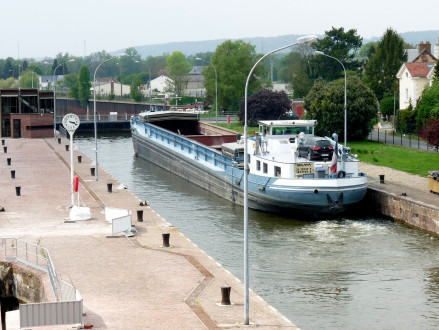
Amfreville-sous-les-Monts - Les Ecluses
18681829050_b04a01d7db_k
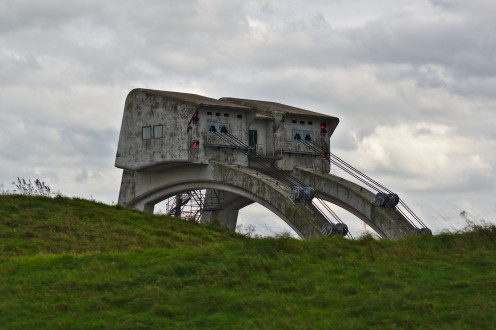
The Aliens are coming
23619576658_6869490844_k
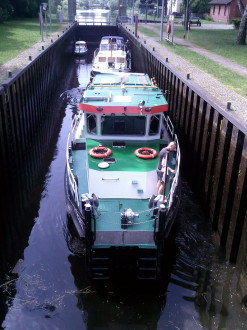
Wiesel
Schubboot Wiesel aus Geesthacht in Parchim
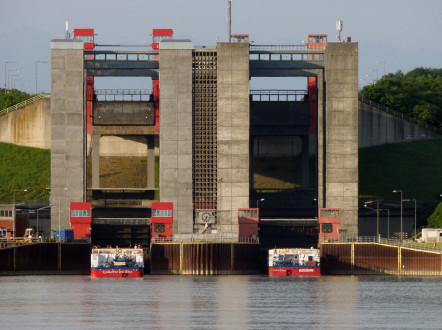
Katharina von Bora und Frederic Chopin
35053258720_835cd62363_k
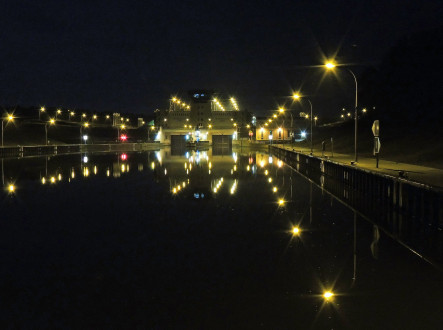
Schleuse Hohenwarthe
15983958776_1a04b65fee_k
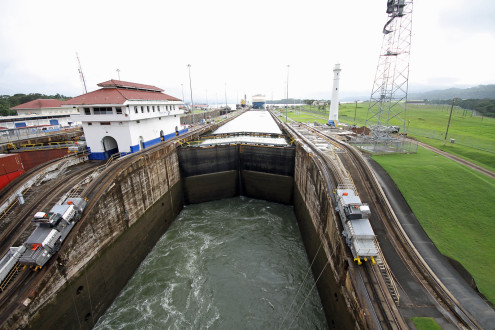
Panama Canal 2
39166708071_ea8f926391_k
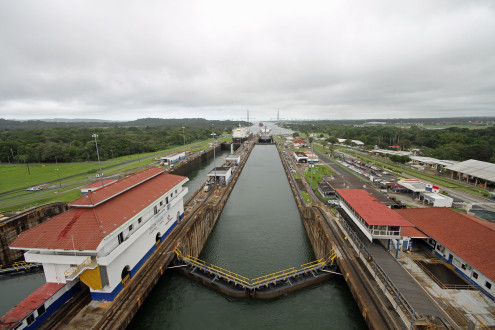
Panama Canal
Gatun Locks on the Panama canal
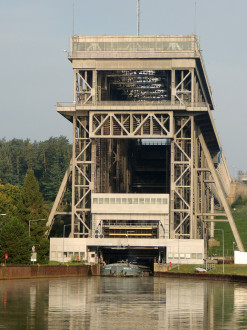
Nelly (ENI 02314263)
15186609942_28cd307893_k
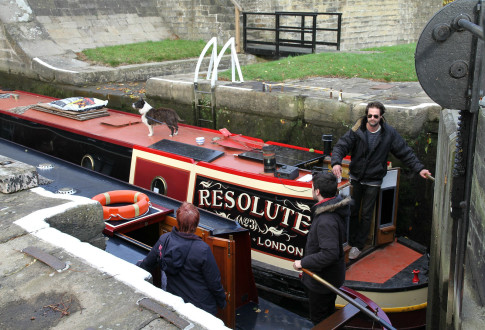
All hands (and paws) on deck when negotiating the lock
Bingley Five Rise Locks, Yorkshire, England
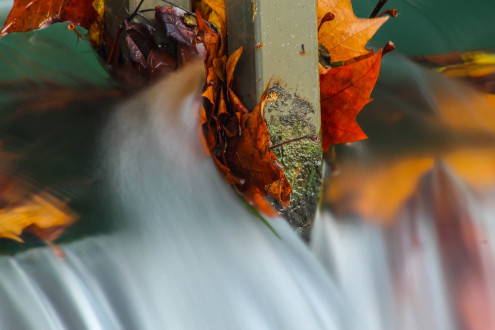
Autumn Leaves
feuilles d'automne
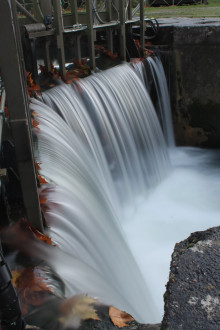
locks water
écluse
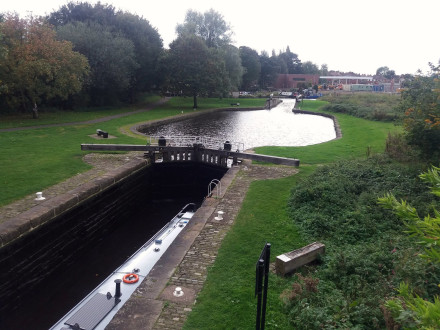
Fall Ing Lock Calder and Hebble Navigation Wakefield Yorkshire
37501963866_726eba4538_k
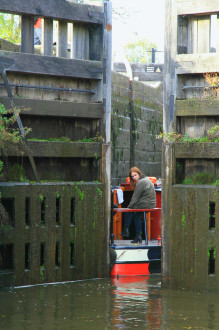
Lock gates start to close
Bingley Five Rise Locks, West Yorkshire, England. A staircase lock on the Leeds and Liverpool canal which are the steepest flight of locks in the UK with a gradient of 1:5, a rise of 18.03 meters over a distance of 98 meters.
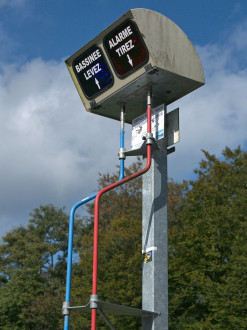
Schleusenbedienung Saarkanal
37483915100_887a9f2b40_k
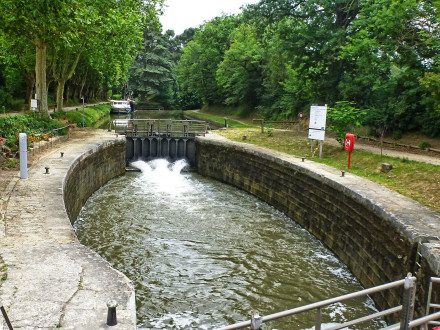
Canal du Midi, Ecluse Ocean
37987825412_83563e0165_k
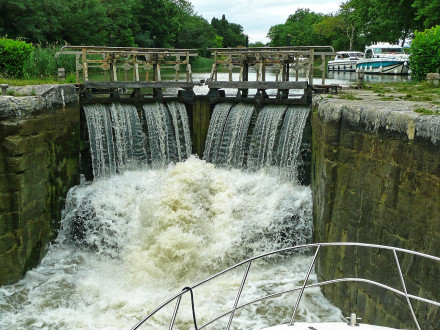
Canal du Midi, Ecluse Herminis
24144542648_dece9370fd_k
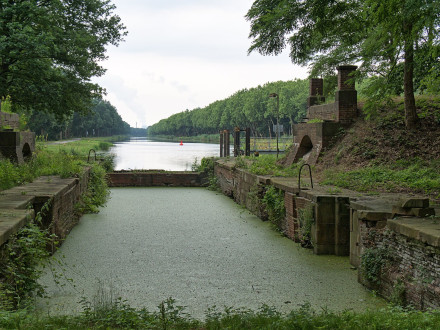
Reste einer Schleuse bei Osterbrock
vermutlich eine Schleuse des früheren Ems-Hase-Kanals, welcher weitgehend im Dortmund-Ems-Kanal aufgegangen ist. Blick über die verfallende Schleusenkammer und den Dortmund-Ems-Kanal in Richtung Lingen
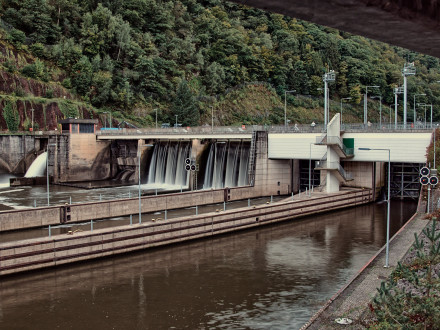
Schleuse Mettlach, Saar
Schleusenabmessungen Große Schleuse: Länge 190 m; Breite 12,0 m Kleine Schleuse: Länge 40 m; Breite 6,75 m Fallhöhe: 11,00 m Quelle; WSA-Saarbruecken.de
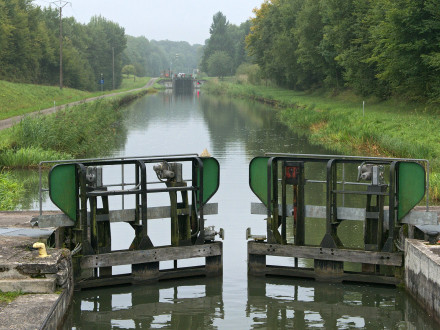
Schleusen am Saarkanal
Der Saarkanal (früher auch: Saar-Kohlen-Kanal, französisch Canal des Houillères de la Sarre) ist ein Schifffahrtskanal, der in der französischen Region Grand Est verläuft. Er verbindet den Canal de la Marne au Rhin (dt.: Rhein-Marne-Kanal) mit der kanalisierten Saar. Quelle: Wikipedia
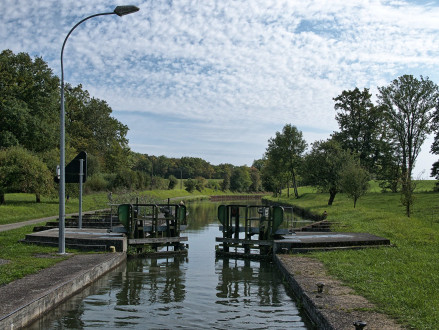
Schleuse am Saarkanal
Der Saarkanal (früher auch: Saar-Kohlen-Kanal, französisch Canal des Houillères de la Sarre) ist ein Schifffahrtskanal, der in der französischen Region Grand Est verläuft. Er verbindet den Canal de la Marne au Rhin (dt.: Rhein-Marne-Kanal) mit der kanalisierten Saar. Quelle: Wikipedia
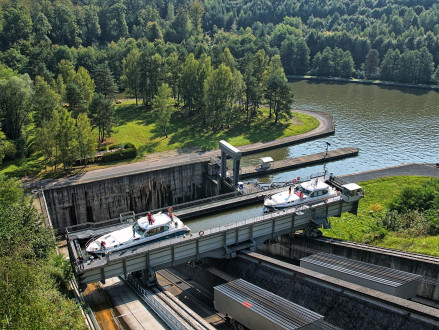
Schiffshebewerk Saint-Louis/Arzviller
Das Schiffshebewerk Saint-Louis/Arzviller (französisch Plan incliné de Saint-Louis/Arzviller) ist Teil des Rhein-Marne-Kanals. Es ist seit 1969 in Betrieb und ersetzt mit einem Höhenunterschied von 44,55 m 17 vormalige Schleusen zwischen Saint-Louis und Arzviller in Lothringen und dem Tal der Zorn. Quelle: Wikipedia
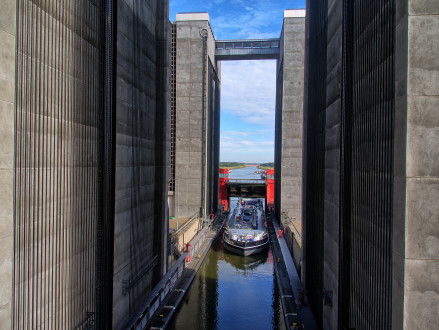
Schiffshebewerk Lüneburg-Scharnebeck
Das Schiffshebewerk Lüneburg gehört zur nördlichen der beiden Kanalstufen der Bundeswasserstraße Elbe-Seitenkanal... Der Elbe-Seitenkanal verbindet die Elbe bei Artlenburg mit dem Mittellandkanal bei Edesbüttel westlich von Wolfsburg. Das Hebewerk wurde 1974 als damals weltgrößtes am Fuß des Geestrandes zur Elbmarsch in Scharnebeck, nordöstlich von Lüneburg und neun Kilometer südlich der Elbe, gebaut. Quelle: Wikipedia
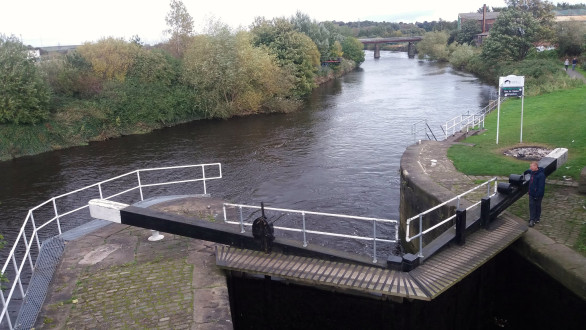
River Calder and Fall Ing Lock Wakefield Yorkshire
23697842048_66304edb0d_k
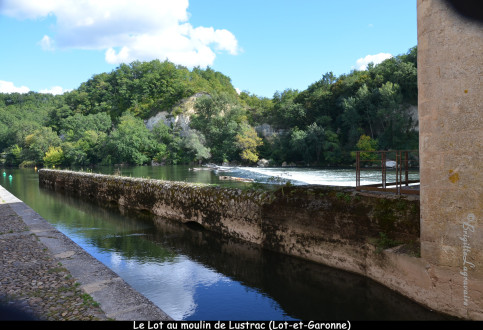
En approche du Quercy blanc, le Lot, l'écluse et le barrage au Moulin de Lustrac
2015-09-23-Lustrac (25)
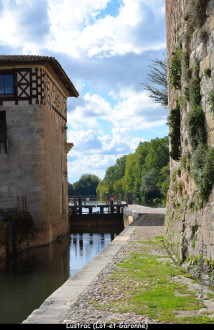
L'écluse sur le Lot entre le moulin et le château (Lustrac, Lot-et-Gar.)
2015-09-23-Lustrac (41)
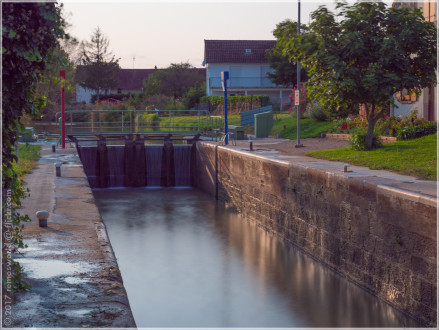
Hausbootferien 2017, St-Léger-sur-Dheune - Louhans, Schleuse vor "Fragnes" auf dem "Canal du Centre"
Schleuse vor "Fragnes" auf dem "Canal du Centre", Fragnes/Frankreich
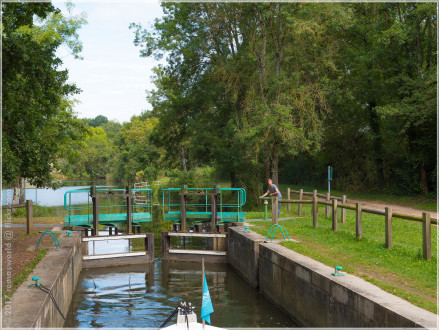
Hausbootferien 2017, St-Léger-sur-Dheune - Louhans, Schleuse auf der "La Seille"
Schleuse auf der "La Seille", /
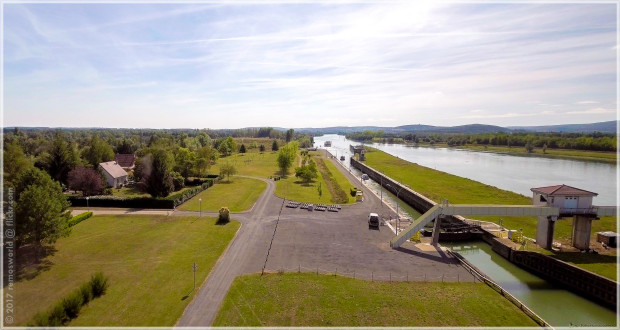
Hausbootferien 2017, St-Léger-sur-Dheune - Louhans, Schleuse bei "Ormes" auf der "Saône"
Schleuse bei "Ormes" auf der "Saône", Schleuse 185m lang/Frankreich
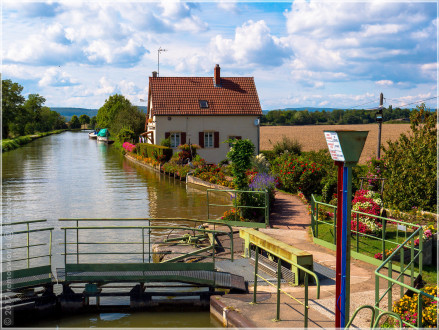
Hausbootferien 2017, St-Léger-sur-Dheune - Louhans, Canal du Centre
Canal du Centre, /Frankreich
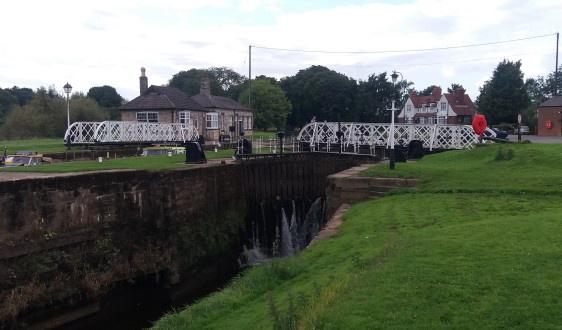
Naburn Lock River Ouse Navigation York Yorkshire
The Naburn Lock at the southern entrance/exit to the River Ouse. A weir was built in 1741 to provide water for a mill and the first lock was opened in 1757. A new larger lock was built alongside it in 1888.
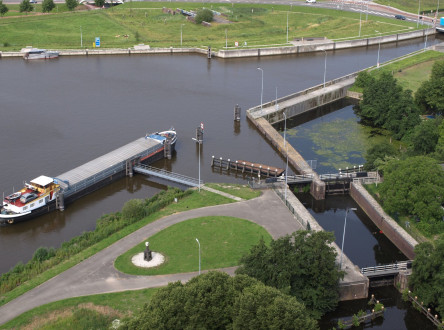
Uitzicht vanaf de "Tasmantoren" op de Driewegsluis, de verbinding tussen het Damsterdiep, het Van Starkenborghkanaal en het Eemskanaal.
36812973076_7be5b97286_k
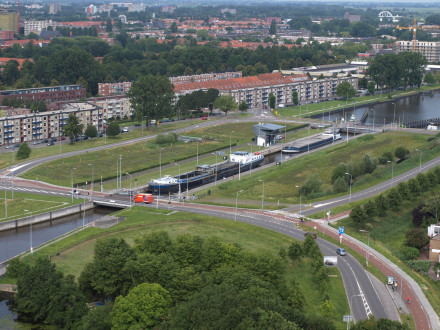
Uitzicht vanaf de "Tasmantoren" aan de Regattaweg in Groningen, op de Oostersluis, het Bedieningsgebouw van de sluis van architect René van Zuuk, en de Florakade.
Architect René van Zuuk: zoeken.hetnieuweinstituut.nl/nl/personen/detail/560a0bc6-... www.staatingroningen.nl/bedrijf/31/zuuk-rene-van
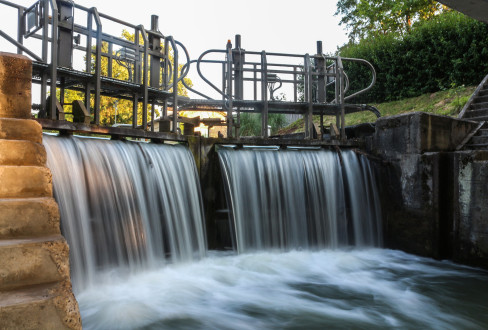
lock
écluse
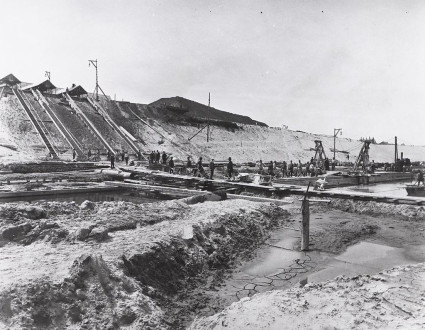
Betonstorting voor de sluis bij IJmuiden in 1891.
Bron: BG B14/782 (foto), De Nederlandse arbeidersbeweging tot 1918, Internationaal Instituut voor Sociale Geschiedenis, Amsterdam. Bouw van de Middensluis van IJmuiden (beeldbank.rws.nl, Rijkswaterstaat/Afdeling Multimedia Rijkswaterstaat) : beeldbank.rws.nl/MediaObject/Details/348853 Aanbesteding uitbreiding sluis- en havenwerken te IJmuiden. Provinciale Overijsselsche en Zwolsche Courant van 15-9-1888: resolver.kb.nl/resolve?urn=MMHCO01:000073548:mpeg21:a0010 "De nieuwe sluis te IJmuiden". Algemeen Handelsblad van 6-10-1889: resolver.kb.nl/resolve?urn=ddd:010973615:mpeg21:a0004 hdl.handle.net/21.12102/3f0f39ca-fb8f-11df-9e4d-523bc2e286e2 "De nieuwe sluis te IJmuiden". Algemeen Handelsblad van 21-5-1893: resolver.kb.nl/resolve?urn=ddd:010166304:mpeg21:a0007 "Sluis te IJmuiden". Algemeen Handelsblad van 16-8-1896: resolver.kb.nl/resolve?urn=ddd:010973843:mpeg21:a0099 "De opening van de Nieuwe Sluis te IJmuiden". Nieuwsblad van het Noorden van 15-12-1896: resolver.kb.nl/resolve?urn=ddd:010883644:mpeg21:a0006 hdl.handle.net/21.12102/5404f842-fb8f-11df-9e4d-523bc2e286e2 hdl.handle.net/21.12102/2e150938-fb8f-11df-9e4d-523bc2e286e2 hdl.handle.net/21.12102/4883b8fa-fb8f-11df-9e4d-523bc2e286e2 hdl.handle.net/21.12102/55bbaab8-fdee-a9a5-74d4-d788a09b3d09 web.archive.org/web/20161102091648/http://www.panoramio.c... www.flickr.com/photos/148859204@N07/34573163725/in/datepo... www.flickr.com/photos/148859204@N07/34476867570/in/datepo... www.flickr.com/photos/148859204@N07/33060517973/in/datepo... hdl.handle.net/21.12102/4304b154-fb8f-11df-9e4d-523bc2e286e2 hdl.handle.net/21.12102/430551a4-fb8f-11df-9e4d-523bc2e286e2 Bouw van de Zuidersluis in 1865-1876: hdl.handle.net/21.12102/53e782f8-fb8f-11df-9e4d-523bc2e286e2 Mijn grootvader Hans van der Woude (1892-1964) is in Velsen op de Heide geboren, als zoon van polderwerker/arbeider Minne Meindert van der Woude (1857-1942). Hij woonde met zijn gezin, schoonzus en zwager Hannes Hielkema (1860-1909) van 1-9-1891 tot 6-12-1897 in Wijk E nr. 65, later Straatweg 1 en Zeeweg 1: hdl.handle.net/21.12102/50d40a00-fb8f-11df-9e4d-523bc2e286e2 hdl.handle.net/21.12102/4700f57e-fb8f-11df-9e4d-523bc2e286e2 hdl.handle.net/21.12102/485a8e76-fb8f-11df-9e4d-523bc2e286e2 hdl.handle.net/21.12102/50d33116-fb8f-11df-9e4d-523bc2e286e2 hdl.handle.net/21.12102/50d36ad2-fb8f-11df-9e4d-523bc2e286e2 hdl.handle.net/21.12102/50d4a2f8-fb8f-11df-9e4d-523bc2e286e2 hdl.handle.net/21.12102/50e3f7b2-fb8f-11df-9e4d-523bc2e286e2 hdl.handle.net/21.12102/50e2ce14-fb8f-11df-9e4d-523bc2e286e2 hdl.handle.net/21.12102/50e3b6d0-fb8f-11df-9e4d-523bc2e286e2 In die periode werd de Middensluis (toen de grote sluis) gebouwd. Zijn broer Tjalling van der Woude (1860-1929) woonde met zijn gezin van 3-4-1891 tot 2-10-1893 op het adres E 245a in Velsen en voor 3-4-1891 in Wijk aan Zee en Duin Bij mijn grootouders thuis hing het portret van Pieter Jelles Troelstra in de woonkamer. Hij was badbroeder in het Academisch Ziekenhuis Groningen: web.archive.org/web/20170813171413/http://www.panoramio.c... web.archive.org/web/20161102091648/http://www.panoramio.c... "Groote Monster Meeting" in het lokaal (ook café genoemd) van H. Veltman, op de Heide, op 4-7-1886, georganiseerd door de Sociaal-Demokratische Bond (Niet goedgekeurd bij Kon. Besl. van 23 Maart 1884). P. van der Stad Jbz sprak over "Socialistenvervolging"; hij is Pieter van der Stad, machinist, fabrikant, geb. Zaandijk ca. 1850, ovl. Vlissingen 4-4-1905. Recht voor Allen van 30-6-1886: resolver.kb.nl/resolve?urn=MMIISG05:000089891:mpeg21:a0015 Sociaal-Demokratische Vereenigingen. Vergadering Tooneelvereeniging "De Tijdgeest" bij H. Veldman (ook Veltman), op de Heide. Hij is Hendrik Ernstes Veldman, schippersknecht, arbeider, kastelein, geb. Oldeboorn 8-12-1835, ovl. Haarlem 9-3-1910, trouwt Amsterdam 6-6-1860 Cornelia Wecker (ook Weckers), geb. Buiksloot 15-9-1831, ovl. Velsen 26-1-1914; zij woonde in Amsterdam op de Haarlemmerdijk 525 Kelder, de Zeedijk 31, de Kl. Kattenburgerstraat 705, de Grote Oostenbutgerstraat 72 en de Kleine Oostenburgerdwarsstraat 149. Zij vestigden zich op 6-9-1876 op de Heide op het adres E 210 (Kalverstraat 14), komende uit Assendelft; hun zoon Klaas, geb. Buiksloot 15-8-1864, woonde vanaf 24-9-1887 op het adres E 159 (Hoeksteeg 4). Recht voor Allen van 30-5-1885 en 20-10-1886: resolver.kb.nl/resolve?urn=MMIISG05:000090216:mpeg21:a0014 resolver.kb.nl/resolve?urn=MMIISG05:000089967:mpeg21:a0017 Openbare vergadering van de Soc. Dem. Bond bij de wed. Schipper, op de Heide op 15-12-1889. Recht voor Allen van 14-12-1889: resolver.kb.nl/resolve?urn=MMIISG05:000092861:mpeg21:a0012 Openbare vergadering in Beverwijk met W. Meng als spreker. Recht voor Allen van 6-2-1890: resolver.kb.nl/resolve?urn=MMIISG05:000090512:mpeg21:a0002 Openbare vergadering van de afd. Beverwijk op de hei bij Velsen, met Willem Frederik Meng als spreker. Recht voor Allen van 14-5-1890: resolver.kb.nl/resolve?urn=MMIISG05:000090722:mpeg21:a0004 Meng en Schingen Hagen in debat over sociaal-demokratie en demokratie. Recht voor Allen van 8-2-1890 en 6-3-1890: resolver.kb.nl/resolve?urn=MMIISG05:000090539:mpeg21:a0004 resolver.kb.nl/resolve?urn=MMIISG05:000090590:mpeg21:a0010 Willem Frederik Meng, predikant, redacteur van een tijdschrift, geb. Amsterdam 1-1-1843, trouwt Alblasserdam 11-7-1872 Margje Adriana Pijl, geb. Alblasserdam 10-03-1852, ovl. Bloemendaal 8-8-1934. Zie ook het verhaal over zijn moeder Johanna Meng-Gunter, ovl. Amsterdam 25-8-1913, oud 103 jaar en vijf mnd, de oudste inwoonster van Amsterdam, in het Rotterdamsch Nieuwsblad van 26-3-1910, de Provinciale Geldersche en Nijmeegsche Courant van 30-3-1910, Het nieuws van den dag: kleine courant van 25-3-1910 en 4-4-1910, en het Rotterdamsch ieuwsblad van 28-8-1913: resolver.kb.nl/resolve?urn=ddd:010197846:mpeg21:a0009 resolver.kb.nl/resolve?urn=MMRANM02:000009978:mpeg21:p002 resolver.kb.nl/resolve?urn=ddd:010108343:mpeg21:a0091 resolver.kb.nl/resolve?urn=ddd:010108761:mpeg21:a0070 resolver.kb.nl/resolve?urn=ddd:010295724:mpeg21:a0139 Zie ook Jan Meng van Atheneum Boekhandel (1969-1990) in Amsterdam: www.nrc.nl/nieuws/1990/07/07/jan-meng-over-een-gedroomde-... Vergaderingen van de Sociaal-Demokratische Bond ten huize van mej. G. Ranshuizen, op de Heide bij Velsen. Op 9-11-1890 kwam de Soc. Dem. Bond bijeen in de zaal van mejuffrouw Ranshuizen, op De Heide bij Velsen. Recht voor Allen van 13-11-1890: resolver.kb.nl/resolve?urn=MMIISG05:000092973:mpeg21:a0003 Op 15-6-1895 was Ferdinand Domela Nieuwenhuis als spreker aanwezig in een vergadering van de Sociaal-Demokratische Bond Afdeeling Beverwijk, in het lokaal van H. Ranshuizen in Velsen op De Heide: resolver.kb.nl/resolve?urn=MMIISG05:000091920:mpeg21:a0008 Op 17-4-1896 was er weer een meeting bij H. Ranshuizen op De Heide bij Velsen: resolver.kb.nl/resolve?urn=MMIISG05:000091713:mpeg21:a0021 resolver.kb.nl/resolve?urn=MMIISG05:000091983:mpeg21:a0009 resolver.kb.nl/resolve?urn=MMIISG05:000091678:mpeg21:a0012 Op 5-5-1889 sprak Ferdinand Domela Nieuwenhuis op een bijeenkomst van de Sociaal-Demokratische Bond Afdeeling Beverwijk in Velsen op De Heide. Recht voor Allen van 7-5-1889: resolver.kb.nl/resolve?urn=MMIISG05:000093107:mpeg21:a0004 Op 15-6-1895 sprak Ferdinand Domela Nieuwenhuis op een bijeenkomst van de Sociaal-Demokratische Bond Afdeeling Beverwijk, in het lokaal van H. Ranshuizen in Velsen op De Heide. In 1892 werd een bijeenkomst gehouden ten huize van L. Schingen Hagen in Beverwijk. Hij is de zwager van Ferdinand Domela Nieuwenhuis (1846-1919). Hij had een werf in Beverwijk. Hij is Lourens Hagen, landbouwer, geb. Beverwijk 28-1-1845, ovl. Beverwijk 12-7-1907, gehuwd met Berber Reitsma, geb. Leeuwarderadeel 30-9-1866, ovl. Geldrop 10-2-1933, zoon van Izaäc Schingen Hagen, koopman (1841), landbouwer, geb. Beverwijk 9-5-1812, ovl. Bloemendaal 21-1-1875, en van Adriana Schuitemaker, geb. Heemskerk 5-1-1813, ovl. Beverwijk 29-1-1889, dochter van onderwijzer Louwrens Schuitemaker. Lourens (Schingen) Hagen is een kleinzoon van Jan Hagen, broodbakker, geb. Meppel, ovl. Beverwijk 23-12-1857, oud 73 jaar, en van Antje Schingen, geb, Beverwijk, ovl. Beverwijk 8-5-1856, oud 72 jaar (haar geboorte- en 46-jarige trouwdag werd tevens haar sterfdag), dochter van Izaäk Schingen, ovl. Beverwijk 3-1-1816, oud 64 jaar, en van Adriana Phaar. Verkoop bij Executie van bouwland of tuingrond van landbouwer Isaäc Schingen Hagen in Beverwijk. Opregte Haarlemsche Courant van 1-9-1868: resolver.kb.nl/resolve?urn=ddd:010528339:mpeg21:a0020 Op 8-6-1893 vond de openbare verkoping plaats van vier huizen en erven in het "Friesche Koffiehuis" van de heer Douma, op De Heide te Velsen. Haarlem's Dagblad van 25-5-1893, blz. 4. Dit Koffiehuis was voor Douma de herberg "De Laatste Stuiver" van mevrouw Behouden en de kastelein was Hendrik Gerardus Hellings, en na Douma het café Snijders: hdl.handle.net/21.12102/4f386ed4-fb8f-11df-9e4d-523bc2e286e2 Vereeniging Hulp en Bijstand gaat rond met de "rommelwagen" ter inzameling van goederen voor de armen op de Heide. Haarlem's Dagblad van 3-10-1894 blz. 1 en 6-6-1895, blz. 1. Op 1-5-1894 vierden de Timmerliedenvereeniging "Verbetering zij ons doel" en de Sociaal-Democratische Bond, Afd. Beverwijk, hun Meifeest in lokaal "De Tijdgeest" op de Heide, met "de burgeres Kommers" uit Amsterdam als spreekster. Haarlem's Dagblad van 1-5-1894, blz. 1. Zij is Maria Elizabeth Kommers, geb. IJzendijk 7-2-1873, ovl. Amsterdam 3-10-1940. Recht voor Allen is uitgegeven door de socialist en latere anarchist Ferdinand Domela Nieuwenhuis (1846-1919), zoon van Ferdinand Jacobus Domela Nieuwenhuis en Henriëtta Frances Berrij. Hij was weduwnaar van Egberta Johanna Godhelp, Johanna Lulofs, Johanna Adriana Verhagen en Johanna Frederika Schingen Hagen, geb. Beverwijk 14-9-1843, ovl. Beverwijk 27-2-1884, dochter van Izaäc Schingen en Adriana Schuitemaker. Uit het huwelijk met Johanna Frederika Schingen Hagen is op 20-2-1884 in Den Haag een zoon geboren. Recht voor Allen van 23-2-1884: resolver.kb.nl/resolve?urn=MMIISG05:000090170:mpeg21:a0013 Zijn zoon Theodoor Nieuwenhuis werd op 17-3-1872 in Beverwijk geboren. Hij stamt uit het Deense predikantengeslacht Nyegaard; zijn overgrootvader vestigde zich in Nederland: “Het leven van Domela Nieuwenhuis”. Ferdinand Domela Nieuwenhuis Museum: www.mokums.nl/copy/domela.pdf awn-beverwijk-heemskerk.nl/pdf/domelanieuwenhuis.pdf Domela Nieuwenhuis?, door Ewoud Sanders in het NRC van 27 april 1991: www.nrc.nl/nieuws/1991/04/27/domela-nieuwenhuis-6965273-a... “Ferdinand Domela Nieuwenhuis. Een romantische revolutionair”, door Jan Willem Stutje; Antwerpen: Houtekiet, Gent: Amsab, Amsterdam: Atlas Contact, 2012 (ISBN 978 90 8704 281 3). Recensie van Bert Altena, Erasmus Universiteit Rotterdam: www.rug.nl/research/biografie-instituut/recensiebmgn128(2013)2.pdf “Domela was een platte antisemiet”. Interview met biograaf Jan Willem Stutje, door Anne Burgers. Historisch Nieuwsblad van vrijdag 25 mei 2012: www.historischnieuwsblad.nl/nl/nieuws/18785/domela-was-ee... "Ferdinand Domela Nieuwenhuis. De Jezus van het Nederlandse proletariaat", door Elsbeth Etty in het NRC van 19 juni 1993, n.a.v. het verschijnen van de biografie "Domela, een hemel op aarde. Leven en streven van Ferdinand Domela Nieuwenhuis", door Jan Meyers, De Arbeiderspers 1993 (ISBN 90 295 3114 2): www.nrc.nl/nieuws/1993/06/19/ferdinand-domela-nieuwenhuis... "Domela valt van zijn voetstuk. Ferdinand Domela Nieuwenhuis, de ooit aanbeden grondlegger van het Nederlandse socialisme, was groots en kleinzielig tegelijk", door Robin te Slaa in De Volkskrant van 21-7-2012: www.volkskrant.nl/archief/domela-valt-van-zijn-voetstuk~a... www.parlement.com/id/vg09lkzxa0t1/f_domela_nieuwenhuis socialhistory.org/bwsa/biografie/nieuwenhuis-f ferdinanddomelanieuwenhuis.nl/domela-nieuwenhuis/ Was Domela een populist?, door Rob Hartmans, Historisch Nieuwsblad 9/2009: www.historischnieuwsblad.nl/nl/artikel/26098/was-domela-e... Archief Ferdinand Domela Nieuwenhuis: hdl.handle.net/10622/ARCH00483 socialhistory.org/en/search/node/nieuwenhuis%20 socialhistory.org/nl/nieuws/recht-voor-allen-delpher hdl.handle.net/10622/AB584063-B944-43E2-ABAF-1473B490DAA4 Het weekblad Recht voor Allen: tussentaalenbeeld.nl/A60b4.htm De kunstenaar César Domela Nieuwenhuis, geb. Amsterdam 15-1-1900, ovl. Parijs 30-12-1992, is een zoon van Ferdinand Domela Nieuwenhuis: rkddb.rkd.nl/rkddb/inventar/Domela_Archief.pdf; www.gemeentemuseum.nl/nl/tentoonstellingen/cesar-domela H. Ranshuizen is zeer waarschijnlijk Hendrik Adrianus Ranshuizen (Ranshuijsen), stoker, machinist, geb. Utrecht 12-11-1856, ovl. Velsen 6-2-1906. Hij stond in Amsterdam, met zijn drie broers Johannes Hendricus, Johannes Ignatius Lambertus en Ferdinandus Hendricus Gerardus, ingeschreven in het gezin van zijn stiefvader Dirk Eikelenborg, timmerman, geb. Zeist 22-5-1825, en moeder Maria Eva de Ras, geb. Utrecht 15-11-1829, weduwe van Ferdinandus Hendricus Ranshuijsen, geb. Amsterdam ca. 1813, ovl. Utrecht 4-12-1862, zoon van Hendricus Ranshuijsen en Engelina Elisabeth Ader, kleinzoon van Hendrik Ranshuijsen en Alida Takke. Hendrik Ranshuijsen en Engelina Elisabeth Ader gingen op 26-5-1809 in Amsterdam in ondertrouw; hij was toen 29 jaar, wees, en woonde toen in de Reguliersdwarsstraat 118. Hendricus Ranshuijsen is op 19-5-1810 op het St. Anthonis Kerkhof in Amsterdam begraven. Engelina Elisabeth Ader hertrouwde in Amsterdam op 26-6-1814 met wagenmaker Adrianus Bouter, geb. Amsterdam ca. 1779. Op 27-1-1797 gingen Ferdinandus Ranshuijsen en Maria Geertruij Wierdels in Amsterdam in ondertrouw; hij was toen 21 jaar, wees, en woonachtig op de Botermarkt, en zij was 25 jaar. Zijn naam werd ook geschreven als Randshuizen. Zo werd Ferdinand Henricus Randshuizen op 21-11-1797 gedoopt in de RK Kerk De Papegaai, zoon van Ferdinand Randshuizen en Maria Wierdels en met Ferdinand Wierdels en Maria Gloremin als getuigen. En op 6-4-1800 werd hun zoon Bernardus Franciscus in die kerk gedoopt, met Ferdinand Wierdels en Anna Takkee als getuigen. Ferdinand Ranshuijzen, smid, kruidenier, ged. Amsterdam 21-11-1797, ovl. Wervershoof 16-7-1882, weduwnaar van Catharina Gerarda van Seellt, gehuwd met Johanna Maria Bosch, geb. 1811, ovl. Boxmeer 14-11-1850, woonde als rentenier in de Keistraat 58 in Boxmeer, met de kinderen Johannes (1837), Ferdinand (1839), Elisabeth (1835) en Henricus (1832), kamerbehangersleerling. Zijn zoon Joannes Franciscus Ferdinandus Randshuizen, geb. Amsterdam 14-1-1837, landman, makelaar, tr. Wijde Wormer 28-8-1862 Pieternelle Klaver, geb. Wijdewormer 13-3-1841. Op 24-5-1805 gingen Ferdinand Ranshuyzen, weduwnaar van Maria Geertruyd Wierdels, en Johanna Engelina Geertruda Ader, in Amsterdam in ondertrouw; hij woonde toen op de Botermarkt naast de blikslager. Uit dit huwelijk: Engelina Alida Franciska Ranshuizen, geb. Amsterdam ca. 1813, ovl. Hoorn 9-11-1847, echtgenote van tabaksverkoper Pieter Kaag, en Henricus Wilhelmus Ranshuizen, ged. in de RK Kerk De Papegaai op 14-6-1810, met Hendrik Ranshuizen en Catharina Ader als getuigen. Pastoor H.W. Ranshuijsen bericht over het overlijden van zijn moeder Joanna Engelina Gertruida Ader in De Tijd van 27-11-1869: resolver.kb.nl/resolve?urn=ddd:010262912:mpeg21:a0053 De ZeerEerwaarden Heer Henricus Wilhelmus Ranshuijsen overleed op 3-3-1885. De Maasbode van 6-3-1885: resolver.kb.nl/resolve?urn=MMKB04:000163344:mpeg21:a0015 Hendrik Adrianus Ranshuizen/Ranshuijsen trouwde in Velsen op 9-11-1882 met Borghardina Gerhardina Kwakkestein, geb. Haarlemmermeer 11-4-1863, ovl. Velsen 24-9-1941, dochter van bakker Maghiel Kwakkestein. Zij kregen negen kinderen, waarvan zes zeer jong zijn overleden. Hun dochter Johanna Hendrika Ranshuijsen trouwde drie keer, en de drie mannen waren stoker van beroep. Hun zoon Jacobus Leonardus Ranshuijsen, geb. in Amsterdam, overleed op 9-3-1924 in Velseroord, oud 23 jaar. In het overlijdensbericht, geplaats door zijn moeder en stiefvader, drie zussen/zwagers en zijn verloofde, staat het adres Willebrordstraat E 17. IJmuider Courant van 12-3-1924, blz. 3. Hendrik Adrianus Ranshuijsen verhuisde op 21-7-1883 van Amsterdam naar Velsen. Het gezin woonde in de periode 21-7-1883 tot 27-1-1898 op het adres C 387 in Velsen. Op 27-1-1898 verhuisde het gezin terug naar Amsterdam, en op 31-8-1905 weer naar Velsen (Breesaapstraat 7c in IJmuiden). Afbeeldingen Breesaapstraat: hdl.handle.net/21.12102/46424be2-fb8f-11df-9e4d-523bc2e286e2 hdl.handle.net/21.12102/4e607d9e-fb8f-11df-9e4d-523bc2e286e2 hdl.handle.net/21.12102/15495634-fb8f-11df-9e4d-523bc2e286e2 hdl.handle.net/21.12102/4e6178ca-fb8f-11df-9e4d-523bc2e286e2 In Amsterdam en Velsen was hij stoker van beroep en zijn vrouw winkelierster in kruidenierswaren (Bethaniënstraat 19hs, de Wittenstraat 49-2, Prinsengracht 304hs en de Wittenkade 46c-2). Na het overlijden van Hendrik Adrianus Ranshuizen (Ranshuijsen), hertrouwde Borghardina Gerhardina Kwakkestein in Velsen op 31-10-1907 met Karel Gregorius Kruse, stoker, machinist Ver. IJsfabriek, geb. Den Helder 16-8-1879, ovl. Amsterdam 15-7-1962. In de periode 1908-1941 woonden zij in Velsen aan de Kanaalweg 6a, Willebrordstraat 79, Bothastraat 2rd, Kanaalstraat 22 en 30, en weer in de Willebrordstraat 17. Eind 1934 verkocht Borghardina Gerhardina Kwakkestein het perceel in de Gemeente Velsen, Afd. IJmuiden, Sectie M 3273, voor f 350 aan de Gemeente Velsen. IJmuider Courent van 14-12-1934, blz. 1: hdl.handle.net/21.12102/47de2994-fb8f-11df-9e4d-523bc2e286e2 hdl.handle.net/21.12102/47db1bc8-fb8f-11df-9e4d-523bc2e286e2 hdl.handle.net/21.12102/47de5cac-fb8f-11df-9e4d-523bc2e286e2 hdl.handle.net/21.12102/49284942-fb8f-11df-9e4d-523bc2e286e2 hdl.handle.net/21.12102/47f9122c-fb8f-11df-9e4d-523bc2e286e2 hdl.handle.net/21.12102/4f393c24-fb8f-11df-9e4d-523bc2e286e2 hdl.handle.net/21.12102/4f390b32-fb8f-11df-9e4d-523bc2e286e2 hdl.handle.net/21.12102/47ce0c12-fb8f-11df-9e4d-523bc2e286e2 hdl.handle.net/21.12102/26860b22-fb8f-11df-9e4d-523bc2e286e2 hdl.handle.net/21.12102/50b0e44e-fb8f-11df-9e4d-523bc2e286e2 hdl.handle.net/21.12102/4303f516-fb8f-11df-9e4d-523bc2e286e2 hdl.handle.net/21.12102/50b168d8-fb8f-11df-9e4d-523bc2e286e2 hdl.handle.net/21.12102/50b12918-fb8f-11df-9e4d-523bc2e286e2 hdl.handle.net/21.12102/45bf4bca-fb8f-11df-9e4d-523bc2e286e2 hdl.handle.net/21.12102/4f404168-fb8f-11df-9e4d-523bc2e286e2 hdl.handle.net/21.12102/4f3ef88a-fb8f-11df-9e4d-523bc2e286e2 hdl.handle.net/21.12102/4f3ea79a-fb8f-11df-9e4d-523bc2e286e2 Broers van Hendrik Adrianus Ranshuizen/Ranshuijsen: Johannes Ignatius Lambertus Ranshuijsen, machinist, geb. Utrecht 2-2-1858, trouwt Amsterdam 1-3-1882 Maria Catharina Elisabeth Volkamp, geb. Amsterdam 13-5-1854, ovl. Haarlem (Hazepaterslaan) 26-4-1914, oud 59 jaar. Hun dochter Clara Josina Ranshuijsen, geb. Amsterdam 28-2-1897, trouwde Amsterdam 7-8-1919 Jan Kooij, salonbediende, schipper, los werkman, controleur havenbedrijf en arbeider zeepfabriek, geb. Gouda 22-11-1889, zoon van caféhouder Gerrit Kooij. Clara Josina woonde van 4-4-1916 tot 16-10-1917 in Velsen. Jan Kooij zat in 1916 in het Kamp van Zeist: fotoarchiefjkooij.blogspot.nl/ Zij verhuisden in 1923 van Amsterdam naar Vlaardingen. Johannes Ignatius Lambertus Ranshuijsen's zoon Ferdinandus Hendricus Ranshuijsen, machinist, geb. Amsterdam 30-1-1885, en schoondochter Magdalena Bernardina Wattenberg, geb. Amsterdam 21-5-1885, dochter van Bernard Friedrich Wilhelm Wattenberg en Magdalena Aletta Kits, plaatsten op 24-5-1914 een overlijdensbericht in de De Surinamer: nieuws- en advertentieblad van 31-5-1914: resolver.kb.nl/resolve?urn=ddd:011216648:mpeg21:a0047 Zij hebben in Velsen/IJmuiden (in 1907 in de Adrianastraat 37c), Paramaribo en in Belgisch Congo gewoond en gewerkt. In 1920 verhuisden zij van Amsterdam naar Vlaardingen (Parallelweg). Johannes Ignatius Lambertus Ranshuijsen's zoon Johannes Ranshuijsen, machinist, geb. Dordrecht (Riedijkstraat 5) 12-9-1887, tr. Amsterdam 30-1-1913 Frederika Wilhelmina Stok, geb. Amsterdam 21-4-1887, dochter van diamantslijper Jan Stok. Hun zoon Jan Frederik Hendrik Ranshuijsen, geb. 29-3-1925, overleed in Vlaardingen op 24-4-2000, weduwnaar van Adriana van Toor (1926-1999). Hun zoon Johannes (John) Ranshuijsen, geb. Vlaardingen 25-11-1954, ovl. Rotterdam 9-1-2004, was raadslid en wethouder in Vlaardingen. "Politiek huwelijk in Vlaardingen". De Telegraaf van 13-2-1987: resolver.kb.nl/resolve?urn=ddd:011207426:mpeg21:a0199 "Wat is er aan de hand in Vlaardingen-land?". Het Vrije Volk: democratisch-socialistisch dagblad van 22-11-1986: resolver.kb.nl/resolve?urn=ddd:010949039:mpeg21:a0367 Ferdinandus Hendricus Gerardus Ranshuijsen, varensgezel (1890), zeeman, geb. Utrecht 2-11-1859, ovl. Amsterdam 29-12-1922, trouwt Amsterdam 2-10-1890 Jacoba Angenis Moring, geb. Amsterdam ca. 1861, ovl. Amsterdam 5-9-1937. Hun zoon Ferdinandus Hendricus Gerardus Ranshuijsen, geb. Amsterdam 7-2-1903, ovl. Amsterdam 23-8-1939 was los werkman. Johannes Hendricus Ranshuijsen, stoker, geb. Utrecht 19-1-1863, ovl. Amsterdam 29-3-1932, trouwt Amsterdam 5-8-1885 Alida Johanna Maria Ruijs, geb. Amsterdam 26-5-1861, ovl. Amsterdam 10-7-1930. Hun zoon Gerrit, geb. Amsterdam 15-3-1899, ovl. Amsterdam 19-8-1939, was bankwerkdraaier, en hun zoon Ferdinandus Hendricus, geb. Amsterdam 17-7-1902, ovl. Amsterdam 8-3-1958, was adjudant van Gemeentepolitie. De eerste Ranshuijsen in ons land lijkt Hendrik Ranshuisen/Ransuijsen, van Walbeek, Rooms, 25 jaar, ouders overleden, woonachtig in de Bakkerstraat in Amsterdam, die op 10-4-1772 in Amsterdam in ondertrouwen ging met Alida (Bernardina) Takke, van Amsterdam, Rooms, 26 jaar, woonachtig in de Kalverstraat; Hendrik had Evert De Wolf als getuige meegenomen. Ferdinand Takke (Tacke), afkomstig uit Gemer (Ghemen), Rooms, woonachtig in de Kalverstraat, ging op 29-8-1749 in Amsterdam, als weduwnaar van Geertruij Brunnink (ook Bruninghuijs), in ondertrouw met Maria Priekel (ook Preekel), afkomstig uit Warendorp, oud 34 jaar, woonachtig op de Keizersgracht. Op 19-4-1765 ging hij als weduwnaar van Maria Prekel in Amsterdam in ondertrouw met Anna Catarina Hoberg, oud 43 jaar, Rooms, afkomstig van Den Ham, en woonachtig op de Heiligeweg in Amsterdam; haar zus Catharina Hoberg was haar getuige. Walbeek is vermoedelijk het dorp Walbeck in het Land van Gelre. "Overkwartier van Gelre": www.overkwartiervangelre.nl/beginpagina-startseite/geschi... "Nieuwe geographie, of aardrijksbeschrijving", Volume 5, door Anton Friedrich Buesching; Amsterdam/Utrecht MDCCLXVI: books.google.be/books?id=DRdiAAAAcAAJ&pg=PA2441&d... Google Books: www.google.be/search?q=heer+van+walbeck&hl=nl&tbm... Hun zoon Ferdinandus werd op 11-5-1776 RK gedoopt in de Kerk 't Boompje in Amsterdam, met Ferdinandus Takke en Cathrina Hoberg als getuigen. Op 14-5-1778 kocht Hendrik Ranshuijsen, echtgenoot van Alida Takke, een 1/2 huis en erf, tussen Bakkersstraat en Balk in ’t Oogsteeg, aan het Rembrandtplein (toen Botermarkt) in Amsterdam, van de Erven Ferdinand Takke, echtgenoot van Anna Catharina Hoberg. Op 14-11-1805 kocht Ferdinand Ranshuijsen een Huis en erf, tussen Bakkersstraat en Balk in 't Oogsteeg aan het Rembrandtsplein (straatnaam in bron: Botermarkt) in Amsterdam, van de Erven Alida Takke, wed. Hendrik Ranshuijsen. Afwikkeling van de nalatenschap van Alida Takke, weduwe van Hendrik Ranshuijsen. Amsterdamse Courant van 15-12-1796: resolver.kb.nl/resolve?urn=ddd:010718329:mpeg21:a0008 Op 24-1-1765 kocht Ferdinand Takke een Huis en erf in de Goudsbloemstraat ZZ , het tweede huis bewesten de eerste Goudsbloemdwarsstraat, in Amsterdam, van de Erven IJda Fonteijn, wed. van Dirk Korff. Op 20-2-1765 kocht hij een Huis en erf in de Sint Jorissteeg (straatnaam in bron: Borenmakerssteeg ZZ), het derde huis van het Rokin, van de Erven Anna (van) Tuijle wed. van Hendrik Tuijnman. Op 29-4-1774 verkocht hij dat huis aan Anthonij Raebelink. Op 15-2-1674 ging Anna Margreta Ruijs, eerdere echtgenote van Hendrik Ranshuijsen, in Amsterdam in ondertrouw met Barent Outhuijsen. Zie ook Antonius Ferdinandus Ranshuijsen, geb. Amsterdam 1824, ovl. Nibbixwoud 2-10-1893, pastoor in de Sint Werenfriduskerk in Wervershoof, zoon van Jan Ranshuijsen en Maria Smedding: wervershoof.rkregiowh.nl/de-kerk/100-jaar-werenfriduskerk... www.westfriesefamilies.nl/jaarverslagen/jaarverslag2007.php Familieberichten in De Tijd van 14-11-1893 en in De Maasbode van 22-2-1877: resolver.kb.nl/resolve?urn=ddd:010407084:mpeg21:a0064 resolver.kb.nl/resolve?urn=MMKB04:000164340:mpeg21:a0016 Recht voor Allen van 9-7-1893 en 16-7-1893: resolver.kb.nl/resolve?urn=MMIISG05:000091348:mpeg21:a0006 resolver.kb.nl/resolve?urn=MMIISG05:000091351:mpeg21:a0015 Recht voor allen van 8-2-1890: resolver.kb.nl/resolve?urn=MMIISG05:000090539:mpeg21:a0004 "Recht voor Allen" van 7-4-1890, 9-5-1890, 14-5-1890, 4-7-1890, 20-9-1890, 10-11-1890, 18-1-1891, 20-2-1891, 11-3-1891. 3-5-1891, 10-4-1892, 4-2-1892, 10-6-1892, 19-6-1892, 5-8-1892, 14-8-1892, 1-2-1893, 27-12-1893, 30-3-1894, 14-6-1895, 8-11-1895 en 26-1-1896: resolver.kb.nl/resolve?urn=MMIISG05:000090640:mpeg21:a0025 resolver.kb.nl/resolve?urn=MMIISG05:000090715:mpeg21:a0012 resolver.kb.nl/resolve?urn=MMIISG05:000090722:mpeg21:a0004 resolver.kb.nl/resolve?urn=MMIISG05:000090845:mpeg21:a0008 resolver.kb.nl/resolve?urn=MMIISG05:000090697:mpeg21:a0012 resolver.kb.nl/resolve?urn=MMIISG05:000092970:mpeg21:a0007 resolver.kb.nl/resolve?urn=MMIISG05:000092927:mpeg21:a0012 resolver.kb.nl/resolve?urn=MMIISG05:000090757:mpeg21:a0010 resolver.kb.nl/resolve?urn=MMIISG05:000090799:mpeg21:a0008 resolver.kb.nl/resolve?urn=MMIISG05:000091211:mpeg21:a0004 resolver.kb.nl/resolve?urn=MMIISG05:000091129:mpeg21:a0013 resolver.kb.nl/resolve?urn=MMIISG05:000090856:mpeg21:a0014 resolver.kb.nl/resolve?urn=MMIISG05:000091183:mpeg21:a0014 resolver.kb.nl/resolve?urn=MMIISG05:000091187:mpeg21:a0005 resolver.kb.nl/resolve?urn=MMIISG05:000091157:mpeg21:a0013 resolver.kb.nl/resolve?urn=MMIISG05:000091207:mpeg21:a0019 resolver.kb.nl/resolve?urn=MMIISG05:000091410:mpeg21:a0013 resolver.kb.nl/resolve?urn=MMIISG05:000091421:mpeg21:a0009 resolver.kb.nl/resolve?urn=MMIISG05:000091462:mpeg21:a0007 Hop Hop Hop. Hangt de socialisten op! Een documentaire over het opkomende socialisme in de jaren tachtig, ontleend aan Recht voor Allen, samengesteld door Leonard de Vries en met een voorwoord van prof. dr. Fr. de Jong Edz.; Polak & van Gennip 1967. www.regiocanons.nl/noord-holland/onderwijscanon-velsen/no... "Sluizen en gemalen in het Noordzeekanaal. Anderhalve eeuw ontwerpen, bouwen en vernieuwen", door G.J. Arends; Uitgeverij Matrijs (ISBN 90 5345 184 6). "De weg naar zee. 125 jaar kunstwerken aan de monding van het Noordzeekanaal", door Dap Hartmann, NRC Handelsblad Wetenschap & Onderwijs (Techniek) van zaterdag 8-12-2001 (met foto van de bouw van de Middensluis). "Velsen: grepen uit de geschiedenis van een oude woonplaats in Kennemerland", door Hendrik Joan Calkoen; Vermande Zonen, 1967. Maandblad Amstelodamum, Volume 7, 1920. Van jongens-met-de-schop tot heel grote baggeraars. Zonder de baggermannen van Bos, Kalis en al die andere pioniers waren grote stukken Nederland niet veilig geweest of hadden zelfs niet bestaan. De geschiedenis van de branche is nu opgetekend in het boek ‘Grondleggers’. Trouw, Koos Schwartz, 23 november 2018: www.trouw.nl/home/van-jongens-met-de-schop-tot-heel-grote... Sluisdeur van 70 meter komt aan in IJmuiden. De oude Noordersluis in IJmuiden is zo'n honderd jaar oud en moet worden vervangen. Schepen worden steeds groter en dankzij de nieuwe sluis kunnen grotere zeeschepen straks nog steeds naar de haven van Amsterdam varen. De nieuwe sluis moet 70 meter breed, 500 meter lang en 18 meter diep worden. Rijkswaterstaat zei eerder dat het de grootste sluis ter wereld zou worden. In dit jaar had de sluis af moeten zijn, maar de verwachting is nu dat de eerste schepen pas in januari 2022 van de sluis gebruik kunnen maken. Het project is veel duurder geworden dan de bedoeling was. Er waren meerdere keren aanpassingen in de constructie nodig. De sluisdeuren komen uit Zuid-Korea. Ze kwamen op 6 december aan in Nederland. 44 dagen deden ze erover om in Rotterdam te komen, meldt NH Nieuws. Gisteren werd de eerste deur door een sleepboot opgehaald bij de Maasvlakte. Die heeft het gevaarte naar IJmuiden gesleept. NOS, 20-1-2019: nos.nl/artikel/2268266-sluisdeur-van-70-meter-komt-aan-in...
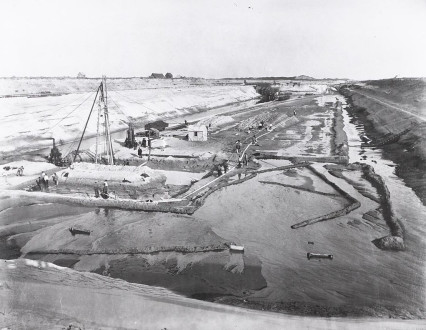
Betonstorting voor de sluis bij IJmuiden in 1891.
Bron: BG B14/782 (foto), De Nederlandse arbeidersbeweging tot 1918, Internationaal Instituut voor Sociale Geschiedenis, Amsterdam. Bouw van de Middensluis van IJmuiden (beeldbank.rws.nl, Rijkswaterstaat/Afdeling Multimedia Rijkswaterstaat) : beeldbank.rws.nl/MediaObject/Details/348853 Aanbesteding uitbreiding sluis- en havenwerken te IJmuiden. Provinciale Overijsselsche en Zwolsche Courant van 15-9-1888: resolver.kb.nl/resolve?urn=MMHCO01:000073548:mpeg21:a0010 "De nieuwe sluis te IJmuiden". Algemeen Handelsblad van 6-10-1889: resolver.kb.nl/resolve?urn=ddd:010973615:mpeg21:a0004 hdl.handle.net/21.12102/3f0f39ca-fb8f-11df-9e4d-523bc2e286e2 "De nieuwe sluis te IJmuiden". Algemeen Handelsblad van 21-5-1893: resolver.kb.nl/resolve?urn=ddd:010166304:mpeg21:a0007 "Sluis te IJmuiden". Algemeen Handelsblad van 16-8-1896: resolver.kb.nl/resolve?urn=ddd:010973843:mpeg21:a0099 "De opening van de Nieuwe Sluis te IJmuiden". Nieuwsblad van het Noorden van 15-12-1896: resolver.kb.nl/resolve?urn=ddd:010883644:mpeg21:a0006 hdl.handle.net/21.12102/5404f842-fb8f-11df-9e4d-523bc2e286e2 hdl.handle.net/21.12102/2e150938-fb8f-11df-9e4d-523bc2e286e2 hdl.handle.net/21.12102/4883b8fa-fb8f-11df-9e4d-523bc2e286e2 hdl.handle.net/21.12102/55bbaab8-fdee-a9a5-74d4-d788a09b3d09 web.archive.org/web/20161102091648/http://www.panoramio.c... www.flickr.com/photos/148859204@N07/34573163725/in/datepo... www.flickr.com/photos/148859204@N07/34476867570/in/datepo... www.flickr.com/photos/148859204@N07/33060517973/in/datepo... hdl.handle.net/21.12102/4304b154-fb8f-11df-9e4d-523bc2e286e2 hdl.handle.net/21.12102/430551a4-fb8f-11df-9e4d-523bc2e286e2 Bouw van de Zuidersluis in 1865-1876: hdl.handle.net/21.12102/53e782f8-fb8f-11df-9e4d-523bc2e286e2 Mijn grootvader Hans van der Woude (1892-1964) is in Velsen op de Heide geboren, als zoon van polderwerker/arbeider Minne Meindert van der Woude (1857-1942). Hij woonde met zijn gezin, schoonzus en zwager Hannes Hielkema (1860-1909) van 1-9-1891 tot 6-12-1897 in Wijk E nr. 65, later Straatweg 1 en Zeeweg 1: hdl.handle.net/21.12102/50d40a00-fb8f-11df-9e4d-523bc2e286e2 hdl.handle.net/21.12102/4700f57e-fb8f-11df-9e4d-523bc2e286e2 hdl.handle.net/21.12102/485a8e76-fb8f-11df-9e4d-523bc2e286e2 hdl.handle.net/21.12102/50d33116-fb8f-11df-9e4d-523bc2e286e2 hdl.handle.net/21.12102/50d36ad2-fb8f-11df-9e4d-523bc2e286e2 hdl.handle.net/21.12102/50d4a2f8-fb8f-11df-9e4d-523bc2e286e2 hdl.handle.net/21.12102/50e3f7b2-fb8f-11df-9e4d-523bc2e286e2 hdl.handle.net/21.12102/50e2ce14-fb8f-11df-9e4d-523bc2e286e2 hdl.handle.net/21.12102/50e3b6d0-fb8f-11df-9e4d-523bc2e286e2 In die periode werd de Middensluis (toen de grote sluis) gebouwd. Zijn broer Tjalling van der Woude (1860-1929) woonde met zijn gezin van 3-4-1891 tot 2-10-1893 op het adres E 245a in Velsen en voor 3-4-1891 in Wijk aan Zee en Duin Bij mijn grootouders thuis hing het portret van Pieter Jelles Troelstra in de woonkamer. Hij was badbroeder in het Academisch Ziekenhuis Groningen: web.archive.org/web/20170813171413/http://www.panoramio.c... web.archive.org/web/20161102091648/http://www.panoramio.c... Openbare vergadering van de Soc. Dem. Bond bij de wed. Schipper, op de Heide op 15-12-1889. Recht voor Allen van 14-12-1889: resolver.kb.nl/resolve?urn=MMIISG05:000092861:mpeg21:a0012 Openbare vergadering in Beverwijk met W. Meng als spreker. Recht voor Allen van 6-2-1890: resolver.kb.nl/resolve?urn=MMIISG05:000090512:mpeg21:a0002 Openbare vergadering van de afd. Beverwijk op de hei bij Velsen, met Willem Frederik Meng als spreker. Recht voor Allen van 14-5-1890: resolver.kb.nl/resolve?urn=MMIISG05:000090722:mpeg21:a0004 Meng en Schingen Hagen in debat over sociaal-demokratie en demokratie. Recht voor Allen van 8-2-1890 en 6-3-1890: resolver.kb.nl/resolve?urn=MMIISG05:000090539:mpeg21:a0004 resolver.kb.nl/resolve?urn=MMIISG05:000090590:mpeg21:a0010 Willem Frederik Meng, predikant, redacteur van een tijdschrift, geb. Amsterdam 1-1-1843, trouwt Alblasserdam 11-7-1872 Margje Adriana Pijl, geb. Alblasserdam 10-03-1852, ovl. Bloemendaal 8-8-1934. Zie ook het verhaal over zijn moeder Johanna Meng-Gunter, ovl. Amsterdam 25-8-1913, oud 103 jaar en vijf mnd, de oudste inwoonster van Amsterdam, in het Rotterdamsch Nieuwsblad van 26-3-1910, de Provinciale Geldersche en Nijmeegsche Courant van 30-3-1910, Het nieuws van den dag: kleine courant van 25-3-1910 en 4-4-1910, en het Rotterdamsch ieuwsblad van 28-8-1913: resolver.kb.nl/resolve?urn=ddd:010197846:mpeg21:a0009 resolver.kb.nl/resolve?urn=MMRANM02:000009978:mpeg21:p002 resolver.kb.nl/resolve?urn=ddd:010108343:mpeg21:a0091 resolver.kb.nl/resolve?urn=ddd:010108761:mpeg21:a0070 resolver.kb.nl/resolve?urn=ddd:010295724:mpeg21:a0139 Zie ook Jan Meng van Atheneum Boekhandel (1969-1990) in Amsterdam: www.nrc.nl/nieuws/1990/07/07/jan-meng-over-een-gedroomde-... "Groote Monster Meeting" in het lokaal (ook café genoemd) van H. Veltman, op de Heide, op 4-7-1886, georganiseerd door de Sociaal-Demokratische Bond (Niet goedgekeurd bij Kon. Besl. van 23 Maart 1884). P. van der Stad Jbz sprak over "Socialistenvervolging"; hij is Pieter van der Stad, machinist, fabrikant, geb. Zaandijk ca. 1850, ovl. Vlissingen 4-4-1905. Recht voor Allen van 30-6-1886: resolver.kb.nl/resolve?urn=MMIISG05:000089891:mpeg21:a0015 Sociaal-Demokratische Vereenigingen. Vergadering Tooneelvereeniging "De Tijdgeest" bij H. Veldman (ook Veltman), op de Heide. Hij is Hendrik Ernstes Veldman, schippersknecht, arbeider, kastelein, geb. Oldeboorn 8-12-1835, ovl. Haarlem 9-3-1910, trouwt Amsterdam 6-6-1860 Cornelia Wecker (ook Weckers), geb. Buiksloot 15-9-1831, ovl. Velsen 26-1-1914; zij woonde in Amsterdam op de Haarlemmerdijk 525 Kelder, de Zeedijk 31, de Kl. Kattenburgerstraat 705, de Grote Oostenbutgerstraat 72 en de Kleine Oostenburgerdwarsstraat 149. Zij vestigden zich op 6-9-1876 op de Heide op het adres E 210 (Kalverstraat 14), komende uit Assendelft; hun zoon Klaas, geb. Buiksloot 15-8-1864, woonde vanaf 24-9-1887 op het adres E 159 (Hoeksteeg 4). Recht voor Allen van 30-5-1885 en 20-10-1886: resolver.kb.nl/resolve?urn=MMIISG05:000090216:mpeg21:a0014 resolver.kb.nl/resolve?urn=MMIISG05:000089967:mpeg21:a0017 Vergaderingen van de Sociaal-Demokratische Bond ten huize van mej. G. Ranshuizen, op de Heide bij Velsen. Op 9-11-1890 kwam de Soc. Dem. Bond bijeen in de zaal van mejuffrouw Ranshuizen, op De Heide bij Velsen. Recht voor Allen van 13-11-1890: resolver.kb.nl/resolve?urn=MMIISG05:000092973:mpeg21:a0003 Op 15-6-1895 was Ferdinand Domela Nieuwenhuis als spreker aanwezig in een vergadering van de Sociaal-Demokratische Bond Afdeeling Beverwijk, in het lokaal van H. Ranshuizen in Velsen op De Heide: resolver.kb.nl/resolve?urn=MMIISG05:000091920:mpeg21:a0008 Op 17-4-1896 was er weer een meeting bij H. Ranshuizen op De Heide bij Velsen: resolver.kb.nl/resolve?urn=MMIISG05:000091713:mpeg21:a0021 resolver.kb.nl/resolve?urn=MMIISG05:000091983:mpeg21:a0009 resolver.kb.nl/resolve?urn=MMIISG05:000091678:mpeg21:a0012 Op 5-5-1889 sprak Ferdinand Domela Nieuwenhuis op een bijeenkomst van de Sociaal-Demokratische Bond Afdeeling Beverwijk in Velsen op De Heide. Recht voor Allen van 7-5-1889: resolver.kb.nl/resolve?urn=MMIISG05:000093107:mpeg21:a0004 Op 15-6-1895 sprak Ferdinand Domela Nieuwenhuis op een bijeenkomst van de Sociaal-Demokratische Bond Afdeeling Beverwijk, in het lokaal van H. Ranshuizen in Velsen op De Heide. In 1892 werd een bijeenkomst gehouden ten huize van L. Schingen Hagen in Beverwijk. Hij is de zwager van Ferdinand Domela Nieuwenhuis (1846-1919). Hij had een werf in Beverwijk. Hij is Lourens Hagen, landbouwer, geb. Beverwijk 28-1-1845, ovl. Beverwijk 12-7-1907, gehuwd met Berber Reitsma, geb. Leeuwarderadeel 30-9-1866, ovl. Geldrop 10-2-1933, zoon van Izaäc Schingen Hagen, koopman (1841), landbouwer, geb. Beverwijk 9-5-1812, ovl. Bloemendaal 21-1-1875, en van Adriana Schuitemaker, geb. Heemskerk 5-1-1813, ovl. Beverwijk 29-1-1889, dochter van onderwijzer Louwrens Schuitemaker. Lourens (Schingen) Hagen is een kleinzoon van Jan Hagen, broodbakker, geb. Meppel, ovl. Beverwijk 23-12-1857, oud 73 jaar, en van Antje Schingen, geb, Beverwijk, ovl. Beverwijk 8-5-1856, oud 72 jaar (haar geboorte- en 46-jarige trouwdag werd tevens haar sterfdag), dochter van Izaäk Schingen, ovl. Beverwijk 3-1-1816, oud 64 jaar, en van Adriana Phaar. Verkoop bij Executie van bouwland of tuingrond van landbouwer Isaäc Schingen Hagen in Beverwijk. Opregte Haarlemsche Courant van 1-9-1868: resolver.kb.nl/resolve?urn=ddd:010528339:mpeg21:a0020 Op 8-6-1893 vond de openbare verkoping plaats van vier huizen en erven in het "Friesche Koffiehuis" van de heer Douma, op De Heide te Velsen. Haarlem's Dagblad van 25-5-1893, blz. 4. Dit Koffiehuis was voor Douma de herberg "De Laatste Stuiver" van mevrouw Behouden en de kastelein was Hendrik Gerardus Hellings, en na Douma het café Snijders: hdl.handle.net/21.12102/4f386ed4-fb8f-11df-9e4d-523bc2e286e2 Vereeniging Hulp en Bijstand gaat rond met de "rommelwagen" ter inzameling van goederen voor de armen op de Heide. Haarlem's Dagblad van 3-10-1894 blz. 1 en 6-6-1895, blz. 1. Op 1-5-1894 vierden de Timmerliedenvereeniging "Verbetering zij ons doel" en de Sociaal-Democratische Bond, Afd. Beverwijk, hun Meifeest in lokaal "De Tijdgeest" op de Heide, met "de burgeres Kommers" uit Amsterdam als spreekster. Haarlem's Dagblad van 1-5-1894, blz. 1. Zij is Maria Elizabeth Kommers, geb. IJzendijk 7-2-1873, ovl. Amsterdam 3-10-1940. Recht voor Allen is uitgegeven door de socialist en latere anarchist Ferdinand Domela Nieuwenhuis (1846-1919), zoon van Ferdinand Jacobus Domela Nieuwenhuis en Henriëtta Frances Berrij. Hij was weduwnaar van Egberta Johanna Godhelp, Johanna Lulofs, Johanna Adriana Verhagen en Johanna Frederika Schingen Hagen, geb. Beverwijk 14-9-1843, ovl. Beverwijk 27-2-1884, dochter van Izaäc Schingen en Adriana Schuitemaker. Uit het huwelijk met Johanna Frederika Schingen Hagen is op 20-2-1884 in Den Haag een zoon geboren. Recht voor Allen van 23-2-1884: resolver.kb.nl/resolve?urn=MMIISG05:000090170:mpeg21:a0013 Zijn zoon Theodoor Nieuwenhuis werd op 17-3-1872 in Beverwijk geboren. Hij stamt uit het Deense predikantengeslacht Nyegaard; zijn overgrootvader vestigde zich in Nederland: “Het leven van Domela Nieuwenhuis”. Ferdinand Domela Nieuwenhuis Museum: www.mokums.nl/copy/domela.pdf awn-beverwijk-heemskerk.nl/pdf/domelanieuwenhuis.pdf Domela Nieuwenhuis?, door Ewoud Sanders in het NRC van 27 april 1991: www.nrc.nl/nieuws/1991/04/27/domela-nieuwenhuis-6965273-a... “Ferdinand Domela Nieuwenhuis. Een romantische revolutionair”, door Jan Willem Stutje; Antwerpen: Houtekiet, Gent: Amsab, Amsterdam: Atlas Contact, 2012 (ISBN 978 90 8704 281 3). Recensie van Bert Altena, Erasmus Universiteit Rotterdam: www.rug.nl/research/biografie-instituut/recensiebmgn128(2013)2.pdf “Domela was een platte antisemiet”. Interview met biograaf Jan Willem Stutje, door Anne Burgers. Historisch Nieuwsblad van vrijdag 25 mei 2012: www.historischnieuwsblad.nl/nl/nieuws/18785/domela-was-ee... "Ferdinand Domela Nieuwenhuis. De Jezus van het Nederlandse proletariaat", door Elsbeth Etty in het NRC van 19 juni 1993, n.a.v. het verschijnen van de biografie "Domela, een hemel op aarde. Leven en streven van Ferdinand Domela Nieuwenhuis", door Jan Meyers, De Arbeiderspers 1993 (ISBN 90 295 3114 2): www.nrc.nl/nieuws/1993/06/19/ferdinand-domela-nieuwenhuis... "Domela valt van zijn voetstuk. Ferdinand Domela Nieuwenhuis, de ooit aanbeden grondlegger van het Nederlandse socialisme, was groots en kleinzielig tegelijk", door Robin te Slaa in De Volkskrant van 21-7-2012: www.volkskrant.nl/archief/domela-valt-van-zijn-voetstuk~a... www.parlement.com/id/vg09lkzxa0t1/f_domela_nieuwenhuis socialhistory.org/bwsa/biografie/nieuwenhuis-f ferdinanddomelanieuwenhuis.nl/domela-nieuwenhuis/ Was Domela een populist?, door Rob Hartmans, Historisch Nieuwsblad 9/2009: www.historischnieuwsblad.nl/nl/artikel/26098/was-domela-e... Archief Ferdinand Domela Nieuwenhuis: hdl.handle.net/10622/ARCH00483 socialhistory.org/en/search/node/nieuwenhuis%20 socialhistory.org/nl/nieuws/recht-voor-allen-delpher hdl.handle.net/10622/AB584063-B944-43E2-ABAF-1473B490DAA4 Het weekblad Recht voor Allen: tussentaalenbeeld.nl/A60b4.htm De kunstenaar César Domela Nieuwenhuis, geb. Amsterdam 15-1-1900, ovl. Parijs 30-12-1992, is een zoon van Ferdinand Domela Nieuwenhuis: rkddb.rkd.nl/rkddb/inventar/Domela_Archief.pdf; www.gemeentemuseum.nl/nl/tentoonstellingen/cesar-domela H. Ranshuizen is zeer waarschijnlijk Hendrik Adrianus Ranshuizen (Ranshuijsen), stoker, machinist, geb. Utrecht 12-11-1856, ovl. Velsen 6-2-1906. Hij stond in Amsterdam, met zijn drie broers Johannes Hendricus, Johannes Ignatius Lambertus en Ferdinandus Hendricus Gerardus, ingeschreven in het gezin van zijn stiefvader Dirk Eikelenborg, timmerman, geb. Zeist 22-5-1825, en moeder Maria Eva de Ras, geb. Utrecht 15-11-1829, weduwe van Ferdinandus Hendricus Ranshuijsen, geb. Amsterdam ca. 1813, ovl. Utrecht 4-12-1862, zoon van Hendricus Ranshuijsen en Engelina Elisabeth Ader, kleinzoon van Hendrik Ranshuijsen en Alida Takke. Hendrik Ranshuijsen en Engelina Elisabeth Ader gingen op 26-5-1809 in Amsterdam in ondertrouw; hij was toen 29 jaar, wees, en woonde toen in de Reguliersdwarsstraat 118. Hendricus Ranshuijsen is op 19-5-1810 op het St. Anthonis Kerkhof in Amsterdam begraven. Engelina Elisabeth Ader hertrouwde in Amsterdam op 26-6-1814 met wagenmaker Adrianus Bouter, geb. Amsterdam ca. 1779. Op 27-1-1797 gingen Ferdinandus Ranshuijsen en Maria Geertruij Wierdels in Amsterdam in ondertrouw; hij was toen 21 jaar, wees, en woonachtig op de Botermarkt, en zij was 25 jaar. Zijn naam werd ook geschreven als Randshuizen. Zo werd Ferdinand Henricus Randshuizen op 21-11-1797 gedoopt in de RK Kerk De Papegaai, zoon van Ferdinand Randshuizen en Maria Wierdels en met Ferdinand Wierdels en Maria Gloremin als getuigen. En op 6-4-1800 werd hun zoon Bernardus Franciscus in die kerk gedoopt, met Ferdinand Wierdels en Anna Takkee als getuigen. Ferdinand Ranshuijzen, smid, kruidenier, ged. Amsterdam 21-11-1797, ovl. Wervershoof 16-7-1882, weduwnaar van Catharina Gerarda van Seellt, gehuwd met Johanna Maria Bosch, geb. 1811, ovl. Boxmeer 14-11-1850, woonde als rentenier in de Keistraat 58 in Boxmeer, met de kinderen Johannes (1837), Ferdinand (1839), Elisabeth (1835) en Henricus (1832), kamerbehangersleerling. Zijn zoon Joannes Franciscus Ferdinandus Randshuizen, geb. Amsterdam 14-1-1837, landman, makelaar, tr. Wijde Wormer 28-8-1862 Pieternelle Klaver, geb. Wijdewormer 13-3-1841. Op 24-5-1805 gingen Ferdinand Ranshuyzen, weduwnaar van Maria Geertruyd Wierdels, en Johanna Engelina Geertruda Ader, in Amsterdam in ondertrouw; hij woonde toen op de Botermarkt naast de blikslager. Uit dit huwelijk: Engelina Alida Franciska Ranshuizen, geb. Amsterdam ca. 1813, ovl. Hoorn 9-11-1847, echtgenote van tabaksverkoper Pieter Kaag, en Henricus Wilhelmus Ranshuizen, ged. in de RK Kerk De Papegaai op 14-6-1810, met Hendrik Ranshuizen en Catharina Ader als getuigen. Pastoor H.W. Ranshuijsen bericht over het overlijden van zijn moeder Joanna Engelina Gertruida Ader in De Tijd van 27-11-1869: resolver.kb.nl/resolve?urn=ddd:010262912:mpeg21:a0053 De ZeerEerwaarden Heer Henricus Wilhelmus Ranshuijsen overleed op 3-3-1885. De Maasbode van 6-3-1885: resolver.kb.nl/resolve?urn=MMKB04:000163344:mpeg21:a0015 Hendrik Adrianus Ranshuizen/Ranshuijsen trouwde in Velsen op 9-11-1882 met Borghardina Gerhardina Kwakkestein, geb. Haarlemmermeer 11-4-1863, ovl. Velsen 24-9-1941, dochter van bakker Maghiel Kwakkestein. Zij kregen negen kinderen, waarvan zes zeer jong zijn overleden. Hun dochter Johanna Hendrika Ranshuijsen trouwde drie keer, en de drie mannen waren stoker van beroep. Hun zoon Jacobus Leonardus Ranshuijsen, geb. in Amsterdam, overleed op 9-3-1924 in Velseroord, oud 23 jaar. In het overlijdensbericht, geplaats door zijn moeder en stiefvader, drie zussen/zwagers en zijn verloofde, staat het adres Willebrordstraat E 17. IJmuider Courant van 12-3-1924, blz. 3. Hendrik Adrianus Ranshuijsen verhuisde op 21-7-1883 van Amsterdam naar Velsen. Het gezin woonde in de periode 21-7-1883 tot 27-1-1898 op het adres C 387 in Velsen. Op 27-1-1898 verhuisde het gezin terug naar Amsterdam, en op 31-8-1905 weer naar Velsen (Breesaapstraat 7c in IJmuiden). Afbeeldingen Breesaapstraat: hdl.handle.net/21.12102/46424be2-fb8f-11df-9e4d-523bc2e286e2 hdl.handle.net/21.12102/4e607d9e-fb8f-11df-9e4d-523bc2e286e2 hdl.handle.net/21.12102/15495634-fb8f-11df-9e4d-523bc2e286e2 hdl.handle.net/21.12102/4e6178ca-fb8f-11df-9e4d-523bc2e286e2 In Amsterdam en Velsen was hij stoker van beroep en zijn vrouw winkelierster in kruidenierswaren (Bethaniënstraat 19hs, de Wittenstraat 49-2, Prinsengracht 304hs en de Wittenkade 46c-2). Na het overlijden van Hendrik Adrianus Ranshuizen (Ranshuijsen), hertrouwde Borghardina Gerhardina Kwakkestein in Velsen op 31-10-1907 met Karel Gregorius Kruse, stoker, machinist Ver. IJsfabriek, geb. Den Helder 16-8-1879, ovl. Amsterdam 15-7-1962. In de periode 1908-1941 woonden zij in Velsen aan de Kanaalweg 6a, Willebrordstraat 79, Bothastraat 2rd, Kanaalstraat 22 en 30, en weer in de Willebrordstraat 17. Eind 1934 verkocht Borghardina Gerhardina Kwakkestein het perceel in de Gemeente Velsen, Afd. IJmuiden, Sectie M 3273, voor f 350 aan de Gemeente Velsen. IJmuider Courent van 14-12-1934, blz. 1: hdl.handle.net/21.12102/47de2994-fb8f-11df-9e4d-523bc2e286e2 hdl.handle.net/21.12102/47db1bc8-fb8f-11df-9e4d-523bc2e286e2 hdl.handle.net/21.12102/47de5cac-fb8f-11df-9e4d-523bc2e286e2 hdl.handle.net/21.12102/49284942-fb8f-11df-9e4d-523bc2e286e2 hdl.handle.net/21.12102/47f9122c-fb8f-11df-9e4d-523bc2e286e2 hdl.handle.net/21.12102/4f393c24-fb8f-11df-9e4d-523bc2e286e2 hdl.handle.net/21.12102/4f390b32-fb8f-11df-9e4d-523bc2e286e2 hdl.handle.net/21.12102/47ce0c12-fb8f-11df-9e4d-523bc2e286e2 hdl.handle.net/21.12102/26860b22-fb8f-11df-9e4d-523bc2e286e2 hdl.handle.net/21.12102/50b0e44e-fb8f-11df-9e4d-523bc2e286e2 hdl.handle.net/21.12102/4303f516-fb8f-11df-9e4d-523bc2e286e2 hdl.handle.net/21.12102/50b168d8-fb8f-11df-9e4d-523bc2e286e2 hdl.handle.net/21.12102/50b12918-fb8f-11df-9e4d-523bc2e286e2 hdl.handle.net/21.12102/45bf4bca-fb8f-11df-9e4d-523bc2e286e2 hdl.handle.net/21.12102/4f404168-fb8f-11df-9e4d-523bc2e286e2 hdl.handle.net/21.12102/4f3ef88a-fb8f-11df-9e4d-523bc2e286e2 hdl.handle.net/21.12102/4f3ea79a-fb8f-11df-9e4d-523bc2e286e2 Broers van Hendrik Adrianus Ranshuizen/Ranshuijsen: Johannes Ignatius Lambertus Ranshuijsen, machinist, geb. Utrecht 2-2-1858, trouwt Amsterdam 1-3-1882 Maria Catharina Elisabeth Volkamp, geb. Amsterdam 13-5-1854, ovl. Haarlem (Hazepaterslaan) 26-4-1914, oud 59 jaar. Hun dochter Clara Josina Ranshuijsen, geb. Amsterdam 28-2-1897, trouwde Amsterdam 7-8-1919 Jan Kooij, salonbediende, schipper, los werkman, controleur havenbedrijf en arbeider zeepfabriek, geb. Gouda 22-11-1889, zoon van caféhouder Gerrit Kooij. Clara Josina woonde van 4-4-1916 tot 16-10-1917 in Velsen. Jan Kooij zat in 1916 in het Kamp van Zeist: fotoarchiefjkooij.blogspot.nl/ Zij verhuisden in 1923 van Amsterdam naar Vlaardingen. Johannes Ignatius Lambertus Ranshuijsen's zoon Ferdinandus Hendricus Ranshuijsen, machinist, geb. Amsterdam 30-1-1885, en schoondochter Magdalena Bernardina Wattenberg, geb. Amsterdam 21-5-1885, dochter van Bernard Friedrich Wilhelm Wattenberg en Magdalena Aletta Kits, plaatsten op 24-5-1914 een overlijdensbericht in de De Surinamer: nieuws- en advertentieblad van 31-5-1914: resolver.kb.nl/resolve?urn=ddd:011216648:mpeg21:a0047 Zij hebben in Velsen/IJmuiden (in 1907 in de Adrianastraat 37c), Paramaribo en in Belgisch Congo gewoond en gewerkt. In 1920 verhuisden zij van Amsterdam naar Vlaardingen (Parallelweg). Johannes Ignatius Lambertus Ranshuijsen's zoon Johannes Ranshuijsen, machinist, geb. Dordrecht (Riedijkstraat 5) 12-9-1887, tr. Amsterdam 30-1-1913 Frederika Wilhelmina Stok, geb. Amsterdam 21-4-1887, dochter van diamantslijper Jan Stok. Hun zoon Jan Frederik Hendrik Ranshuijsen, geb. 29-3-1925, overleed in Vlaardingen op 24-4-2000, weduwnaar van Adriana van Toor (1926-1999). Hun zoon Johannes (John) Ranshuijsen, geb. Vlaardingen 25-11-1954, ovl. Rotterdam 9-1-2004, was raadslid en wethouder in Vlaardingen. "Politiek huwelijk in Vlaardingen". De Telegraaf van 13-2-1987: resolver.kb.nl/resolve?urn=ddd:011207426:mpeg21:a0199 "Wat is er aan de hand in Vlaardingen-land?". Het Vrije Volk: democratisch-socialistisch dagblad van 22-11-1986: resolver.kb.nl/resolve?urn=ddd:010949039:mpeg21:a0367 Ferdinandus Hendricus Gerardus Ranshuijsen, varensgezel (1890), zeeman, geb. Utrecht 2-11-1859, ovl. Amsterdam 29-12-1922, trouwt Amsterdam 2-10-1890 Jacoba Angenis Moring, geb. Amsterdam ca. 1861, ovl. Amsterdam 5-9-1937. Hun zoon Ferdinandus Hendricus Gerardus Ranshuijsen, geb. Amsterdam 7-2-1903, ovl. Amsterdam 23-8-1939 was los werkman. Johannes Hendricus Ranshuijsen, stoker, geb. Utrecht 19-1-1863, ovl. Amsterdam 29-3-1932, trouwt Amsterdam 5-8-1885 Alida Johanna Maria Ruijs, geb. Amsterdam 26-5-1861, ovl. Amsterdam 10-7-1930. Hun zoon Gerrit, geb. Amsterdam 15-3-1899, ovl. Amsterdam 19-8-1939, was bankwerkdraaier, en hun zoon Ferdinandus Hendricus, geb. Amsterdam 17-7-1902, ovl. Amsterdam 8-3-1958, was adjudant van Gemeentepolitie. De eerste Ranshuijsen in ons land lijkt Hendrik Ranshuisen/Ransuijsen, van Walbeek, Rooms, 25 jaar, ouders overleden, woonachtig in de Bakkerstraat in Amsterdam, die op 10-4-1772 in Amsterdam in ondertrouwen ging met Alida (Bernardina) Takke, van Amsterdam, Rooms, 26 jaar, woonachtig in de Kalverstraat; Hendrik had Evert De Wolf als getuige meegenomen. Ferdinand Takke (Tacke), afkomstig uit Gemer (Ghemen), Rooms, woonachtig in de Kalverstraat, ging op 29-8-1749 in Amsterdam, als weduwnaar van Geertruij Brunnink (ook Bruninghuijs), in ondertrouw met Maria Priekel (ook Preekel), afkomstig uit Warendorp, oud 34 jaar, woonachtig op de Keizersgracht. Op 19-4-1765 ging hij als weduwnaar van Maria Prekel in Amsterdam in ondertrouw met Anna Catarina Hoberg, oud 43 jaar, Rooms, afkomstig van Den Ham, en woonachtig op de Heiligeweg in Amsterdam; haar zus Catharina Hoberg was haar getuige. Walbeek is vermoedelijk het dorp Walbeck in het Land van Gelre. "Overkwartier van Gelre": www.overkwartiervangelre.nl/beginpagina-startseite/geschi... "Nieuwe geographie, of aardrijksbeschrijving", Volume 5, door Anton Friedrich Buesching; Amsterdam/Utrecht MDCCLXVI: books.google.be/books?id=DRdiAAAAcAAJ&pg=PA2441&d... Google Books: www.google.be/search?q=heer+van+walbeck&hl=nl&tbm... Hun zoon Ferdinandus werd op 11-5-1776 RK gedoopt in de Kerk 't Boompje in Amsterdam, met Ferdinandus Takke en Cathrina Hoberg als getuigen. Op 14-5-1778 kocht Hendrik Ranshuijsen, echtgenoot van Alida Takke, een 1/2 huis en erf, tussen Bakkersstraat en Balk in ’t Oogsteeg, aan het Rembrandtplein (toen Botermarkt) in Amsterdam, van de Erven Ferdinand Takke, echtgenoot van Anna Catharina Hoberg. Op 14-11-1805 kocht Ferdinand Ranshuijsen een Huis en erf, tussen Bakkersstraat en Balk in 't Oogsteeg aan het Rembrandtsplein (straatnaam in bron: Botermarkt) in Amsterdam, van de Erven Alida Takke, wed. Hendrik Ranshuijsen. Afwikkeling van de nalatenschap van Alida Takke, weduwe van Hendrik Ranshuijsen. Amsterdamse Courant van 15-12-1796: resolver.kb.nl/resolve?urn=ddd:010718329:mpeg21:a0008 Op 24-1-1765 kocht Ferdinand Takke een Huis en erf in de Goudsbloemstraat ZZ , het tweede huis bewesten de eerste Goudsbloemdwarsstraat, in Amsterdam, van de Erven IJda Fonteijn, wed. van Dirk Korff. Op 20-2-1765 kocht hij een Huis en erf in de Sint Jorissteeg (straatnaam in bron: Borenmakerssteeg ZZ), het derde huis van het Rokin, van de Erven Anna (van) Tuijle wed. van Hendrik Tuijnman. Op 29-4-1774 verkocht hij dat huis aan Anthonij Raebelink. Op 15-2-1674 ging Anna Margreta Ruijs, eerdere echtgenote van Hendrik Ranshuijsen, in Amsterdam in ondertrouw met Barent Outhuijsen. Zie ook Antonius Ferdinandus Ranshuijsen, geb. Amsterdam 1824, ovl. Nibbixwoud 2-10-1893, pastoor in de Sint Werenfriduskerk in Wervershoof, zoon van Jan Ranshuijsen en Maria Smedding: wervershoof.rkregiowh.nl/de-kerk/100-jaar-werenfriduskerk... www.westfriesefamilies.nl/jaarverslagen/jaarverslag2007.php Familieberichten in De Tijd van 14-11-1893 en in De Maasbode van 22-2-1877: resolver.kb.nl/resolve?urn=ddd:010407084:mpeg21:a0064 resolver.kb.nl/resolve?urn=MMKB04:000164340:mpeg21:a0016 Recht voor Allen van 9-7-1893 en 16-7-1893: resolver.kb.nl/resolve?urn=MMIISG05:000091348:mpeg21:a0006 resolver.kb.nl/resolve?urn=MMIISG05:000091351:mpeg21:a0015 Recht voor allen van 8-2-1890: resolver.kb.nl/resolve?urn=MMIISG05:000090539:mpeg21:a0004 "Recht voor Allen" van 7-4-1890, 9-5-1890, 14-5-1890, 4-7-1890, 20-9-1890, 10-11-1890, 18-1-1891, 20-2-1891, 11-3-1891. 3-5-1891, 10-4-1892, 4-2-1892, 10-6-1892, 19-6-1892, 5-8-1892, 14-8-1892, 1-2-1893, 27-12-1893, 30-3-1894, 14-6-1895, 8-11-1895 en 26-1-1896: resolver.kb.nl/resolve?urn=MMIISG05:000090640:mpeg21:a0025 resolver.kb.nl/resolve?urn=MMIISG05:000090715:mpeg21:a0012 resolver.kb.nl/resolve?urn=MMIISG05:000090722:mpeg21:a0004 resolver.kb.nl/resolve?urn=MMIISG05:000090845:mpeg21:a0008 resolver.kb.nl/resolve?urn=MMIISG05:000090697:mpeg21:a0012 resolver.kb.nl/resolve?urn=MMIISG05:000092970:mpeg21:a0007 resolver.kb.nl/resolve?urn=MMIISG05:000092927:mpeg21:a0012 resolver.kb.nl/resolve?urn=MMIISG05:000090757:mpeg21:a0010 resolver.kb.nl/resolve?urn=MMIISG05:000090799:mpeg21:a0008 resolver.kb.nl/resolve?urn=MMIISG05:000091211:mpeg21:a0004 resolver.kb.nl/resolve?urn=MMIISG05:000091129:mpeg21:a0013 resolver.kb.nl/resolve?urn=MMIISG05:000090856:mpeg21:a0014 resolver.kb.nl/resolve?urn=MMIISG05:000091183:mpeg21:a0014 resolver.kb.nl/resolve?urn=MMIISG05:000091187:mpeg21:a0005 resolver.kb.nl/resolve?urn=MMIISG05:000091157:mpeg21:a0013 resolver.kb.nl/resolve?urn=MMIISG05:000091207:mpeg21:a0019 resolver.kb.nl/resolve?urn=MMIISG05:000091410:mpeg21:a0013 resolver.kb.nl/resolve?urn=MMIISG05:000091421:mpeg21:a0009 resolver.kb.nl/resolve?urn=MMIISG05:000091462:mpeg21:a0007 Hop Hop Hop. Hangt de socialisten op! Een documentaire over het opkomende socialisme in de jaren tachtig, ontleend aan Recht voor Allen, samengesteld door Leonard de Vries en met een voorwoord van prof. dr. Fr. de Jong Edz.; Polak & van Gennip 1967. www.regiocanons.nl/noord-holland/onderwijscanon-velsen/no... "Sluizen en gemalen in het Noordzeekanaal. Anderhalve eeuw ontwerpen, bouwen en vernieuwen", door G.J. Arends; Uitgeverij Matrijs (ISBN 90 5345 184 6). "De weg naar zee. 125 jaar kunstwerken aan de monding van het Noordzeekanaal", door Dap Hartmann, NRC Handelsblad Wetenschap & Onderwijs (Techniek) van zaterdag 8-12-2001 (met foto van de bouw van de Middensluis). "Velsen: grepen uit de geschiedenis van een oude woonplaats in Kennemerland", door Hendrik Joan Calkoen; Vermande Zonen, 1967. Maandblad Amstelodamum, Volume 7, 1920. Van jongens-met-de-schop tot heel grote baggeraars. Zonder de baggermannen van Bos, Kalis en al die andere pioniers waren grote stukken Nederland niet veilig geweest of hadden zelfs niet bestaan. De geschiedenis van de branche is nu opgetekend in het boek ‘Grondleggers’. Trouw, Koos Schwartz, 23 november 2018: www.trouw.nl/home/van-jongens-met-de-schop-tot-heel-grote... Sluisdeur van 70 meter komt aan in IJmuiden. De oude Noordersluis in IJmuiden is zo'n honderd jaar oud en moet worden vervangen. Schepen worden steeds groter en dankzij de nieuwe sluis kunnen grotere zeeschepen straks nog steeds naar de haven van Amsterdam varen. De nieuwe sluis moet 70 meter breed, 500 meter lang en 18 meter diep worden. Rijkswaterstaat zei eerder dat het de grootste sluis ter wereld zou worden. In dit jaar had de sluis af moeten zijn, maar de verwachting is nu dat de eerste schepen pas in januari 2022 van de sluis gebruik kunnen maken. Het project is veel duurder geworden dan de bedoeling was. Er waren meerdere keren aanpassingen in de constructie nodig. De sluisdeuren komen uit Zuid-Korea. Ze kwamen op 6 december aan in Nederland. 44 dagen deden ze erover om in Rotterdam te komen, meldt NH Nieuws. Gisteren werd de eerste deur door een sleepboot opgehaald bij de Maasvlakte. Die heeft het gevaarte naar IJmuiden gesleept. NOS, 20-1-2019: nos.nl/artikel/2268266-sluisdeur-van-70-meter-komt-aan-in...
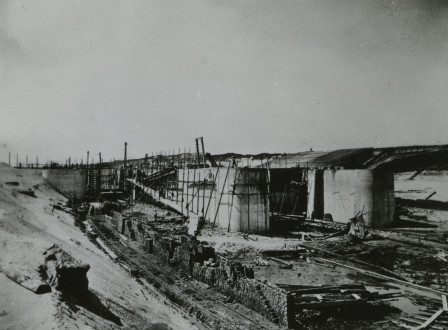
Bouw van de Middensluis in IJmuiden (1888-1896).
Bouw van de Middensluis van IJmuiden (beeldbank.rws.nl, Rijkswaterstaat/Afdeling Multimedia Rijkswaterstaat) : beeldbank.rws.nl/MediaObject/Details/348853 Aanbesteding uitbreiding sluis- en havenwerken te IJmuiden. Provinciale Overijsselsche en Zwolsche Courant van 15-9-1888: resolver.kb.nl/resolve?urn=MMHCO01:000073548:mpeg21:a0010 "De nieuwe sluis te IJmuiden". Algemeen Handelsblad van 6-10-1889: resolver.kb.nl/resolve?urn=ddd:010973615:mpeg21:a0004 hdl.handle.net/21.12102/3f0f39ca-fb8f-11df-9e4d-523bc2e286e2 "De nieuwe sluis te IJmuiden". Algemeen Handelsblad van 21-5-1893: resolver.kb.nl/resolve?urn=ddd:010166304:mpeg21:a0007 "Sluis te IJmuiden". Algemeen Handelsblad van 16-8-1896: resolver.kb.nl/resolve?urn=ddd:010973843:mpeg21:a0099 "De opening van de Nieuwe Sluis te IJmuiden". Nieuwsblad van het Noorden van 15-12-1896: resolver.kb.nl/resolve?urn=ddd:010883644:mpeg21:a0006 hdl.handle.net/21.12102/5404f842-fb8f-11df-9e4d-523bc2e286e2 hdl.handle.net/21.12102/2e150938-fb8f-11df-9e4d-523bc2e286e2 hdl.handle.net/21.12102/4883b8fa-fb8f-11df-9e4d-523bc2e286e2 hdl.handle.net/21.12102/55bbaab8-fdee-a9a5-74d4-d788a09b3d09 web.archive.org/web/20161102091648/http://www.panoramio.c... www.flickr.com/photos/148859204@N07/34573163725/in/datepo... www.flickr.com/photos/148859204@N07/34476867570/in/datepo... www.flickr.com/photos/148859204@N07/33060517973/in/datepo... hdl.handle.net/21.12102/4304b154-fb8f-11df-9e4d-523bc2e286e2 hdl.handle.net/21.12102/430551a4-fb8f-11df-9e4d-523bc2e286e2 Bouw van de Zuidersluis in 1865-1876: hdl.handle.net/21.12102/53e782f8-fb8f-11df-9e4d-523bc2e286e2 Mijn grootvader Hans van der Woude (1892-1964) is in Velsen op de Heide geboren, als zoon van polderwerker/arbeider Minne Meindert van der Woude (1857-1942). Hij woonde met zijn gezin, schoonzus en zwager Hannes Hielkema (1860-1909) van 1-9-1891 tot 6-12-1897 in Wijk E nr. 65, later Straatweg 1 en Zeeweg 1: hdl.handle.net/21.12102/50d40a00-fb8f-11df-9e4d-523bc2e286e2 hdl.handle.net/21.12102/4700f57e-fb8f-11df-9e4d-523bc2e286e2 hdl.handle.net/21.12102/485a8e76-fb8f-11df-9e4d-523bc2e286e2 hdl.handle.net/21.12102/50d33116-fb8f-11df-9e4d-523bc2e286e2 hdl.handle.net/21.12102/50d36ad2-fb8f-11df-9e4d-523bc2e286e2 hdl.handle.net/21.12102/50d4a2f8-fb8f-11df-9e4d-523bc2e286e2 hdl.handle.net/21.12102/50e3f7b2-fb8f-11df-9e4d-523bc2e286e2 hdl.handle.net/21.12102/50e2ce14-fb8f-11df-9e4d-523bc2e286e2 hdl.handle.net/21.12102/50e3b6d0-fb8f-11df-9e4d-523bc2e286e2 In die periode werd de Middensluis (toen de grote sluis) gebouwd. Zijn broer Tjalling van der Woude (1860-1929) woonde met zijn gezin van 3-4-1891 tot 2-10-1893 op het adres E 245a in Velsen en voor 3-4-1891 in Wijk aan Zee en Duin Bij mijn grootouders thuis hing het portret van Pieter Jelles Troelstra in de woonkamer. Hij was badbroeder in het Academisch Ziekenhuis Groningen: web.archive.org/web/20170813171413/http://www.panoramio.c... web.archive.org/web/20161102091648/http://www.panoramio.c... "Groote Monster Meeting" in het lokaal (ook café genoemd) van H. Veltman, op de Heide, op 4-7-1886, georganiseerd door de Sociaal-Demokratische Bond (Niet goedgekeurd bij Kon. Besl. van 23 Maart 1884). P. van der Stad Jbz sprak over "Socialistenvervolging"; hij is Pieter van der Stad, machinist, fabrikant, geb. Zaandijk ca. 1850, ovl. Vlissingen 4-4-1905. Recht voor Allen van 30-6-1886: resolver.kb.nl/resolve?urn=MMIISG05:000089891:mpeg21:a0015 Sociaal-Demokratische Vereenigingen. Vergadering Tooneelvereeniging "De Tijdgeest" bij H. Veldman (ook Veltman), op de Heide. Hij is Hendrik Ernstes Veldman, schippersknecht, arbeider, kastelein, geb. Oldeboorn 8-12-1835, ovl. Haarlem 9-3-1910, trouwt Amsterdam 6-6-1860 Cornelia Wecker (ook Weckers), geb. Buiksloot 15-9-1831, ovl. Velsen 26-1-1914; zij woonde in Amsterdam op de Haarlemmerdijk 525 Kelder, de Zeedijk 31, de Kl. Kattenburgerstraat 705, de Grote Oostenbutgerstraat 72 en de Kleine Oostenburgerdwarsstraat 149. Zij vestigden zich op 6-9-1876 op de Heide op het adres E 210 (Kalverstraat 14), komende uit Assendelft; hun zoon Klaas, geb. Buiksloot 15-8-1864, woonde vanaf 24-9-1887 op het adres E 159 (Hoeksteeg 4). Recht voor Allen van 30-5-1885 en 20-10-1886: resolver.kb.nl/resolve?urn=MMIISG05:000090216:mpeg21:a0014 resolver.kb.nl/resolve?urn=MMIISG05:000089967:mpeg21:a0017 Openbare vergadering van de Soc. Dem. Bond bij de wed. Schipper, op de Heide op 15-12-1889. Recht voor Allen van 14-12-1889: resolver.kb.nl/resolve?urn=MMIISG05:000092861:mpeg21:a0012 Openbare vergadering in Beverwijk met W. Meng als spreker. Recht voor Allen van 6-2-1890: resolver.kb.nl/resolve?urn=MMIISG05:000090512:mpeg21:a0002 Openbare vergadering van de afd. Beverwijk op de hei bij Velsen, met Willem Frederik Meng als spreker. Recht voor Allen van 14-5-1890: resolver.kb.nl/resolve?urn=MMIISG05:000090722:mpeg21:a0004 Meng en Schingen Hagen in debat over sociaal-demokratie en demokratie. Recht voor Allen van 8-2-1890 en 6-3-1890: resolver.kb.nl/resolve?urn=MMIISG05:000090539:mpeg21:a0004 resolver.kb.nl/resolve?urn=MMIISG05:000090590:mpeg21:a0010 Willem Frederik Meng, predikant, redacteur van een tijdschrift, geb. Amsterdam 1-1-1843, trouwt Alblasserdam 11-7-1872 Margje Adriana Pijl, geb. Alblasserdam 10-03-1852, ovl. Bloemendaal 8-8-1934. Zie ook het verhaal over zijn moeder Johanna Meng-Gunter, ovl. Amsterdam 25-8-1913, oud 103 jaar en vijf mnd, de oudste inwoonster van Amsterdam, in het Rotterdamsch Nieuwsblad van 26-3-1910, de Provinciale Geldersche en Nijmeegsche Courant van 30-3-1910, Het nieuws van den dag: kleine courant van 25-3-1910 en 4-4-1910, en het Rotterdamsch ieuwsblad van 28-8-1913: resolver.kb.nl/resolve?urn=ddd:010197846:mpeg21:a0009 resolver.kb.nl/resolve?urn=MMRANM02:000009978:mpeg21:p002 resolver.kb.nl/resolve?urn=ddd:010108343:mpeg21:a0091 resolver.kb.nl/resolve?urn=ddd:010108761:mpeg21:a0070 resolver.kb.nl/resolve?urn=ddd:010295724:mpeg21:a0139 Zie ook Jan Meng van Atheneum Boekhandel (1969-1990) in Amsterdam: www.nrc.nl/nieuws/1990/07/07/jan-meng-over-een-gedroomde-... Vergaderingen van de Sociaal-Demokratische Bond ten huize van mej. G. Ranshuizen, op de Heide bij Velsen. Op 9-11-1890 kwam de Soc. Dem. Bond bijeen in de zaal van mejuffrouw Ranshuizen, op De Heide bij Velsen. Recht voor Allen van 13-11-1890: resolver.kb.nl/resolve?urn=MMIISG05:000092973:mpeg21:a0003 Op 15-6-1895 was Ferdinand Domela Nieuwenhuis als spreker aanwezig in een vergadering van de Sociaal-Demokratische Bond Afdeeling Beverwijk, in het lokaal van H. Ranshuizen in Velsen op De Heide: resolver.kb.nl/resolve?urn=MMIISG05:000091920:mpeg21:a0008 Op 17-4-1896 was er weer een meeting bij H. Ranshuizen op De Heide bij Velsen: resolver.kb.nl/resolve?urn=MMIISG05:000091713:mpeg21:a0021 resolver.kb.nl/resolve?urn=MMIISG05:000091983:mpeg21:a0009 resolver.kb.nl/resolve?urn=MMIISG05:000091678:mpeg21:a0012 Op 5-5-1889 sprak Ferdinand Domela Nieuwenhuis op een bijeenkomst van de Sociaal-Demokratische Bond Afdeeling Beverwijk in Velsen op De Heide. Recht voor Allen van 7-5-1889: resolver.kb.nl/resolve?urn=MMIISG05:000093107:mpeg21:a0004 Op 15-6-1895 sprak Ferdinand Domela Nieuwenhuis op een bijeenkomst van de Sociaal-Demokratische Bond Afdeeling Beverwijk, in het lokaal van H. Ranshuizen in Velsen op De Heide. In 1892 werd een bijeenkomst gehouden ten huize van L. Schingen Hagen in Beverwijk. Hij is de zwager van Ferdinand Domela Nieuwenhuis (1846-1919). Hij had een werf in Beverwijk. Hij is Lourens Hagen, landbouwer, geb. Beverwijk 28-1-1845, ovl. Beverwijk 12-7-1907, gehuwd met Berber Reitsma, geb. Leeuwarderadeel 30-9-1866, ovl. Geldrop 10-2-1933, zoon van Izaäc Schingen Hagen, koopman (1841), landbouwer, geb. Beverwijk 9-5-1812, ovl. Bloemendaal 21-1-1875, en van Adriana Schuitemaker, geb. Heemskerk 5-1-1813, ovl. Beverwijk 29-1-1889, dochter van onderwijzer Louwrens Schuitemaker. Lourens (Schingen) Hagen is een kleinzoon van Jan Hagen, broodbakker, geb. Meppel, ovl. Beverwijk 23-12-1857, oud 73 jaar, en van Antje Schingen, geb, Beverwijk, ovl. Beverwijk 8-5-1856, oud 72 jaar (haar geboorte- en 46-jarige trouwdag werd tevens haar sterfdag), dochter van Izaäk Schingen, ovl. Beverwijk 3-1-1816, oud 64 jaar, en van Adriana Phaar. Verkoop bij Executie van bouwland of tuingrond van landbouwer Isaäc Schingen Hagen in Beverwijk. Opregte Haarlemsche Courant van 1-9-1868: resolver.kb.nl/resolve?urn=ddd:010528339:mpeg21:a0020 Op 8-6-1893 vond de openbare verkoping plaats van vier huizen en erven in het "Friesche Koffiehuis" van de heer Douma, op De Heide te Velsen. Haarlem's Dagblad van 25-5-1893, blz. 4. Dit Koffiehuis was voor Douma de herberg "De Laatste Stuiver" van mevrouw Behouden en de kastelein was Hendrik Gerardus Hellings, en na Douma het café Snijders: hdl.handle.net/21.12102/4f386ed4-fb8f-11df-9e4d-523bc2e286e2 Vereeniging Hulp en Bijstand gaat rond met de "rommelwagen" ter inzameling van goederen voor de armen op de Heide. Haarlem's Dagblad van 3-10-1894 blz. 1 en 6-6-1895, blz. 1. Op 1-5-1894 vierden de Timmerliedenvereeniging "Verbetering zij ons doel" en de Sociaal-Democratische Bond, Afd. Beverwijk, hun Meifeest in lokaal "De Tijdgeest" op de Heide, met "de burgeres Kommers" uit Amsterdam als spreekster. Haarlem's Dagblad van 1-5-1894, blz. 1. Zij is Maria Elizabeth Kommers, geb. IJzendijk 7-2-1873, ovl. Amsterdam 3-10-1940. Recht voor Allen is uitgegeven door de socialist en latere anarchist Ferdinand Domela Nieuwenhuis (1846-1919), zoon van Ferdinand Jacobus Domela Nieuwenhuis en Henriëtta Frances Berrij. Hij was weduwnaar van Egberta Johanna Godhelp, Johanna Lulofs, Johanna Adriana Verhagen en Johanna Frederika Schingen Hagen, geb. Beverwijk 14-9-1843, ovl. Beverwijk 27-2-1884, dochter van Izaäc Schingen en Adriana Schuitemaker. Uit het huwelijk met Johanna Frederika Schingen Hagen is op 20-2-1884 in Den Haag een zoon geboren. Recht voor Allen van 23-2-1884: resolver.kb.nl/resolve?urn=MMIISG05:000090170:mpeg21:a0013 Zijn zoon Theodoor Nieuwenhuis werd op 17-3-1872 in Beverwijk geboren. Hij stamt uit het Deense predikantengeslacht Nyegaard; zijn overgrootvader vestigde zich in Nederland: “Het leven van Domela Nieuwenhuis”. Ferdinand Domela Nieuwenhuis Museum: www.mokums.nl/copy/domela.pdf awn-beverwijk-heemskerk.nl/pdf/domelanieuwenhuis.pdf Domela Nieuwenhuis?, door Ewoud Sanders in het NRC van 27 april 1991: www.nrc.nl/nieuws/1991/04/27/domela-nieuwenhuis-6965273-a... “Ferdinand Domela Nieuwenhuis. Een romantische revolutionair”, door Jan Willem Stutje; Antwerpen: Houtekiet, Gent: Amsab, Amsterdam: Atlas Contact, 2012 (ISBN 978 90 8704 281 3). Recensie van Bert Altena, Erasmus Universiteit Rotterdam: www.rug.nl/research/biografie-instituut/recensiebmgn128(2013)2.pdf “Domela was een platte antisemiet”. Interview met biograaf Jan Willem Stutje, door Anne Burgers. Historisch Nieuwsblad van vrijdag 25 mei 2012: www.historischnieuwsblad.nl/nl/nieuws/18785/domela-was-ee... "Ferdinand Domela Nieuwenhuis. De Jezus van het Nederlandse proletariaat", door Elsbeth Etty in het NRC van 19 juni 1993, n.a.v. het verschijnen van de biografie "Domela, een hemel op aarde. Leven en streven van Ferdinand Domela Nieuwenhuis", door Jan Meyers, De Arbeiderspers 1993 (ISBN 90 295 3114 2): www.nrc.nl/nieuws/1993/06/19/ferdinand-domela-nieuwenhuis... "Domela valt van zijn voetstuk. Ferdinand Domela Nieuwenhuis, de ooit aanbeden grondlegger van het Nederlandse socialisme, was groots en kleinzielig tegelijk", door Robin te Slaa in De Volkskrant van 21-7-2012: www.volkskrant.nl/archief/domela-valt-van-zijn-voetstuk~a... www.parlement.com/id/vg09lkzxa0t1/f_domela_nieuwenhuis socialhistory.org/bwsa/biografie/nieuwenhuis-f ferdinanddomelanieuwenhuis.nl/domela-nieuwenhuis/ Was Domela een populist?, door Rob Hartmans, Historisch Nieuwsblad 9/2009: www.historischnieuwsblad.nl/nl/artikel/26098/was-domela-e... Archief Ferdinand Domela Nieuwenhuis: hdl.handle.net/10622/ARCH00483 socialhistory.org/en/search/node/nieuwenhuis%20 socialhistory.org/nl/nieuws/recht-voor-allen-delpher hdl.handle.net/10622/AB584063-B944-43E2-ABAF-1473B490DAA4 Het weekblad Recht voor Allen: tussentaalenbeeld.nl/A60b4.htm De kunstenaar César Domela Nieuwenhuis, geb. Amsterdam 15-1-1900, ovl. Parijs 30-12-1992, is een zoon van Ferdinand Domela Nieuwenhuis: rkddb.rkd.nl/rkddb/inventar/Domela_Archief.pdf; www.gemeentemuseum.nl/nl/tentoonstellingen/cesar-domela H. Ranshuizen is zeer waarschijnlijk Hendrik Adrianus Ranshuizen (Ranshuijsen), stoker, machinist, geb. Utrecht 12-11-1856, ovl. Velsen 6-2-1906. Hij stond in Amsterdam, met zijn drie broers Johannes Hendricus, Johannes Ignatius Lambertus en Ferdinandus Hendricus Gerardus, ingeschreven in het gezin van zijn stiefvader Dirk Eikelenborg, timmerman, geb. Zeist 22-5-1825, en moeder Maria Eva de Ras, geb. Utrecht 15-11-1829, weduwe van Ferdinandus Hendricus Ranshuijsen, geb. Amsterdam ca. 1813, ovl. Utrecht 4-12-1862, zoon van Hendricus Ranshuijsen en Engelina Elisabeth Ader, kleinzoon van Hendrik Ranshuijsen en Alida Takke. Hendrik Ranshuijsen en Engelina Elisabeth Ader gingen op 26-5-1809 in Amsterdam in ondertrouw; hij was toen 29 jaar, wees, en woonde toen in de Reguliersdwarsstraat 118. Hendricus Ranshuijsen is op 19-5-1810 op het St. Anthonis Kerkhof in Amsterdam begraven. Engelina Elisabeth Ader hertrouwde in Amsterdam op 26-6-1814 met wagenmaker Adrianus Bouter, geb. Amsterdam ca. 1779. Op 27-1-1797 gingen Ferdinandus Ranshuijsen en Maria Geertruij Wierdels in Amsterdam in ondertrouw; hij was toen 21 jaar, wees, en woonachtig op de Botermarkt, en zij was 25 jaar. Zijn naam werd ook geschreven als Randshuizen. Zo werd Ferdinand Henricus Randshuizen op 21-11-1797 gedoopt in de RK Kerk De Papegaai, zoon van Ferdinand Randshuizen en Maria Wierdels en met Ferdinand Wierdels en Maria Gloremin als getuigen. En op 6-4-1800 werd hun zoon Bernardus Franciscus in die kerk gedoopt, met Ferdinand Wierdels en Anna Takkee als getuigen. Ferdinand Ranshuijzen, smid, kruidenier, ged. Amsterdam 21-11-1797, ovl. Wervershoof 16-7-1882, weduwnaar van Catharina Gerarda van Seellt, gehuwd met Johanna Maria Bosch, geb. 1811, ovl. Boxmeer 14-11-1850, woonde als rentenier in de Keistraat 58 in Boxmeer, met de kinderen Johannes (1837), Ferdinand (1839), Elisabeth (1835) en Henricus (1832), kamerbehangersleerling. Zijn zoon Joannes Franciscus Ferdinandus Randshuizen, geb. Amsterdam 14-1-1837, landman, makelaar, tr. Wijde Wormer 28-8-1862 Pieternelle Klaver, geb. Wijdewormer 13-3-1841. Op 24-5-1805 gingen Ferdinand Ranshuyzen, weduwnaar van Maria Geertruyd Wierdels, en Johanna Engelina Geertruda Ader, in Amsterdam in ondertrouw; hij woonde toen op de Botermarkt naast de blikslager. Uit dit huwelijk: Engelina Alida Franciska Ranshuizen, geb. Amsterdam ca. 1813, ovl. Hoorn 9-11-1847, echtgenote van tabaksverkoper Pieter Kaag, en Henricus Wilhelmus Ranshuizen, ged. in de RK Kerk De Papegaai op 14-6-1810, met Hendrik Ranshuizen en Catharina Ader als getuigen. Pastoor H.W. Ranshuijsen bericht over het overlijden van zijn moeder Joanna Engelina Gertruida Ader in De Tijd van 27-11-1869: resolver.kb.nl/resolve?urn=ddd:010262912:mpeg21:a0053 De ZeerEerwaarden Heer Henricus Wilhelmus Ranshuijsen overleed op 3-3-1885. De Maasbode van 6-3-1885: resolver.kb.nl/resolve?urn=MMKB04:000163344:mpeg21:a0015 Hendrik Adrianus Ranshuizen/Ranshuijsen trouwde in Velsen op 9-11-1882 met Borghardina Gerhardina Kwakkestein, geb. Haarlemmermeer 11-4-1863, ovl. Velsen 24-9-1941, dochter van bakker Maghiel Kwakkestein. Zij kregen negen kinderen, waarvan zes zeer jong zijn overleden. Hun dochter Johanna Hendrika Ranshuijsen trouwde drie keer, en de drie mannen waren stoker van beroep. Hun zoon Jacobus Leonardus Ranshuijsen, geb. in Amsterdam, overleed op 9-3-1924 in Velseroord, oud 23 jaar. In het overlijdensbericht, geplaats door zijn moeder en stiefvader, drie zussen/zwagers en zijn verloofde, staat het adres Willebrordstraat E 17. IJmuider Courant van 12-3-1924, blz. 3. Hendrik Adrianus Ranshuijsen verhuisde op 21-7-1883 van Amsterdam naar Velsen. Het gezin woonde in de periode 21-7-1883 tot 27-1-1898 op het adres C 387 in Velsen. Op 27-1-1898 verhuisde het gezin terug naar Amsterdam, en op 31-8-1905 weer naar Velsen (Breesaapstraat 7c in IJmuiden). Afbeeldingen Breesaapstraat: hdl.handle.net/21.12102/46424be2-fb8f-11df-9e4d-523bc2e286e2 hdl.handle.net/21.12102/4e607d9e-fb8f-11df-9e4d-523bc2e286e2 hdl.handle.net/21.12102/15495634-fb8f-11df-9e4d-523bc2e286e2 hdl.handle.net/21.12102/4e6178ca-fb8f-11df-9e4d-523bc2e286e2 In Amsterdam en Velsen was hij stoker van beroep en zijn vrouw winkelierster in kruidenierswaren (Bethaniënstraat 19hs, de Wittenstraat 49-2, Prinsengracht 304hs en de Wittenkade 46c-2). Na het overlijden van Hendrik Adrianus Ranshuizen (Ranshuijsen), hertrouwde Borghardina Gerhardina Kwakkestein in Velsen op 31-10-1907 met Karel Gregorius Kruse, stoker, machinist Ver. IJsfabriek, geb. Den Helder 16-8-1879, ovl. Amsterdam 15-7-1962. In de periode 1908-1941 woonden zij in Velsen aan de Kanaalweg 6a, Willebrordstraat 79, Bothastraat 2rd, Kanaalstraat 22 en 30, en weer in de Willebrordstraat 17. Eind 1934 verkocht Borghardina Gerhardina Kwakkestein het perceel in de Gemeente Velsen, Afd. IJmuiden, Sectie M 3273, voor f 350 aan de Gemeente Velsen. IJmuider Courent van 14-12-1934, blz. 1: hdl.handle.net/21.12102/47de2994-fb8f-11df-9e4d-523bc2e286e2 hdl.handle.net/21.12102/47db1bc8-fb8f-11df-9e4d-523bc2e286e2 hdl.handle.net/21.12102/47de5cac-fb8f-11df-9e4d-523bc2e286e2 hdl.handle.net/21.12102/49284942-fb8f-11df-9e4d-523bc2e286e2 hdl.handle.net/21.12102/47f9122c-fb8f-11df-9e4d-523bc2e286e2 hdl.handle.net/21.12102/4f393c24-fb8f-11df-9e4d-523bc2e286e2 hdl.handle.net/21.12102/4f390b32-fb8f-11df-9e4d-523bc2e286e2 hdl.handle.net/21.12102/47ce0c12-fb8f-11df-9e4d-523bc2e286e2 hdl.handle.net/21.12102/26860b22-fb8f-11df-9e4d-523bc2e286e2 hdl.handle.net/21.12102/50b0e44e-fb8f-11df-9e4d-523bc2e286e2 hdl.handle.net/21.12102/4303f516-fb8f-11df-9e4d-523bc2e286e2 hdl.handle.net/21.12102/50b168d8-fb8f-11df-9e4d-523bc2e286e2 hdl.handle.net/21.12102/50b12918-fb8f-11df-9e4d-523bc2e286e2 hdl.handle.net/21.12102/45bf4bca-fb8f-11df-9e4d-523bc2e286e2 hdl.handle.net/21.12102/4f404168-fb8f-11df-9e4d-523bc2e286e2 hdl.handle.net/21.12102/4f3ef88a-fb8f-11df-9e4d-523bc2e286e2 hdl.handle.net/21.12102/4f3ea79a-fb8f-11df-9e4d-523bc2e286e2 Broers van Hendrik Adrianus Ranshuizen/Ranshuijsen: Johannes Ignatius Lambertus Ranshuijsen, machinist, geb. Utrecht 2-2-1858, trouwt Amsterdam 1-3-1882 Maria Catharina Elisabeth Volkamp, geb. Amsterdam 13-5-1854, ovl. Haarlem (Hazepaterslaan) 26-4-1914, oud 59 jaar. Hun dochter Clara Josina Ranshuijsen, geb. Amsterdam 28-2-1897, trouwde Amsterdam 7-8-1919 Jan Kooij, salonbediende, schipper, los werkman, controleur havenbedrijf en arbeider zeepfabriek, geb. Gouda 22-11-1889, zoon van caféhouder Gerrit Kooij. Clara Josina woonde van 4-4-1916 tot 16-10-1917 in Velsen. Jan Kooij zat in 1916 in het Kamp van Zeist: fotoarchiefjkooij.blogspot.nl/ Zij verhuisden in 1923 van Amsterdam naar Vlaardingen. Johannes Ignatius Lambertus Ranshuijsen's zoon Ferdinandus Hendricus Ranshuijsen, machinist, geb. Amsterdam 30-1-1885, en schoondochter Magdalena Bernardina Wattenberg, geb. Amsterdam 21-5-1885, dochter van Bernard Friedrich Wilhelm Wattenberg en Magdalena Aletta Kits, plaatsten op 24-5-1914 een overlijdensbericht in de De Surinamer: nieuws- en advertentieblad van 31-5-1914: resolver.kb.nl/resolve?urn=ddd:011216648:mpeg21:a0047 Zij hebben in Velsen/IJmuiden (in 1907 in de Adrianastraat 37c), Paramaribo en in Belgisch Congo gewoond en gewerkt. In 1920 verhuisden zij van Amsterdam naar Vlaardingen (Parallelweg). Johannes Ignatius Lambertus Ranshuijsen's zoon Johannes Ranshuijsen, machinist, geb. Dordrecht (Riedijkstraat 5) 12-9-1887, tr. Amsterdam 30-1-1913 Frederika Wilhelmina Stok, geb. Amsterdam 21-4-1887, dochter van diamantslijper Jan Stok. Hun zoon Jan Frederik Hendrik Ranshuijsen, geb. 29-3-1925, overleed in Vlaardingen op 24-4-2000, weduwnaar van Adriana van Toor (1926-1999). Hun zoon Johannes (John) Ranshuijsen, geb. Vlaardingen 25-11-1954, ovl. Rotterdam 9-1-2004, was raadslid en wethouder in Vlaardingen. "Politiek huwelijk in Vlaardingen". De Telegraaf van 13-2-1987: resolver.kb.nl/resolve?urn=ddd:011207426:mpeg21:a0199 "Wat is er aan de hand in Vlaardingen-land?". Het Vrije Volk: democratisch-socialistisch dagblad van 22-11-1986: resolver.kb.nl/resolve?urn=ddd:010949039:mpeg21:a0367 Ferdinandus Hendricus Gerardus Ranshuijsen, varensgezel (1890), zeeman, geb. Utrecht 2-11-1859, ovl. Amsterdam 29-12-1922, trouwt Amsterdam 2-10-1890 Jacoba Angenis Moring, geb. Amsterdam ca. 1861, ovl. Amsterdam 5-9-1937. Hun zoon Ferdinandus Hendricus Gerardus Ranshuijsen, geb. Amsterdam 7-2-1903, ovl. Amsterdam 23-8-1939 was los werkman. Johannes Hendricus Ranshuijsen, stoker, geb. Utrecht 19-1-1863, ovl. Amsterdam 29-3-1932, trouwt Amsterdam 5-8-1885 Alida Johanna Maria Ruijs, geb. Amsterdam 26-5-1861, ovl. Amsterdam 10-7-1930. Hun zoon Gerrit, geb. Amsterdam 15-3-1899, ovl. Amsterdam 19-8-1939, was bankwerkdraaier, en hun zoon Ferdinandus Hendricus, geb. Amsterdam 17-7-1902, ovl. Amsterdam 8-3-1958, was adjudant van Gemeentepolitie. De eerste Ranshuijsen in ons land lijkt Hendrik Ranshuisen/Ransuijsen, van Walbeek, Rooms, 25 jaar, ouders overleden, woonachtig in de Bakkerstraat in Amsterdam, die op 10-4-1772 in Amsterdam in ondertrouwen ging met Alida (Bernardina) Takke, van Amsterdam, Rooms, 26 jaar, woonachtig in de Kalverstraat; Hendrik had Evert De Wolf als getuige meegenomen. Ferdinand Takke (Tacke), afkomstig uit Gemer (Ghemen), Rooms, woonachtig in de Kalverstraat, ging op 29-8-1749 in Amsterdam, als weduwnaar van Geertruij Brunnink (ook Bruninghuijs), in ondertrouw met Maria Priekel (ook Preekel), afkomstig uit Warendorp, oud 34 jaar, woonachtig op de Keizersgracht. Op 19-4-1765 ging hij als weduwnaar van Maria Prekel in Amsterdam in ondertrouw met Anna Catarina Hoberg, oud 43 jaar, Rooms, afkomstig van Den Ham, en woonachtig op de Heiligeweg in Amsterdam; haar zus Catharina Hoberg was haar getuige. Walbeek is vermoedelijk het dorp Walbeck in het Land van Gelre. "Overkwartier van Gelre": www.overkwartiervangelre.nl/beginpagina-startseite/geschi... "Nieuwe geographie, of aardrijksbeschrijving", Volume 5, door Anton Friedrich Buesching; Amsterdam/Utrecht MDCCLXVI: books.google.be/books?id=DRdiAAAAcAAJ&pg=PA2441&d... Google Books: www.google.be/search?q=heer+van+walbeck&hl=nl&tbm... Hun zoon Ferdinandus werd op 11-5-1776 RK gedoopt in de Kerk 't Boompje in Amsterdam, met Ferdinandus Takke en Cathrina Hoberg als getuigen. Op 14-5-1778 kocht Hendrik Ranshuijsen, echtgenoot van Alida Takke, een 1/2 huis en erf, tussen Bakkersstraat en Balk in ’t Oogsteeg, aan het Rembrandtplein (toen Botermarkt) in Amsterdam, van de Erven Ferdinand Takke, echtgenoot van Anna Catharina Hoberg. Op 14-11-1805 kocht Ferdinand Ranshuijsen een Huis en erf, tussen Bakkersstraat en Balk in 't Oogsteeg aan het Rembrandtsplein (straatnaam in bron: Botermarkt) in Amsterdam, van de Erven Alida Takke, wed. Hendrik Ranshuijsen. Afwikkeling van de nalatenschap van Alida Takke, weduwe van Hendrik Ranshuijsen. Amsterdamse Courant van 15-12-1796: resolver.kb.nl/resolve?urn=ddd:010718329:mpeg21:a0008 Op 24-1-1765 kocht Ferdinand Takke een Huis en erf in de Goudsbloemstraat ZZ , het tweede huis bewesten de eerste Goudsbloemdwarsstraat, in Amsterdam, van de Erven IJda Fonteijn, wed. van Dirk Korff. Op 20-2-1765 kocht hij een Huis en erf in de Sint Jorissteeg (straatnaam in bron: Borenmakerssteeg ZZ), het derde huis van het Rokin, van de Erven Anna (van) Tuijle wed. van Hendrik Tuijnman. Op 29-4-1774 verkocht hij dat huis aan Anthonij Raebelink. Op 15-2-1674 ging Anna Margreta Ruijs, eerdere echtgenote van Hendrik Ranshuijsen, in Amsterdam in ondertrouw met Barent Outhuijsen. Zie ook Antonius Ferdinandus Ranshuijsen, geb. Amsterdam 1824, ovl. Nibbixwoud 2-10-1893, pastoor in de Sint Werenfriduskerk in Wervershoof, zoon van Jan Ranshuijsen en Maria Smedding: wervershoof.rkregiowh.nl/de-kerk/100-jaar-werenfriduskerk... www.westfriesefamilies.nl/jaarverslagen/jaarverslag2007.php Familieberichten in De Tijd van 14-11-1893 en in De Maasbode van 22-2-1877: resolver.kb.nl/resolve?urn=ddd:010407084:mpeg21:a0064 resolver.kb.nl/resolve?urn=MMKB04:000164340:mpeg21:a0016 Recht voor Allen van 9-7-1893 en 16-7-1893: resolver.kb.nl/resolve?urn=MMIISG05:000091348:mpeg21:a0006 resolver.kb.nl/resolve?urn=MMIISG05:000091351:mpeg21:a0015 Recht voor allen van 8-2-1890: resolver.kb.nl/resolve?urn=MMIISG05:000090539:mpeg21:a0004 "Recht voor Allen" van 7-4-1890, 9-5-1890, 14-5-1890, 4-7-1890, 20-9-1890, 10-11-1890, 18-1-1891, 20-2-1891, 11-3-1891. 3-5-1891, 10-4-1892, 4-2-1892, 10-6-1892, 19-6-1892, 5-8-1892, 14-8-1892, 1-2-1893, 27-12-1893, 30-3-1894, 14-6-1895, 8-11-1895 en 26-1-1896: resolver.kb.nl/resolve?urn=MMIISG05:000090640:mpeg21:a0025 resolver.kb.nl/resolve?urn=MMIISG05:000090715:mpeg21:a0012 resolver.kb.nl/resolve?urn=MMIISG05:000090722:mpeg21:a0004 resolver.kb.nl/resolve?urn=MMIISG05:000090845:mpeg21:a0008 resolver.kb.nl/resolve?urn=MMIISG05:000090697:mpeg21:a0012 resolver.kb.nl/resolve?urn=MMIISG05:000092970:mpeg21:a0007 resolver.kb.nl/resolve?urn=MMIISG05:000092927:mpeg21:a0012 resolver.kb.nl/resolve?urn=MMIISG05:000090757:mpeg21:a0010 resolver.kb.nl/resolve?urn=MMIISG05:000090799:mpeg21:a0008 resolver.kb.nl/resolve?urn=MMIISG05:000091211:mpeg21:a0004 resolver.kb.nl/resolve?urn=MMIISG05:000091129:mpeg21:a0013 resolver.kb.nl/resolve?urn=MMIISG05:000090856:mpeg21:a0014 resolver.kb.nl/resolve?urn=MMIISG05:000091183:mpeg21:a0014 resolver.kb.nl/resolve?urn=MMIISG05:000091187:mpeg21:a0005 resolver.kb.nl/resolve?urn=MMIISG05:000091157:mpeg21:a0013 resolver.kb.nl/resolve?urn=MMIISG05:000091207:mpeg21:a0019 resolver.kb.nl/resolve?urn=MMIISG05:000091410:mpeg21:a0013 resolver.kb.nl/resolve?urn=MMIISG05:000091421:mpeg21:a0009 resolver.kb.nl/resolve?urn=MMIISG05:000091462:mpeg21:a0007 Hop Hop Hop. Hangt de socialisten op! Een documentaire over het opkomende socialisme in de jaren tachtig, ontleend aan Recht voor Allen, samengesteld door Leonard de Vries en met een voorwoord van prof. dr. Fr. de Jong Edz.; Polak & van Gennip 1967. www.regiocanons.nl/noord-holland/onderwijscanon-velsen/no... "Sluizen en gemalen in het Noordzeekanaal. Anderhalve eeuw ontwerpen, bouwen en vernieuwen", door G.J. Arends; Uitgeverij Matrijs (ISBN 90 5345 184 6). "De weg naar zee. 125 jaar kunstwerken aan de monding van het Noordzeekanaal", door Dap Hartmann, NRC Handelsblad Wetenschap & Onderwijs (Techniek) van zaterdag 8-12-2001 (met foto van de bouw van de Middensluis). "Velsen: grepen uit de geschiedenis van een oude woonplaats in Kennemerland", door Hendrik Joan Calkoen; Vermande Zonen, 1967. Maandblad Amstelodamum, Volume 7, 1920. Van jongens-met-de-schop tot heel grote baggeraars. Zonder de baggermannen van Bos, Kalis en al die andere pioniers waren grote stukken Nederland niet veilig geweest of hadden zelfs niet bestaan. De geschiedenis van de branche is nu opgetekend in het boek ‘Grondleggers’. Trouw, Koos Schwartz, 23 november 2018: www.trouw.nl/home/van-jongens-met-de-schop-tot-heel-grote... Sluisdeur van 70 meter komt aan in IJmuiden. De oude Noordersluis in IJmuiden is zo'n honderd jaar oud en moet worden vervangen. Schepen worden steeds groter en dankzij de nieuwe sluis kunnen grotere zeeschepen straks nog steeds naar de haven van Amsterdam varen. De nieuwe sluis moet 70 meter breed, 500 meter lang en 18 meter diep worden. Rijkswaterstaat zei eerder dat het de grootste sluis ter wereld zou worden. In dit jaar had de sluis af moeten zijn, maar de verwachting is nu dat de eerste schepen pas in januari 2022 van de sluis gebruik kunnen maken. Het project is veel duurder geworden dan de bedoeling was. Er waren meerdere keren aanpassingen in de constructie nodig. De sluisdeuren komen uit Zuid-Korea. Ze kwamen op 6 december aan in Nederland. 44 dagen deden ze erover om in Rotterdam te komen, meldt NH Nieuws. Gisteren werd de eerste deur door een sleepboot opgehaald bij de Maasvlakte. Die heeft het gevaarte naar IJmuiden gesleept. NOS, 20-1-2019: nos.nl/artikel/2268266-sluisdeur-van-70-meter-komt-aan-in...
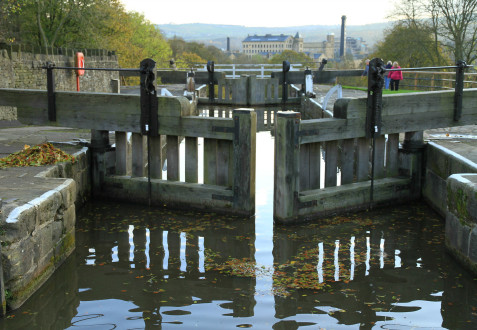
View down the lock, Bingley, West Yorkshire, England.
Bingley Five Rise Locks. Opened in 1774, these famous locks consist of five chambers and six gates on the Leeds and Liverpool canal. The five rise is the steepest flight of locks in the United Kingdom, with canal boats rising 18.03 meters over a distance of 98 meters.
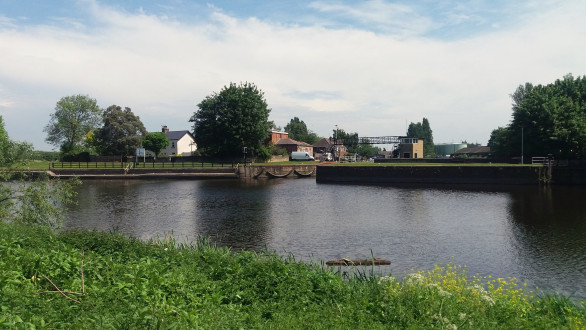
Castleford Flood Lock Aire and Calder Navigation Yorkshire
34079965214_4f392d4694_k
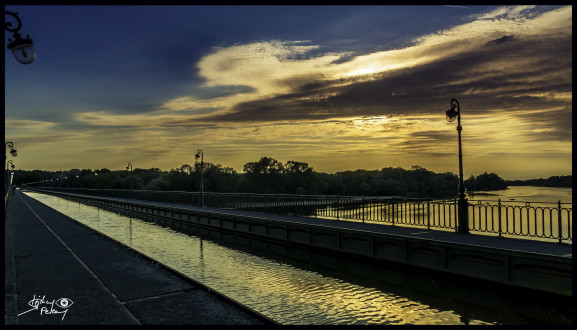
Pont-canal de Briare Loiret
Ce pont navigable enjambe la Loire. Il relie la Seine et la Saône. Pour éviter les aléas de la navigation en Loire, il a été entrepris en 1890 par l’entreprise Eiffel. Gustave Eiffel a participé à sa construction. Destiné à franchir le fleuve, cet ouvrage d’art est le plus long du monde 663 mètres, pour une largeur de 11 m 50 et une hauteur de 11 mètres, mais aussi le plus élégant avec ses pilastres ornés et ses 72 lampadaires de style fin 19 ème siècle.
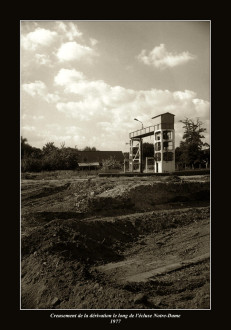
Creusement de la dérivation du canal le long de l'écluse Notre-Dame, 1977
Vue sur l'amont de l'écluse . Négatif numérisé . Valenciennes, Hainaut, Nord, France . Photographie J-P Leroy, tous droits réservés .
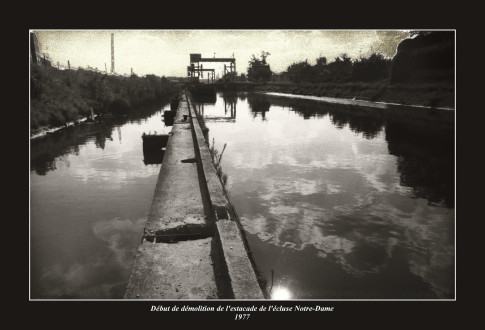
Début de la démolition de l'estacade de l'écluse Notre-Dame, 1977
Vue vers l'amont et l'écluse . Négatif numérisé . Valenciennes, Hainaut, Nord, France . Photographie J-P Leroy, tous droits réservés .
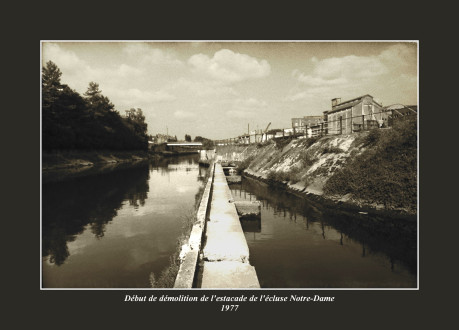
Début de la démolition de l'estacade de l'écluse Notre-Dame, 1977
Vue vers le pont du faubourg de Paris . Négatif numérisé . Valenciennes, Hainaut, Nord, France . Photographie J-P Leroy, tous droits réservés .
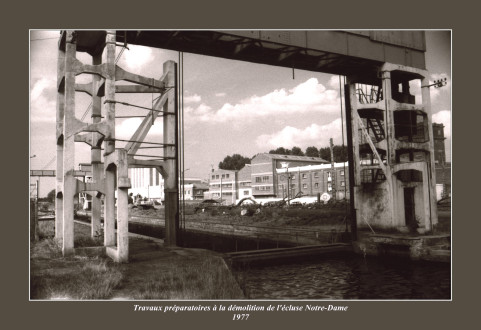
Travaux préparatoires à la démolition de l'écluse Notre-Dame, 1977
Vue d'aval en amont . Négatif numérisé . Valenciennes, Hainaut, Nord, France . Photographie J-P Leroy, tous droits réservés .
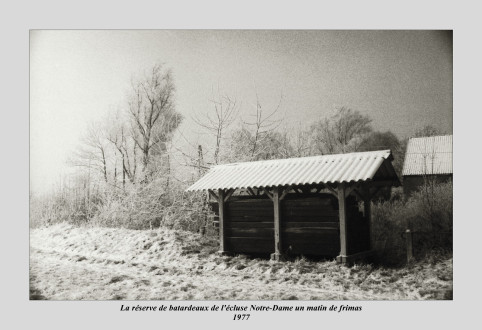
L'abri des batardeaux de l'écluse Notre-Dame, 1977
Ce matin là par chance j'étais libre, pas de stage hospitalier . J'ai la surprise de voir le paysage tout blanc . Un frimas couvrait la ville . Je n'ai par la suite plus jamais vu cela . J'ai pris les deux films qui me restaient, un NB et un de dias, et je suis vite sorti . Négatif numérisé . Valenciennes, Hainaut, Nord, France . Photographie J-P Leroy, tous droits réservés .
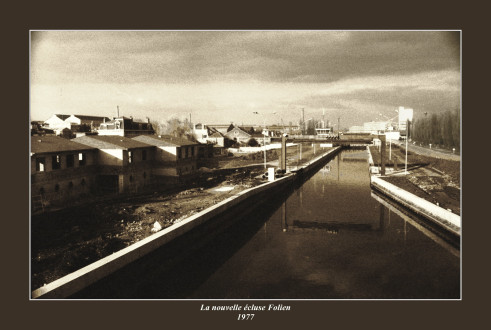
La nouvelle écluse Folien, 1977
Vue depuis l'amont . Les logements des agents des voies navigables sont encore loin d'être habitables . Négatif numérisé . Valenciennes, Hainaut, Nord, France . Photographie J-P Leroy, tous droits réservés .
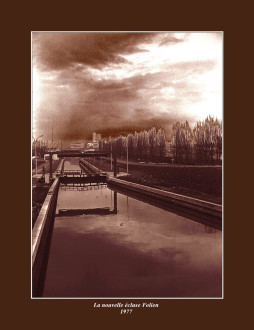
La nouvelle écluse Folien, 1977
L'écluse est terminée, vue depuis l'amont . Négatif numérisé . Valenciennes, Hainaut, Nord, France . Photographie J-P Leroy, tous droits réservés .
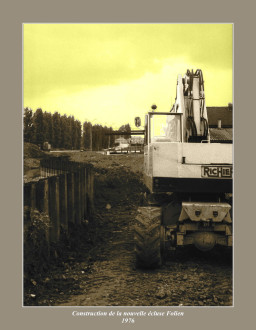
Construction de la nouvelle écluse Folien, 1976
Aménagement des quais . Négatif numérisé . Valenciennes, Hainaut, Nord, France . Photographie J-P Leroy, tous droits réservés .
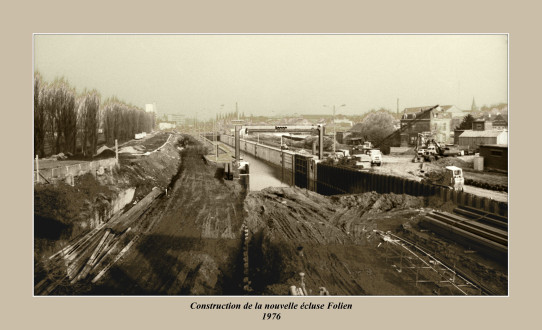
Construction de la nouvelle écluse Folien, 1976
Vue depuis les ponts vers l'aval . Négatif numérisé . Valenciennes, Hainaut, Nord, France . Photographie J-P Leroy, tous droits réservés .
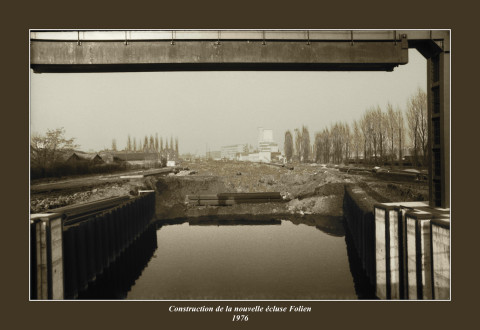
Construction de la nouvelle écluse Folien, 1976
Vue depuis les portes aval, pas encore posées . Négatif numérisé . Valenciennes, Hainaut, Nord, France . Photographie J-P Leroy, tous droits réservés .
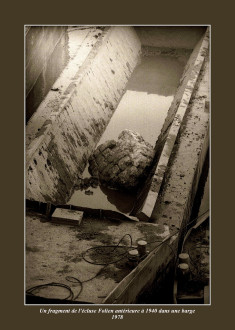
Dans une barge un fragment de la vieille écluse Folien
L'écluse antérieure à 1940 part à la décharge, 1978 . Négatif numérisé . Valenciennes, Hainaut, Nord, France . Photographie J-P Leroy, tous droits réservés .
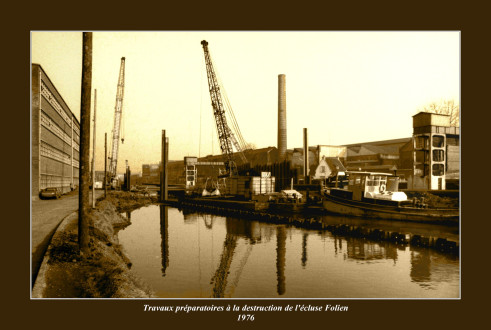
Travaux préparatoires à la destruction de l'écluse Folien en 1976
Pose de palplanches pour réaliser une dérivation en attente de la mise en service de la nouvelle écluse, située au niveau de l'îlot Folien . Négatif numérisé . Valenciennes, Hainaut, Nord, France . Photographie J-P Leroy, tous droits réservés .
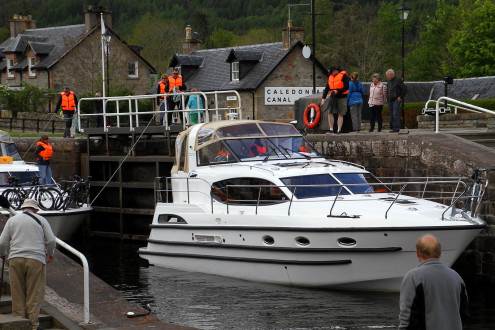
Fort Augustus
33942219023_db5c73db63_k
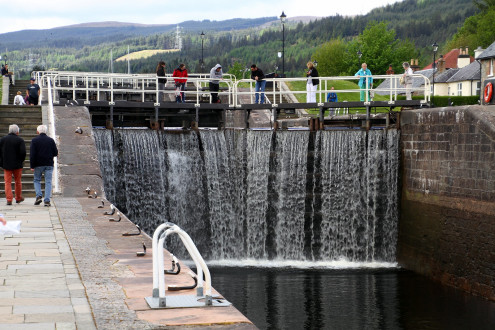
Fort Augustus, 8 écluses.
33942238103_9c956ba5b7_k
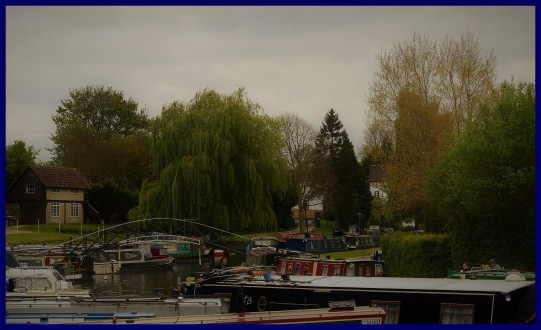
Hallingbury Marina
33519422074_a7fd21a020_k
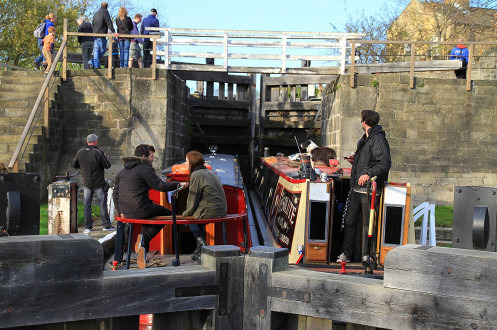
Waiting at the lock gates Bingley
Yorkshire, England.
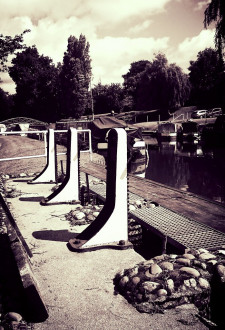
lock outlet
28088989252_18c44561e0_k
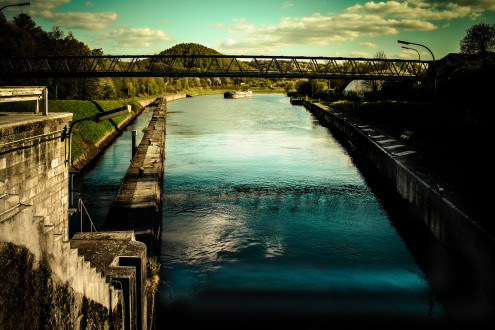
10042017-_MG_4079
Ecuse Courcelles - Hainaut - Region Wallonne

Le nouveau.....................................................................Un des anciens
26050708085_132b1d4168_k
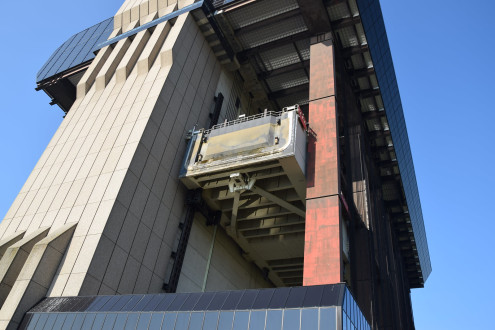
Ascenseur de Strépy-Thieu.
25768379011_1832bc08f2_k
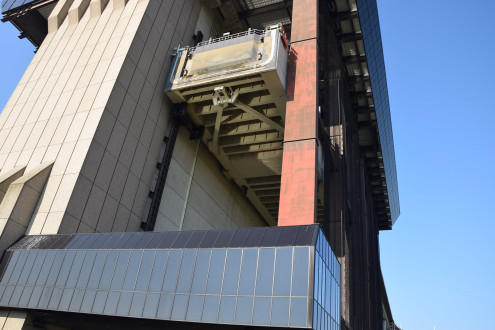
Ascenseur de Strépy-Thieu.
25562719660_559d446a44_k
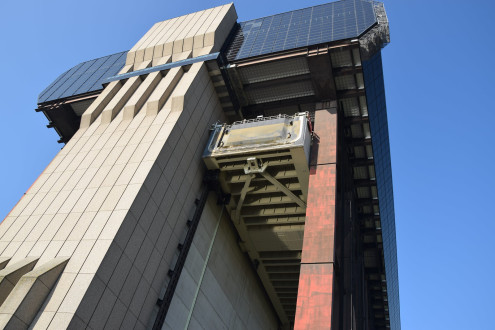
Ascenseur de Strépy-Thieu.
25837322976_af4d77b09a_k
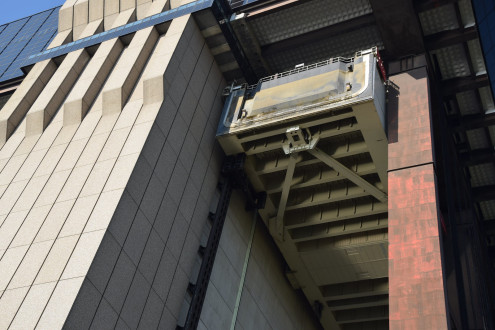
Ascenseur de Strépy-Thieu.
25232770774_550f23ef2f_k
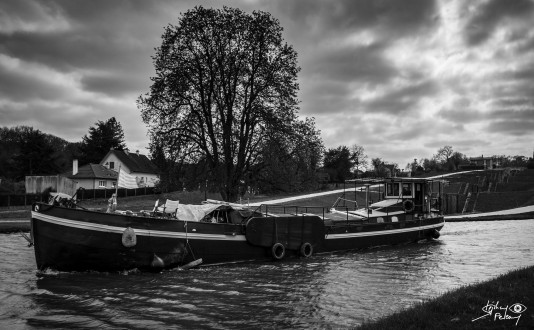
Rogny les 7 écluses
Loiret France
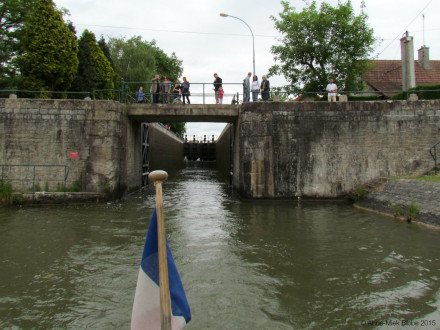
WE VAREN DE SLUIS UIT || LEAVING THE LOCK
26447748595_a3e30a973f_k
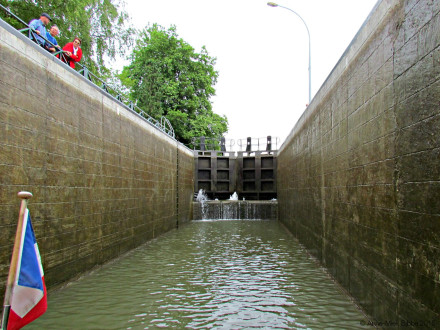
IN DE SLUIS
26447748375_03858e66e1_k
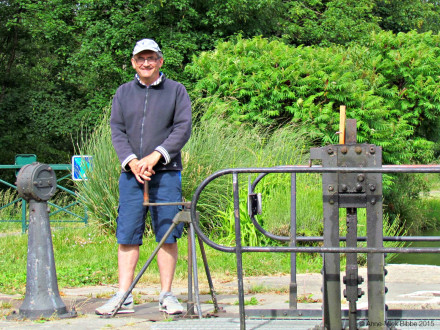
SLUISWACHTER
26355436412_783263701c_k
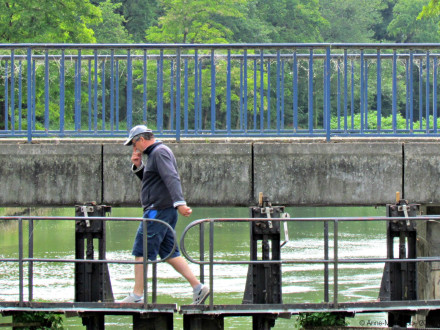
SLUISWACHTER LOOPT OVER DE SLUISDEUREN
26174916660_df7007a61d_k
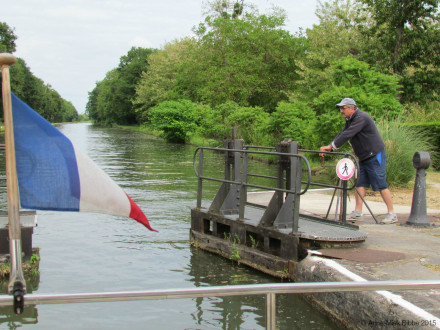
WE VAREN DE SLUIS UIT
25844931333_814063a439_k
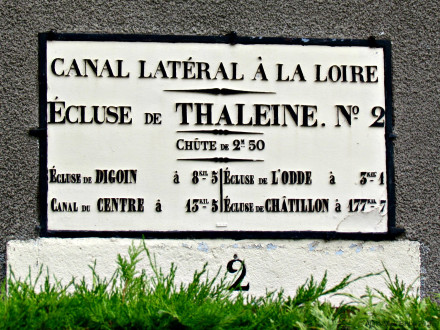
ÉCLUSE DE THALEINE NO 2
25842902854_d4655428cb_k
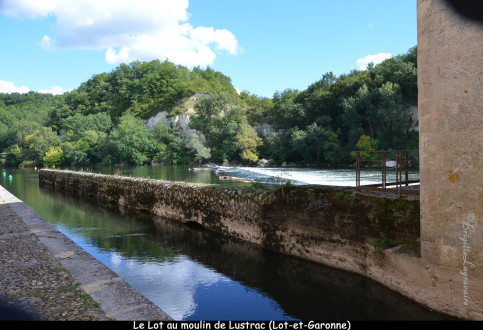
+L'écluse et le barrage du moulin de Lustrac
2015-09-23-Lustrac (25)
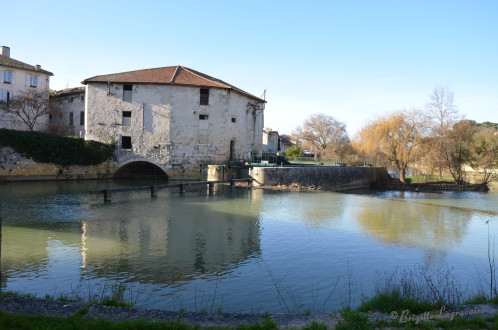
Nérac, l'écluse et le barrage sur la Baïse
Lot-et-Garonne, Aquitaine, Gascogne 2016-02-06-Baïse (67)
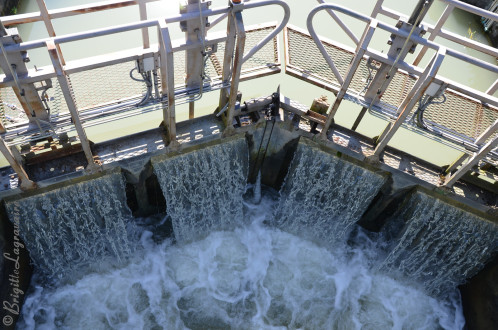
L'écluse St-Christophe vue du pont
Canal latéral à la Garonne 2014-07-15-bateau (4)
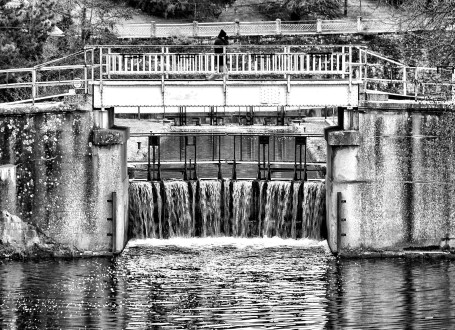
Passerelle plan d'eau
32164913166_ac8b5b3349_k
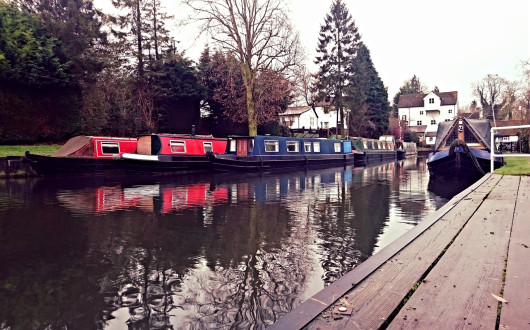
Hallingbury Marina
31946521282_25f2f9f272_k
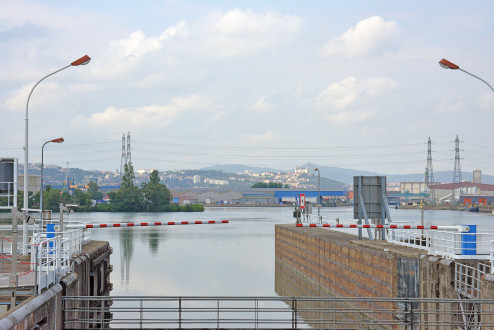
RhôneSaône_2016 08 18_1587
Écluse de Pierre-Bénite 2 miles from the confluence of the Rhône and Saône rivers in Lyon / Cruising for 4 hours up the Rhône from Vienne through the confluence of the Rhône and Saône rivers in Lyon allows for some interesting sites and we eventually make our way to Collonges-au-Mont-d'Or, 10 km north of Lyon, for dinner at the Abbaye de Collonges
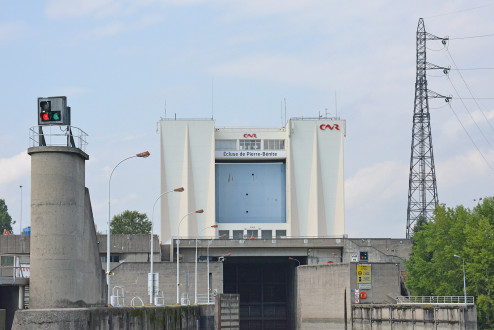
RhôneSaône_2016 08 18_1583
Écluse de Pierre-Bénite 2 miles from the confluence of the Rhône and Saône rivers in Lyon / Cruising for 4 hours up the Rhône from Vienne through the confluence of the Rhône and Saône rivers in Lyon allows for some interesting sites and we eventually make our way to Collonges-au-Mont-d'Or, 10 km north of Lyon, for dinner at the Abbaye de Collonges
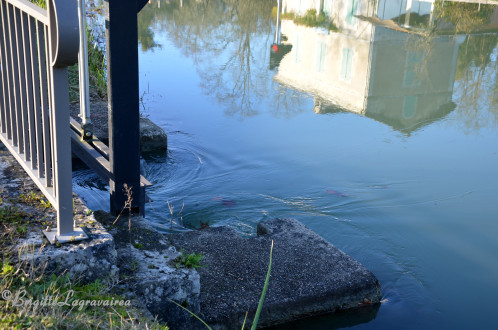
Tourbillons et reflets d'automne
Écluse St-Christophe, Lot-et-Garonne 2013-12-07-Lafox (20n)
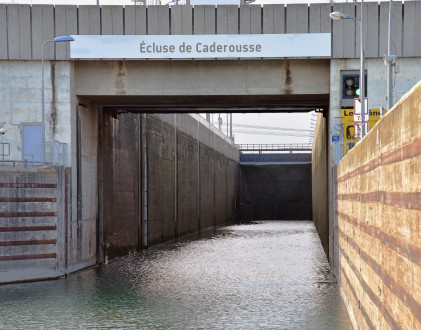
Avignon_2016 08 16_0809
Écluse de Caderousse [Lock at Caderousse, France]
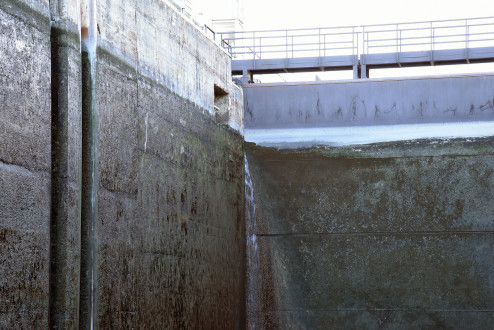
Avignon_2016 08 16_0815
Écluse de Caderousse [Lock at Caderousse, France]
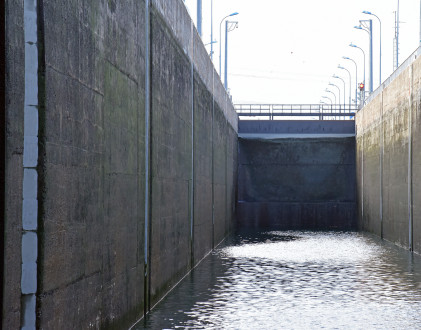
Avignon_2016 08 16_0812
Écluse de Caderousse [Lock at Caderousse, France]
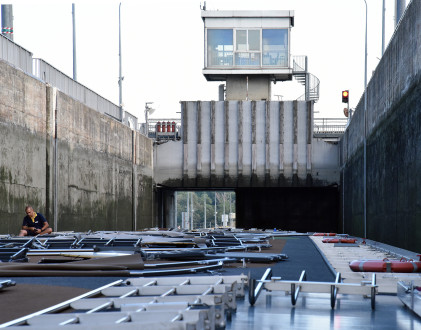
Avignon_2016 08 16_0816
Écluse de Caderousse [Lock at Caderousse, France]
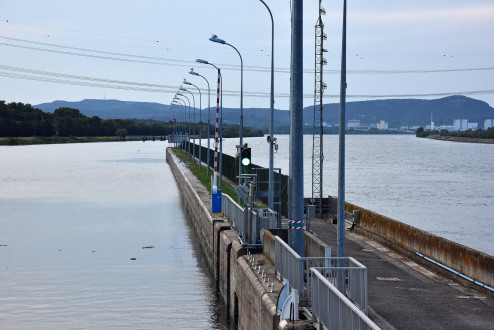
Avignon_2016 08 16_0830
Écluse de Caderousse [Lock at Caderousse, France]
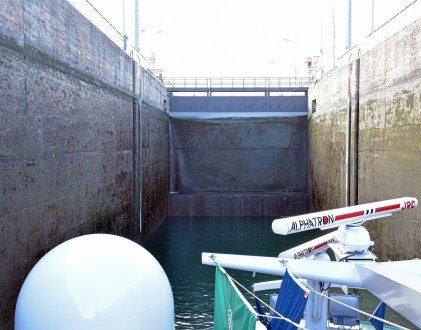
Avignon_2016 08 16_0818
Écluse de Caderousse [Lock at Caderousse, France]
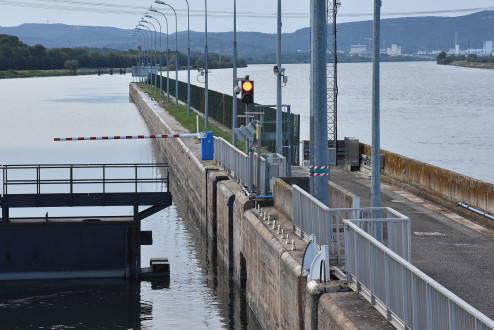
Avignon_2016 08 16_0826
Écluse de Caderousse [Lock at Caderousse, France]
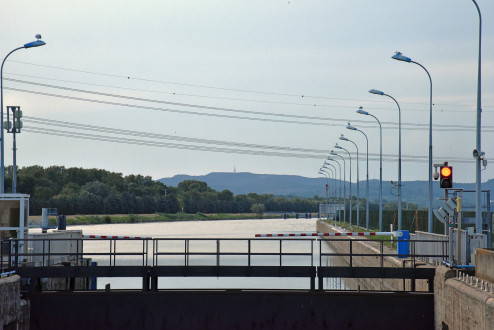
Avignon_2016 08 16_0823
Écluse de Caderousse [Lock at Caderousse, France]
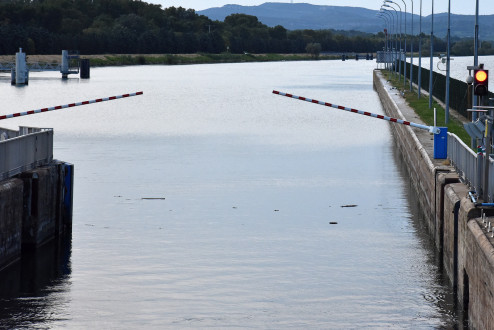
Avignon_2016 08 16_0828
Écluse de Caderousse [Lock at Caderousse, France]
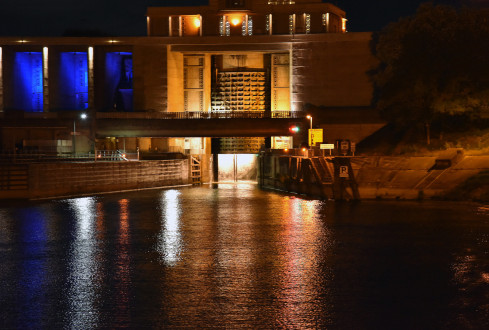
Avignon_2016 08 16_0851
Écluse de Bollène [Lock at Bollène, France]
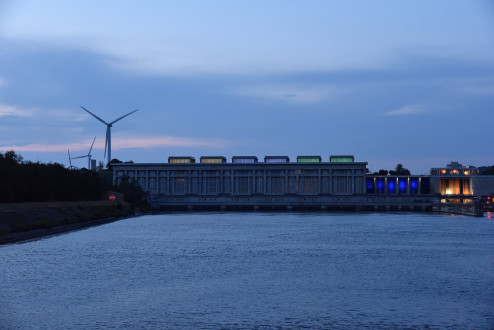
Avignon_2016 08 16_0832
Écluse de Bollène [Lock at Bollène, France]
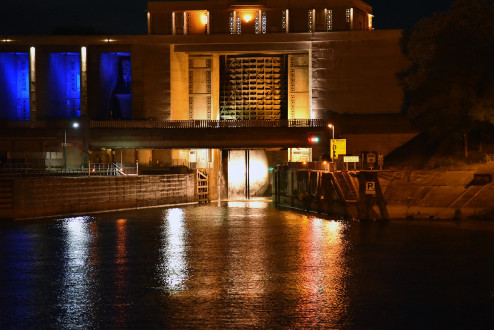
Avignon_2016 08 16_0853
Écluse de Bollène [Lock at Bollène, France]
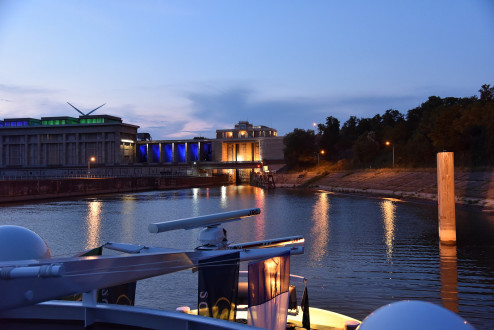
Avignon_2016 08 16_0842
Écluse de Bollène [Lock at Bollène, France]
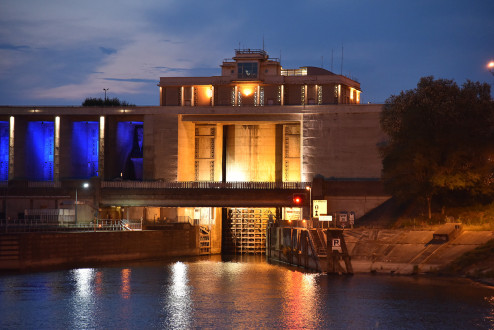
Avignon_2016 08 16_0845
Écluse de Bollène [Lock at Bollène, France]
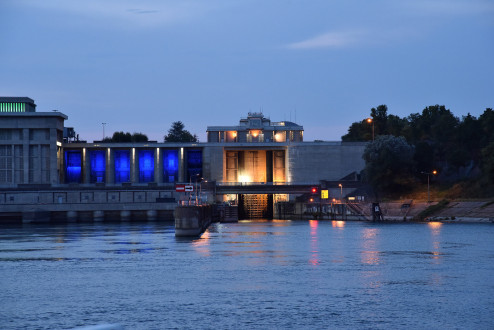
Avignon_2016 08 16_0834
Écluse de Bollène [Lock at Bollène, France]
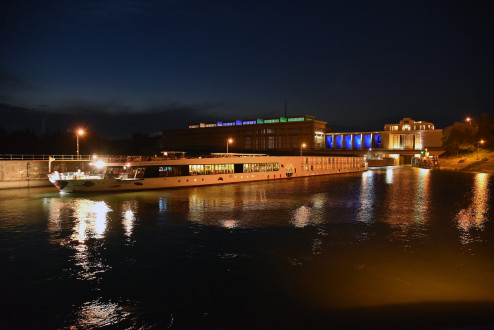
Avignon_2016 08 16_0862
M/S A-Rosa Luna leaving the Lock on its way South to Avignon / Écluse de Bollène [Lock at Bollène, France]
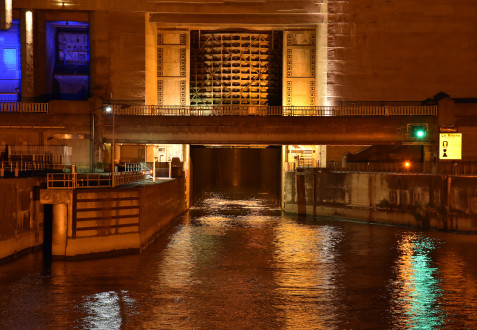
Avignon_2016 08 16_0867
M/S Swiss Emerald entering the Lock on its way North to Viviers / Écluse de Bollène [Lock at Bollène, France]
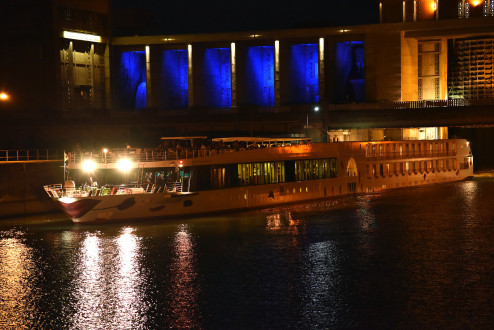
Avignon_2016 08 16_0859
M/S A-Rosa Luna leaving the Lock on its way South to Avignon / Écluse de Bollène [Lock at Bollène, France]
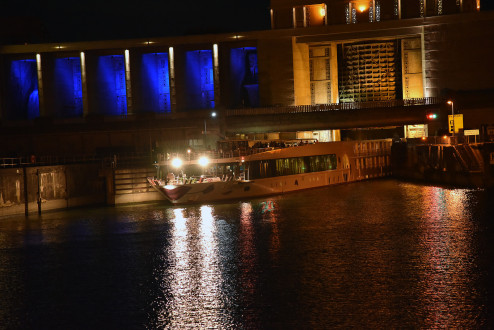
Avignon_2016 08 16_0857
M/S A-Rosa Luna leaving the Lock on its way South to Avignon / Écluse de Bollène [Lock at Bollène, France]
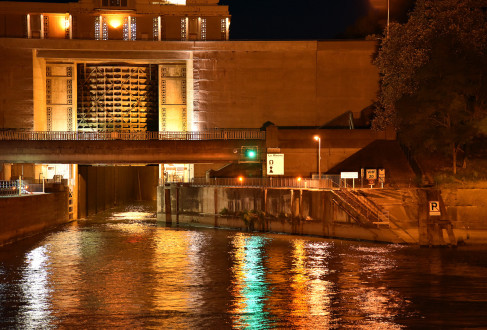
Avignon_2016 08 16_0866
M/S Swiss Emerald entering the Lock on its way North to Viviers / Écluse de Bollène [Lock at Bollène, France]
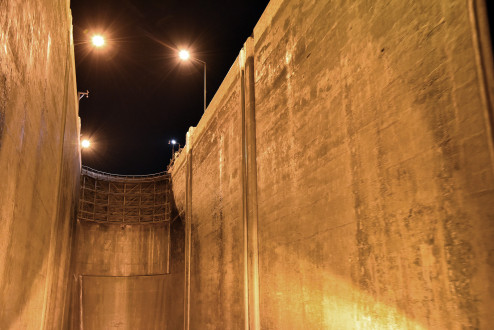
Avignon_2016 08 16_0877
M/S Swiss Emerald entering the Lock on its way North to Viviers / Écluse de Bollène [Lock at Bollène, France]
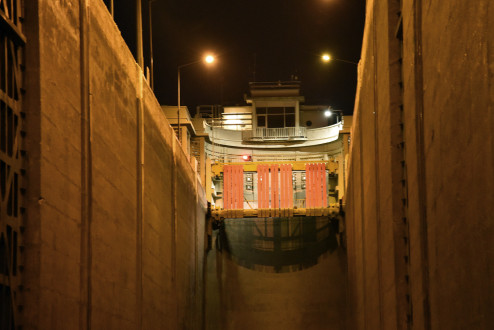
Avignon_2016 08 16_0880
M/S Swiss Emerald in the Lock [Aft View] on its way North to Viviers / Écluse de Bollène [Lock at Bollène, France]
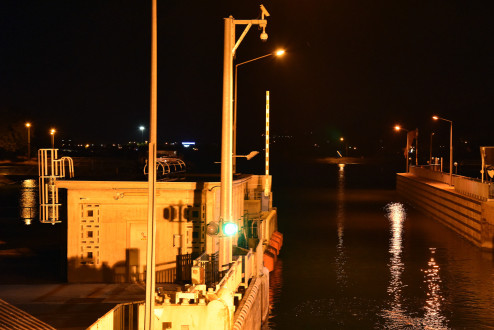
Avignon_2016 08 16_0896
M/S Swiss Emerald in the Lock [and getting to signal to move out] and on its way North to Viviers / Écluse de Bollène [Lock at Bollène, France]
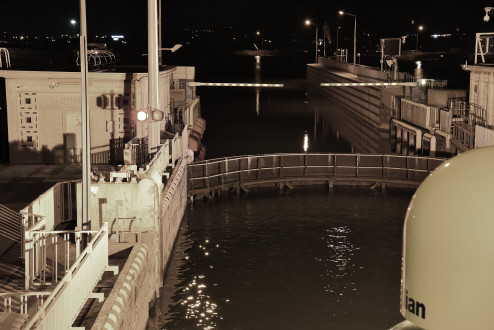
Avignon_2016 08 16_0889
M/S Swiss Emerald in the Lock [and waiting for the gate to open] on its way North to Viviers / Écluse de Bollène [Lock at Bollène, France]
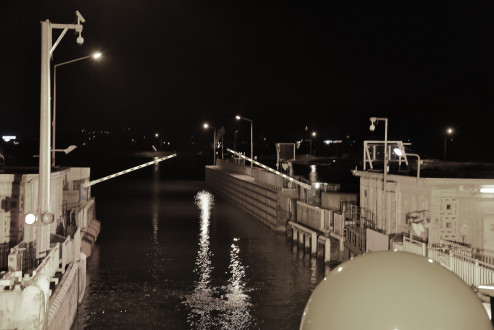
Avignon_2016 08 16_0893
M/S Swiss Emerald in the Lock [and waiting for the gate to open] on its way North to Viviers / Écluse de Bollène [Lock at Bollène, France]
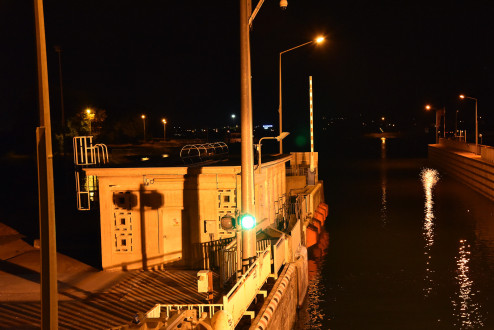
Avignon_2016 08 16_0898
M/S Swiss Emerald in the Lock [and getting a signal to move out] and on its way North to Viviers / Écluse de Bollène [Lock at Bollène, France]
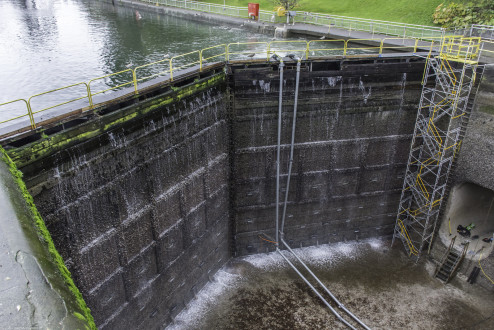
Hiram M Chittenden Locks
31147492525_7df05e7024_k
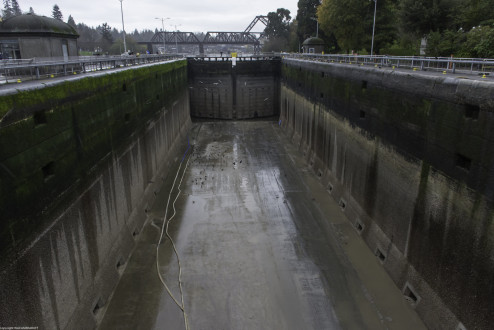
Hiram M Chittenden Locks
31111406896_8130aa4ef3_k
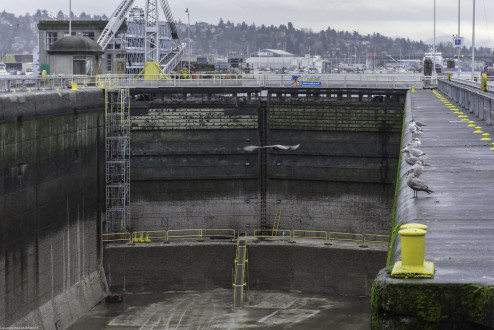
Hiram M Chittenden Locks
31111404716_d573af0129_k
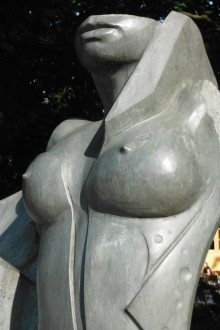
nearly perfect ...
Symphonie Ménehildienne; 2009; Henri-Patrick Stein; Sainte-Ménehould / Frankreich; location: Bruchsal, germany; DSCF0480;
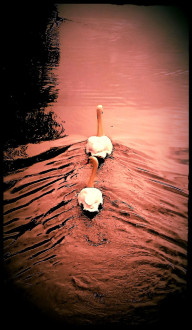
swans
29170860343_32b36c9858_k

L'écluse St-Christophe sur le canal latéral à la Garonne (rive droite) 1/4
(2013-12-07-Lafox (6)
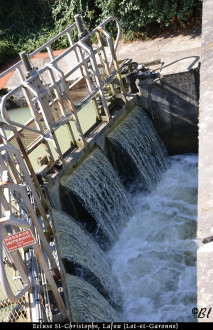
En aval un bateau approche, l'écluse se vide
2014-07-15-bateau (3)
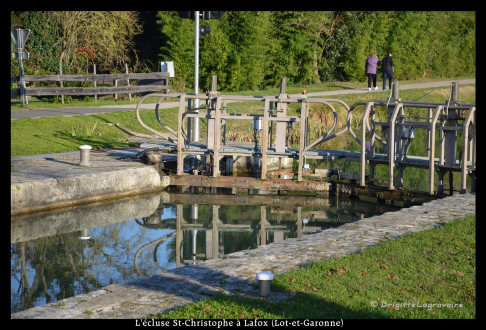
L'écluse St-Christophe sur le canal latéral à la Garonne (de la rive gauche) 3/4
(2013-12-07-Lafox (8)
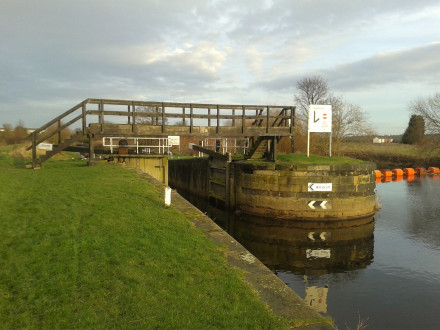
Thornes Flood Lock Calder and Hebble Navigation Wakefield Yorkshire
28666084365_90851c7704_k
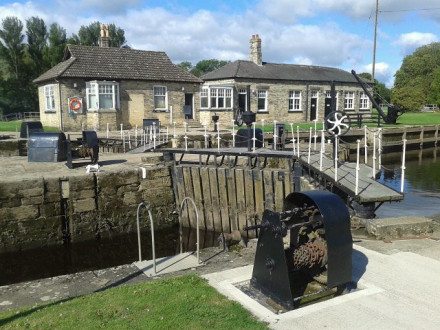
Naburn Lock River Ouse Yorkshire
28635142616_19364f3a96_z
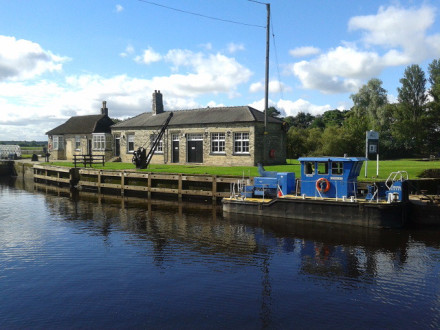
Naburn Lock River Ouse Yorkshire
21063587345_c0a2589217_z
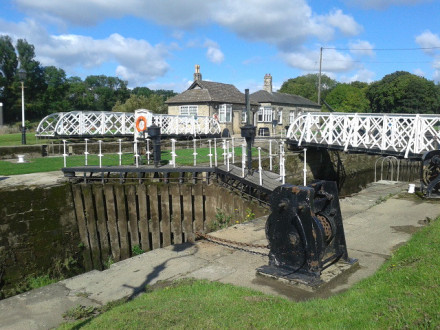
Naburn Lock River Ouse Yorkshire
21063548885_bf29421fe8_z
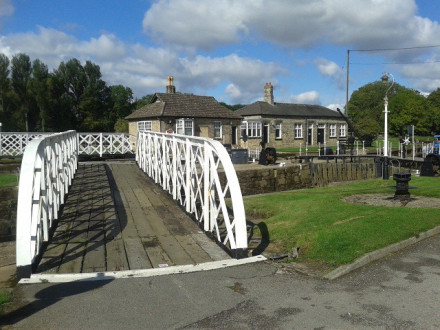
Naburn Lock River Ouse Yorkshire
21053583642_951bce0ef2_z
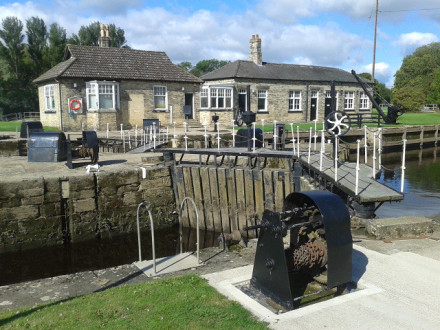
Naburn Lock River Ouse Yorkshire
21037348416_7d87fa7b30_z
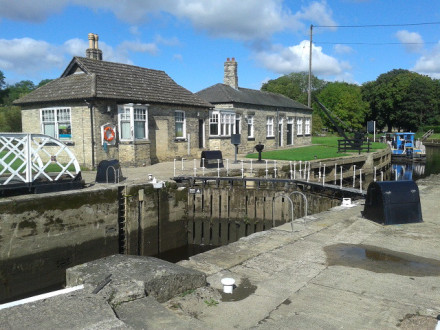
Naburn Lock River Ouse Yorkshire
20876761229_e2c7826248_z
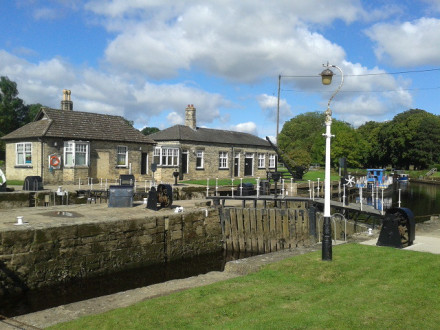
Naburn Lock River Ouse Yorkshire
20875681368_447bedc81b_z
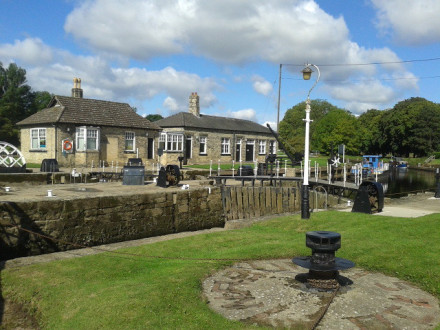
Naburn Lock River Ouse Yorkshire
20442504103_92705cd9b5_z
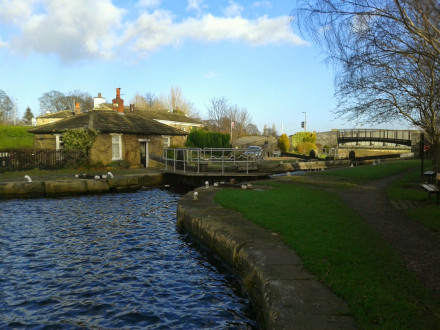
Shepley Bridge Lock Calder and Hebble Navigation Yorkshire
16175164112_98665e059e_k
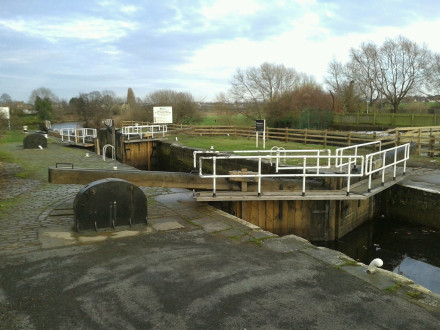
Thornes Lock Calder and Hebble Navigation Wakefield Yorkshire
16131395186_538352b988_k
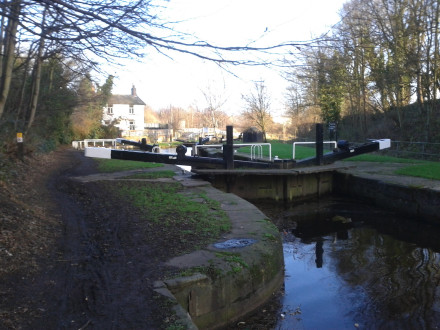
Thornhill Double Top Lock Calder and Hebble Navigation Yorkshire
15999462637_9e1ad5a290_k
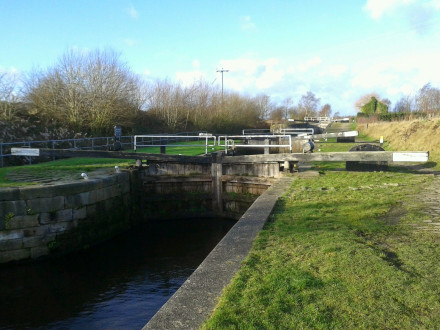
Figure of Three Locks Calder and Hebble Navigation Yorkshire
15990100547_a2a62f1533_k
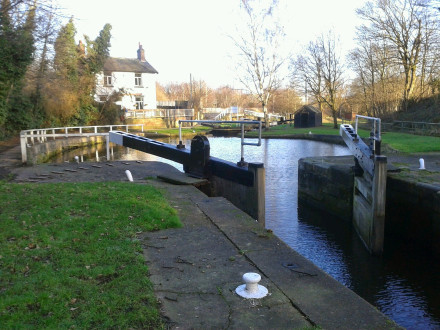
Thornhill Double Locks Calder and Hebble Navigation Yorkshire
15989877989_ac2f71fb1b_k
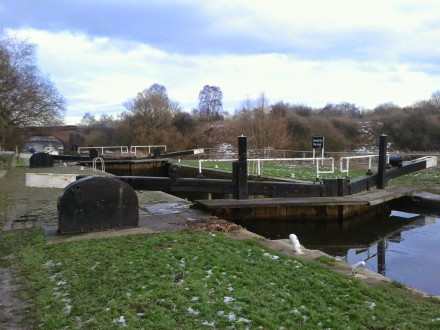
Broad Cut Top Lock Calder and Hebble Navigation Calder Grove Wakefield Yorkshire
15971103559_407c423d83_k
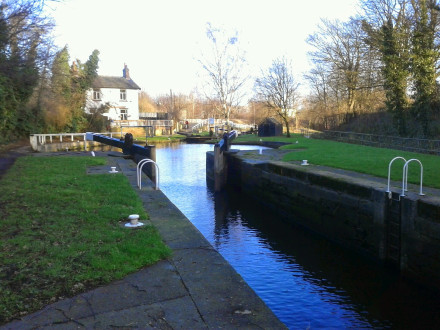
Thornhill Double Locks Calder and Hebble Navigation Yorkshire
15556151053_10efdaa86e_k
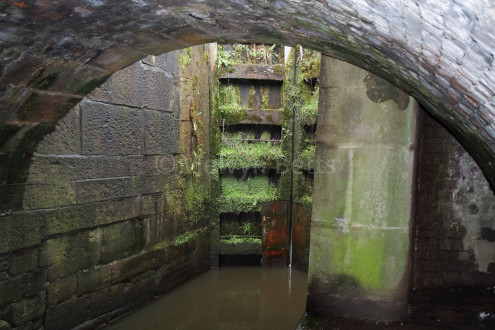
12480 Peak Forest Canal lock gates Marple
7596972848_305dcca4b9_h
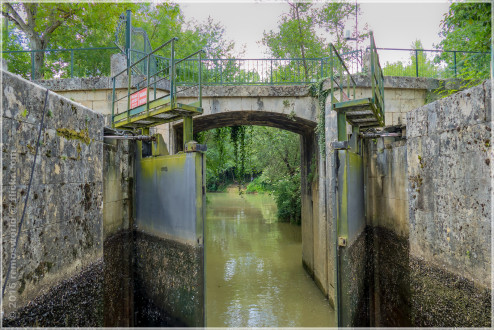
Hausbootferien 2016, Agen/La Baïse, Schleuse auf der Baïse mit Efeu
Schleuse auf der Baïse mit Efeu, /Frankreich

Hausbootferien 2016, Agen/La Baïse, sur la Baïse. Schleuse Flaran (3.30m)
sur la Baïse. Schleuse Flaran (3.30m), sur la Baïse/Frankreich
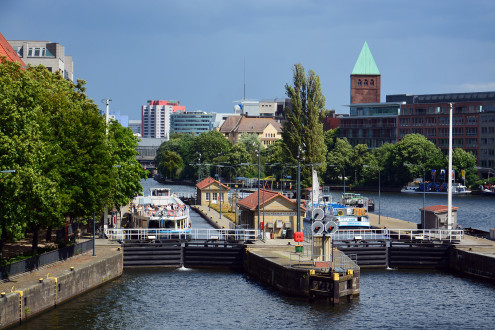
Mühlendammschleuse / Berlin
(Mills Dam lock) Twin locks on the river Spree completed 1942, said to be the busiest in Germany. Central Berlin, Germany. (CC BY-SA - credit: Images George Rex.)
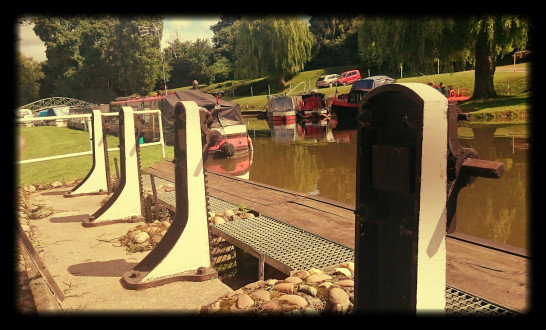
Hallingbury Marina
28154893885_bf7c62e132_k
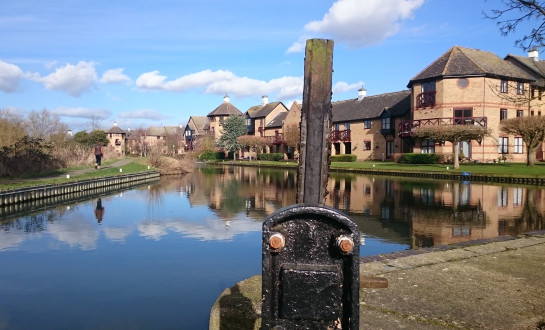
Water front
25051272374_4f41b6a556_k
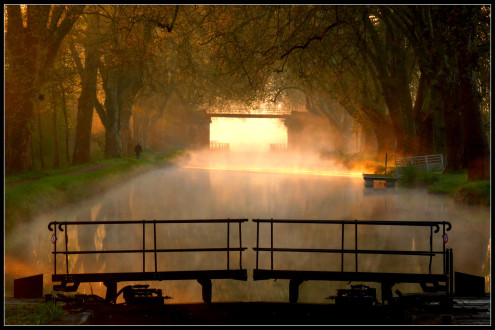
Lever du jour sur le canal
Dole - Jura
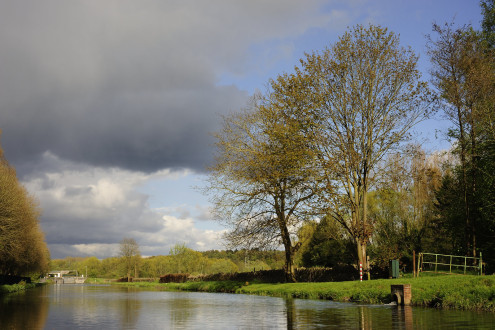
Blaton
26622044685_3180cb2bc2_k
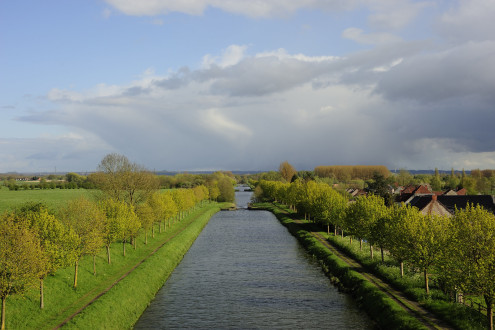
Bernissart
26018947793_91143ccefa_k
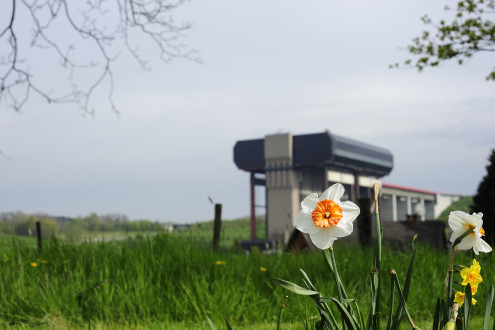
Strépy-Thieu
Flowers
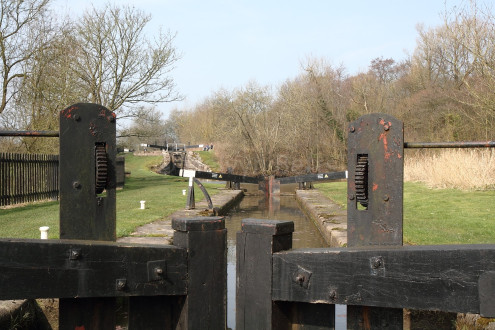
12197 Macclesfield Canal Bosley Locks No11
6957406934_3f5f82c3b5_h
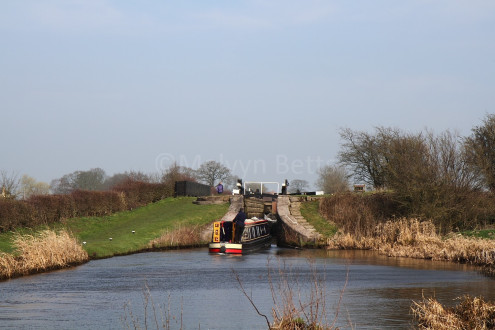
12191 Macclesfield Canal Bosley Locks
7094423983_33d911f13e_h
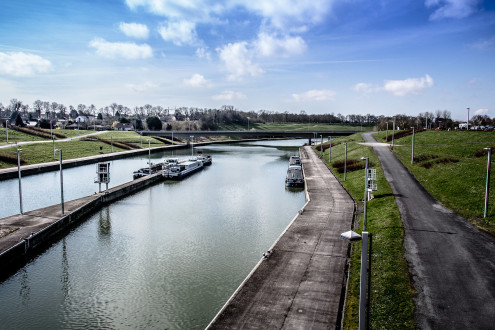
IMG_9746-2
Wallonie - Vue de l'ascenseur de Strepy
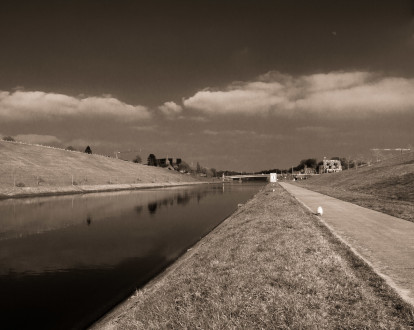
IMG_9622-2
Wallonie - Canal du Centre - Thieu
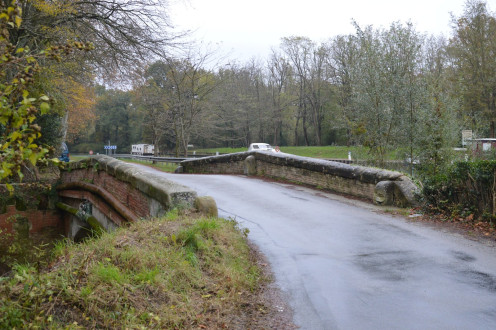
Ecluse de Négra
11015349214_f76373e5e6_k
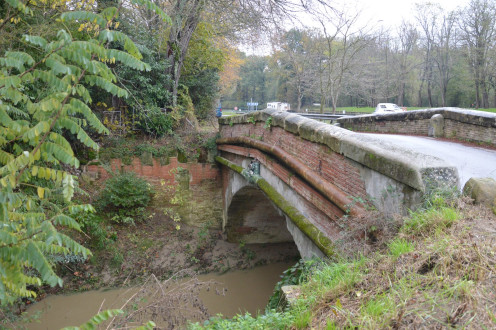
Ecluse de Négra
11015279086_924a54f0ea_k
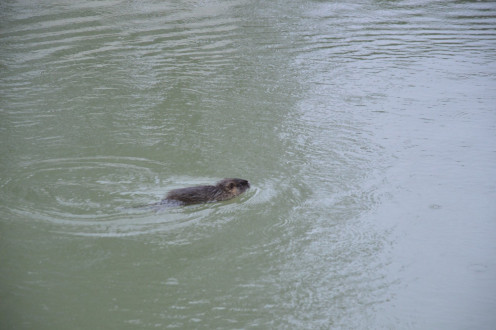
Ecluse de Négra
11015403443_eaf82a383c_k
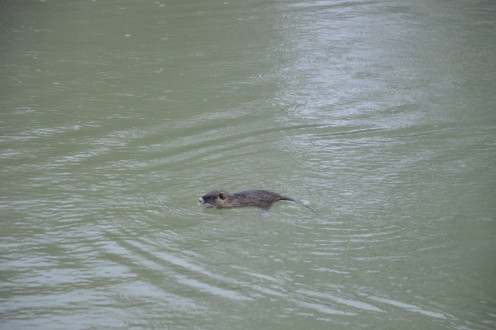
Ecluse de Négra
11015401893_4e1521242b_k
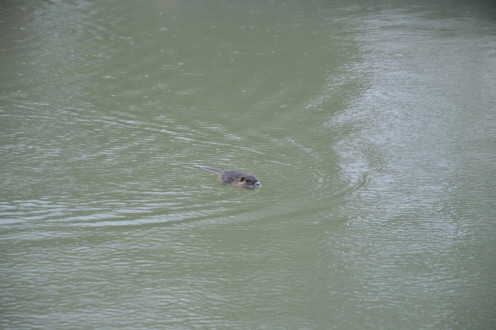
Ecluse de Négra
11015353834_4e2dd29acc_k
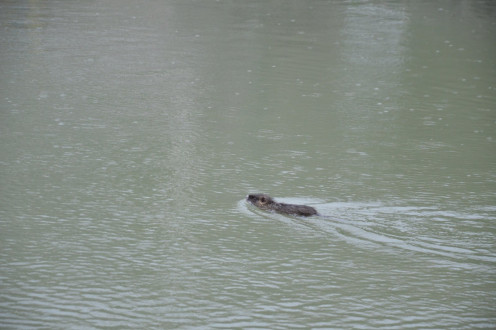
Ecluse de Négra
11015178425_6976a0a466_k
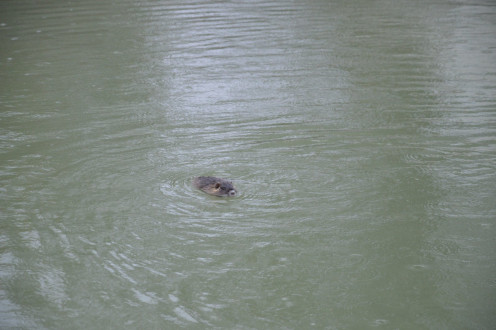
Ecluse de Négra
11015391243_9c8d1b62fd_k
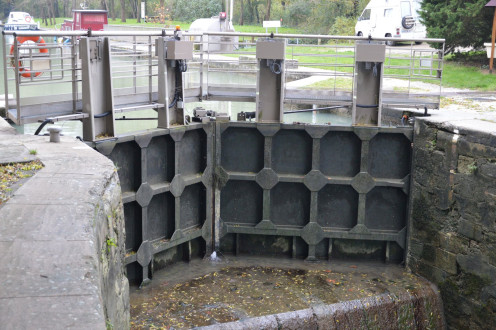
Ecluse de Négra
11015365313_f559d456de_k
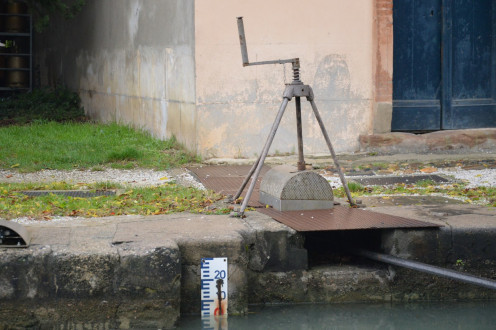
Ecluse de Négra
11015270786_4200edf5da_k
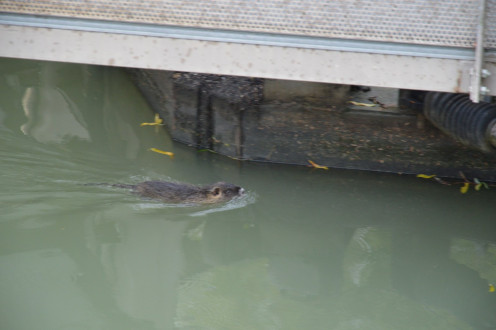
Ecluse de Négra
11015168575_cb619378df_k
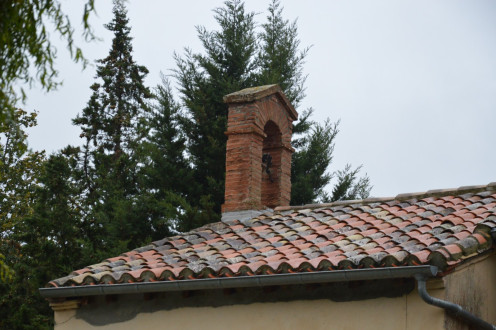
Ecluse de Négra
11015324814_0de548813e_k
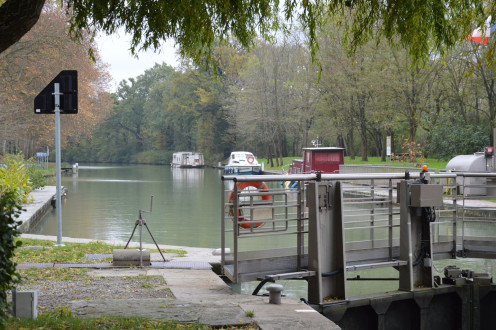
Ecluse de Négra
11015322754_511e01073d_k
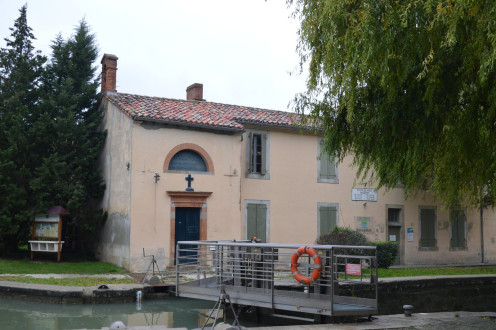
Ecluse de Négra
11015376203_2d3ea343b3_k
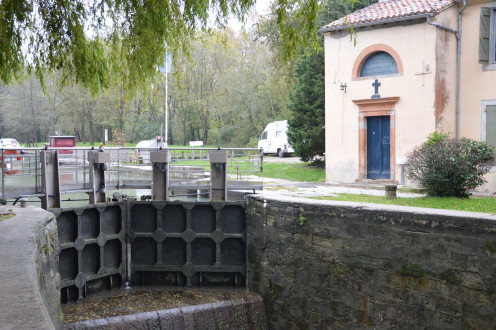
Ecluse de Négra
11015372323_87b4979717_k
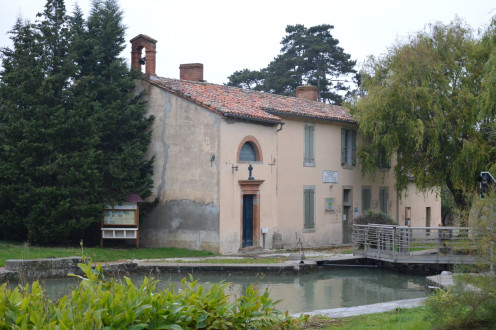
Ecluse de Négra
11015333074_76376cb01c_k
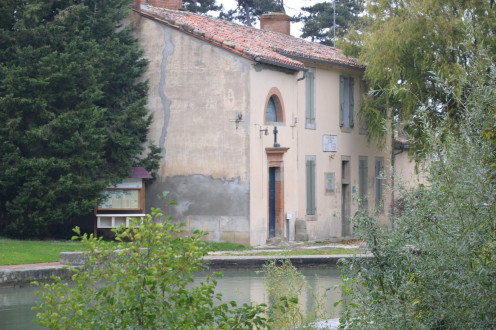
Ecluse de Négra
11015262526_70ba657016_k
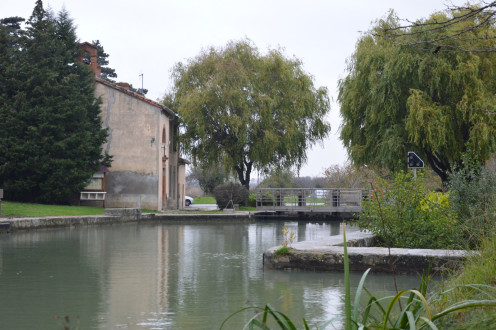
Ecluse de Négra
11015385333_e621aa4511_k
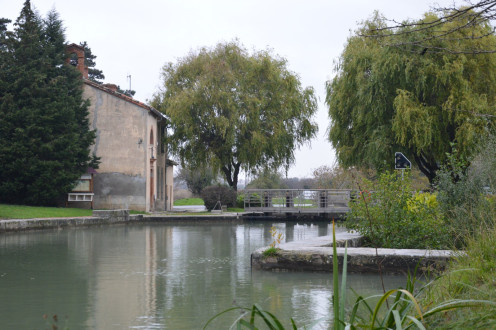
Ecluse de Négra
11015382863_2772cb01de_k
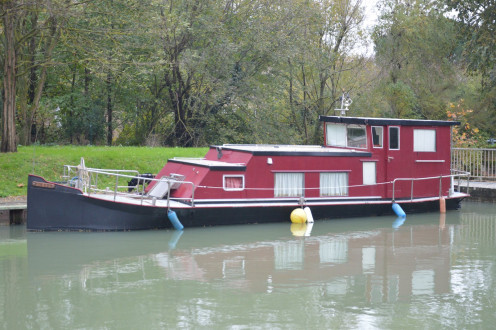
Ecluse de Négra
11015342324_a05cdf1e77_k
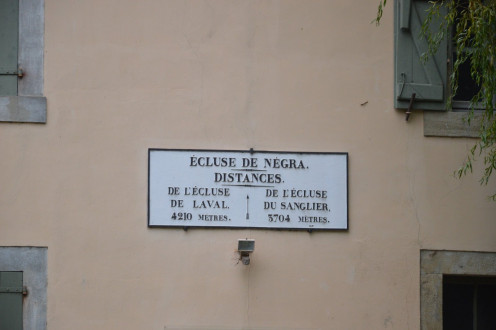
Ecluse de Négra
11015374253_7da31c2f10_k
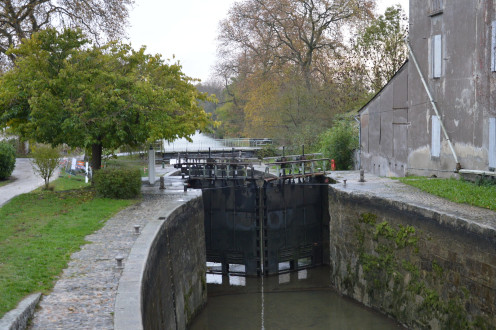
Ecluse du Vivier
11015627564_1d5b0ae6b0_k
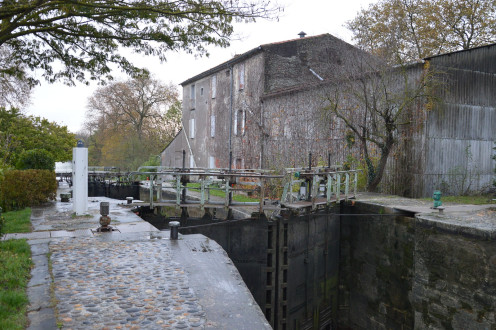
Ecluse du Vivier
11015520404_cdffc72895_k
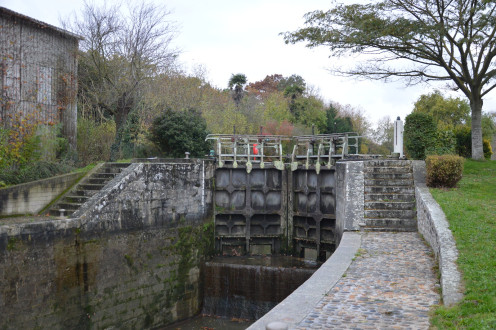
Ecluse du Vivier
11015392435_1507a4c162_k
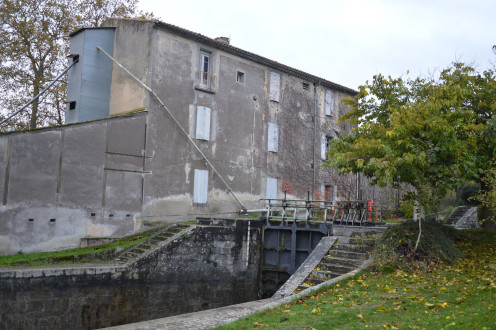
Ecluse du Vivier
11015420905_9a3ca35d20_k
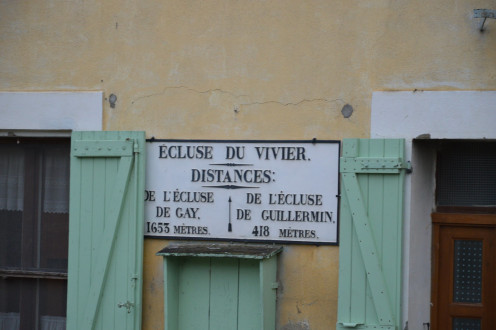
Ecluse du Vivier
11015585223_9194419aff_k
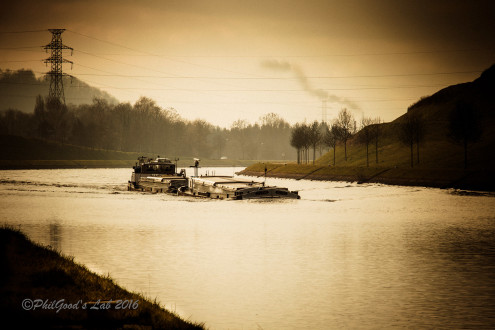
IMG_9635-3
Wallonie - Canal du Centre - Thieu
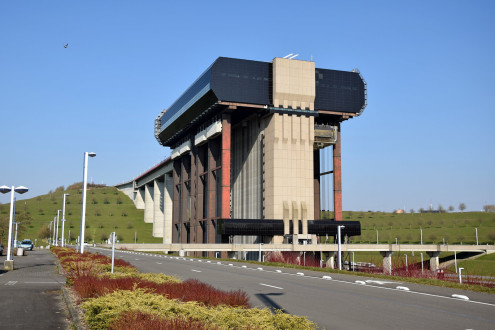
Ascenseur funiculaire de Strépy-Thieu
25770362171_ec1d260295_k
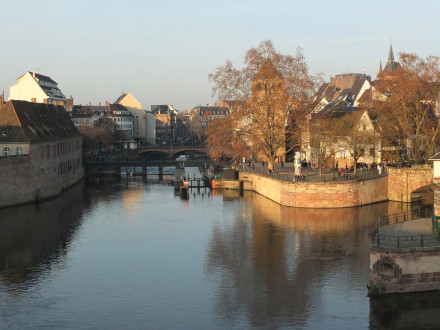
4026
Décembre, Yann et Virginie nous ont invités à passer quelques jours chez eux, au Nord des Vosges . En milieu de matinée Virginie nous a emmenés à Strasbourg ( fr.wikipedia.org/wiki/Strasbourg ) . Comme elle connaît bien la ville elle a choisi un parking en périphérie ( station Poterie ), desservi par le tram ( fr.wikipedia.org/wiki/Tramway_de_Strasbourg ), riche idée ! Et en avant pour les merveilles des décorations de Noël, et aussi de la ville . La « Petite France », quartier qui ( à ma connaissance ) devait faire l'objet d'une « rénovation » ( c'est à dire destruction ) dans les années 70, Cf état avant réhabilitation : fr.wikipedia.org/wiki/Petite_France_%28Strasbourg%29#/med... Les ponts couverts : www.strasbourg.eu/fr/fiche-lieu/-/CusPlaceAssetFOPortlet_... Strasbourg, Bas-Rhin, Alsace, France . Photographie J-P Leroy, tous droits réservés .
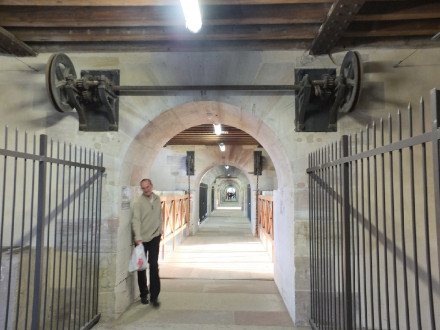
Chez Virginie et Yann, deuxième journée .
Décembre, Yann et Virginie nous ont invités à passer quelques jours chez eux, au Nord des Vosges . En milieu de matinée Virginie nous a emmenés à Strasbourg ( fr.wikipedia.org/wiki/Strasbourg ) . Comme elle connaît bien la ville elle a choisi un parking en périphérie ( station Poterie ), desservi par le tram ( fr.wikipedia.org/wiki/Tramway_de_Strasbourg ), riche idée ! Et en avant pour les merveilles des décorations de Noël, et aussi de la ville . Barrage Vauban . fr.wikipedia.org/wiki/Barrage_Vauban La galerie avec mécanismes des vannes et moulages de sculptures de la cathédrale . Strasbourg, Bas-Rhin, Alsace, France . Photographie J-P Leroy, tous droits réservés .
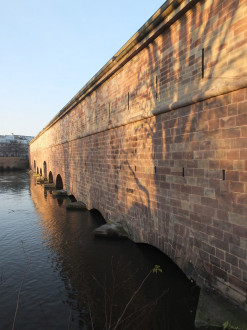
Chez Virginie et Yann, deuxième journée .
Décembre, Yann et Virginie nous ont invités à passer quelques jours chez eux, au Nord des Vosges . En milieu de matinée Virginie nous a emmenés à Strasbourg ( fr.wikipedia.org/wiki/Strasbourg ) . Comme elle connaît bien la ville elle a choisi un parking en périphérie ( station Poterie ), desservi par le tram ( fr.wikipedia.org/wiki/Tramway_de_Strasbourg ), riche idée ! Et en avant pour les merveilles des décorations de Noël, et aussi de la ville . Barrage Vauban . fr.wikipedia.org/wiki/Barrage_Vauban . Face amont ( le logiciel n'a pas respecté la position que j'avais donnée sur la carte ! ) . Strasbourg, Bas-Rhin, Alsace, France . Photographie J-P Leroy, tous droits réservés .
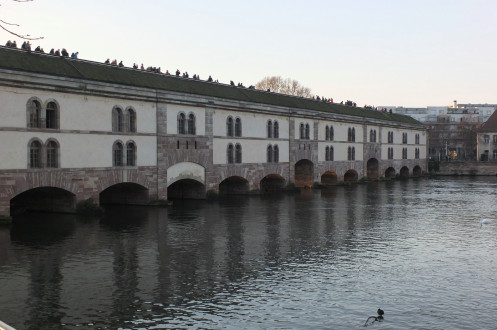
Chez Virginie et Yann, deuxième journée .
Décembre, Yann et Virginie nous ont invités à passer quelques jours chez eux, au Nord des Vosges . En milieu de matinée Virginie nous a emmenés à Strasbourg ( fr.wikipedia.org/wiki/Strasbourg ) . Comme elle connaît bien la ville elle a choisi un parking en périphérie ( station Poterie ), desservi par le tram ( fr.wikipedia.org/wiki/Tramway_de_Strasbourg ), riche idée ! Et en avant pour les merveilles des décorations de Noël, et aussi de la ville . Barrage Vauban . fr.wikipedia.org/wiki/Barrage_Vauban . Face aval . Strasbourg, Bas-Rhin, Alsace, France . Photographie J-P Leroy, tous droits réservés .
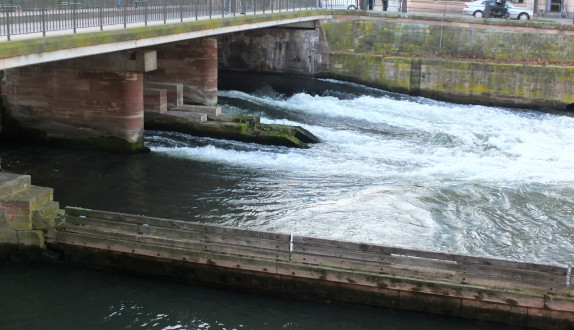
Chez Virginie et Yann, deuxième journée .
26 photographies ont été chargées, ne vous limitez pas aux 5 premières ! Décembre, Yann et Virginie nous ont invités à passer quelques jours chez eux, au Nord des Vosges . En milieu de matinée Virginie nous a emmenés à Strasbourg ( fr.wikipedia.org/wiki/Strasbourg ) . Comme elle connaît bien la ville elle a choisi un parking en périphérie ( station Poterie ), desservi par le tram ( fr.wikipedia.org/wiki/Tramway_de_Strasbourg ), riche idée ! Et en avant pour les merveilles des décorations de Noël, et aussi de la ville . La « Petite France », quartier qui à ma connaissance devait faire l'objet d'une « rénovation » ( c'est à dire destruction ) dans les années 70 : fr.wikipedia.org/wiki/Petite_France_%28Strasbourg%29#/med... Ecluse sur l'Ill . Strasbourg, Bas-Rhin, Alsace, France . Photographie J-P Leroy, tous droits réservés .
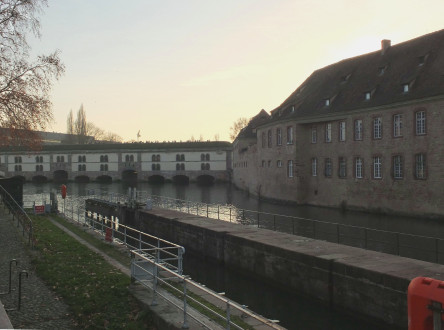
Chez Virginie et Yann, deuxième journée .
26 photographies ont été chargées, ne vous limitez pas aux 5 premières ! Décembre, Yann et Virginie nous ont invités à passer quelques jours chez eux, au Nord des Vosges . En milieu de matinée Virginie nous a emmenés à Strasbourg ( fr.wikipedia.org/wiki/Strasbourg ) . Comme elle connaît bien la ville elle a choisi un parking en périphérie ( station Poterie ), desservi par le tram ( fr.wikipedia.org/wiki/Tramway_de_Strasbourg ), riche idée ! Et en avant pour les merveilles des décorations de Noël, et aussi de la ville . La « Petite France », quartier qui à ma connaissance ( c'est contesté ) devait faire l'objet d'une « rénovation » ( c'est à dire destruction ) dans les années 70 : fr.wikipedia.org/wiki/Petite_France_%28Strasbourg%29#/med... Barrage Vauban, face aval, dans le fond . Strasbourg, Bas-Rhin, Alsace, France . Photographie J-P Leroy, tous droits réservés .
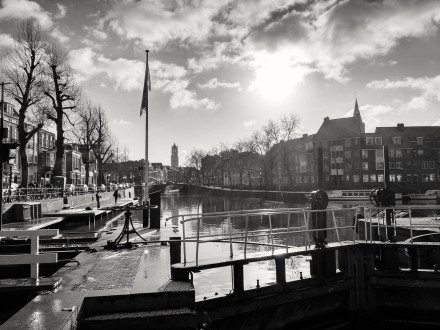
Weerdsluis
24420898636_a547a97999_k
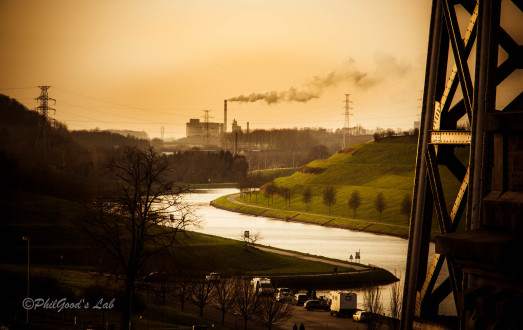
IMG_8894-5
Wallonie - Canal du Centre - Vue du dessus de l'ascenseur nr 4
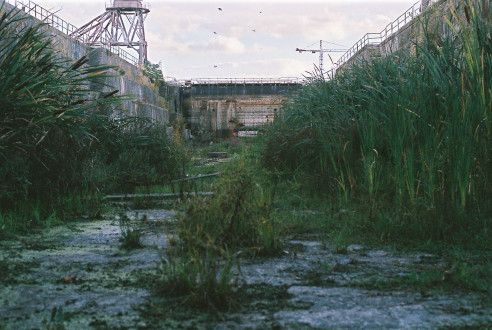
Olympus OM-10, Fujifilm superia x-tra 400
Bordeaux, cale sèche, Bassin à flots
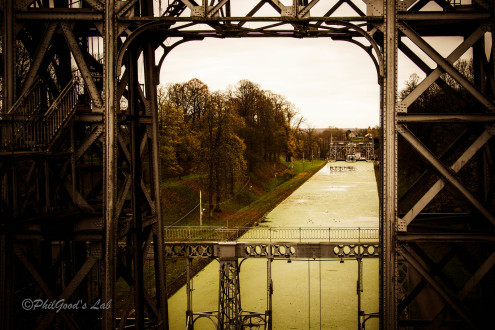
IMG_8738-6
Wallonie - Canal du Centre
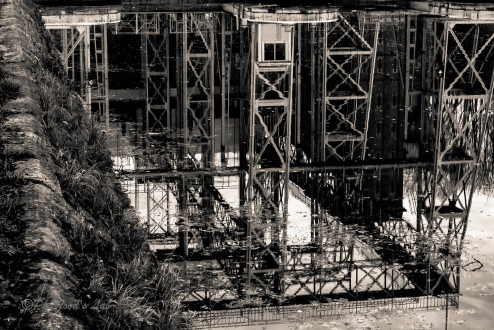
IMG_8590-5
Wallonie - Canal du Centre
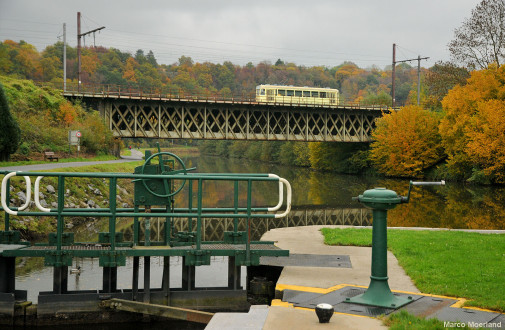
Passage bij de sluis
S-motorwagen 9974 van de ASVI steekt de Sambre over. Op de voorgrond zijn de sluisdeur en het bedieningstoestel van "Ecluse IV" te zien. Binnen afzienbare tijd zal dit romantische beeld veranderen; de oude stalen spoorbrug staat op de nominatie voor vervanging. Meer afbeeldingen van de museumtramlijn van de ASVI vindt u in de set "Buurtspoor idylle". Najaarsopnamen zijn bijeengebracht in het album "Herfst". Bekijk mijn fotoalbum in de klassieke versie.
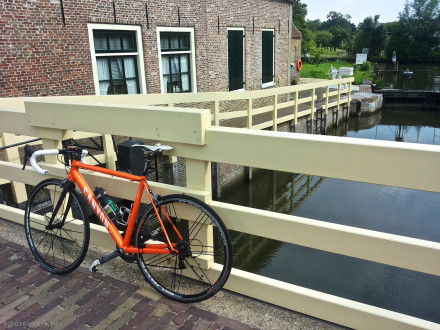
Goejanverwellesluis
20576966449_b794b01d44_h
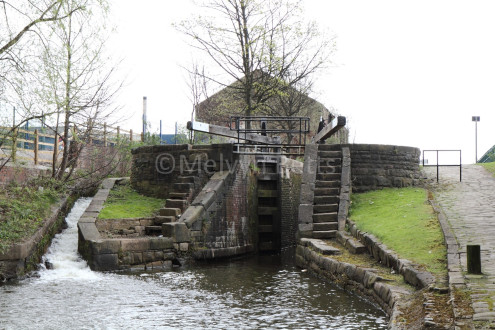
12454 Ashton Canal lock 8
8530299211_09fbcf06f7_h
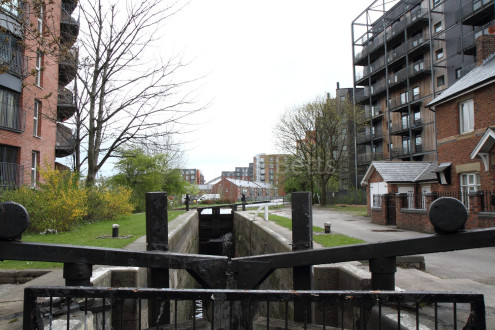
12458 Ashton Canal lock 7 Bradford
8415197562_9a2a91c349_h
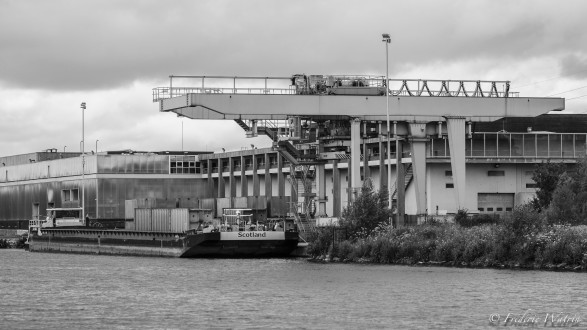
Port Fluvial de Loos/Lille
19981389801_a20eb2b78e_k
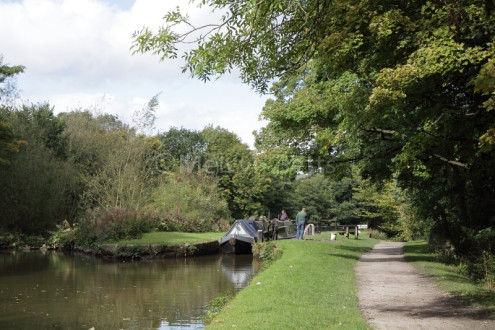
13428 Peak Forest Canal Marple
10211341844_4868ed4b93_c
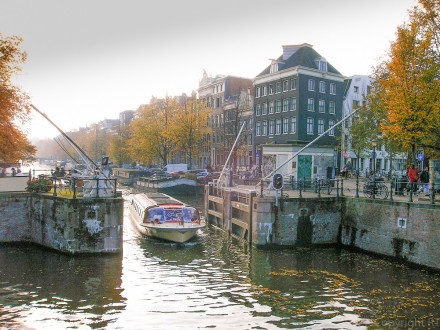
Amsterdam
19319908779_3aefe2d7d7_b
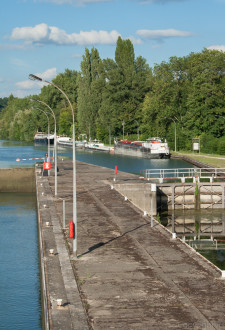
Bois-le-Roi
15475622953_3f6ac0822e_b
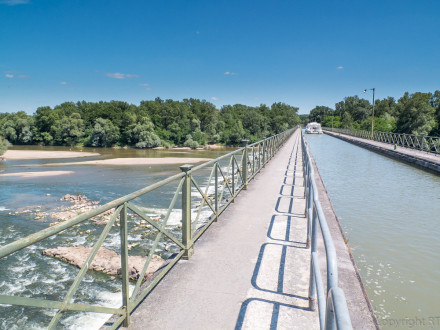
Pont canal du Guetin
Un pont canal pour faire passer les bateaux au dessus d'un affluent de la Loire, l'Allier, si ce n'est pas extraordinaire...
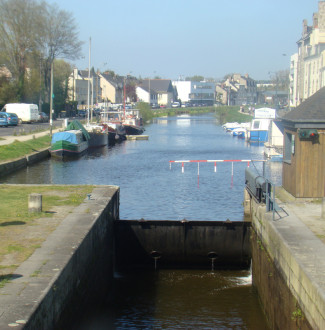
Canal Saint-Martin in Rennes
Three rivers and one canal with two names. * The River Rance flows into the English Channel near Saint-Malo. * The River Ille flows into the Vilaine, which meets the Atlantic Ocean at Pénestin. * The canal d'Ille-et-Rance joins the two rivers, creating an inland water route linking the Channel and the Atlantic. * A portion of the canal through Rennes is called the Canal Saint-Martin. It was built between 1804 and 1832, initially to avoid the British blockade during the Napoleonic wars. Département d’Ille-et-Vilaine, région Bretagne.
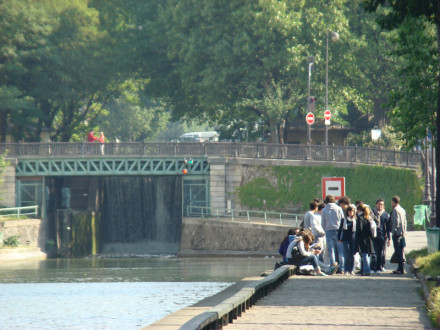
Students on east bank of Canal Saint-Martin, south of Eugène-Varlin bridge
Photo shows one of the double écluses (locks) des Morts.
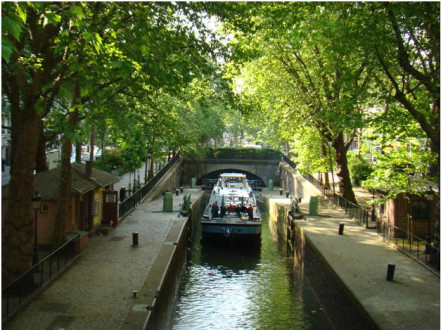
Last lock - ecluse du Temple - before canal goes underground to Bastille
This canal has a long underground section at the south end nearest the Seine, with regularly spaced vents to allow in air and light. This is the lock at Rue du Faubourg du Temple (near Place de la Republique) which lowers the water level to allow boat traffic in the underground sections.
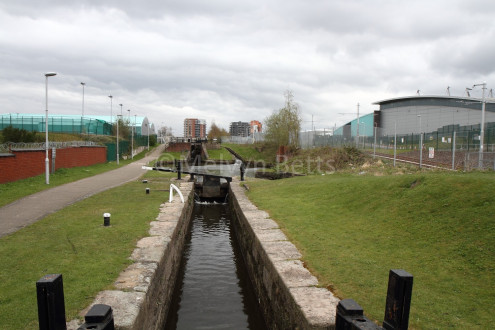
12460 Ashton Canal lock 4 Bradford
8415197970_dab0fa89ca_h
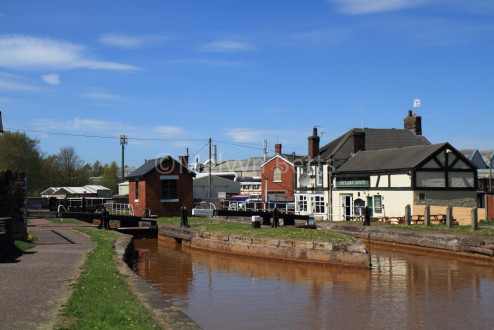
14267 Trent & Mersy Canal Kidsgrove lock 41
16189917226_c5e62a3372_b
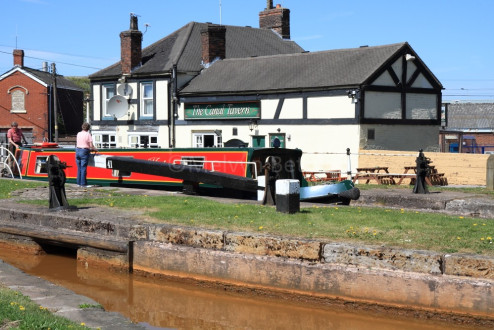
14269 Trent & Mersey Canal lock 41
15991087193_eb78619915_b
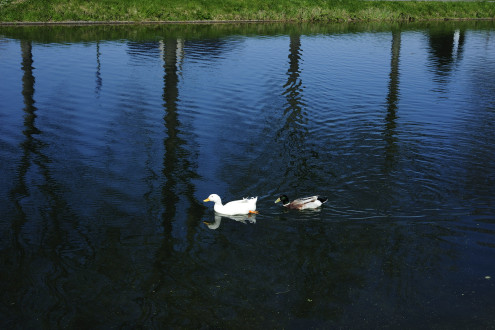
_DSC5310
17038931469_7740ac88cb_k
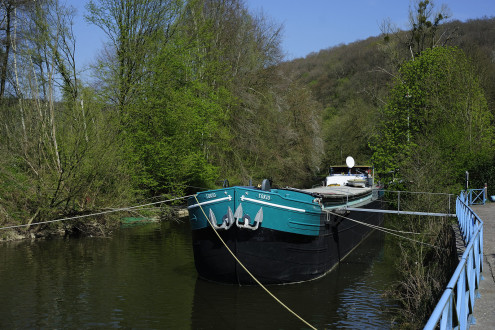
Péniche
Thuin
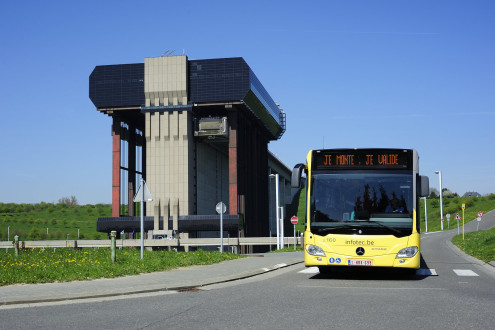
Strépy-Thieu
Ascenceur funiculaire du Canal du Centre
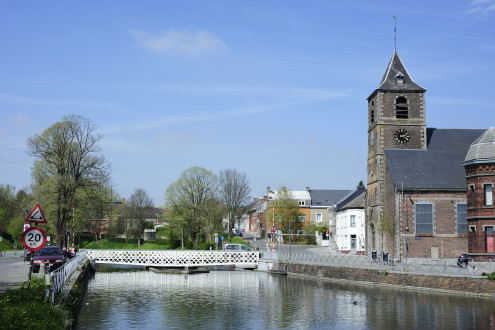
Pont Tournant
Houdeng Canal du Centre
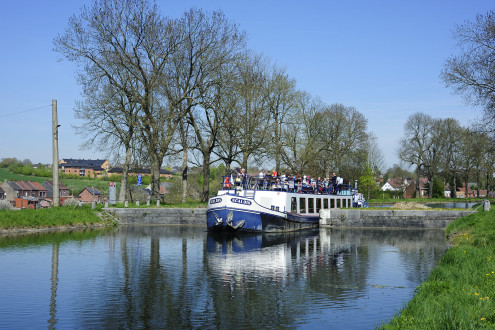
Ancien Pont-Levis Vicinal
Strépy
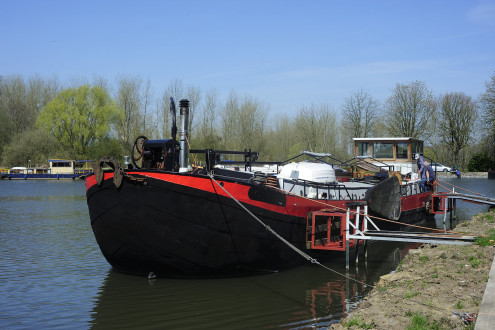
Canal Charleroi-Bruxelles
Seneffe Péniche côtière hollandaise
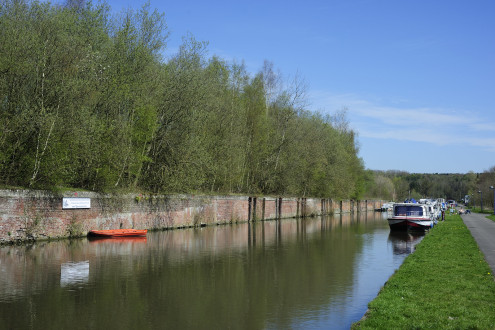
Branche de Bellecourt
Canal Charleroi-Bruxelles
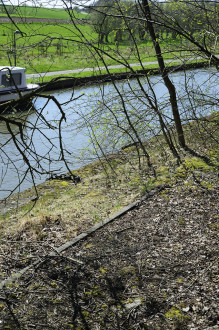
Branche de Bellecourt
17070834257_c7813981f4_k
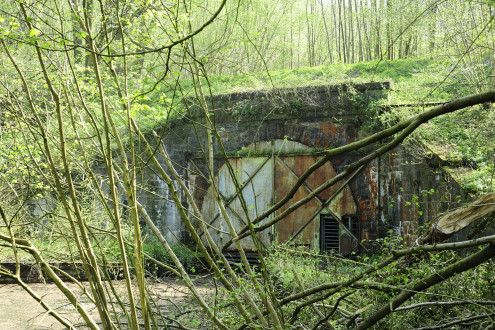
Tunnel de Godarville
entrée sud Ancien canal Charleroi-Bruxelles
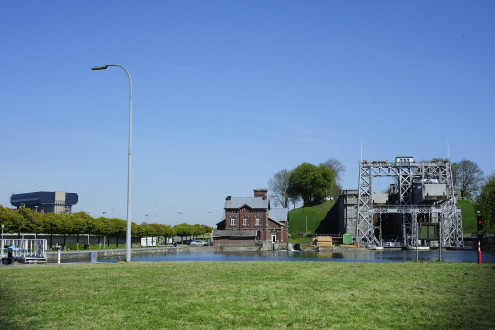
Ascenseur n°4
16615885263_8e74a1cca8_k
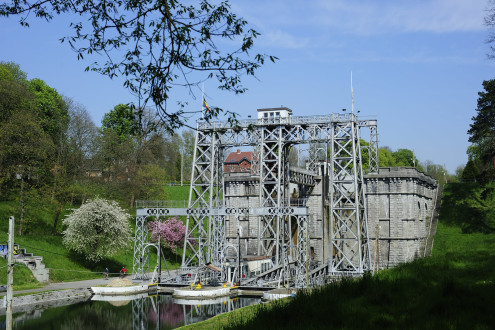
Ascenseur n°2
Canal du Centre
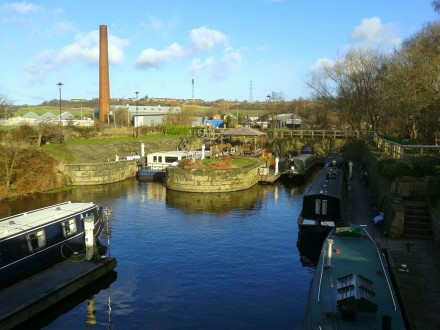
Horbury Bridge Calder and Hebble Navigation Yorkshire
15990094507_a36ba8e77d_k
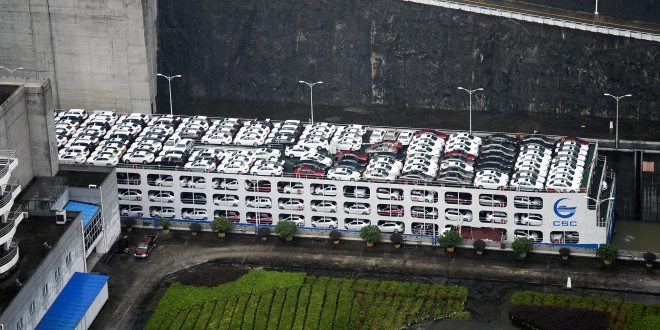
New Cars on a Chinese Boat at Three Gorges Dam, China
New cars on four decks coming from Chongqing - at least 612!! At £8,500 each that is £5,000,000 worth of new cars. The boat was working its way through five locks to get to the higher level at the dam. I think these are Fords, they have a large factory at Chongqing. Iy is looking like Ford might have a new mantra: "You can have any colour you like as long as it is White"
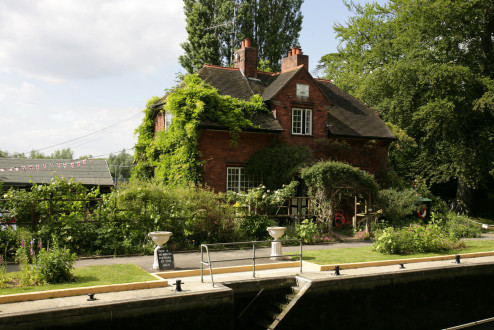
The Lock house - sonning berks.
www.adamswaine.co.uk
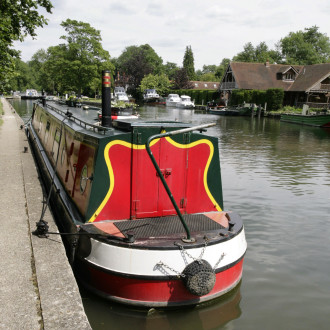
Riverside @ Hurley
another nice houseboat on the river thames @ hurley lock berks. www.adamswaine.co.uk
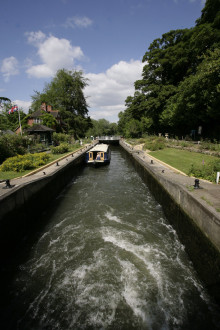
Going Up!
www.adamswaine.co.uk - at sonning lock berks.
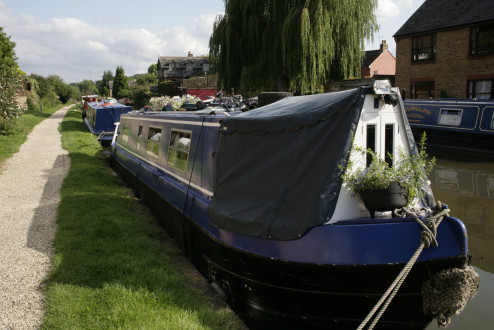
on the canal - hemel hempsted herts.
www.adamswaine.co.uk
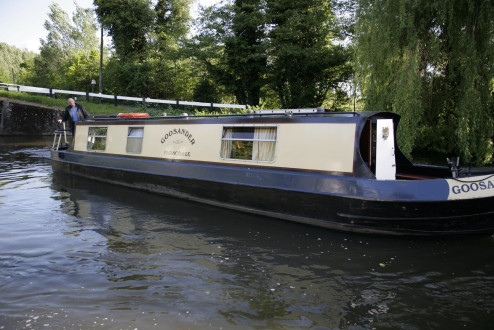
on the canal ,nr hemel hampstead herts
www.adamswaine.co.uk
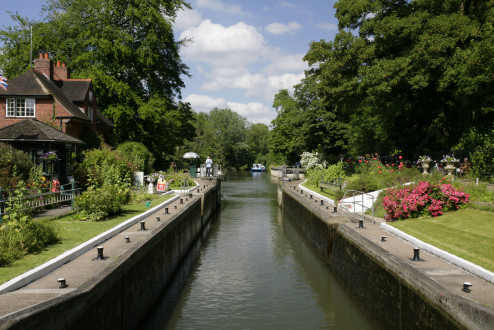
Sonning Lock.
Sonning Lock From Wikipedia, the free encyclopedia Sonning Lock 2008-05 Sonning Lock.JPG Sonning Lock from the head gates. Waterway River Thames County Berkshire Maintained by Environment Agency Operation Hydraulic First built 1773 Latest built 1905 Length 47.57 m (156 ft 1 in) [1] Width 5.46 m (17 ft 11 in)[1] Fall 1.63 m (5 ft 4 in)[1] Above sea level 115' Distance to Teddington Lock 52 miles Power is available out of hours [hide] [ v t e ] Sonning Lock Legend River Thames Reading railway station Caversham Lock & weir moorings weir Heron Island bridge Kennet and Avon Canal Kings Road bridge Forbury Road bridge Kings Road bridge Gas Works Road bridge Blake's Lock Paddington - Reading Rly marina Sonning Lock & weir moorings B478 Thames Street River Thames Sonning Lock is a lock and associated weir situated on the River Thames at the village of Sonning near Reading, Berkshire, England.[2] The first lock was built by the Thames Navigation Commission in 1773 and it has been rebuilt three times since then. There is a weir a little upstream at the top of the island where Sonning Backwater separates from the main course of the river.
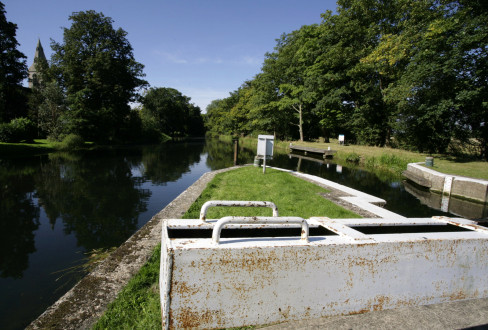
THE RIVER LOCK
At Water Newton - the river nene flows gently past the tranquil village in cambs. www.adamswaine.co.uk
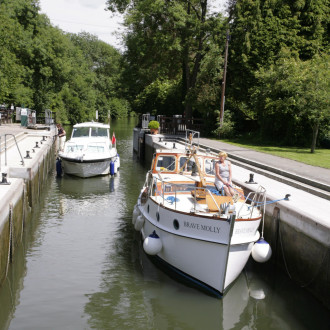
HURLEY LOCK
pretty lock on the river thames, i had lunch and a cuppa, at the tearoom which overlooks the lock, www.adamswaine.co.uk
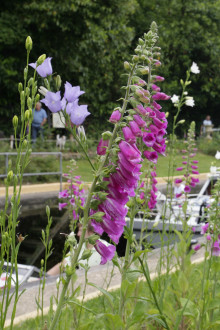
Foxy down at the lock - sonning.
www.adamswaine.co.uk
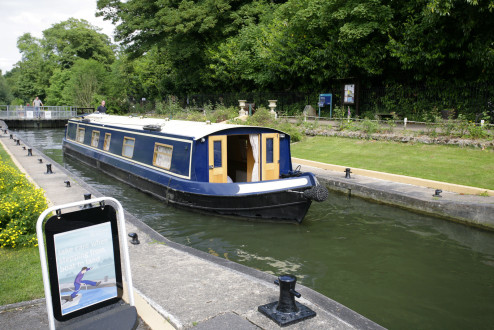
The lock @ sonning - berks
www.adamswaine.co.uk
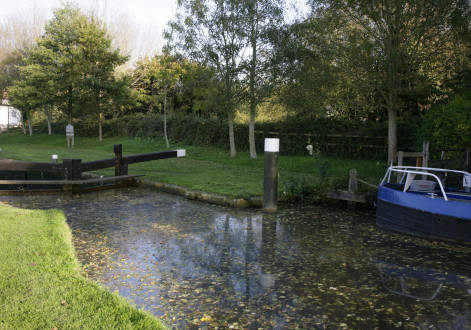
Catteshall Lock
www.adamswaine.co.uk The River Wey Navigation and Godalming Navigation, geographically (but not historically) the Wey Navigation, form a continuous waterway which provides a 20-mile (32 km) navigable route from the River Thames between Weybridge and Hamm Court, Addlestone via Guildford to Godalming. The waterway is in Surrey and is owned by the National Trust. The Wey Navigation connects to the Basingstoke Canal at West Byfleet, and the Godalming Navigation part to the Wey and Arun Canal in the Broadford part of Shalford. The Navigations consist of man-made canal and adapted (dredged and straightened) parts of the River Wey. Its adjoining path is part of European long-distance path E2. The Wey was the second river in England to be turned from wholly unnavigable to navigable for its main town, as it was behind the River Lea; the River Wey Navigation opened in 1653 with 12 locks between Weybridge and Guildford. Construction of the Godalming Navigation, a further four locks, was completed in 1764 connecting a second market town. Commercial traffic (save for exceptional loads for canalside buildings) ceased in 1983 and the Wey Navigation and the Godalming Navigations were donated to the National Trust in 1964 and 1968 respectively
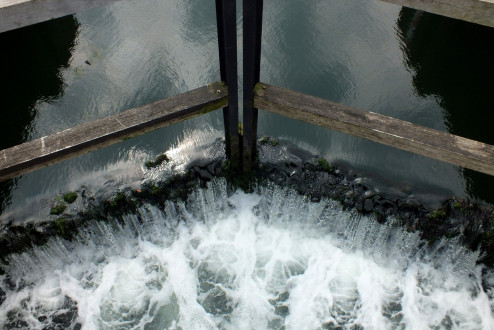
Temps-Fêtes à Douarnenez, en attendant l'ouverture des portes de l'écluse .
Les fameuses portes, la marée n'a pas encore atteint le niveau du seuil . Une fête à ne pas rater ! Douarnenez, au Port-Rhu, Finistère, Bretagne, France . Photographie J-P Leroy, droits réservés .

JUST DO IT
14827450411_bcb3d93ea2_k
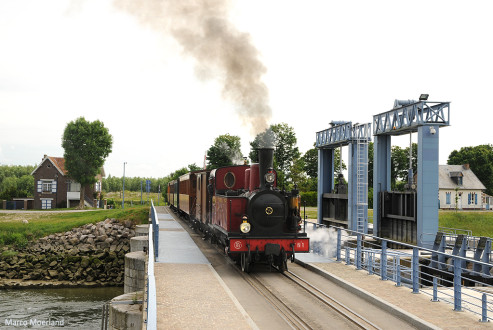
Sur le pont
Stoomlocomotief 1 (Corpet Louvet, 1906) passeert bij Saint Valéry sur Somme de brug over het Canal de la Somme. De trein bestaat uit originele houten Franse stoomtramrijtuigen. Tussen Noyelles en Saint Valéry is de lijn vierrailig uitgevoerd zodat de metersporige locomotieven ook normaalsporige goederntreinen van de aansluiting in Noyelles naar de haven van Saint Valéry kunnen overbrengen. Dampflokomotive 1 (Corpet Louvet, 1906) passiert bei Saint Valéry sur Somme die Brücke über dem Canal de la Somme. Die Strecke ist hier viergleisig ausgeführt.
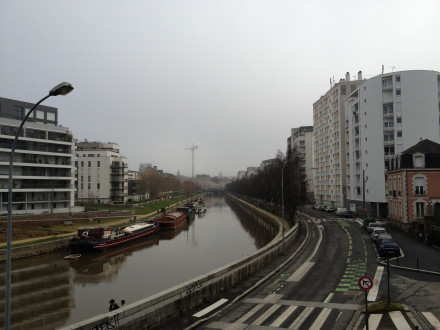
Quai de la Prevalaye
14037605415_efe79e3787_k
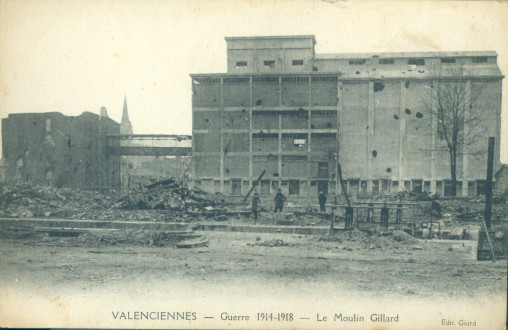
Guerre 14-18, les ruines du moulin Gillard ( ou Giard ? ) au faubourg de Paris .
Moulin Gillard ou Giard ? Les éditions Giard ont-elles raison ? Au premier plan l'écluse Notre-Dame . Cette image, prise côté faubourg, est postérieure puisque la passerelle n'aboutit plus à rien : www.flickr.com/photos/86383442@N05/13148518205/ . Valenciennes, Hainaut, Nord, France . Collection J-P Leroy .
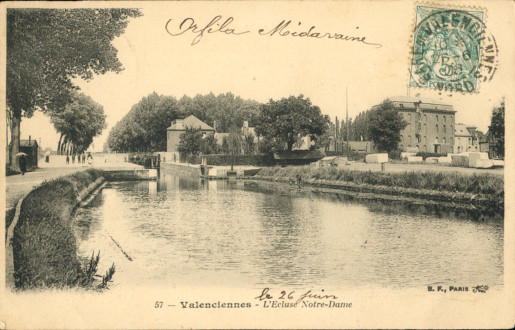
Le canal de l'Escaut, écluse Notre-Dame
Fin du XIXiène ou tout début du XXième, les bâtiments de béton du moulin Gillard ( ou gilliard, ou Giard ? ) ne sont pas construits, il n'existe que le bâtiment de briques . On est en amont de l'écluse Notre-Dame . Entre les deux se trouve une marbrerie, sans doute actionnée par l'eau ( sur d'autres vues on réalise qu'elle es construite sur pilotis ) . cela explique la présence de blocs de pierre . Valenciennes, Hainaut, Nord, France . Collection J-P Leroy
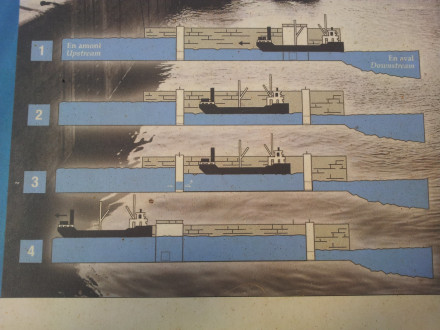
L'Écluse De Sainte Anne De Bellevue (Ph. 05)
Ici, nous voyons comment une Écluse fonctionne. 1-Le navire entre dans le bassin de l'Écluse. 2- Des portes étanches se ferme solidemant derrière le navire. 3- On fais correspondre le niveau de l'eau avec le coté de la destination du navire. (Haut / Bas). 4- quand le tout est terminé, on ouvre les deuxièmes (2e) portes et le navire continue sa route.
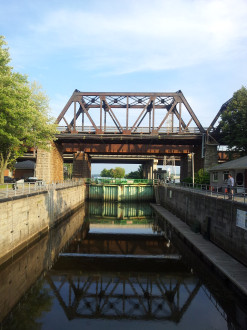
L'Écluse De Sainte Anne De Bellevue (Ph. 04)
L'Écluse ainsi que le pont de trains de banlieu.
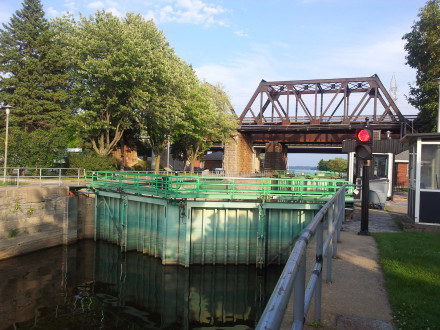
L'Écluse De Sainte Anne De Bellevue (Ph. 03)
L'Écluse vue de la partie supérieur.
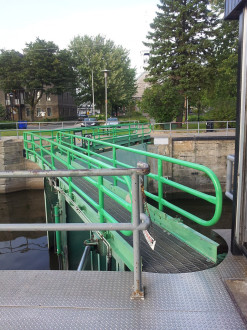
L'Écluse De Sainte Anne De Bellevue (Ph. 02)
Sur les Portes de l'Écluse.
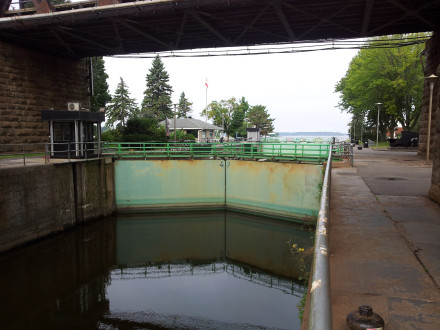
L'Écluse De Sainte Anne De Bellevue (Ph. 01)
Ici, nous voyons l'Écluse de Sainte Anne De Bellevue. Une Écluse pour bateaux de plésance.
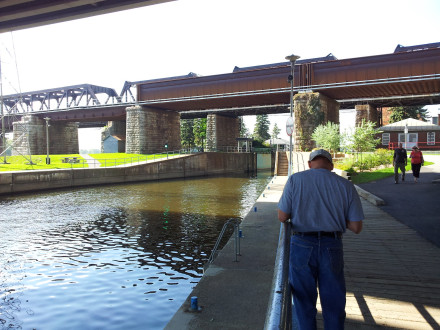
Le Long Du Canal De Sainte Anne De Bellevue
Un Homme marche vers les écluses.
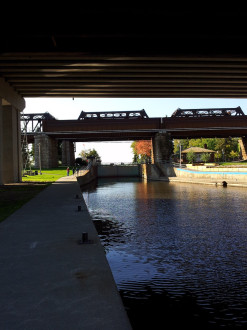
L'Écluse De Sainte Anne De Bellevue (Ph. 08)
Par une belle journée.
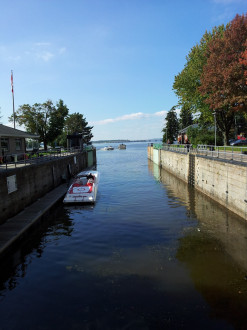
L'Écluse De Sainte Anne De Bellevue (Ph. 07)
Un Bateau-Cigare s'appraitait à quitter l'Écluse.
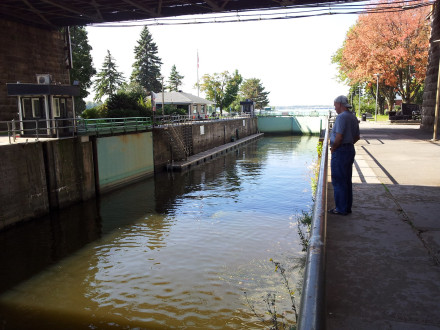
L'Écluse De Sainte Anne De Bellevue (Ph. 06)
Les portes sont ouvertes pour laisser entrer un bateau.
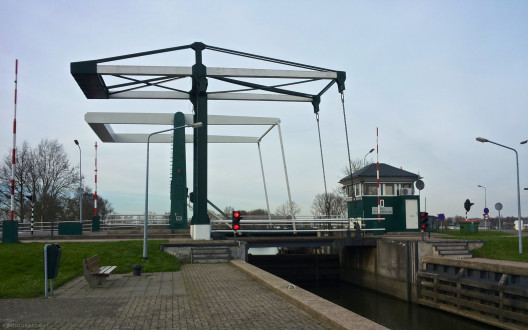
Sluis 't Hemeltje
Sluice and bridge from Hilversum Canal to river Vecht.
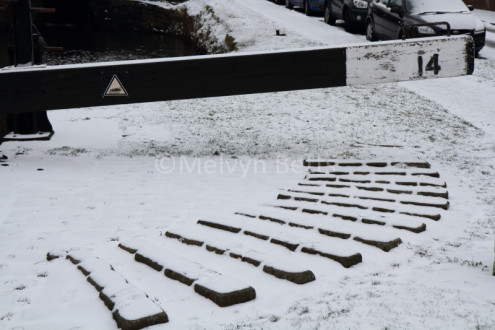
14027 Slip controle Peak Forest Canal Marple
11735618373_2942bfcc6e_c
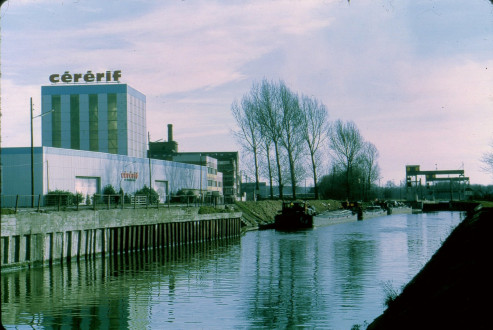
Rue du petit Bruxelles dans les années 70
A Valenciennes avant la mise à grand gabarit de l'Escaut . L'Ecluse Notre-Dame et les établissements Cérérif . Le silo bleu et blanc et la malterie en brique existent toujours, f www.flickr.com/photos/bwb59/12368252214/ et www.flickr.com/photos/108363004@N04/12027599575/ et voisines . Mars 1973 . Diapositive numérisée . Valenciennes, Hainaut, Nord, France . Photographie J-P Leroy, droits réservés .
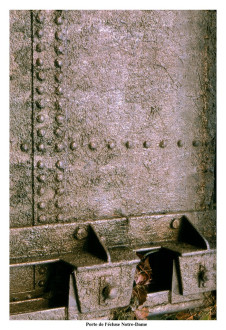
Porte de l'écluse Notre-Dame à Valenciennes, 1975
Années 70, avant la mise à grand gabarit . Détail d'une des portes levantes . Diapositive numérisée . Valenciennes, canal de l'Escaut, Hainaut, Nord, France . Photographie Leroy J-P, droits réservés .
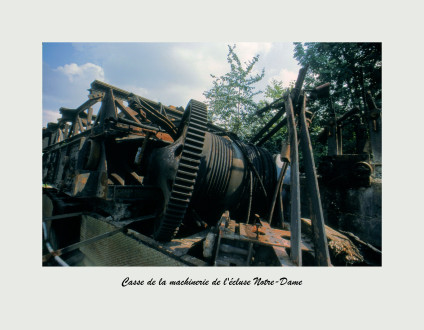
Casse de la machinerie de l'écluse Notre-Dame
Fin des années 70, on met le canal de l'Escaut au grand gabarit, ou plus exactement à un « petit grand gabarit » . Doctrine : « On casse tout ! » Et bien entendu les écluses en font les frais . Je doute qu'un seul exemplaire ait été préservé, au titre du patrimoine industriel, alors que les sas de la génération précédente avaient parfois été conservés . C'était le cas pour l'écluse Folien . Il n'en subsiste rien . Diapositive numérisée . Valenciennes, canal de l'Escaut, Hainaut, Nord, France . Photographie Leroy J-P, droits réservés .
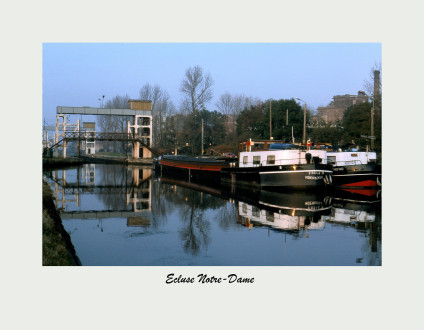
Valenciennes, l'écluse Notre-Dame dans les années 70
Un beau dimanche d'hiver avant la mise à grand gabarit du canal . L'écluse était dotée d'une passerelle, que j'ai beaucoup empruntée . A droite une malterie avec sa cheminée de briques . Ces écluses à portes levantes n'étaient pas un cadeau pour les mariniers : En raison d'un tirant d'air faible, si la péniche était à vide elle ne passait sous la porte qu'avec les panneaux de la timonerie rabattus, ce qui valait au marinier une douche, plus ou moins glacée, et surtout d'une eau fort sale, car le niveau de pollution était extraordinaire à l'époque . Diapositive numérisée . Valenciennes, Hainaut, Nord, France . Photographies J-P Leroy, droits réservés .
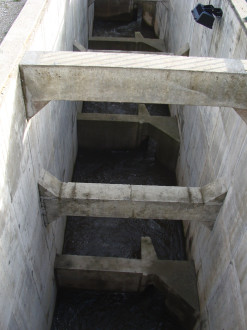
Coimbra: fishway at the Açude-ponte bridge-dam
"The available spawning habitat for the anadromous sea lamprey, Petromyzon marinus L., population that enters the River Mondego has been drastically reduced in the last 20 years. The installation of a fish passage in the first impassable dam, the Aude-Ponte, would enable sea lamprey to recolonise the 34.6-km river stretch between the Aude-Ponte and Raiva dams." IN: www.researchgate.net/publication/226095674_Movement_of_ra... How it is meant to look like: penacovaonline2.blogspot.be/2011/12/confraria-da-lampreia... lamprey as a delicacy confrariadalampreia.com.pt/cozinhatradicional_pratostradi... Açude-ponte, Choupal, Coimbra, Portugal, 12/2013
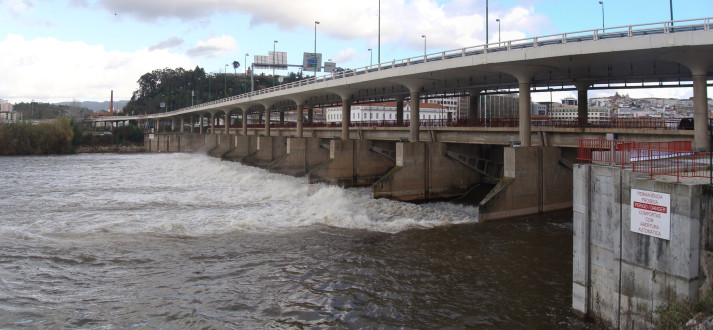
Coimbra: Açude-ponte bridge-dam
pt.wikipedia.org/wiki/A%C3%A7ude-ponte_de_Coimbra Coimbra, Portugal, 12/2013
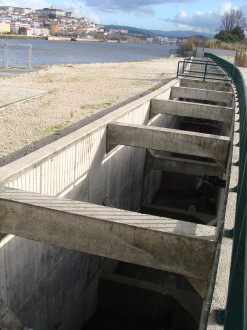
Coimbra: fishway at the Açude-ponte bridge-dam
"The available spawning habitat for the anadromous sea lamprey, Petromyzon marinus L., population that enters the River Mondego has been drastically reduced in the last 20 years. The installation of a fish passage in the first impassable dam, the Aude-Ponte, would enable sea lamprey to recolonise the 34.6-km river stretch between the Aude-Ponte and Raiva dams." IN: www.researchgate.net/publication/226095674_Movement_of_ra... How it is meant to look like: penacovaonline2.blogspot.be/2011/12/confraria-da-lampreia... lamprey as a delicacy confrariadalampreia.com.pt/cozinhatradicional_pratostradi... Açude-ponte, Choupal, Coimbra, Portugal, 12/2013
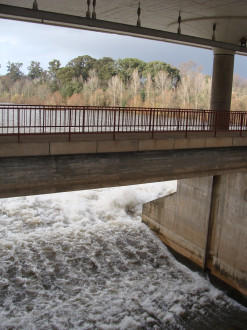
Coimbra: Açude-ponte bridge-dam
pt.wikipedia.org/wiki/A%C3%A7ude-ponte_de_Coimbra Coimbra, Portugal, 12/2013
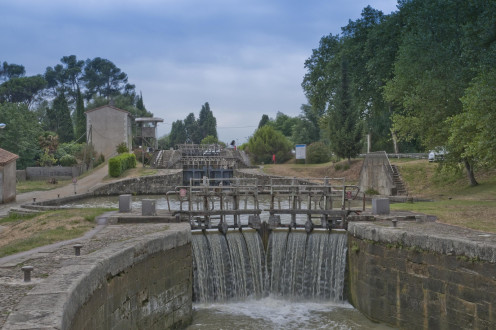
Ecluse de Fresquel 2
www.canalmidi.com/paulriqu.html www.canalmidi.com/aufildlo/naurouz.html www.flickriver.com/photos/caputarietis/popular-interesting/ Le droit d'auteur en France est régi par par la loi du 11 mars 1957 et la loi du 3 juillet 1985, codifiées dans le code de la propriété intellectuelle n° 92-597 du 1er juillet 1992.

Ecluse de Fresquel
www.canalmidi.com/paulriqu.html www.canalmidi.com/aufildlo/naurouz.html www.flickriver.com/photos/caputarietis/popular-interesting/ Le droit d'auteur en France est régi par par la loi du 11 mars 1957 et la loi du 3 juillet 1985, codifiées dans le code de la propriété intellectuelle n° 92-597 du 1er juillet 1992.
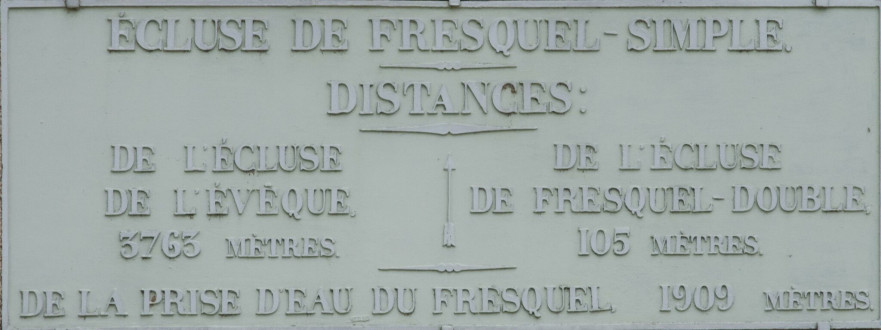
Ecluse de Fresquel 3
www.canalmidi.com/paulriqu.html www.canalmidi.com/aufildlo/naurouz.html www.flickriver.com/photos/caputarietis/popular-interesting/ Le droit d'auteur en France est régi par par la loi du 11 mars 1957 et la loi du 3 juillet 1985, codifiées dans le code de la propriété intellectuelle n° 92-597 du 1er juillet 1992.
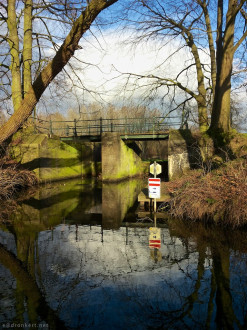
Bruinenburgersluis (1786)
Sluice between Valleikanaal and Heiligenbergerbeek. In Dutch: Bruinenburgersluis.
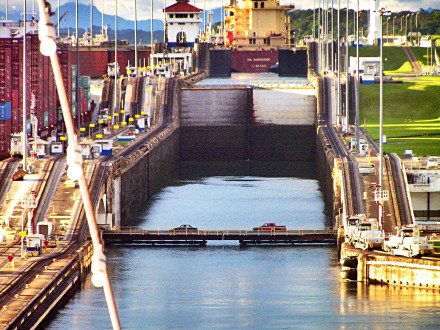
The wonder and majesty of the Panama Canal
10232938856_c597c27b27_k
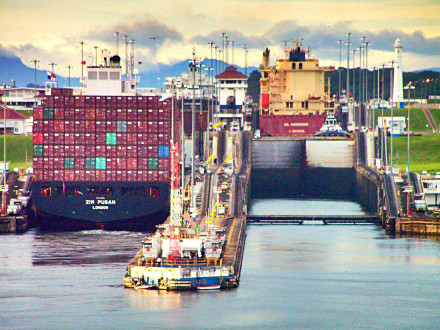
Another view
10232905604_6574c4393c_k
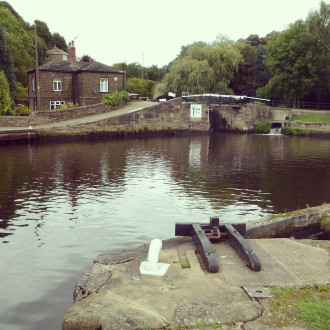
Salterhebble Calder and Hebble Navigation Yorkshire
The two staircase locks at Salterhebble and the single lock at Brooksmouth were replaced at John Smeaton's suggestion by three new locks in 1782. The Calder and Hebble Navigation, running for 21 miles from the Aire and Calder Navigation at Wakefield to Sowerby Bridge, was one of the first navigable waterways into the Pennines. It was an extension westwards of the Aire and Calder Navigation and was surveyed by John Smeaton and the later sections by James Brindley. Work began in 1758 to make the River Calder navigable above Wakefield. The navigation to Sowerby Bridge was completed in 1770, including a short branch to Dewsbury. Sir John Ramsden's Canal, now known as the Huddersfield Broad, was opened in 1776, providing a branch to Huddersfield. In 1804, the Rochdale Canal opened, branching off the Calder and Hebble just before its terminus in Sowerby Bridge, crossing the Pennines to link Yorkshire with Manchester. This information from the Pennine Waters website. www.penninewaterways.co.uk/calder/chn2.htm
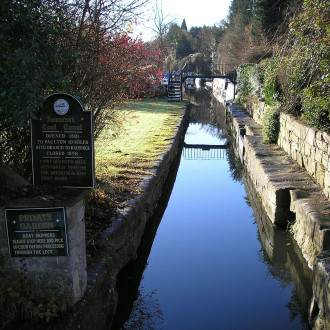
Somerset Coal Canal
The entrance lock to the Somerset Coal Canal at its junction with the Kennet and Avon Canal
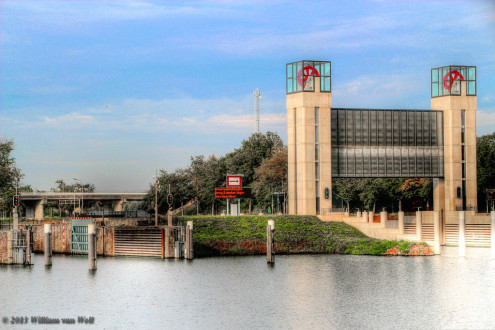
Old and new sluice-gate
Heumen Netherlands
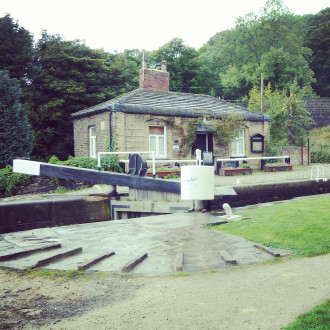
Salterhebble Calder and Hebble Navigation Yorkshire
The two staircase locks at Salterhebble and the single lock at Brooksmouth were replaced at John Smeaton's suggestion by three new locks in 1782. The Calder and Hebble Navigation, running for 21 miles from the Aire and Calder Navigation at Wakefield to Sowerby Bridge, was one of the first navigable waterways into the Pennines. It was an extension westwards of the Aire and Calder Navigation and was surveyed by John Smeaton and the later sections by James Brindley. Work began in 1758 to make the River Calder navigable above Wakefield. The navigation to Sowerby Bridge was completed in 1770, including a short branch to Dewsbury. Sir John Ramsden's Canal, now known as the Huddersfield Broad, was opened in 1776, providing a branch to Huddersfield. In 1804, the Rochdale Canal opened, branching off the Calder and Hebble just before its terminus in Sowerby Bridge, crossing the Pennines to link Yorkshire with Manchester. This information from the Pennine Waters website. www.penninewaterways.co.uk/calder/chn2.htm
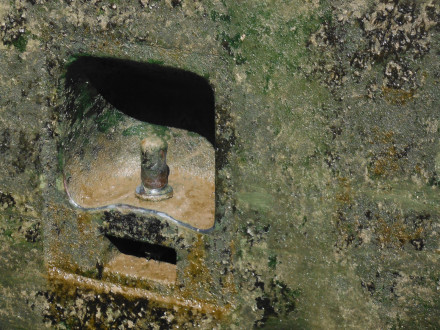
Festmacher
... in Schleuse Schleuse Heidelberg-Schlierbach (Neckar), germany DSCF0757;
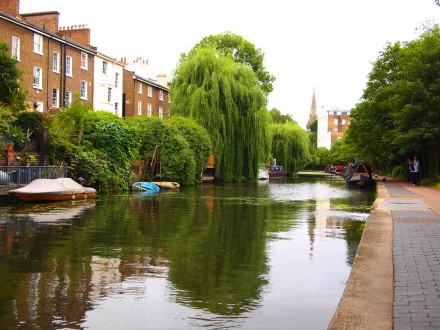
P8160377
OLYMPUS DIGITAL CAMERA
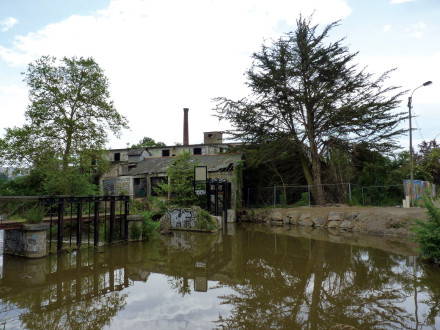
Past reflections
Disused tannery / Tannerie désaffectée
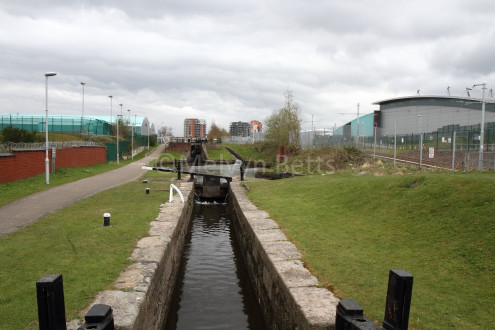
12460 To Manchester Ashton Canal lock 4 Bradford
8054461904_f3cb3ecb71_h
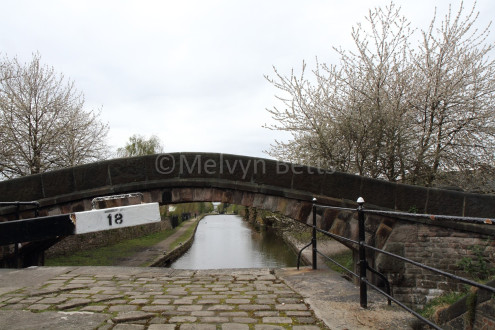
12414 Ashton Canal Fairfield top lock 18
8040027707_f1c05033bc_h
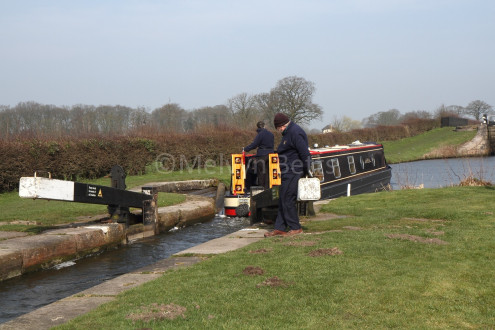
12189 Macclesfield Canal Bosley locks
8027628928_0464331d25_h
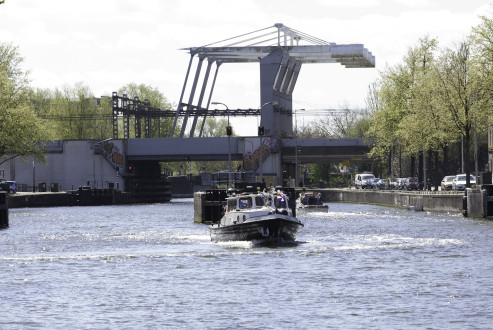
Amsterdam, 04-05-2013
"Geul", Ex-douane Lobith/Tolkamer
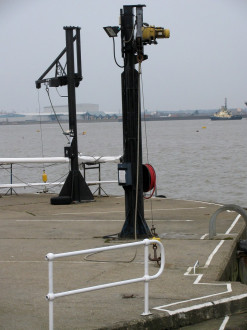
Gravesend Derricks at Canal lock
8636462734_39f295febb_k
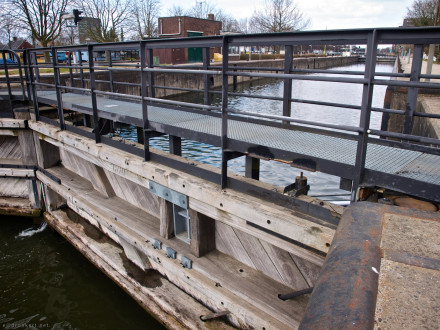
Noordersluis
Sluis tussen het Merwedekanaal en het Amsterdam-Rijnkanaal, in het zuiden van Utrecht. Lock and sluice gate between Amsterdam-Rhine Canal and Merwede Canal, Utrecht.
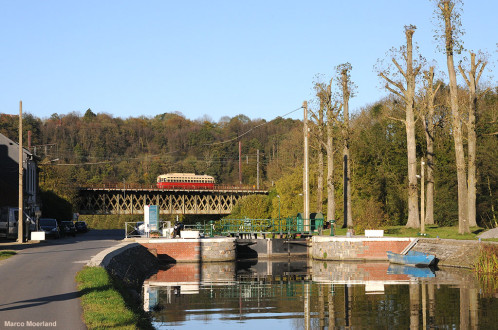
Herfst langs de tramlijn
PCC 10409 van de ASVI passeert op de laatste rijdag van het seizoen 2012 de idyllische sluis in de Sambre bij Lobbes. Meer afbeeldingen van de museumtramlijn van de ASVI vindt u in de set "Buurtspoor idylle". Bekijk mijn fotoalbum in de klassieke versie. Herbst entlang die Vizinalbahn PCC Triebwagen 10409 der ASVI überquert die Brücke über der Sambre. Auf der Vordergrund die idyllische Schleuse bei Lobbes. Autumn along the vicinal tramway PCC trolley 10409 from the ASVI museum tramline Thuin - Lobbes passes over the separate tramway bridge which is hidden behind the oldfashioned riveted railway bridge. In front is the lock in the river Sambre.
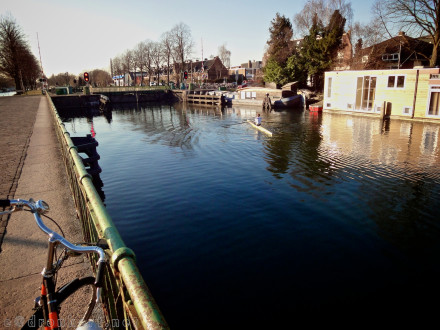
G. in de Muntsluis
Sculler at a turning point of the training, in the lock near the 'Munt', Utrecht. (All that contrast was way too hard for the tiny sensor.)
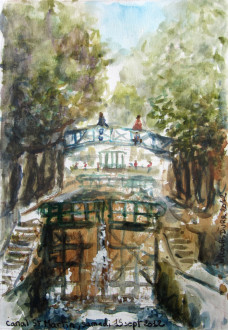
Paris 10e, écluse au Canal St Martin
Aquarelle.
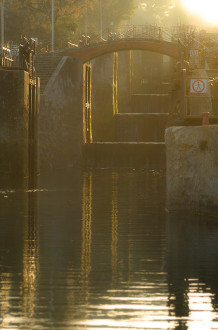
Neuf écluses, Fonseranes
Canal du Midi, Béziers
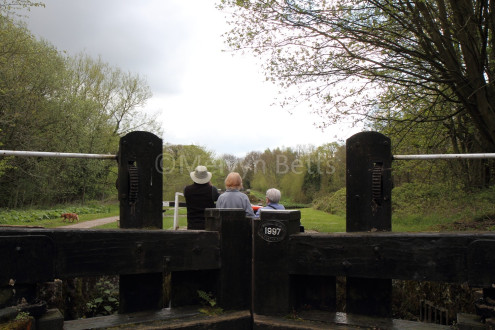
12522 In Decending Order Peak Forest Canal lock 4 Marple
7980079406_475d089e03_h
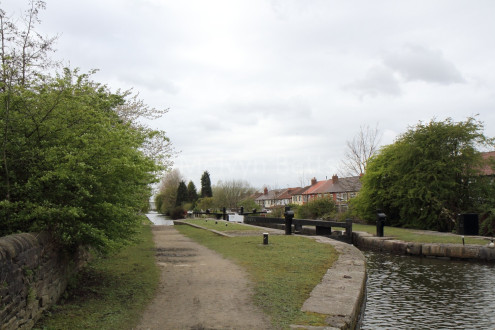
12418 Ashton Canal lock 17 Fairfield
7863478262_38011038a5_h
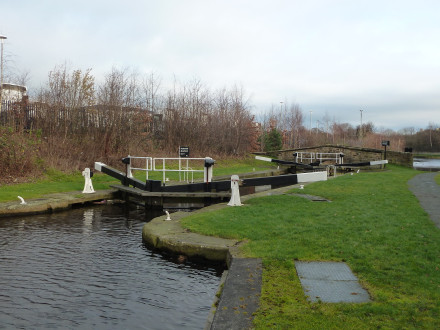
Longlands Lock No 4 and Vernon Bridge No 6 Huddersfield Broad Canal Yorkshire
The Huddersfield Broad Canal runs between the Huddersfield Narrow Canal in the centre of Huddersfield to the Calder and Hebble Navigation at Cooper Bridge. The Huddersfield Broad Canal was originally known as the Cooper Canal, as it branched off the Calder and Hebble Navigation at Cooper Bridge. It was later known as Sir John Ramsden's Canal, after the Lord of the Manor and main land-owner. It later became known as the Broad Canal to distinguish it from the Narrow Canal. It was opened in 1776 and proved to be a lifeline for the rapidly developing textile industry in Huddersfield, bringing in coal and shipping out finished textiles. The canal is around 4 miles long with nine locks.
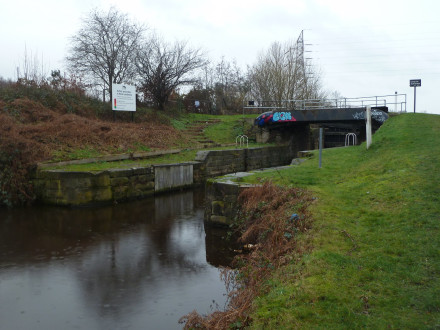
River Calder, Thornhill Flood Lock and Long Cut End Bridge Calder and Hebble Navigation Yorkshire
The Calder and Hebble Navigation, running for 21 miles from the Aire and Calder Navigation at Wakefield to Sowerby Bridge, was one of the first navigable waterways into the Pennines. It was an extension westwards of the Aire and Calder Navigation and was surveyed by John Smeaton and the later sections by James Brindley. Work began in 1758 to make the River Calder navigable above Wakefield. The navigation to Sowerby Bridge was completed in 1770, including a short branch to Dewsbury. Sir John Ramsden's Canal, now known as the Huddersfield Broad, was opened in 1776, providing a branch to Huddersfield. In 1804, the Rochdale Canal opened, branching off the Calder and Hebble just before its terminus in Sowerby Bridge, crossing the Pennines to link Yorkshire with Manchester. This information from the Pennine Waters website. www.penninewaterways.co.uk/calder/chn2.htm
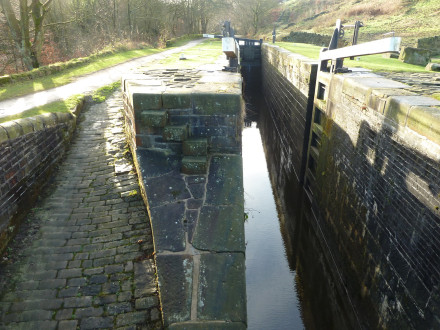
Pig Tail Lock Lock 32E Cellars Clough Huddersfield Narrow Canal Yorkshire
The Huddersfield Narrow Canal runs for 20 miles between Huddersfield in West Yorkshire and Ashton under Lyne in Greater Manchester, UK. The summit of the Huddersfield Narrow Canal is the highest navigable waterway in Britain. Standedge Tunnel on the Huddersfield Narrow Canal is Britain's longest canal tunnel. The canal has a total of 74 locks. It connects end on with the Ashton Canal and the Huddersfield Broad Canal. The Huddersfield Narrow Canal re-opened to navigation in May 2001. The story of this canal begins over 200 years ago at a time when a network of canals was being constructed through many parts of Britain. The canal was due to open five years after work on it had begun. However, when 1799 arrived, while the canal had been constructed to each side of the tunnel, the tunnel itself was far from open. The canal took 17 years to construct rather than the planned 5 years. The costs rose to £396,267, which was more than twice the original budget. Standedge Tunnel alone cost £123,804 to construct. The shareholders had no return on their investment for 30 years. The canal did enjoy a short period of relative prosperity until 1845, when it was bought by the Huddersfield and Manchester Railway Company, whose line was to follow a similar route to the canal. The railway company did not fear competition from the canal, but as they were building a tunnel alongside the canal tunnel, they wanted to use the canal to remove spoil from their excavations. They did this by boring short connecting passages so that boats could be loaded in the tunnel. Once the railway was open, the railway company had no reason to promote the canal, which fell into slow decline and was eventually closed in 1944. Information from the Pennine Waters website. www.penninewaterways.co.uk/huddersfield/hnc2.htm
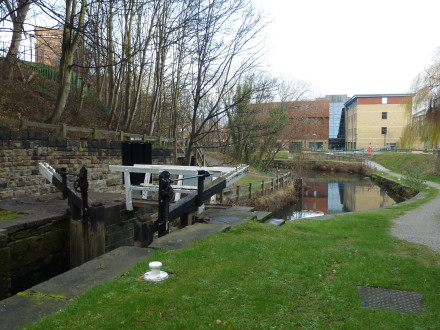
Stanley Dawson Lock No 1E Huddersfield Narrow Canal Yorkshire
The Huddersfield Narrow Canal runs for 20 miles between Huddersfield in West Yorkshire and Ashton under Lyne in Greater Manchester, UK. The summit of the Huddersfield Narrow Canal is the highest navigable waterway in Britain. Standedge Tunnel on the Huddersfield Narrow Canal is Britain's longest canal tunnel. The canal has a total of 74 locks. It connects end on with the Ashton Canal and the Huddersfield Broad Canal. The Huddersfield Narrow Canal re-opened to navigation in May 2001. The story of this canal begins over 200 years ago at a time when a network of canals was being constructed through many parts of Britain. The canal was due to open five years after work on it had begun. However, when 1799 arrived, while the canal had been constructed to each side of the tunnel, the tunnel itself was far from open. The canal took 17 years to construct rather than the planned 5 years. The costs rose to £396,267, which was more than twice the original budget. Standedge Tunnel alone cost £123,804 to construct. The shareholders had no return on their investment for 30 years. The canal did enjoy a short period of relative prosperity until 1845, when it was bought by the Huddersfield and Manchester Railway Company, whose line was to follow a similar route to the canal. The railway company did not fear competition from the canal, but as they were building a tunnel alongside the canal tunnel, they wanted to use the canal to remove spoil from their excavations. They did this by boring short connecting passages so that boats could be loaded in the tunnel. Once the railway was open, the railway company had no reason to promote the canal, which fell into slow decline and was eventually closed in 1944. Information from the Pennine Waters website. www.penninewaterways.co.uk/huddersfield/hnc2.htm
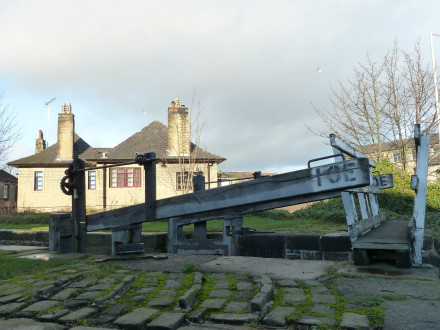
Spring Garden Lock No 10E Milnsbridge Huddersfield Narrow Canal Yorkshire
The Huddersfield Narrow Canal runs for 20 miles between Huddersfield in West Yorkshire and Ashton under Lyne in Greater Manchester, UK. The summit of the Huddersfield Narrow Canal is the highest navigable waterway in Britain. Standedge Tunnel on the Huddersfield Narrow Canal is Britain's longest canal tunnel. The canal has a total of 74 locks. It connects end on with the Ashton Canal and the Huddersfield Broad Canal. The Huddersfield Narrow Canal re-opened to navigation in May 2001. The story of this canal begins over 200 years ago at a time when a network of canals was being constructed through many parts of Britain. The canal was due to open five years after work on it had begun. However, when 1799 arrived, while the canal had been constructed to each side of the tunnel, the tunnel itself was far from open. The canal took 17 years to construct rather than the planned 5 years. The costs rose to £396,267, which was more than twice the original budget. Standedge Tunnel alone cost £123,804 to construct. The shareholders had no return on their investment for 30 years. The canal did enjoy a short period of relative prosperity until 1845, when it was bought by the Huddersfield and Manchester Railway Company, whose line was to follow a similar route to the canal. The railway company did not fear competition from the canal, but as they were building a tunnel alongside the canal tunnel, they wanted to use the canal to remove spoil from their excavations. They did this by boring short connecting passages so that boats could be loaded in the tunnel. Once the railway was open, the railway company had no reason to promote the canal, which fell into slow decline and was eventually closed in 1944. Information from the Pennine Waters website. www.penninewaterways.co.uk/huddersfield/hnc2.htm
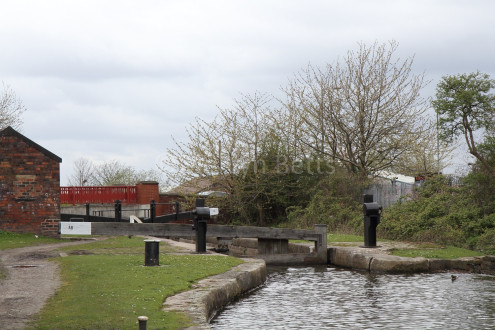
12426 Ashton Canal lock 16 Fairfield
7863480462_42257086d4_h
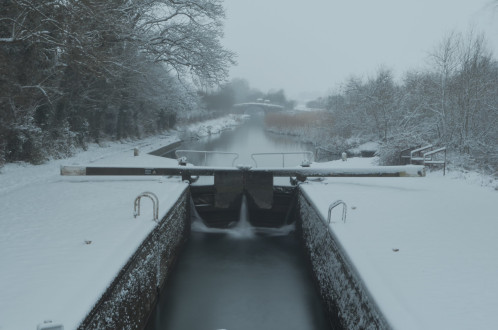
Long exposure & snow scene at Crofton lock
Day off work today due to the snow, perfect opportunity to get some winter shots 🙂 Same scene as my last but different location.... a few river shots to come soon.. . . See my winter set here: www.flickr.com/photos/not-so-cleverley/sets/7215763255626...
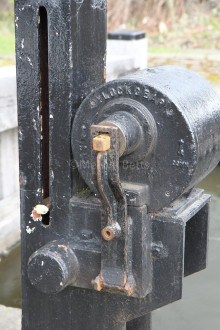
12452 Lock & Bar Ashton Canal lock mechanism Clayton
7817887024_e0008c69c6_k
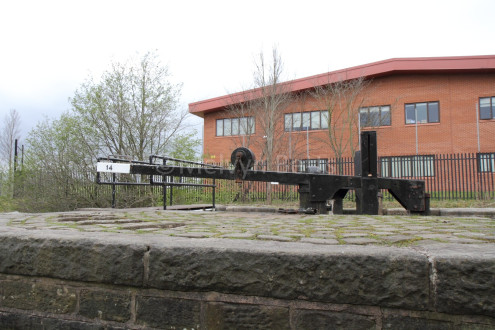
12438 Ashton Canal lock 14 Fairfield
7817883982_5de49b8e48_h
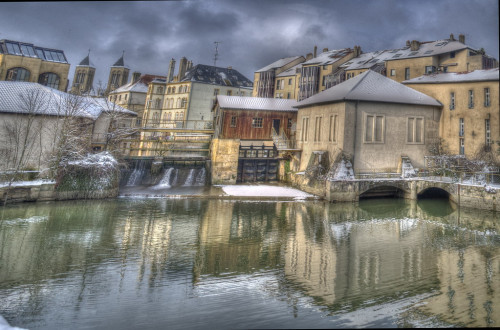
Moulin des Thermes 2 sous la neige
8388189573_6de24b4dfa_b

Sunset over Great Bedwyn canal
Another one of my fav's, Great Bedwyn canal with reflecting sunset! Taken in Great Bedwyn, Wiltshire
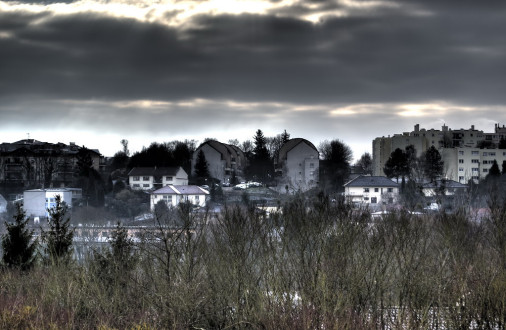
Bellecroix vue de Vallières 7 HDR 1
8381981408_4a4b893c52_b
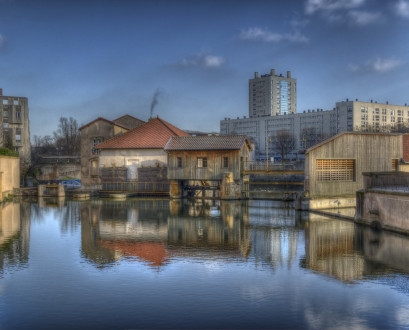
Moulin des Thermes HDR
8381976172_4ed5db19d4_b
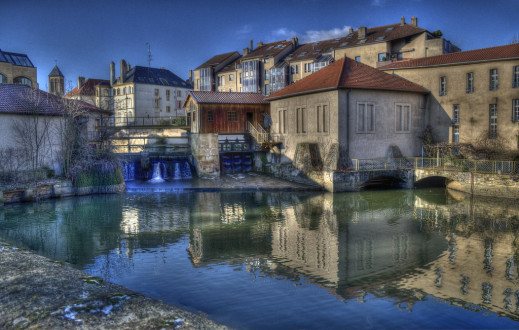
Moulin des Thermes 2 HDR
8380895395_298255e5e0_b
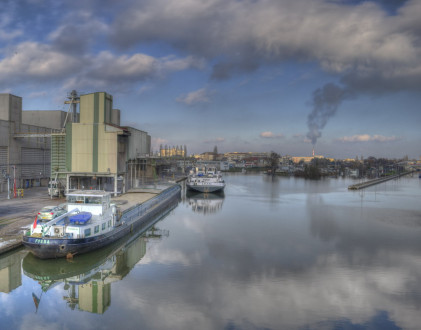
Port du Canal HDR 1
8380895921_399bfa2481_b
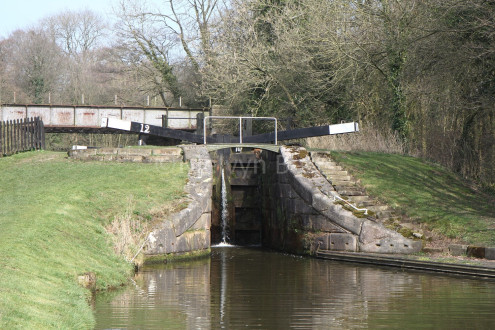
12212 Macclesfield Canal Bosley locks No12
7817881058_a46c10ce2d_h
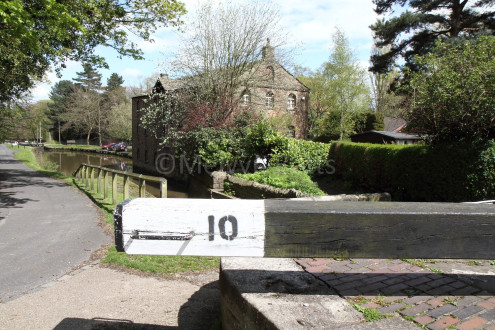
12517 Peak Forest Canal lock 10 Marple
7782830596_b09816d0bf_h
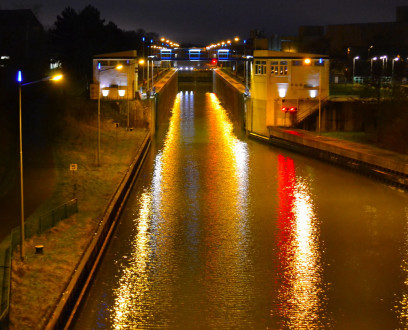
Pont Elbé
8348964575_100990eefc_b
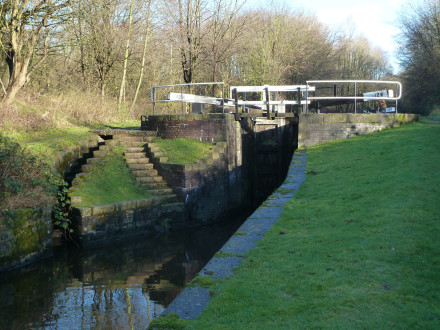
Lock 12 W Huddersfield Narrow Canal
The Huddersfield Narrow Canal runs for 20 miles between Huddersfield in West Yorkshire and Ashton under Lyne in Greater Manchester, UK. The summit of the Huddersfield Narrow Canal is the highest navigable waterway in Britain. Standedge Tunnel on the Huddersfield Narrow Canal is Britain's longest canal tunnel. The canal has a total of 74 locks. It connects end on with the Ashton Canal and the Huddersfield Broad Canal. The Huddersfield Narrow Canal re-opened to navigation in May 2001. The story of this canal begins over 200 years ago at a time when a network of canals was being constructed through many parts of Britain. The canal was due to open five years after work on it had begun. However, when 1799 arrived, while the canal had been constructed to each side of the tunnel, the tunnel itself was far from open. The canal took 17 years to construct rather than the planned 5 years. The costs rose to £396,267, which was more than twice the original budget. Standedge Tunnel alone cost £123,804 to construct. The shareholders had no return on their investment for 30 years. The canal did enjoy a short period of relative prosperity until 1845, when it was bought by the Huddersfield and Manchester Railway Company, whose line was to follow a similar route to the canal. The railway company did not fear competition from the canal, but as they were building a tunnel alongside the canal tunnel, they wanted to use the canal to remove spoil from their excavations. They did this by boring short connecting passages so that boats could be loaded in the tunnel. Once the railway was open, the railway company had no reason to promote the canal, which fell into slow decline and was eventually closed in 1944. Information from the Pennine Waters website. www.penninewaterways.co.uk/huddersfield/hnc2.htm
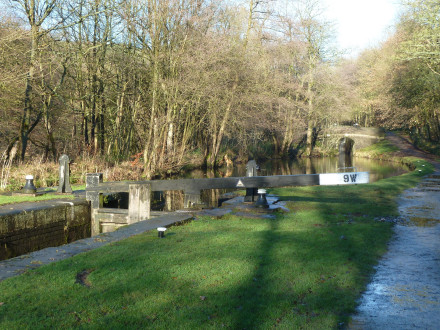
Lock 9 W Huddersfield Narrow Canal
The Huddersfield Narrow Canal runs for 20 miles between Huddersfield in West Yorkshire and Ashton under Lyne in Greater Manchester, UK. The summit of the Huddersfield Narrow Canal is the highest navigable waterway in Britain. Standedge Tunnel on the Huddersfield Narrow Canal is Britain's longest canal tunnel. The canal has a total of 74 locks. It connects end on with the Ashton Canal and the Huddersfield Broad Canal. The Huddersfield Narrow Canal re-opened to navigation in May 2001. The story of this canal begins over 200 years ago at a time when a network of canals was being constructed through many parts of Britain. The canal was due to open five years after work on it had begun. However, when 1799 arrived, while the canal had been constructed to each side of the tunnel, the tunnel itself was far from open. The canal took 17 years to construct rather than the planned 5 years. The costs rose to £396,267, which was more than twice the original budget. Standedge Tunnel alone cost £123,804 to construct. The shareholders had no return on their investment for 30 years. The canal did enjoy a short period of relative prosperity until 1845, when it was bought by the Huddersfield and Manchester Railway Company, whose line was to follow a similar route to the canal. The railway company did not fear competition from the canal, but as they were building a tunnel alongside the canal tunnel, they wanted to use the canal to remove spoil from their excavations. They did this by boring short connecting passages so that boats could be loaded in the tunnel. Once the railway was open, the railway company had no reason to promote the canal, which fell into slow decline and was eventually closed in 1944. Information from the Pennine Waters website. www.penninewaterways.co.uk/huddersfield/hnc2.htm
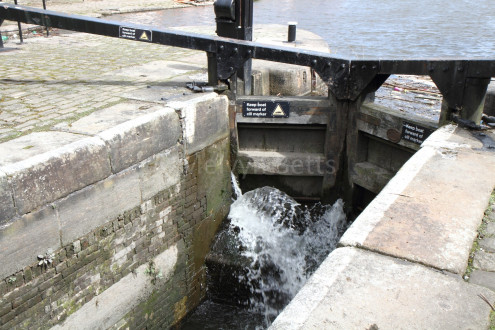
12410 Ashton Canal lock 18 Fairfield top lock
7563640516_3d4d192be9_h
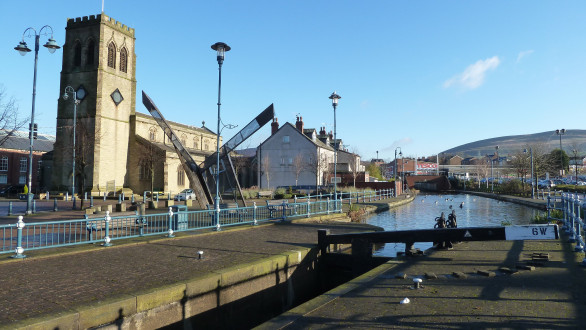
Holy Trinity and Christ Church and Lock 6 W Stalybridge Huddersfield Narrow Canal
The Huddersfield Narrow Canal runs for 20 miles between Huddersfield in West Yorkshire and Ashton under Lyne in Greater Manchester, UK. The summit of the Huddersfield Narrow Canal is the highest navigable waterway in Britain. Standedge Tunnel on the Huddersfield Narrow Canal is Britain's longest canal tunnel. The canal has a total of 74 locks. It connects end on with the Ashton Canal and the Huddersfield Broad Canal. The Huddersfield Narrow Canal re-opened to navigation in May 2001. The story of this canal begins over 200 years ago at a time when a network of canals was being constructed through many parts of Britain. The canal was due to open five years after work on it had begun. However, when 1799 arrived, while the canal had been constructed to each side of the tunnel, the tunnel itself was far from open. The canal took 17 years to construct rather than the planned 5 years. The costs rose to £396,267, which was more than twice the original budget. Standedge Tunnel alone cost £123,804 to construct. The shareholders had no return on their investment for 30 years. The canal did enjoy a short period of relative prosperity until 1845, when it was bought by the Huddersfield and Manchester Railway Company, whose line was to follow a similar route to the canal. The railway company did not fear competition from the canal, but as they were building a tunnel alongside the canal tunnel, they wanted to use the canal to remove spoil from their excavations. They did this by boring short connecting passages so that boats could be loaded in the tunnel. Once the railway was open, the railway company had no reason to promote the canal, which fell into slow decline and was eventually closed in 1944. Information from the Pennine Waters website. www.penninewaterways.co.uk/huddersfield/hnc2.htm
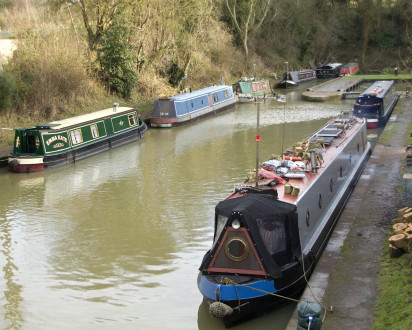
Narrowboats in Basin at Foxton Locks
December 2012
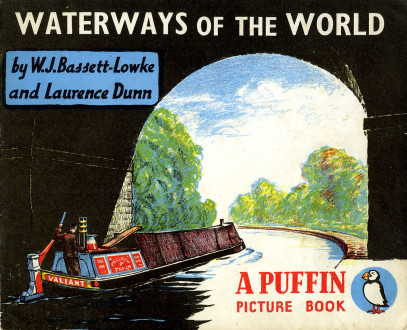
Waterways of the World book by WJ Bassett-Lowke, Puffin, 1944
A Puffin Picture Book by WJ Bassett-Lowke and Laurence Dunn.
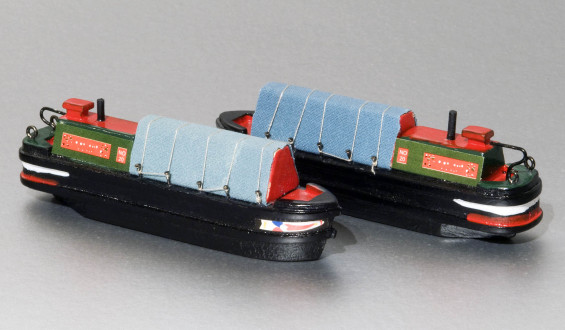
Toy Narrowboats
Wooden narrowboat toys 4" long.
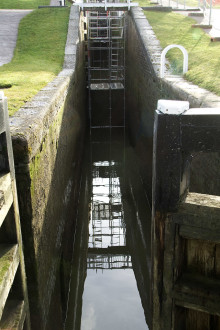
Foxton Locks Drained for Maintenance December 2012
Foxton Locks in Leicestershire drained for inspection and remedial repairs.
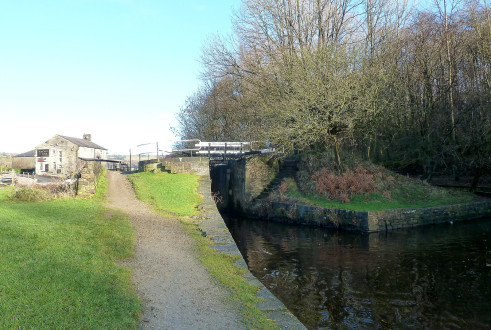
Roaches Lock No. 15 W Huddersfield Narrow Canal
The Huddersfield Narrow Canal runs for 20 miles between Huddersfield in West Yorkshire and Ashton under Lyne in Greater Manchester, UK. The summit of the Huddersfield Narrow Canal is the highest navigable waterway in Britain. Standedge Tunnel on the Huddersfield Narrow Canal is Britain's longest canal tunnel. The canal has a total of 74 locks. It connects end on with the Ashton Canal and the Huddersfield Broad Canal. The Huddersfield Narrow Canal re-opened to navigation in May 2001. The story of this canal begins over 200 years ago at a time when a network of canals was being constructed through many parts of Britain. The canal was due to open five years after work on it had begun. However, when 1799 arrived, while the canal had been constructed to each side of the tunnel, the tunnel itself was far from open. The canal took 17 years to construct rather than the planned 5 years. The costs rose to £396,267, which was more than twice the original budget. Standedge Tunnel alone cost £123,804 to construct. The shareholders had no return on their investment for 30 years. The canal did enjoy a short period of relative prosperity until 1845, when it was bought by the Huddersfield and Manchester Railway Company, whose line was to follow a similar route to the canal. The railway company did not fear competition from the canal, but as they were building a tunnel alongside the canal tunnel, they wanted to use the canal to remove spoil from their excavations. They did this by boring short connecting passages so that boats could be loaded in the tunnel. Once the railway was open, the railway company had no reason to promote the canal, which fell into slow decline and was eventually closed in 1944. Information from the Pennine Waters website. www.penninewaterways.co.uk/huddersfield/hnc2.htm
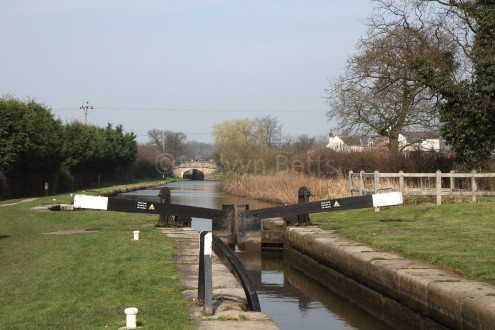
12196 Macclesfield Canal Bosley Locks No6
7434442094_8ea5e7709d_h
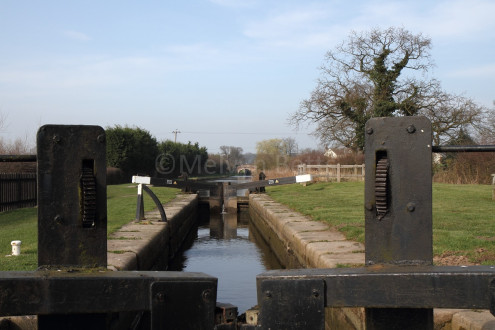
12223 Macclesfield Canal Bosley Locks No6
7434437616_5c4241f5ca_h
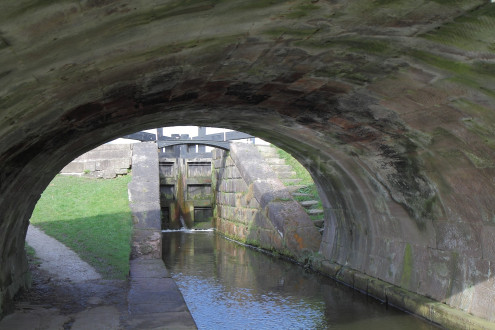
12237 Macclesfield Canal Bosley Locks bridge 54
7327120944_650343e3bf_h
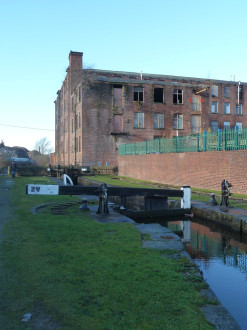
Lock No. 2 W Huddersfield Narrow Canal
The Huddersfield Narrow Canal runs for 20 miles between Huddersfield in West Yorkshire and Ashton under Lyne in Greater Manchester, UK. The summit of the Huddersfield Narrow Canal is the highest navigable waterway in Britain. Standedge Tunnel on the Huddersfield Narrow Canal is Britain's longest canal tunnel. The canal has a total of 74 locks. It connects end on with the Ashton Canal and the Huddersfield Broad Canal. The Huddersfield Narrow Canal re-opened to navigation in May 2001. The story of this canal begins over 200 years ago at a time when a network of canals was being constructed through many parts of Britain. The canal was due to open five years after work on it had begun. However, when 1799 arrived, while the canal had been constructed to each side of the tunnel, the tunnel itself was far from open. The canal took 17 years to construct rather than the planned 5 years. The costs rose to £396,267, which was more than twice the original budget. Standedge Tunnel alone cost £123,804 to construct. The shareholders had no return on their investment for 30 years. The canal did enjoy a short period of relative prosperity until 1845, when it was bought by the Huddersfield and Manchester Railway Company, whose line was to follow a similar route to the canal. The railway company did not fear competition from the canal, but as they were building a tunnel alongside the canal tunnel, they wanted to use the canal to remove spoil from their excavations. They did this by boring short connecting passages so that boats could be loaded in the tunnel. Once the railway was open, the railway company had no reason to promote the canal, which fell into slow decline and was eventually closed in 1944. Information from the Pennine Waters website. www.penninewaterways.co.uk/huddersfield/hnc2.htm
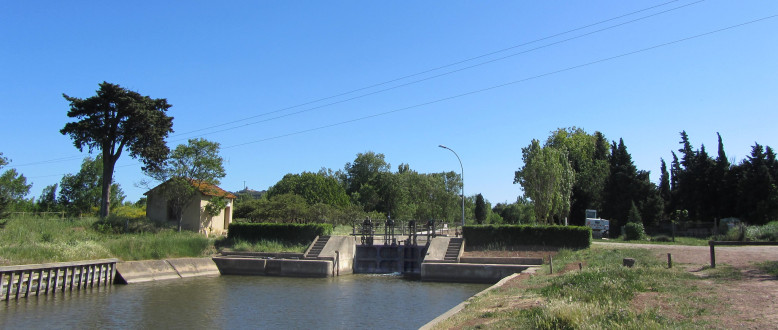
Canal du Midi, écluse (simple) de Bagnas, dernière écluse en venant de Toulouse, commune d'Agde, Hérault.
Photo prise le mercredi 16 mai 2012 lors d'un repérage. 235 km 585 de la Garonne. Altitude : 2 m. 63e écluse sur le Canal à franchir par les navigants depuis son extrèmité occidentale à Toulouse. 65e écluse à l'origine sur le Canal avant les années 70 (66e si l'on compte l'écluse Notre Dame à Beziers sur l'ancien tracé).. 64e écluse si l'on ne compte pas l'écluse de Garonne, la ou a été posée la première pierre du Canal du Midi, guère usitée (mais qui a conservé ses portes éclusières) et commune aux canaux du Midi, Latéral à la Garonne et de Brienne). 63e écluse si on ôte aussi du décompte l'ancienne écluse Matabiau à Toulouse, qui a perdu sa fonction éclusière lors de la modernisation du Canal dans les années 70 On quitte le Biterrois pour entrer dans le Bassin de Thau. Arrivée de la section du Canal venant de l'Etang de Thau (dernière ou première selon le sens emprunté) de 5 km 282 L'écluse doit son nom aux étangs situés aux environs : fr.wikipedia.org/wiki/%C3%89tangs_du_Bagnas Sur ces liens, des photos de David Merlin sur le Canal, particulièrement entre Beziers et l'Etang de Thau : www.david-merlin.com/phototheque/photos_canal-du-midi-v0.htm www.david-merlin.com/phototheque/photos_canal-du-midi-v30... www.david-merlin.com/phototheque/photos_canal-du-midi-v60... www.david-merlin.com/phototheque/photos Voir aussi d'autres liens photographiques ayant comme sujet le Canal du Midi : www.flickr.com/photos/51063756@N03/sets/72157629815095294/ www.flickr.com/groups/r-r-r/discuss/72157629186932232/ www.flickr.com/photos/21252309@N06/sets/72157604226551224... www.flickr.com/photos/26359075@N02/sets/72157619113135217... www.flickr.com/photos/lyli12/sets/72157623917517556/with/... www.flickr.com/photos/34489588@N08/sets/72157614766492790... www.flickr.com/photos/reneve31/sets/72157623974357358/wit... www.flickr.com/photos/27197968@N04/sets/72157622493028095... www.flickr.com/photos/voldepegase/sets/72157627902747759/... Localisation sur wikimapia : wikimapia.org/#lat=43.32194&lon=3.4841497&z=15&am...
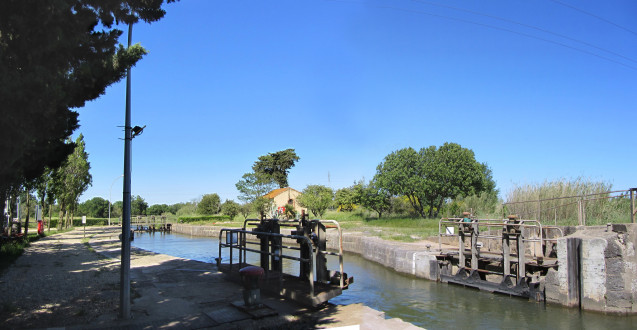
Canal du Midi, écluse (simple) de Bagnas, dernière écluse en venant de Toulouse, commune d'Agde, Hérault.
Photo prise le mercredi 16 mai 2012 lors d'un repérage. 235 km 585 de la Garonne. Altitude : 2 m. 63e écluse sur le Canal à franchir par les navigants depuis son extrèmité occidentale à Toulouse. 65e écluse à l'origine sur le Canal avant les années 70 (66e si l'on compte l'écluse Notre Dame à Beziers sur l'ancien tracé).. 64e écluse si l'on ne compte pas l'écluse de Garonne, la ou a été posée la première pierre du Canal du Midi, guère usitée (mais qui a conservé ses portes éclusières) et commune aux canaux du Midi, Latéral à la Garonne et de Brienne). 63e écluse si on ôte aussi du décompte l'ancienne écluse Matabiau à Toulouse, qui a perdu sa fonction éclusière lors de la modernisation du Canal dans les années 70. De nouveau une écluse à bajoyers elliptiques. C'est à partir de cet écluse et en direction de l'Etang de Thau que le canal cesse d'être arboré. On quitte le Biterrois pour entrer dans loe Bassin de Thau. Sur ces liens, des photos de David Merlin sur le Canal, particulièrement entre Beziers et l'Etang de Thau : www.david-merlin.com/phototheque/photos_canal-du-midi-v0.htm www.david-merlin.com/phototheque/photos_canal-du-midi-v30... www.david-merlin.com/phototheque/photos_canal-du-midi-v60... www.david-merlin.com/phototheque/photos Voir aussi d'autres liens photographiques ayant comme sujet le Canal du Midi : www.flickr.com/photos/51063756@N03/sets/72157629815095294/ www.flickr.com/groups/r-r-r/discuss/72157629186932232/ www.flickr.com/photos/21252309@N06/sets/72157604226551224... www.flickr.com/photos/26359075@N02/sets/72157619113135217... www.flickr.com/photos/lyli12/sets/72157623917517556/with/... www.flickr.com/photos/34489588@N08/sets/72157614766492790... www.flickr.com/photos/reneve31/sets/72157623974357358/wit... www.flickr.com/photos/27197968@N04/sets/72157622493028095... www.flickr.com/photos/voldepegase/sets/72157627902747759/... Localisation sur wikimapia : wikimapia.org/#lat=43.32194&lon=3.4841497&z=15&am...
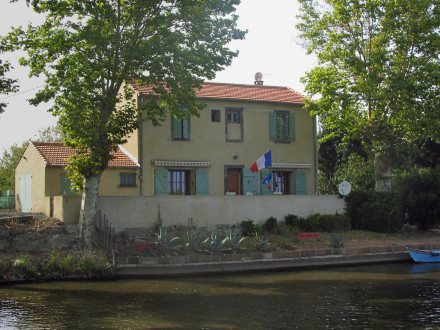
Canal du Midi, écluse (simple) de Bagnas, dernière écluse en venant de Toulouse, maison éclusière, commune d'Agde, Hérault.
Photo prise le dimanche 19 aout 2012. 235 km 585 de la Garonne. Altitude : 2 m. 63e écluse sur le Canal à franchir par les navigants depuis son extrèmité occidentale à Toulouse. 65e écluse à l'origine sur le Canal avant les années 70 (66e si l'on compte l'écluse Notre Dame à Beziers sur l'ancien tracé).. 64e écluse si l'on ne compte pas l'écluse de Garonne, la ou a été posée la première pierre du Canal du Midi, guère usitée (mais qui a conservé ses portes éclusières) et commune aux canaux du Midi, Latéral à la Garonne et de Brienne). 63e écluse si on ôte aussi du décompte l'ancienne écluse Matabiau à Toulouse, qui a perdu sa fonction éclusière lors de la modernisation du Canal dans les années 70 De nouveau une écluse à bajoyers elliptiques. Arrivée du bief de Prades de 3 km 447 en provenance de l'écluse éponyme. On quitte le Biterrois pour entrer dans le Bassin de Thau. Il est vraiment très regrettable qu'il n'existe plus de plaque sur la maison éclusière !!! De plus, le muret vaguement ocre. devant celle ci n'est pas du meilleur effet. A noter aussi que le modèle de menuiseries des fenêtres tant par la couleur que par le motif ne s'harmonise pas avec ce que l'on voit au premier étage. Sur ces liens, des photos de David Merlin sur le Canal, particulièrement entre Beziers et l'Etang de Thau : www.david-merlin.com/phototheque/photos_canal-du-midi-v0.htm www.david-merlin.com/phototheque/photos_canal-du-midi-v30... www.david-merlin.com/phototheque/photos_canal-du-midi-v60... www.david-merlin.com/phototheque/photos Voir aussi d'autres liens photographiques ayant comme sujet le Canal du Midi : www.flickr.com/photos/51063756@N03/sets/72157629815095294/ www.flickr.com/groups/r-r-r/discuss/72157629186932232/ www.flickr.com/photos/21252309@N06/sets/72157604226551224... www.flickr.com/photos/26359075@N02/sets/72157619113135217... www.flickr.com/photos/lyli12/sets/72157623917517556/with/... www.flickr.com/photos/34489588@N08/sets/72157614766492790... www.flickr.com/photos/reneve31/sets/72157623974357358/wit... www.flickr.com/photos/27197968@N04/sets/72157622493028095... www.flickr.com/photos/voldepegase/sets/72157627902747759/... Localisation sur wikimapia : wikimapia.org/#lat=43.32194&lon=3.4841497&z=15&am...
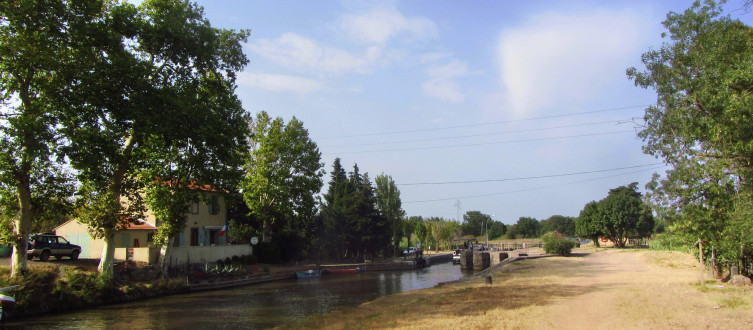
Canal du Midi, écluse (simple) de Bagnas, dernière écluse en venant de Toulouse, commune d'Agde, Hérault.
Photo prise le dimanche 19 aout 2012. 235 km 585 de la Garonne. Altitude : 2 m. 63e écluse sur le Canal à franchir par les navigants depuis son extrèmité occidentale à Toulouse. 65e écluse à l'origine sur le Canal avant les années 70 (66e si l'on compte l'écluse Notre Dame à Beziers sur l'ancien tracé).. 64e écluse si l'on ne compte pas l'écluse de Garonne, la ou a été posée la première pierre du Canal du Midi, guère usitée (mais qui a conservé ses portes éclusières) et commune aux canaux du Midi, Latéral à la Garonne et de Brienne). 63e écluse si on ôte aussi du décompte l'ancienne écluse Matabiau à Toulouse, qui a perdu sa fonction éclusière lors de la modernisation du Canal dans les années 70 De nouveau une écluse à bajoyers élliptiques. Arrivée du bief de Bagnas de 3 km 447 en provenance de l'écluse de Prades. On quitte le Biterrois pour entrer sur le bassin de Thau. Sur ces liens, des photos de David Merlin sur le Canal, particulièrement entre Beziers et l'Etang de Thau : www.david-merlin.com/phototheque/photos_canal-du-midi-v0.htm www.david-merlin.com/phototheque/photos_canal-du-midi-v30... www.david-merlin.com/phototheque/photos_canal-du-midi-v60... www.david-merlin.com/phototheque/photos Voir aussi d'autres liens photographiques ayant comme sujet le Canal du Midi : www.flickr.com/photos/51063756@N03/sets/72157629815095294/ www.flickr.com/groups/r-r-r/discuss/72157629186932232/ www.flickr.com/photos/21252309@N06/sets/72157604226551224... www.flickr.com/photos/26359075@N02/sets/72157619113135217... www.flickr.com/photos/lyli12/sets/72157623917517556/with/... www.flickr.com/photos/34489588@N08/sets/72157614766492790... www.flickr.com/photos/reneve31/sets/72157623974357358/wit... www.flickr.com/photos/27197968@N04/sets/72157622493028095... www.flickr.com/photos/voldepegase/sets/72157627902747759/... Localisation sur wikimapia : wikimapia.org/#lat=43.32194&lon=3.4841497&z=15&am...
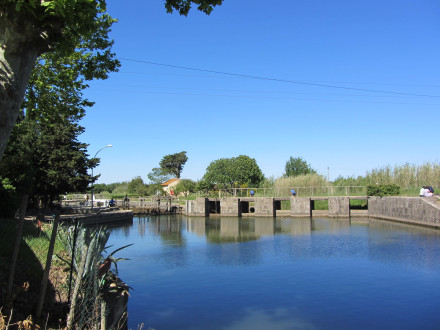
Canal du Midi, 63e bief et 67e section (bief de Bagnas, 3 km 447), arrivée sur l'écluse éponyme, commune d'Agde, Hérault.
Photo prise le mercredi 16 mai 2012 lors d'un repérage. 235 km 585 de la Garonne. Altitude : 2 m. 66e écluse du canal. 64e écluse si l'on ne compte pas les écluses de Garonne à Toulouse (commune aux canaux du Midi, de Brienne et Latéral à la Garonne ainsi que l'écluse Notre Dame à Beziers) et 63e écluse si l'on ôte du décompte l'écluse Matabiau à Toulouse qui a perdu son utilité lors de la modernisation du Canal dans les années soixante dix : le bâtiment existe toujours, ainsi que les bajoyers mais les portes ont disparues. De nouveau une écluse à bajoyers elliptiques. Arrivée du bief de Bagnas de 3 km 447 en provenance de l'écluse de Prades. Sur ces liens, des photos de David Merlin sur le Canal, particulièrement entre Beziers et l'Etang de Thau : www.david-merlin.com/phototheque/photos_canal-du-midi-v0.htm www.david-merlin.com/phototheque/photos_canal-du-midi-v30... www.david-merlin.com/phototheque/photos_canal-du-midi-v60... www.david-merlin.com/phototheque/photos Voir aussi d'autres liens photographiques ayant comme sujet le Canal du Midi : www.flickr.com/photos/51063756@N03/sets/72157629815095294/ www.flickr.com/groups/r-r-r/discuss/72157629186932232/ www.flickr.com/photos/21252309@N06/sets/72157604226551224... www.flickr.com/photos/26359075@N02/sets/72157619113135217... www.flickr.com/photos/lyli12/sets/72157623917517556/with/... www.flickr.com/photos/34489588@N08/sets/72157614766492790... www.flickr.com/photos/reneve31/sets/72157623974357358/wit... www.flickr.com/photos/27197968@N04/sets/72157622493028095... www.flickr.com/photos/voldepegase/sets/72157627902747759/... Localisation sur wikimapia : wikimapia.org/#lat=43.32194&lon=3.4841497&z=15&am...
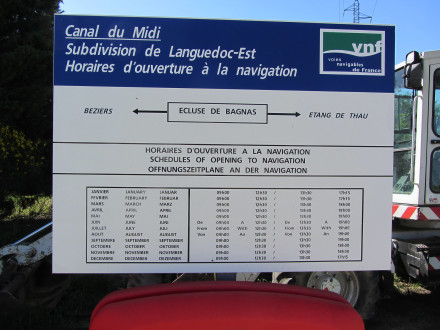
Canal du Midi, écluse (simple) de Bagnas, dernière écluse en venant de Toulouse, commune d'Agde, Hérault.
Photo prise le mercredi 16 mai 2012 lors d'un repérage. 235 km 585 de la Garonne. Altitude : 2 m. 63e écluse sur le Canal à franchir par les navigants depuis son extrèmité occidentale à Toulouse. 65e écluse à l'origine sur le Canal avant les années 70 (66e si l'on compte l'écluse Notre Dame à Beziers sur l'ancien tracé).. 64e écluse si l'on ne compte pas l'écluse de Garonne, la ou a été posée la première pierre du Canal du Midi, guère usitée (mais qui a conservé ses portes éclusières) et commune aux canaux du Midi, Latéral à la Garonne et de Brienne). 63e écluse si on ôte aussi du décompte l'ancienne écluse Matabiau à Toulouse, qui a perdu sa fonction éclusière lors de la modernisation du Canal dans les années 70 On quitte le Biterrois pour entrer sur le bassin de Thau. Sur ces liens, des photos de David Merlin sur le Canal, particulièrement entre Beziers et l'Etang de Thau : www.david-merlin.com/phototheque/photos_canal-du-midi-v0.htm www.david-merlin.com/phototheque/photos_canal-du-midi-v30... www.david-merlin.com/phototheque/photos_canal-du-midi-v60... www.david-merlin.com/phototheque/photos Voir aussi d'autres liens photographiques ayant comme sujet le Canal du Midi : www.flickr.com/photos/51063756@N03/sets/72157629815095294/ www.flickr.com/groups/r-r-r/discuss/72157629186932232/ www.flickr.com/photos/21252309@N06/sets/72157604226551224... www.flickr.com/photos/26359075@N02/sets/72157619113135217... www.flickr.com/photos/lyli12/sets/72157623917517556/with/... www.flickr.com/photos/34489588@N08/sets/72157614766492790... www.flickr.com/photos/reneve31/sets/72157623974357358/wit... www.flickr.com/photos/27197968@N04/sets/72157622493028095... www.flickr.com/photos/voldepegase/sets/72157627902747759/... Localisation sur wikimapia : wikimapia.org/#lat=43.32194&lon=3.4841497&z=15&am...
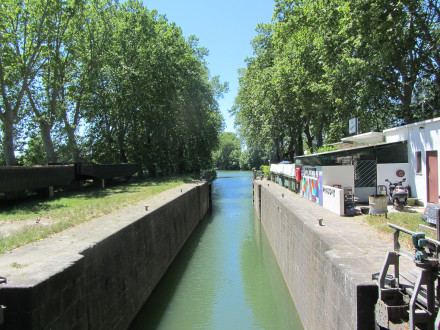
Canal du Midi, écluse (simple) de Prades (sens Etang de Thau Toulouse), commune d'Agde, Hérault.
Photo prise le mercredi 16 mai 2012 lors d'un repérage. 232 km 138 de la Garonne. Altitude (approximative) : 4 m. Ici une écluse à bajoyers droits. 62e écluse sur le Canal à franchir par les navigants depuis son extrèmité occidentale à Toulouse. 64e écluse à l'origine sur le Canal avant les années 70 (65e si l'on compte l'écluse Notre Dame à Beziers sur l'ancien tracé).. 63e écluse si l'on ne compte pas l'écluse de Garonne, la ou a été posée la première pierre du Canal du Midi, guère usitée (mais qui a conservé ses portes éclusières) et commune aux canaux du Midi, Latéral à la Garonne et de Brienne). 62e écluse si on ôte aussi du décompte l'ancienne écluse Matabiau à Toulouse, qui a perdu sa fonction éclusière lors de la modernisation du Canal dans les années 70 Au fond a gauche la guinguette de l'écluse, avec son ambiance "chansons à textes" (Brassens etc...) mais aux tarifs onéreux (données 2012). A droite, la guinguette de l'écluse, avec son ambiance "chansons à textes" (Brassens etc...) mais aux cosommations onéreuses. Sur ces liens, des photos de David Merlin sur le Canal, particulièrement entre Beziers et l'Etang de Thau : www.david-merlin.com/phototheque/photos_canal-du-midi-v0.htm www.david-merlin.com/phototheque/photos_canal-du-midi-v30... www.david-merlin.com/phototheque/photos_canal-du-midi-v60... www.david-merlin.com/phototheque/photos Voir aussi d'autres liens photographiques ayant comme sujet le Canal du Midi : www.flickr.com/photos/51063756@N03/sets/72157629815095294/ www.flickr.com/groups/r-r-r/discuss/72157629186932232/ www.flickr.com/photos/21252309@N06/sets/72157604226551224... www.flickr.com/photos/26359075@N02/sets/72157619113135217... www.flickr.com/photos/lyli12/sets/72157623917517556/with/... www.flickr.com/photos/34489588@N08/sets/72157614766492790... www.flickr.com/photos/reneve31/sets/72157623974357358/wit... www.flickr.com/photos/27197968@N04/sets/72157622493028095... www.flickr.com/photos/voldepegase/sets/72157627902747759/... Localisation sur wikimapia : wikimapia.org/#lat=43.3245391&lon=3.4761675&z=16&...
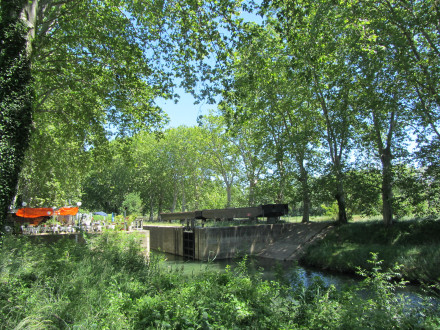
Canal du Midi, écluse (simple) de Prades, commune d'Agde, Hérault.
Photo prise le mercredi 16 mai 2012 lors d'un repérage. 232 km 138 de la Garonne. Altitude : 4 m. 62e écluse sur le Canal à franchir par les navigants depuis son extrèmité occidentale à Toulouse. 64e écluse à l'origine sur le Canal avant les années 70 (65e si l'on compte l'écluse Notre Dame à Beziers sur l'ancien tracé).. 63e écluse si l'on ne compte pas l'écluse de Garonne, la ou a été posée la première pierre du Canal du Midi, guère usitée (mais qui a conservé ses portes éclusières) et commune aux canaux du Midi, Latéral à la Garonne et de Brienne). 62e écluse si on ôte aussi du décompte l'ancienne écluse Matabiau à Toulouse, qui a perdu sa fonction éclusière lors de la modernisation du Canal dans les années 70 Au fond a gauche la guinguette de l'écluse, avec son ambiance "chansons à textes" (Brassens etc...) mais aux tarifs onéreux (données 2012). Sur ces liens, des photos de David Merlin sur le Canal, particulièrement entre Beziers et l'Etang de Thau : www.david-merlin.com/phototheque/photos_canal-du-midi-v0.htm www.david-merlin.com/phototheque/photos_canal-du-midi-v30... www.david-merlin.com/phototheque/photos_canal-du-midi-v60... www.david-merlin.com/phototheque/photos Voir aussi d'autres liens photographiques ayant comme sujet le Canal du Midi : www.flickr.com/photos/51063756@N03/sets/72157629815095294/ www.flickr.com/groups/r-r-r/discuss/72157629186932232/ www.flickr.com/photos/21252309@N06/sets/72157604226551224... www.flickr.com/photos/26359075@N02/sets/72157619113135217... www.flickr.com/photos/lyli12/sets/72157623917517556/with/... www.flickr.com/photos/34489588@N08/sets/72157614766492790... www.flickr.com/photos/reneve31/sets/72157623974357358/wit... www.flickr.com/photos/27197968@N04/sets/72157622493028095... www.flickr.com/photos/voldepegase/sets/72157627902747759/... Localisation sur wikimapia : wikimapia.org/#lat=43.3245391&lon=3.4761675&z=16&...
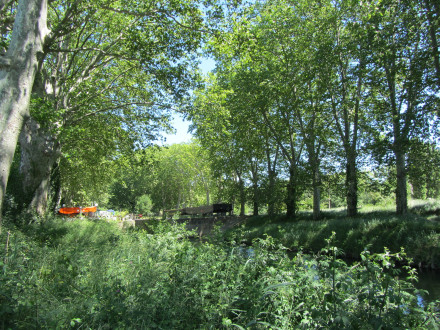
Canal du Midi, écluse (simple) de Prades, commune d'Agde, Hérault.
Photo prise le mercredi 16 mai 2012 lors d'un repérage. 232 km 138 de la Garonne. Altitude : 4 m. arrivée de la 66e section du Canal (qui n'est pas un bief). 62e écluse sur le Canal à franchir par les navigants depuis son extrèmité occidentale à Toulouse. 64e écluse à l'origine sur le Canal avant les années 70 (65e si l'on compte l'écluse Notre Dame à Beziers sur l'ancien tracé).. 63e écluse si l'on ne compte pas l'écluse de Garonne, la ou a été posée la première pierre du Canal du Midi, guère usitée (mais qui a conservé ses portes éclusières) et commune aux canaux du Midi, Latéral à la Garonne et de Brienne). 62e écluse si on ôte aussi du décompte l'ancienne écluse Matabiau à Toulouse, qui a perdu sa fonction éclusière lors de la modernisation du Canal dans les années 70 Au fond a gauche la guinguette de l'écluse, avec son ambiance "chansons à textes" (Brassens etc...) mais aux tarifs onéreux (données 2012). Sur ces liens, des photos de David Merlin sur le Canal, particulièrement entre Beziers et l'Etang de Thau : www.david-merlin.com/phototheque/photos_canal-du-midi-v0.htm www.david-merlin.com/phototheque/photos_canal-du-midi-v30... www.david-merlin.com/phototheque/photos_canal-du-midi-v60... www.david-merlin.com/phototheque/photos Voir aussi d'autres liens photographiques ayant comme sujet le Canal du Midi : www.flickr.com/photos/51063756@N03/sets/72157629815095294/ www.flickr.com/groups/r-r-r/discuss/72157629186932232/ www.flickr.com/photos/21252309@N06/sets/72157604226551224... www.flickr.com/photos/26359075@N02/sets/72157619113135217... www.flickr.com/photos/lyli12/sets/72157623917517556/with/... www.flickr.com/photos/34489588@N08/sets/72157614766492790... www.flickr.com/photos/reneve31/sets/72157623974357358/wit... www.flickr.com/photos/27197968@N04/sets/72157622493028095... www.flickr.com/photos/voldepegase/sets/72157627902747759/... Localisation sur wikimapia : wikimapia.org/#lat=43.3245391&lon=3.4761675&z=16&...
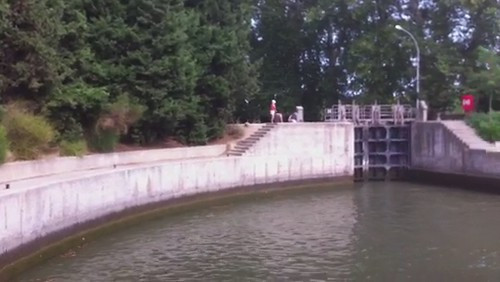
Canal du Midi, petite vidéo sur l'écluse ronde d'Agde (écluse simple), commune d'Agde, Hérault.
Vidéo créée le dimanche 19 aout 2012. 231 km 138 de la Garonne. Altitude : 4 m. 61e écluse sur le Canal à franchir par les navigants depuis son extrèmité occidentale à Toulouse. 63e écluse à l'origine sur le Canal avant les années 70 (63e si l'on compte l'écluse Notre Dame à Beziers sur l'ancien tracé et 62e avant la construction du pont canal de l'Orb à Béziers). 62e écluse si l'on ne compte pas l'écluse de Garonne, la ou a été posée la première pierre du Canal du Midi, guère usitée (mais qui a conservé ses portes éclusières) et commune aux canaux du Midi, Latéral à la Garonne et de Brienne). 61e écluse si on ôte aussi du décompte l'ancienne écluse Matabiau à Toulouse, qui a perdu sa fonction éclusière lors de la modernisation du Canal dans les années 70 fr.wikipedia.org/wiki/Agde Liens sur l'écluse ronde d'Agde : fr.wikipedia.org/wiki/%C3%89cluse_Ronde_d'Agde www.canaldumidi.com/Biterrois/Agde/Ecluse-ronde.php www.canalmidi.com/aufildlo/eclusron.html www.canaux-historiques.com/d2m/ouvrage/agde/fiche_ouvrage... www.streetviewandmaps.com/fr/map/fr/67477-%C3%89cluse-Ron... Un des deux exemplaires d'écluses rondes en France. L'autre écluse ronde est celle des Lorrains sur le Canal Latéral à la Loire : www.jph-lamotte.fr/files/plais-hist_lorrains.htm fr.structurae.de/structures/data/index.cfm?ID=s0016112 album-photo.geo.fr/ap/album/47874/ fr.wikipedia.org/wiki/%C3%89cluse#.C3.89cluse_ronde_des_L... Lien sur le Canal Latéral à la loire : fr.wikipedia.org/wiki/Canal_lat%C3%A9ral_%C3%A0_la_Loire Lien sur la carte des canaux en France : projetbabel.org/fluvial/rica_carte-france.htm Lien sur la liste des Canaux en France : fr.wikipedia.org/wiki/Liste_des_canaux_de_France Localisation sur wikimapia : wikimapia.org/#lat=43.3191691&lon=3.4730775&z=16&...
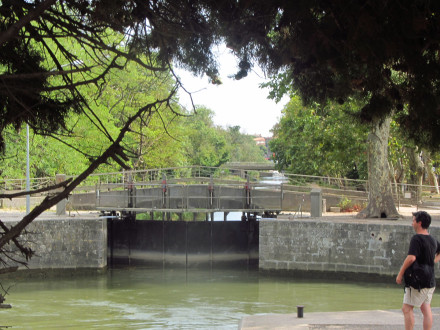
Canal du Midi, écluse ronde d'Agde (écluse simple), commune d'Agde, Hérault.
Photo prise le dimanche 19 aout 2012. Un des deux exemplaires d'écluses rondes en France. 231 km 138 de la Garonne. Altitude : 4 m. 61e écluse sur le Canal à franchir par les navigants depuis son extrèmité occidentale à Toulouse. 63e écluse à l'origine sur le Canal avant les années 70 (63e si l'on compte l'écluse Notre Dame à Beziers sur l'ancien tracé et 62e avant la construction du pont canal de l'Orb à Béziers). 62e écluse si l'on ne compte pas l'écluse de Garonne, la ou a été posée la première pierre du Canal du Midi, guère usitée (mais qui a conservé ses portes éclusières) et commune aux canaux du Midi, Latéral à la Garonne et de Brienne). 61e écluse si on ôte aussi du décompte l'ancienne écluse Matabiau à Toulouse, qui a perdu sa fonction éclusière lors de la modernisation du Canal dans les années 70 fr.wikipedia.org/wiki/Agde A gauche, le 64e bief en direction d'Agde et de la mer. En face, le 64e bief en direction d'Agde , l'Hérault et la mer. Liens sur l'écluse ronde d'Agde : fr.wikipedia.org/wiki/%C3%89cluse_Ronde_d'Agde www.canaldumidi.com/Biterrois/Agde/Ecluse-ronde.php www.canalmidi.com/aufildlo/eclusron.html www.canaux-historiques.com/d2m/ouvrage/agde/fiche_ouvrage... www.streetviewandmaps.com/fr/map/fr/67477-%C3%89cluse-Ron... Un des deux exemplaires d'écluses rondes en France. L'autre écluse ronde est celle des Lorrains sur le Canal Latéral à la Loire : www.jph-lamotte.fr/files/plais-hist_lorrains.htm fr.structurae.de/structures/data/index.cfm?ID=s0016112 album-photo.geo.fr/ap/album/47874/ fr.wikipedia.org/wiki/%C3%89cluse#.C3.89cluse_ronde_des_L... Lien sur le Canal Latéral à la loire : fr.wikipedia.org/wiki/Canal_lat%C3%A9ral_%C3%A0_la_Loire Lien sur la carte des canaux en France : projetbabel.org/fluvial/rica_carte-france.htm Lien sur la liste des Canaux en France : fr.wikipedia.org/wiki/Liste_des_canaux_de_France Localisation sur wikimapia : wikimapia.org/#lat=43.3191691&lon=3.4730775&z=16&...
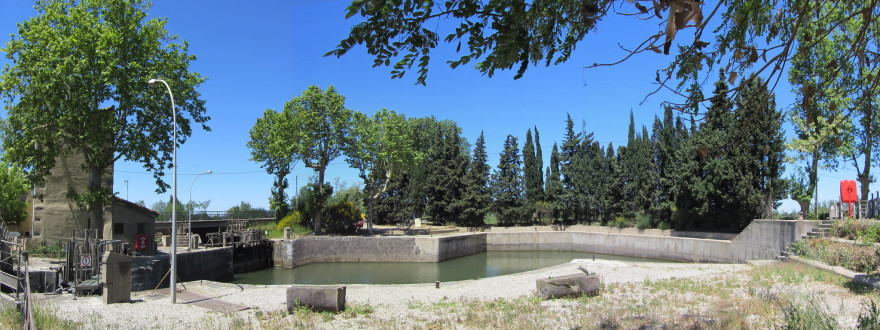
Canal du Midi, écluse ronde d'Agde (écluse simple), commune d'Agde, Hérault.
Photo prise le mercredi 16 mai 2012 lors d'un repérage. Un des deux exemplaires d'écluses rondes en France. 231 km 138 de la Garonne. Altitude : 4 m. 61e écluse sur le Canal à franchir par les navigants depuis son extrèmité occidentale à Toulouse. 63e écluse à l'origine sur le Canal avant les années 70 (63e si l'on compte l'écluse Notre Dame à Beziers sur l'ancien tracé et 62e avant la construction du pont canal de l'Orb à Béziers). 62e écluse si l'on ne compte pas l'écluse de Garonne, la ou a été posée la première pierre du Canal du Midi, guère usitée (mais qui a conservé ses portes éclusières) et commune aux canaux du Midi, Latéral à la Garonne et de Brienne). 61e écluse si on ôte aussi du décompte l'ancienne écluse Matabiau à Toulouse, qui a perdu sa fonction éclusière lors de la modernisation du Canal dans les années 70 fr.wikipedia.org/wiki/Agde A gauche, direction Agde et la mer. Au centre, le bief d'Agde en direction de Beziers. A droite, direction l'Hérault, l'écluse de Prades à 1 km et l'Etang de Thau. Liens sur l'écluse ronde d'Agde : fr.wikipedia.org/wiki/%C3%89cluse_Ronde_d'Agde www.canaldumidi.com/Biterrois/Agde/Ecluse-ronde.php www.canalmidi.com/aufildlo/eclusron.html www.canaux-historiques.com/d2m/ouvrage/agde/fiche_ouvrage... www.streetviewandmaps.com/fr/map/fr/67477-%C3%89cluse-Ron... Un des deux exemplaires d'écluses rondes en France. L'autre écluse ronde est celle des Lorrains sur le Canal Latéral à la Loire : www.jph-lamotte.fr/files/plais-hist_lorrains.htm fr.structurae.de/structures/data/index.cfm?ID=s0016112 album-photo.geo.fr/ap/album/47874/ fr.wikipedia.org/wiki/%C3%89cluse#.C3.89cluse_ronde_des_L... Lien sur le Canal Latéral à la loire : fr.wikipedia.org/wiki/Canal_lat%C3%A9ral_%C3%A0_la_Loire Lien sur la carte des canaux en France : projetbabel.org/fluvial/rica_carte-france.htm Lien sur la liste des Canaux en France : fr.wikipedia.org/wiki/Liste_des_canaux_de_France Localisation sur wikimapia : wikimapia.org/#lat=43.3191691&lon=3.4730775&z=16&...
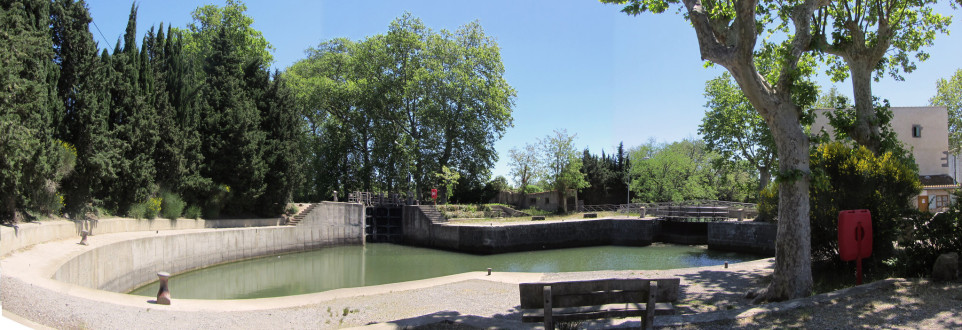
Canal du Midi, écluse ronde d'Agde (écluse simple), commune d'Agde, Hérault.
Photo prise le mercredi 16 mai 2012 lors d'un repérage. Un des deux exemplaires d'écluses rondes en France. 231 km 138 de la Garonne. Altitude : 4 m. 61e écluse sur le Canal à franchir par les navigants depuis son extrèmité occidentale à Toulouse. 63e écluse à l'origine sur le Canal avant les années 70 (63e si l'on compte l'écluse Notre Dame à Beziers sur l'ancien tracé et 62e avant la construction du pont canal de l'Orb à Béziers). 62e écluse si l'on ne compte pas l'écluse de Garonne, la ou a été posée la première pierre du Canal du Midi, guère usitée (mais qui a conservé ses portes éclusières) et commune aux canaux du Midi, Latéral à la Garonne et de Brienne). 61e écluse si on ôte aussi du décompte l'ancienne écluse Matabiau à Toulouse, qui a perdu sa fonction éclusière lors de la modernisation du Canal dans les années 70 fr.wikipedia.org/wiki/Agde A droite, le direction Agde et la mer. A gauche, direction l'Hérault, l'écluse de Prades à 1 km et l'Etang de Thau. Liens sur l'écluse ronde d'Agde : fr.wikipedia.org/wiki/%C3%89cluse_Ronde_d'Agde www.canaldumidi.com/Biterrois/Agde/Ecluse-ronde.php www.canalmidi.com/aufildlo/eclusron.html www.canaux-historiques.com/d2m/ouvrage/agde/fiche_ouvrage... www.streetviewandmaps.com/fr/map/fr/67477-%C3%89cluse-Ron... Un des deux exemplaires d'écluses rondes en France. L'autre écluse ronde est celle des Lorrains sur le Canal Latéral à la Loire : www.jph-lamotte.fr/files/plais-hist_lorrains.htm fr.structurae.de/structures/data/index.cfm?ID=s0016112 album-photo.geo.fr/ap/album/47874/ fr.wikipedia.org/wiki/%C3%89cluse#.C3.89cluse_ronde_des_L... Lien sur le Canal Latéral à la loire : fr.wikipedia.org/wiki/Canal_lat%C3%A9ral_%C3%A0_la_Loire Lien sur la carte des canaux en France : projetbabel.org/fluvial/rica_carte-france.htm Lien sur la liste des Canaux en France : fr.wikipedia.org/wiki/Liste_des_canaux_de_France Localisation sur wikimapia : wikimapia.org/#lat=43.3191691&lon=3.4730775&z=16&...
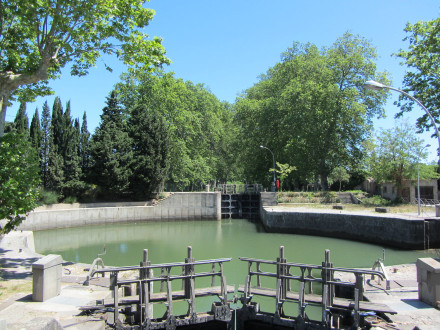
Canal du Midi, écluse ronde d'Agde (écluse simple), commune d'Agde, Hérault.
Photo prise le mercredi 16 mai 2012 lors d'un repérage. Un des deux exemplaires d'écluses rondes en France, mais unique ouvrage sur une écluse ronde tri directionnelle. 231 km 138 de la Garonne. Altitude : 4 m. 61e écluse sur le Canal à franchir par les navigants depuis son extrèmité occidentale à Toulouse. 63e écluse à l'origine sur le Canal avant les années 70 (63e si l'on compte l'écluse Notre Dame à Beziers sur l'ancien tracé et 62e avant la construction du pont canal de l'Orb à Béziers). 62e écluse si l'on ne compte pas l'écluse de Garonne, la ou a été posée la première pierre du Canal du Midi, guère usitée (mais qui a conservé ses portes éclusières) et commune aux canaux du Midi, Latéral à la Garonne et de Brienne). 61e écluse si on ôte aussi du décompte l'ancienne écluse Matabiau à Toulouse, qui a perdu sa fonction éclusière lors de la modernisation du Canal dans les années 70 fr.wikipedia.org/wiki/Agde A droite, direction d'Agde et de la mer. En face, direction l'Herault, l'écluse de Prades à 1 km et l'Etang de Thau. Sur ce lien, une carte postale ancienne sur l'écluse et la vue sur la direction de l'Hérault : www.canalmidi.com/aufildlo/photanci/cpaagde.html Liens sur l'écluse ronde d'Agde : fr.wikipedia.org/wiki/%C3%89cluse_Ronde_d'Agde www.canaldumidi.com/Biterrois/Agde/Ecluse-ronde.php www.canalmidi.com/aufildlo/eclusron.html www.canaux-historiques.com/d2m/ouvrage/agde/fiche_ouvrage... www.streetviewandmaps.com/fr/map/fr/67477-%C3%89cluse-Ron... Un des deux exemplaires d'écluses rondes en France. L'autre écluse ronde est celle des Lorrains sur le Canal Latéral à la Loire : www.jph-lamotte.fr/files/plais-hist_lorrains.htm fr.structurae.de/structures/data/index.cfm?ID=s0016112 album-photo.geo.fr/ap/album/47874/ fr.wikipedia.org/wiki/%C3%89cluse#.C3.89cluse_ronde_des_L... Lien sur le Canal Latéral à la loire : fr.wikipedia.org/wiki/Canal_lat%C3%A9ral_%C3%A0_la_Loire Lien sur la carte des canaux en France : projetbabel.org/fluvial/rica_carte-france.htm Lien sur la liste des Canaux en France : fr.wikipedia.org/wiki/Liste_des_canaux_de_France Localisation sur wikimapia : wikimapia.org/#lat=43.3191691&lon=3.4730775&z=16&...
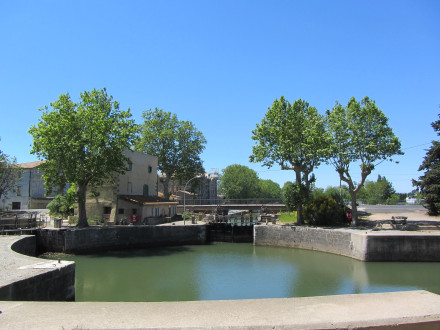
Canal du Midi, écluse ronde d'Agde (écluse simple), commune d'Agde, Hérault.
Photo prise le mercredi 16 mai 2012 lors d'un repérage. Un des deux exemplaires d'écluses rondes en France. 231 km 138 de la Garonne. Altitude : 4 m. Localisation sur wikimapia : wikimapia.org/#lat=43.3191691&lon=3.4730775&z=16&... 61e écluse sur le Canal à franchir par les navigants depuis son extrèmité occidentale à Toulouse. 63e écluse à l'origine sur le Canal avant les années 70 (63e si l'on compte l'écluse Notre Dame à Beziers sur l'ancien tracé et 62e avant la construction du pont canal de l'Orb à Béziers). 62e écluse si l'on ne compte pas l'écluse de Garonne, la ou a été posée la première pierre du Canal du Midi, guère usitée (mais qui a conservé ses portes éclusières) et commune aux canaux du Midi, Latéral à la Garonne et de Brienne). 61e écluse si on ôte aussi du décompte l'ancienne écluse Matabiau à Toulouse, qui a perdu sa fonction éclusière lors de la modernisation du Canal dans les années 70 fr.wikipedia.org/wiki/Agde En face, départ du 63e bief vers l'écluse de Portiragnes, et Beziers. A gauche, le canalet en direction d'Agde et de la mer. A droite, poursuite sur le canal direction l'Hérault, l'écluse de Prades, a 1 km et l'Etang de Thau. Liens sur l'écluse ronde d'Agde : fr.wikipedia.org/wiki/%C3%89cluse_Ronde_d'Agde www.canaldumidi.com/Biterrois/Agde/Ecluse-ronde.php www.canalmidi.com/aufildlo/eclusron.html www.canaux-historiques.com/d2m/ouvrage/agde/fiche_ouvrage... www.streetviewandmaps.com/fr/map/fr/67477-%C3%89cluse-Ron... Un des deux exemplaires d'écluses rondes en France. L'autre écluse ronde est celle des Lorrains sur le Canal Latéral à la Loire : www.jph-lamotte.fr/files/plais-hist_lorrains.htm fr.structurae.de/structures/data/index.cfm?ID=s0016112 album-photo.geo.fr/ap/album/47874/ fr.wikipedia.org/wiki/%C3%89cluse#.C3.89cluse_ronde_des_L... Lien sur le Canal Latéral à la loire : fr.wikipedia.org/wiki/Canal_lat%C3%A9ral_%C3%A0_la_Loire Lien sur la carte des canaux en France : projetbabel.org/fluvial/rica_carte-france.htm Lien sur la liste des Canaux en France : fr.wikipedia.org/wiki/Liste_des_canaux_de_France
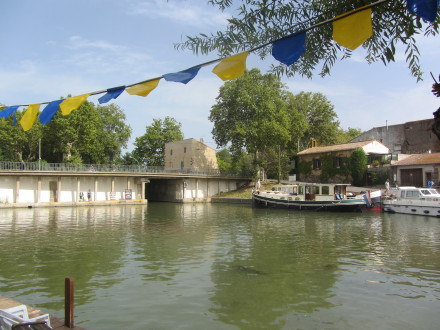
Canal du Midi, arrivée sur l'écluse ronde d'Agde, commune d'Agde, Hérault.
Photo prise le dimanche 19 aout 2012. 231 km 138 de la Garonne. Altitude : 4 m. 64e écluse du canal. 62e écluse si l'on ne compte pas les écluses de Garonne à Toulouse (commune aux canaux du Midi, de Brienne et Latéral à la Garonne ainsi que l'écluse Notre Dame à Beziers) et 61e écluse si l'on ôte du décompte l'écluse Matabiau à Toulouse qui a perdu son utilité lors de la modernisation du Canal dans les années soixante dix : le bâtiment existe toujours, ainsi que les bajoyers mais les portes ont disparues). A noter que wikipédia inclus dans son décompte l'ancienne écluse de Matabiau mais ne prend ni en compte l'écluse de Garonne à Toulouse, ni l'écluse notre Dame situé sur l'ancien tracé à Béziers ,ce qui revient à considérer cette écluse comme la 62e (données 2012). fr.wikipedia.org/wiki/Agde Sur ces liens, des photos de David Merlin sur le Canal, particulièrement entre Beziers et l'Etang de Thau : www.david-merlin.com/phototheque/photos_canal-du-midi-v0.htm www.david-merlin.com/phototheque/photos_canal-du-midi-v30... www.david-merlin.com/phototheque/photos_canal-du-midi-v60... www.david-merlin.com/phototheque/photos Voir aussi d'autres liens photographiques ayant comme sujet le Canal du Midi : www.flickr.com/photos/51063756@N03/sets/72157629815095294/ www.flickr.com/groups/r-r-r/discuss/72157629186932232/ www.flickr.com/photos/21252309@N06/sets/72157604226551224... www.flickr.com/photos/26359075@N02/sets/72157619113135217... www.flickr.com/photos/lyli12/sets/72157623917517556/with/... www.flickr.com/photos/34489588@N08/sets/72157614766492790... www.flickr.com/photos/reneve31/sets/72157623974357358/wit... www.flickr.com/photos/27197968@N04/sets/72157622493028095... www.flickr.com/photos/voldepegase/sets/72157627902747759/... Localisation sur wikimapia : wikimapia.org/#lat=43.309864&lon=3.4079428&z=13&a...
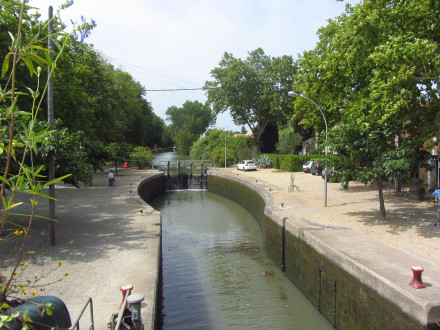
Canal du Midi, écluse (simple) de Portiragnes (sens Etang de Thau Toulouse), commune de Portiragnes, Hérault.
Photo prise le dimanche 19 aout 2012. 217 km 980 de la Garonne. Altitude : 5 m. 60e écluse sur le Canal à franchir par les navigants depuis son extrèmité occidentale à Toulouse. 62e écluse à l'origine sur le Canal avant les années 70 (63e si l'on compte l'écluse Notre Dame à Beziers sur l'ancien tracé et 61e avant la construction du pont canal de l'Orb à Béziers). 61e écluse si l'on ne compte pas l'écluse de Garonne, la ou a été posée la première pierre du Canal du Midi, guère usitée (mais qui a conservé ses portes éclusières) et commune aux canaux du Midi, Latéral à la Garonne et de Brienne). 60e écluse si on ôte aussi du décompte l'ancienne écluse Matabiau à Toulouse, qui a perdu sa fonction éclusière lors de la modernisation du Canal dans les années 70 Philippe Calas, créateur du site www.canalmidi.com/ , est instituteur à Portiragnes (données 2012). fr.wikipedia.org/wiki/Portiragnes Voir aussi de très belles séries de photos du canal essentiellement dans ce secteur (de Brigeham 34) : www.flickr.com/photos/21252309@N06/collections/7215760422... Localisation sur wikimapia : wikimapia.org/#lat=43.3113004&lon=3.3167048&z=14&...
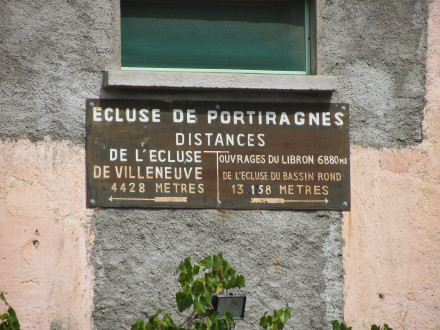
Canal du Midi, écluse (simple) de Portiragnes, commune de Portiragnes, Hérault.
Photo prise le dimanche 19 aout 2012. 217 km 980 de la Garonne. Altitude : 5 m. 60e écluse sur le Canal à franchir par les navigants depuis son extrèmité occidentale à Toulouse. 62e écluse à l'origine sur le Canal avant les années 70 (63e si l'on compte l'écluse Notre Dame à Beziers sur l'ancien tracé et 61e avant la construction du pont canal de l'Orb à Béziers). 61e écluse si l'on ne compte pas l'écluse de Garonne, la ou a été posée la première pierre du Canal du Midi, guère usitée (mais qui a conservé ses portes éclusières) et commune aux canaux du Midi, Latéral à la Garonne et de Brienne). 60e écluse si on ôte aussi du décompte l'ancienne écluse Matabiau à Toulouse, qui a perdu sa fonction éclusière lors de la modernisation du Canal dans les années 70 Philippe Calas, créateur du site www.canalmidi.com/ , est instituteur à Portiragnes (données 2012). fr.wikipedia.org/wiki/Portiragnes Voir aussi de très belles séries de photos du canal essentiellement dans ce secteur (de Brigeham 34) : www.flickr.com/photos/21252309@N06/collections/7215760422... Localisation sur wikimapia : wikimapia.org/#lat=43.3113004&lon=3.3167048&z=14&...
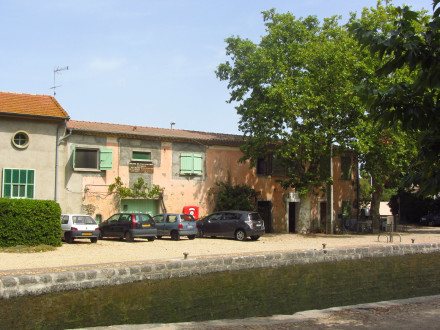
Canal du Midi, écluse (simple) de Portiragnes, commune de Portiragnes, Hérault.
Photo prise le dimanche 19 aout 2012. 217 km 980 de la Garonne. Altitude : 5 m. 60e écluse sur le Canal à franchir par les navigants depuis son extrèmité occidentale à Toulouse. 62e écluse à l'origine sur le Canal avant les années 70 (63e si l'on compte l'écluse Notre Dame à Beziers sur l'ancien tracé et 61e avant la construction du pont canal de l'Orb à Béziers). 61e écluse si l'on ne compte pas l'écluse de Garonne, la ou a été posée la première pierre du Canal du Midi, guère usitée (mais qui a conservé ses portes éclusières) et commune aux canaux du Midi, Latéral à la Garonne et de Brienne). 60e écluse si on ôte aussi du décompte l'ancienne écluse Matabiau à Toulouse, qui a perdu sa fonction éclusière lors de la modernisation du Canal dans les années 70 Philippe Calas, créateur du site www.canalmidi.com/ , est instituteur à Portiragnes (données 2012). fr.wikipedia.org/wiki/Portiragnes Voir aussi de très belles séries de photos du canal essentiellement dans ce secteur (de Brigeham 34) : www.flickr.com/photos/21252309@N06/collections/7215760422... Localisation sur wikimapia : wikimapia.org/#lat=43.3113004&lon=3.3167048&z=14&...
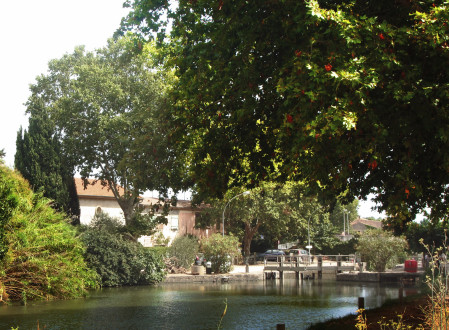
Canal du midi, 61e bief (bief de Portiragnes, 4 km 428), arrivée sur l'écluse de Portiragnes, commune de Portiragnes, Hérault.
Photo prise le dimanche 19 aout 2012. 217 km 980 de la Garonne. Altitude : 5 m. 60e écluse sur le Canal à franchir par les navigants depuis son extrèmité occidentale à Toulouse. 62e écluse à l'origine sur le Canal avant les années 70 (63e si l'on compte l'écluse Notre Dame à Beziers sur l'ancien tracé et 61e avant la construction du pont canal de l'Orb à Béziers). 61e écluse si l'on ne compte pas l'écluse de Garonne, la ou a été posée la première pierre du Canal du Midi, guère usitée (mais qui a conservé ses portes éclusières) et commune aux canaux du Midi, Latéral à la Garonne et de Brienne). 60e écluse si on ôte aussi du décompte l'ancienne écluse Matabiau à Toulouse, qui a perdu sa fonction éclusière lors de la modernisation du Canal dans les années 70 Philippe Calas, créateur du site www.canalmidi.com/ , est instituteur à Portiragnes (données 2012). fr.wikipedia.org/wiki/Portiragnes Voir aussi de très belles séries de photos du canal essentiellement dans ce secteur (de Brigeham 34) : www.flickr.com/photos/21252309@N06/collections/7215760422... Localisation sur wikimapia : wikimapia.org/#lat=43.3113004&lon=3.3167048&z=14&...
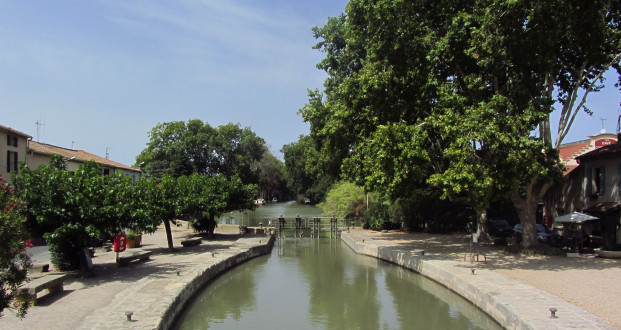
Canal du Midi, écluse (simple) de Villeneuve (sens Etang de Thau Toulouse), commune Villeneuve lez Béziers, Hérault.
Photo prise le dimanche 19 aout 2012. 213 km 552 de la Garonne. Altitude : 6 m. 59e écluse sur le Canal à franchir par les navigants depuis son extrèmité occidentale à Toulouse. 61e écluse à l'origine sur le Canal avant les années 70 (62e si l'on compte l'écluse Notre Dame à Beziers sur l'ancien tracé et 60e avant la construction du pont canal de l'Orb à Béziers). 60e écluse si l'on ne compte pas l'écluse de Garonne, la ou a été posée la première pierre du Canal du Midi, guère usitée (mais qui a conservé ses portes éclusières) et commune aux canaux du Midi, Latéral à la Garonne et de Brienne). 59e écluse si on ôte aussi du décompte l'ancienne écluse Matabiau à Toulouse, qui a perdu sa fonction éclusière lors de la modernisation du Canal dans les années 70 Sur ce lien, une carte postale ancienne en aval de l'écluse : www.canalmidi.com/aufildlo/photanci/cpavilleneuve.html fr.wikipedia.org/wiki/Villeneuve-l%C3%A8s-B%C3%A9ziers Sur ce lien, une photo prise au même endroit à l'automne : www.flickr.com/photos/21252309@N06/6404368711/in/pool-can... Sur ces liens, des photos de David Merlin sur le Canal, particulièrement entre Beziers et l'Etang de Thau : www.david-merlin.com/phototheque/photos_canal-du-midi-v0.htm www.david-merlin.com/phototheque/photos_canal-du-midi-v30... www.david-merlin.com/phototheque/photos_canal-du-midi-v60... www.david-merlin.com/phototheque/photos Voir aussi d'autres liens photographiques ayant comme sujet le Canal du Midi : www.flickr.com/photos/51063756@N03/sets/72157629815095294/ www.flickr.com/groups/r-r-r/discuss/72157629186932232/ www.flickr.com/photos/21252309@N06/sets/72157604226551224... www.flickr.com/photos/26359075@N02/sets/72157619113135217... www.flickr.com/photos/lyli12/sets/72157623917517556/with/... www.flickr.com/photos/34489588@N08/sets/72157614766492790... www.flickr.com/photos/reneve31/sets/72157623974357358/wit... www.flickr.com/photos/27197968@N04/sets/72157622493028095... www.flickr.com/photos/voldepegase/sets/72157627902747759/... Voir aussi de très belles séries de photos du canal essentiellement dans ce secteur (de Brigeham 34) : www.flickr.com/photos/21252309@N06/collections/7215760422... Localisation sur wikimapia : wikimapia.org/#lat=43.3284883&lon=3.2513018&z=14&...
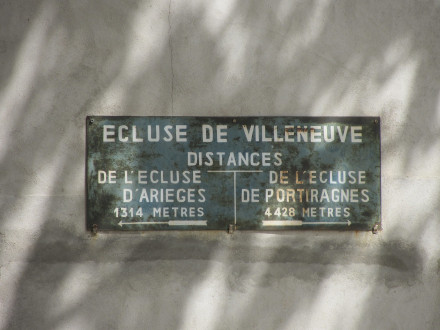
Canal du Midi, écluse (simple) de Villeneuve, commune Villeneuve lez Béziers, Hérault.
Photo prise le dimanche 19 aout 2012. 213 km 552 de la Garonne. Altitude : 6 m. 59e écluse sur le Canal à franchir par les navigants depuis son extrèmité occidentale à Toulouse. 61e écluse à l'origine sur le Canal avant les années 70 (62e si l'on compte l'écluse Notre Dame à Beziers sur l'ancien tracé et 60e avant la construction du pont canal de l'Orb à Béziers). 60e écluse si l'on ne compte pas l'écluse de Garonne, la ou a été posée la première pierre du Canal du Midi, guère usitée (mais qui a conservé ses portes éclusières) et commune aux canaux du Midi, Latéral à la Garonne et de Brienne). 59e écluse si on ôte aussi du décompte l'ancienne écluse Matabiau à Toulouse, qui a perdu sa fonction éclusière lors de la modernisation du Canal dans les années 70 fr.wikipedia.org/wiki/Villeneuve-l%C3%A8s-B%C3%A9ziers Sur ces liens, des photos de David Merlin sur le Canal, particulièrement entre Beziers et l'Etang de Thau : www.david-merlin.com/phototheque/photos_canal-du-midi-v0.htm www.david-merlin.com/phototheque/photos_canal-du-midi-v30... www.david-merlin.com/phototheque/photos_canal-du-midi-v60... www.david-merlin.com/phototheque/photos Voir aussi d'autres liens photographiques ayant comme sujet le Canal du Midi : www.flickr.com/photos/51063756@N03/sets/72157629815095294/ www.flickr.com/groups/r-r-r/discuss/72157629186932232/ www.flickr.com/photos/21252309@N06/sets/72157604226551224... www.flickr.com/photos/26359075@N02/sets/72157619113135217... www.flickr.com/photos/lyli12/sets/72157623917517556/with/... www.flickr.com/photos/34489588@N08/sets/72157614766492790... www.flickr.com/photos/reneve31/sets/72157623974357358/wit... www.flickr.com/photos/27197968@N04/sets/72157622493028095... www.flickr.com/photos/voldepegase/sets/72157627902747759/... Voir aussi de très belles séries de photos du canal essentiellement dans ce secteur (de Brigeham 34) : www.flickr.com/photos/21252309@N06/collections/7215760422... Localisation sur wikimapia : wikimapia.org/#lat=43.3284883&lon=3.2513018&z=14&...
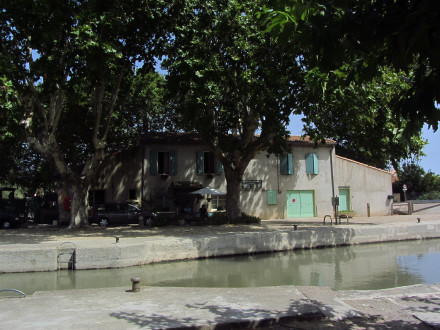
Canal du Midi, écluse (simple) de Villeneuve, commune Villeneuve lez Béziers, Hérault.
Photo prise le dimanche 19 aout 2012. 213 km 552 de la Garonne. Altitude : 6 m. 59e écluse sur le Canal à franchir par les navigants depuis son extrèmité occidentale à Toulouse. 61e écluse à l'origine sur le Canal avant les années 70 (62e si l'on compte l'écluse Notre Dame à Beziers sur l'ancien tracé et 60e avant la construction du pont canal de l'Orb à Béziers). 60e écluse si l'on ne compte pas l'écluse de Garonne, la ou a été posée la première pierre du Canal du Midi, guère usitée (mais qui a conservé ses portes éclusières) et commune aux canaux du Midi, Latéral à la Garonne et de Brienne). 59e écluse si on ôte aussi du décompte l'ancienne écluse Matabiau à Toulouse, qui a perdu sa fonction éclusière lors de la modernisation du Canal dans les années 70 fr.wikipedia.org/wiki/Villeneuve-l%C3%A8s-B%C3%A9ziers Sur ces liens, des photos de David Merlin sur le Canal, particulièrement entre Beziers et l'Etang de Thau : www.david-merlin.com/phototheque/photos_canal-du-midi-v0.htm www.david-merlin.com/phototheque/photos_canal-du-midi-v30... www.david-merlin.com/phototheque/photos_canal-du-midi-v60... www.david-merlin.com/phototheque/photos Voir aussi d'autres liens photographiques ayant comme sujet le Canal du Midi : www.flickr.com/photos/51063756@N03/sets/72157629815095294/ www.flickr.com/groups/r-r-r/discuss/72157629186932232/ www.flickr.com/photos/21252309@N06/sets/72157604226551224... www.flickr.com/photos/26359075@N02/sets/72157619113135217... www.flickr.com/photos/lyli12/sets/72157623917517556/with/... www.flickr.com/photos/34489588@N08/sets/72157614766492790... www.flickr.com/photos/reneve31/sets/72157623974357358/wit... www.flickr.com/photos/27197968@N04/sets/72157622493028095... www.flickr.com/photos/voldepegase/sets/72157627902747759/... Voir aussi de très belles séries de photos du canal essentiellement dans ce secteur (de Brigeham 34) : www.flickr.com/photos/21252309@N06/collections/7215760422... Localisation sur wikimapia : wikimapia.org/#lat=43.3284883&lon=3.2513018&z=14&...
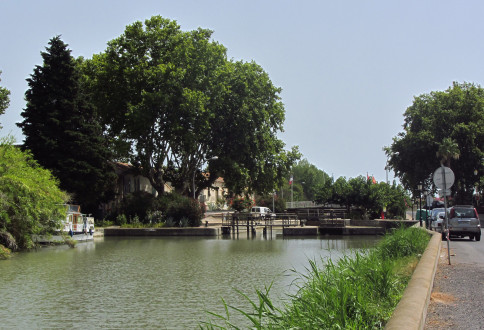
Canal du Midi, écluse (simple) de Villeneuve, commune Villeneuve lez Béziers, Hérault.
Photo prise le dimanche 19 aout 2012. 213 km 552 de la Garonne. 59e écluse sur le Canal à franchir par les navigants depuis son extrèmité occidentale à Toulouse. 61e écluse à l'origine sur le Canal avant les années 70 (62e si l'on compte l'écluse Notre Dame à Beziers sur l'ancien tracé et 60e avant la construction du pont canal de l'Orb à Béziers). 60e écluse si l'on ne compte pas l'écluse de Garonne, la ou a été posée la première pierre du Canal du Midi, guère usitée (mais qui a conservé ses portes éclusières) et commune aux canaux du Midi, Latéral à la Garonne et de Brienne). 59e écluse si on ôte aussi du décompte l'ancienne écluse Matabiau à Toulouse, qui a perdu sa fonction éclusière lors de la modernisation du Canal dans les années 70 Altitude : 6 m. fr.wikipedia.org/wiki/Villeneuve-l%C3%A8s-B%C3%A9ziers Sur ces liens, des photos de David Merlin sur le Canal, particulièrement entre Beziers et l'Etang de Thau : www.david-merlin.com/phototheque/photos_canal-du-midi-v0.htm www.david-merlin.com/phototheque/photos_canal-du-midi-v30... www.david-merlin.com/phototheque/photos_canal-du-midi-v60... www.david-merlin.com/phototheque/photos Voir aussi d'autres liens photographiques ayant comme sujet le Canal du Midi : www.flickr.com/photos/51063756@N03/sets/72157629815095294/ www.flickr.com/groups/r-r-r/discuss/72157629186932232/ www.flickr.com/photos/21252309@N06/sets/72157604226551224... www.flickr.com/photos/26359075@N02/sets/72157619113135217... www.flickr.com/photos/lyli12/sets/72157623917517556/with/... www.flickr.com/photos/34489588@N08/sets/72157614766492790... www.flickr.com/photos/reneve31/sets/72157623974357358/wit... www.flickr.com/photos/27197968@N04/sets/72157622493028095... www.flickr.com/photos/voldepegase/sets/72157627902747759/... Voir aussi de très belles séries de photos du canal essentiellement dans ce secteur (de Brigeham 34) : www.flickr.com/photos/21252309@N06/collections/7215760422... Localisation sur wikimapia : wikimapia.org/#lat=43.3284883&lon=3.2513018&z=14&...
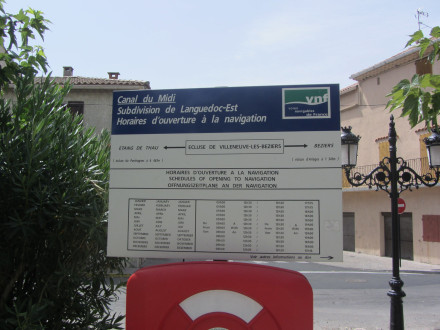
Canal du Midi, écluse (simple) de Villeneuve, commune Villeneuve lez Béziers, Hérault.
Photo prise le dimanche 19 aout 2012. 213 km 552 de la Garonne. Altitude : 6 m. 59e écluse sur le Canal à franchir par les navigants depuis son extrèmité occidentale à Toulouse. 61e écluse à l'origine sur le Canal avant les années 70 (62e si l'on compte l'écluse Notre Dame à Beziers sur l'ancien tracé et 60e avant la construction du pont canal de l'Orb à Béziers). 60e écluse si l'on ne compte pas l'écluse de Garonne, la ou a été posée la première pierre du Canal du Midi, guère usitée (mais qui a conservé ses portes éclusières) et commune aux canaux du Midi, Latéral à la Garonne et de Brienne). 59e écluse si on ôte aussi du décompte l'ancienne écluse Matabiau à Toulouse, qui a perdu sa fonction éclusière lors de la modernisation du Canal dans les années 70. fr.wikipedia.org/wiki/Villeneuve-l%C3%A8s-B%C3%A9ziers Sur ces liens, des photos de David Merlin sur le Canal, particulièrement entre Beziers et l'Etang de Thau : www.david-merlin.com/phototheque/photos_canal-du-midi-v0.htm www.david-merlin.com/phototheque/photos_canal-du-midi-v30... www.david-merlin.com/phototheque/photos_canal-du-midi-v60... www.david-merlin.com/phototheque/photos Voir aussi d'autres liens photographiques ayant comme sujet le Canal du Midi : www.flickr.com/photos/51063756@N03/sets/72157629815095294/ www.flickr.com/groups/r-r-r/discuss/72157629186932232/ www.flickr.com/photos/21252309@N06/sets/72157604226551224... www.flickr.com/photos/26359075@N02/sets/72157619113135217... www.flickr.com/photos/lyli12/sets/72157623917517556/with/... www.flickr.com/photos/34489588@N08/sets/72157614766492790... www.flickr.com/photos/reneve31/sets/72157623974357358/wit... www.flickr.com/photos/27197968@N04/sets/72157622493028095... www.flickr.com/photos/voldepegase/sets/72157627902747759/... Voir aussi de très belles séries de photos du canal essentiellement dans ce secteur (de Brigeham 34) : www.flickr.com/photos/21252309@N06/collections/7215760422... Localisation sur wikimapia : wikimapia.org/#lat=43.3284883&lon=3.2513018&z=14&...
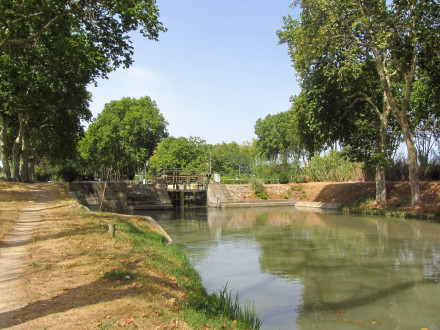
Canal du Midi, écluse (simple) d'Arièges (sens Etang de Thau Toulouse), arrivée du 60e bief (bief de Villeneuve), commune Villeneuve lez Béziers, Hérault.
212 km 508 de la Garonne. Altitude, 9 m. 58e écluse sur le Canal à franchir par les navigants depuis son extrèmité occidentale à Toulouse. 60e écluse à l'origine sur le Canal avant les années 70 (61e si l'on compte l'écluse Notre Dame à Beziers sur l'ancien tracé et 59e avant la construction du pont canal de l'Orb à Béziers). 59e écluse si l'on ne compte pas l'écluse de Garonne, la ou a été posée la première pierre du Canal du Midi, guère usitée (mais qui a conservé ses portes éclusières) et commune aux canaux du Midi, Latéral à la Garonne et de Brienne). 58e écluse si on ôte aussi du décompte l'ancienne écluse Matabiau à Toulouse, qui a perdu sa fonction éclusière lors de la modernisation du Canal dans les années 70. Sur ces liens, des photos de David Merlin sur le Canal, particulièrement entre Beziers et l'Etang de Thau : www.david-merlin.com/phototheque/photos_canal-du-midi-v0.htm www.david-merlin.com/phototheque/photos_canal-du-midi-v30... www.david-merlin.com/phototheque/photos_canal-du-midi-v60... www.david-merlin.com/phototheque/photos Voir aussi d'autres liens photographiques ayant comme sujet le Canal du Midi : www.flickr.com/photos/51063756@N03/sets/72157629815095294/ www.flickr.com/groups/r-r-r/discuss/72157629186932232/ www.flickr.com/photos/21252309@N06/sets/72157604226551224... www.flickr.com/photos/26359075@N02/sets/72157619113135217... www.flickr.com/photos/lyli12/sets/72157623917517556/with/... www.flickr.com/photos/34489588@N08/sets/72157614766492790... www.flickr.com/photos/reneve31/sets/72157623974357358/wit... www.flickr.com/photos/27197968@N04/sets/72157622493028095... www.flickr.com/photos/voldepegase/sets/72157627902747759/... Localisation sur wikimapia : wikimapia.org/#lat=43.3284883&lon=3.2513018&z=14&...
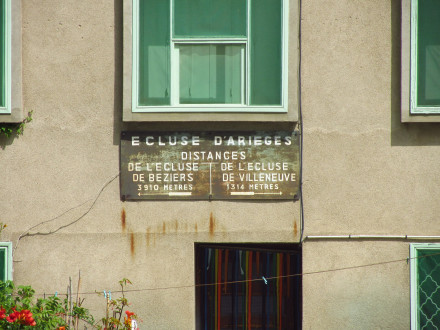
Canal du Midi, écluse (simple) d'Arièges, plaque de la maison éclusière, commune Villeneuve lez Béziers, Hérault.
212 km 508 de la Garonne. Altitude, 9 m. 58e écluse sur le Canal à franchir par les navigants depuis son extrèmité occidentale à Toulouse. 60e écluse à l'origine sur le Canal avant les années 70 (61e si l'on compte l'écluse Notre Dame à Beziers sur l'ancien tracé et 59e avant la construction du pont canal de l'Orb à Béziers). 59e écluse si l'on ne compte pas l'écluse de Garonne, la ou a été posée la première pierre du Canal du Midi, guère usitée (mais qui a conservé ses portes éclusières) et commune aux canaux du Midi, Latéral à la Garonne et de Brienne). 58e écluse si on ôte aussi du décompte l'ancienne écluse Matabiau à Toulouse, qui a perdu sa fonction éclusière lors de la modernisation du Canal dans les années 70. Sur ces liens, des photos de David Merlin sur le Canal, particulièrement entre Beziers et l'Etang de Thau : www.david-merlin.com/phototheque/photos_canal-du-midi-v0.htm www.david-merlin.com/phototheque/photos_canal-du-midi-v30... www.david-merlin.com/phototheque/photos_canal-du-midi-v60... www.david-merlin.com/phototheque/photos Voir aussi d'autres liens photographiques ayant comme sujet le Canal du Midi : www.flickr.com/photos/51063756@N03/sets/72157629815095294/ www.flickr.com/groups/r-r-r/discuss/72157629186932232/ www.flickr.com/photos/21252309@N06/sets/72157604226551224... www.flickr.com/photos/26359075@N02/sets/72157619113135217... www.flickr.com/photos/lyli12/sets/72157623917517556/with/... www.flickr.com/photos/34489588@N08/sets/72157614766492790... www.flickr.com/photos/reneve31/sets/72157623974357358/wit... www.flickr.com/photos/27197968@N04/sets/72157622493028095... www.flickr.com/photos/voldepegase/sets/72157627902747759/... Localisation sur wikimapia : wikimapia.org/#lat=43.3284883&lon=3.2513018&z=14&...
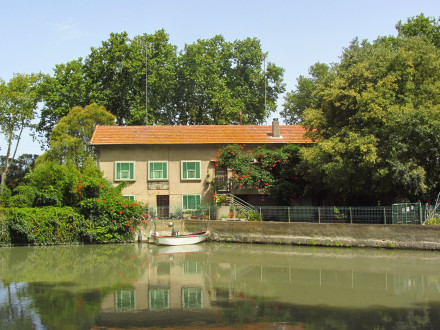
Canal du Midi, écluse (simple) d'Arièges, maison éclusière, commune Villeneuve lez Béziers, Hérault.
212 km 508 de la Garonne. Altitude, 9 m. 58e écluse sur le Canal à franchir par les navigants depuis son extrèmité occidentale à Toulouse. 60e écluse à l'origine sur le Canal avant les années 70 (61e si l'on compte l'écluse Notre Dame à Beziers sur l'ancien tracé et 59e avant la construction du pont canal de l'Orb à Béziers). 59e écluse si l'on ne compte pas l'écluse de Garonne, la ou a été posée la première pierre du Canal du Midi, guère usitée (mais qui a conservé ses portes éclusières) et commune aux canaux du Midi, Latéral à la Garonne et de Brienne). 58e écluse si on ôte aussi du décompte l'ancienne écluse Matabiau à Toulouse, qui a perdu sa fonction éclusière lors de la modernisation du Canal dans les années 70. La plus massacrée des maisons éclusières du Canal, ou comment les proportions normées des fenêtres des années soixantes ont défigurées tant de maisons, L'esthéthique (sic!) des la portes d'entrées de modèles de mauvait goût comme il en etait proposé à l'époque n'arrange rien à l'ensemble. Sur ces liens, des photos de David Merlin sur le Canal, particulièrement entre Beziers et l'Etang de Thau : www.david-merlin.com/phototheque/photos_canal-du-midi-v0.htm www.david-merlin.com/phototheque/photos_canal-du-midi-v30... www.david-merlin.com/phototheque/photos_canal-du-midi-v60... www.david-merlin.com/phototheque/photos Voir aussi d'autres liens photographiques ayant comme sujet le Canal du Midi : www.flickr.com/photos/51063756@N03/sets/72157629815095294/ www.flickr.com/groups/r-r-r/discuss/72157629186932232/ www.flickr.com/photos/21252309@N06/sets/72157604226551224... www.flickr.com/photos/26359075@N02/sets/72157619113135217... www.flickr.com/photos/lyli12/sets/72157623917517556/with/... www.flickr.com/photos/34489588@N08/sets/72157614766492790... www.flickr.com/photos/reneve31/sets/72157623974357358/wit... www.flickr.com/photos/27197968@N04/sets/72157622493028095... www.flickr.com/photos/voldepegase/sets/72157627902747759/... Localisation sur wikimapia : wikimapia.org/#lat=43.3284883&lon=3.2513018&z=14&...
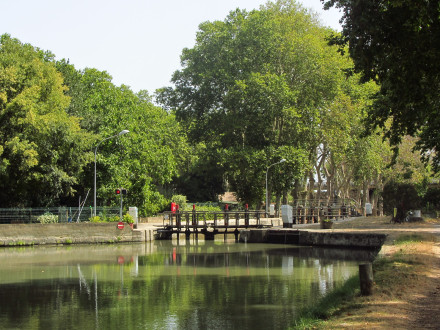
Canal du Midi, écluse (simple) d'Arièges, commune Villeneuve lez Béziers, Hérault.
212 km 508 de la Garonne. Altitude, 9 m. 58e écluse sur le Canal à franchir par les navigants depuis son extrèmité occidentale à Toulouse. 60e écluse à l'origine sur le Canal avant les années 70 (61e si l'on compte l'écluse Notre Dame à Beziers sur l'ancien tracé et 59e avant la construction du pont canal de l'Orb à Béziers). 59e écluse si l'on ne compte pas l'écluse de Garonne, la ou a été posée la première pierre du Canal du Midi, guère usitée (mais qui a conservé ses portes éclusières) et commune aux canaux du Midi, Latéral à la Garonne et de Brienne). 58e écluse si on ôte aussi du décompte l'ancienne écluse Matabiau à Toulouse, qui a perdu sa fonction éclusière lors de la modernisation du Canal dans les années 70. Sur ces liens, des photos de David Merlin sur le Canal, particulièrement entre Beziers et l'Etang de Thau : www.david-merlin.com/phototheque/photos_canal-du-midi-v0.htm www.david-merlin.com/phototheque/photos_canal-du-midi-v30... www.david-merlin.com/phototheque/photos_canal-du-midi-v60... www.david-merlin.com/phototheque/photos Voir aussi d'autres liens photographiques ayant comme sujet le Canal du Midi : www.flickr.com/photos/51063756@N03/sets/72157629815095294/ www.flickr.com/groups/r-r-r/discuss/72157629186932232/ www.flickr.com/photos/21252309@N06/sets/72157604226551224... www.flickr.com/photos/26359075@N02/sets/72157619113135217... www.flickr.com/photos/lyli12/sets/72157623917517556/with/... www.flickr.com/photos/34489588@N08/sets/72157614766492790... www.flickr.com/photos/reneve31/sets/72157623974357358/wit... www.flickr.com/photos/27197968@N04/sets/72157622493028095... www.flickr.com/photos/voldepegase/sets/72157627902747759/... www.flickr.com/photos/lindenlea/8188634440/in/set-7215762... Localisation sur wikimapia : wikimapia.org/#lat=43.3284883&lon=3.2513018&z=14&...
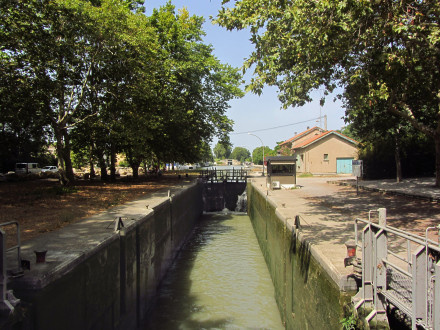
Canal du Midi, écluse (simple) de Béziers, commune de Béziers, Hérault.
Photo prise le dimanche 19 aout 2012. 208 km 247 de la Garonne. Altitude approximative de 12 m. 57e écluse sur le Canal à franchir par les navigants depuis son extrèmité occidentale à Toulouse. 59e écluse à l'origine sur le Canal avant les années 70 (60e si l'on compte l'écluse Notre Dame à Beziers sur l'ancien tracé). 58e écluse si l'on ne compte pas l'écluse de Garonne, la ou a été posée la première pierre du Canal du Midi, guère usitée (mais qui a conservé ses portes éclusières) et commune aux canaux du Midi, Latéral à la Garonne et de Brienne). 57e écluse si on ôte aussi du décompte l'ancienne écluse Matabiau à Toulouse, qui a perdu sa fonction éclusière lors de la modernisation du Canal dans les années 70. Ecluse à bajoyers droits. Contrairement à l'écluse Notre Dame, l'entrée sur le canal est navigable depuis l'Orb de ce côté. Sur ce lien, un album photo interessant sur le Canal à Béziers et aux alentours : www.flickr.com/photos/lindenlea/sets/72157624443261702/wi... Ur ce lien, une photo à la sortie de cette écluse : www.flickr.com/photos/lindenlea/5111007229/in/set-7215762... Sur ces liens, des photos de David Merlin sur le Canal, particulièrement entre Beziers et l'Etang de Thau : www.david-merlin.com/phototheque/photos_canal-du-midi-v0.htm www.david-merlin.com/phototheque/photos_canal-du-midi-v30... www.david-merlin.com/phototheque/photos_canal-du-midi-v60... www.david-merlin.com/phototheque/photos Voir aussi d'autres liens photographiques ayant comme sujet le Canal du Midi : www.flickr.com/photos/51063756@N03/sets/72157629815095294/ www.flickr.com/groups/r-r-r/discuss/72157629186932232/ www.flickr.com/photos/21252309@N06/sets/72157604226551224... www.flickr.com/photos/26359075@N02/sets/72157619113135217... www.flickr.com/photos/lyli12/sets/72157623917517556/with/... www.flickr.com/photos/34489588@N08/sets/72157614766492790... www.flickr.com/photos/reneve31/sets/72157623974357358/wit... www.flickr.com/photos/27197968@N04/sets/72157622493028095... www.flickr.com/photos/voldepegase/sets/72157627902747759/... Pour en savoir plus : www.canaldumidi.com/Biterrois/Beziers/Beziers.php Localisation sur wikimapia : wikimapia.org/#lat=43.334357&lon=3.2134934&z=15&a...
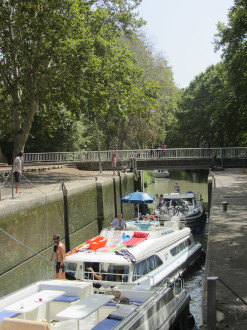
Canal du Midi, écluse (simple) de Béziers, commune de Béziers, Hérault.
Photo prise le dimanche 19 aout 2012. 208 km 247 de la Garonne. Altitude approximative de 12 m. 57e écluse sur le Canal à franchir par les navigants depuis son extrèmité occidentale à Toulouse. 59e écluse à l'origine sur le Canal avant les années 70 (60e si l'on compte l'écluse Notre Dame à Beziers sur l'ancien tracé). 58e écluse si l'on ne compte pas l'écluse de Garonne, la ou a été posée la première pierre du Canal du Midi, guère usitée (mais qui a conservé ses portes éclusières) et commune aux canaux du Midi, Latéral à la Garonne et de Brienne). 57e écluse si on ôte aussi du décompte l'ancienne écluse Matabiau à Toulouse, qui a perdu sa fonction éclusière lors de la modernisation du Canal dans les années 70. Ecluse à bajoyers droits. Contrairement à l'écluse Notre Dame, l'entrée sur le canal est navigable de ce côté. Sur ce lien, un album photo interessant sur le Canal à Béziers et aux alentours : www.flickr.com/photos/lindenlea/sets/72157624443261702/wi... Sur ces liens, des photos de David Merlin sur le Canal, particulièrement entre Beziers et l'Etang de Thau : www.david-merlin.com/phototheque/photos_canal-du-midi-v0.htm www.david-merlin.com/phototheque/photos_canal-du-midi-v30... www.david-merlin.com/phototheque/photos_canal-du-midi-v60... www.david-merlin.com/phototheque/photos Voir aussi d'autres liens photographiques ayant comme sujet le Canal du Midi : www.flickr.com/photos/51063756@N03/sets/72157629815095294/ www.flickr.com/groups/r-r-r/discuss/72157629186932232/ www.flickr.com/photos/21252309@N06/sets/72157604226551224... www.flickr.com/photos/26359075@N02/sets/72157619113135217... www.flickr.com/photos/lyli12/sets/72157623917517556/with/... www.flickr.com/photos/34489588@N08/sets/72157614766492790... www.flickr.com/photos/reneve31/sets/72157623974357358/wit... www.flickr.com/photos/27197968@N04/sets/72157622493028095... www.flickr.com/photos/voldepegase/sets/72157627902747759/... Pour en savoir plus : www.canaldumidi.com/Biterrois/Beziers/Beziers.php Localisation sur wikimapia : wikimapia.org/#lat=43.334357&lon=3.2134934&z=15&a...
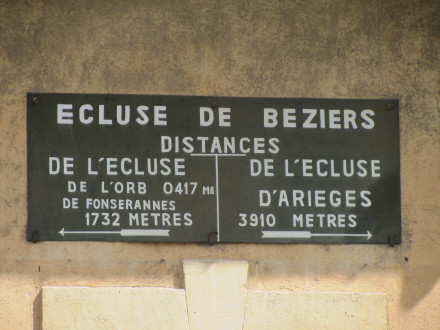
Canal du Midi, écluse (simple) de Béziers, plaque de la maison éclusière, commune de Béziers, Hérault.
Photo prise le dimanche 19 aout 2012. 208 km 247 de la Garonne. Altitude approximative de 12 m. 57e écluse sur le Canal à franchir par les navigants depuis son extrèmité occidentale à Toulouse. 59e écluse à l'origine sur le Canal avant les années 70 (60e si l'on compte l'écluse Notre Dame à Beziers sur l'ancien tracé). 58e écluse si l'on ne compte pas l'écluse de Garonne, la ou a été posée la première pierre du Canal du Midi, guère usitée (mais qui a conservé ses portes éclusières) et commune aux canaux du Midi, Latéral à la Garonne et de Brienne). 57e écluse si on ôte aussi du décompte l'ancienne écluse Matabiau à Toulouse, qui a perdu sa fonction éclusière lors de la modernisation du Canal dans les années 70. Ecluse à bajoyers droits. Contrairement à l'écluse Notre Dame, l'entrée sur le canal est navigable de ce côté. Sur ce lien, un album photo interessant sur le Canal à Béziers et aux alentours : www.flickr.com/photos/lindenlea/sets/72157624443261702/wi... Sur ces liens, des photos de David Merlin sur le Canal, particulièrement entre Beziers et l'Etang de Thau : www.david-merlin.com/phototheque/photos_canal-du-midi-v0.htm www.david-merlin.com/phototheque/photos_canal-du-midi-v30... www.david-merlin.com/phototheque/photos_canal-du-midi-v60... www.david-merlin.com/phototheque/photos Voir aussi d'autres liens photographiques ayant comme sujet le Canal du Midi : www.flickr.com/photos/51063756@N03/sets/72157629815095294/ www.flickr.com/groups/r-r-r/discuss/72157629186932232/ www.flickr.com/photos/21252309@N06/sets/72157604226551224... www.flickr.com/photos/26359075@N02/sets/72157619113135217... www.flickr.com/photos/lyli12/sets/72157623917517556/with/... www.flickr.com/photos/34489588@N08/sets/72157614766492790... www.flickr.com/photos/reneve31/sets/72157623974357358/wit... www.flickr.com/photos/27197968@N04/sets/72157622493028095... www.flickr.com/photos/voldepegase/sets/72157627902747759/... Pour en savoir plus : www.canaldumidi.com/Biterrois/Beziers/Beziers.php Localisation sur wikimapia : wikimapia.org/#lat=43.334357&lon=3.2134934&z=15&a...
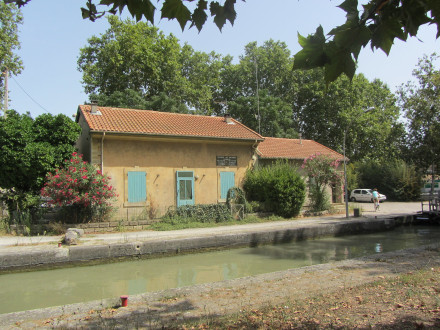
Canal du Midi, écluse (simple) de Béziers, maison éclusière, commune de Béziers, Hérault.
Photo prise le dimanche 19 aout 2012. 208 km 247 de la Garonne. Altitude approximative de 12 m. 57e écluse sur le Canal à franchir par les navigants depuis son extrèmité occidentale à Toulouse. 59e écluse à l'origine sur le Canal avant les années 70 (60e si l'on compte l'écluse Notre Dame à Beziers sur l'ancien tracé). 58e écluse si l'on ne compte pas l'écluse de Garonne, la ou a été posée la première pierre du Canal du Midi, guère usitée (mais qui a conservé ses portes éclusières) et commune aux canaux du Midi, Latéral à la Garonne et de Brienne). 57e écluse si on ôte aussi du décompte l'ancienne écluse Matabiau à Toulouse, qui a perdu sa fonction éclusière lors de la modernisation du Canal dans les années 70. Ecluse à bajoyers droits. C'est à la sortie de cette écluse que le tracé de 1856 rejoint le tracé originel du Canal, en provenance de l'Orb. A noter que wikipédia inclus dans son décompte l'ancienne écluse de Matabiau mais ne prend ni en compte l'écluse de Garonne à Toulouse, ni l'écluse notre Dame situé sur l'ancien tracé à Béziers ,ce qui revient à considérer cette écluse comme la 58e (données 2012). Contrairement à l'écluse Notre Dame, l'entrée sur le canal est navigable de ce côté. Sur ce lien, un album photo interessant sur le Canal à Béziers et aux alentours : www.flickr.com/photos/lindenlea/sets/72157624443261702/wi... Sur ces liens, des photos de David Merlin sur le Canal, particulièrement entre Beziers et l'Etang de Thau : www.david-merlin.com/phototheque/photos_canal-du-midi-v0.htm www.david-merlin.com/phototheque/photos_canal-du-midi-v30... www.david-merlin.com/phototheque/photos_canal-du-midi-v60... www.david-merlin.com/phototheque/photos Voir aussi d'autres liens photographiques ayant comme sujet le Canal du Midi : www.flickr.com/photos/51063756@N03/sets/72157629815095294/ www.flickr.com/groups/r-r-r/discuss/72157629186932232/ www.flickr.com/photos/21252309@N06/sets/72157604226551224... www.flickr.com/photos/26359075@N02/sets/72157619113135217... www.flickr.com/photos/lyli12/sets/72157623917517556/with/... www.flickr.com/photos/34489588@N08/sets/72157614766492790... www.flickr.com/photos/reneve31/sets/72157623974357358/wit... www.flickr.com/photos/27197968@N04/sets/72157622493028095... www.flickr.com/photos/voldepegase/sets/72157627902747759/... Pour en savoir plus : www.canaldumidi.com/Biterrois/Beziers/Beziers.php Localisation sur wikimapia : wikimapia.org/#lat=43.334357&lon=3.2134934&z=15&a...
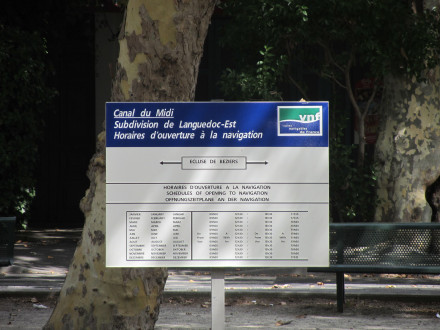
Canal du Midi, écluse (simple) de Béziers, commune de Béziers, Hérault.
Photo prise le dimanche 19 aout 2012. 208 km 247 de la Garonne. Altitude approximative de 12 m. 57e écluse sur le Canal à franchir par les navigants depuis son extrèmité occidentale à Toulouse. 59e écluse à l'origine sur le Canal avant les années 70 (60e si l'on compte l'écluse Notre Dame à Beziers sur l'ancien tracé). 58e écluse si l'on ne compte pas l'écluse de Garonne, la ou a été posée la première pierre du Canal du Midi, guère usitée (mais qui a conservé ses portes éclusières) et commune aux canaux du Midi, Latéral à la Garonne et de Brienne). 57e écluse si on ôte aussi du décompte l'ancienne écluse Matabiau à Toulouse, qui a perdu sa fonction éclusière lors de la modernisation du Canal dans les années 70. Ecluse à bajoyers droits. C'est à la sortie de cette écluse que le tracé de 1858 rejoint le tracé originel du Canal, en provenance de l'Orb. Contrairement à l'écluse Notre Dame, l'entrée sur le canal est navigable de ce côté. Sur ce lien, un album photo interessant sur le Canal à Béziers et aux alentours : www.flickr.com/photos/lindenlea/sets/72157624443261702/wi... Sur ces liens, des photos de David Merlin sur le Canal, particulièrement entre Beziers et l'Etang de Thau : www.david-merlin.com/phototheque/photos_canal-du-midi-v0.htm www.david-merlin.com/phototheque/photos_canal-du-midi-v30... www.david-merlin.com/phototheque/photos_canal-du-midi-v60... www.david-merlin.com/phototheque/photos Voir aussi d'autres liens photographiques ayant comme sujet le Canal du Midi : www.flickr.com/photos/51063756@N03/sets/72157629815095294/ www.flickr.com/groups/r-r-r/discuss/72157629186932232/ www.flickr.com/photos/21252309@N06/sets/72157604226551224... www.flickr.com/photos/26359075@N02/sets/72157619113135217... www.flickr.com/photos/lyli12/sets/72157623917517556/with/... www.flickr.com/photos/34489588@N08/sets/72157614766492790... www.flickr.com/photos/reneve31/sets/72157623974357358/wit... www.flickr.com/photos/27197968@N04/sets/72157622493028095... www.flickr.com/photos/voldepegase/sets/72157627902747759/... Pour en savoir plus : www.canaldumidi.com/Biterrois/Beziers/Beziers.php Localisation sur wikimapia : wikimapia.org/#lat=43.334357&lon=3.2134934&z=15&a...
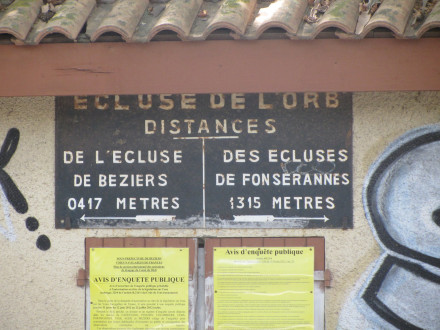
Canal du Midi, écluse (double) de l'Orb, plaque de la maison éclusière, commune de Béziers, Hérault.
Photo prise le dimanche 19 aout 2012. 207 km 830 de la Garonne. Altitude approximative de 17 m. 56e écluse sur le Canal à franchir par les navigants depuis son extrèmité occidentale à Toulouse. 58e écluse à l'origine sur le Canal avant les années 70 (59e si l'on compte l'écluse Notre Dame à Beziers sur l'ancien tracé). 57e écluse si l'on ne compte pas l'écluse de Garonne, la ou a été posée la première pierre du Canal du Midi, guère usitée (mais qui a conservé ses portes éclusières) et commune aux canaux du Midi, Latéral à la Garonne et de Brienne). 56e écluse si on ôte aussi du décompte l'ancienne écluse Matabiau à Toulouse, qui a perdu sa fonction éclusière lors de la modernisation du Canal dans les années 70. Sur ce lien, un album photo interessant sur le Canal à Béziers et aux alentours : www.flickr.com/photos/lindenlea/sets/72157624443261702/wi... Sur ces liens, des photos de David Merlin sur le Canal, particulièrement entre Beziers et l'Etang de Thau : www.david-merlin.com/phototheque/photos_canal-du-midi-v0.htm www.david-merlin.com/phototheque/photos_canal-du-midi-v30... www.david-merlin.com/phototheque/photos_canal-du-midi-v60... www.david-merlin.com/phototheque/photos_canal-du-midi-v90... Pour en savoir plus : www.canaldumidi.com/Biterrois/Beziers/Beziers.php Localisation sur wikimapia : wikimapia.org/#lat=43.334357&lon=3.2134934&z=15&a...
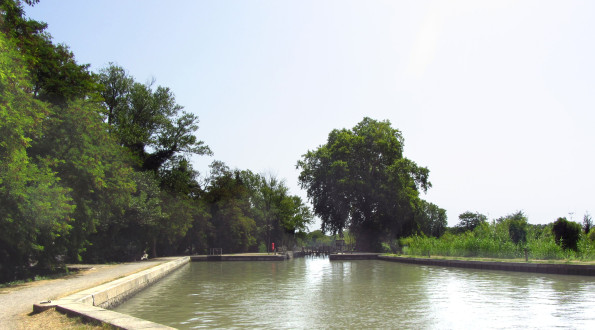
Canal du Midi, écluse (double) de l'Orb, commune de Béziers, Hérault.
Photo prise le dimanche 19 aout 2012. 207 km 830 de la Garonne. Altitude approximative de 17 m. 56e écluse sur le Canal à franchir par les navigants depuis son extrèmité occidentale à Toulouse. 58e écluse à l'origine sur le Canal avant les années 70 (59e si l'on compte l'écluse Notre Dame à Beziers sur l'ancien tracé). 57e écluse si l'on ne compte pas l'écluse de Garonne, la ou a été posée la première pierre du Canal du Midi, guère usitée (mais qui a conservé ses portes éclusières) et commune aux canaux du Midi, Latéral à la Garonne et de Brienne). 56e écluse si on ôte aussi du décompte l'ancienne écluse Matabiau à Toulouse, qui a perdu sa fonction éclusière lors de la modernisation du Canal dans les années 70. Sur ce lien, un album photo interessant sur le Canal à Béziers et aux alentours : www.flickr.com/photos/lindenlea/sets/72157624443261702/wi... Sur ces liens, des photos de David Merlin sur le Canal, particulièrement entre Beziers et l'Etang de Thau : www.david-merlin.com/phototheque/photos_canal-du-midi-v0.htm www.david-merlin.com/phototheque/photos_canal-du-midi-v30... www.david-merlin.com/phototheque/photos_canal-du-midi-v60... www.david-merlin.com/phototheque/photos_canal-du-midi-v90... Pour en savoir plus : www.canaldumidi.com/Biterrois/Beziers/Beziers.php Localisation sur wikimapia : wikimapia.org/#lat=43.334357&lon=3.2134934&z=15&a...
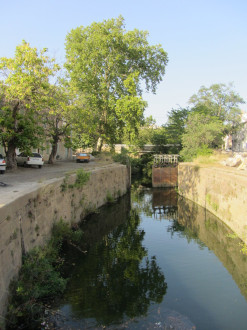
Canal du Midi, écluse abandonnée de Notre Dame et 57e section du canal en amont de celle ci se déversant sur l'Orb (ancien tracé), commune de Béziers, Hérault.
Photo prise le samedi 11 aout 2012, en repérage, deux jours avant mon circuit à vélo. 207 km 985 de la Garonne. Altitude 12 m. 58e écluse sur le Canal. 57e écluse si l'on ne compte pas l'écluse de Garonne, la ou a été posée la première pierre du Canal du Midi, guère usitée (mais qui a conservé ses portes éclusières) et commune aux canux du Midi, Latéral à la Garonne et de Brienne). 56e écluse si on ôte aussi du décompte l'ancienne écluse Matabiau à Toulouse, qui a perdu sa fonction éclusière lors de la modernisation du Canal dans les années 70 Cette portion du Canal, depuis l'utilisation du pont canal de l'Orb dès 1858, n'est plus ouverte à la navigation d'autant plus que la construction d'une route ne permet plus la circulation de l'eau jusqu'à l'écluse suivante. Résultat, une eau vaseuse et nauséabonde. Et comme si cela ne suffisait pas, les bâtiments alentours sont abandonnés eux aussi. www.canalmidi.com/aufildlo/fonceran.html Localisation sur wikimapia : wikimapia.org/#lat=43.334357&lon=3.2134934&z=15&a...
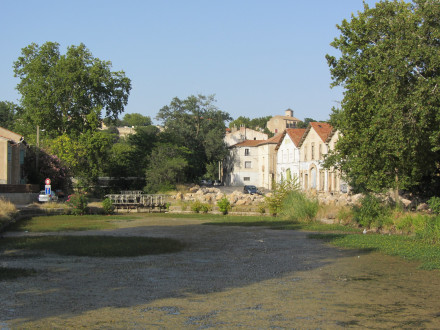
Canal du Midi, écluse abandonnée de Notre Dame et 57e section du canal en amont de celle ci se déversant sur l'Orb (ancien tracé), commune de Béziers, Hérault.
Photo prise le samedi 11 aout 2012, en repérage, deux jours avant mon circuit à vélo. 207 km 985 de la Garonne. Altitude 12 m. Cette portion du Canal, depuis l'utilisation du pont canal de l'Orb dès 1858, n'est plus ouverte à la navigation d'autant plus que la construction d'une route ne permet plus la circulation de l'eau jusqu'à l'écluse suivante. Résultat, une eau vaseuse et nauséabonde. Et comme si cela ne suffisait pas, les bâtiments alentours, de l'ancien port Notre Dame, sont abandonnés eux aussi. www.canalmidi.com/aufildlo/fonceran.html Sur ce lien, une carte postale ancienne du port Notre Dame du temps de sa splendeur : www.canalmidi.com/aufildlo/photanci/cpabeziers4.html
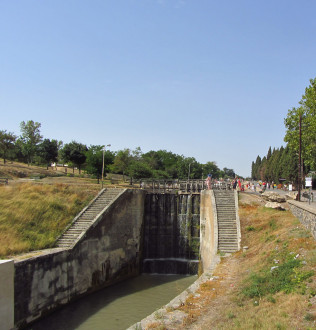
Canal du Midi, écluse (octuple) de Fonserannes (sens Etang de Thau Toulouse), commune de Béziers, Hérault.
Photo prise le dimanche 19 aout 2012. 207 km 25 de la Garonne. Altitude : 31 m. 55e écluse sur le Canal à franchir par les navigants depuis son extrèmité occidentale à Toulouse. 57e écluse à l'origine sur le Canal avant les années 70. 56e écluse si l'on ne compte pas l'écluse de Garonne, la ou a été posée la première pierre du Canal du Midi, guère usitée (mais qui a conservé ses portes éclusières) et commune aux canux du Midi, Latéral à la Garonne et de Brienne). 55e écluse si on ôte aussi du décompte l'ancienne écluse Matabiau à Toulouse, qui a perdu sa fonction éclusière lors de la modernisation du Canal dans les années 70. Ici, le dernier bassin permettant l'accès au bief qui menait le Canal à l'Orb. fr.wikipedia.org/wiki/%C3%89cluses_de_Fonserannes www.decouverte34.com/9-ecluses-de-fonserannes,1127.html www.voirlavideo.com/fonseranes.php Autrefois la halte de midi du 4e jour de la barque de la poste venant de Toulouse. www.canalmidi.com/aufildlo/barcpost.html www.canaldumidi.com/Biterrois/Fonserannes/Fonserannes.php Sur ce lien, un site interessant sur les cartes postales anciennes du Canal : www.belcaire-pyrenees.com/article-histoire-d-hier-et-d-au... Localisation sur wikimapia : wikimapia.org/#lat=43.334357&lon=3.2134934&z=15&a...
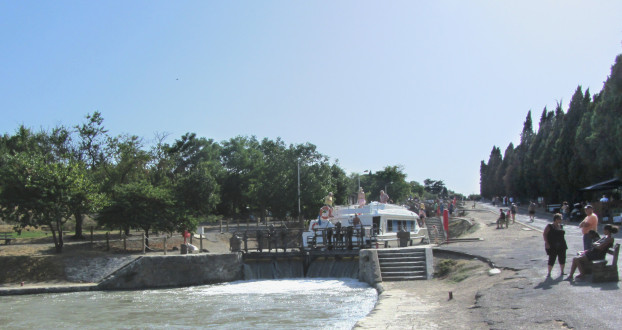
Canal du Midi, écluse (octuple) de Fonserannes (sens Etang de Thau Toulouse), commune de Béziers, Hérault.
Photo prise le samedi 11 aout 2012, en repérage, deux jours avant mon circuit à vélo. 207 km 25 de la Garonne. Altitude : 31 m. fr.wikipedia.org/wiki/%C3%89cluses_de_Fonserannes www.decouverte34.com/9-ecluses-de-fonserannes,1127.html www.voirlavideo.com/fonseranes.php 55e écluse sur le Canal à franchir par les navigants depuis son extrèmité occidentale à Toulouse. 57e écluse à l'origine sur le Canal avant les années 70. 56e écluse si l'on ne compte pas l'écluse de Garonne, la ou a été posée la première pierre du Canal du Midi, guère usitée (mais qui a conservé ses portes éclusières) et commune aux canux du Midi, Latéral à la Garonne et de Brienne). 55e écluse si on ôte aussi du décompte l'ancienne écluse Matabiau à Toulouse, qui a perdu sa fonction éclusière lors de la modernisation du Canal dans les années 70. Autrefois la halte de midi du 4e jour de la barque de la poste venant de Toulouse. www.canalmidi.com/aufildlo/barcpost.html www.canaldumidi.com/Biterrois/Fonserannes/Fonserannes.php Sur ce lien, un site interessant sur les cartes postales anciennes du Canal : www.belcaire-pyrenees.com/article-histoire-d-hier-et-d-au... Localisation sur wikimapia : wikimapia.org/#lat=43.334357&lon=3.2134934&z=15&a...
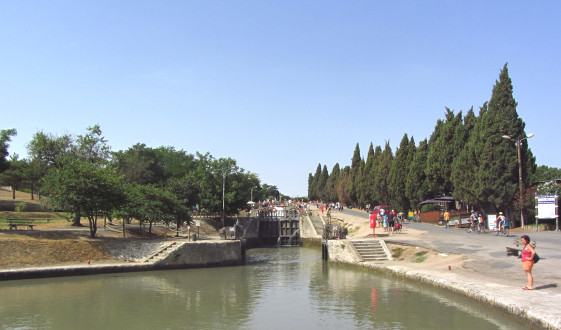
Canal du Midi, écluse (octuple) de Fonserannes (sens Etang de Thau Toulouse), commune de Béziers, Hérault.
Photo prise le dimanche 19 aout 2012. 207 km 25 de la Garonne. Altitude : 31 m. fr.wikipedia.org/wiki/%C3%89cluses_de_Fonserannes www.decouverte34.com/9-ecluses-de-fonserannes,1127.html www.voirlavideo.com/fonseranes.php 55e écluse sur le Canal à franchir par les navigants depuis son extrèmité occidentale à Toulouse. 57e écluse à l'origine sur le Canal avant les années 70. 56e écluse si l'on ne compte pas l'écluse de Garonne, la ou a été posée la première pierre du Canal du Midi, guère usitée (mais qui a conservé ses portes éclusières) et commune aux canux du Midi, Latéral à la Garonne et de Brienne). 55e écluse si on ôte aussi du décompte l'ancienne écluse Matabiau à Toulouse, qui a perdu sa fonction éclusière lors de la modernisation du Canal dans les années 70. Autrefois la halte de midi du 4e jour de la barque de la poste venant de Toulouse. www.canalmidi.com/aufildlo/barcpost.html www.canaldumidi.com/Biterrois/Fonserannes/Fonserannes.php Ici, une photo de David Merlin : www.david-merlin.com/phototheque/photos-0,IMG_9765,27.htm ... sur son album du Canal : www.david-merlin.com/phototheque/photos_canal-du-midi-v0.htm Sur ce lien, un site interessant sur les cartes postales anciennes du Canal : www.belcaire-pyrenees.com/article-histoire-d-hier-et-d-au... Sur ces autre liens, des cartes postales anciennes sur cet escalier d'eau exceptionnel : www.canalmidi.com/aufildlo/photanci/cpabeziers3.html www.canalmidi.com/aufildlo/photanci/cpabeziers2.html www.canalmidi.com/aufildlo/photanci/cpabeziers1.html Il est à noter que les gardes fou des portes éclusières sont plus élégantes aujourd'hui qu'elles ne l'étaient à l'époque. Localisation sur wikimapia : wikimapia.org/#lat=43.334357&lon=3.2134934&z=15&a...
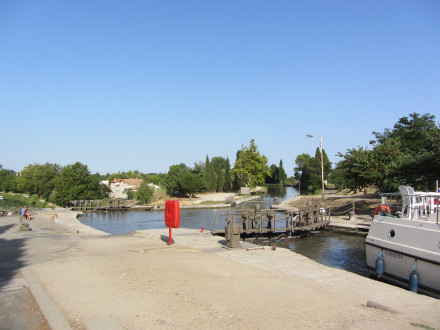
Canal du Midi, écluse (octuple) de Fonserannes, commune de Béziers, Hérault.
Photo prise le samedi 11 aout 2012, en repérage, deux jours avant mon circuit à vélo. 207 km 25 de la Garonne. Altitude : 31 m. 55e écluse sur le Canal à franchir par les navigants depuis son extrèmité occidentale à Toulouse. 57e écluse à l'origine sur le Canal avant les années 70. 56e écluse si l'on ne compte pas l'écluse de Garonne, la ou a été posée la première pierre du Canal du Midi, guère usitée (mais qui a conservé ses portes éclusières) et commune aux canux du Midi, Latéral à la Garonne et de Brienne). 55e écluse si on ôte aussi du décompte l'ancienne écluse Matabiau à Toulouse, qui a perdu sa fonction éclusière lors de la modernisation du Canal dans les années 70. A gauche, le dernier bassin de l'écluse qui mène au 57e bief (ancien bief de Fonsérannes) qui lui même prend la direction de l'écluse Notre Dame et l'Orb (section abandonnée et qui n'est plus navigable). A droite, le 58e bief (nouveau bief de Fonsérannes) qui mène au pont canal de l'Orb et à l'écluse éponyme. fr.wikipedia.org/wiki/%C3%89cluses_de_Fonserannes www.decouverte34.com/9-ecluses-de-fonserannes,1127.html www.voirlavideo.com/fonseranes.php Autrefois la halte de midi du 4e jour de la barque de la poste venant de Toulouse. www.canalmidi.com/aufildlo/barcpost.html www.canaldumidi.com/Biterrois/Fonserannes/Fonserannes.php Sur ce lien, un site interessant sur les cartes postales anciennes du Canal : www.belcaire-pyrenees.com/article-histoire-d-hier-et-d-au... Localisation sur wikimapia : wikimapia.org/#lat=43.334357&lon=3.2134934&z=15&a...
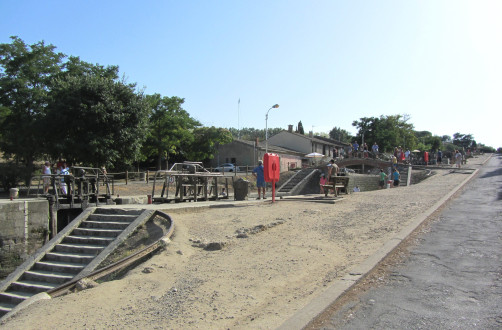
Canal du Midi, écluse (octuple) de Fonserannes (sens Etang de Thau Toulouse), commune de Béziers, Hérault.
Photo prise le samedi 11 aout 2012, en repérage, deux jours avant mon circuit à vélo. 207 km 25 de la Garonne. Altitude : 31 m. fr.wikipedia.org/wiki/%C3%89cluses_de_Fonserannes www.decouverte34.com/9-ecluses-de-fonserannes,1127.html www.voirlavideo.com/fonseranes.php 55e écluse sur le Canal à franchir par les navigants depuis son extrèmité occidentale à Toulouse. 57e écluse à l'origine sur le Canal avant les années 70. 56e écluse si l'on ne compte pas l'écluse de Garonne, la ou a été posée la première pierre du Canal du Midi, guère usitée (mais qui a conservé ses portes éclusières) et commune aux canux du Midi, Latéral à la Garonne et de Brienne). 55e écluse si on ôte aussi du décompte l'ancienne écluse Matabiau à Toulouse, qui a perdu sa fonction éclusière lors de la modernisation du Canal dans les années 70. Autrefois la halte de midi du 4e jour de la barque de la poste venant de Toulouse. www.canalmidi.com/aufildlo/barcpost.html www.canaldumidi.com/Biterrois/Fonserannes/Fonserannes.php Sur ce lien, un site interessant sur les cartes postales anciennes du Canal : www.belcaire-pyrenees.com/article-histoire-d-hier-et-d-au... Localisation sur wikimapia : wikimapia.org/#lat=43.334357&lon=3.2134934&z=15&a...
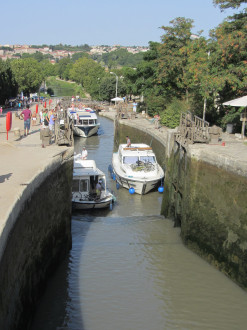
Canal du Midi, écluse (octuple) de Fonserannes, commune de Béziers, Hérault.
Photo prise le samedi 11 aout 2012, en repérage, deux jours avant mon circuit à vélo. 207 km 25 de la Garonne. Altitude : 31 m. fr.wikipedia.org/wiki/%C3%89cluses_de_Fonserannes www.decouverte34.com/9-ecluses-de-fonserannes,1127.html www.voirlavideo.com/fonseranes.php 55e écluse sur le Canal à franchir par les navigants depuis son extrèmité occidentale à Toulouse. 57e écluse à l'origine sur le Canal avant les années 70. 56e écluse si l'on ne compte pas l'écluse de Garonne, la ou a été posée la première pierre du Canal du Midi, guère usitée (mais qui a conservé ses portes éclusières) et commune aux canux du Midi, Latéral à la Garonne et de Brienne). 55e écluse si on ôte aussi du décompte l'ancienne écluse Matabiau à Toulouse, qui a perdu sa fonction éclusière lors de la modernisation du Canal dans les années 70. Autrefois la halte de midi du 4e jour de la barque de la poste venant de Toulouse. www.canalmidi.com/aufildlo/barcpost.html www.canaldumidi.com/Biterrois/Fonserannes/Fonserannes.php Sur ces liens, des photos de David Merlin au même endroit : www.david-merlin.com/phototheque/photos-60,IMG_2416,27.htm www.david-merlin.com/phototheque/photos-60,IMG_2417,27.htm Sur ce lien, un site interessant sur les cartes postales anciennes du Canal : www.belcaire-pyrenees.com/article-histoire-d-hier-et-d-au... Localisation sur wikimapia : wikimapia.org/#lat=43.334357&lon=3.2134934&z=15&a...
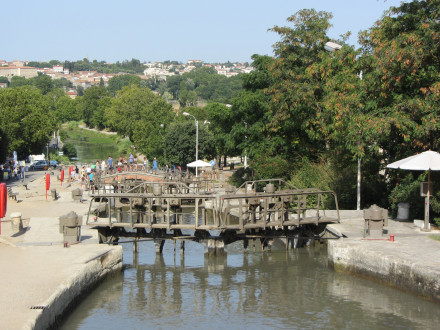
Canal du Midi, écluse (octuple) de Fonserannes, commune de Béziers, Hérault.
Photo prise le samedi 11 aout 2012, en repérage, deux jours avant mon circuit à vélo. 207 km 25 de la Garonne. Altitude : 31 m. fr.wikipedia.org/wiki/%C3%89cluses_de_Fonserannes www.decouverte34.com/9-ecluses-de-fonserannes,1127.html www.voirlavideo.com/fonseranes.php 55e écluse sur le Canal à franchir par les navigants depuis son extrèmité occidentale à Toulouse. 57e écluse à l'origine sur le Canal avant les années 70. 56e écluse si l'on ne compte pas l'écluse de Garonne, la ou a été posée la première pierre du Canal du Midi, guère usitée (mais qui a conservé ses portes éclusières) et commune aux canux du Midi, Latéral à la Garonne et de Brienne). 55e écluse si on ôte aussi du décompte l'ancienne écluse Matabiau à Toulouse, qui a perdu sa fonction éclusière lors de la modernisation du Canal dans les années 70. Autrefois la halte de midi du 4e jour de la barque de la poste venant de Toulouse. www.canalmidi.com/aufildlo/barcpost.html www.canaldumidi.com/Biterrois/Fonserannes/Fonserannes.php Sur ces liens, des photos de David Merlin au même endroit : www.david-merlin.com/phototheque/photos-60,IMG_2416,27.htm www.david-merlin.com/phototheque/photos-60,IMG_2417,27.htm Sur ce lien, un site interessant sur les cartes postales anciennes du Canal : www.belcaire-pyrenees.com/article-histoire-d-hier-et-d-au... Localisation sur wikimapia : wikimapia.org/#lat=43.334357&lon=3.2134934&z=15&a...
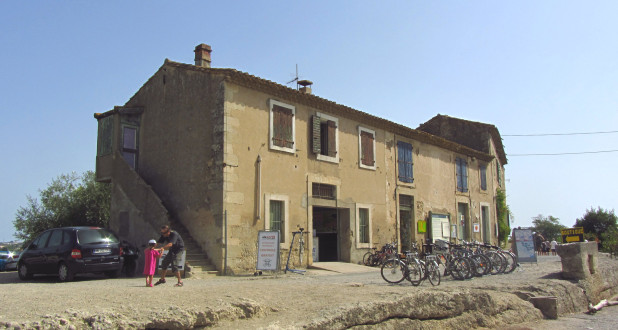
Canal du Midi, écluse (octuple) de Fonserannes, maison éclusière, commune de Béziers, Hérault.
Photo prise le dimanche 19 aout 2012. 207 km 25 de la Garonne. Altitude : 31 m. fr.wikipedia.org/wiki/%C3%89cluses_de_Fonserannes www.decouverte34.com/9-ecluses-de-fonserannes,1127.html www.voirlavideo.com/fonseranes.php 55e écluse sur le Canal à franchir par les navigants depuis son extrèmité occidentale à Toulouse. 57e écluse à l'origine sur le Canal avant les années 70. 56e écluse si l'on ne compte pas l'écluse de Garonne, la ou a été posée la première pierre du Canal du Midi, guère usitée (mais qui a conservé ses portes éclusières) et commune aux canux du Midi, Latéral à la Garonne et de Brienne). 55e écluse si on ôte aussi du décompte l'ancienne écluse Matabiau à Toulouse, qui a perdu sa fonction éclusière lors de la modernisation du Canal dans les années 70. Autrefois la halte de midi du 4e jour de la barque de la poste venant de Toulouse. www.canalmidi.com/aufildlo/barcpost.html www.canaldumidi.com/Biterrois/Fonserannes/Fonserannes.php Localisation sur wikimapia : wikimapia.org/#lat=43.334357&lon=3.2134934&z=15&a...
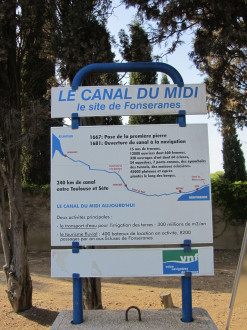
Canal du Midi, écluse (octuple) de Fonserannes, commune de Béziers, Hérault.
Photo prise le samedi 11 aout 2012, en repérage, deux jours avant mon circuit à vélo. 207 km 25 de la Garonne. Altitude : 31 m. fr.wikipedia.org/wiki/%C3%89cluses_de_Fonserannes www.decouverte34.com/9-ecluses-de-fonserannes,1127.html www.voirlavideo.com/fonseranes.php 55e écluse sur le Canal à franchir par les navigants depuis son extrèmité occidentale à Toulouse. 57e écluse à l'origine sur le Canal avant les années 70. 56e écluse si l'on ne compte pas l'écluse de Garonne, la ou a été posée la première pierre du Canal du Midi, guère usitée (mais qui a conservé ses portes éclusières) et commune aux canux du Midi, Latéral à la Garonne et de Brienne). 55e écluse si on ôte aussi du décompte l'ancienne écluse Matabiau à Toulouse, qui a perdu sa fonction éclusière lors de la modernisation du Canal dans les années 70. Autrefois la halte de midi du 4e jour de la barque de la poste venant de Toulouse. www.canalmidi.com/aufildlo/barcpost.html www.canaldumidi.com/Biterrois/Fonserannes/Fonserannes.php Localisation sur wikimapia : wikimapia.org/#lat=43.334357&lon=3.2134934&z=15&a...
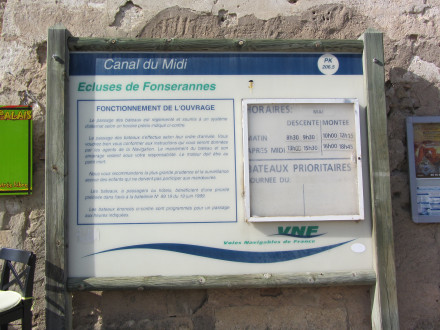
Canal du Midi, écluse (octuple) de Fonserannes, commune de Béziers, Hérault.
Photo prise le samedi 11 aout 2012, en repérage, deux jours avant mon circuit à vélo. 207 km 25 de la Garonne. Altitude : 31 m. fr.wikipedia.org/wiki/%C3%89cluses_de_Fonserannes www.decouverte34.com/9-ecluses-de-fonserannes,1127.html www.voirlavideo.com/fonseranes.php 55e écluse sur le Canal à franchir par les navigants depuis son extrèmité occidentale à Toulouse. 57e écluse à l'origine sur le Canal avant les années 70. 56e écluse si l'on ne compte pas l'écluse de Garonne, la ou a été posée la première pierre du Canal du Midi, guère usitée (mais qui a conservé ses portes éclusières) et commune aux canux du Midi, Latéral à la Garonne et de Brienne). 55e écluse si on ôte aussi du décompte l'ancienne écluse Matabiau à Toulouse, qui a perdu sa fonction éclusière lors de la modernisation du Canal dans les années 70. Autrefois la halte de midi du 4e jour de la barque de la poste venant de Toulouse. www.canalmidi.com/aufildlo/barcpost.html www.canaldumidi.com/Biterrois/Fonserannes/Fonserannes.php Localisation sur wikimapia : wikimapia.org/#lat=43.334357&lon=3.2134934&z=15&a...
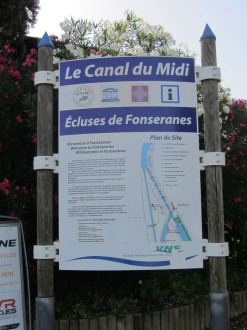
Canal du Midi, écluse (octuple) de Fonserannes, commune de Béziers, Hérault.
Photo prise le samedi 11 aout 2012, en repérage, deux jours avant mon circuit à vélo. 207 km 25 de la Garonne. Altitude : 32 m. fr.wikipedia.org/wiki/%C3%89cluses_de_Fonserannes www.decouverte34.com/9-ecluses-de-fonserannes,1127.html www.voirlavideo.com/fonseranes.php 56e écluse si l'on ne compte pas l'écluse de Garonne, la ou a été posée la première pierre du Canal du Midi, guère usitée (mais qui a conservé ses portes éclusières) et commune aux canux du Midi, Latéral à la Garonne et de Brienne). Photo prise le vendredi 17 aout 2012. 152 km 646 de la Garonne. Altitude : 32 m. 55e écluse sur le Canal à franchir par les navigants depuis son extrèmité occidentale à Toulouse. 57e écluse à l'origine sur le Canal avant les années 70. 56e écluse si l'on ne compte pas l'écluse de Garonne, la ou a été posée la première pierre du Canal du Midi, guère usitée (mais qui a conservé ses portes éclusières) et commune aux canux du Midi, Latéral à la Garonne et de Brienne). 55e écluse si on ôte aussi du décompte l'ancienne écluse Matabiau à Toulouse, qui a perdu sa fonction éclusière lors de la modernisation du Canal dans les années 70. Autrefois la halte de midi du 4e jour de la barque de la poste venant de Toulouse. www.canalmidi.com/aufildlo/barcpost.html www.canaldumidi.com/Biterrois/Fonserannes/Fonserannes.php
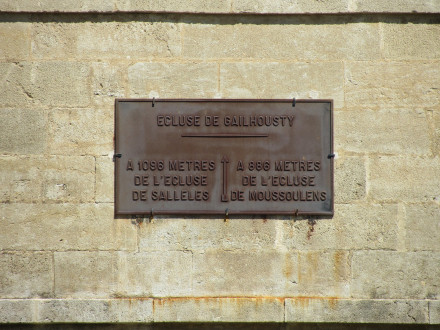
Canal de Jonction, écluse de Gailhousty, plaque de la maison éclusière, commune de Sallèles d'Aude.
Photo prise le vendredi 17 aout 2012. 4 km 555 du point de rencontre avec le Canal du Midi. 173 km 055 depuis la Garonne. Localisation sur wikimapia : wikimapia.org/#lat=43.2638015&lon=2.9524822&z=14&...
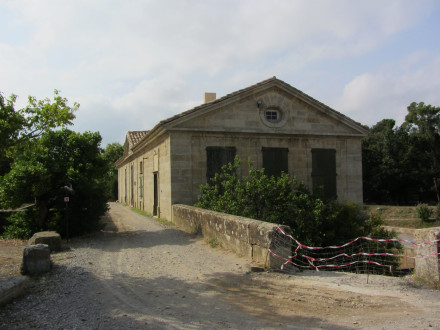
Canal de Jonction, écluse de Gailhousty, maison éclusière, commune de Sallèles d'Aude.
Photo prise le samedi 18 aout 2012. Au carrefour du Minervois et du pays Narbonnais, et pas très loin du Biterrois non plus, voici LA plus belle maison éclusière du Canal de Jonction et une des plus belles des Canaux des Daux Mers (Canal Latéral à la Garonne, Canal de Brienne, Canal du Midi, Canal de Jonction, Canal de la Robine). Pour la part d'utopie qui reste dans mon esprit, ce bâtiment représente pour moi une architecture idéale et éternelle, bien réeele celle ci, contraiement à celles représentées dans un de mes tableaux préférés : "La Cité Idéale" (fr.wikipedia.org/wiki/Cit%C3%A9_id%C3%A9ale) Pour en savoir plus : www.canalmidi.com/aufildlo/narbonne.html canaldumidi.over-blog.com/article-27759091.html www.sallelesdaude.fr/Le-Gailhousty-un-monument-classe.html www.petit-patrimoine.com/fiche-petit-patrimoine.php?id_pp... canaldumidi.over-blog.com/photo-1284594-Gailhousty--3-_JP... Localisation sur wikimapia : wikimapia.org/#lat=43.2638015&lon=2.9524822&z=14&...
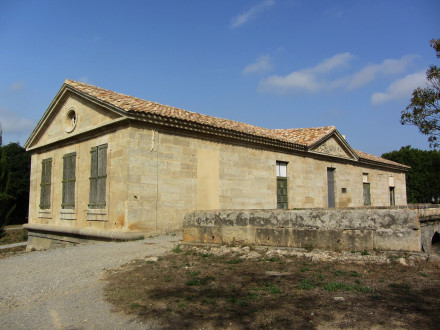
Canal de Jonction, écluse de Gailhousty, maison éclusière, commune de Sallèles d'Aude.
Photo prise le samedi 18 aout 2012. Au carrefour du Minervois et du pays Narbonnais, et pas très loin du Biterrois non plus, voici LA plus belle maison éclusière du Canal de Jonction et une des plus belles des Canaux des Daux Mers (Canal Latéral à la Garonne, Canal de Brienne, Canal du Midi, Canal de Jonction, Canal de la Robine). Pour la part d'utopie qui reste dans mon esprit, ce bâtiment représente pour moi une architecture idéale et éternelle, bien réeele celle ci, contraiement à celles représentées dans un de mes tableaux préférés : "La Cité Idéale" (fr.wikipedia.org/wiki/Cit%C3%A9_id%C3%A9ale) Pour en savoir plus : www.canalmidi.com/aufildlo/narbonne.html canaldumidi.over-blog.com/article-27759091.html www.sallelesdaude.fr/Le-Gailhousty-un-monument-classe.html www.petit-patrimoine.com/fiche-petit-patrimoine.php?id_pp... canaldumidi.over-blog.com/photo-1284594-Gailhousty--3-_JP... Localisation sur wikimapia : wikimapia.org/#lat=43.2638015&lon=2.9524822&z=14&...
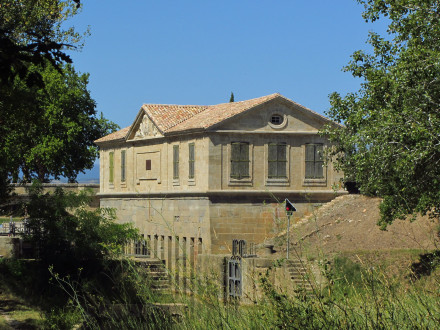
Canal de Jonction, écluse de Gailhousty, maison éclusière, commune de Sallèles d'Aude.
Photo prise le vendredi 17 aout 2012. Au carrefour du Minervois et du pays Narbonnais, et pas très loin du Biterrois non plus, voici LA plus belle maison éclusière du Canal de Jonction et une des plus belles des Canaux des Daux Mers (Canal Latéral à la Garonne, Canal de Brienne, Canal du Midi, Canal de Jonction, Canal de la Robine). Pour la part d'utopie qui reste dans mon esprit, ce bâtiment représente pour moi une architecture idéale et éternelle, bien réeele celle ci, contraiement à celles représentées dans un de mes tableaux préférés : "La Cité Idéale" (fr.wikipedia.org/wiki/Cit%C3%A9_id%C3%A9ale) Pour en savoir plus : www.canalmidi.com/aufildlo/narbonne.html canaldumidi.over-blog.com/article-27759091.html www.sallelesdaude.fr/Le-Gailhousty-un-monument-classe.html www.petit-patrimoine.com/fiche-petit-patrimoine.php?id_pp... canaldumidi.over-blog.com/photo-1284594-Gailhousty--3-_JP... Localisation sur wikimapia : wikimapia.org/#lat=43.2638015&lon=2.9524822&z=14&...
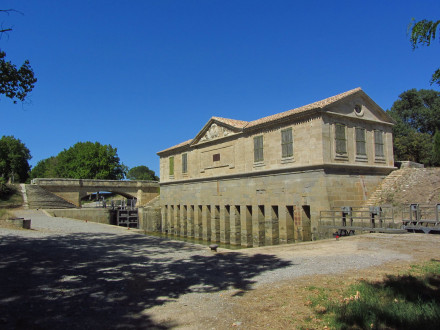
Canal de Jonction, écluse de Gailhousty, maison éclusière, commune de Sallèles d'Aude.
Photo prise le vendredi 17 aout 2012. Au carrefour du Minervois et du pays Narbonnais, et pas très loin du Biterrois non plus, voici LA plus belle maison éclusière du Canal de Jonction et une des plus belles des Canaux des Daux Mers (Canal Latéral à la Garonne, Canal de Brienne, Canal du Midi, Canal de Jonction, Canal de la Robine). Pour la part d'utopie qui reste dans mon esprit, ce bâtiment représente pour moi une architecture idéale et éternelle, bien réeele celle ci, contraiement à celles représentées dans un de mes tableaux préférés : "La Cité Idéale" (fr.wikipedia.org/wiki/Cit%C3%A9_id%C3%A9ale) Pour en savoir plus : www.canalmidi.com/aufildlo/narbonne.html canaldumidi.over-blog.com/article-27759091.html www.sallelesdaude.fr/Le-Gailhousty-un-monument-classe.html www.petit-patrimoine.com/fiche-petit-patrimoine.php?id_pp... canaldumidi.over-blog.com/photo-1284594-Gailhousty--3-_JP... Localisation sur wikimapia : wikimapia.org/#lat=43.2638015&lon=2.9524822&z=14&...
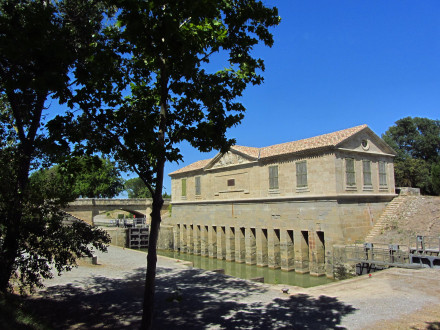
Canal de Jonction, écluse de Gailhousty, maison éclusière, commune de Sallèles d'Aude.
Photo prise le vendredi 17 aout 2012. Au carrefour du Minervois et du pays Narbonnais, et pas très loin du Biterrois non plus, voici LA plus belle maison éclusière du Canal de Jonction et une des plus belles des Canaux des Daux Mers (Canal Latéral à la Garonne, Canal de Brienne, Canal du Midi, Canal de Jonction, Canal de la Robine). Pour la part d'utopie qui reste dans mon esprit, ce bâtiment représente pour moi une architecture idéale et éternelle, bien réeele celle ci, contraiement à celles représentées dans un de mes tableaux préférés : "La Cité Idéale" (fr.wikipedia.org/wiki/Cit%C3%A9_id%C3%A9ale) Pour en savoir plus : www.canalmidi.com/aufildlo/narbonne.html canaldumidi.over-blog.com/article-27759091.html www.sallelesdaude.fr/Le-Gailhousty-un-monument-classe.html www.petit-patrimoine.com/fiche-petit-patrimoine.php?id_pp... canaldumidi.over-blog.com/photo-1284594-Gailhousty--3-_JP... Localisation sur wikimapia : wikimapia.org/#lat=43.2638015&lon=2.9524822&z=14&...
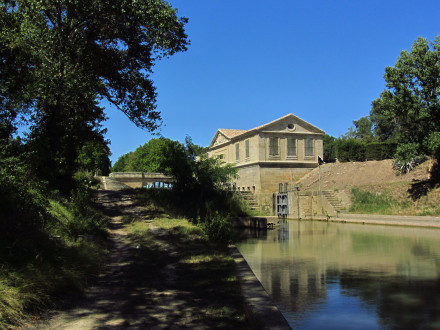
Canal de Jonction, écluse de Gailhousty, maison éclusière (sens Narbonne Canal du Midi), commune de Sallèles d'Aude.
Photo prise le vendredi 17 aout 2012. Au carrefour du Minervois et du pays Narbonnais, et pas très loin du Biterrois non plus, voici LA plus belle maison éclusière du Canal de Jonction et une des plus belles des Canaux des Daux Mers (Canal Latéral à la Garonne, Canal de Brienne, Canal du Midi, Canal de Jonction, Canal de la Robine). Pour la part d'utopie qui reste dans mon esprit, ce bâtiment représente pour moi une architecture idéale et éternelle, bien réelle celle ci, contrairement à celles représentées dans un de mes tableaux préférés : "La Cité Idéale" (fr.wikipedia.org/wiki/Cit%C3%A9_id%C3%A9ale) Pour en savoir plus : www.canalmidi.com/aufildlo/narbonne.html canaldumidi.over-blog.com/article-27759091.html www.sallelesdaude.fr/Le-Gailhousty-un-monument-classe.html www.petit-patrimoine.com/fiche-petit-patrimoine.php?id_pp... canaldumidi.over-blog.com/photo-1284594-Gailhousty--3-_JP... Localisation sur wikimapia : wikimapia.org/#lat=43.2638015&lon=2.9524822&z=14&...
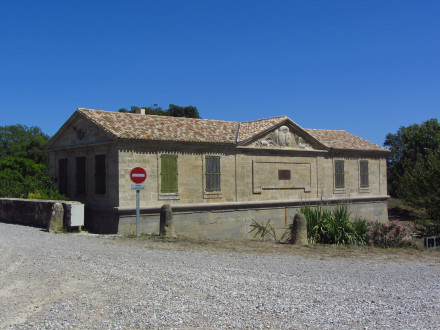
Canal de Jonction, écluse de Gailhousty, maison éclusière, commune de Sallèles d'Aude.
Photo prise le vendredi 17 aout 2012. Au carrefour du Minervois et du pays Narbonnais, et pas très loin du Biterrois non plus, voici LA plus belle maison éclusière du Canal de Jonction et une des plus belles des Canaux des Daux Mers (Canal Latéral à la Garonne, Canal de Brienne, Canal du Midi, Canal de Jonction, Canal de la Robine). Pour la part d'utopie qui reste dans mon esprit, ce bâtiment représente pour moi une architecture idéale et éternelle, bien réeele celle ci, contraiement à celles représentées dans un de mes tableaux préférés : "La Cité Idéale" (fr.wikipedia.org/wiki/Cit%C3%A9_id%C3%A9ale) Pour en savoir plus : www.canalmidi.com/aufildlo/narbonne.html canaldumidi.over-blog.com/article-27759091.html www.sallelesdaude.fr/Le-Gailhousty-un-monument-classe.html www.petit-patrimoine.com/fiche-petit-patrimoine.php?id_pp... canaldumidi.over-blog.com/photo-1284594-Gailhousty--3-_JP... Localisation sur wikimapia : wikimapia.org/#lat=43.2638015&lon=2.9524822&z=14&...
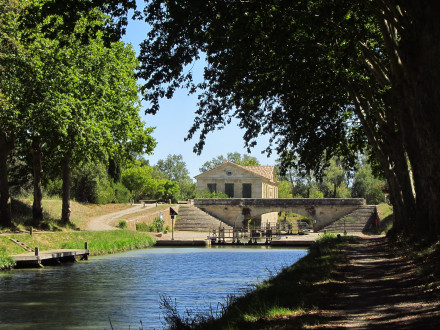
Canal de Jonction, écluse de Gailhousty, maison éclusière, commune de Sallèles d'Aude.
Photo prise le vendredi 17 aout 2012. Au carrefour du Minervois et du pays Narbonnais, et pas très loin du Biterrois non plus, voici LA plus belle maison éclusière du Canal de Jonction et une des plus belles des Canaux des Daux Mers (Canal Latéral à la Garonne, Canal de Brienne, Canal du Midi, Canal de Jonction, Canal de la Robine). Pour la part d'utopie qui reste dans mon esprit, ce bâtiment représente pour moi une architecture idéale et éternelle, bien réeele celle ci, contraiement à celles représentées dans un de mes tableaux préférés : "La Cité Idéale" (fr.wikipedia.org/wiki/Cit%C3%A9_id%C3%A9ale) Pour en savoir plus : www.canalmidi.com/aufildlo/narbonne.html canaldumidi.over-blog.com/article-27759091.html www.sallelesdaude.fr/Le-Gailhousty-un-monument-classe.html www.petit-patrimoine.com/fiche-petit-patrimoine.php?id_pp... canaldumidi.over-blog.com/photo-1284594-Gailhousty--3-_JP... Localisation sur wikimapia : wikimapia.org/#lat=43.2638015&lon=2.9524822&z=14&...
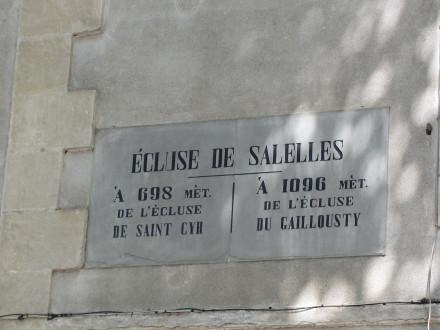
Canal de Jonction, écluse de Sallèles, plaque de la maison éclusière, commune de Sallèles d'Aude.
Photo prise le vendredi 17 aout 2012. 3 km 459 du point de rencontre avec le Canal du Midi. 171 km 959 depuis la Garonne. Ecluse située dans le village de Sallèles d'Aude. L'orthographe peut différer. www.sallelesdaude.fr/ fr.wikipedia.org/wiki/Sall%C3%A8les-d'Aude fr.wikipedia.org/wiki/Canal_de_Jonction Localisation sur wikimapia : wikimapia.org/#lat=43.2638015&lon=2.9524822&z=14&...
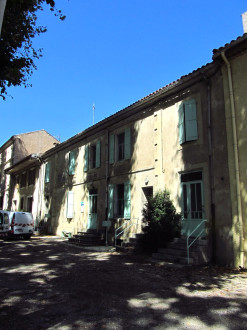
Canal de Jonction, écluse de Sallèles, maison éclusière, commune de Sallèles d'Aude.
Photo prise le vendredi 17 aout 2012. 3 km 459 du point de rencontre avec le Canal du Midi. 171 km 959 depuis la Garonne. Ecluse située dans le village de Salèlles d'Aude. www.sallelesdaude.fr/ fr.wikipedia.org/wiki/Sall%C3%A8les-d'Aude fr.wikipedia.org/wiki/Canal_de_Jonction Localisation sur wikimapia : wikimapia.org/#lat=43.2638015&lon=2.9524822&z=14&...
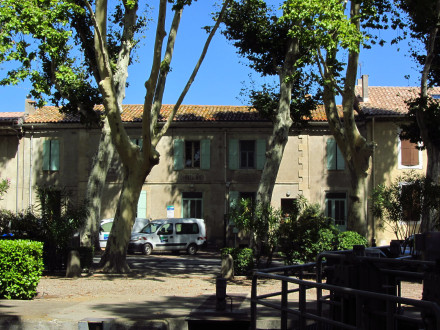
Canal de Jonction, écluse de Sallèles, maison éclusière, commune de Sallèles d'Aude.
Photo prise le vendredi 17 aout 2012. 3 km 459 du point de rencontre avec le Canal du Midi. 171 km 959 depuis la Garonne. Ecluse située dans le village de Salèlles d'Aude. www.sallelesdaude.fr/ fr.wikipedia.org/wiki/Sall%C3%A8les-d'Aude fr.wikipedia.org/wiki/Canal_de_Jonction Localisation sur wikimapia : wikimapia.org/#lat=43.2638015&lon=2.9524822&z=14&...
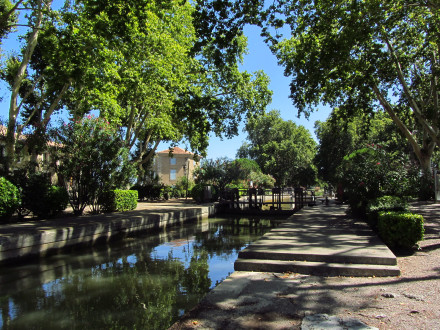
Canal de Jonction, écluse de Sallèles, commune de Sallèles d'Aude.
Photo prise le vendredi 17 aout 2012. 3 km 459 du point de rencontre avec le Canal du Midi. 171 km 959 depuis la Garonne. Ecluse située dans le village de Salèlles d'Aude. www.sallelesdaude.fr/ fr.wikipedia.org/wiki/Sall%C3%A8les-d'Aude fr.wikipedia.org/wiki/Canal_de_Jonction Localisation sur wikimapia : wikimapia.org/#lat=43.2638015&lon=2.9524822&z=14&...
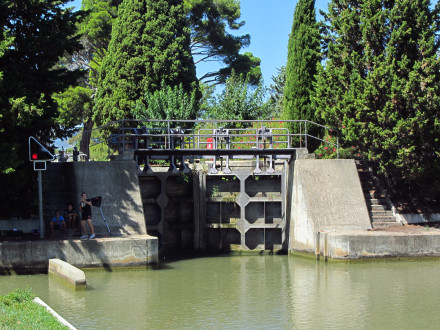
Canal de Jonction, écluse (simple) de Saint Cyr (sens Narbonne Canal du Midi), commune de Sallèles d'Aude.
Photo prise le vendredi 17 aout 2012. 2 km 761 du point de rencontre avec le Canal du Midi. 171 km 261 depuis la Garonne. Arrivée du bief de Salèlles de 0 km 698 en provenance de l'écluse de Salèlles d'Aude. A mi chemin entre le Canal du midi et le Canal de La Robine. Localisation sur wikimapia : wikimapia.org/#lat=43.2638015&lon=2.9524822&z=14&...
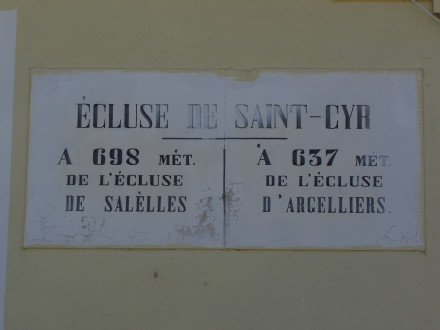
Canal de Jonction, écluse (simple) de Saint Cyr, plaque de la maison éclusière, commune de Sallèles d'Aude.
Photo prise le vendredi 17 aout 2012. 2 km 761 du point de rencontre avec le Canal du Midi. 171 km 261 depuis la Garonne. A mi chemin entre le Canal du midi et le Canal de La Robine. Localisation sur wikimapia : wikimapia.org/#lat=43.2638015&lon=2.9524822&z=14&...
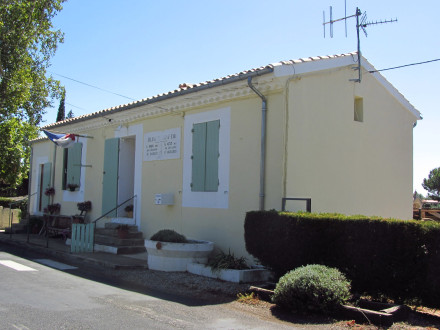
Canal de Jonction, écluse (simple) de Saint Cyr, maison éclusière, commune de Sallèles d'Aude.
Photo prise le vendredi 17 aout 2012. 2 km 761 du point de rencontre avec le Canal du Midi. 171 km 261 depuis la Garonne. A mi chemin entre le Canal du midi et le Canal de La Robine. Maison éclusière très bien entretenue. Localisation sur wikimapia : wikimapia.org/#lat=43.2638015&lon=2.9524822&z=14&...
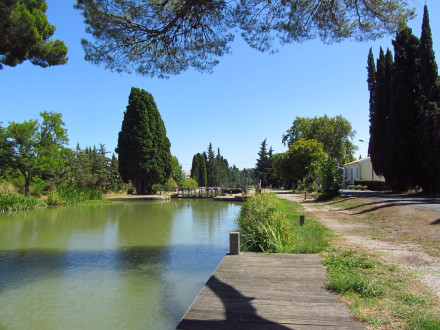
Canal de Jonction, écluse (simple) de Saint Cyr, commune de Sallèles d'Aude.
Photo prise le vendredi 17 aout 2012. 2 km 761 du point de rencontre avec le Canal du Midi. 171 km 261 depuis la Garonne. A mi chemin entre le Canal du Midi et le Canal de La Robine. Localisation sur wikimapia : wikimapia.org/#lat=43.2638015&lon=2.9524822&z=14&...
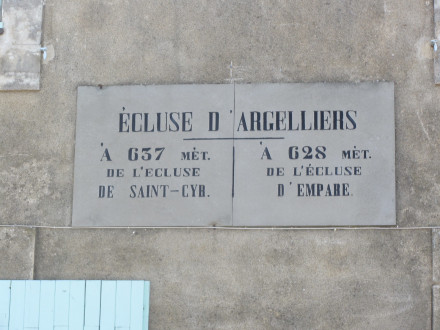
Canal de Jonction, écluse (simple) d'Argeliers, plaque de la maison éclusière, commune de Sallèles d'Aude.
Photo prise le vendredi 17 aout 2012. 2 km 124 du point de rencontre avec le Canal du Midi. 170 km 624 depuis la Garonne. Localisation sur wikimapia : wikimapia.org/#lat=43.2638015&lon=2.9524822&z=14&...
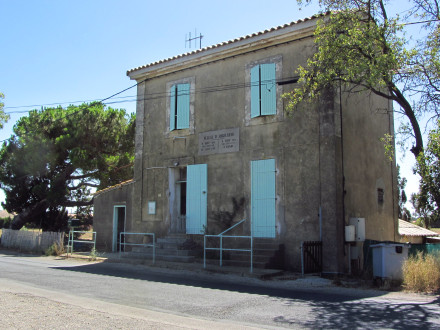
Canal de Jonction, écluse (simple) d'Argeliers, maison éclusière, commune de Sallèles d'Aude.
Photo prise le vendredi 17 aout 2012. 2 km 124 du point de rencontre avec le Canal du Midi. 170 km 624 depuis la Garonne. Localisation sur wikimapia : wikimapia.org/#lat=43.2638015&lon=2.9524822&z=14&...
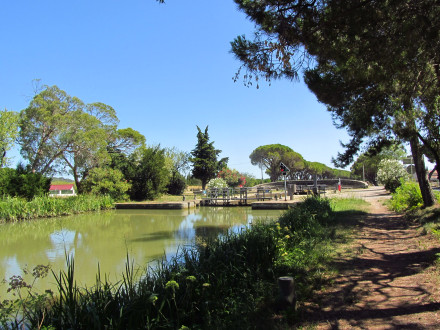
Canal de Jonction, écluse (simple) d'Argeliers, commune de Sallèles d'Aude.
Photo prise le vendredi 17 aout 2012. 2 km 124 du point de rencontre avec le Canal du Midi. 170 km 624 depuis la Garonne. Localisation sur wikimapia : wikimapia.org/#lat=43.2638015&lon=2.9524822&z=14&...
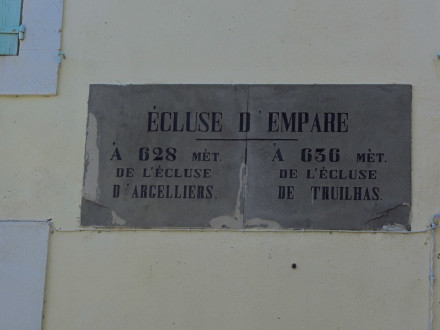
Canal de Jonction, écluse (simple) d'Empare, plaque de la maison éclusière, commune de Sallèles d'Aude.
Photo prise le vendredi 17 aout 2012. 1 km 496 du point de rencontre avec le Canal du Midi. 169 km 996 depuis la Garonne. Localisation sur wikimapia : wikimapia.org/#lat=43.2638015&lon=2.9524822&z=14&...
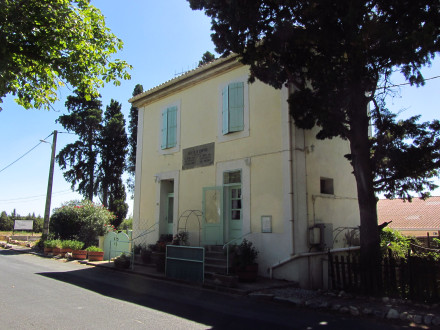
Canal de Jonction, écluse (simple) d'Empare, maison éclusière, commune de Sallèles d'Aude.
Photo prise le vendredi 17 aout 2012. 1 km 496 du point de rencontre avec le Canal du Midi. 169 km 996 depuis la Garonne. Localisation sur wikimapia : wikimapia.org/#lat=43.2638015&lon=2.9524822&z=14&...
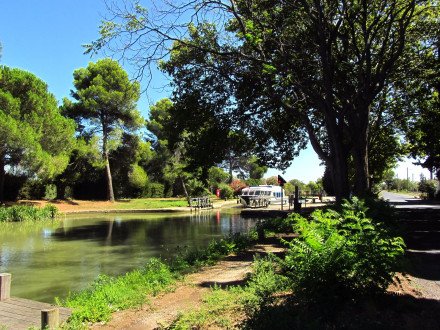
Canal de Jonction, écluse (simple) d'Empare, commune de Sallèles d'Aude.
Photo prise le vendredi 17 aout 2012. 1 km 496 du point de rencontre avec le Canal du Midi. 169 km 996 depuis la Garonne. Localisation sur wikimapia : wikimapia.org/#lat=43.2638015&lon=2.9524822&z=14&...
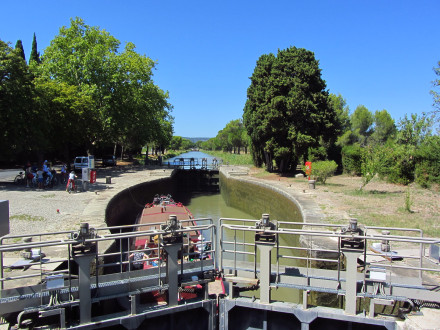
Canal de Jonction, écluse (simple) de Truilhas (sens Narbonne, Canal du Midi), commune de Sallèles d'Aude.
Photo prise le vendredi 17 aout 2012. Au fond, le bief de Truilhas de 0 km 630 et l'écluse de Cesse. Photo prise le vendredi 17 aout 2012. 0 km 860 du point de rencontre avec le Canal du Midi. 169 km 360 depuis la Garonne. Localisation sur wikimapia : wikimapia.org/#lat=43.2638015&lon=2.9524822&z=14&...
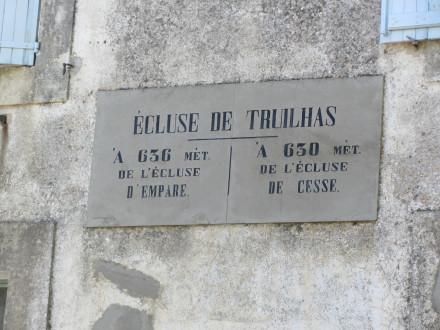
Canal de Jonction, écluse (simple) de Truilhas, plaque de la maison éclusière, commune de Sallèles d'Aude.
Photo prise le vendredi 17 aout 2012. 0 km 860 du point de rencontre avec le Canal du Midi. 169 km 360 depuis la Garonne. Localisation sur wikimapia : wikimapia.org/#lat=43.2638015&lon=2.9524822&z=14&...
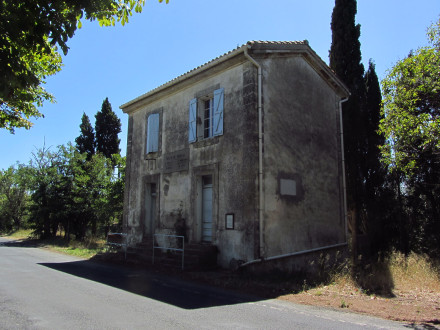
Canal de Jonction, écluse (simple) de Truilhas, maison éclusière, commune de Sallèles d'Aude.
Photo prise le vendredi 17 aout 2012. 0 km 860 du point de rencontre avec le Canal du Midi. 169 km 360 depuis la Garonne. Localisation sur wikimapia : wikimapia.org/#lat=43.2638015&lon=2.9524822&z=14&...
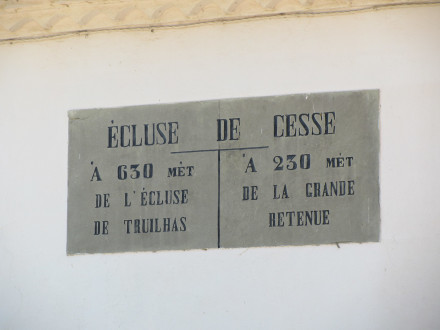
Canal de Jonction, écluse (simple) de Cesse, plaque de la maison éclusière, commune de Sallèles d'Aude.
Photo prise le vendredi 17 aout 2012. 0 km 230 du point de rencontre avec le Canal du Midi. 168 km 730 de la Garonne. Localisation sur wikimapia : wikimapia.org/#lat=43.2638015&lon=2.9524822&z=14&...
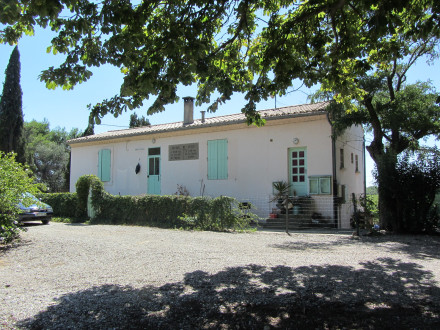
Canal de Jonction, écluse (simple) de Cesse, maison éclusière, commune de Sallèles d'Aude.
Photo prise le vendredi 17 aout 2012. 0 km 230 du point de rencontre avec le Canal du Midi. 168 km 730 de la Garonne. Localisation sur wikimapia : wikimapia.org/#lat=43.2638015&lon=2.9524822&z=14&...
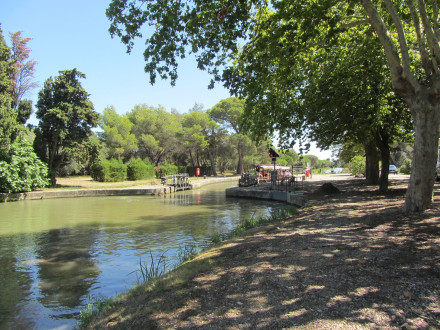
Canal de Jonction, écluse (simple) de Cesse, commune de Sallèles d'Aude.
Photo prise le vendredi 17 aout 2012. 0 km 230 du point de rencontre avec le Canal du Midi. 168 km 730 de la Garonne. Localisation sur wikimapia : wikimapia.org/#lat=43.2638015&lon=2.9524822&z=14&...
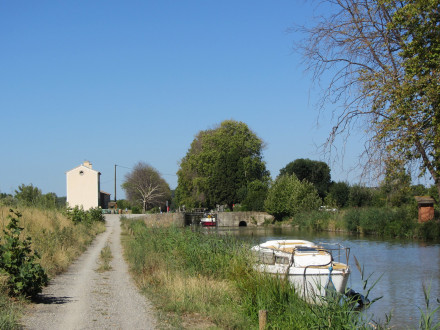
Canal du Midi, écluse (simple) d'Argens (sens Etang de Thau Toulouse, commune d'Argens Minervois, Aude), arrivée du 55e bief (bief de Fonsérannes ou Grand Bief, 53 km 869) en provenance de l'écluse de Fontséranne à Béziers
Photo prise le vendredi 17 aout 2012. 152 km 646 de la Garonne. Altitude : 32 m. 54e écluse sur le Canal à franchir par les navigants depuis son extrèmité occidentale à Toulouse. 56e écluse à l'origine sur le Canal avant les années 70. 55e écluse si l'on ne compte pas l'écluse de Garonne, la ou a été posée la première pierre du Canal du Midi, guère usitée (mais qui a conservé ses portes éclusières) et commune aux canux du Midi, Latéral à la Garonne et de Brienne). 54e écluse si on ôte aussi du décompte l'ancienne écluse Matabiau à Toulouse, qui a perdu sa fonction éclusière lors de la modernisation du Canal dans les années 70. Ici commence (ou se termine, selon le sens emprunté) le plus long Bief du Canal appelé Grand bief ou bief de Fonsérannes. Localisation sur wikimapia : wikimapia.org/#lat=43.2594417&lon=2.7510376&z=15&...
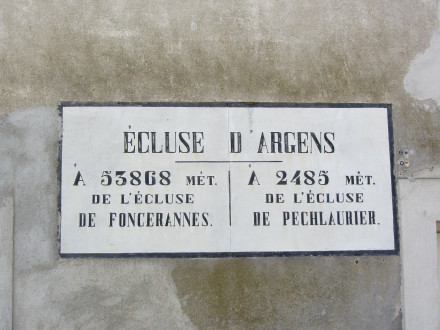
Canal du Midi, écluse (simple) d'Argens, plaque de la maison éclusière, commune d'Argens Minervois, Aude.
Photo prise le vendredi 17 aout 2012. 152 km 646 de la Garonne. Altitude : 32 m. 54e écluse sur le Canal à franchir par les navigants depuis son extrèmité occidentale à Toulouse. 56e écluse à l'origine sur le Canal avant les années 70. 55e écluse si l'on ne compte pas l'écluse de Garonne, la ou a été posée la première pierre du Canal du Midi, guère usitée (mais qui a conservé ses portes éclusières) et commune aux canux du Midi, Latéral à la Garonne et de Brienne). 54e écluse si on ôte aussi du décompte l'ancienne écluse Matabiau à Toulouse, qui a perdu sa fonction éclusière lors de la modernisation du Canal dans les années 70. Localisation sur wikimapia : wikimapia.org/#lat=43.2594417&lon=2.7510376&z=15&...
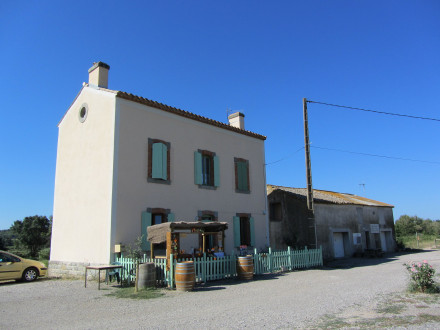
Canal du Midi, écluse (simple) d'Argens, maison éclusière, commune d'Argens Minervois, Aude.
Photo prise le vendredi 17 aout 2012. 152 km 646 de la Garonne. Altitude : 32 m. 54e écluse sur le Canal à franchir par les navigants depuis son extrèmité occidentale à Toulouse. 56e écluse à l'origine sur le Canal avant les années 70. 55e écluse si l'on ne compte pas l'écluse de Garonne, la ou a été posée la première pierre du Canal du Midi, guère usitée (mais qui a conservé ses portes éclusières) et commune aux canux du Midi, Latéral à la Garonne et de Brienne). 54e écluse si on ôte aussi du décompte l'ancienne écluse Matabiau à Toulouse, qui a perdu sa fonction éclusière lors de la modernisation du Canal dans les années 70. Localisation sur wikimapia : wikimapia.org/#lat=43.2594417&lon=2.7510376&z=15&...
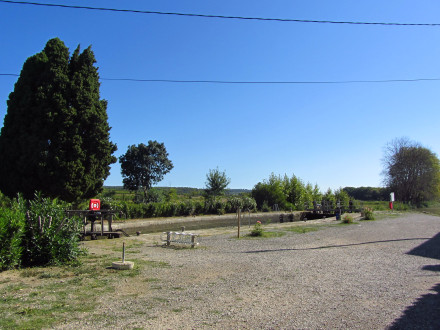
Canal du Midi, écluse (simple) d'Argens, commune d'Argens Minervois, Aude.
Photo prise le vendredi 17 aout 2012. 152 km 646 de la Garonne. Altitude : 32 m. 54e écluse sur le Canal à franchir par les navigants depuis son extrèmité occidentale à Toulouse. 56e écluse à l'origine sur le Canal avant les années 70. 55e écluse si l'on ne compte pas l'écluse de Garonne, la ou a été posée la première pierre du Canal du Midi, guère usitée (mais qui a conservé ses portes éclusières) et commune aux canux du Midi, Latéral à la Garonne et de Brienne). 54e écluse si on ôte aussi du décompte l'ancienne écluse Matabiau à Toulouse, qui a perdu sa fonction éclusière lors de la modernisation du Canal dans les années 70. Localisation sur wikimapia : wikimapia.org/#lat=43.2594417&lon=2.7510376&z=15&...
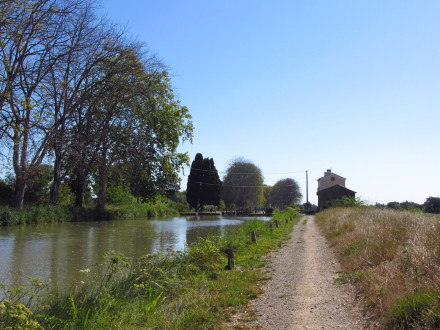
Canal du Midi, écluse (simple) d'Argens, commune d'Argens Minervois, Aude.
Photo prise le vendredi 17 aout 2012. 152 km 646 de la Garonne. Altitude : 32 m. 54e écluse sur le Canal à franchir par les navigants depuis son extrèmité occidentale à Toulouse. 56e écluse à l'origine sur le Canal avant les années 70. 55e écluse si l'on ne compte pas l'écluse de Garonne, la ou a été posée la première pierre du Canal du Midi, guère usitée (mais qui a conservé ses portes éclusières) et commune aux canux du Midi, Latéral à la Garonne et de Brienne). 54e écluse si on ôte aussi du décompte l'ancienne écluse Matabiau à Toulouse, qui a perdu sa fonction éclusière lors de la modernisation du Canal dans les années 70. Localisation sur wikimapia : wikimapia.org/#lat=43.2594417&lon=2.7510376&z=15&...
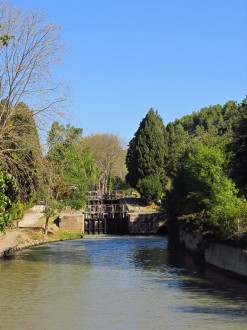
Canal du Midi, écluse (double) de Pechlaurier, commune d'Argens Minervois, Aude.
Photo prise le vendredi 17 aout 2012. Arrivée du 55e bief (bief de Pechlaurier) de 2 km 485 en provenance de l'écluse d'Argens. 150 km 161 de la Garonne. Altitude : 38 m. 53e écluse sur le Canal à franchir par les navigants depuis son extrèmité occidentale à Toulouse. 55e écluse à l'origine sur le Canal avant les années 70. 54e écluse si l'on ne compte pas l'écluse de Garonne, la ou a été posée la première pierre du Canal du Midi, guère usitée (mais qui a conservé ses portes éclusières) et commune aux canux du Midi, Latéral à la Garonne et de Brienne). 53e écluse si on ôte aussi du décompte l'ancienne écluse Matabiau à Toulouse, qui a perdu sa fonction éclusière lors de la modernisation du Canal dans les années 70. Localisation sur wikimapia : wikimapia.org/#lat=43.2594417&lon=2.7510376&z=15&...
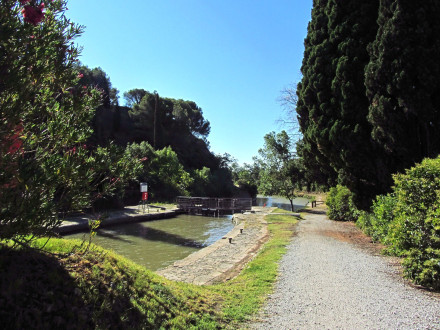
Canal du Midi, écluse (double) de Pechlaurier, commune d'Argens Minervois, Aude.
Photo prise le vendredi 17 aout 2012. 150 km 161 de la Garonne. Altitude : 38 m. 53e écluse sur le Canal à franchir par les navigants depuis son extrèmité occidentale à Toulouse. 55e écluse à l'origine sur le Canal avant les années 70. 54e écluse si l'on ne compte pas l'écluse de Garonne, la ou a été posée la première pierre du Canal du Midi, guère usitée (mais qui a conservé ses portes éclusières) et commune aux canux du Midi, Latéral à la Garonne et de Brienne). 53e écluse si on ôte aussi du décompte l'ancienne écluse Matabiau à Toulouse, qui a perdu sa fonction éclusière lors de la modernisation du Canal dans les années 70. Localisation sur wikimapia : wikimapia.org/#lat=43.2594417&lon=2.7510376&z=15&...
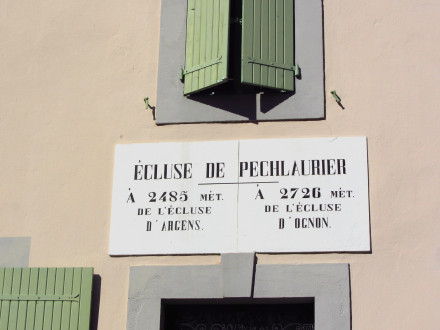
Canal du Midi, écluse (double) de Pechlaurier, plaque de la maison éclusière, commune d'Argens Minervois, Aude.
Photo prise le vendredi 17 aout 2012. 150 km 161 de la Garonne. Altitude : 38 m. 53e écluse sur le Canal à franchir par les navigants depuis son extrèmité occidentale à Toulouse. 55e écluse à l'origine sur le Canal avant les années 70. 54e écluse si l'on ne compte pas l'écluse de Garonne, la ou a été posée la première pierre du Canal du Midi, guère usitée (mais qui a conservé ses portes éclusières) et commune aux canux du Midi, Latéral à la Garonne et de Brienne). 53e écluse si on ôte aussi du décompte l'ancienne écluse Matabiau à Toulouse, qui a perdu sa fonction éclusière lors de la modernisation du Canal dans les années 70. Localisation sur wikimapia : wikimapia.org/#lat=43.2594417&lon=2.7510376&z=15&...
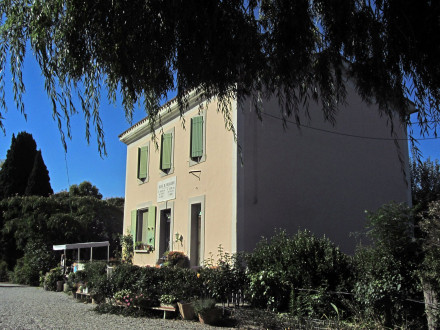
Canal du Midi, écluse (double) de Pechlaurier, maison éclusière, commune d'Argens Minervois, Aude.
Photo prise le vendredi 17 aout 2012. 150 km 161 de la Garonne. Altitude : 38 m. 53e écluse sur le Canal à franchir par les navigants depuis son extrèmité occidentale à Toulouse. 55e écluse à l'origine sur le Canal avant les années 70. 54e écluse si l'on ne compte pas l'écluse de Garonne, la ou a été posée la première pierre du Canal du Midi, guère usitée (mais qui a conservé ses portes éclusières) et commune aux canux du Midi, Latéral à la Garonne et de Brienne). 53e écluse si on ôte aussi du décompte l'ancienne écluse Matabiau à Toulouse, qui a perdu sa fonction éclusière lors de la modernisation du Canal dans les années 70. Localisation sur wikimapia : wikimapia.org/#lat=43.2594417&lon=2.7510376&z=15&...
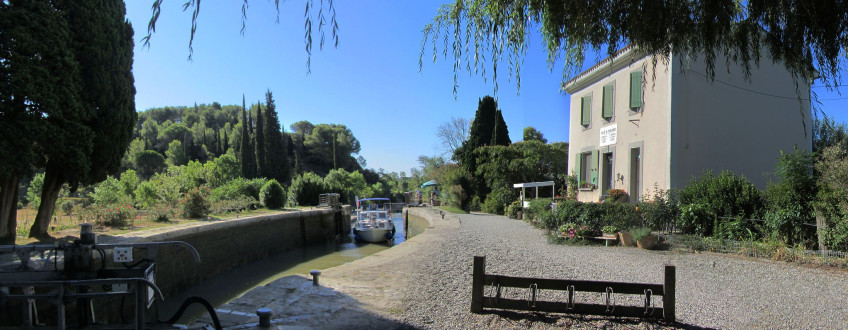
Canal du Midi, écluse (double) de Pechlaurier, commune d'Argens Minervois, Aude.
Photo prise le vendredi 17 aout 2012. 150 km 161 de la Garonne. Altitude : 38 m. 53e écluse sur le Canal à franchir par les navigants depuis son extrèmité occidentale à Toulouse. 55e écluse à l'origine sur le Canal avant les années 70. 54e écluse si l'on ne compte pas l'écluse de Garonne, la ou a été posée la première pierre du Canal du Midi, guère usitée (mais qui a conservé ses portes éclusières) et commune aux canux du Midi, Latéral à la Garonne et de Brienne). 53e écluse si on ôte aussi du décompte l'ancienne écluse Matabiau à Toulouse, qui a perdu sa fonction éclusière lors de la modernisation du Canal dans les années 70. Localisation sur wikimapia : wikimapia.org/#lat=43.2594417&lon=2.7510376&z=15&...
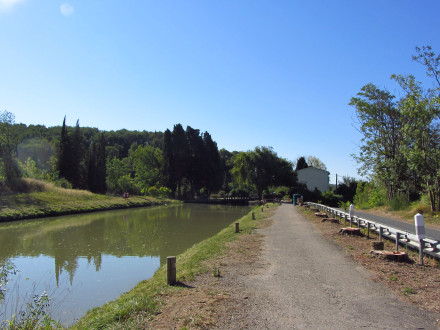
Canal du Midi, écluse (double) de Pechlaurier, commune d'Argens Minervois, Aude.
Photo prise le vendredi 17 aout 2012. 150 km 161 de la Garonne. Altitude : 38 m. 53e écluse sur le Canal à franchir par les navigants depuis son extrèmité occidentale à Toulouse. 55e écluse à l'origine sur le Canal avant les années 70. 54e écluse si l'on ne compte pas l'écluse de Garonne, la ou a été posée la première pierre du Canal du Midi, guère usitée (mais qui a conservé ses portes éclusières) et commune aux canux du Midi, Latéral à la Garonne et de Brienne). 53e écluse si on ôte aussi du décompte l'ancienne écluse Matabiau à Toulouse, qui a perdu sa fonction éclusière lors de la modernisation du Canal dans les années 70. Localisation sur wikimapia : wikimapia.org/#lat=43.2594417&lon=2.7510376&z=15&...
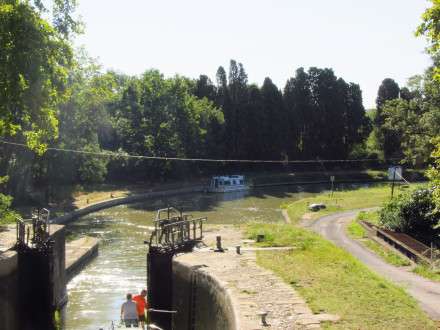
Canal du Midi, 53e bief (bief de Pechlaurier, 2 km 726).
Photo prise le vendredi 17 aout 2012. Communes traversées : Olonzac (Hérault), et Argens Minervois (Aude) toute deux dans le Minervois (région Languedoc Roussillon). Localisation sur wikimapia : wikimapia.org/#lat=43.2594417&lon=2.7510376&z=15&...
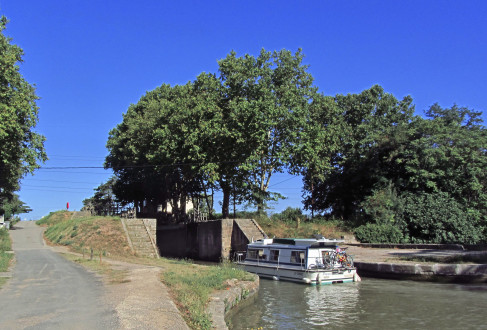
Canal du Midi, écluse (double) d'Ognon (sens Etang de Thau Toulouse), commune d'Olonzac, Hérault, première écluse dans ce département.
Photo prise le vendredi 17 aout 2012. Arrivée du 54e bief (bief d'ognon) de 2 km 726 en provenance de l'écluse de Pechlaurier. Photo prise le vendredi 17 aout 2012. 147 km 435 de la Garonne. Altitude : 41 m. 52e écluse sur le Canal à franchir par les navigants depuis son extrèmité occidentale à Toulouse. 54e écluse à l'origine sur le Canal avant les années 70. 53e écluse si l'on ne compte pas l'écluse de Garonne, la ou a été posée la première pierre du Canal du Midi, guère usitée (mais qui a conservé ses portes éclusières) et commune aux canux du Midi, Latéral à la Garonne et de Brienne). 52e écluse si on ôte aussi du décompte l'ancienne écluse Matabiau à Toulouse, qui a perdu sa fonction éclusière lors de la modernisation du Canal dans les années 70. Localisation sur wikimapia : wikimapia.org/#lat=43.2594417&lon=2.7510376&z=15&...
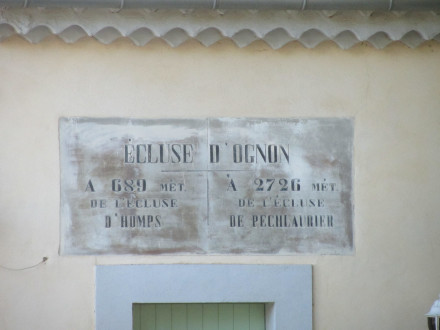
Canal du Midi, écluse (double) d'Ognon, plaque de la maison éclusière, commune d'Olonzac, Hérault, première écluse dans ce département.
Photo prise le vendredi 17 aout 2012. 147 km 435 de la Garonne. Altitude : 41 m. 52e écluse sur le Canal à franchir par les navigants depuis son extrèmité occidentale à Toulouse. 54e écluse à l'origine sur le Canal avant les années 70. 53e écluse si l'on ne compte pas l'écluse de Garonne, la ou a été posée la première pierre du Canal du Midi, guère usitée (mais qui a conservé ses portes éclusières) et commune aux canux du Midi, Latéral à la Garonne et de Brienne). 52e écluse si on ôte aussi du décompte l'ancienne écluse Matabiau à Toulouse, qui a perdu sa fonction éclusière lors de la modernisation du Canal dans les années 70. Localisation sur wikimapia : wikimapia.org/#lat=43.2594417&lon=2.7510376&z=15&...
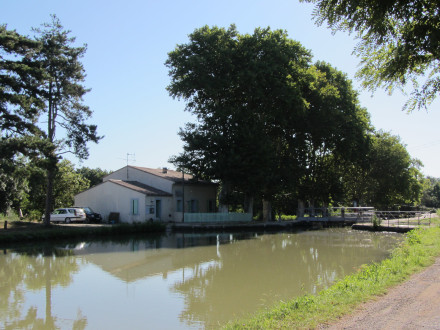
Canal du Midi, écluse (double) d'Ognon, commune d'Olonzac, Hérault, première écluse dans ce département.
Photo prise le vendredi 17 aout 2012. 147 km 435 de la Garonne. Altitude : 41 m. 52e écluse sur le Canal à franchir par les navigants depuis son extrèmité occidentale à Toulouse. 54e écluse à l'origine sur le Canal avant les années 70. 53e écluse si l'on ne compte pas l'écluse de Garonne, la ou a été posée la première pierre du Canal du Midi, guère usitée (mais qui a conservé ses portes éclusières) et commune aux canux du Midi, Latéral à la Garonne et de Brienne). 52e écluse si on ôte aussi du décompte l'ancienne écluse Matabiau à Toulouse, qui a perdu sa fonction éclusière lors de la modernisation du Canal dans les années 70. Localisation sur wikimapia : wikimapia.org/#lat=43.2594417&lon=2.7510376&z=15&...
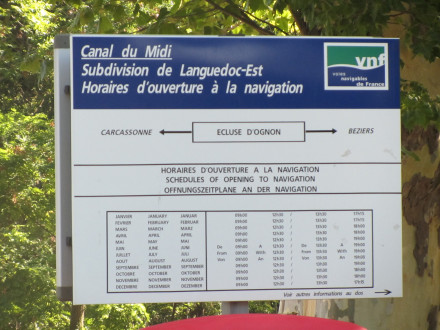
Canal du Midi, écluse (double) d'Ognon, commune d'Olonzac, Hérault, première écluse dans ce département.
Photo prise le vendredi 17 aout 2012. 147 km 435 de la Garonne. Altitude : 41 m. 52e écluse sur le Canal à franchir par les navigants depuis son extrèmité occidentale à Toulouse. 54e écluse à l'origine sur le Canal avant les années 70. 53e écluse si l'on ne compte pas l'écluse de Garonne, la ou a été posée la première pierre du Canal du Midi, guère usitée (mais qui a conservé ses portes éclusières) et commune aux canux du Midi, Latéral à la Garonne et de Brienne). 52e écluse si on ôte aussi du décompte l'ancienne écluse Matabiau à Toulouse, qui a perdu sa fonction éclusière lors de la modernisation du Canal dans les années 70. Localisation sur wikimapia : wikimapia.org/#lat=43.2594417&lon=2.7510376&z=15&...
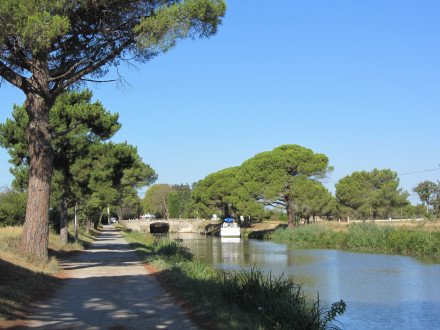
Canal du Midi, 52e bief (bief d'Ognon, 0 km 688, sens Etang de Thau Toulouse).
Photo prise le vendredi 17 aout 2012. Au fond, l'écluse d'Homps). Le Canal pénètre sur ce bief dans l'Hérault avant de revenir dans l'Aude sur le bief suivant. Communes traversées : Homps (Aude) et Olonzac (Hérault), toute deux dans le Minervois. Sur ce lien, un très bel album photo du Canal du Midi en Minervois : www.flickr.com/photos/agartapictures/sets/72157626837474287/ Localisation sur wikimapia : wikimapia.org/#lat=43.2594417&lon=2.7510376&z=15&...
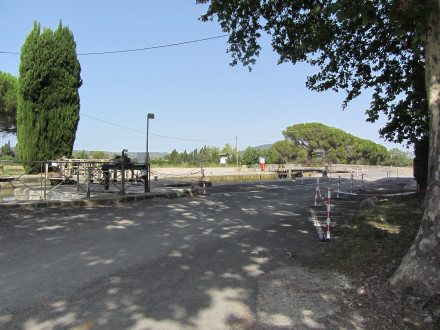
Canal du Midi, écluse (simple) d'Homps, commune d'Homps, Aude.
Photo prise le samedi 11 aout 2012 en repérage avant mon trajet à vélo le long du Canal. 146 km 747 de la Garonne. Altitude : 46 m. 51e écluse sur le Canal à franchir par les navigants depuis son extrèmité occidentale à Toulouse. 53e écluse à l'origine sur le Canal avant les années 70. 52e écluse si l'on ne compte pas l'écluse de Garonne, la ou a été posée la première pierre du Canal du Midi, guère usitée (mais qui a conservé ses portes éclusières) et commune aux canux du Midi, Latéral à la Garonne et de Brienne). 51e écluse si on ôte aussi du décompte l'ancienne écluse Matabiau à Toulouse, qui a perdu sa fonction éclusière lors de la modernisation du Canal dans les années 70. Sur ce lien, un très bel album photo du Canal du Midi en Minervois : www.flickr.com/photos/agartapictures/sets/72157626837474287/ Localisation sur wikimapia : wikimapia.org/#lat=43.2546285&lon=2.6803989&z=14&...
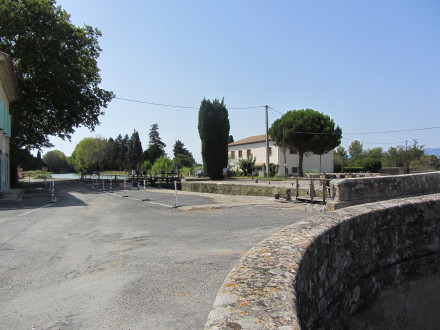
Canal du Midi, écluse (simple) d'Homps (sens Etang de Thau Toulouse), commune d'Homps, Aude.
Photo prise le samedi 11 aout 2012 en repérage avant mon trajet à vélo le long du Canal. 146 km 747 de la Garonne. Altitude : 46 m. 51e écluse sur le Canal à franchir par les navigants depuis son extrèmité occidentale à Toulouse. 53e écluse à l'origine sur le Canal avant les années 70. 52e écluse si l'on ne compte pas l'écluse de Garonne, la ou a été posée la première pierre du Canal du Midi, guère usitée (mais qui a conservé ses portes éclusières) et commune aux canux du Midi, Latéral à la Garonne et de Brienne). 51e écluse si on ôte aussi du décompte l'ancienne écluse Matabiau à Toulouse, qui a perdu sa fonction éclusière lors de la modernisation du Canal dans les années 70. Sur ce lien, un très bel album photo du Canal du Midi en Minervois : www.flickr.com/photos/agartapictures/sets/72157626837474287/ Localisation sur wikimapia : wikimapia.org/#lat=43.2546285&lon=2.6803989&z=14&...
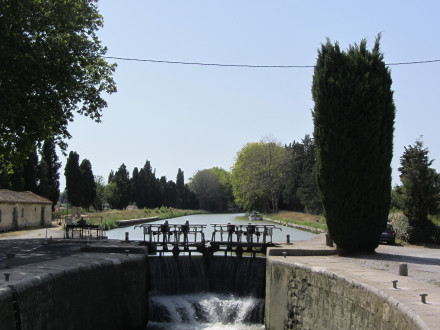
Canal du Midi, écluse (simple) d'Homps (sens Etang de Thau Toulouse), commune d'Homps, Aude.
Photo prise le samedi 11 aout 2012 en repérage avant mon trajet à vélo le long du Canal. 146 km 747 de la Garonne. Altitude : 46 m. 51e écluse sur le Canal à franchir par les navigants depuis son extrèmité occidentale à Toulouse. 53e écluse à l'origine sur le Canal avant les années 70. 52e écluse si l'on ne compte pas l'écluse de Garonne, la ou a été posée la première pierre du Canal du Midi, guère usitée (mais qui a conservé ses portes éclusières) et commune aux canux du Midi, Latéral à la Garonne et de Brienne). 51e écluse si on ôte aussi du décompte l'ancienne écluse Matabiau à Toulouse, qui a perdu sa fonction éclusière lors de la modernisation du Canal dans les années 70. Une très belle photo prise au même endroit presque 5 ans avant, en novembre 2007 et avant que les platanes se rapprochant de l'écluse ne soient coupés : www.flickr.com/photos/platane/2071183744/in/set-721575944... Sur cet autre lien, une photo prise au même endroit en janvier 2012 (bravo aux courageux randonneurs) : www.flickr.com/photos/21252309@N06/4274201514/in/pool-can... Sur ce lien, un très bel album photo du Canal du Midi en Minervois : www.flickr.com/photos/agartapictures/sets/72157626837474287/ Localisation sur wikimapia : wikimapia.org/#lat=43.2546285&lon=2.6803989&z=14&...
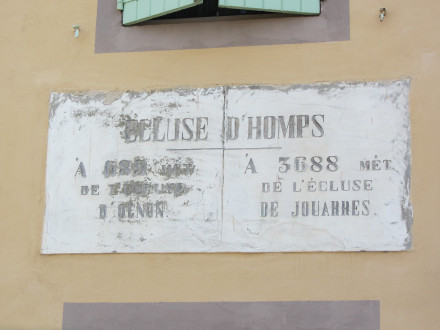
Canal du Midi, écluse (simple) d'Homps, plaque de la maison éclusière, commune d'Homps, Aude.
Photo prise le samedi 11 aout 2012 en repérage avant mon trajet à vélo le long du Canal. 146 km 747 de la Garonne. Altitude : 46 m. 51e écluse sur le Canal à franchir par les navigants depuis son extrèmité occidentale à Toulouse. 53e écluse à l'origine sur le Canal avant les années 70. 52e écluse si l'on ne compte pas l'écluse de Garonne, la ou a été posée la première pierre du Canal du Midi, guère usitée (mais qui a conservé ses portes éclusières) et commune aux canux du Midi, Latéral à la Garonne et de Brienne). 51e écluse si on ôte aussi du décompte l'ancienne écluse Matabiau à Toulouse, qui a perdu sa fonction éclusière lors de la modernisation du Canal dans les années 70. Sur ce lien, un très bel album photo du Canal du Midi en Minervois : www.flickr.com/photos/agartapictures/sets/72157626837474287/ Localisation sur wikimapia : wikimapia.org/#lat=43.2546285&lon=2.6803989&z=14&...
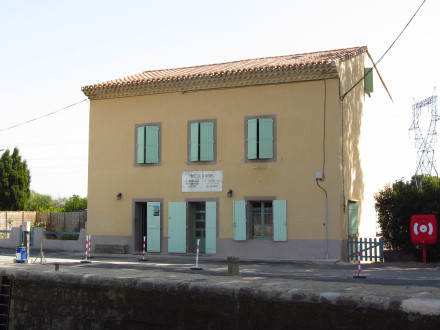
Canal du Midi, écluse (simple) d'Homps, maison éclusière, commune d'Homps, Aude.
Photo prise le samedi 11 aout 2012 en repérage avant mon trajet à vélo le long du Canal. 146 km 747 de la Garonne. Altitude : 46 m. 51e écluse sur le Canal à franchir par les navigants depuis son extrèmité occidentale à Toulouse. 53e écluse à l'origine sur le Canal avant les années 70. 52e écluse si l'on ne compte pas l'écluse de Garonne, la ou a été posée la première pierre du Canal du Midi, guère usitée (mais qui a conservé ses portes éclusières) et commune aux canux du Midi, Latéral à la Garonne et de Brienne). 51e écluse si on ôte aussi du décompte l'ancienne écluse Matabiau à Toulouse, qui a perdu sa fonction éclusière lors de la modernisation du Canal dans les années 70. Sur ce lien, un très bel album photo du Canal du Midi en Minervois : www.flickr.com/photos/agartapictures/sets/72157626837474287/ Localisation sur wikimapia : wikimapia.org/#lat=43.2546285&lon=2.6803989&z=14&...
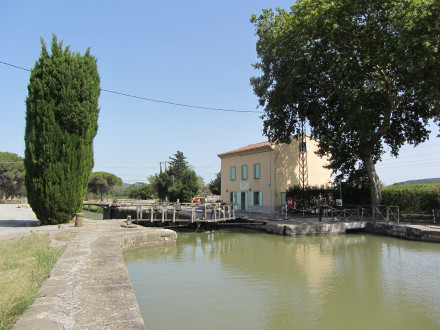
Canal du Midi, écluse (simple) d'Homps, commune d'Homps, Aude.
Photo prise le samedi 11 aout 2012 en repérage avant mon trajet à vélo le long du Canal. 146 km 747 de la Garonne. Altitude : 46 m. 51e écluse sur le Canal à franchir par les navigants depuis son extrèmité occidentale à Toulouse. 53e écluse à l'origine sur le Canal avant les années 70. 52e écluse si l'on ne compte pas l'écluse de Garonne, la ou a été posée la première pierre du Canal du Midi, guère usitée (mais qui a conservé ses portes éclusières) et commune aux canux du Midi, Latéral à la Garonne et de Brienne). 51e écluse si on ôte aussi du décompte l'ancienne écluse Matabiau à Toulouse, qui a perdu sa fonction éclusière lors de la modernisation du Canal dans les années 70. Sur ce lien, un très bel album photo du Canal du Midi en Minervois : www.flickr.com/photos/agartapictures/sets/72157626837474287/ Localisation sur wikimapia : wikimapia.org/#lat=43.2546285&lon=2.6803989&z=14&...
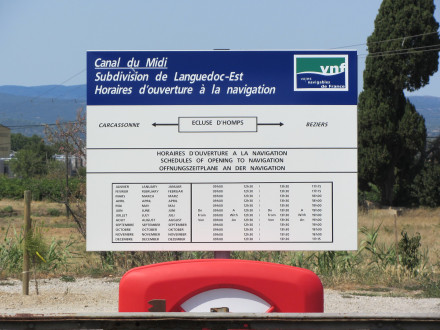
Canal du Midi, écluse (simple) d'Homps, commune d'Homps, Aude.
Photo prise le samedi 11 aout 2012 en repérage avant mon trajet à vélo le long du Canal. 146 km 747 de la Garonne. Altitude : 46 m. 51e écluse sur le Canal à franchir par les navigants depuis son extrèmité occidentale à Toulouse. 53e écluse à l'origine sur le Canal avant les années 70. 52e écluse si l'on ne compte pas l'écluse de Garonne, la ou a été posée la première pierre du Canal du Midi, guère usitée (mais qui a conservé ses portes éclusières) et commune aux canux du Midi, Latéral à la Garonne et de Brienne). 51e écluse si on ôte aussi du décompte l'ancienne écluse Matabiau à Toulouse, qui a perdu sa fonction éclusière lors de la modernisation du Canal dans les années 70. Sur ce lien, un très bel album photo du Canal du Midi en Minervois : www.flickr.com/photos/agartapictures/sets/72157626837474287/ Localisation sur wikimapia : wikimapia.org/#lat=43.2546285&lon=2.6803989&z=14&...
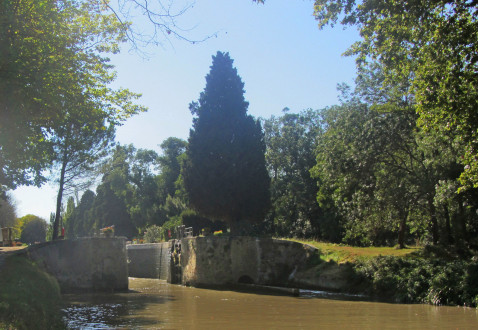
Canal du Midi, écluse (simple) de Jouarres, commune d'Azille, Aude.
Photo prise le jeudi 16 aout 2012. 143 km 059 de la Garonne. Altitude : 49 m. 50e écluse sur le Canal à franchir par les navigants depuis son extrèmité occidentale à Toulouse. 52e écluse à l'origine sur le Canal avant les années 70. 51e écluse si l'on ne compte pas l'écluse de Garonne, la ou a été posée la première pierre du Canal du Midi, guère usitée (mais qui a conservé ses portes éclusières) et commune aux canux du Midi, Latéral à la Garonne et de Brienne). 50e écluse si on ôte aussi du décompte l'ancienne écluse Matabiau à Toulouse, qui a perdu sa fonction éclusière lors de la modernisation du Canal dans les années 70. Arrivée du 52e bief (bief de Jouarres) de 3 km 688 en provenance de l'écluse de Homps. Sur ce lien, un très bel album photo du Canal du Midi en Minervois : www.flickr.com/photos/agartapictures/sets/72157626837474287/ Localisation sur wikimapia : wikimapia.org/#lat=43.2546285&lon=2.6803989&z=14&...
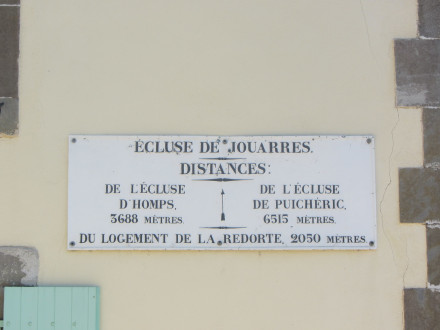
Canal du Midi, écluse de (simple) Jouarres, plaque de la maison éclusière, commune d'Azille, Aude.
Photo prise le jeudi 16 aout 2012. 143 km 059 de la Garonne. Altitude : 49 m. 50e écluse sur le Canal à franchir par les navigants depuis son extrèmité occidentale à Toulouse. 52e écluse à l'origine sur le Canal avant les années 70. 51e écluse si l'on ne compte pas l'écluse de Garonne, la ou a été posée la première pierre du Canal du Midi, guère usitée (mais qui a conservé ses portes éclusières) et commune aux canux du Midi, Latéral à la Garonne et de Brienne). 50e écluse si on ôte aussi du décompte l'ancienne écluse Matabiau à Toulouse, qui a perdu sa fonction éclusière lors de la modernisation du Canal dans les années 70. Sur ce lien, un très bel album photo du Canal du Midi en Minervois : www.flickr.com/photos/agartapictures/sets/72157626837474287/ Localisation sur wikimapia : wikimapia.org/#lat=43.2546285&lon=2.6803989&z=14&...
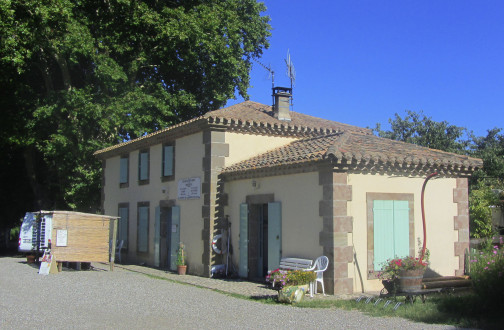
Canal du Midi, écluse (simple) de Jouarres, maison éclusière, commune d'Azille, Aude.
Photo prise le jeudi 16 aout 2012. 143 km 059 de la Garonne. Altitude : 49 m. 50e écluse sur le Canal à franchir par les navigants depuis son extrèmité occidentale à Toulouse. 52e écluse à l'origine sur le Canal avant les années 70. 51e écluse si l'on ne compte pas l'écluse de Garonne, la ou a été posée la première pierre du Canal du Midi, guère usitée (mais qui a conservé ses portes éclusières) et commune aux canux du Midi, Latéral à la Garonne et de Brienne). 50e écluse si on ôte aussi du décompte l'ancienne écluse Matabiau à Toulouse, qui a perdu sa fonction éclusière lors de la modernisation du Canal dans les années 70. Au moment de mon passage à bicyclette ce jeudi 16 aout 2012, et contrairement à la maison éclusière de l'écluse de la Planque, qui, au passage, n'a plus sa plaque ,voici LA maison éclusière la mieux tenue de tout le Canal (enduits , menuiseries de fenêtres et volets homogènes). Eu égard au classement du chef d'œuvre de Riquet au patrimoine Mondial de l'Unesco et afin d'en assurer la pérennité, il serait tout à fait LEGITIME que TOUTES les maisons éclusières du Canal soient restaurées, tenues et entretenues de cette manière. Il en va d'une exigence d'excellence vis à vis de ce patrimoine. Sur ce lien, un très bel album photo du Canal du Midi en Minervois : www.flickr.com/photos/agartapictures/sets/72157626837474287/ Localisation sur wikimapia : wikimapia.org/#lat=43.2546285&lon=2.6803989&z=14&...
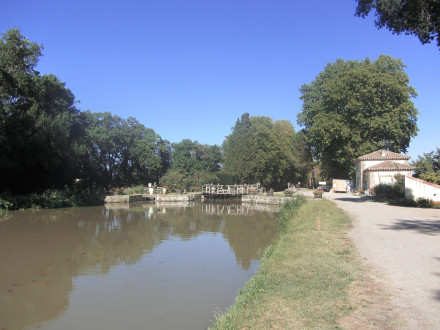
Canal du Midi, écluse (simple) de Jouarres, commune d'Azille, Aude.
Photo prise le jeudi 16 aout 2012. 143 km 059 de la Garonne. Altitude : 49 m. 50e écluse sur le Canal à franchir par les navigants depuis son extrèmité occidentale à Toulouse. 52e écluse à l'origine sur le Canal avant les années 70. 51e écluse si l'on ne compte pas l'écluse de Garonne, la ou a été posée la première pierre du Canal du Midi, guère usitée (mais qui a conservé ses portes éclusières) et commune aux canux du Midi, Latéral à la Garonne et de Brienne). 50e écluse si on ôte aussi du décompte l'ancienne écluse Matabiau à Toulouse, qui a perdu sa fonction éclusière lors de la modernisation du Canal dans les années 70. Sur ce lien, un très bel album photo du Canal du Midi en Minervois : www.flickr.com/photos/agartapictures/sets/72157626837474287/ Localisation sur wikimapia : wikimapia.org/#lat=43.2546285&lon=2.6803989&z=14&...
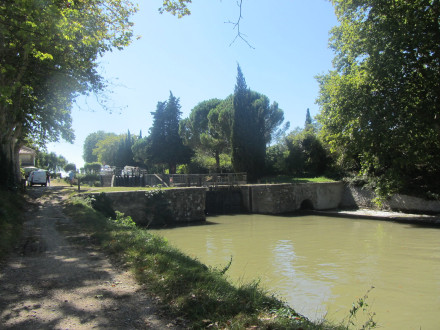
Canal du Midi, écluse (double) de Puichéric (sens Etang de Thau Toulouse), commune de Puichéric, Aude.
Photo prise le jeudi 16 aout 2012. 136 km 740 de la Garonne. Altitude : 57 m. 49e écluse sur le Canal à franchir par les navigants depuis son extrèmité occidentale à Toulouse. 51e écluse à l'origine sur le Canal avant les années 70. 50e écluse si l'on ne compte pas l'écluse de Garonne, la ou a été posée la première pierre du Canal du Midi, guère usitée (mais qui a conservé ses portes éclusières) et commune aux canux du Midi, Latéral à la Garonne et de Brienne). 49e écluse si on ôte aussi du décompte l'ancienne écluse Matabiau à Toulouse, qui a perdu sa fonction éclusière lors de la modernisation du Canal dans les années 70. Arrivée du 50e bief (bief de Jouarres) de 6 km 313 en provenance de l'écluse de Jouarres. Pour en savoir plus sur Puichéric : www.canaldumidi.com/Minervois/Puicheric/Puicheric.php Sur ce lien, un très bel album photo du Canal du Midi en Minervois : www.flickr.com/photos/agartapictures/sets/72157626837474287/ Localisation sur wikimapia : wikimapia.org/#lat=43.2245842&lon=2.6161976&z=15&...
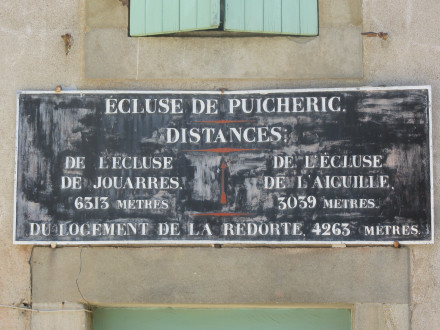
Canal du Midi, écluse (double) de Puichéric, plaque de la maison éclusière, commune de Puichéric, Aude.
Photo prise le jeudi 16 aout 2012. 136 km 740 de la Garonne. Altitude : 57 m. 49e écluse sur le Canal à franchir par les navigants depuis son extrèmité occidentale à Toulouse. 51e écluse à l'origine sur le Canal avant les années 70. 50e écluse si l'on ne compte pas l'écluse de Garonne, la ou a été posée la première pierre du Canal du Midi, guère usitée (mais qui a conservé ses portes éclusières) et commune aux canux du Midi, Latéral à la Garonne et de Brienne). 49e écluse si on ôte aussi du décompte l'ancienne écluse Matabiau à Toulouse, qui a perdu sa fonction éclusière lors de la modernisation du Canal dans les années 70. Pour en savoir plus sur Puichéric : www.canaldumidi.com/Minervois/Puicheric/Puicheric.php Sur ce lien, un très bel album photo du Canal du Midi en Minervois : www.flickr.com/photos/agartapictures/sets/72157626837474287/ Localisation sur wikimapia : wikimapia.org/#lat=43.2245842&lon=2.6161976&z=15&...
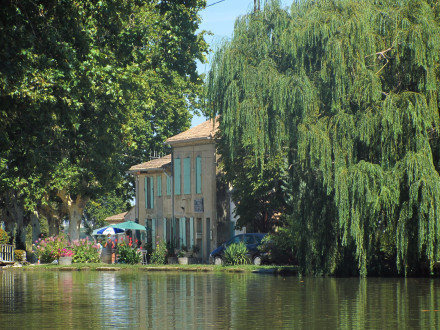
Canal du Midi, écluse (double) de Puichéric, maison éclusière, commune de Puichéric, Aude.
Photo prise le jeudi 16 aout 2012. 136 km 740 de la Garonne. Altitude : 57 m. 49e écluse sur le Canal à franchir par les navigants depuis son extrèmité occidentale à Toulouse. 51e écluse à l'origine sur le Canal avant les années 70. 50e écluse si l'on ne compte pas l'écluse de Garonne, la ou a été posée la première pierre du Canal du Midi, guère usitée (mais qui a conservé ses portes éclusières) et commune aux canux du Midi, Latéral à la Garonne et de Brienne). 49e écluse si on ôte aussi du décompte l'ancienne écluse Matabiau à Toulouse, qui a perdu sa fonction éclusière lors de la modernisation du Canal dans les années 70. Pour en savoir plus sur Puichéric : www.canaldumidi.com/Minervois/Puicheric/Puicheric.php Sur ce lien, un très bel album photo du Canal du Midi en Minervois : www.flickr.com/photos/agartapictures/sets/72157626837474287/ Localisation sur wikimapia : wikimapia.org/#lat=43.2245842&lon=2.6161976&z=15&...
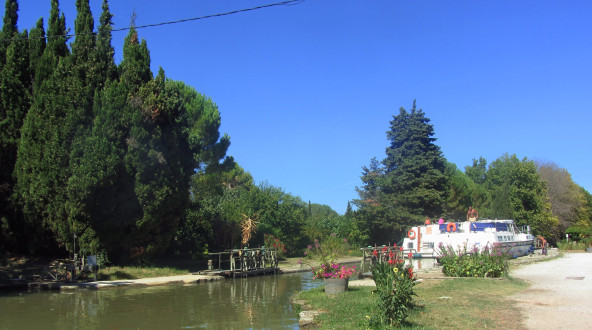
Canal du Midi, écluse (double) de Puichéric, commune de Puichéric, Aude.
Photo prise le jeudi 16 aout 2012. 136 km 740 de la Garonne. Altitude : 57 m. 49e écluse sur le Canal à franchir par les navigants depuis son extrèmité occidentale à Toulouse. 51e écluse à l'origine sur le Canal avant les années 70. 50e écluse si l'on ne compte pas l'écluse de Garonne, la ou a été posée la première pierre du Canal du Midi, guère usitée (mais qui a conservé ses portes éclusières) et commune aux canux du Midi, Latéral à la Garonne et de Brienne). 49e écluse si on ôte aussi du décompte l'ancienne écluse Matabiau à Toulouse, qui a perdu sa fonction éclusière lors de la modernisation du Canal dans les années 70. Pour en savoir plus sur Puichéric : www.canaldumidi.com/Minervois/Puicheric/Puicheric.php Sur ce lien, un très bel album photo du Canal du Midi en Minervois : www.flickr.com/photos/agartapictures/sets/72157626837474287/ Localisation sur wikimapia : wikimapia.org/#lat=43.2245842&lon=2.6161976&z=15&...
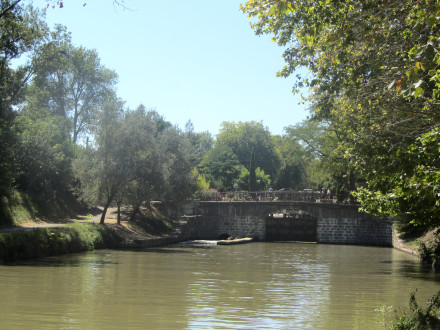
Canal du Midi, écluse (double) de l'Aiguille (sens Etang de Thau Toulouse), commune de Puichéric, Aude.
Photo prise le jeudi 16 aout 2012. 133 km 707 de la Garonne. Altitude : 59 m. 48e écluse sur le Canal à franchir par les navigants depuis son extrèmité occidentale à Toulouse. 50e écluse à l'origine sur le Canal avant les années 70. 49e écluse si l'on ne compte pas l'écluse de Garonne, la ou a été posée la première pierre du Canal du Midi, guère usitée (mais qui a conservé ses portes éclusières) et commune aux canux du Midi, Latéral à la Garonne et de Brienne). 48e écluse si on ôte aussi du décompte l'ancienne écluse Matabiau à Toulouse, qui a perdu sa fonction éclusière lors de la modernisation du Canal dans les années 70. L'écluse la mieux décorée du Canal. Une exposition permanente de sculptures réalisées à partir de matériaux de récupération. Des liens sur Joël Barthès, éclusier depuis 1982 qui non seulement à le mieux entretenu et décoré les abords de l'écluse mais est aussi sculpteur : joel.barthes.pagesperso-orange.fr/index.htm malho.canalblog.com/archives/2012/03/22/23826435.html www.tourisme-haut-minervois.fr/diffusio/fr/faire-visiter/... Arrivée du 49e bief (bief de Puichéric) de 3 km 039 en provenance de l'écluse de Puichéric. Pour en savoir plus : www.canaldumidi.com/Minervois/Puicheric/Puicheric.php Sur ce lien, un très bel album photo du Canal du Midi en Minervois : www.flickr.com/photos/agartapictures/sets/72157626837474287/ Localisation sur wikimapia : www.wikimapia.org/#lat=43.2304623&lon=2.6088742&z...
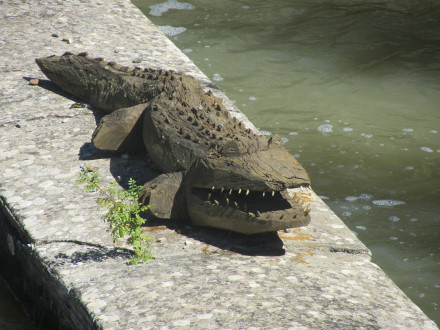
Canal du Midi, écluse (double) de l'Aiguille, un crocodile inoffensif, commune de Puichéric, Aude.
Photo prise le jeudi 16 aout 2012. 133 km 707 de la Garonne. Altitude : 59 m. 48e écluse sur le Canal à franchir par les navigants depuis son extrèmité occidentale à Toulouse. 50e écluse à l'origine sur le Canal avant les années 70. 49e écluse si l'on ne compte pas l'écluse de Garonne, la ou a été posée la première pierre du Canal du Midi, guère usitée (mais qui a conservé ses portes éclusières) et commune aux canux du Midi, Latéral à la Garonne et de Brienne). 48e écluse si on ôte aussi du décompte l'ancienne écluse Matabiau à Toulouse, qui a perdu sa fonction éclusière lors de la modernisation du Canal dans les années 70. L'écluse la mieux décorée du Canal. Une exposition permanente de sculptures réalisées à partir de matériaux de récupération. Des liens sur Joël Barthès, éclusier depuis 1982 qui non seulement à le mieux entretenu et décoré les abords de l'écluse mais est aussi sculpteur : joel.barthes.pagesperso-orange.fr/index.htm malho.canalblog.com/archives/2012/03/22/23826435.html www.tourisme-haut-minervois.fr/diffusio/fr/faire-visiter/... Pour en savoir plus : www.canaldumidi.com/Minervois/Puicheric/Puicheric.php Sur ce lien, un très bel album photo du Canal du Midi en Minervois : www.flickr.com/photos/agartapictures/sets/72157626837474287/ Localisation sur wikimapia : www.wikimapia.org/#lat=43.2304623&lon=2.6088742&z...
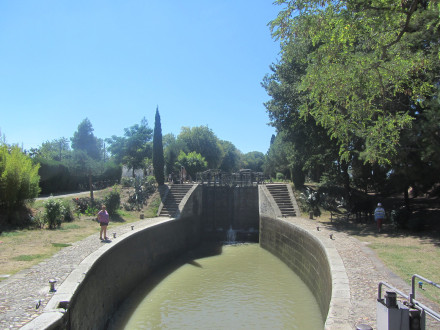
Canal du Midi, écluse (double) de l'Aiguille, commune de Puichéric, Aude.
Photo prise le jeudi 16 aout 2012. 133 km 707 de la Garonne. Altitude : 59 m. 48e écluse sur le Canal à franchir par les navigants depuis son extrèmité occidentale à Toulouse. 50e écluse à l'origine sur le Canal avant les années 70. 49e écluse si l'on ne compte pas l'écluse de Garonne, la ou a été posée la première pierre du Canal du Midi, guère usitée (mais qui a conservé ses portes éclusières) et commune aux canux du Midi, Latéral à la Garonne et de Brienne). 48e écluse si on ôte aussi du décompte l'ancienne écluse Matabiau à Toulouse, qui a perdu sa fonction éclusière lors de la modernisation du Canal dans les années 70. L'écluse la mieux décorée du Canal. Une exposition permanente de sculptures réalisées à partir de matériaux de récupération. Des liens sur Joël Barthès, éclusier depuis 1982 qui non seulement à le mieux entretenu et décoré les abords de l'écluse mais est aussi sculpteur : joel.barthes.pagesperso-orange.fr/index.htm malho.canalblog.com/archives/2012/03/22/23826435.html www.tourisme-haut-minervois.fr/diffusio/fr/faire-visiter/... Pour en savoir plus : www.canaldumidi.com/Minervois/Puicheric/Puicheric.php Sur ce lien, un très bel album photo du Canal du Midi en Minervois : www.flickr.com/photos/agartapictures/sets/72157626837474287/ Localisation sur wikimapia : www.wikimapia.org/#lat=43.2304623&lon=2.6088742&z...
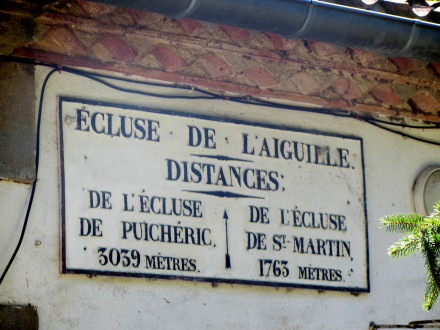
Canal du Midi, écluse (double) de l'Aiguille, plaque de la maison éclusière, commune de Puichéric, Aude.
Photo prise le jeudi 16 aout 2012. 133 km 707 de la Garonne. Altitude : 59 m. 48e écluse sur le Canal à franchir par les navigants depuis son extrèmité occidentale à Toulouse. 50e écluse à l'origine sur le Canal avant les années 70. 49e écluse si l'on ne compte pas l'écluse de Garonne, la ou a été posée la première pierre du Canal du Midi, guère usitée (mais qui a conservé ses portes éclusières) et commune aux canux du Midi, Latéral à la Garonne et de Brienne). 48e écluse si on ôte aussi du décompte l'ancienne écluse Matabiau à Toulouse, qui a perdu sa fonction éclusière lors de la modernisation du Canal dans les années 70. L'écluse la mieux décorée du Canal. Une exposition permanente de sculptures réalisées à partir de matériaux de récupération. Des liens sur Joël Barthès, éclusier depuis 1982 qui non seulement à le mieux entretenu et décoré les abords de l'écluse mais est aussi sculpteur : joel.barthes.pagesperso-orange.fr/index.htm malho.canalblog.com/archives/2012/03/22/23826435.html www.tourisme-haut-minervois.fr/diffusio/fr/faire-visiter/... Pour en savoir plus : www.canaldumidi.com/Minervois/Puicheric/Puicheric.php Sur ce lien, un très bel album photo du Canal du Midi en Minervois : www.flickr.com/photos/agartapictures/sets/72157626837474287/ Localisation sur wikimapia : www.wikimapia.org/#lat=43.2304623&lon=2.6088742&z...

Canal du Midi, écluse (double) de l'Aiguille, maison éclusière, commune de Puichéric, Aude.
Photo prise le jeudi 16 aout 2012. 133 km 707 de la Garonne. Altitude : 59 m. 48e écluse sur le Canal à franchir par les navigants depuis son extrèmité occidentale à Toulouse. 50e écluse à l'origine sur le Canal avant les années 70. 49e écluse si l'on ne compte pas l'écluse de Garonne, la ou a été posée la première pierre du Canal du Midi, guère usitée (mais qui a conservé ses portes éclusières) et commune aux canux du Midi, Latéral à la Garonne et de Brienne). 48e écluse si on ôte aussi du décompte l'ancienne écluse Matabiau à Toulouse, qui a perdu sa fonction éclusière lors de la modernisation du Canal dans les années 70. L'écluse la mieux décorée du Canal. Une exposition permanente de sculptures réalisées à partir de matériaux de récupération. Des liens sur Joël Barthès, éclusier depuis 1982 qui non seulement à le mieux entretenu et décoré les abords de l'écluse mais est aussi sculpteur : joel.barthes.pagesperso-orange.fr/index.htm malho.canalblog.com/archives/2012/03/22/23826435.html www.tourisme-haut-minervois.fr/diffusio/fr/faire-visiter/... Pour en savoir plus : www.canaldumidi.com/Minervois/Puicheric/Puicheric.php Sur ce lien, un très bel album photo du Canal du Midi en Minervois : www.flickr.com/photos/agartapictures/sets/72157626837474287/ Localisation sur wikimapia : www.wikimapia.org/#lat=43.2304623&lon=2.6088742&z...
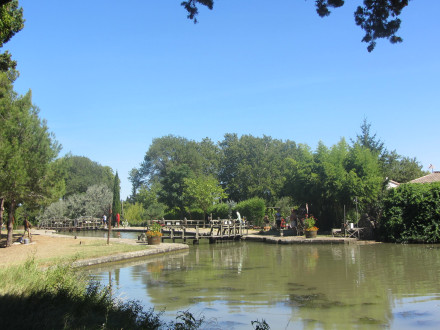
Canal du Midi, écluse (double) de l'Aiguille, commune de Puichéric, Aude.
Photo prise le jeudi 16 aout 2012. 133 km 707 de la Garonne. Altitude : 59 m. 48e écluse sur le Canal à franchir par les navigants depuis son extrèmité occidentale à Toulouse. 50e écluse à l'origine sur le Canal avant les années 70. 49e écluse si l'on ne compte pas l'écluse de Garonne, la ou a été posée la première pierre du Canal du Midi, guère usitée (mais qui a conservé ses portes éclusières) et commune aux canux du Midi, Latéral à la Garonne et de Brienne). 48e écluse si on ôte aussi du décompte l'ancienne écluse Matabiau à Toulouse, qui a perdu sa fonction éclusière lors de la modernisation du Canal dans les années 70. L'écluse la mieux décorée du Canal. Une exposition permanente de sculptures réalisées à partir de matériaux de récupération. www.canaldumidi.com/Minervois/Puicheric/Puicheric.php Des liens sur Joël Barthès, éclusier depuis 1982 qui non seulement à le mieux entretenu et décoré les abords de l'écluse mais est aussi sculpteur : joel.barthes.pagesperso-orange.fr/index.htm malho.canalblog.com/archives/2012/03/22/23826435.html www.tourisme-haut-minervois.fr/diffusio/fr/faire-visiter/... Pour en savoir plus : www.canaldumidi.com/Minervois/Puicheric/Puicheric.php Sur ce lien, un très bel album photo du Canal du Midi en Minervois : www.flickr.com/photos/agartapictures/sets/72157626837474287/ Localisation sur wikimapia : www.wikimapia.org/#lat=43.2304623&lon=2.6088742&z...
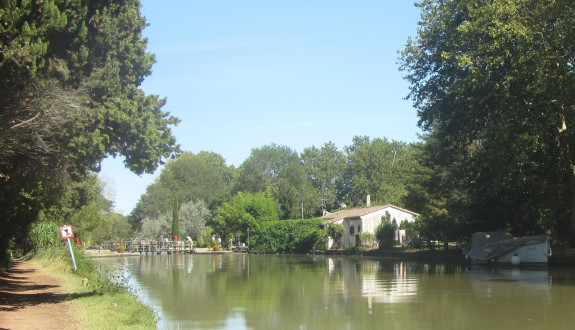
Canal du Midi, écluse (double) de l'Aiguille, commune de Puichéric, Aude.
Photo prise le jeudi 16 aout 2012. 133 km 707 de la Garonne. Altitude : 59 m. 48e écluse sur le Canal à franchir par les navigants depuis son extrèmité occidentale à Toulouse. 50e écluse à l'origine sur le Canal avant les années 70. 49e écluse si l'on ne compte pas l'écluse de Garonne, la ou a été posée la première pierre du Canal du Midi, guère usitée (mais qui a conservé ses portes éclusières) et commune aux canux du Midi, Latéral à la Garonne et de Brienne). 48e écluse si on ôte aussi du décompte l'ancienne écluse Matabiau à Toulouse, qui a perdu sa fonction éclusière lors de la modernisation du Canal dans les années 70. L'écluse la mieux décorée du Canal. Une exposition permanente de sculptures réalisées à partir de matériaux de récupération. Des liens sur Joël Barthès, éclusier depuis 1982 qui non seulement à le mieux entretenu et décoré les abords de l'écluse mais est aussi sculpteur : joel.barthes.pagesperso-orange.fr/index.htm malho.canalblog.com/archives/2012/03/22/23826435.html www.tourisme-haut-minervois.fr/diffusio/fr/faire-visiter/... Pour en savoir plus : www.canaldumidi.com/Minervois/Puicheric/Puicheric.php Sur ce lien, un très bel album photo du Canal du Midi en Minervois : www.flickr.com/photos/agartapictures/sets/72157626837474287/ Localisation sur wikimapia : www.wikimapia.org/#lat=43.2304623&lon=2.6088742&z...
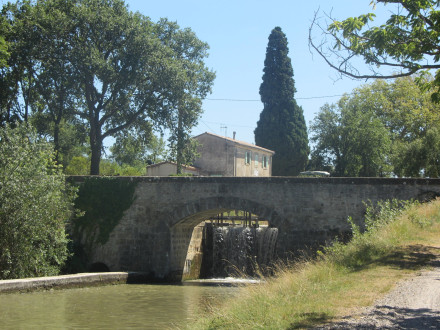
Canal du Midi, écluse de Saint Martin (sens Etang de Thau Toulouse), commune de Blomac, Aude.
Photo prise le jeudi 16 aout 2012. Ecluse la plus étroite du Canal. 47e écluse sur le Canal à franchir par les navigants depuis son extrèmité occidentale à Toulouse. 49e écluse à l'origine sur le Canal avant les années 70. 48e écluse si l'on ne compte pas l'écluse de Garonne, la ou a été posée la première pierre du Canal du Midi, guère usitée (mais qui a conservé ses portes éclusières) et commune aux canux du Midi, Latéral à la Garonne et de Brienne). 47e écluse si on ôte aussi du décompte l'ancienne écluse Matabiau à Toulouse, qui a perdu sa fonction éclusière lors de la modernisation du Canal dans les années 70. 131 km 344 de la Garonne. Altitude : 67 m. Arrivée du 49e bief (bief de l'Aiguille) de 1 km 763 en provenance de l'écluse de l'Aiguille. Sur ce lien, un très bel album photo du Canal du Midi en Minervois : www.flickr.com/photos/agartapictures/sets/72157626837474287/ Localisation sur wikimapia : wikimapia.org/#lat=43.2099787&lon=2.5721235&z=15&...
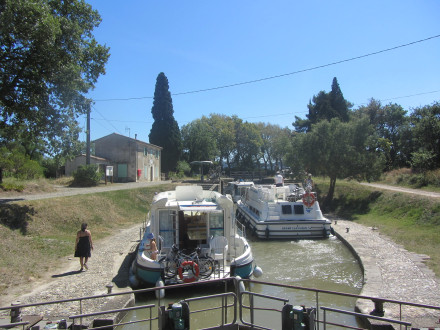
Canal du Midi, écluse de Saint Martin, commune de Blomac, Aude.
Photo prise le jeudi 16 aout 2012. Ecluse la plus étroite du Canal. 47e écluse sur le Canal à franchir par les navigants depuis son extrèmité occidentale à Toulouse. 49e écluse à l'origine sur le Canal avant les années 70. 48e écluse si l'on ne compte pas l'écluse de Garonne, la ou a été posée la première pierre du Canal du Midi, guère usitée (mais qui a conservé ses portes éclusières) et commune aux canux du Midi, Latéral à la Garonne et de Brienne). 47e écluse si on ôte aussi du décompte l'ancienne écluse Matabiau à Toulouse, qui a perdu sa fonction éclusière lors de la modernisation du Canal dans les années 70. 131 km 344 de la Garonne. Altitude : 67 m. Sur ce lien, un très bel album photo du Canal du Midi en Minervois : www.flickr.com/photos/agartapictures/sets/72157626837474287/ Localisation sur wikimapia : wikimapia.org/#lat=43.2099787&lon=2.5721235&z=15&...
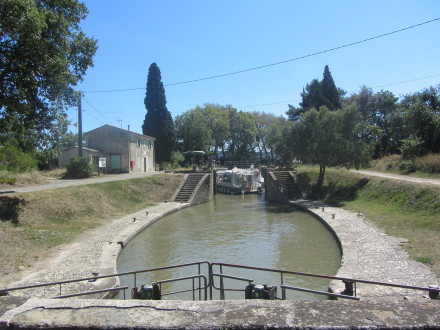
Canal du Midi, écluse de Saint Martin, commune de Blomac, Aude.
Photo prise le jeudi 16 aout 2012. Ecluse la plus étroite du Canal. 47e écluse sur le Canal à franchir par les navigants depuis son extrèmité occidentale à Toulouse. 49e écluse à l'origine sur le Canal avant les années 70. 48e écluse si l'on ne compte pas l'écluse de Garonne, la ou a été posée la première pierre du Canal du Midi, guère usitée (mais qui a conservé ses portes éclusières) et commune aux canux du Midi, Latéral à la Garonne et de Brienne). 47e écluse si on ôte aussi du décompte l'ancienne écluse Matabiau à Toulouse, qui a perdu sa fonction éclusière lors de la modernisation du Canal dans les années 70. 131 km 344 de la Garonne. Altitude : 67 m. Sur ce lien, un très bel album photo du Canal du Midi en Minervois : www.flickr.com/photos/agartapictures/sets/72157626837474287/ Localisation sur wikimapia : wikimapia.org/#lat=43.2099787&lon=2.5721235&z=15&...
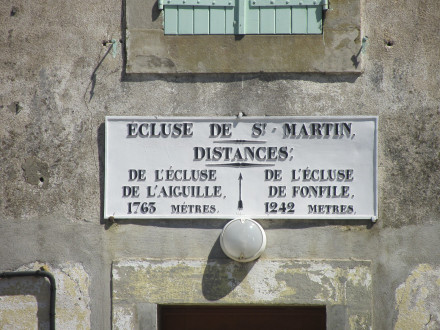
Canal du Midi, écluse de Saint Martin, plaque de la maison éclusière, commune de Blomac, Aude.
Photo prise le jeudi 16 aout 2012. Ecluse la plus étroite du Canal. 47e écluse sur le Canal à franchir par les navigants depuis son extrèmité occidentale à Toulouse. 49e écluse à l'origine sur le Canal avant les années 70. 48e écluse si l'on ne compte pas l'écluse de Garonne, la ou a été posée la première pierre du Canal du Midi, guère usitée (mais qui a conservé ses portes éclusières) et commune aux canux du Midi, Latéral à la Garonne et de Brienne). 47e écluse si on ôte aussi du décompte l'ancienne écluse Matabiau à Toulouse, qui a perdu sa fonction éclusière lors de la modernisation du Canal dans les années 70. 131 km 344 de la Garonne. Altitude : 67 m. Sur ce lien, un très bel album photo du Canal du Midi en Minervois : www.flickr.com/photos/agartapictures/sets/72157626837474287/ Localisation sur wikimapia : wikimapia.org/#lat=43.2099787&lon=2.5721235&z=15&...
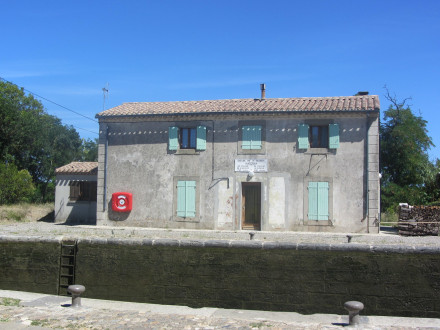
Canal du Midi, écluse de Saint Martin, maison éclusière, commune de Blomac, Aude.
Photo prise le jeudi 16 aout 2012. Ecluse la plus étroite du Canal. 47e écluse sur le Canal à franchir par les navigants depuis son extrèmité occidentale à Toulouse. 49e écluse à l'origine sur le Canal avant les années 70. 48e écluse si l'on ne compte pas l'écluse de Garonne, la ou a été posée la première pierre du Canal du Midi, guère usitée (mais qui a conservé ses portes éclusières) et commune aux canux du Midi, Latéral à la Garonne et de Brienne). 47e écluse si on ôte aussi du décompte l'ancienne écluse Matabiau à Toulouse, qui a perdu sa fonction éclusière lors de la modernisation du Canal dans les années 70. 131 km 344 de la Garonne. Altitude : 67 m. Sur ce lien, un très bel album photo du Canal du Midi en Minervois : www.flickr.com/photos/agartapictures/sets/72157626837474287/ Localisation sur wikimapia : wikimapia.org/#lat=43.2099787&lon=2.5721235&z=15&...
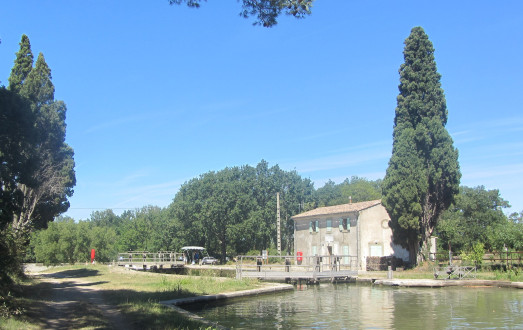
Canal du Midi, écluse de Saint Martin, commune de Blomac, Aude.
Photo prise le jeudi 16 aout 2012. Ecluse la plus étroite du Canal. 47e écluse sur le Canal à franchir par les navigants depuis son extrèmité occidentale à Toulouse. 49e écluse à l'origine sur le Canal avant les années 70. 48e écluse si l'on ne compte pas l'écluse de Garonne, la ou a été posée la première pierre du Canal du Midi, guère usitée (mais qui a conservé ses portes éclusières) et commune aux canux du Midi, Latéral à la Garonne et de Brienne). 47e écluse si on ôte aussi du décompte l'ancienne écluse Matabiau à Toulouse, qui a perdu sa fonction éclusière lors de la modernisation du Canal dans les années 70. 131 km 344 de la Garonne. Altitude : 67 m. Sur ce lien, un très bel album photo du Canal du Midi en Minervois : www.flickr.com/photos/agartapictures/sets/72157626837474287/ Localisation sur wikimapia : wikimapia.org/#lat=43.2099787&lon=2.5721235&z=15&...
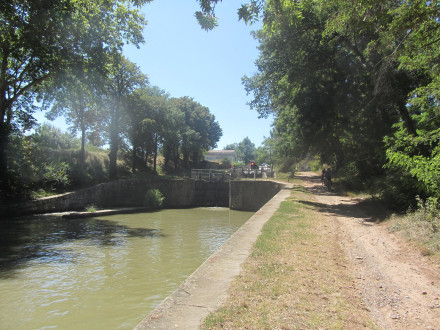
Canal du Midi, écluse (triple) de Fonfile (sens Etang de Thau Toulouse), commune de Blomac, Aude.
Photo prise le jeudi 16 aout 2012. 130 km 702 de la Garonne. Altitude : 76 m. 46e écluse sur le Canal à franchir par les navigants depuis son extrèmité occidentale à Toulouse. 48e écluse à l'origine sur le Canal avant les années 70. 47e écluse si l'on ne compte pas l'écluse de Garonne, la ou a été posée la première pierre du Canal du Midi, guère usitée (mais qui a conservé ses portes éclusières) et commune aux canux du Midi, Latéral à la Garonne et de Brienne). 46e écluse si on ôte aussi du décompte l'ancienne écluse Matabiau à Toulouse, qui a perdu sa fonction éclusière lors de la modernisation du Canal dans les années 70. Arrivée du 47e bief (bief de Saint Martin) de 1 km 242 en provenance de l'écluse de Saint Martin. Sur ce lien, un très bel album photo du Canal du Midi en Minervois : www.flickr.com/photos/agartapictures/sets/72157626837474287/ Localisation sur wikimapia : wikimapia.org/#lat=43.2099787&lon=2.5721235&z=15&...
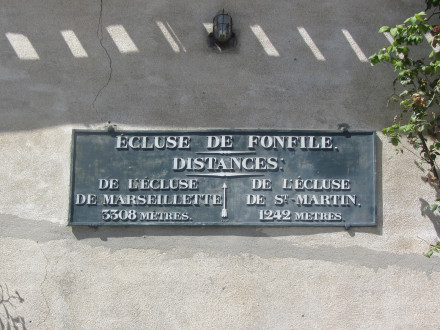
Canal du Midi, écluse (triple) de Fonfile, maison éclusière, commune de Blomac, Aude.
Photo prise le jeudi 16 aout 2012. 130 km 702 de la Garonne. Altitude : 76 m. 46e écluse sur le Canal à franchir par les navigants depuis son extrèmité occidentale à Toulouse. 48e écluse à l'origine sur le Canal avant les années 70. 47e écluse si l'on ne compte pas l'écluse de Garonne, la ou a été posée la première pierre du Canal du Midi, guère usitée (mais qui a conservé ses portes éclusières) et commune aux canux du Midi, Latéral à la Garonne et de Brienne). 46e écluse si on ôte aussi du décompte l'ancienne écluse Matabiau à Toulouse, qui a perdu sa fonction éclusière lors de la modernisation du Canal dans les années 70. Sur ce lien, un très bel album photo du Canal du Midi en Minervois : www.flickr.com/photos/agartapictures/sets/72157626837474287/ Localisation sur wikimapia : wikimapia.org/#lat=43.2099787&lon=2.5721235&z=15&...
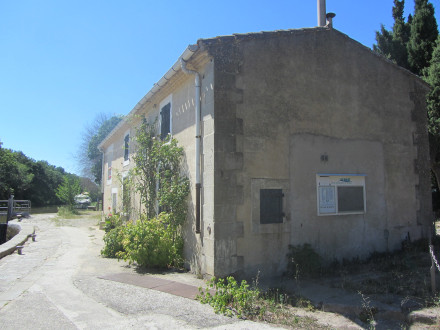
Canal du Midi, écluse (triple) de Fonfile, maison éclusière, commune de Blomac, Aude.
Photo prise le jeudi 16 aout 2012. 130 km 702 de la Garonne. Altitude : 76 m. 46e écluse sur le Canal à franchir par les navigants depuis son extrèmité occidentale à Toulouse. 48e écluse à l'origine sur le Canal avant les années 70. 47e écluse si l'on ne compte pas l'écluse de Garonne, la ou a été posée la première pierre du Canal du Midi, guère usitée (mais qui a conservé ses portes éclusières) et commune aux canux du Midi, Latéral à la Garonne et de Brienne). 46e écluse si on ôte aussi du décompte l'ancienne écluse Matabiau à Toulouse, qui a perdu sa fonction éclusière lors de la modernisation du Canal dans les années 70. Sur ce lien, un très bel album photo du Canal du Midi en Minervois : www.flickr.com/photos/agartapictures/sets/72157626837474287/ Localisation sur wikimapia : wikimapia.org/#lat=43.2099787&lon=2.5721235&z=15&...
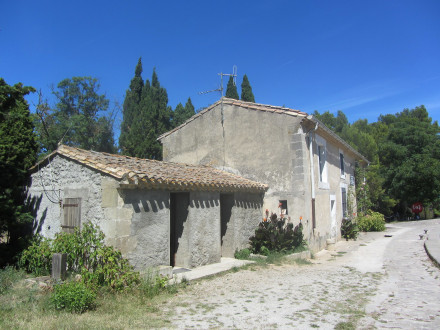
Canal du Midi, écluse (triple) de Fonfile, maison éclusière, commune de Blomac, Aude.
Photo prise le jeudi 16 aout 2012. 130 km 702 de la Garonne. Altitude : 76 m. 46e écluse sur le Canal à franchir par les navigants depuis son extrèmité occidentale à Toulouse. 48e écluse à l'origine sur le Canal avant les années 70. 47e écluse si l'on ne compte pas l'écluse de Garonne, la ou a été posée la première pierre du Canal du Midi, guère usitée (mais qui a conservé ses portes éclusières) et commune aux canux du Midi, Latéral à la Garonne et de Brienne). 46e écluse si on ôte aussi du décompte l'ancienne écluse Matabiau à Toulouse, qui a perdu sa fonction éclusière lors de la modernisation du Canal dans les années 70. Sur ce lien, un très bel album photo du Canal du Midi en Minervois : www.flickr.com/photos/agartapictures/sets/72157626837474287/ Localisation sur wikimapia : wikimapia.org/#lat=43.2099787&lon=2.5721235&z=15&...
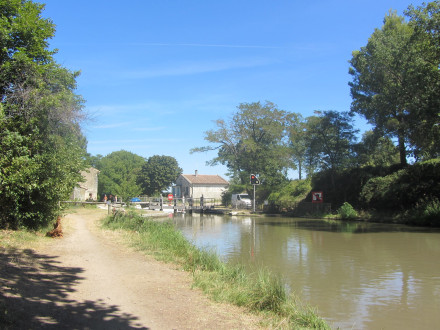
Canal du Midi, écluse (triple) de Fonfile, commune de Blomac, Aude.
Photo prise le jeudi 16 aout 2012. 130 km 702 de la Garonne. Altitude : 76 m. 46e écluse sur le Canal à franchir par les navigants depuis son extrèmité occidentale à Toulouse. 48e écluse à l'origine sur le Canal avant les années 70. 47e écluse si l'on ne compte pas l'écluse de Garonne, la ou a été posée la première pierre du Canal du Midi, guère usitée (mais qui a conservé ses portes éclusières) et commune aux canux du Midi, Latéral à la Garonne et de Brienne). 46e écluse si on ôte aussi du décompte l'ancienne écluse Matabiau à Toulouse, qui a perdu sa fonction éclusière lors de la modernisation du Canal dans les années 70. Sur ce lien, un très bel album photo du Canal du Midi en Minervois : www.flickr.com/photos/agartapictures/sets/72157626837474287/ Localisation sur wikimapia : wikimapia.org/#lat=43.2099787&lon=2.5721235&z=15&...
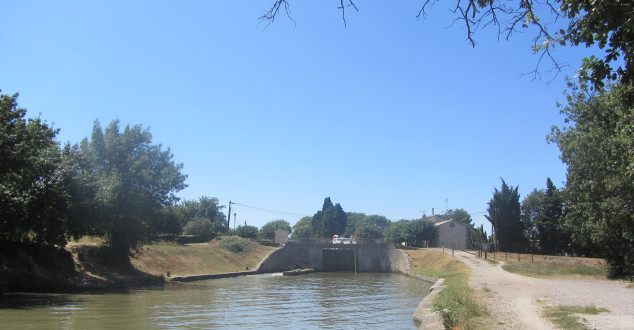
Canal du Midi, écluse (simple) de Marseillette (sens Etang de Thau Toulouse), commune de Marseillette, Aude, première écluse dans le Minervois.
Photo prise le jeudi 16 aout 2012. Arrivée du 46e bief (bief de Fonfile) de 3 km 308 en provenance de l'écluse de Fonfile. 127 km 394 de la Garonne. Altitude : 79 m. 45e écluse sur le Canal à franchir par les navigants depuis son extrèmité occidentale à Toulouse. 47e écluse à l'origine sur le Canal avant les années 70. 46e écluse si l'on ne compte pas l'écluse de Garonne, la ou a été posée la première pierre du Canal du Midi, guère usitée (mais qui a conservé ses portes éclusières) et commune aux canux du Midi, Latéral à la Garonne et de Brienne). 45e écluse si on ôte aussi du décompte l'ancienne écluse Matabiau à Toulouse, qui a perdu sa fonction éclusière lors de la modernisation du Canal dans les années 70. Pour en savoir plus : www.canaldumidi.com/Minervois/Marseillette/Marseillette.php Sur ce lien, un très bel album photo du Canal du Midi en Minervois : www.flickr.com/photos/agartapictures/sets/72157626837474287/ Localisation sur wikimapia : wikimapia.org/#lat=43.2099787&lon=2.5721235&z=15&...
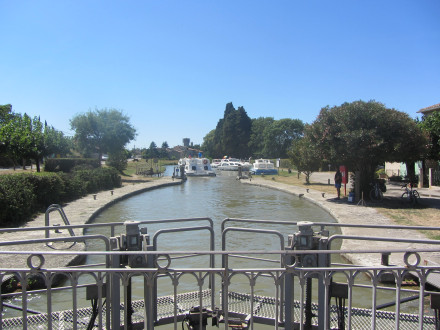
Canal du Midi, écluse (simple) de Marseillette, commune de Marseillette, Aude, première écluse dans le Minervois.
Photo prise le jeudi 16 aout 2012. 127 km 394 de la Garonne. Altitude : 79 m. 45e écluse sur le Canal à franchir par les navigants depuis son extrèmité occidentale à Toulouse. 47e écluse à l'origine sur le Canal avant les années 70. 46e écluse si l'on ne compte pas l'écluse de Garonne, la ou a été posée la première pierre du Canal du Midi, guère usitée (mais qui a conservé ses portes éclusières) et commune aux canux du Midi, Latéral à la Garonne et de Brienne). 45e écluse si on ôte aussi du décompte l'ancienne écluse Matabiau à Toulouse, qui a perdu sa fonction éclusière lors de la modernisation du Canal dans les années 70. Pour en savoir plus : www.canaldumidi.com/Minervois/Marseillette/Marseillette.php Sur ce lien, un très bel album photo du Canal du Midi en Minervois : www.flickr.com/photos/agartapictures/sets/72157626837474287/ Localisation sur wikimapia : wikimapia.org/#lat=43.2099787&lon=2.5721235&z=15&...
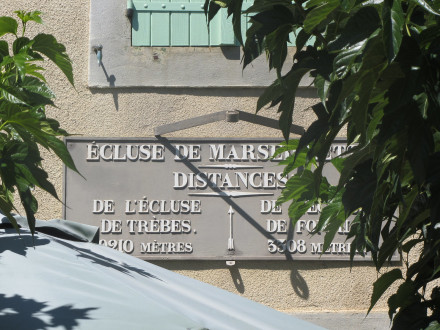
Canal du Midi, écluse (simple) de Marseillette, plaque de la maison éclusière, commune de Marseillette, Aude, première écluse dans le Minervois.
Photo prise le jeudi 16 aout 2012. 127 km 394 de la Garonne. Altitude : 79 m. 45e écluse sur le Canal à franchir par les navigants depuis son extrèmité occidentale à Toulouse. 47e écluse à l'origine sur le Canal avant les années 70. 46e écluse si l'on ne compte pas l'écluse de Garonne, la ou a été posée la première pierre du Canal du Midi, guère usitée (mais qui a conservé ses portes éclusières) et commune aux canux du Midi, Latéral à la Garonne et de Brienne). 45e écluse si on ôte aussi du décompte l'ancienne écluse Matabiau à Toulouse, qui a perdu sa fonction éclusière lors de la modernisation du Canal dans les années 70. Pour en savoir plus : www.canaldumidi.com/Minervois/Marseillette/Marseillette.php Sur ce lien, un très bel album photo du Canal du Midi en Minervois : www.flickr.com/photos/agartapictures/sets/72157626837474287/ Localisation sur wikimapia : wikimapia.org/#lat=43.2099787&lon=2.5721235&z=15&...
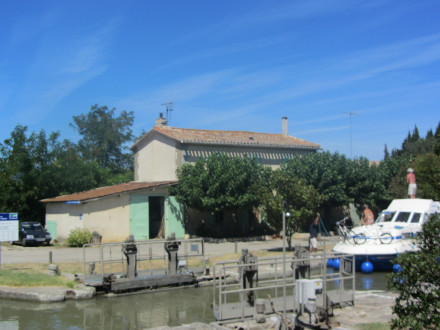
Canal du Midi, écluse (simple) de Marseillette, maison éclusière, commune de Marseillette, Aude, première écluse dans le Minervois.
Photo prise le jeudi 16 aout 2012. 127 km 394 de la Garonne. Altitude : 79 m. 45e écluse sur le Canal à franchir par les navigants depuis son extrèmité occidentale à Toulouse. 47e écluse à l'origine sur le Canal avant les années 70. 46e écluse si l'on ne compte pas l'écluse de Garonne, la ou a été posée la première pierre du Canal du Midi, guère usitée (mais qui a conservé ses portes éclusières) et commune aux canux du Midi, Latéral à la Garonne et de Brienne). 45e écluse si on ôte aussi du décompte l'ancienne écluse Matabiau à Toulouse, qui a perdu sa fonction éclusière lors de la modernisation du Canal dans les années 70. Pour en savoir plus : www.canaldumidi.com/Minervois/Marseillette/Marseillette.php Sur ce lien, un très bel album photo du Canal du Midi en Minervois : www.flickr.com/photos/agartapictures/sets/72157626837474287/ Localisation sur wikimapia : wikimapia.org/#lat=43.2099787&lon=2.5721235&z=15&...
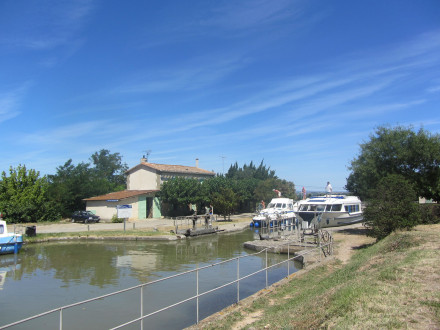
Canal du Midi, écluse (simple) de Marseillette, commune de Marseillette, Aude, première écluse dans le Minervois.
Photo prise le jeudi 16 aout 2012. 127 km 394 de la Garonne. Altitude : 79 m. 45e écluse sur le Canal à franchir par les navigants depuis son extrèmité occidentale à Toulouse. 47e écluse à l'origine sur le Canal avant les années 70. 46e écluse si l'on ne compte pas l'écluse de Garonne, la ou a été posée la première pierre du Canal du Midi, guère usitée (mais qui a conservé ses portes éclusières) et commune aux canux du Midi, Latéral à la Garonne et de Brienne). 45e écluse si on ôte aussi du décompte l'ancienne écluse Matabiau à Toulouse, qui a perdu sa fonction éclusière lors de la modernisation du Canal dans les années 70. Pour en savoir plus : www.canaldumidi.com/Minervois/Marseillette/Marseillette.php Sur ce lien, un très bel album photo du Canal du Midi en Minervois : www.flickr.com/photos/agartapictures/sets/72157626837474287/ Localisation sur wikimapia : wikimapia.org/#lat=43.2099787&lon=2.5721235&z=15&...
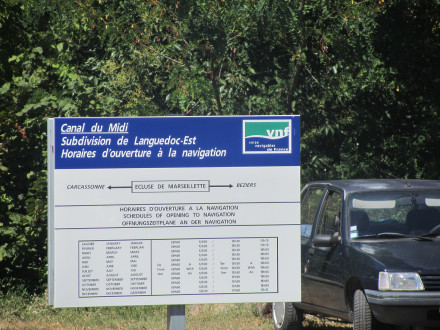
Canal du Midi, écluse (simple) de Marseillette, commune de Marseillette, Aude, première écluse dans le Minervois.
Photo prise le jeudi 16 aout 2012. 127 km 394 de la Garonne. Altitude : 79 m. 45e écluse sur le Canal à franchir par les navigants depuis son extrèmité occidentale à Toulouse. 47e écluse à l'origine sur le Canal avant les années 70. 46e écluse si l'on ne compte pas l'écluse de Garonne, la ou a été posée la première pierre du Canal du Midi, guère usitée (mais qui a conservé ses portes éclusières) et commune aux canux du Midi, Latéral à la Garonne et de Brienne). 45e écluse si on ôte aussi du décompte l'ancienne écluse Matabiau à Toulouse, qui a perdu sa fonction éclusière lors de la modernisation du Canal dans les années 70. Sur ce lien, un très bel album photo du Canal du Midi en Minervois : www.flickr.com/photos/agartapictures/sets/72157626837474287/ Localisation sur wikimapia : wikimapia.org/#lat=43.2099787&lon=2.5721235&z=15&...
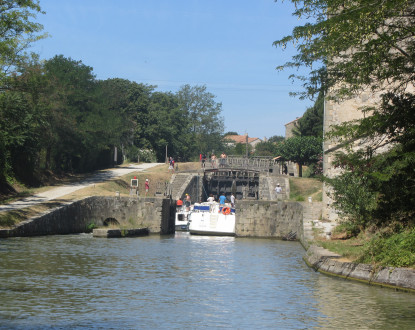
Canal du Midi, écluse (triple) de Trèbes (sens Etang de Thau Toulouse)
Photo prise le jeudi 16 aout 2012. 118 km 184 de la Garonne. Altitude : 84 m. 44e écluse sur le Canal à franchir par les navigants depuis son extrèmité occidentale à Toulouse. 46e écluse à l'origine sur le Canal avant les années 70. 45e écluse si l'on ne compte pas l'écluse de Garonne, la ou a été posée la première pierre du Canal du Midi, guère usitée (mais qui a conservé ses portes éclusières) et commune aux canux du Midi, Latéral à la Garonne et de Brienne). 44e écluse si on ôte aussi du décompte l'ancienne écluse Matabiau à Toulouse, qui a perdu sa fonction éclusière lors de la modernisation du Canal dans les années 70. Autrefois le 2e arrêt du soir de la barque de la poste en provenance de Toulouse. www.canalmidi.com/aufildlo/barcpost.html L'écluse de Trèbes peinte par Yves Donval : www.canal-du-midi.org/rubriques/canal/architecture/trebes... Le site du peintre Yves Donval : donval-yves.com/ Pour en savoir plus sur le canal à Trèbes : www.canaldumidi.com/Carcassonnais/Trebes/Trebes.php Localisation sur wikimapia : wikimapia.org/#lat=43.2051459&lon=2.4919147&z=13&...
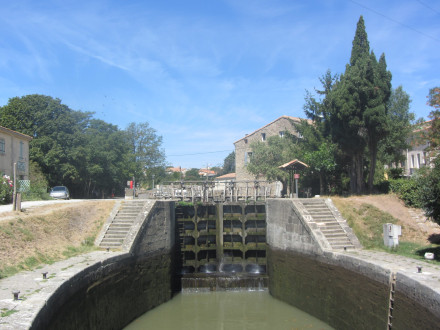
Canal du Midi, écluse (triple) de Trèbes, porte du Minervois.
Photo prise le jeudi 16 aout 2012. 118 km 184 de la Garonne. Altitude : 84 m. 44e écluse sur le Canal à franchir par les navigants depuis son extrèmité occidentale à Toulouse. 46e écluse à l'origine sur le Canal avant les années 70. 45e écluse si l'on ne compte pas l'écluse de Garonne, la ou a été posée la première pierre du Canal du Midi, guère usitée (mais qui a conservé ses portes éclusières) et commune aux canux du Midi, Latéral à la Garonne et de Brienne). 44e écluse si on ôte aussi du décompte l'ancienne écluse Matabiau à Toulouse, qui a perdu sa fonction éclusière lors de la modernisation du Canal dans les années 70. Autrefois le 2e arrêt du soir de la barque de la poste en provenance de Toulouse. www.canalmidi.com/aufildlo/barcpost.html Sur ce lien, une carte postale ancienne sur cet endroit : www.canalmidi.com/aufildlo/photanci/cpatrebes.html Pour en savoir plus sur le canal à Trèbes : www.canaldumidi.com/Carcassonnais/Trebes/Trebes.php Localisation sur wikimapia : wikimapia.org/#lat=43.2051459&lon=2.4919147&z=13&...
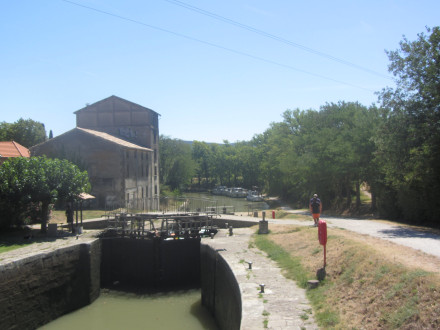
Canal du Midi, écluse (triple) de Trèbes, porte du Minervois.
Photo prise le jeudi 16 aout 2012. 118 km 184 de la Garonne. Altitude : 84 m. 44e écluse sur le Canal à franchir par les navigants depuis son extrèmité occidentale à Toulouse. 46e écluse à l'origine sur le Canal avant les années 70. 45e écluse si l'on ne compte pas l'écluse de Garonne, la ou a été posée la première pierre du Canal du Midi, guère usitée (mais qui a conservé ses portes éclusières) et commune aux canux du Midi, Latéral à la Garonne et de Brienne). 44e écluse si on ôte aussi du décompte l'ancienne écluse Matabiau à Toulouse, qui a perdu sa fonction éclusière lors de la modernisation du Canal dans les années 70. Autrefois le 2e arrêt du soir de la barque de la poste en provenance de Toulouse. www.canalmidi.com/aufildlo/barcpost.html Pour en savoir plus sur le canal à Trèbes : www.canaldumidi.com/Carcassonnais/Trebes/Trebes.php Localisation sur wikimapia : wikimapia.org/#lat=43.2179074&lon=2.4351806&z=14&...
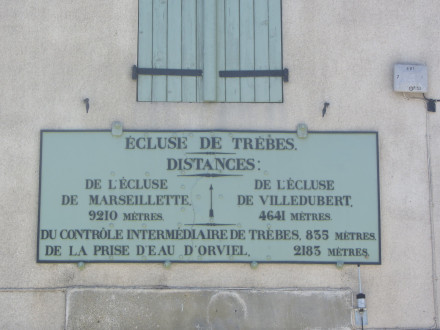
Canal du Midi, écluse (triple) de Trèbes, plaque de la maison éclusière.
Photo prise le jeudi 16 aout 2012. 118 km 184 de la Garonne. Altitude : 84 m. 44e écluse sur le Canal à franchir par les navigants depuis son extrèmité occidentale à Toulouse. 46e écluse à l'origine sur le Canal avant les années 70. 45e écluse si l'on ne compte pas l'écluse de Garonne, la ou a été posée la première pierre du Canal du Midi, guère usitée (mais qui a conservé ses portes éclusières) et commune aux canux du Midi, Latéral à la Garonne et de Brienne). 44e écluse si on ôte aussi du décompte l'ancienne écluse Matabiau à Toulouse, qui a perdu sa fonction éclusière lors de la modernisation du Canal dans les années 70. Autrefois le 2e arrêt du soir de la barque de la poste en provenance de Toulouse. www.canalmidi.com/aufildlo/barcpost.html Pour en savoir plus sur le canal à Trèbes : www.canaldumidi.com/Carcassonnais/Trebes/Trebes.php Localisation sur wikimapia : wikimapia.org/#lat=43.2179074&lon=2.4351806&z=14&...
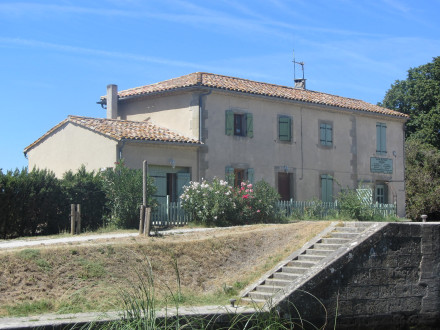
Canal du Midi, écluse (triple) de Trèbes, maison éclusière.
Photo prise le jeudi 16 aout 2012. 118 km 184 de la Garonne. Altitude : 84 m. 44e écluse sur le Canal à franchir par les navigants depuis son extrèmité occidentale à Toulouse. 46e écluse à l'origine sur le Canal avant les années 70. 45e écluse si l'on ne compte pas l'écluse de Garonne, la ou a été posée la première pierre du Canal du Midi, guère usitée (mais qui a conservé ses portes éclusières) et commune aux canux du Midi, Latéral à la Garonne et de Brienne). 44e écluse si on ôte aussi du décompte l'ancienne écluse Matabiau à Toulouse, qui a perdu sa fonction éclusière lors de la modernisation du Canal dans les années 70. Autrefois le 2e arrêt du soir de la barque de la poste en provenance de Toulouse. www.canalmidi.com/aufildlo/barcpost.html Pour en savoir plus sur le canal à Trèbes : www.canaldumidi.com/Carcassonnais/Trebes/Trebes.php Localisation sur wikimapia : wikimapia.org/#lat=43.2179074&lon=2.4351806&z=14&...
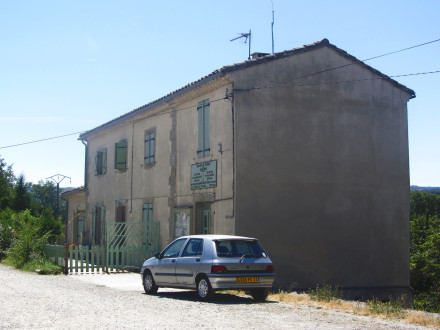
Canal du Midi, écluse (triple) de Trèbes, maison éclusière.
Photo prise le jeudi 16 aout 2012. 118 km 184 de la Garonne. Altitude : 84 m. 44e écluse sur le Canal à franchir par les navigants depuis son extrèmité occidentale à Toulouse. 46e écluse à l'origine sur le Canal avant les années 70. 45e écluse si l'on ne compte pas l'écluse de Garonne, la ou a été posée la première pierre du Canal du Midi, guère usitée (mais qui a conservé ses portes éclusières) et commune aux canux du Midi, Latéral à la Garonne et de Brienne). 44e écluse si on ôte aussi du décompte l'ancienne écluse Matabiau à Toulouse, qui a perdu sa fonction éclusière lors de la modernisation du Canal dans les années 70. Autrefois le 2e arrêt du soir de la barque de la poste en provenance de Toulouse. www.canalmidi.com/aufildlo/barcpost.html Pour en savoir plus sur le canal à Trèbes : www.canaldumidi.com/Carcassonnais/Trebes/Trebes.php Localisation sur wikimapia : wikimapia.org/#lat=43.2179074&lon=2.4351806&z=14&...
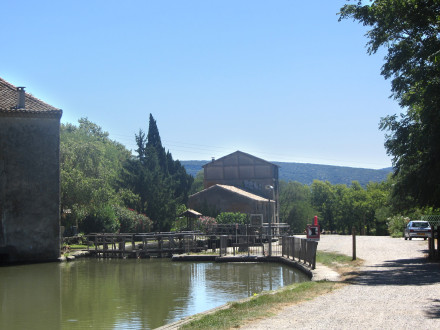
Canal du Midi, écluse (triple) de Trèbes, porte du Minervois.
Photo prise le jeudi 16 aout 2012. 118 km 184 de la Garonne. Altitude : 84 m. 44e écluse sur le Canal à franchir par les navigants depuis son extrèmité occidentale à Toulouse. 46e écluse à l'origine sur le Canal avant les années 70. 45e écluse si l'on ne compte pas l'écluse de Garonne, la ou a été posée la première pierre du Canal du Midi, guère usitée (mais qui a conservé ses portes éclusières) et commune aux canux du Midi, Latéral à la Garonne et de Brienne). 44e écluse si on ôte aussi du décompte l'ancienne écluse Matabiau à Toulouse, qui a perdu sa fonction éclusière lors de la modernisation du Canal dans les années 70. Autrefois le 2e arrêt du soir de la barque de la poste en provenance de Toulouse. www.canalmidi.com/aufildlo/barcpost.html Pour en savoir plus sur le canal à Trèbes : www.canaldumidi.com/Carcassonnais/Trebes/Trebes.php Localisation sur wikimapia : wikimapia.org/#lat=43.2179074&lon=2.4351806&z=14&...
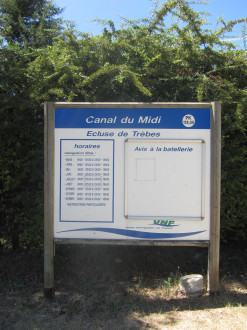
Canal du Midi, écluse (triple) de Trèbes.
Photo prise le jeudi 16 aout 2012. 118 km 184 de la Garonne. Altitude : 84 m. 44e écluse sur le Canal à franchir par les navigants depuis son extrèmité occidentale à Toulouse. 46e écluse à l'origine sur le Canal avant les années 70. 45e écluse si l'on ne compte pas l'écluse de Garonne, la ou a été posée la première pierre du Canal du Midi, guère usitée (mais qui a conservé ses portes éclusières) et commune aux canux du Midi, Latéral à la Garonne et de Brienne). 44e écluse si on ôte aussi du décompte l'ancienne écluse Matabiau à Toulouse, qui a perdu sa fonction éclusière lors de la modernisation du Canal dans les années 70. Autrefois le 2e arrêt du soir de la barque de la poste en provenance de Toulouse. www.canalmidi.com/aufildlo/barcpost.html Pour en savoir plus sur le canal à Trèbes : www.canaldumidi.com/Carcassonnais/Trebes/Trebes.php Localisation sur wikimapia : wikimapia.org/#lat=43.2179074&lon=2.4351806&z=14&...
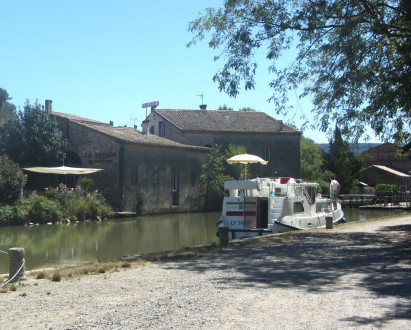
Canal du Midi, 44e bief (bief de Trèbes, 4 km 641), arrivée sur l'écluse de Trèbes.
Photo prise le jeudi 16 aout 2012. Communes traversées par le bief : Villedubert et Trèbes (pays Carcassonais, Aude, Région Languedoc Roussillon). Autrefois le 2e arrêt du soir de la barque de la poste en provenance de Toulouse. www.canalmidi.com/aufildlo/barcpost.html Pour en savoir plus sur le canal à Trèbes : www.canaldumidi.com/Carcassonnais/Trebes/Trebes.php Localisation sur wikimapia : wikimapia.org/#lat=43.2179074&lon=2.4351806&z=14&...
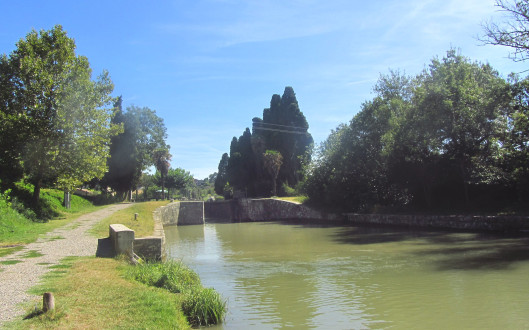
Canal du Midi, écluse (simple) de Villedubert (sens Etang de Thau Toulouse), commune de Villedubert, Aude.
Photo prise le jeudi 16 aout 2012. 113 km 543 de la Garonne. Altitude : 86 m. 43e écluse sur le Canal à franchir par les navigants depuis son extrèmité occidentale à Toulouse. 45e écluse à l'origine sur le Canal avant les années 70. 44e écluse si l'on ne compte pas l'écluse de Garonne, la ou a été posée la première pierre du Canal du Midi, guère usitée (mais qui a conservé ses portes éclusières) et commune aux canux du Midi, Latéral à la Garonne et de Brienne). 43e écluse si on ôte aussi du décompte l'ancienne écluse Matabiau à Toulouse, qui a perdu sa fonction éclusière lors de la modernisation du Canal dans les années 70. Arrivée du 44e bief (bief de Trèbes, 4 km 641) en provenance de l'écluse de Trèbes. Localisation sur wikimapia : wikimapia.org/#lat=43.2334255&lon=2.4138946&z=16&...
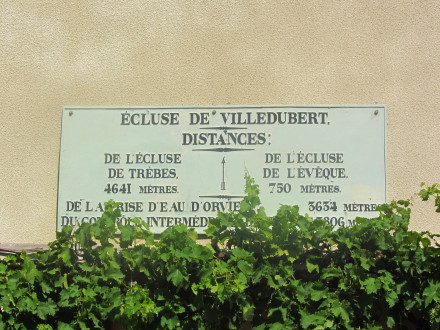
Canal du Midi, écluse (simple) de Villedubert, plaque de la maison éclusière, commune de Villedubert, Aude.
Photo prise le jeudi 16 aout 2012. 113 km 543 de la Garonne. Altitude : 86 m. 43e écluse sur le Canal à franchir par les navigants depuis son extrèmité occidentale à Toulouse. 45e écluse à l'origine sur le Canal avant les années 70. 44e écluse si l'on ne compte pas l'écluse de Garonne, la ou a été posée la première pierre du Canal du Midi, guère usitée (mais qui a conservé ses portes éclusières) et commune aux canux du Midi, Latéral à la Garonne et de Brienne). 43e écluse si on ôte aussi du décompte l'ancienne écluse Matabiau à Toulouse, qui a perdu sa fonction éclusière lors de la modernisation du Canal dans les années 70. Je n'ai pas boudé mon plaisir de cueillir quelques grappes de raisins sur la trieille pour me déshaltérer. Localisation sur wikimapia : wikimapia.org/#lat=43.2334255&lon=2.4138946&z=16&...
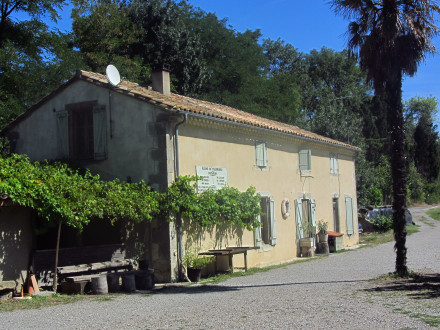
Canal du Midi, écluse (simple) de Villedubert, maison éclusière, commune de Villedubert, Aude.
Photo prise le jeudi 16 aout 2012. 113 km 543 de la Garonne. Altitude : 86 m. 43e écluse sur le Canal à franchir par les navigants depuis son extrèmité occidentale à Toulouse. 45e écluse à l'origine sur le Canal avant les années 70. 44e écluse si l'on ne compte pas l'écluse de Garonne, la ou a été posée la première pierre du Canal du Midi, guère usitée (mais qui a conservé ses portes éclusières) et commune aux canux du Midi, Latéral à la Garonne et de Brienne). 43e écluse si on ôte aussi du décompte l'ancienne écluse Matabiau à Toulouse, qui a perdu sa fonction éclusière lors de la modernisation du Canal dans les années 70. Je n'ai pas boudé mon plaisir de cueillir quelques grappes de raisins sur la treille pour me déshaltérer. Localisation sur wikimapia : wikimapia.org/#lat=43.2334255&lon=2.4138946&z=16&...
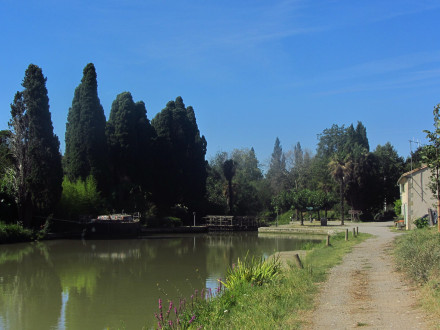
Canal du Midi, écluse (simple) de Villedubert, commune de Villedubert, Aude.
Photo prise le jeudi 16 aout 2012. 113 km 543 de la Garonne. Altitude : 86 m. 43e écluse sur le Canal à franchir par les navigants depuis son extrèmité occidentale à Toulouse. 45e écluse à l'origine sur le Canal avant les années 70. 44e écluse si l'on ne compte pas l'écluse de Garonne, la ou a été posée la première pierre du Canal du Midi, guère usitée (mais qui a conservé ses portes éclusières) et commune aux canux du Midi, Latéral à la Garonne et de Brienne). 43e écluse si on ôte aussi du décompte l'ancienne écluse Matabiau à Toulouse, qui a perdu sa fonction éclusière lors de la modernisation du Canal dans les années 70. Localisation sur wikimapia : wikimapia.org/#lat=43.2334255&lon=2.4138946&z=16&...
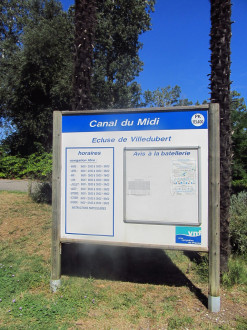
Canal du Midi, écluse (simple) de Villedubert, commune de Villedubert, Aude.
Photo prise le jeudi 16 aout 2012. 113 km 543 de la Garonne. Altitude : 86 m. 43e écluse sur le Canal à franchir par les navigants depuis son extrèmité occidentale à Toulouse. 45e écluse à l'origine sur le Canal avant les années 70. 44e écluse si l'on ne compte pas l'écluse de Garonne, la ou a été posée la première pierre du Canal du Midi, guère usitée (mais qui a conservé ses portes éclusières) et commune aux canux du Midi, Latéral à la Garonne et de Brienne). 43e écluse si on ôte aussi du décompte l'ancienne écluse Matabiau à Toulouse, qui a perdu sa fonction éclusière lors de la modernisation du Canal dans les années 70. Localisation sur wikimapia : wikimapia.org/#lat=43.2334255&lon=2.4138946&z=16&...
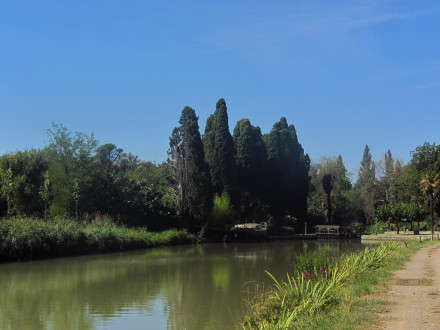
Canal du Midi, 44e bief (bief de Villedubert, 0 km 750), arrivée sur l'écluse de Villedubert.
Photo prise le jeudi 16 aout 2012. Commune traversée par le bief : Villedubert (pays Carcassonnais, Aude, Région Languedoc Roussillon). Localisation sur wikimapia : wikimapia.org/#lat=43.2334255&lon=2.4138946&z=16&...
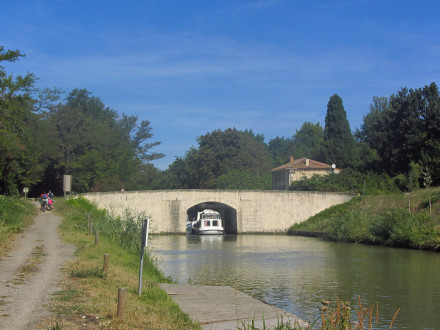
Canal du Midi, écluse (simple) de l'Evèque (sens Etang de Thau Toulouse), commune de Villedubert, Aude.
Photo prise le jeudi 16 aout 2012. 112 km 793 de la Garonne. Altitude : 91 m. Photo prise le jeudi 16 aout 2012. 42e écluse sur le Canal à franchir par les navigants depuis son extrèmité occidentale à Toulouse. 44e écluse à l'origine sur le Canal avant les années 70. 43e écluse si l'on ne compte pas l'écluse de Garonne, la ou a été posée la première pierre du Canal du Midi, guère usitée (mais qui a conservé ses portes éclusières) et commune aux canux du Midi, Latéral à la Garonne et de Brienne). 42e écluse si on ôte aussi du décompte l'ancienne écluse Matabiau à Toulouse, qui a perdu sa fonction éclusière lors de la modernisation du Canal dans les années 70. Arrivée du 43e bief (bief de Villedubert de 0 km 750) en provenance de l'écluse de Villedubert.
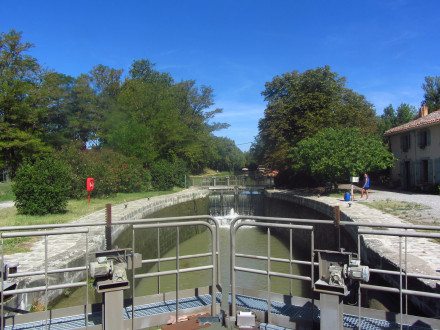
Canal du Midi, écluse (simple) de l'Evèque, commune de Villedubert, Aude.
Photo prise le jeudi 16 aout 2012. 112 km 793 de la Garonne. Altitude : 91 m. 42e écluse sur le Canal à franchir par les navigants depuis son extrèmité occidentale à Toulouse. 44e écluse à l'origine sur le Canal avant les années 70. 43e écluse si l'on ne compte pas l'écluse de Garonne, la ou a été posée la première pierre du Canal du Midi, guère usitée (mais qui a conservé ses portes éclusières) et commune aux canux du Midi, Latéral à la Garonne et de Brienne). 42e écluse si on ôte aussi du décompte l'ancienne écluse Matabiau à Toulouse, qui a perdu sa fonction éclusière lors de la modernisation du Canal dans les années 70.
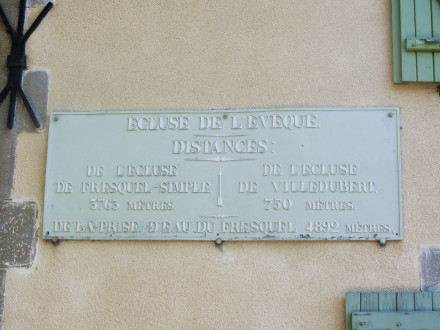
Canal du Midi, écluse (simple) de l'Evèque, plaque de la maison éclusière, commune de Villedubert, Aude.
Photo prise le jeudi 16 aout 2012. 112 km 793 de la Garonne. Altitude : 91 m. 42e écluse sur le Canal à franchir par les navigants depuis son extrèmité occidentale à Toulouse. 44e écluse à l'origine sur le Canal avant les années 70. 43e écluse si l'on ne compte pas l'écluse de Garonne, la ou a été posée la première pierre du Canal du Midi, guère usitée (mais qui a conservé ses portes éclusières) et commune aux canux du Midi, Latéral à la Garonne et de Brienne). 42e écluse si on ôte aussi du décompte l'ancienne écluse Matabiau à Toulouse, qui a perdu sa fonction éclusière lors de la modernisation du Canal dans les années 70.
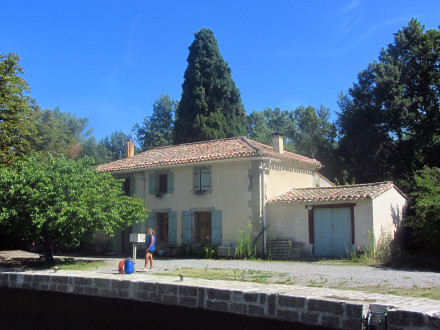
Canal du Midi, écluse (simple) de l'Evèque, maison éclusière, commune de Villedubert, Aude.
Photo prise le jeudi 16 aout 2012. 112 km 793 de la Garonne. Altitude : 91 m. 42e écluse sur le Canal à franchir par les navigants depuis son extrèmité occidentale à Toulouse. 44e écluse à l'origine sur le Canal avant les années 70. 43e écluse si l'on ne compte pas l'écluse de Garonne, la ou a été posée la première pierre du Canal du Midi, guère usitée (mais qui a conservé ses portes éclusières) et commune aux canux du Midi, Latéral à la Garonne et de Brienne). 42e écluse si on ôte aussi du décompte l'ancienne écluse Matabiau à Toulouse, qui a perdu sa fonction éclusière lors de la modernisation du Canal dans les années 70.
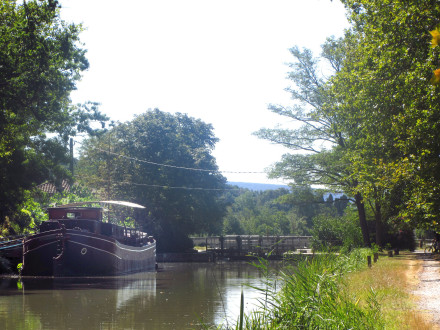
Canal du Midi, écluse (simple) de l'Evèque, commune de Villedubert, Aude.
Photo prise le jeudi 16 aout 2012. 112 km 793 de la Garonne. Altitude : 91 m. 42e écluse sur le Canal à franchir par les navigants depuis son extrèmité occidentale à Toulouse. 44e écluse à l'origine sur le Canal avant les années 70. 43e écluse si l'on ne compte pas l'écluse de Garonne, la ou a été posée la première pierre du Canal du Midi, guère usitée (mais qui a conservé ses portes éclusières) et commune aux canux du Midi, Latéral à la Garonne et de Brienne). 42e écluse si on ôte aussi du décompte l'ancienne écluse Matabiau à Toulouse, qui a perdu sa fonction éclusière lors de la modernisation du Canal dans les années 70.
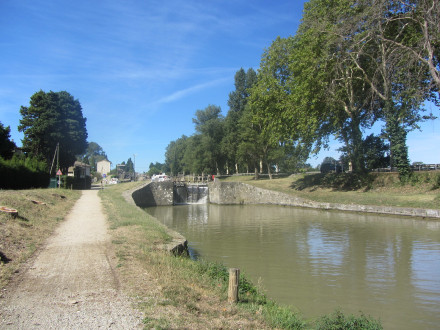
Canal du Midi, écluse de Fresquel Simple (sens Etang de Thau Toulouse), commune de Carcassonne, Aude.
Photo prise le jeudi 16 aout 2012. 109 km 030 de la Garonne. Altitude : 94 m. 41e écluse sur le Canal à franchir par les navigants depuis son extrèmité occidentale à Toulouse. 43e écluse à l'origine sur le Canal avant les années 70. 42e écluse si l'on ne compte pas l'écluse de Garonne, la ou a été posée la première pierre du Canal du Midi, guère usitée (mais qui a conservé ses portes éclusières) et commune aux canux du Midi, Latéral à la Garonne et de Brienne). 41e écluse si on ôte aussi du décompte l'ancienne écluse Matabiau à Toulouse, qui a perdu sa fonction éclusière lors de la modernisation du Canal dans les années 70. C'est à partir de cette écluse que l'on commence non seulement à entendre chanter les cigales, mais aussi à se plonger dans une ambiance qui annonce le climat méditerranéen, Cependant, à Carcassonne et Trèbes, le climat est dit "intermédiare", à savoir océanique mais avec une influence méditerranéenne grandissante jusqu'à Puichéric et La Redorte ou commence le climat de la Grande Bleue. Il est à cependant supposer, tout comme dans la Vallée du Rhône, que le réchauffement climatique fasse progresser ce climat vers l'Ouest. www.canalmidi.com/aufildlo/carcasso.html#ancre142640 Pour en savoir plus sur cet endroit (pont canal et les deux écluses) : www.canaldumidi.com/Carcassonnais/Fresquel/Fresquel.php Localisation sur wikimapia : wikimapia.org/#lat=43.2389517&lon=2.3816437&z=15&...

Canal du Midi, écluse de Fresquel Simple (sens Etang de Thau Toulouse, écluse + maison éclusière au fond à gauche), commune de Carcassonne, Aude.
Photo prise le jeudi 16 aout 2012. 109 km 030 de la Garonne. Altitude : 94 m. 41e écluse sur le Canal à franchir par les navigants depuis son extrèmité occidentale à Toulouse. 43e écluse à l'origine sur le Canal avant les années 70. 42e écluse si l'on ne compte pas l'écluse de Garonne, la ou a été posée la première pierre du Canal du Midi, guère usitée (mais qui a conservé ses portes éclusières) et commune aux canux du Midi, Latéral à la Garonne et de Brienne). 41e écluse si on ôte aussi du décompte l'ancienne écluse Matabiau à Toulouse, qui a perdu sa fonction éclusière lors de la modernisation du Canal dans les années 70. C'est à partir de cette écluse que l'on commence à entendre chanter les cigales. www.canalmidi.com/aufildlo/carcasso.html#ancre142640 Sur ce lien, une carte postale ancienne de ce lieu : www.canalmidi.com/aufildlo/photanci/cpacarca3.html Pour en savoir plus sur cet endroit (pont canal et les deux écluses) : www.canaldumidi.com/Carcassonnais/Fresquel/Fresquel.php Localisation sur wikimapia : wikimapia.org/#lat=43.2389517&lon=2.3816437&z=15&...

Canal du Midi, 41e bief (bief de Fresquel Simple, 0 km 105), le plus court du Canal.
Photo prise le jeudi 16 aout 2012. Commune traversée par le bief : Carcassonne. www.canalmidi.com/aufildlo/carcasso.html#ancre142640 Pour en savoir plus sur cet endroit (pont canal et les deux écluses) : www.canaldumidi.com/Carcassonnais/Fresquel/Fresquel.php Localisation sur wikimapia : wikimapia.org/#lat=43.2389517&lon=2.3816437&z=15&...
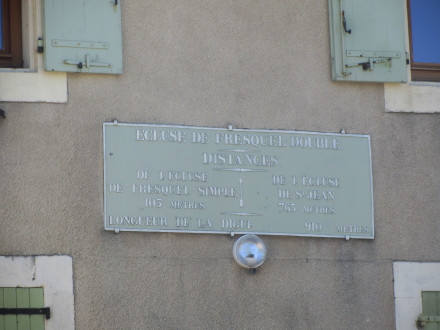
Canal du Midi, écluse de Fresquel Double, plaque de la maison éclusière, commune de Carcassonne, Aude.
Photo prise le jeudi 16 aout 2012. 108 km 925 de la Garonne. Altitude : 97 m. www.canalmidi.com/aufildlo/carcasso.html#ancre142640 40e écluse sur le Canal à franchir par les navigants depuis son extrèmité occidentale à Toulouse. 42e écluse à l'origine sur le Canal avant les années 70. 41e écluse si l'on ne compte pas l'écluse de Garonne, la ou a été posée la première pierre du Canal du Midi, guère usitée (mais qui a conservé ses portes éclusières) et commune aux canux du Midi, Latéral à la Garonne et de Brienne). 40e écluse si on ôte aussi du décompte l'ancienne écluse Matabiau à Toulouse, qui a perdu sa fonction éclusière lors de la modernisation du Canal dans les années 70. Pour en savoir plus sur cet endroit (pont canal et les deux écluses) : www.canaldumidi.com/Carcassonnais/Fresquel/Fresquel.php Localisation sur wikimapia : wikimapia.org/#lat=43.2389517&lon=2.3816437&z=15&...
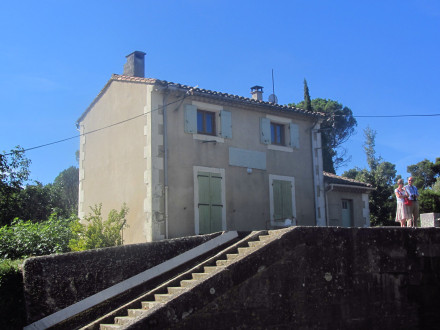
Canal du Midi, écluse de Fresquel Double, maison éclusière, commune de Carcassonne, Aude.
Photo prise le jeudi 16 aout 2012. 108 km 925 de la Garonne. Altitude : 97 m. www.canalmidi.com/aufildlo/carcasso.html#ancre142640 40e écluse sur le Canal à franchir par les navigants depuis son extrèmité occidentale à Toulouse. 42e écluse à l'origine sur le Canal avant les années 70. 41e écluse si l'on ne compte pas l'écluse de Garonne, la ou a été posée la première pierre du Canal du Midi, guère usitée (mais qui a conservé ses portes éclusières) et commune aux canux du Midi, Latéral à la Garonne et de Brienne). 40e écluse si on ôte aussi du décompte l'ancienne écluse Matabiau à Toulouse, qui a perdu sa fonction éclusière lors de la modernisation du Canal dans les années 70. Pour en savoir plus sur cet endroit (pont canal et les deux écluses) : www.canaldumidi.com/Carcassonnais/Fresquel/Fresquel.php Localisation sur wikimapia : wikimapia.org/#lat=43.2389517&lon=2.3816437&z=15&...
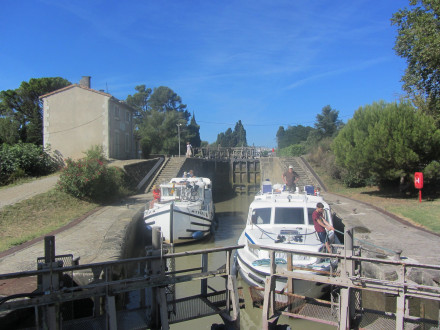
Canal du Midi, écluse de Fresquel Double, commune de Carcassonne, Aude.
Photo prise le jeudi 16 aout 2012. 108 km 925 de la Garonne. Altitude : 97 m. www.canalmidi.com/aufildlo/carcasso.html#ancre142640 40e écluse sur le Canal à franchir par les navigants depuis son extrèmité occidentale à Toulouse. 42e écluse à l'origine sur le Canal avant les années 70. 41e écluse si l'on ne compte pas l'écluse de Garonne, la ou a été posée la première pierre du Canal du Midi, guère usitée (mais qui a conservé ses portes éclusières) et commune aux canux du Midi, Latéral à la Garonne et de Brienne). 40e écluse si on ôte aussi du décompte l'ancienne écluse Matabiau à Toulouse, qui a perdu sa fonction éclusière lors de la modernisation du Canal dans les années 70. Pour en savoir plus sur cet endroit (pont canal et les deux écluses) : www.canaldumidi.com/Carcassonnais/Fresquel/Fresquel.php Localisation sur wikimapia : wikimapia.org/#lat=43.2389517&lon=2.3816437&z=15&...
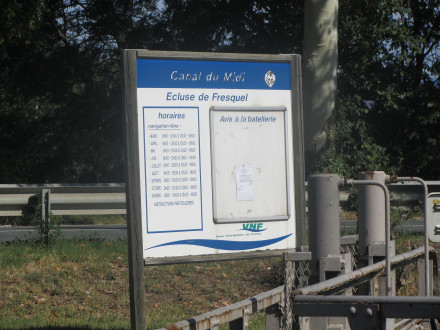
Canal du Midi, écluse de Fresquel Double, commune de Carcassonne, Aude.
Photo prise le jeudi 16 aout 2012. 108 km 925 de la Garonne. Altitude : 97 m. www.canalmidi.com/aufildlo/carcasso.html#ancre142640 40e écluse sur le Canal à franchir par les navigants depuis son extrèmité occidentale à Toulouse. 42e écluse à l'origine sur le Canal avant les années 70. 41e écluse si l'on ne compte pas l'écluse de Garonne, la ou a été posée la première pierre du Canal du Midi, guère usitée (mais qui a conservé ses portes éclusières) et commune aux canux du Midi, Latéral à la Garonne et de Brienne). 40e écluse si on ôte aussi du décompte l'ancienne écluse Matabiau à Toulouse, qui a perdu sa fonction éclusière lors de la modernisation du Canal dans les années 70. Pour en savoir plus sur cet endroit (pont canal et les deux écluses) : www.canaldumidi.com/Carcassonnais/Fresquel/Fresquel.php Localisation sur wikimapia : wikimapia.org/#lat=43.2389517&lon=2.3816437&z=15&...
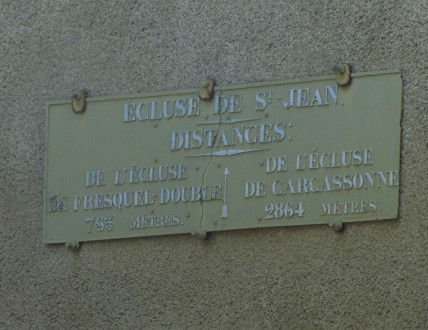
Canal du Midi, écluse (simple) de Saint Jean, plaque de la maison éclusière, commune de Carcassonne, Aude.
Photo prise le jeudi 16 aout 2012. 108 km 162 de la Garonne. Altitude : 102 m. 39e écluse sur le Canal à franchir par les navigants depuis son extrèmité occidentale à Toulouse. 41e écluse à l'origine sur le Canal avant les années 70. 40e écluse si l'on ne compte pas l'écluse de Garonne, la ou a été posée la première pierre du Canal du Midi, guère usitée (mais qui a conservé ses portes éclusières) et commune aux canux du Midi, Latéral à la Garonne et de Brienne). 39e écluse si on ôte aussi du décompte l'ancienne écluse Matabiau à Toulouse, qui a perdu sa fonction éclusière lors de la modernisation du Canal dans les années 70. Sur ce lien, une photo de cette plaque : www.flickr.com/photos/15954427@N03/3906441320/ Localisation sur wikimapia : wikimapia.org/#lat=43.2389517&lon=2.3816437&z=15&...
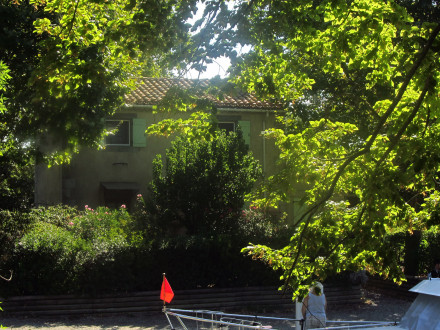
Canal du Midi, écluse (simple) de Saint Jean, maison éclusière, commune de Carcassonne, Aude.
Photo prise le jeudi 16 aout 2012. 108 km 162 de la Garonne. Altitude : 102 m. 39e écluse sur le Canal à franchir par les navigants depuis son extrèmité occidentale à Toulouse. 41e écluse à l'origine sur le Canal avant les années 70. 40e écluse si l'on ne compte pas l'écluse de Garonne, la ou a été posée la première pierre du Canal du Midi, guère usitée (mais qui a conservé ses portes éclusières) et commune aux canux du Midi, Latéral à la Garonne et de Brienne). 39e écluse si on ôte aussi du décompte l'ancienne écluse Matabiau à Toulouse, qui a perdu sa fonction éclusière lors de la modernisation du Canal dans les années 70. Localisation sur wikimapia : wikimapia.org/#lat=43.2389517&lon=2.3816437&z=15&...
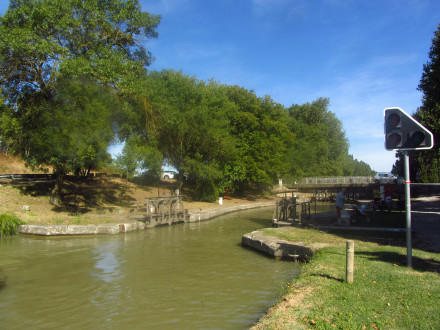
Canal du Midi, écluse (simple) de Saint Jean, commune de Carcassonne, Aude.
Photo prise le jeudi 16 aout 2012. 108 km 162 de la Garonne. Altitude : 102 m. 39e écluse sur le Canal à franchir par les navigants depuis son extrèmité occidentale à Toulouse. 41e écluse à l'origine sur le Canal avant les années 70. 40e écluse si l'on ne compte pas l'écluse de Garonne, la ou a été posée la première pierre du Canal du Midi, guère usitée (mais qui a conservé ses portes éclusières) et commune aux canux du Midi, Latéral à la Garonne et de Brienne). 39e écluse si on ôte aussi du décompte l'ancienne écluse Matabiau à Toulouse, qui a perdu sa fonction éclusière lors de la modernisation du Canal dans les années 70. Localisation sur wikimapia : wikimapia.org/#lat=43.2389517&lon=2.3816437&z=15&...
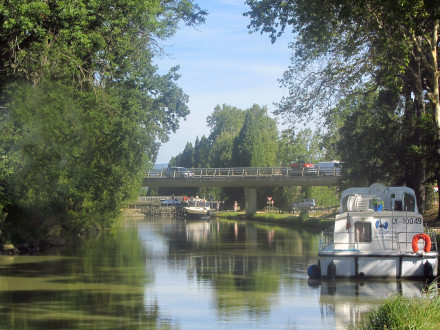
Canal du Midi, 39e bief (bief de Saint Jean, 2 km 864), arrivée sur l'écluse de Saint Jean.
Photo prise le jeudi 16 aout 2012. Commune traversée par le bief : Carcassonne. Sur ce lien, une photo prise sur ce lieu : www.flickr.com/photos/15954427@N03/3902701657/ Localisation sur wikimapia : wikimapia.org/#lat=43.2248187&lon=2.361731&z=15&a...
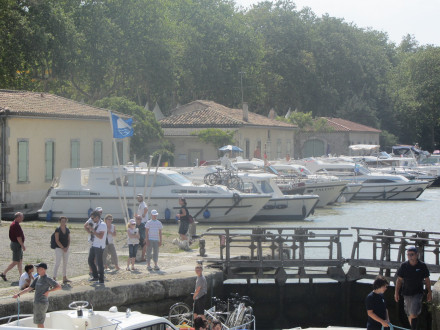
Le Canal du Midi à Carcassonne, maison éclusière (au centre).
Photo prise le mercredi 15 aout 2012. Ici, l'écluse (simple) de Carcassonne et le port en arrière plan. 105 km 288 de la Garonne. Altitude : 106 m. 38e écluse sur le Canal à franchir par les navigants depuis son extrèmité occidentale à Toulouse. 40e écluse à l'origine sur le Canal avant les années 70. 39e écluse si l'on ne compte pas l'écluse de Garonne, la ou a été posée la première pierre du Canal du Midi, guère usitée (mais qui a conservé ses portes éclusières) et commune aux canux du Midi, Latéral à la Garonne et de Brienne). 38e écluse si on ôte aussi du décompte l'ancienne écluse Matabiau à Toulouse, qui a perdu sa fonction éclusière lors de la modernisation du Canal dans les années 70. Pour en savoir plus : www.canaldumidi.com/Carcassonnais/Carcassonne/Carcassonne... Localisation sur wikimapia : wikimapia.org/#lat=43.2167619&lon=2.3509191&z=17&...
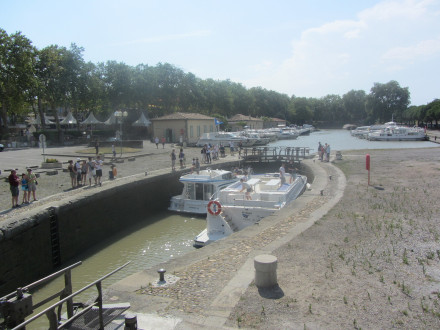
Le Canal du Midi à Carcassonne.
Photo prise le mercredi 15 aout 2012. Ici, l'écluse (simple) de Carcassonne. 105 km 288 de la Garonne. Altitude : 106 m. 38e écluse sur le Canal à franchir par les navigants depuis son extrèmité occidentale à Toulouse. 40e écluse à l'origine sur le Canal avant les années 70. 39e écluse si l'on ne compte pas l'écluse de Garonne, la ou a été posée la première pierre du Canal du Midi, guère usitée (mais qui a conservé ses portes éclusières) et commune aux canux du Midi, Latéral à la Garonne et de Brienne). 38e écluse si on ôte aussi du décompte l'ancienne écluse Matabiau à Toulouse, qui a perdu sa fonction éclusière lors de la modernisation du Canal dans les années 70. Pour en savoir plus : www.canaldumidi.com/Carcassonnais/Carcassonne/Carcassonne... Localisation sur wikimapia : wikimapia.org/#lat=43.2167619&lon=2.3509191&z=17&...
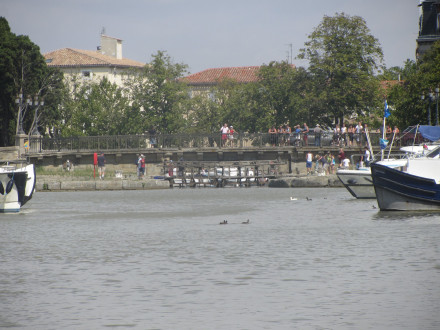
Le Canal du Midi à Carcassonne.
Photo prise le mercredi 15 aout 2012. Ici, l'écluse (simple) de Carcassonne. 105 km 288 de la Garonne. Altitude : 106 m. 38e écluse sur le Canal à franchir par les navigants depuis son extrèmité occidentale à Toulouse. 40e écluse à l'origine sur le Canal avant les années 70. 39e écluse si l'on ne compte pas l'écluse de Garonne, la ou a été posée la première pierre du Canal du Midi, guère usitée (mais qui a conservé ses portes éclusières) et commune aux canux du Midi, Latéral à la Garonne et de Brienne). 38e écluse si on ôte aussi du décompte l'ancienne écluse Matabiau à Toulouse, qui a perdu sa fonction éclusière lors de la modernisation du Canal dans les années 70. Pour en savoir plus : www.canaldumidi.com/Carcassonnais/Carcassonne/Carcassonne... Localisation sur wikimapia : wikimapia.org/#lat=43.2167619&lon=2.3509191&z=17&...
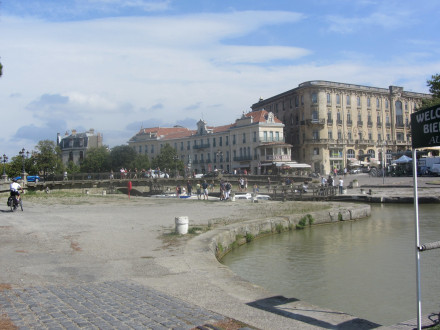
Le Canal du Midi à Carcassonne, écluse (simple) de Carcassonne.
Photo prise le mercredi 15 aout 2012. Ici, l'écluse (simple) de Carcassonne. 105 km 288 de la Garonne. Altitude : 106 m. 38e écluse sur le Canal à franchir par les navigants depuis son extrèmité occidentale à Toulouse. 40e écluse à l'origine sur le Canal avant les années 70. 39e écluse si l'on ne compte pas l'écluse de Garonne, la ou a été posée la première pierre du Canal du Midi, guère usitée (mais qui a conservé ses portes éclusières) et commune aux canux du Midi, Latéral à la Garonne et de Brienne). 38e écluse si on ôte aussi du décompte l'ancienne écluse Matabiau à Toulouse, qui a perdu sa fonction éclusière lors de la modernisation du Canal dans les années 70. Pour en savoir plus : www.canaldumidi.com/Carcassonnais/Carcassonne/Carcassonne... Localisation sur wikimapia : wikimapia.org/#lat=43.2167619&lon=2.3509191&z=17&...
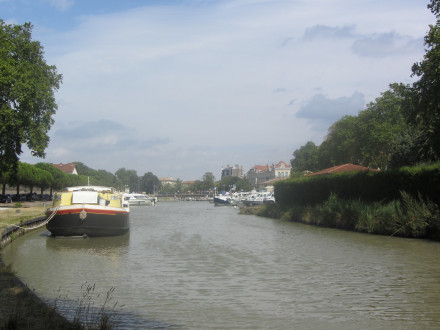
Canal du Midi, 38 bief (bief de Carcassonne, 5 km 122), arrivée sur l'écluse de Carcassonne.
Photo prise le mercredi 15 aout 2012. Commune traversée par le bief : Carcassonne. Localisation sur wikimapia : wikimapia.org/#lat=43.2167619&lon=2.3509191&z=17&...
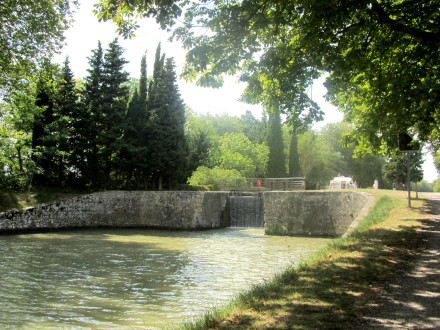
Canal du Midi, écluse (simple) de La Douce (sens Etang de Thau Toulouse), commune de Carcassonne, Aude.
Photo prise le mercredi 15 aout 2012. Arrivée du 38e bief (bief de Carcassonne, 5 km 122) en provenance de l'écluse de Carcassonne. 100 km 166 de la Garonne. Altitude : 109 m. 37e écluse sur le Canal à franchir par les navigants depuis son extrèmité occidentale à Toulouse. 39e écluse à l'origine sur le Canal avant les années 70. 38e écluse si l'on ne compte pas l'écluse de Garonne, la ou a été posée la première pierre du Canal du Midi, guère usitée (mais qui a conservé ses portes éclusières) et commune aux canux du Midi, Latéral à la Garonne et de Brienne). 37e écluse si on ôte aussi du décompte l'ancienne écluse Matabiau à Toulouse, qui a perdu sa fonction éclusière lors de la modernisation du Canal dans les années 70. Sur ce lien, une aquarelle peinte par moi même sur cette écluse : www.flickr.com/photos/nicoweb/7387087110/in/set-721576301... Localisation sur wikimapia : wikimapia.org/#lat=43.233701&lon=2.2955529&z=16&a...
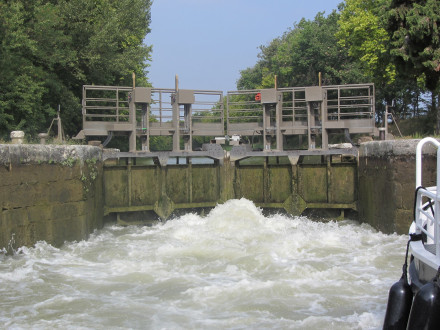
Canal du Midi, écluse (simple) de La Douce (sens Etang de Thau Toulouse), commune de Carcassonne, Aude.
Photo prise le mardi 23 aout 2011 lors d'un repérage. 100 km 166 de la Garonne. Altitude : 109 m. 37e écluse sur le Canal à franchir par les navigants depuis son extrèmité occidentale à Toulouse. 39e écluse à l'origine sur le Canal avant les années 70. 38e écluse si l'on ne compte pas l'écluse de Garonne, la ou a été posée la première pierre du Canal du Midi, guère usitée (mais qui a conservé ses portes éclusières) et commune aux canux du Midi, Latéral à la Garonne et de Brienne). 37e écluse si on ôte aussi du décompte l'ancienne écluse Matabiau à Toulouse, qui a perdu sa fonction éclusière lors de la modernisation du Canal dans les années 70. Sur ce lien, une aquarelle peinte par moi même sur cette écluse : www.flickr.com/photos/nicoweb/7387087110/in/set-721576301... Localisation sur wikimapia : wikimapia.org/#lat=43.233701&lon=2.2955529&z=16&a...
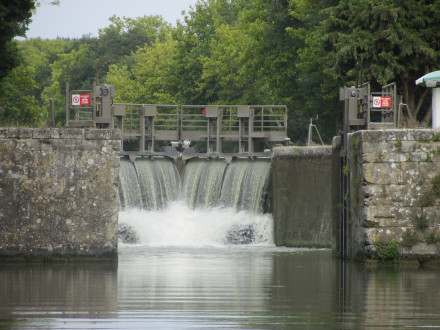
Canal du Midi, écluse (simple) de La Douce (sens Etang de Thau Toulouse), commune de Carcassonne, Aude.
Photo prise le mardi 23 aout 2011 lors d'un repérage. 100 km 166 de la Garonne. Altitude : 109 m. 37e écluse sur le Canal à franchir par les navigants depuis son extrèmité occidentale à Toulouse. 39e écluse à l'origine sur le Canal avant les années 70. 38e écluse si l'on ne compte pas l'écluse de Garonne, la ou a été posée la première pierre du Canal du Midi, guère usitée (mais qui a conservé ses portes éclusières) et commune aux canux du Midi, Latéral à la Garonne et de Brienne). 37e écluse si on ôte aussi du décompte l'ancienne écluse Matabiau à Toulouse, qui a perdu sa fonction éclusière lors de la modernisation du Canal dans les années 70. Ici, une photo prise par un internaute Flickr sur ce lieu : www.flickr.com/photos/15954427@N03/4001378268/ Et sur ce lien, une aquarelle peinte par moi même sur cette écluse : www.flickr.com/photos/nicoweb/7387087110/in/set-721576301... Localisation sur wikimapia : wikimapia.org/#lat=43.233701&lon=2.2955529&z=16&a...
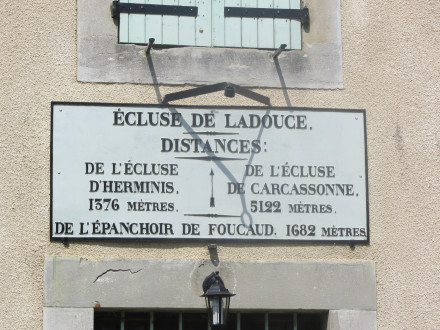
Canal du Midi, écluse (simple) de La Douce, plaque de la maison éclusière, commune de Carcassonne, Aude.
Photo prise le mercredi 15 aout 2012. 100 km 166 de la Garonne. Altitude : 109 m. 37e écluse sur le Canal à franchir par les navigants depuis son extrèmité occidentale à Toulouse. 39e écluse à l'origine sur le Canal avant les années 70. 38e écluse si l'on ne compte pas l'écluse de Garonne, la ou a été posée la première pierre du Canal du Midi, guère usitée (mais qui a conservé ses portes éclusières) et commune aux canux du Midi, Latéral à la Garonne et de Brienne). 37e écluse si on ôte aussi du décompte l'ancienne écluse Matabiau à Toulouse, qui a perdu sa fonction éclusière lors de la modernisation du Canal dans les années 70. Localisation sur wikimapia : wikimapia.org/#lat=43.233701&lon=2.2955529&z=16&a...
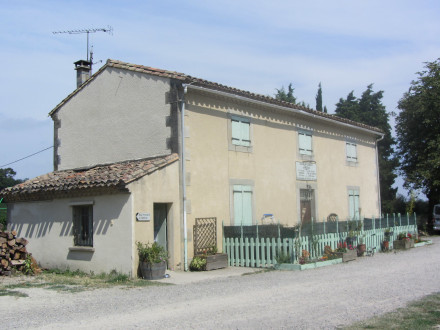
Canal du Midi, écluse (simple) de La Douce, maison éclusière, commune de Carcassonne, Aude.
Photo prise le mercredi 15 aout 2012. 100 km 166 de la Garonne. Altitude : 109 m. 37e écluse sur le Canal à franchir par les navigants depuis son extrèmité occidentale à Toulouse. 39e écluse à l'origine sur le Canal avant les années 70. 38e écluse si l'on ne compte pas l'écluse de Garonne, la ou a été posée la première pierre du Canal du Midi, guère usitée (mais qui a conservé ses portes éclusières) et commune aux canux du Midi, Latéral à la Garonne et de Brienne). 37e écluse si on ôte aussi du décompte l'ancienne écluse Matabiau à Toulouse, qui a perdu sa fonction éclusière lors de la modernisation du Canal dans les années 70. Localisation sur wikimapia : wikimapia.org/#lat=43.233701&lon=2.2955529&z=16&a...
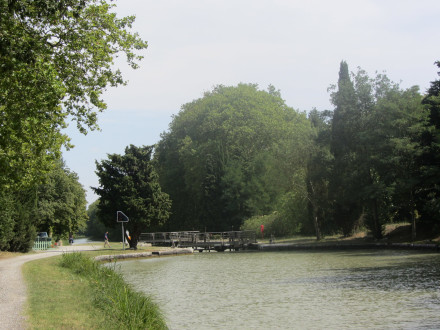
Canal du Midi, écluse (simple) de La Douce, commune de Carcassonne, Aude.
Photo prise le mercredi 15 aout 2012. 100 km 166 de la Garonne. Altitude : 109 m. 37e écluse sur le Canal à franchir par les navigants depuis son extrèmité occidentale à Toulouse. 39e écluse à l'origine sur le Canal avant les années 70. 38e écluse si l'on ne compte pas l'écluse de Garonne, la ou a été posée la première pierre du Canal du Midi, guère usitée (mais qui a conservé ses portes éclusières) et commune aux canux du Midi, Latéral à la Garonne et de Brienne). 37e écluse si on ôte aussi du décompte l'ancienne écluse Matabiau à Toulouse, qui a perdu sa fonction éclusière lors de la modernisation du Canal dans les années 70. Localisation sur wikimapia : wikimapia.org/#lat=43.233701&lon=2.2955529&z=16&a...
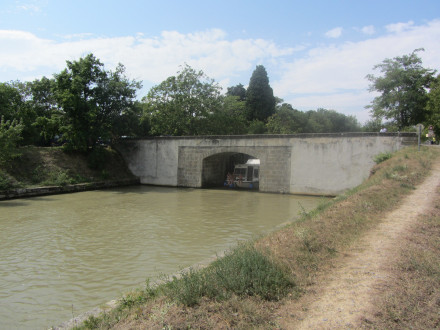
Canal du Midi, écluse (simple) d'Herminis (sens Toulouse Etang de Thau), commune de Carcassonne, Aude.
Photo prise le mercredi 15 aout 2012. 98 km 790 de la Garonne. Altitude : 114 m. 36e écluse sur le Canal à franchir par les navigants depuis son extrèmité occidentale à Toulouse. 38e écluse à l'origine sur le Canal avant les années 70. 37e écluse si l'on ne compte pas l'écluse de Garonne, la ou a été posée la première pierre du Canal du Midi, guère usitée (mais qui a conservé ses portes éclusières) et commune aux canux du Midi, Latéral à la Garonne et de Brienne). 36e écluse si on ôte aussi du décompte l'ancienne écluse Matabiau à Toulouse, qui a perdu sa fonction éclusière lors de la modernisation du Canal dans les années 70. Arrivée du 37e bief (bief de La Douce, 1 km 376) en provenance de l'écluse de La Douce. Localisation sur Wikimapia : wikimapia.org/#lat=43.238215&lon=2.2871093&z=17&a...
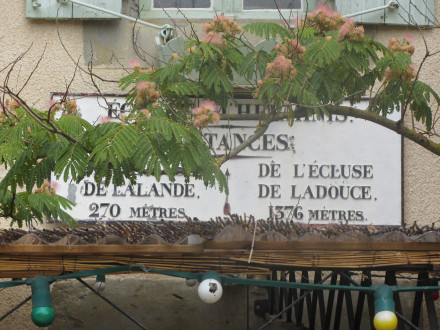
Canal du Midi, écluse (simple) d'Herminis, plaque de la maison éclusière, commune de Carcassonne, Aude.
Photo prise le mercredi 15 aout 2012. 98 km 790 de la Garonne. Altitude : 114 m. 36e écluse sur le Canal à franchir par les navigants depuis son extrèmité occidentale à Toulouse. 38e écluse à l'origine sur le Canal avant les années 70. 37e écluse si l'on ne compte pas l'écluse de Garonne, la ou a été posée la première pierre du Canal du Midi, guère usitée (mais qui a conservé ses portes éclusières) et commune aux canux du Midi, Latéral à la Garonne et de Brienne). 36e écluse si on ôte aussi du décompte l'ancienne écluse Matabiau à Toulouse, qui a perdu sa fonction éclusière lors de la modernisation du Canal dans les années 70. Localisation sur Wikimapia : wikimapia.org/#lat=43.238215&lon=2.2871093&z=17&a...
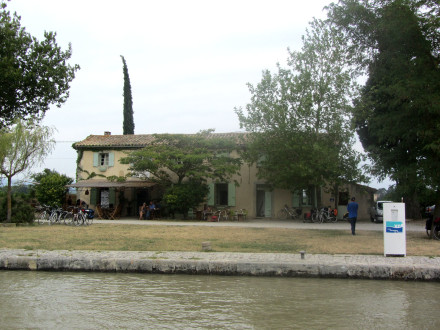
Canal du Midi, écluse (simple) d'Herminis, maison éclusière, commune de Carcassonne, Aude.
98 km 790 de la Garonne. Altitude : 114 m. 36e écluse sur le Canal à franchir par les navigants depuis son extrèmité occidentale à Toulouse. 38e écluse à l'origine sur le Canal avant les années 70. 37e écluse si l'on ne compte pas l'écluse de Garonne, la ou a été posée la première pierre du Canal du Midi, guère usitée (mais qui a conservé ses portes éclusières) et commune aux canux du Midi, Latéral à la Garonne et de Brienne). 36e écluse si on ôte aussi du décompte l'ancienne écluse Matabiau à Toulouse, qui a perdu sa fonction éclusière lors de la modernisation du Canal dans les années 70. Une halte sympathique pour se restaurer et se déshaltérer. Localisation sur Wikimapia : wikimapia.org/#lat=43.238215&lon=2.2871093&z=17&a...
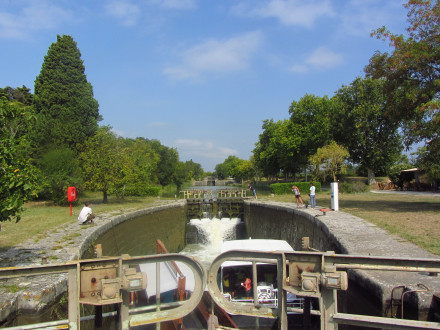
Canal du Midi, écluse (simple) d'Herminis (sens Toulouse Etang de Thau, commune de Carcassonne, Aude.)
Photo prise le mardi 23 aout 2011 lors d'un repérage. 98 km 790 de la Garonne. Altitude : 114 m. 36e écluse sur le Canal à franchir par les navigants depuis son extrèmité occidentale à Toulouse. 38e écluse à l'origine sur le Canal avant les années 70. 37e écluse si l'on ne compte pas l'écluse de Garonne, la ou a été posée la première pierre du Canal du Midi, guère usitée (mais qui a conservé ses portes éclusières) et commune aux canux du Midi, Latéral à la Garonne et de Brienne). 36e écluse si on ôte aussi du décompte l'ancienne écluse Matabiau à Toulouse, qui a perdu sa fonction éclusière lors de la modernisation du Canal dans les années 70. Vue sur le 36e bief (bief d'Herminis) et l'écluse de Lalande au fond. Localisation sur Wikimapia : wikimapia.org/#lat=43.238215&lon=2.2871093&z=17&a...
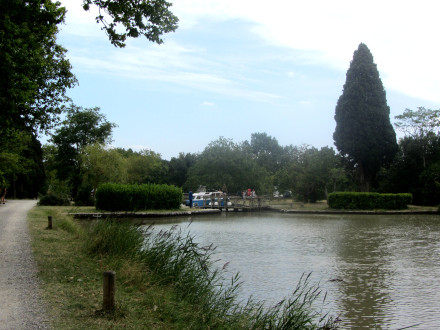
Canal du Midi, écluse (simple) d'Herminis, commune de Carcassonne, Aude.
Photo prise le mercredi 15 aout 2012. 98 km 790 de la Garonne. Altitude : 114 m. 36e écluse sur le Canal à franchir par les navigants depuis son extrèmité occidentale à Toulouse. 38e écluse à l'origine sur le Canal avant les années 70. 37e écluse si l'on ne compte pas l'écluse de Garonne, la ou a été posée la première pierre du Canal du Midi, guère usitée (mais qui a conservé ses portes éclusières) et commune aux canux du Midi, Latéral à la Garonne et de Brienne). 36e écluse si on ôte aussi du décompte l'ancienne écluse Matabiau à Toulouse, qui a perdu sa fonction éclusière lors de la modernisation du Canal dans les années 70. Localisation sur Wikimapia : wikimapia.org/#lat=43.238215&lon=2.2871093&z=17&a...
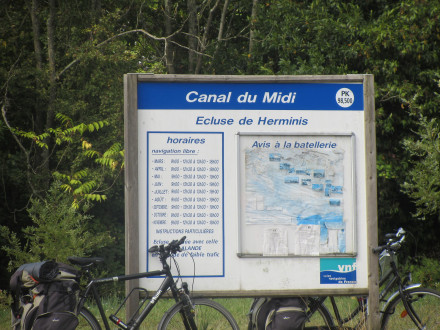
Canal du Midi, écluse (simple) d'Herminis, commune de Carcassonne, Aude.
Photo prise le mardi 23 aout 2011 lors d'un repérage. 98 km 790 de la Garonne. Altitude : 114 m. 36e écluse sur le Canal à franchir par les navigants depuis son extrèmité occidentale à Toulouse. 38e écluse à l'origine sur le Canal avant les années 70. 37e écluse si l'on ne compte pas l'écluse de Garonne, la ou a été posée la première pierre du Canal du Midi, guère usitée (mais qui a conservé ses portes éclusières) et commune aux canux du Midi, Latéral à la Garonne et de Brienne). 36e écluse si on ôte aussi du décompte l'ancienne écluse Matabiau à Toulouse, qui a perdu sa fonction éclusière lors de la modernisation du Canal dans les années 70. Localisation sur Wikimapia : wikimapia.org/#lat=43.238215&lon=2.2871093&z=17&a...
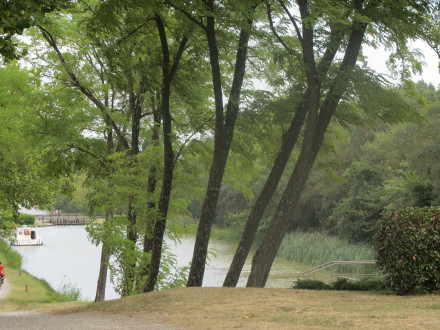
Canal du Midi, 36e bief (bief d'Herminis, 0 km 270).
Photo prise le mercredi 15 aout 2012. Commune traversée par le bief : Carcassonne. Au fond, l'écluse d'herminis. Localisation sur Wikimapia : wikimapia.org/#lat=43.238215&lon=2.2871093&z=17&a...
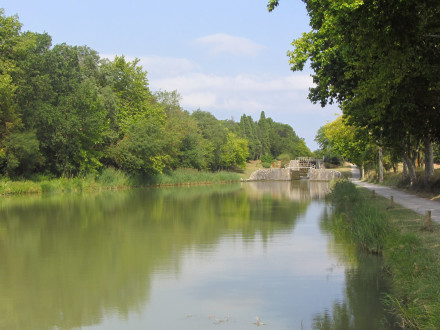
Canal du Midi, 36e bief (bief d'Herminis, 0 km 270, sens Etang de Thau Toulouse).
Photo prise le mardi 23 aout 2011 lors d'un repérage. Commune traversée par le bief : Carcassonne. Au fond, l'écluse de Lalande. Localisation sur Wikimapia : wikimapia.org/#lat=43.238215&lon=2.2871093&z=17&a...
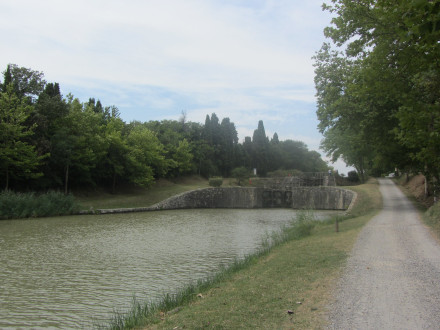
Canal du Midi, écluse (double) de Lalande, arrivée du 36e bief (bief d'Herminis, 0 km 270) en provenance de l'écluse d'Herminis, commune de Carcassonne, Aude.
Photo prise le mercredi 15 aout 2012. 98 km 520 de la Garonne. Altitude 116 m. Commune traversée par le bief : Carcassonne. 35e écluse sur le Canal à franchir par les navigants depuis son extrèmité occidentale à Toulouse. 37e écluse à l'origine sur le Canal avant les années 70. 36e écluse si l'on ne compte pas l'écluse de Garonne, la ou a été posée la première pierre du Canal du Midi, guère usitée (mais qui a conservé ses portes éclusières) et commune aux canux du Midi, Latéral à la Garonne et de Brienne). 35e écluse si on ôte aussi du décompte l'ancienne écluse Matabiau à Toulouse, qui a perdu sa fonction éclusière lors de la modernisation du Canal dans les années 70. Localisation sur Wikimapia : wikimapia.org/#lat=43.238215&lon=2.2871093&z=17&a...
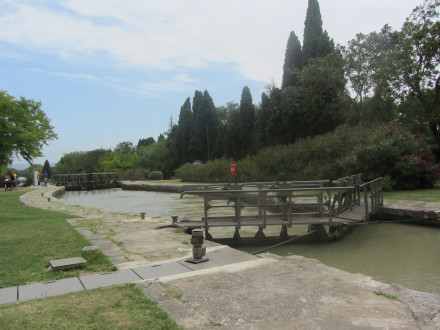
Canal du Midi, écluse (double) de Lalande, commune de Carcassonne, Aude.
Photo prise le mercredi 15 aout 2012. 98 km 520 de la Garonne. Altitude 116 m. 35e écluse sur le Canal à franchir par les navigants depuis son extrèmité occidentale à Toulouse. 37e écluse à l'origine sur le Canal avant les années 70. 36e écluse si l'on ne compte pas l'écluse de Garonne, la ou a été posée la première pierre du Canal du Midi, guère usitée (mais qui a conservé ses portes éclusières) et commune aux canux du Midi, Latéral à la Garonne et de Brienne). 35e écluse si on ôte aussi du décompte l'ancienne écluse Matabiau à Toulouse, qui a perdu sa fonction éclusière lors de la modernisation du Canal dans les années 70. Localisation sur Wikimapia : wikimapia.org/#lat=43.238215&lon=2.2871093&z=17&a...
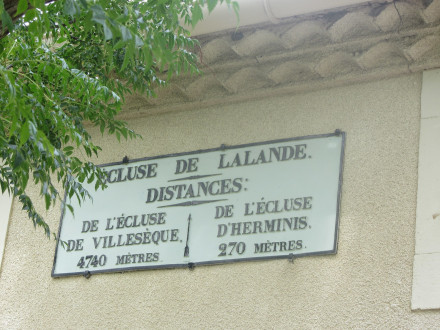
Canal du Midi, écluse (double) de Lalande, commune de Carcassonne, Aude.
Photo prise le mercredi 15 aout 2012. 98 km 520 de la Garonne. Altitude 116 m. 35e écluse sur le Canal à franchir par les navigants depuis son extrèmité occidentale à Toulouse. 37e écluse à l'origine sur le Canal avant les années 70. 36e écluse si l'on ne compte pas l'écluse de Garonne, la ou a été posée la première pierre du Canal du Midi, guère usitée (mais qui a conservé ses portes éclusières) et commune aux canux du Midi, Latéral à la Garonne et de Brienne). 35e écluse si on ôte aussi du décompte l'ancienne écluse Matabiau à Toulouse, qui a perdu sa fonction éclusière lors de la modernisation du Canal dans les années 70. Localisation sur Wikimapia : wikimapia.org/#lat=43.238215&lon=2.2871093&z=17&a...
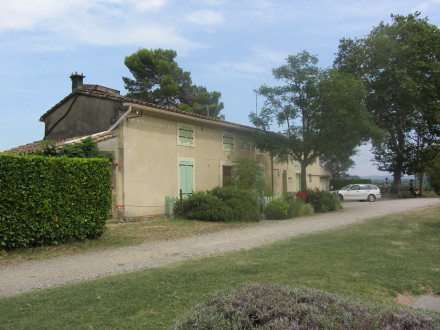
Canal du Midi, écluse (double) de Lalande, commune de Carcassonne, Aude.
Photo prise le mercredi 15 aout 2012. 98 km 520 de la Garonne. Altitude 116 m. 35e écluse sur le Canal à franchir par les navigants depuis son extrèmité occidentale à Toulouse. 37e écluse à l'origine sur le Canal avant les années 70. 36e écluse si l'on ne compte pas l'écluse de Garonne, la ou a été posée la première pierre du Canal du Midi, guère usitée (mais qui a conservé ses portes éclusières) et commune aux canux du Midi, Latéral à la Garonne et de Brienne). 35e écluse si on ôte aussi du décompte l'ancienne écluse Matabiau à Toulouse, qui a perdu sa fonction éclusière lors de la modernisation du Canal dans les années 70. Localisation sur Wikimapia : wikimapia.org/#lat=43.238215&lon=2.2871093&z=17&a...
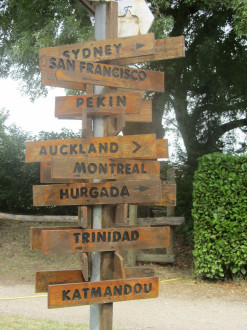
Canal du Midi, écluse (double) de Lalande, commune de Carcassonne, Aude.
Photo prise le mercredi 15 aout 2012. 98 km 520 de la Garonne. Altitude 116 m. 35e écluse sur le Canal à franchir par les navigants depuis son extrèmité occidentale à Toulouse. 37e écluse à l'origine sur le Canal avant les années 70. 36e écluse si l'on ne compte pas l'écluse de Garonne, la ou a été posée la première pierre du Canal du Midi, guère usitée (mais qui a conservé ses portes éclusières) et commune aux canux du Midi, Latéral à la Garonne et de Brienne). 35e écluse si on ôte aussi du décompte l'ancienne écluse Matabiau à Toulouse, qui a perdu sa fonction éclusière lors de la modernisation du Canal dans les années 70. Localisation sur Wikimapia : wikimapia.org/#lat=43.238215&lon=2.2871093&z=17&a...
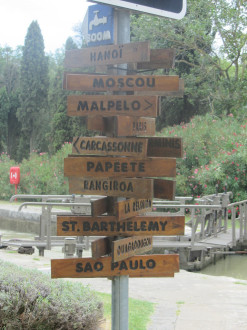
Canal du Midi, écluse (double) de Lalande, commune de Carcassonne, Aude.
Photo prise le mercredi 15 aout 2012. 98 km 520 de la Garonne. Altitude 116 m. 35e écluse sur le Canal à franchir par les navigants depuis son extrèmité occidentale à Toulouse. 37e écluse à l'origine sur le Canal avant les années 70. 36e écluse si l'on ne compte pas l'écluse de Garonne, la ou a été posée la première pierre du Canal du Midi, guère usitée (mais qui a conservé ses portes éclusières) et commune aux canux du Midi, Latéral à la Garonne et de Brienne). 35e écluse si on ôte aussi du décompte l'ancienne écluse Matabiau à Toulouse, qui a perdu sa fonction éclusière lors de la modernisation du Canal dans les années 70. Localisation sur Wikimapia : wikimapia.org/#lat=43.238215&lon=2.2871093&z=17&a...
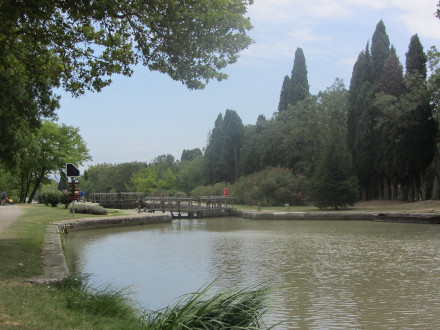
Canal du Midi, écluse (double) de Lalande, commune de Carcassonne, Aude.
Photo prise le mercredi 15 aout 2012. 98 km 520 de la Garonne. Altitude 116 m. 35e écluse sur le Canal à franchir par les navigants depuis son extrèmité occidentale à Toulouse. 37e écluse à l'origine sur le Canal avant les années 70. 36e écluse si l'on ne compte pas l'écluse de Garonne, la ou a été posée la première pierre du Canal du Midi, guère usitée (mais qui a conservé ses portes éclusières) et commune aux canux du Midi, Latéral à la Garonne et de Brienne). 35e écluse si on ôte aussi du décompte l'ancienne écluse Matabiau à Toulouse, qui a perdu sa fonction éclusière lors de la modernisation du Canal dans les années 70. Localisation sur Wikimapia : wikimapia.org/#lat=43.238215&lon=2.2871093&z=17&a...
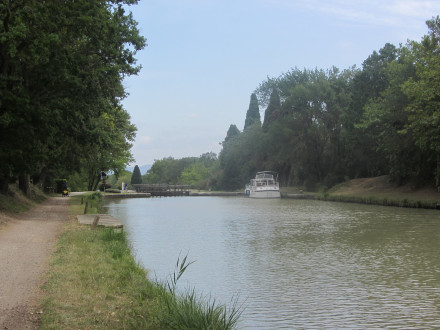
Canal du Midi, écluse (double) de Lalande, commune de Carcassonne, Aude.
Photo prise le mercredi 15 aout 2012. 98 km 520 de la Garonne. Altitude 116 m. 35e écluse sur le Canal à franchir par les navigants depuis son extrèmité occidentale à Toulouse. 37e écluse à l'origine sur le Canal avant les années 70. 36e écluse si l'on ne compte pas l'écluse de Garonne, la ou a été posée la première pierre du Canal du Midi, guère usitée (mais qui a conservé ses portes éclusières) et commune aux canux du Midi, Latéral à la Garonne et de Brienne). 35e écluse si on ôte aussi du décompte l'ancienne écluse Matabiau à Toulouse, qui a perdu sa fonction éclusière lors de la modernisation du Canal dans les années 70. Localisation sur Wikimapia : wikimapia.org/#lat=43.238215&lon=2.2871093&z=17&a...
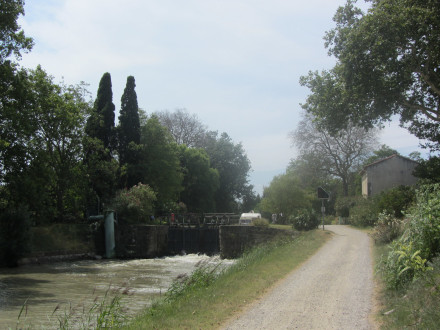
Canal du Midi, écluse (simple) de Villesèque (sens Etang de Thau Toulouse), commune de Caux-et-Sauzens, Aude.
Photo prise le mercredi 15 aout 2012. 93 km 78 de la Garonne. Altitude : 122 m. 34e écluse sur le Canal à franchir par les navigants depuis son extrèmité occidentale à Toulouse. 36e écluse à l'origine sur le Canal avant les années 70. 35e écluse si l'on ne compte pas l'écluse de Garonne, la ou a été posée la première pierre du Canal du Midi, guère usitée (mais qui a conservé ses portes éclusières) et commune aux canux du Midi, Latéral à la Garonne et de Brienne). 34e écluse si on ôte aussi du décompte l'ancienne écluse Matabiau à Toulouse, qui a perdu sa fonction éclusière lors de la modernisation du Canal dans les années 70. Arrivée du 35e bief (bief de Lalande, 4 km 740) en provenance de l'écluse de Lalande. Localisation sur wikimapia : wikimapia.org/#lat=43.2346898&lon=2.2470157&z=17&...
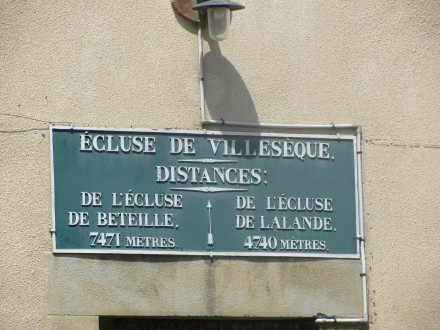
Canal du Midi, écluse (simple) de Villesèque, plaque de la maison éclusière, commune de Caux-et-Sauzens, Aude.
Photo prise le mercredi 15 aout 2012. 93 km 78 de la Garonne. Altitude : 122 m. 34e écluse sur le Canal à franchir par les navigants depuis son extrèmité occidentale à Toulouse. 36e écluse à l'origine sur le Canal avant les années 70. 35e écluse si l'on ne compte pas l'écluse de Garonne, la ou a été posée la première pierre du Canal du Midi, guère usitée (mais qui a conservé ses portes éclusières) et commune aux canux du Midi, Latéral à la Garonne et de Brienne). 34e écluse si on ôte aussi du décompte l'ancienne écluse Matabiau à Toulouse, qui a perdu sa fonction éclusière lors de la modernisation du Canal dans les années 70. Localisation sur wikimapia : wikimapia.org/#lat=43.2346898&lon=2.2470157&z=17&...
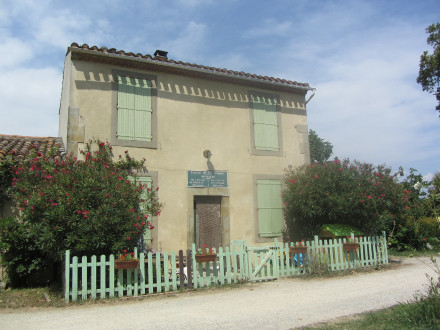
Canal du Midi, écluse (simple) de Villesèque, maison éclusière, commune de Caux-et-Sauzens, Aude.
Photo prise le mercredi 15 aout 2012. 93 km 78 de la Garonne. Altitude : 122 m. 34e écluse sur le Canal à franchir par les navigants depuis son extrèmité occidentale à Toulouse. 36e écluse à l'origine sur le Canal avant les années 70. 35e écluse si l'on ne compte pas l'écluse de Garonne, la ou a été posée la première pierre du Canal du Midi, guère usitée (mais qui a conservé ses portes éclusières) et commune aux canux du Midi, Latéral à la Garonne et de Brienne). 34e écluse si on ôte aussi du décompte l'ancienne écluse Matabiau à Toulouse, qui a perdu sa fonction éclusière lors de la modernisation du Canal dans les années 70. Localisation sur wikimapia : wikimapia.org/#lat=43.2346898&lon=2.2470157&z=17&...
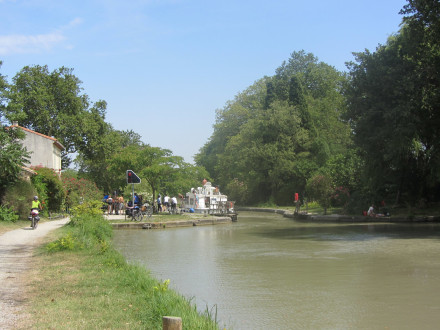
Canal du Midi, écluse (simple) de Villesèque, commune de Caux-et-Sauzens, Aude.
Photo prise le mercredi 15 aout 2012. 93 km 78 de la Garonne. Altitude : 122 m. 34e écluse sur le Canal à franchir par les navigants depuis son extrèmité occidentale à Toulouse. 36e écluse à l'origine sur le Canal avant les années 70. 35e écluse si l'on ne compte pas l'écluse de Garonne, la ou a été posée la première pierre du Canal du Midi, guère usitée (mais qui a conservé ses portes éclusières) et commune aux canux du Midi, Latéral à la Garonne et de Brienne). 34e écluse si on ôte aussi du décompte l'ancienne écluse Matabiau à Toulouse, qui a perdu sa fonction éclusière lors de la modernisation du Canal dans les années 70. Localisation sur wikimapia : wikimapia.org/#lat=43.2346898&lon=2.2470157&z=17&...
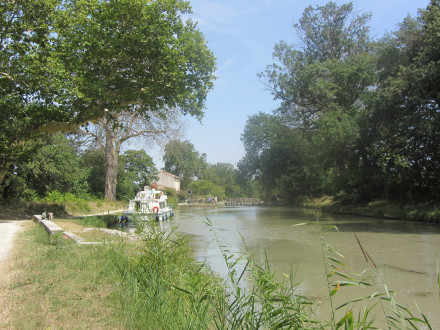
Canal du Midi, écluse (simple) de Villesèque, commune de Caux-et-Sauzens, Aude.
Photo prise le mercredi 15 aout 2012. 93 km 78 de la Garonne. Altitude : 122 m. 34e écluse sur le Canal à franchir par les navigants depuis son extrèmité occidentale à Toulouse. 36e écluse à l'origine sur le Canal avant les années 70. 35e écluse si l'on ne compte pas l'écluse de Garonne, la ou a été posée la première pierre du Canal du Midi, guère usitée (mais qui a conservé ses portes éclusières) et commune aux canux du Midi, Latéral à la Garonne et de Brienne). 34e écluse si on ôte aussi du décompte l'ancienne écluse Matabiau à Toulouse, qui a perdu sa fonction éclusière lors de la modernisation du Canal dans les années 70. Localisation sur wikimapia : wikimapia.org/#lat=43.2346898&lon=2.2470157&z=17&...
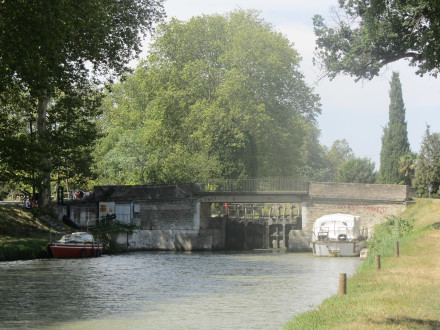
Canal du Midi, écluse (simple) de Béteille (sens Etang de Thau Toulouse), commune de Montréal, Aude.
Photo prise le mercredi 15 aout 2012. 86 km 309 de la Garonne. Altitude : 123 m. 33e écluse sur le Canal à franchir par les navigants depuis son extrèmité occidentale à Toulouse. 35e écluse à l'origine sur le Canal avant les années 70. 34e écluse si l'on ne compte pas l'écluse de Garonne, la ou a été posée la première pierre du Canal du Midi, guère usitée (mais qui a conservé ses portes éclusières) et commune aux canux du Midi, Latéral à la Garonne et de Brienne). 33e écluse si on ôte aussi du décompte l'ancienne écluse Matabiau à Toulouse, qui a perdu sa fonction éclusière lors de la modernisation du Canal dans les années 70. Arrivée du 35e bief (bief de Villesèque, 7 km 471) en provenance de l'écluse de Villesèque. Autrefois la halte de midi du 2e jour de la barque de la poste venant de Toulouse. www.canalmidi.com/aufildlo/barcpost.html Première écluse (en venant de Toulouse) dans le Carcassonnais. Localisation sur wikimapia : wikimapia.org/#lat=43.2353484&lon=2.1819212&z=17&... Sur ce lien, une carte des régions naturelles de l'Aude : blogvilles.blogspot.fr/2009/09/les-regions-naturelles-de-...
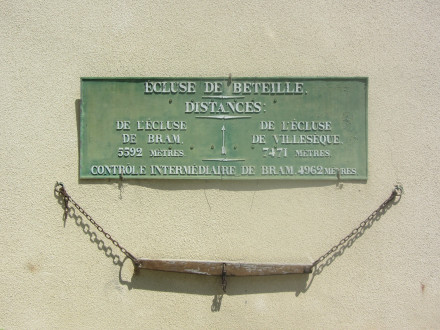
Canal du Midi, écluse (simple) de Béteille, plaque de la maison éclusière, commune de Montréal, Aude.
Photo prise le mercredi 15 aout 2012. 86 km 309 de la Garonne. Altitude : 123 m. 33e écluse sur le Canal à franchir par les navigants depuis son extrèmité occidentale à Toulouse. 35e écluse à l'origine sur le Canal avant les années 70. 34e écluse si l'on ne compte pas l'écluse de Garonne, la ou a été posée la première pierre du Canal du Midi, guère usitée (mais qui a conservé ses portes éclusières) et commune aux canux du Midi, Latéral à la Garonne et de Brienne). 33e écluse si on ôte aussi du décompte l'ancienne écluse Matabiau à Toulouse, qui a perdu sa fonction éclusière lors de la modernisation du Canal dans les années 70. Autrefois la halte de midi du 2e jour de la barque de la poste venant de Toulouse. www.canalmidi.com/aufildlo/barcpost.html Première écluse (en venant de Toulouse) dans le Carcassonnais. Localisation sur wikimapia : wikimapia.org/#lat=43.2353484&lon=2.1819212&z=17&... Sur ce lien, la carte des régions naturelles du département de l'Aude : blogvilles.blogspot.fr/2009/09/les-regions-naturelles-de-... Sur ce lien, une carte des régions naturelles de l'Aude : blogvilles.blogspot.fr/2009/09/les-regions-naturelles-de-...
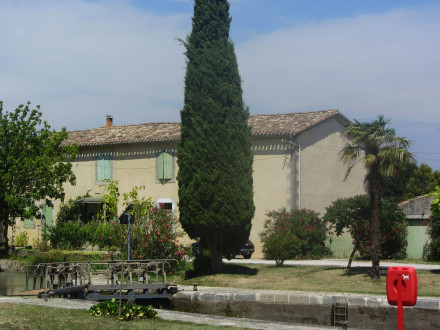
Canal du Midi, écluse (simple) de Béteille, maison éclusière, commune de Montréal, Aude.
Photo prise le mercredi 15 aout 2012. 86 km 309 de la Garonne. Altitude : 123 m. 33e écluse sur le Canal à franchir par les navigants depuis son extrèmité occidentale à Toulouse. 35e écluse à l'origine sur le Canal avant les années 70. 34e écluse si l'on ne compte pas l'écluse de Garonne, la ou a été posée la première pierre du Canal du Midi, guère usitée (mais qui a conservé ses portes éclusières) et commune aux canux du Midi, Latéral à la Garonne et de Brienne). 33e écluse si on ôte aussi du décompte l'ancienne écluse Matabiau à Toulouse, qui a perdu sa fonction éclusière lors de la modernisation du Canal dans les années 70. Autrefois la halte de midi du 2e jour de la barque de la poste venant de Toulouse. www.canalmidi.com/aufildlo/barcpost.html Première écluse (en venant de Toulouse) dans le Carcassonnais. Localisation sur wikimapia : wikimapia.org/#lat=43.2353484&lon=2.1819212&z=17&... Sur ce lien, une carte des régions naturelles de l'Aude : blogvilles.blogspot.fr/2009/09/les-regions-naturelles-de-...
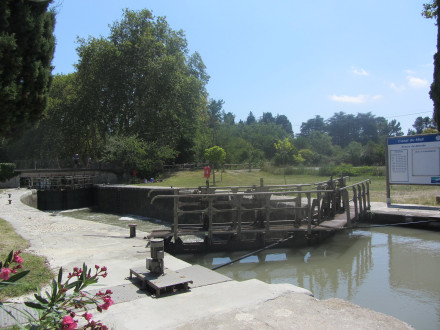
Canal du Midi, écluse (simple) de Béteille, commune de Montréal, Aude.
Photo prise le mercredi 15 aout 2012. 86 km 309 de la Garonne. Altitude : 123 m. 33e écluse sur le Canal à franchir par les navigants depuis son extrèmité occidentale à Toulouse. 35e écluse à l'origine sur le Canal avant les années 70. 34e écluse si l'on ne compte pas l'écluse de Garonne, la ou a été posée la première pierre du Canal du Midi, guère usitée (mais qui a conservé ses portes éclusières) et commune aux canux du Midi, Latéral à la Garonne et de Brienne). 33e écluse si on ôte aussi du décompte l'ancienne écluse Matabiau à Toulouse, qui a perdu sa fonction éclusière lors de la modernisation du Canal dans les années 70. Autrefois la halte de midi du 2e jour de la barque de la poste venant de Toulouse. www.canalmidi.com/aufildlo/barcpost.html Première écluse (en venant de Toulouse) dans le Carcassonnais. Localisation sur wikimapia : wikimapia.org/#lat=43.2353484&lon=2.1819212&z=17&... Sur ce lien, une carte des régions naturelles de l'Aude : blogvilles.blogspot.fr/2009/09/les-regions-naturelles-de-...
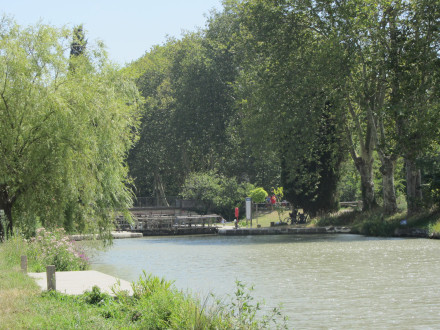
Canal du Midi, écluse (simple) de Béteille, commune de Montréal, Aude.
Photo prise le mercredi 15 aout 2012. 86 km 309 de la Garonne. Altitude : 123 m. 33e écluse sur le Canal à franchir par les navigants depuis son extrèmité occidentale à Toulouse. 35e écluse à l'origine sur le Canal avant les années 70 et la modernisation sur Toulouse. Autrefois la halte de midi du 2e jour de la barque de la poste venant de Toulouse. www.canalmidi.com/aufildlo/barcpost.html Première écluse (en venant de Toulouse) dans le Carcassonnais. Localisation sur wikimapia : wikimapia.org/#lat=43.2353484&lon=2.1819212&z=17&... Sur ce lien, une carte des régions naturelles de l'Aude : blogvilles.blogspot.fr/2009/09/les-regions-naturelles-de-...
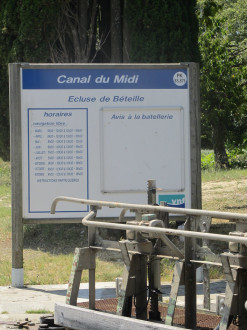
Canal du Midi, écluse (simple) de Béteille, commune de Montréal, Aude.
Photo prise le mercredi 15 aout 2012. 86 km 309 de la Garonne. Altitude : 123 m. 33e écluse sur le Canal à franchir par les navigants depuis son extrèmité occidentale à Toulouse. 35e écluse à l'origine sur le Canal avant les années 70. 34e écluse si l'on ne compte pas l'écluse de Garonne, la ou a été posée la première pierre du Canal du Midi, guère usitée (mais qui a conservé ses portes éclusières) et commune aux canux du Midi, Latéral à la Garonne et de Brienne). 33e écluse si on ôte aussi du décompte l'ancienne écluse Matabiau à Toulouse, qui a perdu sa fonction éclusière lors de la modernisation du Canal dans les années 70. Autrefois la halte de midi du 2e jour de la barque de la poste venant de Toulouse. www.canalmidi.com/aufildlo/barcpost.html Première écluse (en venant de Toulouse) dans le Carcassonnais. Localisation sur wikimapia : wikimapia.org/#lat=43.2353484&lon=2.1819212&z=17&... Sur ce lien, une carte des régions naturelles de l'Aude : blogvilles.blogspot.fr/2009/09/les-regions-naturelles-de-...
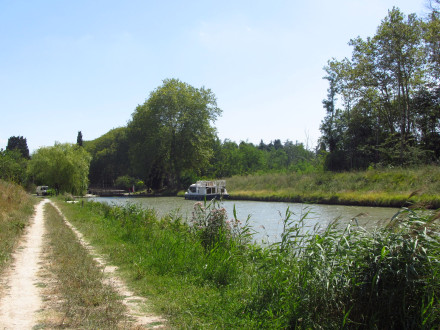
Canal du midi, 33e bief (bief de Béteille, 5 km 592), arrivée sur l'écluse de Béteille), entrée dans le Carcassonnais.
Photo prise le mercredi 15 aout 2012. Communes traverssées par le bief, toutes situées dans l'Aude, région Languedoc Roussillon : Bram (Lauragais), Alzonne (Cabardès) et Montréal (Carcassonnais). C'est sur cette portion du bief, à la limite des communes de Bram et d'Alzonne que l'on quitte le lauragais pour entrer dans le Cabardès puis le Carcassonnais avant de retourner dans le Cabardès sur le bief suivant. Localisation sur wikimapia : wikimapia.org/#lat=43.2444578&lon=2.1548952&z=15&... Sur ce lien, une carte des régions naturelles de l'Aude : blogvilles.blogspot.fr/2009/09/les-regions-naturelles-de-...
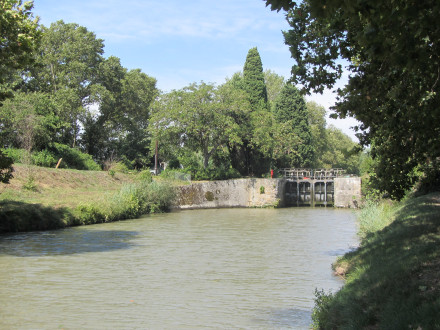
Canal du Midi, écluse (simple) de Bram (sens Etang de Thau Toulouse), commune de Bram, Aude, dernière écluse en Lauragais.
Photo prise le mercredi 15 aout 2012. 80 km 717 de la Garonne. Altitude : 125 m. 32e écluse sur le Canal à franchir par les navigants depuis son extrèmité occidentale à Toulouse. 34e écluse à l'origine sur le Canal avant les années 70. 33e écluse si l'on ne compte pas l'écluse de Garonne, la ou a été posée la première pierre du Canal du Midi, guère usitée (mais qui a conservé ses portes éclusières) et commune aux canux du Midi, Latéral à la Garonne et de Brienne). 32e écluse si on ôte aussi du décompte l'ancienne écluse Matabiau à Toulouse, qui a perdu sa fonction éclusière lors de la modernisation du Canal dans les années 70. On quitte le Lauragais pour entrer dans le pays Carcassonais. Localisation sur wikimapia : wikimapia.org/#lat=43.2646491&lon=2.1099628&z=15&... Sur ce lien, la carte des régions naturelles du département de l'Aude : blogvilles.blogspot.fr/2009/09/les-regions-naturelles-de-...
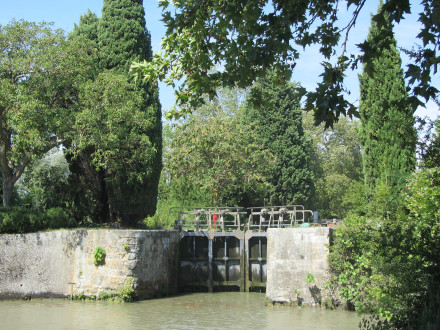
Canal du Midi, écluse (simple) de Bram (sens Etang de Thau Toulouse), commune de Bram, Aude, dernière écluse en Lauragais.
Photo prise le mercredi 15 aout 2012. 80 km 717 de la Garonne. Altitude : 125 m. 32e écluse sur le Canal à franchir par les navigants depuis son extrèmité occidentale à Toulouse. 34e écluse à l'origine sur le Canal avant les années 70. 33e écluse si l'on ne compte pas l'écluse de Garonne, la ou a été posée la première pierre du Canal du Midi, guère usitée (mais qui a conservé ses portes éclusières) et commune aux canux du Midi, Latéral à la Garonne et de Brienne). 32e écluse si on ôte aussi du décompte l'ancienne écluse Matabiau à Toulouse, qui a perdu sa fonction éclusière lors de la modernisation du Canal dans les années 70. On quitte le Lauragais pour entrer dans le pays Carcassonais. Localisation sur wikimapia : wikimapia.org/#lat=43.2646491&lon=2.1099628&z=15&... Sur ce lien, la carte des régions naturelles du département de l'Aude : blogvilles.blogspot.fr/2009/09/les-regions-naturelles-de-...
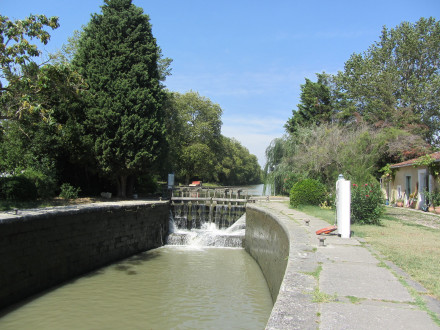
Canal du Midi, écluse (simple) de Bram, commune de Bram, Aude, dernière écluse en Lauragais.
Photo prise le mercredi 15 aout 2012. 80 km 717 de la Garonne. Altitude : 125 m. 32e écluse sur le Canal à franchir par les navigants depuis son extrèmité occidentale à Toulouse. 34e écluse à l'origine sur le Canal avant les années 70. 33e écluse si l'on ne compte pas l'écluse de Garonne, la ou a été posée la première pierre du Canal du Midi, guère usitée (mais qui a conservé ses portes éclusières) et commune aux canux du Midi, Latéral à la Garonne et de Brienne). 32e écluse si on ôte aussi du décompte l'ancienne écluse Matabiau à Toulouse, qui a perdu sa fonction éclusière lors de la modernisation du Canal dans les années 70. On quitte le Lauragais pour entrer dans le pays Carcassonais. Localisation sur wikimapia : wikimapia.org/#lat=43.2646491&lon=2.1099628&z=15&... Sur ce lien, la carte des régions naturelles du département de l'Aude : blogvilles.blogspot.fr/2009/09/les-regions-naturelles-de-...
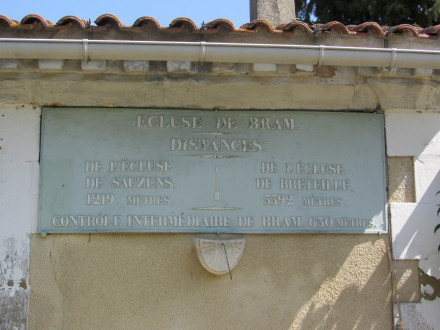
Canal du Midi, écluse (simple) de Bram, plaque de la maison éclusière, commune de Bram, Aude, dernière écluse en Lauragais.
Photo prise le mercredi 15 aout 2012. 80 km 717 de la Garonne. Altitude : 125 m. 32e écluse sur le Canal à franchir par les navigants depuis son extrèmité occidentale à Toulouse. 34e écluse à l'origine sur le Canal avant les années 70. 33e écluse si l'on ne compte pas l'écluse de Garonne, la ou a été posée la première pierre du Canal du Midi, guère usitée (mais qui a conservé ses portes éclusières) et commune aux canux du Midi, Latéral à la Garonne et de Brienne). 32e écluse si on ôte aussi du décompte l'ancienne écluse Matabiau à Toulouse, qui a perdu sa fonction éclusière lors de la modernisation du Canal dans les années 70. On quitte le Lauragais pour entrer dans le pays Carcassonais. Localisation sur wikimapia : wikimapia.org/#lat=43.2646491&lon=2.1099628&z=15&... Sur ce lien, la carte des régions naturelles du département de l'Aude : blogvilles.blogspot.fr/2009/09/les-regions-naturelles-de-...
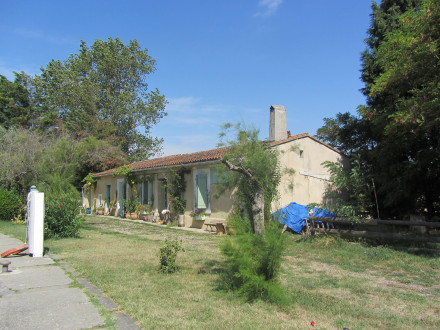
Canal du Midi, écluse (simple) de Bram, maison éclusière, commune de Bram, Aude, dernière écluse en Lauragais.
Photo prise le mercredi 15 aout 2012. 80 km 717 de la Garonne. Altitude : 125 m. 32e écluse sur le Canal à franchir par les navigants depuis son extrèmité occidentale à Toulouse. 34e écluse à l'origine sur le Canal avant les années 70. 33e écluse si l'on ne compte pas l'écluse de Garonne, la ou a été posée la première pierre du Canal du Midi, guère usitée (mais qui a conservé ses portes éclusières) et commune aux canux du Midi, Latéral à la Garonne et de Brienne). 32e écluse si on ôte aussi du décompte l'ancienne écluse Matabiau à Toulouse, qui a perdu sa fonction éclusière lors de la modernisation du Canal dans les années 70. On quitte le Lauragais pour entrer dans le pays Carcassonais. Localisation sur wikimapia : wikimapia.org/#lat=43.2646491&lon=2.1099628&z=15&... Sur ce lien, la carte des régions naturelles du département de l'Aude : blogvilles.blogspot.fr/2009/09/les-regions-naturelles-de-...
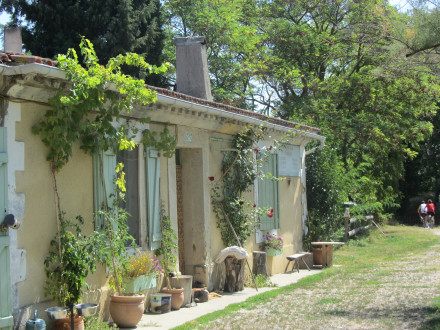
Canal du Midi, écluse (simple) de Bram, maison éclusière, commune de Bram, Aude, dernière écluse en Lauragais.
Photo prise le mercredi 15 aout 2012. 80 km 717 de la Garonne. Altitude : 125 m. 32e écluse sur le Canal à franchir par les navigants depuis son extrèmité occidentale à Toulouse. 34e écluse à l'origine sur le Canal avant les années 70. 33e écluse si l'on ne compte pas l'écluse de Garonne, la ou a été posée la première pierre du Canal du Midi, guère usitée (mais qui a conservé ses portes éclusières) et commune aux canux du Midi, Latéral à la Garonne et de Brienne). 32e écluse si on ôte aussi du décompte l'ancienne écluse Matabiau à Toulouse, qui a perdu sa fonction éclusière lors de la modernisation du Canal dans les années 70. Sympathique petite maison éclusière. On quitte le Lauragais pour entrer dans le pays Carcassonais. Localisation sur wikimapia : wikimapia.org/#lat=43.2646491&lon=2.1099628&z=15&... Sur ce lien, la carte des régions naturelles du département de l'Aude : blogvilles.blogspot.fr/2009/09/les-regions-naturelles-de-...
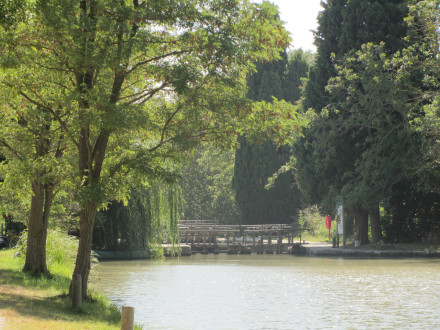
Canal du Midi, écluse (simple) de Bram, commune de Bram, Aude, dernière écluse en Lauragais.
Photo prise le mercredi 15 aout 2012. 80 km 717 de la Garonne. Altitude : 125 m. 32e écluse sur le Canal à franchir par les navigants depuis son extrèmité occidentale à Toulouse. 34e écluse à l'origine sur le Canal avant les années 70. 33e écluse si l'on ne compte pas l'écluse de Garonne, la ou a été posée la première pierre du Canal du Midi, guère usitée (mais qui a conservé ses portes éclusières) et commune aux canux du Midi, Latéral à la Garonne et de Brienne). 32e écluse si on ôte aussi du décompte l'ancienne écluse Matabiau à Toulouse, qui a perdu sa fonction éclusière lors de la modernisation du Canal dans les années 70. On quitte le Lauragais pour entrer dans le pays Carcassonais. Localisation sur wikimapia : wikimapia.org/#lat=43.2646491&lon=2.1099628&z=15&... Sur ce lien, la carte des régions naturelles du département de l'Aude : blogvilles.blogspot.fr/2009/09/les-regions-naturelles-de-...
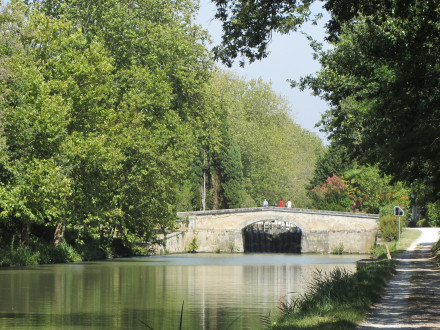
Canal du Midi, écluse (simple) de Sauzens (sens Etang de Thau Toulouse), commune de Bram, Aude.
Photo prise le mercredi 15 aout 2012. 79 km 498 de la Garonne. Altitude : 127 m. 33e écluse sur le Canal. 32e écluse si l'on ne compte pas l'écluse de Garonne, la ou a été posée la première pierre du Canal du Midi, guère usitée (mais qui a conservé ses portes éclusières) et commune aux canux du Midi, Latéral à la Garonne et de Brienne). 31e écluse si on ôte aussi du décompte l'ancienne écluse Matabiau à Toulouse, qui a perdu sa fonction éclusière lors de la modernisation du Canal dans les années 70. Arrivée du 32e bief (bief de Bram) de 1 km 219 en provenance de l'écluse de Bram. Localisation sur wikimapia : wikimapia.org/#lat=43.2646491&lon=2.1099628&z=15&... Sur ce lien, la carte des régions naturelles du département de l'Aude : blogvilles.blogspot.fr/2009/09/les-regions-naturelles-de-...
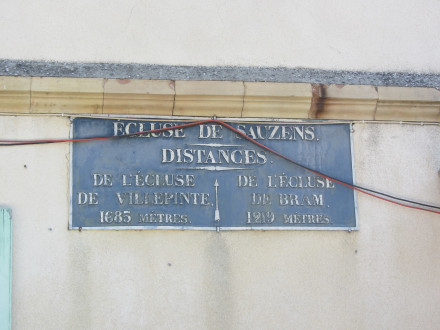
Canal du Midi, écluse (simple) de Sauzens, plaque de la maison éclusière, commune de Bram, Aude.
Photo prise le mercredi 15 aout 2012. 79 km 498 de la Garonne. Altitude : 127 m. 31e écluse sur le Canal à franchir par les navigants depuis son extrèmité occidentale à Toulouse. 33e écluse à l'origine sur le Canal avant les années 70. 32e écluse si l'on ne compte pas l'écluse de Garonne, la ou a été posée la première pierre du Canal du Midi, guère usitée (mais qui a conservé ses portes éclusières) et commune aux canux du Midi, Latéral à la Garonne et de Brienne). 31e écluse si on ôte aussi du décompte l'ancienne écluse Matabiau à Toulouse, qui a perdu sa fonction éclusière lors de la modernisation du Canal dans les années 70. Localisation sur wikimapia : wikimapia.org/#lat=43.2646491&lon=2.1099628&z=15&...
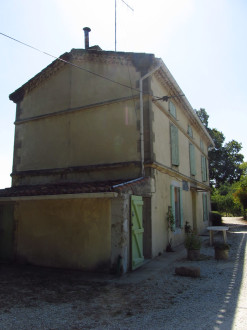
Canal du Midi, écluse (simple) de Sauzens, maison éclusière, commune de Bram, Aude.
Photo prise le mercredi 15 aout 2012. 79 km 498 de la Garonne. Altitude : 127 m. 31e écluse sur le Canal à franchir par les navigants depuis son extrèmité occidentale à Toulouse. 33e écluse à l'origine sur le Canal avant les années 70. 32e écluse si l'on ne compte pas l'écluse de Garonne, la ou a été posée la première pierre du Canal du Midi, guère usitée (mais qui a conservé ses portes éclusières) et commune aux canux du Midi, Latéral à la Garonne et de Brienne). 31e écluse si on ôte aussi du décompte l'ancienne écluse Matabiau à Toulouse, qui a perdu sa fonction éclusière lors de la modernisation du Canal dans les années 70. Une vue sur les 1 km 388 du bief de Tréboul et l'écluse de la Criminelle en arrière plan. Localisation sur wikimapia : wikimapia.org/#lat=43.2646491&lon=2.1099628&z=15&...
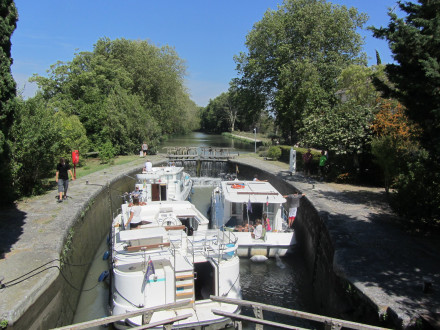
Canal du Midi, écluse (simple) de Sauzens, commune de Bram, Aude.
Photo prise le mercredi 15 aout 2012. 79 km 498 de la Garonne. Altitude : 127 m. 31e écluse sur le Canal à franchir par les navigants depuis son extrèmité occidentale à Toulouse. 33e écluse à l'origine sur le Canal avant les années 70. 32e écluse si l'on ne compte pas l'écluse de Garonne, la ou a été posée la première pierre du Canal du Midi, guère usitée (mais qui a conservé ses portes éclusières) et commune aux canux du Midi, Latéral à la Garonne et de Brienne). 31e écluse si on ôte aussi du décompte l'ancienne écluse Matabiau à Toulouse, qui a perdu sa fonction éclusière lors de la modernisation du Canal dans les années 70. Localisation sur wikimapia : wikimapia.org/#lat=43.2646491&lon=2.1099628&z=15&...
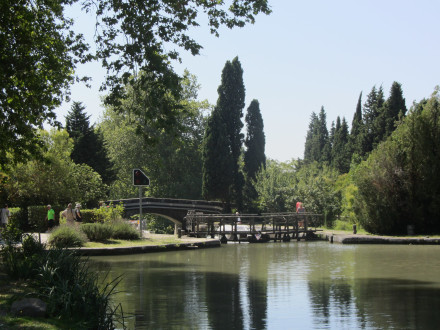
Canal du Midi, écluse (simple) de Sauzens, commune de Bram, Aude.
Photo prise le mercredi 15 aout 2012. 79 km 498 de la Garonne. Altitude : 127 m. 31e écluse sur le Canal à franchir par les navigants depuis son extrèmité occidentale à Toulouse. 33e écluse à l'origine sur le Canal avant les années 70. 32e écluse si l'on ne compte pas l'écluse de Garonne, la ou a été posée la première pierre du Canal du Midi, guère usitée (mais qui a conservé ses portes éclusières) et commune aux canux du Midi, Latéral à la Garonne et de Brienne). 31e écluse si on ôte aussi du décompte l'ancienne écluse Matabiau à Toulouse, qui a perdu sa fonction éclusière lors de la modernisation du Canal dans les années 70. Localisation sur wikimapia : wikimapia.org/#lat=43.2646491&lon=2.1099628&z=15&...
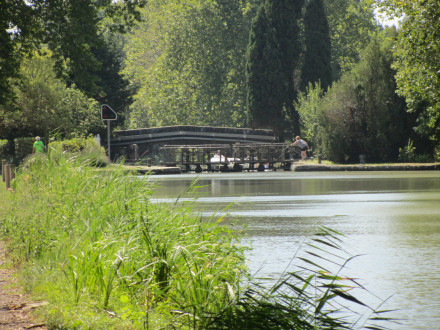
Canal du Midi, écluse (simple) de Sauzens, commune de Bram, Aude.
Photo prise le mercredi 15 aout 2012. 79 km 498 de la Garonne. Altitude : 127 m. 31e écluse sur le Canal à franchir par les navigants depuis son extrèmité occidentale à Toulouse. 33e écluse à l'origine sur le Canal avant les années 70. 32e écluse si l'on ne compte pas l'écluse de Garonne, la ou a été posée la première pierre du Canal du Midi, guère usitée (mais qui a conservé ses portes éclusières) et commune aux canux du Midi, Latéral à la Garonne et de Brienne). 31e écluse si on ôte aussi du décompte l'ancienne écluse Matabiau à Toulouse, qui a perdu sa fonction éclusière lors de la modernisation du Canal dans les années 70. Localisation sur wikimapia : wikimapia.org/#lat=43.2646491&lon=2.1099628&z=15&...
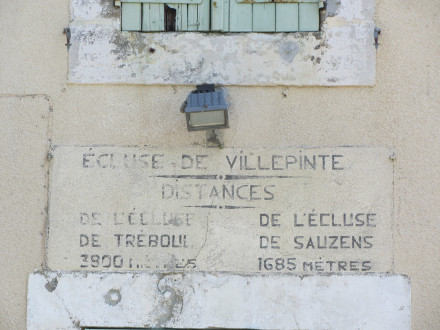
Canal du Midi, écluse (simple) de Villepinte, plaque de la maison éclusière, commune de Villepinte, Aude.
Photo prise le mercredi 15 aout 2012. 77 km 813 de la Garonne. Altitude :130 m. 30e écluse sur le Canal à franchir par les navigants depuis son extrèmité occidentale à Toulouse. 32e écluse à l'origine sur le Canal avant les années 70. 31e écluse si l'on ne compte pas l'écluse de Garonne, la ou a été posée la première pierre du Canal du Midi, guère usitée (mais qui a conservé ses portes éclusières) et commune aux canux du Midi, Latéral à la Garonne et de Brienne). 30e écluse si on ôte aussi du décompte l'ancienne écluse Matabiau à Toulouse, qui a perdu sa fonction éclusière lors de la modernisation du Canal dans les années 70. Il est à regretter qu'il n'y ait plus de plaque. Au moins les indications ont-elles le mérite d'exister !!! Pour en savoir plus sur l'épanchoir de Villepinte, situé à proximité : www.canaldumidi.com/Lauragais/Villepinte/Villepinte.php Localisation sur wikimapia : wikimapia.org/#lat=43.2778043&lon=2.0711245&z=15&...
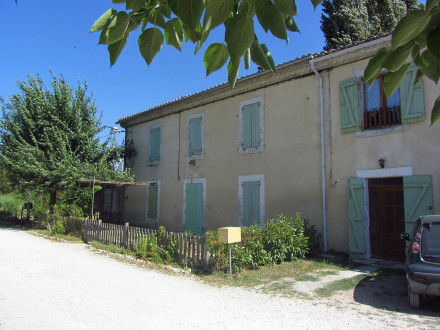
Canal du Midi, écluse (simple) de Villepinte, maison éclusière, commune de Villepinte, Aude.
Photo prise le mercredi 15 aout 2012. 77 km 813 de la Garonne. Altitude :130 m. 30e écluse sur le Canal à franchir par les navigants depuis son extrèmité occidentale à Toulouse. 32e écluse à l'origine sur le Canal avant les années 70. 31e écluse si l'on ne compte pas l'écluse de Garonne, la ou a été posée la première pierre du Canal du Midi, guère usitée (mais qui a conservé ses portes éclusières) et commune aux canux du Midi, Latéral à la Garonne et de Brienne). 30e écluse si on ôte aussi du décompte l'ancienne écluse Matabiau à Toulouse, qui a perdu sa fonction éclusière lors de la modernisation du Canal dans les années 70. Pour en savoir plus sur l'épanchoir de Villepinte, situé à proximité : www.canaldumidi.com/Lauragais/Villepinte/Villepinte.php Localisation sur wikimapia : wikimapia.org/#lat=43.2778043&lon=2.0711245&z=15&...
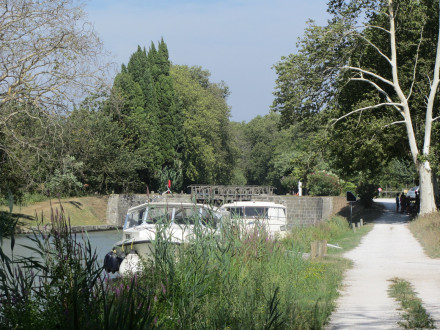
Canal du Midi, écluse (simple) de Villepinte, commune de Villepinte, Aude.
Photo prise le mercredi 15 aout 2012. 77 km 813 de la Garonne. Altitude :130 m. 30e écluse sur le Canal à franchir par les navigants depuis son extrèmité occidentale à Toulouse. 32e écluse à l'origine sur le Canal avant les années 70. 31e écluse si l'on ne compte pas l'écluse de Garonne, la ou a été posée la première pierre du Canal du Midi, guère usitée (mais qui a conservé ses portes éclusières) et commune aux canux du Midi, Latéral à la Garonne et de Brienne). 30e écluse si on ôte aussi du décompte l'ancienne écluse Matabiau à Toulouse, qui a perdu sa fonction éclusière lors de la modernisation du Canal dans les années 70. Pour en savoir plus sur l'épanchoir de Villepinte, situé à proximité : www.canaldumidi.com/Lauragais/Villepinte/Villepinte.php Localisation sur wikimapia : wikimapia.org/#lat=43.2778043&lon=2.0711245&z=15&...
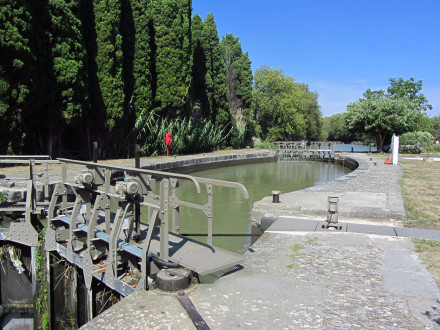
Canal du Midi, écluse (simple) de Villepinte, commune de Villepinte, Aude.
Photo prise le mercredi 15 aout 2012. 77 km 813 de la Garonne. Altitude :130 m. 30e écluse sur le Canal à franchir par les navigants depuis son extrèmité occidentale à Toulouse. 32e écluse à l'origine sur le Canal avant les années 70. 31e écluse si l'on ne compte pas l'écluse de Garonne, la ou a été posée la première pierre du Canal du Midi, guère usitée (mais qui a conservé ses portes éclusières) et commune aux canux du Midi, Latéral à la Garonne et de Brienne). 30e écluse si on ôte aussi du décompte l'ancienne écluse Matabiau à Toulouse, qui a perdu sa fonction éclusière lors de la modernisation du Canal dans les années 70. Pour en savoir plus sur l'épanchoir de Villepinte, situé à proximité : www.canaldumidi.com/Lauragais/Villepinte/Villepinte.php Localisation sur wikimapia : wikimapia.org/#lat=43.2778043&lon=2.0711245&z=15&...
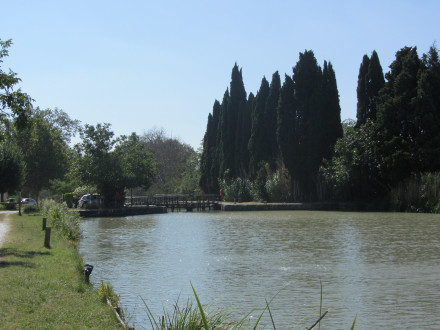
Canal du Midi, écluse (simple) de Villepinte, commune de Villepinte, Aude.
Photo prise le mercredi 15 aout 2012. 77 km 813 de la Garonne. Altitude :130 m. 30e écluse sur le Canal à franchir par les navigants depuis son extrèmité occidentale à Toulouse. 32e écluse à l'origine sur le Canal avant les années 70. 31e écluse si l'on ne compte pas l'écluse de Garonne, la ou a été posée la première pierre du Canal du Midi, guère usitée (mais qui a conservé ses portes éclusières) et commune aux canux du Midi, Latéral à la Garonne et de Brienne). 30e écluse si on ôte aussi du décompte l'ancienne écluse Matabiau à Toulouse, qui a perdu sa fonction éclusière lors de la modernisation du Canal dans les années 70. Pour en savoir plus sur l'épanchoir de Villepinte, situé à proximité : www.canaldumidi.com/Lauragais/Villepinte/Villepinte.php Localisation sur wikimapia : wikimapia.org/#lat=43.2778043&lon=2.0711245&z=15&...
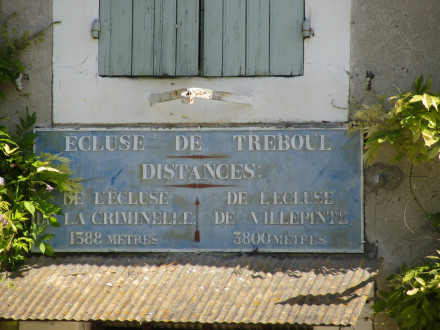
Canal du Midi, écluse (simple) de Tréboul, plaque de la maison éclusière, commune de Pexiora, Aude.
Photo prise le mercredi 15 aout 2012. 74 km 013 de la Garonne Altitude : 134 m. 29e écluse sur le Canal à franchir par les navigants depuis son extrèmité occidentale à Toulouse. 31e écluse à l'origine sur le Canal avant les années 70. 30e écluse si l'on ne compte pas l'écluse de Garonne, la ou a été posée la première pierre du Canal du Midi, guère usitée (mais qui a conservé ses portes éclusières) et commune aux canux du Midi, Latéral à la Garonne et de Brienne). 29e écluse si on ôte aussi du décompte l'ancienne écluse Matabiau à Toulouse, qui a perdu sa fonction éclusière lors de la modernisation du Canal dans les années 70. Localisation sur wikimapia : wikimapia.org/#lat=43.283467&lon=2.0436157&z=16&a...
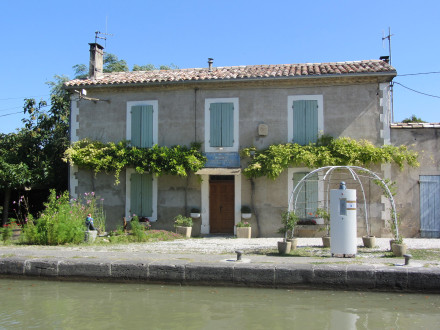
Canal du Midi, écluse (simple) de Tréboul, maison éclusière, commune de Pexiora, Aude.
Photo prise le mercredi 15 aout 2012. 74 km 013 de la Garonne Altitude : 134 m. 29e écluse sur le Canal à franchir par les navigants depuis son extrèmité occidentale à Toulouse. 31e écluse à l'origine sur le Canal avant les années 70. 30e écluse si l'on ne compte pas l'écluse de Garonne, la ou a été posée la première pierre du Canal du Midi, guère usitée (mais qui a conservé ses portes éclusières) et commune aux canux du Midi, Latéral à la Garonne et de Brienne). 29e écluse si on ôte aussi du décompte l'ancienne écluse Matabiau à Toulouse, qui a perdu sa fonction éclusière lors de la modernisation du Canal dans les années 70. Localisation sur wikimapia : wikimapia.org/#lat=43.283467&lon=2.0436157&z=16&a...
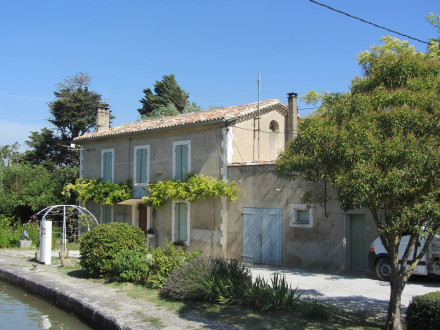
Canal du Midi, écluse (simple) de Tréboul, maison éclusière, commune de Pexiora, Aude.
Photo prise le mercredi 15 aout 2012. 74 km 013 de la Garonne Altitude : 134 m. 29e écluse sur le Canal à franchir par les navigants depuis son extrèmité occidentale à Toulouse. 31e écluse à l'origine sur le Canal avant les années 70. 30e écluse si l'on ne compte pas l'écluse de Garonne, la ou a été posée la première pierre du Canal du Midi, guère usitée (mais qui a conservé ses portes éclusières) et commune aux canux du Midi, Latéral à la Garonne et de Brienne). 29e écluse si on ôte aussi du décompte l'ancienne écluse Matabiau à Toulouse, qui a perdu sa fonction éclusière lors de la modernisation du Canal dans les années 70. Localisation sur wikimapia : wikimapia.org/#lat=43.283467&lon=2.0436157&z=16&a...
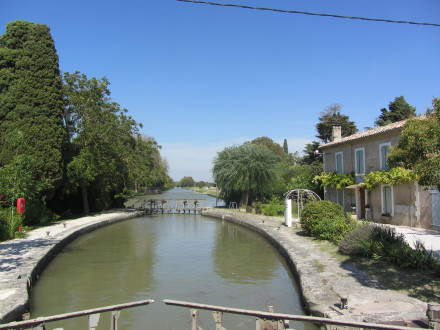
Canal du Midi, écluse (simple) de Tréboul, commune de Pexiora, Aude.
Photo prise le mercredi 15 aout 2012. 74 km 013 de la Garonne Altitude : 134 m. 29e écluse sur le Canal à franchir par les navigants depuis son extrèmité occidentale à Toulouse. 31e écluse à l'origine sur le Canal avant les années 70. 30e écluse si l'on ne compte pas l'écluse de Garonne, la ou a été posée la première pierre du Canal du Midi, guère usitée (mais qui a conservé ses portes éclusières) et commune aux canux du Midi, Latéral à la Garonne et de Brienne). 29e écluse si on ôte aussi du décompte l'ancienne écluse Matabiau à Toulouse, qui a perdu sa fonction éclusière lors de la modernisation du Canal dans les années 70. Une vue sur les 1 km 388 du bief de Tréboul et l'écluse de la Criminelle en arrière plan. L'écluse et son bâtiment se trouvent sur la commune de Pexiora. Derrière ce dernier commpence la commune de Lasbordes. Localisation sur wikimapia : wikimapia.org/#lat=43.283467&lon=2.0436157&z=16&a...
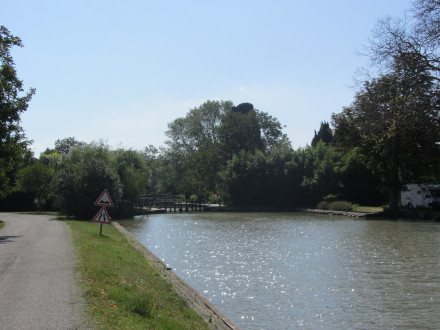
Canal du Midi, écluse (simple) de Tréboul, commune de Pexiora, Aude.
Photo prise le mercredi 15 aout 2012. 74 km 013 de la Garonne Altitude : 134 m. 29e écluse sur le Canal à franchir par les navigants depuis son extrèmité occidentale à Toulouse. 31e écluse à l'origine sur le Canal avant les années 70. 30e écluse si l'on ne compte pas l'écluse de Garonne, la ou a été posée la première pierre du Canal du Midi, guère usitée (mais qui a conservé ses portes éclusières) et commune aux canux du Midi, Latéral à la Garonne et de Brienne). 29e écluse si on ôte aussi du décompte l'ancienne écluse Matabiau à Toulouse, qui a perdu sa fonction éclusière lors de la modernisation du Canal dans les années 70. A gauche de la route, commune de Lasbordes, à droite, la commune de Pexiora. Localisation sur wikimapia : wikimapia.org/#lat=43.283467&lon=2.0436157&z=16&a...
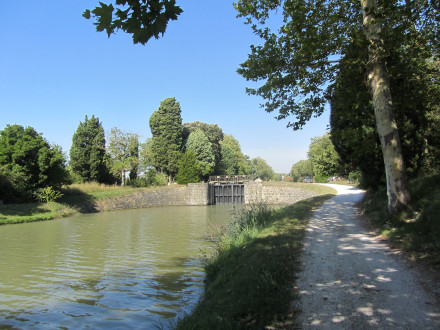
Canal du Midi, écluse (simple) de La Criminelle, commune de Saint Martin Lalande, Aude.
Photo prise le mercredi 15 aout 2012. 72 km 625 de la Garonne. Altitude : 137 m. 28e écluse sur le Canal à franchir par les navigants depuis son extrèmité occidentale à Toulouse. 30e écluse à l'origine sur le Canal avant les années 70. 29e écluse si l'on ne compte pas l'écluse de Garonne, la ou a été posée la première pierre du Canal du Midi, guère usitée (mais qui a conservé ses portes éclusières) et commune aux canux du Midi, Latéral à la Garonne et de Brienne). 28e écluse si on ôte aussi du décompte l'ancienne écluse Matabiau à Toulouse, qui a perdu sa fonction éclusière lors de la modernisation du Canal dans les années 70. Localisation sur wikimapia : wikimapia.org/#lat=43.2890901&lon=2.0247115&z=16&...
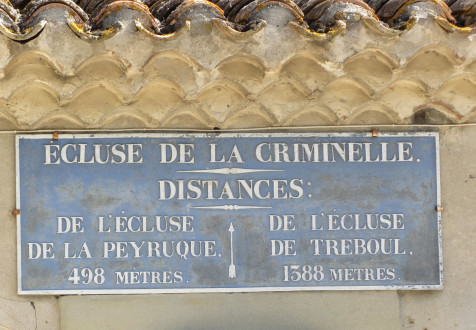
Canal du Midi, écluse (simple) de La Criminelle, plaque de la maison éclusière, commune de Saint Martin Lalande, Aude.
Photo prise le mercredi 15 aout 2012. 72 km 625 de la Garonne. Altitude : 137 m. 28e écluse sur le Canal à franchir par les navigants depuis son extrèmité occidentale à Toulouse. 30e écluse à l'origine sur le Canal avant les années 70. 29e écluse si l'on ne compte pas l'écluse de Garonne, la ou a été posée la première pierre du Canal du Midi, guère usitée (mais qui a conservé ses portes éclusières) et commune aux canux du Midi, Latéral à la Garonne et de Brienne). 28e écluse si on ôte aussi du décompte l'ancienne écluse Matabiau à Toulouse, qui a perdu sa fonction éclusière lors de la modernisation du Canal dans les années 70. Localisation sur wikimapia : wikimapia.org/#lat=43.2890901&lon=2.0247115&z=16&...
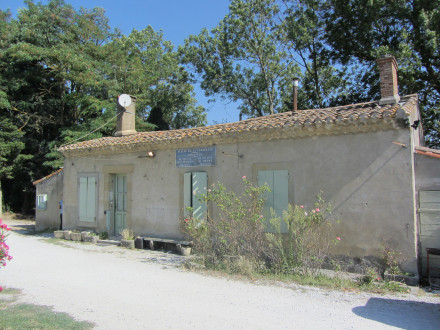
Canal du Midi, écluse (simple) de La Criminelle, maison éclusière, commune de Saint Martin Lalande, Aude.
Photo prise le mercredi 15 aout 2012. 72 km 625 de la Garonne. Altitude : 137 m. La plus petite maison éclusière de tout le canal (en données 2012). 28e écluse sur le Canal à franchir par les navigants depuis son extrèmité occidentale à Toulouse. 30e écluse à l'origine sur le Canal avant les années 70. 29e écluse si l'on ne compte pas l'écluse de Garonne, la ou a été posée la première pierre du Canal du Midi, guère usitée (mais qui a conservé ses portes éclusières) et commune aux canux du Midi, Latéral à la Garonne et de Brienne). 28e écluse si on ôte aussi du décompte l'ancienne écluse Matabiau à Toulouse, qui a perdu sa fonction éclusière lors de la modernisation du Canal dans les années 70. Localisation sur wikimapia : wikimapia.org/#lat=43.2890901&lon=2.0247115&z=16&...
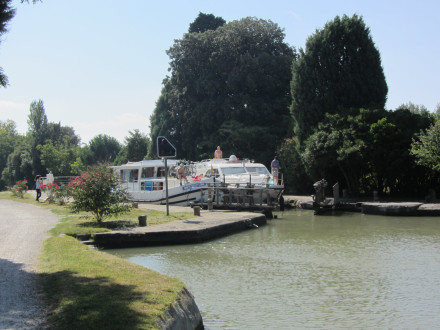
Canal du Midi, écluse (simple) de La Criminelle, commune de Saint Martin Lalande, Aude.
Photo prise le mercredi 15 aout 2012. 72 km 625 de la Garonne. Altitude : 137 m. 28e écluse sur le Canal à franchir par les navigants depuis son extrèmité occidentale à Toulouse. 30e écluse à l'origine sur le Canal avant les années 70. 29e écluse si l'on ne compte pas l'écluse de Garonne, la ou a été posée la première pierre du Canal du Midi, guère usitée (mais qui a conservé ses portes éclusières) et commune aux canux du Midi, Latéral à la Garonne et de Brienne). 28e écluse si on ôte aussi du décompte l'ancienne écluse Matabiau à Toulouse, qui a perdu sa fonction éclusière lors de la modernisation du Canal dans les années 70. Localisation sur wikimapia : wikimapia.org/#lat=43.2890901&lon=2.0247115&z=16&...
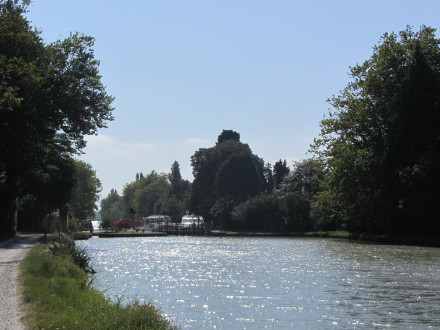
Canal du Midi, écluse (simple) de La Criminelle, commune de Saint Martin Lalande, Aude.
Photo prise le mercredi 15 aout 2012. 72 km 625 de la Garonne. Altitude : 137 m. 28e écluse sur le Canal à franchir par les navigants depuis son extrèmité occidentale à Toulouse. 30e écluse à l'origine sur le Canal avant les années 70. 29e écluse si l'on ne compte pas l'écluse de Garonne, la ou a été posée la première pierre du Canal du Midi, guère usitée (mais qui a conservé ses portes éclusières) et commune aux canux du Midi, Latéral à la Garonne et de Brienne). 28e écluse si on ôte aussi du décompte l'ancienne écluse Matabiau à Toulouse, qui a perdu sa fonction éclusière lors de la modernisation du Canal dans les années 70. Localisation sur wikimapia : wikimapia.org/#lat=43.2890901&lon=2.0247115&z=16&...
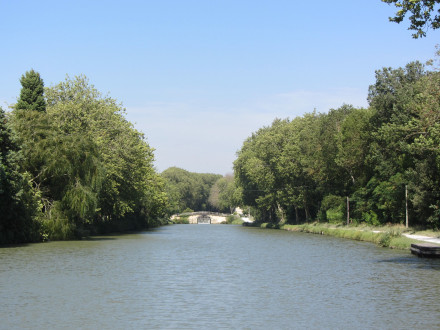
Canal du Midi, 28e bief (bief de La Criminelle, 0 km 498, sens Etang de Thau Toulouse).
Photo prise le mercredi 15 aout 2012. Commune traversée par le bief : Saint Martin Lalande (Lauragais, Aude, région Languedoc Roussillon). Vue sur le 29e bief (bief de la Peyruque de 0 km 498 et l'écluse de Guerre). Localisation sur wikimapia : wikimapia.org/#lat=43.2890901&lon=2.0247115&z=16&...
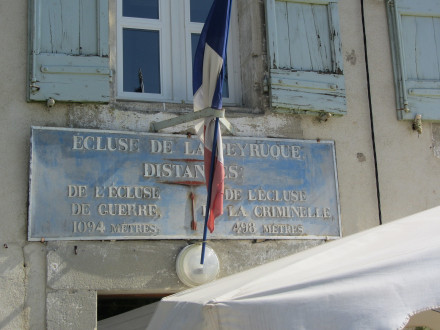
Canal du Midi, écluse de La Peyruque, plaque de la maison éclusière, commune de Saint Martin Lalande, Aude.
Photo prise le mercredi 15 aout 2012. 72 km 127 de la Garonne. Altitude : 139 m. 27e écluse sur le Canal à franchir par les navigants depuis son extrèmité occidentale à Toulouse. 29e écluse à l'origine sur le Canal avant les années 70. 28e écluse si l'on ne compte pas l'écluse de Garonne, la ou a été posée la première pierre du Canal du Midi, guère usitée (mais qui a conservé ses portes éclusières) et commune aux canux du Midi, Latéral à la Garonne et de Brienne). 27e écluse si on ôte aussi du décompte l'ancienne écluse Matabiau à Toulouse, qui a perdu sa fonction éclusière lors de la modernisation du Canal dans les années 70. Localisation sur wikimapia : wikimapia.org/#lat=43.2890901&lon=2.0247115&z=16&...
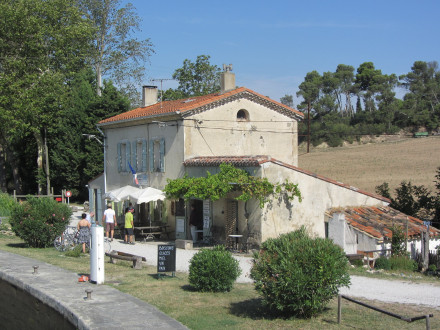
Canal du Midi, écluse (simple) de La Peyruque, maison éclusière, commune de Saint Martin Lalande, Aude.
Photo prise le mercredi 15 aout 2012. 72 km 127 de la Garonne. Altitude : 139 m. 27e écluse sur le Canal à franchir par les navigants depuis son extrèmité occidentale à Toulouse. 29e écluse à l'origine sur le Canal avant les années 70. 28e écluse si l'on ne compte pas l'écluse de Garonne, la ou a été posée la première pierre du Canal du Midi, guère usitée (mais qui a conservé ses portes éclusières) et commune aux canux du Midi, Latéral à la Garonne et de Brienne). 27e écluse si on ôte aussi du décompte l'ancienne écluse Matabiau à Toulouse, qui a perdu sa fonction éclusière lors de la modernisation du Canal dans les années 70. Localisation sur wikimapia : wikimapia.org/#lat=43.2890901&lon=2.0247115&z=16&...
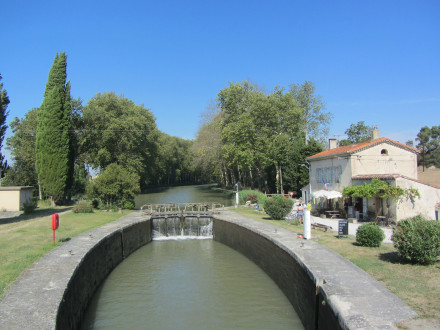
Canal du Midi, écluse (simple) de La Peyruque, commune de Saint Martin Lalande, Aude.
Photo prise le mercredi 15 aout 2012. 72 km 127 de la Garonne. Altitude : 139 m. 27e écluse sur le Canal à franchir par les navigants depuis son extrèmité occidentale à Toulouse. 29e écluse à l'origine sur le Canal avant les années 70. 28e écluse si l'on ne compte pas l'écluse de Garonne, la ou a été posée la première pierre du Canal du Midi, guère usitée (mais qui a conservé ses portes éclusières) et commune aux canux du Midi, Latéral à la Garonne et de Brienne). 27e écluse si on ôte aussi du décompte l'ancienne écluse Matabiau à Toulouse, qui a perdu sa fonction éclusière lors de la modernisation du Canal dans les années 70. Localisation sur wikimapia : wikimapia.org/#lat=43.2890901&lon=2.0247115&z=16&...
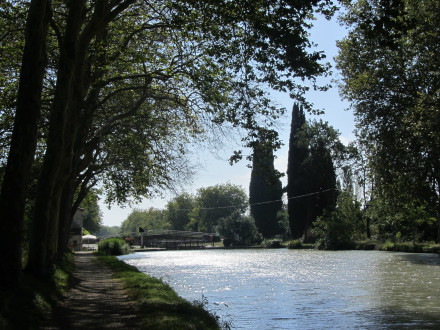
Canal du Midi, écluse (simple) de La Peyruque, commune de Saint Martin Lalande, Aude.
Photo prise le mercredi 15 aout 2012. 72 km 127 de la Garonne. Altitude : 139 m. 27e écluse sur le Canal à franchir par les navigants depuis son extrèmité occidentale à Toulouse. 29e écluse à l'origine sur le Canal avant les années 70. 28e écluse si l'on ne compte pas l'écluse de Garonne, la ou a été posée la première pierre du Canal du Midi, guère usitée (mais qui a conservé ses portes éclusières) et commune aux canux du Midi, Latéral à la Garonne et de Brienne). 27e écluse si on ôte aussi du décompte l'ancienne écluse Matabiau à Toulouse, qui a perdu sa fonction éclusière lors de la modernisation du Canal dans les années 70. Localisation sur wikimapia : wikimapia.org/#lat=43.2890901&lon=2.0247115&z=16&...
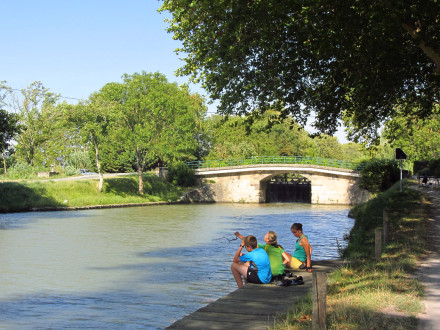
Canal du Midi, écluse (simple) de Guerre (sens Etang de Thau Toulouse), commune de Saint Martin Lalande, Aude.
Photo prise le mercredi 15 aout 2012. 71 km 033 de la Garonne. Altitude 141 m. 26e écluse sur le Canal à franchir par les navigants depuis son extrèmité occidentale à Toulouse. 28e écluse à l'origine sur le Canal avant les années 70. 27e écluse si l'on ne compte pas l'écluse de Garonne, la ou a été posée la première pierre du Canal du Midi, guère usitée (mais qui a conservé ses portes éclusières) et commune aux canux du Midi, Latéral à la Garonne et de Brienne). 26e écluse si on ôte aussi du décompte l'ancienne écluse Matabiau à Toulouse, qui a perdu sa fonction éclusière lors de la modernisation du Canal dans les années 70. Arrivée du 27e bief (bief de La Peyruque) de 1 km 094 en provenance de l'écluse de La Peyruque. Localisation sur wikimapia : wikimapia.org/#lat=43.2942442&lon=2.0038332&z=16&...
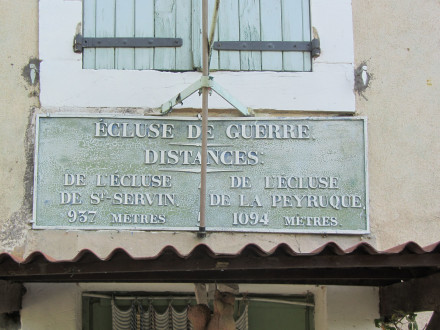
Canal du Midi, écluse (simple) de Guerre, plaque de maison éclusière, commune de Saint Martin Lalande, Aude.
Photo prise le mercredi 15 aout 2012. 71 km 033 de la Garonne. Altitude 141 m. 26e écluse sur le Canal à franchir par les navigants depuis son extrèmité occidentale à Toulouse. 28e écluse à l'origine sur le Canal avant les années 70. 27e écluse si l'on ne compte pas l'écluse de Garonne, la ou a été posée la première pierre du Canal du Midi, guère usitée (mais qui a conservé ses portes éclusières) et commune aux canux du Midi, Latéral à la Garonne et de Brienne). 26e écluse si on ôte aussi du décompte l'ancienne écluse Matabiau à Toulouse, qui a perdu sa fonction éclusière lors de la modernisation du Canal dans les années 70. Il est à noter une erreur de "frappe" sur la dénomination de l'écluse qui précède : il fallait lire "St Sernin" et non "St Servin". Localisation sur wikimapia : wikimapia.org/#lat=43.2942442&lon=2.0038332&z=16&...
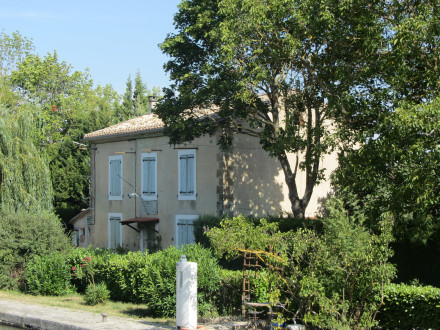
Canal du Midi, écluse (simple) de Guerre, maison éclusière, commune de Saint Martin Lalande, Aude.
Photo prise le mercredi 15 aout 2012. 71 km 033 de la Garonne. Altitude 141 m. 26e écluse sur le Canal à franchir par les navigants depuis son extrèmité occidentale à Toulouse. 28e écluse à l'origine sur le Canal avant les années 70. 27e écluse si l'on ne compte pas l'écluse de Garonne, la ou a été posée la première pierre du Canal du Midi, guère usitée (mais qui a conservé ses portes éclusières) et commune aux canux du Midi, Latéral à la Garonne et de Brienne). 26e écluse si on ôte aussi du décompte l'ancienne écluse Matabiau à Toulouse, qui a perdu sa fonction éclusière lors de la modernisation du Canal dans les années 70. Localisation sur wikimapia : wikimapia.org/#lat=43.2942442&lon=2.0038332&z=16&...
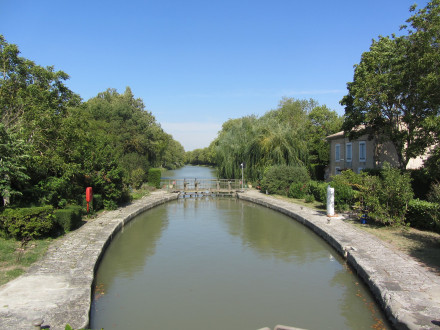
Canal du Midi, écluse (simple) de Guerre, commune de Saint Martin Lalande, Aude.
Photo prise le mercredi 15 aout 2012. 71 km 033 de la Garonne. Altitude 141 m. 26e écluse sur le Canal à franchir par les navigants depuis son extrèmité occidentale à Toulouse. 28e écluse à l'origine sur le Canal avant les années 70. 27e écluse si l'on ne compte pas l'écluse de Garonne, la ou a été posée la première pierre du Canal du Midi, guère usitée (mais qui a conservé ses portes éclusières) et commune aux canux du Midi, Latéral à la Garonne et de Brienne). 26e écluse si on ôte aussi du décompte l'ancienne écluse Matabiau à Toulouse, qui a perdu sa fonction éclusière lors de la modernisation du Canal dans les années 70. Localisation sur wikimapia : wikimapia.org/#lat=43.2942442&lon=2.0038332&z=16&...
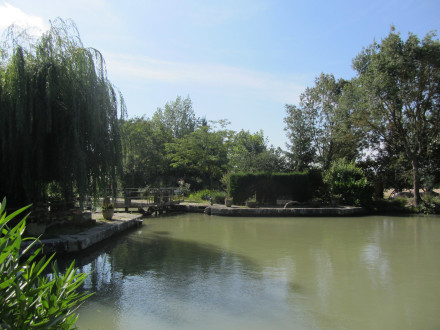
Canal du Midi, écluse (simple) de Guerre, commune de Saint Martin Lalande, Aude.
Photo prise le mercredi 15 aout 2012. 71 km 033 de la Garonne. Altitude 141 m. 26e écluse sur le Canal à franchir par les navigants depuis son extrèmité occidentale à Toulouse. 28e écluse à l'origine sur le Canal avant les années 70. 27e écluse si l'on ne compte pas l'écluse de Garonne, la ou a été posée la première pierre du Canal du Midi, guère usitée (mais qui a conservé ses portes éclusières) et commune aux canux du Midi, Latéral à la Garonne et de Brienne). 26e écluse si on ôte aussi du décompte l'ancienne écluse Matabiau à Toulouse, qui a perdu sa fonction éclusière lors de la modernisation du Canal dans les années 70. Localisation sur wikimapia : wikimapia.org/#lat=43.2942442&lon=2.0038332&z=16&...
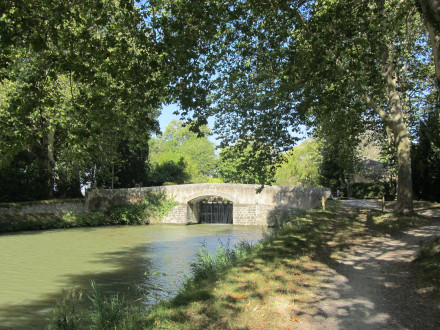
Canal du Midi, écluse (simple) de Saint Sernin (sens Etang de Thau Toulouse), commune de Saint Martin Lalande, Aude.
Photo prise le mercredi 15 aout 2012. 25e écluse sur le Canal à franchir par les navigants depuis son extrèmité occidentale à Toulouse. 27e écluse à l'origine sur le Canal avant les années 70. 26e écluse si l'on ne compte pas l'écluse de Garonne, la ou a été posée la première pierre du Canal du Midi, guère usitée (mais qui a conservé ses portes éclusières) et commune aux canux du Midi, Latéral à la Garonne et de Brienne). 25e écluse si on ôte aussi du décompte l'ancienne écluse Matabiau à Toulouse, qui a perdu sa fonction éclusière lors de la modernisation du Canal dans les années 70. Arrivée du 26e bief (bief de Guerre) de 0 km 937 en provenance de l'écluse de Guerre. Localisation sur wikimapia : wikimapia.org/#lat=43.2942442&lon=2.0038332&z=16&...
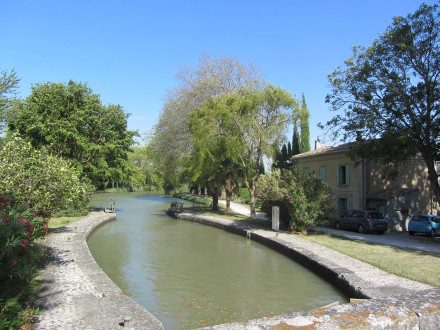
Canal du Midi, écluse (simple) de Saint Sernin (sens Etang de Thau Toulouse), commune de Saint Martin Lalande, Aude.
Photo prise le mercredi 15 aout 2012. 70 km 096 de la Garonne. Altitude : 144 m. 25e écluse sur le Canal à franchir par les navigants depuis son extrèmité occidentale à Toulouse. 27e écluse à l'origine sur le Canal avant les années 70. 26e écluse si l'on ne compte pas l'écluse de Garonne, la ou a été posée la première pierre du Canal du Midi, guère usitée (mais qui a conservé ses portes éclusières) et commune aux canux du Midi, Latéral à la Garonne et de Brienne). 25e écluse si on ôte aussi du décompte l'ancienne écluse Matabiau à Toulouse, qui a perdu sa fonction éclusière lors de la modernisation du Canal dans les années 70. Localisation sur wikimapia : wikimapia.org/#lat=43.2942442&lon=2.0038332&z=16&...
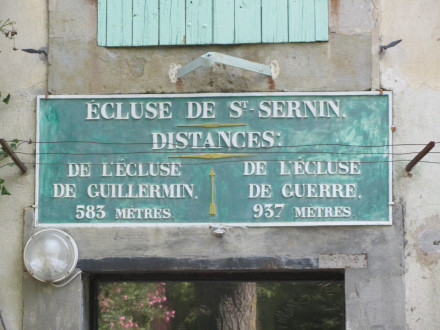
Canal du Midi, écluse (simple) de Saint Sernin, plaque de maison éclusière, commune de Saint Martin Lalande, Aude.
Photo prise le mercredi 15 aout 2012. 70 km 096 de la Garonne. Altitude : 144 m. 25e écluse sur le Canal à franchir par les navigants depuis son extrèmité occidentale à Toulouse. 27e écluse à l'origine sur le Canal avant les années 70. 26e écluse si l'on ne compte pas l'écluse de Garonne, la ou a été posée la première pierre du Canal du Midi, guère usitée (mais qui a conservé ses portes éclusières) et commune aux canux du Midi, Latéral à la Garonne et de Brienne). 25e écluse si on ôte aussi du décompte l'ancienne écluse Matabiau à Toulouse, qui a perdu sa fonction éclusière lors de la modernisation du Canal dans les années 70. Localisation sur wikimapia : wikimapia.org/#lat=43.2942442&lon=2.0038332&z=16&...

Canal du Midi, écluse (simple) de Saint Sernin, maison éclusière, commune de Saint Martin Lalande, Aude.
Photo prise le mercredi 15 aout 2012. 70 km 096 de la Garonne. Altitude : 144 m. 25e écluse sur le Canal à franchir par les navigants depuis son extrèmité occidentale à Toulouse. 27e écluse à l'origine sur le Canal avant les années 70. 26e écluse si l'on ne compte pas l'écluse de Garonne, la ou a été posée la première pierre du Canal du Midi, guère usitée (mais qui a conservé ses portes éclusières) et commune aux canux du Midi, Latéral à la Garonne et de Brienne). 25e écluse si on ôte aussi du décompte l'ancienne écluse Matabiau à Toulouse, qui a perdu sa fonction éclusière lors de la modernisation du Canal dans les années 70. Bien que le code couleur soit respecté tant sur le l'enduit du bâtiment que sur les menuiseries et des volets (sauf pour la porte), on ne peut que regretter les finitions hétérolites des fenêtres : 3 modèles différents inclutant la fenêtre aux petits carreaux symbole de la standardisation néo rustique de mauvais goût des années soixante dix qui ont tant esquinté l'esthétique des maisons françaises. Je ne mentionne pas non plus ces modèles de volets en z qui font ressembler toutes les maisons qui en sont équipées de Dunkerque à Marseille. Localisation sur wikimapia : wikimapia.org/#lat=43.2942442&lon=2.0038332&z=16&...
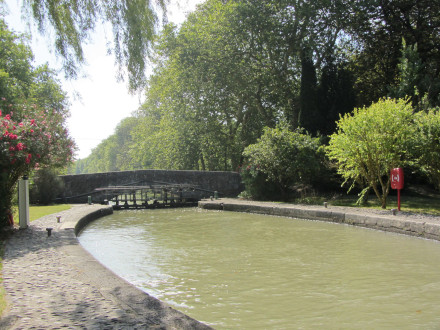
Canal du Midi, écluse (simple) de Saint Sernin, commune de Saint Martin Lalande, Aude.
Photo prise le mercredi 15 aout 2012. 70 km 096 de la Garonne. Altitude : 144 m. 25e écluse sur le Canal à franchir par les navigants depuis son extrèmité occidentale à Toulouse. 27e écluse à l'origine sur le Canal avant les années 70. 26e écluse si l'on ne compte pas l'écluse de Garonne, la ou a été posée la première pierre du Canal du Midi, guère usitée (mais qui a conservé ses portes éclusières) et commune aux canux du Midi, Latéral à la Garonne et de Brienne). 25e écluse si on ôte aussi du décompte l'ancienne écluse Matabiau à Toulouse, qui a perdu sa fonction éclusière lors de la modernisation du Canal dans les années 70. Localisation sur wikimapia : wikimapia.org/#lat=43.2942442&lon=2.0038332&z=16&...
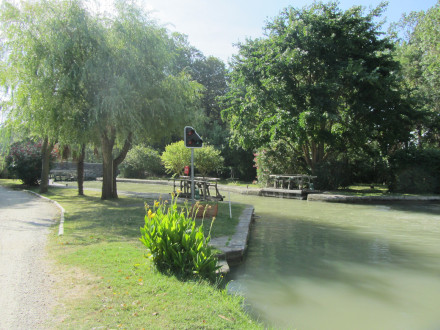
Canal du Midi, écluse (simple) de Saint Sernin, commune de Saint Martin Lalande, Aude.
Photo prise le mercredi 15 aout 2012. 70 km 096 de la Garonne. Altitude : 144 m. 25e écluse sur le Canal à franchir par les navigants depuis son extrèmité occidentale à Toulouse. 27e écluse à l'origine sur le Canal avant les années 70. 26e écluse si l'on ne compte pas l'écluse de Garonne, la ou a été posée la première pierre du Canal du Midi, guère usitée (mais qui a conservé ses portes éclusières) et commune aux canux du Midi, Latéral à la Garonne et de Brienne). 25e écluse si on ôte aussi du décompte l'ancienne écluse Matabiau à Toulouse, qui a perdu sa fonction éclusière lors de la modernisation du Canal dans les années 70. Localisation sur wikimapia : wikimapia.org/#lat=43.2942442&lon=2.0038332&z=16&...
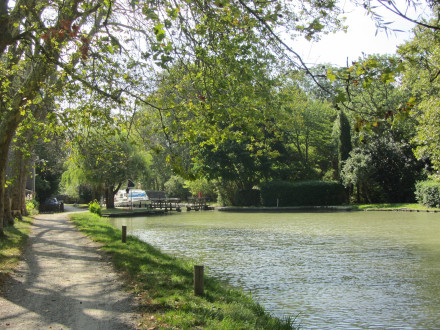
Canal du Midi, écluse (simple) de Saint Sernin, commune de Saint Martin Lalande, Aude.
Photo prise le mercredi 15 aout 2012. 70 km 096 de la Garonne. Altitude : 144 m. 25e écluse sur le Canal à franchir par les navigants depuis son extrèmité occidentale à Toulouse. 27e écluse à l'origine sur le Canal avant les années 70. 26e écluse si l'on ne compte pas l'écluse de Garonne, la ou a été posée la première pierre du Canal du Midi, guère usitée (mais qui a conservé ses portes éclusières) et commune aux canux du Midi, Latéral à la Garonne et de Brienne). 25e écluse si on ôte aussi du décompte l'ancienne écluse Matabiau à Toulouse, qui a perdu sa fonction éclusière lors de la modernisation du Canal dans les années 70. Localisation sur wikimapia : wikimapia.org/#lat=43.2942442&lon=2.0038332&z=16&...
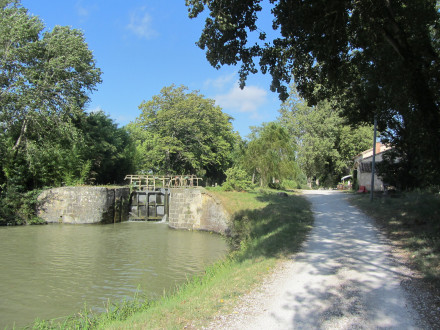
Canal du Midi, écluse (simple) de Guillermin (sens Etang de Thau Toulouse), commune de Saint Martin Lalande, Aude.
Photo prise le mercredi 15 aout 2012. 69 km 513 de la Garonne. Altitude : 147 m. 24e écluse sur le Canal à franchir par les navigants depuis son extrèmité occidentale à Toulouse. 26e écluse à l'origine sur le Canal avant les années 70. 25e écluse si l'on ne compte pas l'écluse de Garonne, la ou a été posée la première pierre du Canal du Midi, guère usitée (mais qui a conservé ses portes éclusières) et commune aux canux du Midi, Latéral à la Garonne et de Brienne). 24e écluse si on ôte aussi du décompte l'ancienne écluse Matabiau à Toulouse, qui a perdu sa fonction éclusière lors de la modernisation du Canal dans les années 70. Arrivée du 25e bief (bief de Saint Sernin), de 0 km 583 en provenance de l'écluse de Saint Sernin. Localisation sur wikimapia : wikimapia.org/#lat=43.2942442&lon=2.0038332&z=16&...
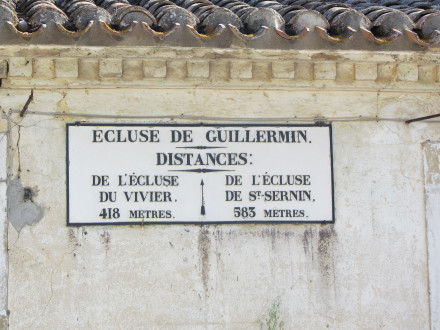
Canal du Midi, écluse (simple) de Guillermin, plaque de la maison éclusière, commune de Saint Martin Lalande, Aude.
Photo prise le mercredi 15 aout 2012. 69 km 513 de la Garonne. Altitude : 147 m. 24e écluse sur le Canal à franchir par les navigants depuis son extrèmité occidentale à Toulouse. 26e écluse à l'origine sur le Canal avant les années 70. 25e écluse si l'on ne compte pas l'écluse de Garonne, la ou a été posée la première pierre du Canal du Midi, guère usitée (mais qui a conservé ses portes éclusières) et commune aux canux du Midi, Latéral à la Garonne et de Brienne). 24e écluse si on ôte aussi du décompte l'ancienne écluse Matabiau à Toulouse, qui a perdu sa fonction éclusière lors de la modernisation du Canal dans les années 70. Localisation sur wikimapia : wikimapia.org/#lat=43.2942442&lon=2.0038332&z=16&...
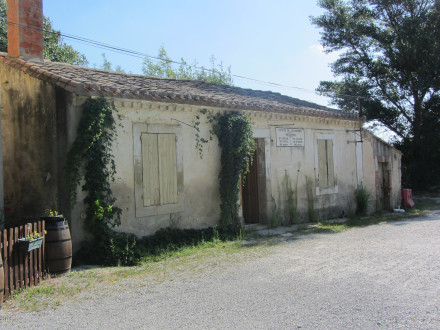
Canal du Midi, écluse (simple) de Guillermin, maison éclusière, commune de Saint Martin Lalande, Aude.
Photo prise le mercredi 15 aout 2012. 69 km 513 de la Garonne. Altitude : 147 m. 24e écluse sur le Canal à franchir par les navigants depuis son extrèmité occidentale à Toulouse. 26e écluse à l'origine sur le Canal avant les années 70. 25e écluse si l'on ne compte pas l'écluse de Garonne, la ou a été posée la première pierre du Canal du Midi, guère usitée (mais qui a conservé ses portes éclusières) et commune aux canux du Midi, Latéral à la Garonne et de Brienne). 24e écluse si on ôte aussi du décompte l'ancienne écluse Matabiau à Toulouse, qui a perdu sa fonction éclusière lors de la modernisation du Canal dans les années 70. Localisation sur wikimapia : wikimapia.org/#lat=43.2942442&lon=2.0038332&z=16&...
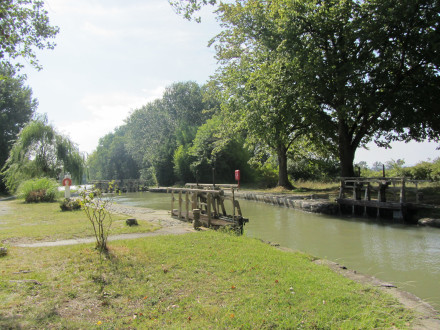
Canal du Midi, écluse (simple) de Guillermin, commune de Saint Martin Lalande, Aude.
Photo prise le mercredi 15 aout 2012. 69 km 513 de la Garonne. Altitude : 147 m. 24e écluse sur le Canal à franchir par les navigants depuis son extrèmité occidentale à Toulouse. 26e écluse à l'origine sur le Canal avant les années 70. 25e écluse si l'on ne compte pas l'écluse de Garonne, la ou a été posée la première pierre du Canal du Midi, guère usitée (mais qui a conservé ses portes éclusières) et commune aux canux du Midi, Latéral à la Garonne et de Brienne). 24e écluse si on ôte aussi du décompte l'ancienne écluse Matabiau à Toulouse, qui a perdu sa fonction éclusière lors de la modernisation du Canal dans les années 70. Localisation sur wikimapia : wikimapia.org/#lat=43.2942442&lon=2.0038332&z=16&...
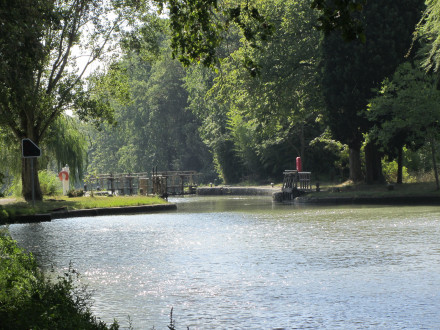
Canal du Midi, écluse (simple) de Guillermin, commune de Saint Martin Lalande, Aude.
Photo prise le mercredi 15 aout 2012. 69 km 513 de la Garonne. Altitude : 147 m. 24e écluse sur le Canal à franchir par les navigants depuis son extrèmité occidentale à Toulouse. 26e écluse à l'origine sur le Canal avant les années 70. 25e écluse si l'on ne compte pas l'écluse de Garonne, la ou a été posée la première pierre du Canal du Midi, guère usitée (mais qui a conservé ses portes éclusières) et commune aux canux du Midi, Latéral à la Garonne et de Brienne). 24e écluse si on ôte aussi du décompte l'ancienne écluse Matabiau à Toulouse, qui a perdu sa fonction éclusière lors de la modernisation du Canal dans les années 70. Localisation sur wikimapia : wikimapia.org/#lat=43.2942442&lon=2.0038332&z=16&...
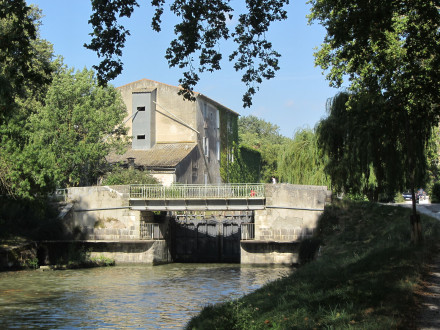
Canal du Midi, écluse (triple) du Vivier (sens Etang de Thau Toulouse), commune de Saint Martin Lalande, Aude.
Photo prise le mercredi 15 aout 2012. 69 km 095 de la Garonne. Altitude : 154 m. 23e écluse sur le Canal à franchir par les navigants depuis son extrèmité occidentale à Toulouse. 25e écluse à l'origine sur le Canal avant les années 70. 24e écluse si l'on ne compte pas l'écluse de Garonne, la ou a été posée la première pierre du Canal du Midi, guère usitée (mais qui a conservé ses portes éclusières) et commune aux canux du Midi, Latéral à la Garonne et de Brienne). 23e écluse si on ôte aussi du décompte l'ancienne écluse Matabiau à Toulouse, qui a perdu sa fonction éclusière lors de la modernisation du Canal dans les années 70. Arrivée du 24e bief (bief de Guillermin) de 0 km 418 en provenance de l'écluse de Guillermin. Localisation sur wikimapia : wikimapia.org/#lat=43.301834&lon=1.9851436&z=16&a...
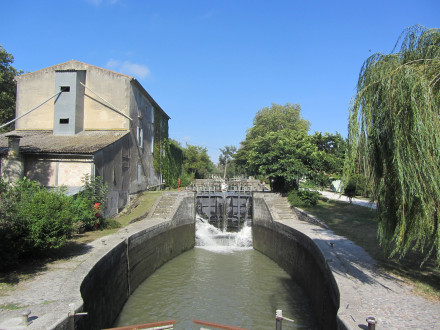
Canal du Midi, écluse (triple) du Vivier, commune de Saint Martin Lalande, Aude.
Photo prise le mercredi 15 aout 2012. 69 km 095 de la Garonne. Altitude : 154 m. 23e écluse sur le Canal à franchir par les navigants depuis son extrèmité occidentale à Toulouse. 25e écluse à l'origine sur le Canal avant les années 70. 24e écluse si l'on ne compte pas l'écluse de Garonne, la ou a été posée la première pierre du Canal du Midi, guère usitée (mais qui a conservé ses portes éclusières) et commune aux canux du Midi, Latéral à la Garonne et de Brienne). 23e écluse si on ôte aussi du décompte l'ancienne écluse Matabiau à Toulouse, qui a perdu sa fonction éclusière lors de la modernisation du Canal dans les années 70. Localisation sur wikimapia : wikimapia.org/#lat=43.301834&lon=1.9851436&z=16&a...
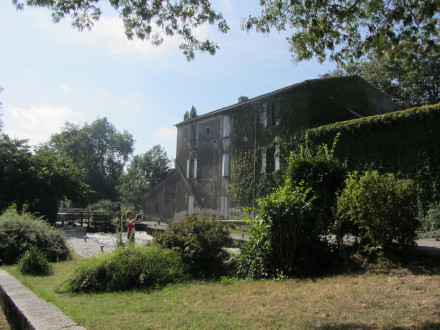
Canal du Midi, écluse (triple) du Vivier, commune de Saint Martin Lalande, Aude.
Photo prise le mercredi 15 aout 2012. 69 km 095 de la Garonne. Altitude : 154 m. 23e écluse sur le Canal à franchir par les navigants depuis son extrèmité occidentale à Toulouse. 25e écluse à l'origine sur le Canal avant les années 70. 24e écluse si l'on ne compte pas l'écluse de Garonne, la ou a été posée la première pierre du Canal du Midi, guère usitée (mais qui a conservé ses portes éclusières) et commune aux canux du Midi, Latéral à la Garonne et de Brienne). 23e écluse si on ôte aussi du décompte l'ancienne écluse Matabiau à Toulouse, qui a perdu sa fonction éclusière lors de la modernisation du Canal dans les années 70. Localisation sur wikimapia : wikimapia.org/#lat=43.301834&lon=1.9851436&z=16&a...
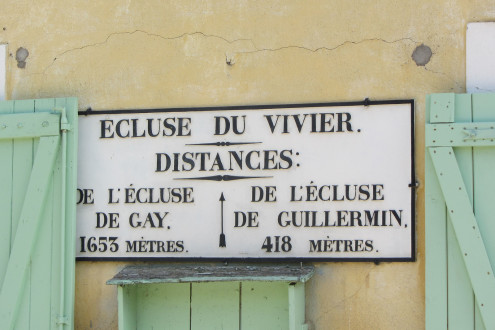
Canal du Midi, écluse (triple) du Vivier, commune de Saint Martin Lalande, Aude.
Photo prise le mercredi 15 aout 2012. 69 km 095 de la Garonne. Altitude : 154 m. 23e écluse sur le Canal à franchir par les navigants depuis son extrèmité occidentale à Toulouse. 25e écluse à l'origine sur le Canal avant les années 70. 24e écluse si l'on ne compte pas l'écluse de Garonne, la ou a été posée la première pierre du Canal du Midi, guère usitée (mais qui a conservé ses portes éclusières) et commune aux canux du Midi, Latéral à la Garonne et de Brienne). 23e écluse si on ôte aussi du décompte l'ancienne écluse Matabiau à Toulouse, qui a perdu sa fonction éclusière lors de la modernisation du Canal dans les années 70. Localisation sur wikimapia : wikimapia.org/#lat=43.301834&lon=1.9851436&z=16&a...
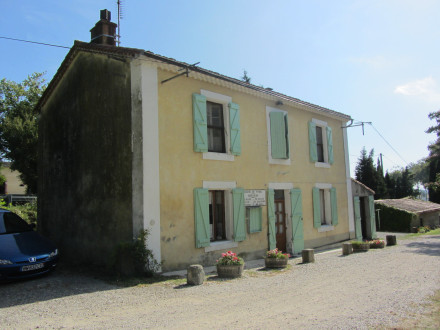
Canal du Midi, écluse (triple) du Vivier, commune de Saint Martin Lalande, Aude.
Photo prise le mercredi 15 aout 2012. 69 km 095 de la Garonne. Altitude : 154 m. 23e écluse sur le Canal à franchir par les navigants depuis son extrèmité occidentale à Toulouse. 25e écluse à l'origine sur le Canal avant les années 70. 24e écluse si l'on ne compte pas l'écluse de Garonne, la ou a été posée la première pierre du Canal du Midi, guère usitée (mais qui a conservé ses portes éclusières) et commune aux canux du Midi, Latéral à la Garonne et de Brienne). 23e écluse si on ôte aussi du décompte l'ancienne écluse Matabiau à Toulouse, qui a perdu sa fonction éclusière lors de la modernisation du Canal dans les années 70. Localisation sur wikimapia : wikimapia.org/#lat=43.301834&lon=1.9851436&z=16&a...
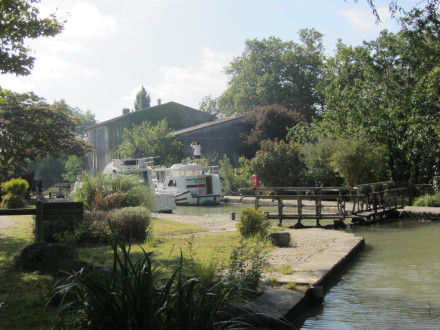
Canal du Midi, écluse (triple) du Vivier, commune de Saint Martin Lalande, Aude.
Photo prise le mercredi 15 aout 2012. 69 km 095 de la Garonne. Altitude : 154 m. 23e écluse sur le Canal à franchir par les navigants depuis son extrèmité occidentale à Toulouse. 25e écluse à l'origine sur le Canal avant les années 70. 24e écluse si l'on ne compte pas l'écluse de Garonne, la ou a été posée la première pierre du Canal du Midi, guère usitée (mais qui a conservé ses portes éclusières) et commune aux canux du Midi, Latéral à la Garonne et de Brienne). 23e écluse si on ôte aussi du décompte l'ancienne écluse Matabiau à Toulouse, qui a perdu sa fonction éclusière lors de la modernisation du Canal dans les années 70. Localisation sur wikimapia : wikimapia.org/#lat=43.301834&lon=1.9851436&z=16&a...
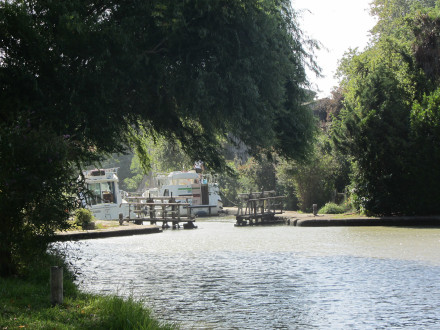
Canal du Midi, écluse (triple) du Vivier, commune de Saint Martin Lalande, Aude.
Photo prise le mercredi 15 aout 2012. 69 km 095 de la Garonne. Altitude : 154 m. 23e écluse sur le Canal à franchir par les navigants depuis son extrèmité occidentale à Toulouse. 25e écluse à l'origine sur le Canal avant les années 70. 24e écluse si l'on ne compte pas l'écluse de Garonne, la ou a été posée la première pierre du Canal du Midi, guère usitée (mais qui a conservé ses portes éclusières) et commune aux canux du Midi, Latéral à la Garonne et de Brienne). 23e écluse si on ôte aussi du décompte l'ancienne écluse Matabiau à Toulouse, qui a perdu sa fonction éclusière lors de la modernisation du Canal dans les années 70. Localisation sur wikimapia : wikimapia.org/#lat=43.301834&lon=1.9851436&z=16&a...
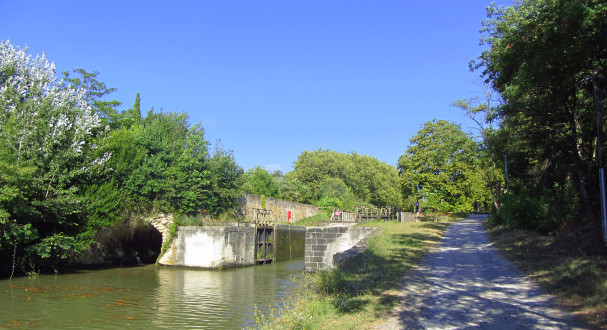
Canal du Midi, écluse (double) de Gay (sens Etang de Thau Toulouse), commune de Castelnaudary, Aude.
Photo prise le mercredi 15 aout 2012. 67 km 442 de la Garonne. Altitude :159 m. 22e écluse sur le Canal à franchir par les navigants depuis son extrèmité occidentale à Toulouse. 24e écluse à l'origine sur le Canal avant les années 70. 23e écluse si l'on ne compte pas l'écluse de Garonne, la ou a été posée la première pierre du Canal du Midi, guère usitée (mais qui a conservé ses portes éclusières) et commune aux canux du Midi, Latéral à la Garonne et de Brienne). 22e écluse si on ôte aussi du décompte l'ancienne écluse Matabiau à Toulouse, qui a perdu sa fonction éclusière lors de la modernisation du Canal dans les années 70. Arrivée du 23e bief (bief du Vivier) de 1 km 653 en prevenance de l'écluse du Vivier. Localisation sur wikimapia : wikimapia.org/#lat=43.3075023&lon=1.9692863&z=16&...
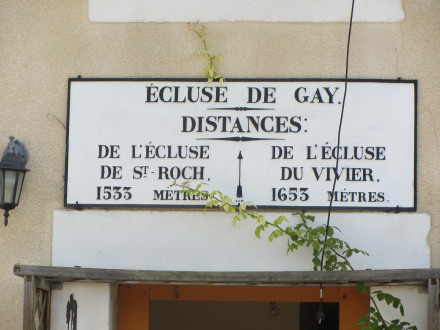
Canal du Midi, écluse (double) de Gay, maison éclusière, commune de Castelnaudary, Aude.
Photo prise le mercredi 15 aout 2012. 67 km 442 de la Garonne. Altitude :159 m. 22e écluse sur le Canal à franchir par les navigants depuis son extrèmité occidentale à Toulouse. 24e écluse à l'origine sur le Canal avant les années 70. 23e écluse si l'on ne compte pas l'écluse de Garonne, la ou a été posée la première pierre du Canal du Midi, guère usitée (mais qui a conservé ses portes éclusières) et commune aux canux du Midi, Latéral à la Garonne et de Brienne). 22e écluse si on ôte aussi du décompte l'ancienne écluse Matabiau à Toulouse, qui a perdu sa fonction éclusière lors de la modernisation du Canal dans les années 70. Localisation sur wikimapia : wikimapia.org/#lat=43.3075023&lon=1.9692863&z=16&...
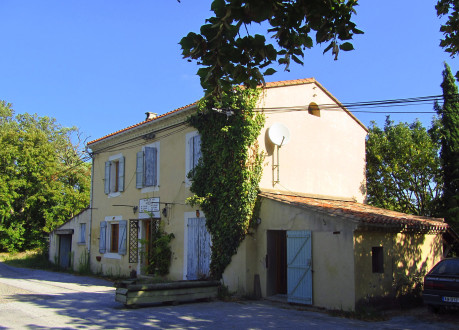
Canal du Midi, écluse (double) de Gay, maison éclusière, commune de Castelnaudary, Aude.
Photo prise le mercredi 15 aout 2012. 67 km 442 de la Garonne. Altitude :159 m. 22e écluse sur le Canal à franchir par les navigants depuis son extrèmité occidentale à Toulouse. 24e écluse à l'origine sur le Canal avant les années 70. 23e écluse si l'on ne compte pas l'écluse de Garonne, la ou a été posée la première pierre du Canal du Midi, guère usitée (mais qui a conservé ses portes éclusières) et commune aux canux du Midi, Latéral à la Garonne et de Brienne). 22e écluse si on ôte aussi du décompte l'ancienne écluse Matabiau à Toulouse, qui a perdu sa fonction éclusière lors de la modernisation du Canal dans les années 70. Localisation sur wikimapia : wikimapia.org/#lat=43.3075023&lon=1.9692863&z=16&...
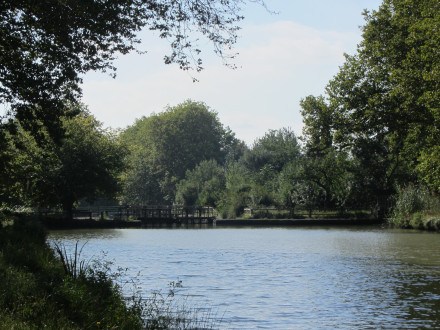
Canal du Midi, écluse (double) de Gay, commune de Castelnaudary, Aude.
Photo prise le mercredi 15 aout 2012. 67 km 442 de la Garonne. Altitude :159 m. 22e écluse sur le Canal à franchir par les navigants depuis son extrèmité occidentale à Toulouse. 24e écluse à l'origine sur le Canal avant les années 70. 23e écluse si l'on ne compte pas l'écluse de Garonne, la ou a été posée la première pierre du Canal du Midi, guère usitée (mais qui a conservé ses portes éclusières) et commune aux canux du Midi, Latéral à la Garonne et de Brienne). 22e écluse si on ôte aussi du décompte l'ancienne écluse Matabiau à Toulouse, qui a perdu sa fonction éclusière lors de la modernisation du Canal dans les années 70. Localisation sur wikimapia : wikimapia.org/#lat=43.3075023&lon=1.9692863&z=16&...
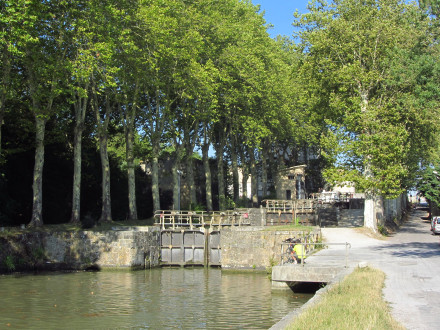
Canal du Midi, écluse (quadruple) de Saint Roch, commune de Castelnaudary, Aude.
Photo prise le mercredi 15 aout 2012. Après l'écluse de Fontseranne à Béziers, cet ouvrage compte quatre écluses. On peut regretter l'esthétique de ce mirador sur ce canal tri centenaire, qui se réfère plus à aux maisons d'arrêt ou aux architectures de l'époque du Rideau de Fer qu'à celles du temps de Riquet. 65 km 909 de la Garonne. Altitude : 170 m. 21e écluse sur le Canal à franchir par les navigants depuis son extrèmité occidentale à Toulouse. 23e écluse à l'origine sur le Canal avant les années 70. 22e écluse si l'on ne compte pas l'écluse de Garonne, la ou a été posée la première pierre du Canal du Midi, guère usitée (mais qui a conservé ses portes éclusières) et commune aux canux du Midi, Latéral à la Garonne et de Brienne). 21e écluse si on ôte aussi du décompte l'ancienne écluse Matabiau à Toulouse, qui a perdu sa fonction éclusière lors de la modernisation du Canal dans les années 70. Pour en savoir plus : www.canaldumidi.com/Lauragais/Castelnaudary/Castelnaudary... Sur ce lien, une carte postanle ancienne de ce lieu : www.canalmidi.com/aufildlo/photanci/cpacastelnau3.html Localisation sur wikimapia : wikimapia.org/#lat=43.3166661&lon=1.9559722&z=15&...
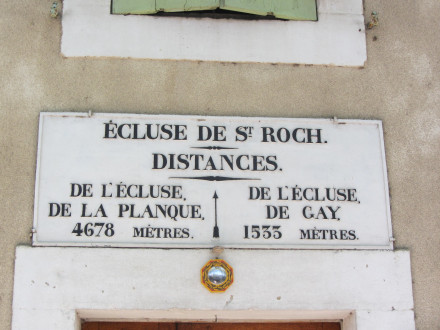
Canal du Midi, écluse (quadruple) de Saint Roch, plaque de la maison éclusière, commune de Castelnaudary, Aude.
Photo prise le mercredi 15 aout 2012. 65 km 909 de la Garonne. Altitude : 170 m. 21e écluse sur le Canal à franchir par les navigants depuis son extrèmité occidentale à Toulouse. 23e écluse à l'origine sur le Canal avant les années 70. 22e écluse si l'on ne compte pas l'écluse de Garonne, la ou a été posée la première pierre du Canal du Midi, guère usitée (mais qui a conservé ses portes éclusières) et commune aux canux du Midi, Latéral à la Garonne et de Brienne). 21e écluse si on ôte aussi du décompte l'ancienne écluse Matabiau à Toulouse, qui a perdu sa fonction éclusière lors de la modernisation du Canal dans les années 70. Pour en savoir plus : www.canaldumidi.com/Lauragais/Castelnaudary/Castelnaudary... Localisation sur wikimapia : wikimapia.org/#lat=43.3166661&lon=1.9559722&z=15&...
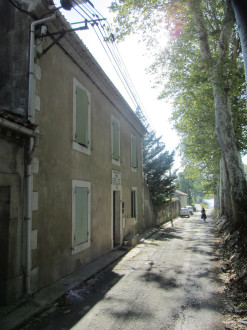
Canal du Midi, écluse (quadruple) de Saint Roch, maison éclusière, commune de Castelnaudary, Aude.
Photo prise le mercredi 15 aout 2012. 65 km 909 de la Garonne. Altitude : 170 m. 21e écluse sur le Canal à franchir par les navigants depuis son extrèmité occidentale à Toulouse. 23e écluse à l'origine sur le Canal avant les années 70. 22e écluse si l'on ne compte pas l'écluse de Garonne, la ou a été posée la première pierre du Canal du Midi, guère usitée (mais qui a conservé ses portes éclusières) et commune aux canux du Midi, Latéral à la Garonne et de Brienne). 21e écluse si on ôte aussi du décompte l'ancienne écluse Matabiau à Toulouse, qui a perdu sa fonction éclusière lors de la modernisation du Canal dans les années 70. Pour en savoir plus : www.canaldumidi.com/Lauragais/Castelnaudary/Castelnaudary... Localisation sur wikimapia : wikimapia.org/#lat=43.3166661&lon=1.9559722&z=15&...
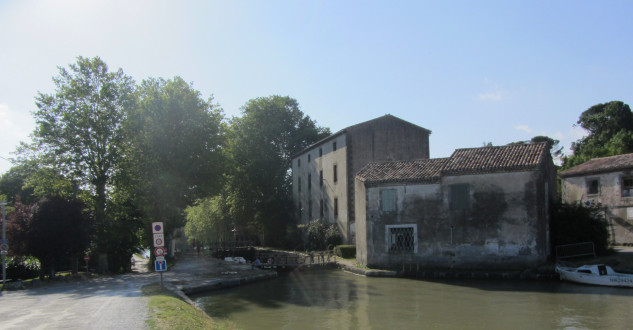
Canal du Midi, écluse (quadruple) de Saint Roch, commune de Castelnaudary, Aude.
Photo prise le mercredi 15 aout 2012. 65 km 909 de la Garonne. Altitude : 170 m. 21e écluse sur le Canal à franchir par les navigants depuis son extrèmité occidentale à Toulouse. 23e écluse à l'origine sur le Canal avant les années 70. 22e écluse si l'on ne compte pas l'écluse de Garonne, la ou a été posée la première pierre du Canal du Midi, guère usitée (mais qui a conservé ses portes éclusières) et commune aux canux du Midi, Latéral à la Garonne et de Brienne). 21e écluse si on ôte aussi du décompte l'ancienne écluse Matabiau à Toulouse, qui a perdu sa fonction éclusière lors de la modernisation du Canal dans les années 70. Pour en savoir plus : www.canaldumidi.com/Lauragais/Castelnaudary/Castelnaudary... Localisation sur wikimapia : wikimapia.org/#lat=43.3166661&lon=1.9559722&z=15&...
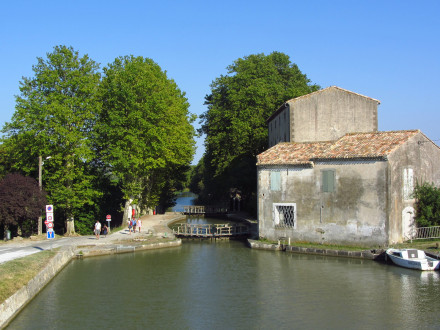
Canal du Midi, 21e bief (bief de Saint Roch, 4 km 678), à Castelnaudary, arrivée sur l'écluse de Saint Roch.
Photo prise le mardi 14 aout 2012. Commune traversée par le bief : Castelnaudary (Lauragais, Aude, région Languedoc Roussillon). Pour en savoir plus : www.canaldumidi.com/Lauragais/Castelnaudary/Castelnaudary... Localisation sur wikimapia : wikimapia.org/#lat=43.3166661&lon=1.9559722&z=15&...
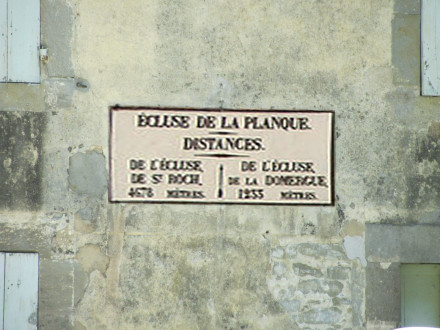
Canal du Midi, écluse (simple) de La Planque, plaque de la maison éclusière (montage photo), limitrove des communes de Mas-Saintes-Puelles et de Castelnaudary, Aude.
Photo prise le mardi 14 aout 2012. En réalité, la plaque n'est plus fixée au mur. Ce montage photo nous indique ce que nous devrions voir, autrement dit, au moment de mon passage, on peut aisément affirmer que "la plaque de l'écluse de la Planque est planquée". 61 km 231 de la Garonne. Altitude : 173 m. 20e écluse sur le Canal à franchir par les navigants depuis son extrèmité occidentale à Toulouse. 22e écluse à l'origine sur le Canal avant les années 70. 21e écluse si l'on ne compte pas l'écluse de Garonne, la ou a été posée la première pierre du Canal du Midi, guère usitée (mais qui a conservé ses portes éclusières) et commune aux canux du Midi, Latéral à la Garonne et de Brienne). 20e écluse si on ôte aussi du décompte l'ancienne écluse Matabiau à Toulouse, qui a perdu sa fonction éclusière lors de la modernisation du Canal dans les années 70. La maison éclusière et le bajoyer sud se situent sur la commune du Mas-Saintes-Puelles. Le pont et le bajoyer opposé se situent sur la commune de Castelnaudary. Localisation sur wikimapia : wikimapia.org/#lat=43.3210763&lon=1.9141646&z=18&...
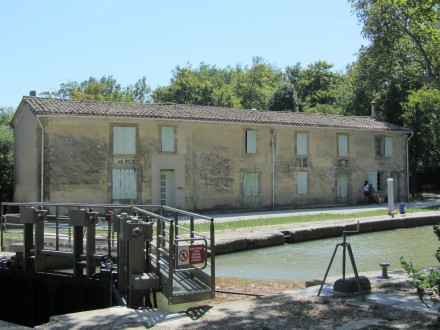
Canal du Midi, écluse (simple) de La Planque, maison éclusière, limitrove des communes de Mas-Saintes-Puelles et de Castelnaudary, Aude.
Photo prise le mardi 14 aout 2012. 61 km 231 de la Garonne. Altitude : 173 m. 20e écluse sur le Canal à franchir par les navigants depuis son extrèmité occidentale à Toulouse. 22e écluse à l'origine sur le Canal avant les années 70. 21e écluse si l'on ne compte pas l'écluse de Garonne, la ou a été posée la première pierre du Canal du Midi, guère usitée (mais qui a conservé ses portes éclusières) et commune aux canux du Midi, Latéral à la Garonne et de Brienne). 20e écluse si on ôte aussi du décompte l'ancienne écluse Matabiau à Toulouse, qui a perdu sa fonction éclusière lors de la modernisation du Canal dans les années 70. A cette date du mardi 14 aout 2012, voici la maison éclusière la plus mal tenue de tout le Canal. La maison éclusière et le bajoyer sud se situent sur la commune du Mas-Saintes-Puelles. Le pont et le bajoyer opposé se situent sur la commune de Castelnaudary. Une vue interessante de l'écluse de la Planque prise par un autre internaute Flickr : www.flickr.com/photos/enmiquel/7813116520/in/photostream Localisation sur wikimapia : wikimapia.org/#lat=43.3210763&lon=1.9141646&z=18&...
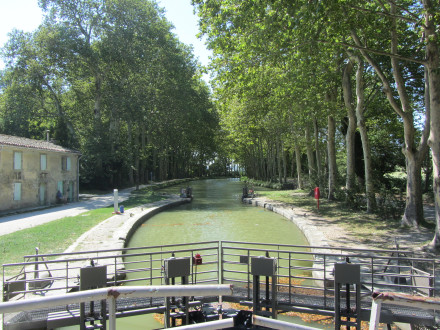
Canal du Midi, écluse (simple) de La Planque (sens Etang de Thau Toulouse), limitrove des communes de Mas-Saintes-Puelles et de Castelnaudary, Aude.
Photo prise le mardi 14 aout 2012. 61 km 231 de la Garonne. Altitude : 173 m. 20e écluse sur le Canal à franchir par les navigants depuis son extrèmité occidentale à Toulouse. 22e écluse à l'origine sur le Canal avant les années 70. 21e écluse si l'on ne compte pas l'écluse de Garonne, la ou a été posée la première pierre du Canal du Midi, guère usitée (mais qui a conservé ses portes éclusières) et commune aux canux du Midi, Latéral à la Garonne et de Brienne). 20e écluse si on ôte aussi du décompte l'ancienne écluse Matabiau à Toulouse, qui a perdu sa fonction éclusière lors de la modernisation du Canal dans les années 70. La maison éclusière et le bajoyer sud se situent sur la commune du Mas-Saintes-Puelles. Le pont (lieu de prise de vue de la photo) et le bajoyer opposé se situent sur la commune de Castelnaudary. Une vue interessante de l'écluse de la Planque prise par un autre internaute Flickr : www.flickr.com/photos/enmiquel/7813116520/in/photostream Localisation sur wikimapia : wikimapia.org/#lat=43.3210763&lon=1.9141646&z=18&...
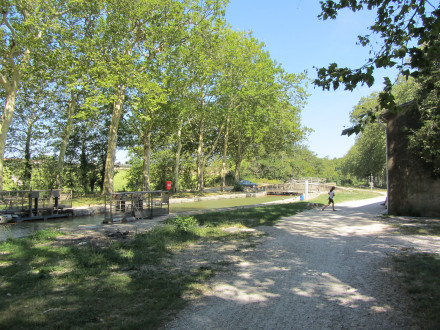
Canal du Midi, écluse (simple) de La Planque, limitrove des communes de Mas-Saintes-Puelles et de Castelnaudary, Aude.
Photo prise le mardi 14 aout 2012. 61 km 231 de la Garonne. Altitude : 173 m. 20e écluse sur le Canal à franchir par les navigants depuis son extrèmité occidentale à Toulouse. 22e écluse à l'origine sur le Canal avant les années 70. 21e écluse si l'on ne compte pas l'écluse de Garonne, la ou a été posée la première pierre du Canal du Midi, guère usitée (mais qui a conservé ses portes éclusières) et commune aux canux du Midi, Latéral à la Garonne et de Brienne). 20e écluse si on ôte aussi du décompte l'ancienne écluse Matabiau à Toulouse, qui a perdu sa fonction éclusière lors de la modernisation du Canal dans les années 70. La maison éclusière et le bajoyer sud se situent sur la commune du Mas-Saintes-Puelles. Le pont et le bajoyer opposé se siuent sur la commune de Castelnaudary. La maison éclusière et le bajoyer sud se situent sur la commune du Mas-Saintes-Puelles. Le pont et le bajoyer opposé se situent sur la commune de Castelnaudary. Une vue interessante de l'écluse de la Planque prise par un autre internaute Flickr : www.flickr.com/photos/enmiquel/7813116520/in/photostream Localisation sur wikimapia : wikimapia.org/#lat=43.3210763&lon=1.9141646&z=18&...
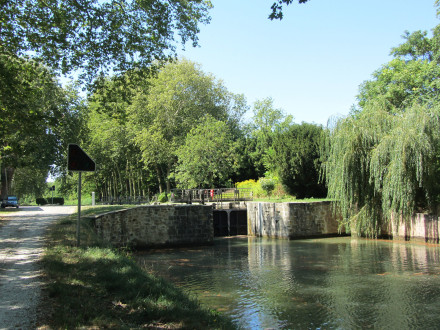
Canal du Midi, écluse (simple) de la Domergue (sens Etang de Thau Toulouse), commune de Mas-Saintes-Puelles, Aude.
Photo prise le mardi 14 aout 2012. 59 km 998 de la Garonne. Altitude : 175 m. 19e écluse sur le Canal à franchir par les navigants depuis son extrèmité occidentale à Toulouse. 21e écluse à l'origine sur le Canal avant les années 70. 20e écluse si l'on ne compte pas l'écluse de Garonne, la ou a été posée la première pierre du Canal du Midi, guère usitée (mais qui a conservé ses portes éclusières) et commune aux canux du Midi, Latéral à la Garonne et de Brienne). 19e écluse si on ôte aussi du décompte l'ancienne écluse Matabiau à Toulouse, qui a perdu sa fonction éclusière lors de la modernisation du Canal dans les années 70. Arrivée du 20e bief (bief de La Planque) de 1 km 233 en provenance de l'écluse de La Planque. Localisation sur wikimapia : wikimapia.org/#lat=43.3239526&lon=1.8921464&z=16&...
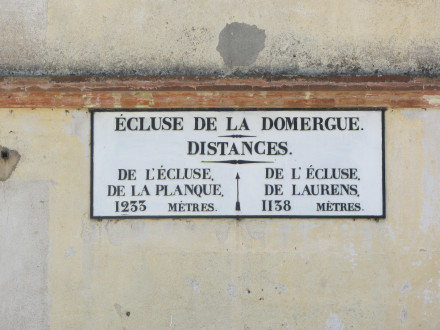
Canal du Midi, écluse (simple) de la Domergue, plaque de la maison éclusière, commune de Mas-Saintes-Puelles, Aude.
Photo prise le mardi 14 aout 2012. 59 km 998 de la Garonne. Altitude : 175 m. 19e écluse sur le Canal à franchir par les navigants depuis son extrèmité occidentale à Toulouse. 21e écluse à l'origine sur le Canal avant les années 70. 20e écluse si l'on ne compte pas l'écluse de Garonne, la ou a été posée la première pierre du Canal du Midi, guère usitée (mais qui a conservé ses portes éclusières) et commune aux canux du Midi, Latéral à la Garonne et de Brienne). 19e écluse si on ôte aussi du décompte l'ancienne écluse Matabiau à Toulouse, qui a perdu sa fonction éclusière lors de la modernisation du Canal dans les années 70. Localisation sur wikimapia : wikimapia.org/#lat=43.3239526&lon=1.8921464&z=16&...
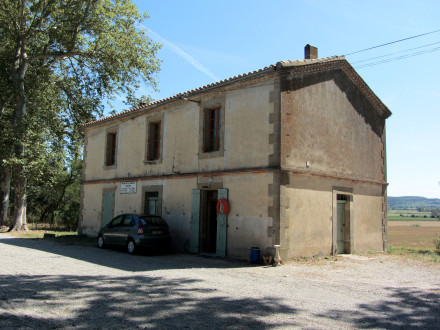
Canal du Midi, écluse (simple) de la Domergue, maison éclusière, commune de Mas-Saintes-Puelles, Aude.
Photo prise le mardi 14 aout 2012. 59 km 998 de la Garonne. Altitude : 175 m. 19e écluse sur le Canal à franchir par les navigants depuis son extrèmité occidentale à Toulouse. 21e écluse à l'origine sur le Canal avant les années 70. 20e écluse si l'on ne compte pas l'écluse de Garonne, la ou a été posée la première pierre du Canal du Midi, guère usitée (mais qui a conservé ses portes éclusières) et commune aux canux du Midi, Latéral à la Garonne et de Brienne). 19e écluse si on ôte aussi du décompte l'ancienne écluse Matabiau à Toulouse, qui a perdu sa fonction éclusière lors de la modernisation du Canal dans les années 70. Localisation sur wikimapia : wikimapia.org/#lat=43.3239526&lon=1.8921464&z=16&...
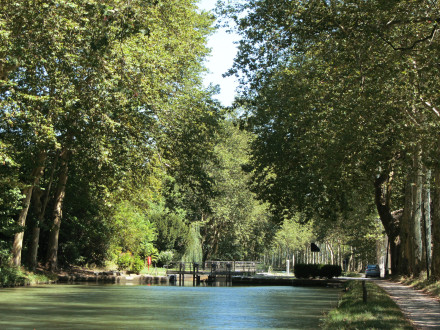
Canal du Midi, écluse (simple) de la Domergue, commune de Mas-Saintes-Puelles, Aude.
Photo prise le mardi 14 aout 2012. 59 km 998 de la Garonne. Altitude : 175 m. 19e écluse sur le Canal à franchir par les navigants depuis son extrèmité occidentale à Toulouse. 21e écluse à l'origine sur le Canal avant les années 70. 20e écluse si l'on ne compte pas l'écluse de Garonne, la ou a été posée la première pierre du Canal du Midi, guère usitée (mais qui a conservé ses portes éclusières) et commune aux canux du Midi, Latéral à la Garonne et de Brienne). 19e écluse si on ôte aussi du décompte l'ancienne écluse Matabiau à Toulouse, qui a perdu sa fonction éclusière lors de la modernisation du Canal dans les années 70. Localisation sur wikimapia : wikimapia.org/#lat=43.3239526&lon=1.8921464&z=16&...
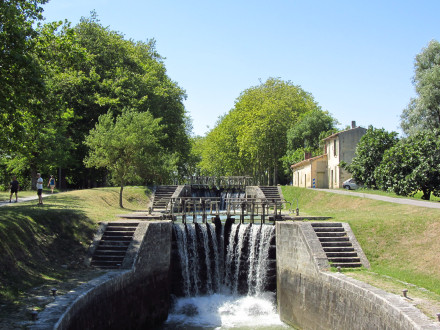
Canal du Midi, écluse (triple) de Laurens (sens Etang de Thau Toulouse), commune de Mas-Saintes-Puelles, Aude.
Photo prise le mardi 14 aout 2012. 56 km 860 de la Garonne. Altitude : 180 m. 18e écluse sur le Canal à franchir par les navigants depuis son extrèmité occidentale à Toulouse. 20e écluse à l'origine sur le Canal avant les années 70. 19e écluse si l'on ne compte pas l'écluse de Garonne, la ou a été posée la première pierre du Canal du Midi, guère usitée (mais qui a conservé ses portes éclusières) et commune aux canux du Midi, Latéral à la Garonne et de Brienne). 18e écluse si on ôte aussi du décompte l'ancienne écluse Matabiau à Toulouse, qui a perdu sa fonction éclusière lors de la modernisation du Canal dans les années 70. Sur ce lien, une vue aérienne : philippe.dufour9.free.fr/canalmidi24.htm Localisation sur wikimapia : wikimapia.org/#lat=43.3252619&lon=1.8849433&z=19&...
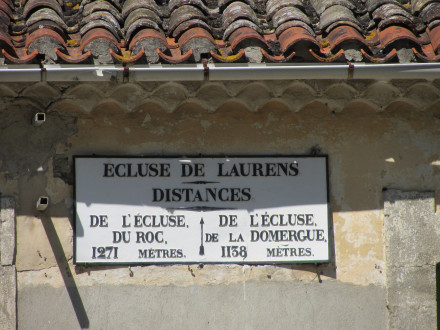
Canal du Midi, écluse (triple) de Laurens, commune de Mas-Saintes-Puelles, Aude.
Photo prise le mardi 14 aout 2012. 56 km 860 de la Garonne. Altitude : 180 m. 18e écluse sur le Canal à franchir par les navigants depuis son extrèmité occidentale à Toulouse. 20e écluse à l'origine sur le Canal avant les années 70. 19e écluse si l'on ne compte pas l'écluse de Garonne, la ou a été posée la première pierre du Canal du Midi, guère usitée (mais qui a conservé ses portes éclusières) et commune aux canux du Midi, Latéral à la Garonne et de Brienne). 18e écluse si on ôte aussi du décompte l'ancienne écluse Matabiau à Toulouse, qui a perdu sa fonction éclusière lors de la modernisation du Canal dans les années 70. Sur ce lien, une vue aérienne : philippe.dufour9.free.fr/canalmidi24.htm Localisation sur wikimapia : wikimapia.org/#lat=43.3252619&lon=1.8849433&z=19&...
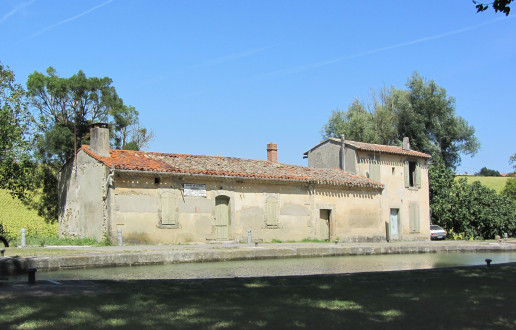
Canal du Midi, écluse (triple) de Laurens, commune de Mas-Saintes-Puelles, Aude.
Photo prise le mardi 14 aout 2012. 56 km 860 de la Garonne. Altitude : 180 m. 18e écluse sur le Canal à franchir par les navigants depuis son extrèmité occidentale à Toulouse. 20e écluse à l'origine sur le Canal avant les années 70. 19e écluse si l'on ne compte pas l'écluse de Garonne, la ou a été posée la première pierre du Canal du Midi, guère usitée (mais qui a conservé ses portes éclusières) et commune aux canux du Midi, Latéral à la Garonne et de Brienne). 18e écluse si on ôte aussi du décompte l'ancienne écluse Matabiau à Toulouse, qui a perdu sa fonction éclusière lors de la modernisation du Canal dans les années 70. Sur ce lien, une vue aérienne : philippe.dufour9.free.fr/canalmidi24.htm Localitation sur wikimapia : wikimapia.org/#lat=43.3252619&lon=1.8849433&z=19&...
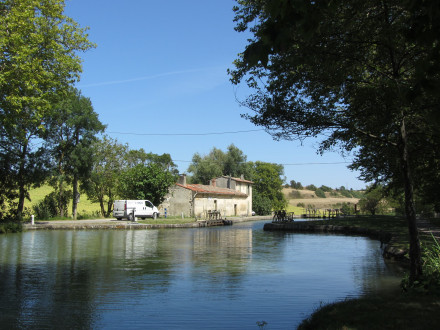
Canal du Midi, écluse (triple) de Laurens, commune de Mas-Saintes-Puelles, Aude.
Photo prise le mardi 14 aout 2012. 56 km 860 de la Garonne. Altitude : 180 m. 18e écluse sur le Canal à franchir par les navigants depuis son extrèmité occidentale à Toulouse. 20e écluse à l'origine sur le Canal avant les années 70. 19e écluse si l'on ne compte pas l'écluse de Garonne, la ou a été posée la première pierre du Canal du Midi, guère usitée (mais qui a conservé ses portes éclusières) et commune aux canux du Midi, Latéral à la Garonne et de Brienne). 18e écluse si on ôte aussi du décompte l'ancienne écluse Matabiau à Toulouse, qui a perdu sa fonction éclusière lors de la modernisation du Canal dans les années 70. Sur ce lien, une vue aérienne : philippe.dufour9.free.fr/canalmidi24.htm Localisation sur wikimapia : wikimapia.org/#lat=43.3252619&lon=1.8849433&z=19&...
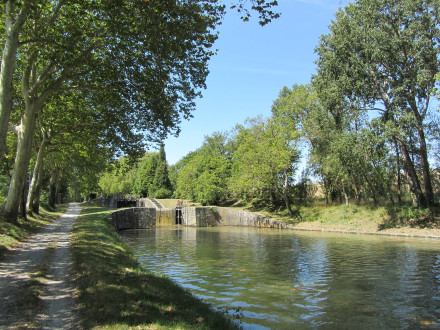
Canal du Midi, écluse (double) du Roc (sens Etang de Thau Toulouse), commune de Mas-Saintes-Puelles, Aude.
Photo prise le mardi 14 aout 2012. 57 km 589 de la Garonne. Altitude : 189 m. 17e écluse sur le Canal à franchir par les navigants depuis son extrèmité occidentale à Toulouse. 19e écluse à l'origine sur le Canal avant les années 70. 18e écluse si l'on ne compte pas l'écluse de Garonne, la ou a été posée la première pierre du Canal du Midi, guère usitée (mais qui a conservé ses portes éclusières) et commune aux canux du Midi, Latéral à la Garonne et de Brienne). 17e écluse si on ôte aussi du décompte l'ancienne écluse Matabiau à Toulouse, qui a perdu sa fonction éclusière lors de la modernisation du Canal dans les années 70. Sur ce lien, une vue aérienne : philippe.dufour9.free.fr/canalmidi23.htm Localisation sur wikimapia : wikimapia.org/#lat=43.3284579&lon=1.870796&z=18&a...
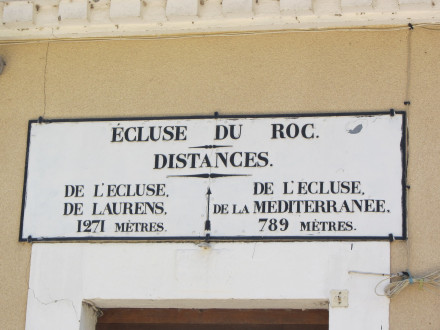
Canal du Midi, écluse du Roc, plaque de maison éclusière, commune de Mas-Saintes-Puelles, Aude.
Photo prise le mardi 14 aout 2012. 57 km 589 de la Garonne. Altitude : 189 m. 17e écluse sur le Canal à franchir par les navigants depuis son extrèmité occidentale à Toulouse. 19e écluse à l'origine sur le Canal avant les années 70. 18e écluse si l'on ne compte pas l'écluse de Garonne, la ou a été posée la première pierre du Canal du Midi, guère usitée (mais qui a conservé ses portes éclusières) et commune aux canux du Midi, Latéral à la Garonne et de Brienne). 17e écluse si on ôte aussi du décompte l'ancienne écluse Matabiau à Toulouse, qui a perdu sa fonction éclusière lors de la modernisation du Canal dans les années 70. Sur ce lien, une vue aérienne : philippe.dufour9.free.fr/canalmidi23.htm Localisation sur wikimapia : wikimapia.org/#lat=43.3284579&lon=1.870796&z=18&a...
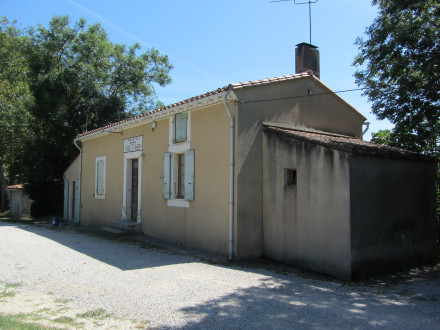
Canal du Midi, écluse (double) du Roc, maison éclusière, commune de Mas-Saintes-Puelles, Aude.
Photo prise le mardi 14 aout 2012. 57 km 589 de la Garonne. Altitude : 189 m. 17e écluse sur le Canal à franchir par les navigants depuis son extrèmité occidentale à Toulouse. 19e écluse à l'origine sur le Canal avant les années 70. 18e écluse si l'on ne compte pas l'écluse de Garonne, la ou a été posée la première pierre du Canal du Midi, guère usitée (mais qui a conservé ses portes éclusières) et commune aux canux du Midi, Latéral à la Garonne et de Brienne). 17e écluse si on ôte aussi du décompte l'ancienne écluse Matabiau à Toulouse, qui a perdu sa fonction éclusière lors de la modernisation du Canal dans les années 70. Sur ce lien, une vue aérienne : philippe.dufour9.free.fr/canalmidi23.htm Localisation sur wikimapia : wikimapia.org/#lat=43.3284579&lon=1.870796&z=18&a...
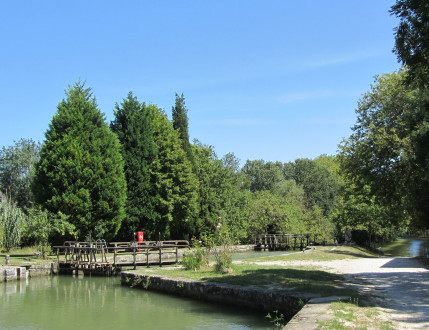
Canal du Midi, écluse (double) du Roc, commune de Mas-Saintes-Puelles, Aude.
Photo prise le mardi 14 aout 2012. 57 km 589 de la Garonne. Altitude : 189 m. 17e écluse sur le Canal à franchir par les navigants depuis son extrèmité occidentale à Toulouse. 19e écluse à l'origine sur le Canal avant les années 70. 18e écluse si l'on ne compte pas l'écluse de Garonne, la ou a été posée la première pierre du Canal du Midi, guère usitée (mais qui a conservé ses portes éclusières) et commune aux canux du Midi, Latéral à la Garonne et de Brienne). 17e écluse si on ôte aussi du décompte l'ancienne écluse Matabiau à Toulouse, qui a perdu sa fonction éclusière lors de la modernisation du Canal dans les années 70. Sur ce lien, une vue aérienne : philippe.dufour9.free.fr/canalmidi23.htm Sur ce lien, un panoramique très original de cette écluse : www.flickr.com/photos/christophe-ramos/3687397786/in/pool... Localisation sur wikimapia : wikimapia.org/#lat=43.3284579&lon=1.870796&z=18&a...
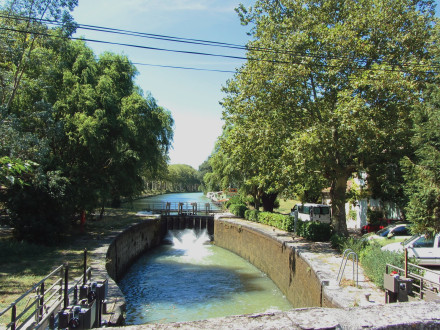
Canal du Midi, écluse (simple) Mediterranée (sens Etang de Thau Toulouse), commune de Mas-Saintes-Puelles, Aude.
Photo prise le mardi 14 aout 2012. 56 km 800 de la Garonne. Altitude : 193 m. 16e écluse sur le Canal à franchir par les navigants depuis son extrèmité occidentale à Toulouse. 18e écluse à l'origine sur le Canal avant les années 70. 17e écluse si l'on ne compte pas l'écluse de Garonne, la ou a été posée la première pierre du Canal du Midi, guère usitée (mais qui a conservé ses portes éclusières) et commune aux canux du Midi, Latéral à la Garonne et de Brienne). 16e écluse si on ôte aussi du décompte l'ancienne écluse Matabiau à Toulouse, qui a perdu sa fonction éclusière lors de la modernisation du Canal dans les années 70. Sur ce lien, une vue aérienne : philippe.dufour9.free.fr/canalmidi22.htm Pour en savoir plus : www.canaldumidi.com/Lauragais/Ecluse-Mediterranee/Ecluse-... Localisation sur wikimapia : wikimapia.org/#lat=43.3306587&lon=1.8611239&z=18&...
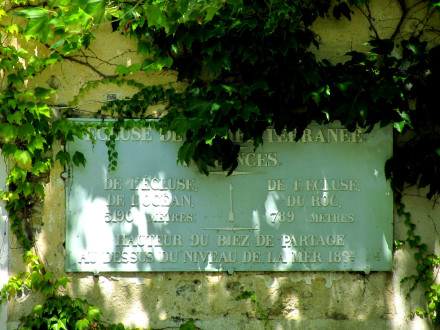
Canal du Midi, écluse (simple) Méditerranée, plaque de la maison éclusière, commune de Mas-Saintes-Puelles, Aude.
Photo prise le mardi 14 aout 2012. 56 km 800 de la Garonne. Altitude : 193 m. 16e écluse sur le Canal à franchir par les navigants depuis son extrèmité occidentale à Toulouse. 18e écluse à l'origine sur le Canal avant les années 70. 17e écluse si l'on ne compte pas l'écluse de Garonne, la ou a été posée la première pierre du Canal du Midi, guère usitée (mais qui a conservé ses portes éclusières) et commune aux canux du Midi, Latéral à la Garonne et de Brienne). 16e écluse si on ôte aussi du décompte l'ancienne écluse Matabiau à Toulouse, qui a perdu sa fonction éclusière lors de la modernisation du Canal dans les années 70. Sur ce lien, une vue aérienne : philippe.dufour9.free.fr/canalmidi22.htm Localisation sur wikimapia : wikimapia.org/#lat=43.3306587&lon=1.8611239&z=18&...
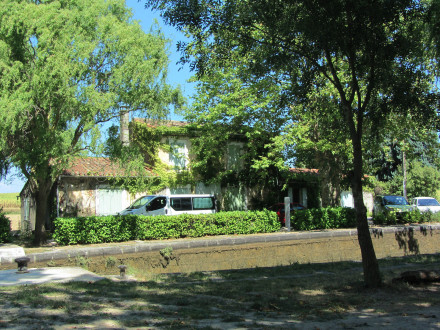
Canal du Midi, écluse (simple) Méditerranée, maison éclusière, commune de Mas-Saintes-Puelles, Aude.
Photo prise le mardi 14 aout 2012. 56 km 800 de la Garonne. Altitude : 193 m. 16e écluse sur le Canal à franchir par les navigants depuis son extrèmité occidentale à Toulouse. 18e écluse à l'origine sur le Canal avant les années 70. 17e écluse si l'on ne compte pas l'écluse de Garonne, la ou a été posée la première pierre du Canal du Midi, guère usitée (mais qui a conservé ses portes éclusières) et commune aux canux du Midi, Latéral à la Garonne et de Brienne). 16e écluse si on ôte aussi du décompte l'ancienne écluse Matabiau à Toulouse, qui a perdu sa fonction éclusière lors de la modernisation du Canal dans les années 70. Sur ce lien, une vue aérienne : philippe.dufour9.free.fr/canalmidi22.htm Pour en savoir plus : www.canaldumidi.com/Lauragais/Ecluse-Mediterranee/Ecluse-... Localisation sur wikimapia : wikimapia.org/#lat=43.3306587&lon=1.8611239&z=18&...
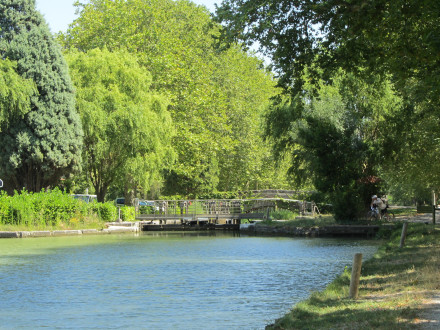
Canal du Midi, écluse (simple) Méditerranée, commune de Mas-Saintes-Puelles, Aude.
Photo prise le mardi 14 aout 2012. 56 km 800 de la Garonne. Altitude : 193 m. 16e écluse sur le Canal à franchir par les navigants depuis son extrèmité occidentale à Toulouse. 18e écluse à l'origine sur le Canal avant les années 70. 17e écluse si l'on ne compte pas l'écluse de Garonne, la ou a été posée la première pierre du Canal du Midi, guère usitée (mais qui a conservé ses portes éclusières) et commune aux canux du Midi, Latéral à la Garonne et de Brienne). 16e écluse si on ôte aussi du décompte l'ancienne écluse Matabiau à Toulouse, qui a perdu sa fonction éclusière lors de la modernisation du Canal dans les années 70. Sur ce lien, une vue aérienne : philippe.dufour9.free.fr/canalmidi22.htm Pour en savoir plus : www.canaldumidi.com/Lauragais/Ecluse-Mediterranee/Ecluse-... Localisation sur wikimapia : wikimapia.org/#lat=43.3306587&lon=1.8611239&z=18&...
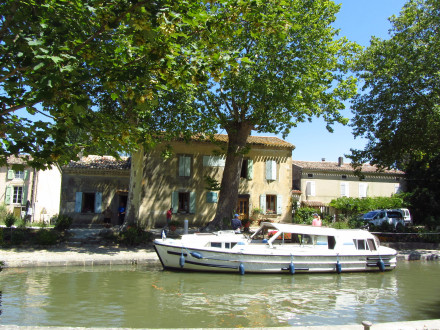
Canal du Midi, écluse (simple) Océan, commune de Montferrand, Aude, première écluse dans ce département.
Photo prise le mardi 14 aout 2012. 51 km 190 de la Garonne. Altitude : 193 m. 15e écluse sur le Canal à franchir par les navigants depuis son extrèmité occidentale à Toulouse. 17e écluse à l'origine sur le Canal avant les années 70. Sur ce trajet, l'itinéraire du Canal se confond avec l'itinéraire d'Arles ou la Via Tolosana des Chemins de Saint Jacques de Compostelle (entre le Seuil de Naurouze et l'écluse de Renneville) : fr.wikipedia.org/wiki/Chemins_de_Compostelle Pour en savoir plus : www.canaldumidi.com/Lauragais/Naurouze/Naurouze.php Localisation sur wikimapia : wikimapia.org/#lat=43.3527016&lon=1.8225833&z=17&...
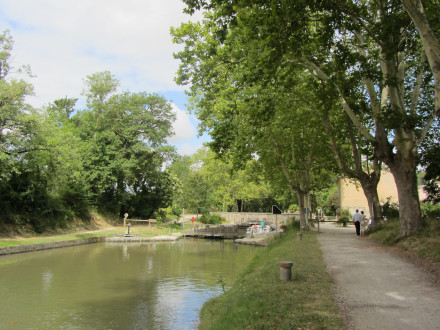
Canal du Midi, écluse (simple) Océan (sens Etang de Thau, Toulouse), commune de Montferrand, Aude, première écluse dans ce département.
Photo prise le dimanche 12 aout 2012. 51 km 190 de la Garonne. Altitude : 193 m. 15e écluse sur le Canal à franchir par les navigants depuis son extrèmité occidentale à Toulouse. 17e écluse à l'origine sur le Canal avant les années 70. Arrivée du 16e bief (bief de Partage des Eaux) de 5 km 19 depuis l'écluse Méditerranée. Sur ce trajet, l'itinéraire du Canal se confond avec l'itinéraire d'Arles ou la Via Tolosana des Chemins de Saint Jacques de Compostelle (entre le Seuil de Naurouze et l'écluse de Renneville) : fr.wikipedia.org/wiki/Chemins_de_Compostelle Pour en savoir plus : www.canaldumidi.com/Lauragais/Naurouze/Naurouze.php Localisation sur wikimapia : wikimapia.org/#lat=43.3527016&lon=1.8225833&z=17&...
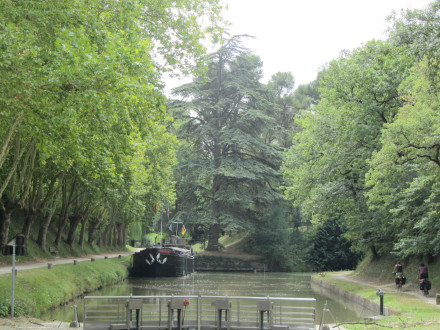
Canal du Midi, écluse (simple) Océan, départ sur le 16e bief (bief de partage des eaux), commune de Montferrand, Aude, première écluse dans ce département.
Photo prise le dimanche 12 aout 2012. 51 km 190 de la Garonne. Altitude : 193 m. 15e écluse sur le Canal à franchir par les navigants depuis son extrèmité occidentale à Toulouse. 17e écluse à l'origine sur le Canal avant les années 70. Départ du 16e bief (bief de Partage des Eaux) de 5 km 190 vers l'écluse Méditerranée. Sur ce trajet, l'itinéraire du Canal se confond avec l'itinéraire d'Arles ou la Via Tolosana des Chemins de Saint Jacques de Compostelle (entre le Seuil de Naurouze et l'écluse de Renneville) : fr.wikipedia.org/wiki/Chemins_de_Compostelle Pour en savoir plus : www.canaldumidi.com/Lauragais/Naurouze/Naurouze.php Localisation sur wikimapia : wikimapia.org/#lat=43.3527016&lon=1.8225833&z=17&...
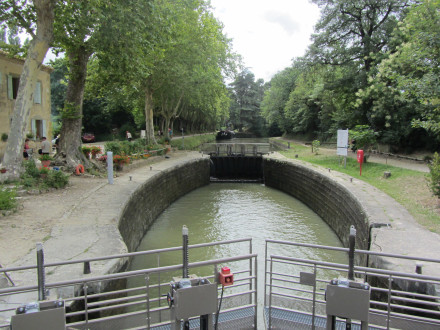
Canal du Midi, écluse (simple) Océan, commune de Montferrand, Aude, première écluse dans ce département.
Photo prise le dimanche 12 aout 2012. 51 km 190 de la Garonne. Altitude : 193 m. 15e écluse sur le Canal à franchir par les navigants depuis son extrèmité occidentale à Toulouse. 17e écluse à l'origine sur le Canal avant les années 70. Départ du 16e bief (bief de Partage des Eaux) de 5 km 190 vers l'écluse Méditerranée. Sur ce trajet, l'itinéraire du Canal se confond avec l'itinéraire d'Arles ou la Via Tolosana des Chemins de Saint Jacques de Compostelle (entre le Seuil de Naurouze et l'écluse de Renneville) : fr.wikipedia.org/wiki/Chemins_de_Compostelle Pour en savoir plus : www.canaldumidi.com/Lauragais/Naurouze/Naurouze.php Localisation sur wikimapia : wikimapia.org/#lat=43.3527016&lon=1.8225833&z=17&...
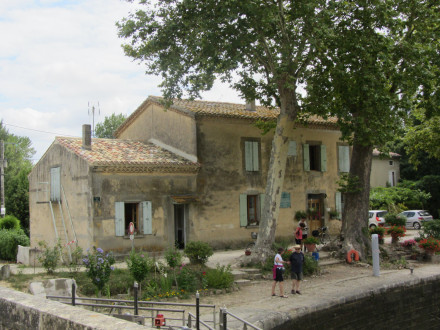
Canal du Midi, écluse (simple) Océan., maison éclusière, commune de Montferrand, Aude, première écluse dans ce département.
Photo prise le dimanche 12 aout 2012. 51 km 190 de la Garonne. Altitude : 193 m. Première écluse dans l'Aude (ou dernière selon le sens emprunté). 15e écluse sur le Canal à franchir par les navigants depuis son extrèmité occidentale à Toulouse. 17e écluse à l'origine sur le Canal avant les années 70. 16e écluse si l'on ne compte pas l'écluse de Garonne, la ou a été posée la première pierre du Canal du Midi, guère usitée (mais qui a conservé ses portes éclusières) et commune aux canux du Midi, Latéral à la Garonne et de Brienne). 15e écluse si on ôte aussi du décompte l'ancienne écluse Matabiau à Toulouse, qui a perdu sa fonction éclusière lors de la modernisation du Canal dans les années 70. Sur ce trajet, l'itinéraire du Canal se confond avec l'itinéraire d'Arles ou la Via Tolosana des Chemins de Saint Jacques de Compostelle (entre le Seuil de Naurouze et l'écluse de Renneville) : fr.wikipedia.org/wiki/Chemins_de_Compostelle Pour en savoir plus : www.canaldumidi.com/Lauragais/Naurouze/Naurouze.php Localisation sur wikimapia : wikimapia.org/#lat=43.3527016&lon=1.8225833&z=17&...
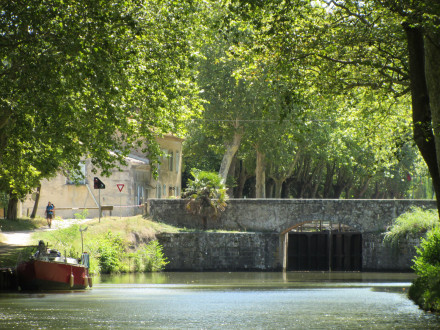
Canal du Midi, écluse (simple) Océan, commune de Montferrand, Aude, première écluse dans ce département.
Photo prise le mardi 14 aout 2012. 51 km 190 de la Garonne. Altitude : 193 m. Première écluse dans l'Aude (ou dernière selon le sens emprunté). 15e écluse sur le Canal à franchir par les navigants depuis son extrèmité occidentale à Toulouse. 17e écluse à l'origine sur le Canal avant les années 70. 16e écluse si l'on ne compte pas l'écluse de Garonne, la ou a été posée la première pierre du Canal du Midi, guère usitée (mais qui a conservé ses portes éclusières) et commune aux canux du Midi, Latéral à la Garonne et de Brienne). 15e écluse si on ôte aussi du décompte l'ancienne écluse Matabiau à Toulouse, qui a perdu sa fonction éclusière lors de la modernisation du Canal dans les années 70. Sur ce trajet, l'itinéraire du Canal se confond avec l'itinéraire d'Arles ou la Via Tolosana des Chemins de Saint Jacques de Compostelle (entre le Seuil de Naurouze et l'écluse de Renneville) : fr.wikipedia.org/wiki/Chemins_de_Compostelle Pour en savoir plus : www.canaldumidi.com/Lauragais/Naurouze/Naurouze.php Localisation sur wikimapia : wikimapia.org/#lat=43.3527016&lon=1.8225833&z=17&...
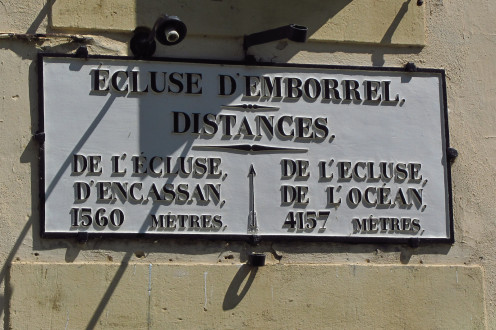
Canal du Midi, écluse (simple) d'Emborrel, plaque de la maison éclusière, commune d'Avignonet-Lauragais, Haute Garonne, dernière écluse dans ce département.
Photo prise le mardi 14 aout 2012. 47 km 453 de la Garonne. Altitude : 189 m. 14e écluse sur le Canal à franchir par les navigants depuis son extrèmité occidentale à Toulouse. 16e écluse à l'origine sur le Canal avant les années 70. 15e écluse si l'on ne compte pas l'écluse de Garonne, la ou a été posée la première pierre du Canal du Midi, guère usitée (mais qui a conservé ses portes éclusières) et commune aux canux du Midi, Latéral à la Garonne et de Brienne). 14e écluse si on ôte aussi du décompte l'ancienne écluse Matabiau à Toulouse, qui a perdu sa fonction éclusière lors de la modernisation du Canal dans les années 70. Dernière plaque de maison éclusière (ou première selon le sens) en Haute Garonne. La piste cyclable bitumée va bientôt céder la place à un chemin de terre et de cailloux (état des lieux en 2012). Pour la vue aérienne, se référer au lien suivant: philippe.dufour9.free.fr/canalmidi09.htm Voici sur ce lien un album d'un internaute Flickr, Régis B 31, sur le Canal du Midi en Haute Garonne : www.flickr.com/photos/34489588@N08/sets/72157614766492790... Sur ce trajet, l'itinéraire du Canal se confond avec l'itinéraire d'Arles ou la Via Tolosana des Chemins de Saint Jacques de Compostelle (entre le Seuil de Naurouze et l'écluse de Renneville) : fr.wikipedia.org/wiki/Chemins_de_Compostelle Localisation sur wikimapia : wikimapia.org/#lat=43.3629849&lon=1.7733862&z=18&...
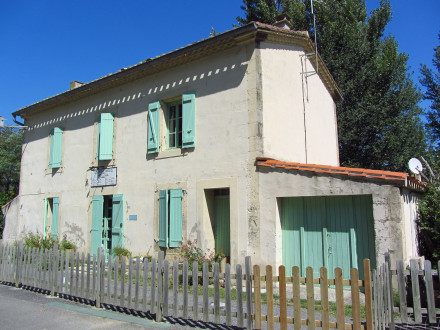
Canal du Midi, écluse (simple) d'Emborrel, maison éclusière, commune d'Avignonet-Lauragais, Haute Garonne.
Photo prise le mardi 14 aout 2012. 47 km 453 de la Garonne. Altitude : 189 m. 14e écluse sur le Canal à franchir par les navigants depuis son extrèmité occidentale à Toulouse. 16e écluse à l'origine sur le Canal avant les années 70. 15e écluse si l'on ne compte pas l'écluse de Garonne, la ou a été posée la première pierre du Canal du Midi, guère usitée (mais qui a conservé ses portes éclusières) et commune aux canux du Midi, Latéral à la Garonne et de Brienne). 14e écluse si on ôte aussi du décompte l'ancienne écluse Matabiau à Toulouse, qui a perdu sa fonction éclusière lors de la modernisation du Canal dans les années 70. Dernière maison éclusière (ou première selon le sens) en Haute Garonne. La piste cyclable bitumée va bientôt céder la place à un chemin de terre et de cailloux (état des lieux en 2012). Pour la vue aérienne, se référer au lien suivant: philippe.dufour9.free.fr/canalmidi09.htm Voici sur ce lien un album d'un internaute Flickr, Régis B 31, sur le Canal du Midi en Haute Garonne : www.flickr.com/photos/34489588@N08/sets/72157614766492790... Sur ce trajet, l'itinéraire du Canal se confond avec l'itinéraire d'Arles ou la Via Tolosana des Chemins de Saint Jacques de Compostelle (entre le Seuil de Naurouze et l'écluse de Renneville) : fr.wikipedia.org/wiki/Chemins_de_Compostelle Localisation sur wikimapia : wikimapia.org/#lat=43.3629849&lon=1.7733862&z=18&...
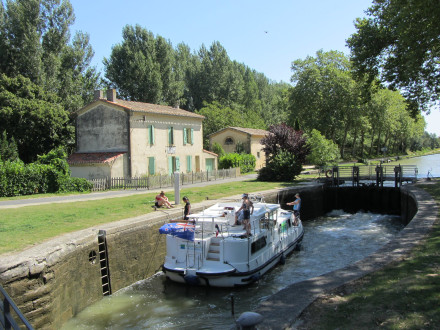
Canal du Midi, écluse (simple) d'Emborrel, commune d'Avignonet-Lauragais, Haute Garonne.
Photo prise le mardi 14 aout 2012. 47 km 453 de la Garonne. Altitude : 189 m. 14e écluse sur le Canal à franchir par les navigants depuis son extrèmité occidentale à Toulouse. 16e écluse à l'origine sur le Canal avant les années 70. 15e écluse si l'on ne compte pas l'écluse de Garonne, la ou a été posée la première pierre du Canal du Midi, guère usitée (mais qui a conservé ses portes éclusières) et commune aux canux du Midi, Latéral à la Garonne et de Brienne). 14e écluse si on ôte aussi du décompte l'ancienne écluse Matabiau à Toulouse, qui a perdu sa fonction éclusière lors de la modernisation du Canal dans les années 70. Dernière écluse (ou première selon le sens) en Haute Garonne. La piste cyclable bitumée va bientôt céder la place à un chemin de terre et de cailloux (état des lieux en 2012). Pour la vue aérienne, se référer au lien suivant: philippe.dufour9.free.fr/canalmidi09.htm Voici sur ce lien un album d'un internaute Flickr, Régis B 31, sur le Canal du Midi en Haute Garonne : www.flickr.com/photos/34489588@N08/sets/72157614766492790... Sur ce trajet, l'itinéraire du Canal se confond avec l'itinéraire d'Arles ou la Via Tolosana des Chemins de Saint Jacques de Compostelle (entre le Seuil de Naurouze et l'écluse de Renneville) : fr.wikipedia.org/wiki/Chemins_de_Compostelle Localisation sur wikimapia : wikimapia.org/#lat=43.3629849&lon=1.7733862&z=18&...
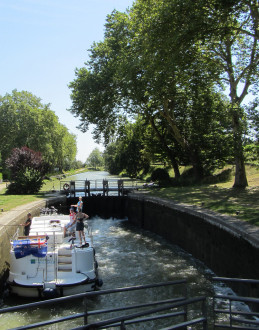
Canal du Midi, écluse (simple) d'Emborrel, commune d'Avignonet-Lauragais, Haute Garonne.
Photo prise le mardi 14 aout 2012. 47 km 453 de la Garonne. Altitude : 189 m. 14e écluse sur le Canal à franchir par les navigants depuis son extrèmité occidentale à Toulouse. 16e écluse à l'origine sur le Canal avant les années 70. 15e écluse si l'on ne compte pas l'écluse de Garonne, la ou a été posée la première pierre du Canal du Midi, guère usitée (mais qui a conservé ses portes éclusières) et commune aux canux du Midi, Latéral à la Garonne et de Brienne). 14e écluse si on ôte aussi du décompte l'ancienne écluse Matabiau à Toulouse, qui a perdu sa fonction éclusière lors de la modernisation du Canal dans les années 70. Départ du 16e bief (bief Océan) de 4 km 157 vers l'écluse Océan. Dernière écluse (ou première selon le sens) en Haute Garonne. La piste cyclable bitumée va bientôt céder la place à un chemin de terre et de cailloux. Pour la vue aérienne, se référer au lien suivant: philippe.dufour9.free.fr/canalmidi09.htm Voici sur ce lien un album d'un internaute Flickr, Régis B 31, sur le Canal du Midi en Haute Garonne : www.flickr.com/photos/34489588@N08/sets/72157614766492790... Sur ce trajet, l'itinéraire du Canal se confond avec l'itinéraire d'Arles ou la Via Tolosana des Chemins de Saint Jacques de Compostelle (entre le Seuil de Naurouze et l'écluse de Renneville) : fr.wikipedia.org/wiki/Chemins_de_Compostelle Localisation sur wikimapia : wikimapia.org/#lat=43.3629849&lon=1.7733862&z=18&...
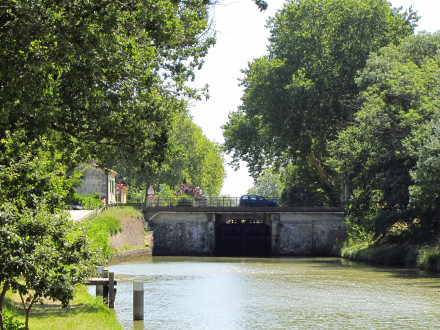
Canal du Midi, écluse (simple) d'Emborrel, commune d'Avignonet-Lauragais, Haute Garonne, dernière écluse dans ce département.
Photo prise le mardi 14 aout 2012. 47 km 453 de la Garonne. Altitude : 189 m. 14e écluse sur le Canal à franchir par les navigants depuis son extrèmité occidentale à Toulouse. 16e écluse à l'origine sur le Canal avant les années 70. 15e écluse si l'on ne compte pas l'écluse de Garonne, la ou a été posée la première pierre du Canal du Midi, guère usitée (mais qui a conservé ses portes éclusières) et commune aux canux du Midi, Latéral à la Garonne et de Brienne). 14e écluse si on ôte aussi du décompte l'ancienne écluse Matabiau à Toulouse, qui a perdu sa fonction éclusière lors de la modernisation du Canal dans les années 70. Dernière écluse (ou première selon le sens) en Haute Garonne. La piste cyclable bitumée va bientôt céder la place à un chemin de terre et de cailloux (état des lieux en 2012). Pour la vue aérienne, se référer au lien suivant: philippe.dufour9.free.fr/canalmidi09.htm Voici sur ce lien un album d'un internaute Flickr, Régis B 31, sur le Canal du Midi en Haute Garonne : www.flickr.com/photos/34489588@N08/sets/72157614766492790... Sur ce trajet, l'itinéraire du Canal se confond avec l'itinéraire d'Arles ou la Via Tolosana des Chemins de Saint Jacques de Compostelle (entre le Seuil de Naurouze et l'écluse de Renneville) : fr.wikipedia.org/wiki/Chemins_de_Compostelle Localisation sur wikimapia : wikimapia.org/#lat=43.3629849&lon=1.7733862&z=18&...
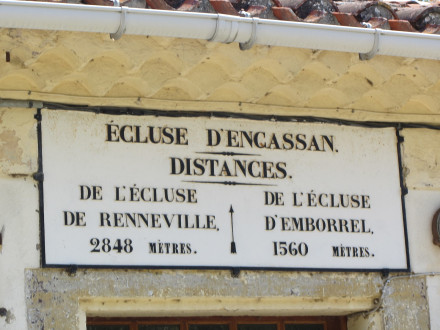
Canal du Midi, écluse (double) d'Encassan, plaque de la maison éclusière, commune d'Avignonet-Lauragais, Haute Garonne.
Photo prise le mardi 14 aout 2012. 45 km 893 de la Garonne. Altitude : 185 m. 13e écluse sur le Canal à franchir par les navigants depuis son extrèmité occidentale à Toulouse. 15e écluse à l'origine sur le Canal avant les années 70. 14e écluse si l'on ne compte pas l'écluse de Garonne, la ou a été posée la première pierre du Canal du Midi, guère usitée (mais qui a conservé ses portes éclusières) et commune aux canux du Midi, Latéral à la Garonne et de Brienne). 13e écluse si on ôte aussi du décompte l'ancienne écluse Matabiau à Toulouse, qui a perdu sa fonction éclusière lors de la modernisation du Canal dans les années 70. Voici sur ce lien un album d'un internaute Flickr, Régis B 31, sur le Canal du Midi en Haute Garonne : www.flickr.com/photos/34489588@N08/sets/72157614766492790... Sur ce trajet, l'itinéraire du Canal se confond avec l'itinéraire d'Arles ou la Via Tolosana des Chemins de Saint Jacques de Compostelle (entre le Seuil de Naurouze et l'écluse de Renneville) : fr.wikipedia.org/wiki/Chemins_de_Compostelle Localisation sur wikimapia : wikimapia.org/#lat=43.3686982&lon=1.7567954&z=19&...
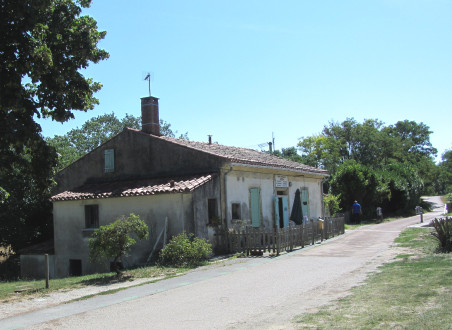
Canal du Midi, écluse (double) d'Encassan, maison éclusière, commune d'Avignonet-Lauragais, Haute Garonne.
Photo prise le mardi 14 aout 2012. 45 km 893 de la Garonne. Altitude : 185 m. 13e écluse sur le Canal à franchir par les navigants depuis son extrèmité occidentale à Toulouse. 15e écluse à l'origine sur le Canal avant les années 70. 14e écluse si l'on ne compte pas l'écluse de Garonne, la ou a été posée la première pierre du Canal du Midi, guère usitée (mais qui a conservé ses portes éclusières) et commune aux canux du Midi, Latéral à la Garonne et de Brienne). 13e écluse si on ôte aussi du décompte l'ancienne écluse Matabiau à Toulouse, qui a perdu sa fonction éclusière lors de la modernisation du Canal dans les années 70. Voici sur ce lien un album d'un internaute Flickr, Régis B 31, sur le Canal du Midi en Haute Garonne : www.flickr.com/photos/34489588@N08/sets/72157614766492790... Sur ce trajet, l'itinéraire du Canal se confond avec l'itinéraire d'Arles ou la Via Tolosana des Chemins de Saint Jacques de Compostelle (entre le Seuil de Naurouze et l'écluse de Renneville) : fr.wikipedia.org/wiki/Chemins_de_Compostelle Localisation sur wikimapia : wikimapia.org/#lat=43.3686982&lon=1.7567954&z=19&...
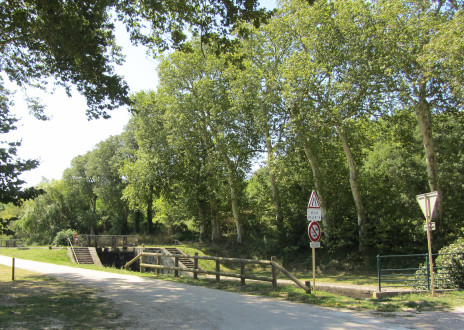
Canal du Midi, écluse (double) d'Encassan, commune d'Avignonet-Lauragais, Haute Garonne.
Photo prise le mardi 14 aout 2012. 45 km 893 de la Garonne. Altitude : 185 m. 13e écluse sur le Canal à franchir par les navigants depuis son extrèmité occidentale à Toulouse. 15e écluse à l'origine sur le Canal avant les années 70. 14e écluse si l'on ne compte pas l'écluse de Garonne, la ou a été posée la première pierre du Canal du Midi, guère usitée (mais qui a conservé ses portes éclusières) et commune aux canux du Midi, Latéral à la Garonne et de Brienne). 13e écluse si on ôte aussi du décompte l'ancienne écluse Matabiau à Toulouse, qui a perdu sa fonction éclusière lors de la modernisation du Canal dans les années 70. Voici sur ce lien un album d'un internaute Flickr, Régis B 31, sur le Canal du Midi en Haute Garonne : www.flickr.com/photos/34489588@N08/sets/72157614766492790... Sur ce trajet, l'itinéraire du Canal se confond avec l'itinéraire d'Arles ou la Via Tolosana des Chemins de Saint Jacques de Compostelle (entre le Seuil de Naurouze et l'écluse de Renneville) : fr.wikipedia.org/wiki/Chemins_de_Compostelle Localisation sur wikimapia : wikimapia.org/#lat=43.3686982&lon=1.7567954&z=19&...
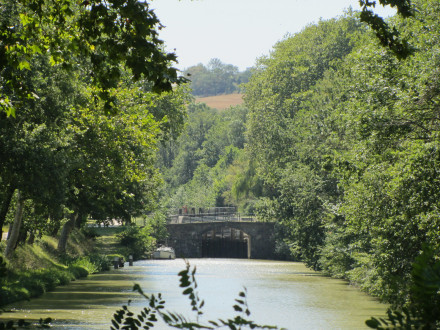
Canal du Midi, 13e bief (bief de Renneville, 2 km 843), arrivée sur l'écluse d'Encassan.
Photo prise le mardi 14 aout 2012. Communes traversées par le bief : Renneville et Avignonet Lauragais (Lauragais, département de la Haute Garonne, Région Midi Pyrénées). Voir aussi l'expo coup de coeur d'un internaute Flickr, Edouard55: www.flickr.com/groups/r-r-r/discuss/72157629186932232/ Voici sur ce lien un album d'un internaute Flickr, Régis B 31, sur le Canal du Midi en Haute Garonne : www.flickr.com/photos/34489588@N08/sets/72157614766492790... Sur ce trajet, l'itinéraire du Canal se confond avec l'itinéraire d'Arles ou la Via Tolosana des Chemins de Saint Jacques de Compostelle (entre le Seuil de Naurouze et l'écluse de Renneville) : fr.wikipedia.org/wiki/Chemins_de_Compostelle Localisation sur wikimapia : wikimapia.org/#lat=43.3784817&lon=1.7436405&z=15&...
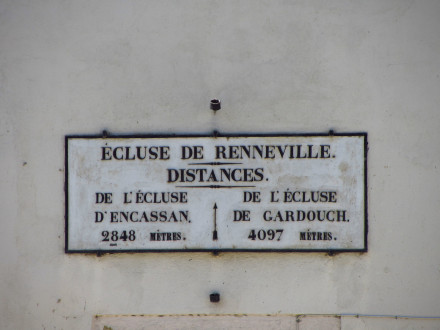
Canal du Midi, écluse (simple) de Renneville, plaque de maison éclusière, commune de Renneville, Haute Garonne.
Photo prise le mardi 14 aout 2012. 43 km 05 de la Garonne. Altitude : 176 m. 12e écluse sur le Canal à franchir par les navigants depuis son extrèmité occidentale à Toulouse. 14e écluse à l'origine sur le Canal avant les années 70. 13e écluse si l'on ne compte pas l'écluse de Garonne, la ou a été posée la première pierre du Canal du Midi, guère usitée (mais qui a conservé ses portes éclusières) et commune aux canux du Midi, Latéral à la Garonne et de Brienne). 12e écluse si on ôte aussi du décompte l'ancienne écluse Matabiau à Toulouse, qui a perdu sa fonction éclusière lors de la modernisation du Canal dans les années 70. Pour la vue aérienne, se référer aux liens suivants : philippe.dufour9.free.fr/canalmidi07.htm philippe.dufour9.free.fr/canalmidi08.htm Voici sur ce lien un album d'un internaute Flickr, Régis B 31, sur le Canal du Midi en Haute Garonne : www.flickr.com/photos/34489588@N08/sets/72157614766492790... Ici, l'itinéraire du Canal se confond avec l'itinéraire d'Arles ou la Via Tolosana des Chemins de Saint Jacques de Compostelle (entre le Seuil de Naurouze et l'écluse de Renneville) : fr.wikipedia.org/wiki/Chemins_de_Compostelle Localitation sur wikimapia : wikimapia.org/#lat=43.3835034&lon=1.7276706&z=17&...
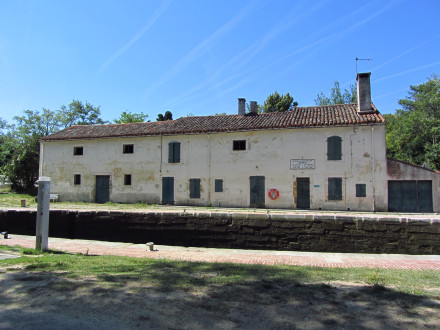
Canal du Midi, écluse (simple) de Renneville, maison éclusière, commune de Renneville, Haute Garonne.
Photo prise le mardi 14 aout 2012. 43 km 05 de la Garonne. Altitude : 176 m. 12e écluse sur le Canal à franchir par les navigants depuis son extrèmité occidentale à Toulouse. 14e écluse à l'origine sur le Canal avant les années 70. 13e écluse si l'on ne compte pas l'écluse de Garonne, la ou a été posée la première pierre du Canal du Midi, guère usitée (mais qui a conservé ses portes éclusières) et commune aux canux du Midi, Latéral à la Garonne et de Brienne). 12e écluse si on ôte aussi du décompte l'ancienne écluse Matabiau à Toulouse, qui a perdu sa fonction éclusière lors de la modernisation du Canal dans les années 70. Pour la vue aérienne, se référer aux liens suivants : philippe.dufour9.free.fr/canalmidi07.htm philippe.dufour9.free.fr/canalmidi08.htm Voici sur ce lien un album d'un internaute Flickr, Régis B 31, sur le Canal du Midi en Haute Garonne : www.flickr.com/photos/34489588@N08/sets/72157614766492790... Ici, l'itinéraire du Canal se confond avec l'itinéraire d'Arles ou la Via Tolosana des Chemins de Saint Jacques de Compostelle (entre le Seuil de Naurouze et l'écluse de Renneville) : fr.wikipedia.org/wiki/Chemins_de_Compostelle Localitation sur wikimapia : wikimapia.org/#lat=43.3835034&lon=1.7276706&z=17&...
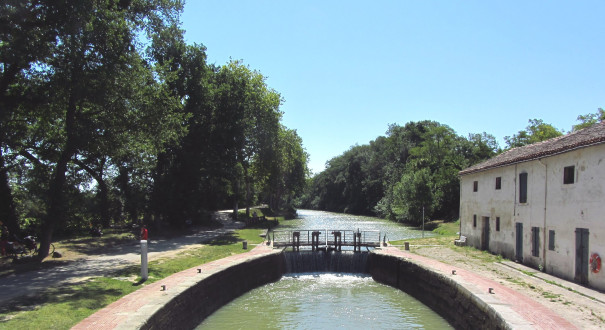
Canal du Midi, écluse (simple) de Renneville, commune de Renneville, Haute Garonne.
Photo prise le mardi 14 aout 2012. 43 km 05 de la Garonne. Altitude : 176 m. 12e écluse sur le Canal à franchir par les navigants depuis son extrèmité occidentale à Toulouse. 14e écluse à l'origine sur le Canal avant les années 70. 13e écluse si l'on ne compte pas l'écluse de Garonne, la ou a été posée la première pierre du Canal du Midi, guère usitée (mais qui a conservé ses portes éclusières) et commune aux canux du Midi, Latéral à la Garonne et de Brienne). 12e écluse si on ôte aussi du décompte l'ancienne écluse Matabiau à Toulouse, qui a perdu sa fonction éclusière lors de la modernisation du Canal dans les années 70. Pour la vue aérienne, se référer aux liens suivants : philippe.dufour9.free.fr/canalmidi07.htm philippe.dufour9.free.fr/canalmidi08.htm Voici sur ce lien un album d'un internaute Flickr, Régis B 31, sur le Canal du Midi en Haute Garonne : www.flickr.com/photos/34489588@N08/sets/72157614766492790... Ici, l'itinéraire du Canal se confond avec l'itinéraire d'Arles ou la Via Tolosana des Chemins de Saint Jacques de Compostelle (entre le Seuil de Naurouze et l'écluse de Renneville) : fr.wikipedia.org/wiki/Chemins_de_Compostelle Localitation sur wikimapia : wikimapia.org/#lat=43.3835034&lon=1.7276706&z=17&... Localitation sur wikimapia : wikimapia.org/#lat=43.3835034&lon=1.7276706&z=17&...
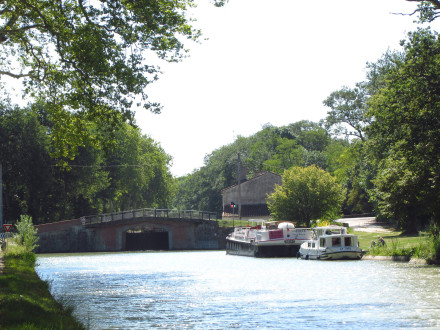
Canal du Midi, écluse (simple) de Renneville, commune de Renneville, Haute Garonne.
Photo prise le mardi 14 aout 2012. 43 km 05 de la Garonne. Altitude : 176 m. 12e écluse sur le Canal à franchir par les navigants depuis son extrèmité occidentale à Toulouse. 14e écluse à l'origine sur le Canal avant les années 70. 13e écluse si l'on ne compte pas l'écluse de Garonne, la ou a été posée la première pierre du Canal du Midi, guère usitée (mais qui a conservé ses portes éclusières) et commune aux canux du Midi, Latéral à la Garonne et de Brienne). 12e écluse si on ôte aussi du décompte l'ancienne écluse Matabiau à Toulouse, qui a perdu sa fonction éclusière lors de la modernisation du Canal dans les années 70. Pour la vue aérienne, se référer aux liens suivants : philippe.dufour9.free.fr/canalmidi07.htm philippe.dufour9.free.fr/canalmidi08.htm Voici sur ce lien un album d'un internaute Flickr, Régis B 31, sur le Canal du Midi en Haute Garonne : www.flickr.com/photos/34489588@N08/sets/72157614766492790... Ici, l'itinéraire du Canal se confond avec l'itinéraire d'Arles ou la Via Tolosana des Chemins de Saint Jacques de Compostelle (entre le Seuil de Naurouze et l'écluse de Renneville) : fr.wikipedia.org/wiki/Chemins_de_Compostelle Localitation sur wikimapia : wikimapia.org/#lat=43.3835034&lon=1.7276706&z=17&...
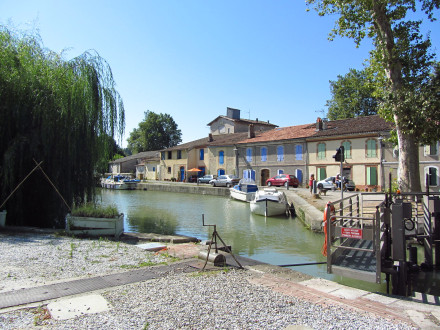
Canal du Midi, 12e bief (bief de Gardouch, 4 km 097), au départ de l'écluse de Gardouch, commune de Gardouch, Haute Garonne.
Photo prise le mardi 14 aout 2012. Bief de 4 km 097 vers l'écluse de Renneville. Communes traversées par le bief : Gardouch et Renneville (Lauragais, département de la Haute Garonne, Région Midi Pyrénées). Pour en savoir plus : www.canaldumidi.com/Lauragais/Gardouch/Ecluse-Gardouch.php Sur ce lien, une photo d'un internaute Flickr sous un autre angle : www.flickr.com/photos/yishac/4743675490/ Voici sur ce lien un album d'un internaute Flickr, Régis B 31, sur le Canal du Midi en Haute Garonne : www.flickr.com/photos/34489588@N08/sets/72157614766492790... Pour en savoir plus : www.canaldumidi.com/Lauragais/Laval/Ecluse-Laval.php Localisation sur wikimapia : wikimapia.org/#lat=43.3916785&lon=1.6918604&z=18&...
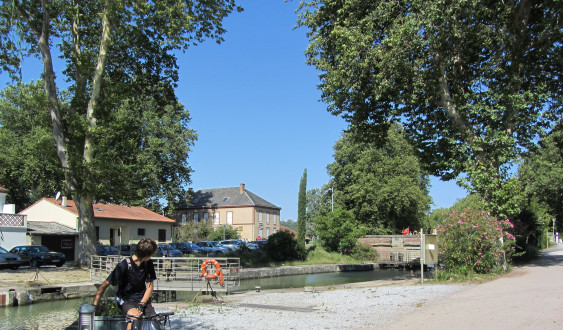
Canal du Midi, écluse (simple) de Gardouch (sens Etang de Thau Toulouse), commune de Gardouch, Haute Garonne.
Photo prise le mardi 14 aout 2012. 38 km 953 de la Garonne. Altitude : 173 m. 11e écluse sur le Canal à franchir par les navigants depuis son extrèmité occidentale à Toulouse. 13e écluse à l'origine sur le Canal avant les années 70. 12e écluse si l'on ne compte pas l'écluse de Garonne, la ou a été posée la première pierre du Canal du Midi, guère usitée (mais qui a conservé ses portes éclusières) et commune aux canux du Midi, Latéral à la Garonne et de Brienne). 11e écluse si on ôte aussi du décompte l'ancienne écluse Matabiau à Toulouse, qui a perdu sa fonction éclusière lors de la modernisation du Canal dans les années 70. Pour en savoir plus : www.canaldumidi.com/Lauragais/Gardouch/Ecluse-Gardouch.php Voici sur ce lien un album d'un internaute Flickr, Régis B 31, sur le Canal du Midi en Haute Garonne : www.flickr.com/photos/34489588@N08/sets/72157614766492790... Localisation sur wikimapia : wikimapia.org/#lat=43.3916785&lon=1.6918604&z=18&...
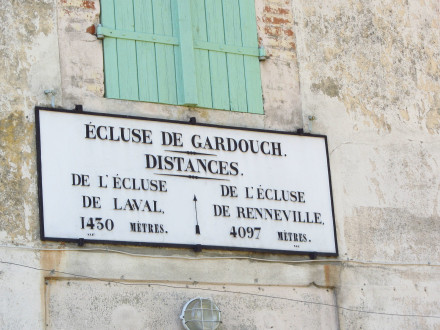
Canal du Midi, écluse (simple) de Gardouch, plaque de la maison éclusière, commune de Gardouch, Haute Garonne.
Photo prise le mardi 14 aout 2012. 38 km 953 de la Garonne. Altitude : 173 m. 11e écluse sur le Canal à franchir par les navigants depuis son extrèmité occidentale à Toulouse. 13e écluse à l'origine sur le Canal avant les années 70. 12e écluse si l'on ne compte pas l'écluse de Garonne, la ou a été posée la première pierre du Canal du Midi, guère usitée (mais qui a conservé ses portes éclusières) et commune aux canux du Midi, Latéral à la Garonne et de Brienne). 11e écluse si on ôte aussi du décompte l'ancienne écluse Matabiau à Toulouse, qui a perdu sa fonction éclusière lors de la modernisation du Canal dans les années 70. Pour en savoir plus : www.canaldumidi.com/Lauragais/Gardouch/Ecluse-Gardouch.php Voici sur ce lien un album d'un internaute Flickr, Régis B 31, sur le Canal du Midi en Haute Garonne : www.flickr.com/photos/34489588@N08/sets/72157614766492790... Localisation sur wikimapia : wikimapia.org/#lat=43.3916785&lon=1.6918604&z=18&...
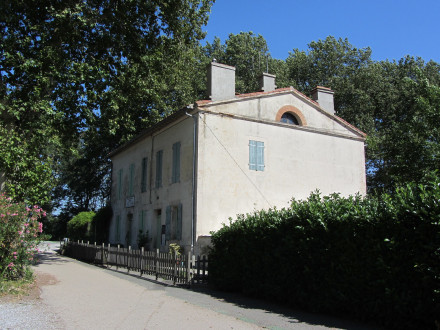
Canal du Midi, écluse (simple) de Gardouch, maison éclusière, commune de Gardouch, Haute Garonne.
Photo prise le mardi 14 aout 2012. 38 km 953 de la Garonne. Altitude : 173 m. 11e écluse sur le Canal à franchir par les navigants depuis son extrèmité occidentale à Toulouse. 13e écluse à l'origine sur le Canal avant les années 70. 12e écluse si l'on ne compte pas l'écluse de Garonne, la ou a été posée la première pierre du Canal du Midi, guère usitée (mais qui a conservé ses portes éclusières) et commune aux canux du Midi, Latéral à la Garonne et de Brienne). 11e écluse si on ôte aussi du décompte l'ancienne écluse Matabiau à Toulouse, qui a perdu sa fonction éclusière lors de la modernisation du Canal dans les années 70. Voici sur ce lien un album d'un internaute Flickr, Régis B 31, sur le Canal du Midi en Haute Garonne : www.flickr.com/photos/34489588@N08/sets/72157614766492790... Pour en savoir plus : www.canaldumidi.com/Lauragais/Gardouch/Ecluse-Gardouch.php Localisation sur wikimapia : wikimapia.org/#lat=43.3916785&lon=1.6918604&z=18&...
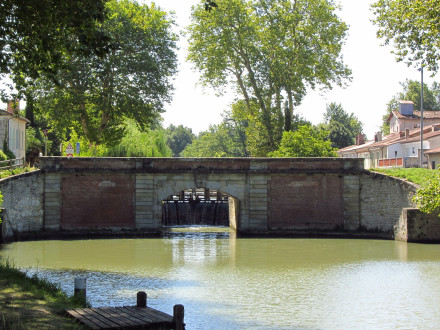
Canal du Midi, écluse (simple) de Gardouch, commune de Gardouch, Haute Garonne.
Photo prise le mardi 14 aout 2012. 38 km 953 de la Garonne. Altitude : 173 m. 11e écluse sur le Canal à franchir par les navigants depuis son extrèmité occidentale à Toulouse. 13e écluse à l'origine sur le Canal avant les années 70. 12e écluse si l'on ne compte pas l'écluse de Garonne, la ou a été posée la première pierre du Canal du Midi, guère usitée (mais qui a conservé ses portes éclusières) et commune aux canux du Midi, Latéral à la Garonne et de Brienne). 11e écluse si on ôte aussi du décompte l'ancienne écluse Matabiau à Toulouse, qui a perdu sa fonction éclusière lors de la modernisation du Canal dans les années 70. Voici sur ce lien un album d'un internaute Flickr, Régis B 31, sur le Canal du Midi en Haute Garonne : www.flickr.com/photos/34489588@N08/sets/72157614766492790... Pour en savoir plus : www.canaldumidi.com/Lauragais/Gardouch/Ecluse-Gardouch.php Localisation sur wikimapia : wikimapia.org/#lat=43.3916785&lon=1.6918604&z=18&...
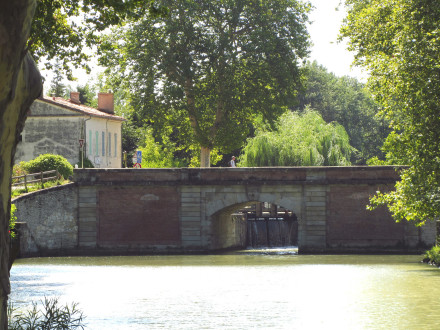
Canal du Midi, écluse (simple) de Gardouch, commune de Gardouch, Haute Garonne.
Photo prise le mardi 14 aout 2012. 38 km 953 de la Garonne. Altitude : 173 m. 11e écluse sur le Canal à franchir par les navigants depuis son extrèmité occidentale à Toulouse. 13e écluse à l'origine sur le Canal avant les années 70. 12e écluse si l'on ne compte pas l'écluse de Garonne, la ou a été posée la première pierre du Canal du Midi, guère usitée (mais qui a conservé ses portes éclusières) et commune aux canux du Midi, Latéral à la Garonne et de Brienne). 11e écluse si on ôte aussi du décompte l'ancienne écluse Matabiau à Toulouse, qui a perdu sa fonction éclusière lors de la modernisation du Canal dans les années 70. Pour en savoir plus : www.canaldumidi.com/Lauragais/Gardouch/Ecluse-Gardouch.php Voici sur ce lien un album d'un internaute Flickr, Régis B 31, sur le Canal du Midi en Haute Garonne : www.flickr.com/photos/34489588@N08/sets/72157614766492790... Pour en savoir plus : Pour en savoir plus : www.canaldumidi.com/Lauragais/Laval/Ecluse-Laval.php Localisation sur wikimapia : wikimapia.org/#lat=43.3916785&lon=1.6918604&z=18&...
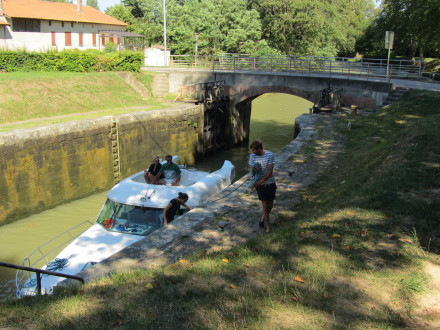
Canal du Midi, écluse (double) de Laval, commune de Gardouch, Haute Garonne.
Photo prise le mardi 14 aout 2012. 37 km 525 de la Garonne. Altitude : 170 m. 10e écluse sur le Canal à franchir par les navigants depuis son extrèmité occidentale à Toulouse. 12e écluse à l'origine sur le Canal avant les années 70. 11e écluse si l'on ne compte pas l'écluse de Garonne, la ou a été posée la première pierre du Canal du Midi, guère usitée (mais qui a conservé ses portes éclusières) et commune aux canux du Midi, Latéral à la Garonne et de Brienne). 10e écluse si on ôte aussi du décompte l'ancienne écluse Matabiau à Toulouse, qui a perdu sa fonction éclusière lors de la modernisation du Canal dans les années 70. Voici sur ce lien un album d'un internaute Flickr, Régis B 31, sur le Canal du Midi en Haute Garonne : www.flickr.com/photos/34489588@N08/sets/72157614766492790... Pour en savoir plus : www.canaldumidi.com/Lauragais/Laval/Ecluse-Laval.php Localisation sur wikimapia : wikimapia.org/#lat=43.3983382&lon=1.6792997&z=18&...
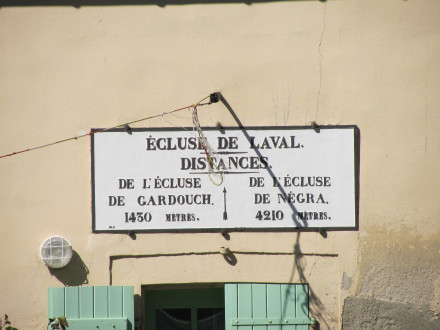
Canal du Midi, écluse (double) de Laval, plaque de la maison éclusière, commune de Gardouch, Haute Garonne.
Photo prise le mardi 14 aout 2012. 37 km 525 de la Garonne. Altitude : 170 m. 10e écluse sur le Canal à franchir par les navigants depuis son extrèmité occidentale à Toulouse. 12e écluse à l'origine sur le Canal avant les années 70. 11e écluse si l'on ne compte pas l'écluse de Garonne, la ou a été posée la première pierre du Canal du Midi, guère usitée (mais qui a conservé ses portes éclusières) et commune aux canux du Midi, Latéral à la Garonne et de Brienne). 10e écluse si on ôte aussi du décompte l'ancienne écluse Matabiau à Toulouse, qui a perdu sa fonction éclusière lors de la modernisation du Canal dans les années 70. Voici sur ce lien un album d'un internaute Flickr, Régis B 31, sur le Canal du Midi en Haute Garonne : www.flickr.com/photos/34489588@N08/sets/72157614766492790... Localisation sur wikimapia : wikimapia.org/#lat=43.3983382&lon=1.6792997&z=18&...
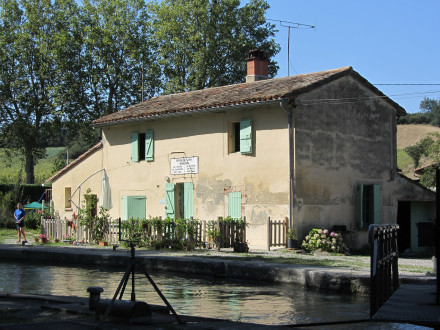
Canal du Midi, écluse (double) de Laval, maison éclusière, commune de Gardouch, Haute Garonne.
Photo prise le mardi 14 aout 2012. 37 km 525 de la Garonne. Altitude : 170 m. 10e écluse sur le Canal à franchir par les navigants depuis son extrèmité occidentale à Toulouse. 12e écluse à l'origine sur le Canal avant les années 70. 11e écluse si l'on ne compte pas l'écluse de Garonne, la ou a été posée la première pierre du Canal du Midi, guère usitée (mais qui a conservé ses portes éclusières) et commune aux canux du Midi, Latéral à la Garonne et de Brienne). 10e écluse si on ôte aussi du décompte l'ancienne écluse Matabiau à Toulouse, qui a perdu sa fonction éclusière lors de la modernisation du Canal dans les années 70. Une photo au même endroit prise 6 ans plus tôt : www.flickr.com/photos/yishac/4743674620/ Voici sur ce lien un album d'un internaute Flickr, Régis B 31, sur le Canal du Midi en Haute Garonne : www.flickr.com/photos/34489588@N08/sets/72157614766492790... Pour en savoir plus : www.canaldumidi.com/Lauragais/Laval/Ecluse-Laval.php Localisation sur wikimapia : wikimapia.org/#lat=43.3983382&lon=1.6792997&z=18&...
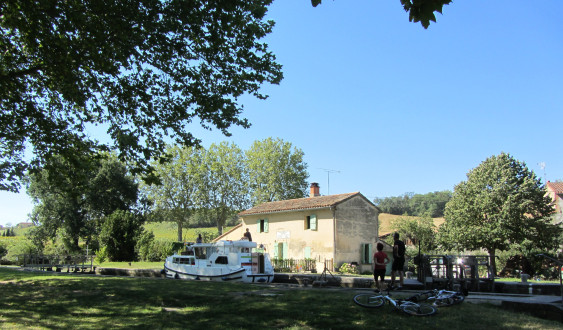
Canal du Midi, écluse (double) de Laval, commune de Gardouch, Haute Garonne.
Photo prise le mardi 14 aout 2012. 37 km 525 de la Garonne. Altitude : 170 m. 10e écluse sur le Canal à franchir par les navigants depuis son extrèmité occidentale à Toulouse. 12e écluse à l'origine sur le Canal avant les années 70. 11e écluse si l'on ne compte pas l'écluse de Garonne, la ou a été posée la première pierre du Canal du Midi, guère usitée (mais qui a conservé ses portes éclusières) et commune aux canux du Midi, Latéral à la Garonne et de Brienne). 10e écluse si on ôte aussi du décompte l'ancienne écluse Matabiau à Toulouse, qui a perdu sa fonction éclusière lors de la modernisation du Canal dans les années 70. Voici sur ce lien un album d'un internaute Flickr, Régis B 31, sur le Canal du Midi en Haute Garonne : www.flickr.com/photos/34489588@N08/sets/72157614766492790... Pour en savoir plus : www.canaldumidi.com/Lauragais/Laval/Ecluse-Laval.php Localisation sur wikimapia : wikimapia.org/#lat=43.3983382&lon=1.6792997&z=18&...
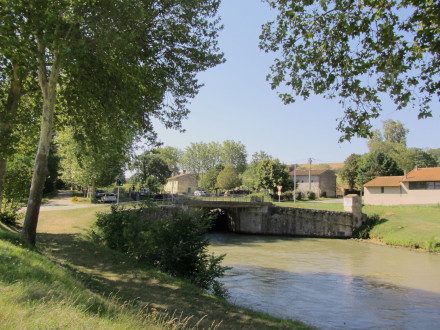
Canal du Midi, écluse (double) de Laval, commune de Gardouch, Haute Garonne.
Photo prise le mardi 14 aout 2012. 37 km 525 de la Garonne. Altitude : 170 m. 10e écluse sur le Canal à franchir par les navigants depuis son extrèmité occidentale à Toulouse. 12e écluse à l'origine sur le Canal avant les années 70. 11e écluse si l'on ne compte pas l'écluse de Garonne, la ou a été posée la première pierre du Canal du Midi, guère usitée (mais qui a conservé ses portes éclusières) et commune aux canux du Midi, Latéral à la Garonne et de Brienne). 10e écluse si on ôte aussi du décompte l'ancienne écluse Matabiau à Toulouse, qui a perdu sa fonction éclusière lors de la modernisation du Canal dans les années 70. Voici sur ce lien un album d'un internaute Flickr, Régis B 31, sur le Canal du Midi en Haute Garonne : www.flickr.com/photos/34489588@N08/sets/72157614766492790... Pour en savoir plus : www.canaldumidi.com/Lauragais/Laval/Ecluse-Laval.php Localisation sur wikimapia : wikimapia.org/#lat=43.3983382&lon=1.6792997&z=18&...
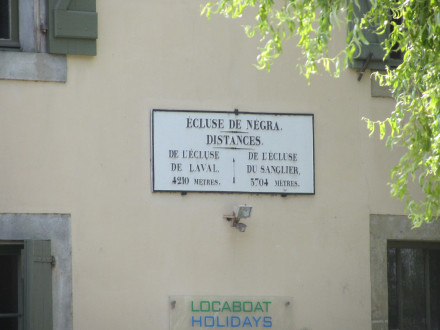
Canal du Midi, écluse (simple) de Negra, plaque de la maison éclusière, commune de Montesquieu-Lauragais, Haute Garonne.
Photo prise le lundi 13 aout 2012. 33 km 315 de la Garonne. Altitude 166 m. 9e écluse sur le Canal à franchir par les navigants depuis son extrèmité occidentale à Toulouse. 11e écluse à l'origine sur le Canal avant les années 70. 10e écluse si l'on ne compte pas l'écluse de Garonne, la ou a été posée la première pierre du Canal du Midi, guère usitée (mais qui a conservé ses portes éclusières) et commune aux canux du Midi, Latéral à la Garonne et de Brienne). 9e écluse si on ôte aussi du décompte l'ancienne écluse Matabiau à Toulouse, qui a perdu sa fonction éclusière lors de la modernisation du Canal dans les années 70. A noter : une chapelle. Autrefois la première étape du midi de la barque de la poste en provenance de Toulouse. Des photos de l'écluse visibles sur ce lien : www.canaldumidi.com/Publications/2013/03/lauragais-naurou... Des photos de la chapelle de l'écluse visibles sur ce lien : www.canaldumidi.com/Lauragais/Montesquieu-Lauragais/Negra... Pour en savoir plus : www.canalmidi.com/aufildlo/barcpost.html www.canaldumidi.com/Lauragais/Negra/Negra.php Voici sur ce lien un album d'un internaute Flickr, Régis B 31, sur le Canal du Midi en Haute Garonne : www.flickr.com/photos/34489588@N08/sets/72157614766492790... wikimapia.org/#lat=43.4184024&lon=1.640649&z=18&a... Localisation sur wikimapia : wikimapia.org/#lat=43.4184024&lon=1.640649&z=18&a...
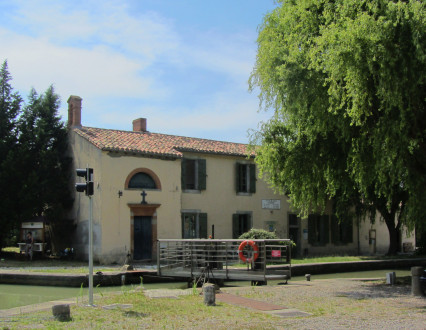
Canal du Midi, écluse (simple) de Negra, maison éclusière et la chapelle, commune de Montesquieu-Lauragais, Haute Garonne.
Photo prise le lundi 13 aout 2012. 33 km 315 de la Garonne. Altitude 166 m. 9e écluse sur le Canal à franchir par les navigants depuis son extrèmité occidentale à Toulouse. 11e écluse à l'origine sur le Canal avant les années 70. 10e écluse si l'on ne compte pas l'écluse de Garonne, la ou a été posée la première pierre du Canal du Midi, guère usitée (mais qui a conservé ses portes éclusières) et commune aux canux du Midi, Latéral à la Garonne et de Brienne). 9e écluse si on ôte aussi du décompte l'ancienne écluse Matabiau à Toulouse, qui a perdu sa fonction éclusière lors de la modernisation du Canal dans les années 70. A noter : une chapelle. Autrefois la première étape du midi de la barque de la poste depuis Toulouse. Des photos de l'écluse visibles sur ce lien : www.canaldumidi.com/Publications/2013/03/lauragais-naurou... Des photos de la chapelle de l'écluse visibles sur ce lien : www.canaldumidi.com/Lauragais/Montesquieu-Lauragais/Negra... Pour en savoir plus : www.canalmidi.com/aufildlo/barcpost.html www.canaldumidi.com/Lauragais/Negra/Negra.php Voici sur ce lien un album d'un internaute Flickr, Régis B 31, sur le Canal du Midi en Haute Garonne : www.flickr.com/photos/34489588@N08/sets/72157614766492790... Pour en savoir plus : www.canaldumidi.com/Lauragais/Negra/Negra.php wikimapia.org/#lat=43.4184024&lon=1.640649&z=18&a... Localisation sur wikimapia : wikimapia.org/#lat=43.4184024&lon=1.640649&z=18&a...
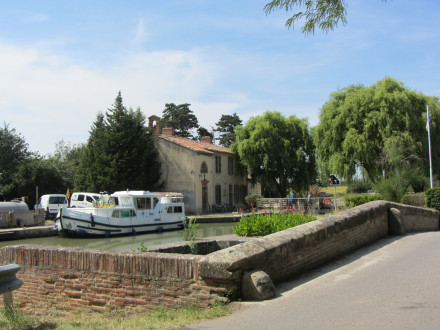
Canal du Midi, écluse (simple) et aqueduc de Negra enjambant le ruisseau La Thessauque, commune de Montesquieu-Lauragais, Haute Garonne.
Photo prise le lundi 13 aout 2012. 33 km 315 de la Garonne. Altitude 166 m. 9e écluse sur le Canal à franchir par les navigants depuis son extrèmité occidentale à Toulouse. 11e écluse à l'origine sur le Canal avant les années 70. 10e écluse si l'on ne compte pas l'écluse de Garonne, la ou a été posée la première pierre du Canal du Midi, guère usitée (mais qui a conservé ses portes éclusières) et commune aux canux du Midi, Latéral à la Garonne et de Brienne). 9e écluse si on ôte aussi du décompte l'ancienne écluse Matabiau à Toulouse, qui a perdu sa fonction éclusière lors de la modernisation du Canal dans les années 70. A noter : une chapelle. Autrefois la première étape du midi de la barque de la poste depuis Toulouse. Des photos de l'écluse visibles sur ce lien : www.canaldumidi.com/Publications/2013/03/lauragais-naurou... Des photos de la chapelle de l'écluse visibles sur ce lien : www.canaldumidi.com/Lauragais/Montesquieu-Lauragais/Negra... Pour en savoir plus : www.canalmidi.com/aufildlo/barcpost.html www.canaldumidi.com/Lauragais/Negra/Negra.php Voici sur ce lien un album d'un internaute Flickr, Régis B 31, sur le Canal du Midi en Haute Garonne : www.flickr.com/photos/34489588@N08/sets/72157614766492790... Pour en savoir plus : www.canaldumidi.com/Lauragais/Negra/Negra.php wikimapia.org/#lat=43.4184024&lon=1.640649&z=18&a... Localisation sur wikimapia : wikimapia.org/#lat=43.4184024&lon=1.640649&z=18&a...
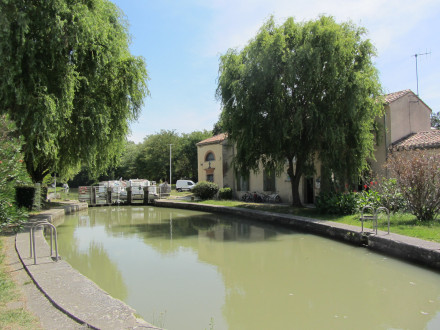
Canal du Midi, écluse (simple) de Negra, commune de Montesquieu-Lauragais, Haute Garonne.
Photo prise le lundi 13 aout 2012. 33 km 315 de la Garonne. Altitude 166 m. 9e écluse sur le Canal à franchir par les navigants depuis son extrèmité occidentale à Toulouse. 11e écluse à l'origine sur le Canal avant les années 70. 10e écluse si l'on ne compte pas l'écluse de Garonne, la ou a été posée la première pierre du Canal du Midi, guère usitée (mais qui a conservé ses portes éclusières) et commune aux canux du Midi, Latéral à la Garonne et de Brienne). 9e écluse si on ôte aussi du décompte l'ancienne écluse Matabiau à Toulouse, qui a perdu sa fonction éclusière lors de la modernisation du Canal dans les années 70. Des photos de l'écluse visibles sur ce lien : www.canaldumidi.com/Publications/2013/03/lauragais-naurou... Des photos de la chapelle de l'écluse visibles sur ce lien : www.canaldumidi.com/Lauragais/Montesquieu-Lauragais/Negra... A noter : une chapelle. Autrefois la première étape du midi de la barque de la poste depuis Toulouse. Pour en savoir plus : www.canalmidi.com/aufildlo/barcpost.html www.canaldumidi.com/Lauragais/Negra/Negra.php Voici sur ce lien un album d'un internaute Flickr, Régis B 31, sur le Canal du Midi en Haute Garonne : www.flickr.com/photos/34489588@N08/sets/72157614766492790... Pour en savoir plus : www.canaldumidi.com/Lauragais/Negra/Negra.php wikimapia.org/#lat=43.4184024&lon=1.640649&z=18&a... Localisation sur wikimapia : wikimapia.org/#lat=43.4184024&lon=1.640649&z=18&a...
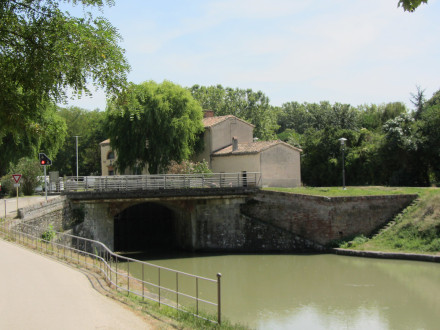
Canal du Midi, écluse (simple) de Negra, commune de Montesquieu-Lauragais, Haute Garonne.
Photo prise le lundi 13 aout 2012. 33 km 315 de la Garonne. Altitude 166 m. 9e écluse sur le Canal à franchir par les navigants depuis son extrèmité occidentale à Toulouse. 11e écluse à l'origine sur le Canal avant les années 70. 10e écluse si l'on ne compte pas l'écluse de Garonne, la ou a été posée la première pierre du Canal du Midi, guère usitée (mais qui a conservé ses portes éclusières) et commune aux canux du Midi, Latéral à la Garonne et de Brienne). 9e écluse si on ôte aussi du décompte l'ancienne écluse Matabiau à Toulouse, qui a perdu sa fonction éclusière lors de la modernisation du Canal dans les années 70. A noter : une chapelle. Autrefois la première étape du midi de la barque de la poste depuis Toulouse. Des photos de l'écluse visibles sur ce lien : www.canaldumidi.com/Publications/2013/03/lauragais-naurou... Des photos de la chapelle de l'écluse visibles sur ce lien : www.canaldumidi.com/Lauragais/Montesquieu-Lauragais/Negra... Pour en savoir plus : www.canalmidi.com/aufildlo/barcpost.html www.canaldumidi.com/Lauragais/Negra/Negra.php Voici sur ce lien un album d'un internaute Flickr, Régis B 31, sur le Canal du Midi en Haute Garonne : www.flickr.com/photos/34489588@N08/sets/72157614766492790... Pour en savoir plus : www.canaldumidi.com/Lauragais/Negra/Negra.php wikimapia.org/#lat=43.4184024&lon=1.640649&z=18&a... Localisation sur wikimapia : wikimapia.org/#lat=43.4184024&lon=1.640649&z=18&a...
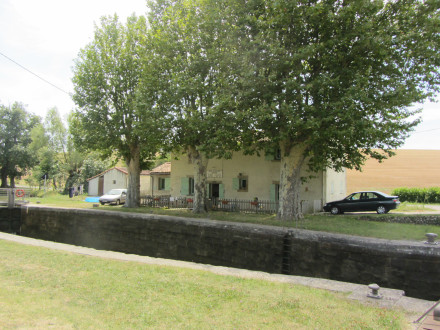
Canal du Midi, Ecluse (double) du Sanglier maison éclusière, commune d'Ayguevives, Haute Garonne.
Photo prise le lundi 13 aout 2012. Seule écluse à porter le nom d'un animal. Les ouvriers auraient été amenés à devoir tuer un gros sanglier pendant la construction de cet ouvrage. 29 km 612 de la Garonne. Altitude 163 m. 8e écluse sur le Canal à franchir par les navigants depuis son extrèmité occidentale à Toulouse. 10e écluse à l'origine sur le Canal avant les années 70. 9e écluse si l'on ne compte pas l'écluse de Garonne, la ou a été posée la première pierre du Canal du Midi, guère usitée (mais qui a conservé ses portes éclusières) et commune aux canux du Midi, Latéral à la Garonne et de Brienne). 8e écluse si on ôte aussi du décompte l'ancienne écluse Matabiau à Toulouse, qui a perdu sa fonction éclusière lors de la modernisation du Canal dans les années 70 Voici sur ce lien un album d'un internaute Flickr, Régis B 31, sur le Canal du Midi en Haute Garonne : www.flickr.com/photos/34489588@N08/sets/72157614766492790... Pour en savoir plus : www.canaldumidi.com/Toulousain/Sanglier/EcluseDuSanglier.php Localisation sur wikimapia : wikimapia.org/#lat=43.4399772&lon=1.6125636&z=17&...
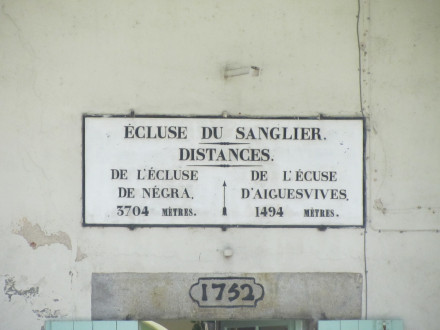
Canal du Midi, Ecluse (double) du Sanglier, plaque de la maison éclusière, commune d'Ayguevives, Haute Garonne.
Photo prise le lundi 13 aout 2012. Seule écluse à porter le nom d'un animal. Les ouvriers auraient été amenés à devoir tuer un gros sanglier pendant la construction de cet ouvrage. 29 km 612 de la Garonne. Altitude 163 m. 8e écluse sur le Canal à franchir par les navigants depuis son extrèmité occidentale à Toulouse. 10e écluse à l'origine sur le Canal avant les années 70. 9e écluse si l'on ne compte pas l'écluse de Garonne, la ou a été posée la première pierre du Canal du Midi, guère usitée (mais qui a conservé ses portes éclusières) et commune aux canux du Midi, Latéral à la Garonne et de Brienne). 8e écluse si on ôte aussi du décompte l'ancienne écluse Matabiau à Toulouse, qui a perdu sa fonction éclusière lors de la modernisation du Canal dans les années 70. Voici sur ce lien un album d'un internaute Flickr, Régis B 31, sur le Canal du Midi en Haute Garonne : www.flickr.com/photos/34489588@N08/sets/72157614766492790... Localisation sur wikimapia : wikimapia.org/#lat=43.4399772&lon=1.6125636&z=17&...
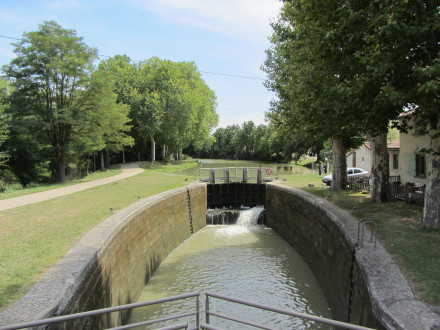
Canal du Midi, Ecluse (double) du Sanglier, commune d'Ayguevives, Haute Garonne.
Photo prise le lundi 13 aout 2012. Seule écluse à porter le nom d'un animal. Les ouvriers auraient été amenés à devoir tuer un gros sanglier pendant la construction de cet ouvrage. 29 km 612 de la Garonne. Altitude 163 m. 8e écluse sur le Canal à franchir par les navigants depuis son extrèmité occidentale à Toulouse. 10e écluse à l'origine sur le Canal avant les années 70. 9e écluse si l'on ne compte pas l'écluse de Garonne, la ou a été posée la première pierre du Canal du Midi, guère usitée (mais qui a conservé ses portes éclusières) et commune aux canux du Midi, Latéral à la Garonne et de Brienne). 8e écluse si on ôte aussi du décompte l'ancienne écluse Matabiau à Toulouse, qui a perdu sa fonction éclusière lors de la modernisation du Canal dans les années 70. Départ du 9e bief de 3 km 703 vers l'écluse de Negra. Voici sur ce lien un album d'un internaute Flickr, Régis B 31, sur le Canal du Midi en Haute Garonne : www.flickr.com/photos/34489588@N08/sets/72157614766492790... Pour en savoir plus : www.canaldumidi.com/Toulousain/Sanglier/EcluseDuSanglier.php Localisation sur wikimapia : wikimapia.org/#lat=43.4399772&lon=1.6125636&z=17&...
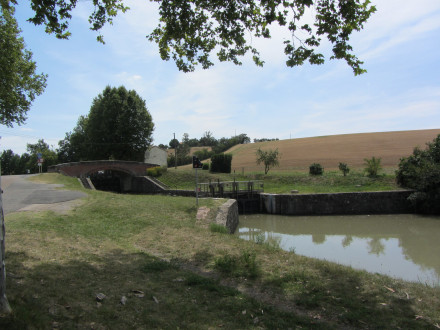
Canal du Midi, Ecluse (double) du Sanglier, commune d'Ayguevives, Haute Garonne.
Photo prise le lundi 13 aout 2012. Seule écluse à porter le nom d'un animal. Les ouvriers auraient été amenés à devoir tuer un gros sanglier pendant la construction de cet ouvrage. 29 km 612 de la Garonne. Altitude 163 m. 8e écluse sur le Canal à franchir par les navigants depuis son extrèmité occidentale à Toulouse. 10e écluse à l'origine sur le Canal avant les années 70. 9e écluse si l'on ne compte pas l'écluse de Garonne, la ou a été posée la première pierre du Canal du Midi, guère usitée (mais qui a conservé ses portes éclusières) et commune aux canux du Midi, Latéral à la Garonne et de Brienne). 8e écluse si on ôte aussi du décompte l'ancienne écluse Matabiau à Toulouse, qui a perdu sa fonction éclusière lors de la modernisation du Canal dans les années 70. Voici sur ce lien un album d'un internaute Flickr, Régis B 31, sur le Canal du Midi en Haute Garonne : www.flickr.com/photos/34489588@N08/sets/72157614766492790... Pour en savoir plus : www.canaldumidi.com/Toulousain/Sanglier/EcluseDuSanglier.php Localisation sur wikimapia : wikimapia.org/#lat=43.4399772&lon=1.6125636&z=17&...
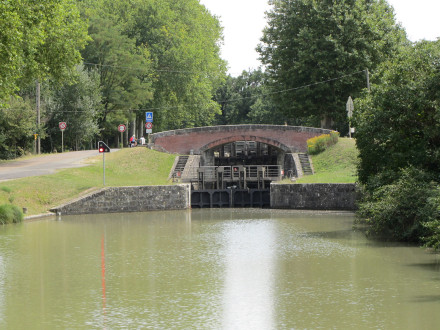
Canal du Midi, Ecluse (double) du Sanglier, commune d'Ayguevives, Haute Garonne.
Photo prise le lundi 13 aout 2012. Seule écluse à porter le nom d'un animal. Les ouvriers auraient été amenés à devoir tuer un gros sanglier pendant la construction de cet ouvrage. 29 km 612 de la Garonne. Altitude 163 m. 8e écluse sur le Canal à franchir par les navigants depuis son extrèmité occidentale à Toulouse. 10e écluse à l'origine sur le Canal avant les années 70. 9e écluse si l'on ne compte pas l'écluse de Garonne, la ou a été posée la première pierre du Canal du Midi, guère usitée (mais qui a conservé ses portes éclusières) et commune aux canux du Midi, Latéral à la Garonne et de Brienne). 8e écluse si on ôte aussi du décompte l'ancienne écluse Matabiau à Toulouse, qui a perdu sa fonction éclusière lors de la modernisation du Canal dans les années 70. Sur ce lien, une photo interessante de ce lieu : www.flickr.com/photos/yishac/4743035141/ Voici sur ce lien un album d'un internaute Flickr, Régis B 31, sur le Canal du Midi en Haute Garonne : www.flickr.com/photos/34489588@N08/sets/72157614766492790... Pour en savoir plus : www.canaldumidi.com/Toulousain/Sanglier/EcluseDuSanglier.php Localisation sur wikimapia : wikimapia.org/#lat=43.4399772&lon=1.6125636&z=17&...
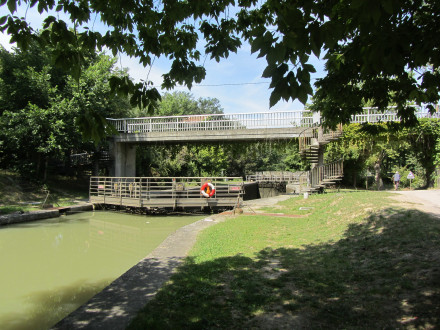
Canal du Midi, écluse (double) d'Ayguevives (sens Etang de Thau Toulouse), commune d'Ayguevives, Haute Garonne.
Photo prise le lundi 13 aout 2012. Arrivée du 9e bief de 1 km 502 depuis l'écluse du Sanglier. 28 km 11 de la Garonne. Altitude 159 m. 7e écluse sur le Canal à franchir par les navigants depuis son extrèmité occidentale à Toulouse. 9e écluse à l'origine sur le Canal avant les années 70. 8e écluse si l'on ne compte pas l'écluse de Garonne, la ou a été posée la première pierre du Canal du Midi, guère usitée (mais qui a conservé ses portes éclusières) et commune aux canux du Midi, Latéral à la Garonne et de Brienne). 7e écluse si on ôte aussi du décompte l'ancienne écluse Matabiau à Toulouse, qui a perdu sa fonction éclusière lors de la modernisation du Canal dans les années 70. Voici sur ce lien un album d'un internaute Flickr, Régis B 31, sur le Canal du Midi en Haute Garonne : www.flickr.com/photos/34489588@N08/sets/72157614766492790... Localisation sur wikimapia : wikimapia.org/#lat=43.4476734&lon=1.5999036&z=17&...
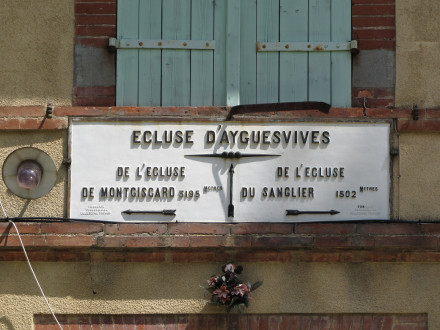
Canal du Midi, écluse (double) d'Ayguevives, plaque de la maison éclusière, commune d'Ayguevives, Haute Garonne.
Photo prise le lundi 13 aout 2012. 28 km 11 de la Garonne. Altitude 159 m. 7e écluse sur le Canal à franchir par les navigants depuis son extrèmité occidentale à Toulouse. 9e écluse à l'origine sur le Canal avant les années 70. 8e écluse si l'on ne compte pas l'écluse de Garonne, la ou a été posée la première pierre du Canal du Midi, guère usitée (mais qui a conservé ses portes éclusières) et commune aux canux du Midi, Latéral à la Garonne et de Brienne). 7e écluse si on ôte aussi du décompte l'ancienne écluse Matabiau à Toulouse, qui a perdu sa fonction éclusière lors de la modernisation du Canal dans les années 70. Voici sur ce lien un album d'un internaute Flickr, Régis B 31, sur le Canal du Midi en Haute Garonne : www.flickr.com/photos/34489588@N08/sets/72157614766492790... Localisation sur wikimapia : wikimapia.org/#lat=43.4476734&lon=1.5999036&z=17&...
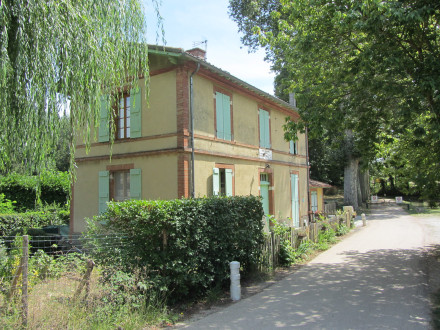
Canal du Midi, écluse (double) d'Ayguevives, maison éclusière, commune d'Ayguevives, Haute Garonne.
Photo prise le lundi 13 aout 2012. Coquette maison éclusière. 28 km 11 de la Garonne. 7e écluse sur le Canal à franchir par les navigants depuis son extrèmité occidentale à Toulouse. 9e écluse à l'origine sur le Canal avant les années 70. 8e écluse si l'on ne compte pas l'écluse de Garonne, la ou a été posée la première pierre du Canal du Midi, guère usitée (mais qui a conservé ses portes éclusières) et commune aux canux du Midi, Latéral à la Garonne et de Brienne). 7e écluse si on ôte aussi du décompte l'ancienne écluse Matabiau à Toulouse, qui a perdu sa fonction éclusière lors de la modernisation du Canal dans les années 70. Altitude 159 m. Voici sur ce lien un album d'un internaute Flickr, Régis B 31, sur le Canal du Midi en Haute Garonne : www.flickr.com/photos/34489588@N08/sets/72157614766492790... Localisation sur wikimapia : wikimapia.org/#lat=43.4476734&lon=1.5999036&z=17&...
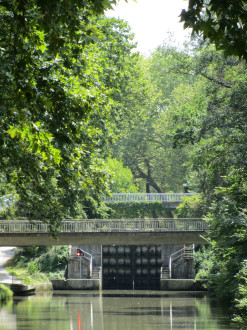
Canal du Midi, écluse (double) d'Ayguevives, commune d'Ayguevives, Haute Garonne.
Photo prise le lundi 13 aout 2012. 28 km 11 de la Garonne. Altitude 159 m. 7e écluse sur le Canal à franchir par les navigants depuis son extrèmité occidentale à Toulouse. 9e écluse à l'origine sur le Canal avant les années 70. 8e écluse si l'on ne compte pas l'écluse de Garonne, la ou a été posée la première pierre du Canal du Midi, guère usitée (mais qui a conservé ses portes éclusières) et commune aux canux du Midi, Latéral à la Garonne et de Brienne). 7e écluse si on ôte aussi du décompte l'ancienne écluse Matabiau à Toulouse, qui a perdu sa fonction éclusière lors de la modernisation du Canal dans les années 70. Le pont en béton au premier plan est traversé par la départementale 813 (ancienne route nationale 113, Bordeaux Marseille). Pour en savoir plus : www.canal-du-midi.org/fr/canal/cartes/midi_pyrenees/31_ha... Voici sur ce lien un album d'un internaute Flickr, Régis B 31, sur le Canal du Midi en Haute Garonne : www.flickr.com/photos/34489588@N08/sets/72157614766492790... Localisation sur wikimapia : wikimapia.org/#lat=43.4476734&lon=1.5999036&z=17&...
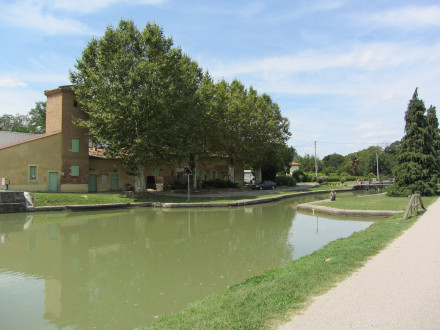
Canal du Midi, écluse (double) de Montgiscard (sens Etang de Thau Toulouse), commune de Montgiscard, Haute Garonne.
Photo prise le lundi 13 aout 2012. 6e écluse sur le Canal à franchir par les navigants depuis son extrèmité occidentale à Toulouse. 8e écluse à l'origine sur le Canal avant les années 70. 7e écluse si l'on ne compte pas l'écluse de Garonne, la ou a été posée la première pierre du Canal du Midi, guère usitée (mais qui a conservé ses portes éclusières) et commune aux canux du Midi, Latéral à la Garonne et de Brienne). 6e écluse si on ôte aussi du décompte l'ancienne écluse Matabiau à Toulouse, qui a perdu sa fonction éclusière lors de la modernisation du Canal dans les années 70. Arrivée du 7e bief de 3 km 195 depuis l'écluse d'Ayguevives. 24 km 915 de la Garonne. Altitude 157 m. Voici sur ce lien un album d'un internaute Flickr, Régis B 31, sur le Canal du Midi en Haute Garonne : www.flickr.com/photos/34489588@N08/sets/72157614766492790... Localisation sur wikimapia : wikimapia.org/#lat=43.4625722&lon=1.5708311&z=18&...
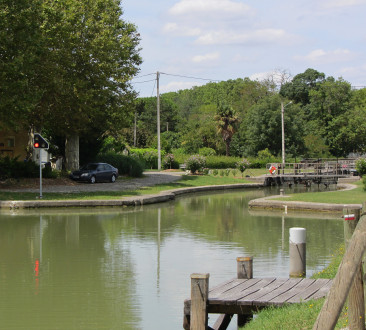
Canal du Midi, écluse (double) de Montgiscard (sens Etang de Thau Toulouse), commune de Montgiscard, Haute Garonne.
Photo prise le lundi 13 aout 2012. Arrivée du 7e bief de 3 km 195 depuis l'écluse d'Ayguevives. 6e écluse sur le Canal à franchir par les navigants depuis son extrèmité occidentale à Toulouse. 8e écluse à l'origine sur le Canal avant les années 70. 7e écluse si l'on ne compte pas l'écluse de Garonne, la ou a été posée la première pierre du Canal du Midi, guère usitée (mais qui a conservé ses portes éclusières) et commune aux canux du Midi, Latéral à la Garonne et de Brienne). 6e écluse si on ôte aussi du décompte l'ancienne écluse Matabiau à Toulouse, qui a perdu sa fonction éclusière lors de la modernisation du Canal dans les années 70. 24 km 915 de la Garonne. Altitude 157 m. Voici sur ce lien un album d'un internaute Flickr, Régis B 31, sur le Canal du Midi en Haute Garonne : www.flickr.com/photos/34489588@N08/sets/72157614766492790... Pour en savoir plus : www.canaldumidi.com/Toulousain/Montgiscard/Montgiscard.php Localisation sur wikimapia : wikimapia.org/#lat=43.4625722&lon=1.5708311&z=18&...
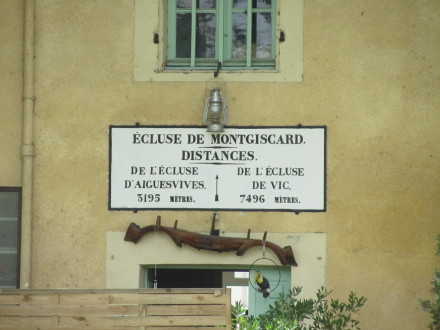
Canal du Midi, écluse (double) de Montgiscard, plaque de la maison éclusière, commune de Montgiscard, Haute Garonne.
Photo prise le lundi 13 aout 2012. 24 km 915 de la Garonne. Altitude 157 m. 6e écluse sur le Canal à franchir par les navigants depuis son extrèmité occidentale à Toulouse. 8e écluse à l'origine sur le Canal avant les années 70. 7e écluse si l'on ne compte pas l'écluse de Garonne, la ou a été posée la première pierre du Canal du Midi, guère usitée (mais qui a conservé ses portes éclusières) et commune aux canux du Midi, Latéral à la Garonne et de Brienne). 6e écluse si on ôte aussi du décompte l'ancienne écluse Matabiau à Toulouse, qui a perdu sa fonction éclusière lors de la modernisation du Canal dans les années 70. Voici sur ce lien un album d'un internaute Flickr, Régis B 31, sur le Canal du Midi en Haute Garonne : www.flickr.com/photos/34489588@N08/sets/72157614766492790... Localisation sur wikimapia : wikimapia.org/#lat=43.4625722&lon=1.5708311&z=18&...
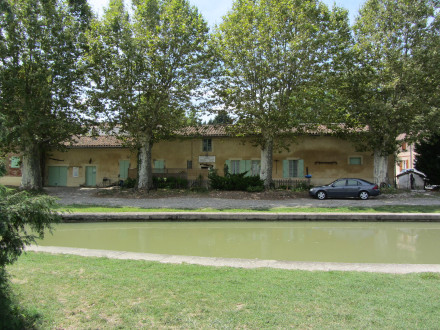
Canal du Midi, écluse (double) de Montgiscard, maison éclusière, commune de Montgiscard, Haute Garonne.
Photo prise le lundi 13 aout 2012. 24 km 915 de la Garonne. Altitude 157 m. 6e écluse sur le Canal à franchir par les navigants depuis son extrèmité occidentale à Toulouse. 8e écluse à l'origine sur le Canal avant les années 70. 7e écluse si l'on ne compte pas l'écluse de Garonne, la ou a été posée la première pierre du Canal du Midi, guère usitée (mais qui a conservé ses portes éclusières) et commune aux canux du Midi, Latéral à la Garonne et de Brienne). 6e écluse si on ôte aussi du décompte l'ancienne écluse Matabiau à Toulouse, qui a perdu sa fonction éclusière lors de la modernisation du Canal dans les années 70. Voici sur ce lien un album d'un internaute Flickr, Régis B 31, sur le Canal du Midi en Haute Garonne : www.flickr.com/photos/34489588@N08/sets/72157614766492790... Pour en savoir plus : www.canaldumidi.com/Toulousain/Montgiscard/Montgiscard.php Localisation sur wikimapia : wikimapia.org/#lat=43.4625722&lon=1.5708311&z=18&...
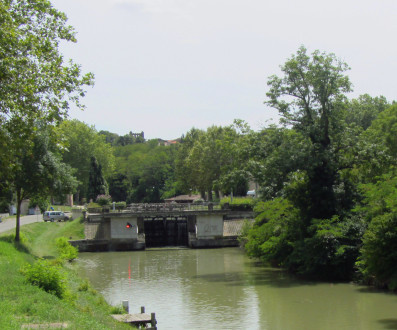
Canal du Midi, écluse (double) de Montgiscard, commune de Montgiscard, Haute Garonne.
Photo prise le lundi 13 aout 2012. 24 km 915 de la Garonne. Altitude 157 m. 6e écluse sur le Canal à franchir par les navigants depuis son extrèmité occidentale à Toulouse. 8e écluse à l'origine sur le Canal avant les années 70. 7e écluse si l'on ne compte pas l'écluse de Garonne, la ou a été posée la première pierre du Canal du Midi, guère usitée (mais qui a conservé ses portes éclusières) et commune aux canux du Midi, Latéral à la Garonne et de Brienne). 6e écluse si on ôte aussi du décompte l'ancienne écluse Matabiau à Toulouse, qui a perdu sa fonction éclusière lors de la modernisation du Canal dans les années 70. Pour en savoir plus : fr.wikipedia.org/wiki/Montgiscard Voici sur ce lien un album d'un internaute Flickr, Régis B 31, sur le Canal du Midi en Haute Garonne : www.flickr.com/photos/34489588@N08/sets/72157614766492790... Localisation sur wikimapia : wikimapia.org/#lat=43.4625722&lon=1.5708311&z=18&...
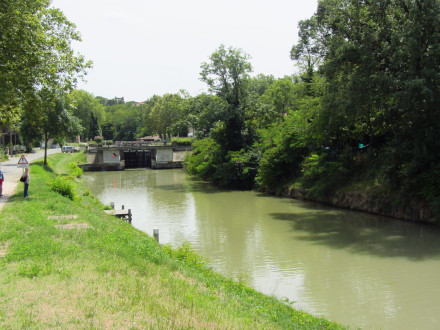
Canal du Midi, 6e bief (bief de Vic, 7 km 495), arrivée sur l'écluse de Montgiscard.
Photo prise le lundi 13 aout 2012. Communes traversées par le bief : Castanet Tolosan, Pechabou, Pompertuzat, Deyme, Donneville et Montgiscard (Lauragais, département de la Haute Garonne, Région Midi Pyrénées). Voici sur ce lien un album d'un internaute Flickr, Régis B 31, sur le Canal du Midi en Haute Garonne : www.flickr.com/photos/34489588@N08/sets/72157614766492790... Localisation sur wikimapia : wikimapia.org/#lat=43.4625722&lon=1.5708311&z=18&...
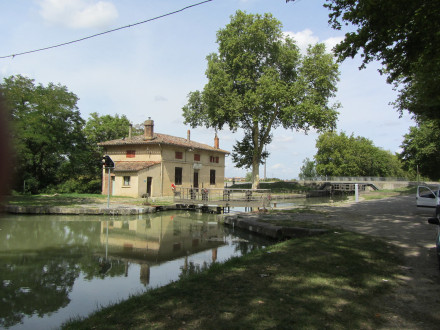
Canal du Midi, écluse (simple) de Vic (sens Etang de Thau Toulouse), commune de Castanet Tolosan, Haute Garonne.
Photo prise le lundi 13 aout 2012. 17 km 42 de la Garonne. Altitude 151 m. 5e écluse sur le Canal à franchir par les navigants depuis son extrèmité occidentale à Toulouse. 7e écluse à l'origine sur le Canal avant les années 70. 6e écluse si l'on ne compte pas l'écluse de Garonne, la ou a été posée la première pierre du Canal du Midi, guère usitée (mais qui a conservé ses portes éclusières) et commune aux canux du Midi, Latéral à la Garonne et de Brienne). 5e écluse si on ôte aussi du décompte l'ancienne écluse Matabiau à Toulouse, qui a perdu sa fonction éclusière lors de la modernisation du Canal dans les années 70 Arrivée du 6e bief de 7 km 495 depuis l'écluse de Montgiscard. Voici sur ce lien un album d'un internaute Flickr, Régis B 31, sur le Canal du Midi en Haute Garonne : www.flickr.com/photos/34489588@N08/sets/72157614766492790... Localisation sur wikimapia : wikimapia.org/#lat=43.5107541&lon=1.5181579&z=18&...
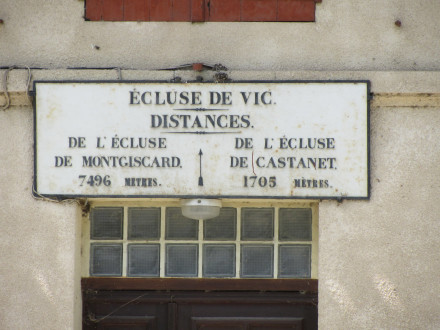
Canal du Midi, écluse (simple) de Vic, plaque de la maison éclusière, commune de Castanet Tolosan, Haute Garonne.
Photo prise le lundi 13 aout 2012. 17 km 42 de la Garonne. Altitude 151 m. 5e écluse sur le Canal à franchir par les navigants depuis son extrèmité occidentale à Toulouse. 7e écluse à l'origine sur le Canal avant les années 70. 6e écluse si l'on ne compte pas l'écluse de Garonne, la ou a été posée la première pierre du Canal du Midi, guère usitée (mais qui a conservé ses portes éclusières) et commune aux canux du Midi, Latéral à la Garonne et de Brienne). 5e écluse si on ôte aussi du décompte l'ancienne écluse Matabiau à Toulouse, qui a perdu sa fonction éclusière lors de la modernisation du Canal dans les années 70 Voici sur ce lien un album d'un internaute Flickr, Régis B 31, sur le Canal du Midi en Haute Garonne : www.flickr.com/photos/34489588@N08/sets/72157614766492790... Localisation sur wikimapia : wikimapia.org/#lat=43.5107541&lon=1.5181579&z=18&...
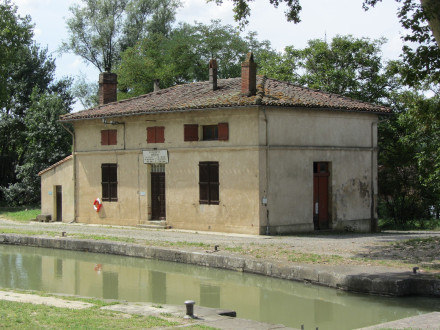
Canal du Midi, écluse (simple) de Vic, maison éclusière commune de Castanet Tolosan, Haute Garonne.
Photo prise le lundi 13 aout 2012. 17 km 42 de la Garonne. Altitude 151 m. 5e écluse sur le Canal à franchir par les navigants depuis son extrèmité occidentale à Toulouse. 7e écluse à l'origine sur le Canal avant les années 70. 6e écluse si l'on ne compte pas l'écluse de Garonne, la ou a été posée la première pierre du Canal du Midi, guère usitée (mais qui a conservé ses portes éclusières) et commune aux canux du Midi, Latéral à la Garonne et de Brienne). 5e écluse si on ôte aussi du décompte l'ancienne écluse Matabiau à Toulouse, qui a perdu sa fonction éclusière lors de la modernisation du Canal dans les années 70 Voici sur ce lien un album d'un internaute Flickr, Régis B 31, sur le Canal du Midi en Haute Garonne : www.flickr.com/photos/34489588@N08/sets/72157614766492790... Localisation sur wikimapia : wikimapia.org/#lat=43.5107541&lon=1.5181579&z=18&...
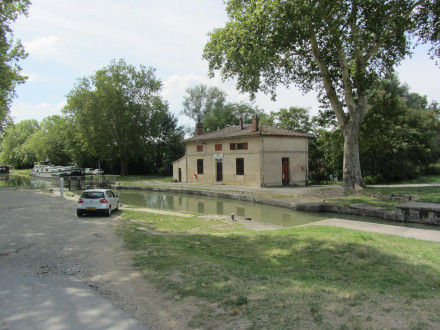
Canal du Midi, écluse (simple) de Vic, commune de Castanet Tolosan, Haute Garonne.
Photo prise le lundi 13 aout 2012. 17 km 42 de la Garonne. Altitude 151 m. 5e écluse sur le Canal à franchir par les navigants depuis son extrèmité occidentale à Toulouse. 7e écluse à l'origine sur le Canal avant les années 70. 6e écluse si l'on ne compte pas l'écluse de Garonne, la ou a été posée la première pierre du Canal du Midi, guère usitée (mais qui a conservé ses portes éclusières) et commune aux canux du Midi, Latéral à la Garonne et de Brienne). 5e écluse si on ôte aussi du décompte l'ancienne écluse Matabiau à Toulouse, qui a perdu sa fonction éclusière lors de la modernisation du Canal dans les années 70 Voici sur ce lien un album d'un internaute Flickr, Régis B 31, sur le Canal du Midi en Haute Garonne : www.flickr.com/photos/34489588@N08/sets/72157614766492790... Localisation sur wikimapia : wikimapia.org/#lat=43.5107541&lon=1.5181579&z=18&...
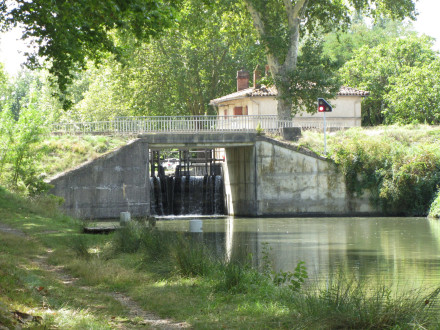
Canal du Midi, écluse (simple) de Vic, commune de Castanet Tolosan, Haute Garonne.
Photo prise le lundi 13 aout 2012. 17 km 42 de la Garonne. Altitude 151 m. 5e écluse sur le Canal à franchir par les navigants depuis son extrèmité occidentale à Toulouse. 7e écluse à l'origine sur le Canal avant les années 70. 6e écluse si l'on ne compte pas l'écluse de Garonne, la ou a été posée la première pierre du Canal du Midi, guère usitée (mais qui a conservé ses portes éclusières) et commune aux canux du Midi, Latéral à la Garonne et de Brienne). 5e écluse si on ôte aussi du décompte l'ancienne écluse Matabiau à Toulouse, qui a perdu sa fonction éclusière lors de la modernisation du Canal dans les années 70 Un pont à l'esthétique bétonnière des années 70 que je ne contestte pas sur sa volumétrie mais sur le matérieau (et surtout sa couleur). J'eu préféré un habillage en briques du Lauragais (mais certainement plus onéreux à la construction. Voici sur ce lien un album d'un internaute Flickr, Régis B 31, sur le Canal du Midi en Haute Garonne : www.flickr.com/photos/34489588@N08/sets/72157614766492790... Localisation sur wikimapia : wikimapia.org/#lat=43.5178033&lon=1.5239059&z=15&...
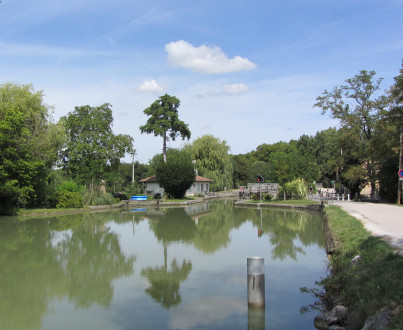
Canal du Midi, écluse (double) de Castanet (sens Etang de Thau Toulouse) commune de Castanet Tolosan, Haute Garonne (porte du Lauragais).
Photo prise le lundi 13 aout 2012. 15 km 715 de la Garonne. Altitude 148 m. 4e écluse du Canal à franchir par les navigants depuis son extrèmité occidentale à Toulouse). 6e écluse à l'origine sur le Canal avant les années 70. 5e écluse si l'on ne compte pas l'écluse de Garonne, la ou a été posée la première pierre du Canal du Midi, guère usitée (mais qui a conservé ses portes éclusières) et commune aux canaux du Midi, Latéral à la Garonne et de Brienne). 4e écluse si on ôte aussi du décompte l'ancienne écluse Matabiau à Toulouse, qui a perdu sa fonction éclusière lors de la modernisation du Canal dans les années 70 Arrivée du 5e bief, de 1 km 705 depuis l'écluse de Vic. On ne peut que regretter cette maison préfabriquée au bord de l'écluse (c'est comme si existaient des Maison de la marque "Phénix" entre le Château de Versailles et les Grands Bassins). A Coté de cela, la maison éclusière mériterait une restauration. Voici sur ce lien un album d'un internaute Flickr, Régis B 31, sur le Canal du Midi en Haute Garonne : www.flickr.com/photos/34489588@N08/sets/72157614766492790... Localisation sur wikimapia : wikimapia.org/#lat=43.5237626&lon=1.5191691&z=17&...
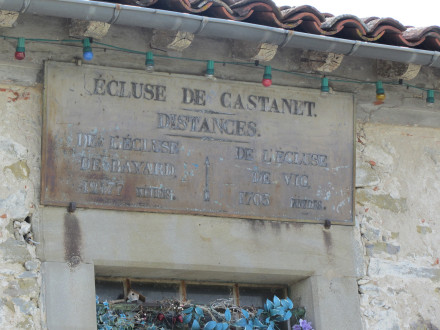
Canal du Midi, écluse (double) de Castanet, plaque de la maison éclusière, commune de Castanet Tolosan, Haute Garonne (porte du Lauragais).
Photo prise le lundi 13 aout 2012. Cette plaque mériterait un rafraichissement. 4e écluse du Canal à franchir par les navigants depuis son extrèmité occidentale à Toulouse). 6e écluse à l'origine sur le Canal avant les années 70. 5e écluse si l'on ne compte pas l'écluse de Garonne, la ou a été posée la première pierre du Canal du Midi, guère usitée (mais qui a conservé ses portes éclusières) et commune aux canaux du Midi, Latéral à la Garonne et de Brienne). 4e écluse si on ôte aussi du décompte l'ancienne écluse Matabiau à Toulouse, qui a perdu sa fonction éclusière lors de la modernisation du Canal dans les années 70 Voici sur ce lien un album d'un internaute Flickr, Régis B 31, sur le Canal du Midi en Haute Garonne : www.flickr.com/photos/34489588@N08/sets/72157614766492790... Localisation sur wikimapia : wikimapia.org/#lat=43.5237626&lon=1.5191691&z=17&...
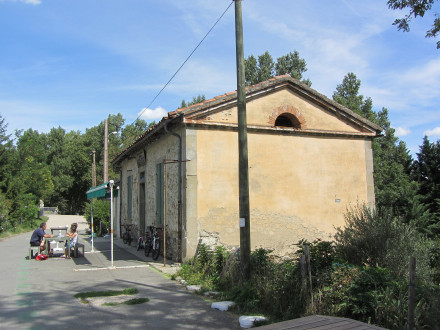
Canal du Midi, écluse (double) de Castanet, maison éclusière, commune de Castanet Tolosan, Haute Garonne (porte du Lauragais).
Photo prise le lundi 13 aout 2012. 15 km 715 de la Garonne. Altitude 148 m. Sur ce lien, une carte postale ancienne sur ce lieu . On reconnait la maison éclusière en arrière plan à gauche. www.canalmidi.com/aufildlo/photanci/cpacastanet.html Bâtiment qui mériterait une restauration. 4e écluse du Canal à franchir par les navigants depuis son extrèmité occidentale à Toulouse). 6e écluse à l'origine sur le Canal avant les années 70. 5e écluse si l'on ne compte pas l'écluse de Garonne, la ou a été posée la première pierre du Canal du Midi, guère usitée (mais qui a conservé ses portes éclusières) et commune aux canaux du Midi, Latéral à la Garonne et de Brienne). 4e écluse si on ôte aussi du décompte l'ancienne écluse Matabiau à Toulouse, qui a perdu sa fonction éclusière lors de la modernisation du Canal dans les années 70 Voici sur ce lien un album d'un internaute Flickr, Régis B 31, sur le Canal du Midi en Haute Garonne : www.flickr.com/photos/34489588@N08/sets/72157614766492790... Localisation sur wikimapia : wikimapia.org/#lat=43.5237626&lon=1.5191691&z=17&...
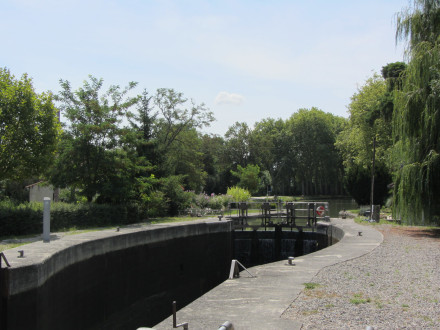
Canal du Midi, écluse (double) de Castanet (sens Toulouse Etang de Thau), commune de Castanet Tolosan, Haute Garonne (porte du Lauragais).
Photo prise le lundi 13 aout 2012. 15 km 715 de la Garonne. Altitude 148 m. 4e écluse du Canal à franchir par les navigants depuis son extrèmité occidentale à Toulouse). 6e écluse à l'origine sur le Canal avant les années 70. 5e écluse si l'on ne compte pas l'écluse de Garonne, la ou a été posée la première pierre du Canal du Midi, guère usitée (mais qui a conservé ses portes éclusières) et commune aux canaux du Midi, Latéral à la Garonne et de Brienne). 4e écluse si on ôte aussi du décompte l'ancienne écluse Matabiau à Toulouse, qui a perdu sa fonction éclusière lors de la modernisation du Canal dans les années 70 Voici sur ce lien un album d'un internaute Flickr, Régis B 31, sur le Canal du Midi en Haute Garonne : www.flickr.com/photos/34489588@N08/sets/72157614766492790... Localisation sur wikimapia : wikimapia.org/#lat=43.5237626&lon=1.5191691&z=17&...
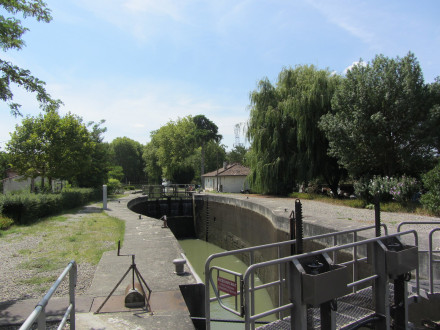
Canal du Midi, écluse (double) de Castanet (sens Toulouse Etang de Thau), commune de Castanet Tolosan, Haute Garonne (porte du Lauragais).
Photo prise le lundi 13 aout 2012. 15 km 715 de la Garonne. Altitude 148 m. 4e écluse du Canal à franchir par les navigants depuis son extrèmité occidentale à Toulouse. 6e écluse à l'origine sur le Canal avant les années 70. 5e écluse si l'on ne compte pas l'écluse de Garonne, la ou a été posée la première pierre du Canal du Midi, guère usitée (mais qui a conservé ses portes éclusières) et commune aux canaux du Midi, Latéral à la Garonne et de Brienne). 4e écluse si on ôte aussi du décompte l'ancienne écluse Matabiau à Toulouse, qui a perdu sa fonction éclusière lors de la modernisation du Canal dans les années 70. Première écluse à bajoyers elliptiques sur le Canal. Voici sur ce lien un album d'un internaute Flickr, Régis B 31, sur le Canal du Midi en Haute Garonne : www.flickr.com/photos/34489588@N08/sets/72157614766492790... Localisation sur wikimapia : wikimapia.org/#lat=43.5237626&lon=1.5191691&z=17&...
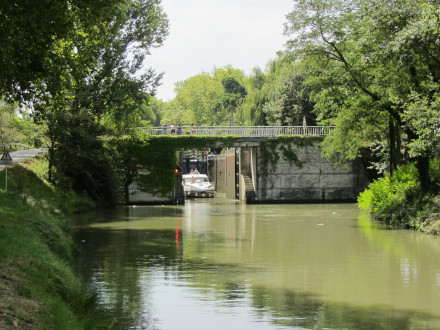
Canal du Midi, écluse (double) de Castanet (sens Toulouse Etang de Thau), commune de Castanet Tolosan, Haute Garonne (porte du Lauragais).
Photo prise le lundi 13 aout 2012. 15 km 715 de la Garonne. Altitude 148 m. 4e écluse du Canal à franchir par les navigants depuis son extrèmité occidentale à Toulouse. 6e écluse à l'origine sur le Canal avant les années 70. 5e écluse si l'on ne compte pas l'écluse de Garonne, la ou a été posée la première pierre du Canal du Midi, guère usitée (mais qui a conservé ses portes éclusières) et commune aux canaux du Midi, Latéral à la Garonne et de Brienne). 4e écluse si on ôte aussi du décompte l'ancienne écluse Matabiau à Toulouse, qui a perdu sa fonction éclusière lors de la modernisation du Canal dans les années 70. C'est à partir de cette écluse que l'on quitte l'agglomération de Toulouse et que l'on entre dans le Lauragais (située sur la commune de Castanet Tolosan). Pour en savoir plus : fr.wikipedia.org/wiki/Castanet-Tolosan Sur ce lien, une carte postale ancienne sur ce lieu : www.canalmidi.com/aufildlo/photanci/cpacastanet.html Voici sur ce lien un album d'un internaute Flickr, Régis B 31, sur le Canal du Midi en Haute Garonne : www.flickr.com/photos/34489588@N08/sets/72157614766492790... Localisation sur wikimapia : wikimapia.org/#lat=43.5237626&lon=1.5191691&z=17&...
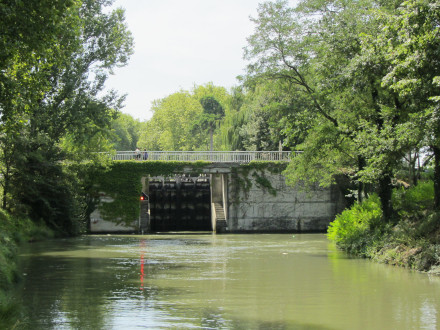
Canal du Midi, 4e bief (bief Bayard, 12 km 177), à l'approche de l'écluse de Castanet.
Photo prise le lundi 13 aout 2012. Communes traversées par le bief : Toulouse, Ramonville Sainte Agne et Castanet Tolosan. Fin des 12 km 177 du 4e bief. Voici sur ce lien un album d'un internaute Flickr, Régis B 31, sur le Canal du Midi en Haute Garonne : www.flickr.com/photos/34489588@N08/sets/72157614766492790... Localisation sur wikimapia : wikimapia.org/#lat=43.5237626&lon=1.5191691&z=17&...
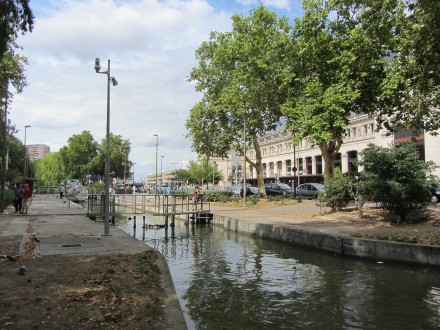
Canal du Midi à Toulouse, écluse de Bayard (simple, sens Etang de Thau Toulouse).
Photo prise le dimanche 12 aout 2012. 3 km 538 de la Garonne. Altitude 145 m. 3ème écluse du canal à franchir par les navigants depuis son extrèmité occidentale. 5e écluse à l'origine sur le Canal avant les années 70 (4e écluse si l'on ne compte pas l'écluse de Garonne, guère usitée (mais qui a conservé ses portes éclusières) et commune aux canaux du Midi, Latéral à la Garonne et de Brienne). 3e écluse si l'on ôte aussi du décompte l'ancienne écluse Matabiau qui a perdu sa fonction éclusière au moment de la modernisation du Canal sur Toulouse dans les années 70. ici, la derniere écluse sur Toulouse et avant dernière conçue selon le modèle à bajoyers droits. Les ecluses suivantes, sauf 2 écluses à Béziers, l'écluse ronde et l'écluse de Prades à Agde sont à bajoyers élliptiques. Anciennement écluse double avant la modernisation du Canal. 5e écluse sur se Canal du Midi et km 3.358 depuis le point de rencontre du canal avec la Garonne. Ecluse double face à la gare de Toulouse Matabiau, altitude 145 m environ. Selon le sens de la marche, première ou dernière écluse sur Toulouse. 4e écluse si l'on ne compte pas l'écluse de Garonne à Toulouse (commune aux canaux du Midi, de Brienne et Latéral à la Garonne) et 3e écluse si l'on ôte du décompte l'écluse Matabiau à Toulouse qui a perdu son utilité lors de la modernisation du Canal dans les années soixante dix : le bâtiment existe toujours, ainsi que les bajoyers mais les portes ont disparues). Sur ce lien ci dessous un de mes articles photographiques sur le Canal du Midi : www.canaldumidi.com/Publications/2013/02/embouchure-1er-b... Pour en savoir plus, cliquez sur ces liens : www.canaldumidi.com/Toulousain/Ponts-jumeaux/Canal-de-Bri... www.canaldumidi.com/Toulousain/Toulouse/Toulouse-Garonne.php www.canalmidi.com/aufildlo/toulouse.html fr.wikipedia.org/wiki/Gare_de_Toulouse-Matabiau Sur ces liens, des cartes postales anciennes sur le quartier : www.canaldumidi.com/Toulousain/Matabiau-Minimes/Matabiau.php www.canalmidi.com/aufildlo/photanci/cpatoulouse6.html Voir aussi une très belle série de photos des canaux des Deux mer ( Canal du Midi, de Brienne et Latéral à La Garonne) sur deux liens suivants : www.flickr.com/photos/platane/sets/72157594415901415/with... www.flickr.com/photos/51063756@N03/sets/72157629815095294... Localisation sur wikimapia : wikimapia.org/#lat=43.613392&lon=1.4447056&z=16&a... Mes récits photographiques sur le Canal du Midi (ma randonnée à vélo) : www.canaldumidi.com/Publications/category/randonnee-nicolas/ Mes autres récits photographiques sur le Canal du Midi : www.canaldumidi.com/Publications/category/arret-sur-images/ Mes récits graphiques sur le Canal du Midi : www.canaldumidi.com/Publications/category/les-aquarelles-...
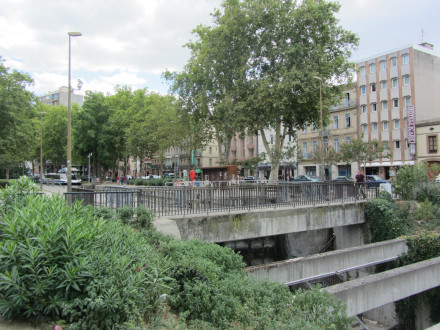
Canal du Midi à Toulouse, écluse de Bayard (simple, sens Toulouse Etang de Thau).
Photo prise le dimanche 12 aout 2012. 3 km 538 de la Garonne. Altitude 145 m. 3ème écluse du canal à franchir par les navigants depuis son extrèmité occidentale. 5e écluse à l'origine sur le Canal avant les années 70 (4e écluse si l'on ne compte pas l'écluse de Garonne, guère usitée (mais qui a conservé ses portes éclusières) et commune aux canaux du Midi, Latéral à la Garonne et de Brienne). 3e écluse si l'on ôte aussi du décompte l'ancienne écluse Matabiau qui a perdu sa fonction éclusière au moment de la modernisation du Canal sur Toulouse dans les années 70. Anciennement écluse double avant la modernisation du Canal. 5e écluse sur se Canal du Midi et km 3.358 depuis le point de rencontre du canal avec la Garonne. Ecluse double face à la gare de Toulouse Matabiau, altitude 145 m environ. Selon le sens de la marche, première ou dernière écluse sur Toulouse. 4e écluse si l'on ne compte pas l'écluse de Garonne à Toulouse (commune aux canaux du Midi, de Brienne et Latéral à la Garonne) et 3e écluse si l'on ôte du décompte l'écluse Matabiau à Toulouse qui a perdu son utilité lors de la modernisation du Canal dans les années soixante dix : le bâtiment existe toujours, ainsi que les bajoyers mais les portes ont disparues). www.canalmidi.com/aufildlo/toulouse.html Sur ce lien, des cartes postales anciennes sur le quartier : www.canaldumidi.com/Toulousain/Matabiau-Minimes/Matabiau.php Sur ce lien ci dessous deux de mes articles photographiques sur le Canal du Midi : www.canaldumidi.com/Publications/2013/02/embouchure-1er-b... www.canaldumidi.com/Publications/2013/02/pays-toulousain/ Pour en savoir plus sur les Ponts jumeaux, cliquez sur ces liens : www.canaldumidi.com/Toulousain/Ponts-jumeaux/Ponts-jumeau... www.canaldumidi.com/Toulousain/Ponts-jumeaux/Canal-de-Bri... www.canaldumidi.com/Toulousain/Toulouse/Toulouse-Garonne.php Voir aussi une très belle série de photos des canaux des Deux mer ( Canal du Midi, de Brienne et Latéral à La Garonne) sur deux liens suivants : www.flickr.com/photos/platane/sets/72157594415901415/with... www.flickr.com/photos/51063756@N03/sets/72157629815095294... Localisation sur wikimapia : wikimapia.org/#lat=43.613392&lon=1.4447056&z=16&a... Mes récits photographiques sur le Canal du Midi (ma randonnée à vélo) : www.canaldumidi.com/Publications/category/randonnee-nicolas/ Mes autres récits photographiques sur le Canal du Midi : www.canaldumidi.com/Publications/category/arret-sur-images/ Mes récits graphiques sur le Canal du Midi : www.canaldumidi.com/Publications/category/les-aquarelles-...

Canal du Midi à Toulouse, ancien 4e bief (bief Matabiau, 0 km 283, sens Etang de Thau Toulouse).
Photo prise le dimanche 12 aout 2012. Au fond, l'écluse Matabiau. www.canalmidi.com/aufildlo/toulouse.html Cumul des deux biefs : 1 km 543. Dernière section située totalement sur Toulouse. L'écluse Matabiau a perdu sa fonction éclusière depuis la modernisation du Canal dans les années 70, autrement dit, n'a plus ses portes. Les biefs Minimes et Matabiau ont été ramenés au même niveau et n'en font plus qu'un seul. 3e section sur les 68 sections que compte le Canal. 3e bief sur les 63 biefs que compte le Canal. Ancien 4e bief. Aux 63 biefs, il faut ajouter les sections du Canal qui ne sont pas retenues par des écluses en amont ou en aval, à savoir : Celle qui mène de l'écluse Notre Dame à l'Orb, à Beziers. Celle qui mène de l'écluse ronde à l'Hérault à la ville Agde. Celle située entre l'écluse ronde et l'Hérault en amont d'Agde. Celle qui démarre de l'Hérault vers l'écluse de Prades à Agde. Celle qui part de l'écluse de Bagnas vers l'Etang de Thau. Sur ce lien ci dessous deux de mes articles photographiques sur le Canal du Midi : www.canaldumidi.com/Publications/2013/02/embouchure-1er-b... www.canaldumidi.com/Publications/2013/02/pays-toulousain/ Pour en savoir plus sur les Ponts jumeaux, cliquez sur ces liens : www.canaldumidi.com/Toulousain/Ponts-jumeaux/Ponts-jumeau... www.canaldumidi.com/Toulousain/Ponts-jumeaux/Canal-de-Bri... www.canaldumidi.com/Toulousain/Toulouse/Toulouse-Garonne.php Voir aussi une très belle série de photos des canaux des Deux mer ( Canal du Midi, de Brienne et Latéral à La Garonne) sur deux liens suivants : www.flickr.com/photos/platane/sets/72157594415901415/with... www.flickr.com/photos/51063756@N03/sets/72157629815095294... Voir aussi l'expo coup de coeur d'un internaute Flickr, Edouard55: www.flickr.com/groups/r-r-r/discuss/72157629186932232/ Localisation sur wikimapia : wikimapia.org/#lat=43.6131279&lon=1.4360582&z=16&... Mes récits photographiques sur le Canal du Midi (ma randonnée à vélo) : www.canaldumidi.com/Publications/category/randonnee-nicolas/ Mes autres récits photographiques sur le Canal du Midi : www.canaldumidi.com/Publications/category/arret-sur-images/ Mes récits graphiques sur le Canal du Midi : www.canaldumidi.com/Publications/category/les-aquarelles-...
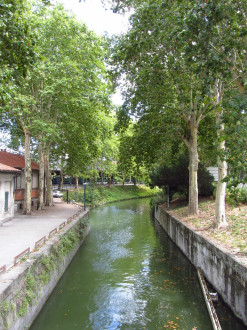
Canal du Midi à Toulouse, ancienne écluse Matabiau, sens Toulouse Etang de Thau.
Photo prise le dimanche 12 aout 2012. 3 km 255 de la Garonne. Altitude 143 m. 4e écluse à l'origine sur le canal avant les années 70. Ici aussi, une écluse à bajoyers droits comme le sont toutes celles de la ville rose. Cumul des deux biefs : 1 km 543. Dernière section située totalement sur Toulouse. L'écluse Matabiau a perdu sa fonction éclusière depuis la modernisation du Canal dans les années 70, autrement dit, n'a plus ses portes. Les deux biefs ont été ramenés au même niveau et n'en font plus qu'un seul. 3e section sur les 68 sections que compte le Canal. 3e bief sur les 63 biefs que compte le Canal. Aux 63 biefs, il faut ajouter les sections du Canal qui ne sont pas retenues par des écluses en amont ou en aval, à savoir : Celle qui mène de l'écluse Notre Dame à l'Orb, à Beziers. Celle qui mène de l'écluse ronde à l'Hérault à la ville Agde. Celle située entre l'écluse ronde et l'Hérault en amont d'Agde. Celle qui démarre de l'Hérault vers l'écluse de Prades à Agde. Celle qui part de l'écluse de Bagnas vers l'Etang de Thau. www.canalmidi.com/aufildlo/toulouse.html Sur ce lien ci dessous deux de mes articles photographiques sur le Canal du Midi : www.canaldumidi.com/Publications/2013/02/embouchure-1er-b... www.canaldumidi.com/Publications/2013/02/pays-toulousain/ Pour en savoir plus sur les Ponts jumeaux, cliquez sur ces liens : www.canaldumidi.com/Toulousain/Ponts-jumeaux/Ponts-jumeau... www.canaldumidi.com/Toulousain/Ponts-jumeaux/Canal-de-Bri... www.canaldumidi.com/Toulousain/Toulouse/Toulouse-Garonne.php Voir aussi une très belle série de photos des canaux des Deux mer ( Canal du Midi, de Brienne et Latéral à La Garonne) sur deux liens suivants : www.flickr.com/photos/platane/sets/72157594415901415/with... www.flickr.com/photos/51063756@N03/sets/72157629815095294... Localisation sur wikimapia : wikimapia.org/#lat=43.6131279&lon=1.4360582&z=16&... Mes récits photographiques sur le Canal du Midi (ma randonnée à vélo) : www.canaldumidi.com/Publications/category/randonnee-nicolas/ Mes autres récits photographiques sur le Canal du Midi : www.canaldumidi.com/Publications/category/arret-sur-images/ Mes récits graphiques sur le Canal du Midi : www.canaldumidi.com/Publications/category/les-aquarelles-...
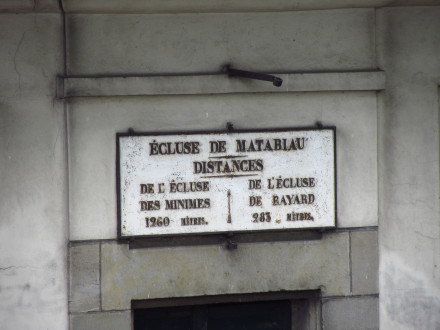
Canal du Midi à Toulouse, ancienne écluse Matabiau, plaque de maison éclusière.
Photo prise le dimanche 12 aout 2012. www.canalmidi.com/aufildlo/toulouse.html Cumul des deux biefs : 1 km 543. Dernière section située totalement sur Toulouse. 4e écluse à l'origine sur le Canal avant les années 70 (3e si l'on ne compte pas l'écluse de Garonne, là ou pourtant a été posée la première pierre du Canal du Midi), guère usitée (mais qui a conservé ses portes éclusières) et commune aux canaux du Midi, Latéral à la Garonne et de Brienne). L'écluse Matabiau a perdu sa fonction éclusière depuis la modernisation du Canal dans les années 70, autrement dit, n'a plus ses portes. Les deux biefs ont été ramenés au même niveau et n'en font plus qu'un seul. 3e section sur les 68 sections que compte le Canal. 3e bief sur les 63 biefs que compte le Canal. Aux 63 biefs, il faut ajouter les sections du Canal qui ne sont pas retenues par des écluses en amont ou en aval, à savoir : Celle qui mène de l'écluse Notre Dame à l'Orb, à Beziers. Celle qui mène de l'écluse ronde à l'Hérault à la ville Agde. Celle située entre l'écluse ronde et l'Hérault en amont d'Agde. Celle qui démarre de l'Hérault vers l'écluse de Prades à Agde. Celle qui part de l'écluse de Bagnas vers l'Etang de Thau. Sur ce lien ci dessous deux de mes articles photographiques sur le Canal du Midi : www.canaldumidi.com/Publications/2013/02/embouchure-1er-b... www.canaldumidi.com/Publications/2013/02/pays-toulousain/ Pour en savoir plus sur les Ponts jumeaux, cliquez sur ces liens : www.canaldumidi.com/Toulousain/Ponts-jumeaux/Ponts-jumeau... www.canaldumidi.com/Toulousain/Ponts-jumeaux/Canal-de-Bri... www.canaldumidi.com/Toulousain/Toulouse/Toulouse-Garonne.php Localisation sur wikimapia : wikimapia.org/#lat=43.6131279&lon=1.4360582&z=16&... Mes récits photographiques sur le Canal du Midi (ma randonnée à vélo) : www.canaldumidi.com/Publications/category/randonnee-nicolas/ Mes autres récits photographiques sur le Canal du Midi : www.canaldumidi.com/Publications/category/arret-sur-images/ Mes récits graphiques sur le Canal du Midi : www.canaldumidi.com/Publications/category/les-aquarelles-...
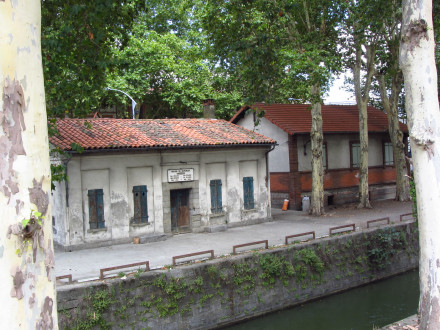
Canal du Midi à Toulouse, écluse Matabiau, maison éclusière.
Photo prise le dimanche 12 aout 2012. Enfin une belle architecture de maison éclusière digne de l'oeuvre de Riquet. Cumul des deux biefs : 1 km 543. Dernière section située totalement sur Toulouse. 4e écluse à l'origine sur le Canal avant les années 70 (3e si l'on ne compte pas l'écluse de Garonne là ou portant a été posée la première pierre du Canal du Midi), guère usitée (mais qui a conservé ses portes éclusières) et commune aux canaux du Midi, Latéral à la Garonne et de Brienne). L'écluse Matabiau a perdu sa fonction éclusière depuis la modernisation du Canal dans les années 70, autrement dit, n'a plus ses portes. Les deux biefs ont été ramenés au même niveau et n'en font plus qu'un seul. 3e section sur les 68 sections que compte le Canal. 3e bief sur les 63 biefs que compte le Canal. Aux 63 biefs, il faut ajouter les sections du Canal qui ne sont pas retenues par des écluses en amont ou en aval, à savoir : Celle qui mène de l'écluse Notre Dame à l'Orb, à Beziers. Celle qui mène de l'écluse ronde à l'Hérault à la ville Agde. Celle située entre l'écluse ronde et l'Hérault en amont d'Agde. Celle qui démarre de l'Hérault vers l'écluse de Prades à Agde. Celle qui part de l'écluse de Bagnas vers l'Etang de Thau. Ici aussi, une écluse à bajoyers droits comme le sont toutes celles de la ville rose. J'ai pris le soin éviter d'intégrer dans mon cadrage, un groupe de sans abris stationnant à proximité. 3 km 255 de la Garonne. Altitude 143 m. Sur ce lien ci dessous deux de mes articles photographiques sur le Canal du Midi : www.canaldumidi.com/Publications/2013/02/embouchure-1er-b... www.canaldumidi.com/Publications/2013/02/pays-toulousain/ Pour en savoir plus sur les Ponts jumeaux, cliquez sur ces liens : www.canaldumidi.com/Toulousain/Ponts-jumeaux/Ponts-jumeau... www.canaldumidi.com/Toulousain/Ponts-jumeaux/Canal-de-Bri... www.canaldumidi.com/Toulousain/Toulouse/Toulouse-Garonne.php Voir aussi une très belle série de photos des canaux des Deux mer ( Canal du Midi, de Brienne et Latéral à La Garonne) sur deux liens suivants : www.flickr.com/photos/platane/sets/72157594415901415/with... www.flickr.com/photos/51063756@N03/sets/72157629815095294... Suite à la modernisation et au renivellement du Canal dens les années soixante dix, cet endroit a perdu sa fonction éclusière. www.canalmidi.com/aufildlo/toulouse.html Localisation sur wikimapia : wikimapia.org/#lat=43.6131279&lon=1.4360582&z=16&... Mes récits photographiques sur le Canal du Midi (ma randonnée à vélo) : www.canaldumidi.com/Publications/category/randonnee-nicolas/ Mes autres récits photographiques sur le Canal du Midi : www.canaldumidi.com/Publications/category/arret-sur-images/ Mes récits graphiques sur le Canal du Midi : www.canaldumidi.com/Publications/category/les-aquarelles-...
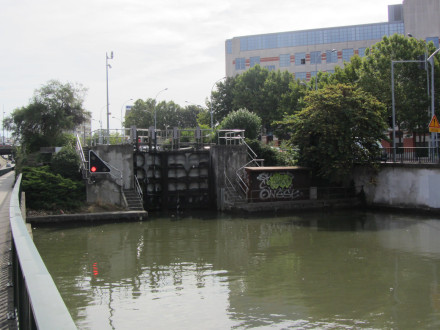
Canal du Midi à Toulouse, écluse (simple) des Minimes (sens Toulouse Etang de Thau)
Photo prise le lundi 13 aout 2012. 1 km 995 de la Garonne. Altitude 139 m. Anciennement écluse double avant la modernisation du Canal. 2ème écluse du canal à franchir par les navigants depuis son extrèmité occidentale. 3e écluse à l'origine sur le Canal avant les années 70 (2e si l'on ne compte pas l'écluse de Garonne, là ou pourtant a été posé la 1ère pierre du Canal du Midi, guère usitée (mais qui a conservé ses portes éclusières) et commune aux canaux du Midi, Latéral à la Garonne et de Brienne). Sur ce lien, des cartes postales anciennes du quartier : www.canaldumidi.com/Toulousain/Matabiau-Minimes/Minimes.php Localisation sur wikimapia : wikimapia.org/#lat=43.6131279&lon=1.4360582&z=16&... www.canalmidi.com/aufildlo/toulouse.html Lien photo wikipédia de l'écluse : fr.wikipedia.org/wiki/Fichier:Canal-midi-ecluse2.JPG Sur ce lien ci dessous un de mes articles photographiques sur le Canal du Midi : www.canaldumidi.com/Publications/2013/02/embouchure-1er-b... Pour en savoir plus sur les Ponts jumeaux, cliquez sur ces liens : www.canaldumidi.com/Toulousain/Ponts-jumeaux/Ponts-jumeau... www.canaldumidi.com/Toulousain/Ponts-jumeaux/Canal-de-Bri... www.canaldumidi.com/Toulousain/Toulouse/Toulouse-Garonne.php Voir aussi une très belle série de photos des canaux des Deux mer ( Canal du Midi, de Brienne et Latéral à La Garonne) sur deux liens suivants : www.flickr.com/photos/platane/sets/72157594415901415/with... www.flickr.com/photos/51063756@N03/sets/72157629815095294... Localisation sur wikimapia : wikimapia.org/#lat=43.6131279&lon=1.4360582&z=16&... Mes récits photographiques sur le Canal du Midi (ma randonnée à vélo) : www.canaldumidi.com/Publications/category/randonnee-nicolas/ Mes autres récits photographiques sur le Canal du Midi : www.canaldumidi.com/Publications/category/arret-sur-images/ Mes récits graphiques sur le Canal du Midi : www.canaldumidi.com/Publications/category/les-aquarelles-...
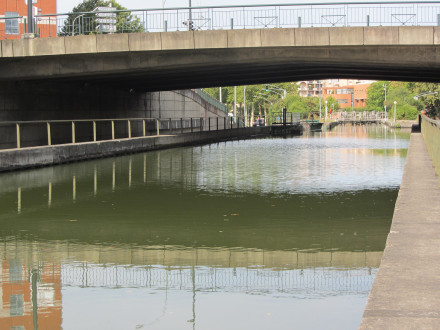
Canal du Midi à Toulouse, écluse (simple) des Minimes (sens Etang de Thau Toulouse)
Photo prise le lundi 13 aout 2012. Le Canal remodelé à cet endroit selon l'esthétique (sic) bétonnière des années soixante dix (surtout pas d'arbres!!!), et encore, on a échappé au pire par ce que le maire de l'époque, le soit disant progressiste Louis Bazerque (qui a terminé sa carrière en affaiblissant son bord politique) avait projeté de supprimer le Canal pour le remplacer par une autoroute urbaine. 1 km 995 de la Garonne. Altitude 139 m. 2ème écluse du canal à franchir par les navigants depuis son extrèmité occidentale. 3e écluse à l'origine sur le Canal avant les années 70 (2e si l'on ne compte pas l'écluse de Garonne, la ou pourtant a été posée la 1ère pierre du Canal du Midi, guère usitée (mais qui a conservé ses portes éclusières) et commune aux canaux du Midi, Latéral à la Garonne et de Brienne). Anciennement écluse double avant la modernisation du Canal. Ici aussi, une écluse à bajoyers droits comme le sont toutes celles de la ville rose. www.canalmidi.com/aufildlo/toulouse.html Lien photo wikipédia de l'écluse : fr.wikipedia.org/wiki/Fichier:Canal-midi-ecluse2.JPG Sur ce lien, des cartes postales anciennes du quartier : www.canaldumidi.com/Toulousain/Matabiau-Minimes/Minimes.php Sur ce lien ci dessous un de mes articles photographiques sur le Canal du Midi : www.canaldumidi.com/Publications/2013/02/embouchure-1er-b... Pour en savoir plus sur les Ponts jumeaux, cliquez sur ces liens : www.canaldumidi.com/Toulousain/Ponts-jumeaux/Ponts-jumeau... www.canaldumidi.com/Toulousain/Ponts-jumeaux/Canal-de-Bri... www.canaldumidi.com/Toulousain/Toulouse/Toulouse-Garonne.php Voir aussi une très belle série de photos des canaux des Deux Mers ( Canal du Midi, de Brienne et Latéral à La Garonne) sur deux liens suivants : www.flickr.com/photos/platane/sets/72157594415901415/with... www.flickr.com/photos/51063756@N03/sets/72157629815095294... Pour en savoir plus : www.canaldumidi.com/Toulousain/Matabiau-Minimes/Minimes.php Localisation sur wikimapia : wikimapia.org/#lat=43.6131279&lon=1.4360582&z=16&... Lien sur Louis Bazerque, maire de le la ville de 1958 à 1971 : fr.wikipedia.org/wiki/Louis_Bazerque Lien sur Pierre Baudis, maire de Toulouse de 1971 à 1983 : fr.wikipedia.org/wiki/Pierre_Baudis Mes récits photographiques sur le Canal du Midi (ma randonnée à vélo) : www.canaldumidi.com/Publications/category/randonnee-nicolas/ Mes autres récits photographiques sur le Canal du Midi : www.canaldumidi.com/Publications/category/arret-sur-images/ Mes récits graphiques sur le Canal du Midi : www.canaldumidi.com/Publications/category/les-aquarelles-...
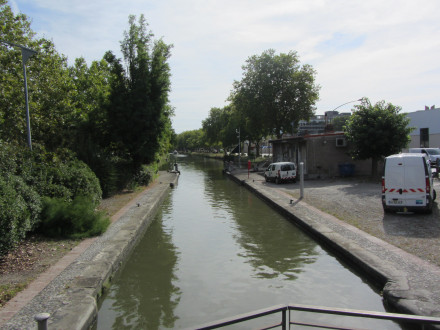
Canal du Midi à Toulouse, Ecluse (simple) Béarnais (sens Toulouse Etang de Thau)
Photo prise le lundi 13 aout 2012. 2e écluse sur le Canal. On pourrait espérer une architecture plus belle pour une maison éclusière. 1 km 044 de la Garonne. Une écluse à bajoyers droits, comme se sont toutes celles de la ville rose. 1ère écluse du canal à franchir par les navigants depuis son extrèmité occidentale. 2e écluse à l'origine sur le Canal du Midi avant les années 70 (si l'on compte l'écluse double de Garonne, là ou a été posée la première pierre du Canal du Midi, modifiée depuis la construction de l'autoroute périphérique dans les années 1970-merci Louis Bazerque et Pierre Baudis, successivement maires de Toulouse à l'époque, d'avoir cautionné cela !!!) et km 1.044 depuis la Garonne. Ecluse simple. Altitude 135 m. www.canalmidi.com/aufildlo/toulouse.html Lien photo wikipédia de l'écluse : fr.wikipedia.org/wiki/Fichier:CanalDuMidiEcluseDuBearnais... Voir aussi une très belle série de photos des canaux des Deux mer ( Canal du Midi, de Brienne et Latéral à La Garonne) sur deux liens suivants : www.flickr.com/photos/platane/sets/72157594415901415/with... www.flickr.com/photos/51063756@N03/sets/72157629815095294... Sur ce lien ci dessous un de mes articles photographiques sur le Canal du Midi : www.canaldumidi.com/Publications/2013/02/embouchure-1er-b... Pour en savoir plus sur les Ponts jumeaux, cliquez sur ces liens : www.canaldumidi.com/Toulousain/Ponts-jumeaux/Ponts-jumeau... www.canaldumidi.com/Toulousain/Ponts-jumeaux/Canal-de-Bri... www.canaldumidi.com/Toulousain/Toulouse/Toulouse-Garonne.php Mes récits photographiques sur le Canal du Midi (ma randonnée à vélo) : www.canaldumidi.com/Publications/category/randonnee-nicolas/ Mes autres récits photographiques sur le Canal du Midi : www.canaldumidi.com/Publications/category/arret-sur-images/ Mes récits graphiques sur le Canal du Midi : www.canaldumidi.com/Publications/category/les-aquarelles-...
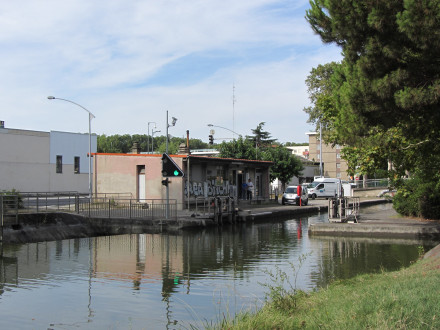
Canal du Midi à Toulouse, Ecluse (simple) Béarnais (sens Etang de Thau Toulouse)
Photo prise le lundi 13 aout 2012. 2e écluse sur le Canal. On pourrait espérer une architecture plus belle pour une maison éclusière. 1 km 044 de la Garonne. Altitude 135 m. 1ère écluse du canal à franchir par les navigants depuis son extrèmité occidentale. 2e écluse à l'origine sur le Canal du Midi avant les années 70 (si l'on compte l'écluse double de Garonne, souterraine depuis la construction de l'autoroute périphérique dans les années 1970-merci Louis Bazerque et Pierre Baudis, successivement maires de Toulouse à l'époque, d'avoir cautionné cela !!!) et km 1.044 depuis la Garonne. Ecluse simple. Une écluse à bajoyers droits, comme se sont toutes celles de la ville rose. www.canalmidi.com/aufildlo/toulouse.html Lien photo wikipédia de l'écluse : fr.wikipedia.org/wiki/Fichier:CanalDuMidiEcluseDuBearnais... Sur ce lien ci dessous un de mes articles photographiques sur le Canal du Midi : www.canaldumidi.com/Publications/2013/02/embouchure-1er-b... Pour en savoir plus sur les Ponts jumeaux, cliquez sur ces liens : www.canaldumidi.com/Toulousain/Ponts-jumeaux/Ponts-jumeau... www.canaldumidi.com/Toulousain/Ponts-jumeaux/Canal-de-Bri... www.canaldumidi.com/Toulousain/Toulouse/Toulouse-Garonne.php Voir aussi une très belle série de photos des canaux des Deux mer ( Canal du Midi, de Brienne et Latéral à La Garonne) sur deux liens suivants : www.flickr.com/photos/platane/sets/72157594415901415/with... www.flickr.com/photos/51063756@N03/sets/72157629815095294... Mes récits photographiques sur le Canal du Midi (ma randonnée à vélo) : www.canaldumidi.com/Publications/category/randonnee-nicolas/ Mes autres récits photographiques sur le Canal du Midi : www.canaldumidi.com/Publications/category/arret-sur-images/ Mes récits graphiques sur le Canal du Midi : www.canaldumidi.com/Publications/category/les-aquarelles-...
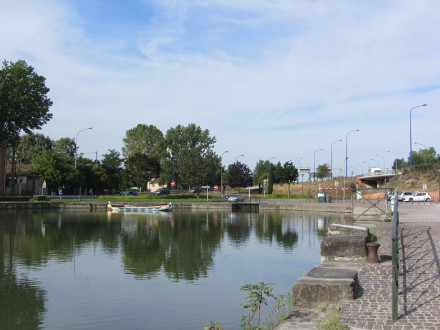
Le Canal du Midi à l'Embouchure à Toulouse, écluse de Garonne.
L'emplacement de l'ancienne écluse de Garonne (double), aujourd'hui pratiquement disparue (les portes éclusières existent encore).. Les eaux se jettent en souterrain dans la Garonne. C'est pourtant ici qu'a été posée la première pierre du Canal du Midi, d'ou l'importance de la compter, d'autant plus qu'elle est commune à 3 canaux (Midi, Lateral à la Garonne et Brienne). www.canalmidi.com/aufildlo/canalate.html 1ère écluse à l'origine sur le Canal du Midi avant les années 70 et la modernisation "massacre". Une idée sur ce lien de ce qu'était l'écluse de Garonne et sa belle maison éclusière : www.canaldumidi.com/Publications/category/photos-du-canal/ Sur ce lien ci dessous un de mes articles photographiques sur le Canal du Midi : www.canaldumidi.com/Publications/2013/02/embouchure-1er-b... Pour en savoir plus sur les Ponts jumeaux, cliquez sur ces liens : www.canaldumidi.com/Toulousain/Ponts-jumeaux/Ponts-jumeau... www.canaldumidi.com/Toulousain/Ponts-jumeaux/Canal-de-Bri... www.canaldumidi.com/Toulousain/Toulouse/Toulouse-Garonne.php Voir aussi une très belle série de photos des canaux des Deux Mers ( Canal du Midi, de Brienne et Latéral à La Garonne) sur deux liens suivants : www.flickr.com/photos/platane/sets/72157594415901415/with... www.flickr.com/photos/51063756@N03/sets/72157629815095294... Voir aussi l'expo coup de coeur d'un internaute Flickr, Edouard55: www.flickr.com/groups/r-r-r/discuss/72157629186932232/ Localisation sur wikimapia : wikimapia.org/#lat=43.6099119&lon=1.4213597&z=16&... Mes récits photographiques sur le Canal du Midi (ma randonnée à vélo) : www.canaldumidi.com/Publications/category/randonnee-nicolas/ Mes autres récits photographiques sur le Canal du Midi : www.canaldumidi.com/Publications/category/arret-sur-images/ Mes récits graphiques sur le Canal du Midi : www.canaldumidi.com/Publications/category/les-aquarelles-...
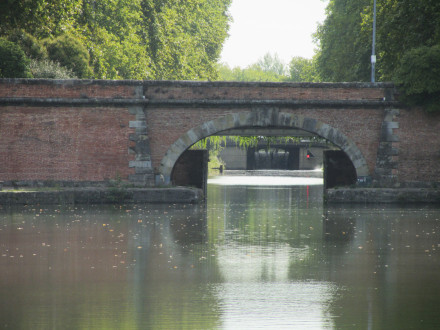
Canal du Midi à Toulouse, vue du 1er bief (bief de l'Embouchure,1 km 044 depuis la Garonne) et de l'écluse Béarnais.
Photo prise le lundi 13 aout 2012. Ecluse Béarnais située à 1 km 044 de la Garonne. 1ère section sur les 63 sections que compte le Canal. 1er bief sur les 63 biefs que compte le Canal. Aux 63 biefs, il faut ajouter les sections du Canal qui ne sont pas retenues par des écluses en amont ou en aval, à savoir : Celle qui mène de l'écluse Notre Dame à l'Orb, à Beziers. Celle qui mène de l'écluse ronde à l'Hérault à la ville Agde. Celle située entre l'écluse ronde et l'Hérault en amont d'Agde. Celle qui démarre de l'Hérault vers l'écluse de Prades à Agde. Celle qui part de l'écluse de Bagnas vers l'Etang de Thau. Sur ce lien ci dessous un de mes articles photographiques sur le Canal du Midi : www.canaldumidi.com/Publications/2013/02/embouchure-1er-b... Pour en savoir plus sur les Ponts jumeaux, cliquez sur ces liens : www.canaldumidi.com/Toulousain/Ponts-jumeaux/Ponts-jumeau... www.canaldumidi.com/Toulousain/Ponts-jumeaux/Canal-de-Bri... www.canaldumidi.com/Toulousain/Toulouse/Toulouse-Garonne.php www.canalmidi.com/aufildlo/toulouse.html Sur le lien suivant, les distances depuis ce point de départ du Canal : www.canalmidi.com/tracedetaille.html Voir aussi une photo d'un internaute Flickr (Iris Fatal) prise à l'Embouchure : www.flickr.com/photos/51063756@N03/4694063262/in/set-7215... Voir aussi une très belle série de photos des canaux des Deux mer ( Canal du Midi, de Brienne et Latéral à La Garonne) sur deux liens suivants : www.flickr.com/photos/platane/sets/72157594415901415/with... www.flickr.com/photos/51063756@N03/sets/72157629815095294... Voir aussi l'expo coup de coeur d'un internaute Flickr, Edouard55: www.flickr.com/groups/r-r-r/discuss/72157629186932232/ Localisation sur wikimapia : wikimapia.org/#lat=43.6099119&lon=1.4213597&z=16&... Mes récits photographiques sur le Canal du Midi (ma randonnée à vélo) : www.canaldumidi.com/Publications/category/randonnee-nicolas/ Mes autres récits photographiques sur le Canal du Midi : www.canaldumidi.com/Publications/category/arret-sur-images/ Mes récits graphiques sur le Canal du Midi : www.canaldumidi.com/Publications/category/les-aquarelles-...
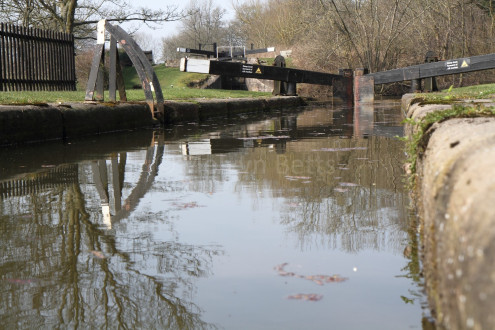
12217 Macclesfield Canal Bosley locks No 11
7189875548_a005c7fe10_h
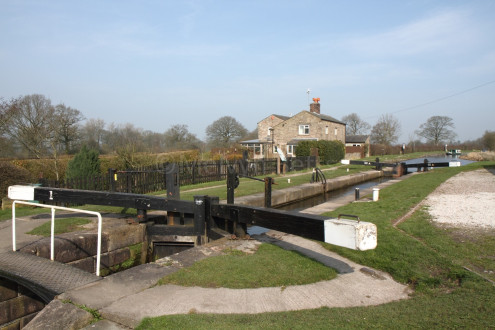
12185 Macclesfield Canal Bosley Locks No1
7189869918_2b01ba7a1b_h
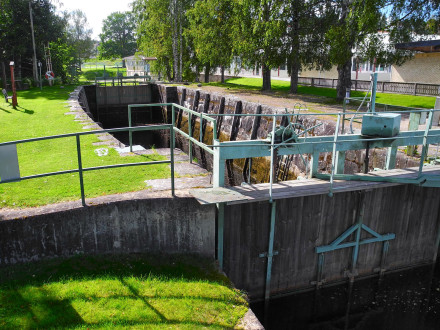
DSCN5615
Dalsland Kanal - Bengtsfors, Västra Götaland County, Sweden 2012
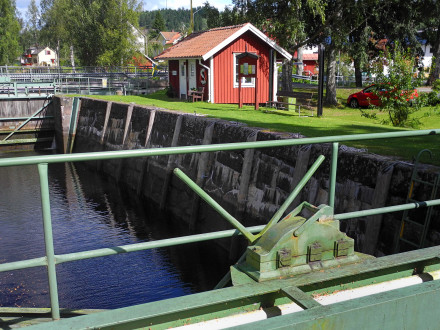
DSCN5625
Dalsland Kanal - Bengtsfors, Västra Götaland County, Sweden 2012
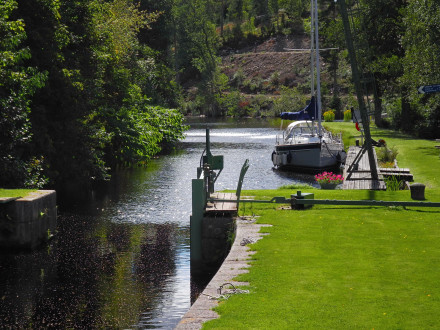
DSCN5642
Dalsland Kanal - Dals Långed, Sweden 2012
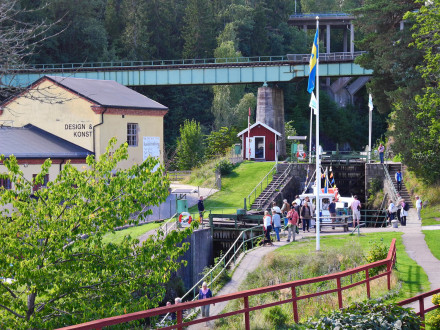
DSCN5650
Dalsland Kanal - Håverud, Sweden 2012
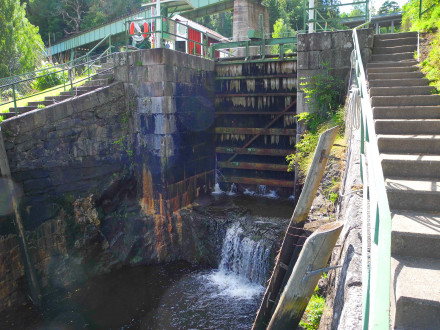
DSCN5661
Dalsland Kanal - Håverud, Sweden 2012
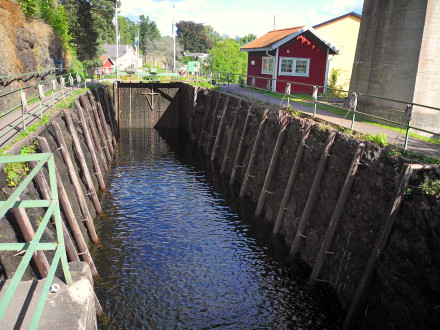
DSCN5684
Akvedukten - Dalsland Kanal, Håverud, Sweden 2012
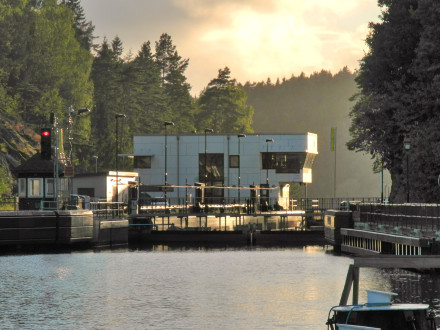
DSCN5722
Lock House - Trollhättan Kanal ( Gota Canal ), Slussledsvägen, Trollhättan, Sweden 2012
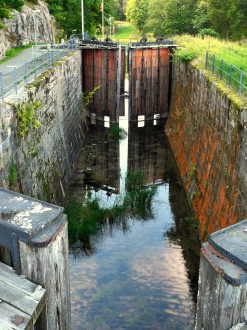
DSCN5726
Unused Old Lock - Trollhättan Kanal ( Gota Canal ), Gamle dal'n, Trollhättan, Sweden 2012
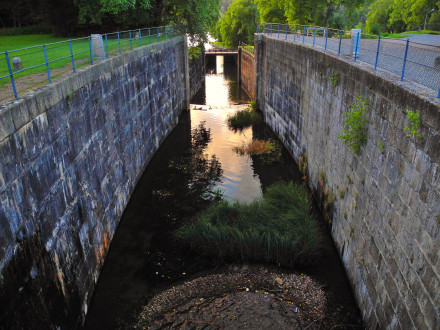
DSCN5740
Unused Old Lock - Trollhättan Kanal ( Gota Canal ), Gamle dal'n, Trollhättan, Sweden 2012
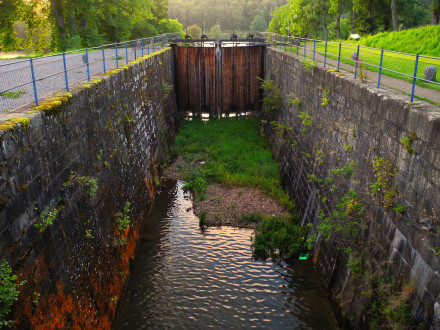
DSCN5741
Unused Old Lock - Trollhättan Kanal ( Gota Canal ), Gamle dal'n, Trollhättan, Sweden 2012
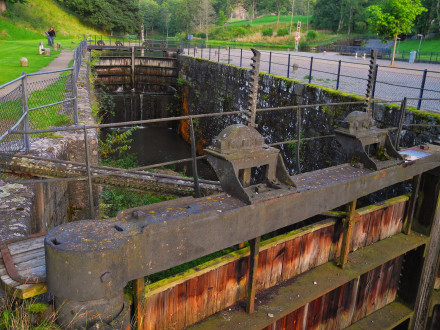
DSCN5744
Unused Old Lock - Trollhättan Kanal ( Gota Canal ), Gamle dal'n, Trollhättan, Sweden 2012
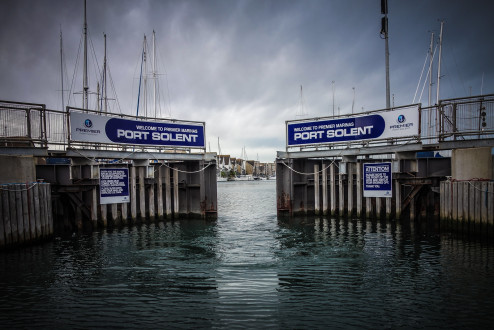
Port Solent Lock Gates Opening
A very welcome sight after a long sail...
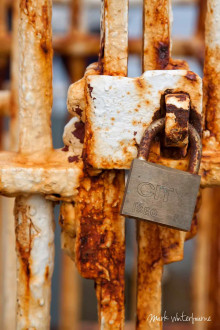
Locked !
Rust and padlocks seem to go hand in hand. It
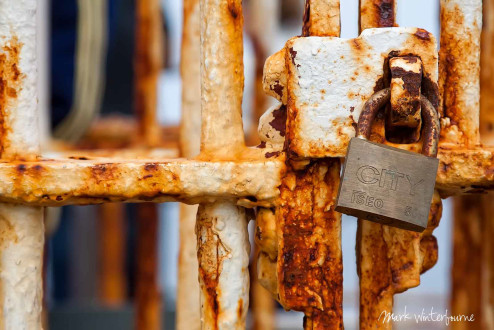
Locked !
Rust and padlocks seem to go hand in hand. It
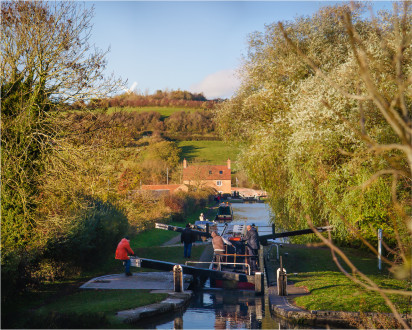
Locking down to Napton
Descending the Napton flight of locks on the Oxford canal. Napton, Northamptonshire.
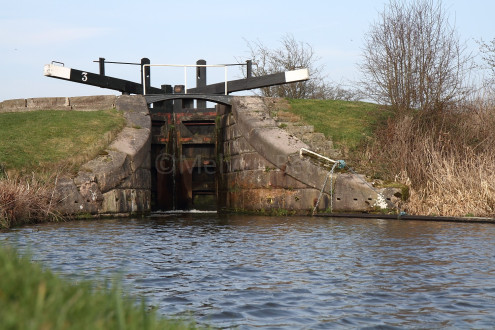
12232 Macclesfield Canal Bosley Locks No 3
6975982974_69f153b5f3_h
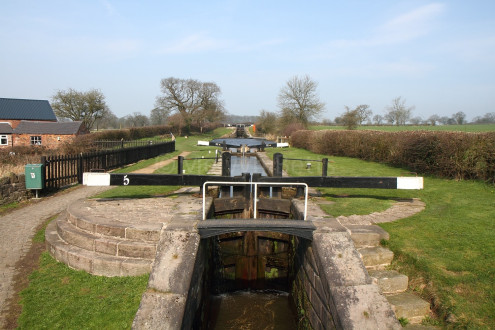
12193 Macclesfield Canal Bosley Locks No5
6957404548_99cecf1707_h
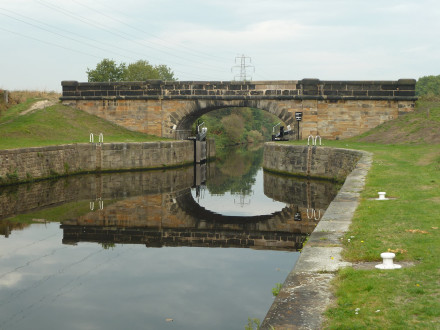
Broadreach Flood Lock and Broadreach Bridge Aire and Calder Navigation Wakefield Yorkshire
The Aire and Calder Navigation Company made the River Aire navigable as far as Leeds in 1704 with the construction of locks and lock cuts between Knottingley and Leeds. Two years later, the company made the River Calder navigable from Castleford to Wakefield. It was soon found that the navigation was inadequate for the potential demand. Shoals, shallow lock cills and low water levels in the easterly section of the Aire meant that passage was restricted to smaller, shallow-draughted boats New locks and longer sections of cut were added between Castleford and Leeds. In 1821 a new 17 mile cut was constructed from Knottingley to the River Ouse at Goole, where docks were built. By 1835 all the locks had been rebuilt to have depth of 7 feet over the cills. In 1839, a twisting length of the Calder was bypassed by a straighter 4 mile section between Fairies Hill and Broadreach, also with a depth of 7 feet. This included building an aqueduct across the river at Stanley Ferry. William Bartholomew, the chief engineer between 1853 and 1895, developed the "Tom Puddings" - compartment boats that were put together in trains to be pushed by a tug. They transported coal from the Yorkshire collieries to Goole and later to power stations. The navigation never went out of use and is still used for commercial traffic with such cargoes as oil and sand being carried. Information from Pennine Waters website. www.penninewaterways.co.uk/aire/index.htm
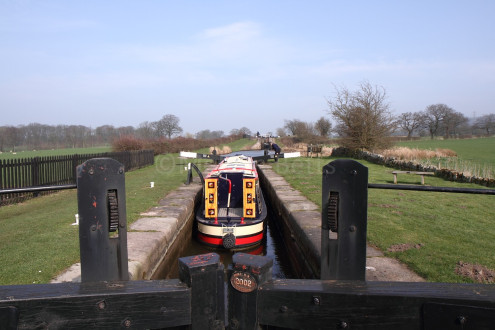
12187 Locked In. Macclesfield Canal Bosley Locks narrowboat
7094423641_52b48cd328_h
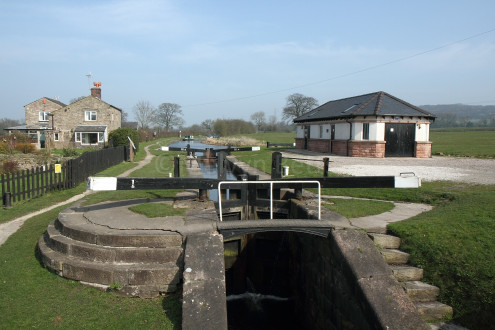
12184 Macclesfield Canal Bosley Locks No1
7094423277_7bd169056c_h
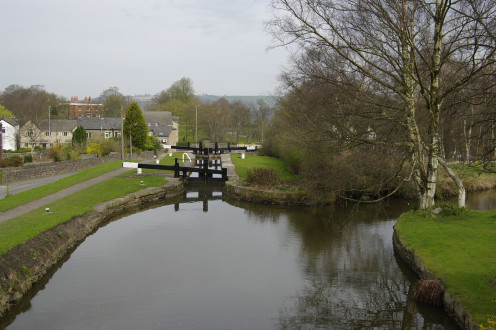
09116.marple locks. marple cheshire
3453704802_1be538af69_k
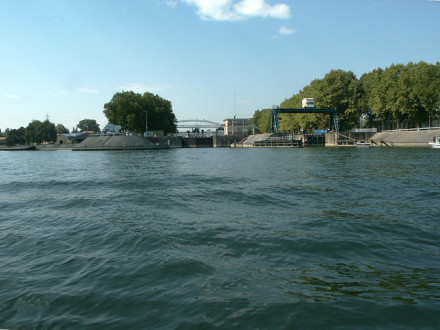
Ecluse Nord de Strasbourg
Pour relier le Rhin au Canal de la Marne au Rhin et par ce biais au port de Strasbourg deux écluses ont été construites manœuvrées à l'électricité. La plus petite date de 1904. L'autre (ici en photo) date de 1837 a été allongée en 1891 et complètement reconstruite en 1930; elle a 125 mètres de longueur utile, 13 mètres 50 de largeur; son seuil assure un mouillage de 3 mètres 60 du côté canal et un mouillage toujours supérieur à celui du fleuve (4 m 20 pour une cote de 1,80 des eaux à l'échelle de Strasbourg) Avant l'écluse double, un pont tournant électrique construit en 1925, donne passage à la voie ferrée reliant le bassin aux pétroles au réseau de voies ferrées du port. (source "Le port de Strasbourg", 1936) A voir aussi dans l'écluse (grand sas)
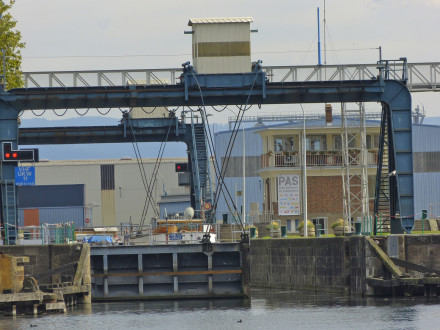
Ecluse Nord de Strasbourg
Pour relier le Rhin au Canal de la Marne au Rhin et par ce biais au port de Strasbourg deux écluses ont été construites manœuvrées à l'électricité. La plus petite date de 1904. L'autre (ici en photo) date de 1837 a été allongée en 1891 et complètement reconstruite en 1930; elle a 125 mètres de longueur utile, 13 mètres 50 de largeur; son seuil assure un mouillage de 3 mètres 60 du côté canal et un mouillage toujours supérieur à celui du fleuve (4 m 20 pour une cote de 1,80 des eaux à l'échelle de Strasbourg) Avant l'écluse double, un pont tournant électrique construit en 1925, donne passage à la voie ferrée reliant le bassin aux pétroles au réseau de voies ferrées du port. (source "Le port de Strasbourg", 1936 - page 42) A voir aussi l'écluse dans l'autre sens
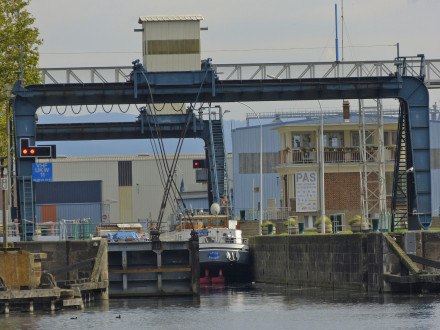
Ecluse Nord de Strasbourg
Pour relier le Rhin au Canal de la Marne au Rhin et par ce biais au port de Strasbourg deux écluses ont été construites manœuvrées à l'électricité. La plus petite date de 1904. L'autre (ici en photo) date de 1837 a été allongée en 1891 et complètement reconstruite en 1930; elle a 125 mètres de longueur utile, 13 mètres 50 de largeur; son seuil assure un mouillage de 3 mètres 60 du côté canal et un mouillage toujours supérieur à celui du fleuve (4 m 20 pour une cote de 1,80 des eaux à l'échelle de Strasbourg) Avant l'écluse double, un pont tournant électrique construit en 1925, donne passage à la voie ferrée reliant le bassin aux pétroles au réseau de voies ferrées du port. (source "Le port de Strasbourg", 1936) A voir aussi l'écluse dans l'autre sens
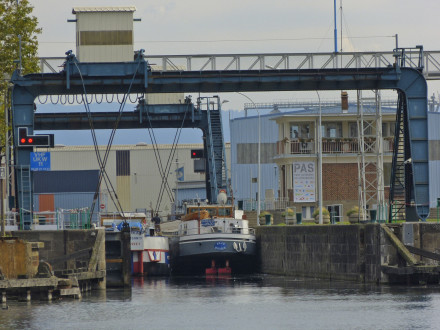
Ecluse Nord de Strasbourg
Pour relier le Rhin au Canal de la Marne au Rhin et par ce biais au port de Strasbourg deux écluses ont été construites manœuvrées à l'électricité. La plus petite date de 1904. L'autre (ici en photo) date de 1837 allongée en 1891 et complètement reconstruite en 1930; elle a 125 mètres de longueur utile, 13 mètres 50 de largeur; son seuil assure un mouillage de 3 mètres 60 du côté canal et un mouillage toujours supérieur à celui du fleuve (4 m 20 pour une cote de 1,80 des eaux à l'échelle de Strasbourg) Avant l'écluse double, un pont tournant électrique construit en 1925, donne passage à la voie ferrée reliant le bassin aux pétroles au réseau de voies ferrées du port. (source "Le port de Strasbourg", 1936) A voir aussi l'écluse dans l'autre sens
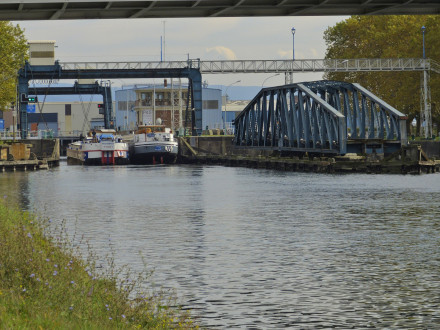
Ecluse Nord de Strasbourg
Pour relier le Rhin au Canal de la Marne au Rhin et par ce biais au port de Strasbourg deux écluses ont été construites manœuvrées à l'électricité. La plus petite date de 1904. L'autre (ici en photo) date de 1837 a été allongée en 1891 et complètement reconstruite en 1930; elle a 125 mètres de longueur utile, 13 mètres 50 de largeur; son seuil assure un mouillage de 3 mètres 60 du côté canal et un mouillage toujours supérieur à celui du fleuve (4 m 20 pour une cote de 1,80 des eaux à l'échelle de Strasbourg) Avant l'écluse double, un pont tournant électrique construit en 1925, donne passage à la voie ferrée reliant le bassin aux pétroles au réseau de voies ferrées du port. (source "Le port de Strasbourg", 1936) A voir aussi l'écluse dans l'autre sens
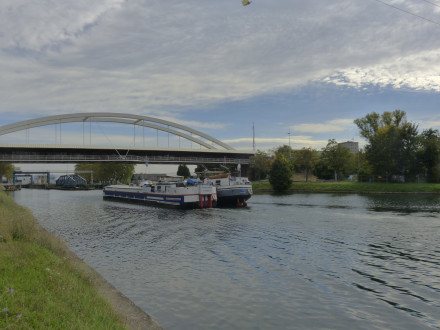
Ecluse Nord de Strasbourg
Au premier plan le Pont Pierre Brousse de type "bow-string" construit par l'architecte Alain Spielmann en 1996. L'originalité de l'édifice, c'est de posséder dès sa conception une piste cyclable à l'abri.
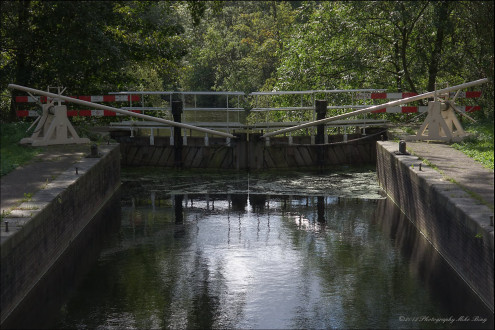
BMG07945-hdrmix_filtered-2012-web
8025915337_fa0b3dc8aa_h
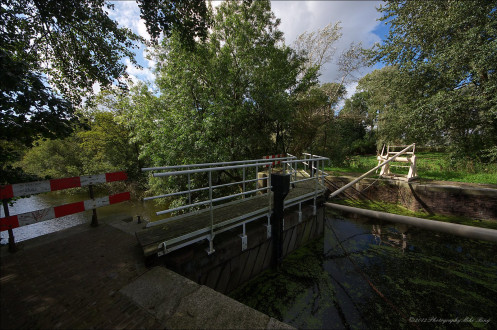
BMG07830-hdrmix_filtered-2012-web
8025915258_3569684065_h
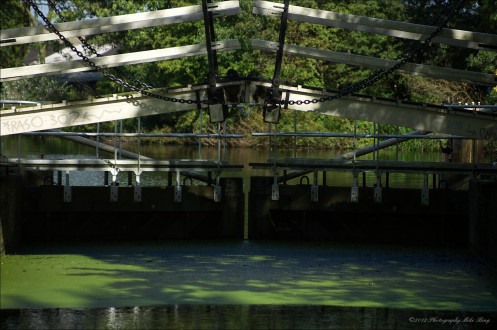
Bosbaansluis, Amsterdamse Bos
The Amsterdamse Bos (English: Amsterdam Wood) is an English park or landscape park in the municipalities Amstelveen and Amsterdam. And although most of the park is located in Amstelveen, the owner of the park is the City of Amsterdam. Annually, almost 4.5 million people visit the park, which has a size of 1,000 hectares. This is one of the locks connecting the "Nieuwe Meer" or "New Lake" to the "Bosbaan". The Bosbaan (literal translation: Woods Course) is the oldest artificial rowing course in the world. The course was built in 1936 as part of an employment project and originally had five lanes, but was then widened to six lanes in 1954 when Amsterdam hosted the European Rowing Championships, the first international event where women were allowed to participate as elite rowers.
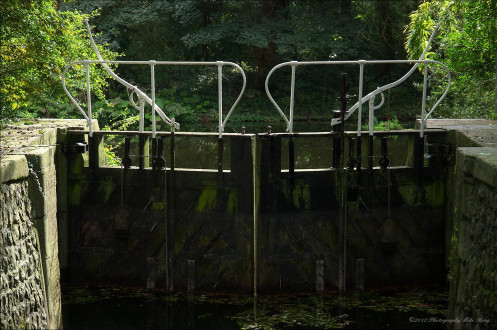
Koenensluis, Amsterdamse Bos
The Amsterdamse Bos (English: Amsterdam Wood) is an English park or landscape park in the municipalities Amstelveen and Amsterdam. And although most of the park is located in Amstelveen, the owner of the park is the City of Amsterdam. Annually, almost 4.5 million people visit the park, which has a size of 1,000 hectares. This is one of the locks connecting the "Nieuwe Meer" or "New Lake" to another lake or pond in the park.

Bosbaansluis, Amsterdamse Bos
The Amsterdamse Bos (English: Amsterdam Wood) is an English park or landscape park in the municipalities Amstelveen and Amsterdam. And although most of the park is located in Amstelveen, the owner of the park is the City of Amsterdam. Annually, almost 4.5 million people visit the park, which has a size of 1,000 hectares. This is one of the locks connecting the "Nieuwe Meer" or "New Lake" to the "Bosbaan". The Bosbaan (literal translation: Woods Course) is the oldest artificial rowing course in the world. The course was built in 1936 as part of an employment project and originally had five lanes, but was then widened to six lanes in 1954 when Amsterdam hosted the European Rowing Championships, the first international event where women were allowed to participate as elite rowers.
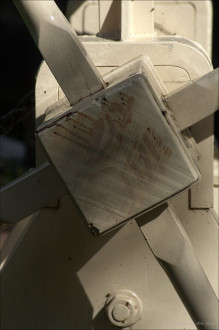
Bosbaansluis, Amsterdamse Bos
The Amsterdamse Bos (English: Amsterdam Wood) is an English park or landscape park in the municipalities Amstelveen and Amsterdam. And although most of the park is located in Amstelveen, the owner of the park is the City of Amsterdam. Annually, almost 4.5 million people visit the park, which has a size of 1,000 hectares. This is one of the locks connecting the "Nieuwe Meer" or "New Lake" to the "Bosbaan". The Bosbaan (literal translation: Woods Course) is the oldest artificial rowing course in the world. The course was built in 1936 as part of an employment project and originally had five lanes, but was then widened to six lanes in 1954 when Amsterdam hosted the European Rowing Championships, the first international event where women were allowed to participate as elite rowers.
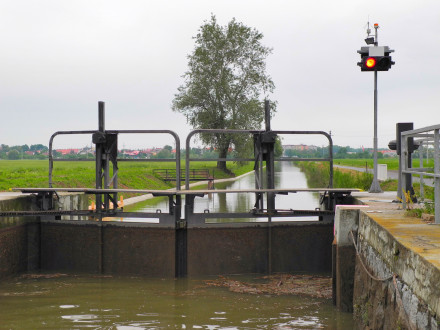
Baťův kanál, Česká Republika 2012 - DSCN0887
Plavební komora Huštěnovice - Bata Canal and Morava river, Czech Republic. Bata Canal - 13 Locks / Ecluses >> ROHATEC >> PETROV >> STRÁŽNICE I+II >> VNOROVY I+II >> VESELÍ n.MOR. >> UH.OSTROH >> NEDAKONICE >> KUNOVSKÝ LES >> ST.MĚSTO >> HUŠTĚNOVICE >> BABICE >> SPYTIHNĚV >> www.batacanal.cz
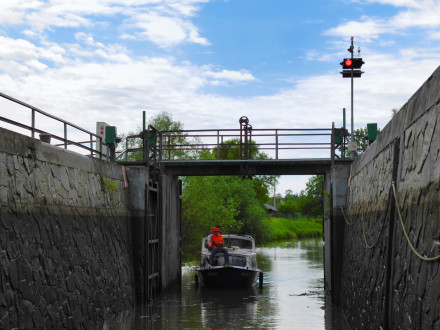
Baťův kanál, Česká Republika 2012 - DSCN0661
Plavební komora Petrov - Bata Canal and Morava river, Czech Republic. Bata Canal - 13 Locks / Ecluses >> ROHATEC >> PETROV >> STRÁŽNICE I+II >> VNOROVY I+II >> VESELÍ n.MOR. >> UH.OSTROH >> NEDAKONICE >> KUNOVSKÝ LES >> ST.MĚSTO >> HUŠTĚNOVICE >> BABICE >> SPYTIHNĚV >> www.batacanal.cz
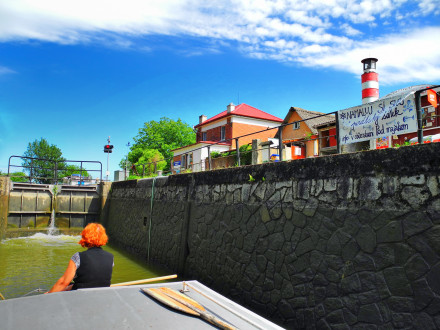
Baťův kanál, Česká Republika 2012 - DSCN0703
Plavební komora Vnorovy - Bata Canal and Morava river, Czech Republic. Bata Canal - 14 Locks / Ecluses >> ROHATEC >> PETROV >> STRÁŽNICE I+II >> VNOROVY I+II >> VESELÍ n.MOR. >> UH.OSTROH >> NEDAKONICE >> KUNOVSKÝ LES >> ST.MĚSTO >> HUŠTĚNOVICE >> BABICE >> SPYTIHNĚV >> www.batacanal.cz
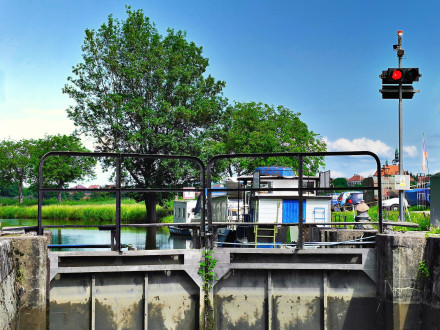
Baťův kanál, Česká Republika 2012 - DSCN0706
Plavební komora Vnorovy - Bata Canal and Morava river, Czech Republic. Bata Canal - 14 Locks / Ecluses >> ROHATEC >> PETROV >> STRÁŽNICE I+II >> VNOROVY I+II >> VESELÍ n.MOR. >> UH.OSTROH >> NEDAKONICE >> KUNOVSKÝ LES >> ST.MĚSTO >> HUŠTĚNOVICE >> BABICE >> SPYTIHNĚV >> www.batacanal.cz
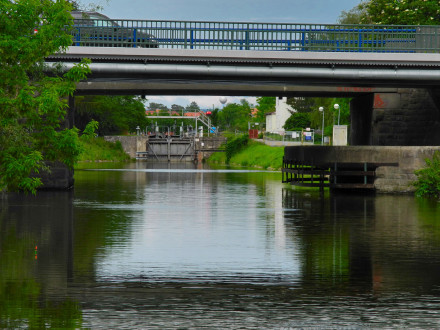
Baťův kanál, Česká Republika 2012 - DSCN0725
Plavební komora Veselí nad Moravou - Bata Canal and Morava river, Czech Republic. Bata Canal - 14 Locks / Ecluses >> ROHATEC >> PETROV >> STRÁŽNICE I+II >> VNOROVY I+II >> VESELÍ n.MOR. >> UH.OSTROH >> NEDAKONICE >> KUNOVSKÝ LES >> ST.MĚSTO >> HUŠTĚNOVICE >> BABICE >> SPYTIHNĚV >> www.batacanal.cz
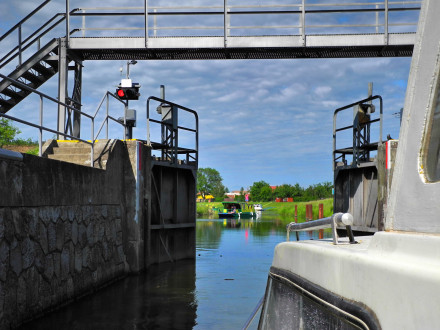
Baťův kanál, Česká Republika 2012 - DSCN0733
Plavební komora Veselí nad Moravou - Bata Canal and Morava river, Czech Republic. Bata Canal - 14 Locks / Ecluses >> ROHATEC >> PETROV >> STRÁŽNICE I+II >> VNOROVY I+II >> VESELÍ n.MOR. >> UH.OSTROH >> NEDAKONICE >> KUNOVSKÝ LES >> ST.MĚSTO >> HUŠTĚNOVICE >> BABICE >> SPYTIHNĚV >> www.batacanal.cz
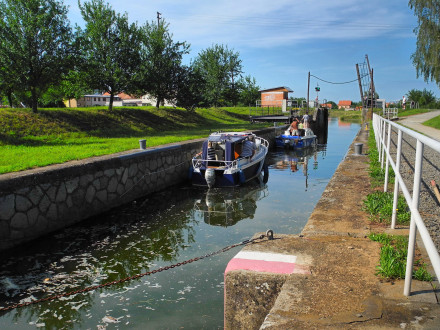
Baťův kanál, Česká Republika 2012 - DSCN0773
Plavební komora - Uherský Ostroh - Bata Canal and Morava river, Czech Republic. Bata Canal - 14 Locks / Ecluses >> ROHATEC >> PETROV >> STRÁŽNICE I+II >> VNOROVY I+II >> VESELÍ n.MOR. >> UH.OSTROH >> NEDAKONICE >> KUNOVSKÝ LES >> ST.MĚSTO >> HUŠTĚNOVICE >> BABICE >> SPYTIHNĚV >> www.batacanal.cz
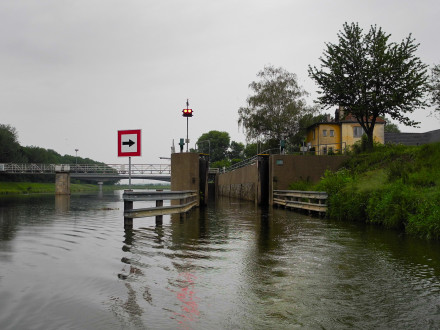
Baťův kanál, Česká Republika 2012 - DSCN0858
Plavební komora Kunovský les, - Bata Canal and Morava river, Czech Republic. Bata Canal - 14 Locks / Ecluses >> ROHATEC >> PETROV >> STRÁŽNICE I+II >> VNOROVY I+II >> VESELÍ n.MOR. >> UH.OSTROH >> NEDAKONICE >> KUNOVSKÝ LES >> ST.MĚSTO >> HUŠTĚNOVICE >> BABICE >> SPYTIHNĚV >> www.batacanal.cz
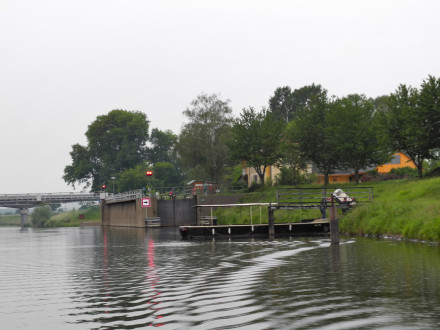
Baťův kanál, Česká Republika 2012 - DSCN0860
Jez a Plavební komora Kunovský les, - Bata Canal and Morava river, Czech Republic. Bata Canal - 14 Locks / Ecluses >> ROHATEC >> PETROV >> STRÁŽNICE I+II >> VNOROVY I+II >> VESELÍ n.MOR. >> UH.OSTROH >> NEDAKONICE >> KUNOVSKÝ LES >> ST.MĚSTO >> HUŠTĚNOVICE >> BABICE >> SPYTIHNĚV >> www.batacanal.cz
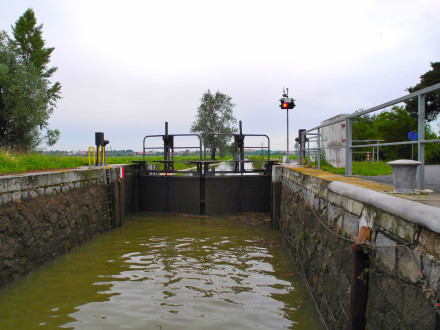
Baťův kanál, Česká Republika 2012 - DSCN0883
Plavební komora Huštěnovice - Bata Canal and Morava river, Czech Republic. Bata Canal - 14 Locks / Ecluses >> ROHATEC >> PETROV >> STRÁŽNICE I+II >> VNOROVY I+II >> VESELÍ n.MOR. >> UH.OSTROH >> NEDAKONICE >> KUNOVSKÝ LES >> ST.MĚSTO >> HUŠTĚNOVICE >> BABICE >> SPYTIHNĚV >> www.batacanal.cz
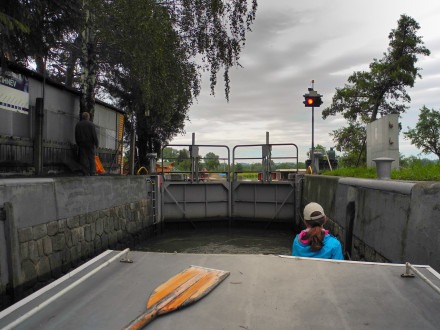
Baťův kanál, Česká Republika 2012 - DSCN0925
Plavební komora Spytihněv - Bata Canal and Morava river, Czech Republic. Bata Canal - 14 Locks / Ecluses >> ROHATEC >> PETROV >> STRÁŽNICE I+II >> VNOROVY I+II >> VESELÍ n.MOR. >> UH.OSTROH >> NEDAKONICE >> KUNOVSKÝ LES >> ST.MĚSTO >> HUŠTĚNOVICE >> BABICE >> SPYTIHNĚV >> www.batacanal.cz
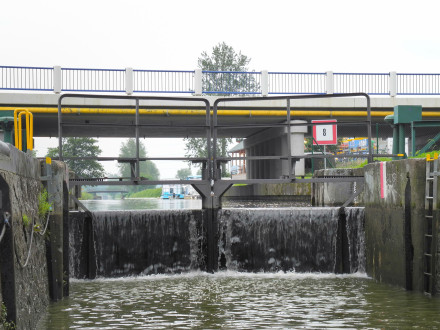
Baťův kanál, Česká Republika 2012 - DSCN0984
Plavební komora Staré Město - Bata Canal and Morava river, Czech Republic. Bata Canal - 14 Locks / Ecluses >> ROHATEC >> PETROV >> STRÁŽNICE I+II >> VNOROVY I+II >> VESELÍ n.MOR. >> UH.OSTROH >> NEDAKONICE >> KUNOVSKÝ LES >> ST.MĚSTO >> HUŠTĚNOVICE >> BABICE >> SPYTIHNĚV >> www.batacanal.cz
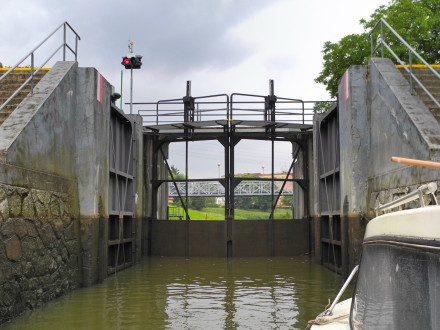
Baťův kanál, Česká Republika 2012 - DSCN0985
Plavební komora Staré Město - Bata Canal and Morava river, Czech Republic. Bata Canal - 14 Locks / Ecluses >> ROHATEC >> PETROV >> STRÁŽNICE I+II >> VNOROVY I+II >> VESELÍ n.MOR. >> UH.OSTROH >> NEDAKONICE >> KUNOVSKÝ LES >> ST.MĚSTO >> HUŠTĚNOVICE >> BABICE >> SPYTIHNĚV >> www.batacanal.cz
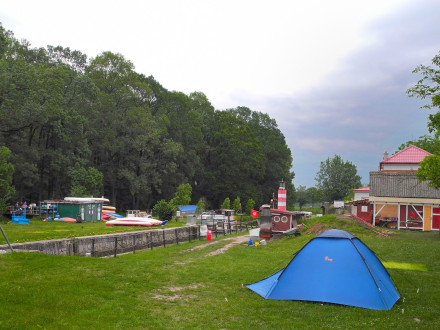
Baťův kanál, Česká Republika 2012 - DSCN0991
Plavební komora a křížení řeky Vnorovy - Bata Canal and Morava river, Czech Republic. Bata Canal - 13 Locks / Ecluses >> ROHATEC >> PETROV >> STRÁŽNICE I+II >> VNOROVY I+II >> VESELÍ n.MOR. >> UH.OSTROH >> NEDAKONICE >> KUNOVSKÝ LES >> ST.MĚSTO >> HUŠTĚNOVICE >> BABICE >> SPYTIHNĚV >> www.batacanal.cz
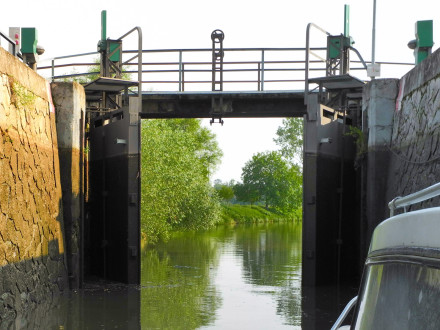
Baťův kanál, Česká Republika 2012 - DSCN1005
Plavební komora Petrov - Bata Canal and Morava river, Czech Republic. Bata Canal - 13 Locks / Ecluses >> ROHATEC >> PETROV >> STRÁŽNICE I+II >> VNOROVY I+II >> VESELÍ n.MOR. >> UH.OSTROH >> NEDAKONICE >> KUNOVSKÝ LES >> ST.MĚSTO >> HUŠTĚNOVICE >> BABICE >> SPYTIHNĚV >> www.batacanal.cz
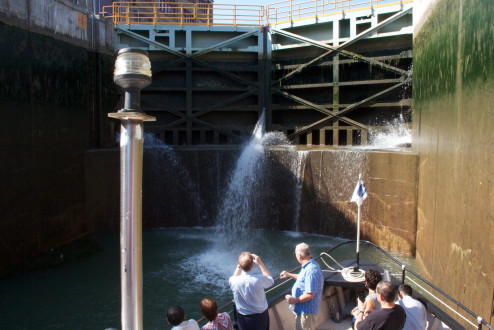
lock
en.wikipedia.org/wiki/Lock_%28water_transport%29
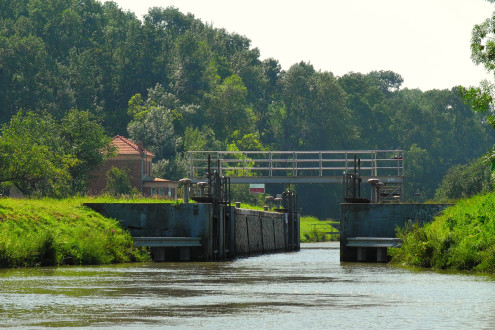
DSCN5961
Baťův Kanál (Bata Canal), Strážnice, Czech Republic
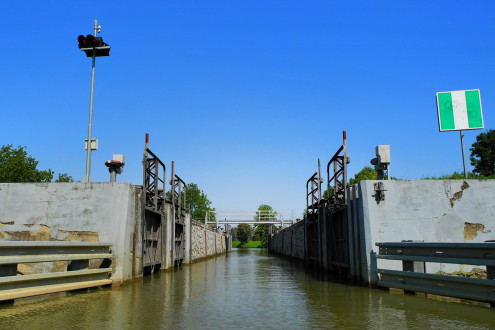
DSCN5958
Baťův Kanál (Bata Canal), Strážnice, Czech Republic
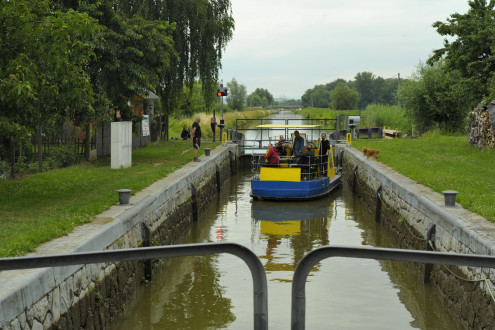
_DSC4987
Baťův Kanál (Bata Canal), Czech Republic
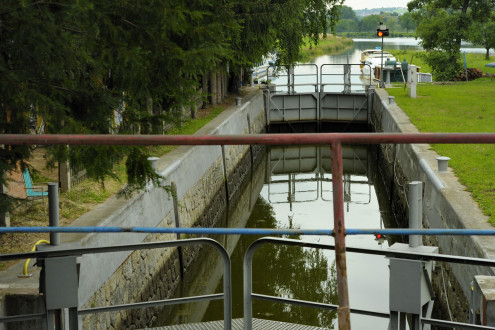
Bata Canal Lock__DSC4965
Baťův Kanál (Bata Canal), Czech Republic
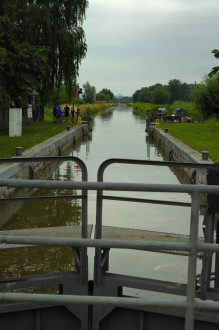
Bata Canal Lock__DSC4928
Baťův Kanál (Bata Canal), Czech Republic
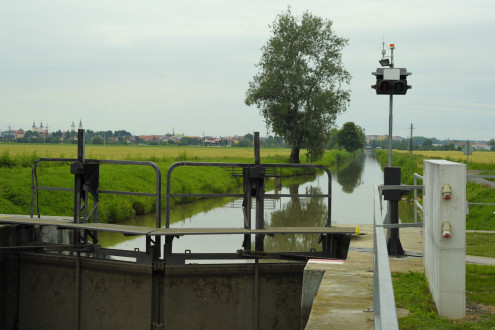
Bata Canal Lock_DSC4891
Baťův Kanál (Bata Canal), Czech Republic
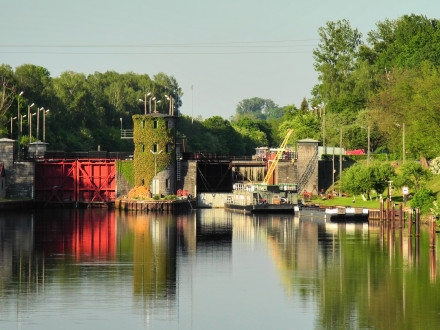
Gliwice Canal Lock DSCN0449
Sławęcice lock - Gliwice Canal (Kanal Gliwicki), Poland
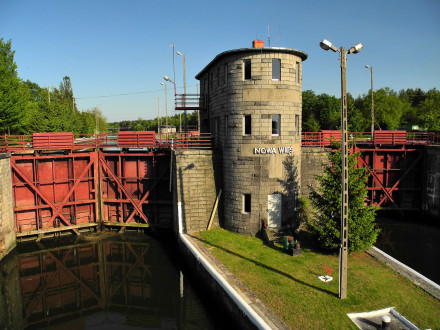
Nowa Wieš lock - Gliwice Canal (Kanal Gliwicki), Poland - DSCN0419
Nowa Wieš lock - Gliwice Canal (Kanal Gliwicki), Poland
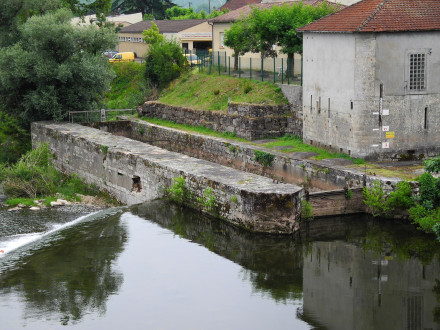
DSCN2981
Ancienne Ecluse de Luzech, Le Lot - Croisière sur la Rivière du Lot (Luzech - Mercuès), Francie
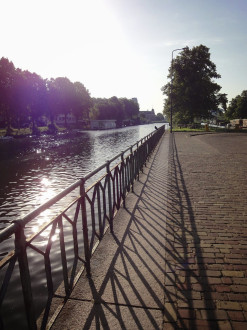
Reling op het sluiseiland bij de Munt
Crow sits on an iron fence at the lock-island near the Royal Dutch Mint in Utrecht.
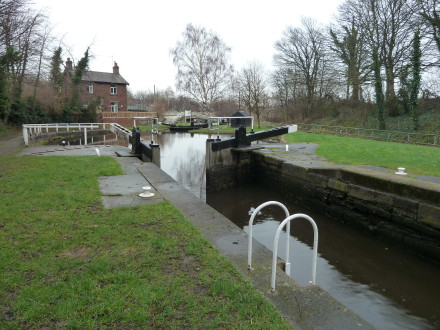
Thornhill Double Locks Calder and Hebble Navigation Yorkshire
The Calder and Hebble Navigation, running for 21 miles from the Aire and Calder Navigation at Wakefield to Sowerby Bridge, was one of the first navigable waterways into the Pennines. It was an extension westwards of the Aire and Calder Navigation and was surveyed by John Smeaton and the later sections by James Brindley. Work began in 1758 to make the River Calder navigable above Wakefield. The navigation to Sowerby Bridge was completed in 1770, including a short branch to Dewsbury. Sir John Ramsden's Canal, now known as the Huddersfield Broad, was opened in 1776, providing a branch to Huddersfield. In 1804, the Rochdale Canal opened, branching off the Calder and Hebble just before its terminus in Sowerby Bridge, crossing the Pennines to link Yorkshire with Manchester. This information from the Pennine Waters website. www.penninewaterways.co.uk/calder/chn2.htm
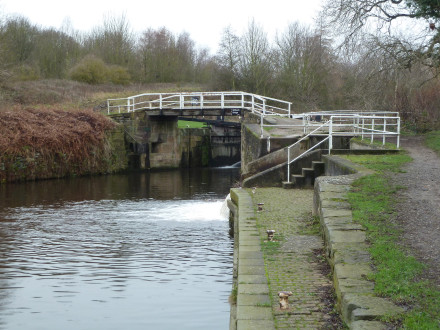
Millbank Lock and Bridge Calder and Hebble Navigation Yorkshire
The Calder and Hebble Navigation, running for 21 miles from the Aire and Calder Navigation at Wakefield to Sowerby Bridge, was one of the first navigable waterways into the Pennines. It was an extension westwards of the Aire and Calder Navigation and was surveyed by John Smeaton and the later sections by James Brindley. Work began in 1758 to make the River Calder navigable above Wakefield. The navigation to Sowerby Bridge was completed in 1770, including a short branch to Dewsbury. Sir John Ramsden's Canal, now known as the Huddersfield Broad, was opened in 1776, providing a branch to Huddersfield. In 1804, the Rochdale Canal opened, branching off the Calder and Hebble just before its terminus in Sowerby Bridge, crossing the Pennines to link Yorkshire with Manchester. This information from the Pennine Waters website. www.penninewaterways.co.uk/calder/chn2.htm
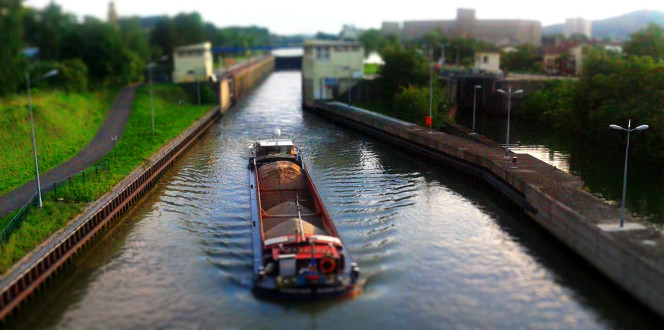
Quomodo Vales
7497462538_c2c77717a1_k
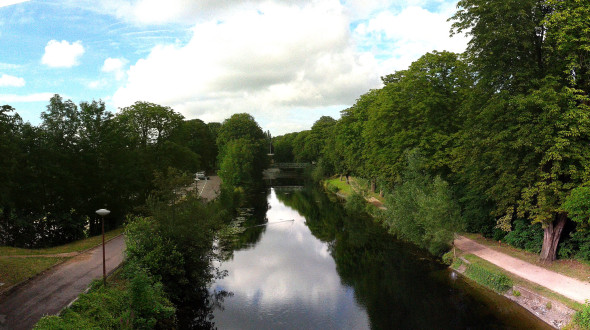
Canal de Jouy
7492998594_c1b15452c9_k
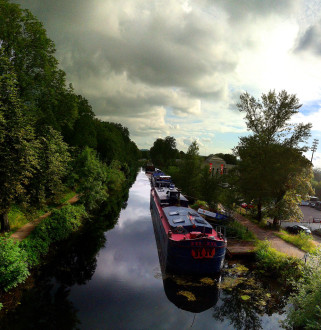
Peniche Jouy
7490926680_417f17ef24_k
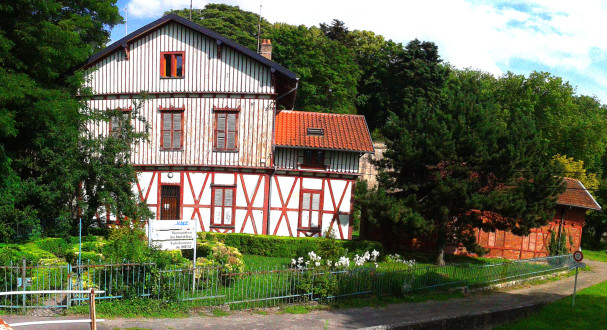
Maison de l'Eclusier
7459313742_5946ff0078_k
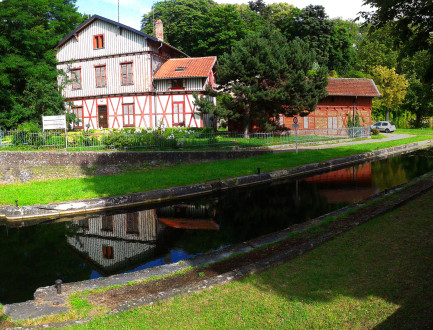
Maison de l'Eclusier 2
7459311444_e8b034d12c_k
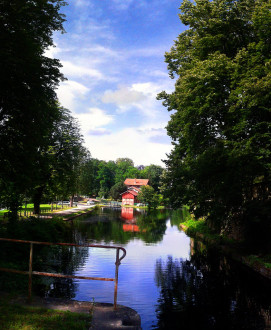
Maison de l'Eclusier 3
7459308112_84086f7186_k
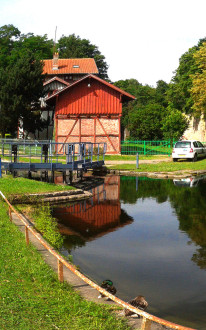
Gros Canards
7459305486_9429e95039_k
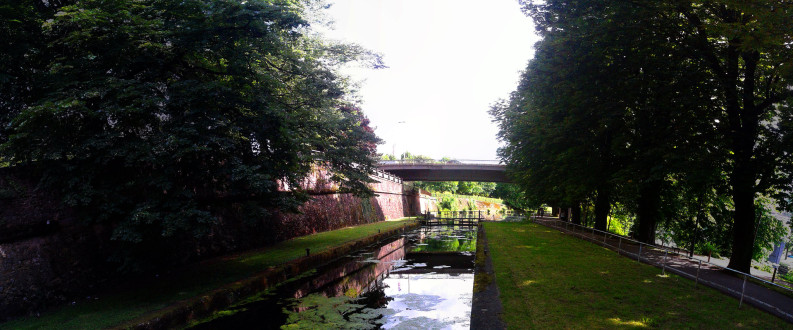
Ecluse du Canal de Jouy
7459298124_13e3db035f_k
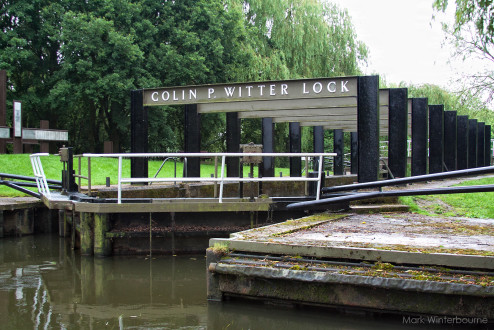
Colin P Witter Lock | Stratford Upon Avon
The Colin P Witter Lock, River Avon (1975) Previously called Stratford Lock this lock, because of its unusual depth and the unstable nature of the ground, was very difficult to build, which accounts for the unusual girders used to stabilise the structure. The work was done by men from Gloucester Gaol and other volunteers.
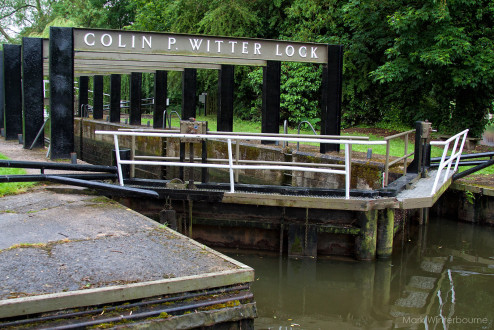
Colin P Witter Lock | Stratford Upon Avon
The Colin P Witter Lock, River Avon (1975) Previously called Stratford Lock this lock, because of its unusual depth and the unstable nature of the ground, was very difficult to build, which accounts for the unusual girders used to stabilise the structure. The work was done by men from Gloucester Gaol and other volunteers.
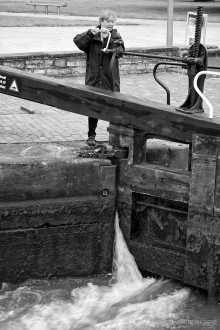
Lock Gates | Bancroft Basin
Im not sure I could copw with having to stop every few miles to operate the gates...
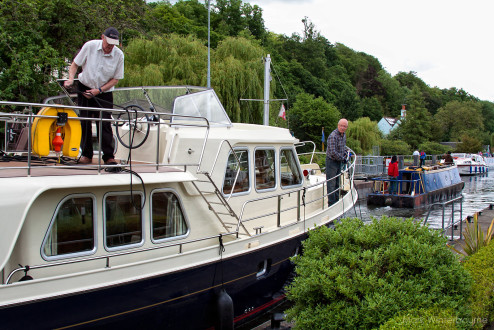
Henley-on-Thames | Marsh Lock & Weir
Not the weather that was expected for June in the United Kingdom..so as normal I tried to do the best I could. Marsh Lock is a lock and weir situated on the River Thames in England near Henley-on-Thames, Oxfordshire. The lock is close to the Berkshire bank, but accessed from the Oxfordshire side via two long walkways, the downstream one being near Mill Meadows. The first pound lock was built by the Thames Navigation Commission in 1773. The weir consists of a series of iron watergates running from the lock to the Oxfordshire bank near the mills. It is situated between the two walkways.
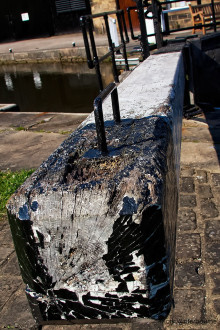
Dobson Locks
Beautiful lighting conditions for photography...1 Camera & a single lens and trying to make the most of a small location...There is always plenty to photograph out there ..its all about opening your eyes and making the best of the conditions
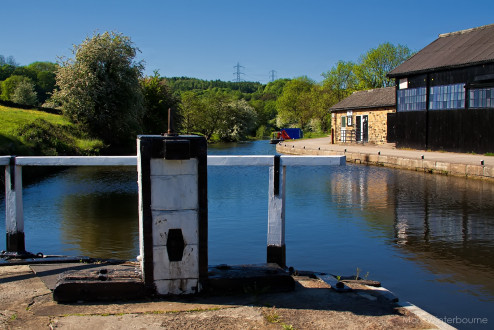
Dobson Locks
Beautiful lighting conditions for photography...1 Camera & a single lens and trying to make the most of a small location...There is always plenty to photograph out there ..its all about opening your eyes and making the best of the conditions
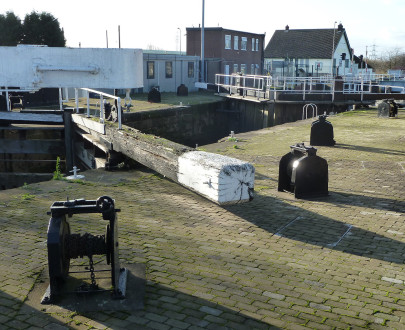
Keadby Lock River Trent and Stainforth and Keadby Canal
The Stainforth and Keadby Canal is a navigable canal in South Yorkshire and Lincolnshire, England. It connects the River Don Navigation at Bramwith to the River Trent at Keadby, by way of Stainforth, Thorne and Ealand, near Crowle. The River Don Navigation originally continued through Bramwith Lock to the now disused Stainforth Side Lock, where it joined the tidal section of the River Don. Because of the difficulties of navigating this tidal river, with its fast flows, the Stainforth and Keadby Canal was opened in 1802, providing an easier and safer route to the tidal River Trent at Keadby.
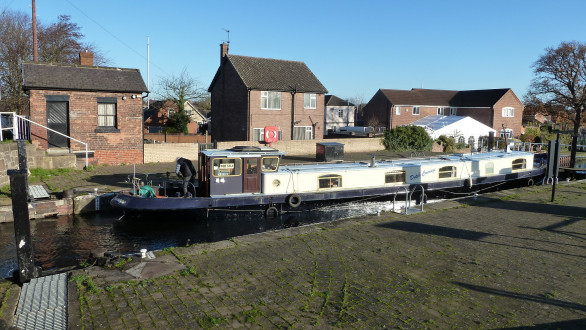
Thorne Lock Stainforth and Keadby Canal Thorne Yorkshire
The Stainforth and Keadby Canal is a navigable canal in South Yorkshire and Lincolnshire, England. It connects the River Don Navigation at Bramwith to the River Trent at Keadby, by way of Stainforth, Thorne and Ealand, near Crowle. The River Don Navigation originally continued through Bramwith Lock to the now disused Stainforth Side Lock, where it joined the tidal section of the River Don. Because of the difficulties of navigating this tidal river, with its fast flows, the Stainforth and Keadby Canal was opened in 1802, providing an easier and safer route to the tidal River Trent at Keadby.
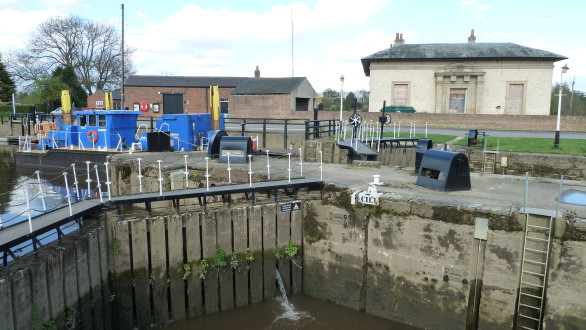
The Banqueting Hall and Naburn Lock River Ouse Yorkshire
The Naburn Lock at the southern entrance/exit to the River Ouse. A weir was built in 1741 to provide water for a mill and the first lock was opened in 1757. A new larger lock was built alongside it in 1888. The Banqueting Hall was built in 1824 for the Ouse Navigation Trustees. This impressive Grade II Listed building stands on the banks of the River Ouse beside the two Naburn Locks, just 4 miles from the centre of York. Designed as a meeting place, comprising a grand banqueting hall and living quarters, the property is constructed of Gault brick with ashlar dressings, incorporating a decorative door surround with square Doric pilasters, and is topped by a hipped Welsh slate roof, earning it a mention in the Pevsner Guide.
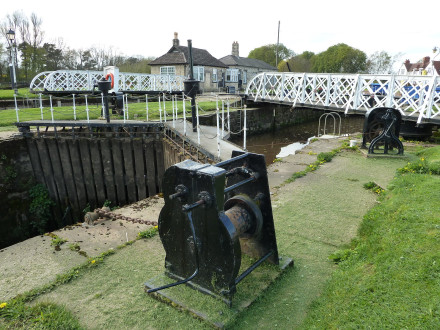
Naburn Lock River Ouse Yorkshire
The Naburn Lock at the southern entrance/exit to the River Ouse. A weir was built in 1741 to provide water for a mill and the first lock was opened in 1757. A new larger lock was built alongside it in 1888.
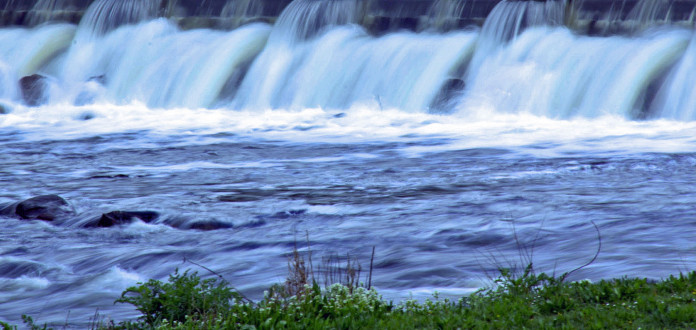
L'écluse
6917951322_ccdbdcd177_k
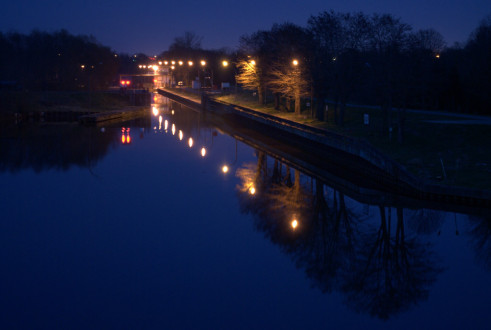
l'écluse
6869030062_f9ddde2a08_b
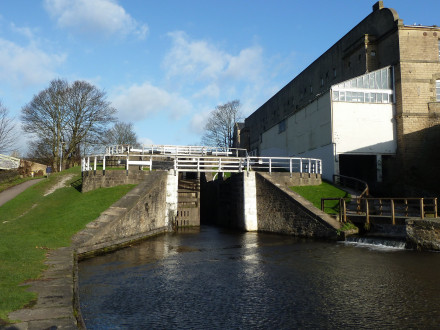
Bingley Three Rise Lock Flight Leeds Liverpool Canal Yorkshire
Bingley Three Rise Locks is a staircase of three locks on the Leeds and Liverpool Canal at Bingley, West Yorkshire, England. It opened in 1774 and was a major feat of engineering at the time along with the larger Five Rise opened at the same time and several hundred metres further up. The lock comprises a staircase flight—the lower gate of one lock forming the upper gate of the next lock. In 1985 the locks were designated Grade II* listed status. In 2007 the lock gates were refurbished The Leeds & Liverpool Canal is 127 miles long, with 91 locks, and is the single longest canal built by one company in the United Kingdom. It took well over 40 years to complete, after a great deal of disagreement about its route from Lancashire to Yorkshire. The company was established in 1770 and construction began at once, with John Longbotham as its engineer; later he was succeeded by Robert Whitworth, and after many delays due to the outbreak of war with France in 1792, it was finally completed in 1816.
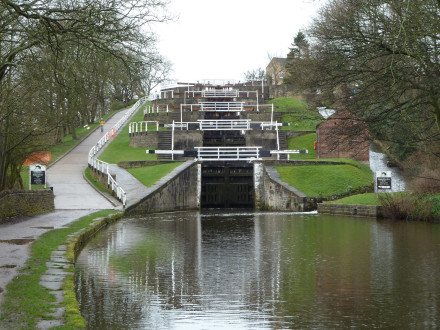
Bingley Five rise lock staircase Leeds Liverpool Canal
Bingley Five-rise lock staircase is the most spectacular feature of the Leeds and Liverpool Canal. The locks open directly from one to another, with the top gate of one forming the bottom gate of the next. This unique 5-rise staircase has a total rise of 60 feet. The Leeds and Liverpool canal has many lock staircases of two or three locks each. Only a few hundred yards downstream is another staircase - this time a 3-rise flight, with a fall of 30 feet. The locks are supervised by a lock keeper and are closed at night. The Bingley 5-rise and 3-rise locks opened in 1774. The Leeds & Liverpool Canal is 127 miles long, with 91 locks, and is the single longest canal built by one company in the United Kingdom. It took well over 40 years to complete, after a great deal of disagreement about its route from Lancashire to Yorkshire. The company was established in 1770 and construction began at once, with John Longbotham as its engineer; later he was succeeded by Robert Whitworth, and after many delays due to the outbreak of war with France in 1792, it was finally completed in 1816.
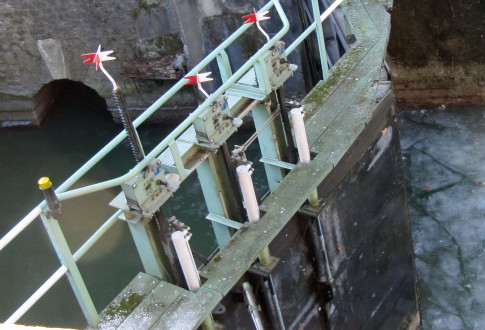
6862256861_03d7760572_k
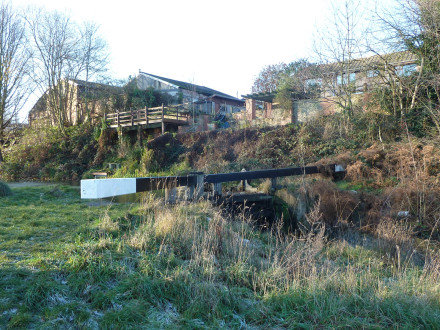
Elsecar Branch Dearne and Dove Canal Elsecar Yorkshire
History of the Dearne and Dove Canal here. www.bddct.org.uk/history/history_dd.html
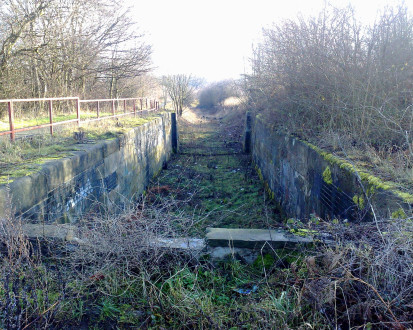
Dearne and Dove Canal Barnsley Yorkshire
History of the Dearne and Dove and Barnsley Canals here. www.bddct.org.uk/history/history_dd.html
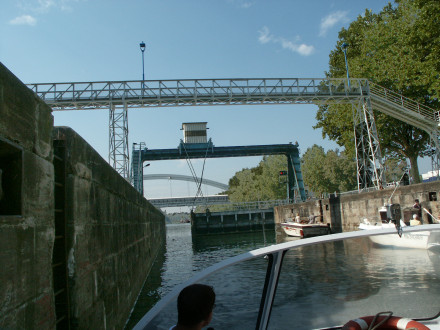
Strasbourg - Ecluse Nord
L'écluse Nord et son ancien système d'ouverture et de fermeture
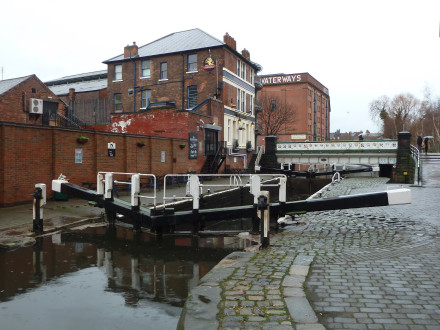
The Navigation Pub and Castle Lock No 6 Nottingham Beeston Canal Nottingham
The surviving Nottingham Beeston Canal is a stub of a much longer historic route, but still forms an essential part of the water route through Nottingham and the River Trent navigation. Today's Nottingham Beeston Canal is simply a bypass for an unnavigable stretch of the River Trent. Running through central Nottingham, it is popular with walkers and cyclists, and attracts many boats as part of the Trent through-route. It was built as part of a much longer route - now derelict - that provided Nottingham with its first direct link to the coalfields to the north.
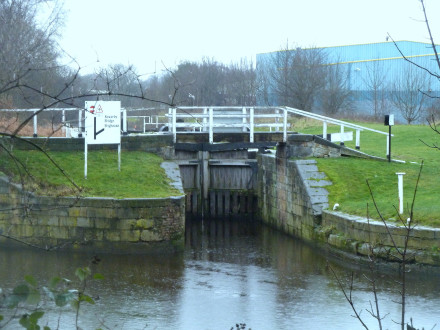
Greenwood Lock and River Calder Ravensthorpe Calder and Hebble Navigation Yorkshire
The Calder and Hebble Navigation, running for 21 miles from the Aire and Calder Navigation at Wakefield to Sowerby Bridge, was one of the first navigable waterways into the Pennines. It was an extension westwards of the Aire and Calder Navigation and was surveyed by John Smeaton and the later sections by James Brindley. Work began in 1758 to make the River Calder navigable above Wakefield. The navigation to Sowerby Bridge was completed in 1770, including a short branch to Dewsbury. Sir John Ramsden's Canal, now known as the Huddersfield Broad, was opened in 1776, providing a branch to Huddersfield. In 1804, the Rochdale Canal opened, branching off the Calder and Hebble just before its terminus in Sowerby Bridge, crossing the Pennines to link Yorkshire with Manchester. This information from the Pennine Waters website. www.penninewaterways.co.uk/calder/chn2.htm
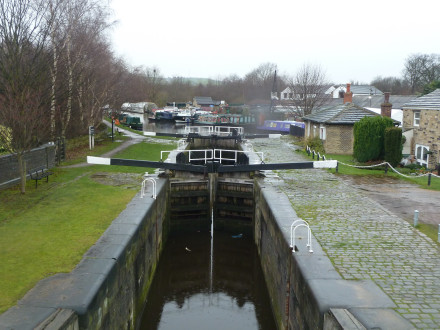
Shepley Bridge Lock Calder and Hebble Navigation Yorkshire
The Calder and Hebble Navigation, running for 21 miles from the Aire and Calder Navigation at Wakefield to Sowerby Bridge, was one of the first navigable waterways into the Pennines. It was an extension westwards of the Aire and Calder Navigation and was surveyed by John Smeaton and the later sections by James Brindley. Work began in 1758 to make the River Calder navigable above Wakefield. The navigation to Sowerby Bridge was completed in 1770, including a short branch to Dewsbury. Sir John Ramsden's Canal, now known as the Huddersfield Broad, was opened in 1776, providing a branch to Huddersfield. In 1804, the Rochdale Canal opened, branching off the Calder and Hebble just before its terminus in Sowerby Bridge, crossing the Pennines to link Yorkshire with Manchester. This information from the Pennine Waters website. www.penninewaterways.co.uk/calder/chn2.htm
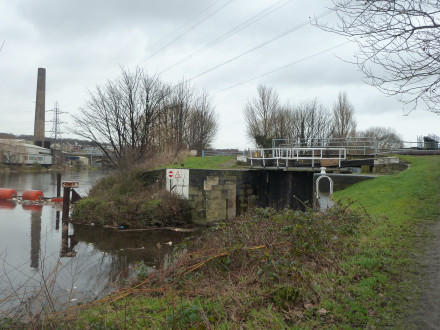
River Calder, Thornhill Flood Lock and Long Cut End Bridge Calder and Hebble Navigation Yorkshire
The Calder and Hebble Navigation, running for 21 miles from the Aire and Calder Navigation at Wakefield to Sowerby Bridge, was one of the first navigable waterways into the Pennines. It was an extension westwards of the Aire and Calder Navigation and was surveyed by John Smeaton and the later sections by James Brindley. Work began in 1758 to make the River Calder navigable above Wakefield. The navigation to Sowerby Bridge was completed in 1770, including a short branch to Dewsbury. Sir John Ramsden's Canal, now known as the Huddersfield Broad, was opened in 1776, providing a branch to Huddersfield. In 1804, the Rochdale Canal opened, branching off the Calder and Hebble just before its terminus in Sowerby Bridge, crossing the Pennines to link Yorkshire with Manchester. This information from the Pennine Waters website. www.penninewaterways.co.uk/calder/chn2.htm
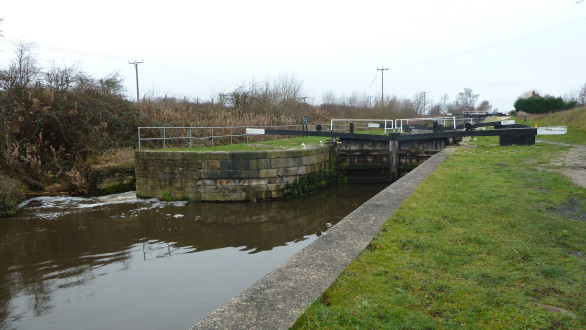
Figure of Three Locks Calder and Hebble Navigation Yorkshire
The Calder and Hebble Navigation, running for 21 miles from the Aire and Calder Navigation at Wakefield to Sowerby Bridge, was one of the first navigable waterways into the Pennines. It was an extension westwards of the Aire and Calder Navigation and was surveyed by John Smeaton and the later sections by James Brindley. Work began in 1758 to make the River Calder navigable above Wakefield. The navigation to Sowerby Bridge was completed in 1770, including a short branch to Dewsbury. Sir John Ramsden's Canal, now known as the Huddersfield Broad, was opened in 1776, providing a branch to Huddersfield. In 1804, the Rochdale Canal opened, branching off the Calder and Hebble just before its terminus in Sowerby Bridge, crossing the Pennines to link Yorkshire with Manchester. This information from the Pennine Waters website. www.penninewaterways.co.uk/calder/chn2.htm
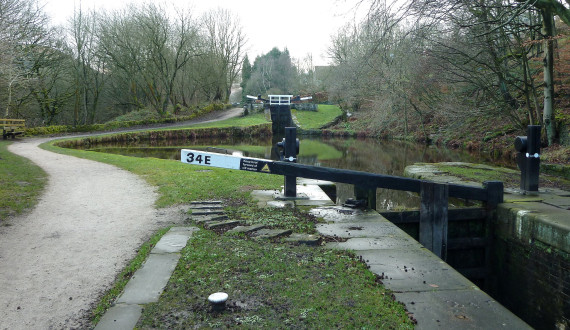
Locks 34E and 35E Marsden Huddersfield Narrow Canal Yorkshire
The Huddersfield Narrow Canal runs for 20 miles between Huddersfield in West Yorkshire and Ashton under Lyne in Greater Manchester, UK. The summit of the Huddersfield Narrow Canal is the highest navigable waterway in Britain. Standedge Tunnel on the Huddersfield Narrow Canal is Britain's longest canal tunnel. The canal has a total of 74 locks. It connects end on with the Ashton Canal and the Huddersfield Broad Canal. The Huddersfield Narrow Canal re-opened to navigation in May 2001. The story of this canal begins over 200 years ago at a time when a network of canals was being constructed through many parts of Britain. The canal was due to open five years after work on it had begun. However, when 1799 arrived, while the canal had been constructed to each side of the tunnel, the tunnel itself was far from open. The canal took 17 years to construct rather than the planned 5 years. The costs rose to £396,267, which was more than twice the original budget. Standedge Tunnel alone cost £123,804 to construct. The shareholders had no return on their investment for 30 years. The canal did enjoy a short period of relative prosperity until 1845, when it was bought by the Huddersfield and Manchester Railway Company, whose line was to follow a similar route to the canal. The railway company did not fear competition from the canal, but as they were building a tunnel alongside the canal tunnel, they wanted to use the canal to remove spoil from their excavations. They did this by boring short connecting passages so that boats could be loaded in the tunnel. Once the railway was open, the railway company had no reason to promote the canal, which fell into slow decline and was eventually closed in 1944. Information from the Pennine Waters website. www.penninewaterways.co.uk/huddersfield/hnc2.htm
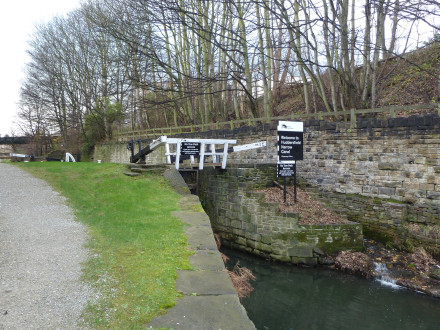
Stanley Dawson Lock 1E Huddersfield Narrow Canal Yorkshire
The Huddersfield Narrow Canal runs for 20 miles between Huddersfield in West Yorkshire and Ashton under Lyne in Greater Manchester, UK. The summit of the Huddersfield Narrow Canal is the highest navigable waterway in Britain. Standedge Tunnel on the Huddersfield Narrow Canal is Britain's longest canal tunnel. The canal has a total of 74 locks. It connects end on with the Ashton Canal and the Huddersfield Broad Canal. The Huddersfield Narrow Canal re-opened to navigation in May 2001. The story of this canal begins over 200 years ago at a time when a network of canals was being constructed through many parts of Britain. The canal was due to open five years after work on it had begun. However, when 1799 arrived, while the canal had been constructed to each side of the tunnel, the tunnel itself was far from open. The canal took 17 years to construct rather than the planned 5 years. The costs rose to £396,267, which was more than twice the original budget. Standedge Tunnel alone cost £123,804 to construct. The shareholders had no return on their investment for 30 years. The canal did enjoy a short period of relative prosperity until 1845, when it was bought by the Huddersfield and Manchester Railway Company, whose line was to follow a similar route to the canal. The railway company did not fear competition from the canal, but as they were building a tunnel alongside the canal tunnel, they wanted to use the canal to remove spoil from their excavations. They did this by boring short connecting passages so that boats could be loaded in the tunnel. Once the railway was open, the railway company had no reason to promote the canal, which fell into slow decline and was eventually closed in 1944. Information from the Pennine Waters website. www.penninewaterways.co.uk/huddersfield/hnc2.htm
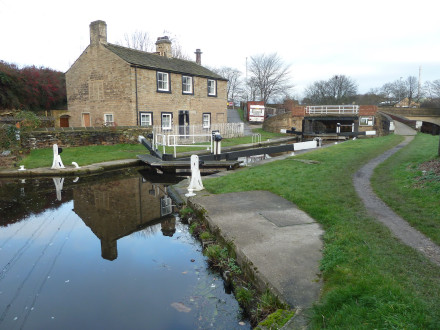
Lock No 1 Huddersfield Broad Canal Cooper Bridge BradleyYorkshire
The Huddersfield Broad Canal runs between the Huddersfield Narrow Canal in the centre of Huddersfield to the Calder and Hebble Navigation at Cooper Bridge. The Huddersfield Broad Canal was originally known as the Cooper Canal, as it branched off the Calder and Hebble Navigation at Cooper Bridge. It was later known as Sir John Ramsden's Canal, after the Lord of the Manor and main land-owner. It later became known as the Broad Canal to distinguish it from the Narrow Canal. It was opened in 1776 and proved to be a lifeline for the rapidly developing textile industry in Huddersfield, bringing in coal and shipping out finished textiles. The canal is around 4 miles long with nine locks.
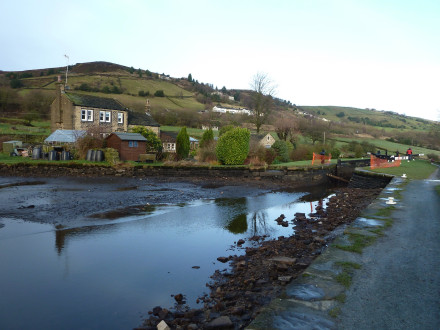
Booth Winding Hole and Lock 31E West Slaithwaite Huddersfield Narrow Canal Yorkshire
The Huddersfield Narrow Canal runs for 20 miles between Huddersfield in West Yorkshire and Ashton under Lyne in Greater Manchester, UK. The summit of the Huddersfield Narrow Canal is the highest navigable waterway in Britain. Standedge Tunnel on the Huddersfield Narrow Canal is Britain's longest canal tunnel. The canal has a total of 74 locks. It connects end on with the Ashton Canal and the Huddersfield Broad Canal. The Huddersfield Narrow Canal re-opened to navigation in May 2001. The story of this canal begins over 200 years ago at a time when a network of canals was being constructed through many parts of Britain. The canal was due to open five years after work on it had begun. However, when 1799 arrived, while the canal had been constructed to each side of the tunnel, the tunnel itself was far from open. The canal took 17 years to construct rather than the planned 5 years. The costs rose to £396,267, which was more than twice the original budget. Standedge Tunnel alone cost £123,804 to construct. The shareholders had no return on their investment for 30 years. The canal did enjoy a short period of relative prosperity until 1845, when it was bought by the Huddersfield and Manchester Railway Company, whose line was to follow a similar route to the canal. The railway company did not fear competition from the canal, but as they were building a tunnel alongside the canal tunnel, they wanted to use the canal to remove spoil from their excavations. They did this by boring short connecting passages so that boats could be loaded in the tunnel. Once the railway was open, the railway company had no reason to promote the canal, which fell into slow decline and was eventually closed in 1944. Information from the Pennine Waters website. www.penninewaterways.co.uk/huddersfield/hnc2.htm
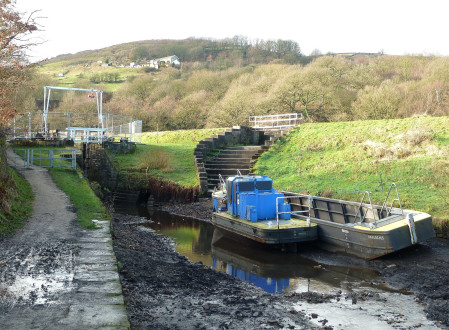
Pig Tail Lock Lock 32E Cellars Clough Huddersfield Narrow Canal Yorkshire
The Huddersfield Narrow Canal runs for 20 miles between Huddersfield in West Yorkshire and Ashton under Lyne in Greater Manchester, UK. The summit of the Huddersfield Narrow Canal is the highest navigable waterway in Britain. Standedge Tunnel on the Huddersfield Narrow Canal is Britain's longest canal tunnel. The canal has a total of 74 locks. It connects end on with the Ashton Canal and the Huddersfield Broad Canal. The Huddersfield Narrow Canal re-opened to navigation in May 2001. The story of this canal begins over 200 years ago at a time when a network of canals was being constructed through many parts of Britain. The canal was due to open five years after work on it had begun. However, when 1799 arrived, while the canal had been constructed to each side of the tunnel, the tunnel itself was far from open. The canal took 17 years to construct rather than the planned 5 years. The costs rose to £396,267, which was more than twice the original budget. Standedge Tunnel alone cost £123,804 to construct. The shareholders had no return on their investment for 30 years. The canal did enjoy a short period of relative prosperity until 1845, when it was bought by the Huddersfield and Manchester Railway Company, whose line was to follow a similar route to the canal. The railway company did not fear competition from the canal, but as they were building a tunnel alongside the canal tunnel, they wanted to use the canal to remove spoil from their excavations. They did this by boring short connecting passages so that boats could be loaded in the tunnel. Once the railway was open, the railway company had no reason to promote the canal, which fell into slow decline and was eventually closed in 1944. Information from the Pennine Waters website. www.penninewaterways.co.uk/huddersfield/hnc2.htm
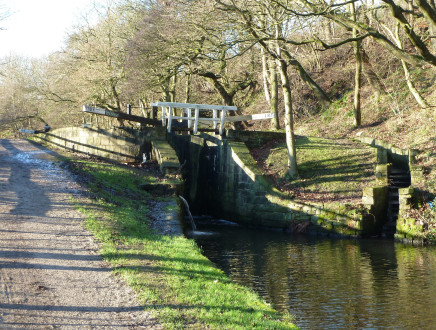
Lock 18E Linthwaite Huddersfield Narrow Canal Yorkshire
The Huddersfield Narrow Canal runs for 20 miles between Huddersfield in West Yorkshire and Ashton under Lyne in Greater Manchester, UK. The summit of the Huddersfield Narrow Canal is the highest navigable waterway in Britain. Standedge Tunnel on the Huddersfield Narrow Canal is Britain's longest canal tunnel. The canal has a total of 74 locks. It connects end on with the Ashton Canal and the Huddersfield Broad Canal. The Huddersfield Narrow Canal re-opened to navigation in May 2001. The story of this canal begins over 200 years ago at a time when a network of canals was being constructed through many parts of Britain. The canal was due to open five years after work on it had begun. However, when 1799 arrived, while the canal had been constructed to each side of the tunnel, the tunnel itself was far from open. The canal took 17 years to construct rather than the planned 5 years. The costs rose to £396,267, which was more than twice the original budget. Standedge Tunnel alone cost £123,804 to construct. The shareholders had no return on their investment for 30 years. The canal did enjoy a short period of relative prosperity until 1845, when it was bought by the Huddersfield and Manchester Railway Company, whose line was to follow a similar route to the canal. The railway company did not fear competition from the canal, but as they were building a tunnel alongside the canal tunnel, they wanted to use the canal to remove spoil from their excavations. They did this by boring short connecting passages so that boats could be loaded in the tunnel. Once the railway was open, the railway company had no reason to promote the canal, which fell into slow decline and was eventually closed in 1944. Information from the Pennine Waters website. www.penninewaterways.co.uk/huddersfield/hnc2.htm
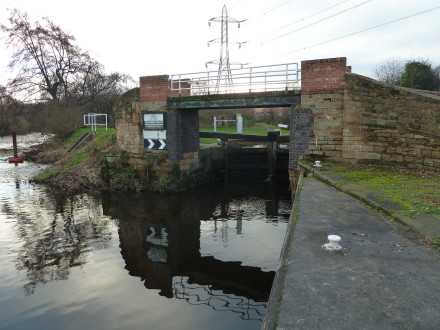
Lock No 1 and River Calder Huddersfield Broad Canal Cooper Bridge BradleyYorkshire
The Huddersfield Broad Canal runs between the Huddersfield Narrow Canal in the centre of Huddersfield to the Calder and Hebble Navigation at Cooper Bridge. The Huddersfield Broad Canal was originally known as the Cooper Canal, as it branched off the Calder and Hebble Navigation at Cooper Bridge. It was later known as Sir John Ramsden's Canal, after the Lord of the Manor and main land-owner. It later became known as the Broad Canal to distinguish it from the Narrow Canal. It was opened in 1776 and proved to be a lifeline for the rapidly developing textile industry in Huddersfield, bringing in coal and shipping out finished textiles. The canal is around 4 miles long with nine locks.
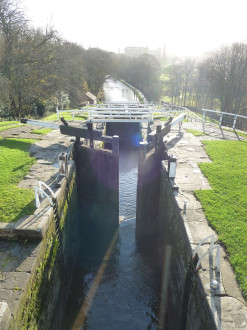
Bingley Five-rise lock staircase Leeds Liverpool Canal
Bingley Five-rise lock staircase is the most spectacular feature of the Leeds and Liverpool Canal. The locks open directly from one to another, with the top gate of one forming the bottom gate of the next. This unique 5-rise staircase has a total rise of 60 feet. The Leeds and Liverpool canal has many lock staircases of two or three locks each. Only a few hundred yards downstream is another staircase - this time a 3-rise flight, with a fall of 30 feet. The locks are supervised by a lock keeper and are closed at night. The Bingley 5-rise and 3-rise locks opened in 1774. The Leeds & Liverpool Canal is 127 miles long, with 91 locks, and is the single longest canal built by one company in the United Kingdom. It took well over 40 years to complete, after a great deal of disagreement about its route from Lancashire to Yorkshire. The company was established in 1770 and construction began at once, with John Longbotham as its engineer; later he was succeeded by Robert Whitworth, and after many delays due to the outbreak of war with France in 1792, it was finally completed in 1816.
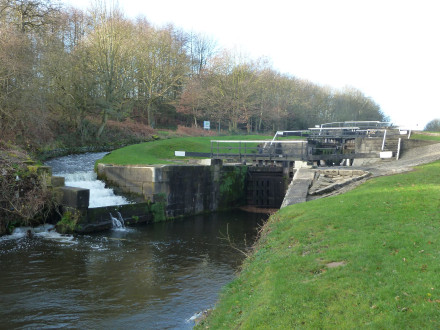
Newlay Locks Nos 11 12 13 Leeds Liverpool Canal
The Leeds & Liverpool Canal is 127 miles long, with 91 locks, and is the single longest canal built by one company in the United Kingdom. It took well over 40 years to complete, after a great deal of disagreement about its route from Lancashire to Yorkshire. The company was established in 1770 and construction began at once, with John Longbotham as its engineer; later he was succeeded by Robert Whitworth, and after many delays due to the outbreak of war with France in 1792, it was finally completed in 1816.
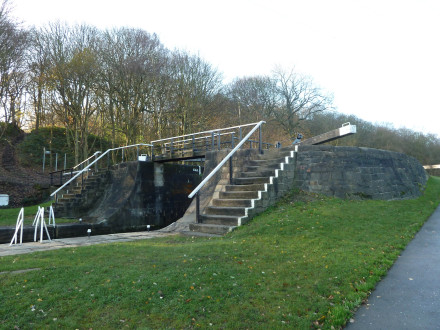
Forge Locks Nos 8 9 10 Leeds Liverpool Canal
The Leeds & Liverpool Canal is 127 miles long, with 91 locks, and is the single longest canal built by one company in the United Kingdom. It took well over 40 years to complete, after a great deal of disagreement about its route from Lancashire to Yorkshire. The company was established in 1770 and construction began at once, with John Longbotham as its engineer; later he was succeeded by Robert Whitworth, and after many delays due to the outbreak of war with France in 1792, it was finally completed in 1816.
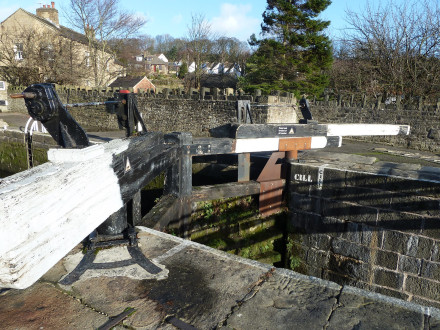
Bingley Five-rise lock staircase Leeds Liverpool Canal
Bingley Five-rise lock staircase is the most spectacular feature of the Leeds and Liverpool Canal. The locks open directly from one to another, with the top gate of one forming the bottom gate of the next. This unique 5-rise staircase has a total rise of 60 feet. The Leeds and Liverpool canal has many lock staircases of two or three locks each. Only a few hundred yards downstream is another staircase - this time a 3-rise flight, with a fall of 30 feet. The locks are supervised by a lock keeper and are closed at night. The Bingley 5-rise and 3-rise locks opened in 1774. The Leeds & Liverpool Canal is 127 miles long, with 91 locks, and is the single longest canal built by one company in the United Kingdom. It took well over 40 years to complete, after a great deal of disagreement about its route from Lancashire to Yorkshire. The company was established in 1770 and construction began at once, with John Longbotham as its engineer; later he was succeeded by Robert Whitworth, and after many delays due to the outbreak of war with France in 1792, it was finally completed in 1816.
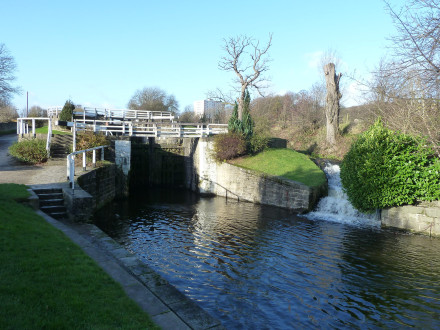
Dowley Gap Locks Leeds Liverpool Canal
The Leeds & Liverpool Canal is 127 miles long, with 91 locks, and is the single longest canal built by one company in the United Kingdom. It took well over 40 years to complete, after a great deal of disagreement about its route from Lancashire to Yorkshire. The company was established in 1770 and construction began at once, with John Longbotham as its engineer; later he was succeeded by Robert Whitworth, and after many delays due to the outbreak of war with France in 1792, it was finally completed in 1816.
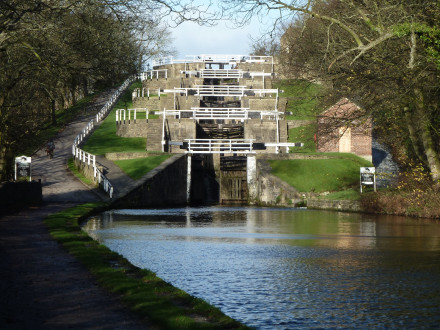
Bingley Five rise lock staircase Leeds Liverpool Canal
Bingley Five-rise lock staircase is the most spectacular feature of the Leeds and Liverpool Canal. The locks open directly from one to another, with the top gate of one forming the bottom gate of the next. This unique 5-rise staircase has a total rise of 60 feet. The Leeds and Liverpool canal has many lock staircases of two or three locks each. Only a few hundred yards downstream is another staircase - this time a 3-rise flight, with a fall of 30 feet. The locks are supervised by a lock keeper and are closed at night. The Bingley 5-rise and 3-rise locks opened in 1774. The Leeds & Liverpool Canal is 127 miles long, with 91 locks, and is the single longest canal built by one company in the United Kingdom. It took well over 40 years to complete, after a great deal of disagreement about its route from Lancashire to Yorkshire. The company was established in 1770 and construction began at once, with John Longbotham as its engineer; later he was succeeded by Robert Whitworth, and after many delays due to the outbreak of war with France in 1792, it was finally completed in 1816.
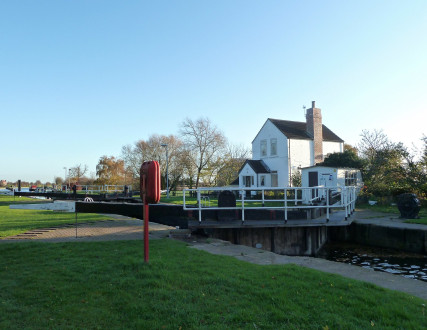
Bramwith Lock Stainforth and Keadby Canal Yorkshire
The Stainforth and Keadby Canal is a navigable canal in South Yorkshire and Lincolnshire, England. It connects the River Don Navigation at Bramwith to the River Trent at Keadby, by way of Stainforth, Thorne and Ealand, near Crowle. The River Don Navigation originally continued through Bramwith Lock to the now disused Stainforth Side Lock, where it joined the tidal section of the River Don. Because of the difficulties of navigating this tidal river, with its fast flows, the Stainforth and Keadby Canal was opened in 1802, providing an easier and safer route to the tidal River Trent at Keadby.
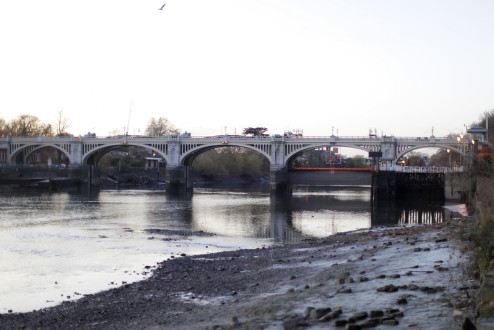
Richmond half lock
This is a lock that paddlers on DW worry about. If they are late on the tide it demands portaging on a very slippy slope on the left hand bridge arch. www.pla.co.uk/display_fixedpage.cfm/id/2695/site/navigation The weirs at Richmond will remain open between 6th and 25th December 2011 so that essential maintenance works on the lock, weirs and sluices can be done and a riverbed inspection carried out. This will allow the river between Richmond Lock and Teddington Lock to drain down at low water on each tide. During this period river users are reminded that, for the duration of the work, the river will not be maintained at the nominal level of Chart Datum and that the river bed may be exposed. IMG_8868
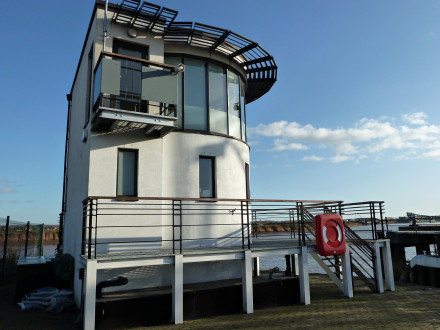
Keadby Lock River Trent and Stainforth and Keadby Canal
The Stainforth and Keadby Canal is a navigable canal in South Yorkshire and Lincolnshire, England. It connects the River Don Navigation at Bramwith to the River Trent at Keadby, by way of Stainforth, Thorne and Ealand, near Crowle. The River Don Navigation originally continued through Bramwith Lock to the now disused Stainforth Side Lock, where it joined the tidal section of the River Don. Because of the difficulties of navigating this tidal river, with its fast flows, the Stainforth and Keadby Canal was opened in 1802, providing an easier and safer route to the tidal River Trent at Keadby.
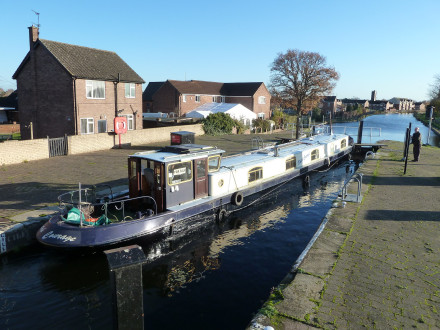
Thorne Lock Stainforth and Keadby Canal Thorne Yorkshire
The Stainforth and Keadby Canal is a navigable canal in South Yorkshire and Lincolnshire, England. It connects the River Don Navigation at Bramwith to the River Trent at Keadby, by way of Stainforth, Thorne and Ealand, near Crowle. The River Don Navigation originally continued through Bramwith Lock to the now disused Stainforth Side Lock, where it joined the tidal section of the River Don. Because of the difficulties of navigating this tidal river, with its fast flows, the Stainforth and Keadby Canal was opened in 1802, providing an easier and safer route to the tidal River Trent at Keadby.
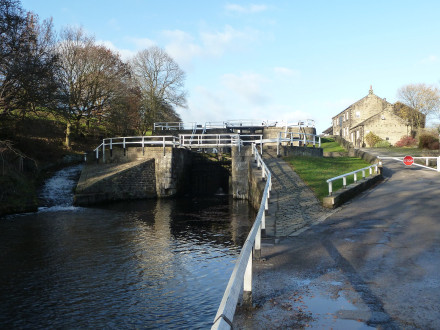
Dobson Locks Leeds Liverpool Canal Apperley Bridge Yorkshire
The Leeds & Liverpool Canal is 127 miles long, with 91 locks, and is the single longest canal built by one company in the United Kingdom. It took well over 40 years to complete, after a great deal of disagreement about its route from Lancashire to Yorkshire. The company was established in 1770 and construction began at once, with John Longbotham as its engineer; later he was succeeded by Robert Whitworth, and after many delays due to the outbreak of war with France in 1792, it was finally completed in 1816.
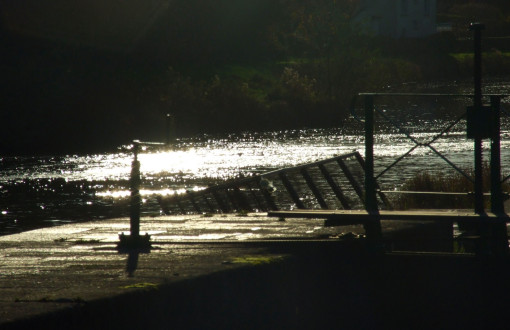
En sortant de l'expo de Fabrice à Châteaulin
Ecluse de Saint Coulitz . Une manivelle à contre-jour . Un peu sur le … les fesses après ma visite ( il faut qu'il nous sorte un livre ! ) j'ai profité du temps superbe pour une balade le long de l'Aulne, de Châteaulin à Port-Launay, puis Châteaulin, puis vers l'écluse de Saint Coulitz et enfin retour à Châteaulin . Entre les copalmes rouges et les somptueux reflets, juste parfois troublés par un petit frisottis, j'en eus plein les mirettes . Finistère, le 10 novembre 2010 . Photographie J-P Leroy, droits réservés .
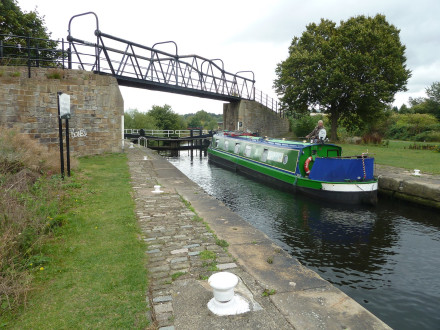
Fall Ing Lock Calder and Hebble Navigation Wakefield Yorkshire
The Calder and Hebble Navigation, running for 21 miles from the Aire and Calder Navigation at Wakefield to Sowerby Bridge, was one of the first navigable waterways into the Pennines. It was an extension westwards of the Aire and Calder Navigation and was surveyed by John Smeaton and the later sections by James Brindley. Work began in 1758 to make the River Calder navigable above Wakefield. The navigation to Sowerby Bridge was completed in 1770, including a short branch to Dewsbury. Sir John Ramsden's Canal, now known as the Huddersfield Broad, was opened in 1776, providing a branch to Huddersfield.
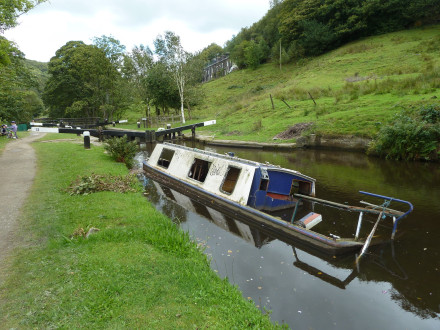
Callis Lock No 13 Rochdale Canal
The Rochdale Canal spans the Pennines for 32 miles from the centre of Manchester to its junction with the Calder & Hebble Navigation at Sowerby Bridge. It was one of three trans-Pennine routes, the others being the Leeds & Liverpool Canal and the Huddersfield Narrow Canal. In 1804, it became the first of them to be fully opened - perhaps due to the choice of a route over the top of the Pennines, avoiding the problems with tunnel construction that had bedevilled the other two waterways. Principal cargoes included coal, agricultural produce and materials for the textiles industry. The large number of locks on a relatively short length of canal, rising to a height of over 600 feet (180m), meant that water supply was always a problem. Several reservoirs were built especially to service the line. Locks were made large enough to accommodate broad-gauge (14ft), boats with commercial payloads of up to 70 tons. All the locks were made with exactly the same fall: this meant all the gates were the same size, making maintenance easier, and conserved water by using the same amount of water for each lock operation. The canal proved a success until the combined effects of road and rail competition took their inevitable toll. The last regular through-traffic ended just before World War II, and by the 1950s commercial carrying had virtually ceased altogether. Unusually, the canal had not been nationalised in 1948, and remained in private ownership. The canal closed as a through route just four years later. One short length remained: the nine locks in central Manchester between the Ashton Canal and the Bridgewater Canal, which was an essential part of the Cheshire Cruising Ring. Restoration work began in the 1970s, and the following decade saw much of the canal reopened on the Yorkshire side from Littleborough eastwards. This was reconnected to the waterway network in 1996 by the glorious new lock at Tuel Lane near Sowerby Bridge, which combines two earlier locks so that the canal may tunnel under a road built on its original level. At almost 20 feet (6m) deep, it vies with Bath Deep Lock for the title of the deepest lock in Britain. Restoration of the Rochdale Canal entailed the total refurbishment of 24 locks, the cutting of a new section of channel, massive dredging of the original line and the construction of 12 new road bridges. It was reopened throughout in 2002 and now, together with the reopened Huddersfield Narrow Canal, forms part of the South Pennine Cruising Ring. Information from the Waterscape website. www.waterscape.com/canals-and-rivers/rochdale-canal/history More information and history here. www.penninewaterways.co.uk/rochdale/rc2.htm
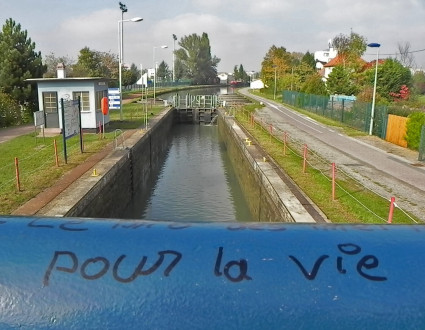
Canal de la Marne au Rhin
avec une mention trouvée sur place sur la passerelle de franchissement piétonnier avec rampe vélos de l'écluse
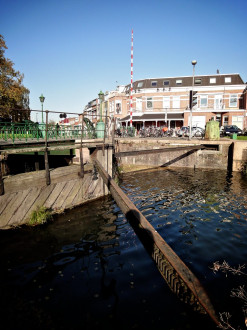
Kanaalzicht bij de sluis
Sluisdeuren en café aan de Keulsekade. Sluice gates of the lock between Merwedekanaal (right) and Amsterdam Rhine Canal (left).
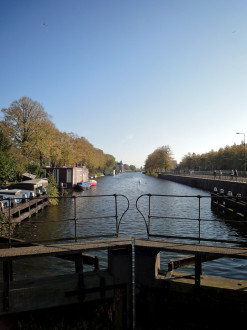
Skiffeur nadert de sluis
Single sculler approaching the lock between local and regional waterways in Utrecht.
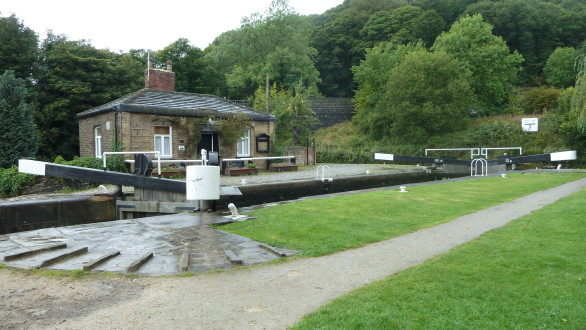
Salterhebble Calder and Hebble Navigation Yorkshire
The Calder and Hebble Navigation, running for 21 miles from the Aire and Calder Navigation at Wakefield to Sowerby Bridge, was one of the first navigable waterways into the Pennines. It was an extension westwards of the Aire and Calder Navigation and was The two staircase locks at Salterhebble and the single lock at Brooksmouth were replaced at John Smeaton's suggestion by three new locks in 1782. The Calder and Hebble Navigation, running for 21 miles from the Aire and Calder Navigation at Wakefield to Sowerby Bridge, was one of the first navigable waterways into the Pennines. It was an extension westwards of the Aire and Calder Navigation and was surveyed by John Smeaton and the later sections by James Brindley. Work began in 1758 to make the River Calder navigable above Wakefield. The navigation to Sowerby Bridge was completed in 1770, including a short branch to Dewsbury. Sir John Ramsden's Canal, now known as the Huddersfield Broad, was opened in 1776, providing a branch to Huddersfield. In 1804, the Rochdale Canal opened, branching off the Calder and Hebble just before its terminus in Sowerby Bridge, crossing the Pennines to link Yorkshire with Manchester. This information from the Pennine Waters website. www.penninewaterways.co.uk/calder/chn2.htm
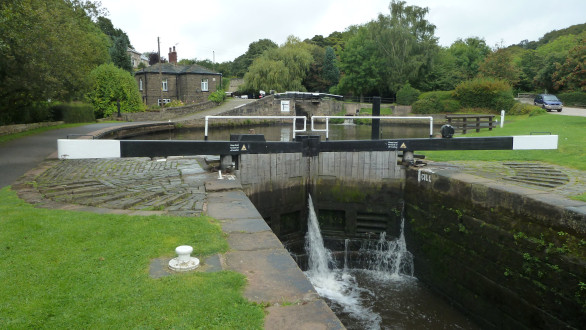
Salterhebble Calder and Hebble Navigation Yorkshire
The two staircase locks at Salterhebble and the single lock at Brooksmouth were replaced at John Smeaton's suggestion by three new locks in 1782. The Calder and Hebble Navigation, running for 21 miles from the Aire and Calder Navigation at Wakefield to Sowerby Bridge, was one of the first navigable waterways into the Pennines. It was an extension westwards of the Aire and Calder Navigation and was surveyed by John Smeaton and the later sections by James Brindley. Work began in 1758 to make the River Calder navigable above Wakefield. The navigation to Sowerby Bridge was completed in 1770, including a short branch to Dewsbury. Sir John Ramsden's Canal, now known as the Huddersfield Broad, was opened in 1776, providing a branch to Huddersfield. In 1804, the Rochdale Canal opened, branching off the Calder and Hebble just before its terminus in Sowerby Bridge, crossing the Pennines to link Yorkshire with Manchester. This information from the Pennine Waters website. www.penninewaterways.co.uk/calder/chn2.htm
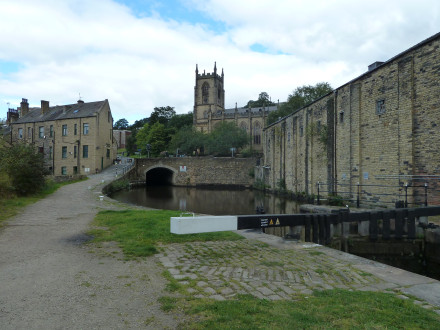
Lock 2 and Tuel Lane Tunnel and Lock Rochdale Canal Sowerby Bridge
The Rochdale Canal spans the Pennines for 32 miles from the centre of Manchester to its junction with the Calder & Hebble Navigation at Sowerby Bridge. It was one of three trans-Pennine routes, the others being the Leeds & Liverpool Canal and the Huddersfield Narrow Canal. In 1804, it became the first of them to be fully opened - perhaps due to the choice of a route over the top of the Pennines, avoiding the problems with tunnel construction that had bedevilled the other two waterways. Principal cargoes included coal, agricultural produce and materials for the textiles industry. The large number of locks on a relatively short length of canal, rising to a height of over 600 feet (180m), meant that water supply was always a problem. Several reservoirs were built especially to service the line. Locks were made large enough to accommodate broad-gauge (14ft), boats with commercial payloads of up to 70 tons. All the locks were made with exactly the same fall: this meant all the gates were the same size, making maintenance easier, and conserved water by using the same amount of water for each lock operation. The canal proved a success until the combined effects of road and rail competition took their inevitable toll. The last regular through-traffic ended just before World War II, and by the 1950s commercial carrying had virtually ceased altogether. Unusually, the canal had not been nationalised in 1948, and remained in private ownership. The canal closed as a through route just four years later. One short length remained: the nine locks in central Manchester between the Ashton Canal and the Bridgewater Canal, which was an essential part of the Cheshire Cruising Ring. Restoration work began in the 1970s, and the following decade saw much of the canal reopened on the Yorkshire side from Littleborough eastwards. This was reconnected to the waterway network in 1996 by the glorious new lock at Tuel Lane near Sowerby Bridge, which combines two earlier locks so that the canal may tunnel under a road built on its original level. At almost 20 feet (6m) deep, it vies with Bath Deep Lock for the title of the deepest lock in Britain. Restoration of the Rochdale Canal entailed the total refurbishment of 24 locks, the cutting of a new section of channel, massive dredging of the original line and the construction of 12 new road bridges. It was reopened throughout in 2002 and now, together with the reopened Huddersfield Narrow Canal, forms part of the South Pennine Cruising Ring. Information from the Waterscape website. www.waterscape.com/canals-and-rivers/rochdale-canal/history More information and history here. www.penninewaterways.co.uk/rochdale/rc2.htm
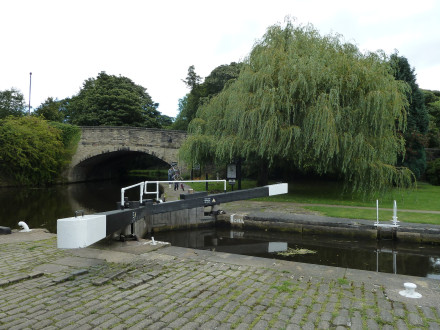
Salterhebble Calder and Hebble Navigation Yorkshire
The two staircase locks at Salterhebble and the single lock at Brooksmouth were replaced at John Smeaton's suggestion by three new locks in 1782. The Calder and Hebble Navigation, running for 21 miles from the Aire and Calder Navigation at Wakefield to Sowerby Bridge, was one of the first navigable waterways into the Pennines. It was an extension westwards of the Aire and Calder Navigation and was surveyed by John Smeaton and the later sections by James Brindley. Work began in 1758 to make the River Calder navigable above Wakefield. The navigation to Sowerby Bridge was completed in 1770, including a short branch to Dewsbury. Sir John Ramsden's Canal, now known as the Huddersfield Broad, was opened in 1776, providing a branch to Huddersfield. In 1804, the Rochdale Canal opened, branching off the Calder and Hebble just before its terminus in Sowerby Bridge, crossing the Pennines to link Yorkshire with Manchester. This information from the Pennine Waters website. www.penninewaterways.co.uk/calder/chn2.htm
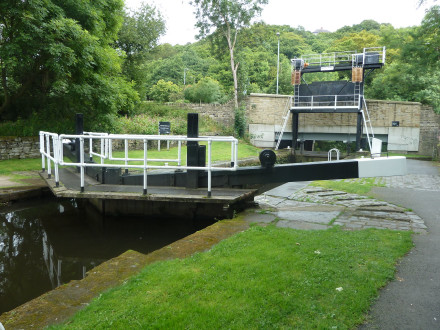
Guillotine Lock and Stainland Bridge 11 Salterhebble Calder and Hebble Navigation Yorkshire
The two staircase locks at Salterhebble and the single lock at Brooksmouth were replaced at John Smeaton's suggestion by three new locks in 1782 including this guillotine lock. The Calder and Hebble Navigation, running for 21 miles from the Aire and Calder Navigation at Wakefield to Sowerby Bridge, was one of the first navigable waterways into the Pennines. It was an extension westwards of the Aire and Calder Navigation and was surveyed by John Smeaton and the later sections by James Brindley. Work began in 1758 to make the River Calder navigable above Wakefield. The navigation to Sowerby Bridge was completed in 1770, including a short branch to Dewsbury. Sir John Ramsden's Canal, now known as the Huddersfield Broad, was opened in 1776, providing a branch to Huddersfield. In 1804, the Rochdale Canal opened, branching off the Calder and Hebble just before its terminus in Sowerby Bridge, crossing the Pennines to link Yorkshire with Manchester. This information from the Pennine Waters website. www.penninewaterways.co.uk/calder/chn2.htm
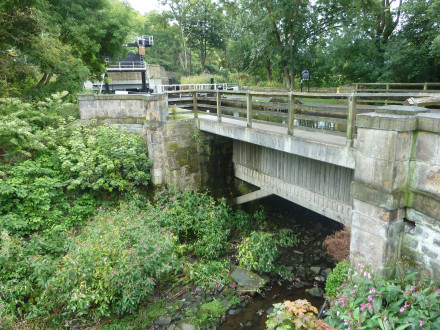
Hebble Brook Aqueduct and Guillotine Lock Salterhebble Calder and Hebble Navigation Yorkshire
The two staircase locks at Salterhebble and the single lock at Brooksmouth were replaced at John Smeaton's suggestion by three new locks in 1782 including this guillotine lock. The Calder and Hebble Navigation, running for 21 miles from the Aire and Calder Navigation at Wakefield to Sowerby Bridge, was one of the first navigable waterways into the Pennines. It was an extension westwards of the Aire and Calder Navigation and was surveyed by John Smeaton and the later sections by James Brindley. Work began in 1758 to make the River Calder navigable above Wakefield. The navigation to Sowerby Bridge was completed in 1770, including a short branch to Dewsbury. Sir John Ramsden's Canal, now known as the Huddersfield Broad, was opened in 1776, providing a branch to Huddersfield. In 1804, the Rochdale Canal opened, branching off the Calder and Hebble just before its terminus in Sowerby Bridge, crossing the Pennines to link Yorkshire with Manchester. This information from the Pennine Waters website. www.penninewaterways.co.uk/calder/chn2.htm
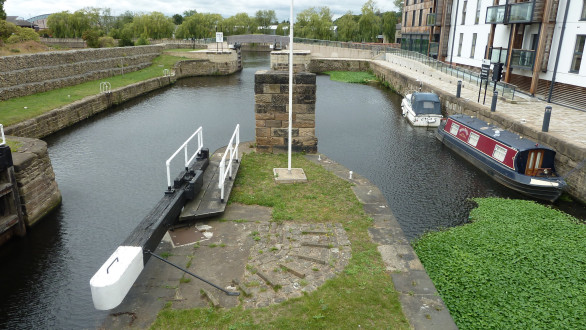
Wakefield Flood Lock Calder and Hebble Navigation Wakefield Yorkshire
The Calder and Hebble Navigation, running for 21 miles from the Aire and Calder Navigation at Wakefield to Sowerby Bridge, was one of the first navigable waterways into the Pennines. It was an extension westwards of the Aire and Calder Navigation and was surveyed by John Smeaton and the later sections by James Brindley. Work began in 1758 to make the River Calder navigable above Wakefield. The navigation to Sowerby Bridge was completed in 1770, including a short branch to Dewsbury. Sir John Ramsden's Canal, now known as the Huddersfield Broad, was opened in 1776, providing a branch to Huddersfield.
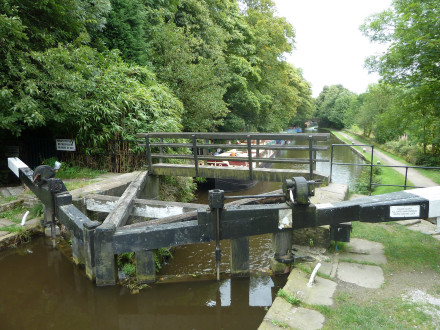
Mayroyd Mill Lock 8 Hebden Bridge Rochdale Canal
The Rochdale Canal spans the Pennines for 32 miles from the centre of Manchester to its junction with the Calder & Hebble Navigation at Sowerby Bridge. It was one of three trans-Pennine routes, the others being the Leeds & Liverpool Canal and the Huddersfield Narrow Canal. In 1804, it became the first of them to be fully opened - perhaps due to the choice of a route over the top of the Pennines, avoiding the problems with tunnel construction that had bedevilled the other two waterways. Principal cargoes included coal, agricultural produce and materials for the textiles industry. The large number of locks on a relatively short length of canal, rising to a height of over 600 feet (180m), meant that water supply was always a problem. Several reservoirs were built especially to service the line. Locks were made large enough to accommodate broad-gauge (14ft), boats with commercial payloads of up to 70 tons. All the locks were made with exactly the same fall: this meant all the gates were the same size, making maintenance easier, and conserved water by using the same amount of water for each lock operation. The canal proved a success until the combined effects of road and rail competition took their inevitable toll. The last regular through-traffic ended just before World War II, and by the 1950s commercial carrying had virtually ceased altogether. Unusually, the canal had not been nationalised in 1948, and remained in private ownership. The canal closed as a through route just four years later. One short length remained: the nine locks in central Manchester between the Ashton Canal and the Bridgewater Canal, which was an essential part of the Cheshire Cruising Ring. Restoration work began in the 1970s, and the following decade saw much of the canal reopened on the Yorkshire side from Littleborough eastwards. This was reconnected to the waterway network in 1996 by the glorious new lock at Tuel Lane near Sowerby Bridge, which combines two earlier locks so that the canal may tunnel under a road built on its original level. At almost 20 feet (6m) deep, it vies with Bath Deep Lock for the title of the deepest lock in Britain. Restoration of the Rochdale Canal entailed the total refurbishment of 24 locks, the cutting of a new section of channel, massive dredging of the original line and the construction of 12 new road bridges. It was reopened throughout in 2002 and now, together with the reopened Huddersfield Narrow Canal, forms part of the South Pennine Cruising Ring. Information from the Waterscape website. www.waterscape.com/canals-and-rivers/rochdale-canal/history More information and history here. www.penninewaterways.co.uk/rochdale/rc2.htm
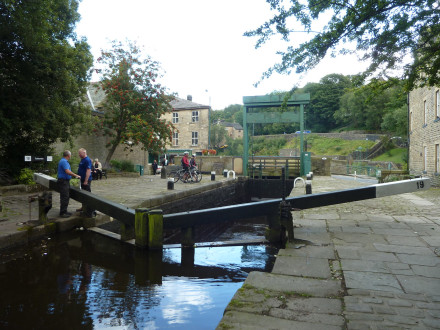
Todmorden Lock 19 Rochdale Canal Todmorden
The Rochdale Canal spans the Pennines for 32 miles from the centre of Manchester to its junction with the Calder & Hebble Navigation at Sowerby Bridge. It was one of three trans-Pennine routes, the others being the Leeds & Liverpool Canal and the Huddersfield Narrow Canal. In 1804, it became the first of them to be fully opened - perhaps due to the choice of a route over the top of the Pennines, avoiding the problems with tunnel construction that had bedevilled the other two waterways. Principal cargoes included coal, agricultural produce and materials for the textiles industry. The large number of locks on a relatively short length of canal, rising to a height of over 600 feet (180m), meant that water supply was always a problem. Several reservoirs were built especially to service the line. Locks were made large enough to accommodate broad-gauge (14ft), boats with commercial payloads of up to 70 tons. All the locks were made with exactly the same fall: this meant all the gates were the same size, making maintenance easier, and conserved water by using the same amount of water for each lock operation. The canal proved a success until the combined effects of road and rail competition took their inevitable toll. The last regular through-traffic ended just before World War II, and by the 1950s commercial carrying had virtually ceased altogether. Unusually, the canal had not been nationalised in 1948, and remained in private ownership. The canal closed as a through route just four years later. One short length remained: the nine locks in central Manchester between the Ashton Canal and the Bridgewater Canal, which was an essential part of the Cheshire Cruising Ring. Restoration work began in the 1970s, and the following decade saw much of the canal reopened on the Yorkshire side from Littleborough eastwards. This was reconnected to the waterway network in 1996 by the glorious new lock at Tuel Lane near Sowerby Bridge, which combines two earlier locks so that the canal may tunnel under a road built on its original level. At almost 20 feet (6m) deep, it vies with Bath Deep Lock for the title of the deepest lock in Britain. Restoration of the Rochdale Canal entailed the total refurbishment of 24 locks, the cutting of a new section of channel, massive dredging of the original line and the construction of 12 new road bridges. It was reopened throughout in 2002 and now, together with the reopened Huddersfield Narrow Canal, forms part of the South Pennine Cruising Ring. Information from the Waterscape website. www.waterscape.com/canals-and-rivers/rochdale-canal/history More information and history here. www.penninewaterways.co.uk/rochdale/rc2.htm
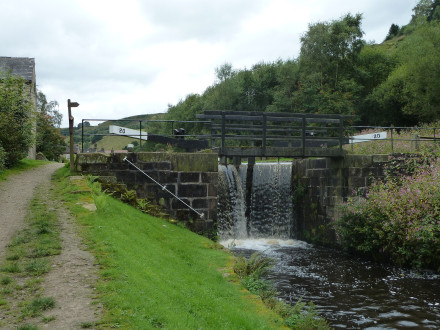
Wadsworth Mill Lock 20 Rochdale Canal
The Rochdale Canal spans the Pennines for 32 miles from the centre of Manchester to its junction with the Calder & Hebble Navigation at Sowerby Bridge. It was one of three trans-Pennine routes, the others being the Leeds & Liverpool Canal and the Huddersfield Narrow Canal. In 1804, it became the first of them to be fully opened - perhaps due to the choice of a route over the top of the Pennines, avoiding the problems with tunnel construction that had bedevilled the other two waterways. Principal cargoes included coal, agricultural produce and materials for the textiles industry. The large number of locks on a relatively short length of canal, rising to a height of over 600 feet (180m), meant that water supply was always a problem. Several reservoirs were built especially to service the line. Locks were made large enough to accommodate broad-gauge (14ft), boats with commercial payloads of up to 70 tons. All the locks were made with exactly the same fall: this meant all the gates were the same size, making maintenance easier, and conserved water by using the same amount of water for each lock operation. The canal proved a success until the combined effects of road and rail competition took their inevitable toll. The last regular through-traffic ended just before World War II, and by the 1950s commercial carrying had virtually ceased altogether. Unusually, the canal had not been nationalised in 1948, and remained in private ownership. The canal closed as a through route just four years later. One short length remained: the nine locks in central Manchester between the Ashton Canal and the Bridgewater Canal, which was an essential part of the Cheshire Cruising Ring. Restoration work began in the 1970s, and the following decade saw much of the canal reopened on the Yorkshire side from Littleborough eastwards. This was reconnected to the waterway network in 1996 by the glorious new lock at Tuel Lane near Sowerby Bridge, which combines two earlier locks so that the canal may tunnel under a road built on its original level. At almost 20 feet (6m) deep, it vies with Bath Deep Lock for the title of the deepest lock in Britain. Restoration of the Rochdale Canal entailed the total refurbishment of 24 locks, the cutting of a new section of channel, massive dredging of the original line and the construction of 12 new road bridges. It was reopened throughout in 2002 and now, together with the reopened Huddersfield Narrow Canal, forms part of the South Pennine Cruising Ring. Information from the Waterscape website. www.waterscape.com/canals-and-rivers/rochdale-canal/history More information and history here. www.penninewaterways.co.uk/rochdale/rc2.htm
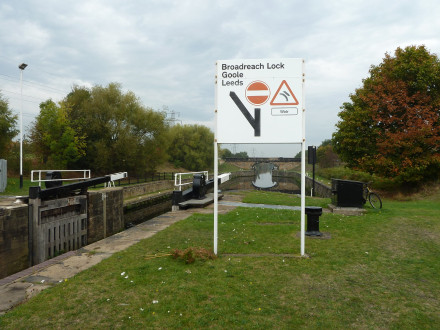
Broadreach Flood Lock and Broadreach Bridge Aire and Calder Navigation Wakefield Yorkshire
The Aire and Calder Navigation Company made the River Aire navigable as far as Leeds in 1704 with the construction of locks and lock cuts between Knottingley and Leeds. Two years later, the company made the River Calder navigable from Castleford to Wakefield. It was soon found that the navigation was inadequate for the potential demand. Shoals, shallow lock cills and low water levels in the easterly section of the Aire meant that passage was restricted to smaller, shallow-draughted boats New locks and longer sections of cut were added between Castleford and Leeds. In 1821 a new 17 mile cut was constructed from Knottingley to the River Ouse at Goole, where docks were built. By 1835 all the locks had been rebuilt to have depth of 7 feet over the cills. In 1839, a twisting length of the Calder was bypassed by a straighter 4 mile section between Fairies Hill and Broadreach, also with a depth of 7 feet. This included building an aqueduct across the river at Stanley Ferry. William Bartholomew, the chief engineer between 1853 and 1895, developed the "Tom Puddings" - compartment boats that were put together in trains to be pushed by a tug. They transported coal from the Yorkshire collieries to Goole and later to power stations. The navigation never went out of use and is still used for commercial traffic with such cargoes as oil and sand being carried. Information from Pennine Waters website. www.penninewaterways.co.uk/aire/index.htm
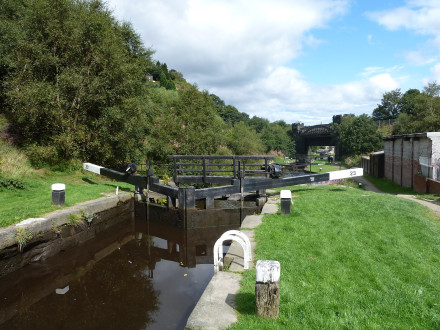
Gauxholme Middle Lock 23 and Gauxholme Railway Viaduct Rochdale Canal Todmorden
The Rochdale Canal spans the Pennines for 32 miles from the centre of Manchester to its junction with the Calder & Hebble Navigation at Sowerby Bridge. It was one of three trans-Pennine routes, the others being the Leeds & Liverpool Canal and the Huddersfield Narrow Canal. In 1804, it became the first of them to be fully opened - perhaps due to the choice of a route over the top of the Pennines, avoiding the problems with tunnel construction that had bedevilled the other two waterways. Principal cargoes included coal, agricultural produce and materials for the textiles industry. The large number of locks on a relatively short length of canal, rising to a height of over 600 feet (180m), meant that water supply was always a problem. Several reservoirs were built especially to service the line. Locks were made large enough to accommodate broad-gauge (14ft), boats with commercial payloads of up to 70 tons. All the locks were made with exactly the same fall: this meant all the gates were the same size, making maintenance easier, and conserved water by using the same amount of water for each lock operation. The canal proved a success until the combined effects of road and rail competition took their inevitable toll. The last regular through-traffic ended just before World War II, and by the 1950s commercial carrying had virtually ceased altogether. Unusually, the canal had not been nationalised in 1948, and remained in private ownership. The canal closed as a through route just four years later. One short length remained: the nine locks in central Manchester between the Ashton Canal and the Bridgewater Canal, which was an essential part of the Cheshire Cruising Ring. Restoration work began in the 1970s, and the following decade saw much of the canal reopened on the Yorkshire side from Littleborough eastwards. This was reconnected to the waterway network in 1996 by the glorious new lock at Tuel Lane near Sowerby Bridge, which combines two earlier locks so that the canal may tunnel under a road built on its original level. At almost 20 feet (6m) deep, it vies with Bath Deep Lock for the title of the deepest lock in Britain. Restoration of the Rochdale Canal entailed the total refurbishment of 24 locks, the cutting of a new section of channel, massive dredging of the original line and the construction of 12 new road bridges. It was reopened throughout in 2002 and now, together with the reopened Huddersfield Narrow Canal, forms part of the South Pennine Cruising Ring. Information from the Waterscape website. www.waterscape.com/canals-and-rivers/rochdale-canal/history More information and history here. www.penninewaterways.co.uk/rochdale/rc2.htm
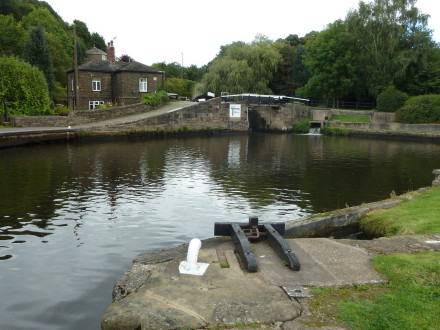
Salterhebble Calder and Hebble Navigation Yorkshire
The two staircase locks at Salterhebble and the single lock at Brooksmouth were replaced at John Smeaton's suggestion by three new locks in 1782. The Calder and Hebble Navigation, running for 21 miles from the Aire and Calder Navigation at Wakefield to Sowerby Bridge, was one of the first navigable waterways into the Pennines. It was an extension westwards of the Aire and Calder Navigation and was surveyed by John Smeaton and the later sections by James Brindley. Work began in 1758 to make the River Calder navigable above Wakefield. The navigation to Sowerby Bridge was completed in 1770, including a short branch to Dewsbury. Sir John Ramsden's Canal, now known as the Huddersfield Broad, was opened in 1776, providing a branch to Huddersfield. In 1804, the Rochdale Canal opened, branching off the Calder and Hebble just before its terminus in Sowerby Bridge, crossing the Pennines to link Yorkshire with Manchester. This information from the Pennine Waters website. www.penninewaterways.co.uk/calder/chn2.htm
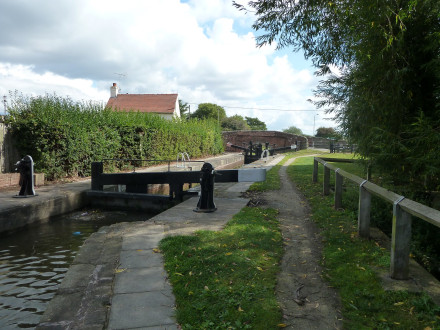
Bracebridge Lock No 51 Chesterfield Canal
The Chesterfield Canal is widely recognised as one of the most beautiful and varied waterways in England. It runs for 46 miles from the River Trent to the middle of Chesterfield, linking Nottinghamshire, South Yorkshire and Derbyshire. It was opened in 1777 and ran 46 miles (74 km) from the River Trent at West Stockwith, Nottinghamshire to Chesterfield, Derbyshire. It is currently only navigable as far as Kiveton Park near Rotherham, South Yorkshire, plus an isolated section near Chesterfield. The canal was built to export coal, limestone, and lead from Derbyshire, iron from Chesterfield, and corn, deals, timber, groceries, etc. into Derbyshire. The stone for the Palace of Westminster was quarried in South Anston, Rotherham, and transported via the canal. The canal is known locally as 'Cuckoo Dyke'.
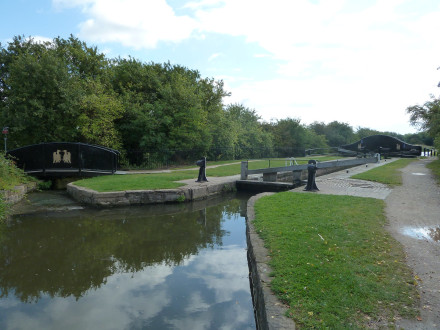
Morse Lock 49 and Bridge 41C Chesterfield Canal
The Chesterfield Canal is widely recognised as one of the most beautiful and varied waterways in England. It runs for 46 miles from the River Trent to the middle of Chesterfield, linking Nottinghamshire, South Yorkshire and Derbyshire. It was opened in 1777 and ran 46 miles (74 km) from the River Trent at West Stockwith, Nottinghamshire to Chesterfield, Derbyshire. It is currently only navigable as far as Kiveton Park near Rotherham, South Yorkshire, plus an isolated section near Chesterfield. The canal was built to export coal, limestone, and lead from Derbyshire, iron from Chesterfield, and corn, deals, timber, groceries, etc. into Derbyshire. The stone for the Palace of Westminster was quarried in South Anston, Rotherham, and transported via the canal. The canal is known locally as 'Cuckoo Dyke'.
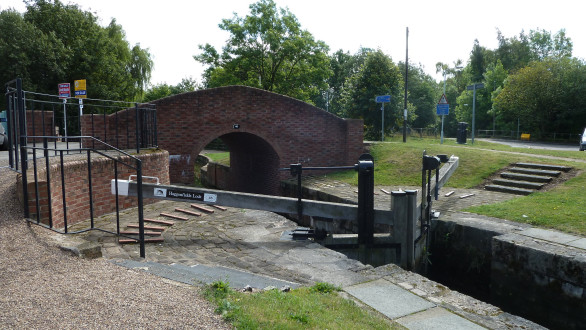
Haggonfields Lock 42 and Bridge 40 Chesterfield Canal
The Chesterfield Canal is widely recognised as one of the most beautiful and varied waterways in England. It runs for 46 miles from the River Trent to the middle of Chesterfield, linking Nottinghamshire, South Yorkshire and Derbyshire. It was opened in 1777 and ran 46 miles (74 km) from the River Trent at West Stockwith, Nottinghamshire to Chesterfield, Derbyshire. It is currently only navigable as far as Kiveton Park near Rotherham, South Yorkshire, plus an isolated section near Chesterfield. The canal was built to export coal, limestone, and lead from Derbyshire, iron from Chesterfield, and corn, deals, timber, groceries, etc. into Derbyshire. The stone for the Palace of Westminster was quarried in South Anston, Rotherham, and transported via the canal. The canal is known locally as 'Cuckoo Dyke'.
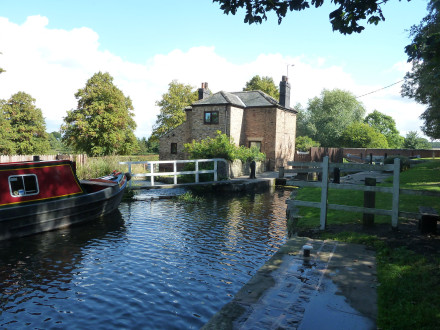
Osberton Lock Chesterfield Canal
The Chesterfield Canal is widely recognised as one of the most beautiful and varied waterways in England. It runs for 46 miles from the River Trent to the middle of Chesterfield, linking Nottinghamshire, South Yorkshire and Derbyshire. It was opened in 1777 and ran 46 miles (74 km) from the River Trent at West Stockwith, Nottinghamshire to Chesterfield, Derbyshire. It is currently only navigable as far as Kiveton Park near Rotherham, South Yorkshire, plus an isolated section near Chesterfield. The canal was built to export coal, limestone, and lead from Derbyshire, iron from Chesterfield, and corn, deals, timber, groceries, etc. into Derbyshire. The stone for the Palace of Westminster was quarried in South Anston, Rotherham, and transported via the canal. The canal is known locally as 'Cuckoo Dyke'.
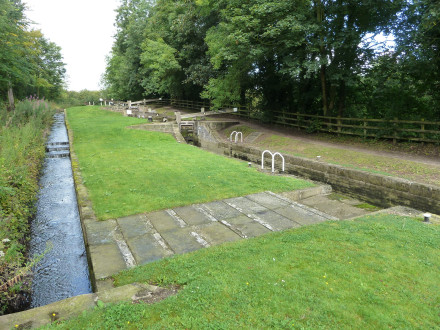
* Thorpe Top Treble Locks Chesterfield Canal
The Chesterfield Canal is widely recognised as one of the most beautiful and varied waterways in England. It runs for 46 miles from the River Trent to the middle of Chesterfield, linking Nottinghamshire, South Yorkshire and Derbyshire. It was opened in 1777 and ran 46 miles (74 km) from the River Trent at West Stockwith, Nottinghamshire to Chesterfield, Derbyshire. It is currently only navigable as far as Kiveton Park near Rotherham, South Yorkshire, plus an isolated section near Chesterfield. The canal was built to export coal, limestone, and lead from Derbyshire, iron from Chesterfield, and corn, deals, timber, groceries, etc. into Derbyshire. The stone for the Palace of Westminster was quarried in South Anston, Rotherham, and transported via the canal. The canal is known locally as 'Cuckoo Dyke'.
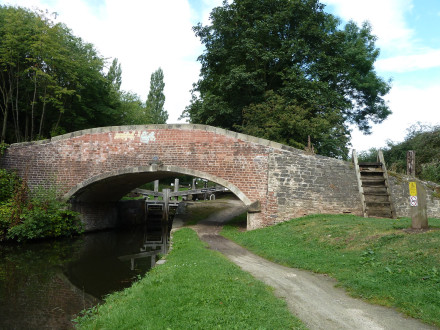
Thorpe Top Treble Locks and Bridge 35 Chesterfield Canal
The Chesterfield Canal is widely recognised as one of the most beautiful and varied waterways in England. It runs for 46 miles from the River Trent to the middle of Chesterfield, linking Nottinghamshire, South Yorkshire and Derbyshire. It was opened in 1777 and ran 46 miles (74 km) from the River Trent at West Stockwith, Nottinghamshire to Chesterfield, Derbyshire. It is currently only navigable as far as Kiveton Park near Rotherham, South Yorkshire, plus an isolated section near Chesterfield. The canal was built to export coal, limestone, and lead from Derbyshire, iron from Chesterfield, and corn, deals, timber, groceries, etc. into Derbyshire. The stone for the Palace of Westminster was quarried in South Anston, Rotherham, and transported via the canal. The canal is known locally as 'Cuckoo Dyke'.
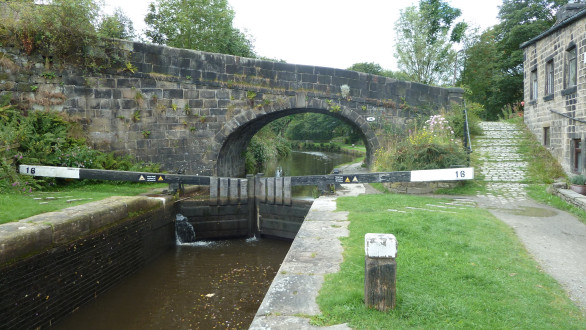
Lob Mill Lock 16 Rochdale Canal
The Rochdale Canal spans the Pennines for 32 miles from the centre of Manchester to its junction with the Calder & Hebble Navigation at Sowerby Bridge. It was one of three trans-Pennine routes, the others being the Leeds & Liverpool Canal and the Huddersfield Narrow Canal. In 1804, it became the first of them to be fully opened - perhaps due to the choice of a route over the top of the Pennines, avoiding the problems with tunnel construction that had bedevilled the other two waterways. Principal cargoes included coal, agricultural produce and materials for the textiles industry. The large number of locks on a relatively short length of canal, rising to a height of over 600 feet (180m), meant that water supply was always a problem. Several reservoirs were built especially to service the line. Locks were made large enough to accommodate broad-gauge (14ft), boats with commercial payloads of up to 70 tons. All the locks were made with exactly the same fall: this meant all the gates were the same size, making maintenance easier, and conserved water by using the same amount of water for each lock operation. The canal proved a success until the combined effects of road and rail competition took their inevitable toll. The last regular through-traffic ended just before World War II, and by the 1950s commercial carrying had virtually ceased altogether. Unusually, the canal had not been nationalised in 1948, and remained in private ownership. The canal closed as a through route just four years later. One short length remained: the nine locks in central Manchester between the Ashton Canal and the Bridgewater Canal, which was an essential part of the Cheshire Cruising Ring. Restoration work began in the 1970s, and the following decade saw much of the canal reopened on the Yorkshire side from Littleborough eastwards. This was reconnected to the waterway network in 1996 by the glorious new lock at Tuel Lane near Sowerby Bridge, which combines two earlier locks so that the canal may tunnel under a road built on its original level. At almost 20 feet (6m) deep, it vies with Bath Deep Lock for the title of the deepest lock in Britain. Restoration of the Rochdale Canal entailed the total refurbishment of 24 locks, the cutting of a new section of channel, massive dredging of the original line and the construction of 12 new road bridges. It was reopened throughout in 2002 and now, together with the reopened Huddersfield Narrow Canal, forms part of the South Pennine Cruising Ring. Information from the Waterscape website. www.waterscape.com/canals-and-rivers/rochdale-canal/history More information and history here. www.penninewaterways.co.uk/rochdale/rc2.htm
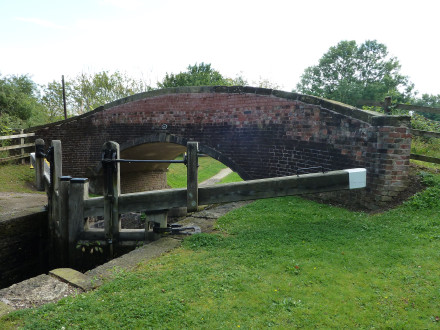
Thorpe Top Treble Lock 22 and Bridge 35 Chesterfield Canal
The Chesterfield Canal is widely recognised as one of the most beautiful and varied waterways in England. It runs for 46 miles from the River Trent to the middle of Chesterfield, linking Nottinghamshire, South Yorkshire and Derbyshire. It was opened in 1777 and ran 46 miles (74 km) from the River Trent at West Stockwith, Nottinghamshire to Chesterfield, Derbyshire. It is currently only navigable as far as Kiveton Park near Rotherham, South Yorkshire, plus an isolated section near Chesterfield. The canal was built to export coal, limestone, and lead from Derbyshire, iron from Chesterfield, and corn, deals, timber, groceries, etc. into Derbyshire. The stone for the Palace of Westminster was quarried in South Anston, Rotherham, and transported via the canal. The canal is known locally as 'Cuckoo Dyke'.
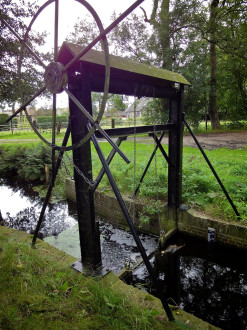
Kleine handbediende stuw
In een afwateringssloot van de Utrechtse Heuvelrug naar de Vecht. Small hand-operated weir in a stream flowing west through Maartensdijk. Google Streetview.
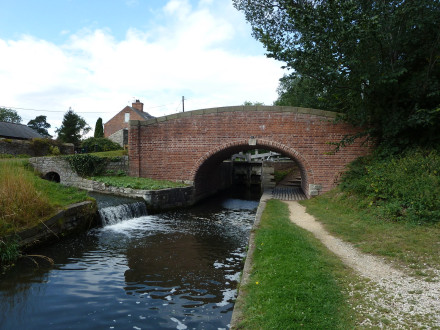
Bridge 37 and Cinderhill Lock Chesterfield Canal
The Chesterfield Canal is widely recognised as one of the most beautiful and varied waterways in England. It runs for 46 miles from the River Trent to the middle of Chesterfield, linking Nottinghamshire, South Yorkshire and Derbyshire. It was opened in 1777 and ran 46 miles (74 km) from the River Trent at West Stockwith, Nottinghamshire to Chesterfield, Derbyshire. It is currently only navigable as far as Kiveton Park near Rotherham, South Yorkshire, plus an isolated section near Chesterfield. The canal was built to export coal, limestone, and lead from Derbyshire, iron from Chesterfield, and corn, deals, timber, groceries, etc. into Derbyshire. The stone for the Palace of Westminster was quarried in South Anston, Rotherham, and transported via the canal. The canal is known locally as 'Cuckoo Dyke'.
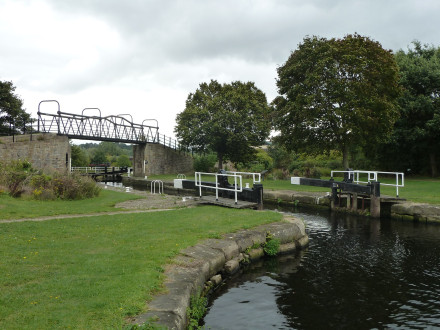
Fall Ing Lock Calder and Hebble Navigation Wakefield Yorkshire
The Calder and Hebble Navigation, running for 21 miles from the Aire and Calder Navigation at Wakefield to Sowerby Bridge, was one of the first navigable waterways into the Pennines. It was an extension westwards of the Aire and Calder Navigation and was surveyed by John Smeaton and the later sections by James Brindley. Work began in 1758 to make the River Calder navigable above Wakefield. The navigation to Sowerby Bridge was completed in 1770, including a short branch to Dewsbury. Sir John Ramsden's Canal, now known as the Huddersfield Broad, was opened in 1776, providing a branch to Huddersfield.
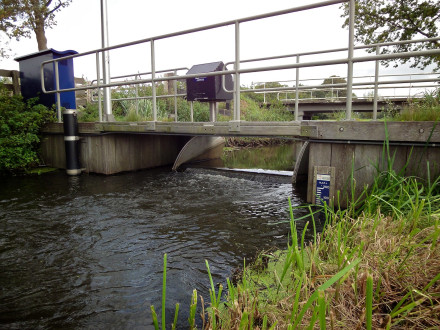
Stuw in de Blikkenburger Vaart
Weir in a small stream. Google Streetview (reversed). See also Dec 10, 2010.
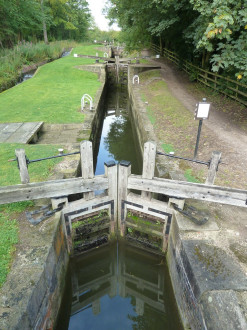
Thorpe Top Treble Locks Chesterfield Canal
The Chesterfield Canal is widely recognised as one of the most beautiful and varied waterways in England. It runs for 46 miles from the River Trent to the middle of Chesterfield, linking Nottinghamshire, South Yorkshire and Derbyshire. It was opened in 1777 and ran 46 miles (74 km) from the River Trent at West Stockwith, Nottinghamshire to Chesterfield, Derbyshire. It is currently only navigable as far as Kiveton Park near Rotherham, South Yorkshire, plus an isolated section near Chesterfield. The canal was built to export coal, limestone, and lead from Derbyshire, iron from Chesterfield, and corn, deals, timber, groceries, etc. into Derbyshire. The stone for the Palace of Westminster was quarried in South Anston, Rotherham, and transported via the canal. The canal is known locally as 'Cuckoo Dyke'.
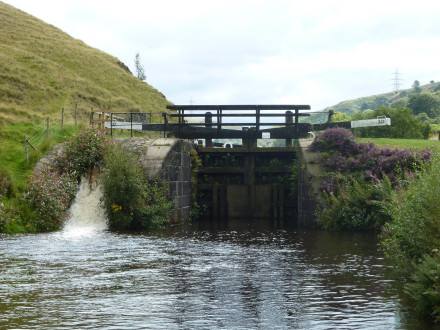
Winterbutlee Lock 30 Rochdale Canal
The Rochdale Canal spans the Pennines for 32 miles from the centre of Manchester to its junction with the Calder & Hebble Navigation at Sowerby Bridge. It was one of three trans-Pennine routes, the others being the Leeds & Liverpool Canal and the Huddersfield Narrow Canal. In 1804, it became the first of them to be fully opened - perhaps due to the choice of a route over the top of the Pennines, avoiding the problems with tunnel construction that had bedevilled the other two waterways. Principal cargoes included coal, agricultural produce and materials for the textiles industry. The large number of locks on a relatively short length of canal, rising to a height of over 600 feet (180m), meant that water supply was always a problem. Several reservoirs were built especially to service the line. Locks were made large enough to accommodate broad-gauge (14ft), boats with commercial payloads of up to 70 tons. All the locks were made with exactly the same fall: this meant all the gates were the same size, making maintenance easier, and conserved water by using the same amount of water for each lock operation. The canal proved a success until the combined effects of road and rail competition took their inevitable toll. The last regular through-traffic ended just before World War II, and by the 1950s commercial carrying had virtually ceased altogether. Unusually, the canal had not been nationalised in 1948, and remained in private ownership. The canal closed as a through route just four years later. One short length remained: the nine locks in central Manchester between the Ashton Canal and the Bridgewater Canal, which was an essential part of the Cheshire Cruising Ring. Restoration work began in the 1970s, and the following decade saw much of the canal reopened on the Yorkshire side from Littleborough eastwards. This was reconnected to the waterway network in 1996 by the glorious new lock at Tuel Lane near Sowerby Bridge, which combines two earlier locks so that the canal may tunnel under a road built on its original level. At almost 20 feet (6m) deep, it vies with Bath Deep Lock for the title of the deepest lock in Britain. Restoration of the Rochdale Canal entailed the total refurbishment of 24 locks, the cutting of a new section of channel, massive dredging of the original line and the construction of 12 new road bridges. It was reopened throughout in 2002 and now, together with the reopened Huddersfield Narrow Canal, forms part of the South Pennine Cruising Ring. Information from the Waterscape website. www.waterscape.com/canals-and-rivers/rochdale-canal/history More information and history here. www.penninewaterways.co.uk/rochdale/rc2.htm
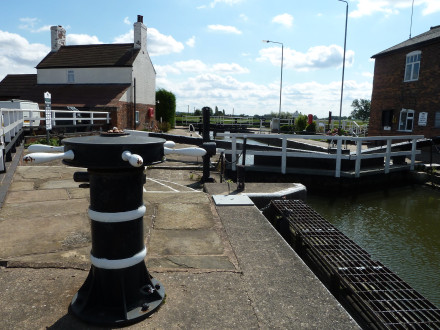
* West Stockwith Lock Chesterfield Canal / River Trent
The Chesterfield Canal is widely recognised as one of the most beautiful and varied waterways in England. It runs for 46 miles from the River Trent to the middle of Chesterfield, linking Nottinghamshire, South Yorkshire and Derbyshire. It was opened in 1777 and ran 46 miles (74 km) from the River Trent at West Stockwith, Nottinghamshire to Chesterfield, Derbyshire. It is currently only navigable as far as Kiveton Park near Rotherham, South Yorkshire, plus an isolated section near Chesterfield. The canal was built to export coal, limestone, and lead from Derbyshire, iron from Chesterfield, and corn, deals, timber, groceries, etc. into Derbyshire. The stone for the Palace of Westminster was quarried in South Anston, Rotherham, and transported via the canal. The canal is known locally as 'Cuckoo Dyke'.
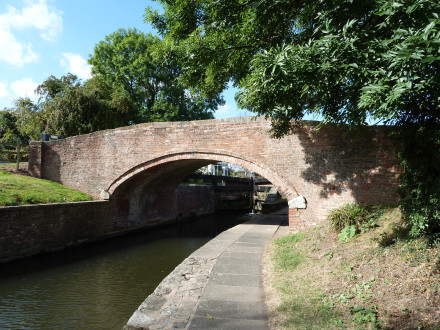
Bridge 60 and Whitsunday Pie Lock Chesterfield Canal
The Chesterfield Canal is widely recognised as one of the most beautiful and varied waterways in England. It runs for 46 miles from the River Trent to the middle of Chesterfield, linking Nottinghamshire, South Yorkshire and Derbyshire. It was opened in 1777 and ran 46 miles (74 km) from the River Trent at West Stockwith, Nottinghamshire to Chesterfield, Derbyshire. It is currently only navigable as far as Kiveton Park near Rotherham, South Yorkshire, plus an isolated section near Chesterfield. The canal was built to export coal, limestone, and lead from Derbyshire, iron from Chesterfield, and corn, deals, timber, groceries, etc. into Derbyshire. The stone for the Palace of Westminster was quarried in South Anston, Rotherham, and transported via the canal. The canal is known locally as 'Cuckoo Dyke'.
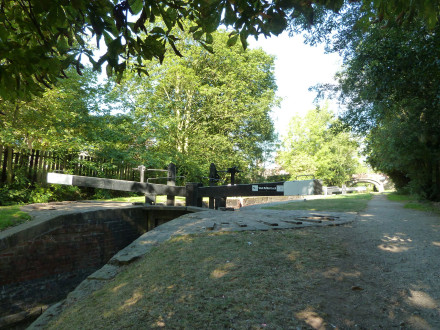
West Retford Lock Chesterfield Canal
The Chesterfield Canal is widely recognised as one of the most beautiful and varied waterways in England. It runs for 46 miles from the River Trent to the middle of Chesterfield, linking Nottinghamshire, South Yorkshire and Derbyshire. It was opened in 1777 and ran 46 miles (74 km) from the River Trent at West Stockwith, Nottinghamshire to Chesterfield, Derbyshire. It is currently only navigable as far as Kiveton Park near Rotherham, South Yorkshire, plus an isolated section near Chesterfield. The canal was built to export coal, limestone, and lead from Derbyshire, iron from Chesterfield, and corn, deals, timber, groceries, etc. into Derbyshire. The stone for the Palace of Westminster was quarried in South Anston, Rotherham, and transported via the canal. The canal is known locally as 'Cuckoo Dyke'.
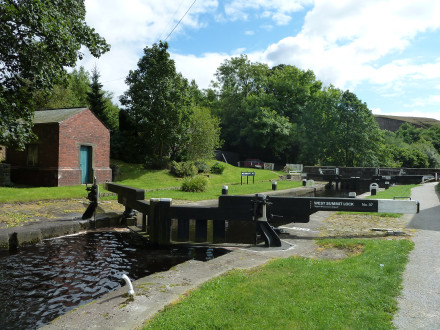
West Summit Lock 37 Rochdale Canal
The Rochdale Canal spans the Pennines for 32 miles from the centre of Manchester to its junction with the Calder & Hebble Navigation at Sowerby Bridge. It was one of three trans-Pennine routes, the others being the Leeds & Liverpool Canal and the Huddersfield Narrow Canal. In 1804, it became the first of them to be fully opened - perhaps due to the choice of a route over the top of the Pennines, avoiding the problems with tunnel construction that had bedevilled the other two waterways. Principal cargoes included coal, agricultural produce and materials for the textiles industry. The large number of locks on a relatively short length of canal, rising to a height of over 600 feet (180m), meant that water supply was always a problem. Several reservoirs were built especially to service the line. Locks were made large enough to accommodate broad-gauge (14ft), boats with commercial payloads of up to 70 tons. All the locks were made with exactly the same fall: this meant all the gates were the same size, making maintenance easier, and conserved water by using the same amount of water for each lock operation. The canal proved a success until the combined effects of road and rail competition took their inevitable toll. The last regular through-traffic ended just before World War II, and by the 1950s commercial carrying had virtually ceased altogether. Unusually, the canal had not been nationalised in 1948, and remained in private ownership. The canal closed as a through route just four years later. One short length remained: the nine locks in central Manchester between the Ashton Canal and the Bridgewater Canal, which was an essential part of the Cheshire Cruising Ring. Restoration work began in the 1970s, and the following decade saw much of the canal reopened on the Yorkshire side from Littleborough eastwards. This was reconnected to the waterway network in 1996 by the glorious new lock at Tuel Lane near Sowerby Bridge, which combines two earlier locks so that the canal may tunnel under a road built on its original level. At almost 20 feet (6m) deep, it vies with Bath Deep Lock for the title of the deepest lock in Britain. Restoration of the Rochdale Canal entailed the total refurbishment of 24 locks, the cutting of a new section of channel, massive dredging of the original line and the construction of 12 new road bridges. It was reopened throughout in 2002 and now, together with the reopened Huddersfield Narrow Canal, forms part of the South Pennine Cruising Ring. Information from the Waterscape website. www.waterscape.com/canals-and-rivers/rochdale-canal/history More information and history here. www.penninewaterways.co.uk/rochdale/rc2.htm
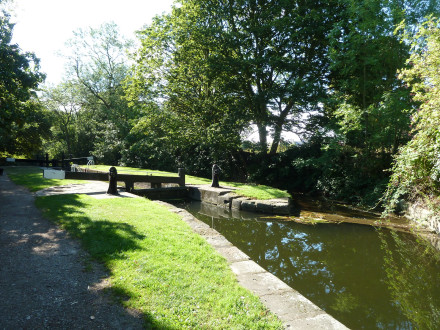
West Retford Lock Chesterfield Canal
The Chesterfield Canal is widely recognised as one of the most beautiful and varied waterways in England. It runs for 46 miles from the River Trent to the middle of Chesterfield, linking Nottinghamshire, South Yorkshire and Derbyshire. It was opened in 1777 and ran 46 miles (74 km) from the River Trent at West Stockwith, Nottinghamshire to Chesterfield, Derbyshire. It is currently only navigable as far as Kiveton Park near Rotherham, South Yorkshire, plus an isolated section near Chesterfield. The canal was built to export coal, limestone, and lead from Derbyshire, iron from Chesterfield, and corn, deals, timber, groceries, etc. into Derbyshire. The stone for the Palace of Westminster was quarried in South Anston, Rotherham, and transported via the canal. The canal is known locally as 'Cuckoo Dyke'.
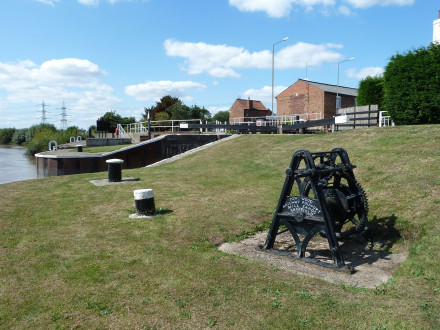
River Trent and West Stockwith Lock Chesterfield Canal
The Chesterfield Canal is widely recognised as one of the most beautiful and varied waterways in England. It runs for 46 miles from the River Trent to the middle of Chesterfield, linking Nottinghamshire, South Yorkshire and Derbyshire. It was opened in 1777 and ran 46 miles (74 km) from the River Trent at West Stockwith, Nottinghamshire to Chesterfield, Derbyshire. It is currently only navigable as far as Kiveton Park near Rotherham, South Yorkshire, plus an isolated section near Chesterfield. The canal was built to export coal, limestone, and lead from Derbyshire, iron from Chesterfield, and corn, deals, timber, groceries, etc. into Derbyshire. The stone for the Palace of Westminster was quarried in South Anston, Rotherham, and transported via the canal. The canal is known locally as 'Cuckoo Dyke'.
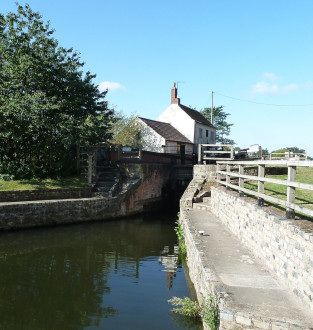
Forest Mid Top Lock Chesterfield Canal
The Chesterfield Canal is widely recognised as one of the most beautiful and varied waterways in England. It runs for 46 miles from the River Trent to the middle of Chesterfield, linking Nottinghamshire, South Yorkshire and Derbyshire. It was opened in 1777 and ran 46 miles (74 km) from the River Trent at West Stockwith, Nottinghamshire to Chesterfield, Derbyshire. It is currently only navigable as far as Kiveton Park near Rotherham, South Yorkshire, plus an isolated section near Chesterfield. The canal was built to export coal, limestone, and lead from Derbyshire, iron from Chesterfield, and corn, deals, timber, groceries, etc. into Derbyshire. The stone for the Palace of Westminster was quarried in South Anston, Rotherham, and transported via the canal. The canal is known locally as 'Cuckoo Dyke'.
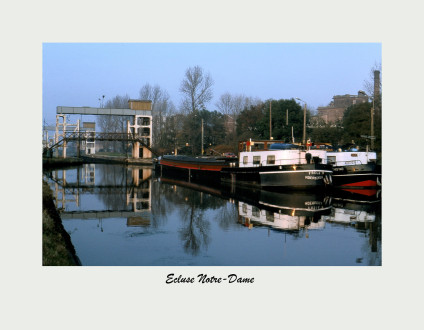
Ecluse Notre-Dame
Repos un dimanche en fin d'un bel après-midi un hiver des années 70 . La chaleur de la lumière pour nous égalait la chaleur de la cabine pour les mariniers . Diapositive numérisée . Ces photos numérisées nécessitent du travail car malgré mes précautions il y a toujours quantité de poussières, qu'il faut effacer . Valenciennes, Hainaut, Nord, France . Photographie J-P Leroy, droits réservés .
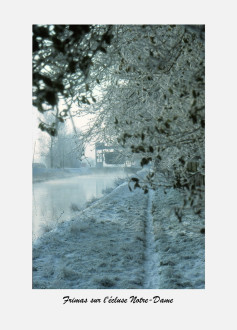
Frimas sur l'écluse Notre-Dame
Un matin dans les années 70 ( décembre 1976 ) la fée hiver a jeté de la poudre de cristal sur le canal . Diapositive numérisée . Valenciennes, Hainaut, Nord, France . Photographie J-P Leroy, droits réservés .
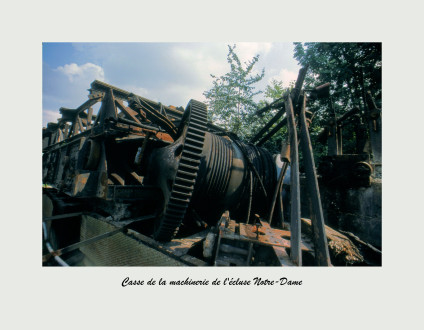
Casse de la machinerie de l'écluse Notre-Dame
Destruction de l'écluse lors de la mise à grand gabarit du canal . Diapositive numérisée . Valenciennes, Hainaut, Nord, France . Photographie J-P Leroy, droits réservés .
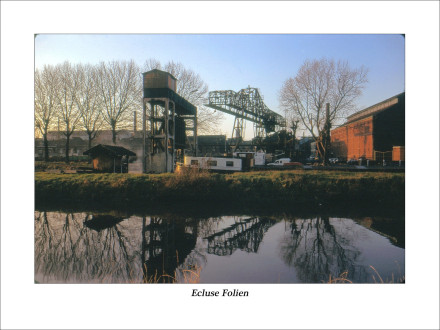
Au fil de l'Escaut dans les années 70
Un bel après-midi d'hiver s'achève en miroirs splendides sur l'écluse Folien . Le marinier va bientôt chercher une attache pour la nuit . Diapositive numérisée . Canal de l'Escaut à Valenciennes, Hainaut, Nord, France . Photographie J-P Leroy, droits réservés .
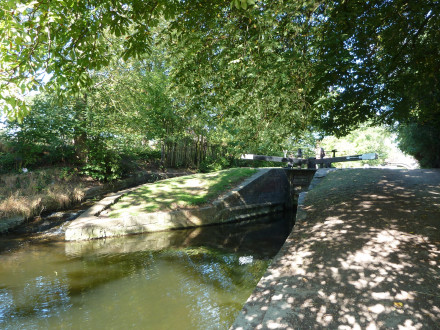
West Retford Lock Chesterfield Canal
The Chesterfield Canal is widely recognised as one of the most beautiful and varied waterways in England. It runs for 46 miles from the River Trent to the middle of Chesterfield, linking Nottinghamshire, South Yorkshire and Derbyshire. It was opened in 1777 and ran 46 miles (74 km) from the River Trent at West Stockwith, Nottinghamshire to Chesterfield, Derbyshire. It is currently only navigable as far as Kiveton Park near Rotherham, South Yorkshire, plus an isolated section near Chesterfield. The canal was built to export coal, limestone, and lead from Derbyshire, iron from Chesterfield, and corn, deals, timber, groceries, etc. into Derbyshire. The stone for the Palace of Westminster was quarried in South Anston, Rotherham, and transported via the canal. The canal is known locally as 'Cuckoo Dyke'.
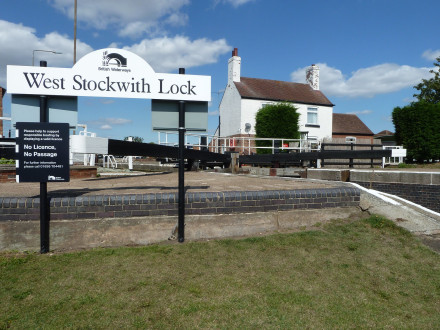
West Stockwith Lock Chesterfield Canal
The Chesterfield Canal is widely recognised as one of the most beautiful and varied waterways in England. It runs for 46 miles from the River Trent to the middle of Chesterfield, linking Nottinghamshire, South Yorkshire and Derbyshire. It was opened in 1777 and ran 46 miles (74 km) from the River Trent at West Stockwith, Nottinghamshire to Chesterfield, Derbyshire. It is currently only navigable as far as Kiveton Park near Rotherham, South Yorkshire, plus an isolated section near Chesterfield. The canal was built to export coal, limestone, and lead from Derbyshire, iron from Chesterfield, and corn, deals, timber, groceries, etc. into Derbyshire. The stone for the Palace of Westminster was quarried in South Anston, Rotherham, and transported via the canal. The canal is known locally as 'Cuckoo Dyke'.
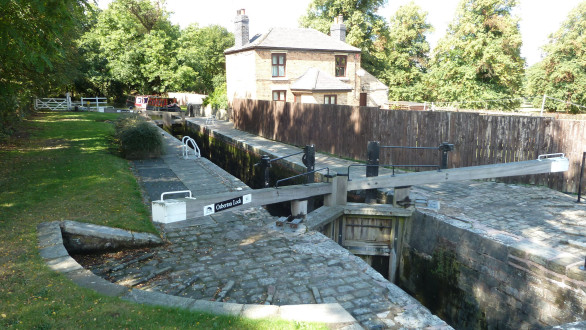
Osberton Lock Chesterfield Canal
The Chesterfield Canal is widely recognised as one of the most beautiful and varied waterways in England. It runs for 46 miles from the River Trent to the middle of Chesterfield, linking Nottinghamshire, South Yorkshire and Derbyshire. It was opened in 1777 and ran 46 miles (74 km) from the River Trent at West Stockwith, Nottinghamshire to Chesterfield, Derbyshire. It is currently only navigable as far as Kiveton Park near Rotherham, South Yorkshire, plus an isolated section near Chesterfield. The canal was built to export coal, limestone, and lead from Derbyshire, iron from Chesterfield, and corn, deals, timber, groceries, etc. into Derbyshire. The stone for the Palace of Westminster was quarried in South Anston, Rotherham, and transported via the canal. The canal is known locally as 'Cuckoo Dyke'.
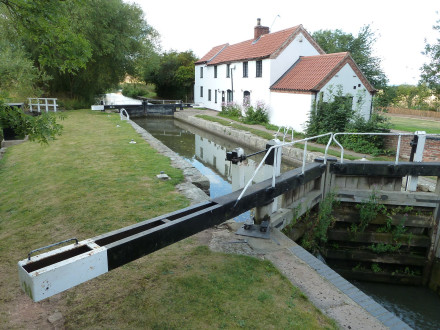
Gringley Lock Chesterfield Canal
The Chesterfield Canal is widely recognised as one of the most beautiful and varied waterways in England. It runs for 46 miles from the River Trent to the middle of Chesterfield, linking Nottinghamshire, South Yorkshire and Derbyshire. It was opened in 1777 and ran 46 miles (74 km) from the River Trent at West Stockwith, Nottinghamshire to Chesterfield, Derbyshire. It is currently only navigable as far as Kiveton Park near Rotherham, South Yorkshire, plus an isolated section near Chesterfield. The canal was built to export coal, limestone, and lead from Derbyshire, iron from Chesterfield, and corn, deals, timber, groceries, etc. into Derbyshire. The stone for the Palace of Westminster was quarried in South Anston, Rotherham, and transported via the canal. The canal is known locally as 'Cuckoo Dyke'.
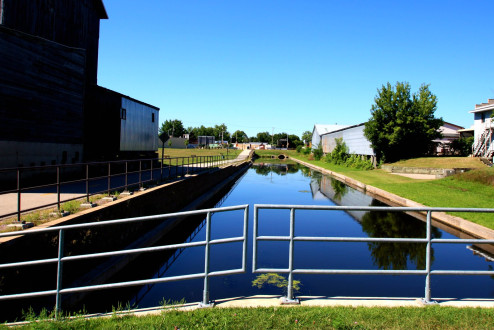
Portage Canal
6083588568_b17156bf35_k
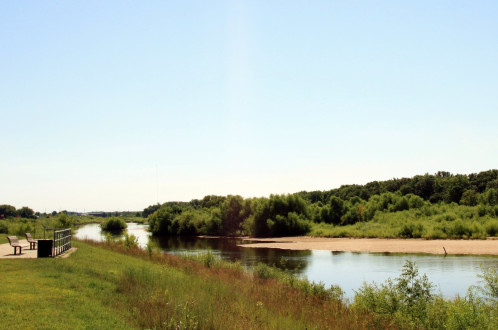
Portage Levee
along Wisconsin River
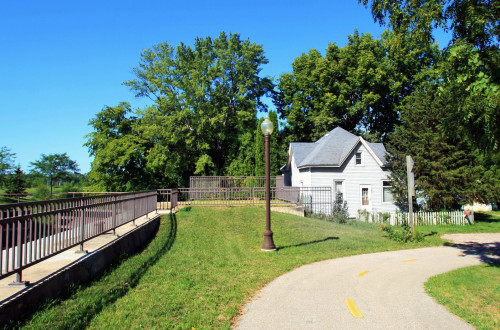
Portage Lock and Keepers' House
6083556758_7bb1050b86_k
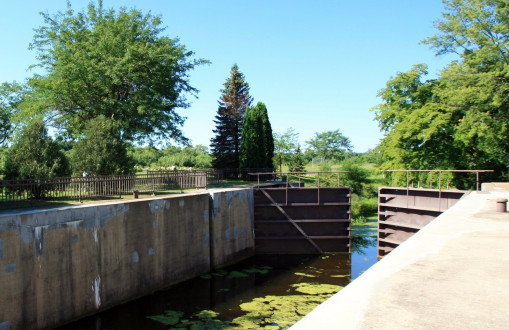
Portage Lock and Canal
6083016625_72b0af4eb2_k
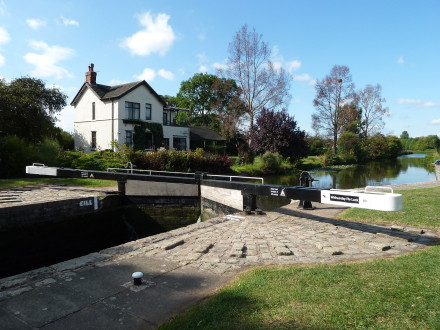
Whitsunday Pie Lock Chesterfield Canal
The Chesterfield Canal is widely recognised as one of the most beautiful and varied waterways in England. It runs for 46 miles from the River Trent to the middle of Chesterfield, linking Nottinghamshire, South Yorkshire and Derbyshire. It was opened in 1777 and ran 46 miles (74 km) from the River Trent at West Stockwith, Nottinghamshire to Chesterfield, Derbyshire. It is currently only navigable as far as Kiveton Park near Rotherham, South Yorkshire, plus an isolated section near Chesterfield. The canal was built to export coal, limestone, and lead from Derbyshire, iron from Chesterfield, and corn, deals, timber, groceries, etc. into Derbyshire. The stone for the Palace of Westminster was quarried in South Anston, Rotherham, and transported via the canal. The canal is known locally as 'Cuckoo Dyke'.
![<a href="http://loc.alize.us/#/flickr:6006688272" rel="noreferrer nofollow">See where this picture was taken.</a> <a href="http://www.flickr.com/groups/geotagging/discuss/72157594165549916/">[?]</a>](https://www.remosworld.ch/wp-content/plugins/justified-image-grid/timthumb.php?src=https%3A%2F%2Flive.staticflickr.com%2F6003%2F6006688272_7d433654b4_b.jpg&h=330&q=90&f=.jpg)
See where this picture was taken. [?]
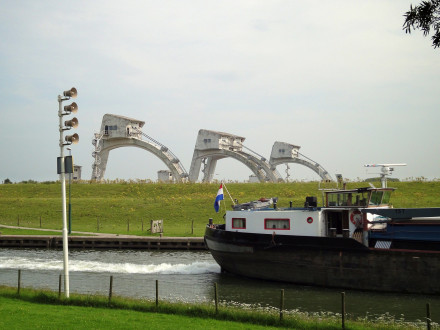
Sluis en stuw bij Maurik
Lock and weir in the river Lek (Rhine estuary) near Maurik.
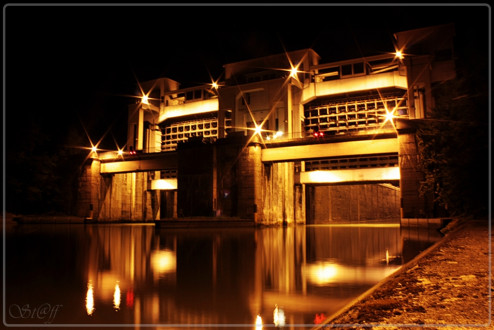
Ecluse de Kembs
5936369217_be5d79480c_b

Ecluse de Kembs
5936369521_da1901644c_b
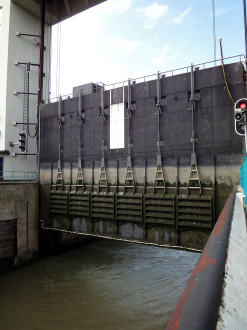
Sluisdeur in de Prinses Beatrixsluis
Sluisdeur van de schutsluis in het Lekkanaal bij Vreeswijk, scheiding tussen rivier de Lek en het Amsterdam-Rijnkanaal. Oorspronkelijke oplevering in 1938, heropend na renovatie in 1999. Guillotine gate of the lock between river Lek and Amsterdam-Rhine Canal near Nieuwegein, built 1938 renovated 1999.
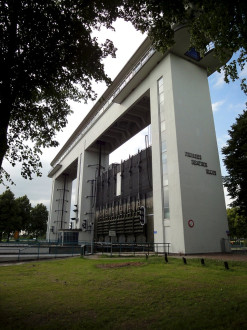
Prinses Beatrixsluizen
In het Lekkanaal bij Vreeswijk, scheiding tussen rivier de Lek en het Amsterdam-Rijnkanaal. Oorspronkelijke oplevering in 1938, heropend na renovatie in 1999. Lock between river Lek and Amsterdam-Rhine Canal near Nieuwegein, built 1938 renovated 1999.
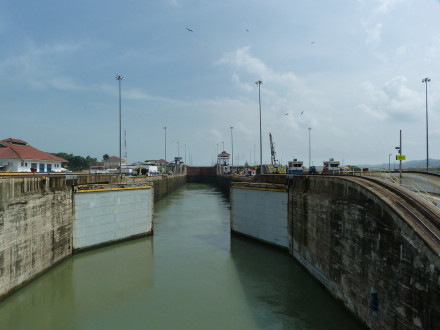
Panama Canal
Gatun Locks
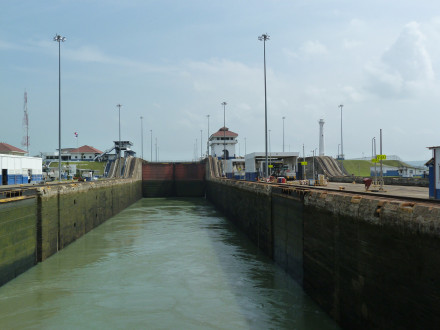
Panama Canal
Gatun Locks
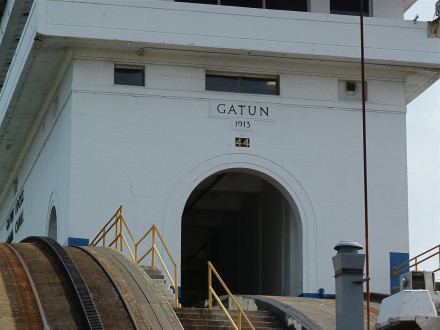
Panama Canal
Guard House
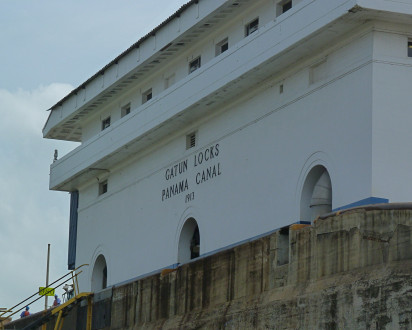
Panama Canal
Guard House
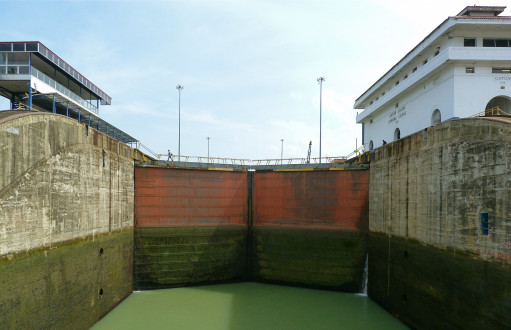
Panama Canal
Gatun Locks
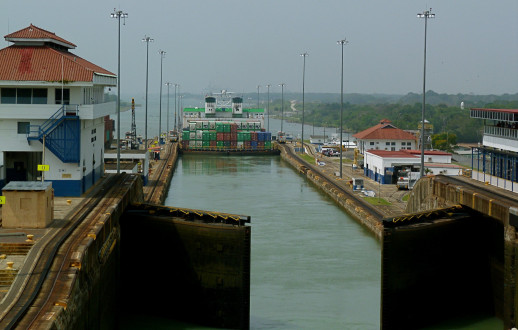
Panama Canal
Gatun Locks , just about to enter the second lock down .
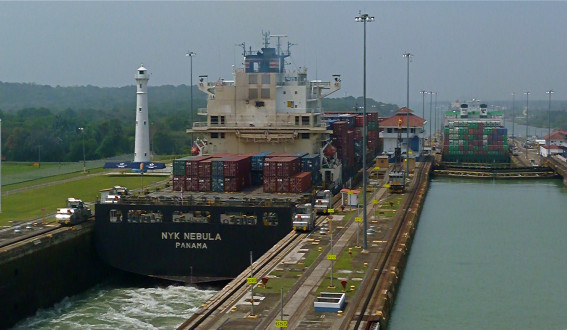
Panama Canal
Gatun Locks
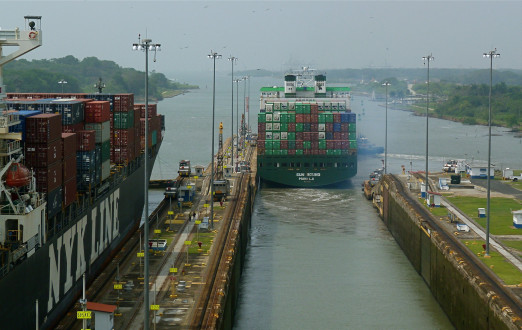
Panama Canal
Gatun Locks
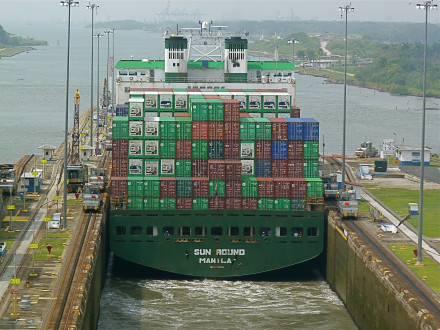
Panama Canal
Gatun Locks, this ship is three locks down our ship is in the second lock down , out in front is the exit of the Panama Canal into the Atlantic Ocean .
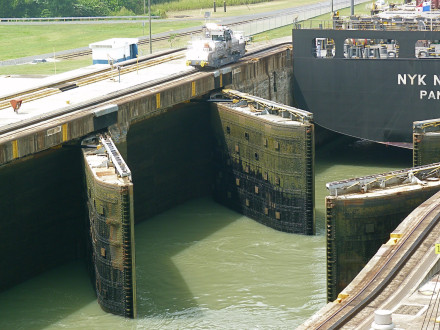
Panama Canal
Gatun Locks
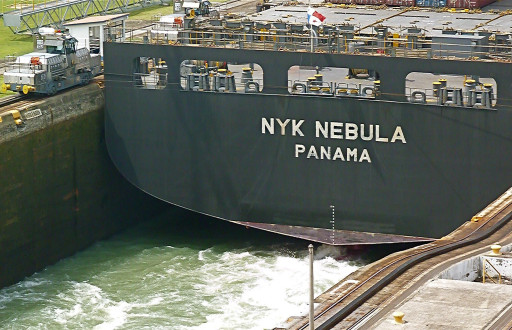
Panama Canal
Gatun Locks
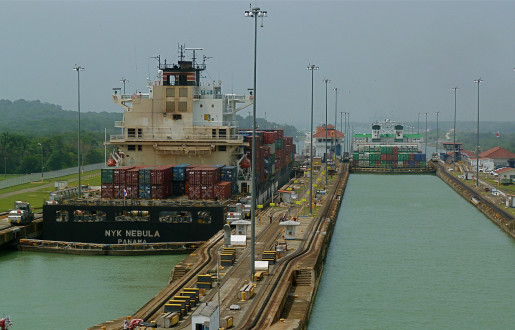
Panama Canal
Gatun Locks
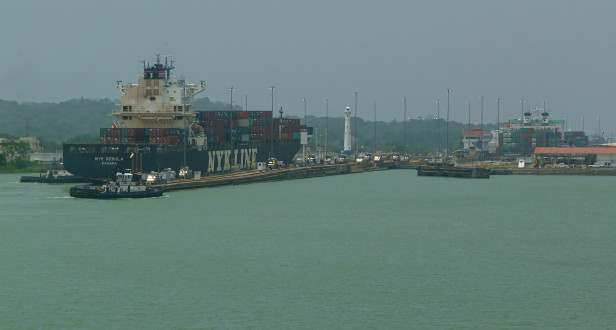
Panama Canal
entering Gatun Locks
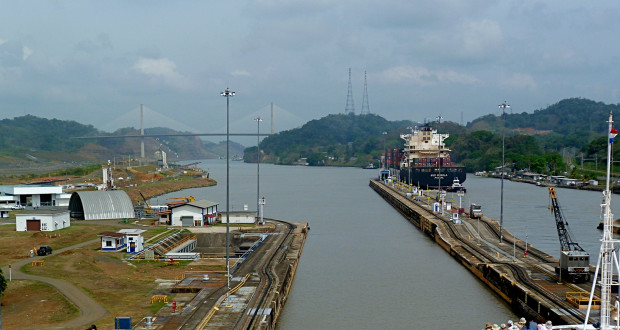
Pedro Miguel Locks
Panama Canal
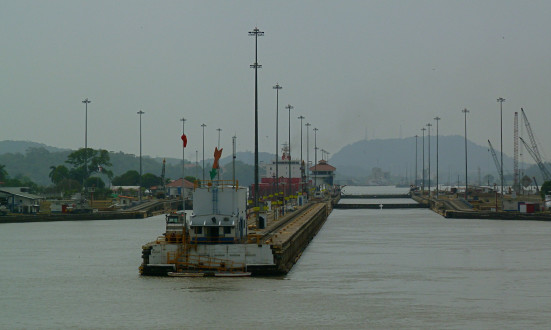
Pedro Miguel Locks
Panama Canal
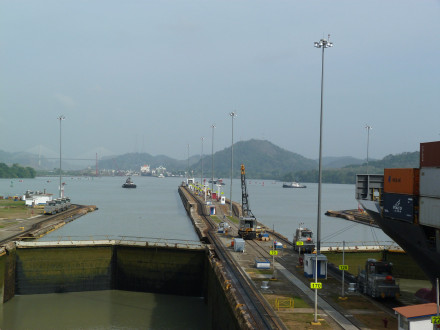
Miraflores Locks
Panama Canal
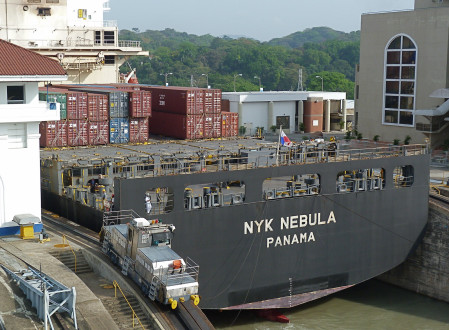
Miraflores Locks
Panama Canal
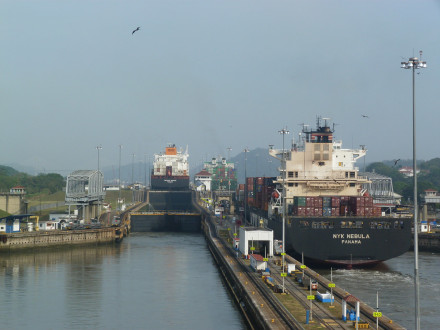
Miraflores Lock
Panama Canal
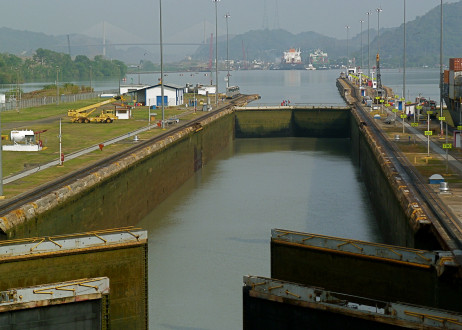
Miraflores Locks
Panama Canal
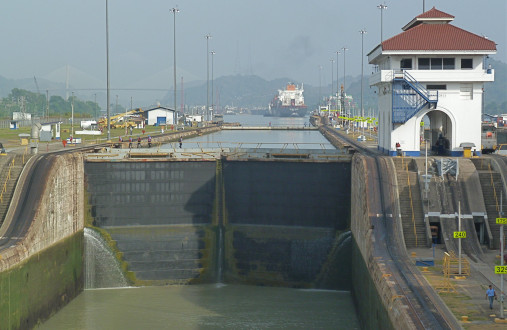
Miraflores Locks
Panama Canal
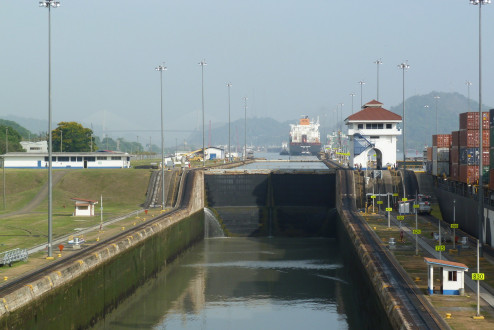
Miraflores Locks
Panama Canal
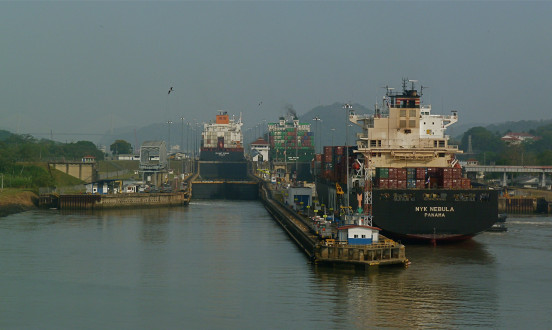
Miraflores Lock
Panama Canal
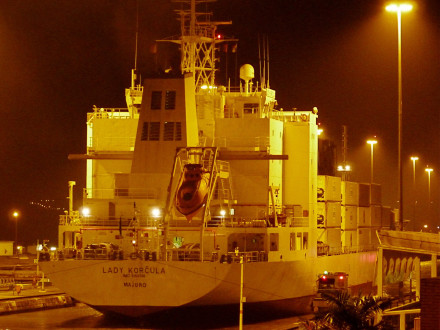
Miraflores Locks , Panama
Night time visit
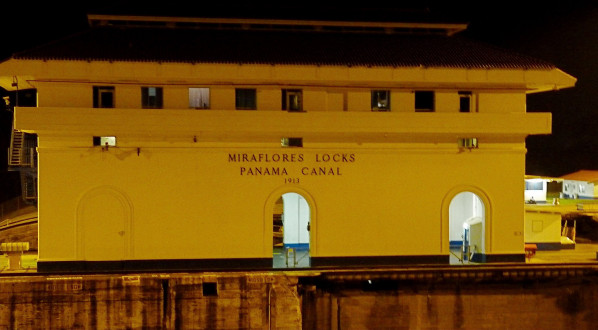
Panama Canal
5619707346_7544e7f6f8_k
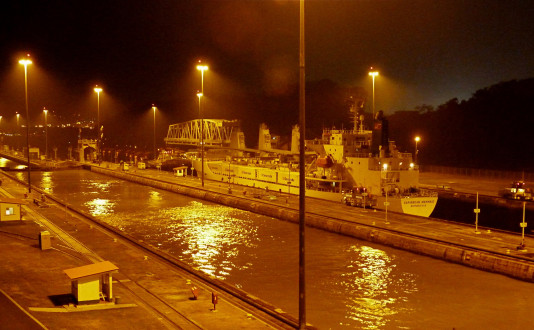
Miraflores Locks
Panama Canal
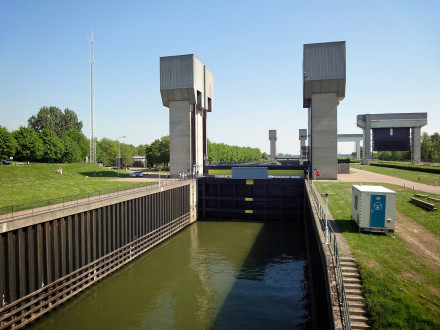
Prinses Irenesluizen
Sluis in het Amsterdam-Rijnkanaal ter hoogte van Wijk bij Duurstede, naar rivier de Lek. Lock in the Amsterdam-Rhine Canal where it crosses the river Lek at Wijk bij Duurstede. Google Streetview.
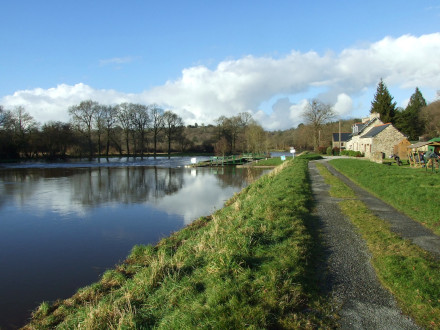
Lennon : Ecluse de Rozvéguen
L'écluse de Rozvéguen sur l'Aulne, canal de Nantes à Brest . Finistère, 01-2010 . J-P Leroy, droits réservés .
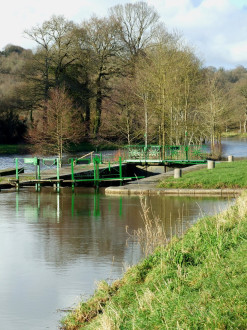
Lennon : Ecluse de Rozvéguen
L'écluse de Rozvéguen sur l'Aulne, canal de Nantes à Brest . Finistère, 01-2010 . J-P Leroy, droits réservés .
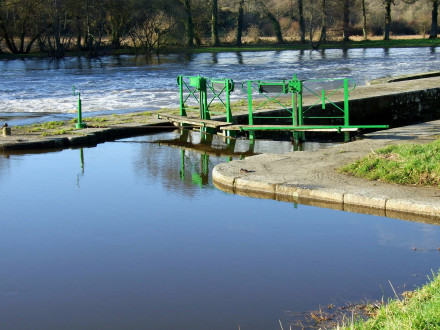
Lennon : Ecluse de Rozvéguen
L'écluse de Rozvéguen sur l'Aulne, canal de Nantes à Brest . Finistère, 01-2010 . J-P Leroy, droits réservés .
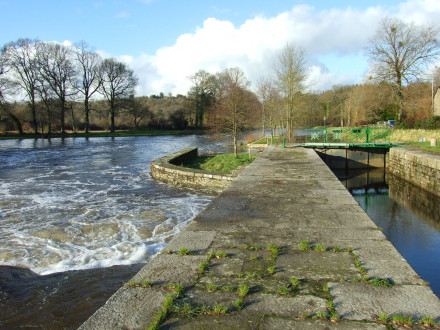
Lennon : Ecluse de Rozvéguen
L'écluse de Rozvéguen sur l'Aulne, canal de Nantes à Brest . Finistère, 01-2010 . J-P Leroy, droits réservés .
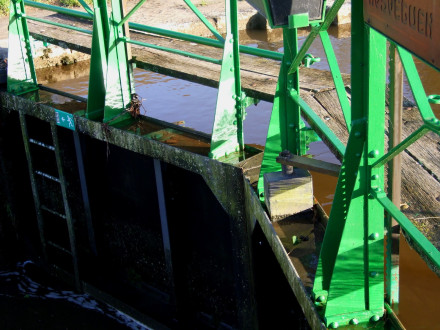
Lennon : Ecluse de Rozvéguen
L'écluse de Rozvéguen sur l'Aulne, canal de Nantes à Brest . Finistère, 01-2010 . J-P Leroy, droits réservés .
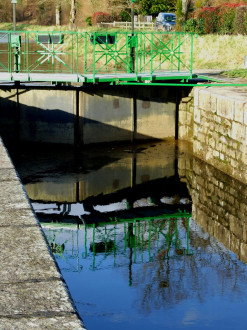
Lennon : Ecluse de Rozvéguen
L'écluse de Rozvéguen sur l'Aulne, canal de Nantes à Brest . Finistère, 01-2010 . J-P Leroy, droits réservés .
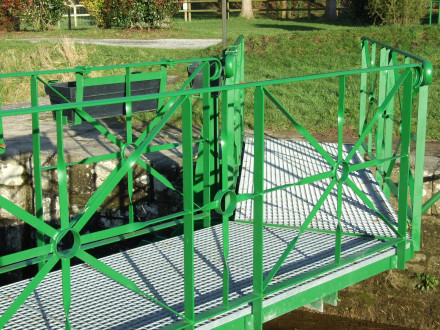
Lennon : Ecluse de Rozvéguen
L'écluse de Rozvéguen sur l'Aulne, canal de Nantes à Brest . Finistère, 01-2010 . J-P Leroy, droits réservés .
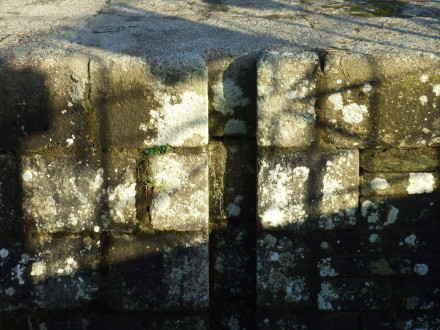
Lennon : Ecluse de Rozvéguen
L'écluse de Rozvéguen sur l'Aulne, canal de Nantes à Brest . Détail de la feuillure destiné à recevoir un batardeau . Finistère, 01-2010 . J-P Leroy, droits réservés .
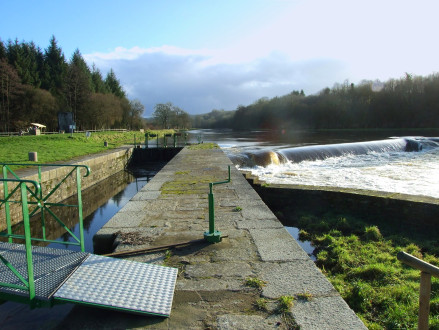
Lennon : Ecluse de Rozvéguen
L'écluse de Rozvéguen sur l'Aulne, canal de Nantes à Brest . Finistère, 01-2010 . J-P Leroy, droits réservés .
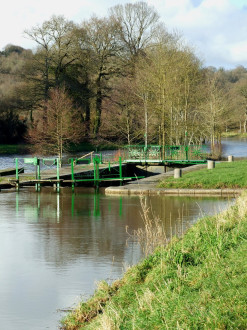
Lennon : Ecluse de Rozvéguen
L'écluse de Rozvéguen sur l'Aulne, canal de Nantes à Brest . Finistère, 01-2010 . J-P Leroy, droits réservés .
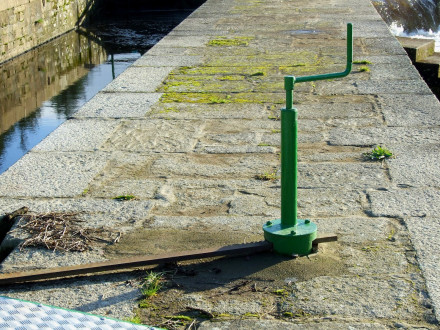
Lennon : Ecluse de Rozvéguen
L'écluse de Rozvéguen sur l'Aulne, canal de Nantes à Brest . Finistère, 01-2010 . J-P Leroy, droits réservés .
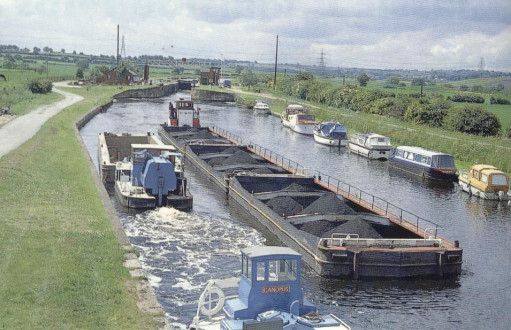
Kings Road Lock Aire and Calder Navigation Altofts Yorkshire
Not my photo, but one of my favourites. This is scanned from a Waterways World magazine article of 1992. The photo was taken in 1991. My old boat is third from the right. The Aire and Calder Navigation Company made the River Aire navigable as far as Leeds in 1704 with the construction of locks and lock cuts between Knottingley and Leeds. Two years later, the company made the River Calder navigable from Castleford to Wakefield. It was soon found that the navigation was inadequate for the potential demand. Shoals, shallow lock cills and low water levels in the easterly section of the Aire meant that passage was restricted to smaller, shallow-draughted boats New locks and longer sections of cut were added between Castleford and Leeds. In 1821 a new 17 mile cut was constructed from Knottingley to the River Ouse at Goole, where docks were built. By 1835 all the locks had been rebuilt to have depth of 7 feet over the cills. In 1839, a twisting length of the Calder was bypassed by a straighter 4 mile section between Fairies Hill and Broadreach, also with a depth of 7 feet. This included building an aqueduct across the river at Stanley Ferry. William Bartholomew, the cheif engineer between 1853 and 1895, developed the "Tom Puddings" - compartment boats that were put together in trains to be pushed by a tug. They transported coal from the Yorkshire collieries to Goole and later to power stations. The compartment boats seen here are a 20th century development of the "Tom Puddings" system and were used to feed the coal-fired Ferrybridge "C" power station. Starting in 1967, Cawoods Hargreaves used trains of three tubs or coal pans, which were rigidly connected, and pushed by a tug when loaded. The trains were filled with coal using canalside chutes at the colliery and pushed to the power station, where a hoist lifted each pan from the canal and upturned it to drop it contents onto a conveyor belt. Nine tugs and 35 pans were employed, with each pan holding around 170 tonnes. By the time the final load left Astley colliery in December 2002, 43 million tonnes had been delivered to Ferrybridge in this way The navigation is still used for commercial traffic with such cargoes as oil and sand being carried. This information from Wikipedia and the Pennine Waterways website.
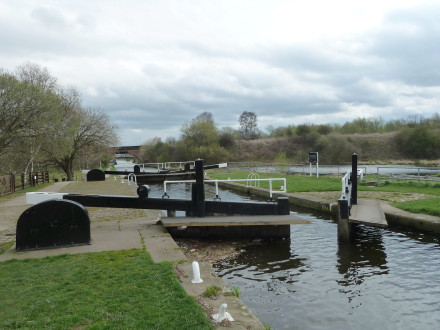
Broad Cut Top Lock Calder and Hebble Navigation Wakefield Yorkshire
The Calder and Hebble Navigation, running for 21 miles from the Aire and Calder Navigation at Wakefield to Sowerby Bridge, was one of the first navigable waterways into the Pennines. It was an extension westwards of the Aire and Calder Navigation and was surveyed by John Smeaton and the later sections by James Brindley. Work began in 1758 to make the River Calder navigable above Wakefield. The navigation to Sowerby Bridge was completed in 1770, including a short branch to Dewsbury. Sir John Ramsden's Canal, now known as the Huddersfield Broad, was opened in 1776, providing a branch to Huddersfield. In 1804, the Rochdale Canal opened, branching off the Calder and Hebble just before its terminus in Sowerby Bridge, crossing the Pennines to link Yorkshire with Manchester. This information from the Pennine Waters website. www.penninewaterways.co.uk/calder/chn2.htm
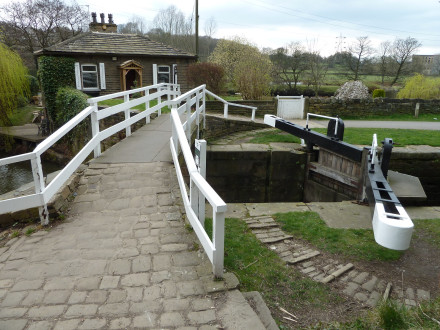
Ganny Lock Calder and Hebble Navigation Brighouse Yorkshire
The Calder and Hebble Navigation, running for 21 miles from the Aire and Calder Navigation at Wakefield to Sowerby Bridge, was one of the first navigable waterways into the Pennines. It was an extension westwards of the Aire and Calder Navigation and was surveyed by John Smeaton and the later sections by James Brindley. Work began in 1758 to make the River Calder navigable above Wakefield. The navigation to Sowerby Bridge was completed in 1770, including a short branch to Dewsbury. Sir John Ramsden's Canal, now known as the Huddersfield Broad, was opened in 1776, providing a branch to Huddersfield. In 1804, the Rochdale Canal opened, branching off the Calder and Hebble just before its terminus in Sowerby Bridge, crossing the Pennines to link Yorkshire with Manchester. This information from the Pennine Waters website. www.penninewaterways.co.uk/calder/chn2.htm
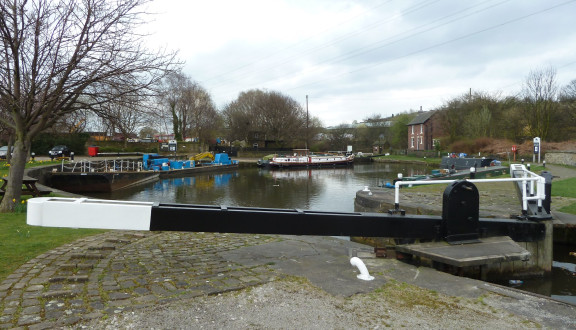
Brighouse Basin Calder and Hebble Navigation Brighouse Yorkshire
In the 18th Century Brighouse, near Huddersfield, was a busy inland port playing a major role in the movement of industrial goods which were shipped along the Calder & Hebble Navigation. Today, no commercial traffic uses these waters, but the restored canal basin still has a part to play in the life of the local community. A great many pleasure craft are moored here and the basin itself is a popular venue with tourists. The Calder and Hebble Navigation, running for 21 miles from the Aire and Calder Navigation at Wakefield to Sowerby Bridge, was one of the first navigable waterways into the Pennines. It was an extension westwards of the Aire and Calder Navigation and was surveyed by John Smeaton and the later sections by James Brindley. Work began in 1758 to make the River Calder navigable above Wakefield. The navigation to Sowerby Bridge was completed in 1770, including a short branch to Dewsbury. Sir John Ramsden's Canal, now known as the Huddersfield Broad, was opened in 1776, providing a branch to Huddersfield. In 1804, the Rochdale Canal opened, branching off the Calder and Hebble just before its terminus in Sowerby Bridge, crossing the Pennines to link Yorkshire with Manchester. This information from the Pennine Waters website. www.penninewaterways.co.uk/calder/chn2.htm
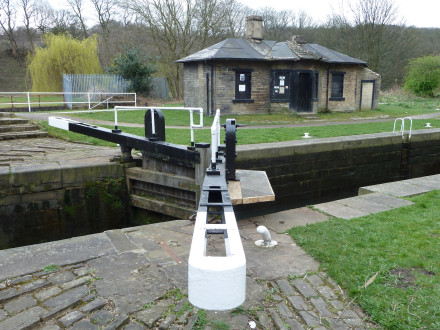
Brookfoot Lock Calder and Hebble Navigation Brighouse Yorkshire
The late 18th century Lock Keepers, the lock and the adjacent footbridge are Grade II listed. The Calder and Hebble Navigation, running for 21 miles from the Aire and Calder Navigation at Wakefield to Sowerby Bridge, was one of the first navigable waterways into the Pennines. It was an extension westwards of the Aire and Calder Navigation and was surveyed by John Smeaton and the later sections by James Brindley. Work began in 1758 to make the River Calder navigable above Wakefield. The navigation to Sowerby Bridge was completed in 1770, including a short branch to Dewsbury. Sir John Ramsden's Canal, now known as the Huddersfield Broad, was opened in 1776, providing a branch to Huddersfield. In 1804, the Rochdale Canal opened, branching off the Calder and Hebble just before its terminus in Sowerby Bridge, crossing the Pennines to link Yorkshire with Manchester. This information from the Pennine Waters website. www.penninewaterways.co.uk/calder/chn2.htm
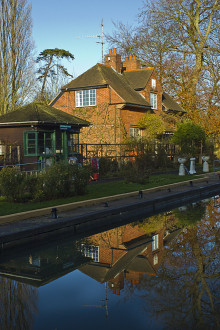
Sonning Lock Keepers House
The lock keepers house on the river Thames at Sonning on a chill day. The water was like glass
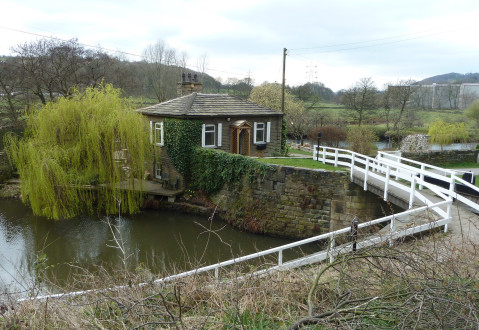
Ganny Lock Calder and Hebble Navigation Brighouse Yorkshire
The Calder and Hebble Navigation, running for 21 miles from the Aire and Calder Navigation at Wakefield to Sowerby Bridge, was one of the first navigable waterways into the Pennines. It was an extension westwards of the Aire and Calder Navigation and was surveyed by John Smeaton and the later sections by James Brindley. Work began in 1758 to make the River Calder navigable above Wakefield. The navigation to Sowerby Bridge was completed in 1770, including a short branch to Dewsbury. Sir John Ramsden's Canal, now known as the Huddersfield Broad, was opened in 1776, providing a branch to Huddersfield. In 1804, the Rochdale Canal opened, branching off the Calder and Hebble just before its terminus in Sowerby Bridge, crossing the Pennines to link Yorkshire with Manchester. This information from the Pennine Waters website. www.penninewaterways.co.uk/calder/chn2.htm
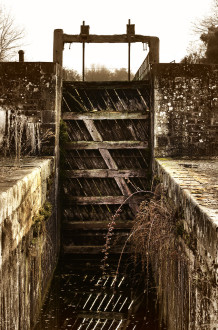
IMG_2544_5_6_tonemapped
5503768936_53c8466db7_h
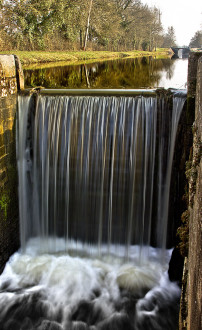
IMG_2447
5503752478_d8f88cbfb8_h
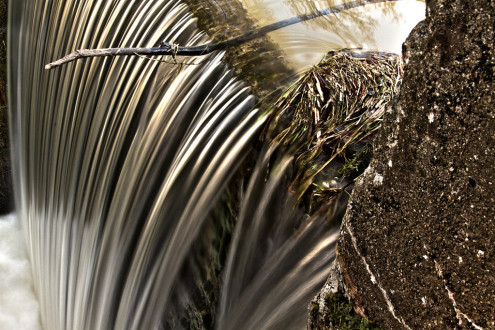
IMG_2463
5503165677_acc174cd0b_b
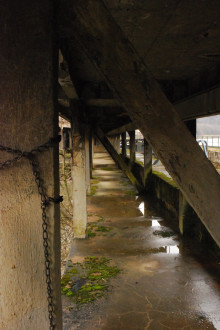
Ecluse
5489944338_bef547f70b_k
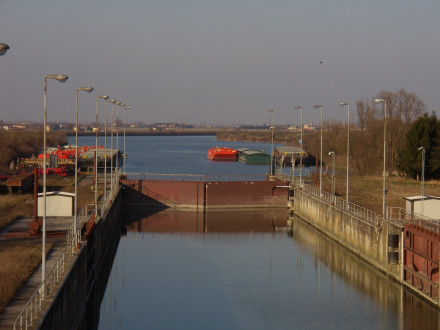
chiusa (lock) e chiatte
chiusa chiatte conca Volta Grimana tra Porto Viro e Loreo Lock (water transport)
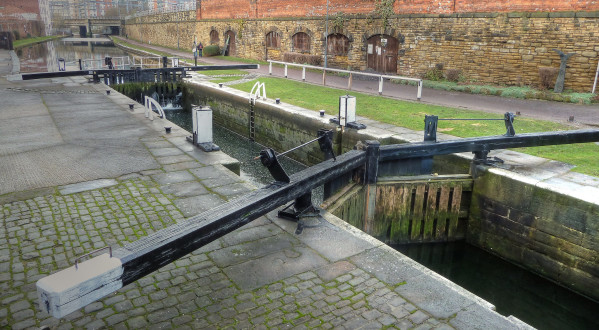
Office Lock, Leeds and Liverpool Canal Lock No 2, Leeds, Yorkshire
The Leeds & Liverpool Canal is 127 miles long, with 91 locks, and is the single longest canal built by one company in the United Kingdom. It took well over 40 years to complete, after a great deal of disagreement about its route from Lancashire to Yorkshire. The company was established in 1770 and construction began at once, with John Longbotham as its engineer; later he was succeeded by Robert Whitworth, and after many delays due to the outbreak of war with France in 1792, it was finally completed in 1816.
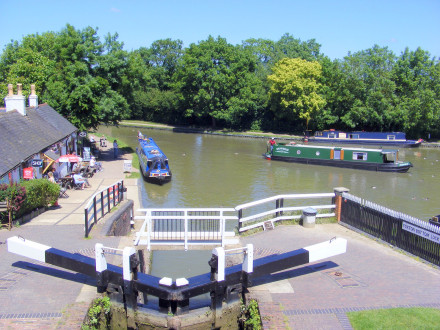
Foxton Locks.in Leicestershire.
my husband took these photos, it was a lovely summers day.
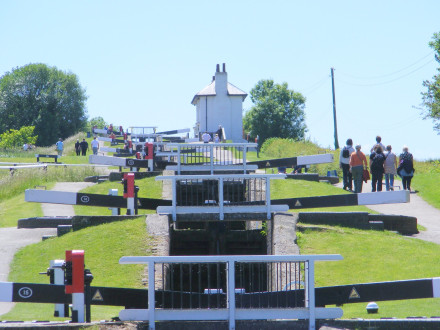
Foxton locks.
5375815721_2849456f8a_k
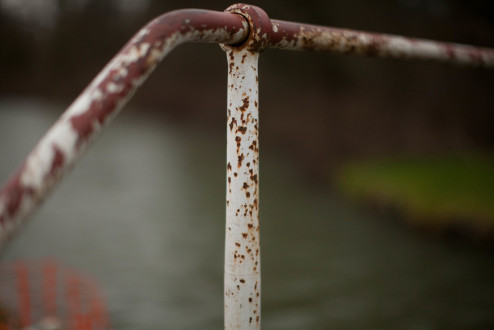
_MG_0845.jpg
5360990760_ed6462850c_k
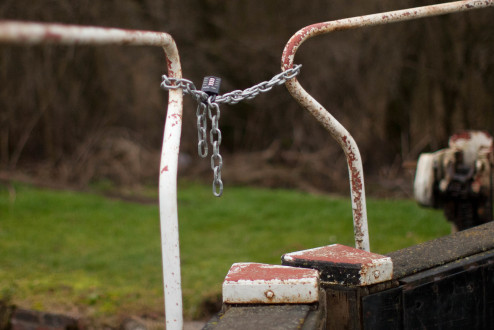
_MG_0843.jpg
5360989142_db02aedb8a_k
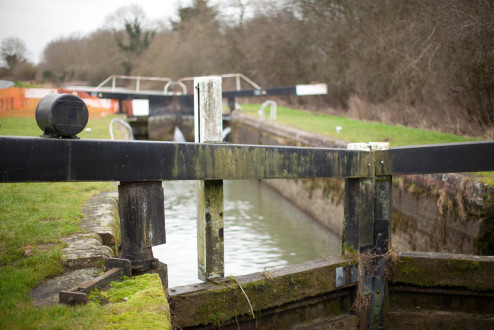
_MG_0840.jpg
5360988018_934acec58e_k
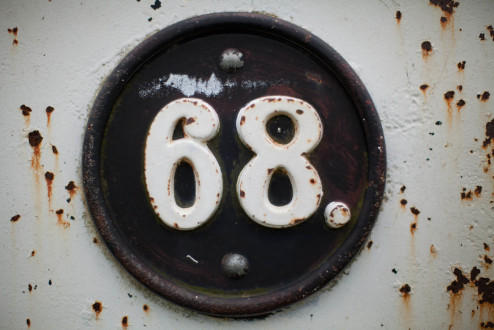
_MG_0838.jpg
5360981752_4b1ddac70e_k
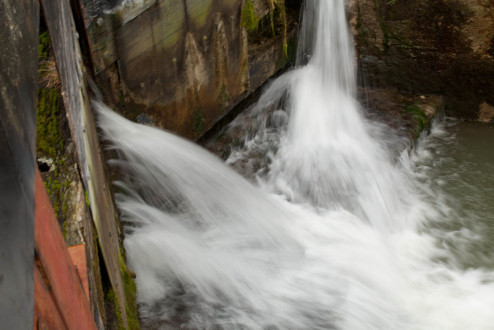
_MG_0846.jpg
5360378581_9c4c0ab5e4_k
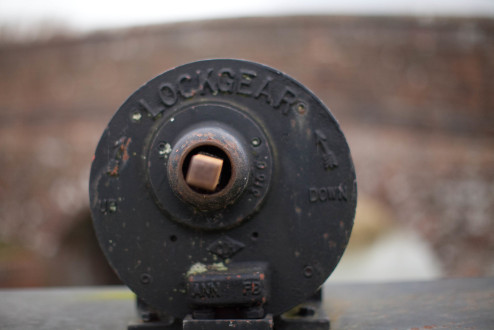
_MG_0839.jpg
5360371309_337f5818ca_k
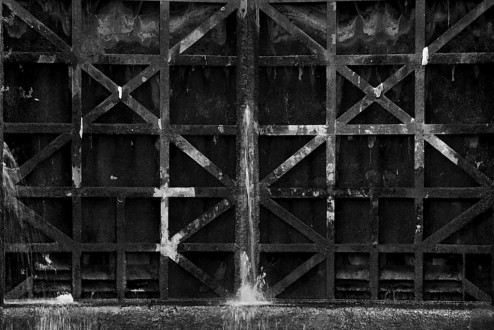
France, Paris - Canal Saint-Martin - Porte ecluse / Canal lock door
France, Paris - Canal Saint-Martin Porte d'écluse - Canal lock door
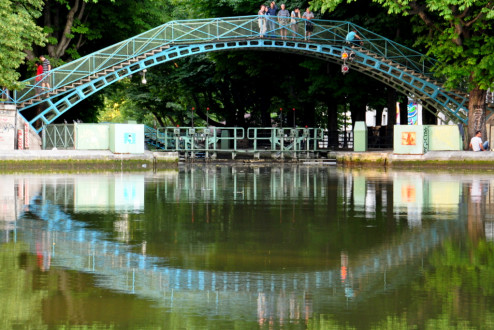
Canal Saint-Martin - Paris - Passerelle square des Recollets - 09-08-2010 22-08-20
France, Paris - Canal Saint-Martin
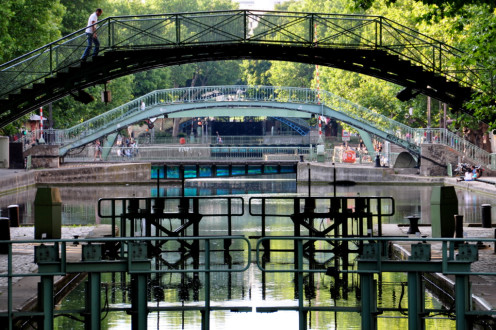
Canal Saint-Martin - Paris - Passerelles - 09-08-2010 19-12-05
France, Paris - Canal Saint Martin
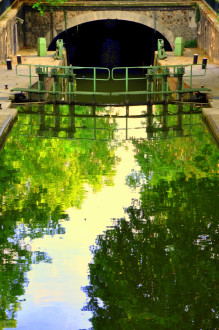
France, Paris - Canal Saint-Martin - Entrée tunnel nord
France, Paris - Canal Saint-Martin Entrée nord du tunnel du canal Saint- Martin vu de la passerelle Bichat
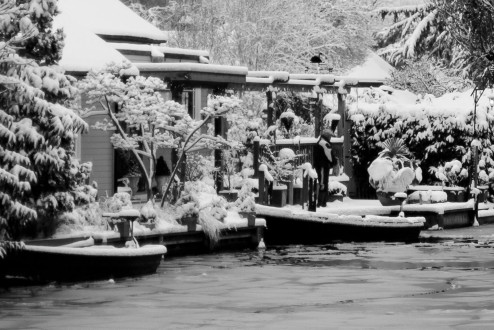
Boulters lock cut
5274710978_5eea37e903_h
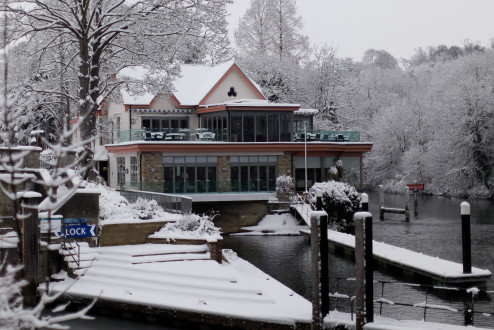
Boulters Lock
www.visitthames.co.uk/text/203/boulters_lock.html www.boultersrestaurant.co.uk/
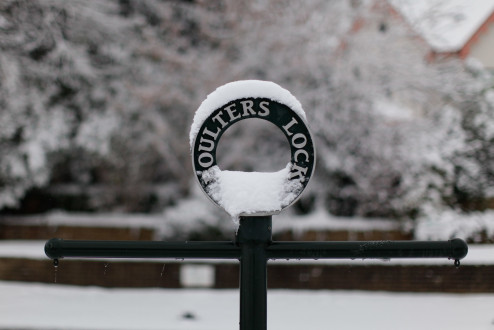
Boulters
5273816176_e6314e362f_k
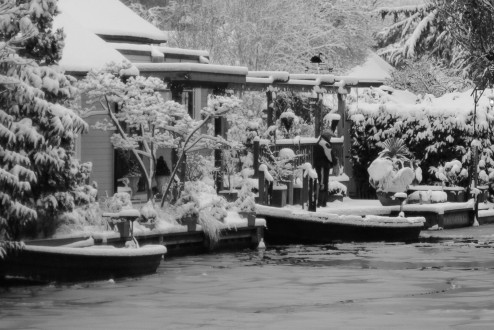
Richard Dimbleby
Richard Dimbleby CBE (May 25, 1913 – December 22, 1965). The renowned radio and TV broadcaster is commemorated with a Blue Plaque on Boulters Island
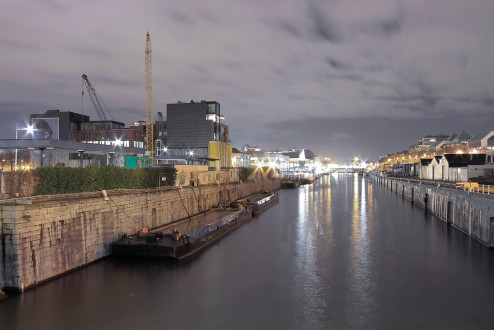
port-bruxelles
5260214253_9f9f2f832c_b
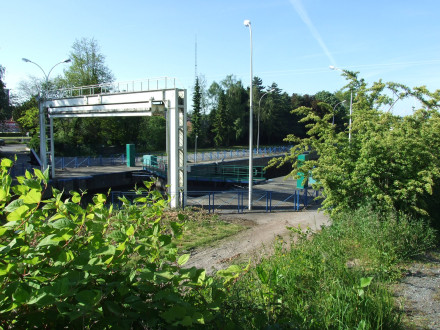
Quelques cartes postales du Nord en mai 2010
Le canal de l'Escaut à Valenciennes . " Nouvelle " écluse Follien, construite à la fin des années 70 lors de la mise à grand gabarit . J-P Leroy, droits réservés .
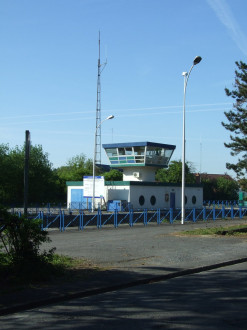
Quelques cartes postales du Nord en mai 2010
Le canal de l'Escaut à Valenciennes . " Nouvelle " écluse Follien, construite à la fin des années 70 lors de la mise à grand gabarit . J-P Leroy, droits réservés .
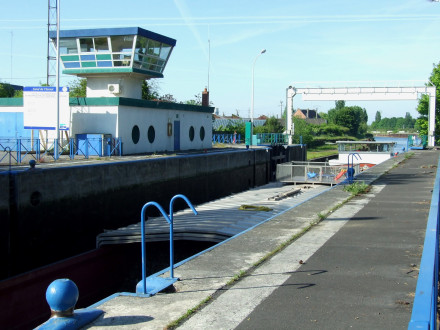
Quelques cartes postales du Nord en mai 2010
Le canal de l'Escaut à Valenciennes . " Nouvelle " écluse Follien, construite à la fin des années 70 lors de la mise à grand gabarit . J-P Leroy, droits réservés .
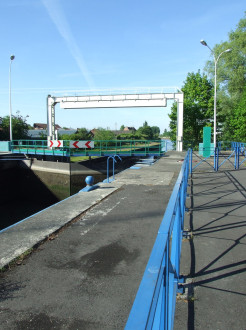
Quelques cartes postales du Nord en mai 2010
Le canal de l'Escaut à Valenciennes . " Nouvelle " écluse Follien, construite à la fin des années 70 lors de la mise à grand gabarit . J-P Leroy, droits réservés .
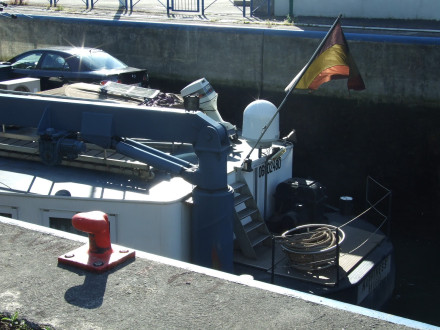
Quelques cartes postales du Nord en mai 2010
Le canal de l'Escaut à Valenciennes . " Nouvelle " écluse Follien, construite à la fin des années 70 lors de la mise à grand gabarit . J-P Leroy, droits réservés .
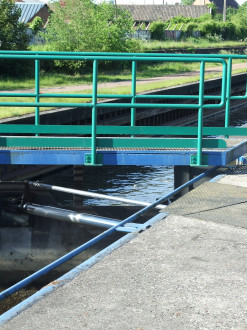
Quelques cartes postales du Nord en mai 2010
Le canal de l'Escaut à Valenciennes . " Nouvelle " écluse Follien, construite à la fin des années 70 lors de la mise à grand gabarit . J-P Leroy, droits réservés .
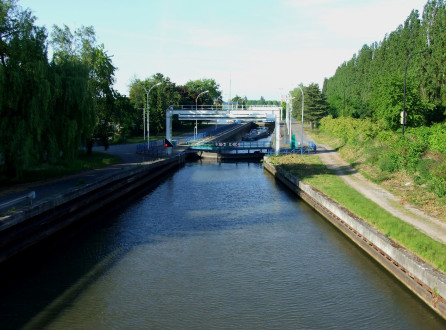
Quelques cartes postales du Nord en mai 2010
Le canal de l'Escaut à Valenciennes . " Nouvelle " écluse Follien, construite à la fin des années 70 lors de la mise à grand gabarit . J-P Leroy, droits réservés .
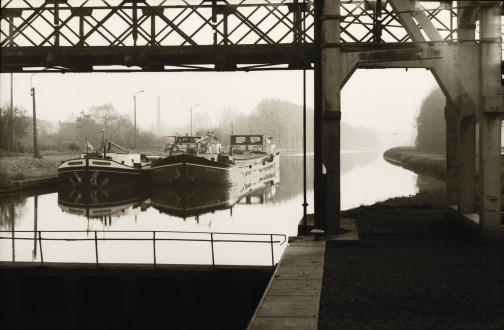
« Quiète Journée »
Un dimanche d'été, en fin d'après-midi, des péniches au repos se mirent dans les eaux, fort sales, du canal . Bientôt le « progrès » va s'abattre . La mise à grand gabarit sera un désastre environnemental, et un échec car le canal conservera de multiples goulets . Négatif numérisé . Cette photographie n'a pas été proposée au Cercle Photographique de Valenciennes . Canal de l'Escaut, Ecluse Notre-Dame au Vert-Gazon, Valenciennes, Nord . Fin des années 70 . J-P Leroy, droits réservés .
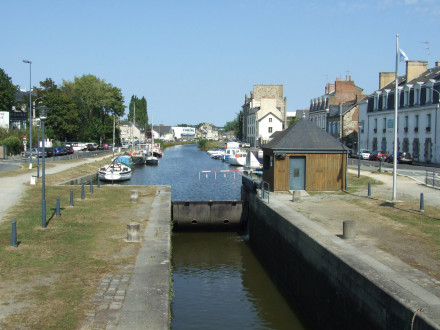
Sortie à Rennes un après-midi de septembre 2009
Canal d'Ille et Rance, rue Armand Rébillon . Ecluse . Ille et Vilaine . Photographie J-P Leroy, droits réservés .
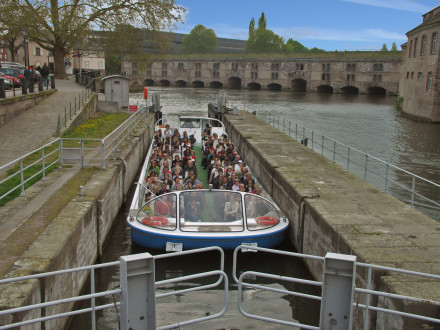
Strasbourg - Barrage Vauban
Écluse du Fossé du Faux rempart. Cette appellation vient du fait que le canal était divisé en deux par un rempart qui se trouvait au milieu du canal pour tromper l'agresseur. A droite l'ancienne prison Sainte Marguerite, aujourd'hui l'ENA.
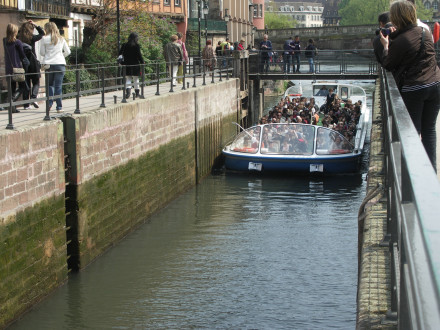
Strasbourg Petite France
Ecluse
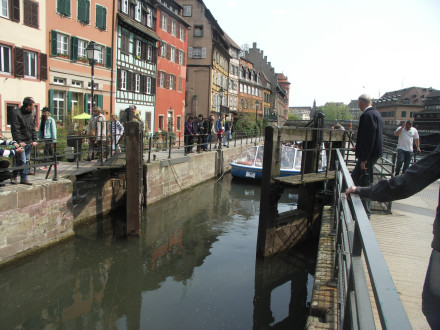
Strasbourg Petite France
Ecluse
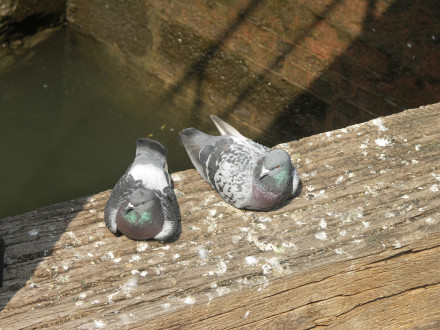
Les pigeons les plus photographiés de Strasbourg
Au soleil sur la porte de l'écluse. Voir dans l'ordre: www.flickr.com/photos/19239093@N03/4547671335/ puis www.flickr.com/photos/19239093@N03/4547671965/in/photostr... qui explique cette dernière
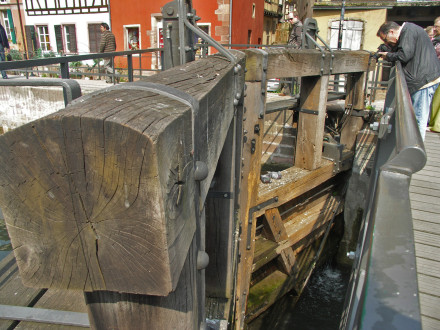
Les pigeons les plus photographiés de Strasbourg
Au soleil sur la porte de l'écluse.
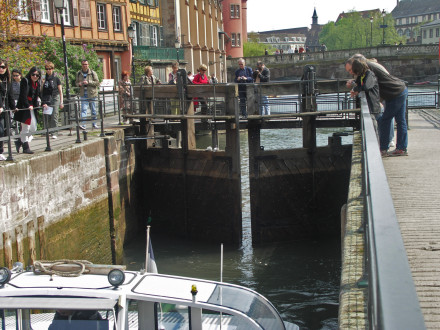
Les pigeons les plus photographiés de Strasbourg
Au soleil sur la porte de l'écluse.
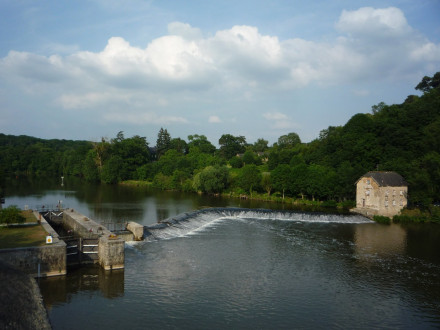
Ecluse de Briassé 1.JPG
Photographie aérienne par cerf-volant. Kite Aerial Photography.
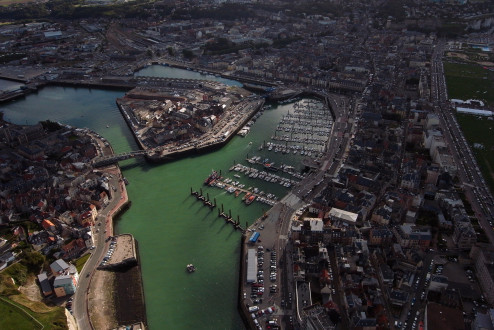
Dieppe 2010
Photographie aérienne par cerf-volant Kite aerial photography (KAP) Photos prises à Dieppe pendant le festival de cerf-volants Dieppe 2010
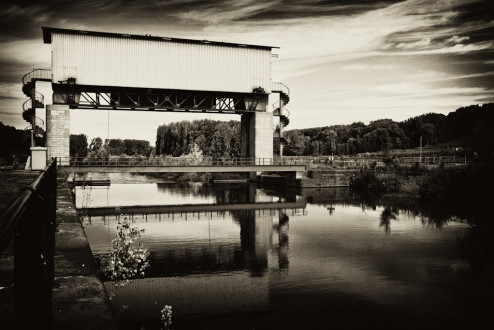
BE - Lock Asper
4960848643_3b98384020_b
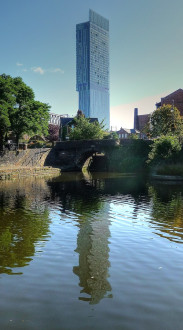
Dukes Lock Castlefield Manchester
A view across the Bridgewater Canal to Dukes Lock, the entrance to the Rochdale Canal. Beetham Tower is a 47-storey skyscraper ( 168.87 metres 554 ft ) on Deansgate is currently Manchester's tallest building and England's tallest residential tower. It is the the tallest building in the UK outside London Castlefield was designated as a conservation area in 1980 and the United Kingdom's first designated Urban Heritage Park in 1982. The Bridgewater Canal was commissioned by Francis Egerton, 3rd Duke of Bridgewater, to transport coal from his mines in Worsley to Manchester. It was built by James Brindley and is the worlds first true industrial canal, and Britains first arterial canal. In 1802 the Rochdale Canal joined here at Duke's Lock, lock 92, this was the first canal to cross the Pennines it brought with it clean water from its feeder reservoir at Hollingworth Lake. It connected with the Ashton Canal and the Peak Forest Canal bringing building limestone from Bugsworth in Derbyshire.
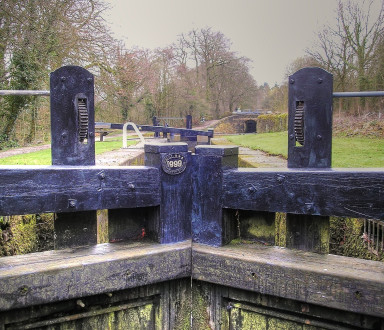
Marple Lock Flight, Peak Forest Canal
The canal consists of two level pounds, separated by a flight of 16 locks at Marple, which raise the canal by 209 feet (64 m) over the course of 1 mile (1.6 km). Whilst the rest of the canal was opened to navigation by 1796, insufficient money was available to complete the necessary flight of locks to connect the two halves, and a temporary tramway was installed until such time as the locks could be completed, which finally happened in 1804.
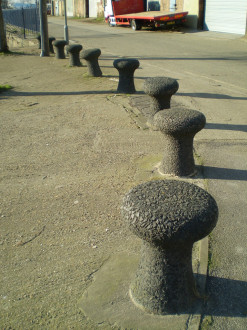
Gravesend row of bollards by lock
A canal from Gravesend to Strood once provided a shortcut for barges. The canal ran through a tunnel which is now used by trains
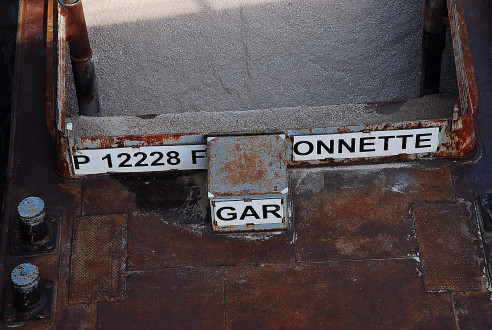
6 - 22 juin 2010 Saint-Maurice Bords de Marne A l'écluse Une péniche passe
4730879562_63c138d36e_k
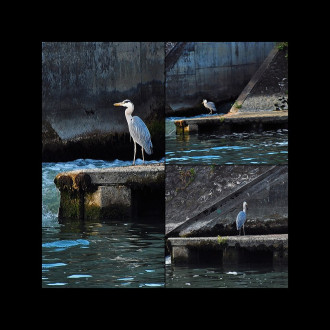
5 - 4 juin 2010 Maisons-Alfort Bords de Marne Héron, gardien du passage
4675909502_d1ecdeeeeb_c
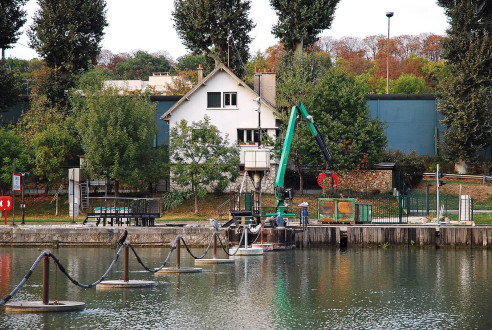
17 - 24 septembre 2009 Maisons-Alfort Promenade sur les bords de la Marne Ecluse = Lock
3961567339_095294ab81_k
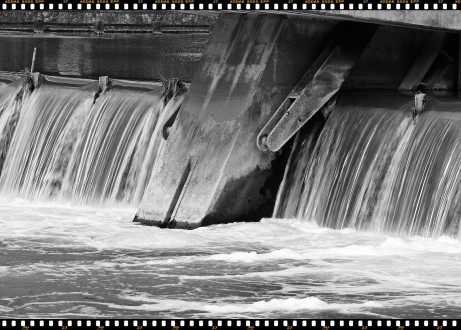
18 - 14 juillet 2009 Maisons-Alfort Bords de Marne Ecluse
3731860182_26016c25b8_k
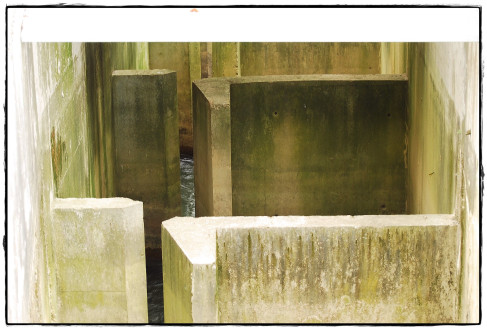
13 - 14 juillet 2009 Maisons-Alfort Bords de Marne Près de l'écluse
3731870930_9348387fc1_k
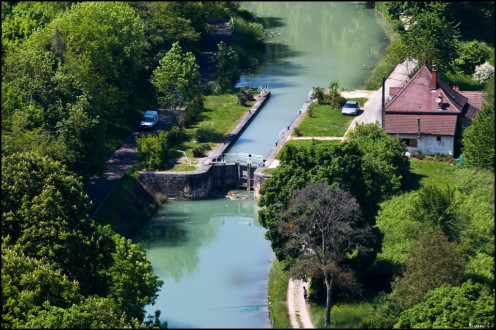
Lock on Canal de Bourgone
4754542780_9a431a0c66_b
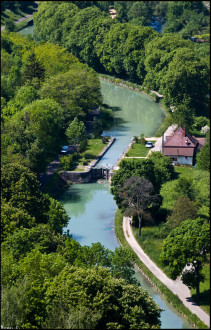
Lock on Canal de Bourgone
4753902313_4cafb2133c_c
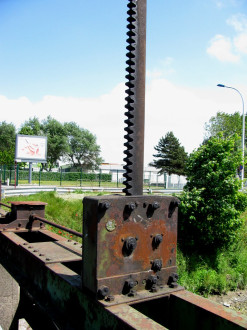
Calais Lock paddle gear
4712486109_b14ba4b496_k
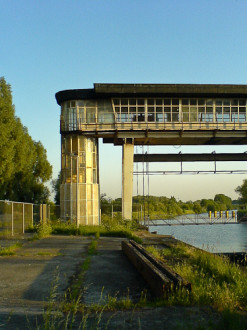
Schelde Sluis in Merelbeke
Foto genomen aan de Schelde in Merelbeke.
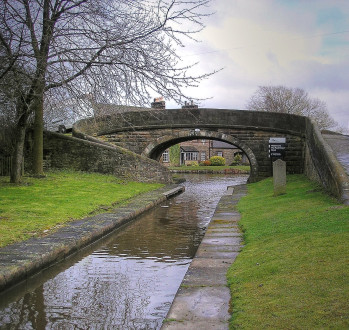
Macclesfield Canal and Peak Forest Canal Junction Marple
The Macclesfield Canal runs between Marple and Hall Green, near Kidsgrove, UK. It passes through Bollington, Macclesfield and Congleton. It is about 26 miles long and has 13 locks. It links the Peak Forest Canal with the Trent and Mersey Canal and forms part of the Cheshire Ring. Opened in 1831, the Macclesfield Canal was one of the last canals to be built in Britain. Adjacent the stone building is a Stop Lock. Although the Macclesfield and Peak Forest canals canals were built to the same level, the lock was provided for when water shortages might have resulted in a temporary difference.The lock has long been de-gated, having become unnecessary once the Macclesfield and Peak Forest canals came into common ownership. The site of the lock is seen here as a narrowing just in front of the junction bridge. The Peak Forest Canal consists of two level pounds, separated by a flight of 16 locks at Marple, which raise the canal by 209 feet (64 m) over the course of 1 mile (1.6 km). Whilst the rest of the canal was opened to navigation by 1796, insufficient money was available to complete the necessary flight of locks to connect the two halves, and a temporary tramway was installed until such time as the locks could be completed, which finally happened in 1804
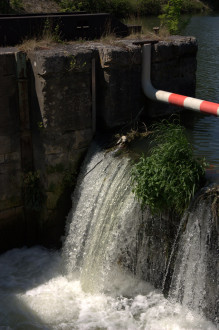
Ecluse à l'abandon
4632235680_1d49d18e25_k
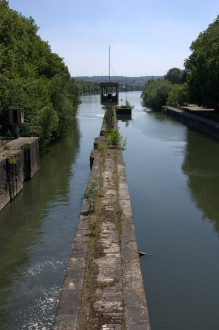
Depuis la passerelle
4632217264_f4ad8f3ead_k
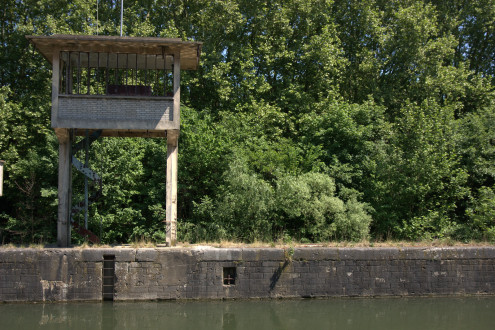
Poste Désafecté
4632209724_192dfdb918_k
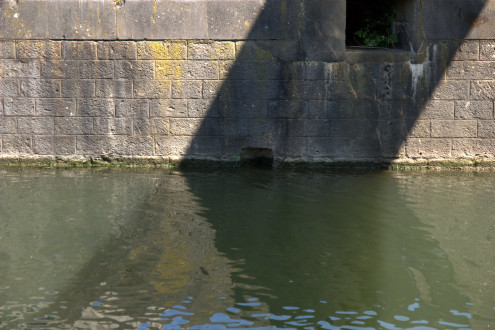
Ombre Portée
4631651327_6dda1e9af1_k
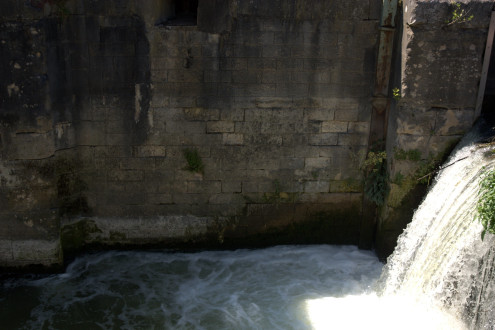
Briques de l'écluse
4631631595_3e168c9d46_k
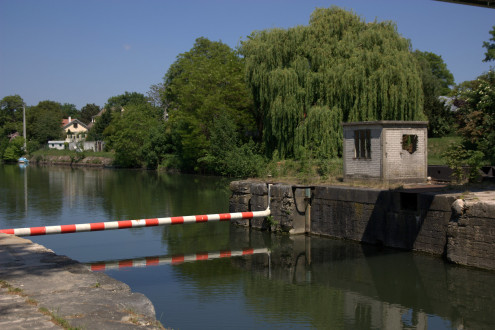
Double barrière
4631613777_11f4212e4a_k
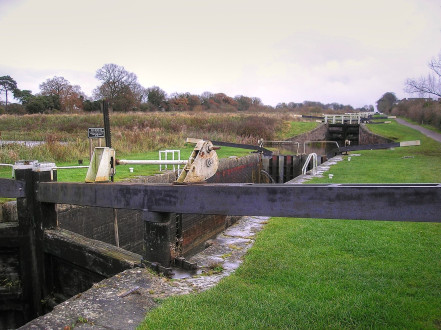
Caen Hill Lock Flight Kennet and Avon Canal Devizes
29 locks with a rise of 237 feet in 2 miles gradient. The locks come in three groups. The most impressive group are the sixteen locks which form a steep flight in a straight line up the hillside. 15 of these 16 locks have large large side pounds to store water. The intention being to try to avoid low water levels in the pounds between each lock.
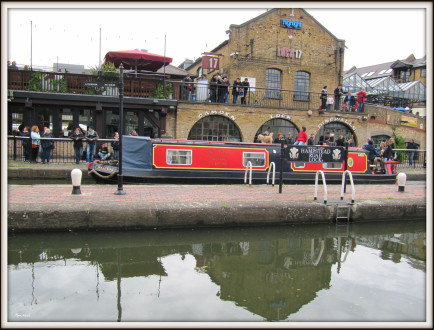
Camden lock
4596913764_f5b21f73cd_k
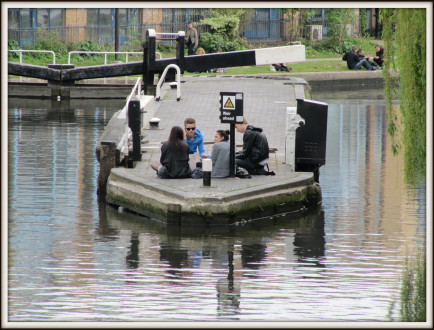
Camden
4596016767_8d61f5c5cd_k
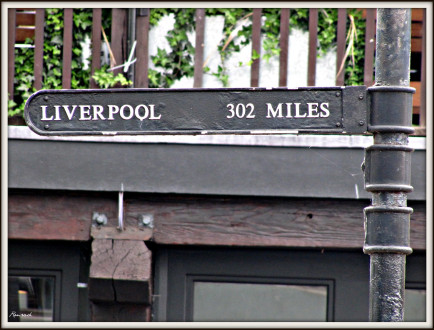
Camden lock
4596336637_ccc840968b_k
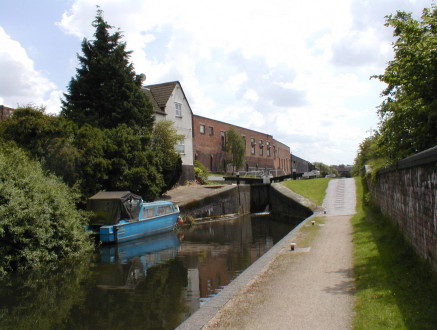
BIR Garison locks 1
4567715356_fb9fe8e9ab_h
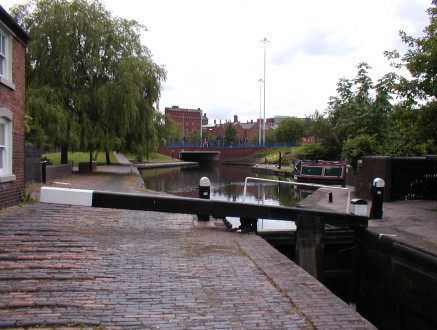
BIR Wolverhampton top lock
4567709070_aedb45e314_h
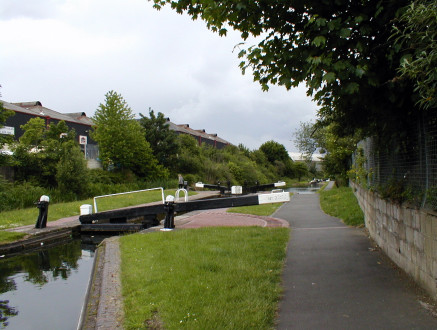
Wolverhampton locks
4567089535_da545c9a45_h
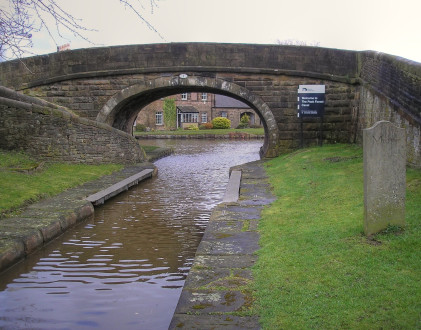
Macclesfield Canal and Peak Forest Canal Junction Marple
The Macclesfield Canal runs between Marple and Hall Green, near Kidsgrove, UK. It passes through Bollington, Macclesfield and Congleton. It is about 26 miles long and has 13 locks. It links the Peak Forest Canal with the Trent and Mersey Canal and forms part of the Cheshire Ring. Opened in 1831, the Macclesfield Canal was one of the last canals to be built in Britain. Adjacent the stone building is a Stop Lock. Although the Macclesfield and Peak Forest canals canals were built to the same level, the lock was provided for when water shortages might have resulted in a temporary difference.The lock has long been de-gated, having become unnecessary once the Macclesfield and Peak Forest canals came into common ownership. The site of the lock is seen here as a narrowing just in front of the junction bridge. The Peak Forest Canal consists of two level pounds, separated by a flight of 16 locks at Marple, which raise the canal by 209 feet (64 m) over the course of 1 mile (1.6 km). Whilst the rest of the canal was opened to navigation by 1796, insufficient money was available to complete the necessary flight of locks to connect the two halves, and a temporary tramway was installed until such time as the locks could be completed, which finally happened in 1804.
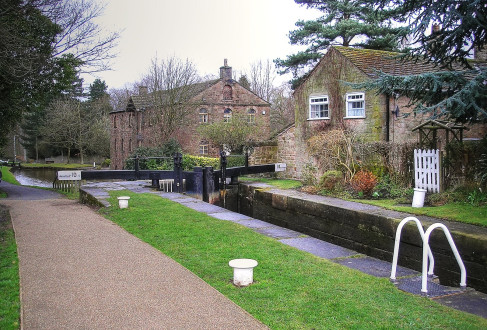
Lock 10, Peak Forest Canal, Marple 6
The canal consists of two level pounds, separated by a flight of 16 locks at Marple, which raise the canal by 209 feet (64 m) over the course of 1 mile (1.6 km). Whilst the rest of the canal was opened to navigation by 1796, insufficient money was available to complete the necessary flight of locks to connect the two halves, and a temporary tramway was installed until such time as the locks could be completed, which finally happened in 1804.
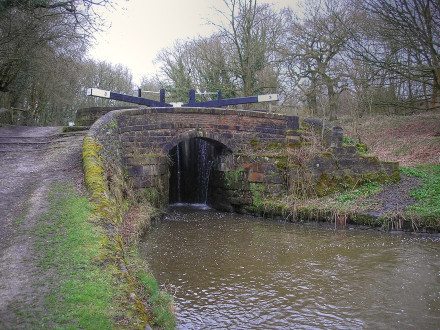
Peak Forest Canal Lock 3 Marple Flight
The canal consists of two level pounds, separated by a flight of 16 locks at Marple, which raise the canal by 209 feet (64 m) over the course of 1 mile (1.6 km). Whilst the rest of the canal was opened to navigation by 1796, insufficient money was available to complete the necessary flight of locks to connect the two halves, and a temporary tramway was installed until such time as the locks could be completed, which finally happened in 1804.
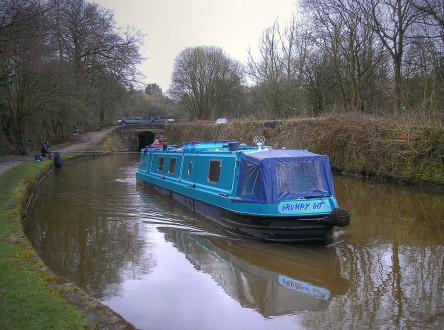
Grumpy Git, Marple Flight, Peak Forest Canal
The canal consists of two level pounds, separated by a flight of 16 locks at Marple, which raise the canal by 209 feet (64 m) over the course of 1 mile (1.6 km). Whilst the rest of the canal was opened to navigation by 1796, insufficient money was available to complete the necessary flight of locks to connect the two halves, and a temporary tramway was installed until such time as the locks could be completed, which finally happened in 1804.
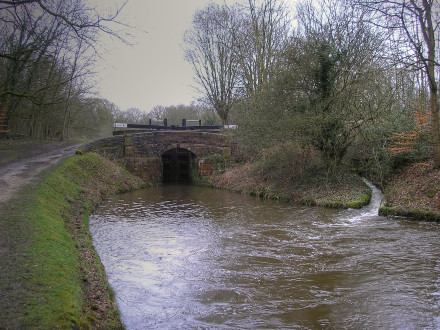
Peak Forest Canal Marple Flight
The canal consists of two level pounds, separated by a flight of 16 locks at Marple, which raise the canal by 209 feet (64 m) over the course of 1 mile (1.6 km). Whilst the rest of the canal was opened to navigation by 1796, insufficient money was available to complete the necessary flight of locks to connect the two halves, and a temporary tramway was installed until such time as the locks could be completed, which finally happened in 1804.
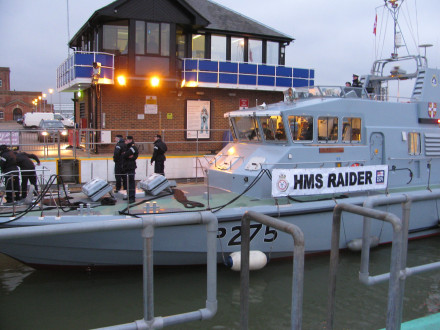
HMS RAIDER at Chatham
HMS Raider is passing thru the lock from the River Medway to go into Chatham Maritime.
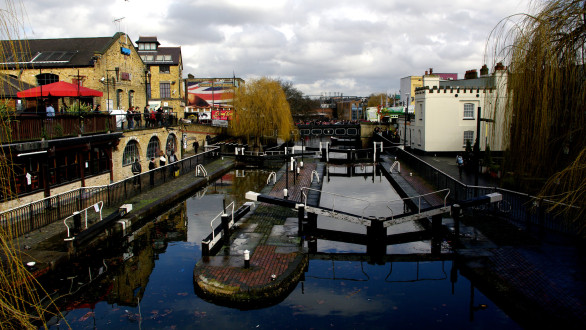
Postcards anonymous? ... Where were we?
The first of the three grand locks in Camden. Built to allow boat traffic ease of access in to and out of the Thames through the North of London. Canal in this part of now London were vital in the transport of larger shipments of grain during the industrial period in England. Deep blue reflections of the sky unseen above make for an nice (un)balance of colours. The reflection seen of the sky doesn't quite make sense either....... But I like...
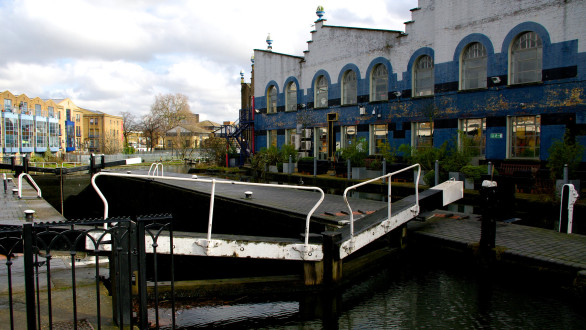
Is the word you're looking for: Weired?
The second of Camden's three locks only allows for one canal boat to be raised or lowered at once. The other watery side of this lock is 'simply' a weir.
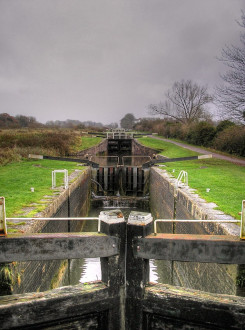
Caen Hill Lock Flight Devizes Kennet And Avon Canal
29 locks with a rise of 237 feet in 2 miles gradient. The locks come in three groups. The most impressive group are the sixteen locks which form a steep flight in a straight line up the hillside. 15 of these 16 locks have large large side pounds to store water. The intention being to try to avoid low water levels in the pounds between each lock.
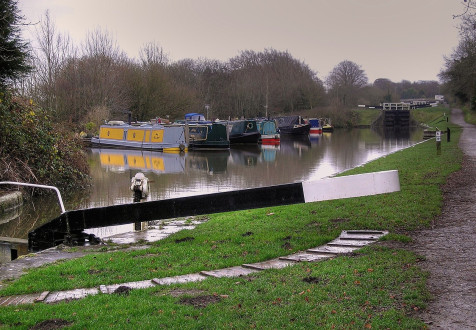
Caen Hill Lock Flight Devizes Kennet And Avon Canal
29 locks with a rise of 237 feet in 2 miles gradient. The locks come in three groups. The most impressive group are the sixteen locks which form a steep flight in a straight line up the hillside. 15 of these 16 locks have large large side pounds to store water. The intention being to try to avoid low water levels in the pounds between each lock.
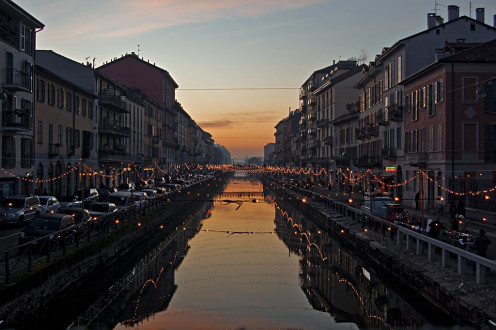
milano mon amour V - way beyond blue
Google Street View
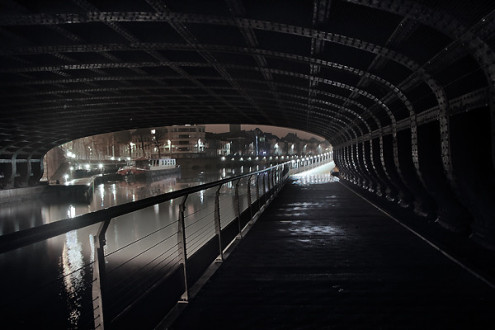
pont-gand
4282737866_715dfa4e8e_z
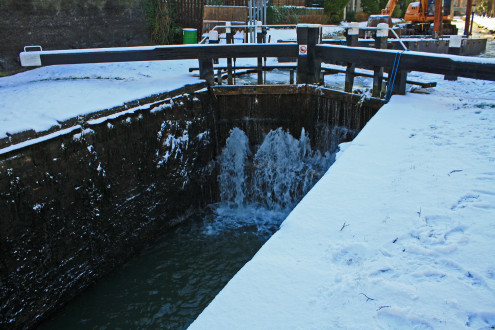
Lock
4259473967_2afd8e62fc_k
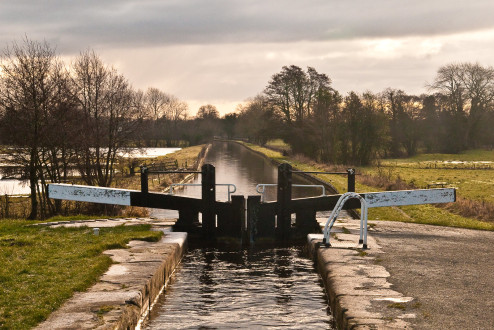
Looking back
4241142541_0ada176249_k
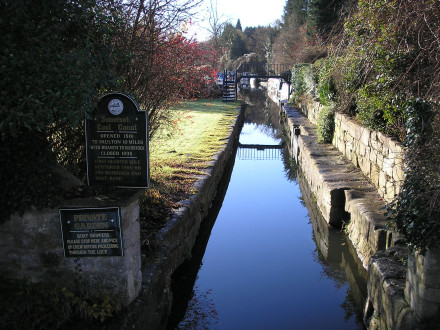
Somerset Coal Canal
The entrance lock to the Somerset Coal Canal at its junction with the Kennet and Avon Canal
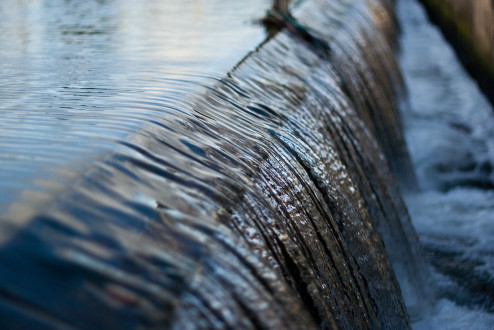
wind.and.water.5604
Overflowing canal locks.
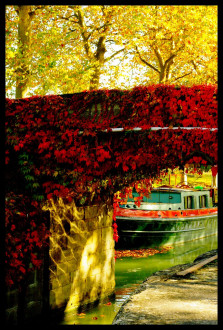
A l'écluse
4060914077_6e027f4af5_k
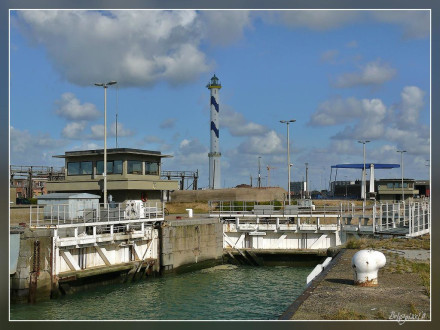
OSTENDE-OOSTENDE: Ecluses du site maritime...
3976394836_607d8f5b82_b
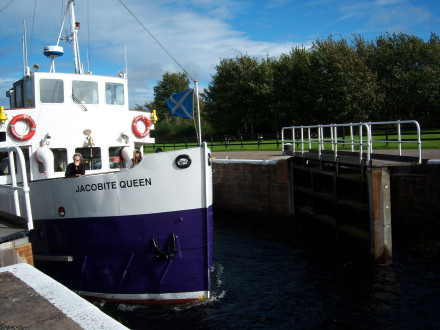
Caladonian Canal
3947678698_53eb87cab6_k
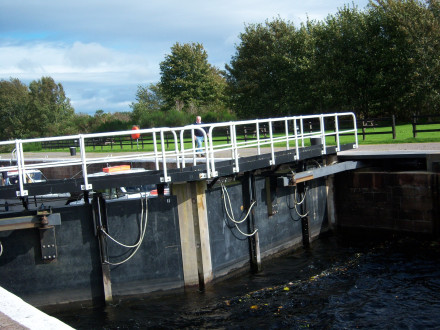
Lock
3947676222_ce1339c81a_k
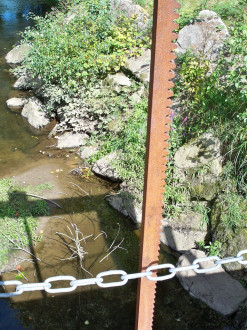
écluse
3879070424_d217a992ee_k
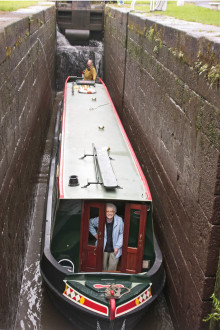
Locked in
www.marplelocks.org.uk/
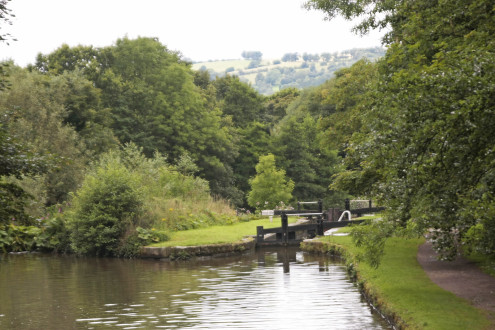
The Lock
www.marplelocks.org.uk/
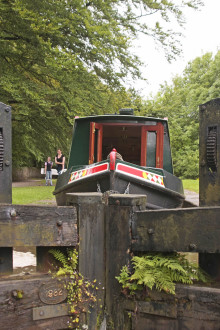
Waiting its turn
www.marplelocks.org.uk/
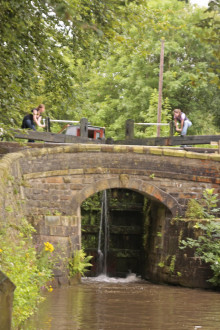
Working the lock gates
www.marplelocks.org.uk/
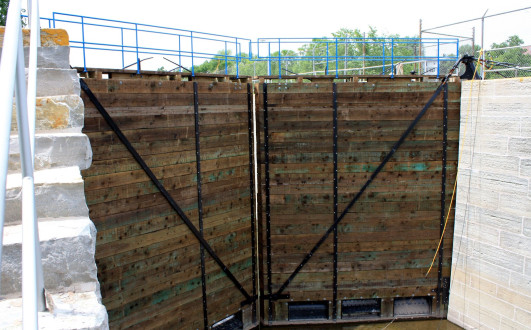
Lower gates
Little Chute Lock 2, Lower Fox River, WI
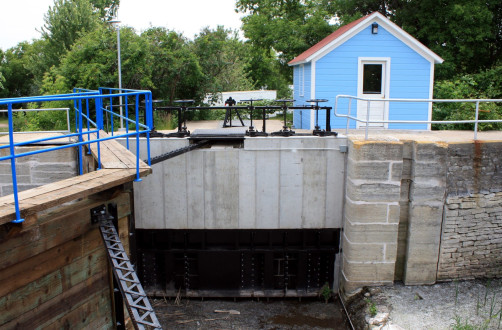
Upper gates, valves and tender's shack
Little Chute Lock 2, Lower Fox River, WI
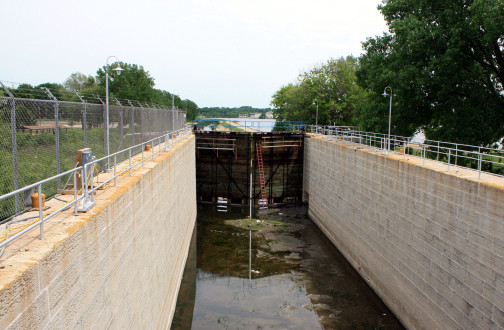
Lock chamber
Little Chute Lock 2, Lower Fox River, WI
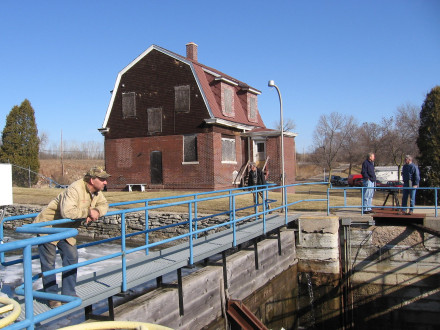
Lock Tender's House at Cedars
433969012_58eb318c80_k
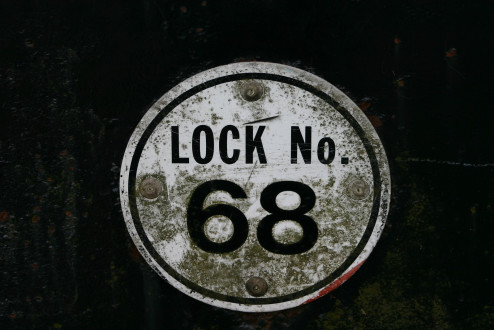
Froxfield Lock
Lock number 68
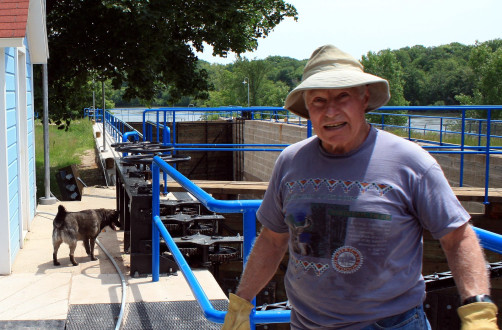
Retired Lock Keeper and his dog
Combined Locks, Little Chute, WI (Dewatered)
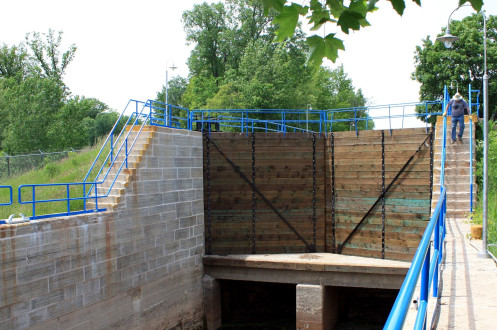
Restored Middle Gate
Combined Locks, Little Chute, WI (Dewatered)
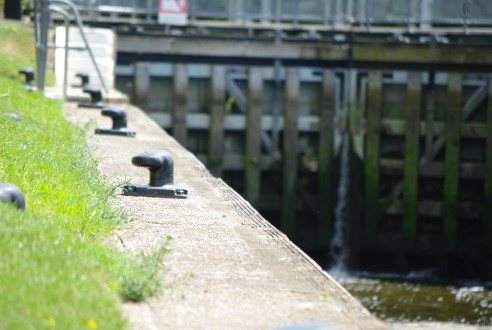
3626657692_2a8a197a5f_k
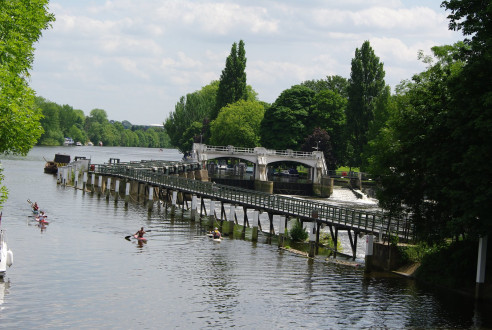
Twickenham Lock
3625844983_8413da8c90_k
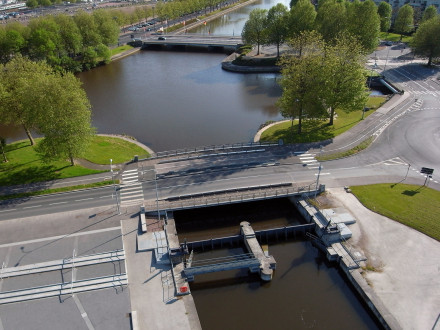
Ecluse
Ecluse Canal de l'Orne, Caen. Kite Aerial Photography (KAP) Photographie aérienne par cerf-volant.
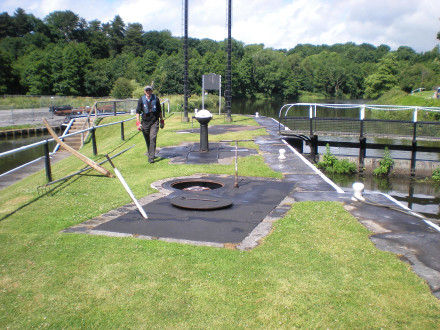
ValeRoyal Lock
2629454064_b58fd2d1ca_k
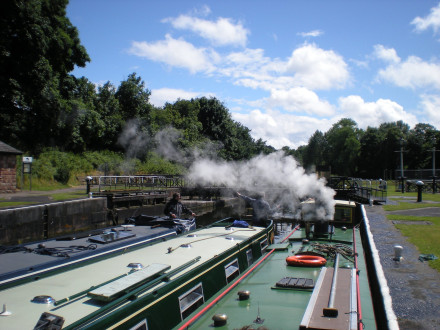
Another Lock
2629455878_87ef28305c_k
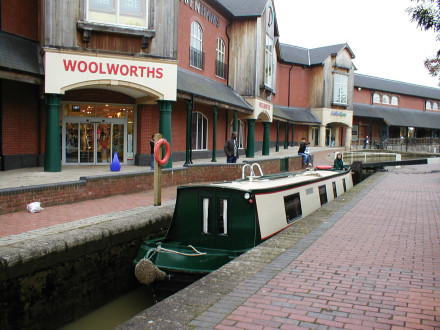
Woolworths at Banbury
2586220265_bdc8ed816d_h
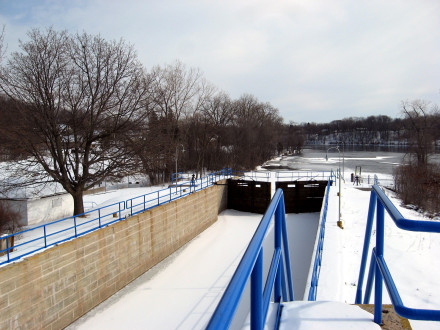
Down Stream
Combined Locks
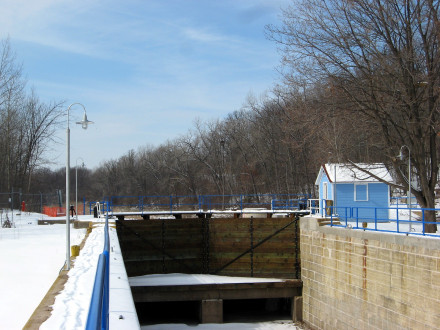
Up Stream
Combined Locks
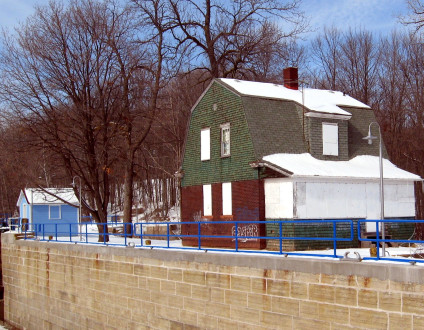
Lock Keeper's Residence
Combined Locks
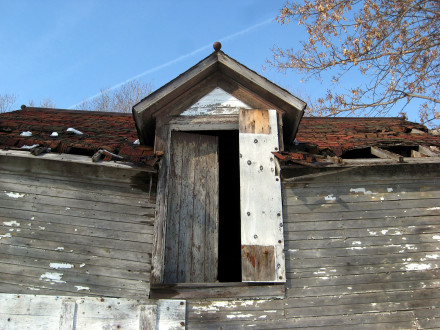
Out building
Kaukauna Lock 1
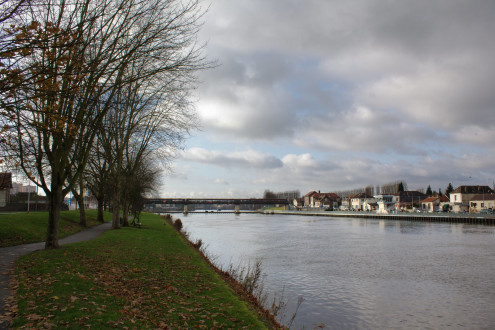
Écluse de Venette sur l'Oise
3088741213_533800c6fd_k
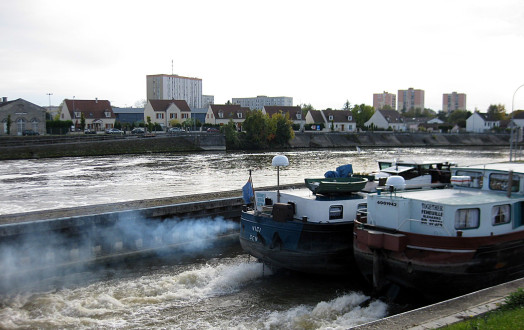
Péniches sortant d'une écluse
Deux péniches à la sortie de l'écluse de Venette sur l'Oise, sur l'autre rive la ville de Compiègne.
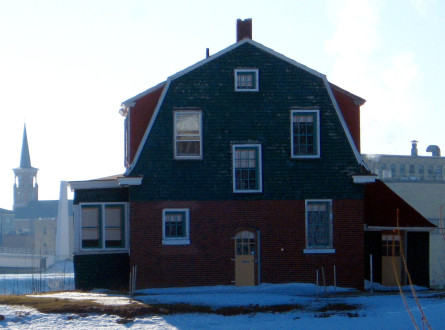
De Pere Lock Keeper's House
3266688199_55acd3f5c9_k
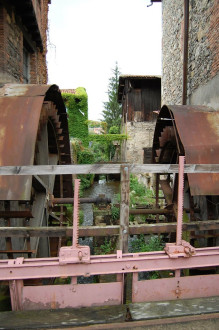
Thiers
998305238_e360ee40ff_k
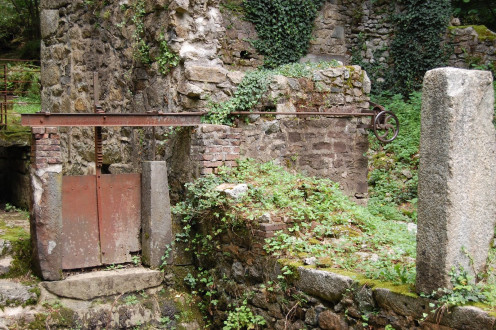
La vallée des rouets 30
1118303602_5867df1f09_k
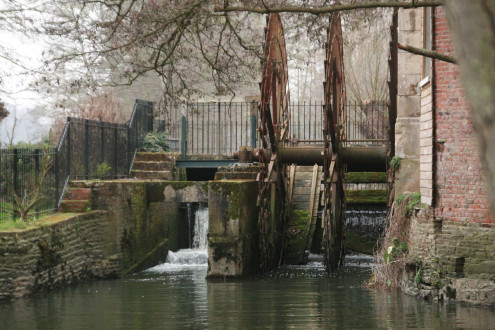
Bully 21
Le moulin
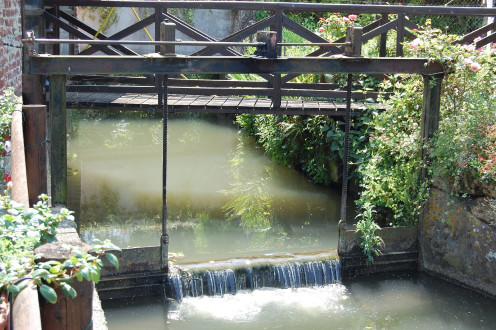
Beuvron 70
542716450_bf22208d40_k
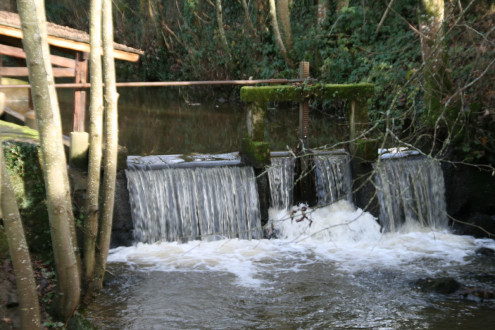
L'abbaye blanche 22
2076637400_89e35b99b6_k
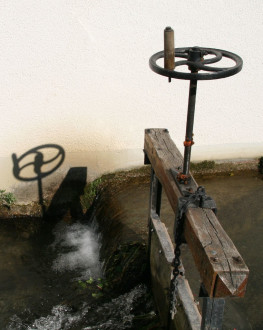
Argences 35 bis
Recadrage proposé par J&S.
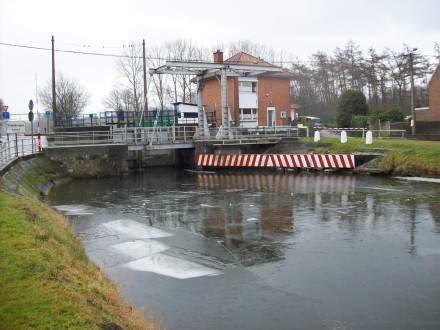
Janvier 2009
Canal Nimy - Blaton - Ath 8 days after the thaw / 8 jours après le dégel.
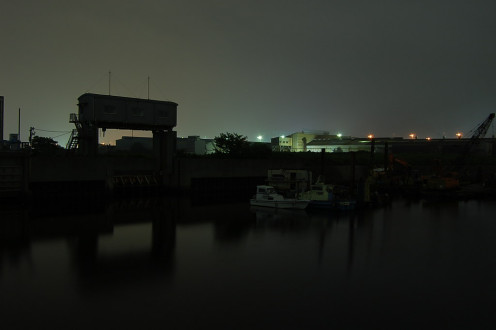
ichikawa mon amour V - di notte vedevo II
tracina.blogspot.com
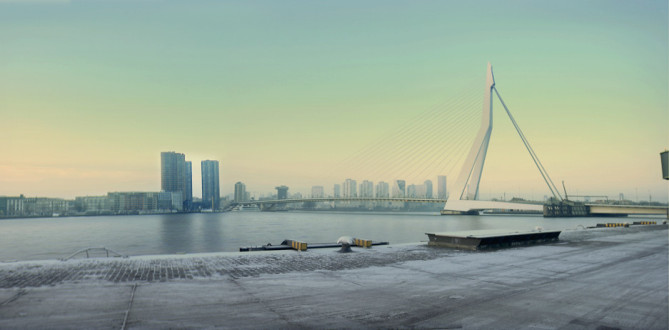
rotter6
3194949576_63cfda6f75_b
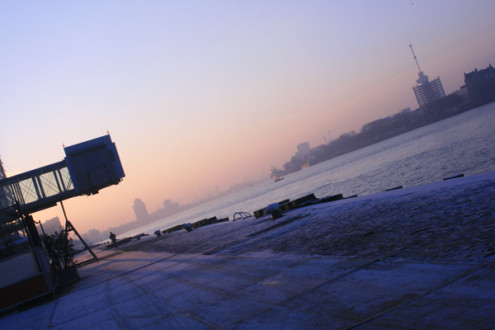
rotterdam4
3192047370_3dc5c43c7f_z
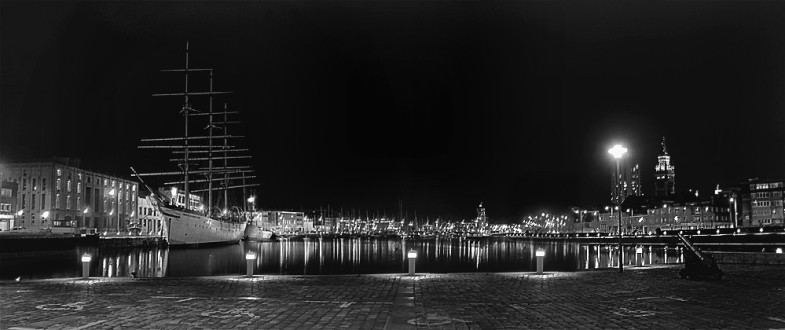
DUNKERQUE-B2
3171490732_40705e0408_b
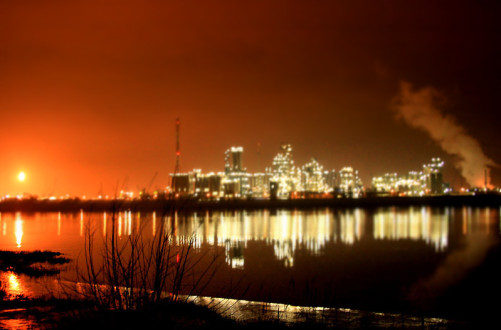
anvers-port
3159428211_53ac47b27d_c
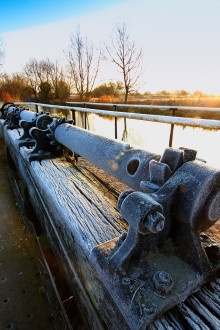
Sluice gate
I think this lets all the water out of the river. Hmmm. I wonder if anyone is watching....
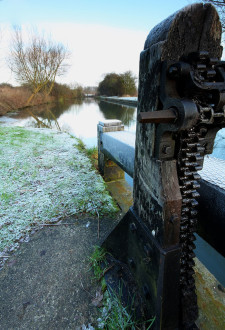
Feakes Lock Paddle Gear
A beautiful crisp morning with a sprinkle of frost. The sun was trying really hard and the ice was rapidly melting making it slippery on the narrow towpath. A jogger sprinted past me as I was setting up the tripod. I don't suppose I'll see him again.
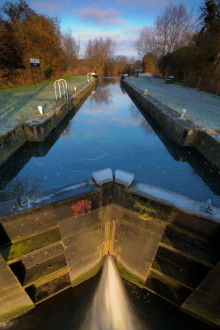
Feakes Lock
3141654323_5804e0c6d5_k
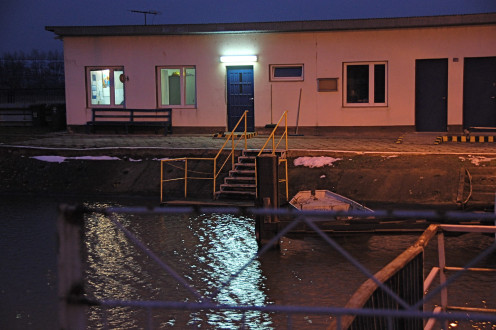
Borek Szlachecki
DSC 6672 See where this picture was taken. [?]
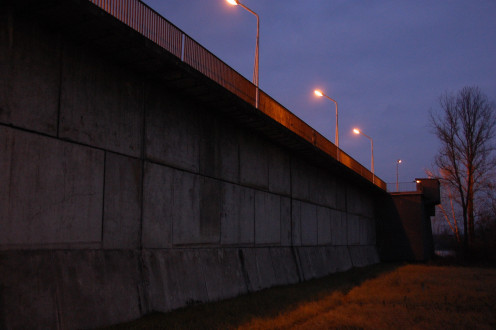
Borek Szlachecki
DSC 6674 See where this picture was taken. [?]
![CSC_6721 Lock Borek Szlachecki <a href="http://loc.alize.us/#/flickr:3066524086" rel="noreferrer nofollow">See where this picture was taken.</a> <a href="http://www.flickr.com/groups/geotagging/discuss/72157594165549916/">[?]</a>](https://www.remosworld.ch/wp-content/plugins/justified-image-grid/timthumb.php?src=https%3A%2F%2Flive.staticflickr.com%2F3021%2F3066524086_faedd9e204_h.jpg&h=330&q=90&f=.jpg)
CSC_6721 Lock Borek Szlachecki See where this picture was taken. [?]
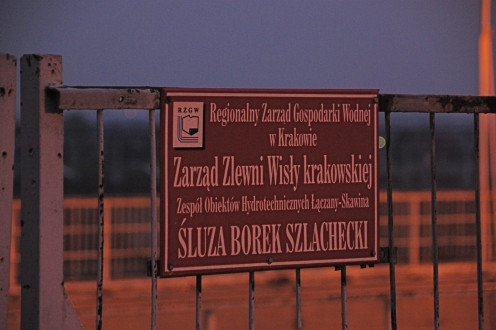
Borek Szlachecki
DSC 6668 See where this picture was taken. [?]
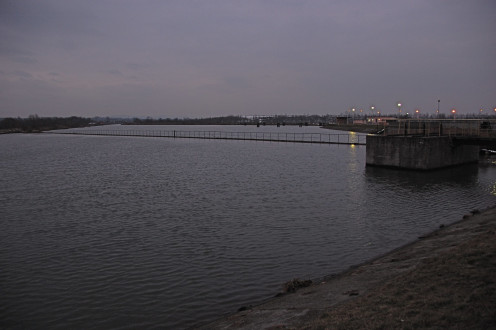
Borek Szlachecki
DSC 6659 See where this picture was taken. [?]
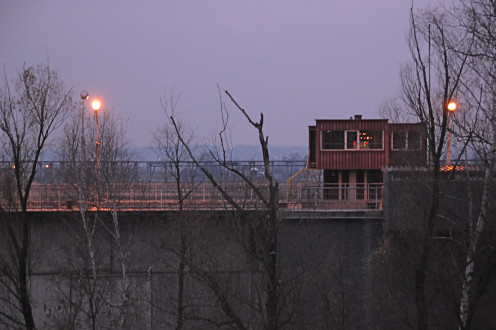
Borek Szlachecki
DSC 6661 See where this picture was taken. [?]
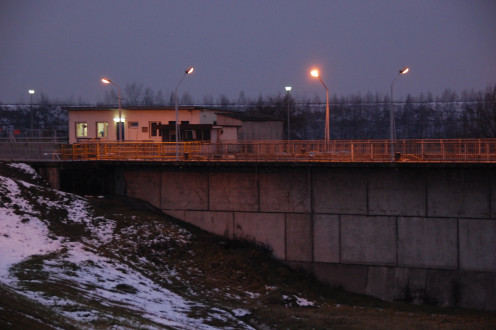
Borek Szlachecki
DSC 6662 See where this picture was taken. [?]
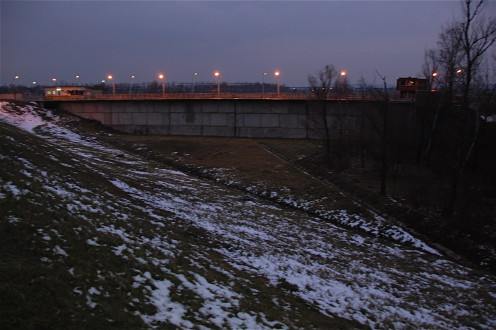
Borek Szlachecki
DSC 6663 See where this picture was taken. [?]
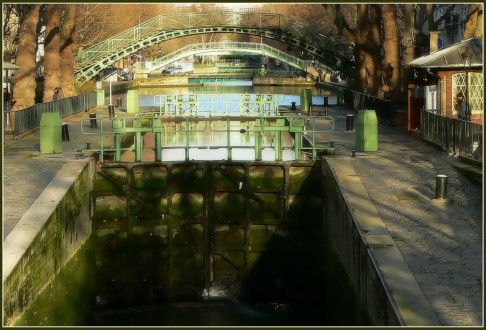
Un matin saint-Martin
3103166010_4b4515f940_k
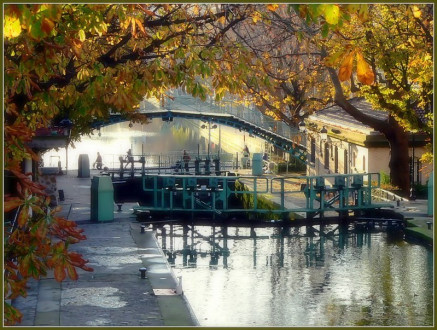
canal St-Martin
3100028249_0b225a99ac_c
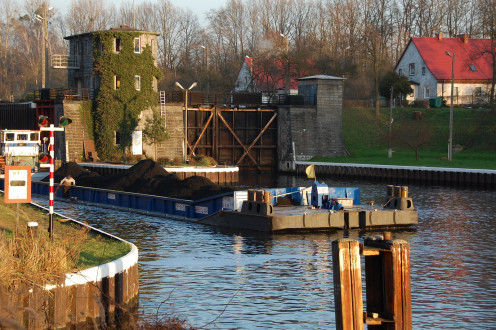
Lock in Gliwice Canal, Poland
Gliwice Canal on Wikipedia DSC_7144 See where this picture was taken. [?]
![The lock keeper is in there, somewhere... Lock Borek Szlachecki <a href="http://loc.alize.us/#/flickr:3066395402" rel="noreferrer nofollow">See where this picture was taken.</a> <a href="http://www.flickr.com/groups/geotagging/discuss/72157594165549916/">[?]</a> DSC_6690](https://www.remosworld.ch/wp-content/plugins/justified-image-grid/timthumb.php?src=https%3A%2F%2Flive.staticflickr.com%2F3253%2F3066395402_ce02a3f342_h.jpg&h=330&q=90&f=.jpg)
The lock keeper is in there, somewhere... Lock Borek Szlachecki See where this picture was taken. [?] DSC_6690
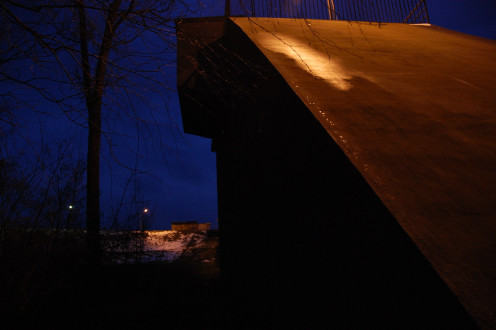
Śluza w Borku Szlacheckim
DSC_6701 Lock Borek Szlachecki See where this picture was taken. [?]
![DSC_6691 Lock Borek Szlachecki <a href="http://loc.alize.us/#/flickr:3066395406" rel="noreferrer nofollow">See where this picture was taken.</a> <a href="http://www.flickr.com/groups/geotagging/discuss/72157594165549916/">[?]</a>](https://www.remosworld.ch/wp-content/plugins/justified-image-grid/timthumb.php?src=https%3A%2F%2Flive.staticflickr.com%2F3017%2F3066395406_42aee4d551_b.jpg&h=330&q=90&f=.jpg)
DSC_6691 Lock Borek Szlachecki See where this picture was taken. [?]
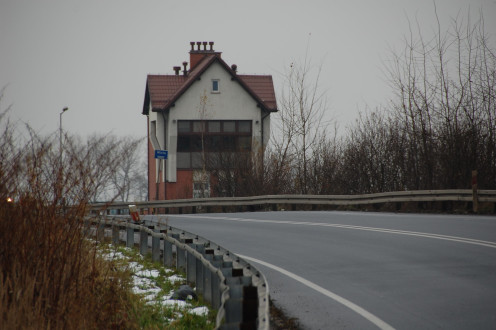
Smolice lock keeper's office
DSC 6593 See where this picture was taken. [?]
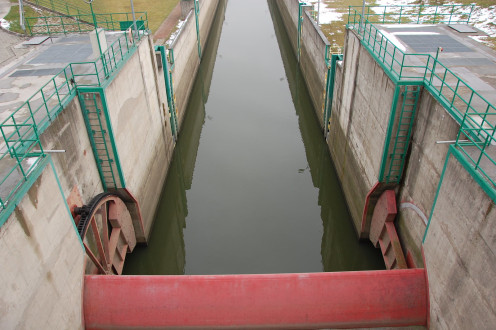
Smolice lock
DSC 6596 See where this picture was taken. [?]
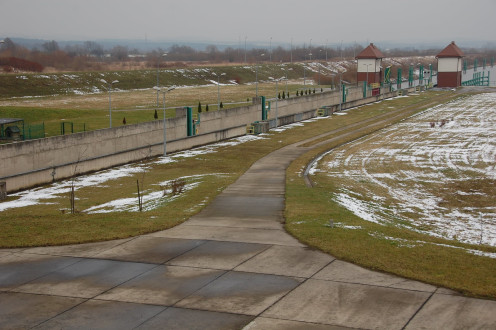
Smolice lock
DSC 6613 See where this picture was taken. [?]
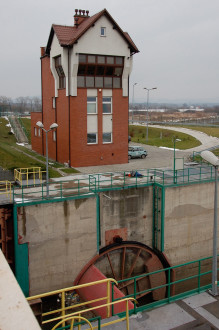
Smolice lock keeper's office
DSC 6609 See where this picture was taken. [?]
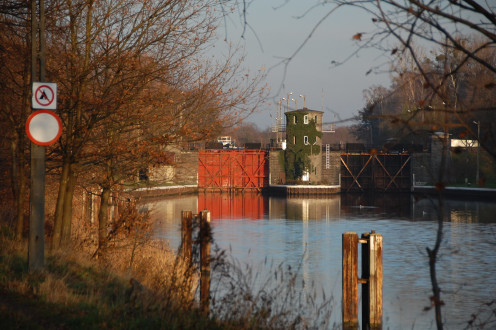
Gliwice Canal
Gliwice Canal on Wikipedia DSC 7128 See where this picture was taken. [?]
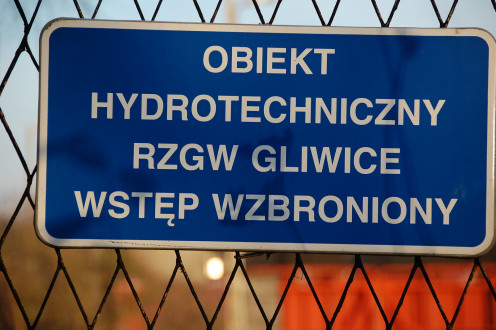
Lock Sławięcice
Read more about the Gliwice / Kedzierzyn Canal DSC 7134 See where this picture was taken. [?]
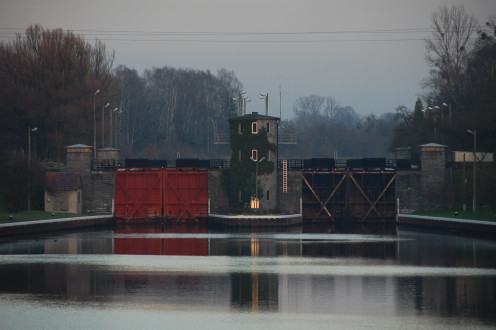
Gliwice Canal
Gliwice Canal on Wikipedia DSC 7174 Near Slawiecice, Poland [?]
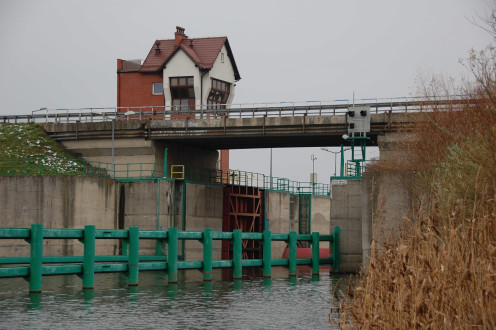
Smolice lock
DSC 6614 This is the upstream side. See where this picture was taken. [?]
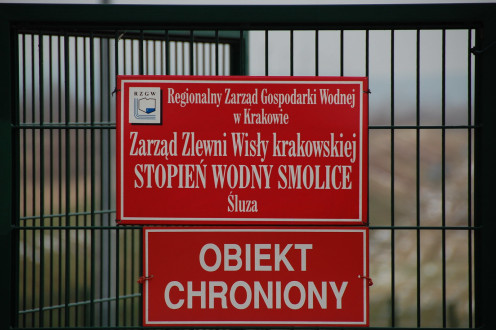
Signs at Smolice lock
DSC 6625 See where this picture was taken. [?]
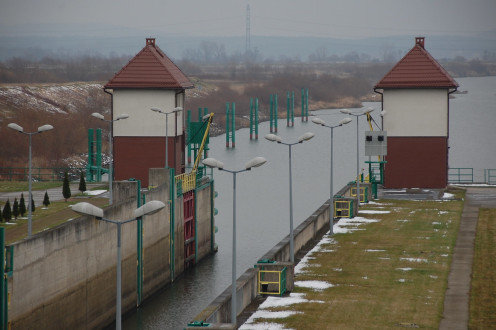
Smolice lock
DSC 6610 Downstream end. See where this picture was taken. [?]
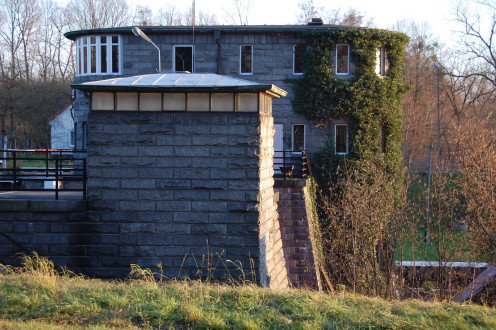
Lock Sławięcice
Read more about the Gliwice / Kedzierzyn Canal DSC 7159 See where this picture was taken. [?]
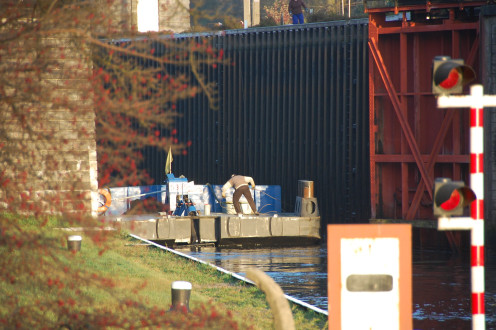
Lock Sławięcice
Read more about the Gliwice / Kedzierzyn Canal DSC 7138 See where this picture was taken. [?]
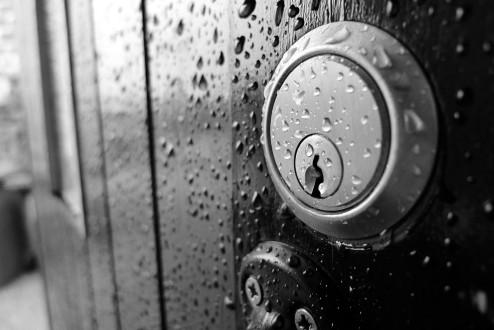
wetlock
The lock to one of the several entry points at Hamps Hall & Barn (this is actually the door to the connecting building).
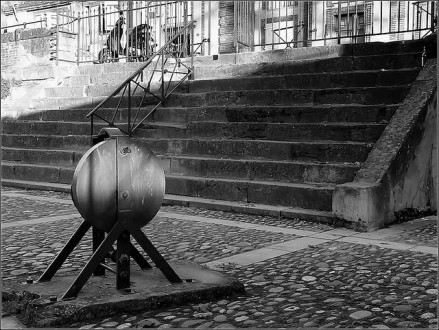
à l'écluse St Pierre
3077087279_20a5462be4_z
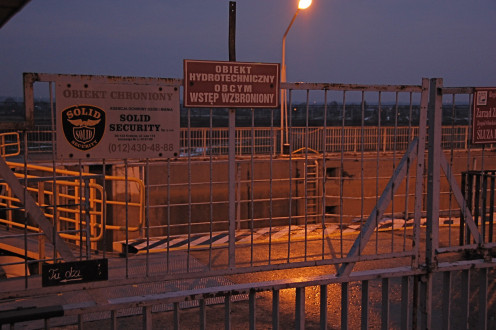
Borek Szlachecki
DSC 6665 Lock Borek Szlachecki See where this picture was taken. [?] Lens: Nikon 18-200mm DX IS
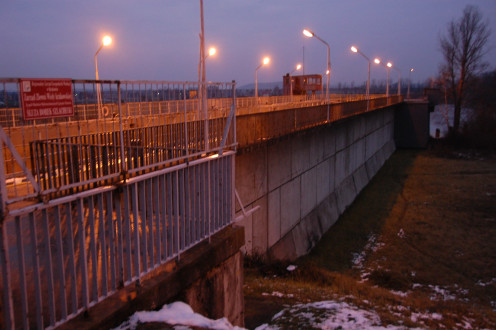
Borek Szlachecki
Lock Borek Szlachecki See where this picture was taken. [?] Lens: Nikon 18-200mm DX IS DSC 6666: this many since buying the camera in March 2008
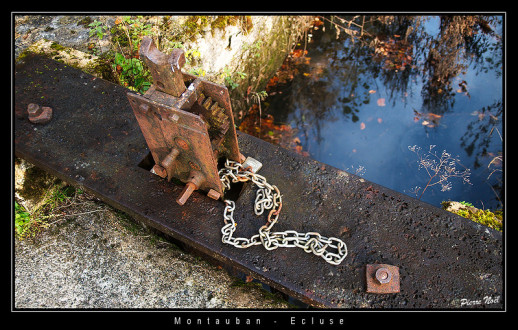
Montauban - Ecluse du ruisseau
L'écluse du petit ruisseau qui actionnait le moulin de Montauban.
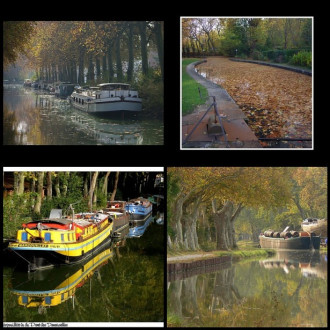
Top Canal X
1. Carte postale, 2. Le canal du midi sous les feuilles., 3. Toulouse, 4. Matin calme Created with fd's Flickr Toys.
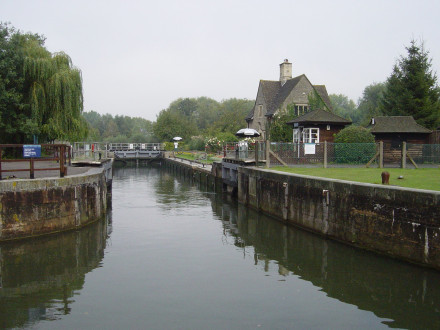
River Thames between Abingdon and Oxford
Sandford-On-Thames OXFORDSHIRE
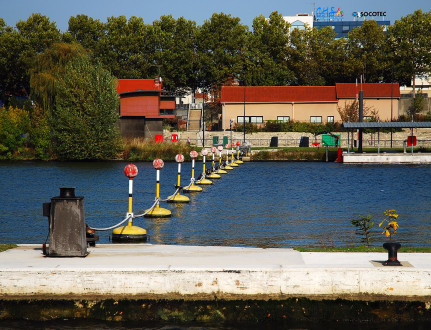
1 - 13 octobre 2008 Promenade du Pont du Port à l'Anglais au Pont d'Ivry Vitry Ecluse
www.tourisme-valdemarne.com/fr/recherche-thematique/fiche... fr.wikipedia.org/wiki/Pont_du_Port_%C3%A0_l'Anglais Le pont du Port à l'Anglais est un pont suspendu avec haubans entre Alfortville et Vitry-sur-Seine. Il a été construit entre 1912 et 1927. Sa portée principale est de 124 m pour une longueur totale de 230 m. le tablier est en acier et les pylônes en béton. Ce pont suspendu est situé à proximité d'un barrage et deux écluses situées sur les communes d'Alfortville et de Vitry-sur-Seine. Son nom vient de la famille Langlois, premiers propriétaires des terres. Ses trottoirs, qui respectent l'esprit traditionnel des sites éclusiers, permettent de profiter d'une vue panoramique et d'observer les péniches qui entrent et sortent de l'écluse.
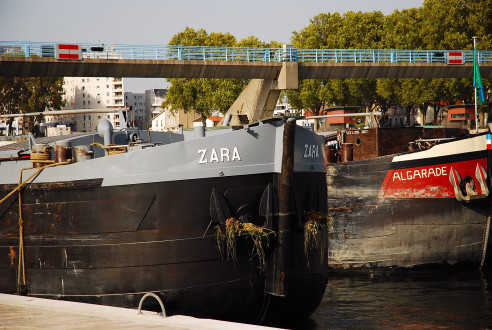
1 - 13 octobre 2008 Promenade du Pont du Port à l'Anglais au Pont d'Ivry Vitry Des bateaux dans l'écluse
www.tourisme-valdemarne.com/fr/recherche-thematique/fiche... fr.wikipedia.org/wiki/Pont_du_Port_%C3%A0_l'Anglais Le pont du Port à l'Anglais est un pont suspendu avec haubans entre Alfortville et Vitry-sur-Seine. Il a été construit entre 1912 et 1927. Sa portée principale est de 124 m pour une longueur totale de 230 m. le tablier est en acier et les pylônes en béton. Ce pont suspendu est situé à proximité d'un barrage et deux écluses situées sur les communes d'Alfortville et de Vitry-sur-Seine. Son nom vient de la famille Langlois, premiers propriétaires des terres. Ses trottoirs, qui respectent l'esprit traditionnel des sites éclusiers, permettent de profiter d'une vue panoramique et d'observer les péniches qui entrent et sortent de l'écluse.
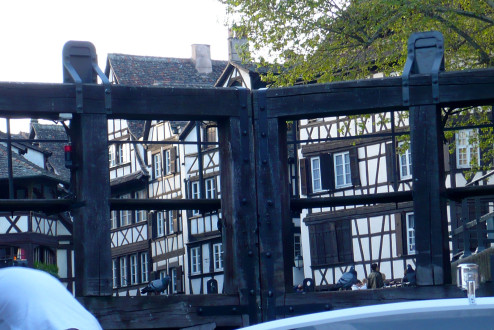
03 mai 2008 Strasbourg Promenade en bateau Passage de l'écluse
2471808336_d4a28c9230_k
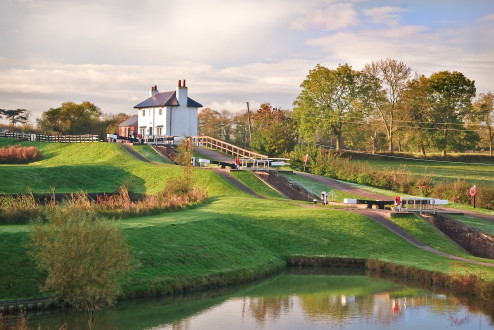
Foxton locks
A cold and bright morning at Foxton locks, Leicestershire. These are the top three locks and their side ponds of a flight of ten (two x five-lock staircases) which raise the Leicester line of the Grand Union Canal by 75 feet.
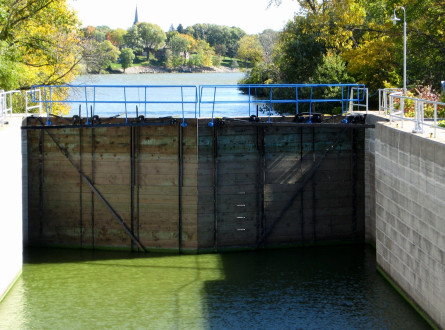
Cedars Lock, 2008
Lower gates
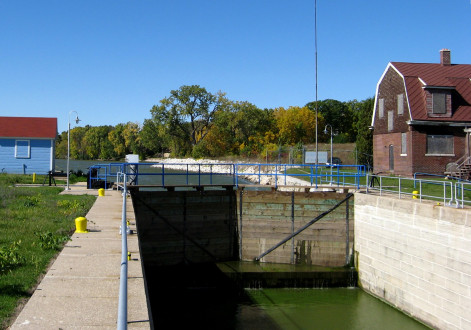
Cedars Lock, 2008
Upper gates, shelter and residence
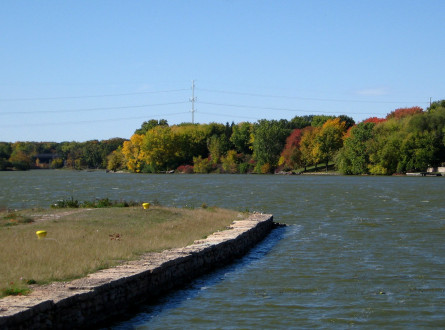
Cedars Lock, 2008
Upper canal retaining wall
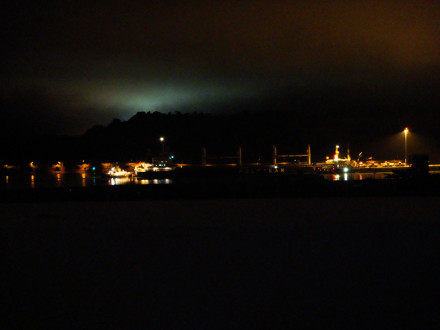
fantasmagórico
2975436539_dbd5544e2d_k
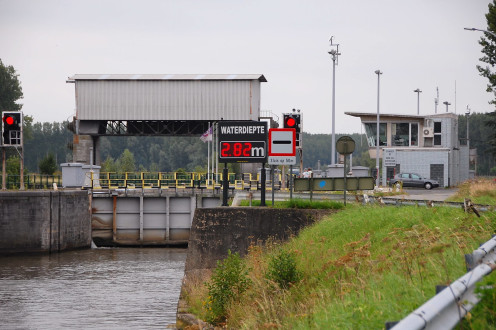
Lock Asper
DSC 4235 Come view my blog See where this picture was taken. [?]
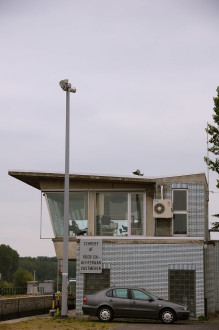
Lock Asper
DSC 4236 See where this picture was taken. [?]
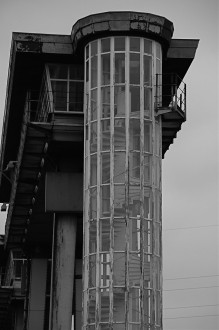
Lock Merelbeke, Belgium
See where this picture was taken. [?] DSC 4205
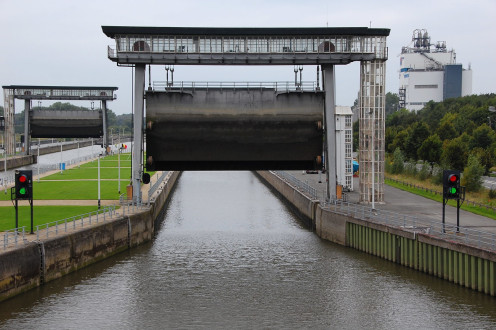
Red and green in Merelbeke, Belgium
Some might be puzzled by the simultaneous red and green light in this image. That is no coincidence. It means that access to the lock is will soon be available when the red light is out. DSC 4211 See where this picture was taken. [?]
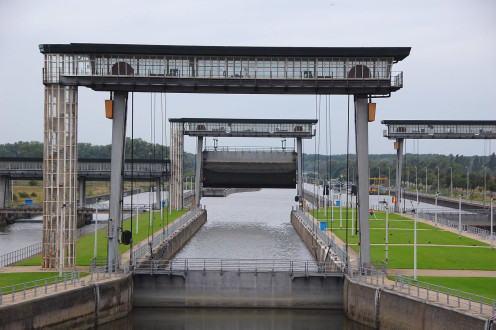
Lock Merelbeke, Belgium
See where this picture was taken. [?] DSC 4214
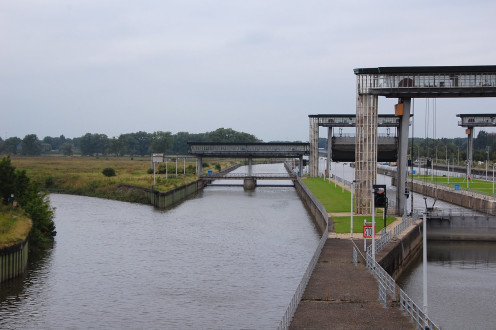
Lock Merelbeke, Belgium
See where this picture was taken. [?] DSC 4216
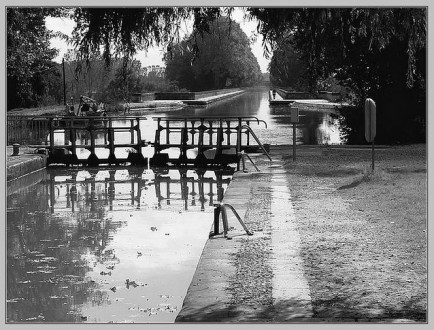
Cacor en N&B
écluse et pont-canal de Cacor à Moissac
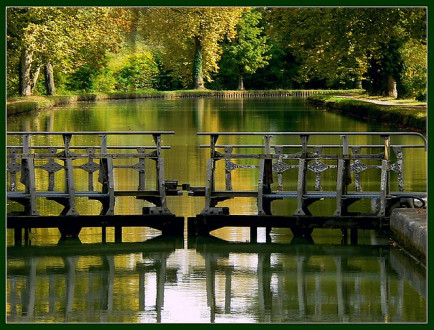
écluse à Moissac
A l'entrée de Moissac, l'écluse de Grégonne porte le n°24 sur le canal latéral à la Garonne. Elle se situe entre le pont-canal et l'écluse de descente dans le Tarn.
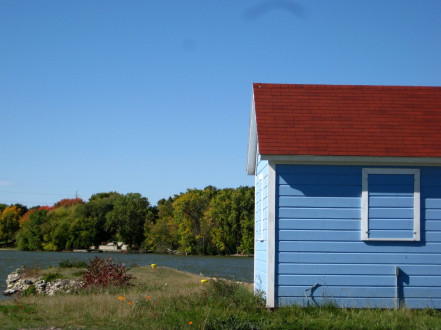
Lock Keeper's Shelter
Cedars Lock, Little Chute, WI
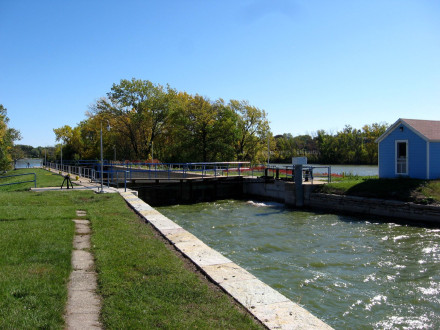
Cedars Lock, Little Chute, WI
Rehabilitated, 2007
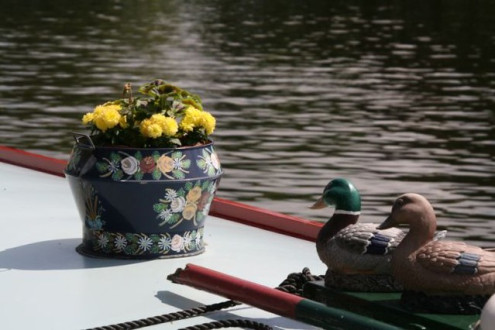
Ducks and flowers
Tranquillity on the Thames - at Teddington Lock
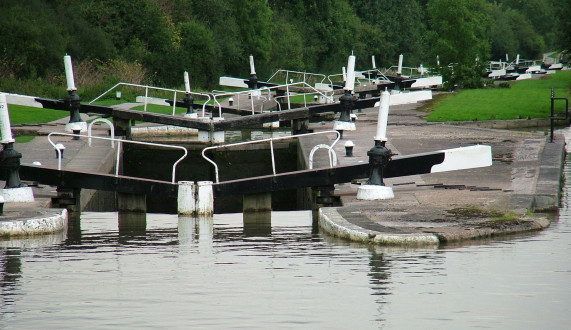
LET ME OUT!
View taken at hatton locks
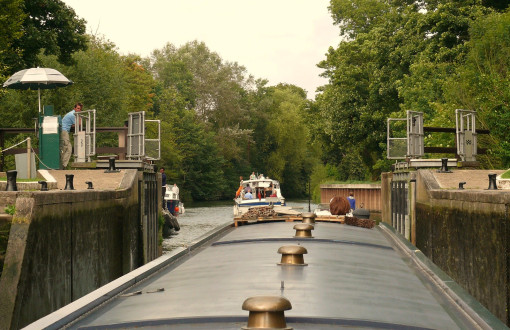
P1010006
Lock on river Thames
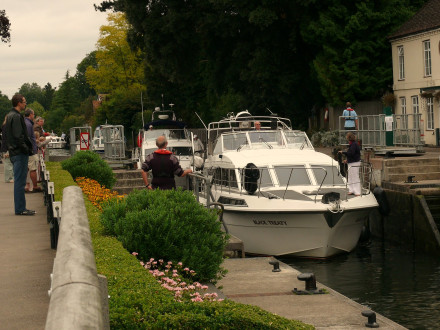
P1010109
Lock on river Thames
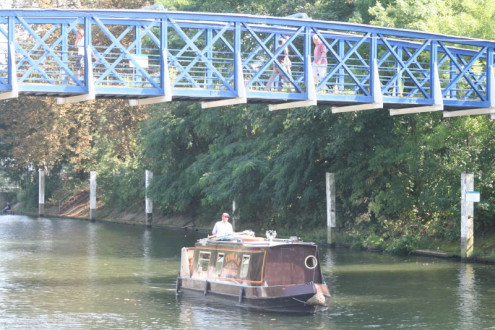
Passing through
The footbridge across the River Thames at Teddington.
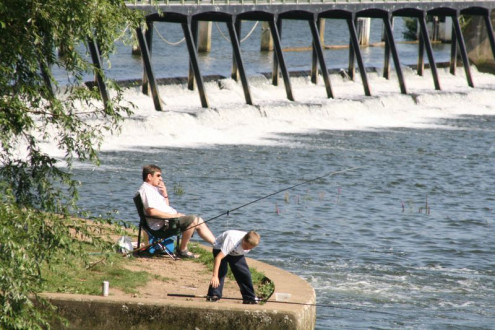
Man and boy
Fishing near the weir on the Thames at Teddington
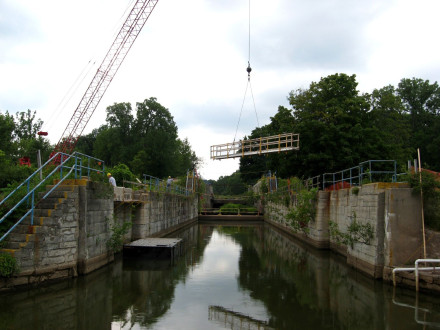
Combined Locks
Temporary bridge being moved
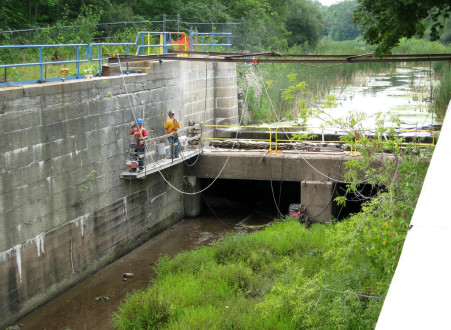
Combined Locks
Tuck pointing underway
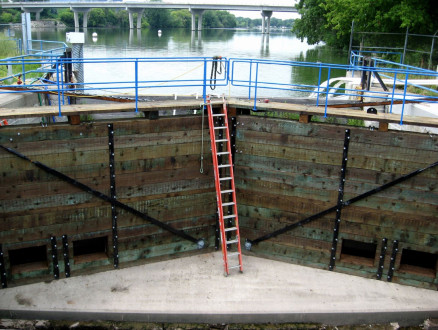
Little Chute Guard Lock
Gates back in place; waiting for valves
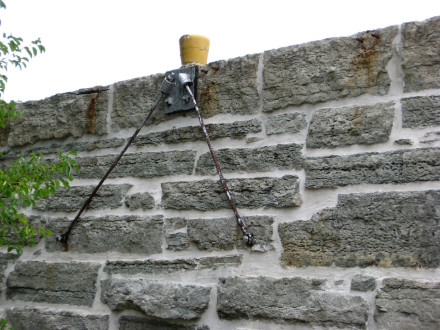
Little Chute Lock
Exterior chamber wall pointed
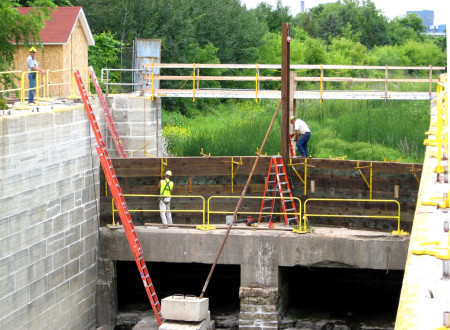
Little Chute Lock
Rebuilding upper gates
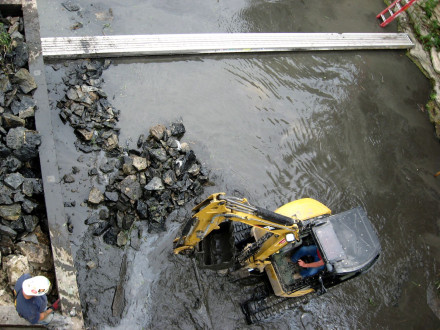
Little Chute Lock
Filling crib at lower end of lock
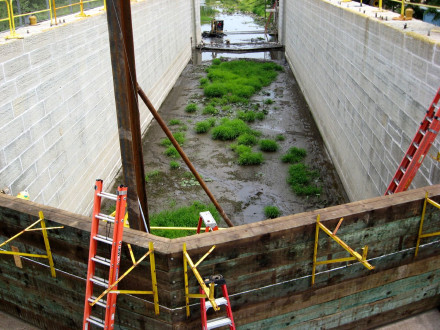
Little Chute Lock
Towards lower end; walls tuckpointed
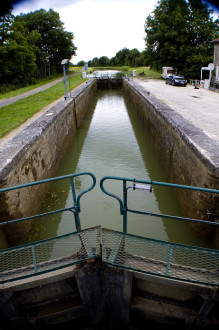
Vakantie Frankrijk 2008_19
Lock. Taken near Sacquernay, France
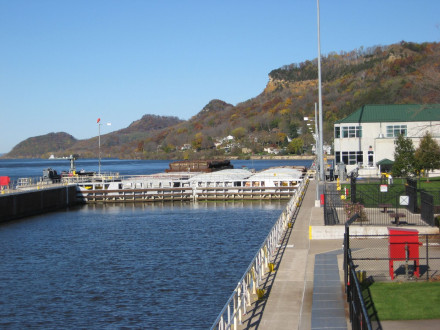
Upper Mississippi River
Lock 6
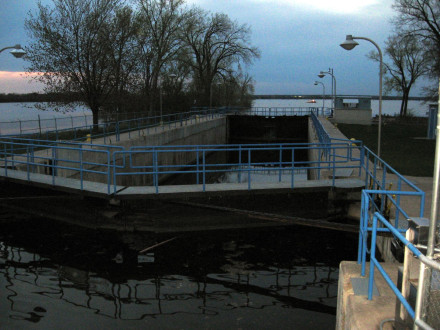
The Menasha Lock
Dusk
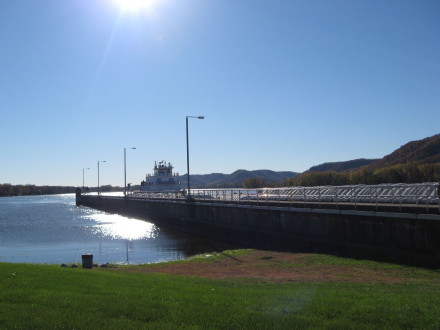
Barge locking through
on the upper Mississippi River
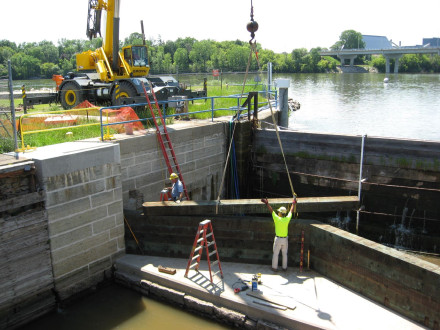
Little Chute Guard Lock, Lower Fox River
pulling new gate timber into place
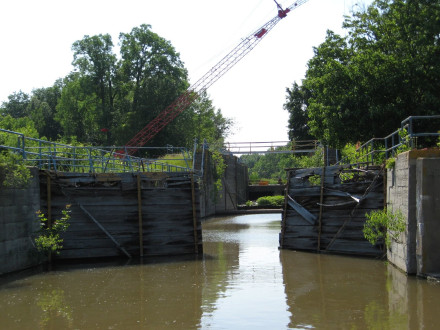
Combined Locks, Lower Fox River
Long view upriver of double lock
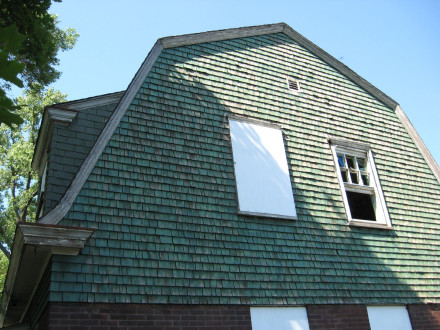
Combined Locks, Lower Fox River
Lock tender's residence
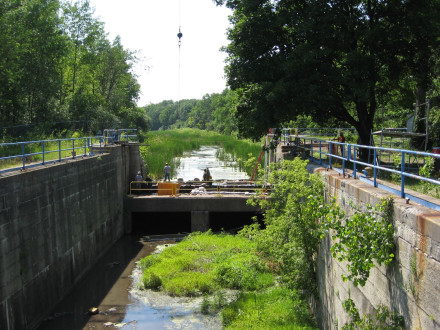
Combined Locks, Lower Fox River
Restoration underway
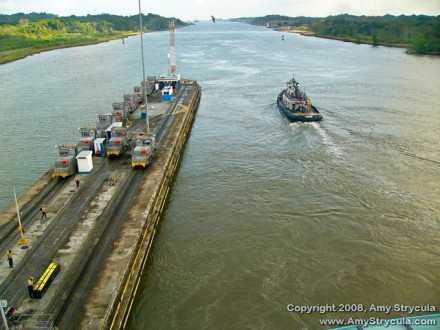
Cruise Ship passes through Gatun Locks, Panama Canal
View from the rear (aft) of Royal Caribbean cruise ship Brilliance of the Seas, as it passes through the Panama Canal's Gatun Locks, entering from the Atlantic Ocean. The maximum size of vessel that can use the canal is known as Panamax; an increasing number of modern ships exceed this limit, and are known as post-Panamax vessels. A ship sailing into the Canal from the Atlantic Ocean enters the the Canal through Limon Bay, the port of the town of Cristobal in the Canal Zone. While the ship is still in deep water, a Canal Pilot comes on board from a small boat, (a launch). The pilot has complete charge of the ship during its trip through the Canal. After passing through the breakwater at the entrance to the bay, the ship proceeds south along the seven-mile channel that leads to the Gatun Locks. The shipyards, docks and fueling stations of Cristobal line the eastern shore of the bay. This lock system, which resembles giant steps, or stairs, is made up of three pairs of concrete chambers that lift ships about 85 feet from sea level to Gatun Lake. Small electric locomotives called 'mules' run on tracks along both sides of the locks. They pull ships through the locks. The locomotives run up an incline at the end of each chamber to reach the next higher level. This allows the same set of locomotives to pull vessels through the entire length of the Gatun Locks. Four to 12 locomotives are used for each ship, depending on its size. As the ship approaches the first chamber, its engines are shut off. Canal workers fasten the ends of the locomotives' towing cables to the vessel. The locomotives then pull the ship into the first chamber. Huge steel gates close silently behind the vessel. Canal workers open valves that allow water from the Gatun Lake to flow into the chamber through openings in the bottom of the lock. During the next eight to 15 minutes, the rising water slowly lifts the ship. When the level of the water, is the same as that in the second chamber, the gates in front of the ship swing outward. The locomotives pull the vessel into the second chamber. Again the water level is raised. The process is repeated until the third chamber of the locks raises the ship to the level of Gatun Lake. The Panama Canal is a man-made canal in Panama which joins the Pacific and Atlantic oceans. One of the largest and most difficult engineering projects ever undertaken, it had an enormous impact on shipping between the two oceans, replacing the long and treacherous route via the Drake Passage and Cape Horn at the southernmost tip of South America. Copyright 2008, Amy Strycula www.AmyStrycula.com
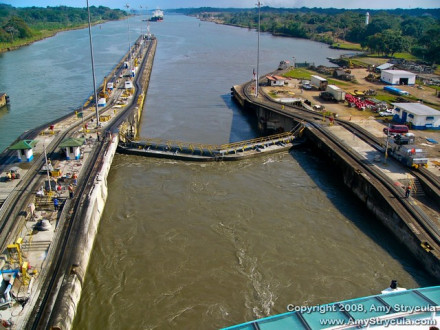
Cruise Ship passes through Gatun Locks, Panama Canal
View from the rear (aft) of Royal Caribbean cruise ship Brilliance of the Seas, as it passes through the Panama Canal's Gatun Locks, entering from the Atlantic Ocean. The maximum size of vessel that can use the canal is known as Panamax; an increasing number of modern ships exceed this limit, and are known as post-Panamax vessels. A ship sailing into the Canal from the Atlantic Ocean enters the the Canal through Limon Bay, the port of the town of Cristobal in the Canal Zone. While the ship is still in deep water, a Canal Pilot comes on board from a small boat, (a launch). The pilot has complete charge of the ship during its trip through the Canal. After passing through the breakwater at the entrance to the bay, the ship proceeds south along the seven-mile channel that leads to the Gatun Locks. The shipyards, docks and fueling stations of Cristobal line the eastern shore of the bay. This lock system, which resembles giant steps, or stairs, is made up of three pairs of concrete chambers that lift ships about 85 feet from sea level to Gatun Lake. Small electric locomotives called 'mules' run on tracks along both sides of the locks. They pull ships through the locks. The locomotives run up an incline at the end of each chamber to reach the next higher level. This allows the same set of locomotives to pull vessels through the entire length of the Gatun Locks. Four to 12 locomotives are used for each ship, depending on its size. As the ship approaches the first chamber, its engines are shut off. Canal workers fasten the ends of the locomotives' towing cables to the vessel. The locomotives then pull the ship into the first chamber. Huge steel gates close silently behind the vessel. Canal workers open valves that allow water from the Gatun Lake to flow into the chamber through openings in the bottom of the lock. During the next eight to 15 minutes, the rising water slowly lifts the ship. When the level of the water, is the same as that in the second chamber, the gates in front of the ship swing outward. The locomotives pull the vessel into the second chamber. Again the water level is raised. The process is repeated until the third chamber of the locks raises the ship to the level of Gatun Lake. The Panama Canal is a man-made canal in Panama which joins the Pacific and Atlantic oceans. One of the largest and most difficult engineering projects ever undertaken, it had an enormous impact on shipping between the two oceans, replacing the long and treacherous route via the Drake Passage and Cape Horn at the southernmost tip of South America. Copyright 2008, Amy Strycula www.AmyStrycula.com
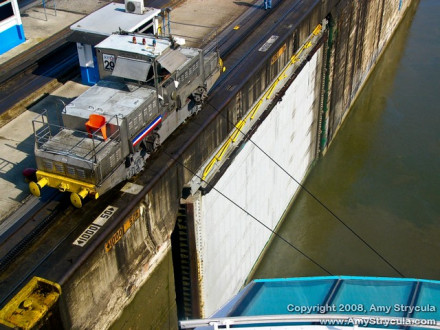
Mule Locomotive tethered to cruise ship, Panama Canal
View from the rear (aft) of Royal Caribbean cruise ship Brilliance of the Seas, as it passes through the Panama Canal's Gatun Locks, entering from the Atlantic Ocean. The maximum size of vessel that can use the canal is known as Panamax; an increasing number of modern ships exceed this limit, and are known as post-Panamax vessels. A ship sailing into the Canal from the Atlantic Ocean enters the the Canal through Limon Bay, the port of the town of Cristobal in the Canal Zone. While the ship is still in deep water, a Canal Pilot comes on board from a small boat, (a launch). The pilot has complete charge of the ship during its trip through the Canal. After passing through the breakwater at the entrance to the bay, the ship proceeds south along the seven-mile channel that leads to the Gatun Locks. The shipyards, docks and fueling stations of Cristobal line the eastern shore of the bay. This lock system, which resembles giant steps, or stairs, is made up of three pairs of concrete chambers that lift ships about 85 feet from sea level to Gatun Lake. Small electric locomotives called 'mules' run on tracks along both sides of the locks. They pull ships through the locks. The locomotives run up an incline at the end of each chamber to reach the next higher level. This allows the same set of locomotives to pull vessels through the entire length of the Gatun Locks. Four to 12 locomotives are used for each ship, depending on its size. As the ship approaches the first chamber, its engines are shut off. Canal workers fasten the ends of the locomotives' towing cables to the vessel. The locomotives then pull the ship into the first chamber. Huge steel gates close silently behind the vessel. Canal workers open valves that allow water from the Gatun Lake to flow into the chamber through openings in the bottom of the lock. During the next eight to 15 minutes, the rising water slowly lifts the ship. When the level of the water, is the same as that in the second chamber, the gates in front of the ship swing outward. The locomotives pull the vessel into the second chamber. Again the water level is raised. The process is repeated until the third chamber of the locks raises the ship to the level of Gatun Lake. The Panama Canal is a man-made canal in Panama which joins the Pacific and Atlantic oceans. One of the largest and most difficult engineering projects ever undertaken, it had an enormous impact on shipping between the two oceans, replacing the long and treacherous route via the Drake Passage and Cape Horn at the southernmost tip of South America. Copyright 2008, Amy Strycula www.AmyStrycula.com
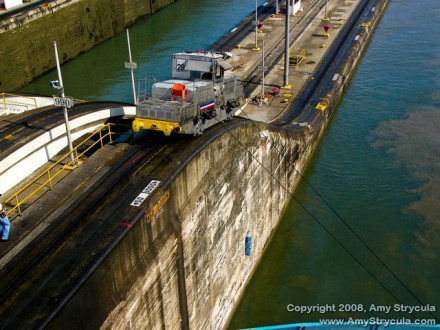
Mule Locomotive tethered to cruise ship, Panama Canal
View from the rear (aft) of Royal Caribbean cruise ship Brilliance of the Seas, as it passes through the Panama Canal's Gatun Locks, entering from the Atlantic Ocean. The maximum size of vessel that can use the canal is known as Panamax; an increasing number of modern ships exceed this limit, and are known as post-Panamax vessels. A ship sailing into the Canal from the Atlantic Ocean enters the the Canal through Limon Bay, the port of the town of Cristobal in the Canal Zone. While the ship is still in deep water, a Canal Pilot comes on board from a small boat, (a launch). The pilot has complete charge of the ship during its trip through the Canal. After passing through the breakwater at the entrance to the bay, the ship proceeds south along the seven-mile channel that leads to the Gatun Locks. The shipyards, docks and fueling stations of Cristobal line the eastern shore of the bay. This lock system, which resembles giant steps, or stairs, is made up of three pairs of concrete chambers that lift ships about 85 feet from sea level to Gatun Lake. Small electric locomotives called 'mules' run on tracks along both sides of the locks. They pull ships through the locks. The locomotives run up an incline at the end of each chamber to reach the next higher level. This allows the same set of locomotives to pull vessels through the entire length of the Gatun Locks. Four to 12 locomotives are used for each ship, depending on its size. As the ship approaches the first chamber, its engines are shut off. Canal workers fasten the ends of the locomotives' towing cables to the vessel. The locomotives then pull the ship into the first chamber. Huge steel gates close silently behind the vessel. Canal workers open valves that allow water from the Gatun Lake to flow into the chamber through openings in the bottom of the lock. During the next eight to 15 minutes, the rising water slowly lifts the ship. When the level of the water, is the same as that in the second chamber, the gates in front of the ship swing outward. The locomotives pull the vessel into the second chamber. Again the water level is raised. The process is repeated until the third chamber of the locks raises the ship to the level of Gatun Lake. The Panama Canal is a man-made canal in Panama which joins the Pacific and Atlantic oceans. One of the largest and most difficult engineering projects ever undertaken, it had an enormous impact on shipping between the two oceans, replacing the long and treacherous route via the Drake Passage and Cape Horn at the southernmost tip of South America. Copyright 2008, Amy Strycula www.AmyStrycula.com
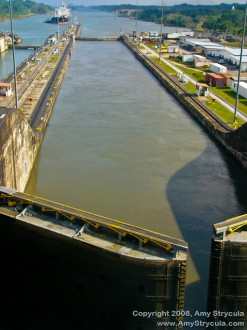
Cruise Ship passes through Gatun Locks, Panama Canal
View from the rear (aft) of Royal Caribbean cruise ship Brilliance of the Seas, as it passes through the Panama Canal's Gatun Locks, entering from the Atlantic Ocean. The maximum size of vessel that can use the canal is known as Panamax; an increasing number of modern ships exceed this limit, and are known as post-Panamax vessels. A ship sailing into the Canal from the Atlantic Ocean enters the the Canal through Limon Bay, the port of the town of Cristobal in the Canal Zone. While the ship is still in deep water, a Canal Pilot comes on board from a small boat, (a launch). The pilot has complete charge of the ship during its trip through the Canal. After passing through the breakwater at the entrance to the bay, the ship proceeds south along the seven-mile channel that leads to the Gatun Locks. The shipyards, docks and fueling stations of Cristobal line the eastern shore of the bay. This lock system, which resembles giant steps, or stairs, is made up of three pairs of concrete chambers that lift ships about 85 feet from sea level to Gatun Lake. Small electric locomotives called 'mules' run on tracks along both sides of the locks. They pull ships through the locks. The locomotives run up an incline at the end of each chamber to reach the next higher level. This allows the same set of locomotives to pull vessels through the entire length of the Gatun Locks. Four to 12 locomotives are used for each ship, depending on its size. As the ship approaches the first chamber, its engines are shut off. Canal workers fasten the ends of the locomotives' towing cables to the vessel. The locomotives then pull the ship into the first chamber. Huge steel gates close silently behind the vessel. Canal workers open valves that allow water from the Gatun Lake to flow into the chamber through openings in the bottom of the lock. During the next eight to 15 minutes, the rising water slowly lifts the ship. When the level of the water, is the same as that in the second chamber, the gates in front of the ship swing outward. The locomotives pull the vessel into the second chamber. Again the water level is raised. The process is repeated until the third chamber of the locks raises the ship to the level of Gatun Lake. The Panama Canal is a man-made canal in Panama which joins the Pacific and Atlantic oceans. One of the largest and most difficult engineering projects ever undertaken, it had an enormous impact on shipping between the two oceans, replacing the long and treacherous route via the Drake Passage and Cape Horn at the southernmost tip of South America. Copyright 2008, Amy Strycula www.AmyStrycula.com
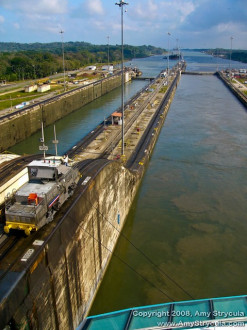
Mule Locomotive tethered to cruise ship, Panama Canal
View from the rear (aft) of Royal Caribbean cruise ship Brilliance of the Seas, as it passes through the Panama Canal's Gatun Locks, entering from the Atlantic Ocean. The maximum size of vessel that can use the canal is known as Panamax; an increasing number of modern ships exceed this limit, and are known as post-Panamax vessels. A ship sailing into the Canal from the Atlantic Ocean enters the the Canal through Limon Bay, the port of the town of Cristobal in the Canal Zone. While the ship is still in deep water, a Canal Pilot comes on board from a small boat, (a launch). The pilot has complete charge of the ship during its trip through the Canal. After passing through the breakwater at the entrance to the bay, the ship proceeds south along the seven-mile channel that leads to the Gatun Locks. The shipyards, docks and fueling stations of Cristobal line the eastern shore of the bay. This lock system, which resembles giant steps, or stairs, is made up of three pairs of concrete chambers that lift ships about 85 feet from sea level to Gatun Lake. Small electric locomotives called 'mules' run on tracks along both sides of the locks. They pull ships through the locks. The locomotives run up an incline at the end of each chamber to reach the next higher level. This allows the same set of locomotives to pull vessels through the entire length of the Gatun Locks. Four to 12 locomotives are used for each ship, depending on its size. As the ship approaches the first chamber, its engines are shut off. Canal workers fasten the ends of the locomotives' towing cables to the vessel. The locomotives then pull the ship into the first chamber. Huge steel gates close silently behind the vessel. Canal workers open valves that allow water from the Gatun Lake to flow into the chamber through openings in the bottom of the lock. During the next eight to 15 minutes, the rising water slowly lifts the ship. When the level of the water, is the same as that in the second chamber, the gates in front of the ship swing outward. The locomotives pull the vessel into the second chamber. Again the water level is raised. The process is repeated until the third chamber of the locks raises the ship to the level of Gatun Lake. The Panama Canal is a man-made canal in Panama which joins the Pacific and Atlantic oceans. One of the largest and most difficult engineering projects ever undertaken, it had an enormous impact on shipping between the two oceans, replacing the long and treacherous route via the Drake Passage and Cape Horn at the southernmost tip of South America. Copyright 2008, Amy Strycula www.AmyStrycula.com
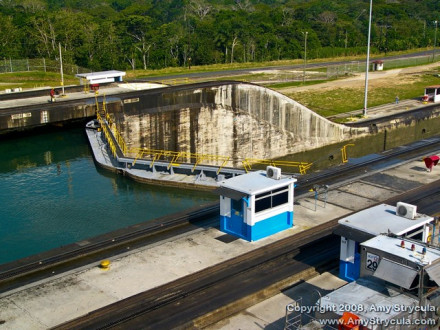
Cruise Ship passes through Gatun Locks, Panama Canal
View from the rear (aft) of Royal Caribbean cruise ship Brilliance of the Seas, as it passes through the Panama Canal's Gatun Locks, entering from the Atlantic Ocean. The maximum size of vessel that can use the canal is known as Panamax; an increasing number of modern ships exceed this limit, and are known as post-Panamax vessels. A ship sailing into the Canal from the Atlantic Ocean enters the the Canal through Limon Bay, the port of the town of Cristobal in the Canal Zone. While the ship is still in deep water, a Canal Pilot comes on board from a small boat, (a launch). The pilot has complete charge of the ship during its trip through the Canal. After passing through the breakwater at the entrance to the bay, the ship proceeds south along the seven-mile channel that leads to the Gatun Locks. The shipyards, docks and fueling stations of Cristobal line the eastern shore of the bay. This lock system, which resembles giant steps, or stairs, is made up of three pairs of concrete chambers that lift ships about 85 feet from sea level to Gatun Lake. Small electric locomotives called 'mules' run on tracks along both sides of the locks. They pull ships through the locks. The locomotives run up an incline at the end of each chamber to reach the next higher level. This allows the same set of locomotives to pull vessels through the entire length of the Gatun Locks. Four to 12 locomotives are used for each ship, depending on its size. As the ship approaches the first chamber, its engines are shut off. Canal workers fasten the ends of the locomotives' towing cables to the vessel. The locomotives then pull the ship into the first chamber. Huge steel gates close silently behind the vessel. Canal workers open valves that allow water from the Gatun Lake to flow into the chamber through openings in the bottom of the lock. During the next eight to 15 minutes, the rising water slowly lifts the ship. When the level of the water, is the same as that in the second chamber, the gates in front of the ship swing outward. The locomotives pull the vessel into the second chamber. Again the water level is raised. The process is repeated until the third chamber of the locks raises the ship to the level of Gatun Lake. The Panama Canal is a man-made canal in Panama which joins the Pacific and Atlantic oceans. One of the largest and most difficult engineering projects ever undertaken, it had an enormous impact on shipping between the two oceans, replacing the long and treacherous route via the Drake Passage and Cape Horn at the southernmost tip of South America. Copyright 2008, Amy Strycula www.AmyStrycula.com
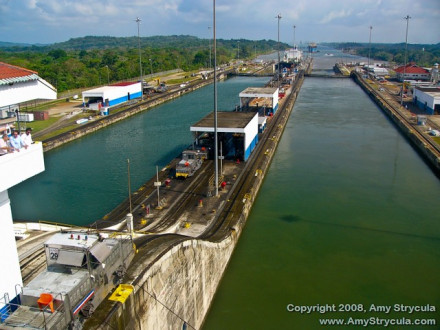
Cruise Ship passes through Gatun Locks, Panama Canal
View from the rear (aft) of Royal Caribbean cruise ship Brilliance of the Seas, as it passes through the Panama Canal's Gatun Locks, entering from the Atlantic Ocean. The maximum size of vessel that can use the canal is known as Panamax; an increasing number of modern ships exceed this limit, and are known as post-Panamax vessels. A ship sailing into the Canal from the Atlantic Ocean enters the the Canal through Limon Bay, the port of the town of Cristobal in the Canal Zone. While the ship is still in deep water, a Canal Pilot comes on board from a small boat, (a launch). The pilot has complete charge of the ship during its trip through the Canal. After passing through the breakwater at the entrance to the bay, the ship proceeds south along the seven-mile channel that leads to the Gatun Locks. The shipyards, docks and fueling stations of Cristobal line the eastern shore of the bay. This lock system, which resembles giant steps, or stairs, is made up of three pairs of concrete chambers that lift ships about 85 feet from sea level to Gatun Lake. Small electric locomotives called 'mules' run on tracks along both sides of the locks. They pull ships through the locks. The locomotives run up an incline at the end of each chamber to reach the next higher level. This allows the same set of locomotives to pull vessels through the entire length of the Gatun Locks. Four to 12 locomotives are used for each ship, depending on its size. As the ship approaches the first chamber, its engines are shut off. Canal workers fasten the ends of the locomotives' towing cables to the vessel. The locomotives then pull the ship into the first chamber. Huge steel gates close silently behind the vessel. Canal workers open valves that allow water from the Gatun Lake to flow into the chamber through openings in the bottom of the lock. During the next eight to 15 minutes, the rising water slowly lifts the ship. When the level of the water, is the same as that in the second chamber, the gates in front of the ship swing outward. The locomotives pull the vessel into the second chamber. Again the water level is raised. The process is repeated until the third chamber of the locks raises the ship to the level of Gatun Lake. The Panama Canal is a man-made canal in Panama which joins the Pacific and Atlantic oceans. One of the largest and most difficult engineering projects ever undertaken, it had an enormous impact on shipping between the two oceans, replacing the long and treacherous route via the Drake Passage and Cape Horn at the southernmost tip of South America. Copyright 2008, Amy Strycula www.AmyStrycula.com
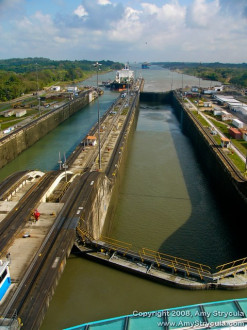
Cruise Ship passes through Gatun Locks, Panama Canal
View from the rear (aft) of Royal Caribbean cruise ship Brilliance of the Seas, as it passes through the Panama Canal's Gatun Locks, entering from the Atlantic Ocean. The maximum size of vessel that can use the canal is known as Panamax; an increasing number of modern ships exceed this limit, and are known as post-Panamax vessels. A ship sailing into the Canal from the Atlantic Ocean enters the the Canal through Limon Bay, the port of the town of Cristobal in the Canal Zone. While the ship is still in deep water, a Canal Pilot comes on board from a small boat, (a launch). The pilot has complete charge of the ship during its trip through the Canal. After passing through the breakwater at the entrance to the bay, the ship proceeds south along the seven-mile channel that leads to the Gatun Locks. The shipyards, docks and fueling stations of Cristobal line the eastern shore of the bay. This lock system, which resembles giant steps, or stairs, is made up of three pairs of concrete chambers that lift ships about 85 feet from sea level to Gatun Lake. Small electric locomotives called 'mules' run on tracks along both sides of the locks. They pull ships through the locks. The locomotives run up an incline at the end of each chamber to reach the next higher level. This allows the same set of locomotives to pull vessels through the entire length of the Gatun Locks. Four to 12 locomotives are used for each ship, depending on its size. As the ship approaches the first chamber, its engines are shut off. Canal workers fasten the ends of the locomotives' towing cables to the vessel. The locomotives then pull the ship into the first chamber. Huge steel gates close silently behind the vessel. Canal workers open valves that allow water from the Gatun Lake to flow into the chamber through openings in the bottom of the lock. During the next eight to 15 minutes, the rising water slowly lifts the ship. When the level of the water, is the same as that in the second chamber, the gates in front of the ship swing outward. The locomotives pull the vessel into the second chamber. Again the water level is raised. The process is repeated until the third chamber of the locks raises the ship to the level of Gatun Lake. The Panama Canal is a man-made canal in Panama which joins the Pacific and Atlantic oceans. One of the largest and most difficult engineering projects ever undertaken, it had an enormous impact on shipping between the two oceans, replacing the long and treacherous route via the Drake Passage and Cape Horn at the southernmost tip of South America. Copyright 2008, Amy Strycula www.AmyStrycula.com
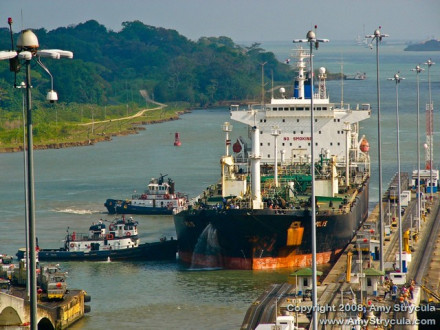
Tugs assist ship passing through Gatun Locks, Panama Canal
View from the rear (aft) of Royal Caribbean cruise ship Brilliance of the Seas, as it passes through the Panama Canal's Gatun Locks, entering from the Atlantic Ocean. The maximum size of vessel that can use the canal is known as Panamax; an increasing number of modern ships exceed this limit, and are known as post-Panamax vessels. A ship sailing into the Canal from the Atlantic Ocean enters the the Canal through Limon Bay, the port of the town of Cristobal in the Canal Zone. While the ship is still in deep water, a Canal Pilot comes on board from a small boat, (a launch). The pilot has complete charge of the ship during its trip through the Canal. After passing through the breakwater at the entrance to the bay, the ship proceeds south along the seven-mile channel that leads to the Gatun Locks. The shipyards, docks and fueling stations of Cristobal line the eastern shore of the bay. This lock system, which resembles giant steps, or stairs, is made up of three pairs of concrete chambers that lift ships about 85 feet from sea level to Gatun Lake. Small electric locomotives called 'mules' run on tracks along both sides of the locks. They pull ships through the locks. The locomotives run up an incline at the end of each chamber to reach the next higher level. This allows the same set of locomotives to pull vessels through the entire length of the Gatun Locks. Four to 12 locomotives are used for each ship, depending on its size. As the ship approaches the first chamber, its engines are shut off. Canal workers fasten the ends of the locomotives' towing cables to the vessel. The locomotives then pull the ship into the first chamber. Huge steel gates close silently behind the vessel. Canal workers open valves that allow water from the Gatun Lake to flow into the chamber through openings in the bottom of the lock. During the next eight to 15 minutes, the rising water slowly lifts the ship. When the level of the water, is the same as that in the second chamber, the gates in front of the ship swing outward. The locomotives pull the vessel into the second chamber. Again the water level is raised. The process is repeated until the third chamber of the locks raises the ship to the level of Gatun Lake. The Panama Canal is a man-made canal in Panama which joins the Pacific and Atlantic oceans. One of the largest and most difficult engineering projects ever undertaken, it had an enormous impact on shipping between the two oceans, replacing the long and treacherous route via the Drake Passage and Cape Horn at the southernmost tip of South America. Copyright 2008, Amy Strycula www.AmyStrycula.com
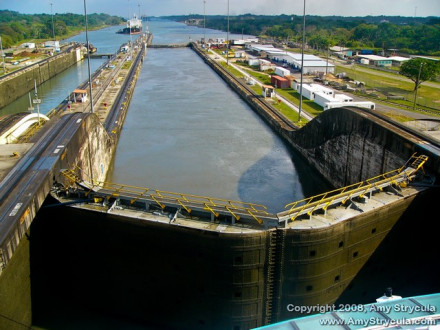
Cruise Ship passes through Gatun Locks, Panama Canal
View from the rear (aft) of Royal Caribbean cruise ship Brilliance of the Seas, as it passes through the Panama Canal's Gatun Locks, entering from the Atlantic Ocean. The maximum size of vessel that can use the canal is known as Panamax; an increasing number of modern ships exceed this limit, and are known as post-Panamax vessels. A ship sailing into the Canal from the Atlantic Ocean enters the the Canal through Limon Bay, the port of the town of Cristobal in the Canal Zone. While the ship is still in deep water, a Canal Pilot comes on board from a small boat, (a launch). The pilot has complete charge of the ship during its trip through the Canal. After passing through the breakwater at the entrance to the bay, the ship proceeds south along the seven-mile channel that leads to the Gatun Locks. The shipyards, docks and fueling stations of Cristobal line the eastern shore of the bay. This lock system, which resembles giant steps, or stairs, is made up of three pairs of concrete chambers that lift ships about 85 feet from sea level to Gatun Lake. Small electric locomotives called 'mules' run on tracks along both sides of the locks. They pull ships through the locks. The locomotives run up an incline at the end of each chamber to reach the next higher level. This allows the same set of locomotives to pull vessels through the entire length of the Gatun Locks. Four to 12 locomotives are used for each ship, depending on its size. As the ship approaches the first chamber, its engines are shut off. Canal workers fasten the ends of the locomotives' towing cables to the vessel. The locomotives then pull the ship into the first chamber. Huge steel gates close silently behind the vessel. Canal workers open valves that allow water from the Gatun Lake to flow into the chamber through openings in the bottom of the lock. During the next eight to 15 minutes, the rising water slowly lifts the ship. When the level of the water, is the same as that in the second chamber, the gates in front of the ship swing outward. The locomotives pull the vessel into the second chamber. Again the water level is raised. The process is repeated until the third chamber of the locks raises the ship to the level of Gatun Lake. The Panama Canal is a man-made canal in Panama which joins the Pacific and Atlantic oceans. One of the largest and most difficult engineering projects ever undertaken, it had an enormous impact on shipping between the two oceans, replacing the long and treacherous route via the Drake Passage and Cape Horn at the southernmost tip of South America. Copyright 2008, Amy Strycula www.AmyStrycula.com
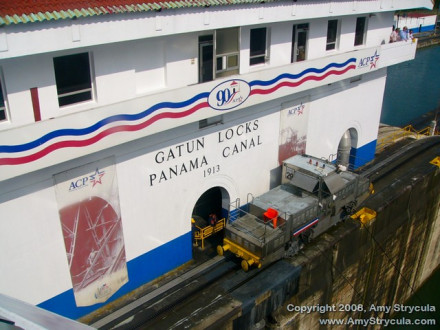
Cruise Ship passes through Gatun Locks, Panama Canal
View from the rear (aft) of Royal Caribbean cruise ship Brilliance of the Seas, as it passes through the Panama Canal's Gatun Locks, entering from the Atlantic Ocean. The maximum size of vessel that can use the canal is known as Panamax; an increasing number of modern ships exceed this limit, and are known as post-Panamax vessels. A ship sailing into the Canal from the Atlantic Ocean enters the the Canal through Limon Bay, the port of the town of Cristobal in the Canal Zone. While the ship is still in deep water, a Canal Pilot comes on board from a small boat, (a launch). The pilot has complete charge of the ship during its trip through the Canal. After passing through the breakwater at the entrance to the bay, the ship proceeds south along the seven-mile channel that leads to the Gatun Locks. The shipyards, docks and fueling stations of Cristobal line the eastern shore of the bay. This lock system, which resembles giant steps, or stairs, is made up of three pairs of concrete chambers that lift ships about 85 feet from sea level to Gatun Lake. Small electric locomotives called 'mules' run on tracks along both sides of the locks. They pull ships through the locks. The locomotives run up an incline at the end of each chamber to reach the next higher level. This allows the same set of locomotives to pull vessels through the entire length of the Gatun Locks. Four to 12 locomotives are used for each ship, depending on its size. As the ship approaches the first chamber, its engines are shut off. Canal workers fasten the ends of the locomotives' towing cables to the vessel. The locomotives then pull the ship into the first chamber. Huge steel gates close silently behind the vessel. Canal workers open valves that allow water from the Gatun Lake to flow into the chamber through openings in the bottom of the lock. During the next eight to 15 minutes, the rising water slowly lifts the ship. When the level of the water, is the same as that in the second chamber, the gates in front of the ship swing outward. The locomotives pull the vessel into the second chamber. Again the water level is raised. The process is repeated until the third chamber of the locks raises the ship to the level of Gatun Lake. The Panama Canal is a man-made canal in Panama which joins the Pacific and Atlantic oceans. One of the largest and most difficult engineering projects ever undertaken, it had an enormous impact on shipping between the two oceans, replacing the long and treacherous route via the Drake Passage and Cape Horn at the southernmost tip of South America. Copyright 2008, Amy Strycula www.AmyStrycula.com
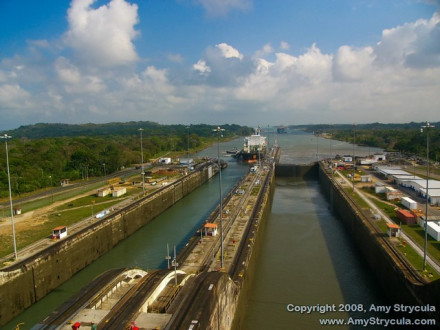
Cruise Ship passes through Gatun Locks, Panama Canal
View from the rear (aft) of Royal Caribbean cruise ship Brilliance of the Seas, as it passes through the Panama Canal's Gatun Locks, entering from the Atlantic Ocean. The maximum size of vessel that can use the canal is known as Panamax; an increasing number of modern ships exceed this limit, and are known as post-Panamax vessels. A ship sailing into the Canal from the Atlantic Ocean enters the the Canal through Limon Bay, the port of the town of Cristobal in the Canal Zone. While the ship is still in deep water, a Canal Pilot comes on board from a small boat, (a launch). The pilot has complete charge of the ship during its trip through the Canal. After passing through the breakwater at the entrance to the bay, the ship proceeds south along the seven-mile channel that leads to the Gatun Locks. The shipyards, docks and fueling stations of Cristobal line the eastern shore of the bay. This lock system, which resembles giant steps, or stairs, is made up of three pairs of concrete chambers that lift ships about 85 feet from sea level to Gatun Lake. Small electric locomotives called 'mules' run on tracks along both sides of the locks. They pull ships through the locks. The locomotives run up an incline at the end of each chamber to reach the next higher level. This allows the same set of locomotives to pull vessels through the entire length of the Gatun Locks. Four to 12 locomotives are used for each ship, depending on its size. As the ship approaches the first chamber, its engines are shut off. Canal workers fasten the ends of the locomotives' towing cables to the vessel. The locomotives then pull the ship into the first chamber. Huge steel gates close silently behind the vessel. Canal workers open valves that allow water from the Gatun Lake to flow into the chamber through openings in the bottom of the lock. During the next eight to 15 minutes, the rising water slowly lifts the ship. When the level of the water, is the same as that in the second chamber, the gates in front of the ship swing outward. The locomotives pull the vessel into the second chamber. Again the water level is raised. The process is repeated until the third chamber of the locks raises the ship to the level of Gatun Lake. The Panama Canal is a man-made canal in Panama which joins the Pacific and Atlantic oceans. One of the largest and most difficult engineering projects ever undertaken, it had an enormous impact on shipping between the two oceans, replacing the long and treacherous route via the Drake Passage and Cape Horn at the southernmost tip of South America. Copyright 2008, Amy Strycula www.AmyStrycula.com
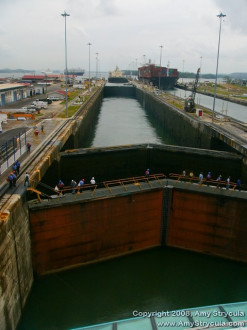
Cruise Ship passes through Gatun Locks, Panama Canal
View from the rear (aft) of Royal Caribbean cruise ship Brilliance of the Seas, as it passes through the Panama Canal's Gatun Locks, entering from the Atlantic Ocean. The maximum size of vessel that can use the canal is known as Panamax; an increasing number of modern ships exceed this limit, and are known as post-Panamax vessels. A ship sailing into the Canal from the Atlantic Ocean enters the the Canal through Limon Bay, the port of the town of Cristobal in the Canal Zone. While the ship is still in deep water, a Canal Pilot comes on board from a small boat, (a launch). The pilot has complete charge of the ship during its trip through the Canal. After passing through the breakwater at the entrance to the bay, the ship proceeds south along the seven-mile channel that leads to the Gatun Locks. The shipyards, docks and fueling stations of Cristobal line the eastern shore of the bay. This lock system, which resembles giant steps, or stairs, is made up of three pairs of concrete chambers that lift ships about 85 feet from sea level to Gatun Lake. Small electric locomotives called 'mules' run on tracks along both sides of the locks. They pull ships through the locks. The locomotives run up an incline at the end of each chamber to reach the next higher level. This allows the same set of locomotives to pull vessels through the entire length of the Gatun Locks. Four to 12 locomotives are used for each ship, depending on its size. As the ship approaches the first chamber, its engines are shut off. Canal workers fasten the ends of the locomotives' towing cables to the vessel. The locomotives then pull the ship into the first chamber. Huge steel gates close silently behind the vessel. Canal workers open valves that allow water from the Gatun Lake to flow into the chamber through openings in the bottom of the lock. During the next eight to 15 minutes, the rising water slowly lifts the ship. When the level of the water, is the same as that in the second chamber, the gates in front of the ship swing outward. The locomotives pull the vessel into the second chamber. Again the water level is raised. The process is repeated until the third chamber of the locks raises the ship to the level of Gatun Lake. The Panama Canal is a man-made canal in Panama which joins the Pacific and Atlantic oceans. One of the largest and most difficult engineering projects ever undertaken, it had an enormous impact on shipping between the two oceans, replacing the long and treacherous route via the Drake Passage and Cape Horn at the southernmost tip of South America. Copyright 2008, Amy Strycula www.AmyStrycula.com
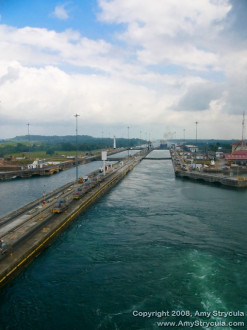
Cruise Ship passes through Gatun Locks, Panama Canal
View from the rear (aft) of Royal Caribbean cruise ship Brilliance of the Seas, as it passes through the Panama Canal's Gatun Locks, entering from the Atlantic Ocean. The maximum size of vessel that can use the canal is known as Panamax; an increasing number of modern ships exceed this limit, and are known as post-Panamax vessels. A ship sailing into the Canal from the Atlantic Ocean enters the the Canal through Limon Bay, the port of the town of Cristobal in the Canal Zone. While the ship is still in deep water, a Canal Pilot comes on board from a small boat, (a launch). The pilot has complete charge of the ship during its trip through the Canal. After passing through the breakwater at the entrance to the bay, the ship proceeds south along the seven-mile channel that leads to the Gatun Locks. The shipyards, docks and fueling stations of Cristobal line the eastern shore of the bay. This lock system, which resembles giant steps, or stairs, is made up of three pairs of concrete chambers that lift ships about 85 feet from sea level to Gatun Lake. Small electric locomotives called 'mules' run on tracks along both sides of the locks. They pull ships through the locks. The locomotives run up an incline at the end of each chamber to reach the next higher level. This allows the same set of locomotives to pull vessels through the entire length of the Gatun Locks. Four to 12 locomotives are used for each ship, depending on its size. As the ship approaches the first chamber, its engines are shut off. Canal workers fasten the ends of the locomotives' towing cables to the vessel. The locomotives then pull the ship into the first chamber. Huge steel gates close silently behind the vessel. Canal workers open valves that allow water from the Gatun Lake to flow into the chamber through openings in the bottom of the lock. During the next eight to 15 minutes, the rising water slowly lifts the ship. When the level of the water, is the same as that in the second chamber, the gates in front of the ship swing outward. The locomotives pull the vessel into the second chamber. Again the water level is raised. The process is repeated until the third chamber of the locks raises the ship to the level of Gatun Lake. The Panama Canal is a man-made canal in Panama which joins the Pacific and Atlantic oceans. One of the largest and most difficult engineering projects ever undertaken, it had an enormous impact on shipping between the two oceans, replacing the long and treacherous route via the Drake Passage and Cape Horn at the southernmost tip of South America. Copyright 2008, Amy Strycula www.AmyStrycula.com
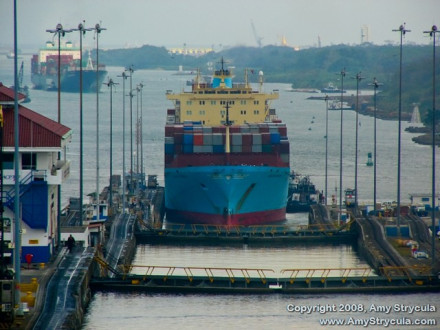
Container Ships entering Gatun Locks, Panama Canal
View from the rear (aft) of Royal Caribbean cruise ship Brilliance of the Seas, as it passes through the Panama Canal's Gatun Locks, entering from the Atlantic Ocean. The maximum size of vessel that can use the canal is known as Panamax; an increasing number of modern ships exceed this limit, and are known as post-Panamax vessels. A ship sailing into the Canal from the Atlantic Ocean enters the the Canal through Limon Bay, the port of the town of Cristobal in the Canal Zone. While the ship is still in deep water, a Canal Pilot comes on board from a small boat, (a launch). The pilot has complete charge of the ship during its trip through the Canal. After passing through the breakwater at the entrance to the bay, the ship proceeds south along the seven-mile channel that leads to the Gatun Locks. The shipyards, docks and fueling stations of Cristobal line the eastern shore of the bay. This lock system, which resembles giant steps, or stairs, is made up of three pairs of concrete chambers that lift ships about 85 feet from sea level to Gatun Lake. Small electric locomotives called 'mules' run on tracks along both sides of the locks. They pull ships through the locks. The locomotives run up an incline at the end of each chamber to reach the next higher level. This allows the same set of locomotives to pull vessels through the entire length of the Gatun Locks. Four to 12 locomotives are used for each ship, depending on its size. As the ship approaches the first chamber, its engines are shut off. Canal workers fasten the ends of the locomotives' towing cables to the vessel. The locomotives then pull the ship into the first chamber. Huge steel gates close silently behind the vessel. Canal workers open valves that allow water from the Gatun Lake to flow into the chamber through openings in the bottom of the lock. During the next eight to 15 minutes, the rising water slowly lifts the ship. When the level of the water, is the same as that in the second chamber, the gates in front of the ship swing outward. The locomotives pull the vessel into the second chamber. Again the water level is raised. The process is repeated until the third chamber of the locks raises the ship to the level of Gatun Lake. The Panama Canal is a man-made canal in Panama which joins the Pacific and Atlantic oceans. One of the largest and most difficult engineering projects ever undertaken, it had an enormous impact on shipping between the two oceans, replacing the long and treacherous route via the Drake Passage and Cape Horn at the southernmost tip of South America. Copyright 2008, Amy Strycula www.AmyStrycula.com
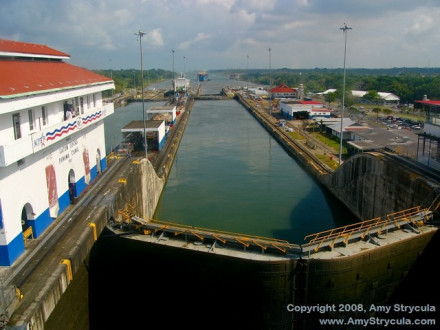
Cruise Ship passes through Gatun Locks, Panama Canal
View from the rear (aft) of Royal Caribbean cruise ship Brilliance of the Seas, as it passes through the Panama Canal's Gatun Locks, entering from the Atlantic Ocean. The maximum size of vessel that can use the canal is known as Panamax; an increasing number of modern ships exceed this limit, and are known as post-Panamax vessels. A ship sailing into the Canal from the Atlantic Ocean enters the the Canal through Limon Bay, the port of the town of Cristobal in the Canal Zone. While the ship is still in deep water, a Canal Pilot comes on board from a small boat, (a launch). The pilot has complete charge of the ship during its trip through the Canal. After passing through the breakwater at the entrance to the bay, the ship proceeds south along the seven-mile channel that leads to the Gatun Locks. The shipyards, docks and fueling stations of Cristobal line the eastern shore of the bay. This lock system, which resembles giant steps, or stairs, is made up of three pairs of concrete chambers that lift ships about 85 feet from sea level to Gatun Lake. Small electric locomotives called 'mules' run on tracks along both sides of the locks. They pull ships through the locks. The locomotives run up an incline at the end of each chamber to reach the next higher level. This allows the same set of locomotives to pull vessels through the entire length of the Gatun Locks. Four to 12 locomotives are used for each ship, depending on its size. As the ship approaches the first chamber, its engines are shut off. Canal workers fasten the ends of the locomotives' towing cables to the vessel. The locomotives then pull the ship into the first chamber. Huge steel gates close silently behind the vessel. Canal workers open valves that allow water from the Gatun Lake to flow into the chamber through openings in the bottom of the lock. During the next eight to 15 minutes, the rising water slowly lifts the ship. When the level of the water, is the same as that in the second chamber, the gates in front of the ship swing outward. The locomotives pull the vessel into the second chamber. Again the water level is raised. The process is repeated until the third chamber of the locks raises the ship to the level of Gatun Lake. The Panama Canal is a man-made canal in Panama which joins the Pacific and Atlantic oceans. One of the largest and most difficult engineering projects ever undertaken, it had an enormous impact on shipping between the two oceans, replacing the long and treacherous route via the Drake Passage and Cape Horn at the southernmost tip of South America. Copyright 2008, Amy Strycula www.AmyStrycula.com
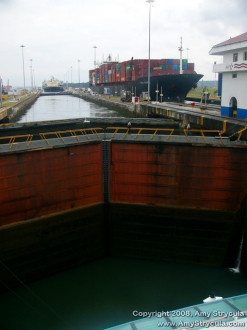
Cruise Ship passes through Gatun Locks, Panama Canal
View from the rear (aft) of Royal Caribbean cruise ship Brilliance of the Seas, as it passes through the Panama Canal's Gatun Locks, entering from the Atlantic Ocean. The maximum size of vessel that can use the canal is known as Panamax; an increasing number of modern ships exceed this limit, and are known as post-Panamax vessels. A ship sailing into the Canal from the Atlantic Ocean enters the the Canal through Limon Bay, the port of the town of Cristobal in the Canal Zone. While the ship is still in deep water, a Canal Pilot comes on board from a small boat, (a launch). The pilot has complete charge of the ship during its trip through the Canal. After passing through the breakwater at the entrance to the bay, the ship proceeds south along the seven-mile channel that leads to the Gatun Locks. The shipyards, docks and fueling stations of Cristobal line the eastern shore of the bay. This lock system, which resembles giant steps, or stairs, is made up of three pairs of concrete chambers that lift ships about 85 feet from sea level to Gatun Lake. Small electric locomotives called 'mules' run on tracks along both sides of the locks. They pull ships through the locks. The locomotives run up an incline at the end of each chamber to reach the next higher level. This allows the same set of locomotives to pull vessels through the entire length of the Gatun Locks. Four to 12 locomotives are used for each ship, depending on its size. As the ship approaches the first chamber, its engines are shut off. Canal workers fasten the ends of the locomotives' towing cables to the vessel. The locomotives then pull the ship into the first chamber. Huge steel gates close silently behind the vessel. Canal workers open valves that allow water from the Gatun Lake to flow into the chamber through openings in the bottom of the lock. During the next eight to 15 minutes, the rising water slowly lifts the ship. When the level of the water, is the same as that in the second chamber, the gates in front of the ship swing outward. The locomotives pull the vessel into the second chamber. Again the water level is raised. The process is repeated until the third chamber of the locks raises the ship to the level of Gatun Lake. The Panama Canal is a man-made canal in Panama which joins the Pacific and Atlantic oceans. One of the largest and most difficult engineering projects ever undertaken, it had an enormous impact on shipping between the two oceans, replacing the long and treacherous route via the Drake Passage and Cape Horn at the southernmost tip of South America. Copyright 2008, Amy Strycula www.AmyStrycula.com
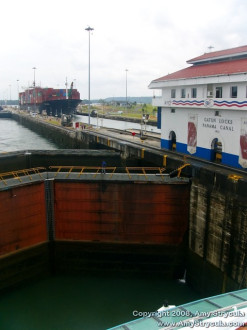
Cruise Ship passes through Gatun Locks, Panama Canal
View from the rear (aft) of Royal Caribbean cruise ship Brilliance of the Seas, as it passes through the Panama Canal's Gatun Locks, entering from the Atlantic Ocean. The maximum size of vessel that can use the canal is known as Panamax; an increasing number of modern ships exceed this limit, and are known as post-Panamax vessels. A ship sailing into the Canal from the Atlantic Ocean enters the the Canal through Limon Bay, the port of the town of Cristobal in the Canal Zone. While the ship is still in deep water, a Canal Pilot comes on board from a small boat, (a launch). The pilot has complete charge of the ship during its trip through the Canal. After passing through the breakwater at the entrance to the bay, the ship proceeds south along the seven-mile channel that leads to the Gatun Locks. The shipyards, docks and fueling stations of Cristobal line the eastern shore of the bay. This lock system, which resembles giant steps, or stairs, is made up of three pairs of concrete chambers that lift ships about 85 feet from sea level to Gatun Lake. Small electric locomotives called 'mules' run on tracks along both sides of the locks. They pull ships through the locks. The locomotives run up an incline at the end of each chamber to reach the next higher level. This allows the same set of locomotives to pull vessels through the entire length of the Gatun Locks. Four to 12 locomotives are used for each ship, depending on its size. As the ship approaches the first chamber, its engines are shut off. Canal workers fasten the ends of the locomotives' towing cables to the vessel. The locomotives then pull the ship into the first chamber. Huge steel gates close silently behind the vessel. Canal workers open valves that allow water from the Gatun Lake to flow into the chamber through openings in the bottom of the lock. During the next eight to 15 minutes, the rising water slowly lifts the ship. When the level of the water, is the same as that in the second chamber, the gates in front of the ship swing outward. The locomotives pull the vessel into the second chamber. Again the water level is raised. The process is repeated until the third chamber of the locks raises the ship to the level of Gatun Lake. The Panama Canal is a man-made canal in Panama which joins the Pacific and Atlantic oceans. One of the largest and most difficult engineering projects ever undertaken, it had an enormous impact on shipping between the two oceans, replacing the long and treacherous route via the Drake Passage and Cape Horn at the southernmost tip of South America. Copyright 2008, Amy Strycula www.AmyStrycula.com
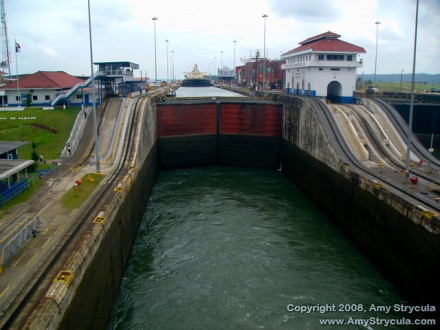
Cruise Ship passes through Gatun Locks, Panama Canal
View from the rear (aft) of Royal Caribbean cruise ship Brilliance of the Seas, as it passes through the Panama Canal's Gatun Locks, entering from the Atlantic Ocean. The maximum size of vessel that can use the canal is known as Panamax; an increasing number of modern ships exceed this limit, and are known as post-Panamax vessels. A ship sailing into the Canal from the Atlantic Ocean enters the the Canal through Limon Bay, the port of the town of Cristobal in the Canal Zone. While the ship is still in deep water, a Canal Pilot comes on board from a small boat, (a launch). The pilot has complete charge of the ship during its trip through the Canal. After passing through the breakwater at the entrance to the bay, the ship proceeds south along the seven-mile channel that leads to the Gatun Locks. The shipyards, docks and fueling stations of Cristobal line the eastern shore of the bay. This lock system, which resembles giant steps, or stairs, is made up of three pairs of concrete chambers that lift ships about 85 feet from sea level to Gatun Lake. Small electric locomotives called 'mules' run on tracks along both sides of the locks. They pull ships through the locks. The locomotives run up an incline at the end of each chamber to reach the next higher level. This allows the same set of locomotives to pull vessels through the entire length of the Gatun Locks. Four to 12 locomotives are used for each ship, depending on its size. As the ship approaches the first chamber, its engines are shut off. Canal workers fasten the ends of the locomotives' towing cables to the vessel. The locomotives then pull the ship into the first chamber. Huge steel gates close silently behind the vessel. Canal workers open valves that allow water from the Gatun Lake to flow into the chamber through openings in the bottom of the lock. During the next eight to 15 minutes, the rising water slowly lifts the ship. When the level of the water, is the same as that in the second chamber, the gates in front of the ship swing outward. The locomotives pull the vessel into the second chamber. Again the water level is raised. The process is repeated until the third chamber of the locks raises the ship to the level of Gatun Lake. The Panama Canal is a man-made canal in Panama which joins the Pacific and Atlantic oceans. One of the largest and most difficult engineering projects ever undertaken, it had an enormous impact on shipping between the two oceans, replacing the long and treacherous route via the Drake Passage and Cape Horn at the southernmost tip of South America. Copyright 2008, Amy Strycula www.AmyStrycula.com
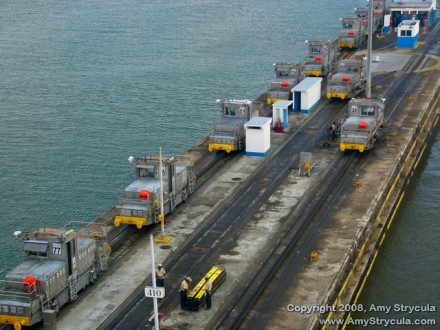
Mule Locomotives, Gatun Locks, Panama Canal
View from the rear (aft) of Royal Caribbean cruise ship Brilliance of the Seas, as it passes through the Panama Canal's Gatun Locks, entering from the Atlantic Ocean. The maximum size of vessel that can use the canal is known as Panamax; an increasing number of modern ships exceed this limit, and are known as post-Panamax vessels. A ship sailing into the Canal from the Atlantic Ocean enters the the Canal through Limon Bay, the port of the town of Cristobal in the Canal Zone. While the ship is still in deep water, a Canal Pilot comes on board from a small boat, (a launch). The pilot has complete charge of the ship during its trip through the Canal. After passing through the breakwater at the entrance to the bay, the ship proceeds south along the seven-mile channel that leads to the Gatun Locks. The shipyards, docks and fueling stations of Cristobal line the eastern shore of the bay. This lock system, which resembles giant steps, or stairs, is made up of three pairs of concrete chambers that lift ships about 85 feet from sea level to Gatun Lake. Small electric locomotives called 'mules' run on tracks along both sides of the locks. They pull ships through the locks. The locomotives run up an incline at the end of each chamber to reach the next higher level. This allows the same set of locomotives to pull vessels through the entire length of the Gatun Locks. Four to 12 locomotives are used for each ship, depending on its size. As the ship approaches the first chamber, its engines are shut off. Canal workers fasten the ends of the locomotives' towing cables to the vessel. The locomotives then pull the ship into the first chamber. Huge steel gates close silently behind the vessel. Canal workers open valves that allow water from the Gatun Lake to flow into the chamber through openings in the bottom of the lock. During the next eight to 15 minutes, the rising water slowly lifts the ship. When the level of the water, is the same as that in the second chamber, the gates in front of the ship swing outward. The locomotives pull the vessel into the second chamber. Again the water level is raised. The process is repeated until the third chamber of the locks raises the ship to the level of Gatun Lake. The Panama Canal is a man-made canal in Panama which joins the Pacific and Atlantic oceans. One of the largest and most difficult engineering projects ever undertaken, it had an enormous impact on shipping between the two oceans, replacing the long and treacherous route via the Drake Passage and Cape Horn at the southernmost tip of South America. Copyright 2008, Amy Strycula www.AmyStrycula.com
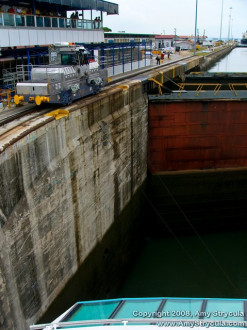
Mule Locomotive Tethered to Cruise ship, Panama Canal
View from the rear (aft) of Royal Caribbean cruise ship Brilliance of the Seas, as it passes through the Panama Canal's Gatun Locks, entering from the Atlantic Ocean. The maximum size of vessel that can use the canal is known as Panamax; an increasing number of modern ships exceed this limit, and are known as post-Panamax vessels. A ship sailing into the Canal from the Atlantic Ocean enters the the Canal through Limon Bay, the port of the town of Cristobal in the Canal Zone. While the ship is still in deep water, a Canal Pilot comes on board from a small boat, (a launch). The pilot has complete charge of the ship during its trip through the Canal. After passing through the breakwater at the entrance to the bay, the ship proceeds south along the seven-mile channel that leads to the Gatun Locks. The shipyards, docks and fueling stations of Cristobal line the eastern shore of the bay. This lock system, which resembles giant steps, or stairs, is made up of three pairs of concrete chambers that lift ships about 85 feet from sea level to Gatun Lake. Small electric locomotives called 'mules' run on tracks along both sides of the locks. They pull ships through the locks. The locomotives run up an incline at the end of each chamber to reach the next higher level. This allows the same set of locomotives to pull vessels through the entire length of the Gatun Locks. Four to 12 locomotives are used for each ship, depending on its size. As the ship approaches the first chamber, its engines are shut off. Canal workers fasten the ends of the locomotives' towing cables to the vessel. The locomotives then pull the ship into the first chamber. Huge steel gates close silently behind the vessel. Canal workers open valves that allow water from the Gatun Lake to flow into the chamber through openings in the bottom of the lock. During the next eight to 15 minutes, the rising water slowly lifts the ship. When the level of the water, is the same as that in the second chamber, the gates in front of the ship swing outward. The locomotives pull the vessel into the second chamber. Again the water level is raised. The process is repeated until the third chamber of the locks raises the ship to the level of Gatun Lake. The Panama Canal is a man-made canal in Panama which joins the Pacific and Atlantic oceans. One of the largest and most difficult engineering projects ever undertaken, it had an enormous impact on shipping between the two oceans, replacing the long and treacherous route via the Drake Passage and Cape Horn at the southernmost tip of South America. Copyright 2008, Amy Strycula www.AmyStrycula.com
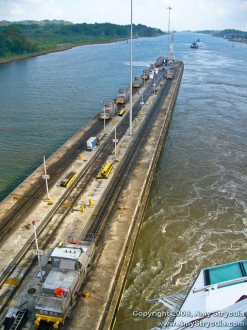
'Mule' Locomotive Gatun Locks, Panama Canal
View from the rear (aft) of Royal Caribbean cruise ship Brilliance of the Seas, as it passes through the Panama Canal's Gatun Locks, entering from the Atlantic Ocean. The maximum size of vessel that can use the canal is known as Panamax; an increasing number of modern ships exceed this limit, and are known as post-Panamax vessels. A ship sailing into the Canal from the Atlantic Ocean enters the the Canal through Limon Bay, the port of the town of Cristobal in the Canal Zone. While the ship is still in deep water, a Canal Pilot comes on board from a small boat, (a launch). The pilot has complete charge of the ship during its trip through the Canal. After passing through the breakwater at the entrance to the bay, the ship proceeds south along the seven-mile channel that leads to the Gatun Locks. The shipyards, docks and fueling stations of Cristobal line the eastern shore of the bay. This lock system, which resembles giant steps, or stairs, is made up of three pairs of concrete chambers that lift ships about 85 feet from sea level to Gatun Lake. Small electric locomotives called 'mules' run on tracks along both sides of the locks. They pull ships through the locks. The locomotives run up an incline at the end of each chamber to reach the next higher level. This allows the same set of locomotives to pull vessels through the entire length of the Gatun Locks. Four to 12 locomotives are used for each ship, depending on its size. As the ship approaches the first chamber, its engines are shut off. Canal workers fasten the ends of the locomotives' towing cables to the vessel. The locomotives then pull the ship into the first chamber. Huge steel gates close silently behind the vessel. Canal workers open valves that allow water from the Gatun Lake to flow into the chamber through openings in the bottom of the lock. During the next eight to 15 minutes, the rising water slowly lifts the ship. When the level of the water, is the same as that in the second chamber, the gates in front of the ship swing outward. The locomotives pull the vessel into the second chamber. Again the water level is raised. The process is repeated until the third chamber of the locks raises the ship to the level of Gatun Lake. The Panama Canal is a man-made canal in Panama which joins the Pacific and Atlantic oceans. One of the largest and most difficult engineering projects ever undertaken, it had an enormous impact on shipping between the two oceans, replacing the long and treacherous route via the Drake Passage and Cape Horn at the southernmost tip of South America. Copyright 2008, Amy Strycula www.AmyStrycula.com
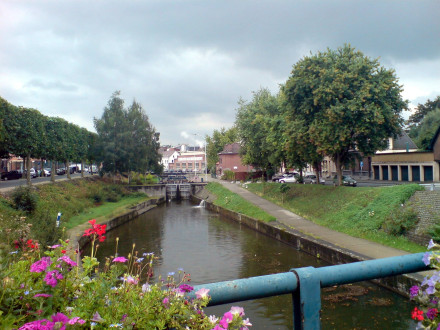
Ath : Canal Blaton-Ath
Cell Phone Photo fr.wikipedia.org/wiki/Ath fr.wikipedia.org/wiki/Canal_Blaton-Ath
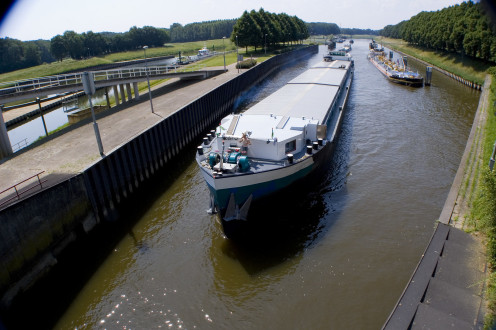
Entering the lock
Made at the lock near Eefde, The Netherlands. Ship name: Josef-w

Panorama of the Eefde Locks
Ships entering the lock at Eefde, The Netherlands

Panorama of the Eefde Locks
Ships in the lock at Eefde, The Netherlands
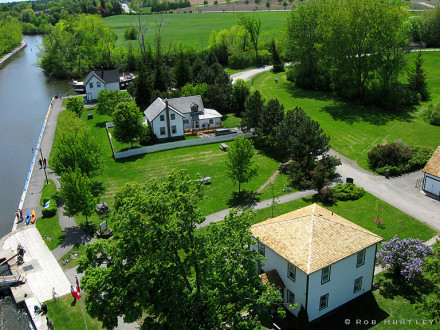
Hartwell Locks, Rideau Canal, Ottawa - Kite Aerial Photography (KAP)
Hartwell Locks are on the Rideau Canal system, just upstream from Dow's Lake in Ottawa, Ontario, Canada. They are next to Carleton University, and many commuting students (bike, skates or on foot) have to cross these locks. The locks throughout the system are manually operated. The Rideau Waterway system extends from Ottawa to Kingston, Ontario. This picture was taken from a camera rig suspended below a kite (Kite Aerial Photography - KAP). See more of my KAP photos © Rob Huntley
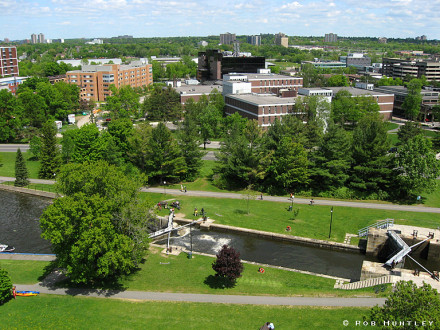
Hartwell Locks, Rideau Canal, Ottawa - Kite Aerial Photography (KAP)
Hartwell Locks are on the Rideau Canal system, just upstream from Dow's Lake in Ottawa, Ontario, Canada. They are next to Carleton University, and many commuting students (bike, skates or on foot) have to cross these locks. The locks throughout the system are manually operated. The Rideau Waterway system extends from Ottawa to Kingston, Ontario. This picture was taken from a camera rig suspended below a kite (Kite Aerial Photography - KAP). See more of my KAP photos © Rob Huntley
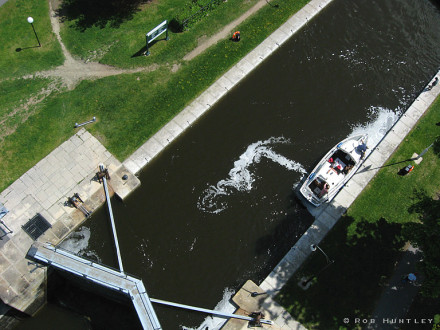
Hartwell Locks, Rideau Canal, Ottawa - Kite Aerial Photography (KAP)
Hartwell Locks are on the Rideau Canal system, just upstream from Dow's Lake in Ottawa, Ontario, Canada. They are next to Carleton University, and many commuting students (bike, skates or on foot) have to cross these locks. The locks throughout the system are manually operated. The Rideau Waterway system extends from Ottawa to Kingston, Ontario. This picture was taken from a camera rig suspended below a kite (Kite Aerial Photography - KAP). See more of my KAP photos © Rob Huntley
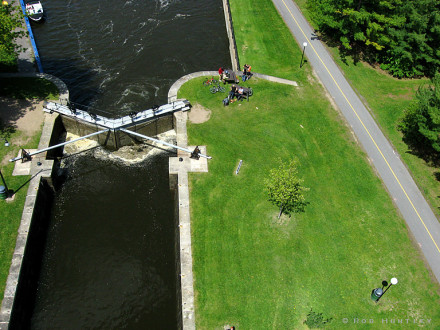
Hartwell Locks, Rideau Canal, Ottawa - Kite Aerial Photography (KAP)
Hartwell Locks are on the Rideau Canal system, just upstream from Dow's Lake in Ottawa, Ontario, Canada. They are next to Carleton University, and many commuting students (bike, skates or on foot) have to cross these locks. The locks throughout the system are manually operated. The Rideau Waterway system extends from Ottawa to Kingston, Ontario. This picture was taken from a camera rig suspended below a kite (Kite Aerial Photography - KAP). See more of my KAP photos © Rob Huntley
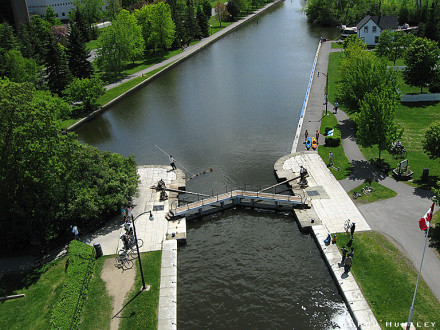
Hartwell Locks, Rideau Canal, Ottawa - Kite Aerial Photography (KAP)
Hartwell Locks are on the Rideau Canal system, just upstream from Dow's Lake in Ottawa, Ontario, Canada. They are next to Carleton University, and many commuting students (bike, skates or on foot) have to cross these locks. The locks throughout the system are manually operated. The Rideau Waterway system extends from Ottawa to Kingston, Ontario. This picture was taken from a camera rig suspended below a kite (Kite Aerial Photography - KAP). See more of my KAP photos © Rob Huntley
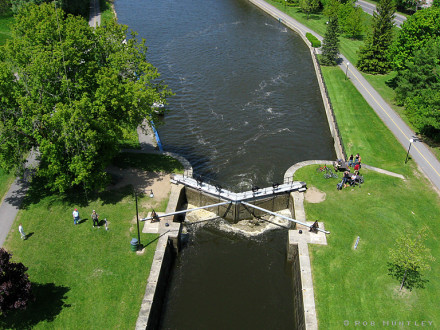
Hartwell Locks, Rideau Canal, Ottawa - Kite Aerial Photography (KAP)
Hartwell Locks are on the Rideau Canal system, just upstream from Dow's Lake in Ottawa, Ontario, Canada. They are next to Carleton University, and many commuting students (bike, skates or on foot) have to cross these locks. The locks throughout the system are manually operated. The Rideau Waterway system extends from Ottawa to Kingston, Ontario. This picture was taken from a camera rig suspended below a kite (Kite Aerial Photography - KAP). See more of my KAP photos © Rob Huntley
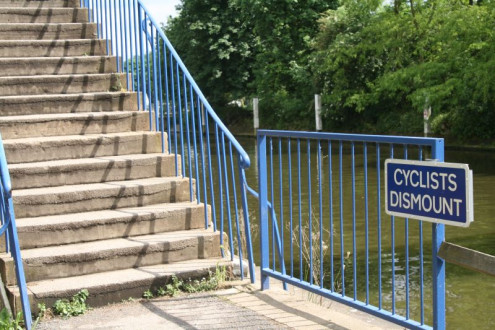
Rather difficult not to, really...
Another of the world's most ridiculous signs. This one's at the footbridge across the Thames, at Teddington Lock.
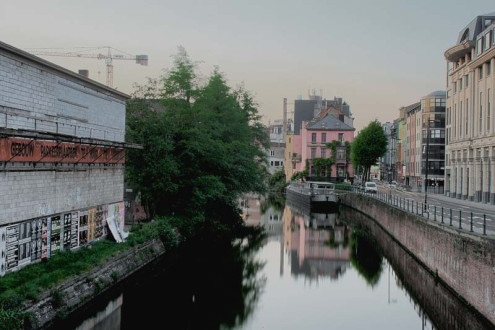
gand-pont
2486461603_aec730b6ae_c
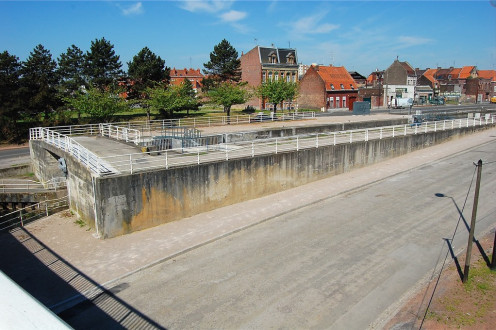
Lock in Canal de Roubaix, France
DSC 1997 See where this picture was taken. [?] View all my photos of the trip along this canal
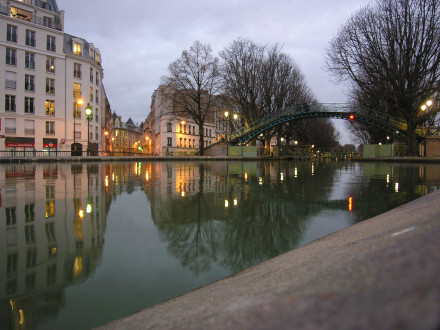
Paris, Canal St-Martin
DSCN0004 2 See where this picture was taken. [?]
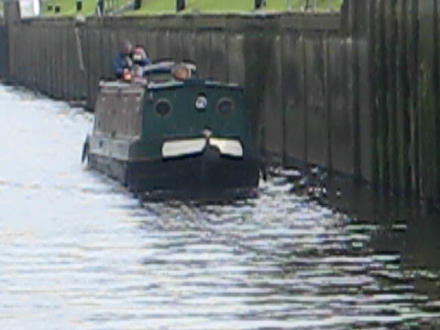
Narrowboat leaving lock
video
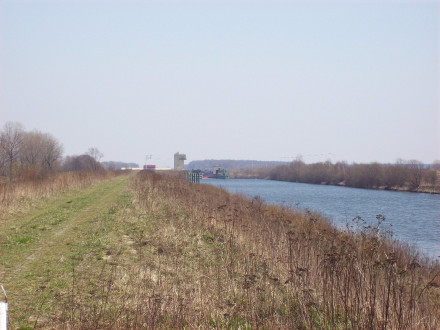
Lock Dwory, Wisla river, Poland
100 2345 See where this picture was taken. [?]
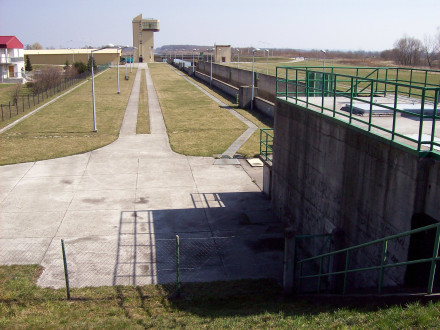
Lock Dwory, Wisla river, Poland
100 2346 See where this picture was taken. [?]
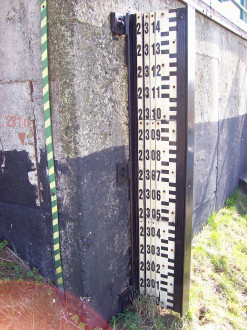
Lock Dwory, Wisla river, Poland
100 2347 See where this picture was taken. [?]
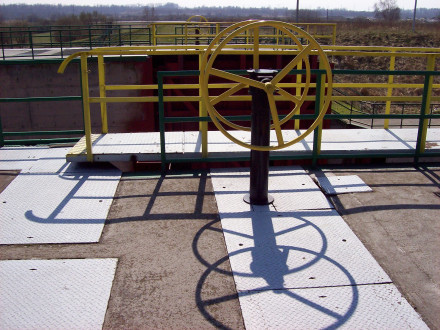
Lock Dwory, Wisla river, Poland
100 2348 See where this picture was taken. [?]
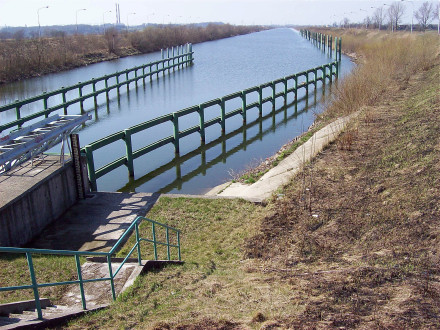
Lock Dwory, Wisla river, Poland
100 2349 See where this picture was taken. [?]
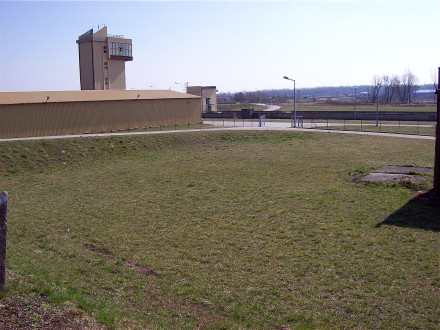
Lock Dwory, Wisla river, Poland
100 2350 See where this picture was taken. [?]
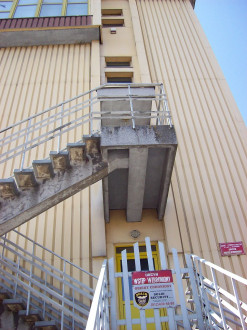
Lock Dwory, Wisla river, Poland
100 2353 See where this picture was taken. [?]
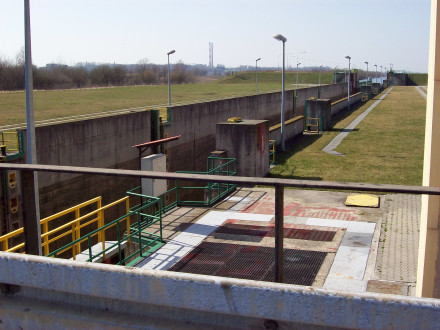
Lock Dwory, Wisla river, Poland
100 2354 See where this picture was taken. [?]
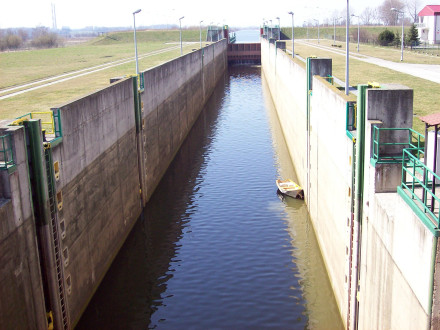
Lock Dwory, Wisla river, Poland
100 2355 See where this picture was taken. [?]
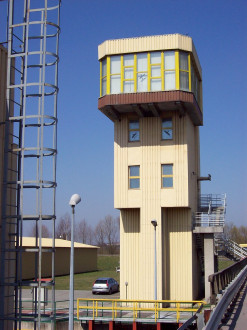
Lock Dwory, Wisla river, Poland
100 2356 See where this picture was taken. [?]
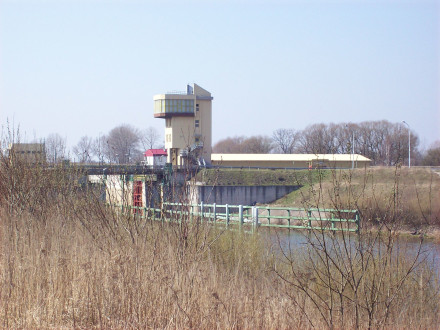
Lock Dwory, Wisla river, Poland
100 2357 See where this picture was taken. [?]
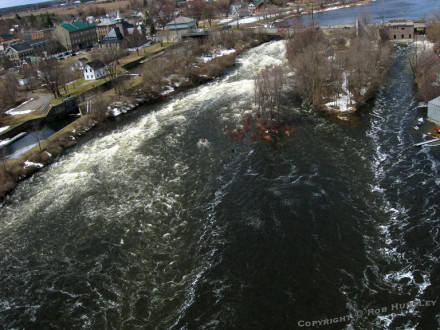
Canal Locks at Merrickville, Rideau River - Kite Aerial Photography (KAP)
Rideau Canal locks at Merrickville, Ontario on the left hand side of the picture. This is the Rideau River. Sam Jakes Inn is in the top left corner with the green roof. Ayling's Marina is just showing on the right hand side. This picture was taken from a camera rig suspended below a kite (Kite Aerial Photography - KAP). See more of my KAP photos © Rob Huntley This was a group KAP, to coincide with the California KAP weekend. Our part in trying to promote a worldwide KAP weekend. Three of us got together: myself, Matt (TheYoungsOnline) flickr.com/photos/theyoungsonline/2411162879/ flickr.com/photos/theyoungsonline/2411166895/ and Carl (kapercarl) flickr.com/photos/kapercarl/2413235001/
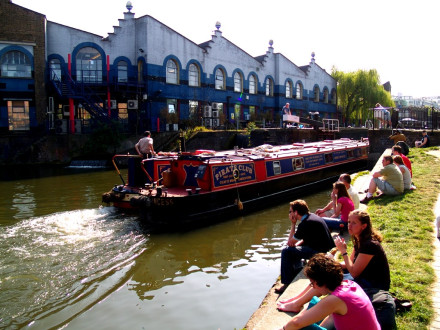
The Pirate Viscount Accompagnying The Pirate Princess
2406485500_3126b88685_b
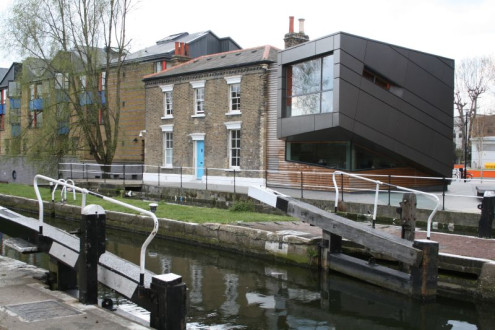
Locked together
A startling blend of old and new architecture at Old Ford Lock on the Grand Union Canal, north London
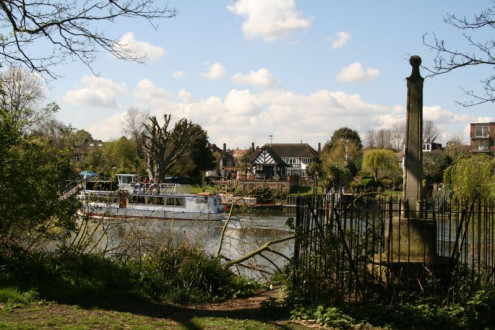
River boundary
Teddington is the point where, to the east, the Thames becomes a tidal river and comes under the jurisdiction of the Port of London Authority. The obelisk on the right of this picture marks the boundary, established by Act of Parliament in 1909, between the PLA and the Environment Agency.
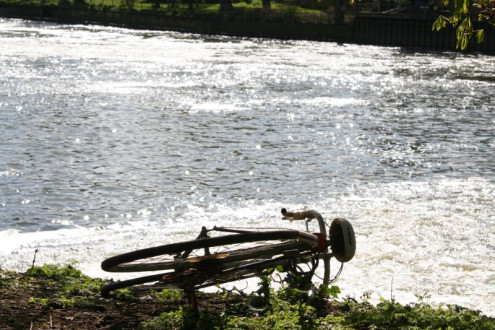
Side saddle
Abandoned bike at Teddington Lock, west London.
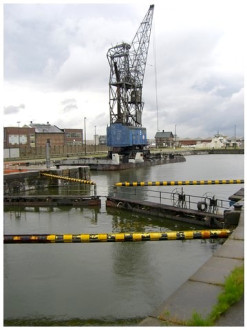
Docks
2306672277_08c3f5380c
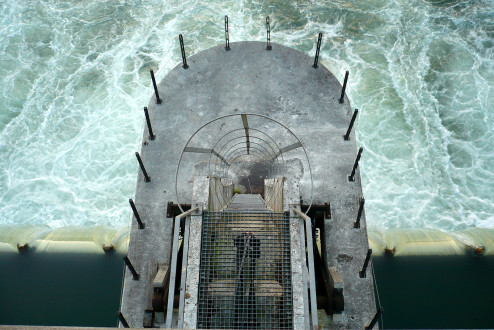
31 octobre 2007 Maisons-Alfort Depuis la passerelle près de l'écluse Regarder vers la Marne... (4)
1810210050_55e644df4a_k
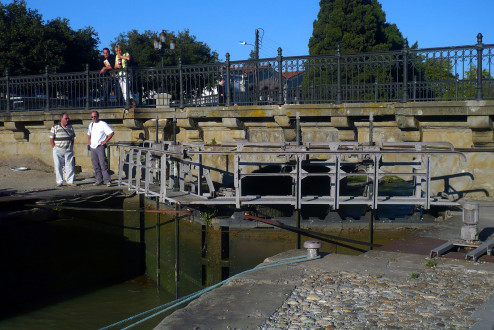
9 septembre 2007 Carcassonne Ecluse (5)
fr.wikipedia.org/wiki/Carcassonne Carcassonne (Carcassona [karka'suno] en occitan) est une commune française située dans le département de l'Aude et la région Languedoc-Roussillon. La ville est la préfecture de l'Aude, elle est connue pour la Cité de Carcassonne, un ensemble architectural médiéval restauré par Viollet-le-Duc au XIXe siècle et inscrit au patrimoine mondial de l'UNESCO depuis 1997. Carcassonne est située sur les bords du fleuve de l'Aude. La commune est traditionnellement divisée en deux, la ville basse qui occupe les berges du fleuve à l'ouest et la ville haute (ou cité) qui occupe la colline surplombant l'Aude. La cité est construite sur un petit plateau constitué par le creusement de l'Aude à environ 150 mètres d'altitude au-dessus de la ville basse[12]. La ville basse se situe au niveau de l'Aude dont l'altitude est de 100 m. L'Aude arrive à Carcassonne après son périple montagneux dans les gorges de la haute vallée de l'Aude et devient alors un fleuve plus tranquille. Elle passe au Païcherou, longe le cimetière Saint-Michel puis se sépare en deux bras formant une île appelée « l'île du Roy ». Quatre ponts permettent de la franchir : le pont Garigliano, le pont-Vieux accessible qu'aux piétons, le pont Neuf et le pont de l'Avenir. Le canal du Midi passe également au nord de la ville entre la gare et le jardin André-Chénier jouxtant la bastide Saint-Louis. La ville se situe dans un couloir entre la montagne Noire au nord et la chaîne des Pyrénées au sud. La plaine est constituée de dépôts récents amenés par l'Aude et provenant des Pyrénées. Il s'agit de la molasse de Carcassonne, qui se caractérise par une alternance de grès, de conglomérats et de marnes gréseuses fluviatiles datant de l'éocène. Légende : La ville de Carcassonne entretient la légende selon laquelle le nom de la ville de Carcassonne daterait du début du IXe siècle. Au moment des faits, la ville aurait été Sarrasine. Charlemagne aurait fait le siège, mais la maitresse des lieux, Dame Carcas, aurait fort résisté. Les deux armées seraient devenues affamées. Tandis qu'il n'aurait resté qu'une mesure de blé et un petit cochon dans la cité, la Dame Carcas aurait eu l'idée de démoraliser ses adversaires. Le porcelet aurait été engraissé, puis projeté par dessus les remparts. Pensant que la ville avait encore beaucoup de nourriture, Charlemagne aurait fait lever le siège. À ce moment, Dame Carcas aurait fait sonner les trompettes et, Charlemagne revenant sur ses pas, la Dame Carcas lui aurait proposé la paix. D'où l'expression Carcas sonne. Historiquement, la reconquête des terres du Languedoc par Charlemagne remonte à Pépin le Bref, au milieu du VIII° siècle. La Cité de Carcassonne, sur la rive droite de l'Aude a été classée au patrimoine mondial de l'UNESCO en 1997. C'est le haut lieu touristique de la ville avec plus de deux millions de visiteurs chaque année dont 300 000 visites du château comtal et des remparts[88]. C'est le deuxième site touristique le plus visité de France après le Mont-Saint-Michel. C'est un ensemble médiéval unique en Europe de par sa taille et son état de conservation. La cité est ceinturée de deux rangées de remparts et possède un château, le château comtal, et la basilique Saint-Nazaire.
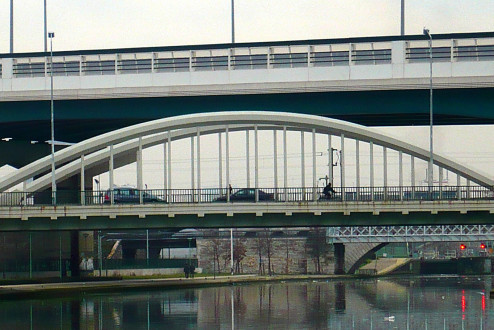
31 décembre 2007 Saint-Denis Près du Stade de France Canal Saint-Denis Ponts (2)
2172505647_8bacf59d3c_k
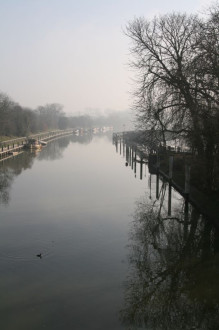
River Thames
At Teddington Lock, looking towards Kingston. The weir is to the right. Teddington marks the point where the Thames becomes tidal; the Lock, an island built in 1810, is the lowest full-tide lock on the river.
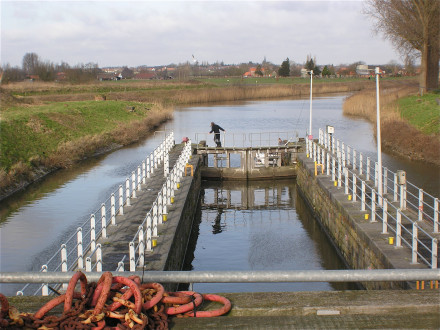
Lock in Schipdonck canal, Belgium
DSCN1175 See where this picture was taken. [?]
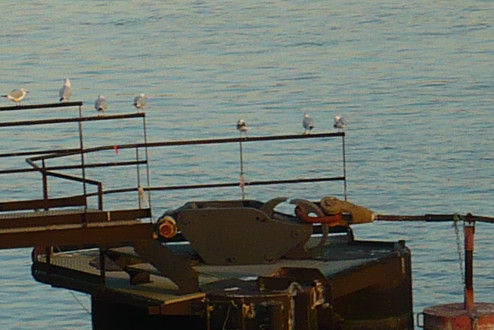
16 novembre 2007 Saint-Maurice Depuis la passerelle vers Maisons-Alfort Mouettes et écluse
2038537800_78ed6f0ecd_k
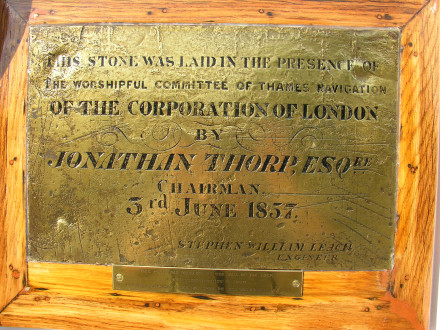
Teddington Lock
An 1857 bronze plaque, commemorating the re-opening of Teddington Lock on the River Thames (the original lock was built in 1810)
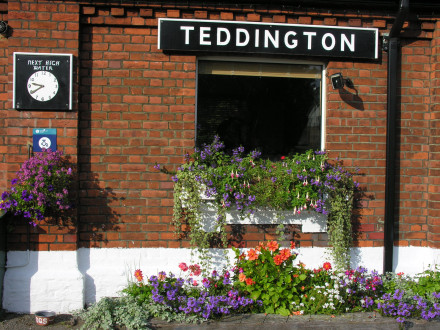
Teddington Lock
The Lock Keeper's station on the River Thames at Teddington, in west London, is always bedecked with flowers in the summer months.
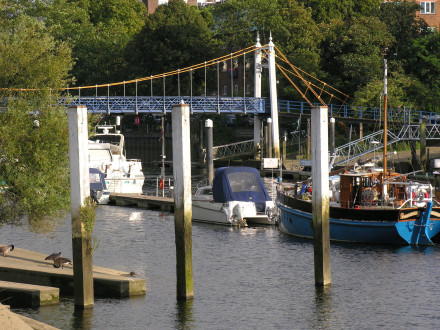
Teddington Lock
This is Teddington Lock on the River Thames. The suspension footbridge in the background was constructed between 1887 and 1889, and was funded by donations from local residents and businesses.
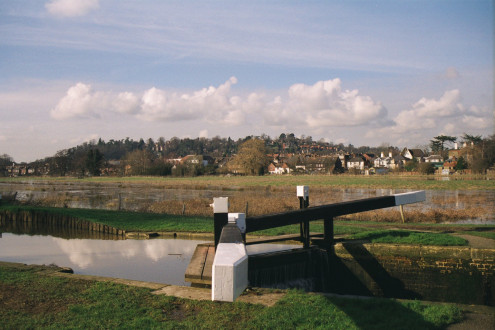
Wey canal - Godalming lock
Godalming, Surrey, UK. Just behind the lock gate, on the other side of the canal, is a floodplain, which does its job very efficiently.
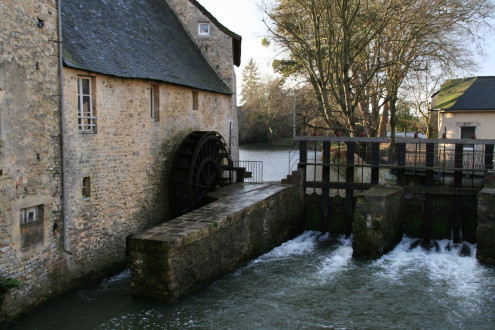
Bayeux
L'Aure.
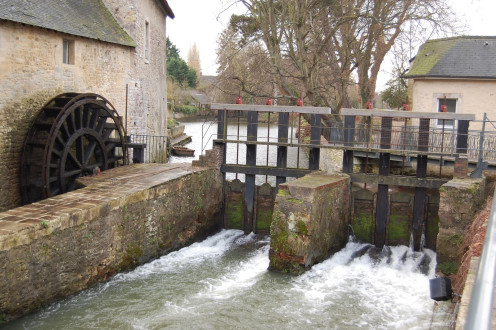
Bayeux
2145363375_72dfac66c6_k
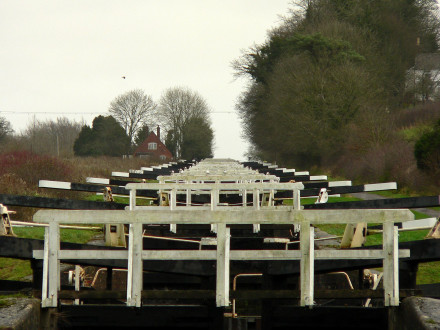
Going Up..
Most of the main flight, from near the bottom. Spot the birds! And the (lovely) café, too..
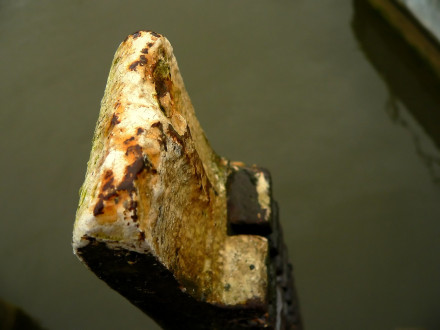
Top-down
Indicator post, ground paddle. Raised 😉
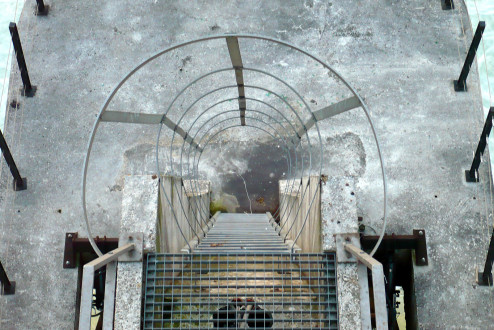
31 octobre 2007 Maisons-Alfort Depuis la passerelle près de l'écluse Descendre vers la Marne... (1)
1809365849_3ceaf2e341_k
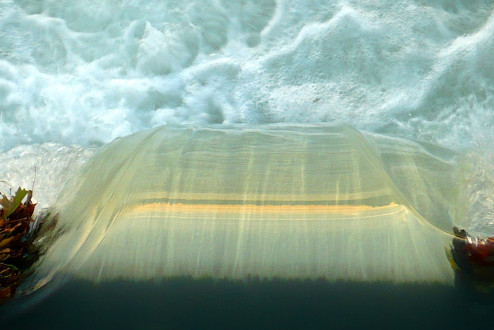
31 octobre 2007 Maisons-Alfort Depuis la passerelle près de l'écluse Regarder vers la Marne... (3)
1809361975_6e69cde0de_k
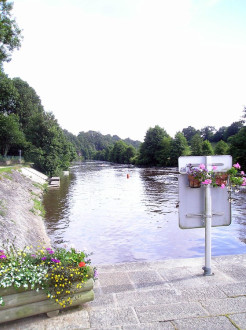
Mayenne River
Sierra Exif JPEG
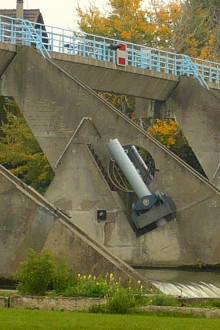
15 octobre 2007 Alfortville Ecluse du Port à l'Anglais (3)
www.tourisme-valdemarne.com/fr/recherche-thematique/fiche... fr.wikipedia.org/wiki/Pont_du_Port_%C3%A0_l'Anglais Le pont du Port à l'Anglais est un pont suspendu avec haubans entre Alfortville et Vitry-sur-Seine. Il a été construit entre 1912 et 1927. Sa portée principale est de 124 m pour une longueur totale de 230 m. le tablier est en acier et les pylônes en béton. Ce pont suspendu est situé à proximité d'un barrage et deux écluses situées sur les communes d'Alfortville et de Vitry-sur-Seine. Son nom vient de la famille Langlois, premiers propriétaires des terres. Ses trottoirs, qui respectent l'esprit traditionnel des sites éclusiers, permettent de profiter d'une vue panoramique et d'observer les péniches qui entrent et sortent de l'écluse.
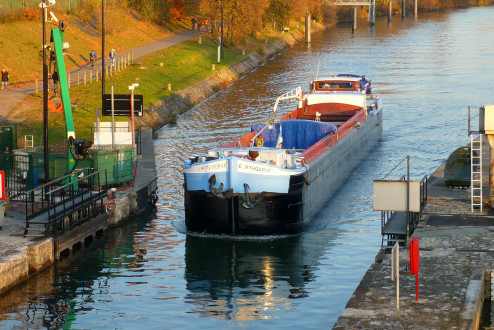
16 novembre 2007 Maisons-Alfort Une péniche passe l'écluse (1)
2038570498_8875f81efb_k
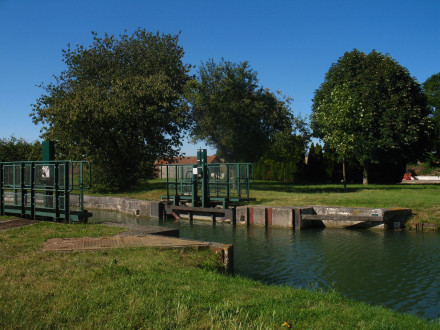
Fresnes-sur-Marne
Ecluses de Fresnes-sur-Marne
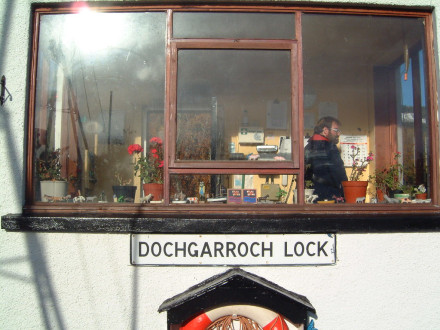
The Lock Keeper
2063704764_20051a3cdf_b
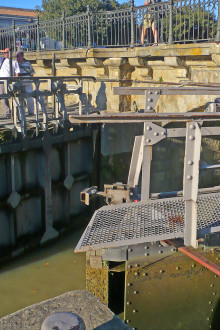
9 septembre 2007 Carcassonne Ecluse (7)
fr.wikipedia.org/wiki/Carcassonne Carcassonne (Carcassona [karka'suno] en occitan) est une commune française située dans le département de l'Aude et la région Languedoc-Roussillon. La ville est la préfecture de l'Aude, elle est connue pour la Cité de Carcassonne, un ensemble architectural médiéval restauré par Viollet-le-Duc au XIXe siècle et inscrit au patrimoine mondial de l'UNESCO depuis 1997. Carcassonne est située sur les bords du fleuve de l'Aude. La commune est traditionnellement divisée en deux, la ville basse qui occupe les berges du fleuve à l'ouest et la ville haute (ou cité) qui occupe la colline surplombant l'Aude. La cité est construite sur un petit plateau constitué par le creusement de l'Aude à environ 150 mètres d'altitude au-dessus de la ville basse[12]. La ville basse se situe au niveau de l'Aude dont l'altitude est de 100 m. L'Aude arrive à Carcassonne après son périple montagneux dans les gorges de la haute vallée de l'Aude et devient alors un fleuve plus tranquille. Elle passe au Païcherou, longe le cimetière Saint-Michel puis se sépare en deux bras formant une île appelée « l'île du Roy ». Quatre ponts permettent de la franchir : le pont Garigliano, le pont-Vieux accessible qu'aux piétons, le pont Neuf et le pont de l'Avenir. Le canal du Midi passe également au nord de la ville entre la gare et le jardin André-Chénier jouxtant la bastide Saint-Louis. La ville se situe dans un couloir entre la montagne Noire au nord et la chaîne des Pyrénées au sud. La plaine est constituée de dépôts récents amenés par l'Aude et provenant des Pyrénées. Il s'agit de la molasse de Carcassonne, qui se caractérise par une alternance de grès, de conglomérats et de marnes gréseuses fluviatiles datant de l'éocène. Légende : La ville de Carcassonne entretient la légende selon laquelle le nom de la ville de Carcassonne daterait du début du IXe siècle. Au moment des faits, la ville aurait été Sarrasine. Charlemagne aurait fait le siège, mais la maitresse des lieux, Dame Carcas, aurait fort résisté. Les deux armées seraient devenues affamées. Tandis qu'il n'aurait resté qu'une mesure de blé et un petit cochon dans la cité, la Dame Carcas aurait eu l'idée de démoraliser ses adversaires. Le porcelet aurait été engraissé, puis projeté par dessus les remparts. Pensant que la ville avait encore beaucoup de nourriture, Charlemagne aurait fait lever le siège. À ce moment, Dame Carcas aurait fait sonner les trompettes et, Charlemagne revenant sur ses pas, la Dame Carcas lui aurait proposé la paix. D'où l'expression Carcas sonne. Historiquement, la reconquête des terres du Languedoc par Charlemagne remonte à Pépin le Bref, au milieu du VIII° siècle. La Cité de Carcassonne, sur la rive droite de l'Aude a été classée au patrimoine mondial de l'UNESCO en 1997. C'est le haut lieu touristique de la ville avec plus de deux millions de visiteurs chaque année dont 300 000 visites du château comtal et des remparts[88]. C'est le deuxième site touristique le plus visité de France après le Mont-Saint-Michel. C'est un ensemble médiéval unique en Europe de par sa taille et son état de conservation. La cité est ceinturée de deux rangées de remparts et possède un château, le château comtal, et la basilique Saint-Nazaire.
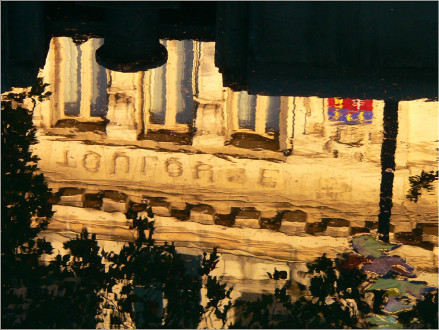
Matabiau dans l'eau
Toulouse, écluse Bayard. La gare Matabiau se reflète dans le canal du Midi.

16 novembre 2007 Saint-Maurice Sur les bords de la Marne Ecluse Bateau de secours
2037769639_f5abd95ddd_k
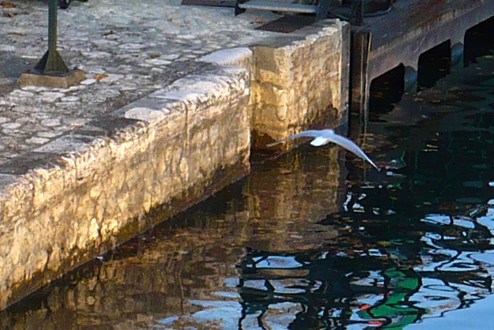
16 novembre 2007 Saint-Maurice Sur les bords de la Marne Vol de mouette
2037771139_b132d3833a_k
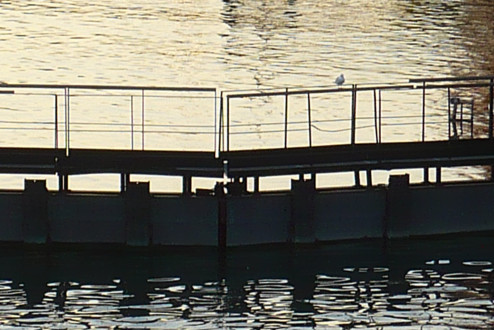
16 novembre 2007 Saint-Maurice Depuis la passerelle vers Maisons-Alfort Ecluse (2)
2038574382_fbc156ac58_k
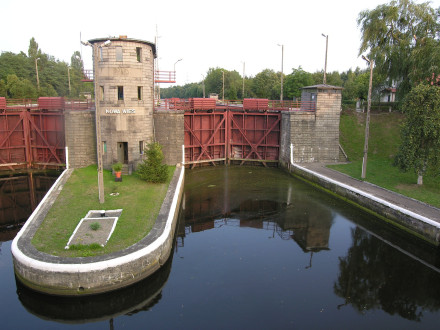
Locks in Gliwice Canal, Nowa Wies, Poland
DSCN9298 See where this picture was taken. [?]
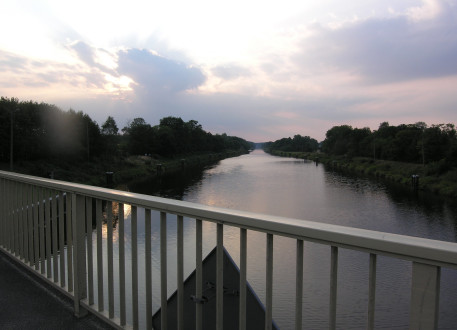
Gliwice Canal, Poland
DSCN9309 See where this picture was taken. [?]
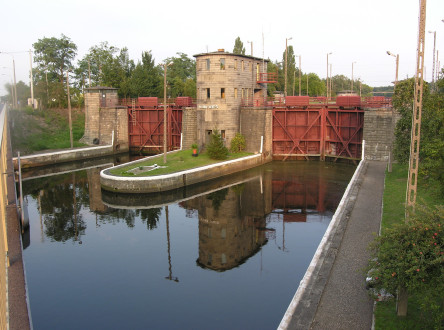
Locks in Gliwice Canal, Nowa Wies, Poland
DSCN9297 See where this picture was taken. [?]
![DSCN9303 <a href="http://loc.alize.us/#/flickr:1894945989" rel="noreferrer nofollow">See where this picture was taken.</a> <a href="http://www.flickr.com/groups/geotagging/discuss/72157594165549916/">[?]</a>](https://www.remosworld.ch/wp-content/plugins/justified-image-grid/timthumb.php?src=https%3A%2F%2Flive.staticflickr.com%2F2013%2F1894945989_52f58391a4_h.jpg&h=330&q=90&f=.jpg)
DSCN9303 See where this picture was taken. [?]
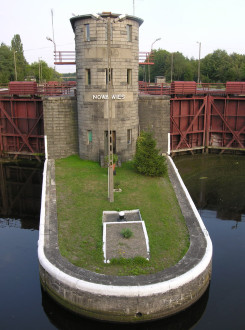
Locks in Gliwice Canal, Nowa Wies, Poland
DSCN9299 See where this picture was taken. [?]
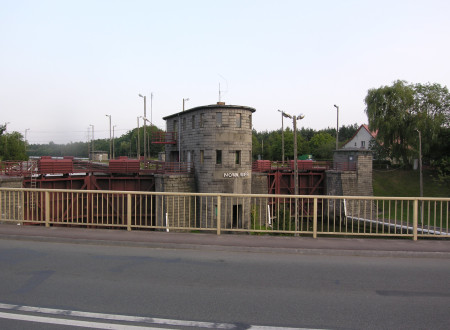
Locks in Gliwice Canal, Nowa Wies, Poland
DSCN9308 See where this picture was taken. [?]
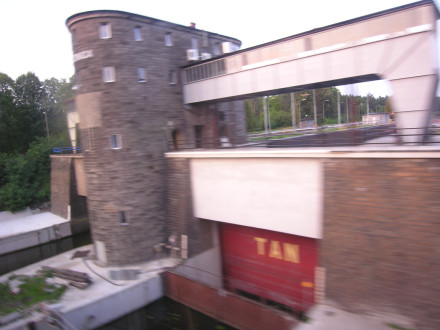
Lock in Gliwice Canal - taken from train
I couldn't visit this lock, so a blurry snapshot from the train will have to do. See where this picture was taken. [?] DSCN9324
![odersluis3 <a href="http://loc.alize.us/#/flickr:1890520337" rel="noreferrer nofollow">See where this picture was taken.</a> <a href="http://www.flickr.com/groups/geotagging/discuss/72157594165549916/">[?]</a>](https://www.remosworld.ch/wp-content/plugins/justified-image-grid/timthumb.php?src=https%3A%2F%2Flive.staticflickr.com%2F2182%2F1890520337_457c2f61d7_b.jpg&h=330&q=90&f=.jpg)
odersluis3 See where this picture was taken. [?]
![sluzagliwice2pano <a href="http://loc.alize.us/#/flickr:1890539821" rel="noreferrer nofollow">See where this picture was taken.</a> <a href="http://www.flickr.com/groups/geotagging/discuss/72157594165549916/">[?]</a>](https://www.remosworld.ch/wp-content/plugins/justified-image-grid/timthumb.php?src=https%3A%2F%2Flive.staticflickr.com%2F2067%2F1890539821_b595b8da14_k.jpg&h=330&q=90&f=.jpg)
sluzagliwice2pano See where this picture was taken. [?]
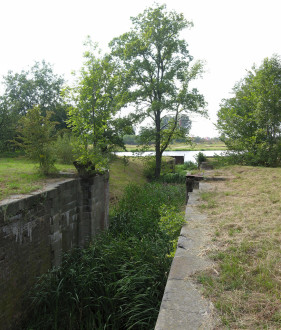
STARY KANAŁ KŁODNICKI (Disused lock in old Klodnitz canal)
sluisklodniz See where this picture was taken. [?]
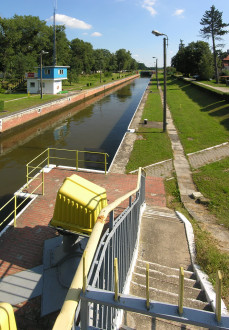
Lock Bartoszowice
sluisbartoszowice See where this picture was taken. [?]
![DSCN9058 <a href="http://loc.alize.us/#/flickr:1856646698" rel="noreferrer nofollow">See where this picture was taken.</a> <a href="http://www.flickr.com/groups/geotagging/discuss/72157594165549916/">[?]</a>](https://www.remosworld.ch/wp-content/plugins/justified-image-grid/timthumb.php?src=https%3A%2F%2Flive.staticflickr.com%2F2314%2F1856646698_9dcf992bfd_h.jpg&h=330&q=90&f=.jpg)
DSCN9058 See where this picture was taken. [?]
![DSCN9059 <a href="http://loc.alize.us/#/flickr:1856656726" rel="noreferrer nofollow">See where this picture was taken.</a> <a href="http://www.flickr.com/groups/geotagging/discuss/72157594165549916/">[?]</a>](https://www.remosworld.ch/wp-content/plugins/justified-image-grid/timthumb.php?src=https%3A%2F%2Flive.staticflickr.com%2F2297%2F1856656726_984bc0d388_h.jpg&h=330&q=90&f=.jpg)
DSCN9059 See where this picture was taken. [?]
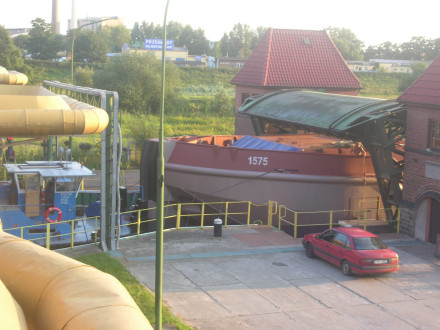
Rozanka lock, Wroclaw, Poland
DSCN9061 Rozanka lock on Zumi map See where this picture was taken. [?]
![DSCN9060 <a href="http://loc.alize.us/#/flickr:1855842085" rel="noreferrer nofollow">See where this picture was taken.</a> <a href="http://www.flickr.com/groups/geotagging/discuss/72157594165549916/">[?]</a>](https://www.remosworld.ch/wp-content/plugins/justified-image-grid/timthumb.php?src=https%3A%2F%2Flive.staticflickr.com%2F2108%2F1855842085_d35661205f_h.jpg&h=330&q=90&f=.jpg)
DSCN9060 See where this picture was taken. [?]
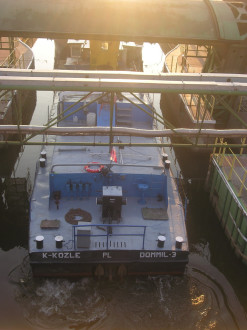
'Dommil 3' shoehorning the convoy into the lock
DSCN9063 See where this picture was taken. [?]
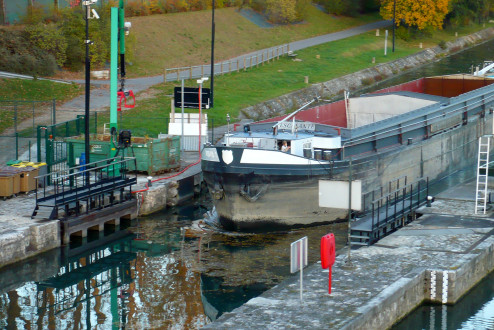
31 octobre 2007 Maisons-Alfort Depuis la passerelle près de l'écluse Une péniche passe... (2)
1810197768_afe47cd5e8_k
![DSCN8658 <a href="http://loc.alize.us/#/flickr:1806955387" rel="noreferrer nofollow">See where this picture was taken.</a> <a href="http://www.flickr.com/groups/geotagging/discuss/72157594165549916/">[?]</a>](https://www.remosworld.ch/wp-content/plugins/justified-image-grid/timthumb.php?src=https%3A%2F%2Flive.staticflickr.com%2F2219%2F1806955387_734310fed1_b.jpg&h=330&q=90&f=.jpg)
DSCN8658 See where this picture was taken. [?]
![<a href="http://loc.alize.us/#/flickr:1807899777" rel="noreferrer nofollow">See where this picture was taken.</a> <a href="http://www.flickr.com/groups/geotagging/discuss/72157594165549916/">[?]</a>DSCN8660](https://www.remosworld.ch/wp-content/plugins/justified-image-grid/timthumb.php?src=https%3A%2F%2Flive.staticflickr.com%2F2124%2F1807899777_7e4a2e04be_b.jpg&h=330&q=90&f=.jpg)
See where this picture was taken. [?]DSCN8660
![<a href="http://loc.alize.us/#/flickr:1807897959" rel="noreferrer nofollow">See where this picture was taken.</a> <a href="http://www.flickr.com/groups/geotagging/discuss/72157594165549916/">[?]</a>DSCN8659](https://www.remosworld.ch/wp-content/plugins/justified-image-grid/timthumb.php?src=https%3A%2F%2Flive.staticflickr.com%2F2403%2F1807897959_ad690ebf01_b.jpg&h=330&q=90&f=.jpg)
See where this picture was taken. [?]DSCN8659
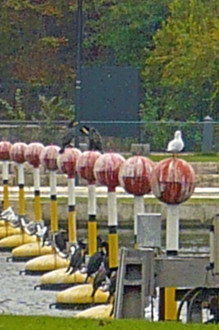
15 octobre 2007 Alfortville Ecluse du Port à l'Anglais Cormorans et mouettes
1579393785_a2ad6a4451_k
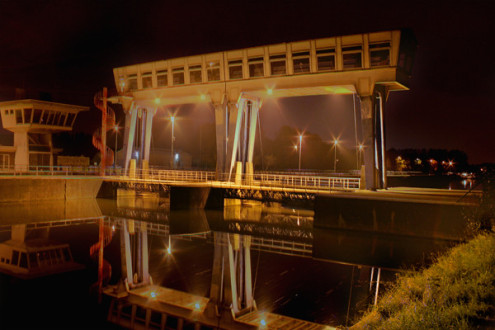
ecluse
écluse à Comines
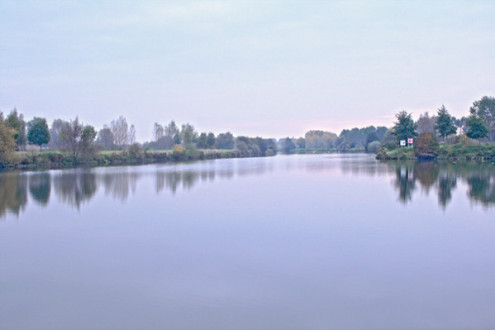
lys
1689189800_d8f58bd878_z
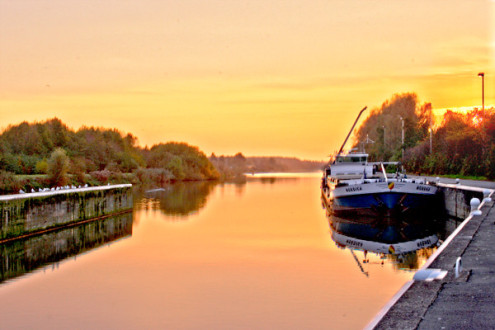
lys-comines
1688334683_864e581fa7_z
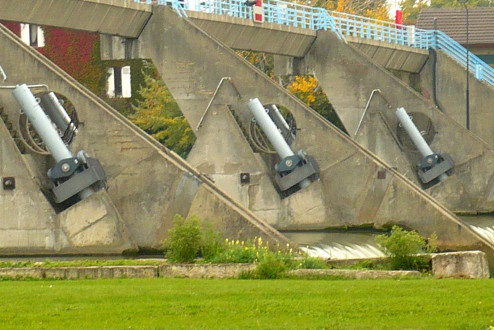
15 octobre 2007 Alfortville Ecluse du Port à l'Anglais (5)
www.tourisme-valdemarne.com/fr/recherche-thematique/fiche... fr.wikipedia.org/wiki/Pont_du_Port_%C3%A0_l'Anglais Le pont du Port à l'Anglais est un pont suspendu avec haubans entre Alfortville et Vitry-sur-Seine. Il a été construit entre 1912 et 1927. Sa portée principale est de 124 m pour une longueur totale de 230 m. le tablier est en acier et les pylônes en béton. Ce pont suspendu est situé à proximité d'un barrage et deux écluses situées sur les communes d'Alfortville et de Vitry-sur-Seine. Son nom vient de la famille Langlois, premiers propriétaires des terres. Ses trottoirs, qui respectent l'esprit traditionnel des sites éclusiers, permettent de profiter d'une vue panoramique et d'observer les péniches qui entrent et sortent de l'écluse.
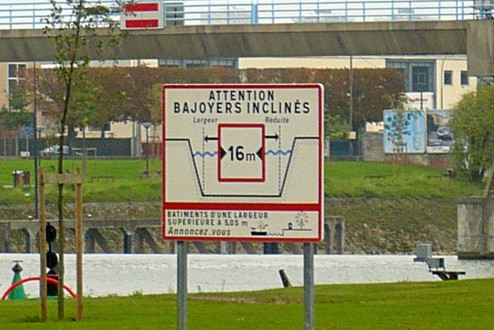
15 octobre 2007 Alfortville Ecluse du Port à l'Anglais (11)
1579404301_90c2c86b2c_k
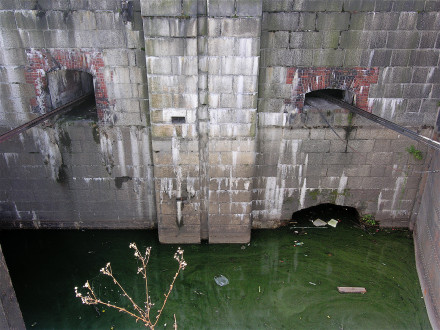
Wrocław, Poland
DSCN8622 See where this picture was taken. [?]
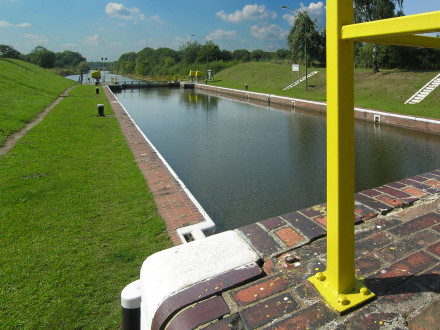
Lock in Opatowice, Poland
DSCN8922 See where this picture was taken. [?]
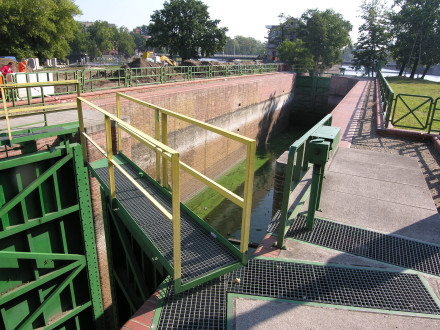
Wrocław, Poland
Don't forget to visit szogun000's photoset about Wroclaw from a different perspective DSCN8537 See where this picture was taken. [?]
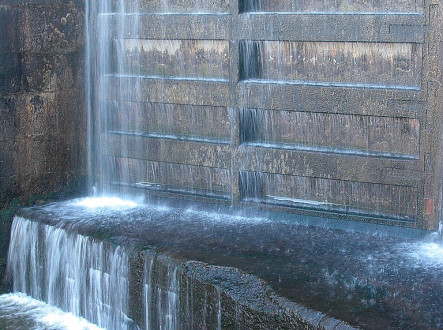
Canal Lock Gate, Rideau Canal
Canal Lock Gate, Rideau Canal, near Carleton University, Ottawa, Ontario. FINE ART PRINT or CARDS © Rob Huntley
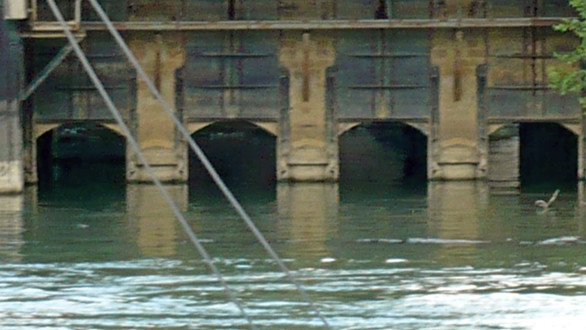
30 juillet 07 , Maisons-ALfort, Trop-plein de la Marne sous la route
970562169_8e5d2e5bdf_k
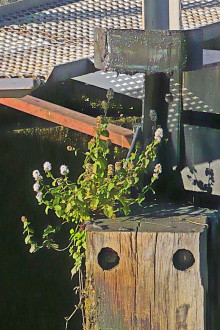
9 septembre 2007 Carcassonne Ecluse Fleurs (3)
fr.wikipedia.org/wiki/Carcassonne Carcassonne (Carcassona [karka'suno] en occitan) est une commune française située dans le département de l'Aude et la région Languedoc-Roussillon. La ville est la préfecture de l'Aude, elle est connue pour la Cité de Carcassonne, un ensemble architectural médiéval restauré par Viollet-le-Duc au XIXe siècle et inscrit au patrimoine mondial de l'UNESCO depuis 1997. Carcassonne est située sur les bords du fleuve de l'Aude. La commune est traditionnellement divisée en deux, la ville basse qui occupe les berges du fleuve à l'ouest et la ville haute (ou cité) qui occupe la colline surplombant l'Aude. La cité est construite sur un petit plateau constitué par le creusement de l'Aude à environ 150 mètres d'altitude au-dessus de la ville basse[12]. La ville basse se situe au niveau de l'Aude dont l'altitude est de 100 m. L'Aude arrive à Carcassonne après son périple montagneux dans les gorges de la haute vallée de l'Aude et devient alors un fleuve plus tranquille. Elle passe au Païcherou, longe le cimetière Saint-Michel puis se sépare en deux bras formant une île appelée « l'île du Roy ». Quatre ponts permettent de la franchir : le pont Garigliano, le pont-Vieux accessible qu'aux piétons, le pont Neuf et le pont de l'Avenir. Le canal du Midi passe également au nord de la ville entre la gare et le jardin André-Chénier jouxtant la bastide Saint-Louis. La ville se situe dans un couloir entre la montagne Noire au nord et la chaîne des Pyrénées au sud. La plaine est constituée de dépôts récents amenés par l'Aude et provenant des Pyrénées. Il s'agit de la molasse de Carcassonne, qui se caractérise par une alternance de grès, de conglomérats et de marnes gréseuses fluviatiles datant de l'éocène. Légende : La ville de Carcassonne entretient la légende selon laquelle le nom de la ville de Carcassonne daterait du début du IXe siècle. Au moment des faits, la ville aurait été Sarrasine. Charlemagne aurait fait le siège, mais la maitresse des lieux, Dame Carcas, aurait fort résisté. Les deux armées seraient devenues affamées. Tandis qu'il n'aurait resté qu'une mesure de blé et un petit cochon dans la cité, la Dame Carcas aurait eu l'idée de démoraliser ses adversaires. Le porcelet aurait été engraissé, puis projeté par dessus les remparts. Pensant que la ville avait encore beaucoup de nourriture, Charlemagne aurait fait lever le siège. À ce moment, Dame Carcas aurait fait sonner les trompettes et, Charlemagne revenant sur ses pas, la Dame Carcas lui aurait proposé la paix. D'où l'expression Carcas sonne. Historiquement, la reconquête des terres du Languedoc par Charlemagne remonte à Pépin le Bref, au milieu du VIII° siècle. La Cité de Carcassonne, sur la rive droite de l'Aude a été classée au patrimoine mondial de l'UNESCO en 1997. C'est le haut lieu touristique de la ville avec plus de deux millions de visiteurs chaque année dont 300 000 visites du château comtal et des remparts[88]. C'est le deuxième site touristique le plus visité de France après le Mont-Saint-Michel. C'est un ensemble médiéval unique en Europe de par sa taille et son état de conservation. La cité est ceinturée de deux rangées de remparts et possède un château, le château comtal, et la basilique Saint-Nazaire.
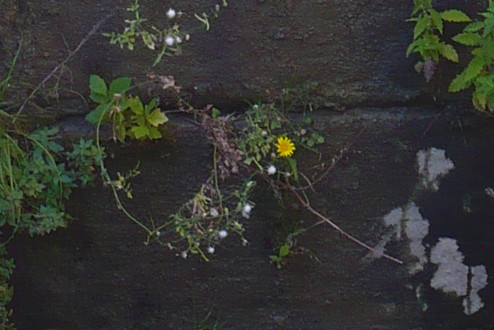
9 septembre 2007 Carcassonne Ecluse Fleurs (1)
1355946711_ebbcc802c9_k
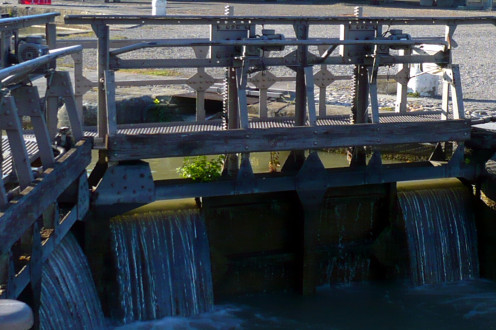
9 septembre 2007 Carcassonne Ecluse (4)
fr.wikipedia.org/wiki/Carcassonne Carcassonne (Carcassona [karka'suno] en occitan) est une commune française située dans le département de l'Aude et la région Languedoc-Roussillon. La ville est la préfecture de l'Aude, elle est connue pour la Cité de Carcassonne, un ensemble architectural médiéval restauré par Viollet-le-Duc au XIXe siècle et inscrit au patrimoine mondial de l'UNESCO depuis 1997. Carcassonne est située sur les bords du fleuve de l'Aude. La commune est traditionnellement divisée en deux, la ville basse qui occupe les berges du fleuve à l'ouest et la ville haute (ou cité) qui occupe la colline surplombant l'Aude. La cité est construite sur un petit plateau constitué par le creusement de l'Aude à environ 150 mètres d'altitude au-dessus de la ville basse[12]. La ville basse se situe au niveau de l'Aude dont l'altitude est de 100 m. L'Aude arrive à Carcassonne après son périple montagneux dans les gorges de la haute vallée de l'Aude et devient alors un fleuve plus tranquille. Elle passe au Païcherou, longe le cimetière Saint-Michel puis se sépare en deux bras formant une île appelée « l'île du Roy ». Quatre ponts permettent de la franchir : le pont Garigliano, le pont-Vieux accessible qu'aux piétons, le pont Neuf et le pont de l'Avenir. Le canal du Midi passe également au nord de la ville entre la gare et le jardin André-Chénier jouxtant la bastide Saint-Louis. La ville se situe dans un couloir entre la montagne Noire au nord et la chaîne des Pyrénées au sud. La plaine est constituée de dépôts récents amenés par l'Aude et provenant des Pyrénées. Il s'agit de la molasse de Carcassonne, qui se caractérise par une alternance de grès, de conglomérats et de marnes gréseuses fluviatiles datant de l'éocène. Légende : La ville de Carcassonne entretient la légende selon laquelle le nom de la ville de Carcassonne daterait du début du IXe siècle. Au moment des faits, la ville aurait été Sarrasine. Charlemagne aurait fait le siège, mais la maitresse des lieux, Dame Carcas, aurait fort résisté. Les deux armées seraient devenues affamées. Tandis qu'il n'aurait resté qu'une mesure de blé et un petit cochon dans la cité, la Dame Carcas aurait eu l'idée de démoraliser ses adversaires. Le porcelet aurait été engraissé, puis projeté par dessus les remparts. Pensant que la ville avait encore beaucoup de nourriture, Charlemagne aurait fait lever le siège. À ce moment, Dame Carcas aurait fait sonner les trompettes et, Charlemagne revenant sur ses pas, la Dame Carcas lui aurait proposé la paix. D'où l'expression Carcas sonne. Historiquement, la reconquête des terres du Languedoc par Charlemagne remonte à Pépin le Bref, au milieu du VIII° siècle. La Cité de Carcassonne, sur la rive droite de l'Aude a été classée au patrimoine mondial de l'UNESCO en 1997. C'est le haut lieu touristique de la ville avec plus de deux millions de visiteurs chaque année dont 300 000 visites du château comtal et des remparts[88]. C'est le deuxième site touristique le plus visité de France après le Mont-Saint-Michel. C'est un ensemble médiéval unique en Europe de par sa taille et son état de conservation. La cité est ceinturée de deux rangées de remparts et possède un château, le château comtal, et la basilique Saint-Nazaire.
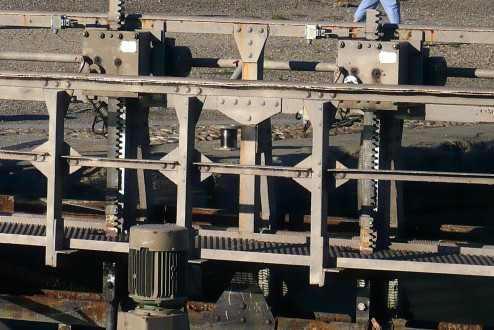
9 septembre 2007 Carcassonne Ecluse (3)
fr.wikipedia.org/wiki/Carcassonne Carcassonne (Carcassona [karka'suno] en occitan) est une commune française située dans le département de l'Aude et la région Languedoc-Roussillon. La ville est la préfecture de l'Aude, elle est connue pour la Cité de Carcassonne, un ensemble architectural médiéval restauré par Viollet-le-Duc au XIXe siècle et inscrit au patrimoine mondial de l'UNESCO depuis 1997. Carcassonne est située sur les bords du fleuve de l'Aude. La commune est traditionnellement divisée en deux, la ville basse qui occupe les berges du fleuve à l'ouest et la ville haute (ou cité) qui occupe la colline surplombant l'Aude. La cité est construite sur un petit plateau constitué par le creusement de l'Aude à environ 150 mètres d'altitude au-dessus de la ville basse[12]. La ville basse se situe au niveau de l'Aude dont l'altitude est de 100 m. L'Aude arrive à Carcassonne après son périple montagneux dans les gorges de la haute vallée de l'Aude et devient alors un fleuve plus tranquille. Elle passe au Païcherou, longe le cimetière Saint-Michel puis se sépare en deux bras formant une île appelée « l'île du Roy ». Quatre ponts permettent de la franchir : le pont Garigliano, le pont-Vieux accessible qu'aux piétons, le pont Neuf et le pont de l'Avenir. Le canal du Midi passe également au nord de la ville entre la gare et le jardin André-Chénier jouxtant la bastide Saint-Louis. La ville se situe dans un couloir entre la montagne Noire au nord et la chaîne des Pyrénées au sud. La plaine est constituée de dépôts récents amenés par l'Aude et provenant des Pyrénées. Il s'agit de la molasse de Carcassonne, qui se caractérise par une alternance de grès, de conglomérats et de marnes gréseuses fluviatiles datant de l'éocène. Légende : La ville de Carcassonne entretient la légende selon laquelle le nom de la ville de Carcassonne daterait du début du IXe siècle. Au moment des faits, la ville aurait été Sarrasine. Charlemagne aurait fait le siège, mais la maitresse des lieux, Dame Carcas, aurait fort résisté. Les deux armées seraient devenues affamées. Tandis qu'il n'aurait resté qu'une mesure de blé et un petit cochon dans la cité, la Dame Carcas aurait eu l'idée de démoraliser ses adversaires. Le porcelet aurait été engraissé, puis projeté par dessus les remparts. Pensant que la ville avait encore beaucoup de nourriture, Charlemagne aurait fait lever le siège. À ce moment, Dame Carcas aurait fait sonner les trompettes et, Charlemagne revenant sur ses pas, la Dame Carcas lui aurait proposé la paix. D'où l'expression Carcas sonne. Historiquement, la reconquête des terres du Languedoc par Charlemagne remonte à Pépin le Bref, au milieu du VIII° siècle. La Cité de Carcassonne, sur la rive droite de l'Aude a été classée au patrimoine mondial de l'UNESCO en 1997. C'est le haut lieu touristique de la ville avec plus de deux millions de visiteurs chaque année dont 300 000 visites du château comtal et des remparts[88]. C'est le deuxième site touristique le plus visité de France après le Mont-Saint-Michel. C'est un ensemble médiéval unique en Europe de par sa taille et son état de conservation. La cité est ceinturée de deux rangées de remparts et possède un château, le château comtal, et la basilique Saint-Nazaire.
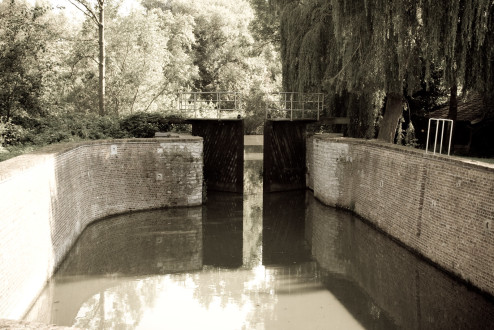
Oude Schelde, Temse
1353940027_15f505e244_k
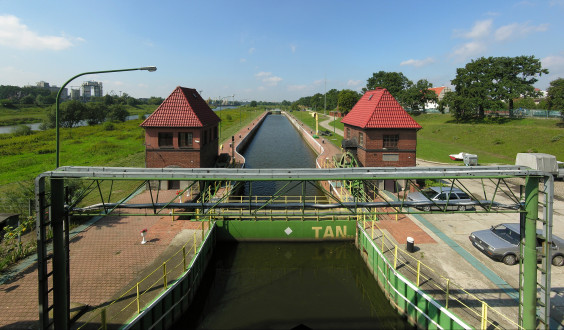
River Odra
See where this picture was taken. [?] odersluis2 View a slideshow of 300 water related photos from Poland
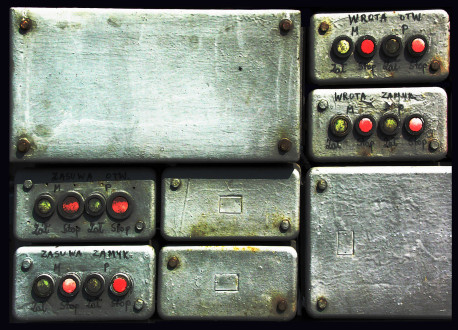
Switchboard
DSCN8623 Switchboard found on a disused navigation lock. River Odra, city of Wroclaw, Poland. Wroclaw harbour, seat of the Odratrans shipping company, is right downstream from this lock. Read more on my blog On a lock in Wroclaw, Poland [?]
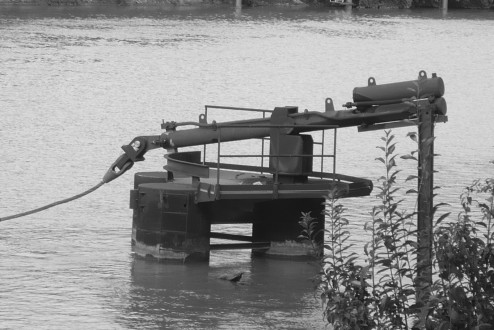
01 septembre 2007 Maisons-Alfort Ecluse
1296310336_02de784440_k
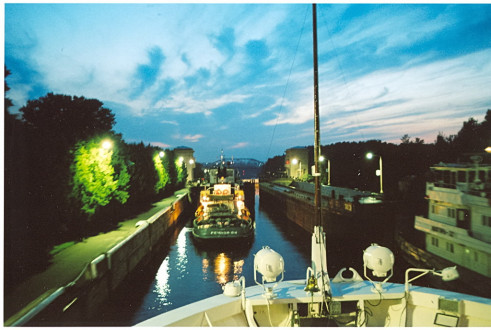
Midnight at lock
Going through lock at midnight on July 25, 2005 somewhere between Moscow and Uglich Listen to my utterz on this Balcony Broadcast Number 3
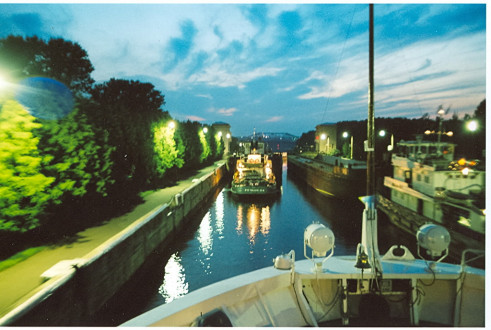
Lock at midnight
Lock at midnight on Volga Baltic Waterway on July 25, 2005 somewhere between Moscow and Uglich.
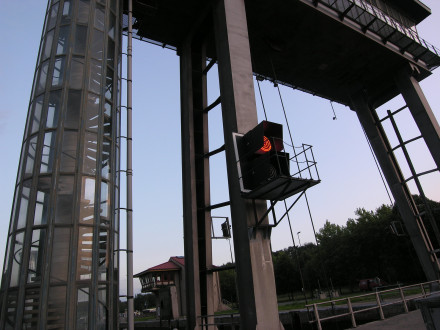
The downstream guillotine gate, Lock Ittre, Belgium
DSCN5659 See where this picture was taken. [?]
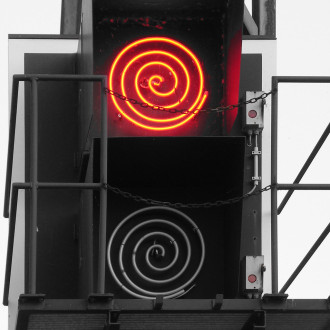
Lock Ittre, Belgium
DSCN5657 See where this picture was taken. [?]
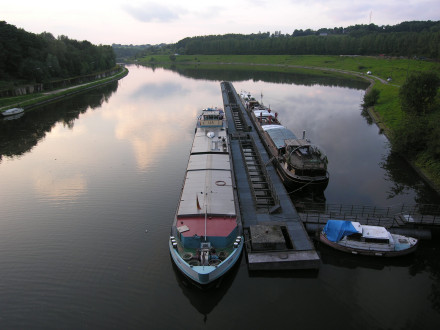
View downstream, Lock Ittre, Belgium
DSCN5658 See where this picture was taken. [?]
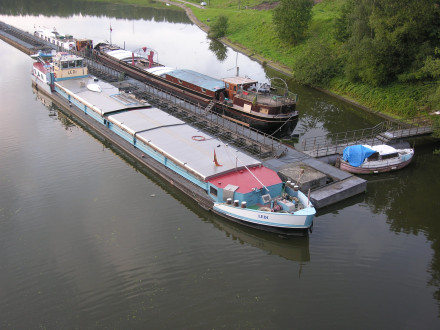
View downstream, Lock Ittre, Belgium
DSCN5656 See where this picture was taken. [?]
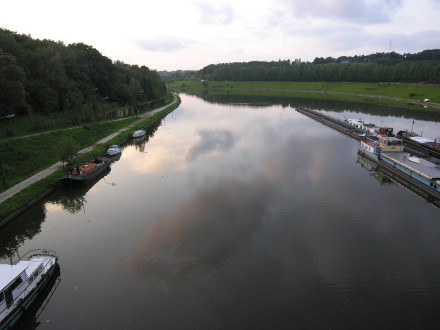
View downstream, Lock Ittre, Belgium
DSCN5655 See where this picture was taken. [?]
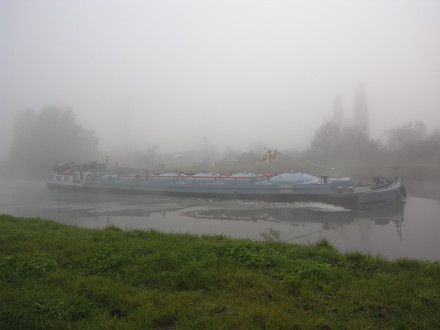
Cement tanker near Lock #10 Anderlecht, Belgium
Dscn2046.Jpg See where this picture was taken. [?]
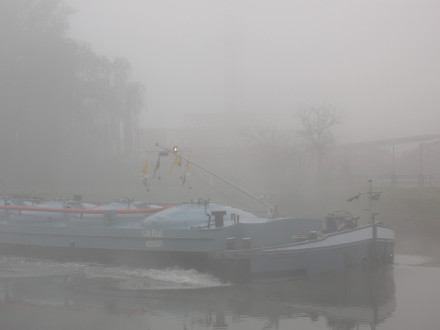
Cement tanker near Lock #10 Anderlecht, Belgium
331998574_046f15b549_k
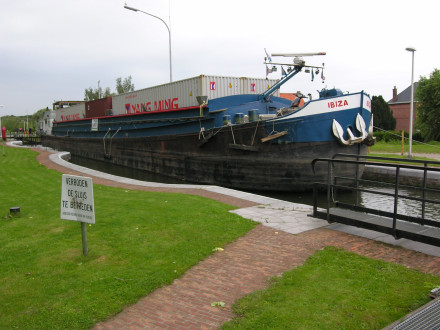
'Ibiza' in sluis Boortmeerbeek
DSCN8433 See where this picture was taken. [?]
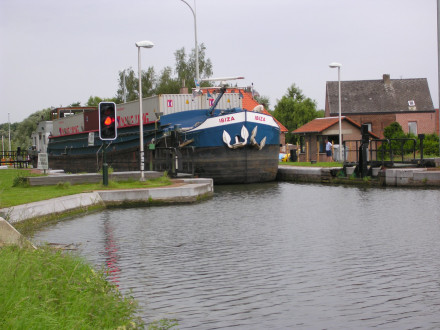
'Ibiza' in sluis Boortmeerbeek
DSCN8434 See where this picture was taken. [?]
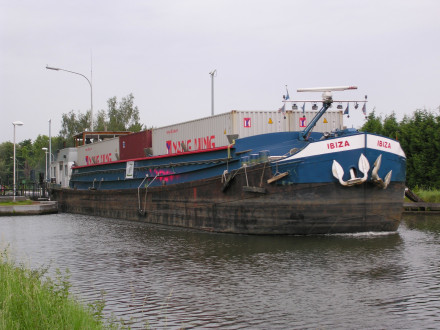
'Ibiza' verlaat sluis Boortmeerbeek
DSCN8435 See where this picture was taken. [?]
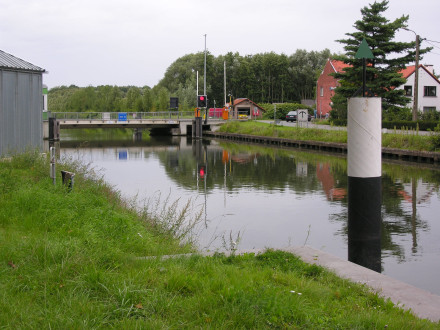
Brug Boortmeerbeek gezien vanaf de sluis
DSCN8436 See where this picture was taken. [?]
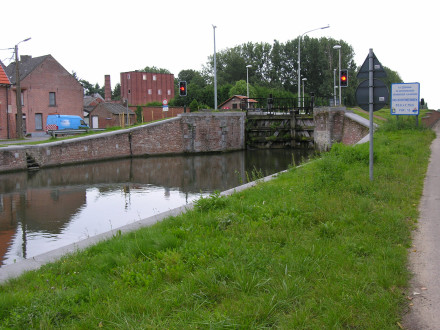
Sluis Boortmeerbeek gezien vanaf de brug
DSCN8437 See where this picture was taken. [?]
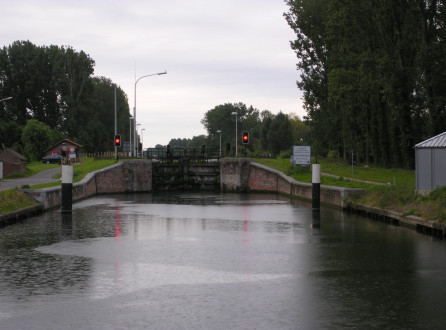
Sluis Boortmeerbeek gezien vanaf de brug
DSCN8441 See where this picture was taken. [?] *) In deze streek zegt men liever 'vanop'.
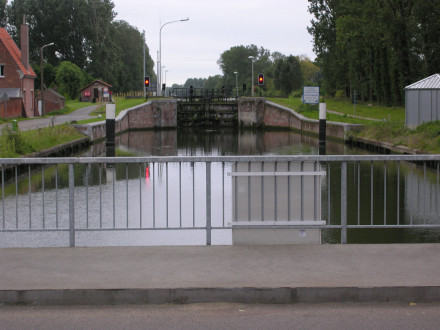
Sluis Boortmeerbeek gezien vanaf de brug
DSCN8443 See where this picture was taken. [?]
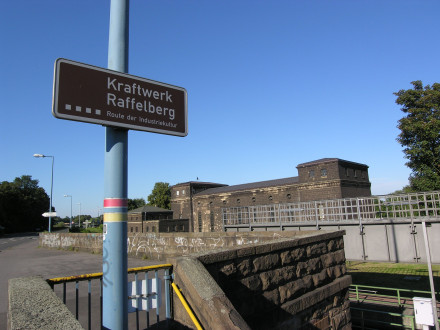
Raffelberg lock and dam, river Ruhr, Germany
DSCN8134 See where this picture was taken. [?]
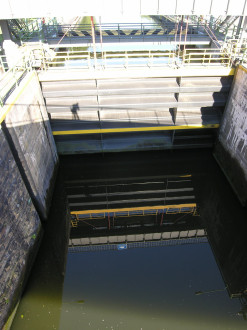
Raffelberg lock and dam, river Ruhr, Germany
DSCN8131 See where this picture was taken. [?]
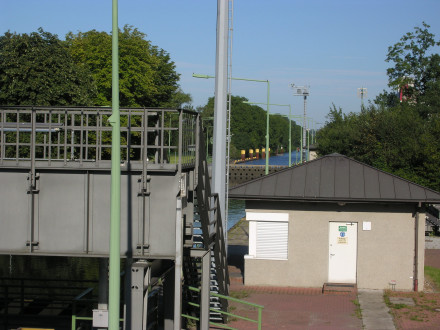
Raffelberg lock and dam, river Ruhr, Germany
DSCN8133 See where this picture was taken. [?]
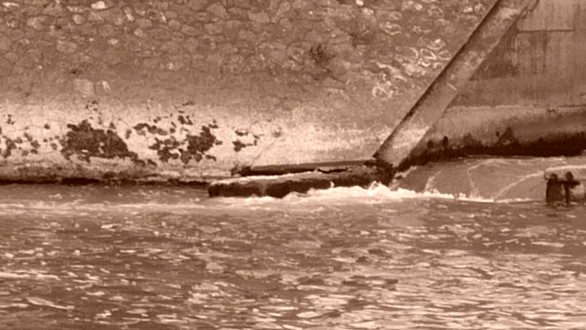
maisons-alfort 21-07-07 bords de la marne écluse sépia 1
865420526_72b6d78931_k
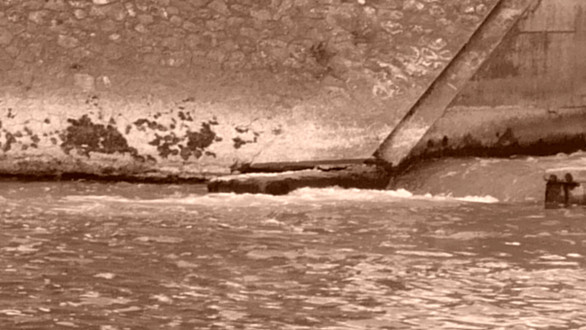
maisons-alfort 21-07-07 bord de la marne écluse sépia 2
865420434_17e47ac12e_k
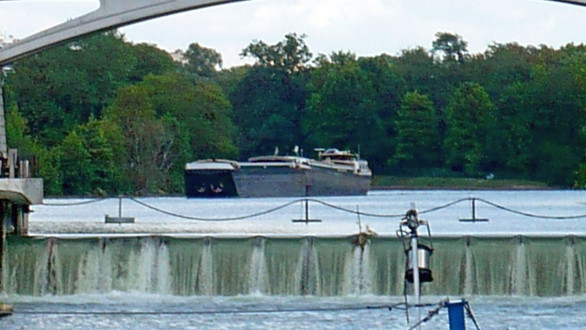
30 juillet 07 , Maisons-ALfort, Passage d'une péniche à l'écluse
971389130_1ae97a1572_k
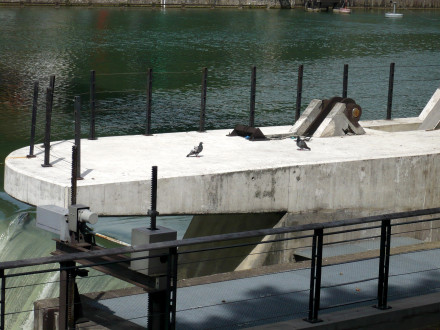
maisons-alfort 21-07-07 bords de marne pigeons
865438718_fe5a75b3ac_k
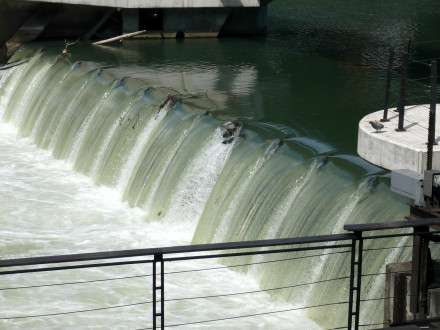
maisons-alfort 21-07-07 bords de marne écluse
865438572_72b2c4e394_k
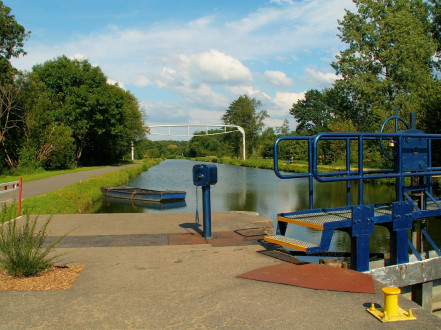
Ecluse n° 9
fr.wikipedia.org/wiki/Canal_Blaton-Ath opvn.wallonie.be/tour2/_canal_blaton_ath_dendre.htm 82 other photos here : BeloeilBeauVLoDeRAVeL2007
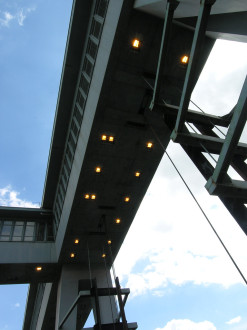
Lower guillotine gates, inclined plane, Ronquières, Begium
DSCN7835 See where this picture was taken. [?]
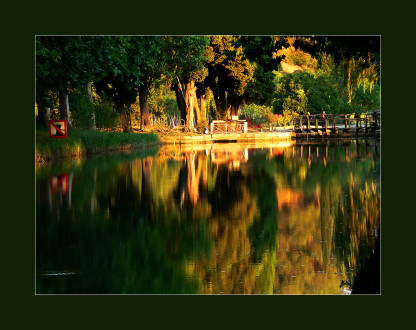
Le soir à l'écluse / Look on evening lock
Dernier rayon de soleil sur l'écluse d'Argens-Minervois, le long du canal du Midi. Last sunbeam on the lock of Argens-Minervois, along the canal du Midi (France). See larger view : View On White
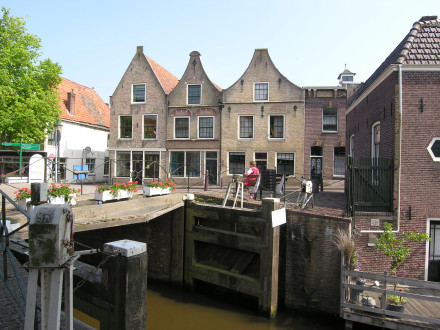
Oudewater, Netherlands
DSCN7402 See where this picture was taken. [?]
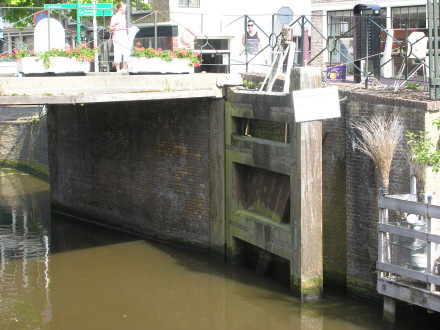
Oudewater, Netherlands
DSCN7401 See where this picture was taken. [?]
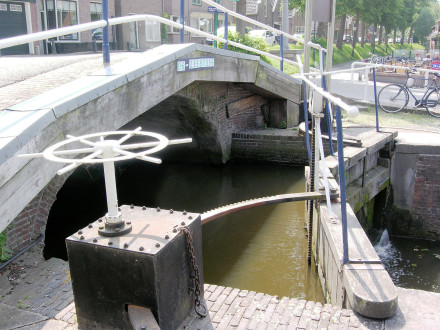
Hekendorp, Netherlands
DSCN7377 See where this picture was taken. [?]
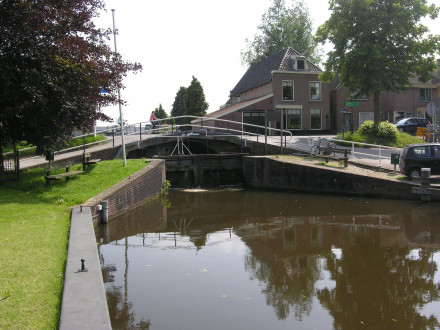
Hekendorp, Netherlands
DSCN7379 See where this picture was taken. [?]
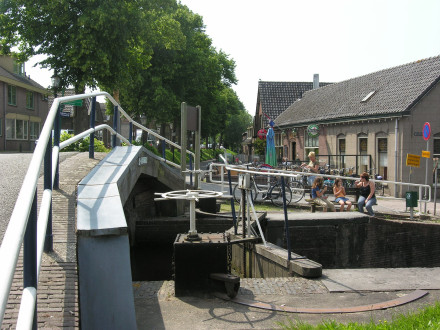
Goejanverwellesluis, Hekendorp, Netherlands
DSCN7371 See where this picture was taken. [?]
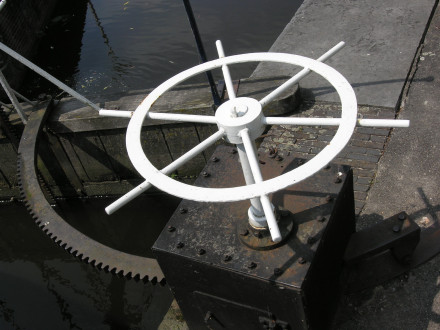
Goejanverwellesluis, Hekendorp, Netherlands
DSCN7370 See where this picture was taken. [?]
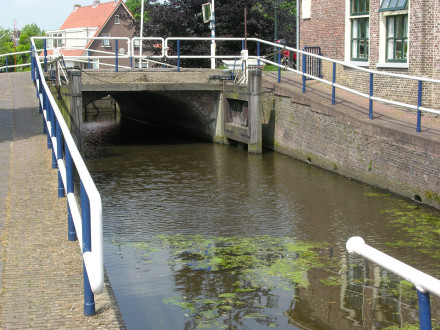
Goejanverwellesluis, Hekendorp, Netherlands
DSCN7368 See where this picture was taken. [?]
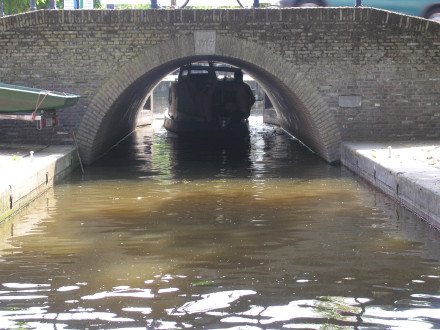
Tight passage through bridge in Oudewater, Netherlands
871740605_3f76b9bf6f_k
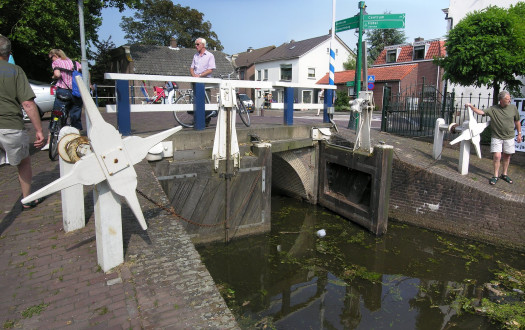
Tiny lock in Oudewater, Netherlands
oudewaterpano See where this picture was taken. [?]
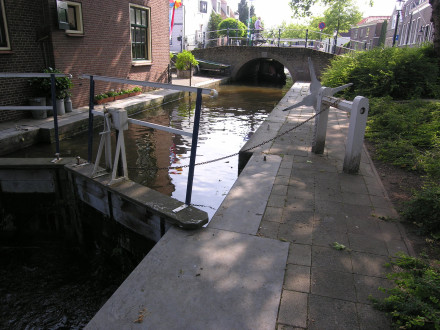
Tiny lock in Oudewater, Netherlands
DSCN7406 See where this picture was taken. [?]
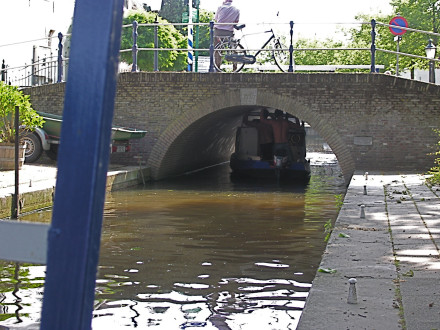
Tight passage through bridge in Oudewater, Netherlands
DSCN7405 See where this picture was taken. [?]
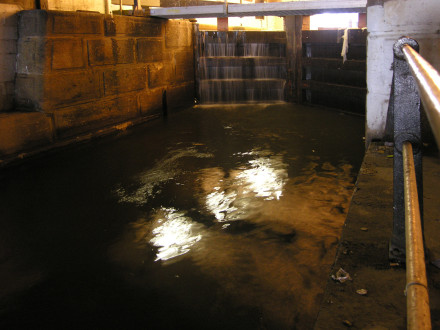
DSCN2965
See where this picture was taken. [?]
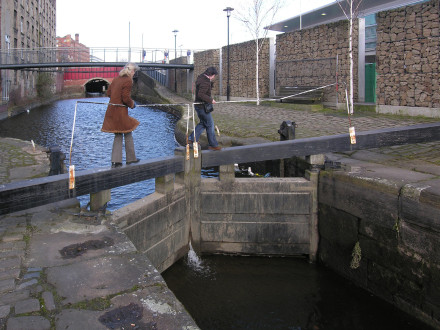
DSCN2972
See where this picture was taken. [?]
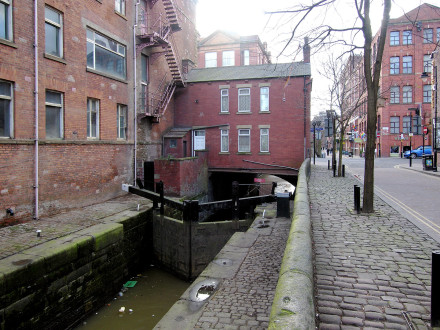
DSCN2960
See where this picture was taken. [?]
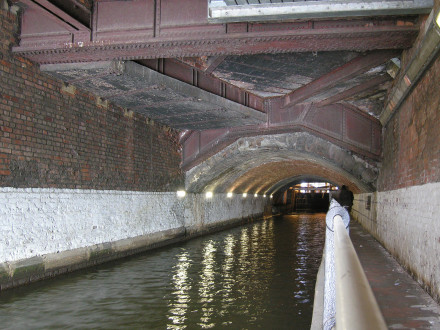
DSCN2963
See where this picture was taken. [?]
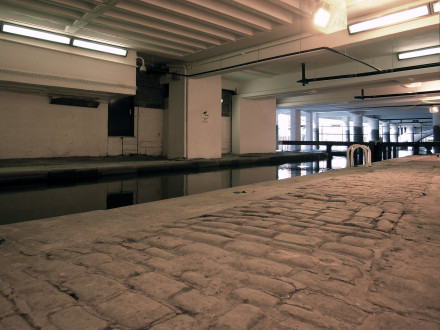
DSCN2966
See where this picture was taken. [?]
![<a href="http://loc.alize.us/#/flickr:397007713" rel="noreferrer nofollow">See where this picture was taken.</a> <a href="http://www.flickr.com/groups/geotagging/discuss/72157594165549916/">[?]</a>DSCN2936](https://www.remosworld.ch/wp-content/plugins/justified-image-grid/timthumb.php?src=https%3A%2F%2Flive.staticflickr.com%2F181%2F397007713_693940b829_h.jpg&h=330&q=90&f=.jpg)
See where this picture was taken. [?]DSCN2936
![<a href="http://loc.alize.us/#/flickr:397007301" rel="noreferrer nofollow">See where this picture was taken.</a> <a href="http://www.flickr.com/groups/geotagging/discuss/72157594165549916/">[?]</a>DSCN2938](https://www.remosworld.ch/wp-content/plugins/justified-image-grid/timthumb.php?src=https%3A%2F%2Flive.staticflickr.com%2F147%2F397007301_c6d69248ac_h.jpg&h=330&q=90&f=.jpg)
See where this picture was taken. [?]DSCN2938
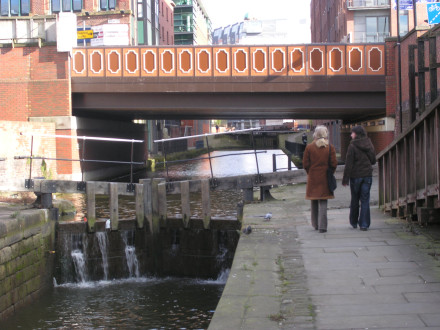
DSCN2943
See where this picture was taken. [?]
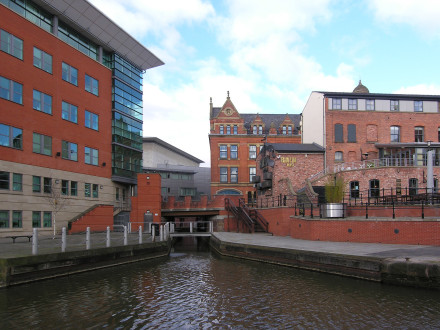
DSCN2947
See where this picture was taken. [?]
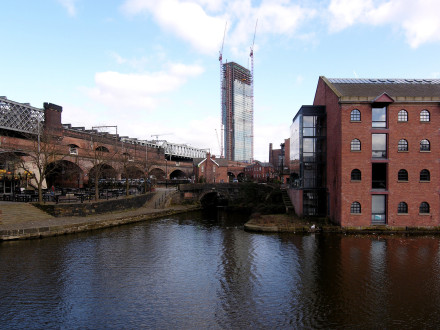
DSCN2920
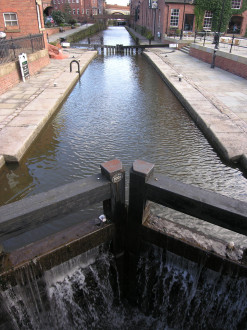
Manchester
DSCN2907
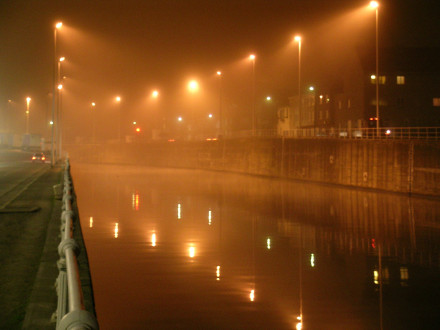
Anderlecht, Belgium
See where this picture was taken.
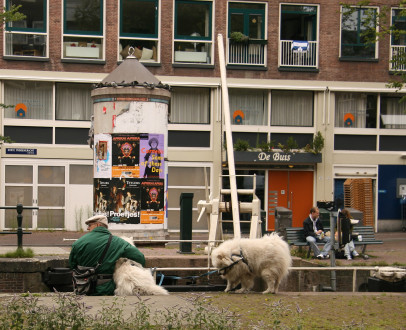
Korte Prinsengracht
683989722_d9c21f6a93_k
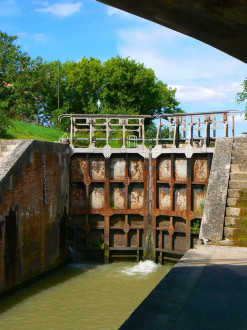
Moissac (82)
Ecluse permettant le passage du Canal vers la rivière Tarn à Moissac
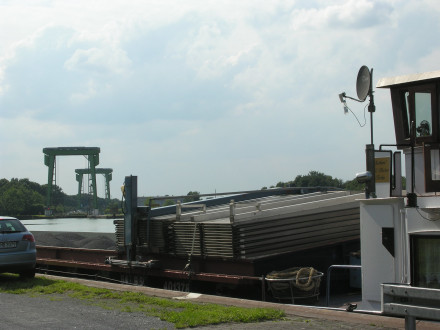
Friedrichsfeld, Germany
DSCN7626 See where this picture was taken. [?]
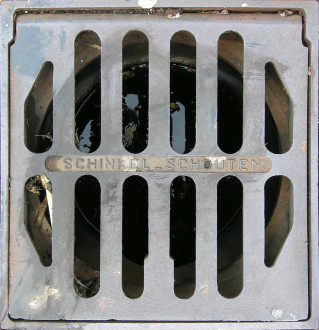
Moordrecht, Netherlands
DSCN7487 See where this picture was taken. [?]
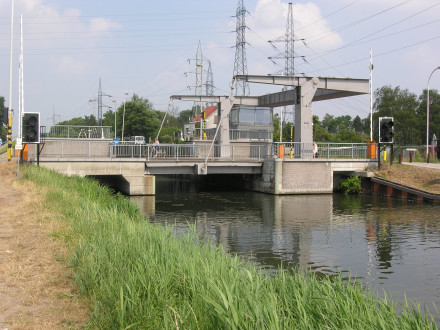
St-Job-In-'t-Goor
DSCN5178 See where this picture was taken. [?]

Lock# III, Tilburg, Netherlands
sluisIII See where this picture was taken. [?]

Near Ottersluis, Dordrecht, Netherlands
View it HUGE (10328x1856 pixels) or as an alternative QuickTime interactive panorama. QuickTime plugin must be installed. ottersluis4.jpg See where this picture was taken. [?]
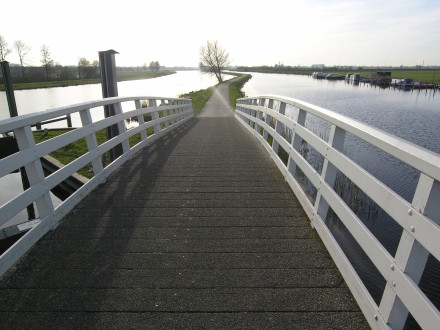
Near Alblasserdam, Netherlands
See where this picture was taken. [?] DSCN7073
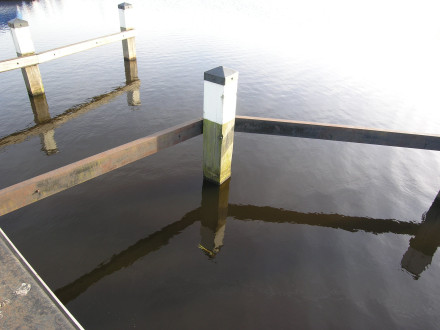
Entrance to the shortest lock I've ever seen
See where this picture was taken. [?] DSCN7070
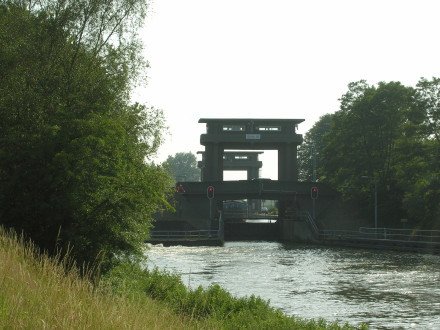
Lock 16, Weert, Netherlands
DSCN4595 See where this picture was taken. [?]
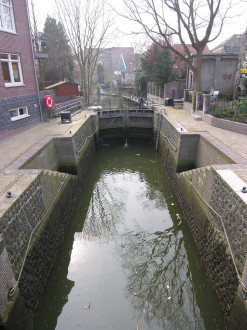
Small lock in Hardinxveld-Giessendam, Netherlands
DSCN7011 By Dutch standards this is only a tiny lock: just under 20 metres long and less than 5 metres wide. See where this picture was taken. [?]
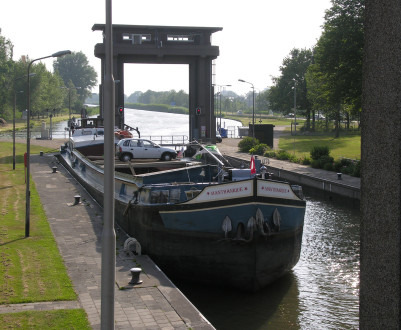
Lock 16, Weert, Netherlands
DSCN4596 See where this picture was taken. [?]
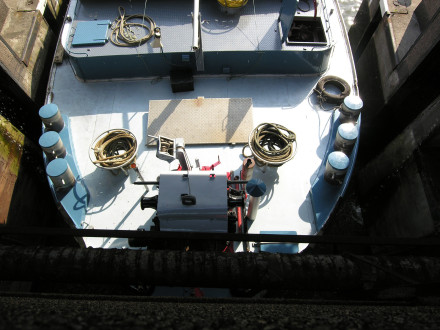
Lock 16, Weert, Netherlands
DSCN4599 See where this picture was taken. [?]
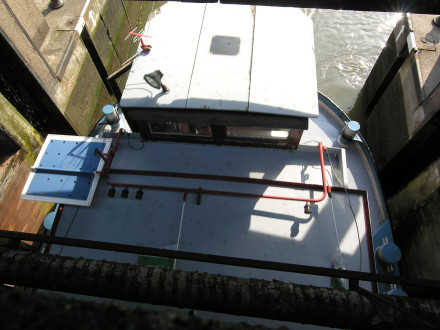
Lock 16, Weert, Netherlands
DSCN4600 See where this picture was taken. [?]
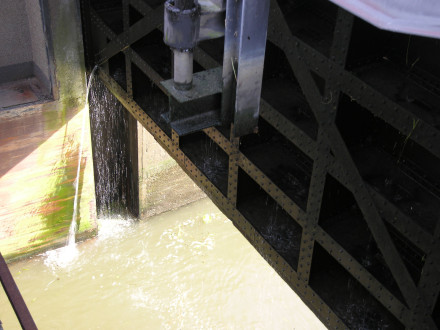
Lock 16, Weert, Netherlands
DSCN4598 See where this picture was taken. [?]
![DSCN4580 <a href="http://loc.alize.us/#/flickr:451257844" rel="noreferrer nofollow">See where this picture was taken.</a> <a href="http://www.flickr.com/groups/geotagging/discuss/72157594165549916/">[?]</a>](https://www.remosworld.ch/wp-content/plugins/justified-image-grid/timthumb.php?src=https%3A%2F%2Flive.staticflickr.com%2F208%2F451257844_ef78cc0f04_h.jpg&h=330&q=90&f=.jpg)
DSCN4580 See where this picture was taken. [?]
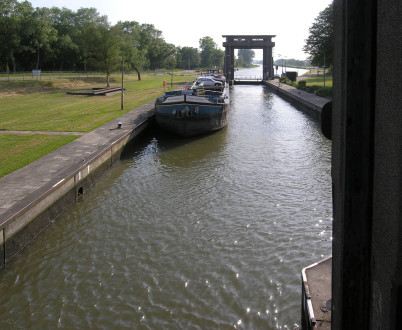
Lock 16, Weert, Netherlands
DSCN4597 See where this picture was taken. [?]
![DSCN1915 <a href="http://loc.alize.us/#/flickr:508368807" rel="noreferrer nofollow">See where this picture was taken.</a> <a href="http://www.flickr.com/groups/geotagging/discuss/72157594165549916/">[?]</a>](https://www.remosworld.ch/wp-content/plugins/justified-image-grid/timthumb.php?src=https%3A%2F%2Flive.staticflickr.com%2F208%2F508368807_e8f1ed7ff7_h.jpg&h=330&q=90&f=.jpg)
DSCN1915 See where this picture was taken. [?]
![DSCN1917 <a href="http://loc.alize.us/#/flickr:508366061" rel="noreferrer nofollow">See where this picture was taken.</a> <a href="http://www.flickr.com/groups/geotagging/discuss/72157594165549916/">[?]</a>](https://www.remosworld.ch/wp-content/plugins/justified-image-grid/timthumb.php?src=https%3A%2F%2Flive.staticflickr.com%2F207%2F508366061_b16128ef7c_h.jpg&h=330&q=90&f=.jpg)
DSCN1917 See where this picture was taken. [?]
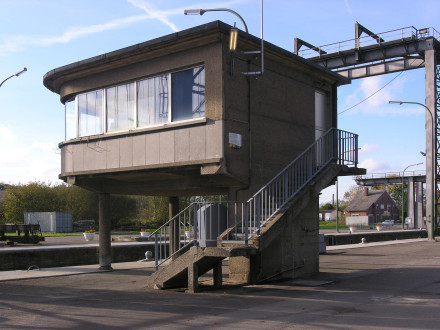
508370809_b1cc208eea_k
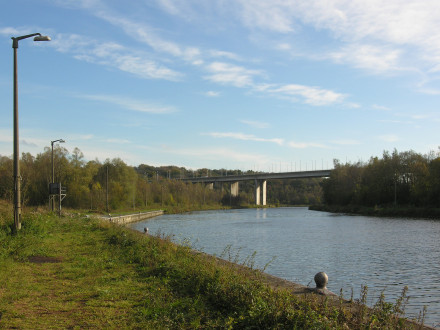
508339010_8d0ed8a0a5_k
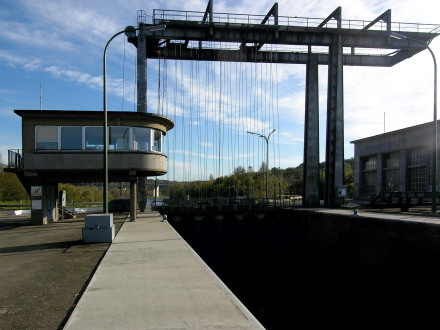
Lock Viesville, Canal Brussels-Charleroi, Belgium
508378749_351a2c7246_k
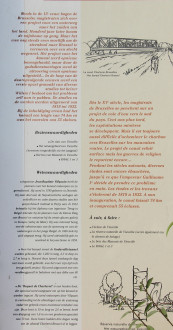
Explanation about Viesville lock and the Canal Brussels-Charleroi
508372147_18e60146ca_k
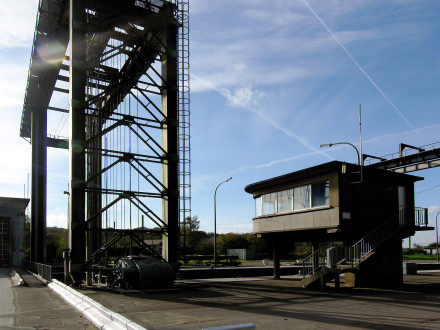
Lock Viesville, Canal Brussels-Charleroi, Belgium
508375603_2bb3e3581b_k
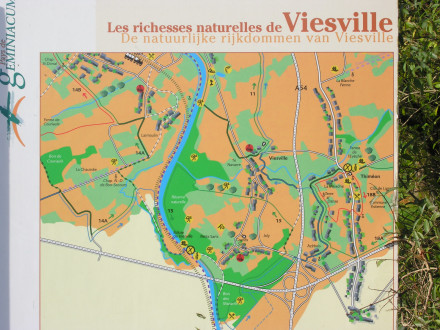
Map of Viesville and its nature reserve
DSCN1912 See where this picture was taken. [?]
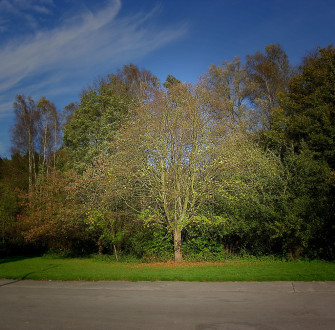
Lock Viesville, Canal Brussels-Charleroi, Belgium
DSCN1909 See where this picture was taken. [?]
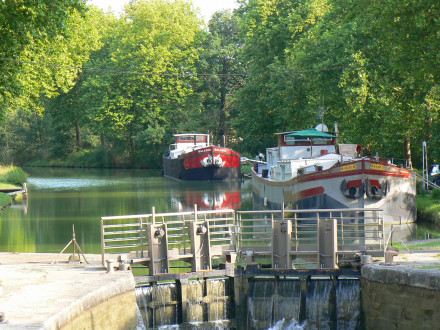
Labège (31)
A l'écluse de Vic ...
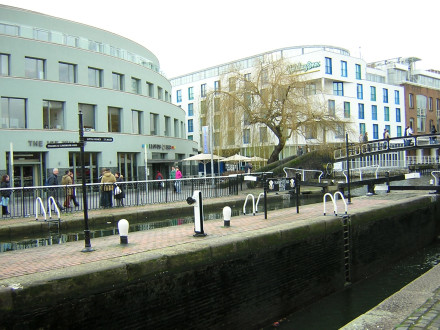
Camden Wharf, London
517356202_97a05bca59_h
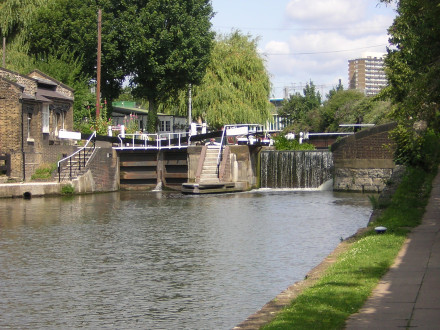
Regents Canal, London
517355956_53969206e9_h
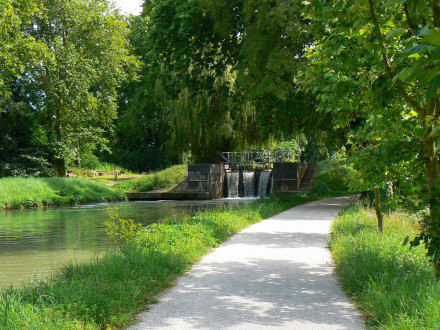
Moissac (82)
Canal Latéral - Ecluse du pont canal au Cacor
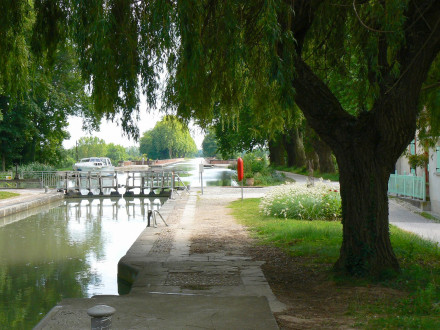
Moissac (82)
Canal Latéral - Ecluse du pont canal au Cacor
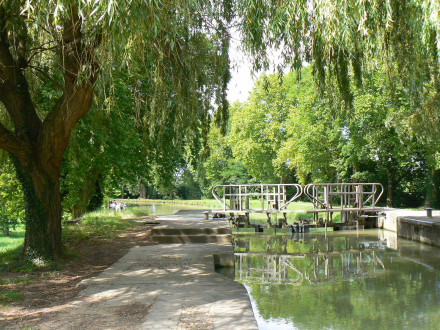
Moissac (82)
Canal Latéral - Ecluse du pont canal au Cacor
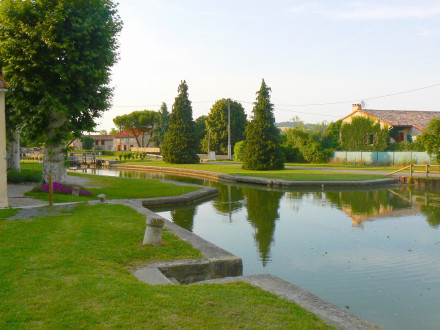
Montgiscard (31)
L'écluse
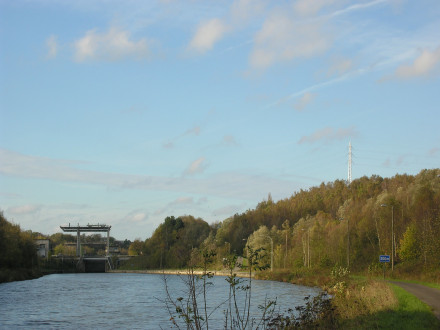
Lock Viesville, Canal Brussels-Charleroi, Belgium
508332182_43823cb860_k
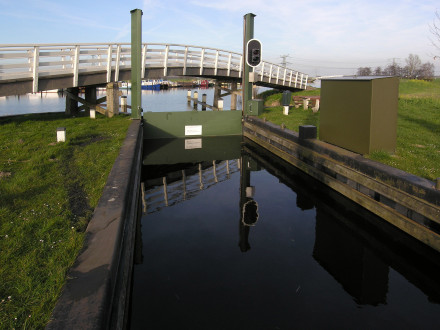
The shortest lock I've ever seen (12x3,5m)
See where this picture was taken. [?] DSCN7072
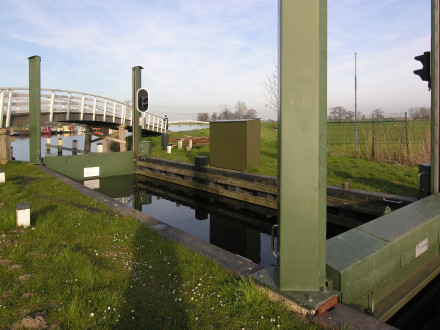
The shortest lock I've ever seen (12x3,5m)
See where this picture was taken. [?] DSCN7071
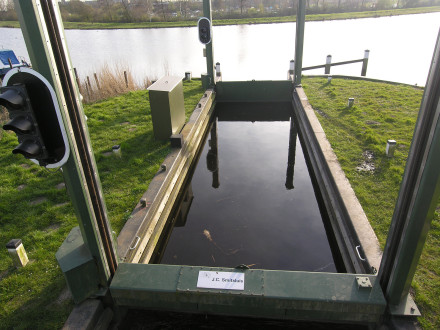
The shortest lock I've ever seen (12x3,5m)
See where this picture was taken. [?] DSCN7069
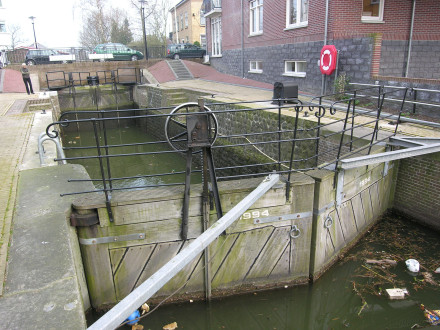
Damsluis, Giessendam, Netherlands
DSCN7000 See where this picture was taken. [?]
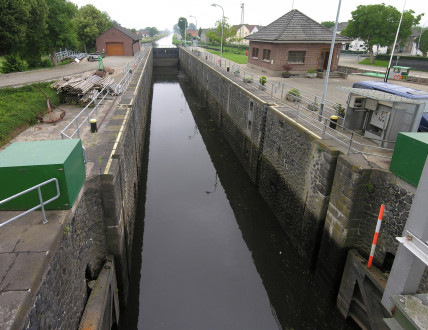
Lock in Wardhausen, Germany
panokleve Not really a panorama, but stitched from a number of wide angle photos. See where this picture was taken. [?]
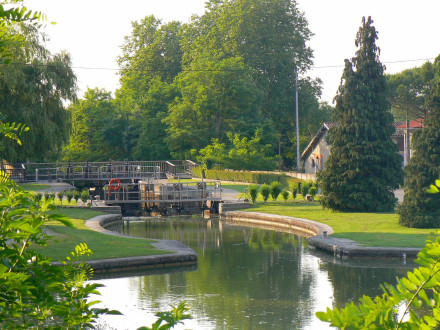
Montgiscard (31)
L'écluse de Montgiscard (31-Haute-Garonne)
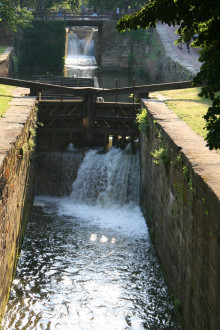
View of Twin Locks
Chesapeake & Ohio Canal, Georgetown, Washington, DC, USA The C & O canal runs 185 miles from Georgetown in Washington, DC, to Cumberland, MD. "The canal survives as an excellent illustration of 19th-century canal-building technology. The magnitude of the engineering achievement is exemplified by the length of the canal, its 74 lift locks to accommodate a rise of 605 feet, the 11 stone aqueducts spanning the major Potomac tributaries, 7 dams supplying water to the canal, hundreds of culverts carrying roads and streams beneath the canal, and a 3,117-foot tunnel carrying the canal through a large shale rock formation." ("Washington, DC, A National Registry of Historic Places Travel Itinerary" www.cr.nps.gov/Nr/travel/wash/dc6.htm)
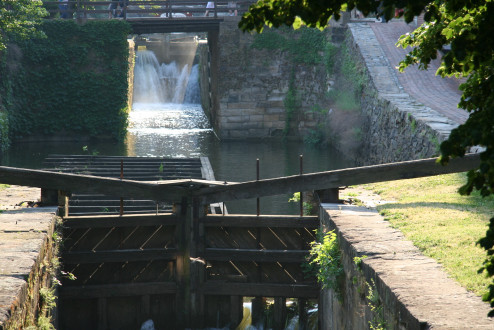
Locks and Bridge
Chesapeake & Ohio Canal, Georgetown, Washington, DC, USA The C & O canal runs 185 miles from Georgetown in Washington, DC, to Cumberland, MD. "The canal survives as an excellent illustration of 19th-century canal-building technology. The magnitude of the engineering achievement is exemplified by the length of the canal, its 74 lift locks to accommodate a rise of 605 feet, the 11 stone aqueducts spanning the major Potomac tributaries, 7 dams supplying water to the canal, hundreds of culverts carrying roads and streams beneath the canal, and a 3,117-foot tunnel carrying the canal through a large shale rock formation." ("Washington, DC, A National Registry of Historic Places Travel Itinerary" www.cr.nps.gov/Nr/travel/wash/dc6.htm)
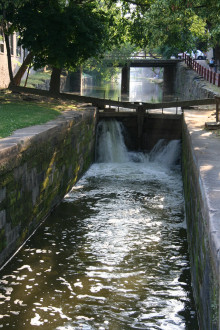
Lock
Chesapeake & Ohio Canal, Georgetown, Washington, DC, USA The C & O canal runs 185 miles from Georgetown in Washington, DC, to Cumberland, MD. "The canal survives as an excellent illustration of 19th-century canal-building technology. The magnitude of the engineering achievement is exemplified by the length of the canal, its 74 lift locks to accommodate a rise of 605 feet, the 11 stone aqueducts spanning the major Potomac tributaries, 7 dams supplying water to the canal, hundreds of culverts carrying roads and streams beneath the canal, and a 3,117-foot tunnel carrying the canal through a large shale rock formation." ("Washington, DC, A National Registry of Historic Places Travel Itinerary" www.cr.nps.gov/Nr/travel/wash/dc6.htm)
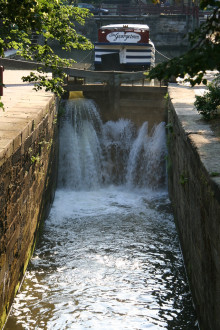
Lock and Barge
Chesapeake & Ohio Canal, Georgetown, Washington, DC, USA The C & O canal runs 185 miles from Georgetown in Washington, DC, to Cumberland, MD. "The canal survives as an excellent illustration of 19th-century canal-building technology. The magnitude of the engineering achievement is exemplified by the length of the canal, its 74 lift locks to accommodate a rise of 605 feet, the 11 stone aqueducts spanning the major Potomac tributaries, 7 dams supplying water to the canal, hundreds of culverts carrying roads and streams beneath the canal, and a 3,117-foot tunnel carrying the canal through a large shale rock formation." ("Washington, DC, A National Registry of Historic Places Travel Itinerary" www.cr.nps.gov/Nr/travel/wash/dc6.htm)
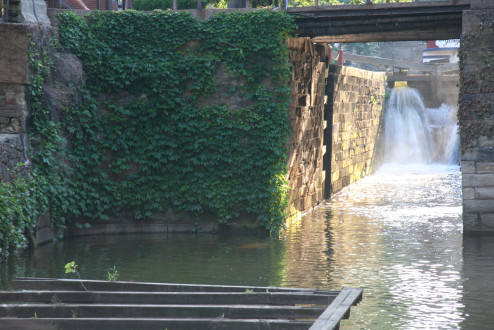
From Below a Lock
Chesapeake & Ohio Canal, Georgetown, Washington, DC, USA The C & O canal runs 185 miles from Georgetown in Washington, DC, to Cumberland, MD. "The canal survives as an excellent illustration of 19th-century canal-building technology. The magnitude of the engineering achievement is exemplified by the length of the canal, its 74 lift locks to accommodate a rise of 605 feet, the 11 stone aqueducts spanning the major Potomac tributaries, 7 dams supplying water to the canal, hundreds of culverts carrying roads and streams beneath the canal, and a 3,117-foot tunnel carrying the canal through a large shale rock formation." ("Washington, DC, A National Registry of Historic Places Travel Itinerary" www.cr.nps.gov/Nr/travel/wash/dc6.htm)
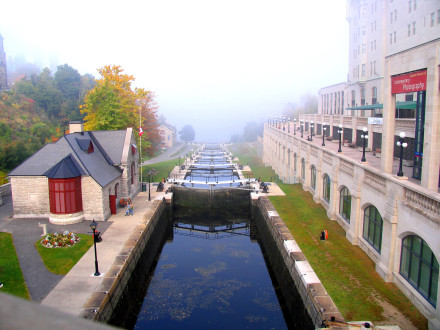
Rideau Canal, UNESCO World Heritage
The Rideau Canal became a UNESCO World Heritage Site on June 29, 2007. It is the best preserved canal in North America from the great canal-building era of the early 19th century to remain operational along its original line with most of its original structures intact. Viewed from the Wellington Street bridge, these locks are at the northern most portion of the Rideau Canal at the Ottawa River. Parliament Hill and the Bytowne museum. Chateau Laurier hotel on right. I enhanced the colors and contrast in PhotoShop to emphasize the Maple trees. I am growing tired of seeing people butcher their colorful fog photos by constraining them to be black and white, blechh!
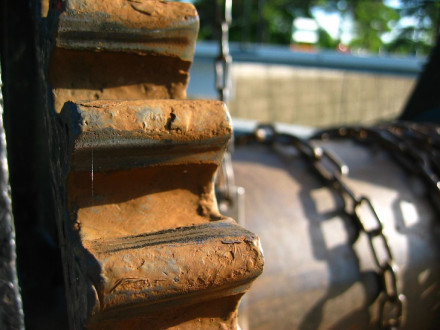
Locks
472893954_7ddb71456f_b
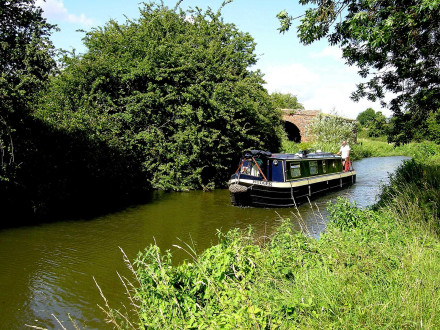
Narrowboat in Oxford canal
463120310_948b13a05e_k
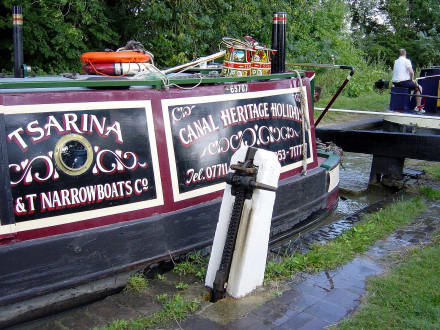
Narrowboat in Oxford canal
463125121_7c920b115f_k
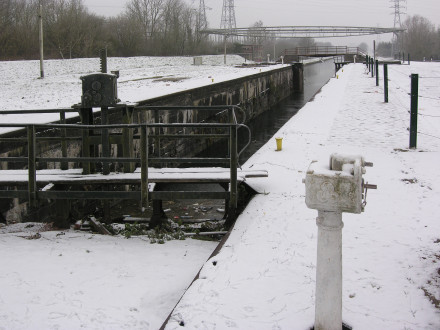
Lock #2 in Canal du Centre, Belgium
403239037_8db63a742e_k
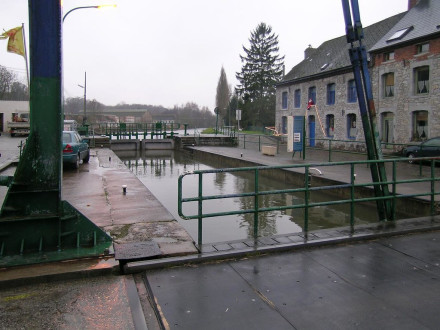
Lock in Labuissiere, Belgium
See where this picture was taken. [?]
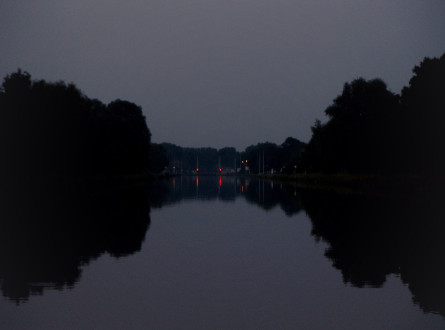
Lock #6 Lembeek, Belgium
The canal Brussels-Charleroi in Belgium. We hear the peaceful sound of trains to the left of us. Behind us the constant and gentle hum of what is left of the steel industry in Clabecq. In the distance two friendly red eyes beckon us towards the lock that is in Flanders, while we are in the French speaking part of Belgium called Wallonie. See where this picture was taken. Alors, image pris en Wallonie, mais la plupart du sujet se trouve en Flandres. Qui va jeter la première pierre?
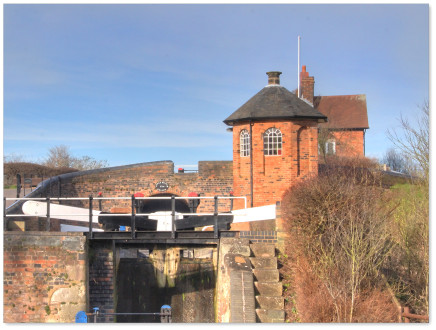
Bratch Locks
The three Bratch locks on the Staffordshire & Worcestershire Canal near Wombourne, Staffordshire with lock cottage, toll house and bridges.
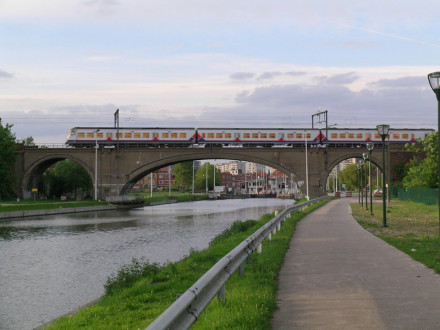
Anderlecht lock, Belgium
Seen from the South Train crossing the canal Brussels-Charleroi in the outskirts of Brussels. On the mainline to Ghent. Belgium. Lock #10 Anderlecht in the background. Where's this? Waar is dit? C'est où ? [?]
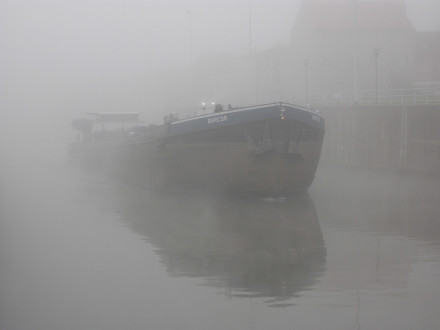
'BARCOR' un bateau citerne (a tanker barge)
331997988_c18d6c732a_k
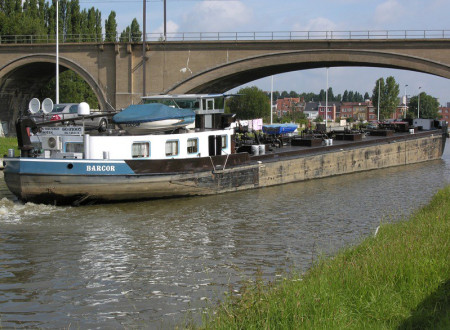
Railway bridge Anderlecht, Belgium
304976846_3134b0eeb3_c
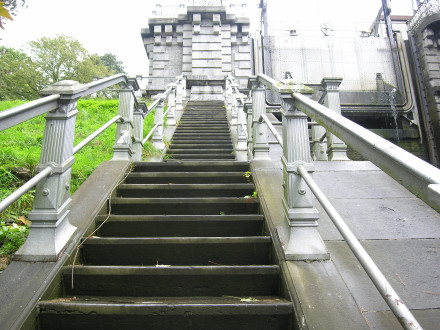
Boat lift Canal du Centre, Belgium
332122293_6c5f681b72_k
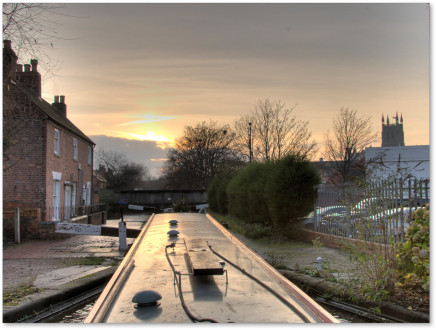
Arriving in Worcester
351761600_c26fb75e70_k
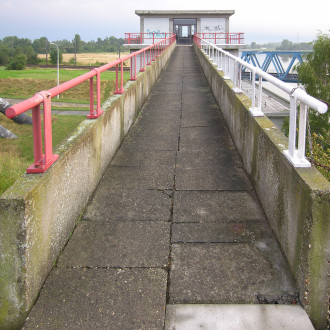
Pommeroeul, Belgium, bridge to 'Bureau'.
Canal Pommeroeul-Condé. This office probably is for water management, that is, for pumping up water to supplement the Canal du Centre See where this picture was taken. [?]
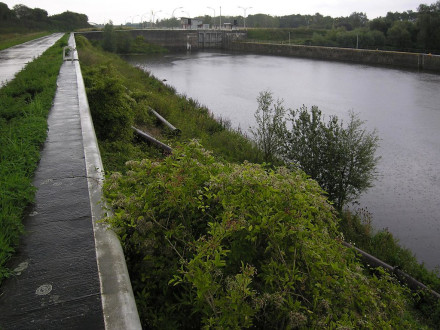
Pommeroeul, Belgium, disused lock
Canal Pommeroeul-Condé See where this picture was taken. [?]
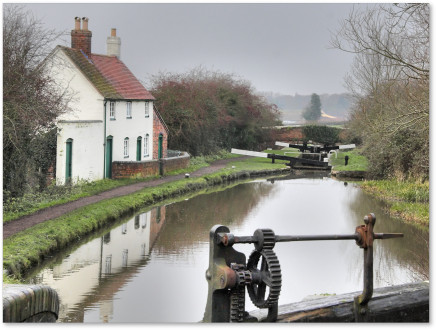
Tardebigge flight
Halfway down the 30 locks of the Tardebigge flight, Worcester and Birmingham canal, Worcestershire, England. All 30 are about as close together as this! The restored lock cottage is owned by The Landmark Trust and is available for holiday breaks.
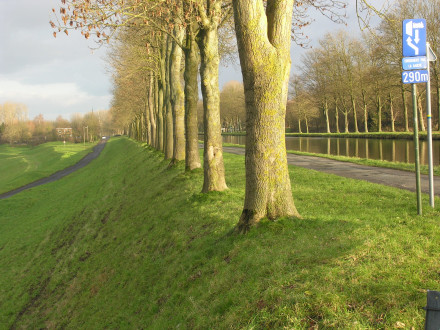
The old Canal du Centre, Belgium
Here the old canal runs parallel to the new. The traffic sign is there to help make room for the tourist road train. See from where this picture was taken (looking east).
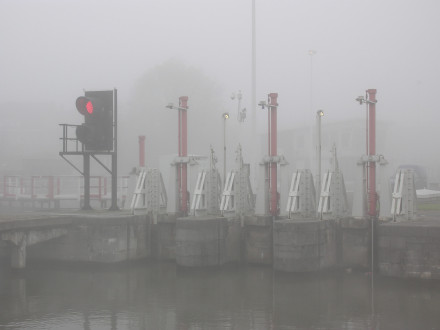
Lock #10 Anderlecht, Belgium
332000327_62a3f301b5_k
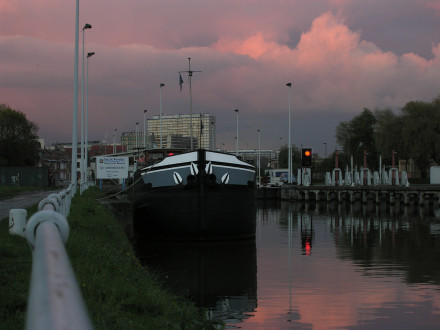
Anderlecht
325848982_ed0b8a67a0_k
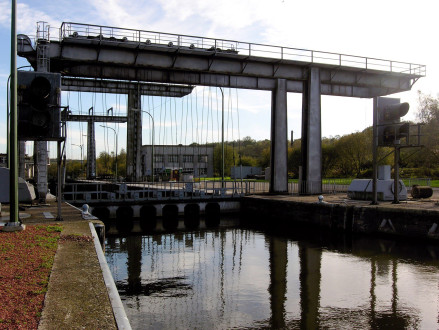
Lock Viesville, Belgium
317416030_31e9c703f3_h
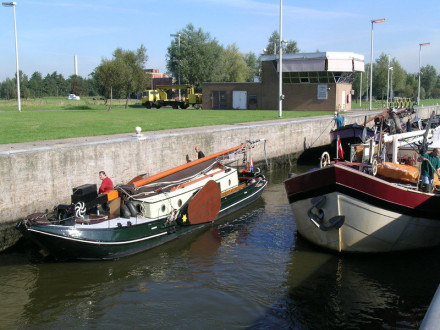
Menen Lock
302933672_7a9fcd8936_c
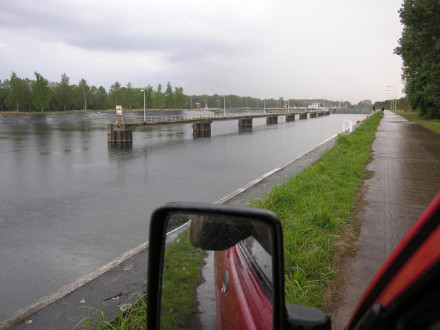
Pommeroeul, Belgium, disused lock
Canal Pommeroeul-Condé See where this picture was taken. [?]
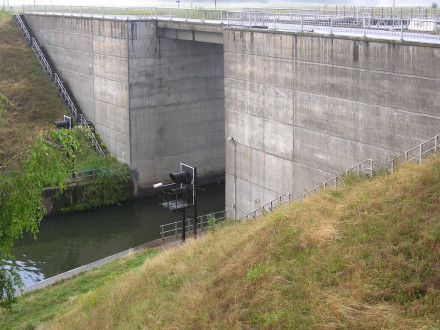
Pommeroeul, Belgium, disused lock
Canal Pommeroeul-Condé See where this picture was taken. [?]
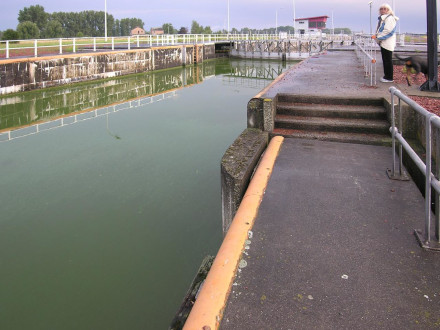
Pommeroeul, Belgium, disused lock
Canal Pommeroeul-Condé See where this picture was taken. [?]
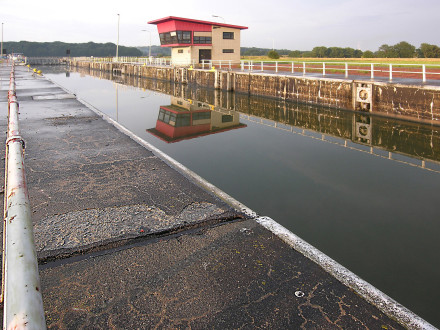
Pommeroeul, Belgium, disused lock
Canal Pommeroeul-Condé See where this picture was taken.
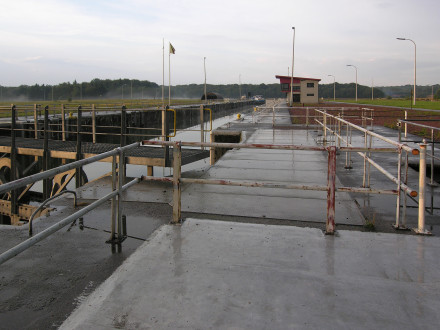
Pommeroeul, Belgium, disused lock
Canal Pommeroeul-Condé See where this picture was taken. [?]
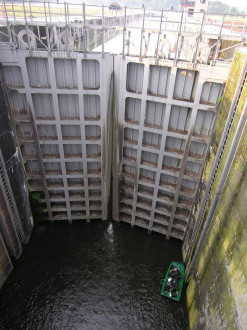
Pommeroeul, Belgium, disused lock
See where this picture was taken.
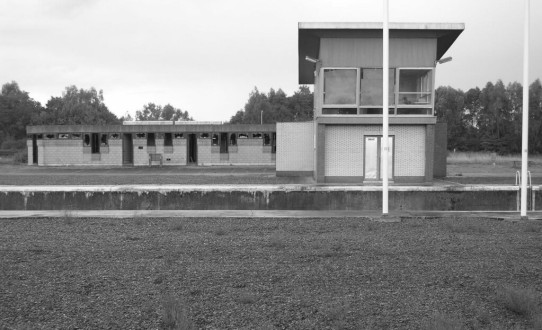
Pommeroeul, Belgium, disused lock
Canal Pommeroeul-Condé See where this picture was taken. [?]
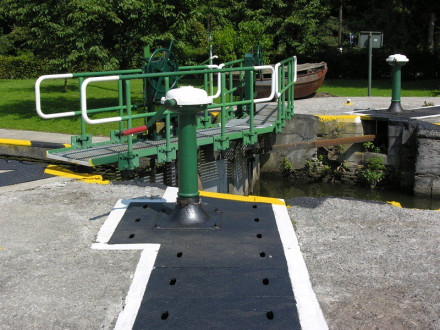
Landelies Lock
See where this picture was taken. [?]
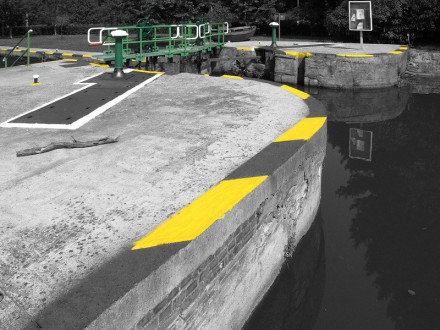
Landelies Lock
302931878_68a51b8fc8_c
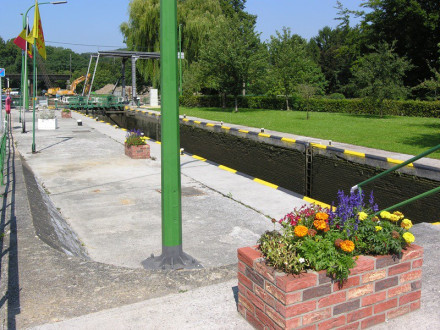
Landelies Lock
302931919_b60e798fa8_c
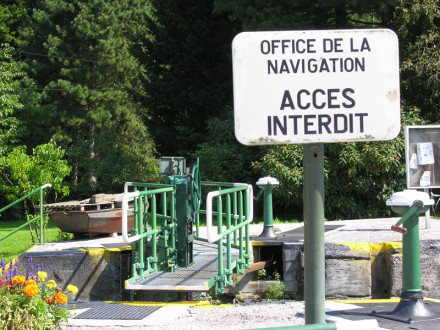
Landelies lock, Belgium
See where this picture was taken. [?]
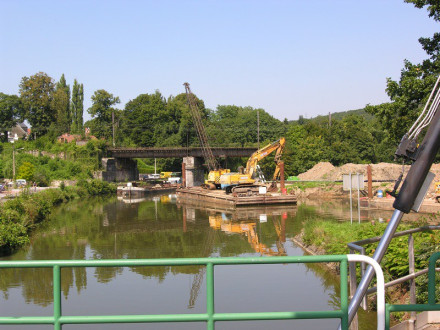
Landelies Lock
See where this picture was taken. [?]
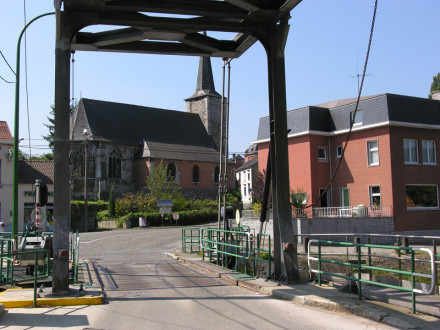
Landelies Lock
See where this picture was taken. [?]
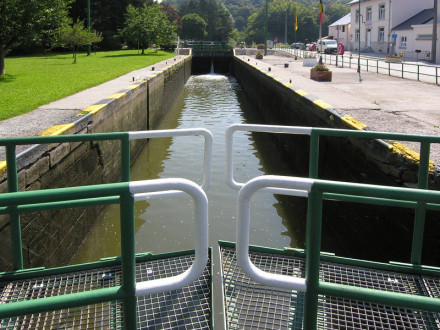
Landelies Lock
302932111_5438cb7f35_c
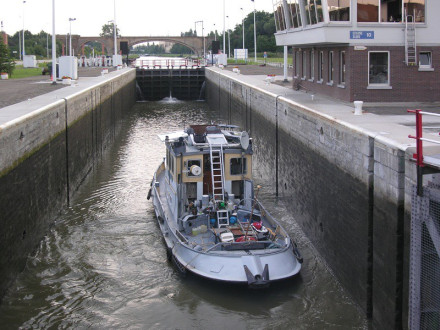
Anderlecht lock
302935059_4533f7f574_c
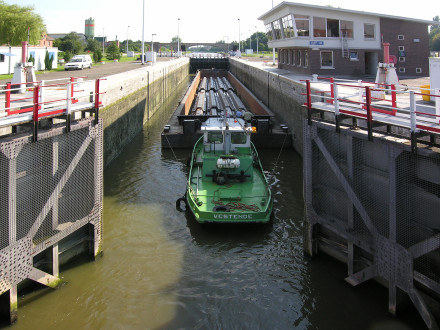
Anderlecht lock #10
302935109_6497fd203c_k
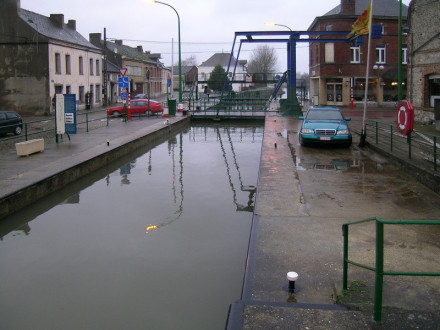
Labuissiere lock
Remarkable: if a barge takes up the full length of the lock, the bridge must remain open. Where's this? Waar is dit? C'est où ? [?]
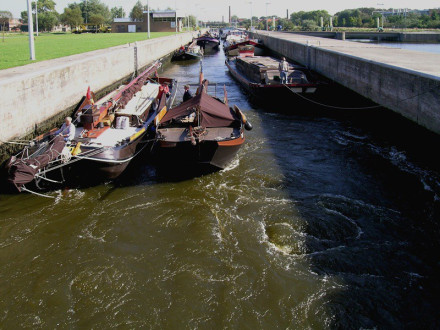
Menen Lock
See where this picture was taken. [?]
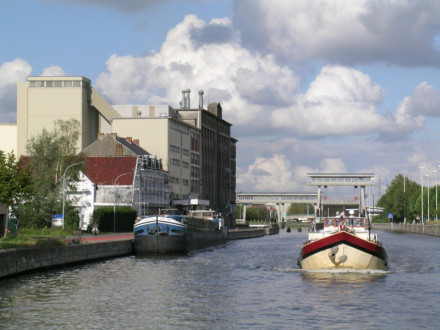
Harelbeke lock
Seen from the South
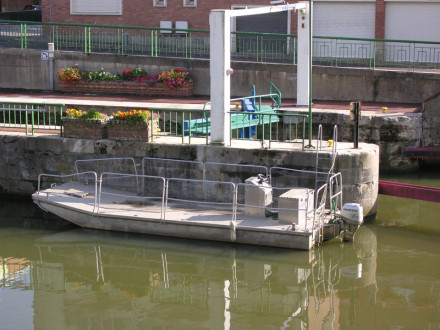
Lock and workboat in Maubeuge, France
302933825_bba1f29ecc_c
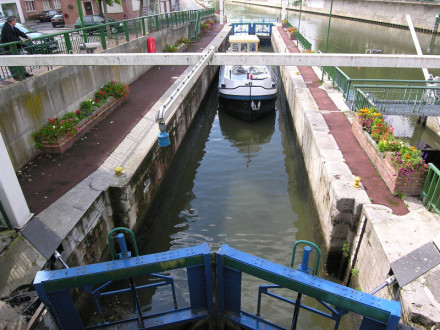
Lock in river Sambre, Maubeuge, France
See where this picture was taken. [?]
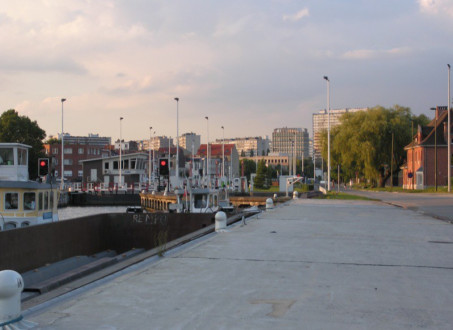
Lock #10, Anderlecht, Belgium
Where's this? Waar is dit? C'est où ? [?]
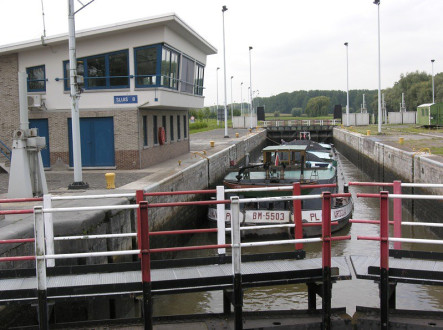
Lot, lock #8
BM-5503 from Wroclaw in Lock Lot, Canal Brussels-Charleroi, Belgium See where this picture was taken. [?]
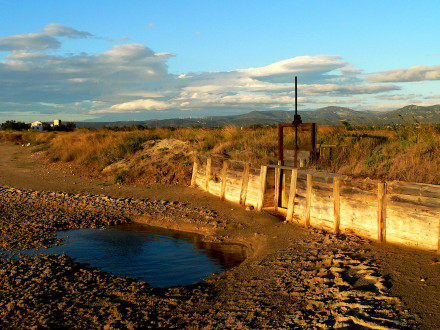
salin de La Palme
Le salin de la Baleine, à La Palme
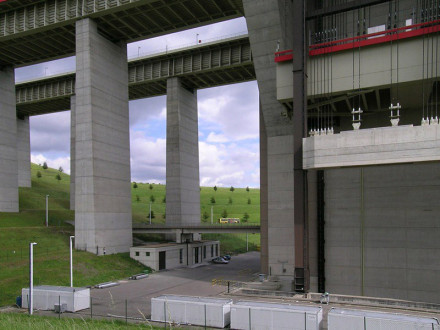
Strépy-Thieu
Top left the two aqueducts leading to the elevators See where this picture was taken. [?]
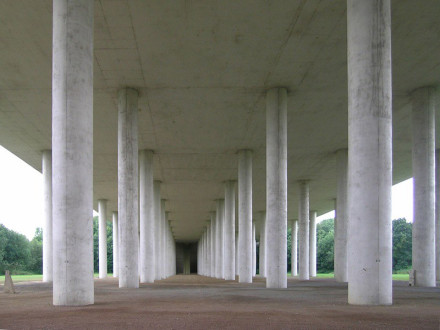
Ronquières, Belgium
DSCN0253.JPG The single aqueduct leading to the two rolling barge containers See where this picture was taken. [?]
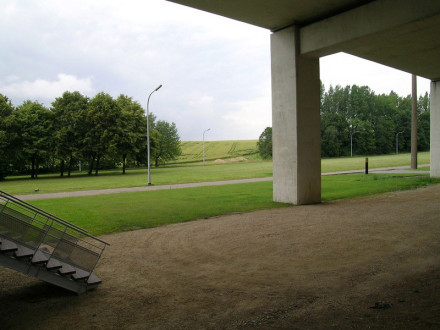
Ronquières, Belgium
See where this picture was taken. [?]
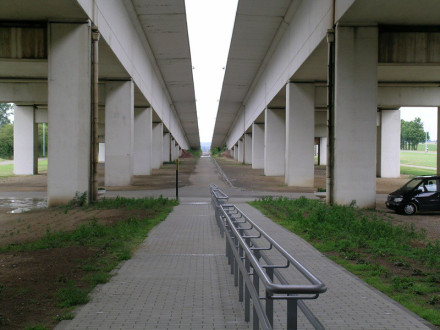
Ronquières, the inclined plane(s)
Inclined plane for lifting and lowering barges. See where this picture was taken. [?] where this picture was taken. [?] To the Official Ronquieres site
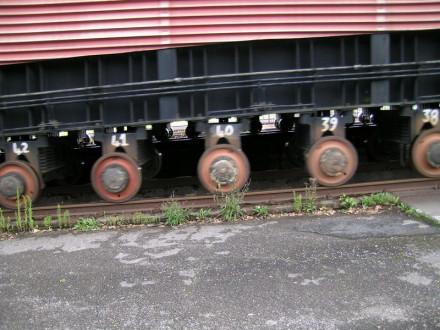
Ronquières, Belgium
See where this picture was taken. [?] To the Official Ronquieres site
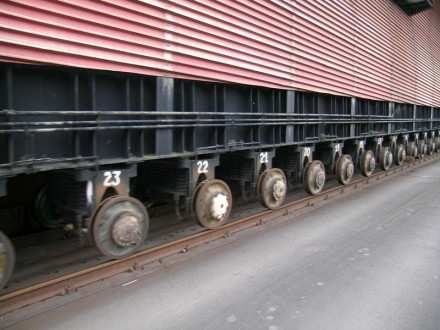
Ronquières, Belgium
The numbering goes up to 59. There are 4 rails, so that is 236 wheels. See where this picture was taken. [?] The Official Ronquieres site
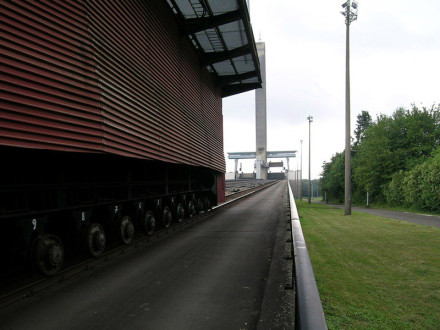
Ronquières, Belgium
Inclined plane for lifting and lowering barges. See where this picture was taken. [?] The Official Ronquieres site
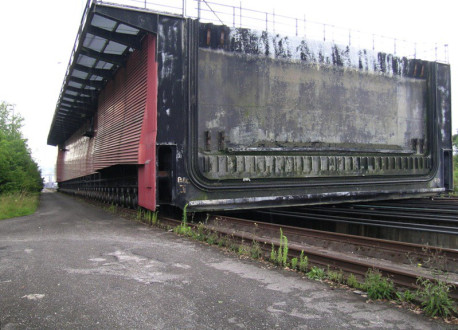
Ronquières
Inclined plane for lifting and lowering barges. See where this picture was taken. [?] The Official Ronquieres site
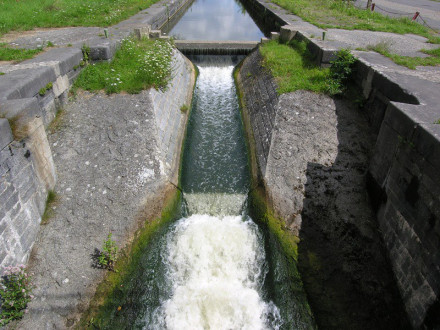
disused lock near Ronquières, Belgium
See where this picture was taken. [?]
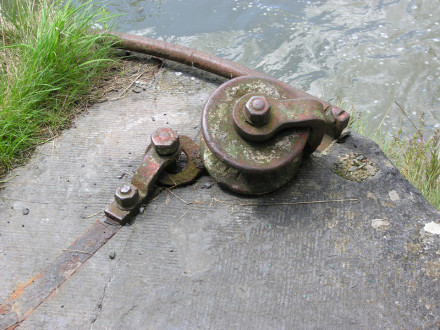
detail of disused lock near Ronquières, Belgium
See where this picture was taken. [?]
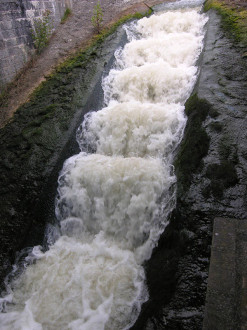
disused lock near Ronquières, Belgium
314258619_8cb9875bcf_c
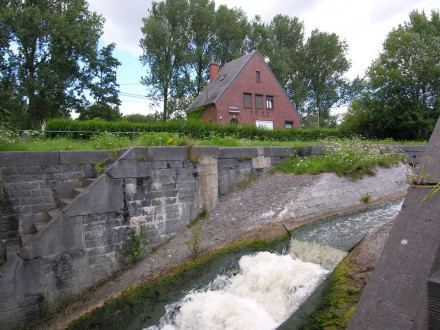
disused lock near Ronquières, Belgium
See where this picture was taken. [?]
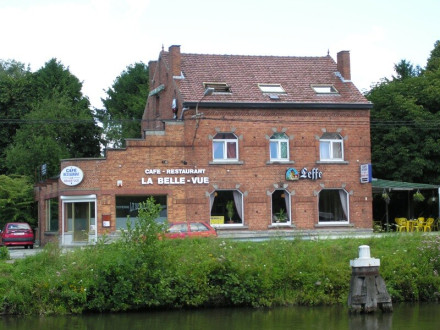
Ronquières
See where this picture was taken. [?]

Ronquières
314258420_9d26cb5850_c
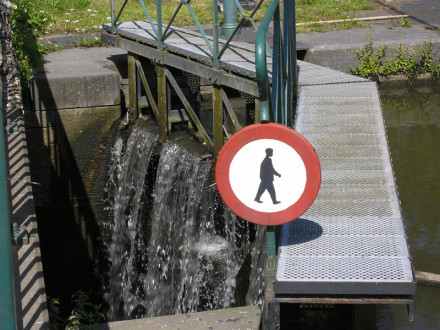
Ronquières
See where this picture was taken. [?]
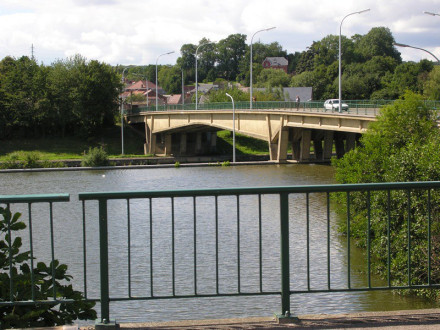
Ronquières
See where this picture was taken. [?]
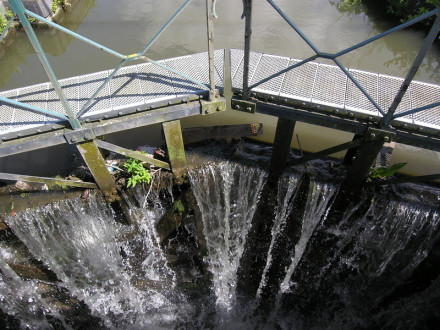
Ronquières
See where this picture was taken. [?]
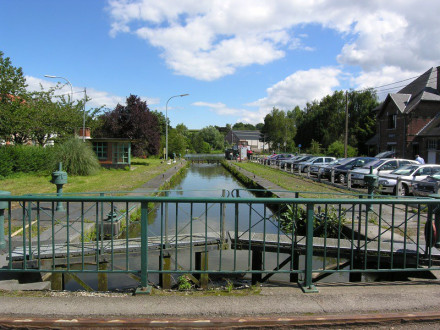
Ronquières
See where this picture was taken. [?]
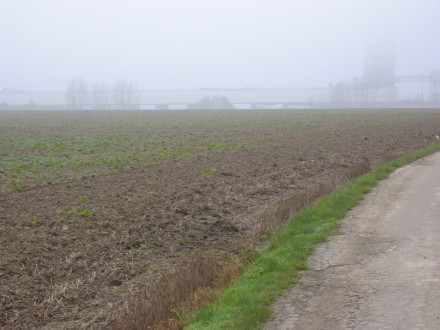
Ronquières
See where this picture was taken. [?]
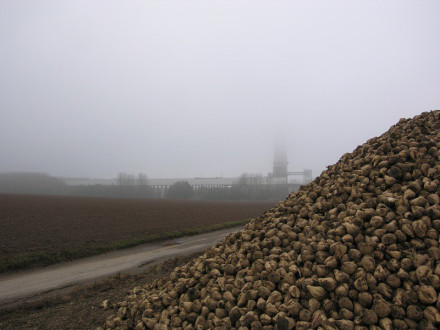
Ronquières
See where this picture was taken. [?]
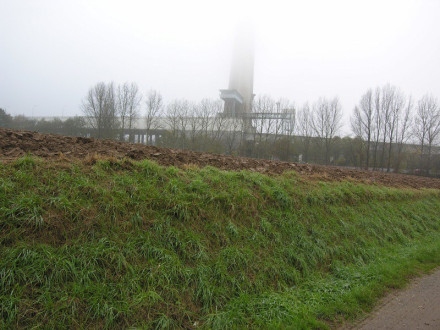
Ronquières
See where this picture was taken. [?]
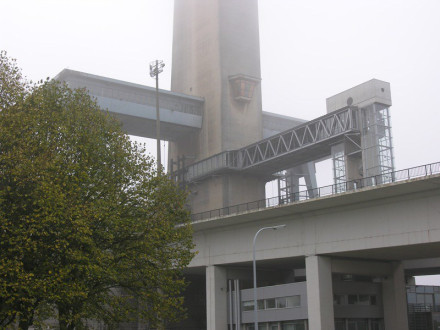
Ronquières
See where this picture was taken. [?]
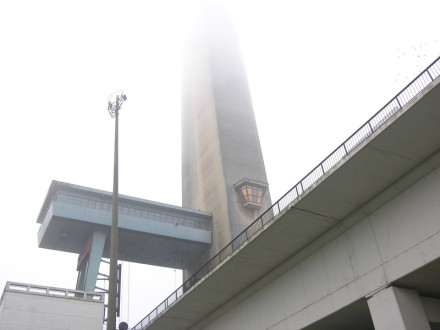
Ronquières
See where this picture was taken. [?]
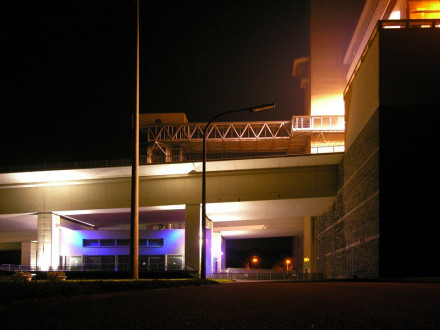
Ronquières by night
See where this picture was taken. [?]
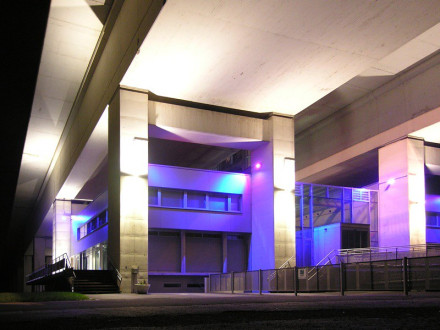
Ronquières by night
See where this picture was taken. [?]
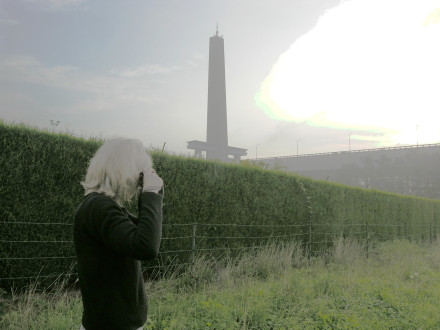
Ronquières
See this on excellent Yahoo satellite map! See where this picture was taken. [?]
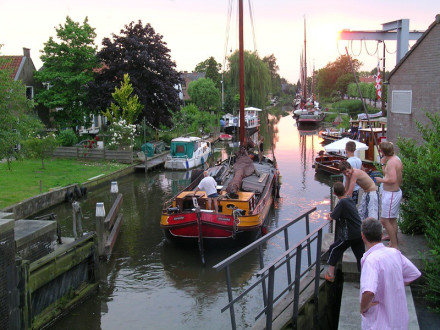
Strijensas lock
51°42' 51" N, 4°35' 08" E See where this picture was taken. [?]
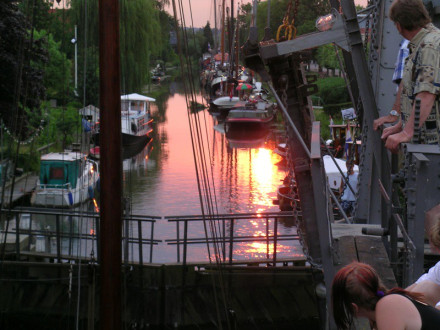
Strijensas lock
51°42' 51" N, 4°35' 08" E See where this picture was taken. [?]
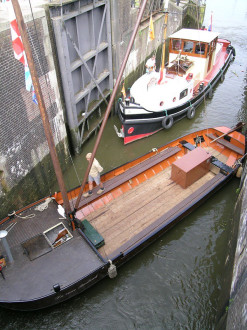
Strijensas lock
Rietaak 'D'n Ouwe Biesbosch' 51°42' 51" N, 4°35' 08" E See where this picture was taken. [?]
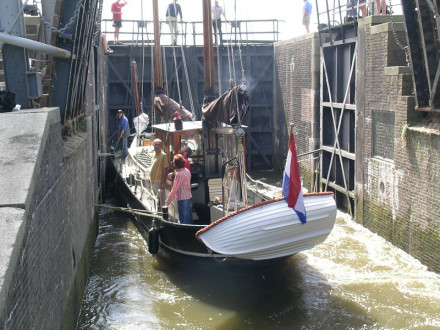
Strijensas lock
51°42' 51" N, 4°35' 08" E
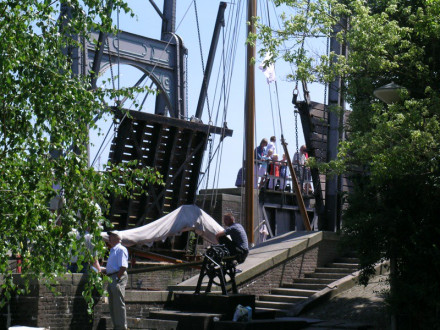
Strijensas lock
51°42' 51" N, 4°35' 08" E See where this picture was taken. [?]
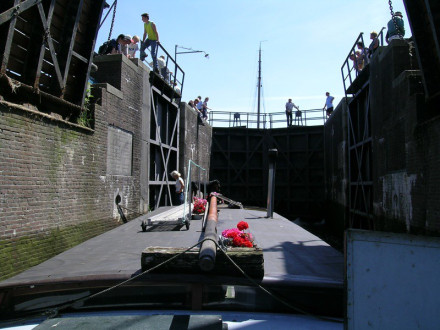
Strijensas lock
Pakschuit VEREENIGING on its way out of Strijensas 51°42' 51" N, 4°35' 08" E See where this picture was taken. [?]
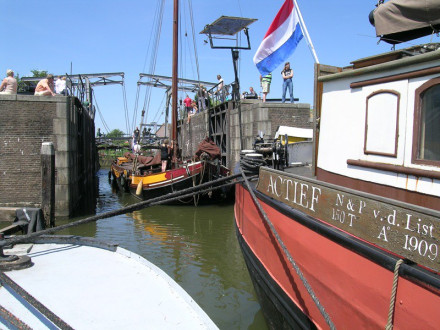
Strijensas lock
Klipperaak Actief 51°42' 51" N, 4°35' 08" E See where this picture was taken. [?]
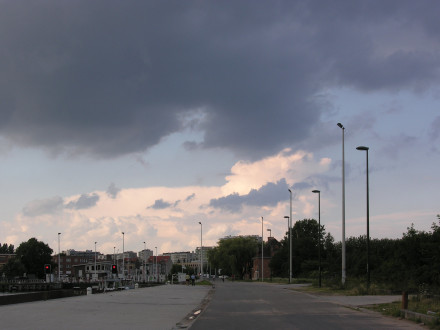
Anderlecht lock 10
302934993_72159594de_k
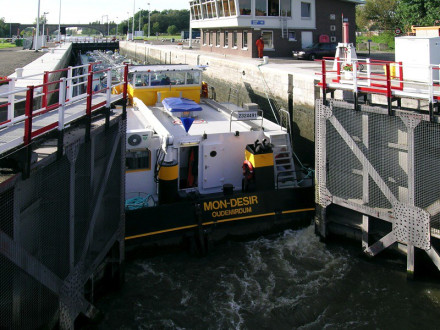
Lock #10, Anderlecht
MON DESIR towboat and barge fit into Anderlecht lock with only centimeters to spare. DSCN0440 See where this picture was taken. [?]
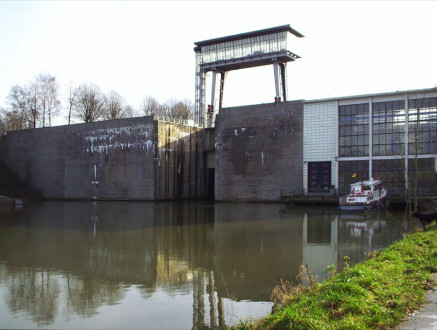
Ittre lock
Where's this? C'est où ? Waar is dit? [?]
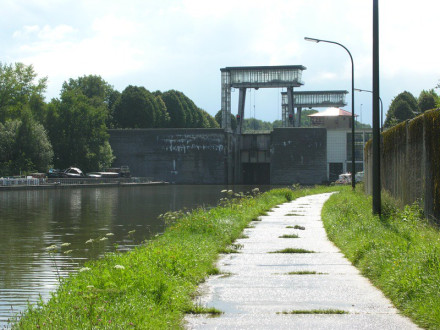
Ittre lock
Where's this? Waar is dit? C'est où ? [?]
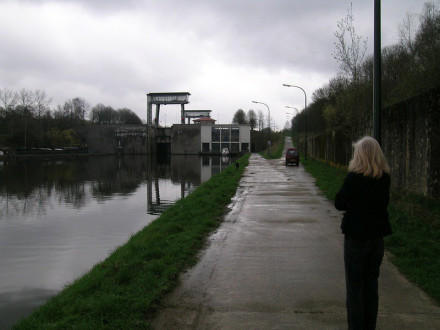
Ittre lock
302934844_98683f2659_c
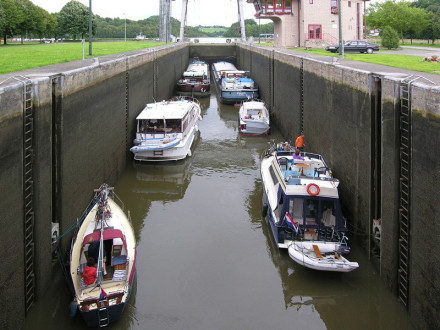
Ittre lock
302934754_23ed620949_c
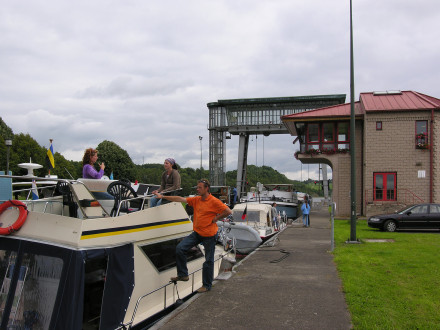
Ittre lock
302934711_b1fd26cab6_k
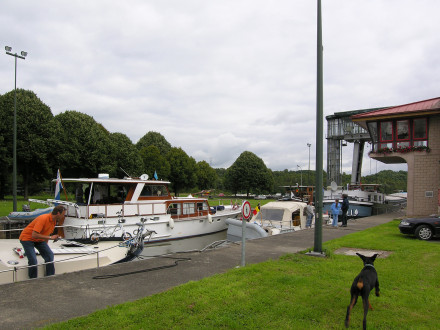
Ittre lock
302934657_0c57569808_k
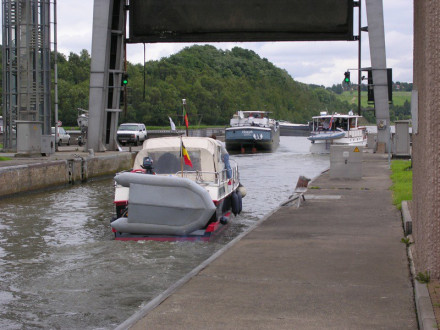
Ittre lock
See where this picture was taken. [?]
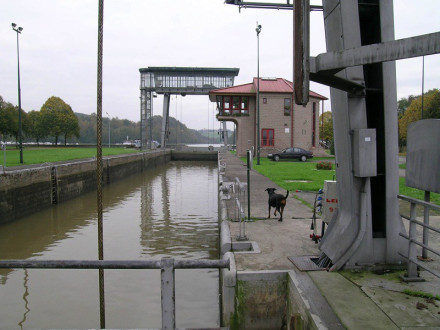
Ittre lock
302933475_6f90ff4b29_c
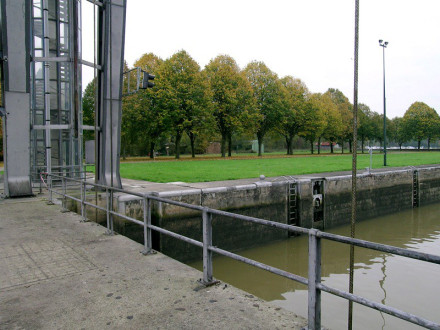
Ittre lock
302933437_e604429b14_c
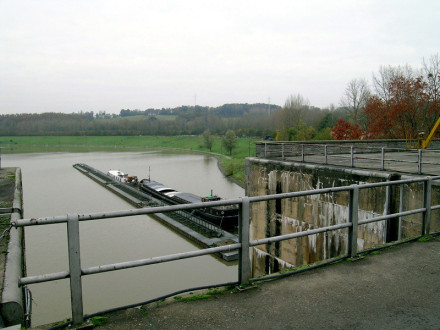
Ittre lock
302933399_ccf3d85872_c
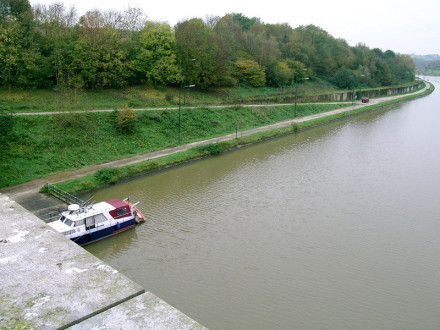
Ittre lock
302933339_05be7a37d7_c
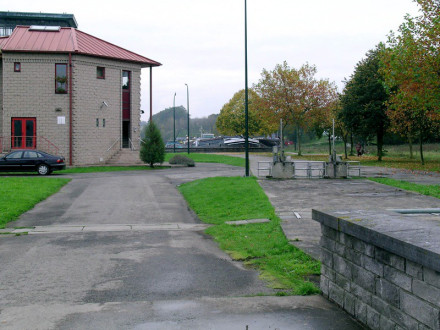
Ittre lock keeper's building
302933267_9ed4635631_c
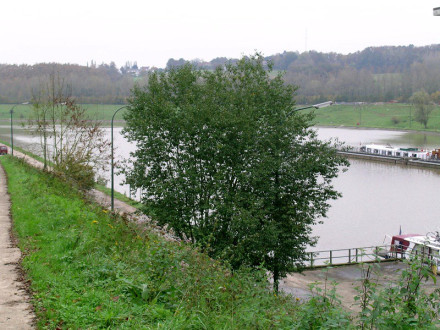
Ittre lock
302932974_a857b5a91c_c
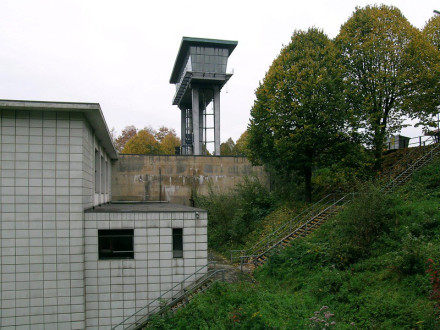
Ittre lock pumphouse
302932897_2c8e5d4a4a_c
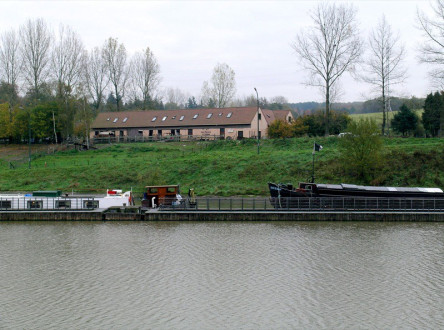
Below Ittre lock
302932733_085224a586_c
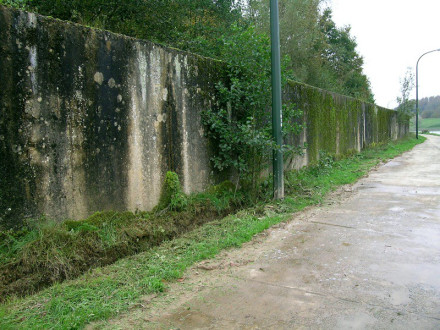
Towpath below Ittre lock
Diverted river Samme behind concrete wall
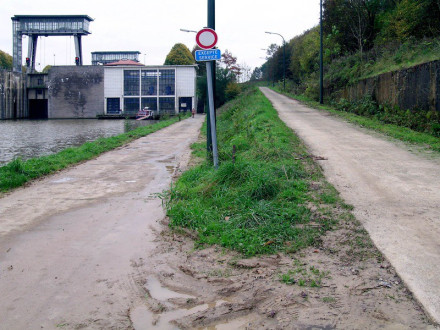
Ittre lock
302932631_5b45186b94_c
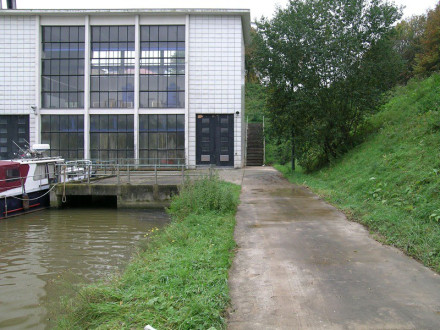
Ittre lock pumphouse
302932531_0e7c08d2e5_c
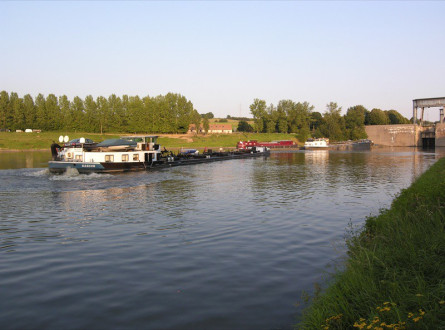
Ittre lock
see Ittre lock on the map [?]
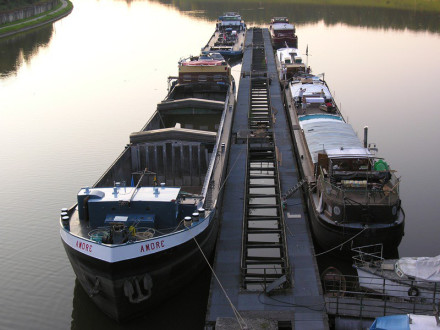
View from Ittre lock
302932415_c75d07b019_c
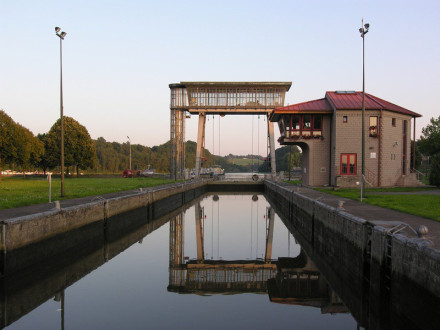
Ittre lock almost full
302932332_8be53cdd86_c
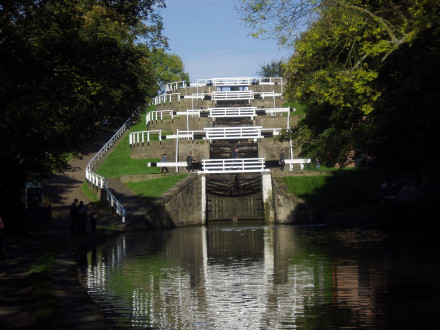
Bingley 5 Rise
285106367_f7bfd5050b_k
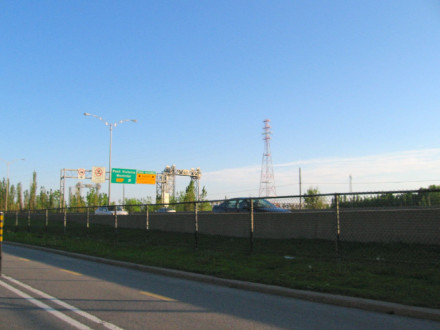
Écluses Saint-Lambert Locks
Saint-Lambert Locks, St-Lawrence Seaway. Écluses de Saint-Lambert, Voie Maritime du Fleuve Saint-Laurent. The Saint-Lambert Locks are part of the St-Lawrence Seaway. They have also been an integral part of our lives for the past 47 years since the opening, to which I was present, in the Spring of 1959. We see the locks from the streets that border the St-Lawrence River and from the bridges that we use to go to Montréal. We see the huge ships that pass between Saint-Lambert and Montréal, travelling on their way to and from the Great Lakes and the Atlantic ocean. There are three bridges linking Saint-Lambert and the city, Jacques-Cartier, Victoria and Champlain. Downtown Montréal is ten minutes away from Saint-Lambert via Victoria bridge that begins in the middle of our town. As people take this bridge, sometimes twice daily by car or by train, they pass directly over the locks. Shortly before a ship arrives at the locks, an arm of the bridge closest to the ship is raised to let it inside while the other arm is lowered to let the diverted traffic pass. The locks' gates are closed and the water level is raised. When this is done, the traffic is again diverted, this time to the newly lowered branch of the bridge, while the other side is raised to let the ship pass. Our region is known for its considerable cycling paths. An important link to the extensive network of South Shore and Montréal cycling paths runs over a highway, the locks and a short part of the river to reach the islands, then Montréal. When a ship must pass and the bridge is raised, people on foot or on their bicycles using the part of the path that is integrated to the bridge must wait, sometimes a long time, for the bridge to be lowered. Meanwhile, they enjoy the view! More photos will be taken from other perspectives in the near future.
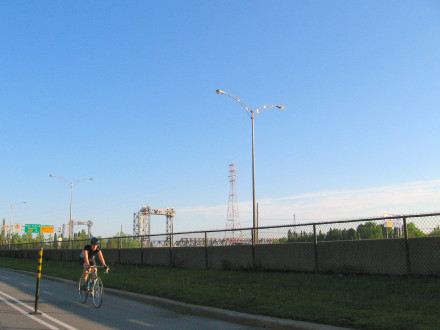
Écluses Saint-Lambert Locks
This is the first of a series of 59 photos best viewed in a slideshow. Go to Écluses Saint-Lambert Locks set, read set description and view all set photos in a slideshow. Notes on photos give details. Saint-Lambert Locks, St-Lawrence Seaway. Écluses de Saint-Lambert, Voie Maritime du Fleuve Saint-Laurent. The Saint-Lambert Locks are part of the St-Lawrence Seaway. They have also been an integral part of our lives for the past 47 years since the opening, to which I was present, in the Spring of 1959. We see the locks from the streets that border the St-Lawrence River and from the bridges that we use to go to Montréal. We see the huge ships that pass between Saint-Lambert and Montréal, travelling on their way to and from the Great Lakes and the Atlantic ocean. There are three bridges linking Saint-Lambert and the city, Jacques-Cartier, Victoria and Champlain. Downtown Montréal is ten minutes away from Saint-Lambert via Victoria bridge that begins in the middle of our town. As people take this bridge, sometimes twice daily by car or by train, they pass directly over the locks. Shortly before a ship arrives at the locks, an arm of the bridge closest to the ship is raised to let it inside while the other arm is lowered to let the diverted traffic pass. The locks' gates are closed and the water level is raised. When this is done, the traffic is again diverted, this time to the newly lowered branch of the bridge, while the other side is raised to let the ship pass. Our region is known for its considerable cycling paths. An important link to the extensive network of South Shore and Montréal cycling paths runs over a highway, the locks and a short part of the river to reach the islands, then Montréal. When a ship must pass and the bridge is raised, people on foot or on their bicycles using the part of the path that is integrated to the bridge must wait, sometimes a long time, for the bridge to be lowered. Meanwhile, they enjoy the view! More photos will be taken from other perspectives in the near future.
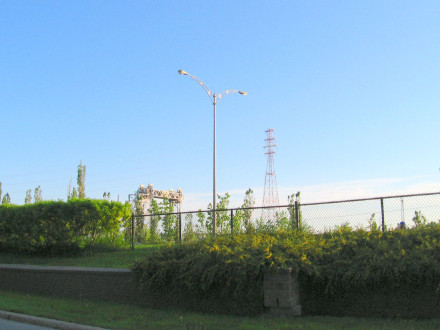
Écluses Saint-Lambert Locks
Saint-Lambert Locks, St-Lawrence Seaway. Écluses de Saint-Lambert, Voie Maritime du Fleuve Saint-Laurent. The Saint-Lambert Locks are part of the St-Lawrence Seaway. They have also been an integral part of our lives for the past 47 years since the opening, to which I was present, in the Spring of 1959. We see the locks from the streets that border the St-Lawrence River and from the bridges that we use to go to Montréal. We see the huge ships that pass between Saint-Lambert and Montréal, travelling on their way to and from the Great Lakes and the Atlantic ocean. There are three bridges linking Saint-Lambert and the city, Jacques-Cartier, Victoria and Champlain. Downtown Montréal is ten minutes away from Saint-Lambert via Victoria bridge that begins in the middle of our town. As people take this bridge, sometimes twice daily by car or by train, they pass directly over the locks. Shortly before a ship arrives at the locks, an arm of the bridge closest to the ship is raised to let it inside while the other arm is lowered to let the diverted traffic pass. The locks' gates are closed and the water level is raised. When this is done, the traffic is again diverted, this time to the newly lowered branch of the bridge, while the other side is raised to let the ship pass. Our region is known for its considerable cycling paths. An important link to the extensive network of South Shore and Montréal cycling paths runs over a highway, the locks and a short part of the river to reach the islands, then Montréal. When a ship must pass and the bridge is raised, people on foot or on their bicycles using the part of the path that is integrated to the bridge must wait, sometimes a long time, for the bridge to be lowered. Meanwhile, they enjoy the view! More photos will be taken from other perspectives in the near future.
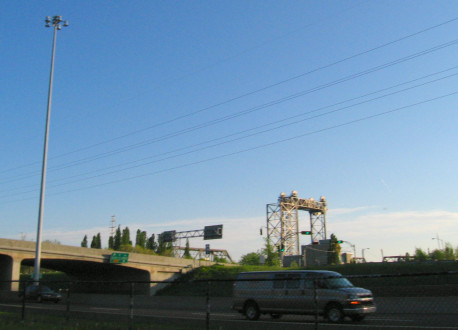
Écluses Saint-Lambert Locks
Saint-Lambert Locks, St-Lawrence Seaway. Écluses de Saint-Lambert, Voie Maritime du Fleuve Saint-Laurent. The Saint-Lambert Locks are part of the St-Lawrence Seaway. They have also been an integral part of our lives for the past 47 years since the opening, to which I was present, in the Spring of 1959. We see the locks from the streets that border the St-Lawrence River and from the bridges that we use to go to Montréal. We see the huge ships that pass between Saint-Lambert and Montréal, travelling on their way to and from the Great Lakes and the Atlantic ocean. There are three bridges linking Saint-Lambert and the city, Jacques-Cartier, Victoria and Champlain. Downtown Montréal is ten minutes away from Saint-Lambert via Victoria bridge that begins in the middle of our town. As people take this bridge, sometimes twice daily by car or by train, they pass directly over the locks. Shortly before a ship arrives at the locks, an arm of the bridge closest to the ship is raised to let it inside while the other arm is lowered to let the diverted traffic pass. The locks' gates are closed and the water level is raised. When this is done, the traffic is again diverted, this time to the newly lowered branch of the bridge, while the other side is raised to let the ship pass. Our region is known for its considerable cycling paths. An important link to the extensive network of South Shore and Montréal cycling paths runs over a highway, the locks and a short part of the river to reach the islands, then Montréal. When a ship must pass and the bridge is raised, people on foot or on their bicycles using the part of the path that is integrated to the bridge must wait, sometimes a long time, for the bridge to be lowered. Meanwhile, they enjoy the view! More photos will be taken from other perspectives in the near future.
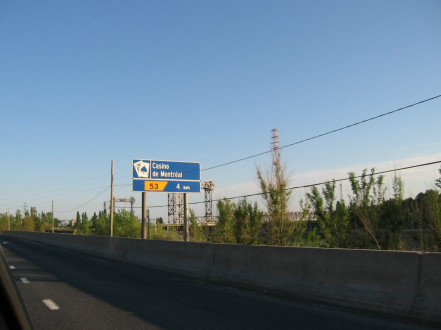
Écluses Saint-Lambert Locks
Saint-Lambert Locks, St-Lawrence Seaway. Écluses de Saint-Lambert, Voie Maritime du Fleuve Saint-Laurent. The Saint-Lambert Locks are part of the St-Lawrence Seaway. They have also been an integral part of our lives for the past 47 years since the opening, to which I was present, in the Spring of 1959. We see the locks from the streets that border the St-Lawrence River and from the bridges that we use to go to Montréal. We see the huge ships that pass between Saint-Lambert and Montréal, travelling on their way to and from the Great Lakes and the Atlantic ocean. There are three bridges linking Saint-Lambert and the city, Jacques-Cartier, Victoria and Champlain. Downtown Montréal is ten minutes away from Saint-Lambert via Victoria bridge that begins in the middle of our town. As people take this bridge, sometimes twice daily by car or by train, they pass directly over the locks. Shortly before a ship arrives at the locks, an arm of the bridge closest to the ship is raised to let it inside while the other arm is lowered to let the diverted traffic pass. The locks' gates are closed and the water level is raised. When this is done, the traffic is again diverted, this time to the newly lowered branch of the bridge, while the other side is raised to let the ship pass. Our region is known for its considerable cycling paths. An important link to the extensive network of South Shore and Montréal cycling paths runs over a highway, the locks and a short part of the river to reach the islands, then Montréal. When a ship must pass and the bridge is raised, people on foot or on their bicycles using the part of the path that is integrated to the bridge must wait, sometimes a long time, for the bridge to be lowered. Meanwhile, they enjoy the view! More photos will be taken from other perspectives in the near future.

Écluses Saint-Lambert Locks
Saint-Lambert Locks, St-Lawrence Seaway. Écluses de Saint-Lambert, Voie Maritime du Fleuve Saint-Laurent. The Saint-Lambert Locks are part of the St-Lawrence Seaway. They have also been an integral part of our lives for the past 47 years since the opening, to which I was present, in the Spring of 1959. We see the locks from the streets that border the St-Lawrence River and from the bridges that we use to go to Montréal. We see the huge ships that pass between Saint-Lambert and Montréal, travelling on their way to and from the Great Lakes and the Atlantic ocean. There are three bridges linking Saint-Lambert and the city, Jacques-Cartier, Victoria and Champlain. Downtown Montréal is ten minutes away from Saint-Lambert via Victoria bridge that begins in the middle of our town. As people take this bridge, sometimes twice daily by car or by train, they pass directly over the locks. Shortly before a ship arrives at the locks, an arm of the bridge closest to the ship is raised to let it inside while the other arm is lowered to let the diverted traffic pass. The locks' gates are closed and the water level is raised. When this is done, the traffic is again diverted, this time to the newly lowered branch of the bridge, while the other side is raised to let the ship pass. Our region is known for its considerable cycling paths. An important link to the extensive network of South Shore and Montréal cycling paths runs over a highway, the locks and a short part of the river to reach the islands, then Montréal. When a ship must pass and the bridge is raised, people on foot or on their bicycles using the part of the path that is integrated to the bridge must wait, sometimes a long time, for the bridge to be lowered. Meanwhile, they enjoy the view! More photos will be taken from other perspectives in the near future.
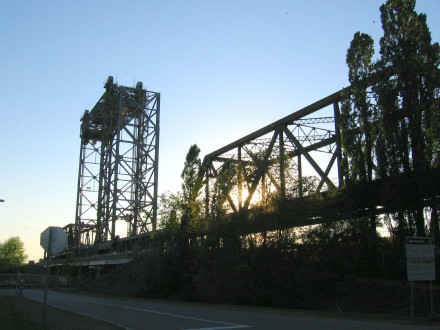
Écluses Saint-Lambert Locks
Saint-Lambert Locks, St-Lawrence Seaway. Écluses de Saint-Lambert, Voie Maritime du Fleuve Saint-Laurent. The Saint-Lambert Locks are part of the St-Lawrence Seaway. They have also been an integral part of our lives for the past 47 years since the opening, to which I was present, in the Spring of 1959. We see the locks from the streets that border the St-Lawrence River and from the bridges that we use to go to Montréal. We see the huge ships that pass between Saint-Lambert and Montréal, travelling on their way to and from the Great Lakes and the Atlantic ocean. There are three bridges linking Saint-Lambert and the city, Jacques-Cartier, Victoria and Champlain. Downtown Montréal is ten minutes away from Saint-Lambert via Victoria bridge that begins in the middle of our town. As people take this bridge, sometimes twice daily by car or by train, they pass directly over the locks. Shortly before a ship arrives at the locks, an arm of the bridge closest to the ship is raised to let it inside while the other arm is lowered to let the diverted traffic pass. The locks' gates are closed and the water level is raised. When this is done, the traffic is again diverted, this time to the newly lowered branch of the bridge, while the other side is raised to let the ship pass. Our region is known for its considerable cycling paths. An important link to the extensive network of South Shore and Montréal cycling paths runs over a highway, the locks and a short part of the river to reach the islands, then Montréal. When a ship must pass and the bridge is raised, people on foot or on their bicycles using the part of the path that is integrated to the bridge must wait, sometimes a long time, for the bridge to be lowered. Meanwhile, they enjoy the view! More photos will be taken from other perspectives in the near future.
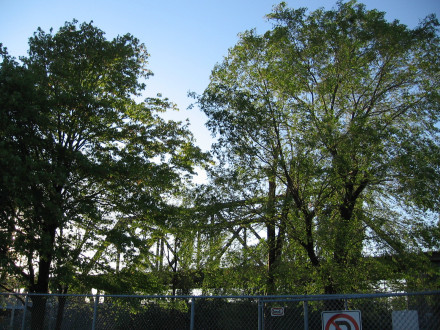
Écluses Saint-Lambert Locks
Saint-Lambert Locks, St-Lawrence Seaway. Écluses de Saint-Lambert, Voie Maritime du Fleuve Saint-Laurent. The Saint-Lambert Locks are part of the St-Lawrence Seaway. They have also been an integral part of our lives for the past 47 years since the opening, to which I was present, in the Spring of 1959. We see the locks from the streets that border the St-Lawrence River and from the bridges that we use to go to Montréal. We see the huge ships that pass between Saint-Lambert and Montréal, travelling on their way to and from the Great Lakes and the Atlantic ocean. There are three bridges linking Saint-Lambert and the city, Jacques-Cartier, Victoria and Champlain. Downtown Montréal is ten minutes away from Saint-Lambert via Victoria bridge that begins in the middle of our town. As people take this bridge, sometimes twice daily by car or by train, they pass directly over the locks. Shortly before a ship arrives at the locks, an arm of the bridge closest to the ship is raised to let it inside while the other arm is lowered to let the diverted traffic pass. The locks' gates are closed and the water level is raised. When this is done, the traffic is again diverted, this time to the newly lowered branch of the bridge, while the other side is raised to let the ship pass. Our region is known for its considerable cycling paths. An important link to the extensive network of South Shore and Montréal cycling paths runs over a highway, the locks and a short part of the river to reach the islands, then Montréal. When a ship must pass and the bridge is raised, people on foot or on their bicycles using the part of the path that is integrated to the bridge must wait, sometimes a long time, for the bridge to be lowered. Meanwhile, they enjoy the view! More photos will be taken from other perspectives in the near future.

Écluses Saint-Lambert Locks
Saint-Lambert Locks, St-Lawrence Seaway. Écluses de Saint-Lambert, Voie Maritime du Fleuve Saint-Laurent. The Saint-Lambert Locks are part of the St-Lawrence Seaway. They have also been an integral part of our lives for the past 47 years since the opening, to which I was present, in the Spring of 1959. We see the locks from the streets that border the St-Lawrence River and from the bridges that we use to go to Montréal. We see the huge ships that pass between Saint-Lambert and Montréal, travelling on their way to and from the Great Lakes and the Atlantic ocean. There are three bridges linking Saint-Lambert and the city, Jacques-Cartier, Victoria and Champlain. Downtown Montréal is ten minutes away from Saint-Lambert via Victoria bridge that begins in the middle of our town. As people take this bridge, sometimes twice daily by car or by train, they pass directly over the locks. Shortly before a ship arrives at the locks, an arm of the bridge closest to the ship is raised to let it inside while the other arm is lowered to let the diverted traffic pass. The locks' gates are closed and the water level is raised. When this is done, the traffic is again diverted, this time to the newly lowered branch of the bridge, while the other side is raised to let the ship pass. Our region is known for its considerable cycling paths. An important link to the extensive network of South Shore and Montréal cycling paths runs over a highway, the locks and a short part of the river to reach the islands, then Montréal. When a ship must pass and the bridge is raised, people on foot or on their bicycles using the part of the path that is integrated to the bridge must wait, sometimes a long time, for the bridge to be lowered. Meanwhile, they enjoy the view! More photos will be taken from other perspectives in the near future.
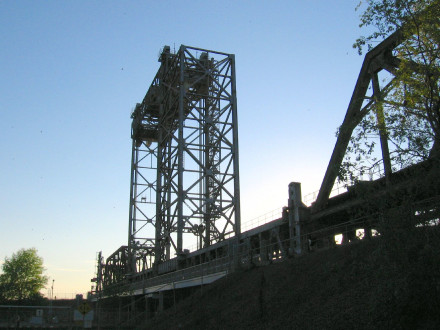
Écluses Saint-Lambert Locks
Saint-Lambert Locks, St-Lawrence Seaway. Écluses de Saint-Lambert, Voie Maritime du Fleuve Saint-Laurent. The Saint-Lambert Locks are part of the St-Lawrence Seaway. They have also been an integral part of our lives for the past 47 years since the opening, to which I was present, in the Spring of 1959. We see the locks from the streets that border the St-Lawrence River and from the bridges that we use to go to Montréal. We see the huge ships that pass between Saint-Lambert and Montréal, travelling on their way to and from the Great Lakes and the Atlantic ocean. There are three bridges linking Saint-Lambert and the city, Jacques-Cartier, Victoria and Champlain. Downtown Montréal is ten minutes away from Saint-Lambert via Victoria bridge that begins in the middle of our town. As people take this bridge, sometimes twice daily by car or by train, they pass directly over the locks. Shortly before a ship arrives at the locks, an arm of the bridge closest to the ship is raised to let it inside while the other arm is lowered to let the diverted traffic pass. The locks' gates are closed and the water level is raised. When this is done, the traffic is again diverted, this time to the newly lowered branch of the bridge, while the other side is raised to let the ship pass. Our region is known for its considerable cycling paths. An important link to the extensive network of South Shore and Montréal cycling paths runs over a highway, the locks and a short part of the river to reach the islands, then Montréal. When a ship must pass and the bridge is raised, people on foot or on their bicycles using the part of the path that is integrated to the bridge must wait, sometimes a long time, for the bridge to be lowered. Meanwhile, they enjoy the view! More photos will be taken from other perspectives in the near future.
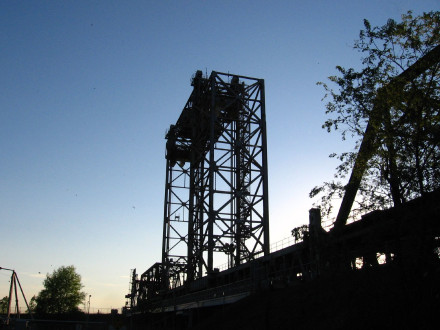
Écluses Saint-Lambert Locks
Saint-Lambert Locks, St-Lawrence Seaway. Écluses de Saint-Lambert, Voie Maritime du Fleuve Saint-Laurent. The Saint-Lambert Locks are part of the St-Lawrence Seaway. They have also been an integral part of our lives for the past 47 years since the opening, to which I was present, in the Spring of 1959. We see the locks from the streets that border the St-Lawrence River and from the bridges that we use to go to Montréal. We see the huge ships that pass between Saint-Lambert and Montréal, travelling on their way to and from the Great Lakes and the Atlantic ocean. There are three bridges linking Saint-Lambert and the city, Jacques-Cartier, Victoria and Champlain. Downtown Montréal is ten minutes away from Saint-Lambert via Victoria bridge that begins in the middle of our town. As people take this bridge, sometimes twice daily by car or by train, they pass directly over the locks. Shortly before a ship arrives at the locks, an arm of the bridge closest to the ship is raised to let it inside while the other arm is lowered to let the diverted traffic pass. The locks' gates are closed and the water level is raised. When this is done, the traffic is again diverted, this time to the newly lowered branch of the bridge, while the other side is raised to let the ship pass. Our region is known for its considerable cycling paths. An important link to the extensive network of South Shore and Montréal cycling paths runs over a highway, the locks and a short part of the river to reach the islands, then Montréal. When a ship must pass and the bridge is raised, people on foot or on their bicycles using the part of the path that is integrated to the bridge must wait, sometimes a long time, for the bridge to be lowered. Meanwhile, they enjoy the view! More photos will be taken from other perspectives in the near future.
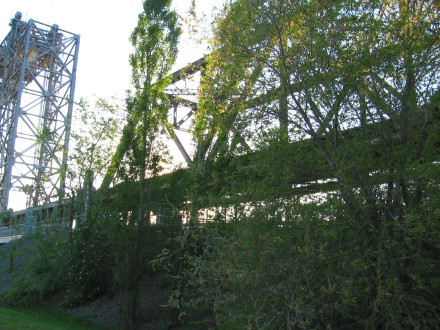
Écluses Saint-Lambert Locks
Saint-Lambert Locks, St-Lawrence Seaway. Écluses de Saint-Lambert, Voie Maritime du Fleuve Saint-Laurent. The Saint-Lambert Locks are part of the St-Lawrence Seaway. They have also been an integral part of our lives for the past 47 years since the opening, to which I was present, in the Spring of 1959. We see the locks from the streets that border the St-Lawrence River and from the bridges that we use to go to Montréal. We see the huge ships that pass between Saint-Lambert and Montréal, travelling on their way to and from the Great Lakes and the Atlantic ocean. There are three bridges linking Saint-Lambert and the city, Jacques-Cartier, Victoria and Champlain. Downtown Montréal is ten minutes away from Saint-Lambert via Victoria bridge that begins in the middle of our town. As people take this bridge, sometimes twice daily by car or by train, they pass directly over the locks. Shortly before a ship arrives at the locks, an arm of the bridge closest to the ship is raised to let it inside while the other arm is lowered to let the diverted traffic pass. The locks' gates are closed and the water level is raised. When this is done, the traffic is again diverted, this time to the newly lowered branch of the bridge, while the other side is raised to let the ship pass. Our region is known for its considerable cycling paths. An important link to the extensive network of South Shore and Montréal cycling paths runs over a highway, the locks and a short part of the river to reach the islands, then Montréal. When a ship must pass and the bridge is raised, people on foot or on their bicycles using the part of the path that is integrated to the bridge must wait, sometimes a long time, for the bridge to be lowered. Meanwhile, they enjoy the view! More photos will be taken from other perspectives in the near future.
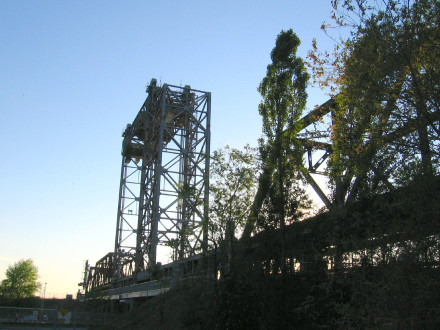
Écluses Saint-Lambert Locks
Saint-Lambert Locks, St-Lawrence Seaway. Écluses de Saint-Lambert, Voie Maritime du Fleuve Saint-Laurent. The Saint-Lambert Locks are part of the St-Lawrence Seaway. They have also been an integral part of our lives for the past 47 years since the opening, to which I was present, in the Spring of 1959. We see the locks from the streets that border the St-Lawrence River and from the bridges that we use to go to Montréal. We see the huge ships that pass between Saint-Lambert and Montréal, travelling on their way to and from the Great Lakes and the Atlantic ocean. There are three bridges linking Saint-Lambert and the city, Jacques-Cartier, Victoria and Champlain. Downtown Montréal is ten minutes away from Saint-Lambert via Victoria bridge that begins in the middle of our town. As people take this bridge, sometimes twice daily by car or by train, they pass directly over the locks. Shortly before a ship arrives at the locks, an arm of the bridge closest to the ship is raised to let it inside while the other arm is lowered to let the diverted traffic pass. The locks' gates are closed and the water level is raised. When this is done, the traffic is again diverted, this time to the newly lowered branch of the bridge, while the other side is raised to let the ship pass. Our region is known for its considerable cycling paths. An important link to the extensive network of South Shore and Montréal cycling paths runs over a highway, the locks and a short part of the river to reach the islands, then Montréal. When a ship must pass and the bridge is raised, people on foot or on their bicycles using the part of the path that is integrated to the bridge must wait, sometimes a long time, for the bridge to be lowered. Meanwhile, they enjoy the view! More photos will be taken from other perspectives in the near future.
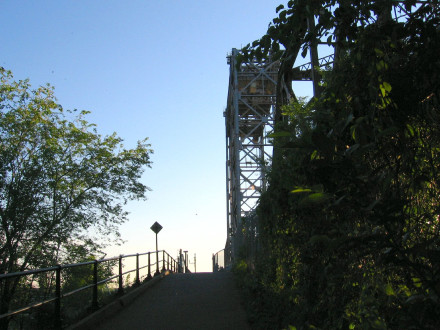
Écluses Saint-Lambert Locks
Saint-Lambert Locks, St-Lawrence Seaway. Écluses de Saint-Lambert, Voie Maritime du Fleuve Saint-Laurent. The Saint-Lambert Locks are part of the St-Lawrence Seaway. They have also been an integral part of our lives for the past 47 years since the opening, to which I was present, in the Spring of 1959. We see the locks from the streets that border the St-Lawrence River and from the bridges that we use to go to Montréal. We see the huge ships that pass between Saint-Lambert and Montréal, travelling on their way to and from the Great Lakes and the Atlantic ocean. There are three bridges linking Saint-Lambert and the city, Jacques-Cartier, Victoria and Champlain. Downtown Montréal is ten minutes away from Saint-Lambert via Victoria bridge that begins in the middle of our town. As people take this bridge, sometimes twice daily by car or by train, they pass directly over the locks. Shortly before a ship arrives at the locks, an arm of the bridge closest to the ship is raised to let it inside while the other arm is lowered to let the diverted traffic pass. The locks' gates are closed and the water level is raised. When this is done, the traffic is again diverted, this time to the newly lowered branch of the bridge, while the other side is raised to let the ship pass. Our region is known for its considerable cycling paths. An important link to the extensive network of South Shore and Montréal cycling paths runs over a highway, the locks and a short part of the river to reach the islands, then Montréal. When a ship must pass and the bridge is raised, people on foot or on their bicycles using the part of the path that is integrated to the bridge must wait, sometimes a long time, for the bridge to be lowered. Meanwhile, they enjoy the view! More photos will be taken from other perspectives in the near future.
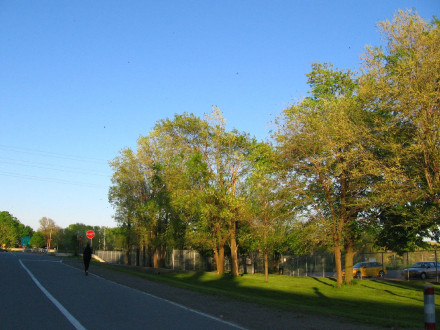
Écluses Saint-Lambert Locks
Saint-Lambert Locks, St-Lawrence Seaway. Écluses de Saint-Lambert, Voie Maritime du Fleuve Saint-Laurent. The Saint-Lambert Locks are part of the St-Lawrence Seaway. They have also been an integral part of our lives for the past 47 years since the opening, to which I was present, in the Spring of 1959. We see the locks from the streets that border the St-Lawrence River and from the bridges that we use to go to Montréal. We see the huge ships that pass between Saint-Lambert and Montréal, travelling on their way to and from the Great Lakes and the Atlantic ocean. There are three bridges linking Saint-Lambert and the city, Jacques-Cartier, Victoria and Champlain. Downtown Montréal is ten minutes away from Saint-Lambert via Victoria bridge that begins in the middle of our town. As people take this bridge, sometimes twice daily by car or by train, they pass directly over the locks. Shortly before a ship arrives at the locks, an arm of the bridge closest to the ship is raised to let it inside while the other arm is lowered to let the diverted traffic pass. The locks' gates are closed and the water level is raised. When this is done, the traffic is again diverted, this time to the newly lowered branch of the bridge, while the other side is raised to let the ship pass. Our region is known for its considerable cycling paths. An important link to the extensive network of South Shore and Montréal cycling paths runs over a highway, the locks and a short part of the river to reach the islands, then Montréal. When a ship must pass and the bridge is raised, people on foot or on their bicycles using the part of the path that is integrated to the bridge must wait, sometimes a long time, for the bridge to be lowered. Meanwhile, they enjoy the view! More photos will be taken from other perspectives in the near future.
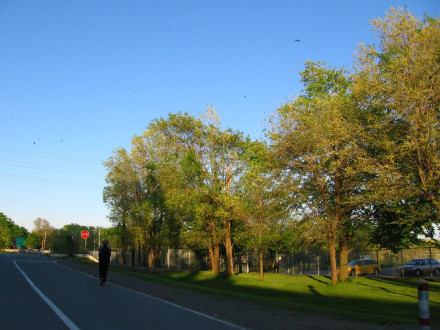
Écluses Saint-Lambert Locks
Saint-Lambert Locks, St-Lawrence Seaway. Écluses de Saint-Lambert, Voie Maritime du Fleuve Saint-Laurent. The Saint-Lambert Locks are part of the St-Lawrence Seaway. They have also been an integral part of our lives for the past 47 years since the opening, to which I was present, in the Spring of 1959. We see the locks from the streets that border the St-Lawrence River and from the bridges that we use to go to Montréal. We see the huge ships that pass between Saint-Lambert and Montréal, travelling on their way to and from the Great Lakes and the Atlantic ocean. There are three bridges linking Saint-Lambert and the city, Jacques-Cartier, Victoria and Champlain. Downtown Montréal is ten minutes away from Saint-Lambert via Victoria bridge that begins in the middle of our town. As people take this bridge, sometimes twice daily by car or by train, they pass directly over the locks. Shortly before a ship arrives at the locks, an arm of the bridge closest to the ship is raised to let it inside while the other arm is lowered to let the diverted traffic pass. The locks' gates are closed and the water level is raised. When this is done, the traffic is again diverted, this time to the newly lowered branch of the bridge, while the other side is raised to let the ship pass. Our region is known for its considerable cycling paths. An important link to the extensive network of South Shore and Montréal cycling paths runs over a highway, the locks and a short part of the river to reach the islands, then Montréal. When a ship must pass and the bridge is raised, people on foot or on their bicycles using the part of the path that is integrated to the bridge must wait, sometimes a long time, for the bridge to be lowered. Meanwhile, they enjoy the view! More photos will be taken from other perspectives in the near future.
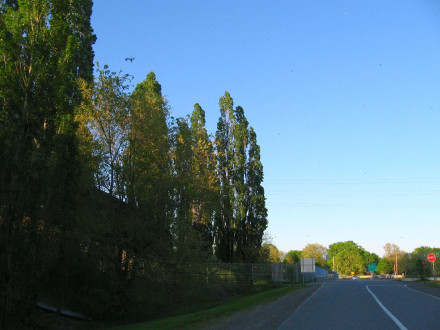
Écluses Saint-Lambert Locks
Saint-Lambert Locks, St-Lawrence Seaway. Écluses de Saint-Lambert, Voie Maritime du Fleuve Saint-Laurent. The Saint-Lambert Locks are part of the St-Lawrence Seaway. They have also been an integral part of our lives for the past 47 years since the opening, to which I was present, in the Spring of 1959. We see the locks from the streets that border the St-Lawrence River and from the bridges that we use to go to Montréal. We see the huge ships that pass between Saint-Lambert and Montréal, travelling on their way to and from the Great Lakes and the Atlantic ocean. There are three bridges linking Saint-Lambert and the city, Jacques-Cartier, Victoria and Champlain. Downtown Montréal is ten minutes away from Saint-Lambert via Victoria bridge that begins in the middle of our town. As people take this bridge, sometimes twice daily by car or by train, they pass directly over the locks. Shortly before a ship arrives at the locks, an arm of the bridge closest to the ship is raised to let it inside while the other arm is lowered to let the diverted traffic pass. The locks' gates are closed and the water level is raised. When this is done, the traffic is again diverted, this time to the newly lowered branch of the bridge, while the other side is raised to let the ship pass. Our region is known for its considerable cycling paths. An important link to the extensive network of South Shore and Montréal cycling paths runs over a highway, the locks and a short part of the river to reach the islands, then Montréal. When a ship must pass and the bridge is raised, people on foot or on their bicycles using the part of the path that is integrated to the bridge must wait, sometimes a long time, for the bridge to be lowered. Meanwhile, they enjoy the view! More photos will be taken from other perspectives in the near future.
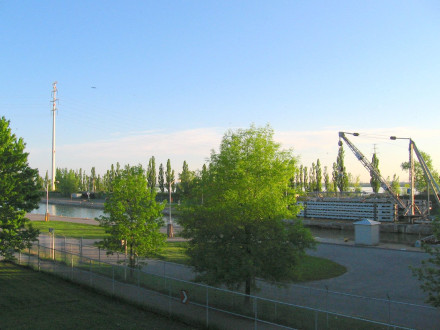
Écluses Saint-Lambert Locks
Saint-Lambert Locks, St-Lawrence Seaway. Écluses de Saint-Lambert, Voie Maritime du Fleuve Saint-Laurent. The Saint-Lambert Locks are part of the St-Lawrence Seaway. They have also been an integral part of our lives for the past 47 years since the opening, to which I was present, in the Spring of 1959. We see the locks from the streets that border the St-Lawrence River and from the bridges that we use to go to Montréal. We see the huge ships that pass between Saint-Lambert and Montréal, travelling on their way to and from the Great Lakes and the Atlantic ocean. There are three bridges linking Saint-Lambert and the city, Jacques-Cartier, Victoria and Champlain. Downtown Montréal is ten minutes away from Saint-Lambert via Victoria bridge that begins in the middle of our town. As people take this bridge, sometimes twice daily by car or by train, they pass directly over the locks. Shortly before a ship arrives at the locks, an arm of the bridge closest to the ship is raised to let it inside while the other arm is lowered to let the diverted traffic pass. The locks' gates are closed and the water level is raised. When this is done, the traffic is again diverted, this time to the newly lowered branch of the bridge, while the other side is raised to let the ship pass. Our region is known for its considerable cycling paths. An important link to the extensive network of South Shore and Montréal cycling paths runs over a highway, the locks and a short part of the river to reach the islands, then Montréal. When a ship must pass and the bridge is raised, people on foot or on their bicycles using the part of the path that is integrated to the bridge must wait, sometimes a long time, for the bridge to be lowered. Meanwhile, they enjoy the view! More photos will be taken from other perspectives in the near future.

Écluses Saint-Lambert Locks
Saint-Lambert Locks, St-Lawrence Seaway. Écluses de Saint-Lambert, Voie Maritime du Fleuve Saint-Laurent. The Saint-Lambert Locks are part of the St-Lawrence Seaway. They have also been an integral part of our lives for the past 47 years since the opening, to which I was present, in the Spring of 1959. We see the locks from the streets that border the St-Lawrence River and from the bridges that we use to go to Montréal. We see the huge ships that pass between Saint-Lambert and Montréal, travelling on their way to and from the Great Lakes and the Atlantic ocean. There are three bridges linking Saint-Lambert and the city, Jacques-Cartier, Victoria and Champlain. Downtown Montréal is ten minutes away from Saint-Lambert via Victoria bridge that begins in the middle of our town. As people take this bridge, sometimes twice daily by car or by train, they pass directly over the locks. Shortly before a ship arrives at the locks, an arm of the bridge closest to the ship is raised to let it inside while the other arm is lowered to let the diverted traffic pass. The locks' gates are closed and the water level is raised. When this is done, the traffic is again diverted, this time to the newly lowered branch of the bridge, while the other side is raised to let the ship pass. Our region is known for its considerable cycling paths. An important link to the extensive network of South Shore and Montréal cycling paths runs over a highway, the locks and a short part of the river to reach the islands, then Montréal. When a ship must pass and the bridge is raised, people on foot or on their bicycles using the part of the path that is integrated to the bridge must wait, sometimes a long time, for the bridge to be lowered. Meanwhile, they enjoy the view! More photos will be taken from other perspectives in the near future.
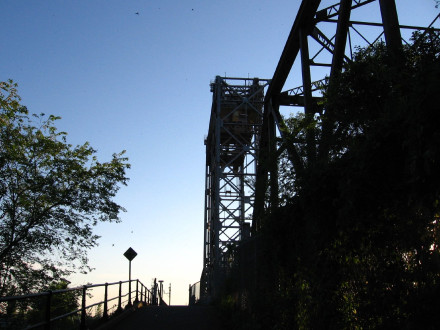
Écluses Saint-Lambert Locks
Saint-Lambert Locks, St-Lawrence Seaway. Écluses de Saint-Lambert, Voie Maritime du Fleuve Saint-Laurent. The Saint-Lambert Locks are part of the St-Lawrence Seaway. They have also been an integral part of our lives for the past 47 years since the opening, to which I was present, in the Spring of 1959. We see the locks from the streets that border the St-Lawrence River and from the bridges that we use to go to Montréal. We see the huge ships that pass between Saint-Lambert and Montréal, travelling on their way to and from the Great Lakes and the Atlantic ocean. There are three bridges linking Saint-Lambert and the city, Jacques-Cartier, Victoria and Champlain. Downtown Montréal is ten minutes away from Saint-Lambert via Victoria bridge that begins in the middle of our town. As people take this bridge, sometimes twice daily by car or by train, they pass directly over the locks. Shortly before a ship arrives at the locks, an arm of the bridge closest to the ship is raised to let it inside while the other arm is lowered to let the diverted traffic pass. The locks' gates are closed and the water level is raised. When this is done, the traffic is again diverted, this time to the newly lowered branch of the bridge, while the other side is raised to let the ship pass. Our region is known for its considerable cycling paths. An important link to the extensive network of South Shore and Montréal cycling paths runs over a highway, the locks and a short part of the river to reach the islands, then Montréal. When a ship must pass and the bridge is raised, people on foot or on their bicycles using the part of the path that is integrated to the bridge must wait, sometimes a long time, for the bridge to be lowered. Meanwhile, they enjoy the view! More photos will be taken from other perspectives in the near future.
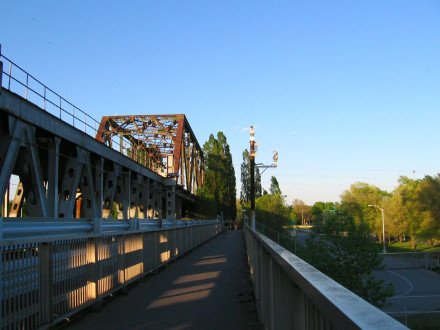
Écluses Saint-Lambert Locks
Saint-Lambert Locks, St-Lawrence Seaway. Écluses de Saint-Lambert, Voie Maritime du Fleuve Saint-Laurent. The Saint-Lambert Locks are part of the St-Lawrence Seaway. They have also been an integral part of our lives for the past 47 years since the opening, to which I was present, in the Spring of 1959. We see the locks from the streets that border the St-Lawrence River and from the bridges that we use to go to Montréal. We see the huge ships that pass between Saint-Lambert and Montréal, travelling on their way to and from the Great Lakes and the Atlantic ocean. There are three bridges linking Saint-Lambert and the city, Jacques-Cartier, Victoria and Champlain. Downtown Montréal is ten minutes away from Saint-Lambert via Victoria bridge that begins in the middle of our town. As people take this bridge, sometimes twice daily by car or by train, they pass directly over the locks. Shortly before a ship arrives at the locks, an arm of the bridge closest to the ship is raised to let it inside while the other arm is lowered to let the diverted traffic pass. The locks' gates are closed and the water level is raised. When this is done, the traffic is again diverted, this time to the newly lowered branch of the bridge, while the other side is raised to let the ship pass. Our region is known for its considerable cycling paths. An important link to the extensive network of South Shore and Montréal cycling paths runs over a highway, the locks and a short part of the river to reach the islands, then Montréal. When a ship must pass and the bridge is raised, people on foot or on their bicycles using the part of the path that is integrated to the bridge must wait, sometimes a long time, for the bridge to be lowered. Meanwhile, they enjoy the view! More photos will be taken from other perspectives in the near future.
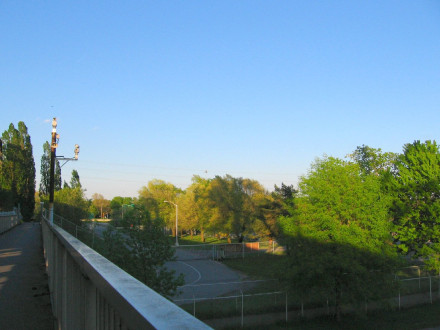
Écluses Saint-Lambert Locks
Saint-Lambert Locks, St-Lawrence Seaway. Écluses de Saint-Lambert, Voie Maritime du Fleuve Saint-Laurent. The Saint-Lambert Locks are part of the St-Lawrence Seaway. They have also been an integral part of our lives for the past 47 years since the opening, to which I was present, in the Spring of 1959. We see the locks from the streets that border the St-Lawrence River and from the bridges that we use to go to Montréal. We see the huge ships that pass between Saint-Lambert and Montréal, travelling on their way to and from the Great Lakes and the Atlantic ocean. There are three bridges linking Saint-Lambert and the city, Jacques-Cartier, Victoria and Champlain. Downtown Montréal is ten minutes away from Saint-Lambert via Victoria bridge that begins in the middle of our town. As people take this bridge, sometimes twice daily by car or by train, they pass directly over the locks. Shortly before a ship arrives at the locks, an arm of the bridge closest to the ship is raised to let it inside while the other arm is lowered to let the diverted traffic pass. The locks' gates are closed and the water level is raised. When this is done, the traffic is again diverted, this time to the newly lowered branch of the bridge, while the other side is raised to let the ship pass. Our region is known for its considerable cycling paths. An important link to the extensive network of South Shore and Montréal cycling paths runs over a highway, the locks and a short part of the river to reach the islands, then Montréal. When a ship must pass and the bridge is raised, people on foot or on their bicycles using the part of the path that is integrated to the bridge must wait, sometimes a long time, for the bridge to be lowered. Meanwhile, they enjoy the view! More photos will be taken from other perspectives in the near future.
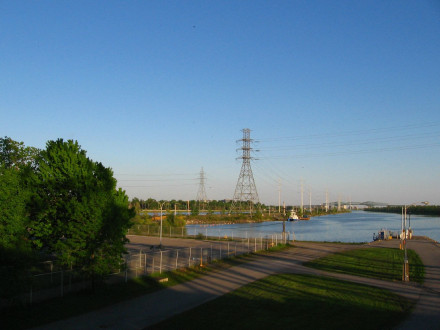
Écluses Saint-Lambert Locks
Saint-Lambert Locks, St-Lawrence Seaway. Écluses de Saint-Lambert, Voie Maritime du Fleuve Saint-Laurent. The Saint-Lambert Locks are part of the St-Lawrence Seaway. They have also been an integral part of our lives for the past 47 years since the opening, to which I was present, in the Spring of 1959. We see the locks from the streets that border the St-Lawrence River and from the bridges that we use to go to Montréal. We see the huge ships that pass between Saint-Lambert and Montréal, travelling on their way to and from the Great Lakes and the Atlantic ocean. There are three bridges linking Saint-Lambert and the city, Jacques-Cartier, Victoria and Champlain. Downtown Montréal is ten minutes away from Saint-Lambert via Victoria bridge that begins in the middle of our town. As people take this bridge, sometimes twice daily by car or by train, they pass directly over the locks. Shortly before a ship arrives at the locks, an arm of the bridge closest to the ship is raised to let it inside while the other arm is lowered to let the diverted traffic pass. The locks' gates are closed and the water level is raised. When this is done, the traffic is again diverted, this time to the newly lowered branch of the bridge, while the other side is raised to let the ship pass. Our region is known for its considerable cycling paths. An important link to the extensive network of South Shore and Montréal cycling paths runs over a highway, the locks and a short part of the river to reach the islands, then Montréal. When a ship must pass and the bridge is raised, people on foot or on their bicycles using the part of the path that is integrated to the bridge must wait, sometimes a long time, for the bridge to be lowered. Meanwhile, they enjoy the view! More photos will be taken from other perspectives in the near future.
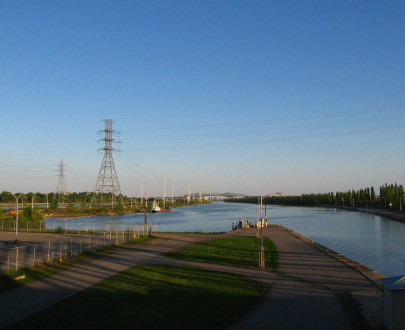
Écluses Saint-Lambert Locks
Saint-Lambert Locks, St-Lawrence Seaway. Écluses de Saint-Lambert, Voie Maritime du Fleuve Saint-Laurent. The Saint-Lambert Locks are part of the St-Lawrence Seaway. They have also been an integral part of our lives for the past 47 years since the opening, to which I was present, in the Spring of 1959. We see the locks from the streets that border the St-Lawrence River and from the bridges that we use to go to Montréal. We see the huge ships that pass between Saint-Lambert and Montréal, travelling on their way to and from the Great Lakes and the Atlantic ocean. There are three bridges linking Saint-Lambert and the city, Jacques-Cartier, Victoria and Champlain. Downtown Montréal is ten minutes away from Saint-Lambert via Victoria bridge that begins in the middle of our town. As people take this bridge, sometimes twice daily by car or by train, they pass directly over the locks. Shortly before a ship arrives at the locks, an arm of the bridge closest to the ship is raised to let it inside while the other arm is lowered to let the diverted traffic pass. The locks' gates are closed and the water level is raised. When this is done, the traffic is again diverted, this time to the newly lowered branch of the bridge, while the other side is raised to let the ship pass. Our region is known for its considerable cycling paths. An important link to the extensive network of South Shore and Montréal cycling paths runs over a highway, the locks and a short part of the river to reach the islands, then Montréal. When a ship must pass and the bridge is raised, people on foot or on their bicycles using the part of the path that is integrated to the bridge must wait, sometimes a long time, for the bridge to be lowered. Meanwhile, they enjoy the view! More photos will be taken from other perspectives in the near future.
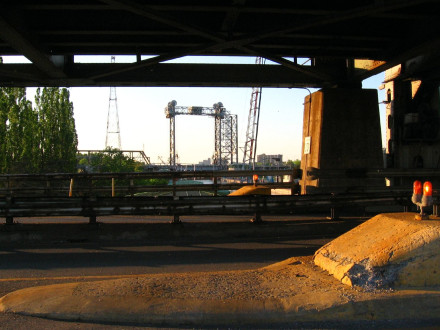
Écluses Saint-Lambert Locks
Saint-Lambert Locks, St-Lawrence Seaway. Écluses de Saint-Lambert, Voie Maritime du Fleuve Saint-Laurent. The Saint-Lambert Locks are part of the St-Lawrence Seaway. They have also been an integral part of our lives for the past 47 years since the opening, to which I was present, in the Spring of 1959. We see the locks from the streets that border the St-Lawrence River and from the bridges that we use to go to Montréal. We see the huge ships that pass between Saint-Lambert and Montréal, travelling on their way to and from the Great Lakes and the Atlantic ocean. There are three bridges linking Saint-Lambert and the city, Jacques-Cartier, Victoria and Champlain. Downtown Montréal is ten minutes away from Saint-Lambert via Victoria bridge that begins in the middle of our town. As people take this bridge, sometimes twice daily by car or by train, they pass directly over the locks. Shortly before a ship arrives at the locks, an arm of the bridge closest to the ship is raised to let it inside while the other arm is lowered to let the diverted traffic pass. The locks' gates are closed and the water level is raised. When this is done, the traffic is again diverted, this time to the newly lowered branch of the bridge, while the other side is raised to let the ship pass. Our region is known for its considerable cycling paths. An important link to the extensive network of South Shore and Montréal cycling paths runs over a highway, the locks and a short part of the river to reach the islands, then Montréal. When a ship must pass and the bridge is raised, people on foot or on their bicycles using the part of the path that is integrated to the bridge must wait, sometimes a long time, for the bridge to be lowered. Meanwhile, they enjoy the view! More photos will be taken from other perspectives in the near future.
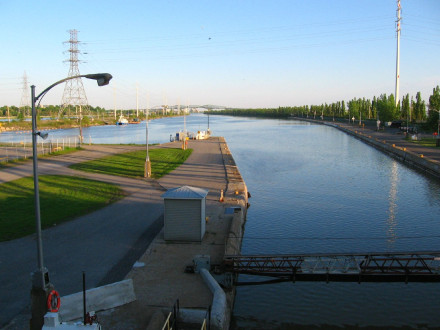
Écluses Saint-Lambert Locks
Saint-Lambert Locks, St-Lawrence Seaway. Écluses de Saint-Lambert, Voie Maritime du Fleuve Saint-Laurent. The Saint-Lambert Locks are part of the St-Lawrence Seaway. They have also been an integral part of our lives for the past 47 years since the opening, to which I was present, in the Spring of 1959. We see the locks from the streets that border the St-Lawrence River and from the bridges that we use to go to Montréal. We see the huge ships that pass between Saint-Lambert and Montréal, travelling on their way to and from the Great Lakes and the Atlantic ocean. There are three bridges linking Saint-Lambert and the city, Jacques-Cartier, Victoria and Champlain. Downtown Montréal is ten minutes away from Saint-Lambert via Victoria bridge that begins in the middle of our town. As people take this bridge, sometimes twice daily by car or by train, they pass directly over the locks. Shortly before a ship arrives at the locks, an arm of the bridge closest to the ship is raised to let it inside while the other arm is lowered to let the diverted traffic pass. The locks' gates are closed and the water level is raised. When this is done, the traffic is again diverted, this time to the newly lowered branch of the bridge, while the other side is raised to let the ship pass. Our region is known for its considerable cycling paths. An important link to the extensive network of South Shore and Montréal cycling paths runs over a highway, the locks and a short part of the river to reach the islands, then Montréal. When a ship must pass and the bridge is raised, people on foot or on their bicycles using the part of the path that is integrated to the bridge must wait, sometimes a long time, for the bridge to be lowered. Meanwhile, they enjoy the view! More photos will be taken from other perspectives in the near future.
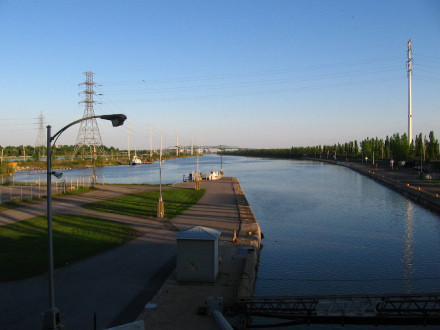
Écluses Saint-Lambert Locks
Saint-Lambert Locks, St-Lawrence Seaway. Écluses de Saint-Lambert, Voie Maritime du Fleuve Saint-Laurent. The Saint-Lambert Locks are part of the St-Lawrence Seaway. They have also been an integral part of our lives for the past 47 years since the opening, to which I was present, in the Spring of 1959. We see the locks from the streets that border the St-Lawrence River and from the bridges that we use to go to Montréal. We see the huge ships that pass between Saint-Lambert and Montréal, travelling on their way to and from the Great Lakes and the Atlantic ocean. There are three bridges linking Saint-Lambert and the city, Jacques-Cartier, Victoria and Champlain. Downtown Montréal is ten minutes away from Saint-Lambert via Victoria bridge that begins in the middle of our town. As people take this bridge, sometimes twice daily by car or by train, they pass directly over the locks. Shortly before a ship arrives at the locks, an arm of the bridge closest to the ship is raised to let it inside while the other arm is lowered to let the diverted traffic pass. The locks' gates are closed and the water level is raised. When this is done, the traffic is again diverted, this time to the newly lowered branch of the bridge, while the other side is raised to let the ship pass. Our region is known for its considerable cycling paths. An important link to the extensive network of South Shore and Montréal cycling paths runs over a highway, the locks and a short part of the river to reach the islands, then Montréal. When a ship must pass and the bridge is raised, people on foot or on their bicycles using the part of the path that is integrated to the bridge must wait, sometimes a long time, for the bridge to be lowered. Meanwhile, they enjoy the view! More photos will be taken from other perspectives in the near future.
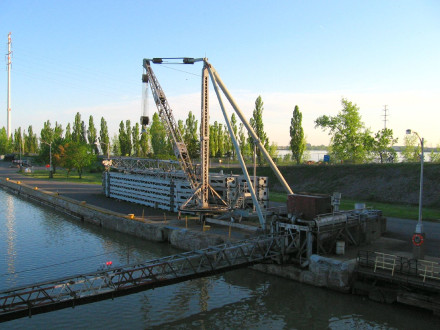
Écluses Saint-Lambert Locks
Saint-Lambert Locks, St-Lawrence Seaway. Écluses de Saint-Lambert, Voie Maritime du Fleuve Saint-Laurent. The Saint-Lambert Locks are part of the St-Lawrence Seaway. They have also been an integral part of our lives for the past 47 years since the opening, to which I was present, in the Spring of 1959. We see the locks from the streets that border the St-Lawrence River and from the bridges that we use to go to Montréal. We see the huge ships that pass between Saint-Lambert and Montréal, travelling on their way to and from the Great Lakes and the Atlantic ocean. There are three bridges linking Saint-Lambert and the city, Jacques-Cartier, Victoria and Champlain. Downtown Montréal is ten minutes away from Saint-Lambert via Victoria bridge that begins in the middle of our town. As people take this bridge, sometimes twice daily by car or by train, they pass directly over the locks. Shortly before a ship arrives at the locks, an arm of the bridge closest to the ship is raised to let it inside while the other arm is lowered to let the diverted traffic pass. The locks' gates are closed and the water level is raised. When this is done, the traffic is again diverted, this time to the newly lowered branch of the bridge, while the other side is raised to let the ship pass. Our region is known for its considerable cycling paths. An important link to the extensive network of South Shore and Montréal cycling paths runs over a highway, the locks and a short part of the river to reach the islands, then Montréal. When a ship must pass and the bridge is raised, people on foot or on their bicycles using the part of the path that is integrated to the bridge must wait, sometimes a long time, for the bridge to be lowered. Meanwhile, they enjoy the view! More photos will be taken from other perspectives in the near future.
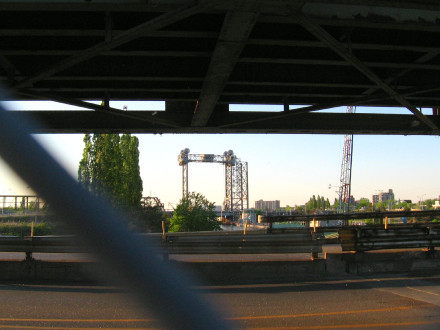
Écluses Saint-Lambert Locks
Saint-Lambert Locks, St-Lawrence Seaway. Écluses de Saint-Lambert, Voie Maritime du Fleuve Saint-Laurent. The Saint-Lambert Locks are part of the St-Lawrence Seaway. They have also been an integral part of our lives for the past 47 years since the opening, to which I was present, in the Spring of 1959. We see the locks from the streets that border the St-Lawrence River and from the bridges that we use to go to Montréal. We see the huge ships that pass between Saint-Lambert and Montréal, travelling on their way to and from the Great Lakes and the Atlantic ocean. There are three bridges linking Saint-Lambert and the city, Jacques-Cartier, Victoria and Champlain. Downtown Montréal is ten minutes away from Saint-Lambert via Victoria bridge that begins in the middle of our town. As people take this bridge, sometimes twice daily by car or by train, they pass directly over the locks. Shortly before a ship arrives at the locks, an arm of the bridge closest to the ship is raised to let it inside while the other arm is lowered to let the diverted traffic pass. The locks' gates are closed and the water level is raised. When this is done, the traffic is again diverted, this time to the newly lowered branch of the bridge, while the other side is raised to let the ship pass. Our region is known for its considerable cycling paths. An important link to the extensive network of South Shore and Montréal cycling paths runs over a highway, the locks and a short part of the river to reach the islands, then Montréal. When a ship must pass and the bridge is raised, people on foot or on their bicycles using the part of the path that is integrated to the bridge must wait, sometimes a long time, for the bridge to be lowered. Meanwhile, they enjoy the view! More photos will be taken from other perspectives in the near future.
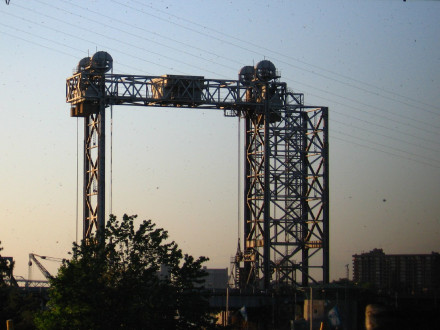
Écluses Saint-Lambert Locks
Saint-Lambert Locks, St-Lawrence Seaway. Écluses de Saint-Lambert, Voie Maritime du Fleuve Saint-Laurent. The Saint-Lambert Locks are part of the St-Lawrence Seaway. They have also been an integral part of our lives for the past 47 years since the opening, to which I was present, in the Spring of 1959. We see the locks from the streets that border the St-Lawrence River and from the bridges that we use to go to Montréal. We see the huge ships that pass between Saint-Lambert and Montréal, travelling on their way to and from the Great Lakes and the Atlantic ocean. There are three bridges linking Saint-Lambert and the city, Jacques-Cartier, Victoria and Champlain. Downtown Montréal is ten minutes away from Saint-Lambert via Victoria bridge that begins in the middle of our town. As people take this bridge, sometimes twice daily by car or by train, they pass directly over the locks. Shortly before a ship arrives at the locks, an arm of the bridge closest to the ship is raised to let it inside while the other arm is lowered to let the diverted traffic pass. The locks' gates are closed and the water level is raised. When this is done, the traffic is again diverted, this time to the newly lowered branch of the bridge, while the other side is raised to let the ship pass. Our region is known for its considerable cycling paths. An important link to the extensive network of South Shore and Montréal cycling paths runs over a highway, the locks and a short part of the river to reach the islands, then Montréal. When a ship must pass and the bridge is raised, people on foot or on their bicycles using the part of the path that is integrated to the bridge must wait, sometimes a long time, for the bridge to be lowered. Meanwhile, they enjoy the view! More photos will be taken from other perspectives in the near future.
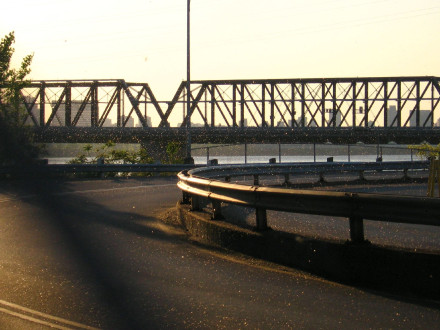
Écluses Saint-Lambert Locks
Saint-Lambert Locks, St-Lawrence Seaway. Écluses de Saint-Lambert, Voie Maritime du Fleuve Saint-Laurent. The Saint-Lambert Locks are part of the St-Lawrence Seaway. They have also been an integral part of our lives for the past 47 years since the opening, to which I was present, in the Spring of 1959. We see the locks from the streets that border the St-Lawrence River and from the bridges that we use to go to Montréal. We see the huge ships that pass between Saint-Lambert and Montréal, travelling on their way to and from the Great Lakes and the Atlantic ocean. There are three bridges linking Saint-Lambert and the city, Jacques-Cartier, Victoria and Champlain. Downtown Montréal is ten minutes away from Saint-Lambert via Victoria bridge that begins in the middle of our town. As people take this bridge, sometimes twice daily by car or by train, they pass directly over the locks. Shortly before a ship arrives at the locks, an arm of the bridge closest to the ship is raised to let it inside while the other arm is lowered to let the diverted traffic pass. The locks' gates are closed and the water level is raised. When this is done, the traffic is again diverted, this time to the newly lowered branch of the bridge, while the other side is raised to let the ship pass. Our region is known for its considerable cycling paths. An important link to the extensive network of South Shore and Montréal cycling paths runs over a highway, the locks and a short part of the river to reach the islands, then Montréal. When a ship must pass and the bridge is raised, people on foot or on their bicycles using the part of the path that is integrated to the bridge must wait, sometimes a long time, for the bridge to be lowered. Meanwhile, they enjoy the view! More photos will be taken from other perspectives in the near future.
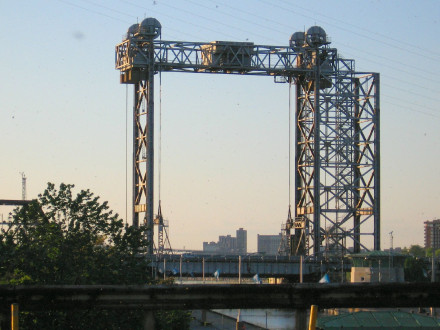
Écluses Saint-Lambert Locks
Saint-Lambert Locks, St-Lawrence Seaway. Écluses de Saint-Lambert, Voie Maritime du Fleuve Saint-Laurent. The Saint-Lambert Locks are part of the St-Lawrence Seaway. They have also been an integral part of our lives for the past 47 years since the opening, to which I was present, in the Spring of 1959. We see the locks from the streets that border the St-Lawrence River and from the bridges that we use to go to Montréal. We see the huge ships that pass between Saint-Lambert and Montréal, travelling on their way to and from the Great Lakes and the Atlantic ocean. There are three bridges linking Saint-Lambert and the city, Jacques-Cartier, Victoria and Champlain. Downtown Montréal is ten minutes away from Saint-Lambert via Victoria bridge that begins in the middle of our town. As people take this bridge, sometimes twice daily by car or by train, they pass directly over the locks. Shortly before a ship arrives at the locks, an arm of the bridge closest to the ship is raised to let it inside while the other arm is lowered to let the diverted traffic pass. The locks' gates are closed and the water level is raised. When this is done, the traffic is again diverted, this time to the newly lowered branch of the bridge, while the other side is raised to let the ship pass. Our region is known for its considerable cycling paths. An important link to the extensive network of South Shore and Montréal cycling paths runs over a highway, the locks and a short part of the river to reach the islands, then Montréal. When a ship must pass and the bridge is raised, people on foot or on their bicycles using the part of the path that is integrated to the bridge must wait, sometimes a long time, for the bridge to be lowered. Meanwhile, they enjoy the view! More photos will be taken from other perspectives in the near future.
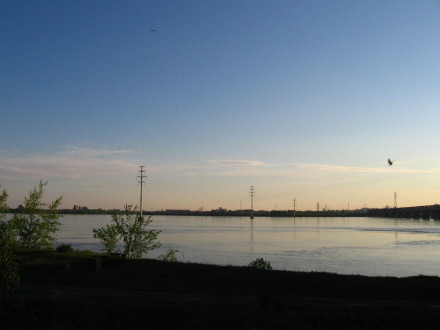
Écluses Saint-Lambert Locks
Saint-Lambert Locks, St-Lawrence Seaway. Écluses de Saint-Lambert, Voie Maritime du Fleuve Saint-Laurent. The Saint-Lambert Locks are part of the St-Lawrence Seaway. They have also been an integral part of our lives for the past 47 years since the opening, to which I was present, in the Spring of 1959. We see the locks from the streets that border the St-Lawrence River and from the bridges that we use to go to Montréal. We see the huge ships that pass between Saint-Lambert and Montréal, travelling on their way to and from the Great Lakes and the Atlantic ocean. There are three bridges linking Saint-Lambert and the city, Jacques-Cartier, Victoria and Champlain. Downtown Montréal is ten minutes away from Saint-Lambert via Victoria bridge that begins in the middle of our town. As people take this bridge, sometimes twice daily by car or by train, they pass directly over the locks. Shortly before a ship arrives at the locks, an arm of the bridge closest to the ship is raised to let it inside while the other arm is lowered to let the diverted traffic pass. The locks' gates are closed and the water level is raised. When this is done, the traffic is again diverted, this time to the newly lowered branch of the bridge, while the other side is raised to let the ship pass. Our region is known for its considerable cycling paths. An important link to the extensive network of South Shore and Montréal cycling paths runs over a highway, the locks and a short part of the river to reach the islands, then Montréal. When a ship must pass and the bridge is raised, people on foot or on their bicycles using the part of the path that is integrated to the bridge must wait, sometimes a long time, for the bridge to be lowered. Meanwhile, they enjoy the view! More photos will be taken from other perspectives in the near future.
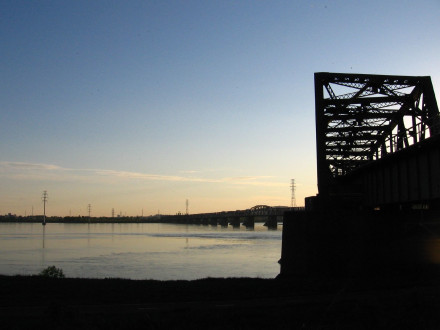
Écluses Saint-Lambert Locks
Saint-Lambert Locks, St-Lawrence Seaway. Écluses de Saint-Lambert, Voie Maritime du Fleuve Saint-Laurent. The Saint-Lambert Locks are part of the St-Lawrence Seaway. They have also been an integral part of our lives for the past 47 years since the opening, to which I was present, in the Spring of 1959. We see the locks from the streets that border the St-Lawrence River and from the bridges that we use to go to Montréal. We see the huge ships that pass between Saint-Lambert and Montréal, travelling on their way to and from the Great Lakes and the Atlantic ocean. There are three bridges linking Saint-Lambert and the city, Jacques-Cartier, Victoria and Champlain. Downtown Montréal is ten minutes away from Saint-Lambert via Victoria bridge that begins in the middle of our town. As people take this bridge, sometimes twice daily by car or by train, they pass directly over the locks. Shortly before a ship arrives at the locks, an arm of the bridge closest to the ship is raised to let it inside while the other arm is lowered to let the diverted traffic pass. The locks' gates are closed and the water level is raised. When this is done, the traffic is again diverted, this time to the newly lowered branch of the bridge, while the other side is raised to let the ship pass. Our region is known for its considerable cycling paths. An important link to the extensive network of South Shore and Montréal cycling paths runs over a highway, the locks and a short part of the river to reach the islands, then Montréal. When a ship must pass and the bridge is raised, people on foot or on their bicycles using the part of the path that is integrated to the bridge must wait, sometimes a long time, for the bridge to be lowered. Meanwhile, they enjoy the view! More photos will be taken from other perspectives in the near future.
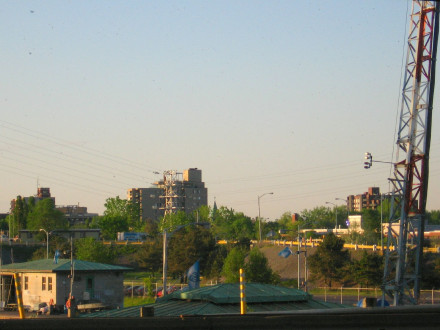
Écluses Saint-Lambert Locks
Saint-Lambert Locks, St-Lawrence Seaway. Écluses de Saint-Lambert, Voie Maritime du Fleuve Saint-Laurent. The Saint-Lambert Locks are part of the St-Lawrence Seaway. They have also been an integral part of our lives for the past 47 years since the opening, to which I was present, in the Spring of 1959. We see the locks from the streets that border the St-Lawrence River and from the bridges that we use to go to Montréal. We see the huge ships that pass between Saint-Lambert and Montréal, travelling on their way to and from the Great Lakes and the Atlantic ocean. There are three bridges linking Saint-Lambert and the city, Jacques-Cartier, Victoria and Champlain. Downtown Montréal is ten minutes away from Saint-Lambert via Victoria bridge that begins in the middle of our town. As people take this bridge, sometimes twice daily by car or by train, they pass directly over the locks. Shortly before a ship arrives at the locks, an arm of the bridge closest to the ship is raised to let it inside while the other arm is lowered to let the diverted traffic pass. The locks' gates are closed and the water level is raised. When this is done, the traffic is again diverted, this time to the newly lowered branch of the bridge, while the other side is raised to let the ship pass. Our region is known for its considerable cycling paths. An important link to the extensive network of South Shore and Montréal cycling paths runs over a highway, the locks and a short part of the river to reach the islands, then Montréal. When a ship must pass and the bridge is raised, people on foot or on their bicycles using the part of the path that is integrated to the bridge must wait, sometimes a long time, for the bridge to be lowered. Meanwhile, they enjoy the view! More photos will be taken from other perspectives in the near future.
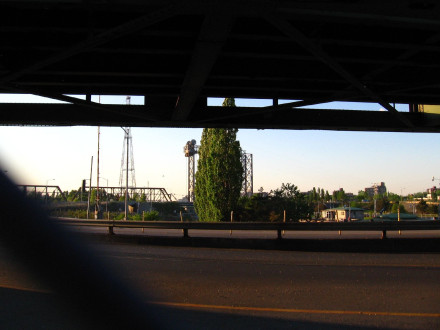
Écluses Saint-Lambert Locks
Saint-Lambert Locks, St-Lawrence Seaway. Écluses de Saint-Lambert, Voie Maritime du Fleuve Saint-Laurent. The Saint-Lambert Locks are part of the St-Lawrence Seaway. They have also been an integral part of our lives for the past 47 years since the opening, to which I was present, in the Spring of 1959. We see the locks from the streets that border the St-Lawrence River and from the bridges that we use to go to Montréal. We see the huge ships that pass between Saint-Lambert and Montréal, travelling on their way to and from the Great Lakes and the Atlantic ocean. There are three bridges linking Saint-Lambert and the city, Jacques-Cartier, Victoria and Champlain. Downtown Montréal is ten minutes away from Saint-Lambert via Victoria bridge that begins in the middle of our town. As people take this bridge, sometimes twice daily by car or by train, they pass directly over the locks. Shortly before a ship arrives at the locks, an arm of the bridge closest to the ship is raised to let it inside while the other arm is lowered to let the diverted traffic pass. The locks' gates are closed and the water level is raised. When this is done, the traffic is again diverted, this time to the newly lowered branch of the bridge, while the other side is raised to let the ship pass. Our region is known for its considerable cycling paths. An important link to the extensive network of South Shore and Montréal cycling paths runs over a highway, the locks and a short part of the river to reach the islands, then Montréal. When a ship must pass and the bridge is raised, people on foot or on their bicycles using the part of the path that is integrated to the bridge must wait, sometimes a long time, for the bridge to be lowered. Meanwhile, they enjoy the view! More photos will be taken from other perspectives in the near future.
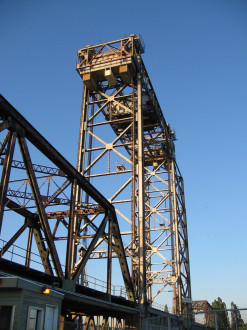
Écluses Saint-Lambert Locks
Saint-Lambert Locks, St-Lawrence Seaway. Écluses de Saint-Lambert, Voie Maritime du Fleuve Saint-Laurent. The Saint-Lambert Locks are part of the St-Lawrence Seaway. They have also been an integral part of our lives for the past 47 years since the opening, to which I was present, in the Spring of 1959. We see the locks from the streets that border the St-Lawrence River and from the bridges that we use to go to Montréal. We see the huge ships that pass between Saint-Lambert and Montréal, travelling on their way to and from the Great Lakes and the Atlantic ocean. There are three bridges linking Saint-Lambert and the city, Jacques-Cartier, Victoria and Champlain. Downtown Montréal is ten minutes away from Saint-Lambert via Victoria bridge that begins in the middle of our town. As people take this bridge, sometimes twice daily by car or by train, they pass directly over the locks. Shortly before a ship arrives at the locks, an arm of the bridge closest to the ship is raised to let it inside while the other arm is lowered to let the diverted traffic pass. The locks' gates are closed and the water level is raised. When this is done, the traffic is again diverted, this time to the newly lowered branch of the bridge, while the other side is raised to let the ship pass. Our region is known for its considerable cycling paths. An important link to the extensive network of South Shore and Montréal cycling paths runs over a highway, the locks and a short part of the river to reach the islands, then Montréal. When a ship must pass and the bridge is raised, people on foot or on their bicycles using the part of the path that is integrated to the bridge must wait, sometimes a long time, for the bridge to be lowered. Meanwhile, they enjoy the view! More photos will be taken from other perspectives in the near future.
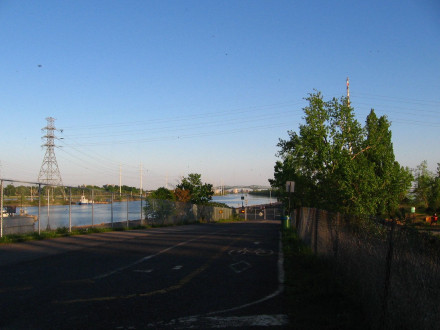
Écluses Saint-Lambert Locks
Saint-Lambert Locks, St-Lawrence Seaway. Écluses de Saint-Lambert, Voie Maritime du Fleuve Saint-Laurent. The Saint-Lambert Locks are part of the St-Lawrence Seaway. They have also been an integral part of our lives for the past 47 years since the opening, to which I was present, in the Spring of 1959. We see the locks from the streets that border the St-Lawrence River and from the bridges that we use to go to Montréal. We see the huge ships that pass between Saint-Lambert and Montréal, travelling on their way to and from the Great Lakes and the Atlantic ocean. There are three bridges linking Saint-Lambert and the city, Jacques-Cartier, Victoria and Champlain. Downtown Montréal is ten minutes away from Saint-Lambert via Victoria bridge that begins in the middle of our town. As people take this bridge, sometimes twice daily by car or by train, they pass directly over the locks. Shortly before a ship arrives at the locks, an arm of the bridge closest to the ship is raised to let it inside while the other arm is lowered to let the diverted traffic pass. The locks' gates are closed and the water level is raised. When this is done, the traffic is again diverted, this time to the newly lowered branch of the bridge, while the other side is raised to let the ship pass. Our region is known for its considerable cycling paths. An important link to the extensive network of South Shore and Montréal cycling paths runs over a highway, the locks and a short part of the river to reach the islands, then Montréal. When a ship must pass and the bridge is raised, people on foot or on their bicycles using the part of the path that is integrated to the bridge must wait, sometimes a long time, for the bridge to be lowered. Meanwhile, they enjoy the view! More photos will be taken from other perspectives in the near future.
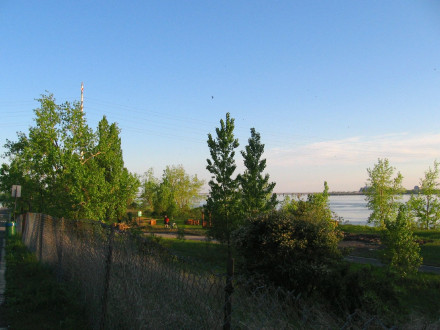
Écluses Saint-Lambert Locks
Saint-Lambert Locks, St-Lawrence Seaway. Écluses de Saint-Lambert, Voie Maritime du Fleuve Saint-Laurent. The Saint-Lambert Locks are part of the St-Lawrence Seaway. They have also been an integral part of our lives for the past 47 years since the opening, to which I was present, in the Spring of 1959. We see the locks from the streets that border the St-Lawrence River and from the bridges that we use to go to Montréal. We see the huge ships that pass between Saint-Lambert and Montréal, travelling on their way to and from the Great Lakes and the Atlantic ocean. There are three bridges linking Saint-Lambert and the city, Jacques-Cartier, Victoria and Champlain. Downtown Montréal is ten minutes away from Saint-Lambert via Victoria bridge that begins in the middle of our town. As people take this bridge, sometimes twice daily by car or by train, they pass directly over the locks. Shortly before a ship arrives at the locks, an arm of the bridge closest to the ship is raised to let it inside while the other arm is lowered to let the diverted traffic pass. The locks' gates are closed and the water level is raised. When this is done, the traffic is again diverted, this time to the newly lowered branch of the bridge, while the other side is raised to let the ship pass. Our region is known for its considerable cycling paths. An important link to the extensive network of South Shore and Montréal cycling paths runs over a highway, the locks and a short part of the river to reach the islands, then Montréal. When a ship must pass and the bridge is raised, people on foot or on their bicycles using the part of the path that is integrated to the bridge must wait, sometimes a long time, for the bridge to be lowered. Meanwhile, they enjoy the view! More photos will be taken from other perspectives in the near future.
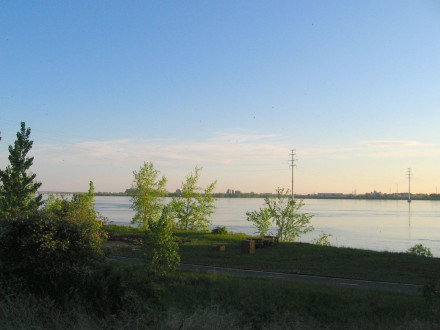
Écluses Saint-Lambert Locks
Saint-Lambert Locks, St-Lawrence Seaway. Écluses de Saint-Lambert, Voie Maritime du Fleuve Saint-Laurent. The Saint-Lambert Locks are part of the St-Lawrence Seaway. They have also been an integral part of our lives for the past 47 years since the opening, to which I was present, in the Spring of 1959. We see the locks from the streets that border the St-Lawrence River and from the bridges that we use to go to Montréal. We see the huge ships that pass between Saint-Lambert and Montréal, travelling on their way to and from the Great Lakes and the Atlantic ocean. There are three bridges linking Saint-Lambert and the city, Jacques-Cartier, Victoria and Champlain. Downtown Montréal is ten minutes away from Saint-Lambert via Victoria bridge that begins in the middle of our town. As people take this bridge, sometimes twice daily by car or by train, they pass directly over the locks. Shortly before a ship arrives at the locks, an arm of the bridge closest to the ship is raised to let it inside while the other arm is lowered to let the diverted traffic pass. The locks' gates are closed and the water level is raised. When this is done, the traffic is again diverted, this time to the newly lowered branch of the bridge, while the other side is raised to let the ship pass. Our region is known for its considerable cycling paths. An important link to the extensive network of South Shore and Montréal cycling paths runs over a highway, the locks and a short part of the river to reach the islands, then Montréal. When a ship must pass and the bridge is raised, people on foot or on their bicycles using the part of the path that is integrated to the bridge must wait, sometimes a long time, for the bridge to be lowered. Meanwhile, they enjoy the view! More photos will be taken from other perspectives in the near future.
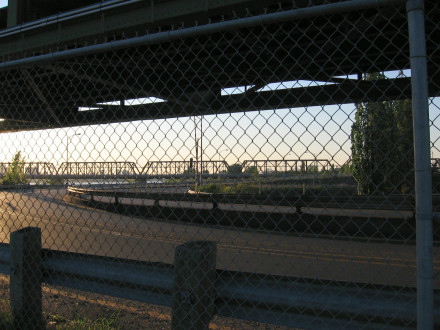
Écluses Saint-Lambert Locks
Saint-Lambert Locks, St-Lawrence Seaway. Écluses de Saint-Lambert, Voie Maritime du Fleuve Saint-Laurent. The Saint-Lambert Locks are part of the St-Lawrence Seaway. They have also been an integral part of our lives for the past 47 years since the opening, to which I was present, in the Spring of 1959. We see the locks from the streets that border the St-Lawrence River and from the bridges that we use to go to Montréal. We see the huge ships that pass between Saint-Lambert and Montréal, travelling on their way to and from the Great Lakes and the Atlantic ocean. There are three bridges linking Saint-Lambert and the city, Jacques-Cartier, Victoria and Champlain. Downtown Montréal is ten minutes away from Saint-Lambert via Victoria bridge that begins in the middle of our town. As people take this bridge, sometimes twice daily by car or by train, they pass directly over the locks. Shortly before a ship arrives at the locks, an arm of the bridge closest to the ship is raised to let it inside while the other arm is lowered to let the diverted traffic pass. The locks' gates are closed and the water level is raised. When this is done, the traffic is again diverted, this time to the newly lowered branch of the bridge, while the other side is raised to let the ship pass. Our region is known for its considerable cycling paths. An important link to the extensive network of South Shore and Montréal cycling paths runs over a highway, the locks and a short part of the river to reach the islands, then Montréal. When a ship must pass and the bridge is raised, people on foot or on their bicycles using the part of the path that is integrated to the bridge must wait, sometimes a long time, for the bridge to be lowered. Meanwhile, they enjoy the view! More photos will be taken from other perspectives in the near future.
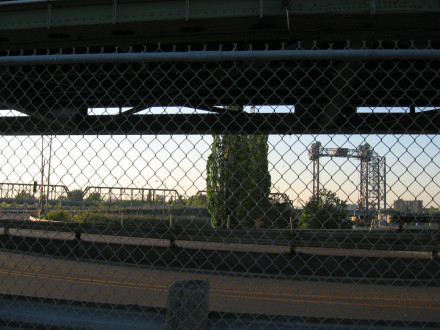
Écluses Saint-Lambert Locks
Saint-Lambert Locks, St-Lawrence Seaway. Écluses de Saint-Lambert, Voie Maritime du Fleuve Saint-Laurent. The Saint-Lambert Locks are part of the St-Lawrence Seaway. They have also been an integral part of our lives for the past 47 years since the opening, to which I was present, in the Spring of 1959. We see the locks from the streets that border the St-Lawrence River and from the bridges that we use to go to Montréal. We see the huge ships that pass between Saint-Lambert and Montréal, travelling on their way to and from the Great Lakes and the Atlantic ocean. There are three bridges linking Saint-Lambert and the city, Jacques-Cartier, Victoria and Champlain. Downtown Montréal is ten minutes away from Saint-Lambert via Victoria bridge that begins in the middle of our town. As people take this bridge, sometimes twice daily by car or by train, they pass directly over the locks. Shortly before a ship arrives at the locks, an arm of the bridge closest to the ship is raised to let it inside while the other arm is lowered to let the diverted traffic pass. The locks' gates are closed and the water level is raised. When this is done, the traffic is again diverted, this time to the newly lowered branch of the bridge, while the other side is raised to let the ship pass. Our region is known for its considerable cycling paths. An important link to the extensive network of South Shore and Montréal cycling paths runs over a highway, the locks and a short part of the river to reach the islands, then Montréal. When a ship must pass and the bridge is raised, people on foot or on their bicycles using the part of the path that is integrated to the bridge must wait, sometimes a long time, for the bridge to be lowered. Meanwhile, they enjoy the view! More photos will be taken from other perspectives in the near future.
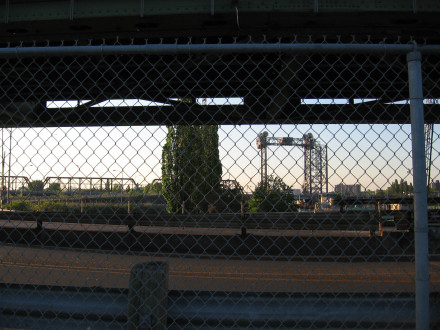
Écluses Saint-Lambert Locks
Saint-Lambert Locks, St-Lawrence Seaway. Écluses de Saint-Lambert, Voie Maritime du Fleuve Saint-Laurent. The Saint-Lambert Locks are part of the St-Lawrence Seaway. They have also been an integral part of our lives for the past 47 years since the opening, to which I was present, in the Spring of 1959. We see the locks from the streets that border the St-Lawrence River and from the bridges that we use to go to Montréal. We see the huge ships that pass between Saint-Lambert and Montréal, travelling on their way to and from the Great Lakes and the Atlantic ocean. There are three bridges linking Saint-Lambert and the city, Jacques-Cartier, Victoria and Champlain. Downtown Montréal is ten minutes away from Saint-Lambert via Victoria bridge that begins in the middle of our town. As people take this bridge, sometimes twice daily by car or by train, they pass directly over the locks. Shortly before a ship arrives at the locks, an arm of the bridge closest to the ship is raised to let it inside while the other arm is lowered to let the diverted traffic pass. The locks' gates are closed and the water level is raised. When this is done, the traffic is again diverted, this time to the newly lowered branch of the bridge, while the other side is raised to let the ship pass. Our region is known for its considerable cycling paths. An important link to the extensive network of South Shore and Montréal cycling paths runs over a highway, the locks and a short part of the river to reach the islands, then Montréal. When a ship must pass and the bridge is raised, people on foot or on their bicycles using the part of the path that is integrated to the bridge must wait, sometimes a long time, for the bridge to be lowered. Meanwhile, they enjoy the view! More photos will be taken from other perspectives in the near future.
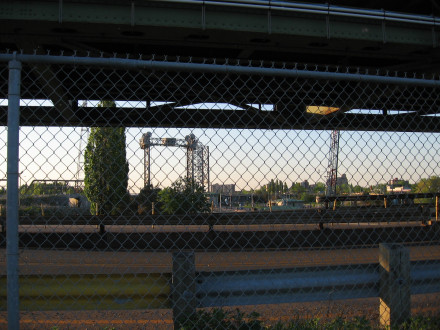
Écluses Saint-Lambert Locks
Saint-Lambert Locks, St-Lawrence Seaway. Écluses de Saint-Lambert, Voie Maritime du Fleuve Saint-Laurent. The Saint-Lambert Locks are part of the St-Lawrence Seaway. They have also been an integral part of our lives for the past 47 years since the opening, to which I was present, in the Spring of 1959. We see the locks from the streets that border the St-Lawrence River and from the bridges that we use to go to Montréal. We see the huge ships that pass between Saint-Lambert and Montréal, travelling on their way to and from the Great Lakes and the Atlantic ocean. There are three bridges linking Saint-Lambert and the city, Jacques-Cartier, Victoria and Champlain. Downtown Montréal is ten minutes away from Saint-Lambert via Victoria bridge that begins in the middle of our town. As people take this bridge, sometimes twice daily by car or by train, they pass directly over the locks. Shortly before a ship arrives at the locks, an arm of the bridge closest to the ship is raised to let it inside while the other arm is lowered to let the diverted traffic pass. The locks' gates are closed and the water level is raised. When this is done, the traffic is again diverted, this time to the newly lowered branch of the bridge, while the other side is raised to let the ship pass. Our region is known for its considerable cycling paths. An important link to the extensive network of South Shore and Montréal cycling paths runs over a highway, the locks and a short part of the river to reach the islands, then Montréal. When a ship must pass and the bridge is raised, people on foot or on their bicycles using the part of the path that is integrated to the bridge must wait, sometimes a long time, for the bridge to be lowered. Meanwhile, they enjoy the view! More photos will be taken from other perspectives in the near future.
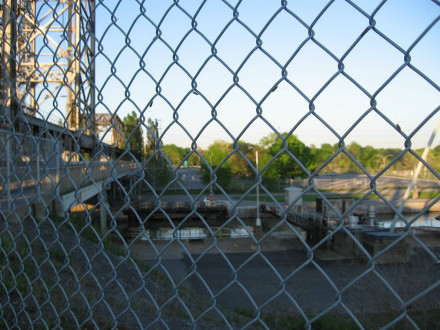
Écluses Saint-Lambert Locks
Saint-Lambert Locks, St-Lawrence Seaway. Écluses de Saint-Lambert, Voie Maritime du Fleuve Saint-Laurent. The Saint-Lambert Locks are part of the St-Lawrence Seaway. They have also been an integral part of our lives for the past 47 years since the opening, to which I was present, in the Spring of 1959. We see the locks from the streets that border the St-Lawrence River and from the bridges that we use to go to Montréal. We see the huge ships that pass between Saint-Lambert and Montréal, travelling on their way to and from the Great Lakes and the Atlantic ocean. There are three bridges linking Saint-Lambert and the city, Jacques-Cartier, Victoria and Champlain. Downtown Montréal is ten minutes away from Saint-Lambert via Victoria bridge that begins in the middle of our town. As people take this bridge, sometimes twice daily by car or by train, they pass directly over the locks. Shortly before a ship arrives at the locks, an arm of the bridge closest to the ship is raised to let it inside while the other arm is lowered to let the diverted traffic pass. The locks' gates are closed and the water level is raised. When this is done, the traffic is again diverted, this time to the newly lowered branch of the bridge, while the other side is raised to let the ship pass. Our region is known for its considerable cycling paths. An important link to the extensive network of South Shore and Montréal cycling paths runs over a highway, the locks and a short part of the river to reach the islands, then Montréal. When a ship must pass and the bridge is raised, people on foot or on their bicycles using the part of the path that is integrated to the bridge must wait, sometimes a long time, for the bridge to be lowered. Meanwhile, they enjoy the view! More photos will be taken from other perspectives in the near future.
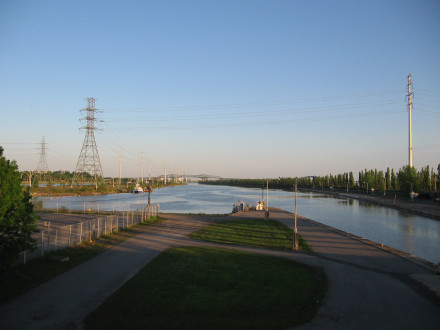
Écluses Saint-Lambert Locks
Saint-Lambert Locks, St-Lawrence Seaway. Écluses de Saint-Lambert, Voie Maritime du Fleuve Saint-Laurent. The Saint-Lambert Locks are part of the St-Lawrence Seaway. They have also been an integral part of our lives for the past 47 years since the opening, to which I was present, in the Spring of 1959. We see the locks from the streets that border the St-Lawrence River and from the bridges that we use to go to Montréal. We see the huge ships that pass between Saint-Lambert and Montréal, travelling on their way to and from the Great Lakes and the Atlantic ocean. There are three bridges linking Saint-Lambert and the city, Jacques-Cartier, Victoria and Champlain. Downtown Montréal is ten minutes away from Saint-Lambert via Victoria bridge that begins in the middle of our town. As people take this bridge, sometimes twice daily by car or by train, they pass directly over the locks. Shortly before a ship arrives at the locks, an arm of the bridge closest to the ship is raised to let it inside while the other arm is lowered to let the diverted traffic pass. The locks' gates are closed and the water level is raised. When this is done, the traffic is again diverted, this time to the newly lowered branch of the bridge, while the other side is raised to let the ship pass. Our region is known for its considerable cycling paths. An important link to the extensive network of South Shore and Montréal cycling paths runs over a highway, the locks and a short part of the river to reach the islands, then Montréal. When a ship must pass and the bridge is raised, people on foot or on their bicycles using the part of the path that is integrated to the bridge must wait, sometimes a long time, for the bridge to be lowered. Meanwhile, they enjoy the view! More photos will be taken from other perspectives in the near future.
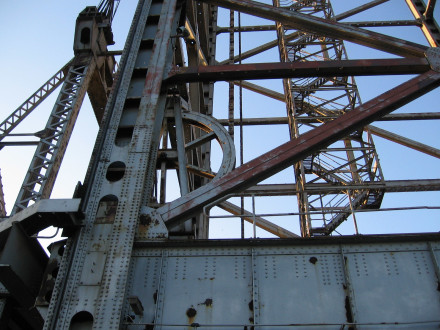
Écluses Saint-Lambert Locks
Saint-Lambert Locks, St-Lawrence Seaway. Écluses de Saint-Lambert, Voie Maritime du Fleuve Saint-Laurent. The Saint-Lambert Locks are part of the St-Lawrence Seaway. They have also been an integral part of our lives for the past 47 years since the opening, to which I was present, in the Spring of 1959. We see the locks from the streets that border the St-Lawrence River and from the bridges that we use to go to Montréal. We see the huge ships that pass between Saint-Lambert and Montréal, travelling on their way to and from the Great Lakes and the Atlantic ocean. There are three bridges linking Saint-Lambert and the city, Jacques-Cartier, Victoria and Champlain. Downtown Montréal is ten minutes away from Saint-Lambert via Victoria bridge that begins in the middle of our town. As people take this bridge, sometimes twice daily by car or by train, they pass directly over the locks. Shortly before a ship arrives at the locks, an arm of the bridge closest to the ship is raised to let it inside while the other arm is lowered to let the diverted traffic pass. The locks' gates are closed and the water level is raised. When this is done, the traffic is again diverted, this time to the newly lowered branch of the bridge, while the other side is raised to let the ship pass. Our region is known for its considerable cycling paths. An important link to the extensive network of South Shore and Montréal cycling paths runs over a highway, the locks and a short part of the river to reach the islands, then Montréal. When a ship must pass and the bridge is raised, people on foot or on their bicycles using the part of the path that is integrated to the bridge must wait, sometimes a long time, for the bridge to be lowered. Meanwhile, they enjoy the view! More photos will be taken from other perspectives in the near future.
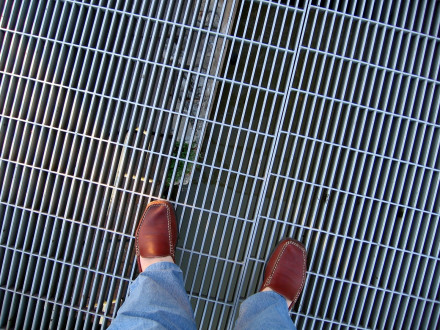
Écluses Saint-Lambert Locks
Saint-Lambert Locks, St-Lawrence Seaway. Écluses de Saint-Lambert, Voie Maritime du Fleuve Saint-Laurent. The Saint-Lambert Locks are part of the St-Lawrence Seaway. They have also been an integral part of our lives for the past 47 years since the opening, to which I was present, in the Spring of 1959. We see the locks from the streets that border the St-Lawrence River and from the bridges that we use to go to Montréal. We see the huge ships that pass between Saint-Lambert and Montréal, travelling on their way to and from the Great Lakes and the Atlantic ocean. There are three bridges linking Saint-Lambert and the city, Jacques-Cartier, Victoria and Champlain. Downtown Montréal is ten minutes away from Saint-Lambert via Victoria bridge that begins in the middle of our town. As people take this bridge, sometimes twice daily by car or by train, they pass directly over the locks. Shortly before a ship arrives at the locks, an arm of the bridge closest to the ship is raised to let it inside while the other arm is lowered to let the diverted traffic pass. The locks' gates are closed and the water level is raised. When this is done, the traffic is again diverted, this time to the newly lowered branch of the bridge, while the other side is raised to let the ship pass. Our region is known for its considerable cycling paths. An important link to the extensive network of South Shore and Montréal cycling paths runs over a highway, the locks and a short part of the river to reach the islands, then Montréal. When a ship must pass and the bridge is raised, people on foot or on their bicycles using the part of the path that is integrated to the bridge must wait, sometimes a long time, for the bridge to be lowered. Meanwhile, they enjoy the view! More photos will be taken from other perspectives in the near future.
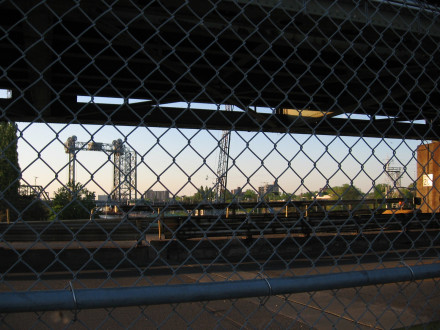
Écluses Saint-Lambert Locks
Saint-Lambert Locks, St-Lawrence Seaway. Écluses de Saint-Lambert, Voie Maritime du Fleuve Saint-Laurent. The Saint-Lambert Locks are part of the St-Lawrence Seaway. They have also been an integral part of our lives for the past 47 years since the opening, to which I was present, in the Spring of 1959. We see the locks from the streets that border the St-Lawrence River and from the bridges that we use to go to Montréal. We see the huge ships that pass between Saint-Lambert and Montréal, travelling on their way to and from the Great Lakes and the Atlantic ocean. There are three bridges linking Saint-Lambert and the city, Jacques-Cartier, Victoria and Champlain. Downtown Montréal is ten minutes away from Saint-Lambert via Victoria bridge that begins in the middle of our town. As people take this bridge, sometimes twice daily by car or by train, they pass directly over the locks. Shortly before a ship arrives at the locks, an arm of the bridge closest to the ship is raised to let it inside while the other arm is lowered to let the diverted traffic pass. The locks' gates are closed and the water level is raised. When this is done, the traffic is again diverted, this time to the newly lowered branch of the bridge, while the other side is raised to let the ship pass. Our region is known for its considerable cycling paths. An important link to the extensive network of South Shore and Montréal cycling paths runs over a highway, the locks and a short part of the river to reach the islands, then Montréal. When a ship must pass and the bridge is raised, people on foot or on their bicycles using the part of the path that is integrated to the bridge must wait, sometimes a long time, for the bridge to be lowered. Meanwhile, they enjoy the view! More photos will be taken from other perspectives in the near future.
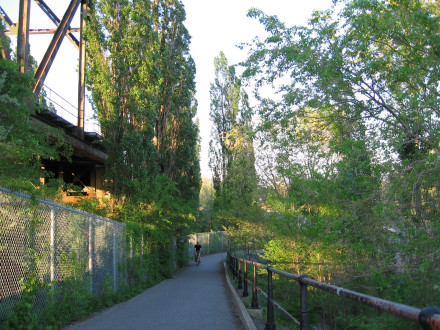
Écluses Saint-Lambert Locks
Saint-Lambert Locks, St-Lawrence Seaway. Écluses de Saint-Lambert, Voie Maritime du Fleuve Saint-Laurent. The Saint-Lambert Locks are part of the St-Lawrence Seaway. They have also been an integral part of our lives for the past 47 years since the opening, to which I was present, in the Spring of 1959. We see the locks from the streets that border the St-Lawrence River and from the bridges that we use to go to Montréal. We see the huge ships that pass between Saint-Lambert and Montréal, travelling on their way to and from the Great Lakes and the Atlantic ocean. There are three bridges linking Saint-Lambert and the city, Jacques-Cartier, Victoria and Champlain. Downtown Montréal is ten minutes away from Saint-Lambert via Victoria bridge that begins in the middle of our town. As people take this bridge, sometimes twice daily by car or by train, they pass directly over the locks. Shortly before a ship arrives at the locks, an arm of the bridge closest to the ship is raised to let it inside while the other arm is lowered to let the diverted traffic pass. The locks' gates are closed and the water level is raised. When this is done, the traffic is again diverted, this time to the newly lowered branch of the bridge, while the other side is raised to let the ship pass. Our region is known for its considerable cycling paths. An important link to the extensive network of South Shore and Montréal cycling paths runs over a highway, the locks and a short part of the river to reach the islands, then Montréal. When a ship must pass and the bridge is raised, people on foot or on their bicycles using the part of the path that is integrated to the bridge must wait, sometimes a long time, for the bridge to be lowered. Meanwhile, they enjoy the view! More photos will be taken from other perspectives in the near future.
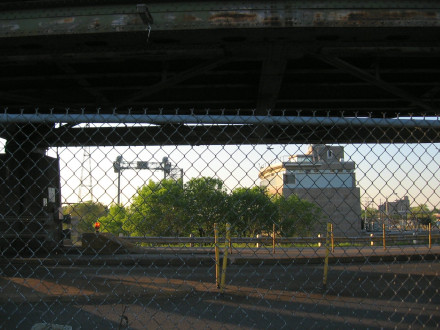
Écluses Saint-Lambert Locks
Saint-Lambert Locks, St-Lawrence Seaway. Écluses de Saint-Lambert, Voie Maritime du Fleuve Saint-Laurent. The Saint-Lambert Locks are part of the St-Lawrence Seaway. They have also been an integral part of our lives for the past 47 years since the opening, to which I was present, in the Spring of 1959. We see the locks from the streets that border the St-Lawrence River and from the bridges that we use to go to Montréal. We see the huge ships that pass between Saint-Lambert and Montréal, travelling on their way to and from the Great Lakes and the Atlantic ocean. There are three bridges linking Saint-Lambert and the city, Jacques-Cartier, Victoria and Champlain. Downtown Montréal is ten minutes away from Saint-Lambert via Victoria bridge that begins in the middle of our town. As people take this bridge, sometimes twice daily by car or by train, they pass directly over the locks. Shortly before a ship arrives at the locks, an arm of the bridge closest to the ship is raised to let it inside while the other arm is lowered to let the diverted traffic pass. The locks' gates are closed and the water level is raised. When this is done, the traffic is again diverted, this time to the newly lowered branch of the bridge, while the other side is raised to let the ship pass. Our region is known for its considerable cycling paths. An important link to the extensive network of South Shore and Montréal cycling paths runs over a highway, the locks and a short part of the river to reach the islands, then Montréal. When a ship must pass and the bridge is raised, people on foot or on their bicycles using the part of the path that is integrated to the bridge must wait, sometimes a long time, for the bridge to be lowered. Meanwhile, they enjoy the view! More photos will be taken from other perspectives in the near future.
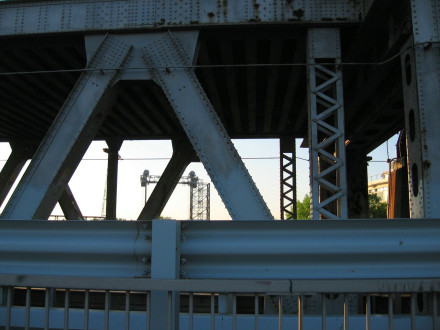
Écluses Saint-Lambert Locks
Saint-Lambert Locks, St-Lawrence Seaway. Écluses de Saint-Lambert, Voie Maritime du Fleuve Saint-Laurent. The Saint-Lambert Locks are part of the St-Lawrence Seaway. They have also been an integral part of our lives for the past 47 years since the opening, to which I was present, in the Spring of 1959. We see the locks from the streets that border the St-Lawrence River and from the bridges that we use to go to Montréal. We see the huge ships that pass between Saint-Lambert and Montréal, travelling on their way to and from the Great Lakes and the Atlantic ocean. There are three bridges linking Saint-Lambert and the city, Jacques-Cartier, Victoria and Champlain. Downtown Montréal is ten minutes away from Saint-Lambert via Victoria bridge that begins in the middle of our town. As people take this bridge, sometimes twice daily by car or by train, they pass directly over the locks. Shortly before a ship arrives at the locks, an arm of the bridge closest to the ship is raised to let it inside while the other arm is lowered to let the diverted traffic pass. The locks' gates are closed and the water level is raised. When this is done, the traffic is again diverted, this time to the newly lowered branch of the bridge, while the other side is raised to let the ship pass. Our region is known for its considerable cycling paths. An important link to the extensive network of South Shore and Montréal cycling paths runs over a highway, the locks and a short part of the river to reach the islands, then Montréal. When a ship must pass and the bridge is raised, people on foot or on their bicycles using the part of the path that is integrated to the bridge must wait, sometimes a long time, for the bridge to be lowered. Meanwhile, they enjoy the view! More photos will be taken from other perspectives in the near future.
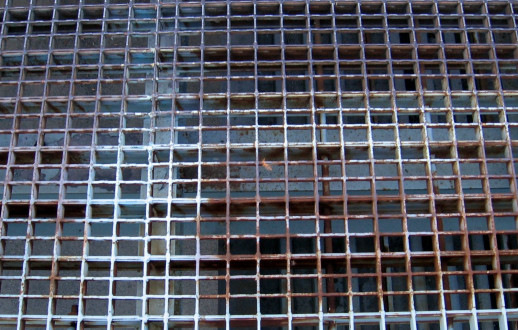
Écluses Saint-Lambert Locks
Saint-Lambert Locks, St-Lawrence Seaway. Écluses de Saint-Lambert, Voie Maritime du Fleuve Saint-Laurent. The Saint-Lambert Locks are part of the St-Lawrence Seaway. They have also been an integral part of our lives for the past 47 years since the opening, to which I was present, in the Spring of 1959. We see the locks from the streets that border the St-Lawrence River and from the bridges that we use to go to Montréal. We see the huge ships that pass between Saint-Lambert and Montréal, travelling on their way to and from the Great Lakes and the Atlantic ocean. There are three bridges linking Saint-Lambert and the city, Jacques-Cartier, Victoria and Champlain. Downtown Montréal is ten minutes away from Saint-Lambert via Victoria bridge that begins in the middle of our town. As people take this bridge, sometimes twice daily by car or by train, they pass directly over the locks. Shortly before a ship arrives at the locks, an arm of the bridge closest to the ship is raised to let it inside while the other arm is lowered to let the diverted traffic pass. The locks' gates are closed and the water level is raised. When this is done, the traffic is again diverted, this time to the newly lowered branch of the bridge, while the other side is raised to let the ship pass. Our region is known for its considerable cycling paths. An important link to the extensive network of South Shore and Montréal cycling paths runs over a highway, the locks and a short part of the river to reach the islands, then Montréal. When a ship must pass and the bridge is raised, people on foot or on their bicycles using the part of the path that is integrated to the bridge must wait, sometimes a long time, for the bridge to be lowered. Meanwhile, they enjoy the view! More photos will be taken from other perspectives in the near future.
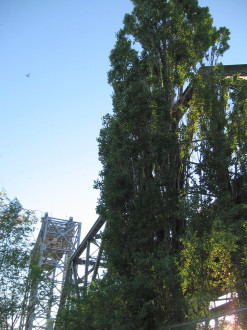
Écluses Saint-Lambert Locks
Saint-Lambert Locks, St-Lawrence Seaway. - Saint-Lambert, Québec, Canada Écluses de Saint-Lambert, Voie Maritime du Fleuve Saint-Laurent. The Saint-Lambert Locks are part of the St-Lawrence Seaway. They have also been an integral part of our lives for the past 47 years since the opening, to which I was present, in the Spring of 1959. We see the locks from the streets that border the St-Lawrence River and from the bridges that we use to go to Montréal. We see the huge ships that pass between Saint-Lambert and Montréal, travelling on their way to and from the Great Lakes and the Atlantic ocean. There are three bridges linking Saint-Lambert and the city, Jacques-Cartier, Victoria and Champlain. Downtown Montréal is ten minutes away from Saint-Lambert via Victoria bridge that begins in the middle of our town. As people take this bridge, sometimes twice daily by car or by train, they pass directly over the locks. Shortly before a ship arrives at the locks, an arm of the bridge closest to the ship is raised to let it inside while the other arm is lowered to let the diverted traffic pass. The locks' gates are closed and the water level is raised. When this is done, the traffic is again diverted, this time to the newly lowered branch of the bridge, while the other side is raised to let the ship pass. Our region is known for its considerable cycling paths. An important link to the extensive network of South Shore and Montréal cycling paths runs over a highway, the locks and a short part of the river to reach the islands, then Montréal. When a ship must pass and the bridge is raised, people on foot or on their bicycles using the part of the path that is integrated to the bridge must wait, sometimes a long time, for the bridge to be lowered. Meanwhile, they enjoy the view! More photos will be taken from other perspectives in the near future.
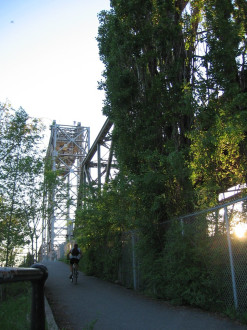
Écluses Saint-Lambert Locks
Saint-Lambert Locks, St-Lawrence Seaway. Écluses de Saint-Lambert, Voie Maritime du Fleuve Saint-Laurent. The Saint-Lambert Locks are part of the St-Lawrence Seaway. They have also been an integral part of our lives for the past 47 years since the opening, to which I was present, in the Spring of 1959. We see the locks from the streets that border the St-Lawrence River and from the bridges that we use to go to Montréal. We see the huge ships that pass between Saint-Lambert and Montréal, travelling on their way to and from the Great Lakes and the Atlantic ocean. There are three bridges linking Saint-Lambert and the city, Jacques-Cartier, Victoria and Champlain. Downtown Montréal is ten minutes away from Saint-Lambert via Victoria bridge that begins in the middle of our town. As people take this bridge, sometimes twice daily by car or by train, they pass directly over the locks. Shortly before a ship arrives at the locks, an arm of the bridge closest to the ship is raised to let it inside while the other arm is lowered to let the diverted traffic pass. The locks' gates are closed and the water level is raised. When this is done, the traffic is again diverted, this time to the newly lowered branch of the bridge, while the other side is raised to let the ship pass. Our region is known for its considerable cycling paths. An important link to the extensive network of South Shore and Montréal cycling paths runs over a highway, the locks and a short part of the river to reach the islands, then Montréal. When a ship must pass and the bridge is raised, people on foot or on their bicycles using the part of the path that is integrated to the bridge must wait, sometimes a long time, for the bridge to be lowered. Meanwhile, they enjoy the view! More photos will be taken from other perspectives in the near future.
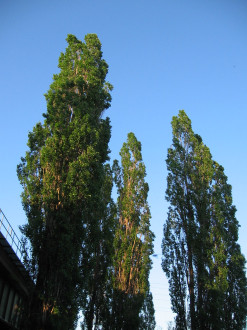
Écluses Saint-Lambert Locks
Saint-Lambert Locks, St-Lawrence Seaway. Écluses de Saint-Lambert, Voie Maritime du Fleuve Saint-Laurent. The Saint-Lambert Locks are part of the St-Lawrence Seaway. They have also been an integral part of our lives for the past 47 years since the opening, to which I was present, in the Spring of 1959. We see the locks from the streets that border the St-Lawrence River and from the bridges that we use to go to Montréal. We see the huge ships that pass between Saint-Lambert and Montréal, travelling on their way to and from the Great Lakes and the Atlantic ocean. There are three bridges linking Saint-Lambert and the city, Jacques-Cartier, Victoria and Champlain. Downtown Montréal is ten minutes away from Saint-Lambert via Victoria bridge that begins in the middle of our town. As people take this bridge, sometimes twice daily by car or by train, they pass directly over the locks. Shortly before a ship arrives at the locks, an arm of the bridge closest to the ship is raised to let it inside while the other arm is lowered to let the diverted traffic pass. The locks' gates are closed and the water level is raised. When this is done, the traffic is again diverted, this time to the newly lowered branch of the bridge, while the other side is raised to let the ship pass. Our region is known for its considerable cycling paths. An important link to the extensive network of South Shore and Montréal cycling paths runs over a highway, the locks and a short part of the river to reach the islands, then Montréal. When a ship must pass and the bridge is raised, people on foot or on their bicycles using the part of the path that is integrated to the bridge must wait, sometimes a long time, for the bridge to be lowered. Meanwhile, they enjoy the view! More photos will be taken from other perspectives in the near future.
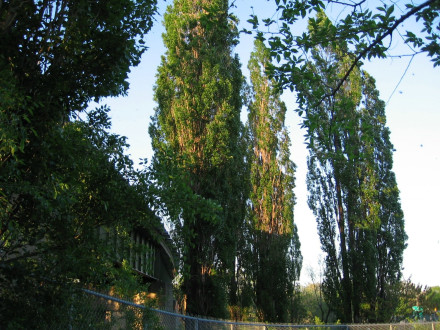
Écluses Saint-Lambert Locks
Saint-Lambert Locks, St-Lawrence Seaway. Écluses de Saint-Lambert, Voie Maritime du Fleuve Saint-Laurent. The Saint-Lambert Locks are part of the St-Lawrence Seaway. They have also been an integral part of our lives for the past 47 years since the opening, to which I was present, in the Spring of 1959. We see the locks from the streets that border the St-Lawrence River and from the bridges that we use to go to Montréal. We see the huge ships that pass between Saint-Lambert and Montréal, travelling on their way to and from the Great Lakes and the Atlantic ocean. There are three bridges linking Saint-Lambert and the city, Jacques-Cartier, Victoria and Champlain. Downtown Montréal is ten minutes away from Saint-Lambert via Victoria bridge that begins in the middle of our town. As people take this bridge, sometimes twice daily by car or by train, they pass directly over the locks. Shortly before a ship arrives at the locks, an arm of the bridge closest to the ship is raised to let it inside while the other arm is lowered to let the diverted traffic pass. The locks' gates are closed and the water level is raised. When this is done, the traffic is again diverted, this time to the newly lowered branch of the bridge, while the other side is raised to let the ship pass. Our region is known for its considerable cycling paths. An important link to the extensive network of South Shore and Montréal cycling paths runs over a highway, the locks and a short part of the river to reach the islands, then Montréal. When a ship must pass and the bridge is raised, people on foot or on their bicycles using the part of the path that is integrated to the bridge must wait, sometimes a long time, for the bridge to be lowered. Meanwhile, they enjoy the view! More photos will be taken from other perspectives in the near future.
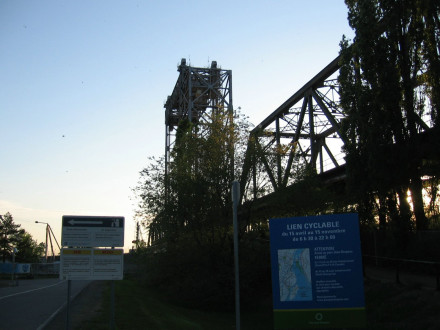
Écluses Saint-Lambert Locks
Saint-Lambert Locks, St-Lawrence Seaway. - Saint-Lambert, Québec, Canada Écluses de Saint-Lambert, Voie Maritime du Fleuve Saint-Laurent. The Saint-Lambert Locks are part of the St-Lawrence Seaway. They have also been an integral part of our lives for the past 47 years since the opening, to which I was present, in the Spring of 1959. We see the locks from the streets that border the St-Lawrence River and from the bridges that we use to go to Montréal. We see the huge ships that pass between Saint-Lambert and Montréal, travelling on their way to and from the Great Lakes and the Atlantic ocean. There are three bridges linking Saint-Lambert and the city, Jacques-Cartier, Victoria and Champlain. Downtown Montréal is ten minutes away from Saint-Lambert via Victoria bridge that begins in the middle of our town. As people take this bridge, sometimes twice daily by car or by train, they pass directly over the locks. Shortly before a ship arrives at the locks, an arm of the bridge closest to the ship is raised to let it inside while the other arm is lowered to let the diverted traffic pass. The locks' gates are closed and the water level is raised. When this is done, the traffic is again diverted, this time to the newly lowered branch of the bridge, while the other side is raised to let the ship pass. Our region is known for its considerable cycling paths. An important link to the extensive network of South Shore and Montréal cycling paths runs over a highway, the locks and a short part of the river to reach the islands, then Montréal. When a ship must pass and the bridge is raised, people on foot or on their bicycles using the part of the path that is integrated to the bridge must wait, sometimes a long time, for the bridge to be lowered. Meanwhile, they enjoy the view! More photos will be taken from other perspectives in the near future.
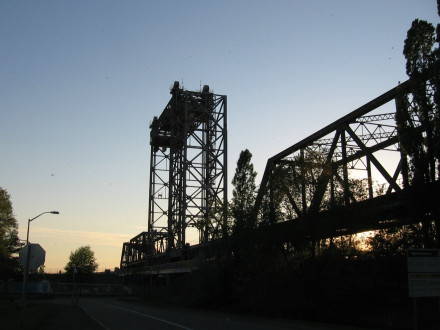
Écluses Saint-Lambert Locks
Saint-Lambert Locks, St-Lawrence Seaway. - Saint-Lambert, Québec, Canada Écluses de Saint-Lambert, Voie Maritime du Fleuve Saint-Laurent. The Saint-Lambert Locks are part of the St-Lawrence Seaway. They have also been an integral part of our lives for the past 47 years since the opening, to which I was present, in the Spring of 1959. We see the locks from the streets that border the St-Lawrence River and from the bridges that we use to go to Montréal. We see the huge ships that pass between Saint-Lambert and Montréal, travelling on their way to and from the Great Lakes and the Atlantic ocean. There are three bridges linking Saint-Lambert and the city, Jacques-Cartier, Victoria and Champlain. Downtown Montréal is ten minutes away from Saint-Lambert via Victoria bridge that begins in the middle of our town. As people take this bridge, sometimes twice daily by car or by train, they pass directly over the locks. Shortly before a ship arrives at the locks, an arm of the bridge closest to the ship is raised to let it inside while the other arm is lowered to let the diverted traffic pass. The locks' gates are closed and the water level is raised. When this is done, the traffic is again diverted, this time to the newly lowered branch of the bridge, while the other side is raised to let the ship pass. Our region is known for its considerable cycling paths. An important link to the extensive network of South Shore and Montréal cycling paths runs over a highway, the locks and a short part of the river to reach the islands, then Montréal. When a ship must pass and the bridge is raised, people on foot or on their bicycles using the part of the path that is integrated to the bridge must wait, sometimes a long time, for the bridge to be lowered. Meanwhile, they enjoy the view! More photos will be taken from other perspectives in the near future.
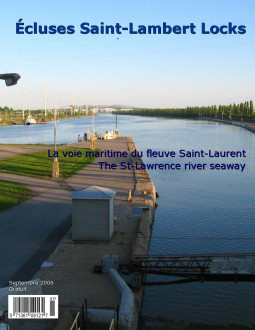
Écluses Saint-Lambert Locks
More here Saint-Lambert Locks Davantage ici Écluses Saint-Lambert Created with fd's Flickr Toys.
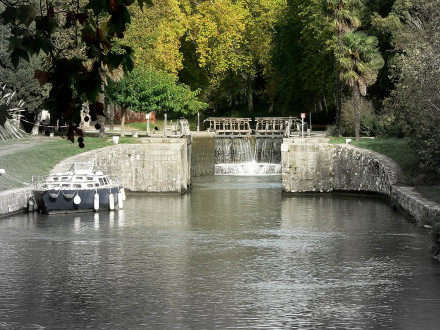
Le dernier jour des platanes/ Last days for platane trees
A la mémoire des platanes de l'écluse de Villedubert, qui ont commencé à être abattus cette semaine. In memory to those platane trees from the canal du midi, destroyed this week.
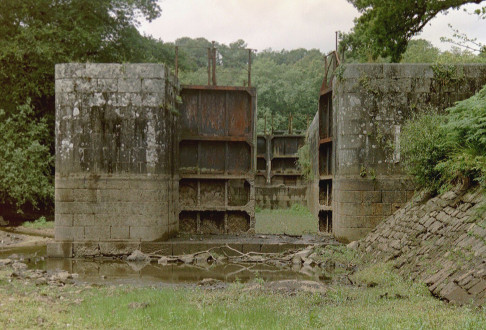
Canal lock/écluse
Lock in state of advanced disrepair. Unlike much of the Canal de Nantes a Brest, this short stretch in in ruins. It was actually really spooky standing in the bedding while imagining barges floating by. The canal was commissioned and built by Napoleon to circumvent the British naval blockade of Brittany. On certain stretches convict labour was used. The canal towpath has been made accessible to cyclists, which means Brittany can be traversed from east to west and vice versa with easy gradients over a distance of approximately 200km (125 miles).
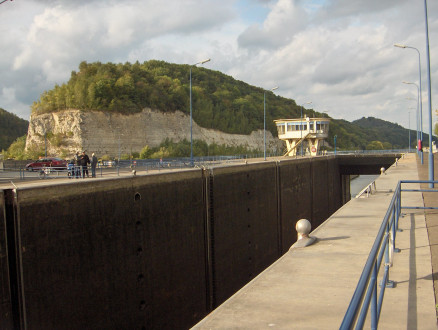
Lanaye - Lock
262279572_6b08baf12b_k
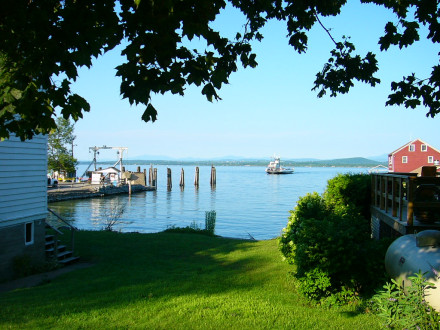
New England ferry
205391981_d5a77b47d7_b
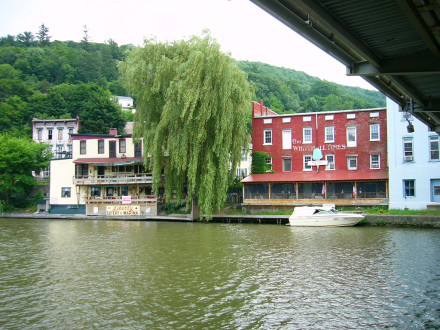
New England houses
205393129_e797bbdbbd_b
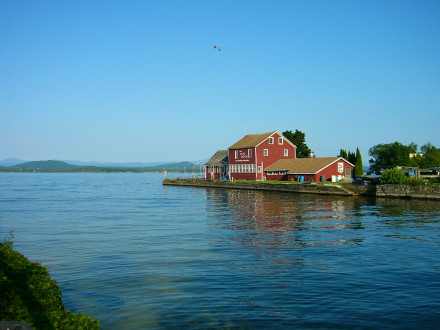
Lake in New England
205392065_e5344284e4_b
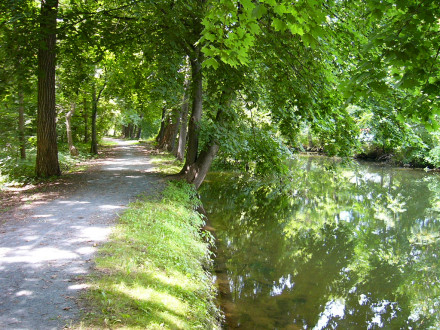
P1110555
208552395_c2c188c382_b
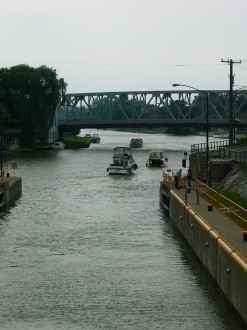
Champlain waterway locks
208550129_c773640839_b
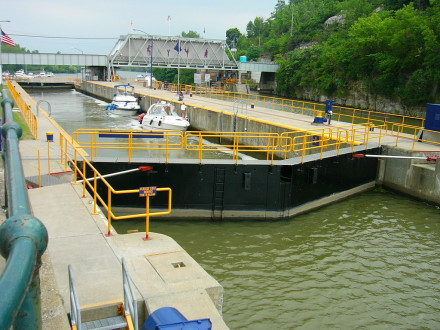
Champlain waterway locks
208549518_2e6b57ce51_b
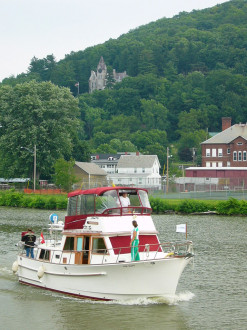
P1110393
208546543_9231a10326_b
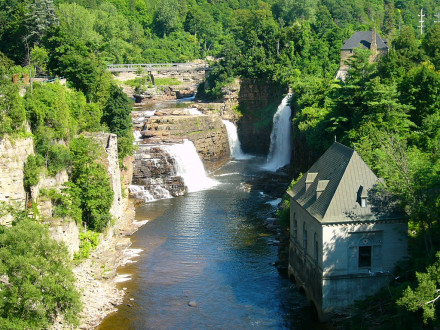
P1110202
208543161_e8b8c3fc03_b
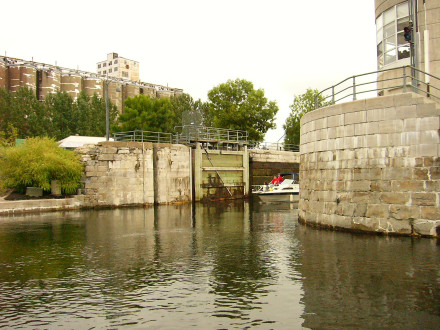
A boat coming through the locks on the Lachine Canal
too bad this got overexposed 🙁
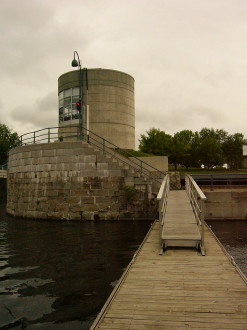
Locks tower on the Lachine Canal at the Old Port (Montréal, Québec)
235367271_3cb662cb61_k
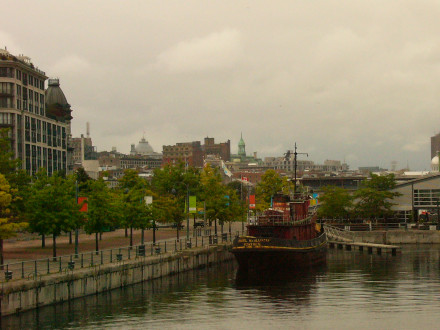
The Daniel McAlister anchored in the Old Port (Montréal, Québec)
235368417_4c159d0f7b_k
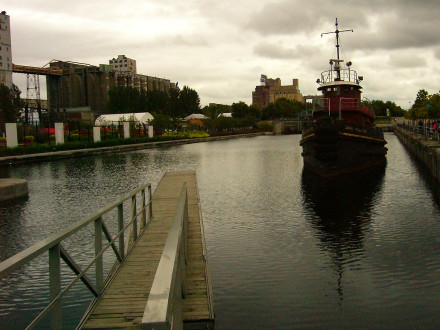
The Daniel McAlister anchored in the Old Port (Montréal, Québec)
235371172_d8d0b5473c_k
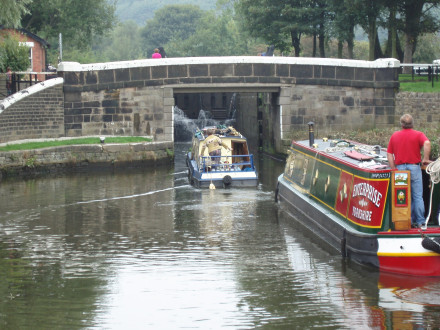
Heading Towards The Last Lock
One more lock and then it is another 10 miles before they reach another. Bethen took this.
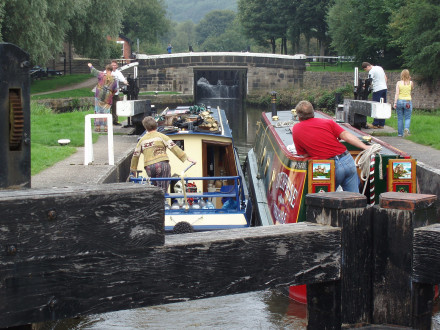
Leaving Lock 22
See where this photo was taken at maps.yuan.cc/.
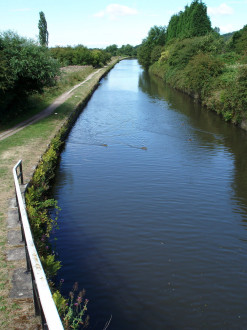
Appley Deep Lock
Pretty impressive this lock. It descends a good 15 to 20 meters. Alongside this is a secondary channel with two locks which are not so deep. The choice, it seems, is the boatmans, but I would imagine that the deep lock would take quite a long time to navigate. See where this photo was taken at maps.yuan.cc.
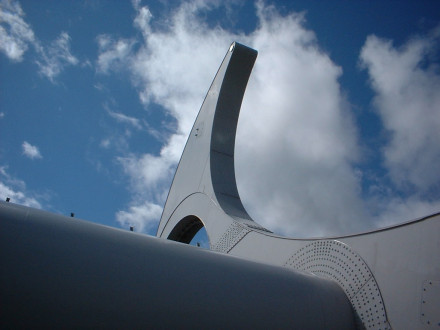
ALien Spine
Large Canal Lock that allows the transfer of barges from one canal from Edinburgh to connect with one from Glasgow
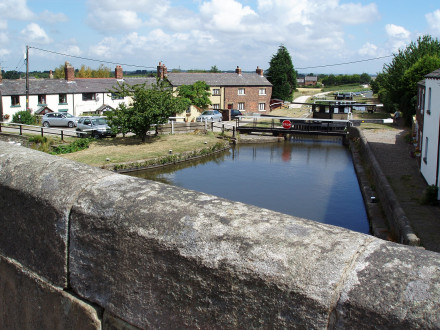
Rufford Branch
This branch of the Leeds Liverpool canal flows north through Rufford and Tarleton where it joins the upper reaches of the river Ribble. From there, it flows to Preston and the sea.Not many pubs on this branch, so I don't think I'll be doing it very often. See where this photo was taken at maps.yuan.cc.
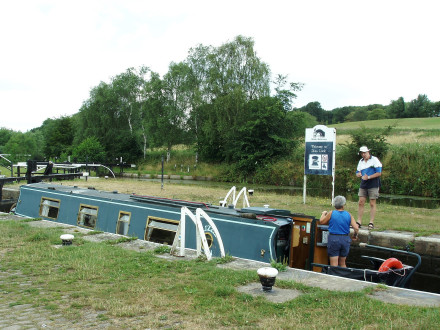
Dean Lock
This is just outside Gathurst. See where this photo was taken at maps.yuan.cc.
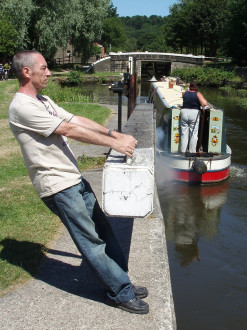
Who Says Canal Boating Is Relaxing?
Just ask this chap! Boy, has he earned his pint!
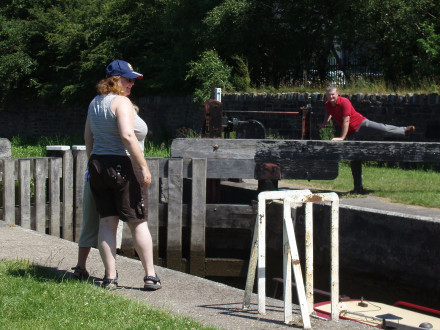
Watching the Boats
190784941_0d1ab9e139_k
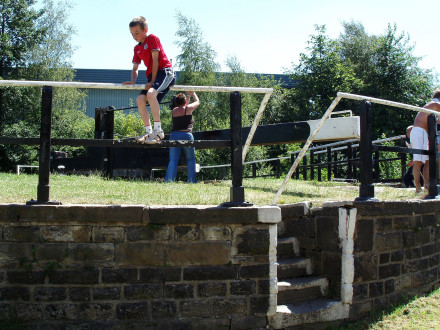
Lock
The lock just outside the Kirkless Hall pub.
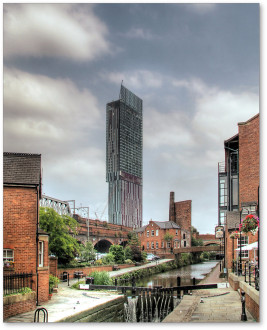
Alien craft lands in Manchester...
Beetham Tower, Manchester from Castlefields. Lock 92 (Dukes Lock) - Rochdale Canal.
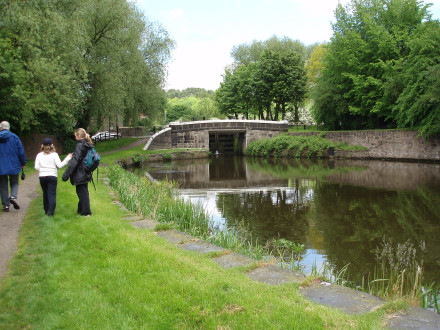
Canal Lock
155657892_e12dea94c7_k
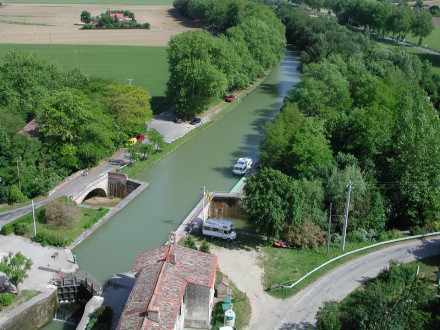
CANAL1
Lock on the "Canal du Midi"
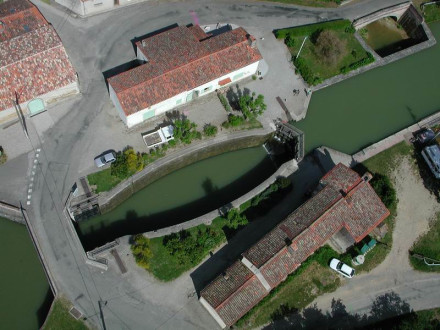
CANAL2
Lock on the "Canal du Midi"
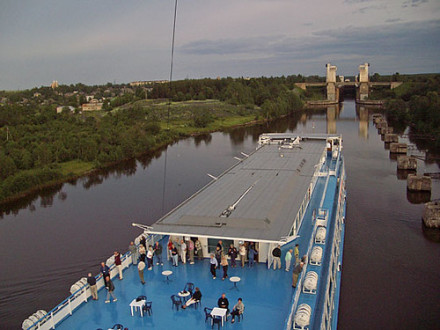
Lock-ho!
On a river cruise through Russia in 2004, I took this from my kite line just as we were approaching a lock. Forward motion kept the kite aloft; when the boat slowed, the kite came down -- and a good thing too.
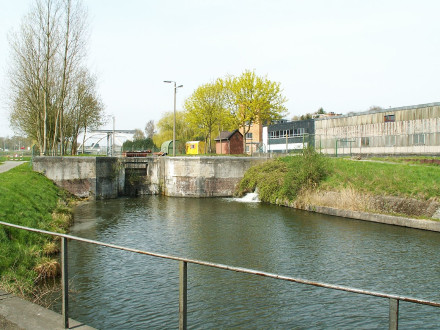
Old Canal Pommeroeul - Antoing
A la mise en service du canal de liaison à grand gabarit Pommeroeul – Hensies – Condé, le canal de Pommeroeul à Antoing est désaffecté. Les portes des cinq écluses du tronçon Harchies – Blaton sont remplacées par des barrages dont les chutes d’eau favorisent l’oxygénation. Ces différents biefs servent de réserve de pêche et le trop plein des eaux se déverse dans le "Grand Courant". history
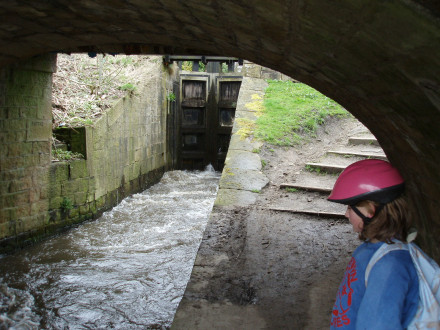
White Water
A boat was descending the locks, and the water was rushing out.
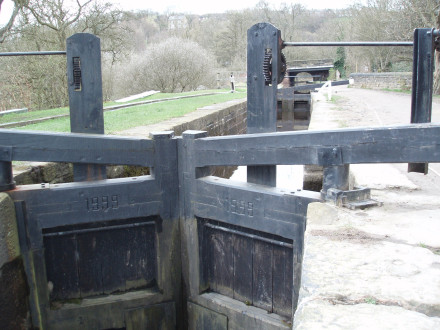
Lock
These gates were replaced in 1999

Tree and Barge
131955405_f226476e8a_h
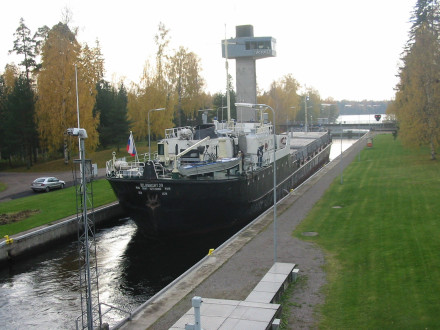
Varkaus,Finland; 164-6479_IMG
Varkaus,Finland Taipale canal Russian cargo ship M/S Belomorsky 29 in the lock. www.varkaus.fi/index.asp en.wikipedia.org/wiki/Varkaus veps.fma.fi/portal/page/portal/fma_fi/merenkulun_palvelut... Satellite photo: maps.google.com/maps?t=k&hl=en&om=1&ll=62.303...
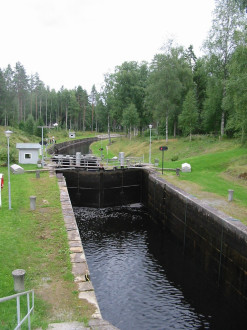
Heinävesi, Finland; 187-8732_IMG
Heinävesi, Finland Varistaival canal. veps.fma.fi/portal/page/portal/fma_fi/merenkulun_palvelut... www.heinavesi.fi/ gamma.nic.fi/~skyhanet/machook&kanavakioski.html en.wikipedia.org/wiki/Varistaipale_canal
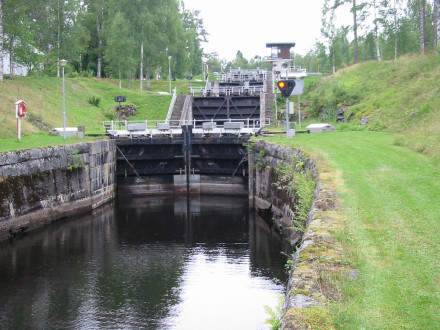
Heinävesi, Finland; 187-8740_IMG
Heinävesi, Finland Varistaival canal. veps.fma.fi/portal/page/portal/fma_fi/merenkulun_palvelut... www.heinavesi.fi/ en.wikipedia.org/wiki/Varistaipale_canal
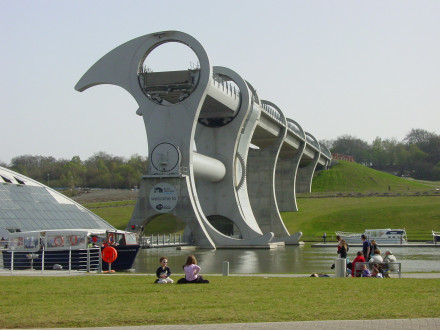
falkirk wheel
The amazing boat lift that joins the Union Canal to the Forth & Clyde Canal, Central Scotland.
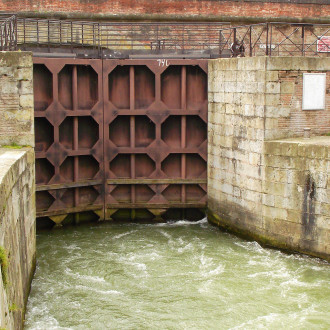
Aux portes de la Garonne
114917247_d7a92a5246_h
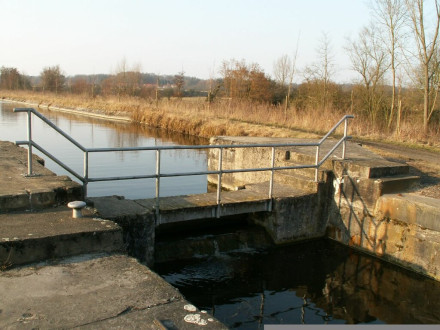
Harchies
114839378_b52d84a554_b
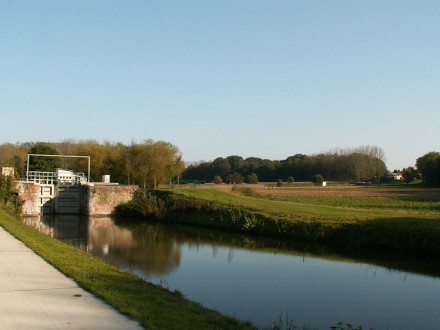
Canal Ath-Blaton 002
96340435_98b7846227_b
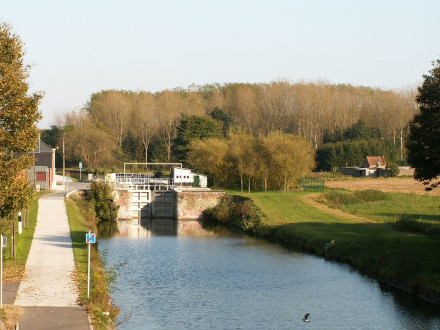
Canal Ath-Blaton 003
96340517_0938f93018_b
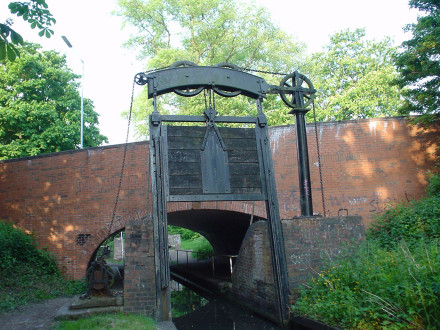
Guillotine lock, Kings Norton
Guillotine lock on the Stratford canal, at Kings Norton junction. geotagged
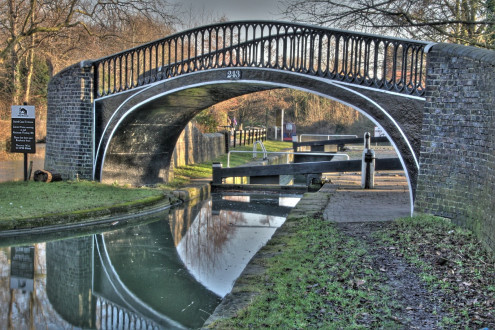
Isis Lock
This lock joins the Oxford canal to the River Thames in Oxford. One of the inaugural 20 photos of the Top 20 HDR group.
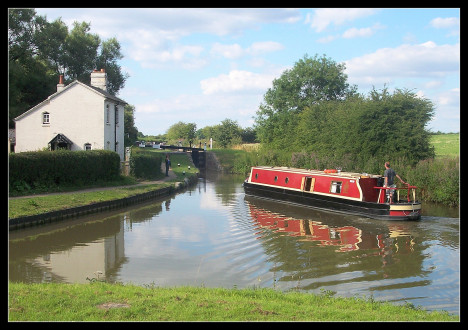
Duke's Lock - Oxford Canal
At the junction with Duke's cut (on the left) which leads to the River Thames. The boat has come from Oxford and is heading North towards Banbury and the Midlands.

Eynsham Lock 180° panorama
River Thames, Oxfordshire, England As with all panoramas, full size is essential.
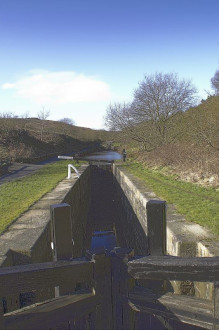
Lock on the Huddersfield Narrow Canal
Canal lock at Marsden, northwest England.
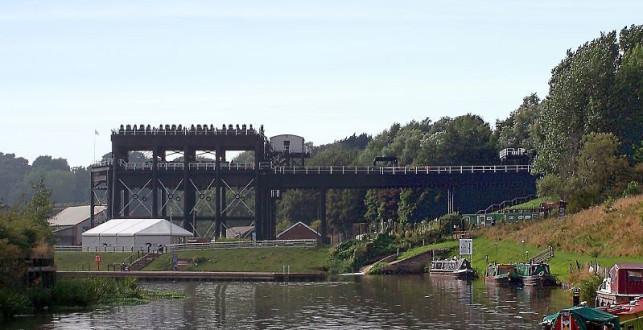
Anderton Boat Lift
The Anderton Boat Lift built in 1875 and was the world's first Boat Lift. It connects the Trent and Mersey Canal and the River Weaver near Northwich in the Northwest of England. Wikipedia page
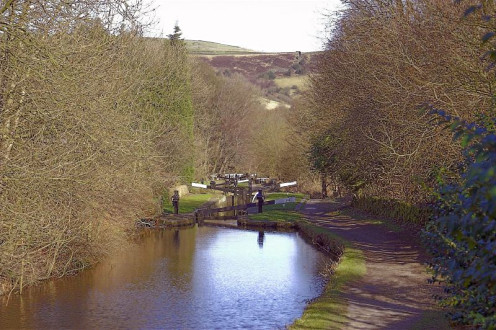
Huddersfield Narrow Canal
Canal near Marsden, northwest England.
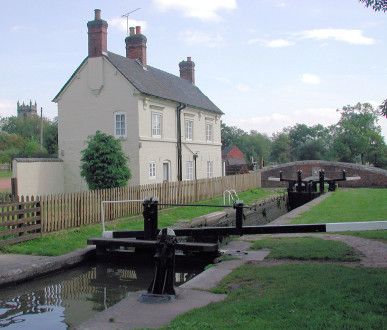
England 2002
A Lockkeeper's house...
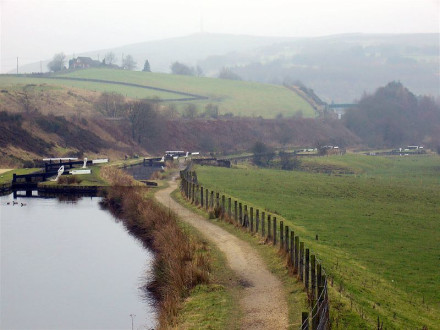
Huddersfield Narrow Canal
4 of the 74 locks on the 20-milelong Huddersfield Narrow Canal.
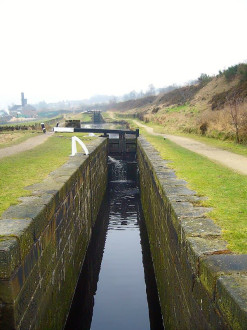
Lock on the Huddersfield Narrow Canal
98885307_1eef1e14eb_c
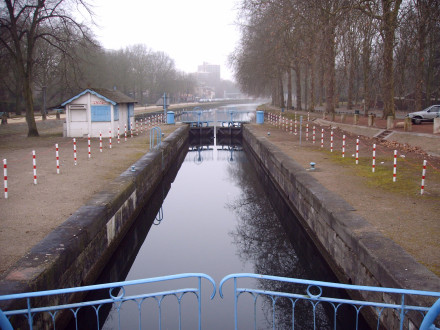
voie navigable
" On ne l'a plus vu. On demandait, on s'enquérait, on répétait son prénom, et il y avait cette douceur du regard, la voix qui n'élevait pas le ton, qu'on devait écouter de près pour entendre. On nous a dit ensuite, plus tard, le noyé, la rivière en crue, la rivière qui traverse la ville, enserrée dans le ciment, des rives droites et très hautes, bouillonnante entre le pont pour les voitures, le pont pour les trains. Et ceux qui l'avaient vu en dernier, assis sur ce pont, la large rambarde verte rivetée du pont de métal : assis au-dessus de l'eau, penché, silencieux. On se demande : tombé, poussé, attiré, jeté de lui-même et après tout qu'est-ce que ça peut faire, et quand bien même ç'aurait juste été pour voir, là, comme ça, ou juste en se disant que ce serait un petit truc de cinq minutes, comme avec des poudres dans les boîtes d'allumettes. Ce serait comme se mettre assis, on garde les mots, le regard, le prénom. Le mot : "assis", pourra-t-on désormais le prononcer comme avant ? " François BON ~ " Abîme aujourd’hui la ville, N’importe quelle ville "
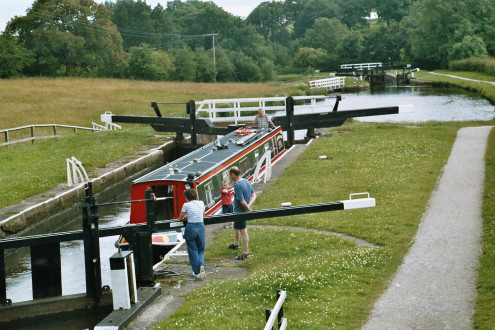
Canal Lock
Lock 5 in the Johnson's Hill rise
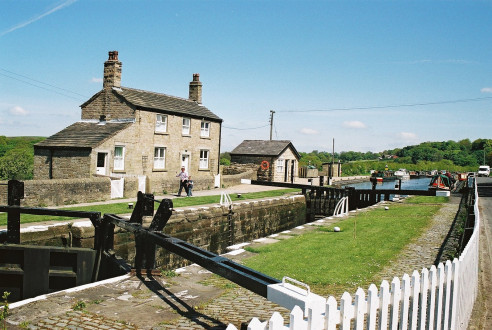
Wheelton Top Lock - the marina
Very pretty, very chocolate box, but I do love it there. See where this photo was taken at maps.yuan.cc.
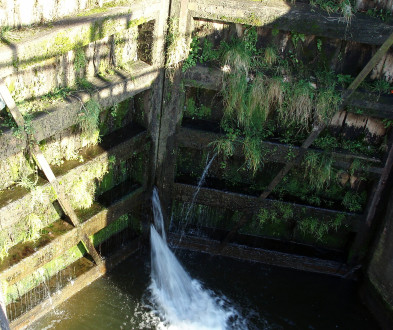
Lock Gates
A "decorated" lock gate.
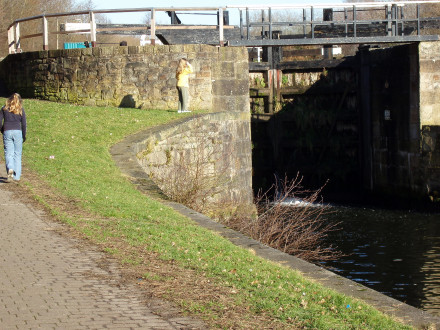
Canal Lock
Some of the lifts in these locks are quite high, about 10 metres
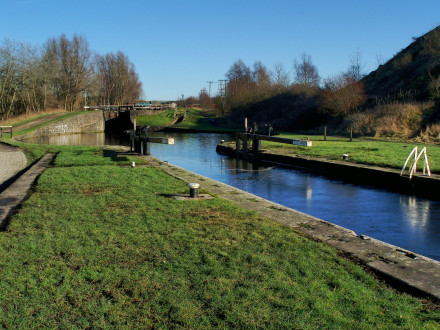
Lock 16
92203326_48fd37427e_k
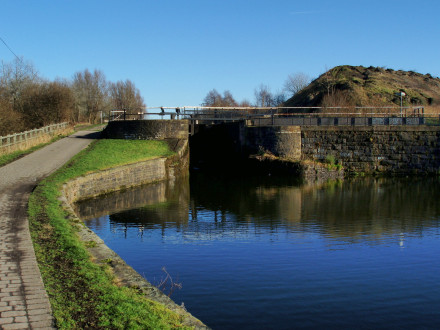
Looking Towards Lock 16
Looking towards the sixteenth lock up from Wigan
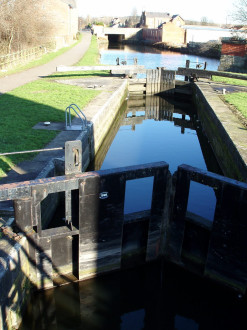
Lock 9
Looking towards the Ince Hindley road and lock 10
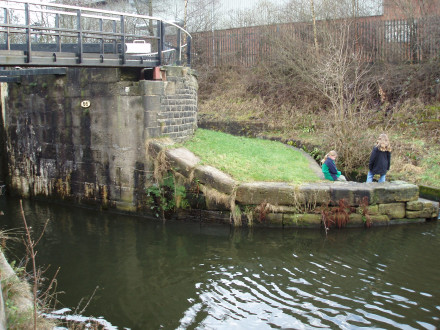
Lock at Top Lock
86865542_6423b80374_k
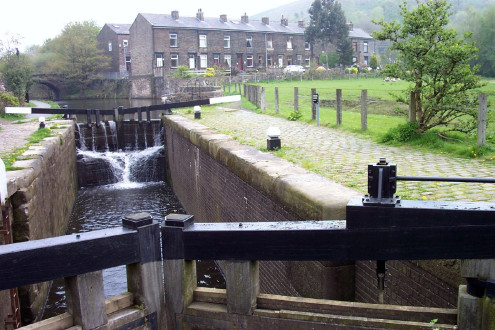
Lock on the Rochdale Canal
Rochdale canal near Littleborough.

